Ayni Air Base
- 02 Nov 2025
In News:
India has formally concluded its operations at the Ayni Air Base (Gissar Military Aerodrome) in Tajikistan, ending a two-decade presence that began in 2002. The withdrawal followed the expiry of a bilateral agreement in 2022, after which Tajikistan chose not to renew the lease. Indian personnel and equipment were pulled out by early 2023.
About Ayni Air Base
- Location: Near Dushanbe, Tajikistan.
- Status: India’s first overseas military facility.
- Origins: A Soviet-era base that fell into disrepair after the USSR’s collapse.
- Indian Involvement:
- India began modernising it in the early 2000s under a strategic arrangement with Tajikistan.
- Approx. USD 100 million invested in runway extension, hangars, refuelling systems, and repair facilities.
- Runway extended to 3,200 metres to support fighter aircraft operations.
- Included temporary deployment of Su-30MKI jets and helicopters.
- At times, ~200 Indian Army and IAF personnel were stationed at the site.
Withdrawal: Why Now?
- The bilateral agreement for joint operation expired in 2022 and was not renewed.
- Tajikistan reportedly faced pressure from Russia and China to avoid hosting non-regional military forces.
- After India's withdrawal, Russian forces have taken over operational control.
- The base’s strategic value reduced after the Taliban takeover in Afghanistan (2021), which changed the regional security landscape.
Strategic Significance for India
1. Afghanistan & Anti-Taliban Engagement
- Initially helped India support the Northern Alliance against the Taliban.
- Geographic proximity enabled humanitarian and logistical access to Afghanistan.
- Used during August 2021 evacuations of Indian nationals following the Taliban’s return to power.
2. Leverage Against Pakistan
- Ayni lies ~20 km from the Wakhan Corridor, which borders Pakistan-occupied Kashmir (PoK).
- Provided theoretical capability to monitor or target strategic locations such as Peshawar, giving India an indirect pressure point.
3. Presence in Central Asia
- Offered India a rare strategic foothold in a region traditionally influenced by Russia and increasingly by China.
- Served as a platform to expand defence, diplomatic, and economic engagement in Central Asia.
Consequences of India’s Exit
- Reduced Indian military reach in Central Asia.
- Greater Russian and Chinese influence over Tajik defence infrastructure.
- Limits India’s ability to operate in the region at a time of shifting geopolitics around Afghanistan and Eurasia.
First-Ever Air Shipment of GI Tagged Indi and Puliyankudi Limes
- 02 Nov 2025
In News:
- The Agricultural and Processed Food Products Export Development Authority (APEDA) has facilitated the first-ever air shipment of GI-tagged Indi Lime (Karnataka) and Puliyankudi Lime (Tamil Nadu) to the United Kingdom. The initiative marks a significant step in expanding India's agricultural export basket and enhancing global recognition of region-specific products.
- This milestone aligns with India’s broader efforts to promote GI-tagged agricultural commodities and support farmer incomes through improved market access.
What is a GI Tag?
- A Geographical Indication (GI) is an Intellectual Property Right (IPR) recognising products whose qualities or reputation are linked to a specific geographical origin.
- Legislation: Registered under the Geographical Indications of Goods (Registration and Protection) Act, 1999.
- Issuing Authority: GI Registry, Chennai under DPIIT, Ministry of Commerce & Industry.
- Purpose:
- Protect regional uniqueness
- Prevent unauthorised use
- Enhance export potential
- Provide economic benefits to local communities
Indi Lime (Karnataka)
- Region: Primarily grown in Vijayapura district.
- Characteristics:
- High juice content
- Strong aroma
- Balanced acidity
- Uses: Culinary applications, traditional medicine, and cultural practices; reflects Karnataka’s agrarian heritage.
- Earlier in 2025, APEDA also exported 3 MT of GI-tagged Swadeshi Indi Lime to the UAE, showcasing rising global demand.
Puliyankudi Lime (Tamil Nadu)
- Region: Grown widely in Tenkasi district, known as the “Lemon City of Tamil Nadu.”
- Popular Variety: Kadayam Lime
- Features:
- Thin peel
- Strong acidity
- High juice yield (≈55%)
- Rich in Vitamin C (≈34.3 mg/100g) and antioxidants
- GI Recognition: Granted in April 2025, acknowledging its superior regional traits.
Export Significance
- Enhances global visibility of India’s GI-tagged agricultural products.
- Opens new markets for limes, traditionally exported in small volumes.
- Strengthens farmer incomes and supports rural economies in Karnataka and Tamil Nadu.
- Builds on India’s expanding export footprint, which recently included:
- Gharwali apples
- Apricots from Kargil
to Gulf markets such as Saudi Arabia, Kuwait, and Qatar.
Institutional & Trade Context
- APEDA, under the Department of Commerce, plays a leading role in diversifying India’s agri-exports.
- The announcement coincided with India–EU FTA discussions in Brussels, where Commerce Minister Piyush Goyal and EU officials reiterated the need for a balanced and mutually beneficial agreement to strengthen bilateral trade.
Axial Seamount
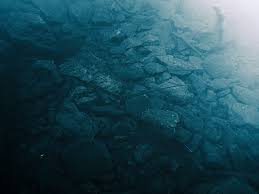
- 02 Nov 2025
In News:
The Axial Seamount, an active underwater volcano located in the northeast Pacific Ocean off the coast of Oregon (USA), has shown increased seismic activity, prompting scientists to warn of a possible eruption in the near future. Despite the alert, experts emphasize that any eruption would pose no threat to coastal populations due to the volcano’s great depth.
Location & Geological Setting
- Located ~300 miles off the Oregon coast in the Pacific Ocean.
- Situated on the Juan de Fuca Ridge, a divergent boundary between the Pacific Plate and the Juan de Fuca Plate.
- Classified as a shield volcano with a summit caldera.
- Rises to a depth of approx. 1,400 m (≈4,900 ft) below sea level.
- Formed by a hotspot, where mantle plumes rise beneath the oceanic crust.
Scientific Importance
- Considered the most active submarine volcano in the northeast Pacific.
- Documented eruptions: 1998, 2011, 2015.
- The 2015 eruption triggered:
- ~8,000 earthquakes
- 400-ft-thick lava flows
- Seafloor subsidence of nearly 8 ft
Current Activity
- Recent USGS-recorded quakes of M4.8 and M5.4 occurred close to Axial Seamount.
- Over 2,000 micro-earthquakes in a single day were noted this year.
- Scientists expect the next eruption between late 2025 and early 2026, though the timing remains unpredictable.
- Surface uplift has been observed, matching levels seen prior to the 2015 eruption.
Hydrothermal Vent Ecosystem
- Hosts hydrothermal vents, releasing super-heated, mineral-rich fluids.
- Supports unique chemosynthetic ecosystems, including:
- Microbes using volcanic gases for energy
- Giant tubeworms
- Crabs, clams, fish, octopuses
- Provides a natural laboratory for studying extreme environments and deep-sea biodiversity.
Monitoring Infrastructure
- Part of the Ocean Observatories Initiative (OOI).
- Hosts the New Millennium Observatory (NeMO) — the world’s first underwater volcanic observatory.
- Real-time monitoring via undersea cables transmitting continuous data on:
- Seismic activity
- Gas emissions
- Vent temperatures
- Seafloor deformation
Hazards & Human Impact
- Despite increased activity, eruptions do not threaten humans or coastal infrastructure.
- Events occur deep underwater and may pass unnoticed at the surface.
- However, they are crucial for advancing scientific understanding of:
- Mid-ocean ridge volcanism
- Crustal formation
- Seafloor hydrothermal systems
AmazonFACE Project

- 02 Nov 2025
In News:
- The AmazonFACE Project, launched near Manaus, Brazil, is a pioneering climate research experiment designed to study how the Amazon rainforest—the world’s largest tropical forest—responds to future elevated CO? levels. The initiative is significant as Brazil prepares to host COP30 in Belém.
- It is the first experiment of its scale in a natural tropical forest, marking a major advancement in global climate science.
What is AmazonFACE?
- A long-term field experiment exposing mature tropical trees to projected future CO? concentrations.
- Located in an old-growth Amazon forest stand.
- Aims to understand how increased atmospheric carbon affects forest functioning, carbon cycling, water exchange and overall ecosystem resilience.
Technology Used: FACE
FACE (Free-Air CO? Enrichment) technology:
- Releases controlled amounts of CO? into open-air forest environments.
- Allows real-time assessment of how trees respond without disturbing natural forest structure.
- Previously used in temperate biomes, but AmazonFACE is the first large-scale FACE experiment in tropical forests.
Structure & Working
- The site contains six large steel-ring towers, each enclosing 50–70 mature trees.
- Three rings are fumigated with CO? at concentrations matching climate projections for 2050–2060.
- Three rings act as control plots.
- Sensors record data every 10 minutes, including:
- CO? absorption
- Oxygen and water vapour release
- Responses to rainfall, sunlight, and storms
- Later stages will simulate artificial microclimates with higher atmospheric CO?.
Institutional Support
- Led by INPA (National Institute for Amazon Research) and Universidade Estadual de Campinas.
- Supported by the Brazilian federal government and the United Kingdom.
Significance
- Helps model the future behaviour of the Amazon under climate stress.
- Provides insights into:
- Carbon sequestration capacity
- Forest growth patterns
- Water cycle feedbacks
- Potential ecosystem tipping points
- Critical for global climate policymaking, especially ahead of COP30, where adaptation and mitigation strategies for the Amazon biome will be central.
Model Youth Gram Sabha

- 02 Nov 2025
In News:
- The Government of India has launched the Model Youth Gram Sabha (MYGS), a first-of-its-kind national initiative aimed at strengthening Janbhagidari (people’s participation) and promoting grassroots democratic engagement among school students.
- The programme is being jointly implemented by the Ministry of Panchayati Raj, the Ministry of Education (Department of School Education & Literacy), and the Ministry of Tribal Affairs.
Aim & Significance
- To inculcate democratic values, civic responsibility, and leadership skills among youth.
- To familiarise students with Gram Sabha processes, village-level planning and budgeting.
- To nurture future citizen-leaders aligned with the vision of Viksit Bharat.
- Aligned with the National Education Policy (NEP) 2020, which emphasises experiential learning and civic participation.
What is Model Youth Gram Sabha?
- A simulated Gram Sabha forum conducted in schools.
- Modelled on the concept of Model United Nations (MUN) but adapted to the Panchayati Raj system.
- Provides hands-on exposure to local self-governance, decision-making and village-level institutions.
Coverage & Implementation
- To be implemented in 1,000+ schools across India, including:
- Jawahar Navodaya Vidyalayas (JNVs)
- Eklavya Model Residential Schools (EMRSs)
- State Government Schools
- Schools will conduct mock Gram Sabha sessions as guided by the training module.
- Financial support of ?20,000 per school will be provided by the Ministry of Panchayati Raj to conduct the sessions.
- Launch event includes participation from 650+ delegates, including students, teachers, PRI representatives and officials.
Key Features
- Student Participation: Students from Classes 9–12 enact roles such as:
- Sarpanch
- Ward Members
- Village Secretary
- Anganwadi Worker
- Other village-level functionaries
- Simulation Activities:
- Conducting mock Gram Sabha meetings
- Discussions on local issues and development needs
- Preparation of a village budget and development plan
- Exposure to decentralized planning, accountability and community engagement
- Digital Support Tools:
- MYGS Portal for resources, learning materials and reporting
- Training Module for teachers to facilitate sessions effectively
CLAMP Portal
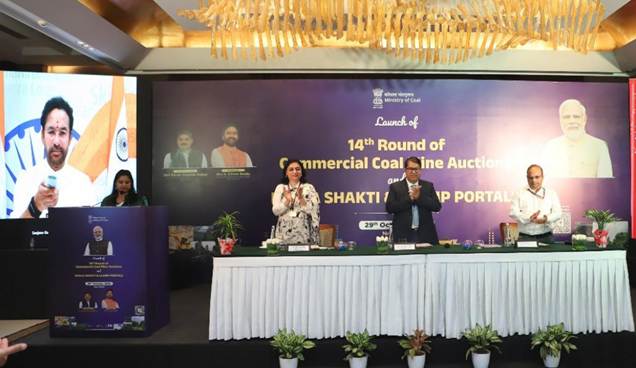
- 01 Nov 2025
In News:
The Union Minister of Coal and Mines launched two major digital governance platforms—
- KOYLA SHAKTI Dashboard, and
- CLAMP Portal (Coal Land Acquisition, Management & Payment) — marking a significant push toward transparency, efficiency, and technology-driven operations in India’s coal sector.
These initiatives align with the vision of Aatmanirbhar Bharat and Minimum Government, Maximum Governance.
1. KOYLA SHAKTI Dashboard
What is it?
A unified digital platform integrating the entire coal value chain—from mine to market—into a single real-time interface. It acts as the digital backbone of India’s coal ecosystem.
Developed by: Ministry of Coal
Purpose
- Enhance real-time coordination among stakeholders
- Ensure data-driven governance
- Optimize logistics, production, and dispatch
- Improve supply chain reliability for power, steel, and allied industries
Key Features
- Unified Visibility: Integrates data from coal companies, railways, ports, power utilities, state departments, ministries, and private miners.
- Real-Time Monitoring: Tracks coal production, dispatch, rail/road/multimodal movement, port handling, and consumption.
- Decision Support System: Provides predictive analytics, demand forecasting, trend analysis, and KPI monitoring.
- Operational Efficiency: Reduces delays, improves coordination, standardizes reporting, and minimizes manual intervention.
- Transparency & Accountability: Live dashboards ensure visibility across ministries and industry stakeholders.
- Incident Response: Provides alerts and notifications for operational disruptions.
- Scalability: Can integrate future digital systems and expand datasets.
Significance
- Eliminates silos in coal logistics
- Reduces transport bottlenecks
- Supports evidence-based policymaking
- Enhances the reliability of coal supply to power and industrial sectors
- Positions the platform as a Smart Coal Analytics Dashboard (SCAD) enabling long-term sectoral reforms
2. CLAMP Portal (Coal Land Acquisition, Management & Payment)
What is it?
A unified digital portal to streamline:
- Land acquisition
- Compensation
- Rehabilitation & Resettlement (R&R) processes for coal-bearing areas.
Implemented by: Ministry of Coal
Key Functions
- Serves as a centralized land record repository
- Digitizes the entire workflow from land data entry to final payment
- Enables inter-agency coordination among coal PSUs, district authorities, and state agencies
Advantages
- Transparency in land ownership and compensation
- Reduced procedural delays in acquisition
- Accuracy through verified digital records
- Ease of monitoring R&R compliance
- Time-bound compensation for affected landowners
- Supports citizen-centric governance in sensitive land acquisition processes
Samriddh Gram Phygital Services Pilot Project
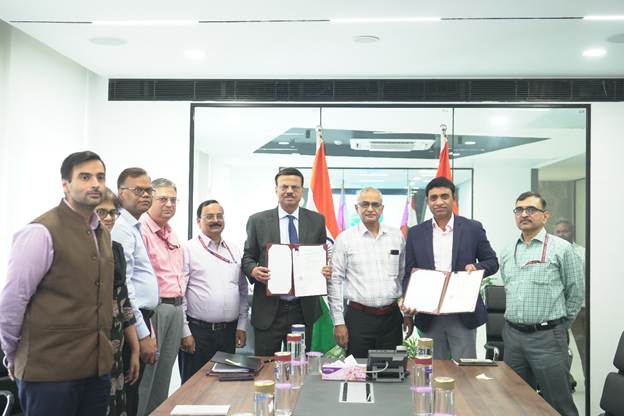
- 01 Nov 2025
In News:
The Samriddh Gram Phygital Services Pilot Project, launched by the Department of Telecommunications (DoT) through the Telecom Centres of Excellence (TCoE), is a rural digital empowerment initiative aimed at bridging the digital divide by integrating physical infrastructure with digital service delivery (“phygital model”). It leverages BharatNet — India’s flagship rural broadband programme — to ensure seamless access to essential citizen-centric services.
Pilot Locations & Implementation
The pilot is being implemented in three villages, each hosting a Samriddhi Kendra:
- Ari & Umri (Madhya Pradesh) – Partner: Digital Empowerment Foundation
- Narakoduru (Andhra Pradesh) – Partner: Corpus Enterprises Pvt. Ltd.
- Chaurawala (Uttar Pradesh) – Partner: I-Novate Infotech Pvt. Ltd.
These Kendras act as integrated digital service hubs, providing both physical support and digital-enabled services.
Objectives:
- To create a replicable and scalable rural digital service model.
- To deliver last-mile digital access through BharatNet-powered connectivity.
- To enhance education, agriculture, health, governance, and financial inclusion in rural areas.
- To enable digital entrepreneurship and strengthen participation in the digital economy.
Key Features & Services
1. Education & Skilling
- Smart classrooms, digital content
- AR/VR-based learning
- Skill development aligned with national skilling schemes
2. Agriculture
- IoT-based soil testing
- Drone-enabled services (monitoring, spraying)
- Smart irrigation solutions
3. Healthcare
- Teleconsultations
- Health ATMs for diagnostics
- Basic emergency care support
4. e-Governance
- Assisted access to government services
- Document facilitation
- Grievance redress mechanisms
5. E-Commerce & Entrepreneurship
- Integration with ONDC
- Digital marketplace access for local products
- Support for rural microenterprises
6. Financial Inclusion
- Digital banking services
- Payment systems & UPI-assisted transactions
7. Connectivity Backbone
- BharatNet FTTH connectivity
- Village Area Network (VAN)
- Public Wi-Fi hotspots
Significance
- Strengthens Digital India at the grassroots.
- Demonstrates a phygital last-mile service delivery model.
- Enhances socio-economic outcomes in rural areas by integrating technology with governance and service delivery.
- Designed as a sustainable and scalable model for nationwide expansion.
Special Intensive Revision 2025
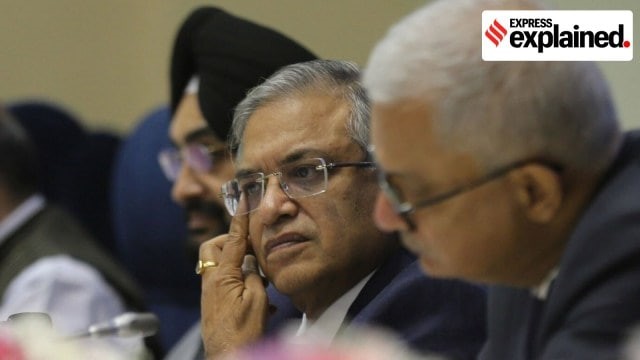
- 01 Nov 2025
In News:
The Election Commission of India (ECI) has initiated the Special Intensive Revision (SIR) 2025, a large-scale verification exercise aimed at ensuring that India’s electoral rolls remain accurate, inclusive, and up-to-date. Covering twelve States and Union Territories, this marks the most comprehensive revision of voter records in nearly two decades.
Purpose and Objectives
The SIR 2025 is designed to:
- Authenticate voter data to eliminate duplication and ineligible entries.
- Verify citizenship and age to ensure that only eligible Indian citizens remain on the rolls.
- Update demographic information such as addresses and photographs.
- Enhance transparency in the voter registration process and strengthen public trust in electoral institutions.
Through this exercise, the ECI seeks to uphold the Representation of the People Act, 1950, which mandates a clean and credible electoral register as the foundation of free and fair elections.
Implementation and Process
The revision process is being carried out by the Election Commission under the supervision of the Chief Election Commissioner and coordinated at the State and district levels through Chief Electoral Officers (CEOs), District Magistrates (DMs), and Electoral Registration Officers (EROs).
Key stages of the exercise include:
- Enumeration and Data Collection: Field officials known as Booth Level Officers (BLOs) visit households to distribute and collect pre-filled forms containing existing voter details.
Voters may also submit or verify their information online via the ECI’s voter portal. - Verification through Historical Records: Citizens are encouraged to confirm their or a family member’s presence in electoral rolls from earlier intensive revisions (2002–2005). This helps maintain continuity in the voter database and authenticate older registrations.
- Document-Based Scrutiny: In cases where a voter cannot trace prior records, documents proving identity, residence, age, and citizenship are reviewed. This ensures compliance with the Citizenship Act, 1955, particularly for voters born after 1987.
- Draft and Final Roll Publication: Following field verification, draft rolls are published for public inspection and correction. After resolving claims and objections, the final electoral rolls are released, forming the official list for upcoming elections.
Significance of the SIR 2025
- Reviving Electoral Accuracy: This is the first full-scale revision of voter rolls in nearly twenty years, addressing issues like outdated entries, migration, and data mismatches.
- Citizenship Assurance: The verification framework ensures that only legitimate Indian citizens exercise voting rights, strengthening electoral credibility.
- Technological Modernisation: Integration with digital platforms such as the ECI voter portal enhances accessibility and reduces manual errors.
- Transparency and Accountability: The participation of political party representatives as Booth Level Agents (BLAs) provides an additional layer of oversight.
- Foundation for Free and Fair Elections: A verified, inclusive, and error-free voter list is critical to maintaining the integrity of democratic processes and protecting voter rights.
Bharat Taxi
- 01 Nov 2025
In News:
- India is set to launch ‘Bharat Taxi’, the country’s first cooperative-based ride-hailing platform, in November 2025, beginning in Delhi.
- The initiative marks a transformative step in the government’s efforts to democratise the digital economy by ensuring equitable participation and income security for gig workers, particularly cab drivers.
- The project is being implemented jointly by the Union Ministry of Cooperation and the National e-Governance Division (NeGD) under the Ministry of Electronics and Information Technology.
About Bharat Taxi
Bharat Taxi is a government-backed cooperative cab service designed to offer an alternative to private app-based aggregators such as Ola and Uber. It operates on the principle of “cooperative ownership and collective welfare”, where drivers act as both service providers and shareholders.
Implementing Structure
- Promoting Body: Sahakar Taxi Cooperative Ltd., established in June 2025.
- Initial Capital: ?300 crore.
- Supported By: Leading cooperative institutions such as Amul, IFFCO, NAFED, KRIBHCO, NABARD, and the National Cooperative Development Corporation (NCDC).
- Governance:
- Chairperson: Jayen Mehta (MD, Amul/GCMMF)
- Vice-Chairman: Rohit Gupta (Deputy MD, NCDC)
Objectives
- Empower Drivers: Convert cab drivers into cooperative members (“Saarthis”) and shareholders.
- Ensure Fair Earnings: Eliminate high commissions (up to 25% under private apps) through a zero-commission model.
- Provide Affordable, Transparent Rides: Introduce fare regulation with no surge pricing or hidden costs.
- Promote Cooperative Entrepreneurship: Strengthen India’s cooperative movement in the digital services economy.
- Enhance Urban Mobility: Offer a reliable, ethical, and citizen-friendly transport option integrated with government e-platforms.
Key Features
|
Feature |
Description |
|
Ownership Model |
Cooperative-based — drivers are shareholders, not contractors. |
|
Revenue Mechanism |
No commission; nominal membership fee (daily/weekly/monthly). |
|
Digital Integration |
Linked with DigiLocker, UMANG, and API Setu for seamless authentication and data security. |
|
Transparency in Fares |
Regulated pricing; no algorithm-based surge rates or cancellation penalties. |
|
Phased Rollout |
Pilot in Delhi (Nov 2025) with 650 driver-owners; expansion to 20 cities by 2026 and 1 lakh cabs nationwide by 2030. |
|
Inclusivity Focus |
Participation of 5,000 drivers (men & women) in the initial nationwide phase. |
UNEP Adaptation Gap Report 2025
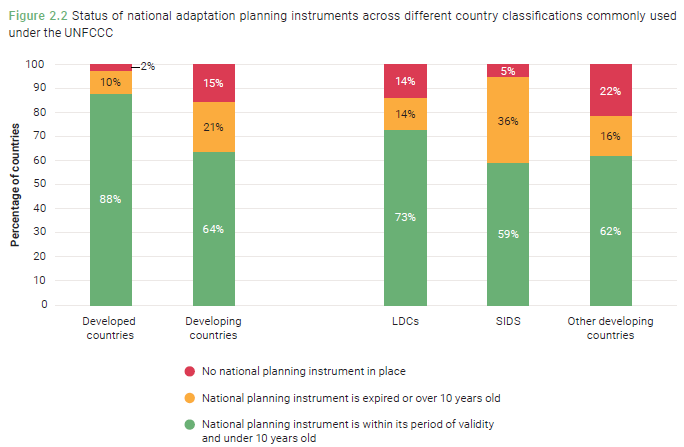
- 01 Nov 2025
In News:
The United Nations Environment Programme (UNEP) has released its flagship Adaptation Gap Report (AGR) 2025, titled “Running on Empty”.
The report warns that the global climate adaptation finance gap for developing countries has widened sharply, threatening progress toward climate resilience and the Sustainable Development Goals (SDGs).
About the Adaptation Gap Report (AGR)
- Publisher: UNEP–Copenhagen Climate Centre, with global institutional contributions.
- Purpose: Tracks progress in climate adaptation planning, implementation, and finance, assessing global preparedness against climate impacts.
- Relevance: Supports policy negotiations under the UNFCCC and upcoming COP30 (Belém, Brazil).
Key Findings
1. Escalating Finance Needs
- Developing nations will require USD 310–365 billion annually by 2035, potentially rising to USD 440–520 billion when adjusted for inflation.
- The growing need reflects increasing risks from both rapid- and slow-onset climate events—heatwaves, floods, sea-level rise, and glacial melt.
2. Widening Adaptation Finance Gap
- Current adaptation finance (2023): Only USD 26 billion, covering just one-twelfth of total requirements.
- Finance gap: USD 284–339 billion annually.
- Falling trends: Funding fell from USD 28 billion (2022), meaning the Glasgow Climate Pact target of doubling adaptation finance by 2025 will likely be missed.
3. Debt-Heavy and Unequal Finance
- About 58% of adaptation finance is in the form of loans, many non-concessional—deepening debt vulnerabilities among developing nations.
- This creates a growing risk of “adaptation debt traps”, undermining the principle of climate justice.
4. Progress and Planning Gaps
- 172 countries have at least one National Adaptation Plan (NAP); however, 36 of them are outdated.
- 1,600+ adaptation actions have been reported globally, primarily in agriculture, water, biodiversity, and infrastructure, but few measure tangible resilience outcomes.
- Small Island Developing States (SIDS) show the highest integration of adaptation into national policies.
5. Limited Private Sector Role
- The private sector contributes only USD 5 billion annually, despite potential investment capacity up to USD 50 billion with supportive de-risking mechanisms.
- Low engagement is attributed to high risk perceptions and limited blended-finance instruments.
6. Multilateral Fund Support
- Disbursements through the Green Climate Fund (GCF), Global Environment Facility (GEF), and Adaptation Fund reached USD 920 million in 2024—an 86% rise over the previous five-year average, though UNEP warns this may be temporary.
Global Frameworks and Roadmaps
Baku–Belém Roadmap (COP29–COP30)
- Envisions USD 1.3 trillion per year by 2035 in total climate finance.
- Stresses the need for grant-based and concessional instruments rather than debt-heavy finance.
- Aims to align finance, transparency, and adaptation under a “global collective effort” (mutirão global) led by Brazil’s COP30 presidency.
New Collective Quantified Goal (NCQG)
- Proposed USD 300 billion by 2035, but UNEP cautions that it is insufficient and not inflation-adjusted, hence failing to meet real adaptation needs.
India and the Adaptation Gap Report 2025
1. National and Regional Context
- India’s climate strategy now prioritises adaptation-centric policies over mitigation, focusing on resilient agriculture, water systems, and disaster management.
- Frequent heatwaves, floods, and glacial retreats heighten India’s vulnerability, underscoring the need for adaptive investments.
2. Policy and Institutional Response
- India’s National Action Plan on Climate Change (NAPCC) and State Action Plans align with UNEP’s adaptation priorities.
- Initiatives like the International Solar Alliance (ISA), Coalition for Disaster Resilient Infrastructure (CDRI), and LiFE Mission showcase India’s global leadership in climate diplomacy.
3. Financial and Structural Constraints
- India continues to face adaptation investment gaps, relying heavily on concessional and multilateral finance.
- Domestic efforts like the National Adaptation Fund for Climate Change (NAFCC) are under fiscal strain due to limited international flow.
4. Developmental Balancing
- India maintains that development precedes decarbonisation, in line with the principle of Common But Differentiated Responsibilities and Respective Capabilities (CBDR–RC).
- The Economic Survey 2024–25 reiterates that achieving developed-nation status by 2047 is essential before aggressive deep decarbonisation.
- India remains committed to Net Zero by 2070, consistent with its Long-Term Low Emissions Development Strategy (LT-LEDS).
Mission for Aatmanirbharta in Pulses (2025–31)
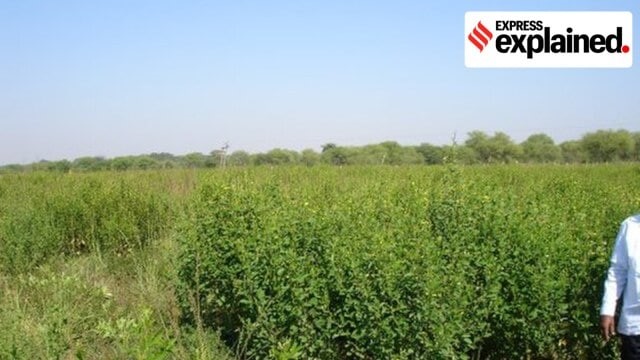
- 31 Oct 2025
In News:
- India, the world’s largest producer and consumer of pulses, continues to face a structural gap between domestic production and rising demand. Lower productivity levels, yield gaps, and increasing import dependence have highlighted the need for a targeted national strategy.
- To address these concerns, the Government of India has launched the Mission for Aatmanirbharta in Pulses (2025–31)—a six-year initiative aimed at transforming India into a self-reliant pulses-producing nation through scientific, institutional, and market reforms.
Overview of the Mission
Formally launched by the Prime Minister on 11 October 2025, the Mission for Aatmanirbharta in Pulses was first announced in the Union Budget 2024–25. The programme is implemented by the Ministry of Agriculture and Farmers’ Welfare, with collaborative support from NAFED, NCCF, and state governments.
Mission Duration and Financial Outlay
- Implementation period: 2025–26 to 2030–31
- Total outlay: ?11,440 crore
- Targets:
- Raise production by 45%—from 242 lakh MT (2023–24) to 350 lakh MT (2030–31)
- Expand cultivated area by 13%—from 275 lakh ha to 310 lakh ha
- Improve average yield by 28%—from 881 kg/ha to 1,130 kg/ha
Rationale: Current Status and Challenges
India cultivates a wide variety of pulses across agro-climatic zones. Major pulse-growing states include:
- Area (2023–24): Rajasthan (54.67 lakh ha), Madhya Pradesh (51 lakh ha), Maharashtra (44 lakh ha), Uttar Pradesh (30 lakh ha)
- Production (2023–24): Madhya Pradesh (59.74 lakh MT), Maharashtra (40 lakh MT), Rajasthan (33 lakh MT), Uttar Pradesh (31 lakh MT)
Gram dominates both area and output, followed by moong, tur (arhar), urad, and masoor. Over 60% of pulses production occurs during the rabi season.
Despite being the largest pulses producer, India remains dependent on imports from Myanmar, Tanzania, Mozambique, Canada, Australia, among others. Demand is projected to reach 268 lakh MT by 2030 and 293 lakh MT by 2047 (NITI Aayog), far exceeding current production levels. Productivity remains significantly lower than global benchmarks—Canada (2200 kg/ha) and China (1815 kg/ha).
Why Focus on Tur, Urad, and Masoor?
These three pulses account for 34% of total pulses area and contribute significantly to national output. They also exhibit high yield gaps and are crucial for nutritional security. The Mission plans:
- 9 lakh ha expansion in tur—across Karnataka, Maharashtra, Uttar Pradesh, Gujarat, Jharkhand and non-traditional areas like the Northeast.
- Utilisation of rice fallows for expanding urad in Uttar Pradesh, Andhra Pradesh, and Maharashtra.
- Promotion of masoor in rice fallow areas of West Bengal, Bihar, Chhattisgarh.
Key Components and Features of the Mission
1. Development of Climate-Resilient Seeds: Focus on high-yielding, drought-tolerant, pest-resistant, and protein-enriched varieties.
2. Higher Productivity through Technological Adoption
- Enhanced support of ?10,000/ha for Front Line Demonstrations (FLDs) of improved technologies (higher than ?9,000 under NFSM).
- Strengthening post-harvest storage, grading, and processing infrastructure.
3. 100% Assured Procurement
A major innovation in the mission framework:
- NAFED and NCCF will undertake 100% procurement of tur, urad and masoor for four years under PM-AASHA’s Price Support Scheme (PSS).
- Aadhaar-enabled biometric/facial authentication will ensure transparency and eliminate leakages.
4. Cluster-Based Approach
Each cluster will include minimum 10 ha (2 ha in hilly/Northeast region). Cluster selection based on:
- Four-fold district classification: HA-HY, HA-LY, LA-HY, LA-LY
- Rice fallow, rainfed, and watershed areas
- Aspirational districts, border/LWE districts
- Regions under PM Dhan-Dhaanya Krishi Yojana, Adarsh Gram Yojana, and Northeast/Himalayan areas
5. Value-Chain Strengthening: Interventions span input supply, extension, mechanisation, processing, market linkages and digital traceability.
Comparative Advantage over Previous Schemes
The Mission subsumes the pulses component of National Food Security and Nutrition Mission (NFSNM) but provides:
- Higher financial support
- Wider geographical coverage
- Expanded interventions (seed hubs, storage, procurement)
- Stronger digital governance
- Guaranteed procurement for three major pulses
National Significance
- Food and Nutritional Security: Pulses are key protein sources in Indian diets.
- Import Substitution: Reduces dependency on global markets and price volatility.
- Farmer Income Stability: Guaranteed procurement and improved yields boost profitability.
- Climate Resilience: Promotes drought-friendly crops, diversifies cropping patterns, and utilises rice fallows.
- Balanced Regional Development: Targets backward, rainfed, aspirational and border districts.
Electronics Components Manufacturing Scheme (ECMS)

- 31 Oct 2025
In News:
The Government of India has cleared the first batch of seven projects worth ?5,532 crore under the Electronics Components Manufacturing Scheme (ECMS), marking a critical milestone in India’s transition from assembling finished electronic products to building a strong component-level manufacturing base. These approved projects are expected to generate ?36,559 crore in production, create over 5,100 direct jobs, and significantly reduce India’s import dependence in high-value electronic components.
Overview of the ECMS
The Electronics Components Manufacturing Scheme (ECMS) is a flagship initiative under the Ministry of Electronics and Information Technology (MeitY). Approved by the Union Cabinet in 2024, its objective is to strengthen India’s backbone in the electronic components and materials ecosystem.
Key Objectives
- Promote domestic manufacturing of bare components, sub-assemblies, and specialized materials.
- Enhance domestic value addition (DVA) across the electronics supply chain.
- Integrate Indian manufacturers with Global Value Chains (GVCs), especially in semiconductors, telecom, EVs, and renewable energy.
- Support capital investments through a mix of turnover-linked, capex-based, and hybrid incentives.
Tenure and Incentive Structure
- Turnover-linked incentive: 6 years, with a 1-year gestation period.
- Capex incentive: 5-year support window.
Projects Approved Under the First Batch
The first set of projects includes manufacturing units for:
- High-Density Interconnect (HDI) PCBs
- Multi-Layer PCBs
- Copper Clad Laminates (CCL)
- Camera Modules
- Polypropylene Films
These units are spread across Tamil Nadu (5 units), Andhra Pradesh (1 unit), and Madhya Pradesh (1 unit), promoting regional dispersion of advanced electronics manufacturing.
Strategic Impact on Domestic Manufacturing
Meeting Domestic Demand
- New manufacturing units will meet 100% of India’s demand for Copper Clad Laminates.
- 20% of domestic PCB demand and 15% of camera module demand will be met locally.
- Around 60% of total production from these plants is expected to be exported, strengthening India’s global integration.
Camera modules, PCBs, and base materials form the essential components in smartphones, laptops, drones, robotics, medical devices, automotive electronics, and industrial systems — sectors critical for future economic growth.
India’s Strong Entry into Base Material Manufacturing
- A major breakthrough is the establishment of India’s first Copper Clad Laminate manufacturing unit, which serves as the foundational material for multi-layer PCBs. Previously, the entire requirement was imported, exposing India to supply chain vulnerabilities.
- Similarly, Polypropylene Films, vital for capacitor production used in consumer electronics, automotive components, telecommunications, computing equipment, and industrial systems, will now be manufactured domestically.
Economic and Industrial Impact
- Import Reduction: Key components and base materials will be produced domestically, reducing foreign dependency.
- Cost Reduction: Local production will bring down manufacturing costs and improve competitiveness.
- High-Skill Employment: Over 5,100 direct jobs from the first batch and potentially 91,600 jobs across the scheme will be created, according to scheme projections.
- R&D Strengthening: The initiative fosters technology absorption and innovation capability.
These seven approved projects form part of a much larger response — with 249 applications received representing ?1.15 lakh crore investment, potential production of ?10.34 lakh crore, and 1.42 lakh jobs, marking the highest-ever investment commitment in India’s electronics sector.
Integration with National Electronics Vision
ECMS is designed as a complementary pillar to:
- PLI Scheme for Large-Scale Electronics Manufacturing
- India Semiconductor Mission (ISM)
Together, they aim to create a seamless end-to-end manufacturing chain, covering devices, chips, components, materials, capital equipment, and innovation ecosystems.
EU–India New Strategic Agenda 2025
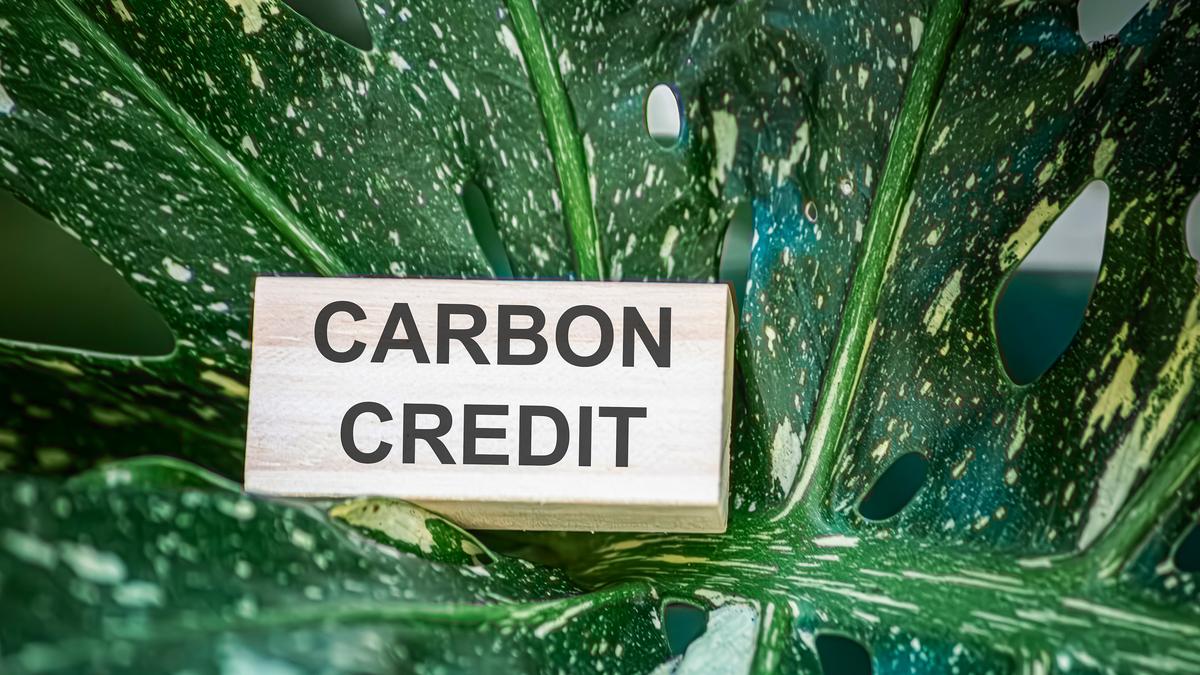
- 31 Oct 2025
In News:
- In September 2025, India and the European Union adopted the EU–India New Strategic Agenda 2025, a comprehensive vision document aimed at elevating their partnership into a transformative global framework for the next decade.
- Building upon the 2020 EU–India Strategic Partnership Roadmap, the new agenda broadens cooperation in sustainable development, digital governance, supply-chain resilience, connectivity, and defence.
- It is structured around five core pillars: Prosperity and Sustainability; Technology and Innovation; Security and Defence; Connectivity and Global Issues; and Enablers Across Pillars, reflecting a multidimensional partnership.
- A landmark development under this agenda is the decision to link the Indian Carbon Market (ICM)—formally India’s evolving Carbon Credit Trading Scheme (CCTS)—with the EU's Carbon Border Adjustment Mechanism (CBAM). This integration allows carbon prices paid within India to be deducted from CBAM levies at the EU border, potentially shielding Indian exporters from double taxation and incentivising early decarbonisation. If successfully implemented, the linkage would represent one of the most significant North–South climate cooperation efforts, setting a precedent for global carbon market integration.
Key Features of the New Strategic Agenda 2025
1. Prosperity & Sustainability
The agenda emphasises climate cooperation and green transition pathways:
- Joint clean energy transition initiatives including renewable energy, green hydrogen, and sustainable finance.
- Expansion of the Green Partnership, focused on technology transfer, co-investment, and carbon neutrality strategies.
- The carbon market linkage aims to align India’s carbon pricing framework with global standards and reduce trade frictions arising from CBAM enforcement.
2. Technology & Innovation
The EU and India plan deep cooperation across critical technologies:
- Collaboration in semiconductors, 5G/6G standardisation, quantum technologies, and AI ethics frameworks.
- Development of digital public infrastructure aligned with principles of privacy, transparency, and data protection.
3. Security & Defence
The agenda institutionalises a Security and Defence Partnership:
- Joint naval exercises, maritime domain awareness, and cybersecurity operations in the Indo-Pacific.
- Greater strategic alignment in the context of China’s increasing assertiveness and the need for secure maritime routes.
4. Connectivity & Global Issues
Cooperation includes:
- The EU’s Global Gateway Initiative and India’s participation in the India–Middle East–Europe Economic Corridor (IMEC).
- Infrastructure connectivity, supply-chain resilience, and sustainable transport systems.
5. Enablers Across Pillars: Enhanced mobility, education and research exchanges, and institutional dialogues strengthen long-term engagement.
Significance of Linking ICM with CBAM
The linkage is historically significant because it allows Indian carbon credits to be recognised within the EU’s border adjustment framework. This could:
- Prevent double carbon penalties on Indian exporters entering the EU market.
- Reward early decarbonisation by reducing CBAM-related costs.
- Provide a model for climate cooperation between developed and developing economies, addressing equity concerns embedded in global climate governance.
India–ASEAN Summit 2025
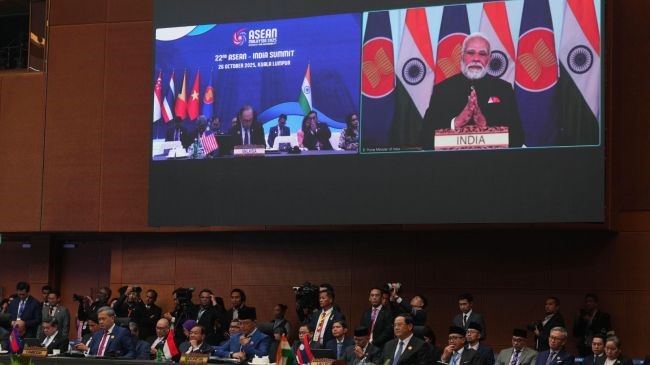
- 31 Oct 2025
In News:
- Prime Minister Narendra Modi virtually addressed the 22nd India–ASEAN Summit in Kuala Lumpur, reaffirming India’s commitment to enhancing cooperation in maritime security, digital inclusion, resilient supply chains, and economic integration.
- During the address, he announced that 2026 will be celebrated as the “ASEAN–India Year of Maritime Cooperation,” reflecting an intensified focus on the Indo-Pacific maritime domain. The remarks aligned with ASEAN’s theme under Malaysia’s chairmanship — “Inclusivity and Sustainability.”
Evolution of India–ASEAN Engagement
India’s engagement with ASEAN has evolved over more than three decades:
- 1992: Sectoral Dialogue Partnership initiated.
- 1996: Upgraded to Full Dialogue Partnership.
- 2002: India began regular participation in ASEAN Summits.
- 2009: ASEAN–India FTA in Goods (AITIGA) came into force;
- 2015: Services and Investment Agreements added.
- 2014 onwards: Transition from “Look East” to Act East Policy, increasing political, cultural and strategic connectivity.
- 2022: Partnership elevated to Comprehensive Strategic Partnership.
The partnership is grounded in shared civilisational links, especially through Buddhism, historical maritime routes, and cultural exchanges dating back to the Gupta and Srivijaya eras.
Recent Summit Highlights: Strategic Messaging
Despite PM Modi’s long-standing practice of physical participation in ASEAN summits, his virtual presence this year was noted as an unusual departure. Given the symbolic importance of leader-level diplomacy in ASEAN's consensus-driven ecosystem, some observers considered his absence a missed opportunity, especially amid strengthening bilateral ties with Malaysia after upgrading relations to a Comprehensive Strategic Partnership.
Nevertheless, PM Modi reaffirmed India’s intent to complement ASEAN’s Community Vision 2045 and India’s national vision of Viksit Bharat 2047, framing both as convergent long-term goals. He highlighted India’s role as a First Responder in regional crises, a position increasingly recognised across Southeast Asia.
Unlike previous years featuring extensive multi-point proposals, the 2025 address emphasised consolidation over expansion, centred primarily on maritime cooperation — a significant signal as the Philippines assumes ASEAN chairmanship in 2026 amid rising maritime tensions in the South China Sea.
Key Pillars of Cooperation
1. Maritime Security & Indo-Pacific Cooperation
- Joint patrols, coordinated naval exercises, and enhanced maritime domain awareness.
- Blue economy initiatives under the ASEAN–India Year of Maritime Cooperation (2026).
2. Economic Integration
- Review of the ASEAN–India Trade in Goods Agreement (AITIGA) to address market access constraints, streamline rules of origin, and reduce non-tariff barriers.
- Policymakers are urged to prioritise long-term regional integration over short-term protectionist anxieties.
3. Digital & Green Economy
- Cooperation in digital public infrastructure, cybersecurity, AI governance, renewable energy, green ports, and climate-resilient supply chains.
4. Connectivity Projects
- Acceleration of India–Myanmar–Thailand Trilateral Highway.
- Progress on the Kaladan Multi-Modal Transit Corridor, strengthening multimodal and economic connectivity.
5. Cultural Diplomacy & People-to-People Links
- ICCR scholarships, academic exchanges, tourism linkages, and the ASEAN–India Network of Think Tanks (AINTT).
- Emphasis on shared civilisational heritage and cultural exchanges.
Initiatives & Institutional Mechanisms
- ASEAN–India Plan of Action (2026–2030) focusing on trade, innovation, food security, agriculture, health, and education.
- India’s ?500 crore ASEAN–India Fund supporting capacity building, agriculture, and connectivity projects.
- Track 1.5 dialogue platforms reveal growing regional acknowledgement of India’s strategic role in Southeast Asia.
National Unity Day

- 31 Oct 2025
In News:
- National Unity Day (Rashtriya Ekta Diwas) is observed annually on 31 October to mark the birth anniversary of Sardar Vallabhbhai Patel, India’s first Deputy Prime Minister and Home Minister.
- Introduced in 2014, the day highlights Patel's pivotal role in consolidating the nation by integrating over 560 princely states into the Indian Union at the time of Independence— a task that earned him the enduring title, the “Iron Man of India.”
- The year 2025 marks the 150th birth anniversary of Sardar Patel, and the commemorative events have been organised on an unprecedented scale at the Statue of Unity in Ekta Nagar, Gujarat, led by Prime Minister Narendra Modi.
- The celebrations highlight the theme “Unity in Diversity”, underscoring India’s multicultural character and the importance of national cohesion.
Historical Significance of Sardar Vallabhbhai Patel
- Born on 31 October 1875 in Nadiad, Gujarat, Patel initially practised law before joining the national movement under Mahatma Gandhi.
- His leadership in the Kheda Satyagraha (1918) and Nagpur Flag Satyagraha (1923) marked his rise as a mass leader.
- As President of the Ahmedabad Municipal Board (1924), he reformed urban infrastructure, sanitation and civic systems.
- The Bardoli Satyagraha (1928) elevated him to national prominence, earning him the honorific “Sardar.”
- At Independence, he was entrusted with unifying the 17 British provinces and integrating the princely states—an immense administrative and diplomatic feat.
- Served as Deputy Prime Minister and Home Minister (1947–1950) and also held charge of the Information and Broadcasting Ministry.
Cloud Seeding as a Pollution-Control Measure in Delhi
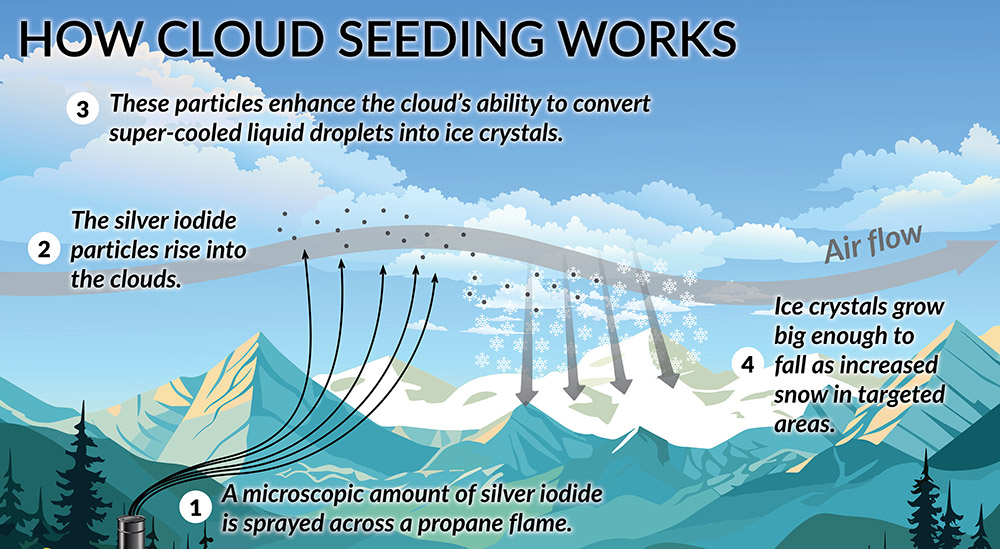
- 30 Oct 2025
In News:
With Delhi’s air quality plunging to severe levels each winter, the state government has renewed its call for cloud seeding as a potential intervention to reduce pollution. However, scientific assessments and governance experts warn that this approach offers limited, temporary relief and risks diverting attention from structural reforms required to address air pollution sustainably.
Why Delhi’s Air Quality Deteriorates in Winter
Delhi’s winter pollution is driven by a combination of meteorological and anthropogenic factors:
- Temperature Inversion: During winter, colder air remains trapped near the surface while warmer air lies above. This temperature inversion acts as a lid, preventing pollutants from rising and dispersing vertically.
- Low Wind Speeds: Weak winds limit horizontal movement of pollutants, causing particulate matter to accumulate in the lower atmosphere.
- Crop Residue Burning: Post-harvest stubble burning in Punjab, Haryana, and western Uttar Pradesh releases large quantities of smoke and suspended particles, which are carried to Delhi via prevailing winds.
- Dust and Urban Emissions: Vehicular emissions, construction dust, industrial exhaust, and waste burning remain trapped within the low boundary layer height, intensifying pollution.
- Post-Monsoon Stagnation: Stable high-pressure systems reduce atmospheric mixing, compounding North India’s chronic winter air quality problem.
What is Cloud Seeding?
Cloud seeding is a form of weather modification intended to enhance rainfall using chemical agents.
- Origin: First demonstrated in 1946 by Vincent J. Schaefer.
- Seeding Agents: Silver iodide, potassium iodide, sodium chloride, and dry ice are commonly used.
- Mechanism: The agents act as nuclei for condensation or ice-crystal formation, encouraging droplet growth. Once droplets become heavy, they fall as precipitation.
- Delivery Methods: Aircraft, rockets, or ground-based generators disperse particles into suitable moisture-laden clouds.
However, cloud seeding requires the presence of natural clouds with adequate moisture and cannot generate clouds on its own.
Scientific and Environmental Limitations
- Reliance on Existing Clouds: Delhi often lacks suitable cloud systems during peak pollution periods. Cloud seeding has no impact in the absence of adequate moisture.
- Weak Evidence of Effectiveness: Global scientific studies show inconsistent results. Even when rainfall occurs after seeding, establishing causality is difficult.
- Only Temporary Pollution Relief: Rain may wash away PM2.5 and PM10 temporarily, but pollution typically rebounds within 1–2 days. Secondary pollutants like ozone and sulphur dioxide remain unaffected.
- Environmental and Health Concerns: The use of silver iodide raises concerns regarding long-term ecological and health impacts due to chemical deposition. Evidence on safety is limited and inconclusive.
- Governance and Accountability Issues
- Unpredictable outcomes may lead to public criticism.
- Accountability becomes unclear if cloud seeding coincides with flooding or adverse weather events.
Ethical and Policy Concerns
- Misallocation of Resources: Investing in cloud seeding may divert funds from proven interventions.
- Distracting Public Attention: Temporary fixes risk undermining public trust and shifting focus away from systemic issues.
- Potential Misuse: Short-term optics may overshadow long-term environmental governance.
Real Solutions for Air Pollution Control
Experts emphasise that lasting improvement requires sustained structural action:
- Cleaner Transportation
- Strengthening public transport
- Transition to electric mobility
- Enforcing emission norms
- Sustainable Energy Transition
- Phasing down coal-based power
- Scaling up renewables
- Promoting clean industrial technologies
- Improved Waste Management
- Curbing open waste burning
- Efficient municipal systems
- Construction and Dust Control
- Enforcement of dust mitigation norms
- Use of green barriers and mechanised sweeping
- Agricultural Reforms
- Subsidising sustainable stubble management
- Promoting crop diversification in Punjab and Haryana
- Urban Planning Reforms
- Increasing green cover
- Reducing congestion through better mobility planning
Makhananomics
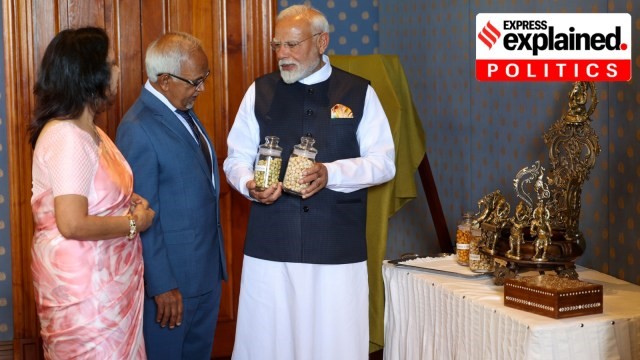
- 30 Oct 2025
In News:
- Prime Minister Narendra Modi has termed the establishment of the National Makhana Board as a transformative step and a “revolution” for the makhana sector.
- The initiative aims to unlock the commercial potential of Makhana (foxnut)—the dried edible seed of Euryale ferox, a prickly water lily that grows in freshwater ponds across South and East Asia—and address long-standing structural gaps in India’s leading production region, Bihar.
Makhana: Botanical, Nutritional and Cultural Features
- Makhana is derived from the seeds of the gorgon plant, recognised by its large prickly leaves and violet-white flowers. Traditionally used in ritual offerings, it has gained global traction as a nutrient-dense, low-fat “superfood”, expanding its market appeal among health-conscious consumers.
- The global makhana market, valued at USD 43.56 million in 2023, is projected to surpass USD 100 million by 2033, signalling strong export potential for India.
Production Profile: Bihar’s Dominance
- Bihar accounts for 90% of India’s makhana production, with cultivation concentrated in nine districts of the Mithilanchal region—particularly Darbhanga, Madhubani, Purnea, and Katihar, which together contribute 80% of the state’s output. Roughly 15,000 hectares under cultivation yield around 10,000 tonnes of popped makhana annually.
- Over 10 lakh families, mainly from the Mallah (fishermen) community, are involved in its cultivation, harvesting, and processing—making the crop socio-economically significant for Bihar’s rural economy.
Challenges: Low Productivity, Labour-Intensive Processes and Market Limitations
Despite being the largest producer, Bihar faces multiple structural constraints:
1. Weak Food Processing and Export Infrastructure
- Punjab and Assam dominate makhana exports despite minimal or no production.
- Bihar sells raw foxnuts cheaply to external food processing units (FPUs), which add value through flavouring, packaging, and branding—capturing higher profits.
2. Poor Market Organisation
- A long chain of intermediaries suppresses farmer earnings.
- Limited organised market systems hinder transparent pricing and revenue growth.
3. Labour-Intensive and Low-Productivity Cultivation
- Harvesting requires diving into water bodies and manually collecting seeds.
- Cleaning, sun drying, roasting, and popping are entirely manual processes.
- Adoption of high-yield varieties (HYVs) like Swarna Vaidehi and Sabour Makhana-1 remains low, keeping output at 1.7–1.9 tonnes/hectare, far below the HYV potential of 3–3.5 tonnes/hectare.
- Mechanisation attempts have been unsuccessful due to technological inefficiencies.
4. Institutional Weakness
- The ICAR National Research Centre for Makhana, established in 2002, has suffered understaffing, lack of administrative support, and underutilisation.
Government Efforts: Policy Push and Institutional Strengthening
The government is working to commercialise makhana through:
- Creation of the National Makhana Board with an initial budget of ?100 crore to address production, processing, value addition, and marketing.
- Promotion of makhana as a commercial crop with improved processing linkages.
- Expansion of industrial infrastructure, including cargo facilities at airports in Patna, Darbhanga, and Purnea, aimed at facilitating exports.
- Training, capacity-building, and linkage of farmers to government schemes.
- Awarding the GI tag to Mithila Makhana in 2022, recognising its unique geographical identity and boosting brand value.
Political Significance: Makhananomics in an Election Year
The push for makhana development carries strong electoral implications:
- With elections approaching, makhana has emerged as a key narrative in Bihar’s economic agenda.
- The sector directly impacts the Mallah community, which constitutes just 2.6% of the state population but commands significant influence in North Bihar owing to their 6% regional vote share.
- Success of “makhananomics” could bolster the ruling coalition’s political appeal by promising employment generation, economic upliftment, and rural prosperity.
CRYODIL
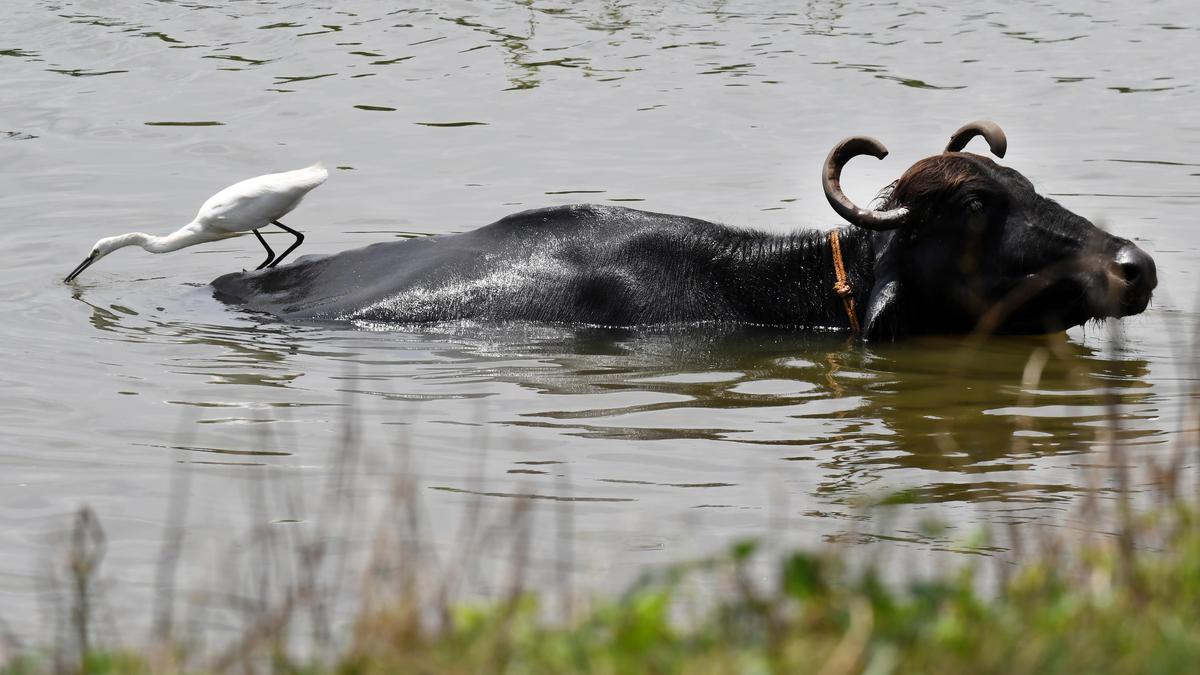
- 30 Oct 2025
In News:
- In a major breakthrough for India’s dairy and livestock sector, scientists at the ICAR–National Institute of Animal Nutrition and Physiology (NIANP), Bengaluru, have developed CRYODIL, the country’s first egg yolk-free, ready-to-use semen preservation solution for buffalo breeding.
- Designed to revolutionise artificial insemination practices, CRYODIL enables long-term storage and improved semen quality during cryopreservation, offering significant benefits to dairy productivity and livestock management.
What is CRYODIL?
CRYODIL is an innovative semen extender developed specifically for buffaloes. Unlike conventional extenders that rely on egg yolk for preservation, CRYODIL employs a purified whey-protein–based formulation to maintain semen motility and fertility. This eliminates the variability and contamination risk associated with egg-yolk-based solutions.
Key Features and Advantages
- Egg Yolk-Free Composition: Eliminates microbial contamination risks often linked to raw biological materials like egg yolk.
- Extended Shelf Life: Can preserve buffalo semen for up to 18 months, making long-distance transport and storage more efficient.
- Stable and Consistent Quality: Whey proteins ensure chemical uniformity, improving post-thaw sperm survival and movement.
- Field-Tested Innovation: Demonstrated successful results in trials conducted on 24 buffalo bulls, showing superior post-thaw semen motility and higher fertility potential.
- Cost-Effective Alternative: Indigenous development reduces reliance on imported commercial extenders, making it affordable for rural breeding programmes.
- Ready-to-Use Formulation: Simplifies the insemination process and enhances field applicability without requiring complex lab preparations.
Significance for India’s Dairy and Livestock Sector
- Boosts Buffalo Breeding Efficiency: India is home to the world’s largest population of buffaloes and relies heavily on them for dairy output. CRYODIL strengthens artificial insemination efforts by enhancing semen viability and improving conception rates.
- Advances Atmanirbhar Bharat: The indigenous formulation supports self-reliance, reducing dependence on imported extenders and promoting innovation under ICAR research initiatives.
- Improves Dairy Sector Economics: Higher fertility rates and improved breeding efficiency translate to increased milk yield, benefiting farmers and strengthening India’s dairy economy.
- Enhances Biosecurity and Hygiene: Removal of egg yolk minimises microbial load and contamination risks, making the solution safer for large-scale use in breeding centres.
VandeMataram – 150 Years Celebration

- 30 Oct 2025
In News:
Prime Minister Narendra Modi, in his October 2025 Mann Ki Baat address, called upon citizens to mark the 150th anniversary of VandeMataram.
Historical Origins and Evolution
- VandeMataram—meaning “I bow to thee, Mother”—was composed by Bankim Chandra Chattopadhyay in the 1870s in Sanskritised Bengali.
- It was later published in his novel Anandamath (1882), where the motherland was depicted symbolically as a divine, nurturing force.
- The song gained prominence during the freedom struggle. Its first public rendition was by Rabindranath Tagore at the 1896 Indian National Congress session, marking its transition from literary creation to a nationalistic anthem.
- Despite British censorship, it echoed across protest marches, swadeshi gatherings, and revolutionary movements, becoming an enduring symbol of defiance.
Role in National Movement and Political Debates
- During the early 20th century, the song became deeply embedded in anti-colonial resistance, especially during the Swadeshi Movement (1905) and later the Quit India Movement (1942). However, its later stanzas, portraying the motherland as a Hindu goddess, drew objections from the All-India Muslim League and some Muslim leaders.
- To maintain inclusivity, the Indian National Congress in 1937 officially adopted only the first two stanzas, which do not include religious imagery. This selective adoption reflected efforts to preserve unity in a diverse society.
- On 24 January 1950, the Constituent Assembly accorded equal honour to VandeMataram and Jana Gana Mana, defining the former as the national song and the latter as the national anthem.
Cultural, Symbolic and Constitutional Status
Today, VandeMataram holds a unique constitutional and cultural position:
- National Song Status: It enjoys the same respect as the national anthem as per Constituent Assembly resolutions.
- Parliamentary Tradition: An instrumental version is played at the end of every Parliament session.
- Cultural Identity: It continues to symbolise unity, patriotism, and emotional attachment to the motherland.
- Secular Projection: Emphasis remains on the first two stanzas to ensure inclusivity across religious communities.
- Judicial Affirmation: In 2022, the Delhi High Court reaffirmed that citizens should show equal respect to both the national anthem and national song.
Cyclone Montha
- 30 Oct 2025
In News:
- Cyclone Montha, a tropical cyclonic system that formed over the southeast Bay of Bengal in late October 2025, has emerged as one of the most significant weather events of the year for India’s eastern coastal states.
- The India Meteorological Department (IMD) has issued high-level warnings for Andhra Pradesh, Odisha, Tamil Nadu, and coastal Telangana as the system intensifies and advances toward landfall.
Formation and Meteorological Characteristics
- Cyclone Montha originated from a well-marked low-pressure area over the southeast Bay of Bengal around 24 October 2025.
- Under favourable atmospheric and oceanic conditions—warm sea surface temperatures above 28°C, high moisture availability, and low vertical wind shear—the system progressed from a depression to a deep depression by 26 October and further strengthened into a cyclonic storm. The IMD projected that it could intensify into a Severe Cyclonic Storm (SCS) before landfall.
- As of 27 October 2025, the storm was positioned approximately 350 km southeast of Kakinada, moving in a north-northwest direction at nearly 14 km/h.
- The IMD forecast predicted landfall between Machilipatnam and Kalingapatnam, near Kakinada, on the evening or night of 28 October. Wind speed estimates indicated gusts reaching 110 km/h, accompanied by “very rough to high” sea conditions and potential storm surge up to 1 metre.
Naming Mechanism and Regional Cyclone Governance
- “Montha” is a name contributed by Thailand to the World Meteorological Organization (WMO)/ESCAP Panel on Tropical Cyclones.
- Cyclone naming in the North Indian Ocean is overseen by a 13-member regional committee comprising India, Bangladesh, Pakistan, Sri Lanka, Myanmar, Maldives, Oman, Yemen, Qatar, Iran, UAE, Saudi Arabia, and Thailand.
- Each country submits suggested names, which are then assigned sequentially to future cyclones. This system enhances communication, public awareness, and clarity during simultaneous storm events.
Geographical Spread and Affected Regions
- While Andhra Pradesh remains the primary zone of impact—especially districts such as Kakinada, Konaseema, West Godavari, Krishna, Bapatla, Prakasam and Nellore—its effects range wider. Odisha has alerted 30 districts, Tamil Nadu has issued orange and yellow alerts for coastal belts, and Telangana is preparing for secondary rainfall impacts.
- Rayalaseema is also vulnerable due to the forecast of extremely heavy rainfall (>210 mm in 24 hours), increasing the risk of flash floods and landslides. Fisherfolk in all three major maritime states—Tamil Nadu, Andhra Pradesh, and Odisha—have been advised against venturing into the sea due to high waves and strong winds.
Expected Impacts
- Heavy to Extremely Heavy Rainfall: Isolated areas in coastal Andhra Pradesh and south Odisha may witness rainfall ≥21 cm in 24 hours, leading to flooding of rivers, drains, and agricultural fields.
- Strong Winds: Sustained winds of 90–100 km/h and gusts up to 110 km/h can uproot trees, damage kutcha houses, and disrupt electricity and telecom infrastructure.
- Storm Surge: Low-lying coastal pockets face inundation risks due to a possible storm surge of around 1 metre above the astronomical tide.
- Marine Hazards: Fishing vessels have been anchored, with over 900 boats already guided ashore. High swell waves and turbulent sea conditions threaten coastal ecosystems and livelihoods.
- Extended Weather Effects: Secondary effects may be felt in Telangana, Chhattisgarh, and even parts of West Bengal through rainfall, thunderstorms, and transportation disruptions.
Government Response and Preparedness Measures
State and central agencies have activated a coordinated disaster-response framework. Key measures include:
- Activation of emergency control rooms and pre-deployment of NDRF, SDRF, Coast Guard, and Army teams.
- Closure of schools in high-risk districts until 31 October.
- Stockpiling of essential commodities and readying PDS distribution systems.
- Evacuation of vulnerable populations including pregnant women and residents of low-lying areas.
- Temporary shelters being prepared with sanitation and food facilities.
- Suspension of fishing activities along the entire east coast stretch under threat.
- Continuous IMD bulletins issued for public safety instructions.
Inter-state cooperation has been emphasised, particularly between Odisha, Andhra Pradesh, and Tamil Nadu, to strengthen response logistics.
Children’s Booker Prize
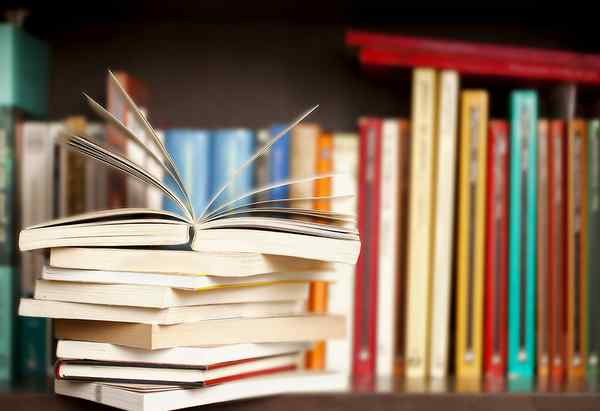
- 29 Oct 2025
In News:
- The Booker Prize Foundation has announced the establishment of the Children’s Booker Prize, a landmark global award dedicated to fiction written for children aged 8 to 12 years.
- Scheduled to debut in 2027, this prize represents the first major expansion of the Booker brand into children’s literature and carries a purse of £50,000, matching the award value of its established sister prizes.
What the Prize Represents
- The Children’s Booker Prize aims to celebrate and elevate fiction for middle-grade readers, acknowledging the importance of early reading habits in shaping future generations of informed, imaginative, and engaged adults. Books originally written in English or translated into English will be eligible, making the award internationally inclusive.
- The Booker Prize Foundation, in partnership with the AKO Foundation, which supports arts, education, and environmental initiatives, seeks to nurture a global culture of reading and inspire literary excellence in children’s storytelling.
Eligibility and Key Features
- Age Category: Fiction aimed at 8–12-year-old readers.
- Geographic Scope: Open to books published in the UK or Ireland, regardless of the author’s nationality.
- Languages: Both original English works and translated works can be submitted.
- Prize Value: £50,000 (same as the adult Booker and International Booker), funded by the AKO Foundation.
- Selection Process: The first award in 2027 will be decided by a jury of children and adults, chaired by acclaimed British children’s author Frank Cottrell-Boyce, the current children’s laureate.
The submission process begins in early 2026, and the prize hopes to build enthusiasm and visibility around high-quality children’s literature.
Purpose and Vision
- According to Booker Prize Foundation Chief Executive Gaby Wood, the award aims to cultivate an enduring love for reading among younger audiences and to serve as a catalyst for literary engagement across generations. The initiative builds on the Booker’s legacy of recognising works that shape global literary culture.
Position Within the Booker Ecosystem
The Children’s Booker Prize joins two established awards under the Booker umbrella:
1. Booker Prize
- Founded: 1969
- Eligibility: Original novels written in English and published in the UK or Ireland.
- Prize Distribution: Award solely to the author.
- Objective: Celebrates outstanding English-language fiction.
- Indian Winners:
- Salman Rushdie – Midnight’s Children (1981)
- Arundhati Roy – The God of Small Things (1997)
- Kiran Desai – The Inheritance of Loss (2006)
- Aravind Adiga – The White Tiger (2008)
2. International Booker Prize
- Established: 2005; restructured in 2016.
- Eligibility: Translated fiction published in the UK or Ireland.
- Prize Distribution: Shared equally between author and translator.
- Objective: Promotes cross-cultural literary exchange and honours translation.
- Indian-Linked Winners:
- Geetanjali Shree – Tomb of Sand (2022) (Hindi, translated by Daisy Rockwell)
- Banu Mushtaq – Heart Lamp (2025) (Kannada, translated by Deepa Bhasthi)
Forex Reserves
- 29 Oct 2025
In News:
India’s foreign exchange reserves recorded a strong rise, increasing by $4.496 billion and reaching an all-time high of $702.28 billion, according to RBI data. This marks the second consecutive week of expansion, following a $2.176 billion rise in the previous reporting week. The jump was primarily driven by a steep increase in the value of gold reserves, even as foreign currency assets registered a decline.
Component-wise Movement of Reserves
1. Foreign Currency Assets (FCA)
- FCAs, which form the largest component of India’s forex reserves, fell by $1.692 billion to $570.411 billion.
- The changes reflect valuation effects due to fluctuations in currencies such as the euro, pound, and yen against the US dollar.
2. Gold Reserves
- Gold holdings rose sharply by $6.181 billion, taking their total value to $108.546 billion.
- The increase is attributed to RBI’s gold purchases and the global surge in gold prices.
3. Special Drawing Rights (SDRs)
- SDR holdings increased slightly by $38 million, reaching $18.722 billion.
4. Reserve Position in the IMF
- India’s reserve position with the IMF declined by $30 million to $4.602 billion.
Overall, the rise in gold assets offset the fall in foreign currency assets, helping the total reserves cross the historic $702-billion mark.
Understanding India’s Forex Reserves
Foreign exchange reserves represent external assets held by the RBI in the form of:
- Foreign currency assets
- Gold reserves
- Special Drawing Rights (SDRs)
- Reserve position in the IMF
These reserves act as a protective financial buffer for the economy.
Objectives and Functions
- Monetary Stability: Helps maintain stability of the Indian Rupee during volatility.
- Crisis Management: Provides liquidity support during balance of payments pressure or external shocks.
- Investor Confidence: Strengthens India’s credibility and ensures macroeconomic stability.
- Trade and Debt Support: Enables smooth settlement of import bills and external debt servicing obligations.
Key Features
- India’s forex reserves are valued on a weekly basis, factoring in global gold prices and New York closing exchange rates.
- The RBI manages these reserves following IMF data dissemination standards, maintaining international transparency.
- Foreign currency assets remain the largest component, followed by gold, SDRs, and India’s IMF reserve position.
Economic Significance
- Economic Security: Acts as an insurance mechanism against currency crises, capital outflows, or external market shocks.
- Policy Flexibility: Allows RBI to intervene in the forex market to curb excessive rupee volatility.
- Global Standing: Reinforces India’s global financial strength, supporting favourable sovereign credit ratings and greater investor trust.
KotadaBhadli
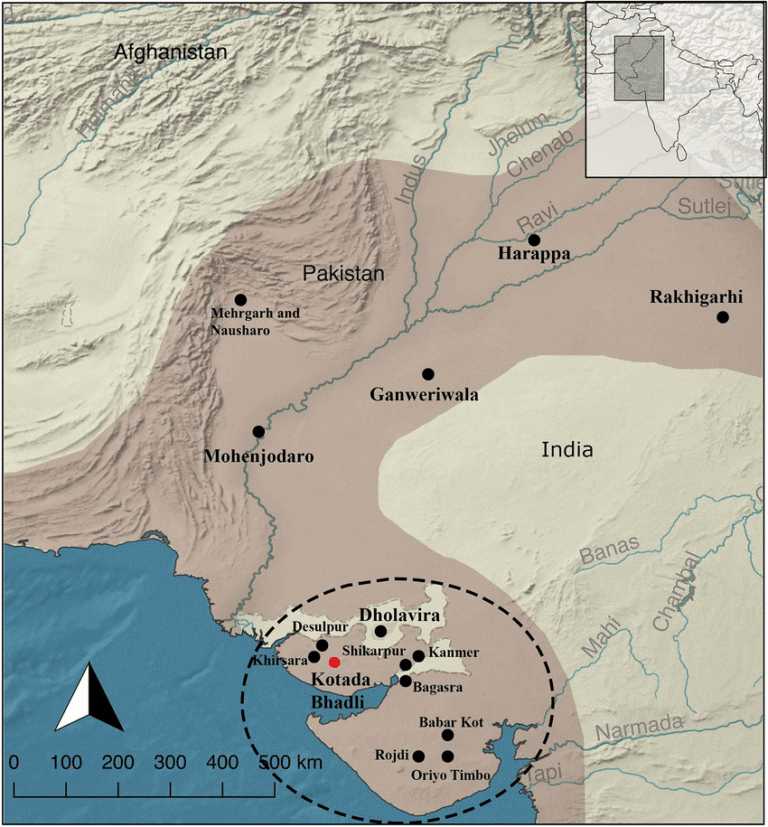
- 29 Oct 2025
In News:
- A recent multidisciplinary research study by Deccan College, Symbiosis School for Liberal Arts, and the Archaeological Survey of India (ASI) has reinterpreted the Harappan settlement of KotadaBhadli in Kutch, Gujarat, as the earliest known caravanserai, dating to the Mature Harappan phase (2300–1900 BCE).
- The study, published in L’Anthropologie (2025), pushes back the origins of organised trade infrastructure in South Asia by nearly 2,000 years, long before the rise of the Silk Route.
Location and Strategic Significance
- KotadaBhadli lies in the Kutch district of Gujarat, positioned along inland trade corridors linking prominent Harappan centres such as Dholavira, Lothal, and Shikarpur.
- Its placement reveals a purposeful design—serving as a rural logistical stopover facilitating long-distance trade between urban and coastal settlements.
Nature and Function of the Settlement
- Researchers have identified KotadaBhadli as a fortified rural halt, intended not for permanent habitation but for short-term stops by traders and their caravans.
- Its function aligns closely with caravanserai-style establishments known from later historical periods—providing shelter, security, food, and space for pack animals during overland journeys.
- The study clarifies a previously missing link in Harappan commerce: while trade with Mesopotamia and inland India was well documented, the operational mechanism—how traders and goods moved safely across long distances—was not fully understood. KotadaBhadli provides the first archaeological evidence to support this model.
Archaeological and Scientific Evidence
Excavations conducted between 2010 and 2013 and re-analysed through advanced techniques have revealed:
- A multi-roomed central complex, likely functioning as administrative or resting quarters.
- Fortified walls with bastions, confirming its role as a protected stopover.
- Large open courtyards, interpreted as holding areas for animals and storage of goods.
- Remains of food waste and imported material, suggesting active trade activity.
Cutting-edge scientific methods—including ground-penetrating radar, satellite mapping, magnetic surveys, isotopic and lipid analysis, and multiple dating techniques—have improved understanding of the site’s functional layout and confirm its zoning for logistical purposes.
Implications for Harappan Trade Networks
The findings demonstrate that the Harappan economy had a structured overland trade system, supported by a network of small fortified checkpoints rather than solely urban market centres. This reveals an advanced level of planning and coordination within Harappan economic systems.
Key implications include:
- Chronological significance: Organised trade infrastructure existed in South Asia more than two millennia before the Silk Route.
- Economic insight: Harappans displayed sophisticated logistics and administrative planning.
- Civilizational understanding: The Harappan world was not merely dependent on ports like Lothal or trade with Mesopotamia—it also relied on inland support systems that sustained commerce.
Amoebic meningoencephalitis
- 29 Oct 2025
In News:
Kerala has reported yet another fatal case of amoebic meningoencephalitis in 2025, deepening public health concerns in the state. With this incident, Kerala’s cases linked to amoebic meningoencephalitis in 2025 have risen to 27, highlighting an emerging disease surveillance challenge. Health authorities are still investigating the exact source of infection in the latest case, as environmental exposure remains the primary risk factor.
Understanding Amoebic Meningoencephalitis
- Nature of the Disease: Amoebic meningoencephalitis, or Primary Amebic Meningoencephalitis (PAM), is a rare but rapidly progressing and typically fatal brain infection. It occurs when a free-living amoeba invades the central nervous system, causing severe inflammation and extensive brain tissue damage.
- Causative Organism: The infection is caused by Naegleria fowleri, often referred to as the “brain-eating amoeba.” This thermophilic organism is naturally present in warm freshwater bodies and moist soil.
Transmission and Environmental Factors
- The disease is not transmitted person-to-person.
- Infection occurs when contaminated water enters the nasal cavity, allowing the amoeba to migrate through the olfactory nerve into the brain.
- Naegleria fowleri proliferates in warm freshwater, particularly during summer months, in environments such as:
- Lakes
- Ponds
- Hot springs
- Poorly chlorinated swimming pools
- Warm freshwater streams and rivers
Kerala’s warm and humid climate, combined with widespread freshwater sources, may create favourable conditions for the organism, necessitating stronger environmental monitoring and public awareness.
Clinical Presentation
Early Symptoms (1–9 days after exposure):
- Fever
- Headache
- Nausea
- Vomiting
Advanced Symptoms:
- Stiff neck
- Seizures
- Confusion
- Loss of balance
- Hallucinations
- Progressive neurological deterioration
The disease often leads to coma and death within days, making it one of the deadliest infections of the central nervous system.
Treatment and Mortality
Treatment remains highly challenging, with over 95% mortality. Some survival cases have been associated with:
- Early diagnosis
- Rapid initiation of drugs like amphotericin B and miltefosine
- Aggressive supportive care in intensive settings
However, the overall prognosis remains extremely poor due to the fast progression of the infection.
Preventive Measures
Given the absence of person-to-person transmission, prevention focuses on reducing environmental exposure:
- Avoid swimming or diving in untreated freshwater bodies, especially during warmer months.
- Use nose clips while entering freshwater.
- Ensure proper chlorination and maintenance of swimming pools.
- Avoid stirring mud or sediment in shallow freshwater areas where amoebae thrive.
PM- Ayushman Bharat Health Infrastructure Mission (PM-ABHIM)
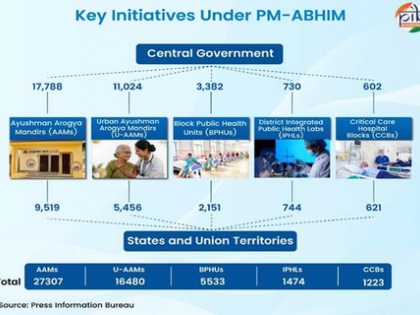
- 29 Oct 2025
In News:
The Pradhan Mantri–Ayushman Bharat Health Infrastructure Mission (PM-ABHIM), launched in October 2021, represents one of India’s most ambitious national health-system strengthening initiatives. Conceived in the aftermath of COVID-19, the Mission aims to build a resilient, modern, and self-reliant public health infrastructure capable of responding effectively to future pandemics and health emergencies.
Mission Structure and Financial Outlay
- PM-ABHIM is implemented as a Centrally Sponsored Scheme (CSS) with select Central Sector components, with a total allocation of ?64,180 crore for the period 2021-22 to 2025-26.
- This multi-layered programme focuses on fortifying health infrastructure from the village level to the district level, while simultaneously creating a national network for disease surveillance and laboratory capacity.
Key Components of PM-ABHIM
1. Primary and Secondary Healthcare Strengthening
The Mission envisions comprehensive infrastructure development through:
- Ayushman Arogya Mandirs (AAMs) replacing and upgrading Sub-Centres and Primary Health Centres.
- Urban Health and Wellness Centres established in slum and underserved urban areas.
- Block Public Health Units (BPHUs) to enhance diagnostic, surveillance, and public health management capacity at the block level.
These interventions aim to fill service delivery gaps and ensure equitable access to quality healthcare, especially in rural and vulnerable regions.
2. District-Level Critical Health Infrastructure
- Establishment of Critical Care Hospital Blocks (CCHBs) in every district to provide advanced and emergency care.
- Creation and upgradation of Integrated District Public Health Labs (IDPHLs) for comprehensive testing and epidemiological support.
These facilities are intended to strengthen district-level readiness for public health emergencies and mass-casualty situations.
3. Strengthened Disease Surveillance and Pandemic Preparedness
A significant feature of PM-ABHIM is the creation of an IT-enabled, real-time disease surveillance system. This network links:
- Block-level labs
- District surveillance units
- Regional surveillance centres
- National institutions
The government has highlighted that PM-ABHIM has substantially enhanced India’s health surveillance capabilities, enabling faster detection, notification, and response during outbreaks. The integration of digital tools allows seamless data sharing and analytics—essential for early warning and rapid containment strategies.
4. Research, Innovation, and One Health Approach
The Mission supports:
- Advanced research on COVID-19, emerging infectious diseases, and health emergencies.
- Laboratories and platforms promoting scientific innovation.
- Adoption of the One Health approach, recognising the linkages between human, animal, and environmental health to prevent zoonotic diseases.
Policy Significance
PM-ABHIM marks a paradigm shift from reactive health crisis management to proactive preparedness. Its multi-tiered infrastructure plan, focus on training, surveillance networks, and integration of modern technologies positions India to handle:
- Emerging infectious diseases
- Climate-linked health threats
- Biosecurity risks
- Mass public health emergencies
The Mission also contributes to the broader goals of Ayushman Bharat, Universal Health Coverage (UHC), and Sustainable Development Goals (SDGs), by bridging regional disparities and strengthening healthcare accessibility.
Rashtriya Vigyan Puraskar

- 28 Oct 2025
In News:
- The Government of India has announced the Rashtriya Vigyan Puraskar (RVP) 2025, the nation’s premier recognition for exceptional achievements in science, technology, and innovation.
- The awards acknowledge landmark contributions by scientists, technologists, young researchers, and collaborative teams working across diverse domains that drive India’s S&T leadership and national development goals.
About the Rashtriya Vigyan Puraskar
Instituted by the Government of India, the RVP honours outstanding scientific excellence and impactful innovation. The awards are conferred in four categories:
- Vigyan Ratna (VR): Recogniseslifetime achievements in any field of science and technology.
- Vigyan Shri (VS): Honoursdistinguished contributions by individuals in any scientific discipline.
- Vigyan Yuva– Shanti Swarup Bhatnagar (VY-SSB): Celebrates exceptional contributions by young scientists up to 45 years of age.
- Vigyan Team (VT): Awarded to a team of 3 or more researchers for exceptional collaborative work.
The awards span 13 scientific domains, including Physics, Chemistry, Biological Sciences, Engineering, Agriculture, Environmental Science, Earth Science, Atomic Energy, Space Science and Technology, Medicine, Mathematics & Computer Science, Technology & Innovation, and allied interdisciplinary fields.
Selection Process
- Nominations for the 2025 edition were accepted through the government portal (awards.gov.in) between October 4 and November 17, 2024.
- An expert committee comprising the Principal Scientific Advisor, secretaries of leading science departments, heads of national academies, and domain specialists rigorously evaluated the submissions.
- The final decisions were coordinated by the Rashtriya Vigyan Puraskar Secretariat.
Significance of the Awards
The Rashtriya Vigyan Puraskar:
- Strengthens India’s scientific ecosystem
- Motivates emerging researchers and innovators
- Recognises pathbreaking discoveries and technological advancements
- Reinforces India’s strategic vision of becoming a global S&T leader
- Encourages collaborative, interdisciplinary research
The award ceremony will be organised separately, with formal notifications issued to the awardees.
Subansiri Lower Hydroelectric Project
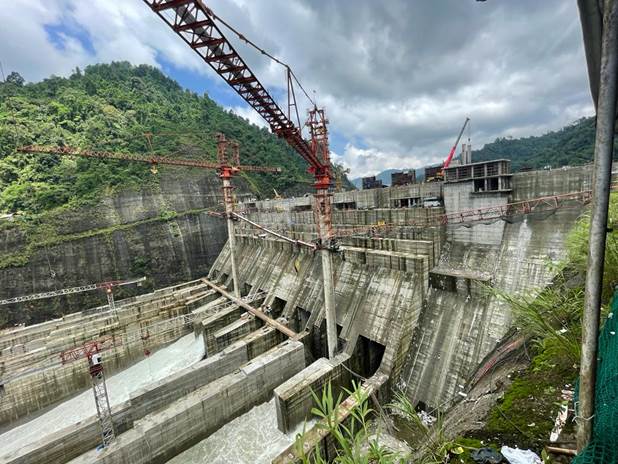
- 28 Oct 2025
In News:
India’s largest hydroelectric venture, the 2000 MW Subansiri Lower Hydroelectric Project, has officially entered its commissioning phase after years of delays, protests, and structural overhauls. Located at Gerukamukh on the Arunachal Pradesh–Assam border, the project marks a crucial milestone in India’s renewable energy expansion, especially in the Northeast.
Overview of the Project
- Type: Run-of-the-river hydroelectric project
- Capacity: 2000 MW (8 × 250 MW units)
- River:Subansiri River, a major tributary of the Brahmaputra
- Developer: National Hydroelectric Power Corporation (NHPC)
- Location:Gerukamukh, in the foothills of the Himalayas
- Construction Timeline: Work began in 2005; commissioning initiated in 2025
- Financing Structure: 70% equity and 30% debt; Central government provided budgetary support as equity
When fully operational, it will be India’s single largest hydroelectric power plant, providing a major boost to national energy security and clean energy capacity.
Engineering Features
- Concrete Gravity Dam:
- Height: 116 m from riverbed; 130 m from foundation
- Length: 284 m
- Reservoir Storage Capacity: 1.37 km³
- Power Generation System:
- Eight Francis-type turbines, each generating 250 MW
- Eight headrace tunnels, eight surge tunnels, and eight circular penstocks
- A 35 m-long, 206 m-wide tailrace channel to release water back into the river
Recent Developments – Commissioning Phase
On the first mechanical run, Unit-I generated 250 MW, marking the start of wet commissioning and its synchronization with the national grid. NHPC described this achievement as a “landmark moment for India’s hydropower landscape,” signalling steady progress toward bringing the remaining units online.
- Three additional units are expected to be commissioned within the year, adding 1,000 MW of clean energy to the grid.
- Once all 8 × 250 MW units become operational, the project will light millions of households and reinforce India’s push toward sustainable, reliable, and carbon-free energy.
Historical Delays and Controversies
The project’s trajectory has been far from smooth:
- Original commissioning target: December 2012
- Sanctioned: 2003
- Work halted: 2011–2019 due to widespread protests
Concerns raised by local communities and civil society groups:
- High seismic vulnerability of the region
- Potential ecological disruption
- Fear of downstream flooding
- Impact on riverine ecosystems and local livelihoods
Organisations such as the All Assam Students’ Union (AASU) demanded a complete reassessment of safety and environmental impacts.
Expert Review and Redesign
During the eight-year suspension:
- Expert committees from IIT Guwahati and the National Dam Safety Authority (NDSA) evaluated structural integrity and proposed design modifications.
- Recommended changes led to:
- Enhanced seismic reinforcements
- Additional grouting
- Redesign of spillways
- Strengthened safety protocols
The redesign ensured compliance with updated safety, hydrological, and structural norms before work resumed in October 2019.
Cost Escalation
The prolonged delays and modifications caused a substantial budget escalation:
- Initial Estimate: ?6,285 crore
- Revised Estimate: ?26,075 crore
- Cost Increase Drivers:
- Inflation
- Monsoon-induced damage
- Prolonged suspension of civil works
- Safety overhaul and redesign
Strategic Importance
- A cornerstone of India’s renewable energy strategy in the Northeast
- Strengthens national energy security with clean, baseload hydro capacity
- Supports grid stability and contributes to India’s climate goals
- Symbol of engineering resilience and India’s capability in executing large-scale infrastructure projects
NHPC leadership hailed the achievement as an emblem of “India’s unstoppable march towards a cleaner and self-reliant energy future.”
East Timor Joins ASEAN
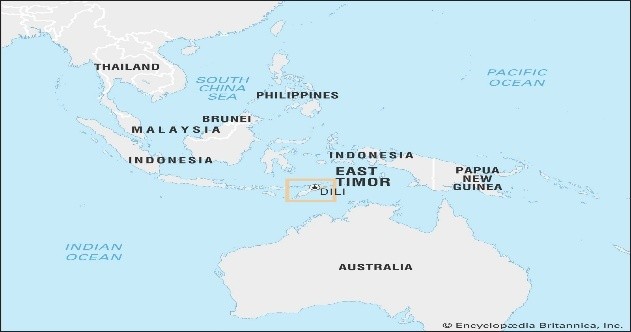
- 28 Oct 2025
In News:
East Timor (Timor-Leste) was formally admitted as the 11th member of the Association of Southeast Asian Nations (ASEAN) at the 47th ASEAN Summit in Kuala Lumpur, marking the organisation’s first expansion since the late 1990s.
Historical Milestone for East Timor
- Prime Minister Xanana Gusmão declared the moment “historic,” noting that ASEAN membership reflects both the aspirations and resilience of the Timorese people. President José Ramos-Horta, a Nobel Peace Prize laureate, and Gusmão—both icons of the independence movement—lead the nation as it navigates socio-economic challenges such as high unemployment, persistent malnutrition, and widespread poverty (with 42% of the population living below the national poverty line).
- East Timor’s journey to statehood has been arduous. A former Portuguese colony for over four centuries, it declared independence in 1975, only to face a 24-year occupation by Indonesia that claimed tens of thousands of lives. AUN-supervised referendum in 1999 paved the way to sovereignty, which was finally restored in 2002, making it one of the world’s youngest nations.
Why East Timor’s ASEAN Membership Matters
Malaysian Prime Minister Anwar Ibrahim, chairing the summit, emphasised that East Timor’s entry “completes the ASEAN family,” reflecting shared regional identity and a commitment to equitable growth. Analysts view the expansion as a declaration of ASEAN’s inclusivity and adaptability, especially amid global geopolitical volatility and rising protectionism.
Membership grants East Timor greater access to:
- ASEAN’s free trade arrangements
- Regional investment opportunities
- Broader markets and labour mobility
- Platforms for cooperation in education, technology, and digital economy
For a small, resource-dependent nation with a youthful demographic—nearly two-thirds of its people are under 30—ASEAN integration offers new possibilities for job creation, capacity building, and economic diversification. With oil and gas reserves declining, the government seeks fresh pathways for economic resilience.
East Timor: Key Facts
- Official Name: Democratic Republic of Timor-Leste
- Location: Eastern half of Timor Island in the Malay Archipelago; bordered by Indonesia and the Timor Sea
- Capital: Dili
- Geography: Mountainous terrain; highest peak Mount Tatamailau (2,963 m); tropical climate; rich biodiversity
- Population: ~1.4 million
- Economy: Predominantly dependent on hydrocarbons
East Timor applied for ASEAN membership in 2011 and was granted observer status in 2022, culminating in full accession in 2025.
About ASEAN and Its Relevance
- The Association of Southeast Asian Nations (ASEAN) is a regional intergovernmental organisation established in 1967 with the signing of the Bangkok Declaration by Indonesia, Malaysia, the Philippines, Singapore, and Thailand. Its headquarters is located in Jakarta, Indonesia.
- Current Membership (11 Countries):Indonesia, Malaysia, Philippines, Singapore, Thailand, Brunei, Vietnam, Laos, Myanmar, Cambodia, and East Timor.
- Core Goals:
- Promote political stability through dialogue and diplomacy
- Advance economic integration via AFTA and RCEP
- Strengthen cooperation on climate change, disaster response, and transnational threats
- Foster socio-cultural exchange and people-to-people connectivity
- Engage global powers through mechanisms like ASEAN+3 and East Asia Summit (EAS)
Significance for Regional Dynamics
East Timor’s accession:
- Reinforces ASEAN’s commitment to regionalism and openness, countering trends of protectionism
- Expands the bloc’s political influence and strengthens its collective strategic posture
- Enhances ASEAN’s identity as a community representing diverse political and economic systems
- Encourages equitable development within the region’s smallest and youngest member state
Operation Fire Trail
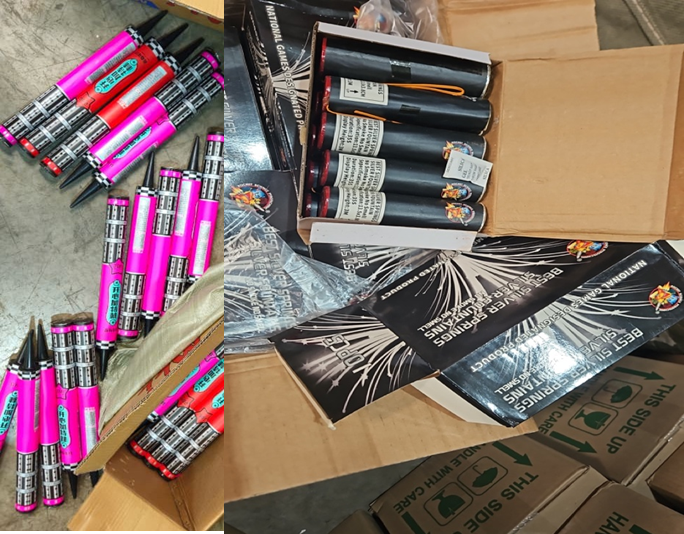
- 28 Oct 2025
In News:
The Directorate of Revenue Intelligence (DRI), under the Ministry of Finance, continues its nationwide anti-smuggling campaign titled “Operation Fire Trail”, aimed at curbing the illegal import of hazardous foreign-origin firecrackers into India. The operation focuses on intercepting smuggling networks that violate India’s trade regulations, safety norms, and environmental standards.
About Operation Fire Trail
- Nature of Operation:Operation Fire Trail is an intelligence-driven enforcement initiative designed to detect and prevent the illegal entry of non-compliant Chinese firecrackers into India. These pyrotechnic materials often contain harmful chemicals, posing severe risks to public health, safety, and the environment.
- Implementing Agency:The operation is carried out by the Directorate of Revenue Intelligence (DRI)—India’s apex anti-smuggling agency.
- Objectives:
- To dismantle organised smuggling syndicates involved in routing foreign firecrackers into India using false declarations.
- To enforce compliance with licensing norms mandated by the Directorate General of Foreign Trade (DGFT) and Petroleum and Explosives Safety Organisation (PESO) under the Explosives Rules, 2008.
- To strengthen India’s customs surveillance and safeguard national security.
Recent Seizure at Nhava Sheva Port
In one of the largest seizures during the ongoing operation, DRI intercepted a 40-foot container at Nhava Sheva port that had originated from China. The consignment, falsely declared as containing "leggings," was destined for ICD Ankleshwar.
A detailed examination revealed:
- 46,640 pieces of smuggled Chinese-origin firecrackers.
- Total estimated value: ?4.82 crore.
- Firecrackers were concealed behind a thin layer of garments to evade detection.
Subsequent raids led to the confiscation of incriminating documents exposing the smuggling syndicate’s modus operandi. A key suspect from Veraval, Gujarat, was arrested, marking a major breakthrough in the case.
Legal and Regulatory Framework
- Import of firecrackers into India is classified as “Restricted” under the ITC (HS) classification of the Foreign Trade Policy.
- Legitimate imports require:
- Valid DGFT licence, and
- Approval from PESO under the Explosives Rules, 2008.
- Smuggling of non-compliant fireworks bypasses these safeguards and introduces hazardous substances into the domestic market.
Significance of the Crackdown
- Protection of Public Safety: Smuggled firecrackers are often made using unsafe chemical compositions. Their uncontrolled entry poses serious risks of fire, explosions, and injury.
- Safeguarding Port and Supply Chain Infrastructure: Hazardous consignments threaten critical port infrastructure, warehouse safety, and logistics operations.
- Strengthening Enforcement Capacity: Operation Fire Trail enhances India’s intelligence-led enforcement, boosts customs vigilance, and disrupts transnational smuggling networks.
- Environmental Protection: Many imported Chinese firecrackers release toxic pollutants, violating environmental norms. Curtailing their inflow supports India’s pollution-control efforts.
- Supporting Domestic Manufacturing: The operation discourages cheap illegal imports and promotes domestic, compliant firecracker production aligned with safety and environmental regulations.
Global Multidimensional Poverty Index (MPI) 2025

- 28 Oct 2025
In News:
- The United Nations Development Programme (UNDP) and the Oxford Poverty and Human Development Initiative (OPHI) released the Global Multidimensional Poverty Index (MPI) 2025 Report, titled “Overlapping Hardships: Poverty and Climate Hazards”.
- The report provides an evidence-based assessment of poverty that goes beyond income measures, highlighting how climate vulnerability and multidimensional deprivation reinforce each other.
About the Global MPI
- Nature of Index: The MPI is a global composite measure of acute poverty, capturing simultaneous deprivations in health, education, and standard of living through 10 indicators.
- Introduced: First featured in the 2010 Human Development Report.
- Published by: Jointly by UNDP Human Development Report Office and OPHI, annually since 2010.
- Objective: To assess:
- Who is poor
- How they are poor
- How deprivations overlap across households
- Enabling policymakers to align development strategies with SDG-1 (No Poverty).
- Methodology Highlights:
- 3 Dimensions: Health, Education, Living Standards.
- 10 Indicators: Nutrition, child mortality, years of schooling, school attendance, cooking fuel, sanitation, drinking water, electricity, housing, assets.
Global Trends in the MPI 2025
Poverty Headcount & Severity
- Out of 6.3 billion people assessed across 109 countries, 1.1 billion (18.3%) live in acute multidimensional poverty.
- 43.6% of the poor (≈501 million) experience severe poverty—being deprived in half or more indicators.
Regional Distribution of Poverty
- Sub-Saharan Africa (565 million) and South Asia (390 million) account for 83% of global poverty.
- Sub-Saharan Africa alone contains 49.2% of the world’s multidimensionally poor.
Children Disproportionately Affected
- Children form 33.6% of the global population but 51% of those living in multidimensional poverty.
- Malnutrition and disruption in schooling are primary drivers of child deprivation.
Middle-Income Countries as Core Contributors
- Nearly 740 million of the global poor live in middle-income countries, highlighting inadequacies of income-based poverty classifications.
Rural Concentration
- 83.5% of all multidimensionally poor live in rural areas, despite these areas comprising only 55% of total population.
Climate Hazard Exposure
- Nearly 80% of poor populations live in climate-vulnerable areas.
- Climate hazards include droughts, floods, extreme heat, and erratic precipitation patterns.
- South Asia has the highest number of poor people living in climate hazard zones.
Poverty & Climate Vulnerability in SIDS
- 22 Small Island Developing States (SIDS) show a combined poverty rate of 23.5%, higher than the developing world average.
- Rising sea levels (projected up to 70 cm by 2080–2099) threaten livelihoods in nations such as Belize, Comoros, and Samoa.
Post-Pandemic Stagnation
- Poverty reduction has slowed, with many countries witnessing stagnation or reversal due to:
- Inflation
- Conflict
- Climate shocks
- Post-pandemic economic disruptions
India in Global MPI 2025
Significant Poverty Reduction
- India reduced multidimensional poverty from 55.1% (2005–06) to 16.4% (2019–21).
- Over 414 million people moved out of multidimensional poverty.
- India's progress is among the fastest globally.
Persistent Child Poverty
- Children continue to face high deprivation, particularly in:
- Nutrition
- Sanitation
- Housing
- Cooking fuel
Climate Vulnerability and Poverty Link
- Nearly 99% of India’s poor live in climate-exposed regions.
- Heatwaves, floods, droughts, and air pollution intensify hardship and threaten livelihood security.
Drivers of MPI Improvement
India’s poverty reduction correlates with large-scale welfare and infrastructure missions:
- Swachh Bharat Mission – sanitation improvement
- PM Ujjwala Yojana – access to clean cooking fuel
- PM-Awas Yojana – housing for rural and urban poor
- Jal Jeevan Mission – access to clean drinking water
- Universal electrification initiatives
Key Challenges
- Rural–Urban Divide: 83% of the multidimensionally poor live in rural regions.
- Climate shocks: Frequent floods and droughts reverse development gains.
- Data Gaps: Lack of updated household-level data limits monitoring and policy targeting.
- Gender disparities: Women face inequalities in nutrition, education, healthcare, and asset ownership.
- Financial constraints: Several states struggle with fiscal capacity, affecting social protection and climate adaptation.
Policy Recommendations
- Integrate Climate & Poverty Policy: Adopt climate-resilient strategies combining:
- Green infrastructure
- Social protection
- Disaster risk reduction
- Localised Poverty Tracking: Develop district-level MPI dashboards for real-time, granular monitoring.
- Promote Green Livelihoods: Expand employment in:
- Renewable energy
- Organic farming
- Circular economy sectors
- Enhance Global Support: Strengthen access to:
- Climate finance
-
- Concessional aid
- Technology transfers
- Gender and Child-Focused Interventions: Reinforce programs for:
- Nutrition
- Maternal health
- Education
- Clean cooking energy
MAHA MedTech Mission
- 27 Oct 2025
In News:
The Anusandhan National Research Foundation (ANRF), in collaboration with the Indian Council of Medical Research (ICMR) and the Bill & Melinda Gates Foundation, has launched the Mission for Advancement in High-Impact Areas (MAHA)–Medical Technology (MedTech).This landmark initiative seeks to accelerate innovation in India’s medical technology ecosystem, reduce dependence on costly imports, and ensure affordable, high-quality healthcare technologies for all.
About the MAHA MedTech Mission
- Launched by: ANRF, in partnership with ICMR and Gates Foundation
- Mission Duration: 5 years
- Deadline for Concept Note Submission: 7 November 2025
- Implemented through: ANRF online portal – www.anrfonline.in
The mission represents a strategic push under the government’s Aatmanirbhar Bharat vision to strengthen India’s domestic MedTech sector, which is currently import-heavy and fragmented.
Objectives of the MAHA MedTech Mission
- Public Health Impact:
- Promote technologies addressing priority disease areas such as tuberculosis, cancer, neonatal and maternal care, and primary healthcare.
- Expand access to safe, high-quality medical care across India.
- Affordability and Accessibility:
- Support innovative solutions that reduce healthcare costs while maintaining quality standards.
- Promote equitable access to advanced medical devices, especially in rural and underserved regions.
- Self-Reliance and Competitiveness:
- Catalyze indigenous research, manufacturing, and commercialization in MedTech.
- Foster industry–academia collaboration and boost India’s global competitiveness in medical innovation.
Scope of the Mission
The MAHA MedTech Mission will support a wide range of medical technologies and innovations, including:
- Medical devices and equipment
- In-vitro diagnostics (IVDs) and subcomponents
- Implants and surgical instruments
- Assistive and wearable devices
- Consumables and disposables
- AI/ML-driven software-based medical platforms
- Robotics, imaging, and minimally invasive technologies
- Point-of-care and molecular diagnostics
These innovations will target priority national health areas, promoting early disease detection, efficient treatment delivery, and improved healthcare infrastructure.
Funding Mechanism
- Milestone-linked funding:
- ?5–25 crore per project
- Up to ?50 crore for exceptional projects with transformative potential.
- Eligible Applicants:
- Academic and R&D institutions
- Hospitals and clinical research centers
- Startups and MSMEs
- Established MedTech industries
- Interdisciplinary collaborations between public and private entities
The funding structure encourages translational research, product prototyping, clinical validation, and commercialization of indigenous medical technologies.
Enabling Support Framework
The Mission also provides institutional and regulatory facilitation through several national support programs:
- Patent Mitra:Facilitates intellectual property protection, patent filing, and technology transfer.
- MedTech Mitra:Provides regulatory guidance, helps in obtaining clinical and market approvals, and supports compliance with national and international standards.
- Clinical Trial Network:Offers access to a national network of hospitals and research centers for clinical validation and evidence generation.
- Mentorship and Industry Linkages:Access to industry mentors, market experts, and commercialization partners to support end-to-end product development.
Notice to Airmen (NOTAM)
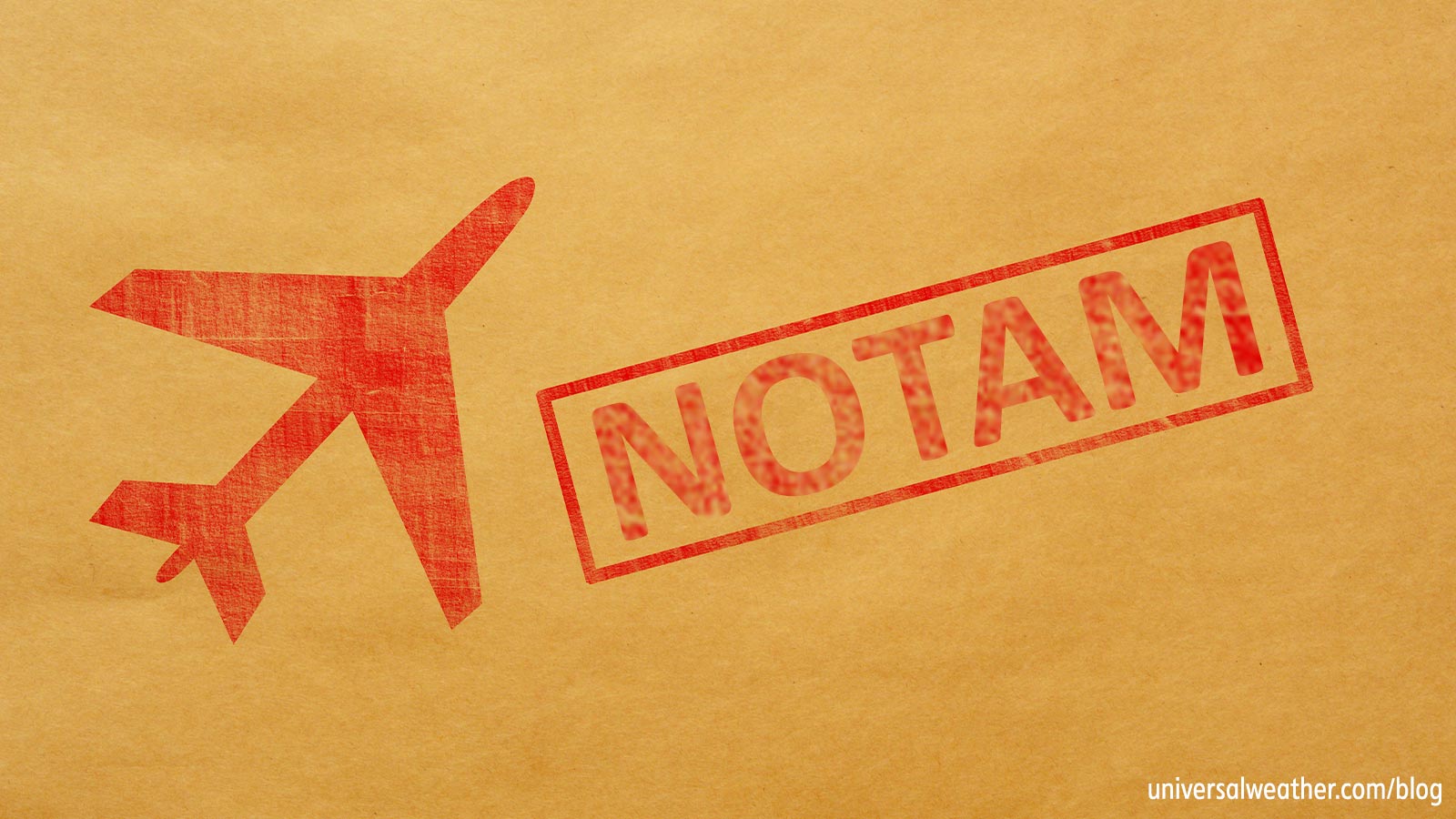
- 27 Oct 2025
In News:
India has recently issued a Notice to Airmen (NOTAM) for a large-scale tri-services military exercise, “Ex Trishul,” scheduled along the Pakistan border. The announcement highlights India’s focus on joint operational preparedness, self-reliance, and technological innovation in defence.
About Notice to Airmen (NOTAM)
- Notice to Airmen (NOTAM), also known as Notice to Air Missions, is an official notification issued by national aviation authorities to inform airspace users about temporary or permanent changes that may affect flight operations.
- Purpose: NOTAMs ensure flight safety by providing timely information about:
- Changes in aeronautical facilities or services
- Temporary airspace restrictions
- Hazards or obstacles along flight paths
- Military activities, such as exercises or missile tests
They are critical for pilots, air traffic controllers, and flight planners, allowing them to modify flight paths or schedules to ensure operational safety.
Common Reasons for Issuing NOTAMs
- Airshows, parachute jumps, or glider operations
- VIP movements (e.g., heads of state)
- Runway or taxiway closures
- Unserviceable navigational aids or airport lighting
- Construction activities or temporary obstacles near airfields
- Military exercises involving restricted or closed airspace
NOTAMs are disseminated rapidly via aeronautical communication systems, online aviation portals, and electronic flight planning tools, enabling real-time updates for all stakeholders.
India’s Recent NOTAM: Context and Significance
The recent NOTAM covers a large segment of India’s western frontier, extending up to 28,000 feet, indicating one of the largest joint operational drills in recent years. Satellite imagery has highlighted the vast scale of the restricted airspace, reflecting India’s intent to conduct multi-domain, tri-service coordination along the Pakistan border.
This development follows Operation Sindoor (May 2025)—a precision air campaign against Pakistan’s terror infrastructure launched in response to the Pahalgam terror attack (April 2025). The operation neutralized over 100 terrorists, marking one of the most intense India–Pakistan military confrontations in decades.
About Exercise Trishul
Exercise Trishul (Ex Trishul) is a tri-services military exercise involving the Indian Army, Navy, and Air Force. It aims to strengthen jointness, operational integration, and technological innovation, aligning with the government’s JAI Vision—Jointness, Aatmanirbharta, and Innovation.
Objectives
- To enhance inter-service coordination in high-tempo, multi-domain operations.
- To test indigenous systems and weapons platforms developed under the Aatmanirbhar Bharat initiative.
- To refine tactics, techniques, and procedures (TTPs) suited to emerging hybrid and asymmetric threats.
Key Operational Components
- Joint Operations:
- Coordinated manoeuvres across desert, creek, and coastal sectors, led by Southern Command.
- Amphibious operations off the Saurashtra coast, integrating Navy and Army assets.
- Air defence missions, reconnaissance, and electronic warfare (EW) exercises by the Air Force.
- Multi-Domain Integration:
- Exercises in Intelligence, Surveillance, and Reconnaissance (ISR) networks.
- Deployment of cyber warfare and space-enabled systems.
- Incorporation of Artificial Intelligence–based decision support and digital command systems.
- Indigenous Focus:
- Use of home-grown technologies in sensors, communication networks, and combat systems.
- Demonstrates the operational maturity of India’s defence manufacturing ecosystem.
Mahe- Anti-Submarine Warfare Shallow Water Craft
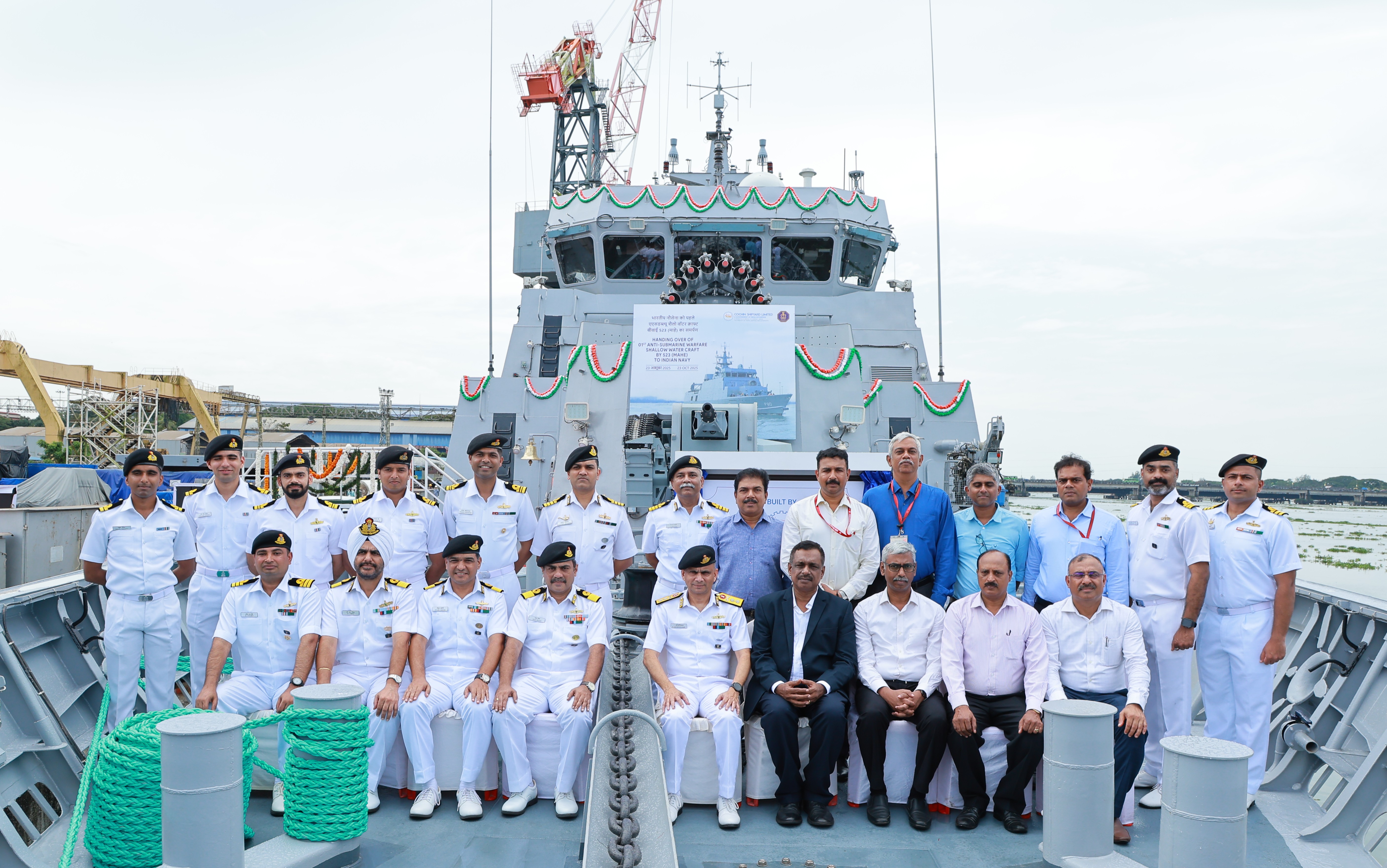
- 27 Oct 2025
In News:
The Indian Navy has recently received ‘Mahe’, the first of eight Anti-Submarine Warfare Shallow Water Crafts (ASW SWCs), built indigenously by Cochin Shipyard Limited (CSL), Kochi. The induction marks a major step towards bolstering India’s littoral (coastal) defence capabilities and advancing the vision of Aatmanirbhar Bharat in naval shipbuilding.
About Mahe – ASW Shallow Water Craft
- Builder: Cochin Shipyard Limited (CSL), Kochi
- Delivered to: Indian Navy
- Named after:Mahe, a historic port town in the Union Territory of Puducherry, symbolizing India’s rich maritime heritage.
- Classification: Designed and constructed under the rules of Det Norske Veritas (DNV) classification society.
- Displacement: Around 1,100 tons
- Length: Approximately 78 metres
- Indigenous Content: Over 80%, showcasing India’s growing self-reliance in naval design and shipbuilding.
Design and Features
- Advanced Warfare Capabilities
- Equipped with torpedoes and multi-functional anti-submarine rockets.
- Integrated radar and sonar systems for precise detection and engagement of underwater threats.
- Designed for Anti-Submarine Warfare (ASW) operations in shallow coastal waters.
- Operational Flexibility
- Capable of underwater surveillance, mine-laying operations, and Low Intensity Maritime Operations (LIMO).
- Suitable for coastal defence, escort missions, and search and rescue operations in littoral zones.
- Sustainability and Efficiency
- Compact yet powerful platform for quick maneuverability in shallow regions.
- Built using modern shipbuilding technologies, ensuring durability, stealth, and operational efficiency.
Strategic Significance
- Enhancing ASW Capabilities:The induction of Mahe will significantly strengthen India’s anti-submarine warfare capacity in coastal waters, enabling faster response to sub-surface threats from enemy submarines or unmanned underwater vehicles.
- Maritime Security:Strengthens surveillance and security along India’s vast 7,500 km coastline, ensuring greater control over sea lines of communication (SLOCs) and exclusive economic zones (EEZs).
- Boost to Aatmanirbhar Bharat:The vessel, with more than 80% indigenous components, reflects the Make in India initiative’s success in the defence manufacturing sector. It reinforces India’s ambition to be a net security provider in the Indian Ocean Region (IOR).
- Support to Blue Water Aspirations:While designed for shallow waters, the ASW SWC fleet complements India’s blue-water naval capability by securing coastal zones — the first line of maritime defence.
About Cochin Shipyard Limited (CSL)
- Established: 1972
- Location: Kochi, Kerala
- Ownership: Under the Ministry of Ports, Shipping, and Waterways
- CSL has emerged as one of India’s premier shipbuilding and repair facilities, with successful projects like:
- INS Vikrant (India’s first indigenous aircraft carrier)
- ASW Shallow Water Craft series
Project Arunank

- 27 Oct 2025
In News:
Project Arunank of the Border Roads Organisation (BRO) recently celebrated its 18th Raising Day at Naharlagun, marking over 17 years of sustained infrastructure development in Arunachal Pradesh’s remote and strategic regions.
About Project Arunank
- Launched: 2008
- Implementing Agency: Border Roads Organisation (BRO), under the Ministry of Defence.
- Name Origin: Derived from the state’s name — Arunachal Pradesh.
- Objective:To enhance road connectivity in remote valleys and forward areas of Arunachal Pradesh, supporting both civilian access and the operational needs of the Indian Armed Forces.
Key Achievements
- Strategic Road Development
- Constructed and maintained over 696 km of roads and 1.18 km of major bridges across the state.
- Completed the 278 km Hapoli–Sarli–Huri Road, which was blacktopped for the first time since Independence, connecting the remote KurungKumey district — a major milestone in post-Independence connectivity.
- Technological Innovations
- Adopted modern and sustainable construction technologies, including:
- Steel Slag and GGBFS Concrete for durability.
- Cut-and-Cover Tunnels and Geo Cells for terrain stability.
- Plastic Sheets, Gabion Walls, and Slope Stabilisation Systems to prevent landslides and improve road resilience.
- These innovations promote eco-friendly and climate-resilient infrastructure in fragile Himalayan terrain.
- Adopted modern and sustainable construction technologies, including:
- Green and Welfare Initiatives
- Under the ‘Ek Ped MaaKe Naam’ campaign, over 23,850 trees were planted across Arunachal Pradesh to promote environmental conservation.
- Welfare measures for Casual Paid Labourers (CPLs) included better shelters, protective gear, and regular health camps—acknowledging their crucial contribution to BRO’s success.
- Community and Awareness Programs: Conducted a motorable expedition along the Naharlagun–Joram Top–Sangram–Ziro–Naharlagun route to promote road safety and connectivity awareness among locals and officials.
Future Plans
- Focus on road widening, construction of new bridges and tunnels, and improving all-weather, high-altitude connectivity for both civilian and defence use.
- Integration of digital monitoring tools, geotextiles, and eco-friendly materials to enhance infrastructure sustainability while reducing maintenance costs.
About the Border Roads Organisation (BRO)
- Established: 7 May 1960
- Parent Ministry: Ministry of Defence
- Mandate:To construct and maintain road networks in border areas of India and in friendly neighbouring countries to ensure defence preparedness and socio-economic development.
- The BRO has been pivotal in strategic connectivity across northern and northeastern India, including projects like Arunank (Arunachal Pradesh), Vartak (Assam & Arunachal), Himank (Ladakh), and Sampark (Jammu & Kashmir).
Duty-Free Tariff Preference (DFTP) Scheme

- 27 Oct 2025
In News:
The World Trade Organization (WTO) has recently credited India’s Duty-Free Tariff Preference (DFTP) Scheme for significantly boosting exports from Least Developed Countries (LDCs). India has surpassed China and the European Union (EU) in providing duty-free market access to the world’s poorest economies, strengthening South-South trade cooperation.
About the DFTP Scheme
- Launched: 2008
- Implementing Agency: Ministry of Commerce and Industry, Government of India
- Framework: In line with the WTO’s Hong Kong Ministerial Declaration (2005), which encouraged developed and developing members to provide duty-free and quota-free (DFQF) market access to LDCs.
- Objective:To promote trade-led economic growth of LDCs by granting preferential tariff concessions on their exports to India.
Key Features
- Comprehensive Duty-Free Access
- Provides duty-free or preferential tariff access to a large range of products exported from LDCs to India.
- Nearly 98% of India’s tariff lines are now covered under the scheme.
- Eligible Countries
- Open to all LDCs recognized by the United Nations.
- Currently, around 48 countries in Africa, Asia, and the Pacific benefit from it.
- Product Coverage
- Agricultural goods: Fruits, vegetables, grains, spices, coffee, and tea.
- Textiles & garments: Clothing, fabrics, and handwoven textiles.
- Leather & handicrafts: Bags, jewelry, and artisan products.
- Minerals & metals: Including raw materials like gold and diamonds.
- Processed foods and beverages: Key export commodities for African and Asian LDCs.
- Trade Facilitation: Simplified customs procedures and transparent rules of origin help integrate LDC exporters into global value chains (GVCs).
Recent WTO Recognition
According to the WTO, India now provides one of the widest duty-free market access schemes among developing economies—outperforming China and the EU in terms of product and tariff-line coverage.
This initiative has:
- Enhanced export diversification in LDCs.
- Strengthened India’s trade and diplomatic engagement with Africa and other developing regions.
- Supported inclusive global trade, aligning with the UN Sustainable Development Goals (SDG 17: Partnerships for the Goals).
Significance
- For LDCs: Encourages industrial growth, employment, and export competitiveness.
- For India: Reinforces its image as a responsible development partner and a leader in South-South cooperation.
- For Global Trade: Promotes equity by integrating vulnerable economies into mainstream trade flows.
Laser Interferometer Space Antenna (LISA) Mission

- 26 Oct 2025
In News:
The Laser Interferometer Space Antenna (LISA) is a joint mission of the European Space Agency (ESA) and NASA, scheduled for launch in the mid-2030s. It represents the first-ever space-based observatory designed to detect gravitational waves, offering an unprecedented opportunity to study some of the most energetic and mysterious phenomena in the universe.
Mission Objective
LISA aims to:
- Directly detect and study gravitational waves—minute ripples in spacetime caused by massive cosmic events such as black hole mergers, neutron star collisions, and possibly phenomena from the early universe.
- Explore the fundamental nature of gravity and black holes, providing insights into Einstein’s General Theory of Relativity.
- Investigate cosmic evolution by probing how galaxies and black holes have grown and interacted over time.
- Contribute to understanding the universe’s expansion rate, complementing other cosmological observations.
Design and Configuration
- The LISA system will consist of three identical spacecraft, positioned in an equilateral triangular formation.
- Each side of this triangle will span approximately 2.5 million kilometres, and the formation will trail Earth in its orbit around the Sun at a distance of about 50 million kilometres.
- This configuration will enable ultra-precise measurements of tiny variations in distance between the spacecraft caused by passing gravitational waves.
Scientific Principle
- Each spacecraft will contain two free-floating test masses (gold-platinum cubes) that serve as nearly perfect reference points in space.
- Laser beams exchanged between the spacecraft will measure the relative distance between these cubes with extraordinary accuracy using laser interferometry.
- As gravitational waves pass through, they will slightly alter the distances between the spacecraft—by as little as a fraction of the width of an atom—allowing LISA to record and analyse these distortions.
Technological Significance
- LISA extends the capabilities of ground-based detectors like LIGO and VIRGO, which can only detect higher-frequency gravitational waves.
- By operating in space, LISA can sense low-frequency gravitational waves generated by supermassive black hole binaries and other massive cosmic systems, which are beyond the reach of terrestrial observatories.
- The mission will also test cutting-edge technologies in laser stability, drag-free navigation, and precision metrology.
Scientific Impact
- Enhance understanding of black hole dynamics, galaxy formation, and cosmic structure evolution.
- Provide new data on extreme astrophysical events and test the limits of General Relativity.
- Contribute to multi-messenger astronomy, linking gravitational wave observations with electromagnetic and particle signals from the same sources.
- Offer valuable inputs for cosmology, including studies of dark matter, dark energy, and the early universe.
Japan–India Maritime Exercise (JAIMEX) 2025
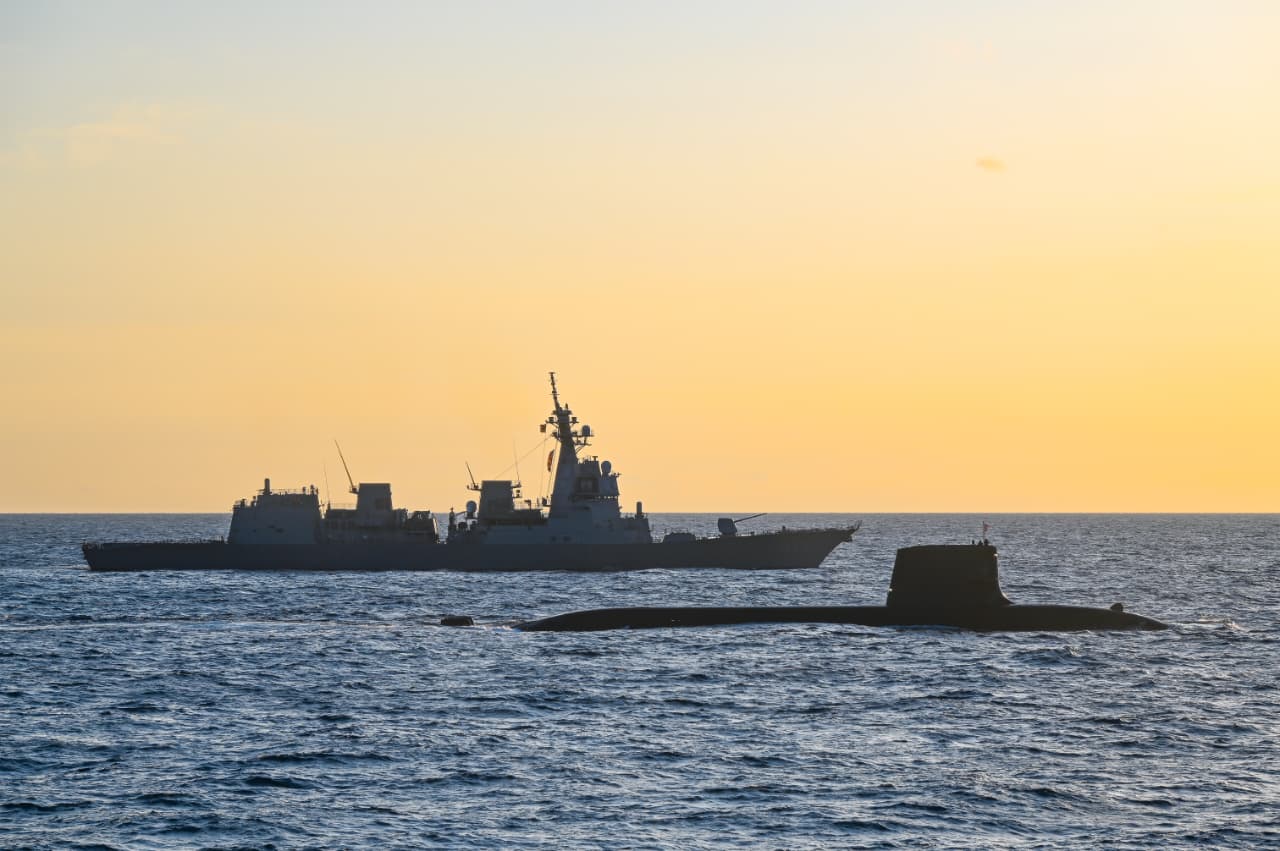
- 26 Oct 2025
In News:
The Indian Naval Ship (INS) Sahyadri, an indigenously built Shivalik-class guided missile stealth frigate, participated in the Japan–India Maritime Exercise (JAIMEX-25).
About JAIMEX 2025
- Nature of Exercise: JAIMEX is a bilateral maritime exercise conducted between the Indian Navy (IN) and the Japan Maritime Self-Defense Force (JMSDF).
- Objective: It aims to enhance operational interoperability, mutual understanding, and maritime cooperation, reflecting the robust ‘Special Strategic and Global Partnership’ established between India and Japan in 2014.
- Theme: Upholding a free, open, and inclusive Indo-Pacific based on the principles of rules-based order, freedom of navigation, and shared maritime security.
Exercise Structure
JAIMEX 2025 was conducted in two distinct phases — the Sea Phase and the Harbour Phase, each designed to deepen operational synergy and people-to-people interaction between the two navies.
1. Sea Phase:
- Participating vessels included INS Sahyadri, and JMSDF ships Asahi, Oumi, and Submarine Jinryu.
- The drills focused on:
- Advanced Anti-Submarine Warfare (ASW)andmissile defence operations.
- Flying operationsandunderway replenishmentexercises.
- Maritime domain awareness and communication interoperability.
- These activities aimed to enhance tactical coordination, build mutual trust, and improve joint operational readiness between the two navies.
2. Harbour Phase (Yokosuka, Japan)
- Featured professional and cultural exchanges, including:
- Cross-deck visits,
- Collaborative operational planning,
- Sharing of best practices, and
- A combined Yoga session to promote cultural camaraderie.
- The harbour engagement served as a part of INS Sahyadri’s Long Range Deployment (LRD) to the Indo-Pacific, reflecting India’s increasing maritime outreach and strategic presence in the region.
Significance of JAIMEX
- Strengthens Maritime Cooperation: Enhances India–Japan naval interoperability, crucial for coordinated responses to maritime security challenges such as piracy, illegal fishing, and humanitarian assistance.
- Supports the Indo-Pacific Vision: Reinforces the shared commitment to a rules-based maritime order and an inclusive Indo-Pacific, aligning with initiatives like QUAD and Indo-Pacific Oceans Initiative (IPOI).
- Boosts Defence Diplomacy: Builds mutual trust and operational understanding through regular bilateral and multilateral engagements.
- Showcases India’s Indigenous Naval Capability: INS Sahyadri’s participation underscores India’s progress under ‘Aatmanirbhar Bharat’ and its ability to deploy advanced indigenous platforms for extended missions.
INS Sahyadri: Key Facts
|
Feature |
Description |
|
Class & Type |
Shivalik-class Guided Missile Stealth Frigate |
|
Commissioned |
2012 |
|
Built by |
Mazagon Dock Shipbuilders Ltd, Mumbai |
|
Missile Systems |
Barak-1, Shtil-1 (3S90M) SAMs, BrahMos anti-ship missiles |
|
Other Armaments |
Anti-submarine rocket launchers and torpedoes |
|
Capabilities |
Multi-role stealth platform for surface, anti-air, and anti-submarine warfare |
|
Previous Deployments |
Multiple bilateral and multilateral exercises across the Indo-Pacific |
India–Japan Defence and Strategic Cooperation
The India–Japan defence partnership has become a key component of their broader Special Strategic and Global Partnership (2014), rooted in shared democratic values and converging strategic interests in the Indo-Pacific.
Major Bilateral and Multilateral Defence Engagements:
- Malabar Exercise – Multilateral naval exercise (India, Japan, USA, Australia).
- Dharma Guardian – Bilateral Army exercise.
- Veer Guardian – Bilateral Air Force exercise.
- 2+2 Ministerial Dialogue – Institutional mechanism for strategic coordination.
These engagements collectively strengthen maritime domain awareness, supply chain resilience, and defence technology cooperation between the two nations.
Strategic Context
- The JAIMEX exercise aligns with India’s Act East Policy and Japan’s Free and Open Indo-Pacific (FOIP) vision.
- It demonstrates a collective response to maritime challenges such as increasing militarization, territorial disputes, and climate-driven risks in the Indo-Pacific.
- The partnership complements India’s engagement in regional groupings such as the QUAD, ASEAN-led mechanisms, and IORA (Indian Ocean Rim Association).
UN’s Early Warnings for All (EW4All) Initiative
- 26 Oct 2025
In News:
The World Meteorological Organization (WMO), at its Extraordinary Congress in Geneva (October 2025), rallied its 193 Member States to commit to achieving universal early warning coverage by 2027 under the United Nations’ Early Warnings for All (EW4All) initiative. This global “Call to Action” seeks to ensure that no one dies for lack of warning in the face of intensifying weather, water, and climate-related disasters.
About Early Warning Systems (EWS)
An Early Warning System (EWS) is an integrated mechanism that combines:
- Hazard monitoring and forecasting,
- Disaster risk assessment,
- Communication of alerts, and
- Preparednessmeasures,to enable timely action that saves lives, livelihoods, and assets.
According to the WMO, a 24-hour advance warning can reduce disaster-related damage by up to 30%, underscoring the importance of predictive and community-based alert systems.
UN’s Early Warnings for All (EW4All) Initiative
- Launched: 2022 by UN Secretary-General António Guterres.
- Lead Agencies:
- World Meteorological Organization (WMO)
- UN Office for Disaster Risk Reduction (UNDRR)
- International Telecommunication Union (ITU)
- International Federation of Red Cross and Red Crescent Societies (IFRC)
- Goal: To ensure that every person on Earth is protected by life-saving early warnings for hazards such as cyclones, floods, droughts, and heatwaves by 2027.
- Philosophy: “Every dollar invested in early warnings saves up to fifteen dollars in avoided losses.”
The Early Warning “Value Chain”
The EW4All initiative emphasizes strengthening each link of the early warning value chain:
- Monitoring and Forecasting: Building accurate, real-time climate and hazard observation networks.
- Risk Assessment: Identifying vulnerable populations and areas through integrated risk mapping.
- Alert Dissemination: Delivering clear, trusted, and accessible alerts using multi-platform communication (digital, radio, community-based).
- Preparedness and Response: Ensuring communities understand warnings and act effectively.
Global Need and Rationale
- Over the past 50 years, climate, weather, and water-related disasters have claimed over 2 million lives, with 90% of deaths occurring in developing nations.
- Since 1970, economic losses from such disasters have exceeded US$4 trillion globally.
- Countries lacking multi-hazard early warning systems experience six times higher mortality and four times greater impacts than those equipped with such systems.
Current Global Status
- As of 2024, 108 countries have some capacity for multi-hazard early warning systems, up from 52 countries in 2014.
- However, Least Developed Countries (LDCs), Small Island Developing States (SIDS), and conflict-affected regions remain severely underprotected.
- A WMO assessment across 62 countries revealed:
- 50% have only basic hazard monitoring capacity.
- 16% have less than basic capacity.
- Technical barriers include:
- Weak observation networks,
- Limited data sharing,
- Inadequate financing, and
- Lack of community trust and awareness.
Progress Under EW4All
The WMO’s 2025 Congress marked a turning point as 193 nations endorsed a Call to Action for universal coverage by 2027.Key outcomes include:
- Country-led assessments and roadmaps for capacity building.
- Integration of EW4All targets with the Sendai Framework for Disaster Risk Reduction (2015–2030).
- Strengthened regional cooperation for hazard data sharing and early action.
- New partnerships between national meteorological services, private sector innovators, and humanitarian agencies.
Call to Action: Priority Measures
To meet the 2027 universal coverage target, WMO and the UN have urged governments to:
- Integrate EWS into national climate and disaster management policies.
- Secure long-term and predictable financing beyond short-term project aid.
- Empower National Meteorological and Hydrological Services (NMHSs) with clear mandates and authority.
- Ensure inclusivity by combining scientific data with indigenous knowledge to reach vulnerable and remote communities.
- Leverage innovation and AI to enhance the precision and speed of predictions.
- Promote open data sharing and capacity-building to close technological gaps.
Regional Implications for India
India, as one of the most climate-vulnerable nations facing monsoons, cyclones, and heatwaves, stands to benefit immensely from EW4All.
- India already operates a robust multi-hazard early warning system led by the India Meteorological Department (IMD), NDMA, and INCOIS.
- Integration under EW4All could help upgrade radar networks, enhance last-mile connectivity, and strengthen community-based disaster response.
- The initiative aligns with India’s National Disaster Management Plan (NDMP) and Sendai Framework priorities, reinforcing the “Zero Casualty” approach in disaster management.
Deendayal Antyodaya Yojana – National Rural Livelihoods Mission (DAY-NRLM)
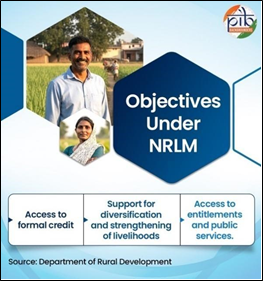
- 26 Oct 2025
In News:
The Deendayal Antyodaya Yojana – National Rural Livelihoods Mission (DAY-NRLM), implemented by the Ministry of Rural Development (MoRD), stands as one of the world’s largest poverty alleviation and women-centric livelihood programmes. It has successfully mobilized millions of rural households into community institutions and significantly advanced the agenda of women’s empowerment, financial inclusion, and sustainable rural livelihoods.
Genesis and Evolution
- Launch: Initially introduced in 2010 as the National Rural Livelihoods Mission (NRLM) by restructuring the Swarnajayanti Gram Swarozgar Yojana (SGSY).
- Renaming: In 2016, it was renamed Deendayal Antyodaya Yojana – National Rural Livelihoods Mission (DAY-NRLM) to honour the philosophy of Antyodaya—uplifting the poorest of the poor.
- Funding Pattern: It is a Centrally Sponsored Scheme, jointly funded by the Central and State Governments.
- Objective: To reduce rural poverty by enabling poor households to access self-employment and skilled wage employment opportunities, ensuring diversified and sustainable livelihoods.
Core Objectives
The mission seeks to empower rural communities by investing in four key pillars:
- Social Mobilisation& Institution Building: Organizing rural poor, especially women, into Self-Help Groups (SHGs) and federations for mutual support and long-term empowerment.
- Financial Inclusion: Ensuring access to formal credit and financial services through community-based intermediaries like Bank Sakhis and Banking Correspondent Sakhis.
- Sustainable Livelihoods: Promoting both farm and non-farm livelihoods including agriculture, livestock, handicrafts, and microenterprises.
- Social Development & Convergence: Addressing gender, nutrition, health, sanitation, and social justice through convergence with other government programmes.
Women-Centric Model
Women are at the heart of DAY-NRLM. The mission focuses on collectivizing women into SHGs, enhancing their entrepreneurial capacity, and connecting them to markets, technology, and credit networks.
- Scale: As of June 2025, the mission has mobilized 10.05 crore rural households into 90.9 lakh SHGs across 28 States and 6 UTs.
- Financial Empowerment: Over ?11 lakh crore has been disbursed to SHGs through formal banking systems, backed by collateral-free loans and interest subvention, with a 98% repayment rate — a testament to the model’s sustainability.
- Community Cadres: SHG women are trained as Community Resource Persons (CRPs) such as
- Krishi Sakhis – agricultural extension support,
- PashuSakhis – animal health and livestock management,
- Bank Sakhis – financial inclusion facilitators,
- BimaSakhis – insurance and welfare access agents.
- Over 3.5 lakh Krishi and PashuSakhis and 47,952 Bank Sakhis have been deployed to deliver last-mile services.
Entrepreneurship and Microenterprise Development
To promote local entrepreneurship, the Mission runs the Start-up Village Entrepreneurship Programme (SVEP), supporting 3.74 lakh rural enterprises across 282 blocks.
These enterprises cover diverse sectors like handicrafts, food processing, agro-based units, and rural services — encouraging self-reliance and community-led growth.
A remarkable example is of Heinidamanki Kanai from Meghalaya, who turned her SHG training into a successful handmade soap business with bank support under NRLM — a model of grassroots entrepreneurship.
Skill Development and Employment Initiatives
DAY-NRLM implements two major Centrally Sponsored Schemes to boost rural employability and entrepreneurship:
- DeenDayal Upadhyaya Grameen Kaushalya Yojana (DDU-GKY)
- Provides placement-linked skill training for rural youth aged 15–35 years.
- 17.50 lakh trained and 11.48 lakh placed as of June 2025.
- Top-performing states: Uttar Pradesh, Odisha, and Andhra Pradesh.
- Rural Self Employment Training Institutes (RSETIs)
- Bank-sponsored centres for youth aged 18–50 years, providing entrepreneurship training and promoting both self- and wage-employment.
- 56.69 lakh candidates trained,40.99 lakh settled in gainful employment.
- Leading states: Uttar Pradesh, Rajasthan, Madhya Pradesh, and Karnataka.
Achievements and Outcomes
High-Performing States:
- Bihar, Uttar Pradesh, Andhra Pradesh (SHG formation and financial inclusion).
- Maharashtra, Uttar Pradesh, Andhra Pradesh (agro-ecological initiatives under MahilaKisanprogrammes).
- Assam, Kerala, and West Bengal (microenterprise promotion under SVEP).
Capacity Building and Marketing Initiatives
To strengthen entrepreneurship and market readiness:
- SARAS Aajeevika Melas (National & State-level fairs) are organized annually to showcase SHG products and build marketing skills.
- The National Institute of Rural Development and Panchayati Raj (NIRD&PR) conducts Training of Trainers (ToT)programmes on marketing, having trained over 44 batches in the past three years.
- These initiatives bridge rural producers with urban consumers and e-commerce platforms, enhancing rural incomes.
Impact on Rural Transformation
- Economic Empowerment: Enhanced access to credit and markets has diversified income sources for millions of women.
- Social Transformation: SHG networks now play a role in local governance, social awareness, and addressing gender issues such as domestic violence, health, and education.
- Financial Inclusion: The presence of SHG-led financial intermediaries ensures doorstep access to savings, credit, and insurance.
- Sustainable Livelihoods:Agro-ecological practices, livestock management, and non-farm enterprises are reducing ecological stress and enhancing resilience.
Challenges Ahead
- Uneven implementation across states and regions.
- Need for stronger digital monitoring and credit tracking.
- Enhancing market linkages for SHG products.
- Integrating livelihood programmes with emerging green and climate-resilient models.
Conclusion
The Deendayal Antyodaya Yojana – National Rural Livelihoods Mission (DAY-NRLM) exemplifies inclusive, women-led rural development. By mobilizing millions of women into strong community institutions, linking them with finance and skills, and promoting sustainable livelihoods, it has transformed the socio-economic fabric of rural India.
As a global model of community-driven development, the Mission continues to advance India’s vision of “Atmanirbhar Bharat” by empowering its most vulnerable citizens to become entrepreneurs, leaders, and change-makers in their own right.
Forest Rights Act (FRA), 2006
- 26 Oct 2025
In News:
The Central Government has strongly defended the Forest Rights Act (FRA), 2006 before the Supreme Court, asserting that the law plays a transformative role in restoring the dignity, livelihoods, and cultural identity of India’s forest-dependent communities. The Ministry of Tribal Affairs (MoTA), in its affidavit, has rebutted allegations that the FRA or its 2012 Rules conflict with existing wildlife and forest protection laws.
Background
- The Forest Rights Act was enacted in 2006 to correct historical injustices faced by Scheduled Tribes (STs) and Other Traditional Forest Dwellers (OTFDs), whose rights over forest lands were never formally recorded.
- The Act’s constitutional validity was challenged in 2008 by the NGO Wildlife First, which sought eviction of people whose claims were rejected under the Act.
- In February 2019, the Supreme Court directed states to evict rejected claimants, triggering widespread protests from tribal groups and civil society.
- The MoTA intervened, pointing to procedural lapses in claim verification, leading the Court to stay the eviction order and call for fresh data and review of rejected claims.
Government’s Stand Before the Supreme Court
- The MoTA has upheld both the legal validity and spirit of the Act, clarifying that FRA is not merely about land ownership but about restoring dignity, livelihoods, and cultural identity.
- The Ministry has rebutted claims that FRA undermines wildlife or forest conservation, arguing that the coexistence model has long been practiced by indigenous groups such as the Baiga and Santhal communities.
- The Centre has emphasized that the absence of a sunset clause in the Act is intentional to ensure equity and prevent arbitrary timelines for claim submissions.
- It also highlighted that the Gram Sabha is the final authority in determining forest rights, as reaffirmed by the 2013 Niyamgiri judgment, which upheld the community and cultural rights of the DongriaKondh tribe in Odisha.
Key Provisions of the FRA, 2006
The Act recognises two broad categories of rights:
- Individual Forest Rights (IFR): Ownership and habitation rights for forest land cultivated or occupied by individuals or families.
- Community Forest Rights (CFR): Rights of communities over forest resources, including grazing, fishing, and collection of Minor Forest Produce (MFP) like bamboo, tendu leaves, honey, lac, and wax.
Empowerment of Gram Sabha:
- To identify, verify, and recommend claims for forest rights.
- To manage and protect community forest resources sustainably.
- To regulate access to and trade of MFP, ensuring benefits reach local communities directly.
Government Initiatives Supporting FRA Implementation
- The Minimum Support Price (MSP) scheme for Minor Forest Produce ensures fair value for tribal collectors.
- The Tribal Cooperative Marketing Development Federation (TRIFED) and Van DhanKendras assist tribal communities in value addition and marketing of forest products.
- These mechanisms prevent the monopolisation of forest produce by contractors and enhance economic self-reliance among tribal communities.
Key Issues and Challenges
- Implementation Delays: Many claims remain pending due to administrative inefficiencies and lack of trained personnel at local levels.
- Conflict with Conservation Laws: Overlaps with the Wildlife Protection Act (1972) and Forest Conservation Act (1980) often lead to confusion and litigation.
- Commercialization Risks: Concerns exist over unsupervised extraction of MFP if monitoring is weak.
- Data and Monitoring Gaps: Lack of digitized and transparent claim records has led to disputes and wrongful rejections.
- Integration with Conservation Goals: Balancing livelihood rights with ecological preservation remains a challenge.
Significance of FRA
- Empowers tribal and forest communities by recognizing their traditional rights and promoting participatory forest governance.
- Strengthens decentralized decision-making through Gram Sabhas.
- Promotes poverty reduction and sustainable livelihoods.
- Reinforces constitutional principles, notably:
- Article 21 – Right to Life with dignity.
- Article 46 – Promotion of educational and economic interests of Scheduled Tribes.
- Advances the philosophy of “Conservation through Coexistence”, integrating ecological and social sustainability.
FAO’s Global Forest Resources Assessment 2025
- 25 Oct 2025
In News:
India has moved up to the 9th position globally in total forest area, according to the Global Forest Resources Assessment (GFRA) 2025, released by the Food and Agriculture Organization (FAO) in Bali. The report reflects India’s steady progress in forest conservation, afforestation, and sustainable land management.
About the Global Forest Resources Assessment (GFRA)
- Published by: Food and Agriculture Organization (FAO) of the United Nations
- Frequency: Every five years
- Objective: To provide comprehensive data on the world’s forests, covering their extent, condition, management, and use.
- 2025 Theme: Strengthening forest resilience for sustainable development.
Global Findings (GFRA 2025)
- Total global forest cover:4.14 billion hectares, accounting for 32% of the Earth’s land area, equivalent to 0.5 hectares per person.
- Top 10 countries by forest area:Russia, Brazil, Canada, USA, China, Democratic Republic of the Congo, Australia, Indonesia, India, and Peru.
- Deforestation trends:Global deforestation has slowed in the past decade, but the world continues to lose about 10.9 million hectares of forest annually (2015–2025)—a rate still considered alarming.
India’s Forest Status and Achievements
- Total forest cover:72.7 million hectares, accounting for about 2% of global forest area.
- Global ranking:
- 9th in total forest area (up from 10th position in the previous assessment).
- 3rd in annual forest area gain, after China and Russia, highlighting successful afforestation initiatives.
- Agroforestry Leadership:India and Indonesia together contribute over 70% of the world’s agroforestry areas, reflecting strong integration of trees in farmlands.
Significance of India’s Achievement
- Climate Change Mitigation:Expanding forest area enhances carbon sequestration, supporting India’s Nationally Determined Contributions (NDCs) under the Paris Agreement.
- Biodiversity Conservation:Forests serve as habitats for India’s rich flora and fauna, aiding ecosystem balance and wildlife protection.
- Livelihood and Socioeconomic Support:Around 275 million people in India depend on forests for subsistence, employment, and traditional livelihoods.
- Land and Water Security:Forests play a crucial role in soil conservation, groundwater recharge, and regulating hydrological cycles, particularly in fragile ecosystems.
- Global Commitments:Aligns with India’s obligations under the UN Decade on Ecosystem Restoration (2021–2030) and Sustainable Development Goal 15 (Life on Land).
Government Initiatives Driving Forest Growth
- Ek Ped MaaKe Naam Campaign:A nationwide movement encouraging citizens to plant trees in honor of their mothers, fostering personal and cultural ties to environmental conservation.
- National Mission for a Green India (GIM):A key component of the National Action Plan on Climate Change (NAPCC), targeting increased forest cover and improved forest quality to enhance carbon sinks.
- Compensatory Afforestation Fund Act, 2016 (CAMPA):Mandates compensatory levies for diversion of forest land for non-forest purposes and channels these funds into afforestation and eco-restoration activities.
- Eco-Sensitive Zones (ESZs):Buffer zones around Protected Areas, National Parks, and Wildlife Sanctuaries to limit harmful anthropogenic activities and protect ecological integrity.
- Joint Forest Management (JFM):Promotes community participation in forest conservation and regeneration by forming partnerships between local communities and forest departments.
OpenAI Launches AI Browser ‘Atlas’
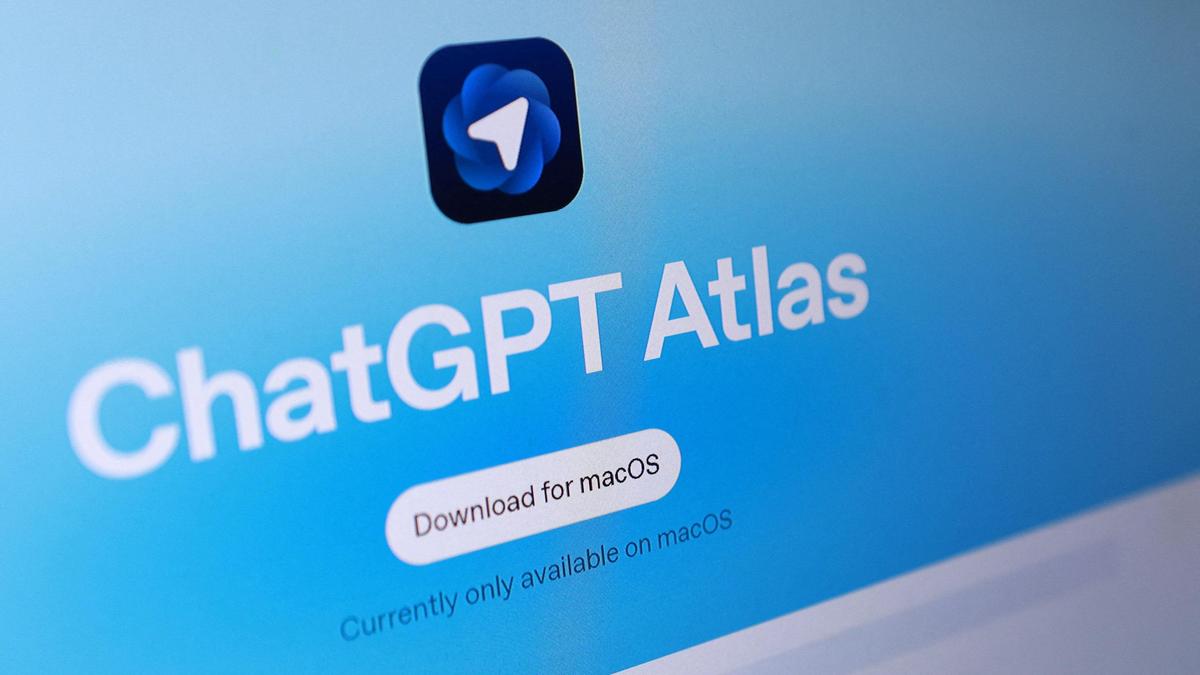
- 25 Oct 2025
In News:
OpenAI has unveiled ‘Atlas’, its new AI-powered web browser built around ChatGPT, marking a significant step in the evolving generative AI competition and posing a direct challenge to Google Chrome’s dominance. The move comes soon after Perplexity AI introduced its own AI-integrated browser, Comet, underscoring a major transformation in how users interact with the internet.
About Atlas
- Developer:OpenAI
- Nature: AI-integrated web browser built around ChatGPT
- Availability: Currently in preview mode for ChatGPT Plus, Pro, and Business users.
- Design: Atlas removes the traditional address bar, replacing it with a conversational AI interface.
- Key Feature – Agent Mode:
- Enables the browser to autonomously perform searches, analyze sources, and synthesize information into concise summaries.
- Allows users to ask questions in natural language instead of typing web addresses or search keywords.
The browser seamlessly combines web navigation and AI interaction, positioning itself as the next step in AI-mediated online browsing.
Why AI Companies Are Building Browsers
- Control Over User Interface and Data:Browsers act as the gateway to most online activities—search, shopping, finance, entertainment, and social media. Controlling this entry point enables AI companies to own user intent, data, and engagement patterns.
- Monetization Potential:Like Google’s ad-based model, AI browsers can monetize user activity and queries by integrating AI-generated recommendations and sponsored content.
- Integrated AI Experience:AI browsers embed conversational AI tools directly into familiar interfaces, bridging the gap between chatbots and traditional search engines.
- Strategic Advantage:By embedding AI assistants within browsers, companies like OpenAI and Perplexity can reduce dependence on traditional search engines (notably Google), reshaping the competitive dynamics of the internet ecosystem.
How AI Browsers Are Transforming Search
- Traditional Search Model:Relies on keyword-based queries returning multiple hyperlinks for users to navigate.
- AI-Powered Search Model (Atlas & Comet):
- Delivers direct, synthesized, and contextually relevant answers instead of a list of links.
- Suggests related prompts for deeper exploration and learning.
- Adapts to individual user preferences, creating personalized information journeys.
This shift reduces dependence on link-based navigation, potentially disrupting traditional search traffic and publisher visibility models.
Broader Implications
- For Users:
- Offers faster, personalized, and conversational search experiences.
- Transforms passive browsing into interactive discovery.
- For the Digital Ecosystem:
- Challenges Google’s dominance in search and browser markets.
- Raises new debates on data privacy, content attribution, and information accuracy.
- Could reshape digital advertising, as traffic shifts from web pages to AI-generated summaries.
- For the AI Industry:
- Signals a new phase of competition between leading AI firms like OpenAI, Google, and Perplexity.
- Marks a trend towards AI-integrated ecosystems where chatbots, browsers, and search engines converge.
Sevilla Forum on Debt
- 25 Oct 2025
In News:
At the 16th United Nations Conference on Trade and Development (UNCTAD16) held in Geneva, the Sevilla Forum on Debt was officially launched — marking a major international step towards tackling the global sovereign debt crisis and promoting fair, sustainable debt solutions for developing economies.
About the Sevilla Forum on Debt
- Launched by: The Government of Spain, with support from UNCTAD and the UN Department of Economic and Social Affairs (UN DESA).
- Event: Announced at UNCTAD16 (October 2025) in Geneva.
- Part of: The Sevilla Platform for Action, building upon commitments made during the Fourth International Conference on Financing for Development (FfD4).
Aim and Objectives
- To create an open, inclusive, and action-oriented space for dialogue on sovereign debt reform.
- To connect all stakeholders—creditors, borrowers, multilateral institutions, civil society, and academia—towards developing innovative, fair, and sustainable debt management frameworks.
- To track and implement the debt-related initiatives agreed upon in the Sevilla Commitment, ensuring political pledges are translated into institutional mechanisms.
Context: The Global Debt Challenge
- Public debt worldwide reached $102 trillion in 2024, with developing countries accounting for $31 trillion of that burden.
- Developing nations paid around $921 billion in interest payments — surpassing their combined public spending on health and education.
- According to UNCTAD, over 3.4 billion people now live in countries where debt servicing outweighs essential social expenditure, underscoring the need for systemic reform of the global debt architecture.
Key Features of the Sevilla Forum
- Bridge Between Borrowers and Creditors:
- Acts as a neutral hub facilitating candid discussions between debtor nations and lenders.
- Encourages transparency, responsible borrowing, and fair lending practices.
- Catalyst for Global Action:
- Sustains political attention on debt-related agreements under the Sevilla Commitment.
- Supports coordinated multilateral action to ensure predictable and equitable debt governance.
- Knowledge Exchange Platform:Brings together policymakers, economists, and institutions to develop and share innovative debt management solutions, including debt-for-climate and debt-for-development swaps.
- Linked Initiatives by Spain:
- Debt Pause Clause Alliance: Promotes temporary suspension of debt payments for nations in crisis.
- Global Hub for Debt Swaps: Facilitates conversion of debt obligations into sustainable development investments.
Significance
- For Developing Countries: Offers a collective voice and platform to advocate for debt justice and reform of the global financial architecture.
- For Global Governance: Reinforces multilateralism through UN-led cooperation between creditors and borrowers.
- For Sustainable Development: Aligns with Agenda 2030 by linking debt relief with social and climate investments, particularly SDG 8 (Decent Work & Economic Growth) and SDG 17 (Partnerships for the Goals).
About UNCTAD
- Full Form: United Nations Conference on Trade and Development
- Established: 1964 by the UN General Assembly
- Headquarters: Geneva, Switzerland
- Mandate: To help developing countries leverage trade, finance, and technology for inclusive and sustainable development.
- Core Functions:
- Economic and trade analysis
- Consensus-building among nations
- Technical assistance for policy and institutional strengthening
- Major Reports:
- Trade and Development Report
- World Investment Report
- The Least Developed Countries Report
Intrusion Detection System
- 25 Oct 2025
In News:
The Northeast Frontier Railway (NFR) has successfully completed trial works of the Intrusion Detection System (IDS) across four key railway sections in Assam and West Bengal to prevent elephant fatalities due to train collisions.
About the Intrusion Detection System (IDS)
The Intrusion Detection System (IDS) is a cutting-edge initiative of the Northeast Frontier Railway (NFR) under the Ministry of Railways, aimed at protecting wildlife—particularly elephants—while ensuring smooth and efficient railway operations through forested and ecologically sensitive zones.
Objective
- To minimize elephant deaths caused by train collisions along railway lines intersecting elephant corridors.
- To balance operational efficiency with ecological conservation, aligning with India’s broader goals of sustainable infrastructure and biodiversity protection.
Technology and Working
- Technology Used: IDS employsadvanced optical fibre sensing technology installed parallel to railway tracks at a distance of around 10 metres.
- Functioning:
- The system detects vibrations generated by elephant movement near railway tracks.
- These vibrations are captured by sensor cables, which relay the data to a central control room.
- The system then generates real-time alerts for train drivers and control rooms, enabling them to take immediate preventive actions, such as slowing down or halting trains.
This real-time detection mechanism ensures timely intervention and minimizes human-wildlife conflict along railway routes.
Implementation by NFR
The Intrusion Detection System has been successfully implemented in the following pilot sections:
- Madarihat–Nagrakata section (Alipurduar Division)
- Habaipur–Lamsakhang–Patharkhola–Lumding section (Lumding Division)
- Kamakhya–Azara–Mirza section (Rangiya Division)
- Titabar–Mariani–Nakachari section (Tinsukia Division)
- Coverage:The pilot installations collectively span 64.03 km of elephant corridors and 141 km of block sections, marking a significant step in NFR’s ongoing wildlife protection efforts.
Significance
- Wildlife Protection: Helps prevent accidental elephant deaths, promoting coexistence between rail infrastructure and biodiversity.
- Operational Efficiency: Enhances train safety by providing advance alerts, reducing service disruptions.
- Technological Advancement: Demonstrates the integration of AI and fibre-optic sensing in railway operations.
- Environmental Responsibility: Reflects the government’s commitment to sustainable development goals (SDGs), particularly those related to life on land (SDG-15) and industry, innovation and infrastructure (SDG-9).
Hyunmoo-5 Missile
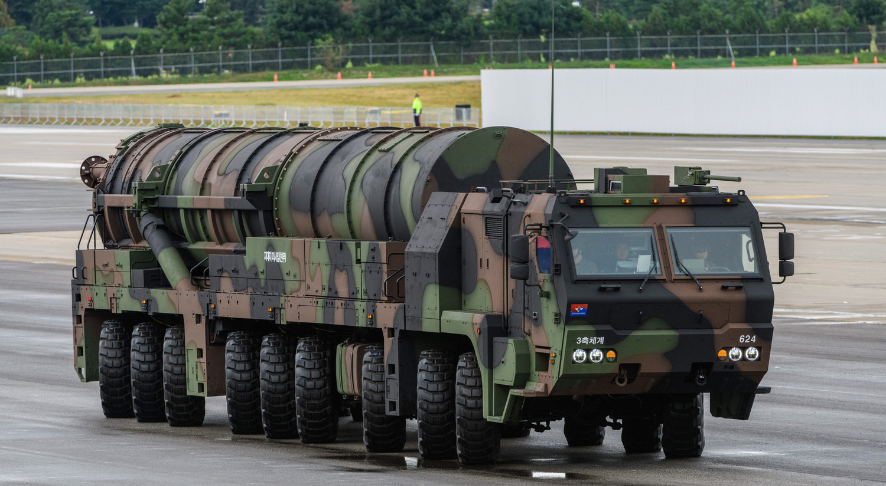
- 25 Oct 2025
In News:
South Korea is set to deploy its most powerful conventional ballistic missile, the Hyunmoo-5, by the end of this year. The move signifies a major step in Seoul’s efforts to enhance its deterrence capabilities amid escalating tensions with nuclear-armed North Korea.
Background and Development
- The Hyunmoo missile series forms the backbone of South Korea’s indigenous missile program, designed for strategic self-reliance under the constraints of the Nuclear Non-Proliferation Treaty (NPT).
- The concept of Hyunmoo-5 emerged after North Korea’s series of provocations in the early 2010s, including deadly border attacks. However, progress was limited by a bilateral missile agreement with the United States, which imposed payload and range restrictions to maintain stability on the Korean Peninsula.
- In 2017, following North Korea’s hydrogen bomb test, the Trump administration lifted these restrictions, enabling South Korea to pursue the development of high-payload, long-range conventional missiles such as Hyunmoo-5.
Technical Features of Hyunmoo-5
- Type: Ground-to-ground ballistic missile
- Weight: Approximately 36 tonnes
- Length: Around 16 metres
- Warhead Capacity: Can carry up to 8 tonnes of conventional explosive payload, including bunker-buster warheads capable of penetrating underground fortifications.
- Range: Estimated between 600 km and 5,000 km, depending on payload configuration.
- Purpose: Designed to neutralize hardened and deeply buried North Korean missile silos, command centres, and nuclear facilities.
Because South Korea does not possess nuclear weapons, the Hyunmoo-5 represents an attempt to achieve a “conventional balance of terror”—a deterrent parity based on precision and power rather than nuclear arms.
Ningol Chakouba Festival

- 24 Oct 2025
In News:
- Manipur recently celebrated the Ningol Chakouba Festival, a unique cultural tradition that reinforces the bond of love between married women and their paternal families.
- As part of the annual celebrations, the Department of Fisheries, Manipur organized the Annual Fish Fair-cum-Fish Crop Competition at Hapta Kangjeibung in Imphal, a day before the festival.
- The event aims to make fish available to the public at affordable prices, as fish curry is an essential part of the festive feast.
About Ningol Chakouba Festival
- Meaning:
- Ningol – married woman (sister or daughter)
- Chakouba – feast or communal meal
Thus, Ningol Chakouba translates to “feast of married women”.
- When Celebrated:Observed annually on the second day of Hiyangei month (October–November) of the Meitei lunar calendar.
- Main Ritual:Married women and their children visit their maternal homes for a grand feast and reunion with their brothers and parents.
- The sons of the family formally invite their married sisters about a week in advance.
- Women arrive in traditional attire, bringing fruits, vegetables, and local delicacies as offerings.
- After a shared meal, brothers present gifts to their sisters as a token of love and respect.
Cultural Essence and Significance
- The festival serves as a symbol of familial unity, respect for women, and continuity of social ties even after marriage.
- It highlights the importance of kinship in Manipuri society and reinforces the bond between daughters and their parental homes.
- Beyond Manipur, the festival is now celebrated by Manipuri communities across India and abroad, preserving cultural identity among the diaspora.
Historical Background
- Origin: Traced back to the reign of King Nongda Lairen Pakhangba, one of Manipur’s earliest rulers.
- At that time, Queen Laisana used to invite her brother Poireiton to the royal palace annually for a feast—originally called “Piba Chakouba” (Piba meaning brother/son).
- Transformation:
The tradition evolved during the reign of King Chandrakirti Singh (1831–1886), who invited his sisters instead of brothers due to logistical challenges in visiting them.- Since then, the celebration became known as “Ningol Chakouba”, centered on the affection between sisters and brothers.
Associated Event: Fish Fair-cum-Fish Crop Competition
- Organized by the Department of Fisheries, Government of Manipur, every year a day before Ningol Chakouba.
- Purpose:
- Ensure easy availability of fresh fish at affordable prices for the festival.
- Promote local fish farmers and aquaculture in the state.
- Venue: Hapta Kangjeibung, Imphal.
- Cultural Link: Fish dishes, especially fish curry, are a mandatory part of the feast, symbolizing prosperity and togetherness.
Storm Shadow Missile

- 24 Oct 2025
In News:
- Ukraine has reportedly carried out a long-range missile strike on a Russian chemical plant in Bryansk using UK-made Storm Shadow cruise missiles, marking one of the most significant deep-penetration attacks into Russian territory since the beginning of the war.
- The strike, which reportedly bypassed Moscow’s air defence systems, triggered retaliatory drone and missile attacks by Russia on Ukrainian cities, including Kyiv and Dnipropetrovsk, leading to civilian casualties and power outages.
- The episode underscores the escalation in the Ukraine–Russia conflict and highlights the growing strategic role of Western-supplied precision weaponry in modern warfare.
About the Storm Shadow Missile
- Type: Long-range, air-launched stealth cruise missile
- Developed by:United Kingdom and France (known as SCALP EG in France)
- Manufacturer:MBDA Systems
- Operational Since: Early 2000s
- Primary Role: Designed to destroy high-value, well-protected targets such as:
- Airbases
- Radar installations
- Command and control centres
- Port and fuel storage facilities
The missile’s combination of low observability, precision guidance, and deep-penetration warhead makes it one of the most advanced conventional strike weapons in the world.
Technical Specifications and Features
|
Feature |
Details |
|
Length |
~5.1 metres |
|
Wingspan |
~3 metres |
|
Weight |
~1,300 kg |
|
Warhead |
450 kg BROACH (Bomb Royal Ordnance Augmented Charge) — capable of penetrating hardened bunkers |
|
Propulsion |
Turbojet engine |
|
Speed |
Subsonic (~Mach 0.8) |
|
Range |
Over 550 km |
|
Guidance System |
Combination of GPS, Inertial Navigation (INS), Terrain-following radar, and infrared terminal seeker for pinpoint accuracy |
|
Flight Profile |
Low-altitude, terrain-hugging trajectory to evade radar detection |
Stealth and Precision Capabilities
- Designed for “fire and forget” operations, requiring minimal pilot input after launch.
- Terrain-following capability allows the missile to fly under radar coverage, reducing detection probability.
- The infrared imaging seeker enables precise terminal guidance even in adverse weather conditions.
- Known for its “deep-strike capability”, allowing it to destroy hardened and strategic installations from a safe stand-off distance.
Global Operators
The Storm Shadow/SCALP EG is in service with several countries, including:United Kingdom, France, Italy, Greece, Egypt, Saudi Arabia, Qatar, United Arab Emirates and India – where it is integrated with the Rafale fighter jets operated by the Indian Air Force (IAF), enhancing India’s precision-strike capabilities.
Central Asian Mammals Initiative
- 24 Oct 2025
In News:
- Representatives from several Central Asian countries — including India — have endorsed a six-year work programme (2021–2026) under the Central Asian Mammals Initiative (CAMI) to identify and conserve priority transboundary regions crucial for the survival of 17 iconic mammal species across the region.
- The meeting was hosted by Uzbekistan, under its presidency of the 14th Conference of the Parties (COP14) to the Convention on the Conservation of Migratory Species of Wild Animals (CMS).
About the Central Asian Mammals Initiative (CAMI)
- Launched: 2014, during CMS COP11 (Quito, Ecuador).
- Objective: To halt and reverse the population decline of migratory mammals across 14 Central Asian countries, through coordinated conservation action.
- Framework: Provides a regional platform for cooperation among Range States to address shared threats such as habitat loss, poaching, migration barriers, and climate change.
Key Features
- Species Covered (17 total):Argali sheep, Asiatic cheetah, Asiatic wild ass, Bukhara deer, Eurasian lynx, Gobi bear, Goitered gazelle, Kiang, Mongolian gazelle, Pallas’s cat, Persian leopard, Przewalski’s horse, Saiga antelope, Snow leopard, Urial, Wild camel, and Wild yak.
- Range States Involved:Bhutan, China, India, Kazakhstan, Kyrgyzstan, Mongolia, Nepal, Pakistan, Tajikistan, Turkmenistan, and Uzbekistan; with Iran and the Russian Federation participating online.
- Collaborating Organizations: Over 15 conservation institutions, including IUCN, government agencies, and NGOs, are supporting the work programme’s implementation.
- Current Programme of Work: Adopted for 2021–2026, focuses on ecosystem-based conservation, improved connectivity, and data-sharing between range states.
Recent Meeting Outcomes
- Countries reaffirmed commitment to joint action for migratory mammal conservation, emphasizing that species conservation transcends national borders.
- Success stories shared included recovery trends in Saiga antelope, Bukhara deer, and Persian leopard populations.
- Delegates discussed persistent challenges such as fragmented habitats, climate change impacts, illegal hunting, and limited cross-border coordination.
- Uzbekistan’s Minister of Ecology Aziz Abdukhakimov highlighted the importance of a unified regional approach, stating that “these species know no borders, and neither should our conservation efforts.”
About the Convention on the Conservation of Migratory Species (CMS)
- Also known as: Bonn Convention.
- Established: 1979 in Bonn, Germany.
- Under the Aegis of: United Nations Environment Programme (UNEP).
- Mandate: To promote the conservation and sustainable use of migratory animals and their habitats worldwide.
- Nature: The only global and UN-based intergovernmental treaty exclusively focused on migratory species conservation.
- Instruments:
- Legally binding Agreements
- Non-binding Memoranda of Understanding (MoUs)
- Decision-making Body:Conference of the Parties (COP).
- Next Milestone:CMS COP15 will be held in Brazil (March 23–29, 2026), where the CAMI resolution will be reviewed and updated.
Sabarimala Temple
- 24 Oct 2025
In News:
President Droupadi Murmu recently made a historic visit to the Sabarimala Sree Dharma Sastha Temple in Kerala, becoming the first woman head of state to offer prayers at the sacred hill shrine dedicated to Lord Ayyappa.
She is only the second President of India to visit the temple, after V. V. Giri in the 1970s. The visit holds deep symbolic and constitutional significance, coming in the backdrop of the 2018 Supreme Court judgment on women’s entry to the shrine.
About Sabarimala Temple
- Location: Situated in the Western Ghats, Pathanamthitta District, Kerala.
- Deity: Dedicated to Lord Ayyappa (also known as Dharma Shasta), the son of Lord Shiva and Mohini (the female incarnation of Vishnu).
- Altitude: Located atop a hill at 4,134 ft above sea level, surrounded by dense forests forming part of the Periyar Tiger Reserve.
- Access: Pilgrims undertake a challenging trek through forests and hills to reach the sanctum.
- Pilgrimage: Open to devotees mainly during the Mandalam-Makaravilakku season (November–January).
- Scale: Among the largest annual pilgrimages in the world, attracting 40–50 million devotees annually.
Rituals and Traditions
- Vratham (Austerity): Pilgrims observe a 41-day penance before visiting the shrine, maintaining celibacy, vegetarianism, and spiritual discipline.
- Inclusivity: Sabarimala is one of the few Hindu temples that welcomes devotees of all faiths.
- Religious Harmony: Near the temple lies Vavaru Nada, dedicated to Vavar, a Muslim saint believed to be Lord Ayyappa’s companion—symbolizing interfaith harmony.
Architecture
- The temple blends traditional Kerala and Dravidian architectural styles.
- Built on a 40-foot-high plateau, it features:
- A sanctum sanctorum (Sreekovil) with a copper-plated roof and four golden finials (kalasams).
- Two mandapams (halls) for rituals and gatherings.
- A flagstaff symbolizing devotion.
- The iconic 18 sacred steps (Pathinettam Padi), each representing a spiritual or philosophical stage to liberation.
Sabarimala Case: The Women’s Entry Controversy
- Traditional Practice: Women of menstruating age (10–50 years) were historically barred from entering the temple, as the deity is considered a Naishtika Brahmachari (eternal celibate).
- Judicial Intervention:
- In 2018, the Supreme Court of India (in Indian Young Lawyers Association v. State of Kerala) declared the ban unconstitutional, citing gender equality and freedom of religion under Articles14, 15, 25, and 26 of the Constitution.
- The verdict led to widespread protests across Kerala.
- The issue remains under review by a larger constitutional bench, reflecting the ongoing debate between faith and fundamental rights.
Skilling for AI Readiness (SOAR) Programme
- 23 Oct 2025
In News:
India has launched the Skilling for AI Readiness (SOAR) programme to prepare a new generation equipped with artificial intelligence (AI) skills, aligning education and skilling systems with the demands of a rapidly digitalising global economy. The initiative reflects the government’s commitment to fostering an AI-driven workforce, supporting the vision of “Viksit Bharat @2047.”
About the SOAR Programme
- The Skilling for AI Readiness (SOAR) programme was launched in July 2025 by the Ministry of Skill Development and Entrepreneurship (MSDE) as part of the Skill India Mission’s 10-year milestone.
- It aims to integrate artificial intelligence learning into school education and teacher training, enabling India’s youth to adapt to the future of work shaped by automation, data science, and emerging technologies.
- SOAR aligns with the objectives of the National Education Policy (NEP) 2020, which emphasises digital literacy and inclusion of emerging technologies like AI in school curricula.
Objectives
- AI Literacy: To introduce students to foundational concepts of artificial intelligence, machine learning, and data ethics.
- Capacity Building: To equip educators with the skills to integrate AI modules effectively into classroom teaching.
- Future Workforce Readiness: To develop AI competencies that align with industry demand and global technological trends.
- Promoting Atmanirbhar Bharat: To support economic self-reliance by preparing youth for jobs and entrepreneurship in AI-driven sectors.
Key Features of SOAR
- Targets school students (Classes 6–12) and educators across India.
- Offers three 15-hour modules for students and a 45-hour module for teachers, focusing on:
- Fundamentals of AI and machine learning
- Data literacy and responsible AI use
- Ethical, inclusive, and sustainable AI practices
- The Union Budget 2025–26 has allocated ?500 crore to establish a Centre of Excellence in Artificial Intelligence for Education, which will:
- Develop AI-based learning tools and multilingual AI resources in Indian languages.
- Promote AI curriculum design and teacher capacity building.
- Foster innovation in classrooms and strengthen AI integration across schools and technical institutions.
- As of June 2025, over 1,480 apprentices have been trained in AI-related roles such as AI Data Engineer and Machine Learning Engineer under the National Apprenticeship Promotion Scheme (NAPS-2).
Integration with Skill India Mission
The SOAR initiative is an extension of the Skill India Mission (SIM) and complements schemes like:
- Pradhan Mantri Kaushal Vikas Yojana (PMKVY) 4.0, which focuses on skilling for futuristic domains such as AI, robotics, and data analytics.
- National Apprenticeship Promotion Scheme (NAPS-2), supporting apprenticeship opportunities in emerging tech roles.
- Skill India Digital Hub (SIDH), providing online AI learning resources and digital inclusion for rural learners.
- National Skill Training Institutes (NSTIs) and Industrial Training Institutes (ITIs), which are incorporating AI-related modules for vocational training.
AI and Education Reform
Artificial Intelligence is reshaping India’s education system in line with NEP 2020 recommendations:
- The Central Board of Secondary Education (CBSE) introduced AI as a subject for Class IX in 2019–20 and extended it to Class XI in 2020–21.
- The Centre of Excellence for AI in Education will promote advanced learning tools, digital assessment systems, and “chalkboards to chipsets” transformation in classrooms.
- The All India Council for Technical Education (AICTE) and Indian Institutes of Technology (IITs) are already offering specialised courses in Machine Learning, Deep Learning, and Predictive Analytics, strengthening the higher education pipeline for AI careers.
Strategic Importance and Expected Outcomes
- Strengthens Skill India Mission: Creates a structured AI learning ecosystem for school and vocational education.
- Bridges Digital Divide: Extends AI training to rural and government schools through digital platforms, promoting inclusivity.
- Empowers Educators: Builds AI literacy among teachers to ensure effective curriculum delivery.
- Drives Economic Growth: Develops a skilled workforce ready for AI-driven sectors like healthcare, manufacturing, education, and finance.
- Enhances Global Competitiveness: Positions India as a hub for AI innovation and responsible AI deployment.
Doctrine of Lis Pendens
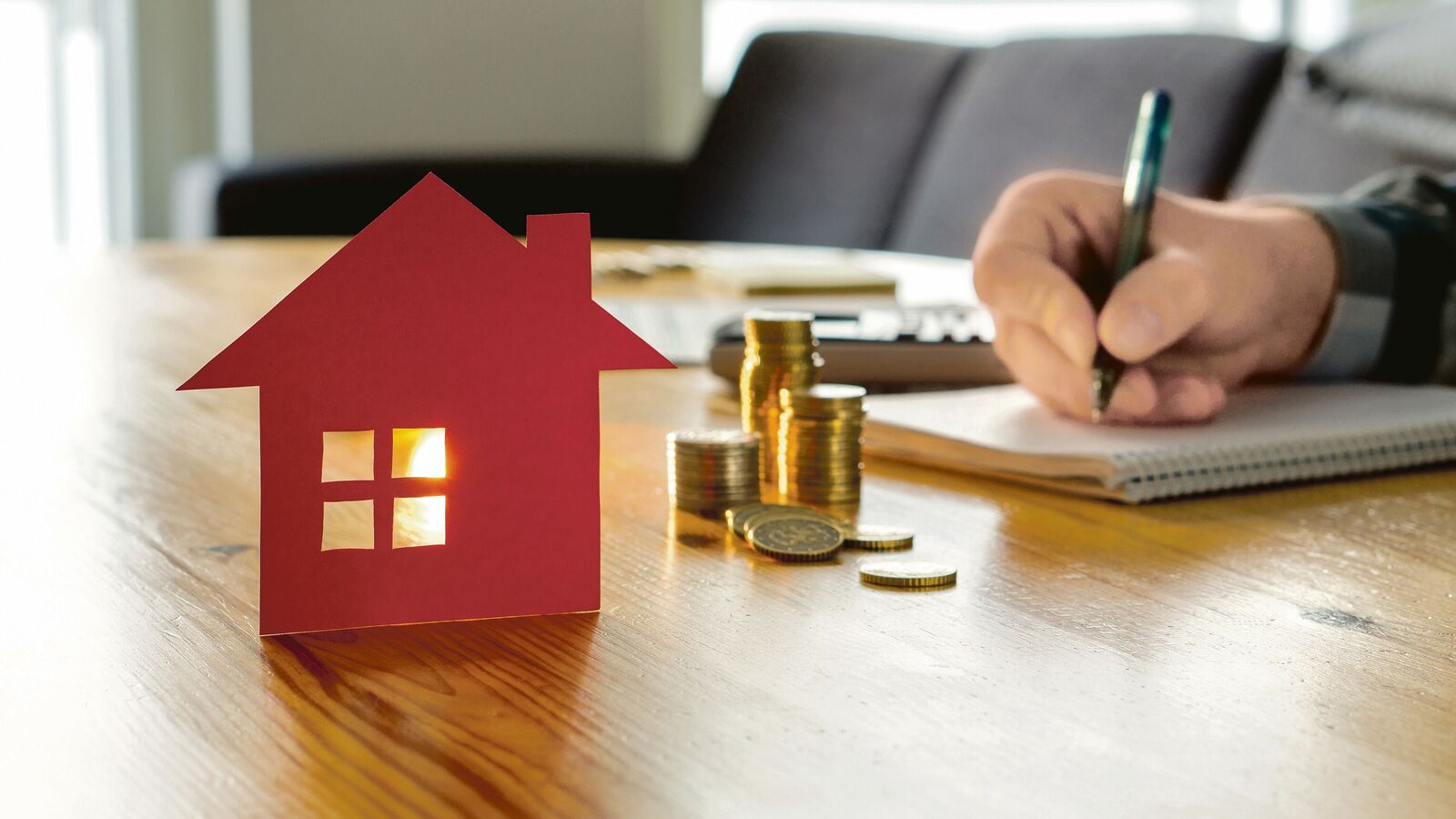
- 23 Oct 2025
In News:
The Delhi High Court has recently ruled that courts possess the discretion to exempt a property from the application of the doctrine of lis pendens under certain circumstances. The decision aims to protect genuine property owners from vexatious or frivolous litigation that seeks to unjustly restrict the transfer or enjoyment of property rights.
About the Doctrine of Lis Pendens
- The term Lis Pendens is derived from Latin, meaning “pending litigation.”
- In India, the doctrine is codified under Section 52 of the Transfer of Property Act (TPA), 1882.
- The principle holds that any transfer of immovable property during the pendency of a legal dispute concerning that property will be subject to the outcome of the litigation.
- The doctrine does not invalidate the transfer but makes it subordinate to the result of the pending case.
- Its primary objective is to prevent one party from defeating the rights of another through the transfer of the disputed property while the court proceedings are ongoing.
Essence and Legal Rationale
- The doctrine seeks to maintain the status quo of property ownership during litigation, ensuring that the final judgment of a competent court remains effective despite any transactions made during the pendency of the case.
- It prevents the multiplicity of proceedings and protects the interests of the rightful claimant, as the transferee of such property is bound by the court’s decree.
Key Conditions for Applicability
- A suit or proceeding must be pending before a court of competent jurisdiction.
- The dispute must directly relate to the title or rights of an immovable property.
- The property must be specifically identifiable and properly described in the suit.
- The transfer of the property must occur during the pendency of the litigation.
- The suit must be bona fide, i.e., not collusive or fraudulent in nature.
If these conditions are met, any transfer made during the lawsuit will not override the court’s final decision.
Non-Applicability of the Doctrine
The doctrine does not apply in certain cases, including:
- When the mortgagor transfers property under a power explicitly granted in the mortgage deed.
- When the transfer affects only the transferor’s interest and not the other party’s rights.
- In collusive suits—where the proceedings are staged to defraud others.
- When the property is not properly described, making its identification impossible.
- Where the right to the property is not directly in dispute and alienation has been permitted.
Recent Delhi High Court Ruling
- A Division Bench of the Delhi High Court, led by Justice Anil Kshetarpal, clarified that the doctrine of lis pendens is not absolute and can be relaxed by judicial discretion.
- The Court held that in cases where litigation is filed with mala fide intent or used as a tool to harass legitimate owners, the court may exempt the concerned property from the operation of the doctrine to protect bona fide ownership and prevent misuse of legal processes.
- This interpretation strengthens the judiciary’s power to distinguish genuine disputes from vexatious claims, thereby ensuring fairness and efficiency in property litigation.
Significance of the Judgment
- Protects Genuine Owners: Shields rightful property holders from baseless legal actions aimed at stalling legitimate transactions.
- Prevents Misuse of Law: Discourages abuse of the doctrine for fraudulent or extortionate purposes.
- Balances Rights and Justice: Ensures that while the doctrine maintains judicial control over disputed properties, it does not become a weapon against bona fide parties.
- Clarifies Judicial Discretion: Affirms that courts have the inherent authority to exclude specific cases from the doctrine’s ambit when equity demands.
Tetrataeniummanilalianum

- 23 Oct 2025
In News:
Researchers have recently discovered a new plant species named Tetrataeniummanilalianum in the Eravikulam National Park, Kerala, adding to the extraordinary biodiversity of the Western Ghats, one of the eight “hottest biodiversity hotspots” in the world. The finding has been published in the Nordic Journal of Botany (Sweden), underscoring India’s growing contributions to global botanical research.
About Tetrataeniummanilalianum
- The newly identified plant belongs to the carrot family (Apiaceae/Umbelliferae), which also includes species such as carrot, coriander, cumin, fennel, and ajwain.
- It was discovered in the high-altitude grasslands bordering the shola forests of the Eravikulam National Park in Idukki district, Kerala.
- The plant bears white flowers and possesses underground rhizomes. It sprouts and blooms only during the monsoon season, adapting to the region’s moist climatic conditions.
- This discovery marks the 48th identified species within the Tetrataenium genus and is the first of its kind recorded globally.
- The species has been named in honour of Prof. K.S. Manilal, a distinguished botanist, founder president of the Indian Association for Angiosperm Taxonomy (IAAT), and former Head of the Department of Botany at the University of Calicut.=
Ecological Context – Eravikulam National Park
- Location: Situated in the Idukki district of Kerala, the park spans 97 sq. km along the summit of the Western Ghats.
- Topography: Encompasses rolling grasslands interspersed with shola forests in the upper valleys.
- Climate: Receives heavy rainfall during both the southwest (June–July) and northeast (October–November) monsoons, making it one of the wettest regions in the world.
- Flora: Rich in endemic species such as Actinodaphnebourdilloni, Microtropisramiflora, Pittosporum tetraspermium, and the once-thought-extinct orchid Brachycorythiswightii.
- Fauna: Home to the endangered NilgiriTahr, with nearly half the world’s population residing here. Other species include the Gaur, Sloth Bear, Nilgiri Langur, Tiger, Leopard, Giant Squirrel, and Wild Dog.
- The park also hosts the Anamudi Peak (2,695 m), the highest mountain in South India, and is famous for the Neelakurinji flowers that bloom once every twelve years.
Authorized Economic Operator (AEO) Programme

- 23 Oct 2025
In News:
- The World Trade Organization (WTO) has commended India’s liberalisedAuthorised Economic Operator (AEO) Programme for significantly enhancing the participation of micro, small, and medium enterprises (MSMEs) in global trade and for improving customs facilitation measures.
- The initiative, implemented by the Central Board of Indirect Taxes and Customs (CBIC), is increasingly being seen as a model for balancing trade facilitation with supply chain security.
About the AEO Programme
- Origin:The AEO Programme operates under the World Customs Organization’s (WCO) SAFE Framework of Standards to Secure and Facilitate Global Trade (SAFE FoS), adopted in June 2005 to strengthen global supply chain security.AEO constitutes one of the three key pillars of this framework.
- Implementation in India:
- Introduced by CBIC as a pilot project in 2011 and revamped through Circular No. 33/2016-Customs (July 22, 2016).
- Managed by the Directorate of International Customs (CBIC).
- Aligns with Article 7.7 of the WTO Trade Facilitation Agreement (TFA), which promotes the recognition of “trusted traders.”
Objectives
- To enhance international supply chain security and ease of doing business.
- To foster trusted partnerships between Customs and compliant business entities.
- To reduce transaction costs and clearance times for legitimate traders.
- To increase MSME participation in international trade through simplified customs procedures.
Key Features
- Voluntary and Trust-Based:AEO is a voluntary compliance programme that certifies entities—such as importers, exporters, logistics providers, customs brokers, custodians, and warehouse operators—who meet security and legal standards.
- Three-Tier Certification:
- AEO-T1, AEO-T2, and AEO-T3 for importers/exporters (in ascending order of benefits).
- AEO-LO for logistics operators, custodians, and other intermediaries.
- Simplified Customs Procedures:
- Reduced documentation requirements.
- Decentralised approvals at the Customs Zonal level.
- Segmented risk management—allowing Customs to focus on higher-risk consignments.
- Global Integration:
- Mutual Recognition Arrangements (MRAs) with countries such as South Korea and Hong Kong.
- Negotiations underway with the USA, UAE, and Taiwan for reciprocal recognition.
- Ensures international credibility and cross-border facilitation for Indian traders.
- Targeted Expansion:The CBIC aims to accredit over 3,500 AEO-certified entities across India to build a more secure and efficient trade environment.
Benefits to Traders
|
Benefit |
Description |
|
Faster Customs Clearance |
Direct Port Delivery/Entry for AEO-certified cargo |
|
Deferred Duty Payment |
Flexibility in duty payments for AEO-T2 and T3 holders |
|
Reduced Inspections |
Lower frequency of physical and documentary checks |
|
Self-Declaration for SION |
Simplified export-import documentation |
|
Priority Processing |
Expedited refunds, grievance redressal, and port clearances |
|
Global Recognition |
Reciprocal benefits under MRAs with partner countries |
|
Financial Efficiency |
Time and cost savings for compliant MSMEs |
Significance for India
- Supports MSMEs: Encourages smaller exporters and manufacturers to integrate with global value chains.
- Trade Facilitation: Reduces bureaucratic delays and improves India’s ranking in Ease of Doing Business and Logistics Performance Index.
- Customs Efficiency: Allows authorities to focus resources on non-compliant and high-risk traders.
- Global Credibility: Strengthens India’s image as a trusted trading partner under the WCO framework.
- Policy Alignment: Advances India’s commitments under the WTO Trade Facilitation Agreement.
Sinapic Acid
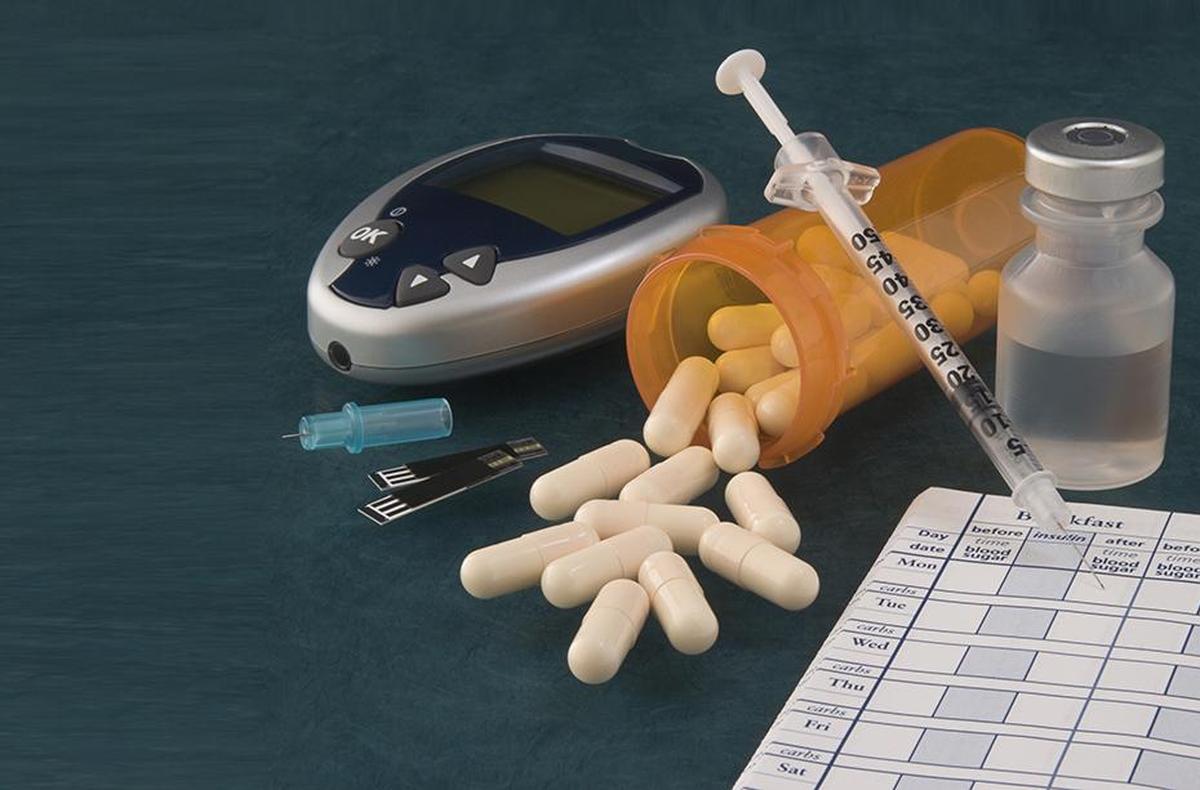
- 23 Oct 2025
In News:
Researchers from Nagaland University have identified Sinapic acid, a naturally occurring plant compound, as a potential therapeutic agent for accelerating wound healing in diabetic patients. The study — the first globally to demonstrate its oral efficacy — has been published in Nature Scientific Reports (Springer Nature).
About Sinapic Acid
- Chemical Nature:Sinapic acid is a natural phenolic acid and a derivative of cinnamic acid.
- Occurrence:Found widely in spices, citrus and berry fruits, vegetables, cereals, and oilseed crops.
- Properties:Possesses antioxidant, anti-inflammatory, antitumor, antibacterial, and neuroprotective activities.
- Mechanism of Action:The compound promotes wound repair by activating the SIRT1 pathway, which regulates tissue regeneration, angiogenesis, and inflammation control.
Key Research Findings
- First-of-its-kind Study:Demonstrated that oral administration of Sinapic acid accelerates wound healing in preclinical diabetic models.
- Optimal Dosage:The study observed an “inverted dose–response” — a lower dose (20 mg/kg) proved more effective than a higher one (40 mg/kg).
- Clinical Significance:
- Accelerates recovery from diabetic foot ulcers
- Reduces the risk of infection and amputation
- Offers a safe, plant-based, and affordable alternative to synthetic drugs
- Could enhance healthcare accessibility, especially in rural and resource-limited regions
About Diabetes Mellitus
- A metabolic disorder characterized by chronically elevated blood glucose levels.
- One of the world’s leading chronic diseases, affecting hundreds of millions globally.
- Complications:Include delayed wound healing, neuropathy, poor blood circulation, and diabetic foot ulcers, often resulting in amputation if untreated.
Significance of the Discovery
- Represents an indigenous scientific advancement with global healthcare potential.
- Supports the Make-in-India and One Health approach by integrating biotechnology and natural product research for sustainable medical solutions.
- Marks a major milestone in developing natural, safe, and cost-effective treatments for diabetic wound management.
Carabid Beetle

- 22 Oct 2025
In News:
- Recent research has identified Carabid ground beetles (family: Carabidae) as potential bioindicators for tracking microplastic contamination in soil ecosystems.
- Given the increasing global concern over microplastic pollution, especially in terrestrial environments, this finding highlights the ecological significance of these beetles in environmental monitoring and sustainable agriculture.
About Carabid Beetles
- Taxonomy: Belong to the family Carabidae, a large and diverse group of insects commonly known as ground beetles.
- Distribution: Found globally across a range of habitats — from forests, grasslands, and wetlands to agricultural fields and urban landscapes.
- Adaptability: Thrive in temperate and tropical climates, indicating high ecological resilience.
Physical and Biological Features
- Appearance:Typically, dark, shiny, and robust-bodied insects with long legs and strong mandibles, enabling them to be agile hunters.
- Defence Mechanism: When threatened, they emit a pungent odour to deter predators.
- Diet: Predatory in nature; they feed on pests such as caterpillars, slugs, snails, and other small invertebrates, making them beneficial for biological pest control.
- Life Cycle: Undergo complete metamorphosis — progressing through four stages: egg, larva, pupa, and adult.
- Reproduction:Typically,sexual with internal fertilization.
Ecological Role and Importance
- Natural Pest Regulators: Their predatory behavior helps control pest populations, reducing dependence on chemical pesticides in agriculture.
- Key Role in Soil Ecology:
- Contribute to nutrient cycling by preying on decomposers and pest species.
- Influence soil food web structure, functioning both as predators and prey for higher trophic levels.
- Indicator Species: Their abundance and diversity reflect the overall health and fertility of soil ecosystems.
- Bioindicator Concept:Bioindicators are species or groups whose presence, absence, or physiological condition reflects the quality of the environment and ecological changes.
- In Agriculture:In India and other agrarian regions, farmers have traditionally used bioindicators—such as insects, birds, and soil invertebrates—to predict rainfall, assess soil fertility, and evaluate pest management success.
- Microplastic Tracking Role:
- Researchers have found that Carabid beetles accumulate microplastic particles in their bodies, particularly within their digestive tracts, after feeding in contaminated soil.
- Their wide distribution and soil-dwelling nature make them ideal sentinels for studying microplastic pollution in terrestrial habitats.
- By analysing beetle tissues and microplastic residues, scientists can map the extent and distribution of soil microplastics with greater accuracy.
Why Carabid Beetles Are Effective Bioindicators
- Widespread Occurrence: Present in nearly all terrestrial ecosystems, ensuring broad geographic monitoring coverage.
- Ecological Sensitivity: Rapidly respond to changes in soil composition, contamination, and habitat quality.
- Trophic Position: As mid-level predators, they integrate pollutants and environmental stresses from lower trophic levels.
- Ease of Sampling: Readily captured and monitored through standard ecological methods like pitfall traps.
- Non-destructive Monitoring: Studying beetle populations allows long-term soil health assessments without altering ecosystems.
Impact of a Coronal Mass Ejection on the Lunar Exosphere
- 22 Oct 2025
In News:
- In a landmark discovery, the Indian Space Research Organisation (ISRO) announced that Chandrayaan-2’s orbiter has, for the first time, recorded the impact of a Coronal Mass Ejection (CME) from the Sun on theMoon’s exosphere — the thin, outermost layer of its atmosphere.
- The finding, made using the CHACE-2 (Chandra’s Atmospheric Composition Explorer-2) payload, marks a significant step in understanding how solar activity influences airless celestial bodies like the Moon.
About the Observation
- The CHACE-2 instrument, aboard Chandrayaan-2’s orbiter, detected a sharp rise in total pressure and molecular density in the Moon’s sunlit exosphere during a CME event on 10 May 2024.
- This observation confirmed, for the first time, theoretical predictions about how high-energy solar emissions affect the Moon’s extremely tenuous atmosphere.
- The findings were published in the journal Geophysical Research Letters (August 2025) under the title “Impact of a Coronal Mass Ejection on the Lunar Exosphere as Observed by CHACE-2 on the Chandrayaan-2 Orbiter.”
Understanding Coronal Mass Ejections (CMEs)
- CMEs are massive bursts of charged particles — primarily ionized hydrogen and helium — ejected from the Sun’s corona.
- When directed toward planetary bodies, these particles can interact with their atmospheres or surfaces, causing chemical and physical changes.
- On Earth, CMEs are often linked with geomagnetic storms and auroras, but their influence on airless bodies like the Moon had remained largely unobserved until this study.
The Lunar Exosphere: Nature and Composition
- The Moon’s atmosphere is so thin that it is classified as an exosphere — a region where individual gas atoms and molecules rarely collide.
- The boundary of the lunar exosphere directly touches the Moon’s surface, making it a “surface-boundary exosphere.”
- It is primarily composed of trace elements such as helium, argon, sodium, and potassium, released through processes like:
- Solar wind interactions (bombardment by charged particles),
- Photon-stimulated desorption (solar radiation freeing surface atoms), and
- Micrometeorite impacts (which vaporize surface material).
- Since the Moon lacks a global magnetic field, its exosphere is directly exposed to solar wind and CMEs, making it a natural laboratory for studying space-weather effects.
Chandrayaan-2 Mission Overview
- Launch Date: 22 July 2019, by GSLV-Mk III-M1 from Sriharikota.
- Components: Orbiter, Lander (Vikram), and Rover (Pragyan).
- Although communication with the lander was lost during descent on 7 September 2019, the orbiter remains fully operational in a 100 km × 100 km lunar orbit.
- Objective of CHACE-2: To analyse the composition, distribution, and temporal variability of the Moon’s neutral exosphere.
Key Findings of the Observation
- During the May 2024 CME event, CHACE-2 recorded a ten-fold increase in the number density of neutral atoms and molecules in the Moon’s dayside exosphere.
- The total pressure in the exosphere rose sharply, indicating enhanced release of surface atoms due to direct CME particle bombardment.
- The results provided empirical validation for long-held theoretical models on solar-lunar interactions.
- This was the first direct evidence of how the Moon’s atmospheric conditions respond dynamically to solar events.
Significance of the Discovery
- Scientific Advancement:
- Deepens understanding of space weather phenomena and their effects on airless celestial bodies.
- Offers valuable insights into Sun–Moon interactions and how charged solar particles shape planetary exospheres.
- Operational Relevance:
- Enhances the ability to predict and model space-weather impacts on future lunar missions and human habitats planned by 2040.
- Helps design radiation-resistant systems for lunar surface operations.
- Strategic and Technological Implications:
- Reinforces India’s growing expertise in planetary science and space environment monitoring.
- Demonstrates the long-term operational success of the Chandrayaan-2 orbiter, even years after its launch.
- Global Collaboration Potential:The findings can inform international lunar missions, including NASA’s Artemis and JAXA’s SLIM, contributing to a shared understanding of lunar space weather dynamics.
Japan Elects First Female Prime Minister

- 22 Oct 2025
In News:
- Recently, Japan’s National Diet elected Sanae Takaichi as its new Prime Minister, making her the first woman to hold that office in the nation’s history.
- Her ascent comes amid a shifting political backdrop, as the long-governing Liberal Democratic Party (LDP) lost its outright majority and secured a coalition with the Japan Innovation Party (Ishin).
Her appointment is notable not only for the gender milestone but also for signaling a potential policy shift—especially in Japan’s defence, economy and Indo-Pacific diplomacy.
Structural & Governance-Related Aspects
- Japan is a parliamentary constitutional monarchy. The Prime Minister is the real executive authority and is accountable to the lower house (House of Representatives).
- Her government is a minority coalition: the LDP formed an alliance with the Japan Innovation Party after the LDP-Komeito coalition collapsed. Thus, the new administration lacks a comfortable majority and will face legislative challenges.
- Despite her historic election, her cabinet contains only two women, raising questions about the depth of the gender-breaking moment for Japanese politics.
Key Challenges Ahead
- Economic recovery – Japan faces slow growth, inflationary pressures and demographic headwinds. Takaichi has pledged stimulus measures along the lines of previous “Abenomics”-style policies.
- Defence & security – With rising regional tensions, she is expected to push for higher defence spending and deeper coordination with the U.S. and Quad partners. Her first face-to-face diplomatic test includes welcoming U.S. President Donald Trump.
- Gender & social policy expectations – While she broke a barrier as Japan’s first female PM, her conservative positions on issues like same-sex marriage, imperial succession and women’s representation have drawn criticism.
- Policy implementation in a fragmented parliament – With no clear majority, passing major reforms will require coalition-building or compromises with opposition parties, marking a potential shift from LDP’s dominance.
Significance for India and the Indo-Pacific
From the Indian perspective—relevant to GS Paper II on International Relations—Takaichi’s election holds importance:
- Japan remains a key partner for India in the Indo-Pacific region, including in frameworks such as the Quad and supply-chain resilience initiatives.
- Her commitment to stronger defence and security cooperation with allies resonates with India’s own strategic concerns in the Indo-Pacific maritime domain.
- A stable, assertive Japan aligns with India’s interest in sustaining a free, open and rules-based maritime order.
MAM01 Monoclonal Antibody
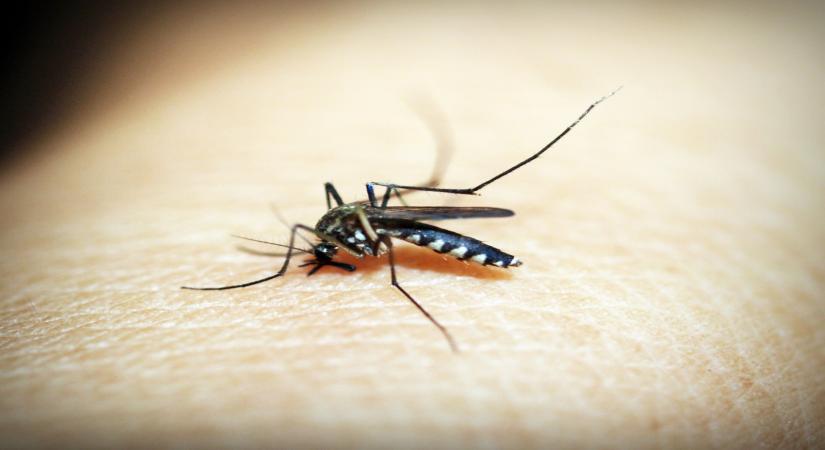
- 22 Oct 2025
In News:
- A major scientific breakthrough has emerged in the global fight against malaria, with U.S. researchers developing a novel monoclonal antibody (mAb) named MAM01, which has shown strong protection in early human trials.
- The results, published in The Lancet Infectious Diseases, mark a potential shift toward antibody-based malaria prevention, especially for vulnerable groups such as young children and pregnant women in endemic regions.
About MAM01 Monoclonal Antibody
- MAM01 is a laboratory-engineered monoclonal antibody designed to prevent malaria infection by targeting a highly conserved region of the Plasmodium falciparumcircumsporozoite protein (CSP) — a key molecule involved in the parasite’s entry into the bloodstream.
- By binding to this protein, MAM01 blocks infection at the earliest stage, preventing the parasite from reaching the liver or bloodstream.
Key Features
- Mode of Administration: A single injection of this long-acting antibody provides immediate protection lasting for several months.
- Target Groups: Especially beneficial for infants, young children, and pregnant women living in malaria-endemic regions.
- Duration of Protection: The antibody offers dose-dependent, months-long immunity with minimal side effects.
- Mechanism: MAM01 neutralizes the malaria parasite before it can infect liver cells, thus halting disease progression at the pre-erythrocytic stage.
Findings from the Clinical Trial
- Institution: Conducted by the University of Maryland School of Medicine’s Center for Vaccine Development and Global Health (CVD).
- Trial Design: A Phase 1, double-blind, placebo-controlled clinical study involving 38 healthy adult volunteers (aged 18–50) with no prior malaria exposure.
- Method: Participants were given either MAM01 or a placebo and later exposed to malaria-carrying mosquitoes in a controlled challenge study.
- Results:
- Participants receiving the highest dose of MAM01 showed complete protection from infection.
- All individuals in the placebo group developed malaria.
- No serious side effects or adverse events were reported.
- Outcome: The antibody demonstrated dose-dependent protection and a strong safety profile, providing proof-of-concept for antibody-based malaria prevention.
About Monoclonal Antibodies (mAbs)
Monoclonal antibodies are laboratory-made proteins that mimic the body’s natural immune response.
- Origin: Produced by cloning a single type of B cell to generate identical copies of an antibody.
- Specificity: Highly precise, designed to bind to a particular antigen such as a virus, bacterium, or parasite.
- Applications: Widely used in the treatment of cancer, autoimmune disorders, and infectious diseases (e.g., COVID-19, Ebola).
- Advantage: Offer targeted action with minimal side effects, and can provide immediate protection, unlike vaccines which require time for immunity to develop.
Significance of the Discovery
- A New Preventive Strategy: Unlike vaccines that may require multiple doses and boosters, MAM01 provides immediate and prolonged protection through a single dose — ideal for high-risk populations in malaria-endemic areas.
- Addressing a Global Health Burden: Malaria continues to cause over 600,000 deaths annually, predominantly among children in sub-Saharan Africa. Limited vaccine efficacy and emerging drug resistance make monoclonal antibodies a valuable addition to the malaria control toolkit.
- Technological and Health Equity Impact: This research demonstrates how cutting-edge biotechnological innovation can serve global health equity by providing affordable, scalable, and effective protection for populations in low- and middle-income countries.
- Complementary to Vaccines: MAM01 complements existing malaria vaccines like RTS,S (Mosquirix) and R21/Matrix-M, offering a dual-layered protection strategy — antibodies for immediate defence and vaccines for long-term immunity.
The New Arc of India–Australia Collaboration
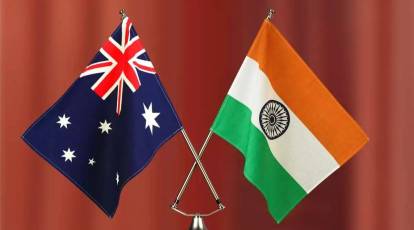
- 22 Oct 2025
In News:
India and Australia have entered a new phase of strategic and defence engagement, marked by Defence Minister Rajnath Singh’s visit to Canberra and Sydney for the inaugural India–Australia Defence Ministers’ Dialogue (2025). This was the first such visit by an Indian Defence Minister in over a decade, signifying a decisive step from declaratory convergence to operational cooperation.
Evolution of the Partnership
- Strategic Convergence: India and Australia’s partnership is rooted in shared democratic values and mutual commitment to a free, open, and rules-based Indo-Pacific. Concerns over China’s assertive behaviour and the erosion of maritime norms have driven cooperation through the Quad (India, Australia, Japan, U.S.) and bilateral ministerial dialogues since the elevation of ties to a Strategic Partnership (2009) and later a Comprehensive Strategic Partnership (CSP) in 2020.
- Operational Deepening:The relationship expanded beyond political rhetoric to practical cooperation through joint exercises such as Talisman Sabre, air-to-air refuelling arrangements, and logistics support agreements. These efforts laid the groundwork for interoperability and joint operational mechanisms.
- Industrial and Logistics Convergence:Both nations are now focusing on defence industrial collaboration, joint ship repair and maintenance, and supply-chain resilience. This industrial alignment reflects a shift from episodic engagement to a sustainable, institutionalised defence ecosystem.
Key Agreements and Mechanisms (2025)
- Joint Maritime Security Collaboration Roadmap– Strengthens maritime surveillance, domain awareness, and coordinated patrols across the Indo-Pacific.
- Mutual Submarine Rescue Support Arrangement– Establishes frameworks for joint underwater rescue, enhancing naval safety and contingency response.
- Air-to-Air Refuelling Agreement (2024)– Expands tactical endurance, enabling longer joint missions and greater air interoperability.
- Annual Defence Ministers’ Dialogue & Joint Staff Talks– Institutionalises defence cooperation and ensures continuity beyond political cycles.
- Defence Industry Roundtables– Promotes co-production, joint R&D, and mutual fleet maintenance, supporting an integrated defence industrial base.
Drivers of the Deepening Partnership
- Strategic Drivers: The shifting balance of power in the Indo-Pacific and China’s coercive regional posture have encouraged both nations to close operational gaps and coordinate maritime preparedness.
- Pragmatic Considerations: Both India and Australia seek to diversify their security dependencies, reducing overreliance on single external providers. Mechanisms such as logistics sharing, submarine rescue cooperation, and industrial collaboration build self-reliance and reduce friction during crises.
Industrial and Technological Synergy
- India’s strengths: Scalable defence production under Make in India and Innovations for Defence Excellence (iDEX), achieving record output of ?1.5 lakh crore (FY 2024–25).
- Australia’s strengths: Advanced maritime platforms like P-8A Poseidon, MQ-4C Triton, and Ghost Shark autonomous submarine, supported by strong R&D.
Together, they form a complementary ecosystem combining India’s scale and cost-efficiency with Australia’s technological sophistication.
Strategic and Industrial Significance
|
Dimension |
Impact |
|
Maritime Security |
Enhances sea-lane protection, freedom of navigation, and coordinated patrols across the Indian Ocean and Western Pacific. |
|
Defence Production Linkages |
Strengthens regional supply chains through joint repair, co-production, and maintenance facilities. |
|
Technological Complementarity |
Merges India’s production base with Australia’s innovation-driven R&D for advanced systems. |
|
Institutional Strengthening |
Annual dialogues and Joint Staff Talks ensure long-term continuity of defence cooperation. |
|
Regional Balance |
Reinforces Quad’s strategic cohesion and promotes a transparent, rules-based Indo-Pacific architecture. |
Hygrocybe Pellucida
- 21 Oct 2025
In News:
In a significant biodiversity finding, Hygrocybe pellucida, a rare and recently identified fungus species, has been recorded for the first time in Telangana at the Kawal Tiger Reserve. The species, known for its vivid waxy appearance, was first described in Kerala in 2024 and belongs to the Hygrophoraceae family. This sighting expands its known range in southern India and highlights the ecological richness of the reserve.
About Hygrocybe pellucida
- Part of the Hygrocybe (waxcap) genus, containing ~350 species globally
- Distinguished by bright, translucent, waxy fruit bodies
- Prefers nutrient-poor, moss-rich forest floors and unimproved grasslands
- Indicator of undisturbed and pristine microhabitats
- Newly documented fungus species in India, reinforcing fungal diversity in tropical ecosystems
Ecological Significance
The discovery underscores the value of fungi as bioindicators of healthy ecosystems. It reflects the presence of intact microhabitats—moist, shaded forest floors with moss and low human interference—and complements ongoing biodiversity documentation in the region. Researchers have identified over 80 fungal species in Kawal, including several first records for Telangana, such as Marasmiushaematocephalus and Dacryopinaxspathularia.
Kawal Tiger Reserve: Key Facts
- Location: Telangana, along the Godavari River in the Deccan Peninsula–Central Highlands
- Declared Tiger Reserve: 2012 (originally a Wildlife Sanctuary)
- Landscape Linkages: Connects to Tadoba–Andhari (Maharashtra) and Indravati (Chhattisgarh) Tiger Reserves
- Topography: Part of the Sahyadri mountain ranges
- Rivers: Catchment area for Godavari and Kadam
- Vegetation:Southern Tropical Dry Deciduous Forests
- Flora: Teak, bamboo, Anogeissuslatifolia, Mitragyna parviflora, etc.
- Fauna: Tiger, leopard, sambar, blackbuck, nilgai, chinkara, chousingha, spotted deer
Conservation Perspective
While tiger conservation often takes center stage, this discovery emphasizes that forest floor biodiversity —including fungi and microfauna—plays a critical ecological role and requires equal attention. The finding strengthens the case for protecting microhabitats and maintaining minimal human disturbance in core forest areas.
We Rise Initiative
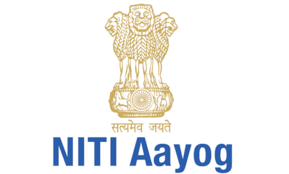
- 21 Oct 2025
In News:
India has launched a major initiative to strengthen women-led entrepreneurship and boost their participation in global trade. NITI Aayog’s Women Entrepreneurship Platform (WEP), in partnership with DP World, has introduced the ‘We Rise’ – Women Entrepreneurs Reimagining Inclusive and Sustainable Enterprisesprogramme. This initiative aligns with the Government of India’s vision of women-led development and is a part of WEP’s Award to Reward (ATR) framework.
Key Objectives and Features
- Purpose: To support women entrepreneurs in scaling their businesses globally
- Focus Areas:
- Trade facilitation
- Mentorship and business capacity-building
- Strategic partnerships and global market access
- Target Group: High-potential women-led MSMEs, particularly product-centric enterprises
- Coverage:100 women entrepreneurs will be selected for export-readiness programmes
- Global Exposure: Participants will showcase products at Bharat Mart in Dubai (Jebel Ali Free Zone), gaining access to international B2B and B2C markets
DP World will leverage its global supply chain expertise and logistics network to build export capabilities for women-led businesses, ensuring they meet international trade standards.
Strategic Significance
This initiative strengthens India’s women entrepreneurship ecosystem by providing:
- Access to finance and global markets
- Training, skill development, and compliance support
- Mentorship, networking, and business development services
It reinforces the importance of public-private collaboration in accelerating women's economic empowerment and building a more inclusive trade ecosystem.
Women Entrepreneurship Platform (WEP) Overview
- Established: 2018 by NITI Aayog; transitioned to PPP mode in 2022
- Engagement: Over 90,000 women entrepreneurs and 47 partners
- Mandate: Acts as a national aggregator and enabler to strengthen women-led businesses
- Core Functions: Addresses six ecosystem needs —
- Access to finance
- Market linkages
- Training & skilling
- Mentorship & networking
- Legal & compliance assistance
- Business development services
ATR Initiative
Launched in 2023, the Award to Reward (ATR) model institutionalises partnerships by celebrating women entrepreneurs and fostering scalable, outcome-driven collaborations.
Nafithromycin
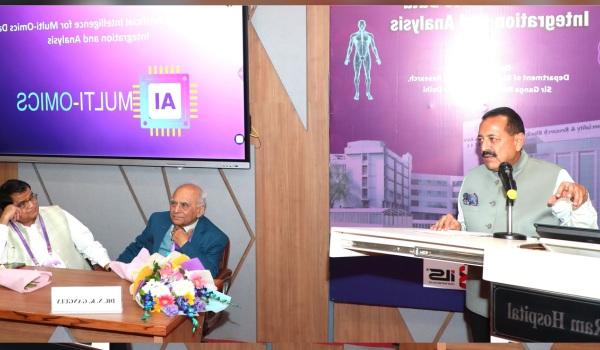
- 21 Oct 2025
In News:
India has achieved a major scientific milestone with the development of Nafithromycin, the country's first indigenously conceptualized, developed, and clinically validated antibiotic. Announced by the Union Science and Technology Minister, this breakthrough reflects India's growing self-reliance in the biotechnology and pharmaceutical sector and its commitment to addressing the global challenge of Antimicrobial Resistance (AMR).
About Nafithromycin
- Developed with support from: Biotechnology Industry Research Assistance Council (BIRAC)
- Trade Name:Miqnaf
- Target Use: Community-Acquired Bacterial Pneumonia (CABP)
- Key Beneficiaries: Cancer patients and individuals with poorly controlled diabetes
- Spectrum & Novelty: Effective against both typical and atypical respiratory pathogens; marks the first new antibiotic in its class globally in over 30 years
Nafithromycin is particularly relevant in India where respiratory infections remain a key public-health concern. The antibiotic is designed to combat drug-resistant respiratory infections, providing a potent solution amid rising antimicrobial resistance.
Why It Matters: Tackling AMR
Antimicrobial Resistance (AMR) occurs when microbes such as bacteria, viruses, fungi, or parasites develop the ability to defeat drugs designed to kill them. As a result, common infections become harder to treat, increasing the risk of severe illness, prolonged hospitalization, disability, and death. While AMR is a natural evolutionary process, misuse and overuse of antimicrobials significantly accelerate it. Nafithromycin’s development represents a strategic step in strengthening India's response to AMR.
Related Scientific Milestones Announced
The Minister also highlighted other key achievements underscoring India’s expanding biotech capabilities:
- Indigenous gene-therapy trial success for Hemophilia at Christian Medical College, Vellore — achieving 60–70% correction with zero bleeding episodes
- Human genome sequencing initiative: Over 10,000 genomes already sequenced, target set to reach 1 million
- Deployment of AI-based hybrid mobile clinics to improve healthcare access in rural and remote regions
These advancements reflect India’s push toward a self-sustainable innovation ecosystem, combining science, technology, and healthcare delivery to support the vision of a developed and technology-driven nation.
Zombie Deer Disease
- 21 Oct 2025
In News:
Florida has recently confirmed new cases of Chronic Wasting Disease (CWD), commonly referred to as “Zombie Deer Disease,” heightening concerns among wildlife authorities in the United States. This marks the second confirmed case in wild deer in the state since the first detection in June 2023, triggering an emergency response and surveillance measures in affected regions.
What is Chronic Wasting Disease (CWD)?
CWD is a progressive, fatal neurodegenerative disease affecting deer, elk, moose, and reindeer. It damages the central nervous system, causing:
- Severe weight loss
- Disorientation and loss of awareness
- Abnormal behavior, including reduced fear of humans
- Excessive salivation, increased drinking and urination
- Progressive debilitation and death
The incubation period ranges from 18–24 months, during which animals may appear healthy before showing symptoms.
Cause
- CWD is caused by prions — infectious misfolded proteins that trigger abnormal protein folding in the brain.
- Unlike bacteria or viruses, prions contain no DNA or RNA.
- Prions create spongy holes in brain tissue, leading to neurological failure.
Transmission
CWD spreads through:
- Direct contact among animals
- Contaminated saliva, urine, blood, and feces
- Environmental persistence — prions survive for years in soil, plants, and water
- Movement of infected animals
- Scavengers dispersing prion material
- Use of natural deer urine lures by hunters
Prions are extremely resilient, making eradication difficult.
Threat to Humans
- No confirmed human cases have been reported so far.
- However, health experts advise caution due to similarities with Bovine Spongiform Encephalopathy (mad cow disease), a prion disorder linked to human deaths in the past.
- There is no cure or vaccine for CWD.
Tuvalu Island

- 21 Oct 2025
In News:
Tuvalu has formally become the 90th State Member of the International Union for Conservation of Nature (IUCN), marking a major step in strengthening its global environmental engagement. This development aligns with the nation’s growing efforts to protect its fragile ecosystems and advocate for climate-vulnerable island states.
About Tuvalu
- Located in the west-central Pacific Ocean between Australia and Hawaii, Tuvalu (formerly the Ellice Islands) comprises nine low-lying atolls and coral islands spanning just 26 sq km—making it the fourth-smallest country in the world.
- With no point higher than 4.5 m above sea level, the country faces existential threats from sea-level rise, coastal erosion and climate change.
- It has an Exclusive Economic Zone (EEZ) of around 900,000 sq km, rich in marine biodiversity, coral reefs, fisheries and migratory seabirds.
- Tuvalu operates as a parliamentary democracy under a constitutional monarchy within the Commonwealth, recognizing King Charles III as head of state. Funafuti is the capital, and Tuvaluan and English are widely spoken. Its economy relies on subsistence activities, remittances, limited copra production, sale of postage stamps, and fisheries licensing revenues.
Significance of IUCN Membership
By joining IUCN, Tuvalu gains access to a global network of conservation experts, funding avenues and policy platforms. This membership strengthens its capacity to pursue:
- Climate change adaptation and resilience strategies
- Sustainable fisheries and marine resource management
- Community-driven conservation initiatives
- Partnerships with bodies such as the Green Climate Fund and Global Environment Facility
The move comes at a time when Pacific Island nations are pushing for stronger global action on climate change, adaptation financing and protection of ocean ecosystems.
Why It Matters
Tuvalu’s participation in IUCN brings heightened international focus on the plight of small island developing states (SIDS) facing climate-induced challenges. It enhances the country's voice in shaping global environmental governance and reinforces the need to safeguard vulnerable ecosystems and cultures deeply connected to the ocean.
Chiron
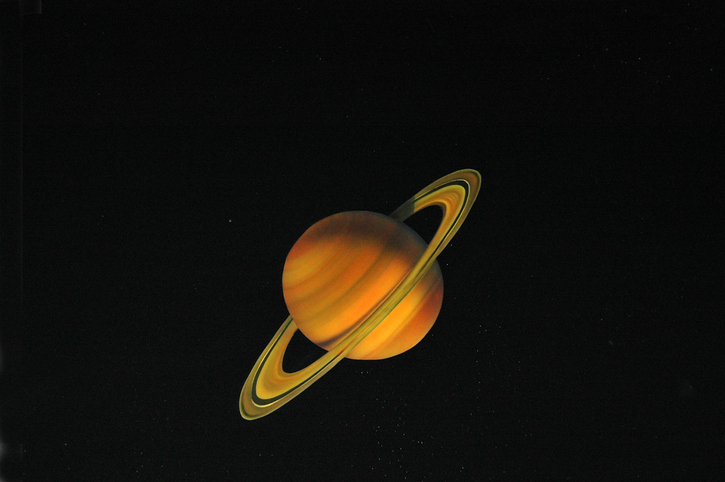
- 18 Oct 2025
In News:
Astronomers have, for the first time, observed the formation and evolution of a ring system around Chiron—an icy small body in the outer Solar System. This marks a significant development in planetary science, offering rare insight into ring-formation processes beyond giant planets.
About Chiron
- Discovery: Identified in 1977 by astronomer Charles Kowal.
- Classification: Belongs to the centaur class—objects orbiting between Jupiter and Neptune that exhibit traits of both asteroids and comets.
- Orbit: Completes one revolution around the Sun in ~50 years.
- Size: Approx. 200 km in diameter.
- Composition: Predominantly rock, water ice, and complex organic compounds.
- Behaviour: Shows comet-like activity, sometimes ejecting gas and dust.
Ring System Around Chiron
- First confirmed ring formation observed around a small icy body.
- Comprises four rings, with three inner rings embedded in a dust-disk and an outer ring located unusually far from the body.
- Rings likely contain water-ice particles mixed with rocky material, similar to Saturn’s rings.
- Observations from 2011 to 2023 indicate dynamic evolution of the ring system.
Distances of Rings From Chiron's Center (Approx.):
- Inner Rings: ~273 km, ~325 km, ~438 km
- Outer Ring: ~1,400 km (requires further stability confirmation)
Significance of the Discovery
- Provides a real-time snapshot of ring evolution, offering clues to:
- Formation mechanisms of rings around small bodies
- Dynamics of dust-disk systems in space
- Broader processes that form moons and debris structures
- Enhances understanding of small-body systems, complementing prior ring discoveries around:
- Chariklo(centaur)
- Haumea
- Quaoar
How Was It Observed?
Researchers used stellar occultation—studying changes in starlight as Chiron passed in front of a distant star. Data from Brazil, France, and Spain enabled high-precision observations.
Possible Origins of the Rings
Hypotheses include:
- Remnants of a destroyed moon
- Collisional debris from impacts with space material
- Material ejected by Chiron itself
- Or a combination of these processes
Water-ice plays a key stabilizing role by preventing particles from clumping into a moon.
Scheme for Innovation and Technology Association with Aadhaar
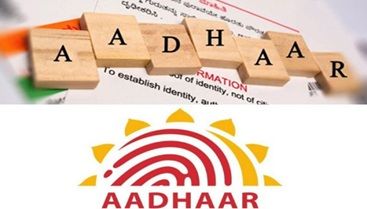
- 18 Oct 2025
In News:
- The Unique Identification Authority of India (UIDAI) has launched the Scheme for Innovation and Technology Association with Aadhaar (SITAA) to advance India's digital identity framework and safeguard Aadhaar against evolving cyber threats, particularly AI-driven deepfakes, spoofing, and biometric fraud.
- The initiative reflects India's objective to build secure, scalable, indigenous, and globally benchmarked identity solutions, aligning with the broader vision of Digital Public Infrastructure and Atmanirbhar Bharat.
Key Objectives
- Strengthen the security and reliability of Aadhaar authentication.
- Develop cutting-edge biometric and AI-based security technologies.
- Foster collaboration among startups, academia, and industry for co-development.
- Encourage indigenization of identity-tech solutions.
- Build future-ready digital identity systems capable of countering emerging threats.
Strategic Partnerships
To operationalize the programme, UIDAI has partnered with:
- MeitY Startup Hub (MSH) – for technical mentoring, incubation and accelerator support.
- NASSCOM – for industry linkages, global outreach, and entrepreneurship support.
Pilot Phase Focus Areas
The SITAA pilot has launched three innovation challenges open to eligible startups, research institutions, and industry partners (applications open till 15 November 2025):
|
Challenge |
Objective |
Key Requirements |
|
Face Liveness Detection |
Prevent spoofing in face-based authentication |
SDK for passive/active liveness; detect photos, videos, masks, morphs, deepfakes; work across devices/environments; edge + server capability |
|
Presentation Attack Detection (PAD) |
Enhance AI/ML-based face authentication resilience |
Real-time PAD for print, replay, morphs, masks, deepfakes; privacy-compliant; scalable; interoperable with Aadhaar APIs |
|
Contactless Fingerprint Authentication |
Enable mobile-based fingerprint verification |
Capture fingerprint via smartphone/low-cost devices; spoof detection; AFIS-compliant templates; demo app & QC tool required |
Why SITAA Matters
- Deepfake threat escalation: Attempts to bypass biometric security demand next-gen AI counter-measures.
- Contactless biometrics: Essential in post-pandemic authentication models and mobile-first delivery.
- Demographic and environmental variability: Aadhaar works across diverse conditions and populations, making robust tech essential.
- Strengthening trust in India’s digital public infrastructure systems like Aadhaar, UPI, DigiLocker, and ABHA.
Technological Focus Areas
- Advanced biometrics (face, fingerprint)
- AI-driven liveness and spoof detection
- Privacy-preserving authentication methods
- Secure digital identity frameworks
- Mobile-first biometric solutions
Public Trust Doctrine
- 18 Oct 2025
In News:
The Supreme Court has recently clarified that the Public Trust Doctrine (PTD) applies not only to naturally occurring water bodies such as rivers, lakes, and wetlands, but also to artificial or man-made waterbodies that perform vital environmental or ecological functions. This judgment marks a significant expansion of environmental jurisprudence in India, underscoring that ecological protection cannot hinge solely on whether a waterbody is naturally formed.
Case Background: Futala Lake, Nagpur
The ruling came in a case concerning Futala Lake in Nagpur, Maharashtra, where an NGO challenged recreational development activities around the lake, arguing that it should be treated as a wetland.
Key details:
- Futala Lake (Telangkhedi Tank) was built in 1799 by Shri Gyanoji Bhosale.
- The lake and its catchment cover ~200 hectares.
- Constructed historically for irrigation, making it man-made.
The Bombay High Court had earlier allowed non-permanent recreational structures while directing authorities to preserve the lake’s environmental integrity. The Supreme Court upheld this decision.
Supreme Court’s Key Observations
- Artificial waterbodies serving ecological functions fall within the Public Trust Doctrine.
- Such resources must be protected under the constitutional mandate of Articles 48-A and 51-A(g) (environmental protection duties of the State and citizens).
- Futala Lake, being artificially created for irrigation, does not qualify as a "wetland" under the Wetlands (Conservation and Management) Rules, 2017, which exclude human-made irrigation tanks.
- Nonetheless, the lake deserves environmental protection through PTD because it contributes to urban ecology and public welfare.
The Court emphasized that PTD imposes duties on authorities to prevent irreversible damage and ensure sustainable use, reinforcing the right to a healthy environment under Article 21.
Doctrinal Significance: Public Trust Doctrine (PTD)
Meaning: The State acts as a trustee of natural and environmental resources, which belong to the public and cannot be monopolized, degraded, or transferred for private gain.
Origins:
- Roots in Roman law (res communes)
- Developed through English common law
- Recognized in Indian jurisprudence (e.g., M.C. Mehta v. Kamal Nath, 1997)
Core Principles
- Resources of collective importance must remain available for public use and ecological balance.
- The State cannot alienate, privatize, or degrade these resources.
- Resources must be maintained for specific public and ecological purposes.
Ruling’s Broader Implications
- Expands PTD protection to man-made lakes, tanks, reservoirs that support ecology and public use.
- Strengthens legal framework for urban waterbody conservation amid fast-paced infrastructure growth.
- Reinforces sustainable development, ecological preservation, and inter-generational equity.
Taftan Volcano
- 18 Oct 2025
In News:
A recent scientific study has revealed renewed geological activity at Mount Taftan, a stratovolcano in southeastern Iran, raising concerns among volcanologists and regional authorities. The volcano, believed to have remained inactive for nearly 700,000 years, has exhibited ground uplift and increased gas emissions, suggesting possible magmatic or hydrothermal movement beneath the surface.
Key Findings from Recent Study
- Research published in Geophysical Research Letters notes that ground near Taftan’s summit rose by ~9 cm between July 2023 and May 2024.
- Persistent uplift signals buildup of gas pressure below the volcano.
- Residents reported strong sulfurous fumes, detectable up to 50 km away in the city of Khash.
- Satellite monitoring (ESA’s Sentinel-1) indicated activity in absence of ground-based GPS stations.
Scientists stress there is no immediate eruption threat, but the volcano should be reclassified from "extinct" to dormant and monitored more closely due to increasing activity.
About Taftan Volcano
- Location: Southeastern Iran, ~56 km from Pakistan border
- Elevation:3,940 m (12,927 ft)
- Type: Semi-active stratovolcano (composite volcano)
- Volcanic Arc: Only active volcano in the Makran subduction zone
- Geological Setting: Formed due to subduction of Arabian oceanic crust beneath Eurasian plate
- Key Features: Two summits — Narkuh and Matherkuh
- Activity Indicators:
- Active hydrothermal system
- Sulfur-emitting vents (fumaroles)
- No recorded eruptions in human history
What is a Stratovolcano?
- Tall, steep-sided cone-shaped volcano
- Commonly found along convergent plate boundaries
- Composed of alternating lava flows and pyroclastic deposits
- Eruptions tend to be explosive due to viscous magma (andesite/dacite)
- Examples: Mt. Fuji, Mt. St. Helens, Vesuvius, Krakatoa
Maldives Achieves Triple Elimination of Mother-to-Child Transmission (MTCT)

- 18 Oct 2025
In News:
In a landmark development in global public health, the Maldives has become the first country in the world to be validated by the World Health Organization (WHO) for eliminating mother-to-child transmission of HIV, syphilis, and hepatitis-B. This achievement represents a major milestone in protecting newborns from lifelong infections and advancing maternal-child health security.
Significance of the Achievement
Mother-to-child transmission (MTCT) of HIV, syphilis, and hepatitis-B remains a pressing concern worldwide, particularly in developing regions. In the WHO South-East Asia Region alone, thousands of infants are still born with congenital infections annually. Against this backdrop, Maldives’ accomplishment sets a benchmark for public health governance and disease elimination.
Key Drivers Behind Maldives’ Success
The achievement results from a comprehensive, integrated and equity-based healthcare strategy, backed by political commitment and strong health investments.
1. Universal Maternal Care and Screening
- Over 95% of pregnant women in Maldives receive antenatal care.
- Nearly all are screened for HIV, syphilis, and hepatitis-B.
- Universal access extends to migrants and remote island populations.
2. Robust ImmunisationProgramme
- Above 95% hepatitis-B birth-dose coverage within 24 hours of birth.
- Full childhood immunisation coverage consistently maintained.
3. Demonstrated Zero Transmission
- No infant HIV or syphilis cases reported since 2022.
- National survey (2023) confirmed zero hepatitis-B among school-entry children.
4. Strong Public Health Infrastructure
- Universal health coverage system offering free antenatal and diagnostic services.
- Government spends over 10% of GDP on health, among the highest in the region.
- Effective partnerships across public, private, and civil society sectors, supported by WHO technical assistance.
Strategic Measures Adopted
- Integrated maternal-child health services
- Early testing and treatment protocols
- Strong laboratory systems and surveillance
- Community outreach and migrant health inclusion
- High-quality vaccination logistics
Future Roadmap
To sustain the elimination status and deepen maternal-newborn care outcomes, Maldives plans to:
- Expand digital public-health systems
- Strengthen laboratory and monitoring quality
- Enhance services for key and migrant populations
- Increase private-sector collaboration
WHO will continue supporting Maldives to maintain momentum toward broader maternal, child, and adolescent health goals.
Maldives at a Glance
- Location: North-central Indian Ocean; southwest of India and Sri Lanka
- Capital:Malé
- Population: ~5.6 lakh (2025)
- Geography: ~1,200 coral islands across 26 atolls; ~200 inhabited
- Feature: Lowest-lying nation globally (maximum elevation ~1.8m)
- Climate: Tropical; Southwest monsoon (May–Aug), Northeast monsoon (Dec–Mar)
Military Combat Parachute System
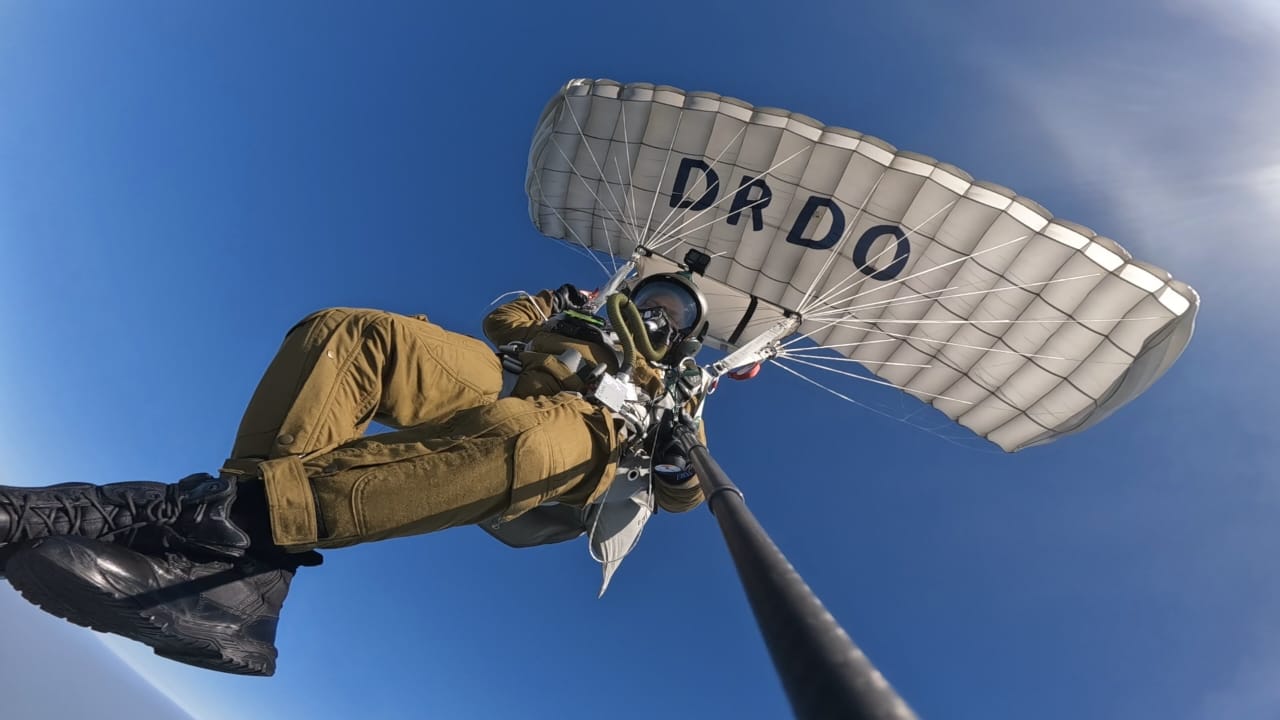
- 17 Oct 2025
In News:
- India has achieved a major milestone in defenceindigenisation with the successful testing of the Military Combat Parachute System (MCPS) by the Defence Research and Development Organisation (DRDO).
- The system demonstrated a combat freefall jump from 32,000 feet, making it a significant advancement in India’s aerial delivery capability.
About the Military Combat Parachute System
The MCPS is an indigenous high-altitude parachute system designed to support special operations and military freefall missions in extreme altitudes and hostile environments.
- Developed by:
- Aerial Delivery Research & Development Establishment (ADRDE), Agra
- Defence Bioengineering & Electromedical Laboratory (DEBEL), Bengaluru
Key Features
- Altitude Capability: Successfully tested from 32,000 feet, and the only parachute system in operational use with the capability to be deployed above 25,000 feet by Indian forces.
- Enhanced Tactical Performance:
- Lower rate of descent
- Superior steering and maneuvering abilities
- Allows accurate navigation and landing at designated drop zones
- Navigation Support: Compatible with NavIC (Indian satellite navigation system), ensuring secure and interference-free guidance.
- Mission Capability: Enables safe aircraft exit, controlled descent, and precise landing in complex terrains—critical for special forces operations.
Strategic Significance
- Self-Reliance in Defence:
- Major step towards Aatmanirbhar Bharat in aerial delivery systems
- Reduces dependence on foreign parachute systems and maintenance support
- Operational Advantage:
- Ensures reliability in high-risk environments
- Immune to external interference/denial of service attempts
- Enhances special operations capability against any adversary
- Logistics & Lifecycle Benefits:
- Faster maintenance turnaround compared to imported systems
- Ensures availability during conflicts or war-time contingencies
SAIME Initiative
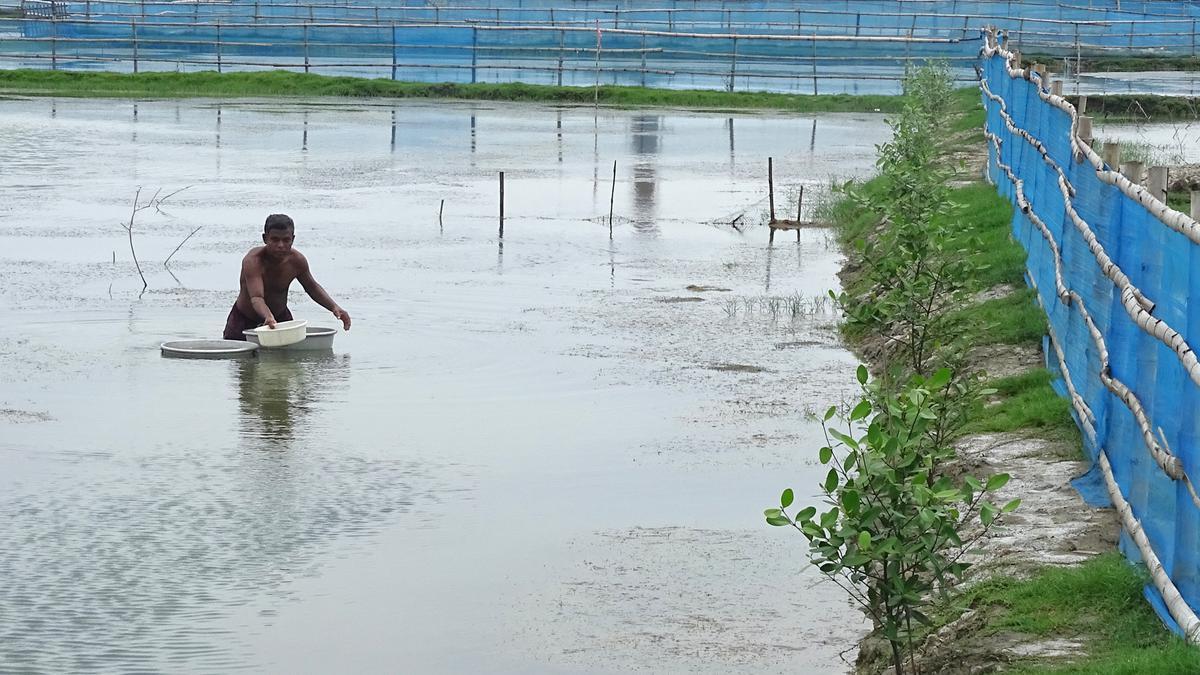
- 17 Oct 2025
In News:
A climate-adaptive aquaculture model from West Bengal’s Sundarbans — the Sustainable Aquaculture in Mangrove Ecosystems (SAIME) initiative — has recently received Global Technical Recognition from the Food and Agriculture Organization (FAO) of the United Nations. This recognition highlights a successful nature-based livelihood model that integrates aquaculture with mangrove restoration.
About the SAIME Initiative
The SAIME programme is a unique multi-stakeholder partnership aimed at promoting sustainable, mangrove-linked shrimp aquaculture while restoring fragile coastal ecosystems. By combining aquaculture practices with mangrove conservation, it seeks to build climate-resilient livelihoods in the vulnerable Sundarbans delta region.
- Focus: Climate-adaptive, ecosystem-based livelihood system
- Key Approach: Integrates brackish-water shrimp farming with mangrove plantation
- Objective:
- Protect mangrove forests
- Enhance biodiversity
- Provide sustainable income to coastal communities
- Implementation Partners:
- Nature Environment & Wildlife Society (NEWS)
- Global Nature Fund (GNF)
- Naturland (Germany-based standards organisation)
- Bangladesh Environment & Development Society (BEDS)
This model demonstrates how community-driven conservation can coexist with economic activity, reducing ecological pressure on mangrove ecosystems while supporting rural incomes.
Significance
Environmental Benefits
- Restores mangrove cover in cyclone-prone Sundarbans
- Enhances carbon sequestration, aiding climate mitigation
- Prevents coastal erosion and acts as a buffer against storm surges
- Supports rich biodiversity, including fish and crustacean populations
Socio-Economic Impact
- Offers a stable income source to local fishers and farmers
- Reduces dependency on destructive practices
- Strengthens climate resilience and livelihood security in vulnerable communities
Mangroves: Key Features
- Salt Tolerance:Specialised roots and salt-excreting mechanisms
- Aerial/Pneumatophore Roots: Enable respiration in waterlogged soils
- Prop Roots: Provide support against tides and cyclones
- Viviparous Seeds: Germinate on parent plant for survival in saline water
- Carbon Storage: Among the most carbon-rich ecosystems globally
Mangroves play a crucial role in mitigating climate change, protecting coasts, and supporting marine life — making their protection vital for ecological balance and disaster resilience.
Fare se Fursat Fixed Airfare Scheme

- 17 Oct 2025
In News:
The Government of India has launched the ‘Fare Se Fursat’ Fixed Airfare Scheme, a first-of-its-kind initiative aimed at providing predictable and transparent airfares on select regional routes. Introduced by the Ministry of Civil Aviation, the scheme reflects the government’s continued push to democratize air travel and enhance regional connectivity.
About the Scheme
- Launched by: Ministry of Civil Aviation & Alliance Air
- Purpose: To eliminate uncertainty associated with fluctuating airfares and promote ease of flying.
- Key Feature:Single, fixed ticket price irrespective of booking date — even for same-day travel.
- Pilot Phase:
- 13 October – 31 December 2025
- Operated on select regional routes
- Airline: Alliance Air, India's government-owned regional carrier
Objective & Rationale
- Address dynamic pricing concerns: Indian aviation typically follows dynamic pricing based on demand and seasonality, often causing high last-minute fares.
- Make air travel accessible: Inspired by the UDAN scheme, the initiative targets middle-class, lower-middle-class, and neo-middle-class passengers, especially from Tier-2 and Tier-3 cities.
- Increase first-time flyers: The scheme aims to build confidence among new travelers by offering predictable fares, reducing financial anxiety linked to last-minute price surges.
Significance
- Supports UDAN (UdeDesh ka AamNagrik) vision of affordable regional connectivity.
- Strengthens last-mile aviation by enabling easier travel from smaller towns.
- Reinforces government's push for passenger-centric aviation policies (e.g., affordable airport cafés launched earlier under UDAN Yatri services).
- Promotes air travel as an everyday mode of transportation, not a luxury.
Why It Matters
- Predictability: Removes uncertainty in ticket prices, encouraging travel planning.
- Accessibility & Inclusivity: Bridges regional air travel gaps and widens aviation access to new socio-economic groups.
- Public-service Focus: Prioritizes passenger welfare over profit maximization, aligning with the vision of “Naye Bharat ki Udaan”.
Mission Drishti
- 17 Oct 2025
In News:
India’s private space sector is set to achieve a major milestone with GalaxEye, a Bengaluru-based space-tech start-up, preparing to launch the world's first multi-sensor Earth observation (EO) satellite, Mission Drishti, in early 2026. The mission marks a significant step toward creating an advanced satellite constellation for real-time, high-precision geospatial intelligence.
About Mission Drishti
- World’s first multi-sensor EO satellite combining Synthetic Aperture Radar (SAR) and high-resolution optical imaging on a single platform.
- Built by GalaxEye — one of India’s leading private space-tech start-ups.
- India’s largest privately-built satellite and the highest-resolution satellite (1.5 m) developed in the country.
- Mass: ~160 kg.
- Underwent successful structural tests at ISRO’s U R Rao Satellite Centre, proving its ability to withstand harsh space conditions.
- Mission Drishti is the first step in deploying a constellation of 8–12 satellites by 2029 (company target: 8–10 in next four years).
Key Features & Technological Significance
- Dual Payload Technology: SAR + optical sensors enable:
- Imaging in all weather conditions
- Day and night coverage
- High-precision, multi-layered data
- High-resolution EO imagery optimized across spatial, spectral, and temporal dimensions.
- Enables actionable multisource imaging intelligence—a capability currently unexplored globally.
According to the company, Mission Drishti opens a new era in satellite imaging by fusing multiple sensing technologies to provide real-time situational awareness.
Applications
Mission Drishti aims to strengthen high-end geospatial capabilities across national and commercial sectors:
|
Sector |
Use-case |
|
Defence& Security |
Border surveillance, tactical intelligence |
|
Disaster Management |
Floods, landslides, cyclone & emergency monitoring |
|
Infrastructure & Utilities |
Structural health monitoring, urban planning |
|
Agriculture |
Crop monitoring, precision farming support |
|
Finance & Insurance |
Risk assessment, disaster claim validation |
The mission aligns with rising global demand for accurate Earth observation data, especially amid geopolitical tensions and climate-driven emergencies.
Significance for India’s Space Ecosystem
- Enhances India’s capabilities in commercial EO intelligence, traditionally dominated by the US & Europe.
- Strengthens private-sector participation under India’s space reforms and IN-SPACe framework.
- Potential to integrate AI and advanced imaging analytics, improving decision-making in governance and industry.
- Boosts India’s aspiration to become a global space-technology provider.
India’s Quantum Breakthrough in Cybersecurity
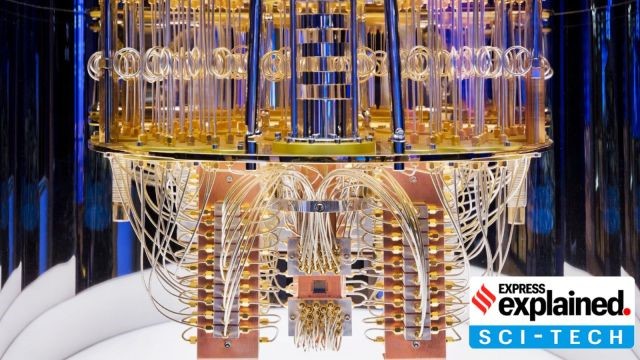
- 17 Oct 2025
In News:
India has achieved a major milestone in quantum technology and cybersecurity. Researchers at the Raman Research Institute (RRI), Bengaluru, have demonstrated and certified the generation of true random numbers using a general-purpose quantum computer.This breakthrough positions India at the forefront of quantum-secure digital infrastructure, marking a key outcome under the National Quantum Mission.
Why Randomness Matters in Digital Security
- Modern encryption — including banking, digital communication, defence networks and authentication systems — relies on random numbers.These numbers form the basis of encryption keys and secure passwords. The more unpredictable the number, the stronger the security.
Current challenge
- Most systems use pseudorandom numbers, produced through algorithms. While highly complex and secure against classical brute-force attacks, they are not fundamentally random. With the advent of quantum computers, which can process data exponentially faster, many of today’s encryption systems may become vulnerable.
The Need for True Quantum Randomness
- Quantum mechanics provides intrinsic unpredictability. In the microscopic world, particles such as photons do not have definite states until measured — creating true randomness, unlike algorithm-based outputs.
- Quantum Random Number Generators (QRNGs) tap this behaviour.However, a persistent problem has been certifying whether the randomness is genuine or manipulated by device flaws or external interference.
- Cybersecurity demands systems that are not just hard to break, but theoretically impossible to break under known physical laws — making device-independent, quantum-certified randomness essential.
India’s Scientific Breakthrough
The RRI team achieved device-independent quantum random number generation and certification, a frontier area globally.
Key Scientific Contributions
- Utilisation of quantum entanglement and temporal correlations to certify randomness
- Demonstration of violation of Leggett-Garg inequality, confirming true quantum randomness
- Execution on a commercial, general-purpose quantum computer — proving real-world applicability beyond controlled lab environments
Earlier global attempts relied on large-scale entanglement experiments requiring hundreds of metres of physical separation.India’s approach achieves equivalent validation using time-separated measurements on a single particle, making it compact and practical.
Significance of the Breakthrough
Technological Impact
- Enables hack-proof encryption and post-quantum security systems
- First globally-relevant breakthrough under India’s National Quantum Mission
- Demonstrates practical, scalable and noise-tolerant quantum technology
Strategic Implications
- Boosts India’s readiness for quantum cyber warfare and digital sovereignty
- Critical for secure defence networks, financial systems, and government communication
- Promotes indigenous capability in a domain dominated by the US, EU and China
Sudden Infant Death Syndrome
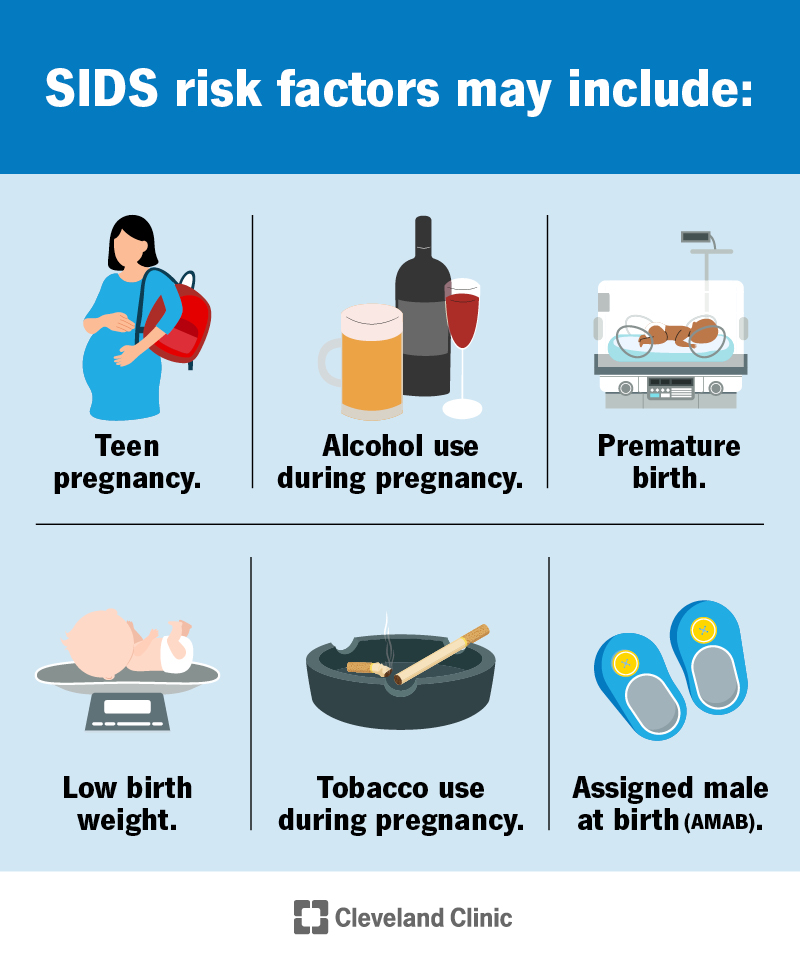
- 16 Oct 2025
In News:
- Sudden Infant Death Syndrome (SIDS) refers to the sudden, unexplained death of an infant below one year of age, even after thorough medical investigation, including autopsy, review of medical history, and examination of the death environment.
- It is a major contributor to infant mortality globally, and October is observed as SIDS Awareness Month to promote public understanding and preventive practices.
Epidemiology and Vulnerable Age Group
- Most SIDS cases occur between 2 to 4 months of age, and around 90% of incidents occur before six months. While it can happen at any time, cases most commonly occur during sleep, typically between midnight and early morning hours. Slightly more male infants are affected compared to females.
- SIDS is the leading cause of death in infants aged 1 month to 1 year in countries like the United States, with approximately 2,500 infant deaths annually.
Understanding SIDS and SUID
SIDS forms part of a broader category termed Sudden Unexpected Infant Death (SUID), which encompasses all sudden infant deaths, including those with clear causes (such as suffocation) and those without identified causes. About half of SUID cases are attributed specifically to SIDS.
Risk Factors and Possible Mechanisms
Although SIDS remains medically unexplained, research suggests a combination of biological vulnerability and environmental triggers during a critical developmental period. Proposed mechanisms include immaturity of the brain regions regulating breathing, heart rate, temperature, and arousal from sleep, as well as possible genetic predisposition.
Recognised risk factors include:
- Premature birth and low birth weight
- Exposure to tobacco smoke or alcohol during pregnancy
- Unsafe sleep environment or sleeping position
- Lack of prenatal care
- Overheating during sleep
- Teenage pregnancy
- Male sex
- Sibling history of SIDS
- Being a twin
- History of apnea episodes
Importantly, vaccines do not cause SIDS; recent studies indicate that timely vaccination may actually reduce SIDS risk by up to 50%.
Prevention and Safe-Sleep Guidelines
While SIDS cannot always be prevented, certain practices can significantly reduce risk. Key recommendations include:
- Always place infants on their backs for sleep.
- Use a firm, flat sleep surface with only a fitted sheet.
- Avoid loose bedding, pillows, toys, and crib bumpers in the sleep area.
- Have the baby sleep in the same room but not the same bed for at least the first six months.
- Avoid smoking, alcohol, and drug exposure during and after pregnancy.
- Maintain a cool sleeping environment and avoid overheating.
- Breastfeeding and the use of pacifiers are associated with reduced risk.
- Stop swaddling once the infant can roll over.
- Provide supervised tummy time while the infant is awake to promote development and prevent flat-head syndrome.
Consumer devices marketed to prevent SIDS, such as breathing monitors, have no proven benefit in preventing deaths.
Crew Escape System
- 16 Oct 2025
In News:
- India’s human spaceflight programme, Gaganyaan, places paramount emphasis on astronaut safety. To achieve this, ISRO has developed a dedicated Crew Escape System (CES) — a rapid emergency mechanism designed to protect astronauts during the most critical phase of a mission: launch and atmospheric ascent.
- Recently, ISRO also developed a cost-effective single-stage test vehicle powered by the Vikas engine specifically to validate this escape system during flight trials.
Purpose and Importance
- In human space missions, crew safety takes priority over mission success. During launch and the initial ascent through the dense atmosphere, the launch vehicle experiences extreme stresses and accelerates to hypersonic speeds. Any malfunction at this stage — especially with rockets using solid boosters that cannot be shut down once ignited — demands immediate crew evacuation.
- The CES is engineered to rapidly detach the crew module from the launch vehicle in the event of an anomaly and move it to a safe distance within seconds.
How the Crew Escape System Works
The Crew Escape System is mounted on the forward end of the rocket and consists of multiple high-burn-rate solid motors that generate more thrust than the launch vehicle, ensuring faster acceleration of the escape module. Once activated, the CES pulls the crew module away, safely distancing it from the failing rocket.
After separation:
- The escape system detaches from the crew module
- A multistage parachute system deploys
- The module gradually decelerates
- Astronauts splash down safely in the sea
Throughout this sequence, the crew remains inside the pressurised module until recovery.
Decision-Making & Safety Systems
- Activation of the CES is controlled by the Integrated Vehicle Health Management (IVHM) system. This network of sensors, software and diagnostics continuously monitors launch vehicle performance and crew module health in real time.
- It detects anomalies, filters out false alarms, and triggers the escape sequence instantly if required.
Types of Crew Escape Systems
Crew escape mechanisms follow two broad designs:
- Puller type — used in Gaganyaan, where the system pulls the crew module away using high-thrust solid motors. Similar systems were used in the U.S. Saturn V, Russia’s Soyuz, and China’s Long March missions.
- Pusher type — used in systems like SpaceX Falcon-9, where small liquid-fuel engines push the spacecraft away.
ISRO adopted the puller-type design due to its proven reliability in high-stress atmospheric escape scenarios.
Impatiens Rajibiana
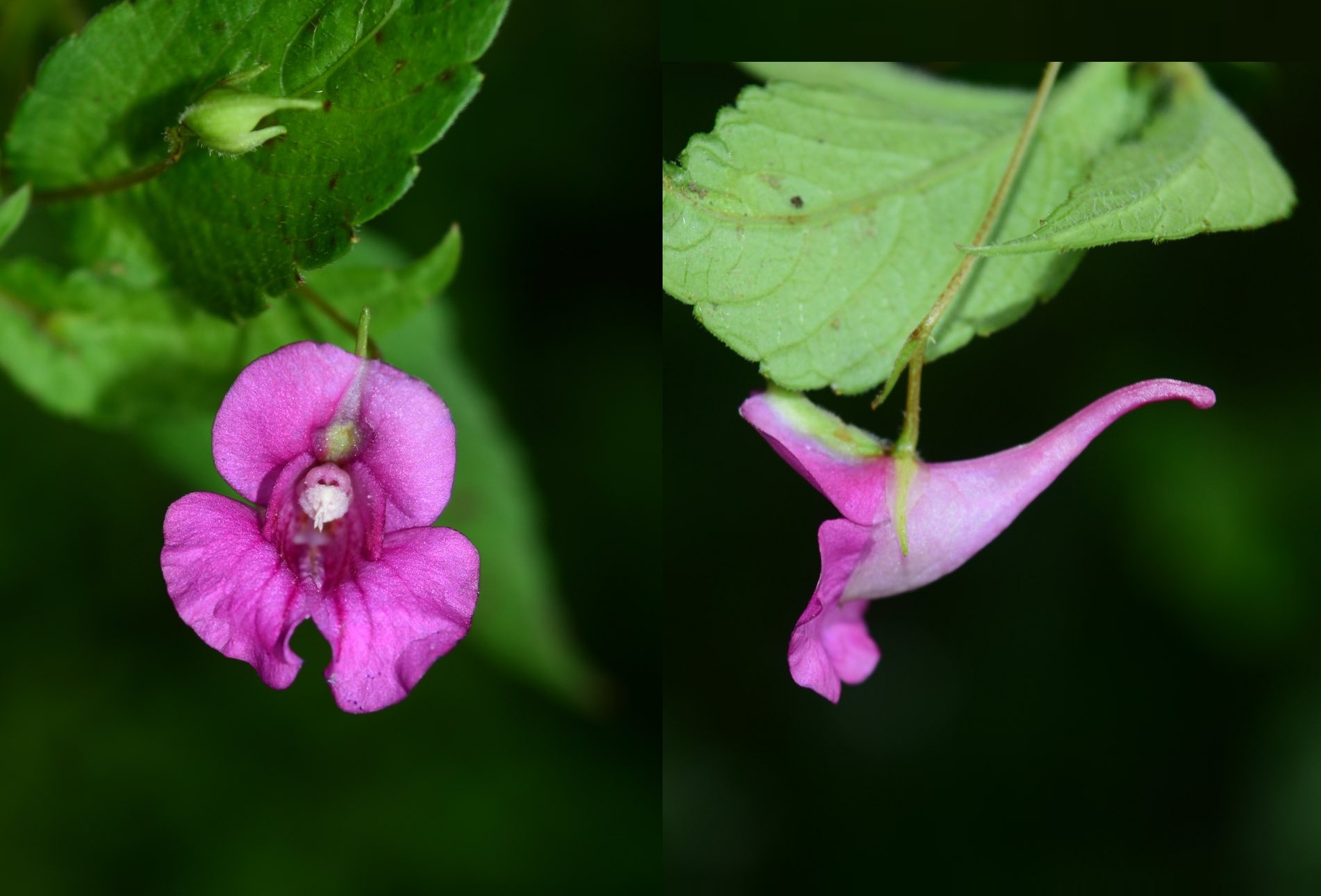
- 16 Oct 2025
In News:
A team from the Botanical Survey of India (BSI) has identified a new species of balsam flower named Impatiens rajibiana in Arunachal Pradesh. The discovery was made in the natural forest areas of Shergaon, West Kameng district, highlighting the region’s rich floral biodiversity.
Key Details and Ecological Significance
- Impatiens rajibiana belongs to the Balsaminaceae family, commonly known as balsams.
- The species was located in moist, shaded habitats at an elevation of over 2,000 metres, indicating its preference for cool, humid, high-altitude forest ecosystems.
- Balsams are known for their delicate flowers and high levels of endemism, often restricted to narrow ecological zones.
- India currently hosts around 230 species of balsams, including the widely known Impatiens balsamina (garden balsam or touch-me-not).
- Arunachal Pradesh has emerged as a hotspot for balsam diversity. Between 2013 and 2017, more than 16 new species of Impatiens were documented from the state, such as Impatiens godfreyi and Impatiens sashinborthakurii, reinforcing the Eastern Himalayas’ status as a key centre of plant discovery.
Conservation Relevance
- The discovery of Impatiens rajibiana underlines the ecological value of the Eastern Himalayan region and the need for continued field surveys and conservation.
- As many balsam species have restricted distribution and small populations, they may be vulnerable to habitat disturbances, climate change, and anthropogenic pressures.
- Protecting fragile mountain ecosystems and promoting biodiversity research remain critical for safeguarding endemic plant species like Impatiens rajibiana.
Astra Mark 2 Missile
- 16 Oct 2025
In News:
- India is set to make a major leap in its air-to-air weapon capability with the Defence Research and Development Organisation (DRDO) upgrading the Astra Mk-2 air-to-air missile.
- The missile’s range is being extended to beyond 200 kilometres, marking a significant improvement over earlier versions and positioning India among the few nations with such long-range Beyond Visual Range (BVR) missile technology.
- This upgrade is part of India’s broader push towards defenceindigenisation under the Aatmanirbhar Bharat vision.
Importance and Context
- The Astra programme reflects India's commitment to reducing dependence on foreign defence systems, strengthening self-reliance, and enhancing air superiority capabilities.
- The Astra Mk-1, with a range of around 90–110 km, has already been successfully inducted by the Indian Air Force (IAF) and proven operationally, including during Operation Sindoor.
- The Mk-2 variant, now under advanced development, will boost India's long-range interception capability, enabling IAF aircraft to engage enemy targets from well outside hostile air defence zones—an essential capability in modern aerial combat.
Key Features and Technological Advancements
- The Astra Mk-2 will be an extended-range, next-generation BVR missile capable of striking targets over 200 km away.
- It will employ a dual-pulse solid rocket motor, which provides an initial burst of acceleration followed by a second ignition phase for enhanced end-game manoeuvrability and precision. This propulsion design ensures higher terminal speed and greater accuracy compared to single-pulse missiles.
- The missile is expected to fly at speeds close to Mach 4.5 and will be equipped with a fully indigenous Radio Frequency (RF) seeker, fibre-optic gyroscopes, and advanced electronic countermeasure (ECM) resistance, making it highly effective in electronic warfare environments.
- Physically, the missile will be larger and heavier than its predecessor, with an estimated diameter of around 190 mm and a weight of approximately 175 kg. Its enhanced aerodynamic design will allow superior range and altitude engagement.
Operational Deployment and Strategic Impact
- Following successful development and testing, the Astra Mk-2 will be integrated with frontline fighter jets such as the Sukhoi-30MKI and LCA Tejas. The IAF plans to procure an initial stock of nearly 700 missiles, ensuring high operational availability.
- The missile’s extended range capability will serve as a key deterrent against regional adversaries. It is viewed as a counter to China’s PL-15, and it significantly surpasses Pakistan’s PL-15E, which has a maximum range of around 145 km. This enhancement will allow Indian pilots to neutralise hostile aircraft long before they pose a threat.
Live Cases Dashboard of the Legal Information Management and Briefing System (LIMBS)

- 16 Oct 2025
In News:
The Union Minister of State (Independent Charge) for Law and Justice recently inaugurated the Live Cases Dashboard under the Legal Information Management and Briefing System (LIMBS) at Shastri Bhawan, New Delhi. This marks a key advancement in the government's efforts to enhance transparency, efficiency, and coordination in legal case management.
About the Live Cases Dashboard
- A digital interface providing real-time visualisation of court cases involving the Government of India.
- Displays upcoming hearings — particularly cases scheduled within the next seven days — across the Supreme Court, High Courts, and other judicial bodies.
- Enables proactive decision-making and inter-ministerial coordination, helping departments prepare timely responses.
About LIMBS
- Web-based application designed to monitor litigation where the Union of India is a party.
- Launched for central ministries, departments, CPSUs and autonomous bodies in 2016, with a major upgrade in January 2020.
- Operates under the Department of Legal Affairs, Ministry of Law & Justice.
- Allows 24x7 access to government officials, advocates, arbitrators, nodal officers, and ministry users to upload and track case information.
- Offers a dashboard-based system providing a snapshot of legal matters to each stakeholder institution.
Significance
- The Government of India remains one of the largest litigants.
- LIMBS and its Live Cases Dashboard aim to reduce litigation burden in line with the vision of “Minimum Litigation, Maximum Governance”.
- Enhances transparency, accountability, and judicial efficiency.
- Promotes data-driven governance, timely legal response, and improved public resource management.
Blue Flag Certification
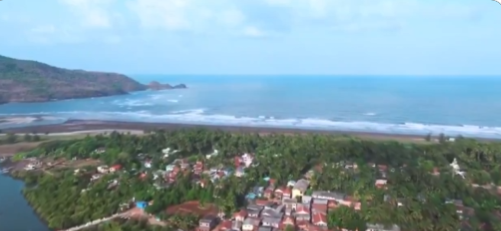
- 15 Oct 2025
In News:
- Five beaches in Maharashtra have recently been awarded the prestigious Blue Flag certification, a global eco-label that recognises high standards in environmental management, cleanliness, and sustainable tourism.
- The certified beaches include Shrivardhan and Nagaon (Raigad district), Parnaka (Palghar), and Guhagar and Ladghar (Ratnagiri district). The announcement was made by the state government, marking a significant achievement in coastal conservation and eco-tourism promotion.
About Blue Flag Certification
The Blue Flag is an internationally recognised eco-label awarded by the Foundation for Environment Education (FEE), Denmark. Established in France in 1985 and expanded globally in 2001, it is regarded as one of the world's most prestigious voluntary awards for beaches, marinas, and sustainable tourism boats.
Criteria and Objectives
To receive the Blue Flag, sites must meet 33 stringent criteria across key focus areas:
- Water quality
- Environmental management
- Environmental education and awareness
- Safety and essential services
The certification aims to promote sustainable development in coastal and freshwater ecosystems by ensuring high cleanliness standards, protecting natural habitats, and encouraging responsible tourism practices. Its mission centers on environmental education, conservation, and sustainable tourism development.
Blue Flag Beaches in India
With the addition of the five Maharashtra beaches, India continues to expand its presence on the global sustainable tourism map. Previously recognised Indian Blue Flag beaches include:
- Shivrajpur (Gujarat)
- Ghoghla (Diu)
- Kasarkod and Padubidri (Karnataka)
- Kappad (Kerala)
- Rushikonda (Andhra Pradesh)
- Golden Beach (Odisha)
- Radhanagar (Andaman & Nicobar)
- Kovalam (Tamil Nadu)
- Eden (Puducherry)
- Minicoy Thundi and Kadmat (Lakshadweep)
Significance
This recognition underscores India's ongoing efforts to align coastal tourism with global environmental standards, enhance beach amenities, and promote eco-friendly tourism models. It also strengthens India's initiative to improve coastal governance under programmes like the Integrated Coastal Zone Management Project and the government's broader sustainability mission.
NATO’s ‘Steadfast Noon’ Exercise
- 15 Oct 2025
In News:
NATO is set to conduct its annual nuclear deterrence drill, ‘Steadfast Noon’, with the 2025 edition hosted by the Netherlands. The exercise, a key component of NATO’s nuclear defence strategy, underscores the alliance’s commitment to maintaining credible deterrence capabilities amid evolving global security challenges.
About Steadfast Noon
Steadfast Noon is a long-standing annual nuclear readiness exercise conducted by the North Atlantic Treaty Organization (NATO). It serves as a crucial test of the alliance’s nuclear deterrence procedures, operational coordination, and preparedness to defend member states against strategic threats.
Key Features
- Host Country (2025): Netherlands
- Main Operating Base:Volkel Air Base, Netherlands
- Additional Bases:KleineBrogel (Belgium), Lakenheath (UK), Skrydstrup (Denmark)
- Participants: 14 NATO nations including the U.S., Germany, Poland, Finland, Belgium, the UK, the Netherlands, and Denmark
- Aircraft Involved: ~70–71 aircraft, including dual-capable fighter jets like the German Tornado and U.S./Dutch F-35s
- Nature of Exercise: Training for nuclear-mission capable aircraft — no live nuclear weapons are carried or flown
Dual-capable aircraft are equipped to deliver both conventional and nuclear payloads, making this exercise significant for testing operational flexibility and readiness.
Purpose and Strategic Context
The exercise is intended to:
- Validate operational procedures for NATO’s nuclear deterrent
- Strengthen coordination among allied air forces
- Signal commitment to collective defence under Article 5 of the NATO Treaty
- Deter adversaries by demonstrating credible nuclear readiness
Non-Participation of France
France does not take part in Steadfast Noon as it maintains an independent nuclear command and does not integrate its nuclear forces into NATO’s command-and-control system.
Armenia Joins IUCN
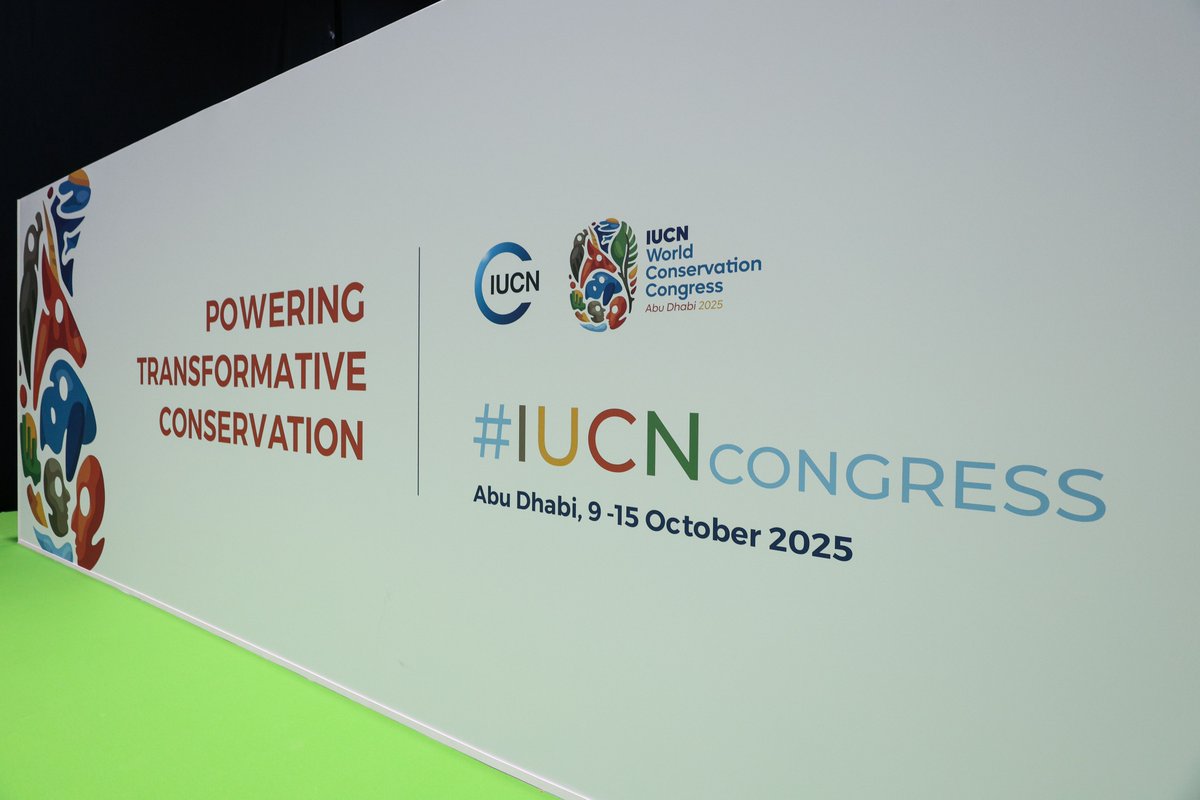
- 15 Oct 2025
In News:
Armenia has recently become the newest State Member of the International Union for Conservation of Nature (IUCN), marking a key milestone in its environmental policy direction. The announcement was made at the IUCN World Conservation Congress in Abu Dhabi, reflecting Armenia’s growing commitment to global biodiversity protection, sustainable development, and alignment with international conservation frameworks.
Significance of Membership
By joining IUCN, Armenia gains access to global research, conservation tools, and international collaborations. This step also supports its preparations to host COP17 of the Convention on Biological Diversity in 2026, signalling its intent to play a leadership role in global biodiversity discussions.
IUCN leadership has welcomed Armenia’s membership, noting that it aligns with the country’s efforts to expand protected areas, restore degraded ecosystems, and bring its environmental laws in line with international standards.
Armenia’s Biodiversity and Conservation Efforts
Situated at the crossroads of Europe and Asia, Armenia hosts varied ecosystems—from alpine meadows and mountain forests to semi-deserts and freshwater bodies. These habitats support several threatened and endemic species, including:
- Caucasian leopard (Critically Endangered)
- Bezoar goat
- Sevan trout, native to Lake Sevan
The country has made progress in environmental governance through initiatives such as its National Biodiversity Strategy and Action Plan and the Red Book of Armenia. Its conservation agenda includes forest restoration across 12.9% of its territory by 2030, strengthening biodiversity monitoring, and expanding protected areas.
Geographical and Environmental Profile of Armenia
- Location: Southern Caucasus; landlocked
- Borders: Georgia (north), Azerbaijan (east), Iran (southeast), Turkey (west)
- Terrain: Dominated by the Lesser Caucasus Mountains; volcanic soils rich in nitrogen, potash, phosphates
- Highest Peak:Mount Aragats (4,090 m)
- Climate: Highland continental — hot summers, cold winters
- Rivers: Aras, Hrazdan, Arpa, Vorotan — key for irrigation and hydropower
- Major Lake:Lake Sevan, Armenia’s largest freshwater body
- Resources: Small deposits of copper, gold, molybdenum, zinc, bauxite
- Capital & Language: Yerevan; Armenian
LEAPS 2025
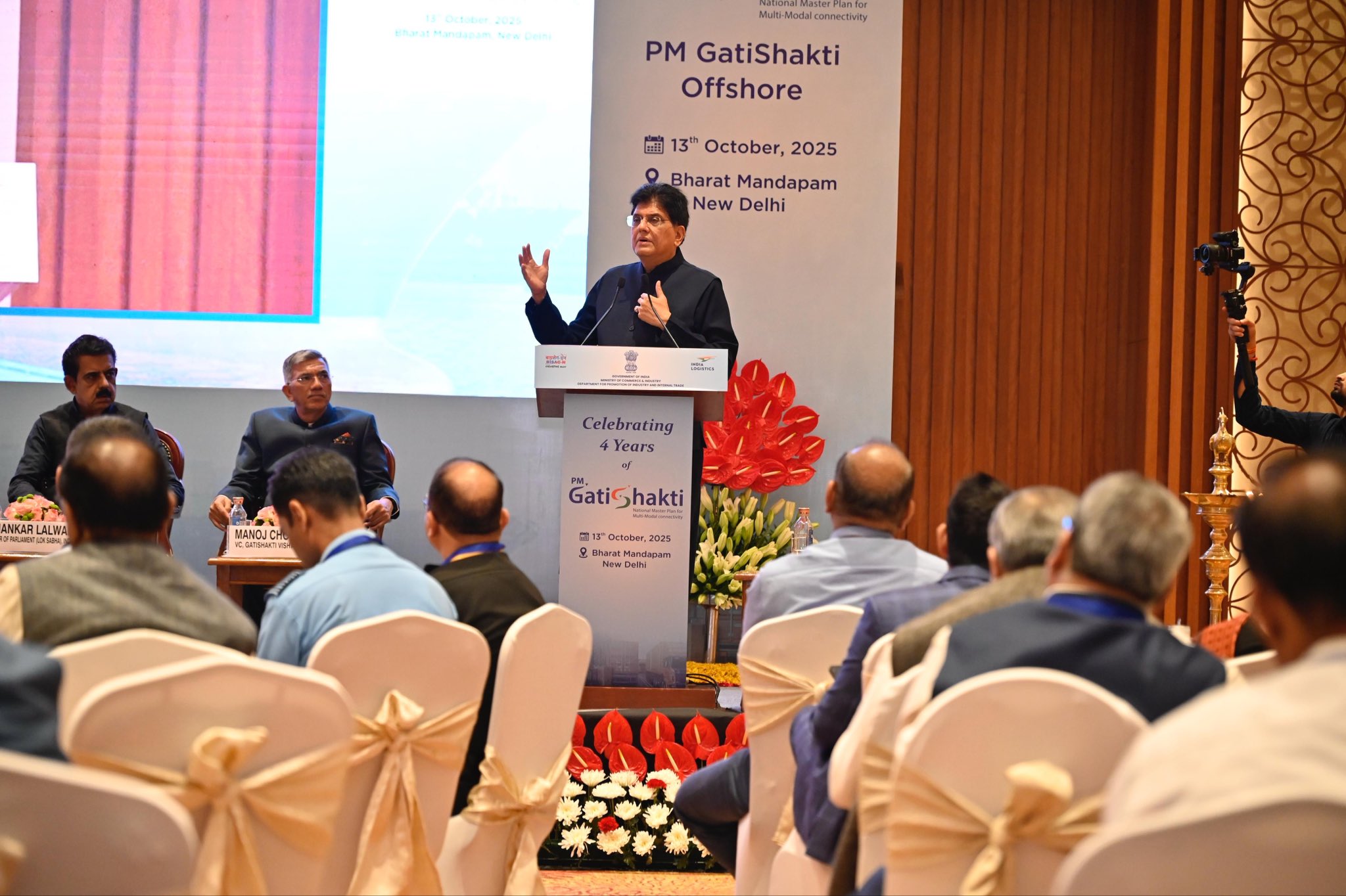
- 15 Oct 2025
In News:
The Union Minister for Commerce and Industry recently launched the Logistics Excellence, Advancement, and Performance Shield (LEAPS) 2025 in New Delhi, marking a major initiative to accelerate reforms and innovation in India’s logistics ecosystem. The launch also coincided with the 4th anniversary of the PM GatiShakti initiative, reaffirming the government’s commitment to building an efficient, integrated, and future-ready logistics network.
About LEAPS 2025
LEAPS 2025 is a flagship programme of the Department for Promotion of Industry and Internal Trade (DPIIT) under the Ministry of Commerce and Industry. It seeks to benchmark logistics excellence across the country by recognising outstanding performance, leadership, and innovative practices within the logistics sector.
Objectives
- Promote global-standard logistics performance and efficiency
- Strengthen competitiveness in line with the National Logistics Policy (NLP)
- Encourage sustainability and ESG-centric logistics models
- Foster collaboration among Government, Industry, and Academia
- Support Make in India, Atmanirbhar Bharat, and the vision of Viksit Bharat 2047
Key Focus Areas
- Logistics innovation and technology adoption
- Green logistics and sustainable supply chain practices
- Ease of movement through multimodal connectivity
- Capacity building and skilling in logistics and supply chain management
Coverage and Award Categories
The initiative spans a wide spectrum of logistics stakeholders, including:
- Freight operators (air, road, maritime, and rail)
- Multimodal transport operators
- Industrial, consumer, and agricultural warehousing firms
- MSMEs and logistics start-ups
- Academic and training institutions
- E-commerce logistics service providers
- Third-party and freight forwarding operators
A total of 13 award categories have been introduced, targeting core logistics, MSMEs, start-ups, institutions, and special service providers. Registrations are open on the RashtriyaPuraskar Portal until 15 November 2025.
Alignment with National Logistics Vision
LEAPS 2025 builds on the strategic framework of the National Logistics Policy (2022) and PM GatiShakti, which aims to integrate road, rail, air, and waterways to reduce logistics costs and improve last-mile connectivity. PM GatiShakti—backed by a ?100-trillion multi-modal infrastructure development vision—addresses infrastructure gaps, optimises multimodal movement, and strengthens India’s position in global supply chains.
Significance
- Boosts logistics efficiency and transparency
- Encourages innovation and technology in supply chain operations
- Strengthens export readiness and reduces logistics costs
- Promotes sustainable logistics and environmental stewardship
- Enhances India's competitiveness in global trade
Virtual Museum of Stolen Cultural Objects
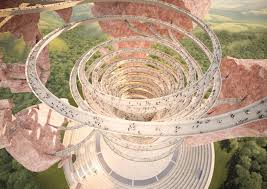
- 15 Oct 2025
In News:
Recently, UNESCO launched the world’s first Virtual Museum of Stolen Cultural Objects during the MONDIACULT 2025 Conference. This global digital initiative marks a vital step in protecting cultural heritage, raising awareness about illicit trafficking, and facilitating the return of stolen artefacts to their countries of origin.
Key Features and Objectives
The virtual museum serves as an immersive digital platform reconnecting community with cultural treasures lost to theft, smuggling, and colonial-era plundering. Unlike traditional museums, its purpose is not to accumulate artefacts but to systematically empty itself by aiding restitution efforts. Visitors can explore high-resolution 2D and 3D reconstructions of objects, along with contextual history and cultural significance.
The project contributes to the goals of UNESCO’s 1970 Convention on preventing illicit trafficking of cultural property and aligns with a recent UN General Assembly resolution urging stronger international cooperation to restore stolen heritage.
Institutional Framework
- Developed by UNESCO in collaboration with INTERPOL
- Financially supported by Saudi Arabia; additional contribution from the United States
- Announced earlier at MONDIACULT 2022 and launched in September 2025
- Currently displays ~240 missing cultural objects from 46 countries
- Represents diverse cultural forms: manuscripts, sculptures, ritual objects, architectural fragments, artworks, coins, and archaeological finds
The digital experience is designed like a baobab tree, symbolizing resilience and interconnectedness, created by renowned Burkinabe architect Francis Kéré. The platform includes:
- Gallery of Stolen Objects
- Auditorium
- Return & Restitution Room, highlighting successful repatriation stories
India’s Contribution and Significance
Three culturally significant Indian artefacts are showcased:
- 9th-century sandstone sculptures of Nataraja and Brahma from Mahadev Temple, Pali (Chhattisgarh)
- Stone sculpture of Bhairava (undated)
These items reflect India’s rich temple heritage and spiritual aesthetic. Their listing reinforces India’s continuing struggle against antiquities smuggling.
India has intensified its efforts to recover stolen heritage in recent years. Since 2014, over 600 antiquities have been brought back to India. The leadership has repeatedly emphasized ethical cultural restitution, with an official stance that “no museum should hold artefacts acquired unethically.”
Global and Youth Focus
The platform especially targets youth and digital natives, using interactive storytelling to:
- Promote cultural sensitivity
- Highlight community identities tied to artefacts
- Encourage global cooperation on heritage protection
Mission for Aatmanirbharta in Pulses (2025–26 to 2030–31)
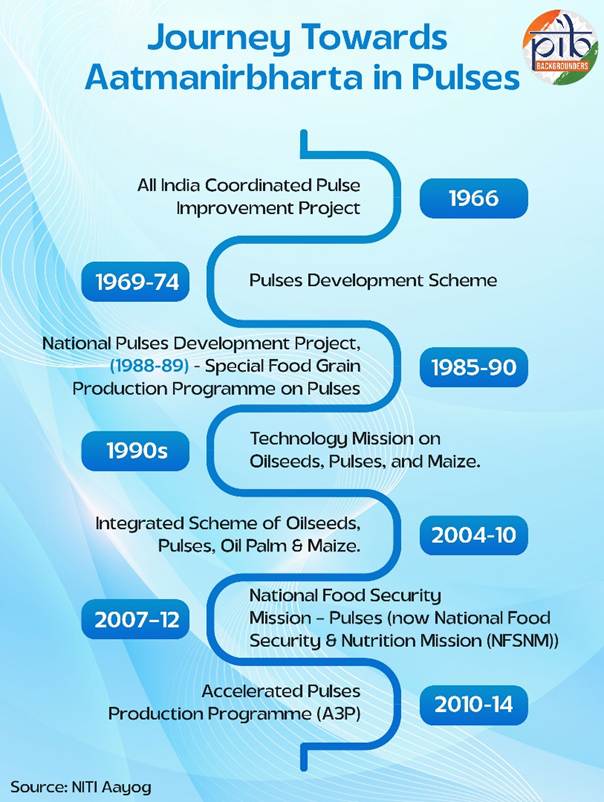
- 14 Oct 2025
In News:
- India has launched an ambitious Mission for Aatmanirbharta in Pulses (2025–26 to 2030–31),signalling a major push toward self-sufficiency in pulses and farmer-centric agricultural transformation.
- Announced during a special programme at the Indian Agricultural Research Institute (IARI), the Mission carries an outlay of ?11,440 crore and aims to meet India’s pulses requirement entirely through domestic production by December 2027.
- Pulses hold strategic importance for India as they ensure nutritional security, enrich soil through nitrogen fixation, support rural livelihoods, and reduce import bills. Despite being the world’s largest producer and consumer, India's demand-supply gap has led to significant imports—47.38 lakh tonnes in 2023-24. The Mission seeks to eliminate this dependence and strengthen farmer income security.
Key Targets (by 2030–31)
- Total production:350 lakh tonnes
- Cultivation area:310 lakh hectares (including 35 lakh ha rice fallows)
- Yield target:1,130 kg/ha
- Beneficiaries: Nearly 2 crore farmers
- Import elimination by Dec 2027
Core Components of the Mission
Seed & Technology Push
- 126 lakh quintals of certified seeds
- 88 lakh free seed kits
- Deployment of high-yielding, pest-resistant, climate-resilient varieties
- Launch of SATHI Portal (Seed Authentication, Traceability & Holistic Inventory) for seed lifecycle transparency
Assured MSP & Farmer Security
- 100% procurement of Tur, Urad, and Masoor for four years
- Procurement support via NAFED & NCCF
- Linked to PM-AASHA for guaranteed price support and reduced market risk
Cluster-Based Integrated Approach
- "One Block – One Seed Village" model
- FPO-driven clusters to streamline seed production & marketing
- Mechanization, soil health management, and balanced fertilization
- Agronomy support from ICAR, KVKs & state agriculture departments
Value Chain Strengthening
- 1,000 processing & packaging unitsincentive: up to ?25 lakh per unit
- Focus on storage, processing, branding, and market linkages
Social and Nutrition Focus
- Inclusion of pulses in PDS, ICDS, Mid-Day Meal schemes
- Strengthening food-based welfare with protein security
NITI Aayog Recommendations Integrated
- Expansion into rice fallows
- Cluster-based cultivation & seed hubs
- “One Block–One Seed Village”
- Data-driven monitoring through SATHI
- Public procurement strengthening at grassroots
- Climate-resilient, short-duration pest-resistant varieties
Strategic Significance
- Supports Vision 2047&Viksit Bharat
- Strengthens food sovereignty & rural employment
- Saves foreign exchange by cutting pulse imports
- Enhances soil fertility & climate resilience
- Boosts farmer incomes and reduces agrarian vulnerability
IUCN Kenton Miller Award 2025
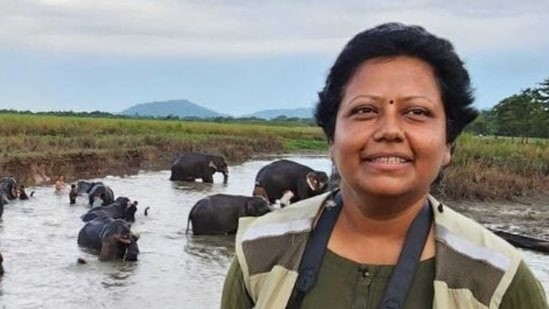
- 14 Oct 2025
In News:
India has achieved a landmark moment in global conservation as Dr. Sonali Ghosh, Field Director of Kaziranga National Park and Tiger Reserve (Assam), became the first Indian to receive the prestigious IUCN WCPA Kenton Miller Award 2025. The honour was announced at the IUCN World Conservation Congress in Abu Dhabi, highlighting India’s rising leadership in biodiversity governance and protected-area innovation.
About the IUCN Kenton Miller Award
- Instituted: 1999
- Presented by:IUCN World Commission on Protected Areas (WCPA)
- Named after: Dr. Kenton R. Miller, eminent conservationist & former IUCN Director-General
- Purpose:Recognisesoutstanding innovation and excellence in the sustainability and governance of protected areas
- Eligibility: Protected-area managers, researchers, community/indigenous conservation practitioners
- Award Components:
- USD 5,000 grant
- Global citation
- Sponsored participation at the IUCN Congress
Significance of Dr. Ghosh’s Contribution
Dr. Ghosh has been awarded for pioneering inclusive and sustainable protected-area management across the Kaziranga-Orang-Manas landscape. Key initiatives include:
- Community-centric conservation: Empowering local and indigenous communities as co-stewards
- Eco-tourism models: Ensuring livelihood security while safeguarding biodiversity
- Anti-poaching and habitat security: Strengthening surveillance and ecological connectivity
- Gender inclusion: Promoting women’s participation in frontline conservation forces
Her leadership reflects India’s approach to biodiversity protection through grassroots participation, science-based governance, and livelihood integration.
Broader Context: India at the IUCN Congress
At the Congress, India reiterated its commitment to global environmental cooperation. Union Minister Kirti Vardhan Singh engaged with international delegates and IUCN leadership on advancing shared conservation goals, reinforcing India's stance as a proactive global environmental actor.
About IUCN and the World Conservation Congress
- Founded: 1948
- HQ: Switzerland
- Global network of governments, NGOs, and experts from 160+ countries
- World Conservation Congress: Held every four years to set global biodiversity priorities
Previous Winner (2023)
- Maria del Carmen Garcia Rivas (Mexico) – Honoured for community-led management of marine protected areas.
International Purple Fest 2025
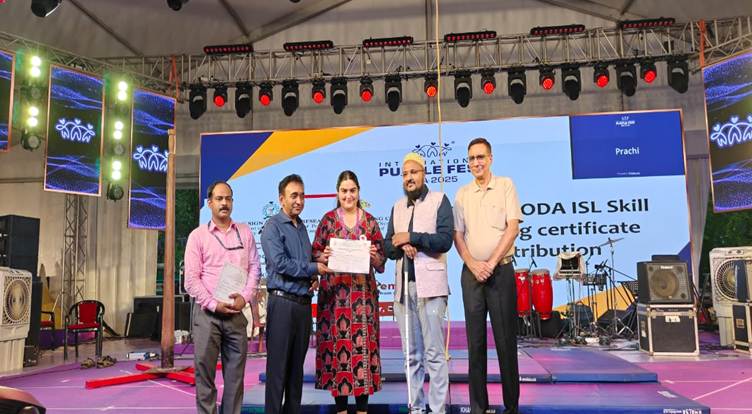
- 14 Oct 2025
In News:
- The International Purple Fest 2025, held in Goa reaffirmed India’s commitment to disability inclusion, accessibility, and empowerment.
- Organized by the Department for Empowerment of Persons with Disabilities (DEPwD) in partnership with the State Commissioner for Persons with Disabilities, Government of Goa, the Ministry of Social Justice & Empowerment, and United Nations India, the Fest promoted the vision of “Inclusion as a Movement.”
- The event positioned inclusive thinking and universal design as the foundation for education, skilling, and social participation of persons with disabilities (PwDs).
Key Initiatives Launched
1. IELTS Training Handbook for Persons with Disabilities
- Developed by Believe in the Invisible (BITI) with DEPwD support
- Authored by Anjali Vyas, British Council-certified trainer
- India’s first comprehensive accessible IELTS guide for candidates with visual, hearing, locomotor, and other disabilities
- Features:
- Step-by-step learning modules, skill-building tools, and lesson plans
- Accessible practice exercises, time-management support, grammar and vocabulary tips
- Integrated Indian Sign Language (ISL) video links
- Objective: Promote equitable access to global education and skill mobility
2. RPL Certification in ISL Interpretation
- Conducted by Indian Sign Language Research and Training Centre (ISLRTC) under the Skill Training Initiative of DEPwD
- Trained and evaluated SODA (Siblings of Deaf Adults) and CODA (Children of Deaf Adults) from across India
- First batch completed in August 2025, certificates to be awarded on 3 December 2025 (International Day of PwDs)
- Significance: Expands India’s certified ISL interpreter pool and formalizes community-based linguistic skills
3. Specialized Training in American & British Sign Languages
- One-month programme by ISLRTC commencing 3 December 2025
- Focus: Fundamentals of American Sign Language (ASL) and British Sign Language (BSL) — grammar, syntax, vocabulary
- Aim: Provide international exposure to Indian ISL professionals and enhance global employment opportunities
Significance
- Strengthens the National Education Policy’s inclusion mandate
- Builds skilled interpreters to meet growing demand in education, healthcare, public services, and courts
- Promotes disability-inclusive skilling aligned with the Rights of Persons with Disabilities Act, 2016
- Enhances India’s visibility in global disability rights discourse
Operation Golden Sweep

- 14 Oct 2025
In News:
The Directorate of Revenue Intelligence (DRI) has successfully dismantled a sophisticated international gold smuggling syndicate through “Operation Golden Sweep” at Mumbai’s Chhatrapati Shivaji Maharaj International Airport. The enforcement action, based on precise intelligence inputs, reflects India’s strengthened efforts to curb illicit financial flows and protect economic security.
Key Highlights
- Gold Seized: 10.488 kg of 24-carat gold
- Estimated Value: ?12.58 crore
- Arrests: 13 individuals — including foreign nationals (Bangladesh & Sri Lanka), airport staff, handlers, and the key mastermind
- Objective: Disrupt organised smuggling networks that erode foreign exchange reserves and threaten national security
Modus Operandi
The syndicate used an advanced and covert smuggling technique:
- Transit passengers flying from Dubai to Singapore, Bangkok, and Dhaka, routing via Mumbai, served as carriers
- Gold was concealed in egg-shaped wax capsules internally
- On arrival, gold was discreetly handed to complicit airport personnel within the international departure zone
- Airport insiders then smuggled the gold out and delivered it to handlers, who coordinated with the mastermind based in Mumbai and Dubai
This exposure underscores a rising insider threat in critical aviation infrastructure, where organised networks exploit privileged access.
Significance of the Operation
- Demonstrates DRI’s intelligence-driven enforcement, rapid execution, and inter-agency coordination
- Highlights evolving trade-based and route-based smuggling tactics
- Reinforces India's commitment to financial integrity, supply-chain security, and national economic interests
IUCN World Heritage Outlook 2025
- 14 Oct 2025
In News:
- The IUCN World Heritage Outlook 4, to be launched at the IUCN World Conservation Congress 2025 in Abu Dhabi, represents the world’s most comprehensive periodic evaluation of the conservation status of UNESCO natural and mixed World Heritage Sites.
- Conducted every 3–5 years by the International Union for Conservation of Nature (IUCN) and the World Commission on Protected Areas (WCPA), it provides an independent, transparent assessment of protection efforts, threats, and future prospects for these globally significant ecosystems.
Purpose and Significance
The Outlook functions as a global conservation barometer designed to:
- Monitor the state of conservation of natural World Heritage Sites
- Highlight exemplary site management and transfer of best practices
- Provide early warnings for ecological degradation and governance failures
- Bridge data gaps through expert-led evaluation and advanced monitoring tools
- Showcase the societal and ecological benefits of natural heritage, including livelihoods, disaster resilience, and carbon storage
This mechanism complements UNESCO’s statutory monitoring under the 1972 World Heritage Convention, strengthening global efforts to realize the Kunming–Montreal Global Biodiversity Framework (KM-GBF) targets by 2030.
Global Conservation Outlook: Key Findings (2025)
- ~65% of sites show stable or improving health since 2020, reflecting enhanced governance and restoration actions. Example: Galápagos Islands, Yellowstone National Park
- Over 80% of sites face direct climate threats—coral bleaching, glacier retreat, wildfires. Example: Great Barrier Reef
- ≈60% experience pressures from invasive species, habitat loss, and unsustainable resource use
- Marine sites like Komodo National Park (Indonesia) and Aldabra Atoll (Seychelles) show progress through sustainable tourism and science-based management
- Technology integration (AI, satellite mapping, eDNA) is improving real-time monitoring. Example: AI-enabled wildlife tracking in Okavango Delta
- Around 15 sites have moved into the Danger List due to conflict, pollution, and climate impacts
- Natural World Heritage sites hold ~10% of global terrestrial carbon, underlining their climate role
Natural World Heritage: Global Profile (2024)
- 271 sites with natural Outstanding Universal Value
- 231 natural, 40 mixed
- 22% of all World Heritage properties (1,223 total)
- Over 470 million hectares protected across land and sea
- Represent ~8% of global protected area coverage
- Spread across 115 countries
- Africa: 47
- Asia-Pacific: 85
- Europe & North America: 83
- Latin America & Caribbean: 47
- Arab region: 9
- 18 transboundary sites; 15 in Danger List
India: Trends and Insights
India hosts 7 natural and mixed World Heritage Sites, spanning the Himalayas to coastal wetlands, constituting ~1.5% of global natural WH coverage.
Positive developments
- Kaziranga&Manas: Improved biodiversity and anti-poaching success through community stewardship and regulated ecotourism
Sites of concern
- Sundarbans: Declining mangroves due to salinity rise, cyclones, and sea-level change
- Western Ghats: Pressures from mining, infrastructure, and land-use conflicts
- Nanda Devi & Great Himalayan National Park: Glacial melt and invasive species affecting Himalayan watersheds
Policy support
- Wildlife (Protection) Amendment Act, 2022
- LiFE Mission for sustainable lifestyles aligned with KM-GBF
- Funding gaps: ~30–40% higher financial allocation needed, especially for marine and transboundary sites
Major Challenges
|
Challenge |
Impact |
|
Climate change |
Coral bleaching, glacial retreat, desertification |
|
Unsustainable development |
Habitat fragmentation, tourism pressure |
|
Funding shortfalls |
Inadequate staffing, weak surveillance |
|
Governance issues |
Overlapping mandates, weak enforcement |
|
Biodiversity data gaps |
Limits adaptive and real-time conservation |
Recommendations
- Climate-resilient planning: Integrate heritage into national climate strategies. Example: Aligning LiFE and National Adaptation Fund with site targets
- Green financing: Carbon credits, biodiversity funds, CSR, eco-investment
UNDP–GEF BIOFIN as model - Local and Indigenous partnership: Community co-management and benefit-sharing. Example: Eco-Development Committees in Manas and Periyar
- Tech-enabled conservation: AI surveillance, remote sensing, eDNA, drones. Example: IUCN Global Ecosystem Atlas initiative
- Transboundary cooperation: Joint research and ecological corridors. Example: India–Nepal Terai Arc Landscape
Viksit Bharat Buildathon 2025
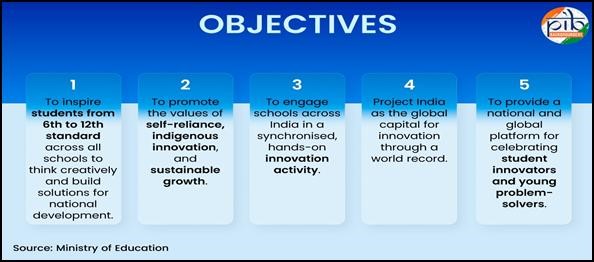
- 13 Oct 2025
In News:
The Viksit Bharat Buildathon 2025 is a nationwide innovation movement being organised by the Department of School Education & Literacy (DoSEL), Ministry of Education, in collaboration with Atal Innovation Mission, NITI Aayog.
- This largest-ever school hackathon aims to strengthen the culture of innovation at the school level by encouraging students to ideate or build prototypes on four themes: Atmanirbhar Bharat, Swadeshi, Vocal for Local, and Samriddh Bharat.
- The Buildathon aims to foster innovation, creativity, and problem-solving among our youth so that they become key drivers of a prosperous, developed, and self-reliant India.
The Buildathon will provide hands-on, experiential learning in line with the National Education Policy (NEP) 2020. Participation is inclusive with special focus on Aspirational Districts, Tribal and Remote Regions.
Key Features
- Dedicated Portal: There is a national portal for registration and submission of final entries (ideas or prototypes)
- Mode of Participation: A team of 3-5 students will participate in the Buildathon and submit entries (ideas/prototypes) in the form of videos. There will be no limit on the number of teams from a school.
- Mentorship Support: Dedicated support will be provided by volunteers and mentors from Incubation Centres, Mentor of Change Network, Higher Education Institutions, and Corporates to help students build their projects at the school level.
- National Live Event: National level virtual live streaming session will be organised, which shall be joined by all schools (6th to 12th standard).
- Global Streaming: The event will be streamed on nationwide news and media channels.
- Inclusive Spotlight: A Special spotlight will be given to schools from Aspirational Blocks, Tribal Regions, Frontier Villages, and Remote Areas.
- District & State-Level Events: Schools will conduct Innovation activities. States are encouraged to organise community level innovation events inviting multiple schools and dignitaries.
- Submission of Entries: Post-event, schools will submit videos of their innovation entries (Ideas or Prototypes).
How to Participate
- Eligibility: Participation is open to all school students from class 6-12, across India. Students must form a team of 3-5 members from same schools. Students can register with the help of their teachers. There is no restriction on the number of teams per school.
- Registration of Team: Schools/teachers have to encourage students to form teams and then register their teams on the official Buildathon portal after which a unique registration ID will be generated for each team. The Registration Link for schools for Viksit Bharat Buildathon is - vbb.mic.gov.in
- Selection of Theme: Each team will need to choose one out of the four Buildathon themes and identify any problem statement.
- Brainstorm & Build: The team will ideate to solve community problems.
- Prepare for Submission: Teams will be required to create a 2–5 minute video explaining the problem it is solving, the innovative solution/prototype they have created, how it works and its possible impact.
- Submission: The project video/ summaries have to be submitted on the Portal within the submission window of Oct. 13 to Oct. 31, 2025
Awards
- A panel of experts will evaluate the entries, and the top student teams will be awarded prizes. These schools and students will receive long-term support through corporate adoption, mentorship, and resources to further strengthen their innovations.
- There will be an Awards Pool of Rs. 1 Crore, with 10 National Level winners, 100 State level winners and 1000 District level winners.
AI for Inclusive Societal Development
- 13 Oct 2025
In News:
- NITI Aayog has released a landmark study titled “AI for Inclusive Societal Development”, shifting India’s artificial intelligence discourse toward the informal workforce, which constitutes the backbone of the national economy. This first-of-its-kind framework seeks to harness AI and frontier technologies to formalise and uplift nearly 490 million informal workers, who contribute around 45% of India’s GDP but remain largely excluded from institutional protections and productivity systems.
- At the core of this initiative is the proposed National Mission “Digital ShramSetu”, conceptualised as a technology-enabled bridge connecting informal workers to formal systems of work, finance, skilling, and social protection — a critical step for achieving the Viksit Bharat 2047 vision.
Mission Digital ShramSetu: Vision & Framework
Objective:To drive large-scale socio-economic inclusion by integrating AI, blockchain, robotics, IoT, AR/VR, and immersive learning into workforce development.
Key Components
|
Pillar |
Purpose |
|
Digital Identity & Trust |
Verifiable worker IDs and credentials for payments, loans, and welfare access |
|
Tech-Enabled Skilling |
Multilingual, adaptive, offline-enabled training for real-world tasks |
|
Blockchain-Based Smart Contracts |
Automated, transparent, dispute-free wage payments |
|
Federated Credentialing |
Real-time validation of skills by government, employers, institutions |
|
Grassroots Outreach |
Collaboration with state bodies and civil society to improve digital literacy and adoption |
|
Apex Governance |
Mission chaired at PM-level with sectoral task forces (agri, healthcare, retail, construction) and state units |
India’s Informal Workforce: Current Realities
- Size: ~490 million workers (≈85% of labour force)
- GDP Share: ~45%
- Productivity: ~USD 5/hour vs national avg. USD 11/hour
- Annual Per Capita Income: ~USD 1,800 (projected USD 6,000 by 2047 if status quo continues; target ≈ USD 14,500)
- Women’s Informal Sector Participation: ~15% (ex-agriculture) vs 37% national avg & 47% global avg
- Social Security Access: ~48%
- Formalisation Vision: Reduce informal sector to 40% by 2047; formalise73.2% of current informal enterprises
Existing Support Tools:e-Shram Portal, PM-JJBY, PM-SYM, Atal Pension Yojana, Micro-lending schemes, Skill India programmes
Challenges Confronting Informal Workers
- Income Instability & Wage Delays: No contracts; reliance on informal credit
- Limited Market Access: Fragmented, unorganised demand; lack of digital presence
- Low Skilling & Tech Adoption: Traditional workflows; language & literacy barriers
- Poor Social Security Coverage: Non-portable records and scheme awareness gaps
- Migrant Vulnerability: No portable credentials or employment networks
- Safety Risks: Hazardous work environments without monitoring support
Institutional & Policy Architecture
- Apex Mission Leadership: PM-level council for policy, funding & coordination
- Sector-Specific Task Forces: Agriculture, construction, healthcare, retail etc.
- State Coordination Units: Local deployment, innovation hubs, adoption drives
- Partnership Ecosystem: Government, industry coalitions (CII, NASSCOM), World Bank, global philanthropies & academia
Why It Matters
The roadmap stresses that technology alone is insufficient; success depends on human-centric deployment, affordability, and multi-stakeholder collaboration. With proactive adoption, India can multiply informal productivity, enhance incomes, reduce vulnerability, and transition toward a high-productivity, high-trust labour economy. Delay, however, could lock millions into low-income traps, weakening India's development trajectory.
Saksham Counter-Unmanned Aerial Threat Grid System
- 13 Oct 2025
In News:
- The Indian Army has initiated induction and fast-track procurement of “SAKSHAM” (Situational Awareness for Kinetic Soft and Hard Kill Assets Management), an indigenously developed, AI-enabled Counter-Unmanned Aerial System (C-UAS) grid created with Bharat Electronics Limited (BEL).
- Designed as a modular Command & Control (C2) backbone, SAKSHAM provides real-time detection, tracking, identification and neutralisation of hostile drones and other low-altitude aerial threats across the specially defined Tactical Battlefield Space (TBS) or Air Littoral — the airspace up to 3,000 metres (≈10,000 ft) above the ground.
What SAKSHAM is — technical outline
- Purpose: A unified C2 grid to secure ground formations by controlling low-altitude airspace, countering drone surveillance, weaponised UAS and swarms.
- Developer & partners: Designed and developed indigenously by Bharat Electronics Limited (BEL) in collaboration with the Indian Army’s Corps of Air Defence.
- Architecture & connectivity: Operates over the encrypted Army Data Network (ADN) and presents a GIS-based, common recognised air picture that fuses data from C-UAS sensors, friendly and hostile UAS feeds, and both soft- and hard-kill effectors.
- AI & fusion capabilities: Uses AI/ML-driven fusion to automate threat classification (friendly / neutral / hostile), prioritise responses, and support automated or semi-automated soft-kill (jamming/spoofing) and hard-kill (kinetic) decisions.
- Interoperability: Integrates inputs from India’s automated air-defence network Akashteer and is designed for plug-and-play addition of sensors, jammers, lasers/EMP and future upgrades.
Why SAKSHAM was conceptualised
The Army’s operational experience during Operation Sindoor (2025) — where hostile drone activity exposed detection and response gaps — accelerated the need for a comprehensive C-UAS framework and a shift from traditional Tactical Battle Area concepts to the more inclusive Tactical Battlefield Space (TBS) that explicitly includes the Air Littoral. SAKSHAM is a direct response to those operational lessons.
Operational and strategic impact
- Enhanced situational awareness: A common, real-time air picture shortens decision loops and reduces fratricide risk while allowing freedom of manoeuvre for friendly aerial assets.
- Force protection & deterrence: Rapid detection and neutralisation of drone threats protects troops, logistics nodes and infrastructure from ISR (intelligence, surveillance, reconnaissance) and weaponised UAS attacks.
- Atmanirbhar capability: Indigenous design and BEL partnership strengthen defence manufacturing and upgradeability—key to the Army’s Decade of Transformation (2023–2032) and wider strategic autonomy.
- Scalability & integration: FTP approval and modular design aim for rapid rollout across field formations, enabling layered C-UAS coverage and future networked integration with other services and civil air-safety systems.
DRAVYA Portal
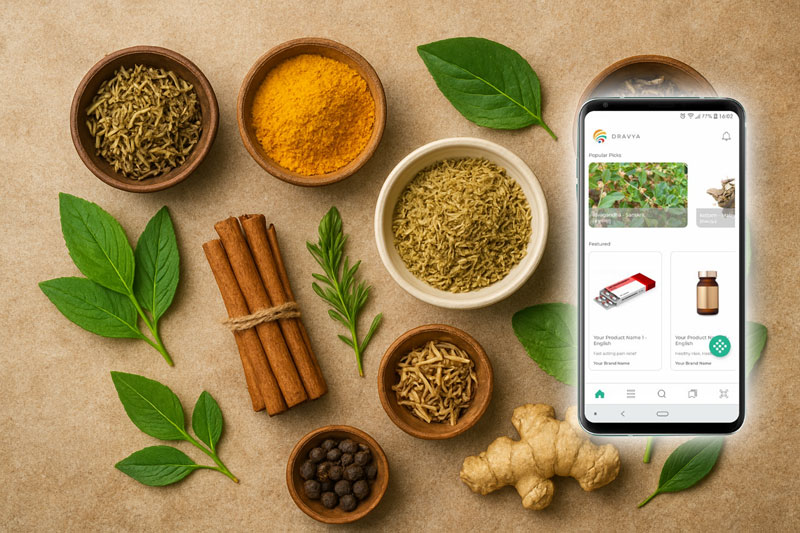
- 13 Oct 2025
In News:
The Ministry of Ayush has launched the DRAVYA (Digitised Retrieval Application for Versatile Yardstick of Ayush) portal, developed by the Central Council for Research in Ayurvedic Sciences (CCRAS), marking a major step towards the digital transformation of traditional medicine systems in India. Announced during the 10th Ayurveda Day celebrations in Goa (23 September 2025), the initiative aligns with India's vision of integrating ancient medical wisdom with contemporary scientific tools.
Objective and Vision
DRAVYA aims to create a scientifically validated, AI-enabled knowledge repository that consolidates data on medicinal substances used across Ayush systems. In its first phase, the platform will document 100 key medicinal substances, with scope for continuous expansion.
The portal seeks to:
- Digitise and unify classical and modern knowledge on medicinal substances
- Enable evidence-based research and innovation
- Support cross-disciplinary collaboration across Ayurveda, botany, chemistry, and pharmacology
- Standardise and globally disseminate authentic Ayush data
Key Features
|
Feature |
Details |
|
AI-ready architecture |
Supports advanced analytics, research mapping, future tech integration |
|
Open-access platform |
Makes verified data globally accessible |
|
QR-code integration |
Enables standardised medicinal plant identification in gardens and repositories |
|
Comprehensive dataset |
Pharmacotherapeutics, botany, chemistry, pharmacy, pharmacology & safety profiles |
|
User-friendly design |
Intuitive search system covering classical texts and modern scientific references |
|
Ayush Grid linkage |
Facilitates interoperability with other digital health systems and policy platforms |
Impact and Significance
- Knowledge Modernisation:DRAVYA bridges traditional Ayurvedic knowledge with contemporary scientific validation, enhancing credibility and global acceptance of Indian medical systems.
- Research Advancement:Supports scholars, practitioners, and policymakers with standardised, authentic, real-time updated data, strengthening evidence-based drug development and pharmacopoeialstandardisation.
- Global Accessibility & Innovation:By making curated research internationally accessible, DRAVYA promotes collaborative innovation, pharmaceutical research, and knowledge-driven growth of the Ayush sector.
Nobel Prize in Literature 2025
- 13 Oct 2025
In News:
- The 2025 Nobel Prize in Literature has been conferred on László Krasznahorkai, the Hungarian novelist celebrated for his profoundly philosophical and apocalyptic prose.
- The Swedish Academy recognized him for his ability to capture the “tension between ruin and redemption” and for reaffirming the enduring power of art in an age of crisis.
About the Nobel Prize in Literature
- Established under Alfred Nobel’s will (1895), the Nobel Prize in Literature is awarded annually by the Swedish Academy to an author who has produced “the most outstanding work in an ideal direction.”
- The award, accompanied by a cash prize of 11 million Swedish crowns (≈ USD 1.2 million), represents the highest global recognition in the literary world.
Life and Background
- Born in 1954 in Gyula, Hungary, near the Romanian border, Krasznahorkai grew up amid the tensions of post-war socialism.
- Educated in law and literature in Budapest, his early life in a repressive political climate shaped his preoccupation with decay, faith, and endurance. His Jewish and rural background deepened his sensitivity to questions of identity and moral collapse.
Literary Career and Major Works
Krasznahorkai made his literary debut with Sátántangó (1985), a dark, surreal portrayal of a disintegrating collective farm that has since become a modern classic. Its cinematic adaptation by Béla Tarr as a seven-hour film further cemented its cult status.
His subsequent works expanded his thematic range:
- The Melancholy of Resistance (1989): Explores moral and social decay under authoritarianism in a small Hungarian town.
- War and War (1999): A meditation on history, violence, and transcendence through the story of an archivist.
- Seiobo There Below (2008): Reflects his deep engagement with Asian philosophies and aesthetics, particularly from Japan and China.
- Herscht 07769 (2018): A study of German social unrest and the search for order amid chaos.
Themes and Literary Style
- Krasznahorkai’s fiction fuses metaphysical inquiry with social critique. His narratives depict societies on the brink of collapse, where individuals confront spiritual drift, institutional decay, and existential dread.
- Stylistically, his long, recursive sentences and dense, rhythmic prose challenge readers to engage deeply with the text. His influences range from Franz Kafka and Samuel Beckett to Thomas Bernhard, yet his vision remains uniquely his own — a fusion of absurdism, grotesque realism, and mystical introspection.
International Recognition and Legacy
- Over four decades, Krasznahorkai has emerged as one of Europe’s most formidable literary voices. His earlier accolades include the Kossuth Prize (2004), Hungary’s highest cultural honor, and the Man Booker International Prize (2015).
- His global reach reflects a bridge between Central European existentialism and Eastern contemplative traditions, making his work both regionally grounded and universally resonant.
Supreme Court on Retrospective Application of the Surrogacy (Regulation) Act 2021
- 12 Oct 2025
In News:
In a landmark ruling, the Supreme Court of India held that the age restrictions prescribed under the Surrogacy (Regulation) Act, 2021 cannot be applied retrospectively to couples who had already initiated the surrogacy process or had frozen embryos prior to the law’s enforcement. The judgment marks a critical reaffirmation of reproductive autonomy, fairness, and the right to privacy under the Constitution.
Background
Several couples who had preserved embryos before the Surrogacy (Regulation) Act, 2021 came into force approached the Supreme Court after being denied permission to proceed with surrogacy due to the Act’s upper age limit clause.The Act, effective January 25, 2022, mandates that:
- The woman must be between 23 and 50 years, and
- The man must be between 26 and 55 years.
These couples contended that applying such limits retroactively violated their vested reproductive rights and their right to parenthood under Article 21 of the Constitution.
Supreme Court’s Judgment
A Bench comprising Justice B.V. Nagarathna and Justice K.V. Viswanathan ruled in favour of the petitioners, stating that the rights of intending parents crystallised at the time they froze embryos, when no statutory age bar existed. Therefore, the new restrictions cannot invalidate actions undertaken under the previous legal regime.
Key Observations
- Doctrine of Fairness:The Court held that retrospective laws that impair vested rights or impose new burdens violate the principle of fairness and legal certainty, forming part of India’s constitutional jurisprudence.
- Right to Privacy and Bodily Autonomy:Drawing from K.S. Puttaswamy v. Union of India (2017), the bench affirmed that reproductive decisions — including the choice to conceive through surrogacy — are protected under Article 21, which guarantees the right to life and personal liberty.
- Gender and Equality Lens:The Court noted that a restrictive interpretation disproportionately impacts women, who already face biological and societal limitations in reproduction, and cannot be penalised for delays beyond their control.
- Right to Parenthood:Justice Nagarathna emphasised that parenthood is a matter of personal autonomy and that the State cannot judge the parenting capabilities of couples merely based on age.
She observed:
“Before 2021, there were no binding laws on age restrictions for intending couples. Hence, their right to proceed with surrogacy remains valid.”
- Rebuttal to Government’s Argument:The Centre had argued that age limits were meant to protect the welfare of children born through surrogacy, assuming older parents might not meet long-term responsibilities.
The Court rejected this view, pointing out that no such limits exist for couples conceiving naturally, making the argument inconsistent.
About the Surrogacy (Regulation) Act, 2021
Objective: To regulate surrogacy procedures in India by allowing only altruistic surrogacy and prohibiting commercial surrogacy, with an emphasis on protecting surrogate mothers and children from exploitation.
Key Provisions
|
Category |
Provisions |
|
Intending Couple Eligibility |
Indian citizens, married for at least 5 years; Woman aged 23–50, Man aged 26–55; must prove medical infertility. |
|
Surrogate Mother Eligibility |
A married woman aged 25–35 years, with at least one biological child. |
|
Institutional Mechanism |
National and State Surrogacy Boards and Appropriate Authorities to regulate licensing, ethics, and compliance. |
|
Penalties |
Commercial surrogacy, or sale of gametes/embryos, punishable by up to 10 years imprisonment and fines up to ?10 lakh. |
Significance of the Judgment
- Upholds Constitutional Morality:Reaffirms that legislative intent must align with constitutional values of fairness, equality, and liberty.
- Protects Reproductive Autonomy:Strengthens the legal recognition of reproductive choices as an intrinsic part of individual dignity and privacy.
- Ensures Legal Certainty:Prevents retrospective penalisation of couples who acted in good faith under the pre-existing legal framework.
- Gender Justice and Inclusivity:Acknowledges women’s agency and safeguards them from arbitrary restrictions that could hinder their reproductive timelines.
- Balances Regulation and Rights:While the State’s intent to regulate surrogacy is legitimate, the ruling ensures such regulation does not override fundamental rights or vested personal decisions.
Foreign Currency Settlement System
- 12 Oct 2025
In News:
In October 2025, Union Finance Minister Nirmala Sitharaman launched the Foreign Currency Settlement System (FCSS) at the International Financial Services Centre (IFSC) in GIFT City, Gujarat. This marks a transformative step in India’s financial ecosystem, placing GIFT City among leading global financial hubs such as Hong Kong, Tokyo, and Singapore.
What is the Foreign Currency Settlement System (FCSS)?
The FCSS is a real-time payment and settlement mechanism that enables entities operating within GIFT IFSC to conduct and settle foreign currency transactions (initially in USD) locally — eliminating the dependence on foreign correspondent banks.
Key Highlights
- Real-Time Settlements: Transactions that earlier took 36–48 hours through correspondent banking now settle in 4–5 seconds.
- Regulatory Framework: Operates under the Payment and Settlement Systems (PSS) Act, 2007, authorised by the International Financial Services Centres Authority (IFSCA).
- System Operator:CCIL IFSC Ltd, a subsidiary of the Clearing Corporation of India Ltd (CCIL).
- Technology Partner:Indian Financial Technology & Allied Services (IFTAS), a wholly-owned subsidiary of the Reserve Bank of India (RBI).
- Settlement Bank:Standard Chartered Bank serves as the initial settlement partner.
How Does It Work?
Under the FCSS framework:
- Each participating bank’s IFSC Banking Unit (IBU) maintains an account with a designated local settlement bank.
- Inter-bank foreign currency transactions are cleared and settled within GIFT City, avoiding the complex multi-leg Nostro account chains used abroad.
- The system ensures secure, transparent, and regulated processing of global transactions under the IFSCA’s oversight.
Why It Matters – Strategic Significance
- Reduces Dependence on Overseas Systems: Earlier, entities in GIFT IFSC relied on foreign banks for USD, euro, or yen settlements, leading to delays, higher costs, and exposure to external risks. FCSS eliminates this dependence by localising global settlements within India.
- Enhances Liquidity and Efficiency: The system allows near-instant settlement, improving liquidity management for banks and financial institutions. It reduces counterparty and settlement risks while enabling smoother cross-border trade and investment.
- Boosts India’s Global Financial Standing: By offering a robust settlement mechanism, GIFT City now joins an elite league of financial centres with domestic forex settlement capabilities, strengthening India’s position as an emerging global financial hub.
- Promotes Financial Inclusion for Indian Entities: With lower transaction costs, faster settlement times, and reduced reliance on foreign intermediaries, Indian corporates and banks can manage international transactions more efficiently within domestic jurisdiction.
- Supports Multi-Currency Expansion: While the system currently supports the US Dollar, it is designed to incorporate other major currencies such as the Euro, Pound Sterling, and Japanese Yen, ensuring scalability and global integration.
About GIFT City: India’s Global Financial Gateway
- Full Form: Gujarat International Finance Tec-City (GIFT City).
- Location: Between Ahmedabad and Gandhinagar, Gujarat.
- Regulator: International Financial Services Centres Authority (IFSCA) — established in 2020 as a unified regulator for all financial services within the IFSC.
- Nature: A Special Economic Zone (SEZ) that operates as a liberalised financial jurisdiction under Indian sovereignty, with tax incentives, global regulations, and ease-of-doing-business provisions.
Achievements So Far
- Hosts over 1,000 registered entities, including global banks, insurance firms, fintechs, and asset managers.
- Houses India INX and NSE IX, offering 22-hour trading in global securities.
- Developed India’s first aircraft and ship leasing ecosystem, attracting global lessors and fund managers.
- Emerging hub for offshore derivative instruments, green bonds, and ESG investments.
Economic Rationale Behind GIFT City
- Before GIFT City, many Indian companies preferred offshore hubs such as Singapore or Mauritius for fund-raising and financial operations due to friendlier regulatory environments. This resulted in capital outflow and revenue loss for India.
- GIFT City’s creation aimed to repatriate offshore financial activities, foster global competitiveness, and position India as a financial intermediary for international capital flows.
India’s National Red List Roadmap
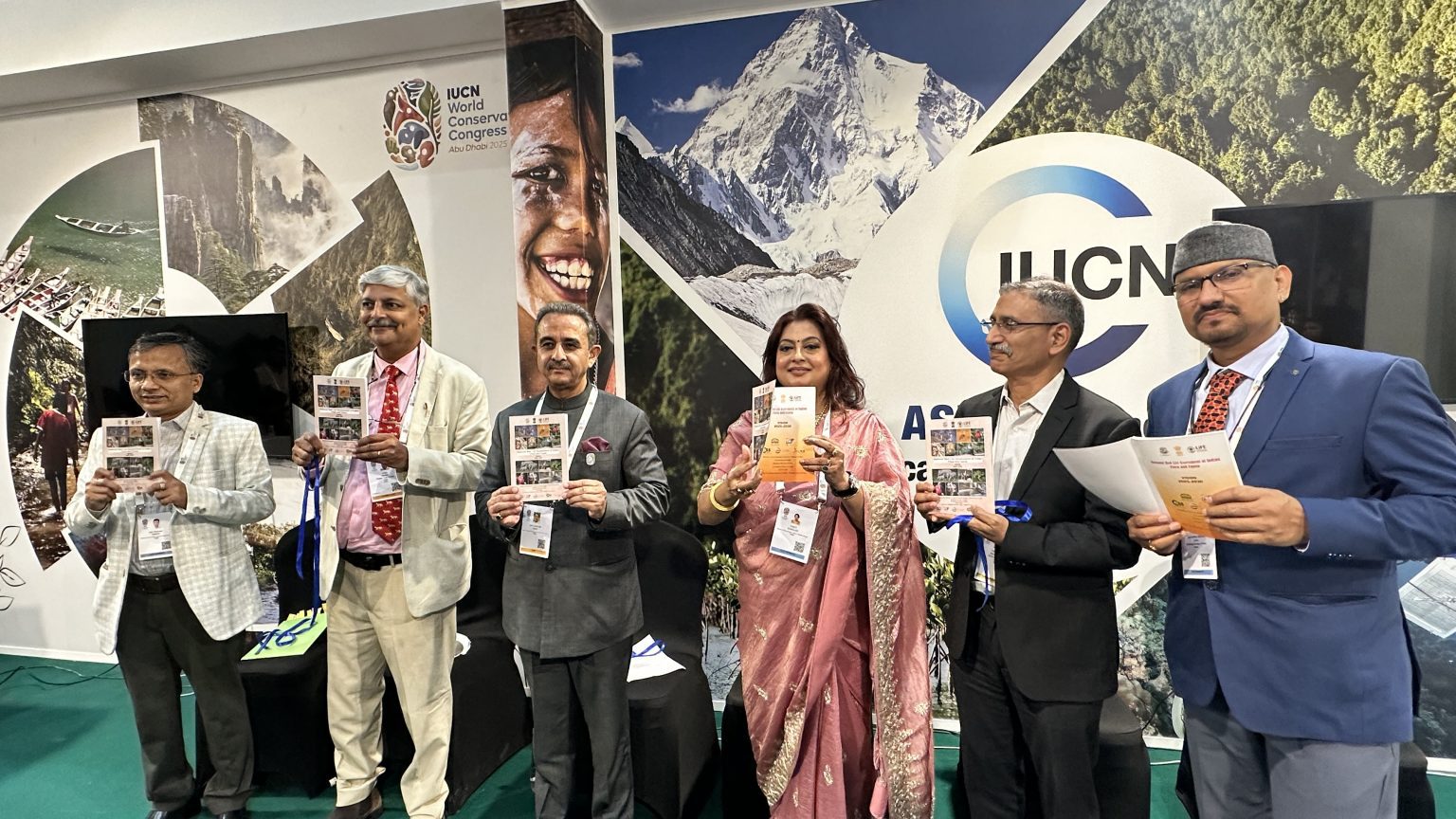
- 12 Oct 2025
In News:
At the IUCN World Conservation Congress 2025 in Abu Dhabi, India launched its National Red List Roadmap and Vision 2025–2030, marking a significant milestone in national biodiversity documentation and conservation policy. The initiativerepresents India’s commitment to establishing a comprehensive, science-based framework for assessing species and shaping long-term conservation priorities.
The National Red List Roadmap: Overview and Objectives
The National Red List Roadmap is India’s first integrated national initiative to identify, classify, and conserve threatened species across ecosystems — terrestrial, freshwater, and marine — in alignment with IUCN global standards.
It seeks to:
- Develop a nationally coordinated and inclusive red-listing system for flora and fauna.
- Generate baseline data and threat assessments to guide evidence-based policymaking.
- Strengthen India’s obligations under the Convention on Biological Diversity (CBD) and the Kunming–Montreal Global Biodiversity Framework (KMGBF).
- Foster collaboration among scientists, conservationists, and local communities to ensure equitable biodiversity protection.
The programme will culminate in the publication of India’s National Red Data Books for flora and fauna by 2030, creating an authoritative reference for conservation planning.
Institutional Collaboration
The roadmap is jointly prepared by:
- Zoological Survey of India (ZSI)
- Botanical Survey of India (BSI)
- IUCN-India, and
- Centre for Species Survival (CSS), India
This inter-agency collaboration ensures a unified system that combines scientific taxonomy, digital technology, and local knowledge systems to monitor and protect India’s biological diversity.
Vision 2025–2030: India’s Strategic Conservation Blueprint
The Vision 2025–2030 document provides a forward-looking framework to guide biodiversity governance over the next decade. It focuses on data-driven conservation, institutional synergy, and community participation, aligning with the UN Sustainable Development Goals (SDGs) and KMGBF targets.
Key Objectives:
- Establish a centralised biodiversity database for national-level coordination.
- Enhance species identification and taxonomy through expert collaboration.
- Integrate digital tools, GIS mapping, and field surveys for real-time species monitoring.
- Build a network connecting scientific institutions, local communities, and policymakers.
- Promote inclusive and equitable participation of indigenous and local communities in conservation processes.
By 2030, India aims to complete comprehensive species assessments, update threat categories, and integrate the results into national wildlife action plans and climate strategies.
India’s Biodiversity Profile
India is recognised as one of the 17 megadiverse countries in the world and hosts four of the 36 global biodiversity hotspots — the Himalayas, Western Ghats, Indo-Burma, and Sundaland.
Key Statistics:
- Covers 2.4% of global land area but supports nearly 8% of global flora and 7.5% of global fauna.
- Houses over 104,000 faunal species, 18,000 species of flowering plants, and around 20,000 marine species.
- Approximately 28% of plant species and 30% of animal species are endemic to India.
These figures underscore India’s ecological richness and the urgency for systematic monitoring and protection.
Legal and Policy Backing
- The initiative aligns with India’s robust legal framework for biodiversity conservation, anchored in the Wild Life (Protection) Act, 1972, which was amended in 2022 to extend protection to species listed under the CITES Appendices.
- The National Red List Roadmap will complement existing programmes like the National Biodiversity Mission, National Wildlife Action Plan, and Integrated Development of Wildlife Habitats, ensuring that conservation decisions are guided by scientific evidence and threat analysis.
Significance for Conservation Policy
- Evidence-Based Decision-Making: The roadmap institutionalises data-backed conservation planning.
- National Accountability: Regular species assessments will help monitor progress under national and global biodiversity targets.
- Scientific Collaboration: Encourages coordination among researchers, policymakers, and conservation agencies.
- Public Engagement: Integrates traditional ecological knowledge and community-driven documentation.
- Global Alignment: Reinforces India’s commitment to the Kunming–Montreal Global Biodiversity Framework and CBD Aichi Targets.
India–Afghanistan Relations Amid Taliban Diplomacy
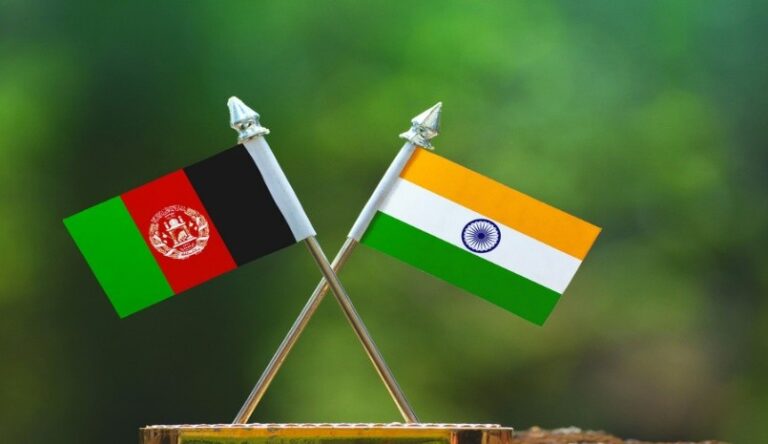
- 12 Oct 2025
In News:
Afghanistan’s Foreign Minister Amir Khan Muttaqi’s six-day visit to India marks the first high-level interaction between New Delhi and the Taliban government since 2021. The visit reflects India’s cautious yet pragmatic attempt to re-engage diplomatically with Kabul amid evolving regional dynamics.
Historical Foundations of India–Afghanistan Relations
The relationship between India and Afghanistan is rooted in civilisational, cultural, and strategic linkages that predate modern statehood.
- Civilisational Bonds: The ancient Kabul–Gandhara–Taxila corridor served as a conduit for trade and Buddhist exchanges, shaping a shared heritage.
- Political Affinity: After 1947, Afghanistan stood apart by opposing Pakistan’s admission to the UN, signalling early alignment with India.
- Developmental Partnership: Since 2001, India has invested over $3 billion in Afghanistan’s reconstruction, building major projects like the Salma Dam, Afghan Parliament, and the Zaranj–Delaram Highway, solidifying India’s goodwill.
- Humanitarian Outreach: Even after the Taliban takeover in 2021, India sustained “people-centric engagement” by supplying 50,000 tonnes of wheat, medicines, vaccines, and scholarships — reflecting its long-term commitment to the Afghan people.
India’s Strategic Calculus Behind Engagement
India’s current approach combines realism and restraint, shaped by five key strategic considerations:
a. Regional Stability and Connectivity
- Afghanistan remains crucial to India’s access to Central Asian energy markets.
- Projects like Chabahar Port and the International North–South Transport Corridor (INSTC) rely on Afghan stability for viability.
b. Countering Pakistan and China
- Taliban-led Afghanistan has seen strained ties with Pakistan while engaging with China’s BRI framework.
- India’s outreach seeks to dilute Pakistan’s strategic depth and limit China’s westward expansion through CPEC.
c. Counterterrorism and Security Cooperation
- Groups such as Lashkar-e-Taiba (LeT), Jaish-e-Mohammed (JeM), and Islamic State–Khorasan Province (ISKP) operate from Afghan soil.
- Diplomatic engagement allows for intelligence sharing, counterterror coordination, and crisis management.
d. Preventing Radicalisation Spillover
- Instability in Afghanistan could intensify cross-border militancy, narcotics trade, and extremist radicalisation, impacting India’s internal security.
e. Humanitarian and Soft-Power Diplomacy
- India’s assistance in education, health, and food security continues to build moral legitimacy and strengthen its image as a responsible regional power.
Policy Dilemmas and Diplomatic Constraints
Despite its engagement, India faces significant diplomatic challenges:
- Non-Recognition vs. Realpolitik: India has not formally recognised the Taliban regime but follows a de facto engagement policy to protect its strategic interests.
- Symbolic Diplomacy: Meetings in Dubai (2024) and New Delhi (2025) have carefully excluded Taliban flags and formal protocol to maintain a balance between engagement and legitimacy.
- Connectivity Challenges: The withdrawal of the Chabahar sanctions waiver constrains India’s access to Afghanistan and Central Asia.
- External Pressures: The US–Pakistan rapprochement, Russia–China engagement with Kabul, and Iran’s growing influence complicate India’s regional calculus.
- Human Rights Concerns: India must balance pragmatic engagement with its principled support for inclusive governance, women’s rights, and democratic values in Afghanistan.
Regional Implications of the Muttaqi Visit
|
Dimension |
Implications for India |
|
Strategic |
Strengthens dialogue on counterterrorism and connectivity; reduces Pakistan’s leverage. |
|
Economic |
Opens prospects for trade corridors via Chabahar and access to Afghanistan’s $1–3 trillion mineral reserves. |
|
Diplomatic |
Reinforces India’s position as a regional stabiliser engaging multiple stakeholders — Russia, Iran, and Central Asia. |
|
Security |
Enables real-time intelligence cooperation against extremist networks. |
|
Symbolic |
Projects India’s Strategic Autonomy Doctrine — engagement without endorsement. |
Way Forward
- Adopt a Dual-Track Policy: Continue humanitarian and developmental assistance while maintaining calibrated diplomatic engagement with the Taliban.
- Enhance Regional Coordination: Work through Moscow Format, SCO, and Heart of Asia platforms alongside Russia, Iran, and Central Asian partners.
- Revive Chabahar Connectivity: Explore limited sanctions relief through multilateral mechanisms to ensure sustained India–Afghanistan trade access.
- Institutionalise Counterterror Cooperation: Establish an India–Afghanistan Security Contact Group to share intelligence and monitor cross-border threats.
- Invest in Human Capital: Expand scholarships, online education, and women-focused programmes to strengthen long-term societal goodwill.
Conclusion
Amir Khan Muttaqi’s visit marks a diplomatic turning point — signalling India’s shift from cautious observation to strategic pragmatism in its Afghan policy. Balancing values with realism, New Delhi aims to secure its geopolitical and economic interests while upholding humanitarian principles.
India’s nuanced engagement — without formal recognition — positions it as a potential stabilising anchor in South–Central Asia, where constructive diplomacy rather than confrontation remains the key to regional peace and security.
Port of Pasni

- 12 Oct 2025
In News:
Pakistan’s recent diplomatic engagements indicate a marked shift in its foreign policy priorities. The country, traditionally aligned with China under the China–Pakistan Economic Corridor (CPEC) framework, is now attempting to re-engage with the United States. Central to this emerging realignment is Islamabad’s reported proposal to allow the US to develop a new port at Pasni in Balochistan — a move that carries significant geopolitical and strategic ramifications.
The Pasni Port Proposal: Redefining Strategic Partnerships
Pakistan has reportedly offered the United States the opportunity to build and operate a port at Pasni, a deep-water harbour located on the Arabian Sea in Balochistan’s Gwadar district.
- The proposed port is around 70 miles east of China-operated Gwadar Port and approximately 100 miles from Iran’s border.
- The initiative aims to reduce Pakistan’s dependence on China’s Belt and Road Initiative (BRI), attract American investment, and open access to critical mineral exports from Balochistan.
- Plans for a railway linkage between Pasni and the hinterland have also been discussed to enhance trade connectivity.
If realised, this project would grant Washington a strategic maritime foothold in the region — an area of growing competition among global powers.
The Emerging Maritime Triangle: Pasni–Gwadar–Chabahar
Pasni’s location gives rise to a new maritime triangle involving:
- Gwadar Port – a China–Pakistan venture central to the CPEC framework;
- Chabahar Port – a joint India–Iran initiative providing access to Afghanistan and Central Asia; and
- Pasni Port – potentially linked to US–Pakistan cooperation.
This triad places China, the US, and India in close operational proximity, turning the northern Arabian Sea into a strategic hotspot where economic corridors overlap with geopolitical rivalries.
Economic Drivers: The Mineral Dimension
Balochistan is rich in rare earth elements and critical minerals, crucial for high-tech manufacturing and green technologies.
- During recent engagements in Washington, Pakistan’s leadership reportedly showcased samples of these minerals to US officials in an attempt to secure American investment.
- The proposal reflects a shift in Pakistan’s economic diplomacy — reoffering projects once promised to China now to the United States.
This “resource diplomacy” underlines Islamabad’s efforts to diversify partnerships amid economic distress and debt dependence on China.
Domestic Political Motivations
The overtures toward Washington also have domestic political undertones.
- The civil–military establishment, led by Prime Minister Shehbaz Sharif and Army Chief General Asim Munir, faces questions of legitimacy and stability at home.
- Closer ties with the US are seen as a way to gain international backing and financial relief.
- However, the leadership’s willingness to reconsider Pakistan’s stance on issues like recognition of Israel under the Abraham Accords has invited domestic criticism for allegedly compromising national principles and Palestinian solidarity without parliamentary approval.
Regional Reactions and Strategic Fallout
China’s Concerns
- Beijing views the Pasni initiative as undermining CPEC and encroaching upon its sphere of influence.
- A potential US presence near Gwadar and close to Xinjiang’s western frontier could be perceived as a strategic encirclement.
Iran’s Apprehensions
- Pasni’s proximity to the Iranian border raises concerns in Tehran, which already faces tensions with the US.
- The project could alter the regional balance and complicate Iran’s trade interests via Chabahar.
India’s Calculations
- India’s Chabahar Port project could lose strategic relevance if the Pasni initiative attracts significant US investment and attention.
- The US’s ambiguous stance on the Chabahar sanctions waiver further limits India’s operational space in the region.
Afghanistan’s Position
- The Taliban government may cautiously welcome US economic engagement but will resist any renewed American military presence, such as at Bagram Airbase.
Security Implications: Risk of Regional Instability
Balochistan already faces persistent challenges, including:
- Baloch insurgency,
- Militant violence in Khyber Pakhtunkhwa, and
- Ethnic and sectarian tensions.
Introducing American infrastructure and personnel into this volatile setting could exacerbate local grievances and trigger a new phase of proxy competition between the US and China.
Such dynamics risk turning Balochistan into a geostrategic flashpoint and further destabilising Pakistan’s internal security landscape
IAF to Receive First Tejas Mk1A Fighter Jet
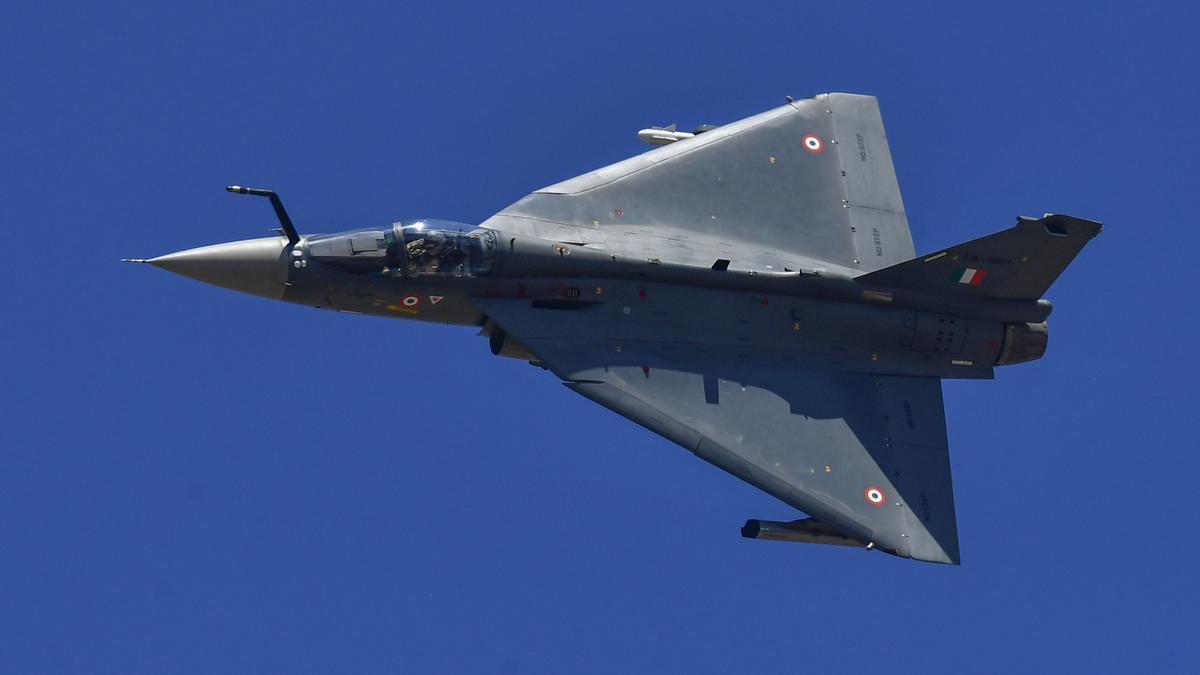
- 11 Oct 2025
In News:
The Indian Air Force (IAF) is set to receive its first Light Combat Aircraft (LCA) Tejas Mk1A by the end of October 2025, marking a major milestone in India’s indigenous defence manufacturing journey under the ‘Atmanirbhar Bharat’ initiative.
Background
- The Tejasprogramme, initiated in 1984 and managed by the Aeronautical Development Agency (ADA) under the Defence Research and Development Organisation (DRDO), was conceived to replace India’s ageing MiG-21 fighter fleet with an indigenously designed and developed multi-role combat aircraft.
- The delivery of the Tejas Mk1A comes under a ?48,000 crore contract signed in 2021 between the Indian Air Force and HAL for 83 aircraft (73 single-seaters and 10 twin-seaters). The production had been delayed primarily due to slow engine deliveries and global supply chain disruptions.
About Tejas Mk1A
The Tejas Mk1A is an upgraded and advanced variant of the baseline Tejas Mk1, designed to enhance combat capability, survivability, and operational maintainability.
Key Upgrades and Capabilities
- Active Electronically Scanned Array (AESA) Radar:Provides superior target detection, tracking, and engagement capability, improving situational awareness and strike precision.
- Electronic Warfare Suite (EWS):Equipped with radar-warning receivers and self-protection jammers, enhancing survivability against enemy radar and missile threats.
- Digital Flight Control Computer (DFCC Mk1A):Improves flight stability, agility, and maneuverability during high-G operations.
- Weapon Compatibility:Supports a wide range of weapons including:
- Beyond Visual Range (BVR) missiles,
- Air-to-Air and Air-to-Ground missiles, and
- Advanced Short-Range Air-to-Air Missiles (ASRAAM).
- Enhanced Avionics and Network Systems:Planned integration of Combined Interrogator and Transponder (CIT), Software Defined Radio (SDR), and Operational Data Link (ODL) for real-time communication and network-centric warfare.
LCA Tejas: Core Features
- Design: Lightest, smallest, and tailless multi-role supersonic fighter in its class.
- Speed: Capable of reaching Mach 1.8.
- Range: Up to 3,000 km.
- Payload Capacity:4,000 kg, supporting precision-guided and conventional munitions.
- Roles: Capable of air superiority, ground attack, and reconnaissance missions.
Variants of the Tejas Family
- Tejas Mk1: Baseline version currently operational with the IAF.
- Tejas Trainer: Twin-seat variant for advanced pilot training and operational conversion.
- LCA Navy: Carrier-capable single- and twin-seat variants for deck operations.
- Tejas Navy Mk2: Phase-II version with enhanced endurance and payload for naval missions.
- Tejas Mk1A: Improved variant with advanced avionics, weapon systems, and network capabilities.
India–Qatar Relations
- 11 Oct 2025
In News:
- The Union Minister of Commerce and Industry, Piyush Goyal, recently visited Doha, Qatar, to co-chair the India–Qatar Joint Commission on Economic and Commercial Cooperation with H.E. Sheikh Faisal bin Thani bin Faisal Al Thani, Qatar’s Minister of Commerce and Industry.
- The visit marked a significant step toward strengthening bilateral economic engagement, deepening energy cooperation, and advancing a future-ready partnership between the two nations.
India–Qatar Joint Commission Meeting: Key Outcomes
- Ambitious Trade Target:Both sides recognised the untapped potential in their economic relationship and set an ambitious goal to double bilateral trade by 2030. Currently, trade between the two nations stands at around USD 14 billion.
- India–Qatar Comprehensive Economic Partnership Agreement (CEPA):The countries reaffirmed their commitment to pursue an ambitious CEPA, a free-trade pact aimed at deepening market access, investment flows, and trade facilitation.
- Digital Integration:A major milestone was the launch of India’s Unified Payments Interface (UPI) in Qatar, enabling seamless digital payments for both the Indian diaspora and Qatari consumers—symbolising the growing digital and fintech cooperation between the two nations.
- Sectoral Cooperation:
The ministers identified multiple sectors for expansion of trade and investment:- Traditional sectors: Pharmaceuticals, textiles, gems &jewellery.
- Manufacturing & technology: Electronics, automobiles, processed foods.
- Future-focused areas: IT, high-tech industries, and renewable energy (especially solar).
- Energy Partnership:India appreciated Qatar’s long-term LNG supply agreement of 7.5 million tonnes per year from 2028, underscoring the centrality of energy security in the bilateral relationship.
Bilateral Trade and Economic Ties
- Trade Profile (FY 2024–25):Bilateral trade stood at USD 14.15 billion, with India facing a trade deficit of about USD 10.78 billion, primarily due to hydrocarbon imports.
- Qatar’s exports to India comprise petroleum and LNG (89% of total trade), while India exports food products, textiles, machinery, and chemicals.
- Investment Linkages:Over 20,000 Indian companies (wholly owned and joint ventures) operate in Qatar, while Qatar’s FDI in India is valued at around USD 1.5 billion, spread across sectors like energy, infrastructure, and technology.
- The Qatar Investment Authority (QIA) has also invested heavily in India’s National Infrastructure Pipeline (NIP), technology start-ups, and real estate.
- Digital and Fintech Cooperation:The introduction of UPI in Qatar represents India’s expanding digital public infrastructure diplomacy, strengthening financial inclusion for over 800,000 Indian residents in Qatar.
Strategic Cooperation Beyond Trade
Energy Security
- Qatar as a Key Supplier:Qatar is India’s largest LNG and LPG supplier, accounting for 26% of India’s LPG imports and over three-fourths of total bilateral trade through hydrocarbons.
- Stability and Clean Transition:Long-term LNG contracts ensure price stability and support India’s clean energy transition under its net-zero goals.
Defence and Security
- The India–Qatar Defence Cooperation Agreement (2008, renewed in 2018) provides a framework for training, naval visits, and joint maritime exercises such as Za’ir-Al-Bahr (Roar of the Sea).
- Regular participation in events like DIMDEX (Doha International Maritime Defence Exhibition) reflects deepening maritime security ties in the Indian Ocean Region.
Cultural and People-to-People Ties
- The 2012 Cultural Cooperation Agreement and the 2019 India–Qatar Year of Culture have promoted cultural exchange through festivals like ‘Passage to India’ (2024).
- The Indian diaspora in Qatar, numbering over 830,000, forms a vital bridge between the two nations, contributing to Qatar’s development and remitting billions annually to India.
Mutual Significance
For India
- Energy Security: Ensures steady LNG supplies and shields India from global price volatility.
- Strategic Investments: QIA’s long-term investments aid infrastructure and industrial growth.
- Diaspora Strength: Provides remittances and strengthens cultural linkages.
- Strategic Depth in West Asia: Qatar’s regional diplomacy and ties with global powers enhance India’s strategic outreach in the Gulf.
For Qatar
- Stable Energy Market: India provides a reliable and growing market for LNG exports, critical for Qatar’s fiscal stability.
- Economic Diversification: India offers investment opportunities beyond hydrocarbons, particularly in fintech, renewables, healthcare, and education.
- Food and Supply Chain Security: India’s exports ensure Qatar’s access to essential commodities and pharmaceuticals.
- Knowledge Partnership: India’s IT, education, and skill development sectors support Qatar’s shift toward a knowledge-based economy under Qatar National Vision 2030.
Broader Vision: Strategic Partnership and Future Outlook
- The visit underscored the elevation of India–Qatar ties to a Strategic Partnership, aligning with India’s vision of becoming a Viksit Bharat by 2047.
Minister Goyal emphasised India’s macroeconomic resilience, robust startup ecosystem, and inclusive growth model, encouraging greater Qatari investments and joint ventures in India’s high-growth sectors. - Both nations agreed to strengthen institutional dialogues, deepen cooperative federalism, and promote business-to-business engagements through platforms such as the India–Qatar Joint Business Council (JBC).
Shram Shakti Niti 2025
- 11 Oct 2025
In News:
The Ministry of Labour and Employment has released the Draft National Labour& Employment Policy – Shram Shakti Niti 2025 for public consultation. This marks India’s first integrated national labour and employment policy, aiming to build a fair, inclusive, and future-ready workforce aligned with the vision of Viksit Bharat @2047.
Objective
- Shram Shakti Niti 2025 seeks to modernise India’s labour ecosystem by ensuring dignity, protection, and opportunity for every worker while responding to emerging challenges such as digital transformation, climate change, and global value chain integration.
- It signals a shift from regulation to facilitation, positioning the Ministry as a proactive employment enabler rather than merely a regulatory authority.
Core Vision and Pillars
The policy is guided by four overarching pillars:
- Dignity of Labour – Ensuring fairness, safety, and equal opportunity.
- Universal Inclusion – Extending benefits to all categories of workers, including informal and gig sectors.
- Cooperative Federalism – Promoting Centre–State coordination and tripartite dialogue among government, employers, and workers.
- Data-Driven Governance – Leveraging digital tools for evidence-based policymaking and transparency.
Seven Strategic Priorities
Shram Shakti Niti 2025 defines seven key focus areas that together shape India’s future of work:
- Universal and Portable Social Security:
- Introduction of a Universal Social Security Account integrating EPFO, ESIC, e-Shram, and PM-JAY, ensuring lifelong and portable coverage.
- Aims to enhance income security and protection for both formal and informal sector workers.
- Occupational Safety and Health:
- Promotes AI-enabled workplace safety systems and health monitoring frameworks.
- Strengthens compliance through digital inspections and risk-based certifications.
- Employment and Future Readiness:
- Builds a resilient, skilled workforce ready for automation, AI, and green transitions.
- Expands digital and vocational skill training to meet the demands of Industry 4.0.
- Women and Youth Empowerment:
- Targets 35% female labour force participation by 2030.
- Encourages flexible work models, childcare support, entrepreneurship, and skill pathways for youth.
- Ease of Compliance and Formalisation:
- Launch of a single-window digital compliance portal with risk-based self-certification to simplify regulations and enhance trust-based governance.
- Technology and Green Transitions:
- Promotes green jobs, sustainable enterprises, and AI-driven workforce management.
- Aligns labour policy with India’s climate and sustainability goals.
- Convergence and Good Governance:
- Establishes a three-tier institutional structure — National, State, and District Labour Missions.
- Introduces a Labour& Employment Policy Evaluation Index (LEPEI) for performance tracking.
- Integrates worker identities, enterprise data, and social security benefits into a unified Labour& Employment Stack.
Digital Public Infrastructure for Employment
A key innovation under Shram Shakti Niti 2025 is the transformation of the National Career Service (NCS) into India’s Employment Digital Public Infrastructure (DPI).
This platform will provide:
- AI-based job matching and credential verification,
- Skill alignment and career guidance, and
- Inclusive access to opportunities across Tier-II and Tier-III cities.
This approach aims to bridge the gap between job seekers, employers, and training institutions through trusted, interoperable digital systems.
Alignment with Labour Reforms
The draft policy complements the consolidation of 29 central labour laws into four Labour Codes:
- Code on Wages, 2019
- Industrial Relations Code, 2020
- Occupational Safety, Health and Working Conditions Code, 2020
- Social Security Code, 2020
Together, these aim to enhance ease of doing business while safeguarding workers’ rights.
Implementation Framework
The policy outlines a phased roadmap (2025–2047):
- Phase I (2025–27): Institutional setup, pilot projects, and digital integration of social security systems.
- Phase II (2027–30): Nationwide rollout of Universal Social Security and AI-driven employment services.
- Phase III (Beyond 2030): Full digital convergence and predictive, data-based labour governance.
Significance
- First comprehensive national labour policy integrating employment, social protection, and technology.
- Enhances labour market efficiency and reduces regulatory fragmentation.
- Ensures inclusive growth by bridging formal–informal divides and empowering women and youth.
- Strengthens cooperative federalism and participatory governance in the world of work.
Nobel Prize in Chemistry 2025

- 11 Oct 2025
In News:
The 2025 Nobel Prize in Chemistry has been awarded to Susumu Kitagawa (Japan), Richard Robson (Australia), and Omar Yaghi (Jordan–USA) for their pioneering work in developing Metal–Organic Frameworks (MOFs) — a novel class of crystalline materials with exceptional porosity and tunable chemical properties. Their innovation has transformed the field of materials chemistry, enabling new solutions for energy, environment, and sustainability.
About the Nobel Prize in Chemistry
Instituted under the 1895 will of Alfred Nobel, the Nobel Prize in Chemistry honours individuals whose discoveries have profoundly advanced the chemical sciences and benefitted humanity. The 2025 award acknowledges a transformative leap in reticular chemistry — the design and synthesis of porous networks using metal ions and organic linkers.
Genesis of Metal–Organic Frameworks (MOFs)
In most materials, atoms are tightly packed, leaving little internal space. The Nobel laureates devised a way to link metal atoms with organic molecules in an open, lattice-like structure that leaves large, orderly cavities — creating materials capable of trapping, storing, or releasing other molecules with precision.
- Richard Robson, in the 1970s at the University of Melbourne, first envisioned connecting atoms through molecular linkers to create spacious molecular architectures.
- Susumu Kitagawa in the 1990s demonstrated that such frameworks could be flexible, “breathing” materials capable of absorbing and releasing gases.
- Omar Yaghi, from the 2000s onwards, stabilised these frameworks and founded reticular chemistry, systematically designing MOFs for targeted purposes such as carbon capture, water harvesting, and gas storage.
What are MOFs?
Metal–Organic Frameworks (MOFs) are hybrid crystalline materials formed by coordinating metal ions or clusters (e.g., copper, zinc, aluminium) with organic ligands to produce rigid, porous 3D networks.
These frameworks function like atomic sponges, capable of holding, filtering, or releasing molecules with high selectivity. Each gram of a MOF can offer a surface area equivalent to several football fields, allowing immense storage capacity.
Key Properties of MOFs
- Super Porosity:Exceptionally high internal surface area, enabling efficient molecular capture and storage.
- Customisability:The pore size, shape, and chemical affinity can be precisely engineered to trap specific molecules — for example, CO? or methane.
- Breathing Flexibility:Some MOFs expand or contract in response to absorbed gases, similar to a lung inhaling and exhaling.
- Chemical Stability:MOFs are robust, reusable, and resistant to heat and chemical degradation.
- Eco-Friendly Synthesis:They can be produced via low-cost, green methods, enhancing scalability and industrial applicability.
Applications and Global Relevance
- Climate Action – Carbon Capture:MOFs can selectively absorb carbon dioxide (CO?) from industrial emissions or the atmosphere, aiding climate mitigation strategies.
- Water Harvesting:Certain MOFs extract water vapour from arid air — a potential lifeline for water-scarce regions.
- Clean Energy Transition:Their ability to store hydrogen or methane makes MOFs promising materials for next-generation, lightweight, and safe fuel systems.
- Environmental Remediation:MOFs can trap and remove pollutants such as PFAS, heavy metals, and toxic gases, supporting cleaner air and water.
- Biomedical and Catalytic Uses:In pharmaceuticals and industrial chemistry, MOFs act as catalysts or as carriers for targeted drug delivery.
NITI Aayog report “Roadmap on AI for Inclusive Societal Development”
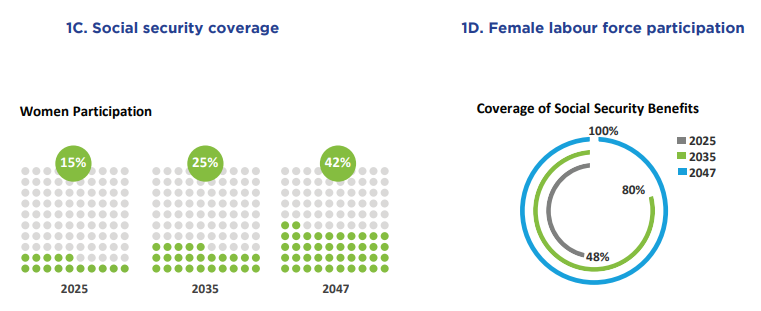
- 11 Oct 2025
In News:
NITI Aayog has unveiled its strategic report “Roadmap on AI for Inclusive Societal Development”, which presents a comprehensive vision for leveraging Artificial Intelligence (AI) to strengthen India’s vast informal economy through enhanced digital inclusion, skilling, and social protection systems.
Status of India’s Informal Workforce
- Scale and Economic Role: Approximately 490 million Indians—about 90% of the national workforce—are engaged in informal employment spanning agriculture, construction, and services, together contributing nearly half of India’s GDP (MoLE, 2024).
- Rural Dominance: Over 80% of rural labourers operate without written contracts or social security coverage, especially in construction, handicrafts, and retail sectors.
- Gendered Vulnerability: Women constitute around 55% of the informal workforce, with significant representation in home-based and agricultural activities (ILO, 2023).
- Low Productivity and Earnings: Informal sector productivity remains roughly one-fourth that of the formal economy, perpetuating low wages and economic insecurity.
- Emergence of Urban Informality: The gig and platform economy has created a new informal class, with nearly 7.5 million platform workers (NITI Aayog, 2022) still outside formal labour protections.
Core Challenges
- Financial Instability: Over three-fourths of informal workers earn below ?10,000 per month and face limited access to affordable credit or insurance (PLFS, 2024).
- Market Inefficiencies: Only about 12% of small producers or artisans access digital or organized markets directly, remaining dependent on intermediaries.
- Digital and Skill Divide: Around 70% of informal workers lack basic digital literacy, impeding their participation in AI-integrated economies.
- Weak Social Protection: Just one-third of eligible informal workers are registered under welfare schemes such as e-Shram or PM-SYM.
- Policy Fragmentation: Overlapping databases and weak institutional coordination hinder effective benefit delivery and erode worker trust.
Transformative Potential of AI
- Financial Empowerment: AI-based credit assessment tools (e.g., SBI YONO, Setu.ai) can facilitate microloans for workers lacking traditional financial records.
- Digital Public Infrastructure (DPI): Platforms such as Aadhaar, UPI, and e-Shram can establish verifiable worker identities, improving transparency in wage payments and welfare targeting.
- Smart Contracts and Blockchain: Use of blockchain for wage traceability and supply chain verification (e.g., Tata Steel Foundation’s pilot in Jharkhand) can curb exploitation.
- AI-driven Skilling: Adaptive learning ecosystems like Skill India Digital can deliver personalized, voice-enabled vernacular micro-courses for re-skilling informal workers.
- Predictive Governance: AI-based data analytics can enhance targeting and timeliness of welfare delivery (e.g., integration with PM-Kisan data systems).
Major Recommendations
- Launch of ‘Digital ShramSetu Mission’: Create an AI-enabled national platform integrating social security, skilling, and livelihood databases for informal workers.
- Sector-specific AI Models: Focus on high-impact areas—agriculture, construction, logistics, and retail—for productivity enhancement.
- Inclusive Design: Develop voice-first, multilingual AI interfaces to ensure accessibility for low-literacy populations.
- Public–Private Collaboration: Promote partnerships among government agencies, startups, and tech firms for scalable innovation in informal ecosystems.
- Responsible AI Charter: Establish a framework ensuring transparency, privacy, and inclusivity in AI deployment for social sectors.
- AI-based Skilling Framework: Institutionalize micro-credential courses and continuous re-skilling under Skill India 2.0.
- Impact Evaluation Mechanism: Implement real-time data-driven monitoring to assess inclusion, income enhancement, and service delivery outcomes.
UNESCO’s New Director-General

- 10 Oct 2025
In News:
The Executive Board of UNESCO (United Nations Educational, Scientific and Cultural Organization) has elected Egypt’s Khaled El-Enany as its new Director-General for a four-year term (2025–2029), succeeding Audrey Azoulay of France. His election marks a significant moment for African and Arab representation within the United Nations system.
About the Election Process
- Nomination: Candidates are nominated by member states and evaluated by UNESCO’s 58-member Executive Board.
- Voting: The Board conducts a secret ballot, requiring an absolute majority to select a nominee.
- Approval: The selected candidate’s name is then forwarded to the General Conference—comprising 194 member states—for formal confirmation.
About the Director-General’s Role
The Director-General serves as the chief executive officer and spokesperson of UNESCO, responsible for implementing the policies and decisions of the General Conference and Executive Board.
Key Functions
- Leadership & Administration:
- Oversees UNESCO’s global programmes across education, culture, science, and communication.
- Manages the World Heritage Sites framework and educational cooperation initiatives.
- Policy Implementation:Translates strategic resolutions of the General Conference into operational programmes.
- Global Representation:Acts as the face of UNESCO in international diplomacy, fostering partnerships for cultural and educational cooperation.
- Financial Stewardship:Mobilizes funding, particularly important after the U.S. withdrawal, which caused an 8% cut in UNESCO’s annual budget.
About UNESCO
- Founded: 1945
- Headquarters: Paris, France
- Membership: 194 member states
- Mandate: To promote peace, education, science, and cultural understanding through international collaboration.
UNESCO’s global initiatives include:
- The World Heritage Convention (1972)
- The Education for Sustainable Development (ESD) framework
- The Man and the Biosphere (MAB)Programme
- Promotion of freedom of expression and media pluralism
Tigers Outside Tiger Reserves (TOTR) Project
- 10 Oct 2025
In News:
During Wildlife Week 2025 (October 2–8), the Union Minister for Environment, Forest and Climate Change, Bhupender Yadav, launched five major species conservation and conflict management initiatives at the Forest Research Institute (FRI), Dehradun. The initiatives aim to reinforce India’s commitment to biodiversity conservation while addressing the growing challenge of human–wildlife conflict amid rapid development.
The Five Initiatives
- Project Dolphin (Phase II)
- Project Sloth Bear
- Project Gharial
- Centre of Excellence for Human–Wildlife Conflict Management (CoE–HWC)
- Tigers Outside Tiger Reserves (TOTR)
In addition, four national-level action plans and field guides were unveiled to support species monitoring and population assessment of river dolphins, tigers, snow leopards, Great Indian Bustard, and Lesser Florican.
1. Tigers Outside Tiger Reserves (TOTR) Project
Overview
- A new national-level initiative by the MoEFCC and National Tiger Conservation Authority (NTCA).
- Implementation period: 2025–2028
- Budget: ?88.7 crore
- Coordination: Centrally by NTCA; executed by State Forest Departments.
Objectives
- Reduce human–tiger conflict in non-reserve areas.
- Ensure safe coexistence between communities and tigers dispersing beyond reserves due to population recovery and habitat fragmentation.
- Promote a landscape-level conservation approach integrating ecological, social, and livelihood priorities.
Geographical Coverage
- Encompasses 80 forest divisions across 17 tiger-range states, including Madhya Pradesh, Maharashtra, Karnataka, Uttarakhand, Assam, Kerala, Tamil Nadu, West Bengal, andArunachal Pradesh.
- Focuses on corridors and buffer areas adjoining major tiger reserves.
Key Features
- Technology & Monitoring:Use of AI-based early warning systems, drones, camera traps, GPS-enabled patrolling, andMSTrIPES app for real-time tracking.
- Community Participation:
- Establishment of Rapid Response Teams (RRTs) equipped with tranquilization gear, rescue tools, and vehicles.
- Launch of “Bagh Mitra” (Tiger Friends)programmes and student jungle camps to foster coexistence.
- Institutional Framework:
- NTCA to oversee implementation; Chief Wildlife Wardens and State CAMPA authorities to manage funds and on-ground execution.
Significance
- India hosts 70% of the global tiger population — 3,682 as of 2022.
- Around 35–40% (1,325 tigers) now live outside protected areas, increasing the frequency of human–tiger encounters.
- The TOTR project seeks to balance conservation with human safety through modern technology, community outreach, and continuous monitoring.
Project Dolphin (Phase II)
- Focuses on conserving river and marine cetaceans, including the endangered Ganga River Dolphin and Indus Dolphin.
- Aims to enhance habitat protection, improve water quality in river ecosystems, and strengthen anti-poaching measures.
- Encourages local community participation and awareness through riverine eco-tourism and citizen science initiatives.
Project Sloth Bear
- India’s first national framework for the conservation of sloth bears, a species threatened by habitat loss, poaching, and human conflict.
- Focus areas include:
- Habitat restoration and connectivity,
- Mitigation of bear–human conflict,
- Establishment of rescue and rehabilitation centres, and
- Awareness campaigns for community coexistence.
Project Gharial
- Aims to revive populations of the critically endangered gharial in Indian rivers like the Chambal and Gandak.
- Measures include nest protection, captive breeding, river habitat restoration, and monitoring through telemetry.
- Seeks to strengthen coordination among state wildlife departments, river authorities, andlocal communities.
Centre of Excellence for Human–Wildlife Conflict Management (CoE–HWC)
- Location:Sálim Ali Centre for Ornithology and Natural History (SACON), Coimbatore.
- Purpose:
- To serve as a national research and policy hub for addressing human–wildlife conflicts.
- Develop AI-based conflict prediction models, design field-level mitigation tools, and train forest officials and local communities.
Trade Watch Quarterly Report
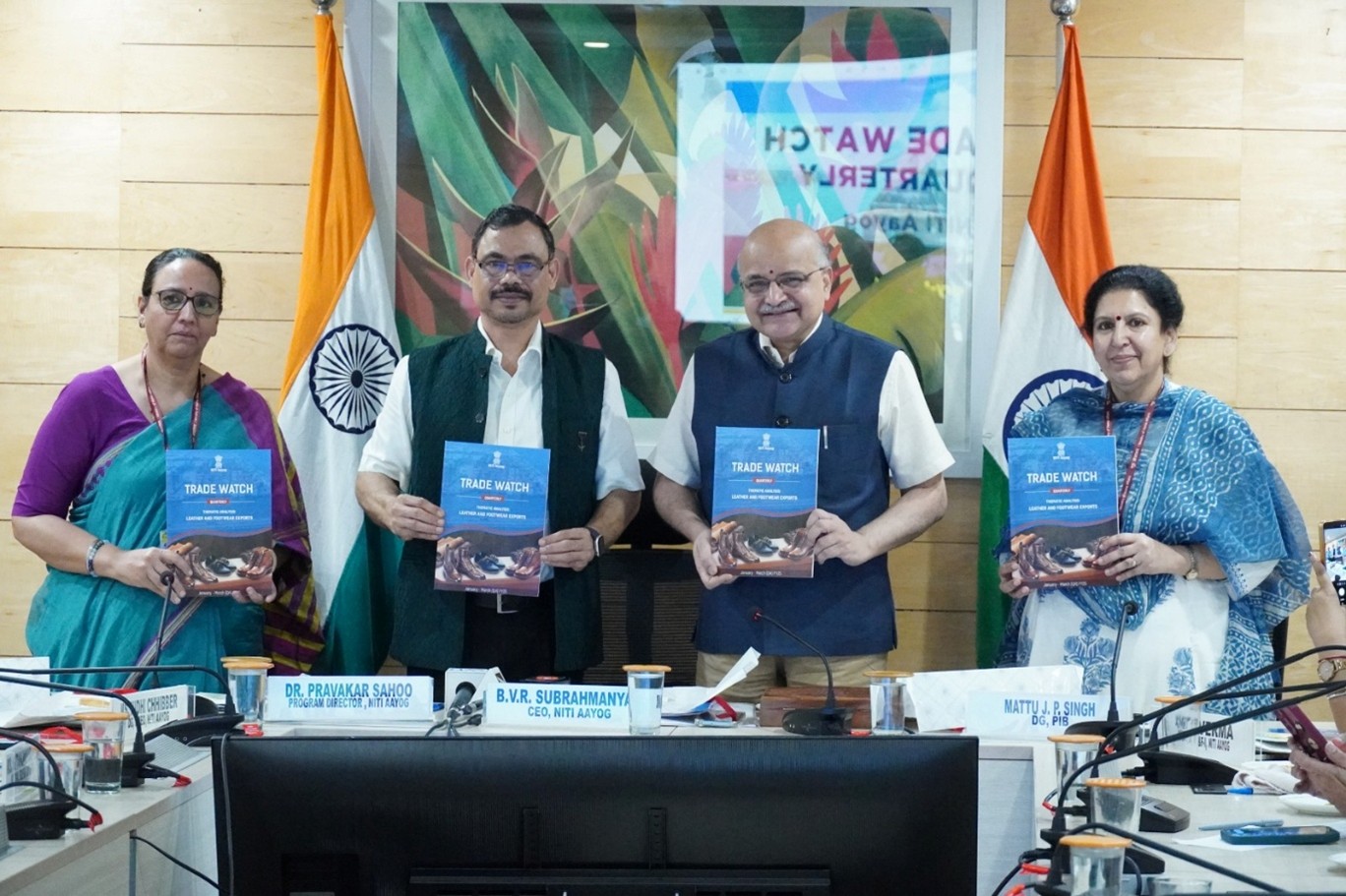
- 10 Oct 2025
In News:
NITI Aayog released the fourth edition of the “Trade Watch Quarterly” report for Q4 of FY 2024–25 (January–March 2025) in New Delhi. The report, unveiled by B.V.R. Subrahmanyam, CEO of NITI Aayog, provides a detailed evaluation of India’s trade performance, identifies emerging opportunities, and suggests policy directions for enhancing export competitiveness.
About the “Trade Watch Quarterly”
- Publisher: NITI Aayog
- Nature: Flagship analytical publication assessing India’s quarterly trade trends across merchandise and services.
- Objectives:
- To offer evidence-based insights into trade patterns, export competitiveness, and sectoral challenges.
- To guide policy interventions for strengthening India’s manufacturing ecosystem and expanding participation in global value chains (GVCs).
Key Highlights of Q4 FY 2024–25
- Total Trade: USD $441 billion, registering a 2.2% year-on-year increase.
- Annual Trade (FY25):
- Total: USD $1.73 trillion (+6% YoY)
- Exports: USD $823 billion
- Imports: USD $908 billion
Merchandise and Services Trends
- Merchandise Exports: Witnessed a modest contraction, primarily due to lower shipments of mineral fuels and organic chemicals.
- Growth Sectors: Electrical machinery, pharmaceuticals, and cereals.
- Services Exports: Reached an all-time high of $387.5 billion, led by IT, aviation, and financial services, reflecting India’s growing strength in high-value services.
Regional Trade Patterns
- Top Export Market:North America, accounting for 25% of India’s exports and growing 25% YoY.
- Moderate Growth Regions:EU, GCC, and ASEAN, showing a slowdown in demand.
- Import Trends:
- UAE became India’s second-largest supplier, driven by gold inflows under the CEPA agreement.
- China’s imports surged due to strong demand for electronics and machinery.
Sectoral Focus: Leather and Footwear Industry
- Employs 4.4 million people, contributing significantly to export earnings.
- India’s share in the $296 billion global market remains modest at 1.8%.
- Strengths: Competitive in processed leathers and niche apparel.
- Challenges & Opportunities:
- Global demand shifting towards non-leather and sustainable products.
- India must invest in R&D, MSME strengthening, green manufacturing, anddesign-led innovation to boost competitiveness and diversify exports.
Policy Insights and Way Forward
- India must:
- Diversify its export basket to align with evolving global demand patterns.
- Leverage trade agreements (like CEPA with UAE) to expand market access.
- Enhance manufacturing competitiveness through innovation and integration withGVCs.
- Strengthen non-leather footwear and sustainable sectors to tap into emerging global trends.
International Stabilization Force for Gaza (ISF)
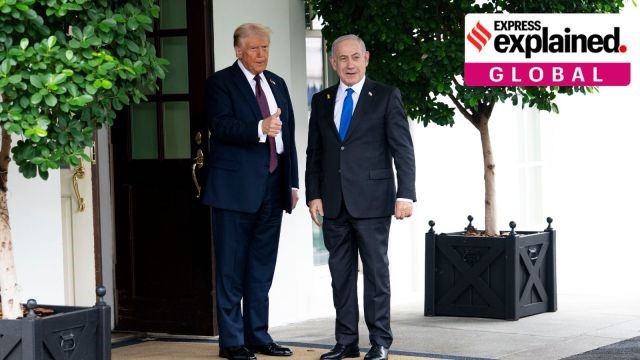
- 10 Oct 2025
In News:
In September 2025, U.S. President Donald Trump unveiled a 20-point “Comprehensive Plan to End the Gaza Conflict”, proposing an International Stabilization Force (ISF) to manage post-war Gaza. While both Israel and Hamas accepted the ceasefire and hostage-release obligations, deep divergences persist over Gaza’s future governance, Hamas’s fate, and the legitimacy of the ISF.
What Is the ISF?
The International Stabilization Force for Gaza is a proposed multinational security mission aimed at maintaining internal stability, enabling phased Israeli withdrawal, and overseeing Gaza’s demilitarization.
- Nature: A temporary but long-term security component of a technocratic, apolitical Palestinian Transitional Committee, which will govern Gaza during the interim period.
- Oversight: The ISF will operate under a “Board of Peace” chaired by the U.S. President, rather than the United Nations (UN).
- Composition: To be formed with “Arab and international partners,” but without a UN Security Council (UNSC) mandate—limiting its neutrality and legal legitimacy.
Objectives and Core Functions
- Demilitarization of Gaza:
- Confiscate and destroy Hamas weaponry.
- Prevent smuggling and block the inflow of arms.
- Security and Law Enforcement:
- Maintain order in “terror-free zones” vacated by the Israeli Defense Forces (IDF).
- Set milestones and timelines linked to Israel’s phased withdrawal.
- Capacity Building:Train and professionalize Palestinian law enforcement under international supervision.
- Governance Transition:Facilitate the formation of a reformed Palestinian security apparatus aligned with the transitional governance framework.
- Monitoring and Compliance:Track progress on demilitarization and withdrawal to prevent relapse into conflict.
Absence of a UN Mandate and Legitimacy Concerns
Unlike traditional UN peacekeeping or stabilization missions, which derive legitimacy from UNSC authorization under Chapter VII of the UN Charter, the ISF is designed to operate outside the UN framework.
- The UN’s role in Trump’s plan is restricted to aid distribution, not peacekeeping.
- Arab states have historically resisted deploying troops in Palestine under non-UN command, citing concerns about political bias and lack of legal accountability.
- Consequently, the ISF’s perceived alignment with American and Israeli objectives could undermine its credibility among Palestinians and regional actors.
Precedents and Lessons from Past Stabilization Missions
Previous stabilization forces outside or alongside the UN framework reveal the complexity and risks of such interventions:
- Afghanistan (ISAF, 2001–2021): Initially authorized by the UN and later led by NATO, the mission expanded into combat operations against the Taliban but failed to establish durable peace.
- Lebanon (MNF, 1982–1983): A U.S.-led multinational force, created outside the UN, withdrew after facing intense violence from militias, highlighting the dangers of intervention without broad legitimacy or consent.
These experiences underscore that stabilization without political resolution often leads to mission failure and regional backlash.
Challenges in the Palestinian Context
- Lack of Political Resolution:
- The two-state solution remains unrealized; Israeli occupation continues in parts of Gaza and the West Bank.
- Without a clear political settlement, any international force risks being drawn into hostilities.
- Israeli and Hamas Positions:
- Israel has refused a full withdrawal from Gaza, citing security concerns.
- Hamas has not agreed to complete disarmament or exclusion from the Palestinian political framework.
- These contradictory stances create operational uncertainty for the ISF.
- Arab States’ Reservations:
- Arab governments have called for aUN-mandated protection force, not a U.S.-led stabilization mission.
- An eight-nation Arab-Islamic statement (Sept 30, 2025) demanded Israel’s complete withdrawal, diverging sharply from Washington’s version of the plan.
- Risk of Renewed Armed Resistance:Partial Israeli withdrawal and continued occupation zones could fuel militant activity, increasing the risk of direct confrontation with the ISF.
- Limited Accountability:Absence of UN oversight and clear reporting mechanisms raises concerns over the ISF’s command structure, rules of engagement, and human rights compliance.
Geopolitical and Strategic Implications
- For the U.S.: The ISF signifies Washington’s intent to maintain strategic control over Gaza’s post-conflict order, reducing UN influence.
- For Israel: The arrangement allows for partial demilitarization without ceding full security control—aligning with its domestic political compulsions.
- For Arab States: It poses a dilemma between supporting stability and avoiding association with a potentially occupation-legitimizing force.
- For Palestine: The lack of a fully sovereign and representative governance framework risks perpetuating disenfranchisement and renewed cycles of violence.
State of Social Justice 2025
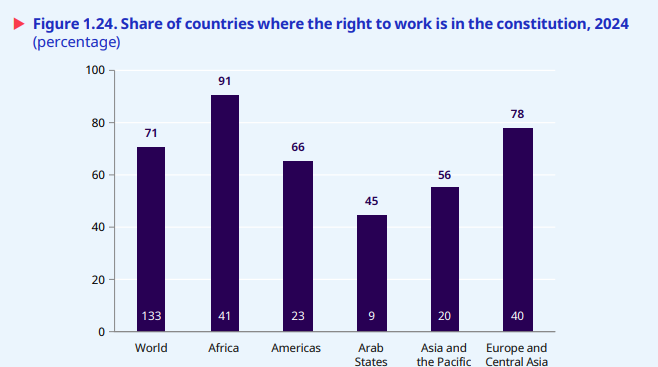
- 10 Oct 2025
In News:
The International Labour Organization (ILO) released its landmark report, “The State of Social Justice: A Work in Progress (2025)”, ahead of the Second World Summit for Social Development. The report marks three decades since the historic 1995 Copenhagen Summit and evaluates global efforts towards achieving justice, equality, and inclusion in a rapidly transforming world.
I. Purpose and Framework
The report assesses progress over 30 years in advancing social justice—defined as fair and equitable access to opportunities, rights, and resources—through four foundational pillars:
- Fundamental Human Rights and Capabilities – promoting freedom, equality, and universal social protection.
- Equal Access to Opportunities – removing barriers to education, employment, and fair wages.
- Fair Distribution – ensuring equitable sharing of the gains from economic growth.
- Fair Transitions – managing environmental, digital, and demographic shifts inclusively.
II. Global Progress: Achievements and Trends
1. Poverty and Labour Improvements
- Extreme Poverty fell sharply from 39% (1995) to 10% (2023).
- Working Poverty declined from 27.9% (2000) to 6.9% (2024).
- Labour Productivity per worker increased by 78% globally and by 215% in upper-middle-income countries, indicating narrowing productivity gaps between nations.
- Child Labour dropped from 20.6% (1995) to 7.8% (2024), driven by education access and monitoring systems.
2. Education and Skills
- Secondary school completion rates rose by 22 percentage points since 2000, underscoring significant human capital development.
3. Social Protection Expansion
- Over half of the global population is now covered by at least one form of social protection—pensions, healthcare, or income support—up from a marginal share in 1995.
III. Persistent Challenges
Despite these gains, the report warns that social justice remains “a work in progress,” with stark inequalities continuing to undermine inclusive growth.
1. Inequality and Wealth Concentration
- The top 1% of the global population controls 20% of income and 38% of total wealth.
- 800 million people still survive on less than US$3 per day, and one in four lacks access to safely managed drinking water.
2. Gender and Birth Inequalities
- Women earn 78% of men’s wages, and gender parity in labour participation has improved by only three percentage points since 1995.
- Nearly 71% of income outcomes globally are influenced by birth circumstances, reflecting entrenched structural inequities.
3. Informality and Job Quality
- 58% of workers remain in the informal economy, with limited access to labour rights and social protection.
- Collective bargaining rights have weakened globally, as reflected in declining compliance scores across income groups.
4. Declining Trust in Institutions
Confidence in governments, corporations, and unions has steadily eroded since the 1980s due to perceptions of unfair reward systems, corruption, and widening wealth gaps—posing risks to democratic stability.
IV. India in the Global Context
India mirrors many global patterns highlighted by the ILO but also shows unique progress in certain areas:
1. Poverty and Human Development
- Multidimensional poverty reduced from 29% (2013–14) to 11% (2022–23).
- Education: Secondary school completion rate reached 79% (2024), and female literacy stands at 77%.
- Digital Empowerment: The JAM trinity (Jan Dhan–Aadhaar–Mobile) enhanced direct benefit delivery and reduced leakages.
2. Social Protection and Welfare
Schemes such as PM-KISAN, Ayushman Bharat, and e-Shram have significantly extended coverage to over 55 crore unorganised workers. The Social Security Code (2020) further streamlined pension and maternity benefits.
3. Labour Market and Gender Gaps
- Informality remains high—over 80% of India’s workforce operates outside formal contracts.
- Female labour force participation has improved to 37% (PLFS 2024–25) but remains below the global average.
V. Managing Emerging Transitions
The ILO identifies three ongoing societal transitions that must be managed fairly to sustain progress:
- Climate Transition – Ensuring green jobs and protecting workers displaced by decarbonisation.
- Technological Transition – Bridging the digital divide through skills, reskilling, and inclusive access.
- Demographic Transition – Addressing challenges of ageing populations while leveraging youth dividends in developing countries.
To navigate these, the ILO recommends:
- Applying existing labour institutions to emerging contexts.
- Adapting them to specific transition challenges.
- Amplifying them by integrating labour concerns into climate, digital, and fiscal policies.
VI. ILO’s Key Recommendations
- Embed Social Justice Across Policies – Integrate equity into finance, trade, climate, and healthcare governance.
- Rebuild Trust in Institutions – Enhance transparency, accountability, and participatory policymaking.
- Invest in People – Expand education, skills, and lifelong learning to bridge gender and digital gaps.
- Strengthen Social Protection Systems – Aim for universal and portable coverage, backed by fair minimum wages.
- Promote Fair Transitions – Ensure environmental and technological shifts generate decent work.
- Enhance Global Cooperation – Reinforce multilateralism to manage migration, inequality, and global shocks.
WHO Global Report on Trends in Tobacco Use (2000–2024) and Projections (2025–2030)
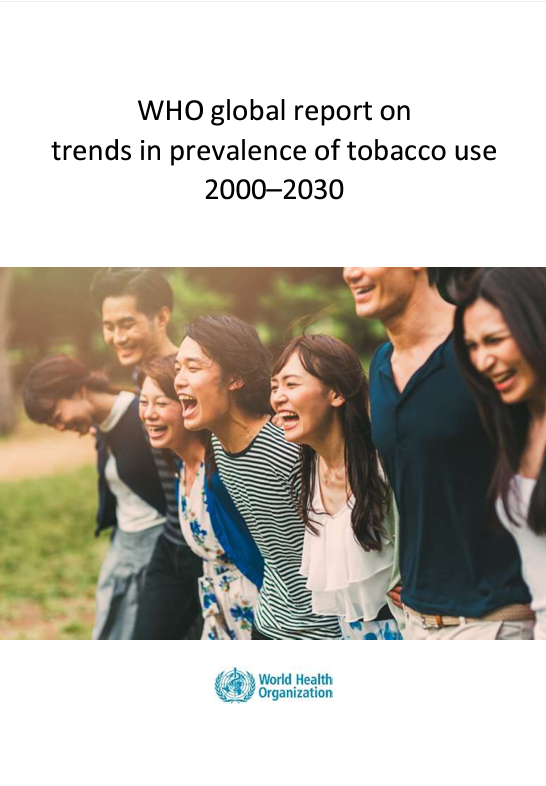
- 09 Oct 2025
In News:
The World Health Organization (WHO) released its latest report on global tobacco use, covering trends from 2000 to 2024 and projecting patterns through 2030. The report provides insights into the prevalence of tobacco consumption among individuals aged 15 years and above and assesses progress toward global reduction targets.
Global Tobacco Trends
- Declining Prevalence: Adult tobacco use worldwide decreased from 26.2% in 2010 to 19.5% in 2024.
- Continued Burden: Despite progress, approximately 1 in 5 adults still consumes tobacco.
- Rise of E-Cigarettes: Over 100 million people use e-cigarettes globally, introducing new regulatory and public health challenges.
India’s Tobacco Landscape
- Users (2024): Around 243.48 million Indians aged 15 and above consume tobacco.
- Global Ranking: India is the 2nd largest producer (after China) and 2nd largest exporter (after Brazil) of tobacco.
- Progress: India is projected to achieve a 43% reduction in prevalence between 2010–2025, surpassing the WHO’s NCD target of 30% reduction.
Measures to Control Tobacco Use in India
- Cigarettes and Other Tobacco Products Act (COTPA), 2003:
- Prohibits smoking in public areas.
- Bans tobacco advertising.
- Restricts sales to minors.
- Mandates packaging and labeling standards.
- Prohibition of Electronic Cigarettes Act, 2019:Outlaws theproduction, import, sale, and promotion of e-cigarettes and similar devices.
- National Tobacco Control Programme (NTCP, 2007–08):
- Promotes awareness of health risks associated with tobacco.
- Aligns with the WHO Framework Convention on Tobacco Control (FCTC).
- Tobacco-Free Film Rules, 2024:Enforces restrictions on tobacco depiction in films and television content.
- Yellow Line Campaign:Marks 100-yard boundaries around schools to enforce tobacco sales bans.
- Taxation and Pricing:Incremental hikes in excise and GST duties on tobacco products, though experts suggest further increases to maximize impact.
About Tobacco (Nicotiana tabacum)
- Botanical Profile: An annual herbaceous plant, native to tropical/subtropical South America, widely cultivated globally.
- Cultivation Requirements:
- Frost-free period of 90–120 days.
- Optimal temperature: 20–30°C.
- Rainfall: Minimum 500 mm; thrives in well-drained sandy loam or alluvial soils.
- Nicotine Content: All parts (except seeds) contain nicotine (2–8%), predominantly concentrated in the leaves (~64% of total plant nicotine).
Significance
The WHO report highlights that while tobacco use is declining globally, substantial public health efforts are still needed, particularly in regulating emerging products like e-cigarettes. India’s multi-pronged approach—legal frameworks, awareness campaigns, taxation, and innovative interventions—demonstrates a strong commitment to achieving tobacco-free goals by 2025.
Nobel Prize in Physiology or Medicine 2025
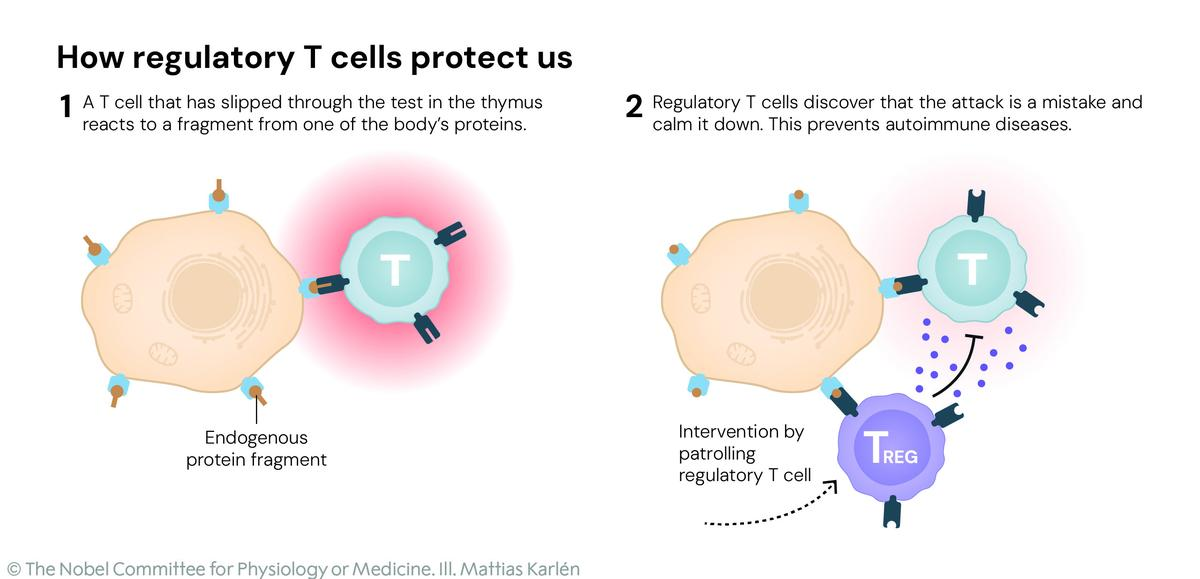
- 09 Oct 2025
In News:
The 2025 Nobel Prize in Physiology or Medicine was awarded jointly to Mary Brunkow, Fred Ramsdell, and Shimon Sakaguchi for their pioneering work on peripheral immune tolerance. Their research identified the critical role of regulatory T-cells (Tregs) in preventing the immune system from attacking the body’s own tissues.
The Human Immune System
The immune system protects the body against harmful pathogens, including bacteria, viruses, fungi, and parasites. It is composed of:
- Organs: Bone marrow, thymus, spleen, lymph nodes, and tonsils.
- Cells: White blood cells (leukocytes), including lymphocytes, macrophages, and neutrophils.
- Molecules: Antibodies, cytokines, and complement proteins.
Its central challenge is distinguishing between harmful invaders and the body’s own healthy cells, including those altered by mutation or cancer.
B-Cells and T-Cells
Lymphocytes, including B-cells and T-cells, are key players in immune defense.
- B-cells: Produce antibodies to neutralize antigens. Main types include plasma cells and memory cells.
- T-cells: Originate in the bone marrow, mature in the thymus, and migrate to lymphoid tissues and the bloodstream. Types include:
- Cytotoxic T-cells: Destroy virus-infected and tumor cells.
- Helper T-cells: Coordinate immune responses by signaling other immune cells.
- Regulatory T-cells (Tregs): Suppress excessive immune activity, preventing autoimmune reactions and maintaining self-tolerance.
Discovery and Significance
The laureates’ research revealed regulatory T-cells as the immune system’s “security guards,” preventing it from attacking the body.
Key implications:
- Advanced understanding of peripheral tolerance, the mechanism by which the immune system avoids self-damage.
- Informed the development of therapies for autoimmune diseases, cancer, transplantation, and chronic inflammatory conditions.
- Highlighted that tumors may recruit Tregs to evade immune destruction, providing insights for cancer immunotherapy.
The discovery reshaped immunology by showing that the immune system is not solely attack-oriented, but also self-regulating.
About the Nobel Prize
- Established: 1901, through Alfred Nobel’s will (largest share of his fortune dedicated).
- Fields: Physics, Chemistry, Physiology or Medicine, Literature, Peace; Economics added in 1968.
- Awarding Institutions:
- Karolinska Institute: Physiology or Medicine
- Royal Swedish Academy of Sciences: Physics, Chemistry, Economics
- Swedish Academy: Literature
- Norwegian Nobel Committee: Peace Prize
- Award Venues: Stockholm (all except Peace), Oslo (Peace Prize)
- Administration: Managed by the Nobel Foundation, independent of prize selection.
Selection Process:
- Nominations are invited from qualified individuals (scientists, professors, former laureates).
- Expert committees evaluate candidates and recommend winners.
- Final decisions rest with the respective Nobel institutions.
Mig La Pass
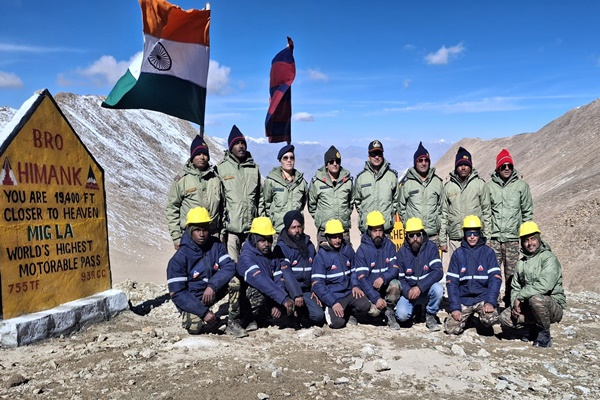
- 09 Oct 2025
In News:
The Border Roads Organisation (BRO), through Project Himank, has constructed the world’s highest motorable road at Mig La Pass in Ladakh, situated at 19,400 feet above sea level, surpassing the previous record held by Umling La (19,024 ft) in 2021. This achievement highlights India’s engineering capability and strategic preparedness in high-altitude border areas.
About Mig La Pass
- Location: Changthang Plateau, Ladakh.
- Altitude: 19,400 ft, making it the highest motorable road in the world.
- Strategic Significance:
- Connects Likaru–Mig La–Fukche, forming a third vital corridor from Hanle to Fukche, near the Indo-China border.
- Enhances logistical and military mobility, strengthening access to forward areas close to the Line of Actual Control (LAC).
- Engineering Features:
- All-weather road capable of withstanding harsh winters, shifting glaciers, and low oxygen conditions.
- Designed for continuous vehicular movement, critical for both military and civilian access.
- Tourism Potential: Provides panoramic views of the Indus Valley, potentially boosting local tourism.
Project Himank
- Established: 4 December 1985 at Leh, to develop road communication in Ladakh’s challenging terrain.
- Operational Scope: Works in high-altitude regions with short working seasons and extreme climatic conditions.
- Contributions:
- Supports the Indian Army in operations, logistics, and connectivity.
- Ensures maintenance of key routes, including the Leh-Manali and Zojila axes.
- Executes landslide and avalanche clearance, bridge construction, and snow removal.
- Aids in restoring road communication and opening airfields in remote areas.
- Engineering Excellence: Demonstrates BRO’s capability to construct durable infrastructure under extreme terrain, low oxygen, and sub-zero temperatures.
Coral Larvae Cryobank
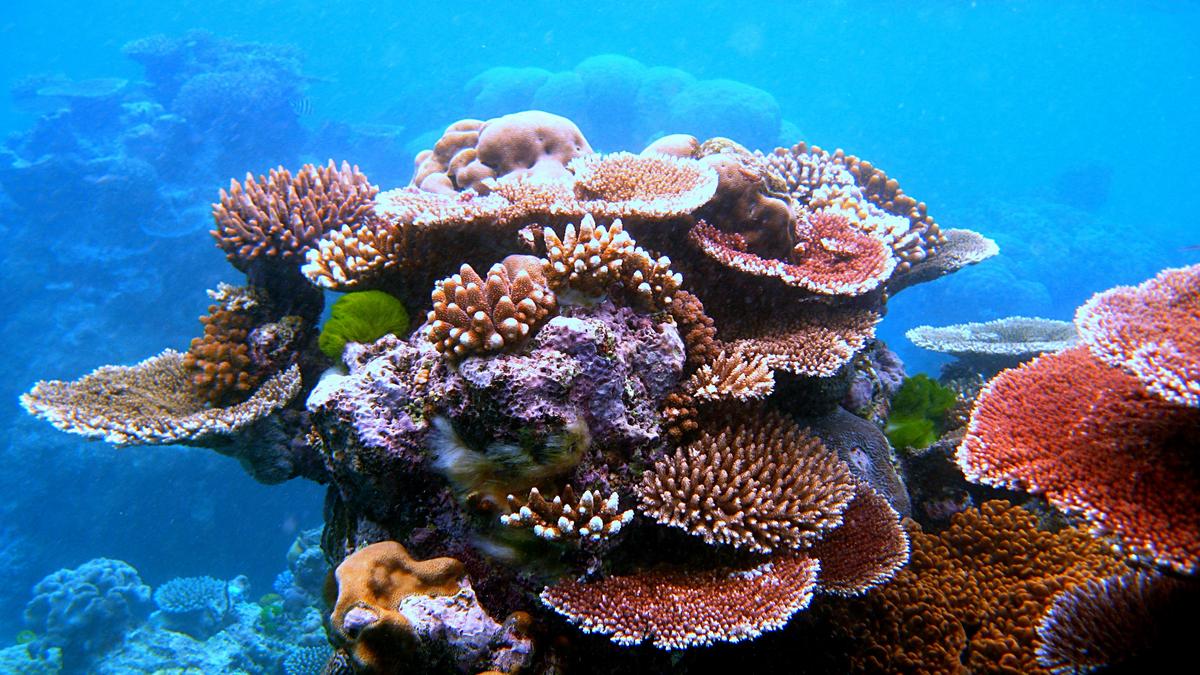
- 09 Oct 2025
In News:
In a significant step toward marine conservation, the Philippines has established Southeast Asia’s first coral larvae cryobank, aimed at safeguarding coral genetic diversity and restoring threatened reef ecosystems. The initiative marks a pioneering regional collaboration among research institutions in the Philippines, Taiwan, Indonesia, Malaysia, and Thailand.
About the Coral Cryobank Initiative
- The Coral Larvae Cryobank is designed to freeze and store coral larvae at ultra-low temperatures, thereby preserving their genetic material for future reef restoration.
- It is part of a regional conservation programme supported by the Coral Research & Development Accelerator Platform, with technical guidance from Dr. Chiahsin Lin and the University of the Philippines Marine Science Institute.
- The cryobank acts as a “genetic insurance policy” to protect coral biodiversity in the face of rising ocean temperatures, pollution, and habitat destruction.
Cryopreservation: The Science Behind It
Cryopreservation is a process of preserving living cells or tissues at –196°C using liquid nitrogen, which halts all biological activity.
- Cryoprotectant solutions (such as glycerol, DMSO, and ethylene glycol) are used to prevent ice crystal formation that can damage cells.
- The process of vitrification converts the larvae into a glass-like state, allowing them to remain intact indefinitely.
- Laser-assisted thawing enables rapid revival of viable coral larvae, which can later be used for reef restoration and rehabilitation.
This technique ensures that coral genetic material remains preserved even if wild populations are damaged by bleaching events or ocean warming.
The Coral Triangle: The ‘Amazon of the Seas’
- The Coral Triangle, often termed the “Amazon of the Seas”, spans about 6 million sq. km across Indonesia, Malaysia, Papua New Guinea, the Philippines, Solomon Islands, and Timor-Leste.
- It covers two major biogeographic regions — the Indonesian–Philippines Region and the Far Southwestern Pacific Region — and represents the richest marine biodiversity hotspot on Earth.
Key Features
- Home to over 75% of global coral species and one-third of all reef fish.
- Supports six of the world’s seven marine turtle species.
- Sustains the livelihoods and food security of over 120 million people.
- Hosts vast mangrove forests and seagrass ecosystems, critical for carbon sequestration and coastal protection.
Threats to Coral Ecosystems
The Coral Triangle faces escalating threats due to climate change and anthropogenic pressures.
- Rising sea temperatures trigger coral bleaching, where corals expel symbiotic algae (zooxanthellae), turning white and losing energy sources.
- The Status of Coral Reefs of the World 2020 report found that 14% of the world’s corals were lost between 2009 and 2018.
- Projections indicate that 70–90% of live corals could vanish by 2050 without effective conservation.
- Destructive fishing, coastal pollution, and unregulated tourism further degrade reef habitats.
Understanding Corals
- Corals are marine invertebrates belonging to the Cnidaria phylum.
- They consist of tiny organisms called polyps, which secrete calcium carbonate skeletons that form coral reefs.
- The color of corals arises from symbiotic algae within their tissues, essential for nutrient exchange.
- Types of coral reefs:
- Fringing reefs – develop along shorelines
- Barrier reefs – found in open water separated from land by lagoons
- Atolls – circular reefs surrounding submerged volcanoes
- Coral reefs act as nurseries for one-fourth of all marine life, providing food, shelter, and breeding grounds.
Significance of Coral Cryobanking
The cryobank serves as a long-term safeguard for coral biodiversity by ensuring viable genetic material remains preserved even in the event of large-scale reef degradation.
Key benefits include:
- Conservation of genetic diversity for future breeding and research.
- Restoration of degraded reefs through reintroduction of cryopreserved larvae.
- Strengthening regional resilience against climate-induced coral loss.
- Promotion of scientific cooperation across Southeast Asian nations.
Paramparagat Krishi Vikas Yojana (PKVY)
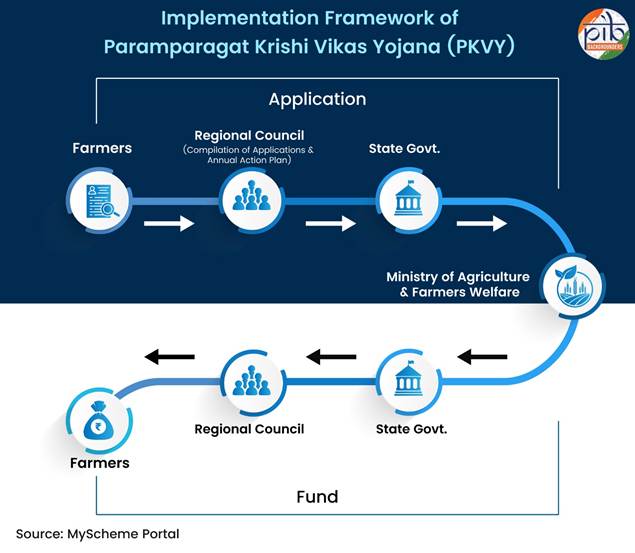
- 09 Oct 2025
In News:
The Paramparagat Krishi Vikas Yojana (PKVY), launched in 2015 under the National Mission for Sustainable Agriculture (NMSA), is India’s flagship programme to promote organic farming. Over the past decade, it has become central to the country’s efforts to shift from input-intensive agriculture toward sustainable, eco-friendly, and farmer-led models of food production.
Rationale and Need
Indian agriculture, though rooted in traditional knowledge, has witnessed increasing soil degradation, declining biodiversity, and rising chemical dependence. PKVY aims to restore ecological balance, ensure food safety, and enhance farmer incomes through a structured transition to organic farming.
Key Objectives
- Promote chemical-free, eco-agriculture and improve soil health.
- Support farmer collectives in production, certification, and marketing.
- Ensure sustainable income generation through premium pricing and reduced input costs.
- Build domestic and export markets for certified organic products.
- Foster climate-resilient agriculture and biodiversity conservation.
Implementation Framework
PKVY operates on a cluster-based model, where farmers are mobilized in groups of 20 hectares to adopt organic practices collectively.
Each participating farmer receives ?31,500 per hectare for three years, distributed as:
- ?15,000 for on-farm/off-farm organic inputs (via DBT)
- ?4,500 for marketing, packaging & branding
- ?3,000 for certification and residue analysis
- ?9,000 for training & capacity building
Implementation follows a bottom-up approach:
- Farmers approach Regional Councils, which compile and submit Annual Action Plans to the Ministry of Agriculture & Farmers Welfare.
- Funds are released by the Centre to States, and then to farmers through Direct Benefit Transfer (DBT), ensuring transparency and timely assistance.
Eligibility is open to all farmers and institutions, with a landholding limit of two hectares per beneficiary.
Organic Certification Framework
To ensure market credibility, PKVY integrates two certification systems:
- National Programme for Organic Production (NPOP):
- Administered by the Ministry of Commerce & Industry.
- A third-party certification ensuring compliance with global organic standards for production, processing, and exports.
- Participatory Guarantee System (PGS-India):
- Operated by the Ministry of Agriculture & Farmers Welfare.
- A community-based, peer-review system allowing small and marginal farmers to self-certify through mutual verification.
- Recognized for the domestic market under the Jaivik Bharat logo.
To accelerate certification, the Large Area Certification (LAC) programme was launched in 2020–21 for areas where chemical farming was never practiced—such as tribal belts, islands, and eco-preserved zones. The LAC model reduces the conversion period from 2–3 years to a few months.
Associated Initiatives
- Mission Organic Value Chain Development for North Eastern Region (MOVCDNER): Supports organic farming in the NE states through value-chain and market linkages.
- Jaivik Kheti Portal: A digital marketplace connecting farmers, buyers, and input suppliers for direct sale of organic produce.
- Formation of 10,000 Farmer Producer Organizations (FPOs): Strengthening collective marketing and input access for organic producers.
India’s Organic Landscape
- India ranks 4th globally in certified organic area (IFOAM, 2022) and 1st in the number of organic farmers.
- Madhya Pradesh has the largest certified area, followed by Maharashtra, Rajasthan, Gujarat, and Karnataka.
- Organic exports: valued at $708 million (2022–23), with global market potential exceeding $138 billion.
Ortolan Bunting

- 08 Oct 2025
In News:
A rare European migratory bird, the Ortolan Bunting (Emberizahortulana), was recently spotted in Baruipur, on the southern outskirts of Kolkata, West Bengal. This marks only the second recorded sighting of the species in the state, with the last being in the Sundarbans in 2014.
About Ortolan Bunting:
- Scientific Name:Emberizahortulana
- Type: Small Palearctic migratory songbird
- Distribution: Native to Europe and parts of Central Asia, extending east to Mongolia and north to the Arctic Circle.
- Migration: The species typically migrates to sub-Saharan Africa during the winter months.
Habitat and Characteristics:
- Preferred Habitat: Open or semi-open agricultural lands, slopes, and grasslands with scattered shrubs; generally avoids dense forests and oceanic climates.
- Altitude Range: Found up to 2,500 metres in suitable habitats.
- Physical Features:
- Length: 16–17 cm; Wingspan: about 25 cm.
- Males have a greenish-grey head, yellow throat, and brown-streaked body.
- Females and juveniles are smaller and duller, with spotted underparts.
- Possess a conical beak suited for cracking seeds.
Conservation Status:
- IUCN Red List: Least Concern
Despite its status, the Ortolan Bunting faces population decline in parts of Europe due to habitat loss and illegal hunting — particularly in France, where it was once considered a delicacy.
Significance of the Sighting:
- Highlights the importance of citizen-led biodiversity monitoring through platforms like eBird and BirdForum.
- Suggests potential changes in migratory routes, possibly influenced by climatic shifts.
- Reinforces West Bengal’s ecological diversity, which continues to attract rare and migratory bird species.
PM-SETU Scheme
- 08 Oct 2025
In News:
- Prime Minister Narendra Modi launched a series of youth-focused initiatives worth over ?62,000 crore, aimed at empowering India’s young population through education, skill development, and entrepreneurship.
- The announcements were made during the Kaushal DeekshantSamaroh held at Vigyan Bhawan, New Delhi, marking a significant step toward building a future-ready workforce aligned with global skill demands.
Pradhan Mantri Skilling and Employability Transformation through Upgraded ITIs (PM–SETU)
The centrepiece of the event was the launch of the PM–SETU scheme — a centrally sponsored initiative with an investment of ?60,000 crore. The scheme seeks to revitalize Industrial Training Institutes (ITIs) across India, transforming them into modern, industry-linked centers of skill excellence.
Key Features of PM–SETU
- Coverage: Transformation of 1,000 Government ITIs into modern, technology-driven institutes.
- Implementation Model:
- Based on a Hub-and-Spoke structure, comprising 200 hub ITIs connected to 800 spoke ITIs.
- Hub ITIs will host innovation centers, incubation units, production facilities, and training-of-trainers setups.
- Spoke ITIs will extend outreach, ensuring skill accessibility to smaller towns and semi-urban regions.
- Curriculum and Industry Linkage:
- Introduction of new demand-driven courses and modernization of existing ones in collaboration with industry partners.
- Establishment of Special Purpose Vehicles (SPVs) with anchor industries to ensure cluster-based training and employability outcomes.
- Academic Integration: Creation of pathways for short-term training, executive programs, and long-term diploma courses to align with higher education and employment opportunities.
- Centres of Excellence: Strengthening of five National Skill Training Institutes—
- Bhubaneswar (Odisha)
- Chennai (Tamil Nadu)
- Hyderabad (Telangana)
- Kanpur (Uttar Pradesh)
- Ludhiana (Punjab)
These will serve as global-level Centres of Excellence through partnerships with leading international institutions.
- Global Collaboration: The initiative is co-financed by the World Bank and the Asian Development Bank (ADB), with the first phase focusing on Patna and Darbhanga ITIs in Bihar.
Other Youth-Focused Announcements
- Vocational Skill Labs: Inauguration of 1,200 vocational skill labs across 400 Jawahar Navodaya Vidyalayas (JNVs) and 200 Eklavya Model Residential Schools spread across 34 States and Union Territories, to integrate skill education at the school level.
- Bihar’s Revamped MukhyamantriNishchay Swayam Sahayata Bhatta Yojana:
- Under the revamped scheme, five lakh graduate youth in Bihar will receive a monthly allowance of ?1,000 for two years, along with free skill training.
- The scheme aims to enhance youth employability and entrepreneurship readiness.
- Karpoori Thakur Skill University: A Skill University named after Bharat RatnaKarpoori Thakur will be established to honor his contribution to social empowerment and education.
- Recognition of Excellence: The Prime Minister also felicitated 46 All India Toppers from Industrial Training Institutes (ITIs) under the Ministry of Skill Development and Entrepreneurship (MSDE).
MeerKAT Radio Telescope
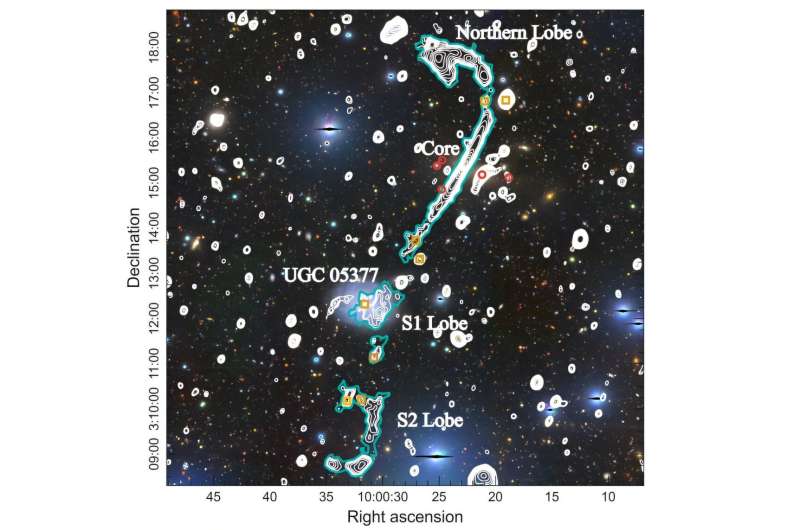
- 08 Oct 2025
In News:
An international team of astronomers has recently used South Africa’s MeerKAT Radio Telescope to identify a new giant radio galaxy (GRG) within the COSMOS field, as part of the MeerKAT International GHz Tiered Extragalactic Exploration (MIGHTEE) survey. The discovery, published on November 11, offers valuable insights into the formation and evolution of radio galaxies and the large-scale structure of the universe.
About the MeerKAT Radio Telescope
- Location: Situated in the Northern Cape province of South Africa, MeerKAT is a world-class radio interferometer operated by the South African Radio Astronomy Observatory (SARAO).
- Origin: Initially conceptualized as the Karoo Array Telescope (KAT) with 20 dishes, its scope was later expanded to 64 dishes, leading to its renaming as “MeerKAT” (meaning “more of KAT”).
- Specifications: Each dish measures 13.5 meters in diameter, spread across a maximum distance of 8 km.
- Technology: Signals received by individual dishes are transmitted to a central processor, allowing them to function collectively as a single, high-resolution telescope.
- Purpose:MeerKAT is a precursor instrument for the Square Kilometre Array (SKA) — the world’s largest and most sensitive radio telescope project, aimed at exploring the origin and evolution of the universe.
- Significance: Currently, MeerKAT is among the most powerful radio interferometers operating at centimetre wavelengths, enabling detailed observations of distant cosmic structures.
About Radio Galaxies
A radio galaxy is a type of galaxy that emits intense radio waves extending far beyond its visible boundaries. These emissions typically arise from jets and lobes of plasma produced by the galaxy’s active galactic nucleus (AGN), which is powered by a supermassive black hole.
The interaction of these jets with surrounding matter generates synchrotron radiation, making such galaxies prominent sources of radio emissions in the cosmos.
The Discovery: MGTC J100022.85+031520.4
Using MeerKAT’s advanced capabilities, astronomers identified a new giant radio galaxy (designated MGTC J100022.85+031520.4) within the COSMOS field.
Key Characteristics:
- Host Galaxy: Elliptical galaxy SDSS J100022.85+031520
- Redshift: Approximately 0.1034
- Size: About 4.2 million light years in projected length — qualifying it as a Giant Radio Galaxy (GRG)
- Mass: Nearly 93 trillion solar masses
- Radio Power:597 ZW/Hz at 1,284 MHz
- Age: Estimated 1 billion years
- Jet Power: Around 1 million QW
- Location: Identified as the Brightest Cluster Galaxy (BCG) within the galaxy cluster WHL J100022.9+031521
This makes it one of the few (around 4%) known GRGs that exist within a cluster environment rather than in isolated regions.
Baratang Island
- 08 Oct 2025
In News:
India’s only mud volcano, located at Baratang Island in the Andaman and Nicobar Islands, has erupted again after more than two decades.
About Baratang Island
- Location:Baratang Island lies in the North and Middle Andaman district, approximately 150 km from Port Blair.
- Geological Uniqueness: It is home to India’s only known mud volcanoes, making it a prominent site for geological study and eco-tourism.
- Tribal Presence: The region is also inhabited by the Jarawa tribe, one of the indigenous groups of the Andaman and Nicobar Islands.
- Previous Activity: The last major eruption occurred in 2005, which was attributed to seismic activity and oceanic tectonic movements in the region.
What are Mud Volcanoes?
- Definition: Mud volcanoes, also known as “mud domes,” are geological structures formed by the eruption of mud slurries, gases, and water rather than molten rock.
- Formation Process:
- They occur when gases (mainly methane, with traces of carbon dioxide or nitrogen), generated from the decay of organic matter deep underground, force a mixture of mud and water to the surface.
- This process creates cone-shaped mounds or domes resembling typical volcanoes, but without lava.
- Characteristics:
- Their temperature is much lower than that of igneous volcanoes.
- They can range from a few meters to several hundred meters in height and up to 10 km in width.
- Some mud volcanoes also exist underwater, influencing seabed topography and occasionally forming new landforms or islands.
Comparison with Barren Island Volcano
- Barren Island, another volcanic site in the Andaman region, witnessed minor eruptions in September 2025—on the 13th and 20th.
- It is located about 140 km northeast of Port Blair and is India’s only active volcanic island, lying at the junction of the Indian and Burmese tectonic plates.
- Historical records show eruptions at Barren Island in 1787, 1991, 2005, 2017, and 2022.
- Officials have clarified that the Baratang mud volcano and the Barren Island volcano are distinct geological entities—the former being sedimentary and gas-driven, while the latter is igneous and magma-driven.
Significance and Precautions
- The Baratang eruption underscores the geological dynamism of the Andaman and Nicobar region, which lies in a seismically active zone due to the subduction of the Indian Plate beneath the Burmese Plate.
- Tourism and Safety: The site is a popular tourist attraction, but safety protocols have been enforced to prevent accidents.
- Scientific Importance: Such eruptions provide valuable insights into subsurface gas activity, tectonic movement, and geothermal processes in the region.
Stable Coins
- 08 Oct 2025
In News:
The Union Finance Minister recently emphasized that countries must be prepared to engage with stablecoins, noting that rapid innovations in the cryptocurrency space are reshaping the global monetary order.
What are Stablecoins?
- Stablecoins are a category of cryptocurrencies designed to maintain a steady value by being linked to a reference asset—most often a fiat currency like the U.S. dollar, though they may also be tied to commodities or a basket of currencies.
- Unlike volatile digital assets such as Bitcoin or Ethereum, stablecoins are meant to minimize price fluctuations, making them more practical for payments, remittances, and everyday transactions within blockchain-based systems.
Types of Stablecoins
1. Fully-Backed (Collateralized) Stablecoins
- Definition: These stablecoins are backed one-to-one by tangible, high-quality assets held in reserve—typically cash, government securities, or other liquid instruments.
- Mechanism: For every coin issued, there is an equivalent amount of the pegged asset held in custody. This ensures that users can redeem their tokens for fiat currency at a fixed rate, maintaining stability and user trust.
2. Algorithmic Stablecoins
- Definition: These coins are not supported by actual reserves but rely on pre-programmed algorithms to keep their value stable.
- Mechanism:
- When the coin’s price rises above its target value, the algorithm issues more tokens to increase supply.
- When the price falls below the peg, the system removes tokens from circulation to reduce supply.
This self-adjusting mechanism helps maintain price equilibrium without physical collateral.
Key Features and Advantages
- Price Stability: Designed to minimize volatility, stablecoins are suitable for trade, payments, and as a safe asset within the crypto ecosystem.
- Transaction Efficiency: They enable instant and low-cost transfers, particularly across borders, reducing reliance on traditional intermediaries.
- Programmability: Being digital and blockchain-based, stablecoins can be easily integrated into smart contracts and decentralized finance (DeFi) systems, automating financial operations.
- Digital Representation of Fiat: They serve as a blockchain version of national currencies, facilitating real-time settlements and bridging traditional and digital finance.
Snow Leopard
- 07 Oct 2025
In News:
- A recent survey by the Wildlife Wing of the Himachal Pradesh Forest Department has revealed that the state now hosts 83 adult snow leopards, a notable increase from the 51 recorded in 2021.
- Conducted over one year with strong community participation, the assessment marks Himachal Pradesh as the first state in India to carry out a second state-wide snow leopard survey, providing a robust baseline for future conservation efforts.
About Snow Leopards (Panthera uncia):
- Known as the “ghost of the mountains”, snow leopards are large, elusive wild cats and serve as important indicator species for fragile high-altitude ecosystems.
- State Animal: Himachal Pradesh
- Distribution: Native to high mountains across 12 countries in Central and South Asia, including Afghanistan, China, India, Nepal, and Mongolia. In India, found in Western Himalayas (J&K, Ladakh, Himachal Pradesh, Uttarakhand) and Eastern Himalayas (Sikkim, Arunachal Pradesh).
- IUCN Status: Vulnerable (VU)
Key Characteristics:
- Physical Traits: Thick white-grey fur with dark rosettes for camouflage; powerful hind legs for leaping across rugged terrain.
- Diet: Carnivorous—feeds on blue sheep, Himalayan ibex, marmots, pikas, hares, and other high-altitude prey.
- Habitat & Territory: Prefers cold deserts and rocky slopes above 3,000 m, sometimes reaching 5,500 m; requires large territories (5–190 sq miles) due to low prey density.
- Behavior: Solitary and territorial, mostly nocturnal and elusive.
Survey Highlights:
- Conducted across six sites covering Himachal’s 26,000 sq km snow leopard habitat using camera traps.
- Snow leopards recorded in core areas such as Lahaul-Spiti, Kinnaur, and Pangi Valley, and also beyond protected areas like Kibber Wildlife Sanctuary, Great Himalayan National Park, Sechu Tuan Nala, and Asrang Wildlife Sanctuary.
- Prey and Biodiversity: Updated distribution maps for blue sheep, Himalayan ibex, musk deer, Himalayan wolves, brown bears, red foxes, leopards, and martens. First official sighting of Pallas’s cat in Kinnaur and rediscovery of the woolly flying squirrel in Lahaul.
Cyclone Shakhti
- 07 Oct 2025
In News:
Recently, the India Meteorological Department (IMD) confirmed the formation of Cyclone Shakhti over the northeast Arabian Sea. Named by Sri Lanka under the World Meteorological Organisation’s regional naming system, Shakhti is a tropical cyclonic storm forming approximately 340 km west of Dwarka, Gujarat.
Formation and Track:
The cyclone developed due to low-pressure systems over the warm Arabian Sea waters in early October 2025. IMD reports indicate:
- Shakhti intensified into a Cyclonic Storm (CS) on 3 October and was forecasted to become a Severe Cyclonic Storm (SCS) by 4 October.
- Initially moving west-northwest, it is likely to track west-southwest, reaching central parts of the north and adjoining central Arabian Sea by 5 October.
- A subsequent recurvature is expected, moving east-northeastward from 6 October.
Significance:
The occurrence of Cyclone Shakhti highlights the increasing cyclonic activity in the Arabian Sea, historically less active than the Bay of Bengal. Warmer sea surface temperatures have led to the rapid intensification of recent cyclones, including Tauktae (2021) and Biparjoy (2023), off India’s west coast.
Comparative Context:
- The Bay of Bengal experiences more cyclones due to semi-enclosed waters retaining warmth (29–30°C), abundant moisture from rivers and monsoon flows, and low-pressure pulses from Pacific typhoons.
- In contrast, the Arabian Sea is cooler, influenced by dry winds from Oman and Yemen, and lacks such external triggers, which traditionally limited cyclone intensity.
- Rising temperatures, however, are changing this pattern, making the Arabian Sea increasingly prone to severe cyclones.
Dhvani Missile
- 07 Oct 2025
In News:
India is on the verge of a historic breakthrough with the upcoming test of Dhvani, a cutting-edge hypersonic missile developed by the Defence Research and Development Organisation (DRDO). This missile positions India among an elite group of nations with hypersonic capabilities, including the United States, Russia, and China.
About Dhvani:
- Dhvani is being developed as a Hypersonic Glide Vehicle (HGV), capable of speeds exceeding Mach 5 (over 7,400 km/h).
- Unlike conventional missiles that follow predictable trajectories, Dhvani is launched to extreme altitudes and then glides toward its target with high maneuverability, making detection and interception extremely difficult. It is designed to strike both land-based and maritime targets with precision.
- Estimated ranges are 6,000 to 10,000 kilometers, potentially doubling the reach of India’s current Agni-V intercontinental ballistic missile.
Design and Technology:
- Dimensions: Approximately 9 meters long and 2.5 meters wide with a blended wing-body configuration.
- Heat Protection: Uses ultra-high-temperature ceramic composites to withstand 2,000–3,000°C during atmospheric reentry.
- Stealth Features: Angled surfaces and smooth contours reduce radar visibility.
- Indigenous Development: Built on technologies demonstrated by the Hypersonic Technology Demonstrator Vehicle (HSTDV), including scramjet propulsion and thermal shielding.
Strategic Implications:
The Dhvani missile significantly enhances India’s strategic deterrence, creating a technological edge in South Asia. Its ability to perform unpredictable maneuvers during the terminal phase renders most current missile defense systems ineffective, thereby deterring adversaries.
Global Context:
Dhvani is comparable to China’s DF-ZF, Russia’s Avangard, and U.S. programs such as Dark Eagle and HACM, which face developmental delays. India’s achievement demonstrates self-reliance in critical defense technologies and strengthens its capability for both regional security and global power projection.
Compressive Asphyxia
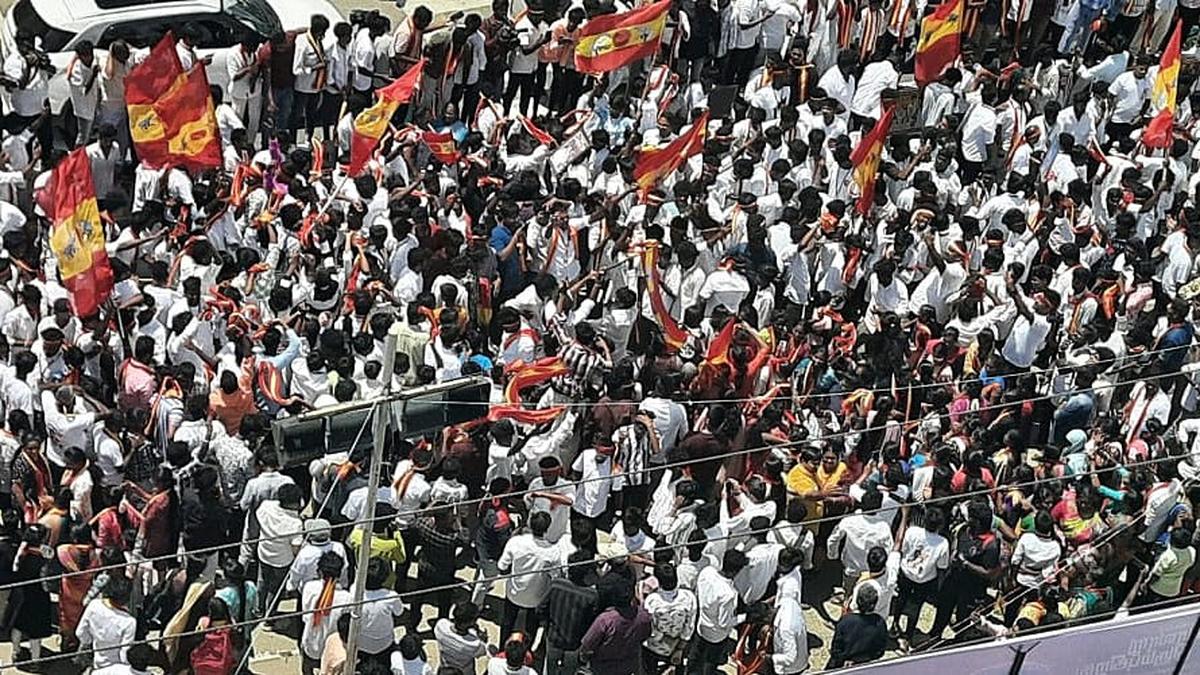
- 07 Oct 2025
In News:
The recent tragic stampede at a rally of TamilagaVetriKazhagam (TVK) in Velusamypuram, Tamil Nadu, resulted in 41 deaths, including nine children. Doctors have attributed most fatalities to compressive asphyxia, highlighting the dangers of overcrowded events in India.
What is Asphyxia?
Asphyxia, or asphyxiation, occurs when the body does not receive sufficient oxygen. Normally, respiration allows oxygen to circulate via blood to all cells while removing carbon dioxide. In asphyxia, inadequate oxygen can lead to unconsciousness, organ failure, or death.
Types of Asphyxia:
Medical literature classifies asphyxia into several types:
- Mechanical Asphyxia: Physical obstruction preventing normal breathing.
- Traumatic Asphyxia: Strong external force on the thoracic cavity causes blood to backflow to the brain.
- Perinatal Asphyxia: Insufficient oxygen before, during, or shortly after birth.
- Compressive Asphyxia: External pressure on the chest or abdomen prevents expansion of the lungs.
- Other Types: Include suffocation, chemical asphyxia, strangulation, and drowning.
Compressive Asphyxia in Crowds:
In large gatherings or stampedes, people can be pressed tightly against each other. The diaphragm, a key muscle for breathing, cannot contract effectively, preventing inhalation and exhalation. This leads to oxygen deprivation (hypoxia) and carbon dioxide buildup (hypercapnia), which can cause organ failure and death.
Crowd Density and Risk:
- Safe crowd density: up to 5 persons per square metre.
- Densities above 6–7 per square metre significantly increase the risk of compressive asphyxia.
- The UK’s Green Guide suggests a maximum of 4.7 persons per square metre for standing areas in public venues.
Preventive Measures:
To stay safe in crowds:
- Assess venue layout and crowd capacity.
- Be aware of weather conditions.
- Move with a partner and identify safe meeting points.
- Wear bright clothing and note all exit routes.
- Move diagonally or sideways to reach open spaces.
- Exit early if the situation feels unsafe.
Dark Stars

- 07 Oct 2025
In News:
Recent astronomical observations have provided evidence for the existence of “dark stars,” a hypothesized class of the earliest stars in the universe. Unlike conventional stars powered by nuclear fusion, dark stars are thought to derive their energy from dark matter annihilation.
What Are Dark Stars?
- Dark stars are believed to have existed in the early universe and may represent the first phase of stellar evolution. These stars are immense, potentially 400 to 200,000 times larger and 500 to 1,000 times more massive than the Sun. Despite their size, they are not very hot because their energy source is dark matter heating rather than nuclear fusion.
- Unlike ordinary stars, dark stars are giant, puffy clouds rather than compact objects. They could shine as brightly as an entire early galaxy, emitting gamma rays, neutrinos, and possibly antimatter, but remain largely invisible in visible light. This explains why they have remained undetected until recent observations.
Recent Discoveries:
Data from the James Webb Space Telescope (JWST) has identified four candidate dark stars whose light profiles align with theoretical predictions for supermassive dark stars. If confirmed, these findings could:
- Explain the presence of unusually bright objects in the early universe.
- Offer insights into the formation of the first supermassive black holes, a longstanding puzzle in cosmology.
Significance for Cosmology:
Understanding dark stars provides crucial insights into:
- The role of dark matter in early stellar evolution.
- The transition from the first stars to the formation of galaxies and black holes.
- The evolution of the universe’s luminous structure in its formative stages.
Akshar Fast Patrol Vessel
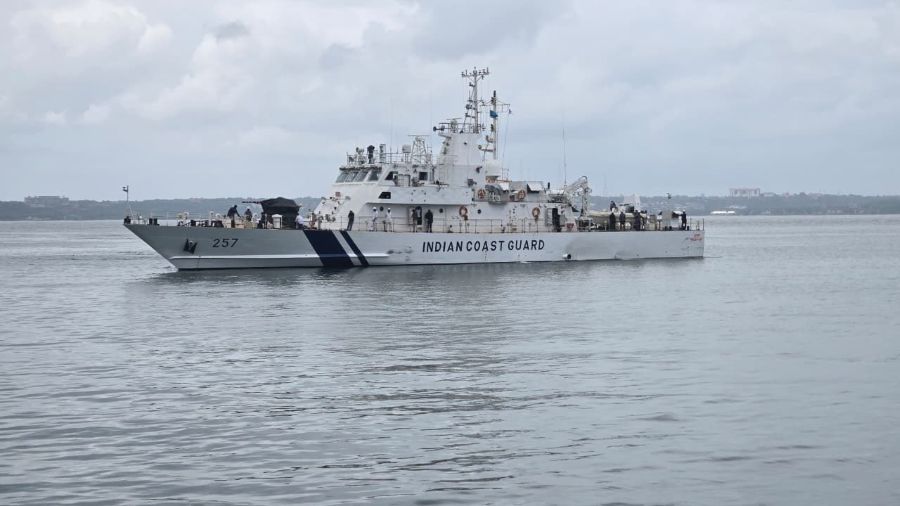
- 06 Oct 2025
In News:
The Indian Coast Guard Ship (ICGS) Akshar, the second vessel in a series of eight Adamya-class Fast Patrol Vessels (FPVs), was commissioned at Karaikal, Puducherry. Built by Goa Shipyard Limited (GSL), this indigenously designed vessel represents a major stride in India’s maritime self-reliance under the ‘Aatmanirbhar Bharat’ and ‘Make in India’ initiatives.
About ICGS Akshar
- Class and Type:Adamya-class Fast Patrol Vessel (FPV)
- Shipbuilder: Goa Shipyard Limited (GSL)
- Indigenous Content: Over 60%
- Length: 51 metres
- Displacement: Approximately 320 tonnes
- Name Significance: ‘Akshar’, meaning imperishable, signifies the Indian Coast Guard’s unwavering resolve to ensure safe, secure, and clean seas.
Key Technical and Operational Features
- Propulsion System:Equipped with two 3,000 kW diesel engines driving indigenously developed Controllable Pitch Propellers (CPP) and gearboxes, the vessel can achieve a maximum speed of 27 knots.
- Endurance:Capable of operating up to 1,500 nautical miles at an economical cruising speed, enabling extended surveillance missions.
- Weapons and Defence Systems:Armed with a 30 mm CRN 91 gun and two 12.7 mm Stabilised Remote-Controlled Guns (SRCG), integrated with an advanced Fire Control System, enhancing accuracy and combat effectiveness.
- Automation and Navigation Systems:Features an Integrated Bridge System (IBS), Integrated Platform Management System (IPMS), and Automated Power Management System (APMS) for high operational efficiency, reduced human intervention, and seamless information integration.
- Deployment:The vessel will be based at Karaikal, Puducherry, under the administrative and operational control of the Commander, Coast Guard Region (East) through District Headquarters No. 13.
Strategic Role and Functions
ICGS Akshar will be deployed for:
- Maritime surveillance and coastal security operations in India’s Exclusive Economic Zone (EEZ).
- Anti-smuggling, anti-poaching, and anti-piracy operations.
- Search and Rescue (SAR) missions, pollution control, and law enforcement duties in the maritime domain.
Its operational flexibility and advanced systems make it a multi-role platform capable of responding swiftly to emerging maritime threats and humanitarian contingencies.
India–Russia at 25
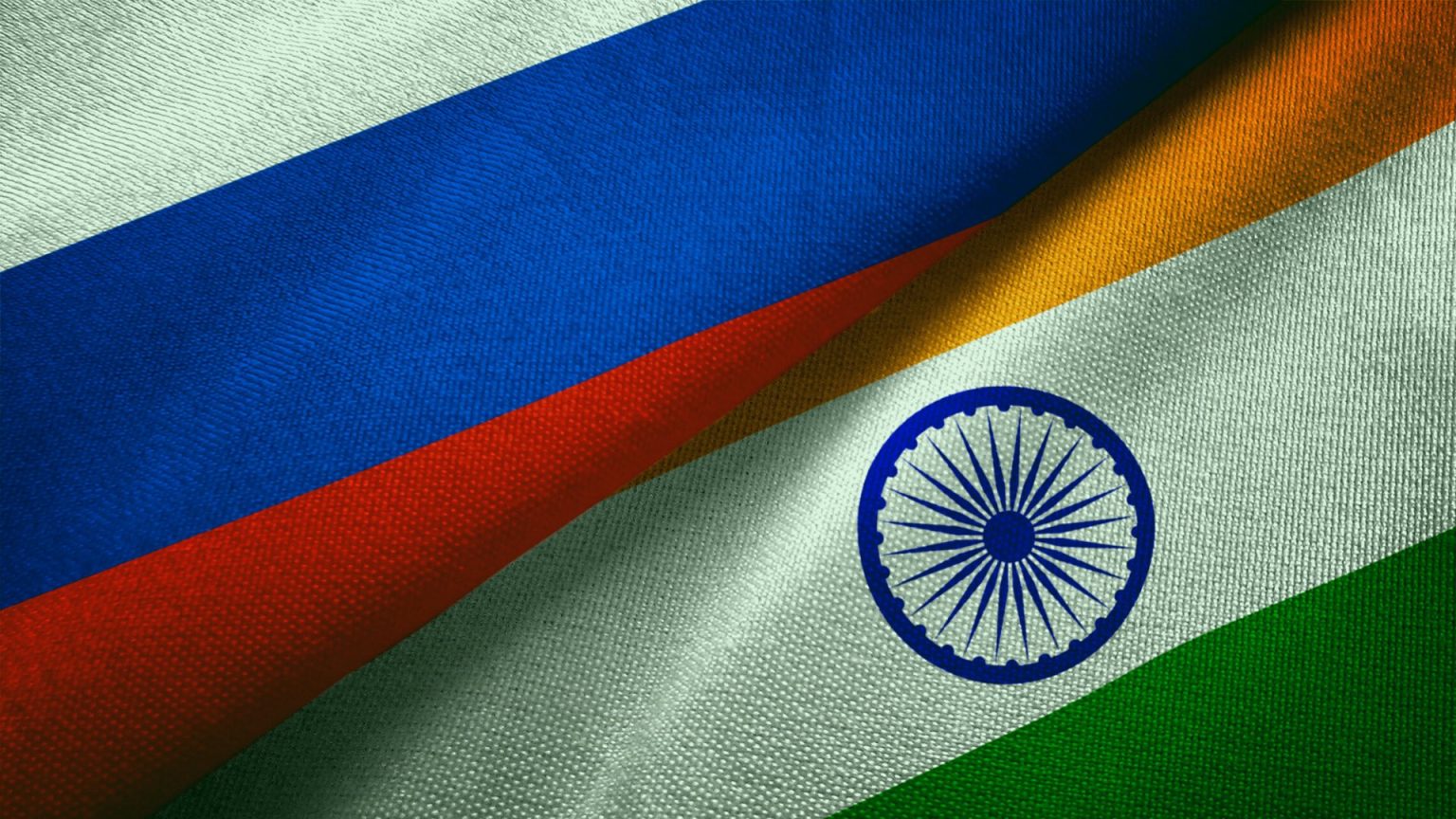
- 06 Oct 2025
In News:
- India and Russia marked 25 years of their Strategic Partnership in 2025, reaffirming their time-tested friendship and multifaceted cooperation amid a shifting global order.
- The partnership, first formalised in October 2000 through a declaration signed by President Vladimir Putin and Prime Minister Atal Bihari Vajpayee, was upgraded in 2010 to a “Special and Privileged Strategic Partnership.” This milestone underscores the enduring relevance of bilateral ties grounded in mutual trust, strategic autonomy, and converging global outlooks.
Evolution of the Partnership
- Over the last quarter-century, the India–Russia relationship has transitioned from a Cold War–era friendship to a broad-based strategic partnership encompassing defence, nuclear energy, science and technology, hydrocarbons, and space cooperation.
- Institutional mechanisms like the Intergovernmental Commission (IRIGC) and the 2+2 Dialogue framework have ensured sustained policy coordination across political, economic, and defence domains.
- At the 22nd Annual Summit held in Moscow in July 2024, both nations adopted joint statements on partnership and economic cooperation till 2030, alongside signing nine MoUs across critical sectors. Prime Minister Narendra Modi was also conferred Russia’s highest civilian honour, the Order of Saint Andrew, in recognition of his contribution to strengthening bilateral relations.
Multilateral and Global Engagement
- India and Russia continue to coordinate closely in multilateral platforms such as the United Nations (UN), G20, BRICS, and Shanghai Cooperation Organisation (SCO).
- During India’s G20 and SCO presidencies in 2023, the two nations held multiple high-level engagements, reaffirming commitment to a multipolar, rules-based international order.
- Russia has consistently supported India’s bid for a permanent seat in the UN Security Council, underscoring its trust in India’s global leadership role.
- Russia’s BRICS chairmanship in 2024 further strengthened this cooperation, with India actively participating in the Leaders’ Summit in Kazan, reflecting mutual alignment on global economic and security issues.
Economic and Trade Relations
- Economic engagement has become the new anchor of India–Russia relations. Bilateral trade reached a record USD 65.7 billion in FY 2023–24, driven by India’s rising imports of crude oil, fertilizers, and minerals, and exports of pharmaceuticals, machinery, and engineering goods.
- Both nations aim to elevate bilateral trade to USD 100 billion by 2030 and mutual investments to USD 50 billion by 2025.
- Negotiations for a Free Trade Agreement (FTA) between India and the Eurasian Economic Union (EAEU) are underway, expected to further liberalise trade flows and enhance connectivity through initiatives like the International North–South Transport Corridor (INSTC) and Arctic route cooperation.
- Emerging areas such as shipbuilding, railways, aircraft construction, and small modular nuclear reactors reflect the partnership’s adaptation to new technological and developmental priorities.
Defence and Security Cooperation
Defence remains the cornerstone of the India–Russia partnership. The collaboration has evolved from a buyer–seller relationship to joint production and technology co-development.
Key projects include:
- S-400 Triumf missile systems
- Su-30MKI and MiG-29 fighter jets
- T-90 tanks and AK-203 rifles
- INS Vikramaditya aircraft carrier
- BrahMos missile joint venture, a symbol of high-end defence collaboration
Joint military exercises such as INDRA and Vostok enhance interoperability and strategic trust. The cooperation under IRIGC–Military and Military Technical Cooperation (M&MTC) ensures continuous modernization of India’s armed forces with Russian collaboration.
Science, Technology, and Space Cooperation
- Science and technology have emerged as vital pillars of bilateral engagement. A 2021 roadmap guides collaboration in nanotechnology, quantum computing, artificial intelligence, and space exploration.
- The Kudankulam Nuclear Power Plant remains a flagship project, with plans for future units under discussion.
- New initiatives are fostering innovation and youth cooperation through institutions like the Sirius Educational Foundation and Atal Innovation Mission, encouraging joint research and startup linkages.
- Both sides are exploring joint lunar and spaceflight missions, expanding beyond traditional sectors to future-ready technologies.
People-to-People and Educational Exchanges
Beyond strategic sectors, cultural, educational, and academic exchanges have deepened mutual understanding. Student exchanges, scholarships, and Russian language learning in Indian institutions have strengthened grassroots connections. Tourism and labour mobility are emerging as new frontiers of bilateral engagement.
Outlook and Way Forward
Marking 25 years of partnership, India and Russia are renewing their cooperation to align with the demands of a multipolar and technology-driven world. The relationship is now expanding into innovation-led, climate-conscious, and connectivity-focused domains, while retaining its traditional strengths in defence and energy.
The upcoming 2025 bilateral summit in New Delhi—coinciding with the 15th anniversary of the “Special and Privileged” status—is expected to chart a roadmap for the next phase, prioritising:
- Concluding the India–EAEU Free Trade Agreement,
- Enhancing energy security and Arctic cooperation,
- Promoting defenceindigenisation, and
- Strengthening regional stability in Eurasia and the Indo-Pacific.
India’s Dairy Sector
- 06 Oct 2025
In News:
India’s dairy sector has witnessed a transformative expansion over the past decade, emerging as the world’s fastest-growing dairy producer. Milk production has surged by nearly 70% in 11 years, rising from 146 million tonnes in 2014–15 to 239 million tonnes in 2023–24, positioning India as a global dairy powerhouse.
India’s Global Dairy Leadership
- India contributes 24.76% of global milk output, maintaining its status as the world’s largest milk producer.
- The sector contributes around 5% to the national GDP and provides livelihoods to over 8 crore farmers, symbolising inclusive and sustainable rural development.
- The per capita milk availability has increased dramatically from 124 grams/day in 2014–15 to 471 grams/day in 2023–24, significantly exceeding the global average of 322 grams/day.
- Leading milk-producing states include Uttar Pradesh, Rajasthan, and Madhya Pradesh, with Haryana consistently ranking among the top three in per capita milk availability.
Institutional Backbone and Cooperative Revolution
- The National Dairy Development Board (NDDB), established in 1965, and the Operation Floodprogramme (1970) laid the foundation for India’s dairy success by replicating the Amul cooperative model across the country. These initiatives transformed India from a milk-deficient nation into the largest producer globally.
- Today, the cooperative network includes 22 milk federations, 241 district cooperative unions, 28 marketing dairies, and 25 Milk Producer Organisations (MPOs).
- Nearly 70% of the dairy workforce comprises women, with 35% actively participating in cooperatives, reinforcing the sector’s role in women’s empowerment.
- The government’s focus on strengthening cooperatives was reiterated by the Union Ministry of Cooperation, established in 2021. Union Home and Cooperation Minister Amit Shah announced that by 2029, every panchayat will have a cooperative society, fostering local economic resilience.
Modernisation and Expansion: Sabar Dairy as a Model
- The inauguration of the Sabar Dairy Plant in Rohtak, Haryana, marks a milestone in dairy modernisation. Built at a cost of ?350 crore, it is India’s largest integrated plant for curd, buttermilk, and sweets, producing 150 metric tonnes of curd, 10 metric tonnes of yogurt, 3 lakh litres of buttermilk, and 10,000 kg of sweets daily.
- The plant not only caters to the Delhi–NCR region but also benefits farmers across nine states, showcasing the potential of cooperative-led growth.
- This expansion aligns with India’s goal to increase its milk processing capacity from 66 million litres per day to 100 million litres per day by 2028–29, under White Revolution 2.0.
Government Schemes and Technological Advancements
The government has launched several initiatives to enhance dairy productivity and sustainability:
- National Gokul Mission – for conservation and genetic improvement of indigenous breeds.
- National Artificial Insemination Programme – to improve livestock productivity.
- Animal Husbandry Infrastructure Development Fund (AHIDF) – to support dairy processing and cold-chain facilities.
- National Animal Disease Control Programme (NADCP) – to ensure animal health security.
Additionally, national cooperative societies for animal feed production, organic manure, and circular economy utilisation of animal by-products have been established.
Advanced technologies such as embryo transfer and sex-sorted semen are being promoted for improved breeding efficiency. Research and development in dairy plant design and automation are being accelerated to make India self-reliant in dairy infrastructure.
NITI Aayog’s Tax Policy Working Paper
- 06 Oct 2025
In News:
In October 2025, NITI Aayog released the first paper under the NITI Tax Policy Working Paper Series–I, titled “Enhancing Tax Certainty in Permanent Establishment and Profit Attribution for Foreign Investors in India.” The paper seeks to enhance transparency, predictability, and fairness in India’s international taxation framework—key to attracting and sustaining foreign investment in the journey towards Viksit Bharat@2047.
Background and Rationale
- Foreign Direct Investment (FDI) has been a cornerstone of India’s economic growth, rising from USD 6 billion in 2005–06 to nearly USD 50 billion in 2024–25. Despite this growth, foreign investors have long faced tax-related uncertainties—particularly concerning the definitions of Permanent Establishment (PE) and Profit Attribution. Ambiguities in these areas have led to prolonged litigation (often lasting 10–12 years), raising compliance costs and discouraging potential investors.
- To address these challenges, NITI Aayog’s Consultative Group on Tax Policy (CGTP)—comprising representatives from the CBDT, DPIIT, ICAI, industry experts, and major consultancy firms—developed this working paper through extensive stakeholder consultations.
Key Concepts
- Permanent Establishment (PE): Refers to a fixed place of business (like a branch, office, or digital presence) through which a foreign enterprise conducts business in India. If a PE exists, the enterprise is liable to pay tax on its income arising in India.
- Profit Attribution: Determines the portion of a multinational’s profits that can be taxed in India, particularly when business activities are spread across jurisdictions.
Major Recommendations
- Optional Presumptive Taxation Scheme:
- Allows foreign companies to opt for a fixed tax rate on India-sourced revenue, based on industry norms.
- Aims to minimize litigation and enhance predictability.
- Legislative Clarity:
- Codification of PE definitions and profit attribution rules in line with OECD and UN models.
- Avoidance of retrospective taxation and inclusion of due process safeguards.
- Strengthened Dispute Resolution:
- Expansion of Advance Pricing Agreements (APAs) and Mutual Agreement Procedures (MAPs).
- Exploration of mandatory arbitration for unresolved international tax disputes.
- Administrative and Institutional Efficiency:
- Introduction of safe harbour rules to simplify compliance.
- Adoption of the OECD’s TRACE system to streamline withholding tax relief.
- Continuous training of tax officials in complex cross-border taxation matters.
- Stakeholder Engagement and Transparency:
- Mandatory public consultations before major tax law amendments.
- Enforcement of a Taxpayer Charter to uphold fairness and transparency.
Judicial Context
The Supreme Court has played a pivotal role in interpreting India’s international tax framework:
- Formula One Case (2017): Held that even temporary use of infrastructure (like a race track) could constitute a PE, emphasizing substance over form.
- Hyatt International Case (2025): Clarified that even global losses do not exempt Indian operations from taxation, reinforcing the “separate enterprise” principle.
Alignment with Global Tax Reforms
India’s approach aligns with the OECD–G20 Base Erosion and Profit Shifting (BEPS) initiative, especially Action 7, which curbs tax avoidance through agency arrangements.
- Pillar One: Ensures digital giants like Google or Amazon pay taxes where consumers are located, even without a physical presence.
- Pillar Two: Introduces a global minimum corporate tax rate of 15%, deterring profit shifting to tax havens.
Significance:
The working paper provides a comprehensive framework for reforming India’s cross-border tax regime—balancing investor confidence with national revenue interests. By enhancing certainty, reducing litigation, and aligning with international standards, it aims to:
- Strengthen India’s Ease of Doing Business environment.
- Attract high-quality, sustainable FDI and FPI.
- Bolster administrative efficiency and taxpayer trust.
Ultimately, these reforms are expected to create afair, transparent, and globally competitive tax system, reinforcing India’s trajectory toward a future-ready economy and the vision of Viksit Bharat@2047.
Draft Rules for Online Gaming
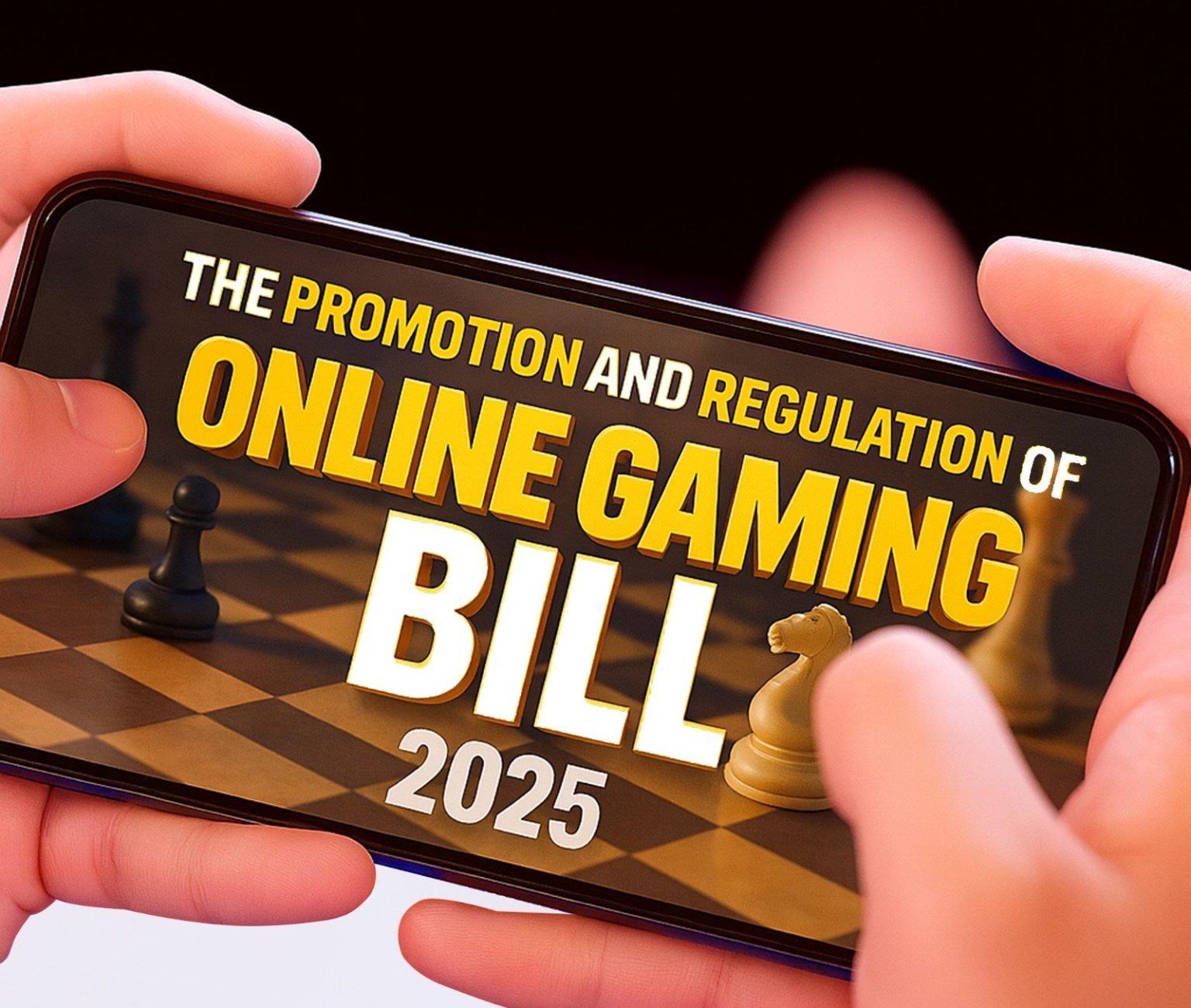
- 06 Oct 2025
In News:
The Ministry of Electronics and Information Technology (MeitY) has released the draft Promotion and Regulation of Online Gaming Rules, 2025, intended to operationalise the Promotion and Regulation of Online Gaming (PROG) Act, 2025. The government has also invited public feedback on the draft rules till the end of this month via email submission.
Objective
The draft rules aim to establish a comprehensive national framework for regulating the online gaming ecosystem in India. They seek to differentiate legitimate e-sports and social gaming from real money gaming (RMG) platforms, thereby ensuring user protection, transparency, and responsible innovation.
Key Provisions
1. Ban on Real Money Gaming: The Act prohibits real money gaming (RMG) — including online poker, rummy, fantasy sports, and betting — where players wager or stake money for potential returns. Only social games and e-sports, meant for recreation, education, or skill development, are permitted.
2. Establishment of the Online Gaming Authority of India (OGAI): A dedicated regulatory body, the Online Gaming Authority of India (OGAI), will be set up to oversee the sector.
- Composition: A Chairperson and five members representing different ministries.
- Powers: Quasi-judicial authority to summon individuals, examine evidence, and issue binding directions.
- Functions:
- Determine whether a game qualifies as an “online money game.”
- Register and certify online social games and e-sports.
- Impose penalties, suspend or cancel registrations for violations.
- Ensure compliance with ethical and revenue guidelines.
3. Registration Framework
- Mandatory Registration: All social and e-sports games must register with OGAI.
- Validity: Registration certificates will remain valid for up to five years.
- Disclosure Requirements: Companies must declare revenue sources and user protection measures.
- Revenue must originate from advertising, subscriptions, or access fees, not wagers or stakes.
4. Penalties and Offences
- Offering or operating an online money gaming service: up to 3 years’ imprisonment and ?1 crore fine.
- Advertising such platforms: up to 2 years’ imprisonment and ?50 lakh fine.
- Offences are non-bailable, and company officials can be held personally liable.
- Penalty quantum will depend on extent of gain, user loss, and frequency of violation.
5. Grievance Redressal Mechanism (Three-Tiered)
- Internal redressal unit of the gaming company.
- Grievance Appellate Committee (GAC) under the IT Rules, 2021.
- Online Gaming Authority of India (OGAI) as the final appellate body.
6. Role of Various Ministries
- Ministry of Electronics & IT (MeitY): Nodal authority for overall regulation.
- Ministry of Youth Affairs: Oversight of e-sports.
- Ministry of Information & Broadcasting (I&B): Regulation of social games, including issuing codes of practice and classification guidelines.
PM E-Drive Scheme
- 05 Oct 2025
In News:
- The Government of India has issued comprehensive guidelines for establishing 72,300 public electric vehicle (EV) charging stations across the country, backed by a ?2,000 crore support package under the ?10,900 crore PM E-DRIVE Scheme.
- The initiative, launched by the Ministry of Heavy Industries (MHI), is a major step toward strengthening India’s EV ecosystem, promoting sustainable transportation, and advancing the nation’s net-zero emissions goals.
About the PM E-DRIVE Scheme
The PM E-DRIVE (Electric Vehicle Development, Revolution, Innovation, Vision, and Empowerment)scheme is a flagship government initiative aimed at accelerating EV adoption through infrastructure development and fiscal incentives. The scheme aligns with India’s broader vision of Aatmanirbhar Bharat, energy security, and climate action.
- Nodal Ministry: Ministry of Heavy Industries
- Project Implementation Agency:Bharat Heavy Electricals Limited (BHEL)
- Financial Outlay: ?10,900 crore
- Support for EV Charging Infrastructure: ?2,000 crore
Objectives
- To create an accessible, reliable, and affordable public EV charging network.
- To reduce range anxiety among EV users and accelerate adoption.
- To decarbonize transport, thereby contributing to India’s net-zero by 2070 target.
- To promote domestic manufacturing of EV components and charging equipment under Make in India.
Key Features of the Guidelines
1. Subsidy Framework
The new guidelines introduce a tiered subsidy structure to ensure equitable deployment across varied locations:
- 100% Subsidy - Applicable for installations in government premises, educational institutions, residential colonies,hospitals, and public buildings, provided free public access is ensured.
- 80% Subsidy on Infrastructure + 70% on Equipment - Applicable to high-traffic areas such as railway stations, airports, bus depots, metro stations, municipal parking lots, oil PSU retail outlets, and toll plazas managed by NHAI or state agencies.
- 80% Subsidy - Extended to shopping malls, markets, highway outlets, and battery-swapping stations.
This financial assistance aims to minimize the initial investment barrier for operators and encourage private sector participation.
2. Priority Deployment Areas
The rollout prioritizes:
- Urban Centres: Cities with population above one million, state capitals, andsmart cities.
- Transit and Commercial Hubs:Airports, railway stations, bus terminals, and fuel stations.
- Transport Corridors:Highways and expressways with high vehicular density.
- Metro-linked Satellite Towns: To support inter-city EV travel and logistics operations.
3. Implementation Mechanism
- Nodal Agencies: State governments and designated agencies will aggregate demand, identify sites, and submit proposals through a dedicated online portal.
- Two-Phase Subsidy Release: Financial assistance will be provided in two tranches, linked to compliance, operational readiness, and performance metrics.
- Monitoring and Evaluation: BHEL, as the Project Implementation Agency (PIA), will oversee site selection, infrastructure rollout, and ensure timely completion in coordination with state bodies.
BSNL’s Swadeshi 4G Network Stack
- 05 Oct 2025
In News:
- In a significant step toward technological self-reliance, the Prime Minister of India launched Bharat Sanchar Nigam Limited’s (BSNL)fully indigenous 4G network stack and commissioned around 98,000 mobile towers nationwide.
- With this, India becomes the fifth country globally—after Denmark, Sweden, South Korea, and China—to design and deploy its own telecom stack, strengthening the Aatmanirbhar Bharat and Digital India missions.
About BSNL’s Swadeshi 4G Network Stack
The Swadeshi 4G network stack is India’s first fully indigenous end-to-end telecom system, integrating both hardware and software components. It is a cloud-native, software-driven, and 5G-ready architecture developed under the government’s Aatmanirbhar Bharat initiative.
Institutions Involved
- Core Network: Developed by the Centre for Development of Telematics (C-DOT).
- Radio Access Network (RAN): Designed by Tejas Networks.
- Integration & Deployment: Managed by Tata Consultancy Services (TCS).
- Implementation: Carried out by BSNL, with government support through the Digital Bharat Nidhi programme.
Key Features
- Fully Indigenous: Entirely built with Indian technology and manufacturing.
- Cloud-Native & Software-Driven: Enables seamless upgrades and efficient resource use.
- Future-Ready: Designed for smooth transition to 5G and later 6G without hardware overhauls.
- Green Infrastructure: Towers are solar-powered, making it India’s largest cluster of sustainable telecom sites.
- Applications Supported: Digital payments, e-governance, telemedicine, online education, precision farming, and more.
Implementation Highlights
- Infrastructure Rollout:
- Commissioned ~98,000 mobile towers, including 92,600 4G-enabled sites, built at a cost of approximately ?37,000 crore.
- Deployed across multiple states — Odisha, Andhra Pradesh, Uttar Pradesh, Maharashtra, Rajasthan, Assam, Gujarat, and Bihar.
- Connectivity Expansion:
- Around 29,000 villages have already been connected under the 4G Saturation Project.
- The next phase will connect 26,700 unserved villages, including 2,472 in Odisha, covering border, tribal, and left-wing extremism-affected regions.
- Expected to serve over 2 million new subscribers.
Significance
1. Strategic Autonomy & National Security: The project enhances India’s strategic independence in critical digital infrastructure by reducing reliance on foreign telecom vendors. This bolsters cybersecurity and ensures data sovereignty—a crucial factor for national security.
2. Economic Growth & Job Creation: The indigenous 4G rollout boosts domestic manufacturing, R&D investment, and employment across the telecom and electronics sectors. It supports Make in India and promotes export competitiveness in telecom technology.
3. Digital Inclusion: By connecting remote, border, and tribal areas, the project narrows the digital divide, empowering rural communities with e-governance services, online education, digital payments, and telehealth access.
4. Green and Sustainable Infrastructure: With the inclusion of solar-powered telecom sites, the initiative promotes environmentally sustainable growth, aligning with India’s Net Zero ambitions.
5. Future-Ready Ecosystem: The indigenous stack’s 5G-ready architecture provides a foundation for next-generation connectivity, supporting AI, IoT, smart agriculture, autonomous mobility, and industrial automation applications.
Two New Ramsar Sites in Bihar
- 05 Oct 2025
In News:
India has recently added two wetlands from Bihar — Gokul Jalashay (Buxar district) and Udaipur Jheel (West Champaran district) — to the List of Wetlands of International Importance under the Ramsar Convention.
With these inclusions, India now has 93 Ramsar sites, covering a total area of 13,60,719 hectares, consolidating its position as Asia’s leading country in terms of Ramsar designations and third globally, after the United Kingdom (176) and Mexico (144).
About the New Ramsar Sites
1. Gokul Jalashay (Buxar District)
- Type: Oxbow lake, situated on the southern edge of the River Ganga.
- Ecological Role: Acts as a natural flood buffer, reducing inundation risk for nearby settlements.
- Biodiversity: Supports over 50 species of resident and migratory birds and provides fish breeding grounds.
- Socio-economic Importance: Local communities depend on the lake for fishing, agriculture, and irrigation, integrating ecological sustainability with livelihoods.
- Cultural Practice: Villagers collectively clean and restore the wetland annually during a traditional festival, reflecting community-led conservation.
2. Udaipur Jheel (West Champaran District)
- Type: Oxbow lake located within the Udaipur Wildlife Sanctuary.
- Biodiversity: Hosts 280 plant species, including Alysicarpus roxburghianus, an Indian endemic.
- Avifauna: Serves as a key wintering habitat for over 35 migratory bird species, notably the vulnerable Common Pochard (Aythya ferina).
- Ecological Significance: Functions as a biodiversity hotspot and climate buffer, maintaining the hydrological balance in the region.
Understanding Oxbow Lakes
- An oxbow lake is a crescent-shaped waterbody formed when a meandering river is cut off from its main channel due to erosion and deposition processes. These lakes often evolve into rich wetland ecosystems, supporting diverse aquatic flora and fauna.
About Wetlands
- Wetlands are areas where water saturation—either permanent or seasonal—creates conditions that sustain distinctive plant and animal communities.
- They include marshes, fens, peatlands, floodplains, estuaries, and even shallow marine areas (up to 6 metres deep).
- They serve as ecological ecotones, forming transitions between terrestrial and aquatic systems and offering critical ecosystem services like flood control, groundwater recharge, carbon sequestration, and biodiversity support.
The Ramsar Convention
- Adopted: 1971 at Ramsar, Iran; came into force in 1975.
- Nature: An intergovernmental treaty under the auspices of UNESCO.
- Objective: To promote the conservation and wise use of wetlands and their resources.
- Criteria: A site must meet at least one of nine criteria, such as supporting 20,000 or more waterbirds, or hosting endangered species.
- India’s Participation: Ratified in 1982; currently one of the most active contracting parties.
Montreux Record
The Montreux Record is a register of threatened Ramsar sites where ecological character has degraded due to human interference or pollution.
- Indian sites listed:
- Keoladeo National Park (Rajasthan)– 1990
- Loktak Lake (Manipur) – 1993
- Chilika Lake (Odisha) was earlier listed in 1993 but successfully removed in 2002, becoming Asia’s first site to be delisted after restoration efforts.
Lecanemab Drug
- 05 Oct 2025
In News:
Australia has recently approved Lecanemab, a groundbreaking drug for the treatment of early-stage Alzheimer’s disease. Marketed under the brand name Leqembi, it represents a significant scientific advancement in tackling the root causes of Alzheimer’s, rather than merely alleviating its symptoms. However, concerns about its cost, accessibility, and safety continue to temper global enthusiasm.
About Lecanemab
- Lecanemab is a monoclonal antibody drug developed by the Japanese pharmaceutical company Eisai, in collaboration with Biogen.
- It belongs to a new generation of Alzheimer’s drugs designed to slow disease progression by targeting amyloid-beta proteins—abnormal clumps in the brain believed to cause neuronal damage and memory loss.
- Unlike traditional Alzheimer’s medications that address symptoms, Lecanemab acts on the underlying pathological process of the disease.
- It is administered intravenously (IV) through a drip, typically on a fortnightly basis for the initial 18 months, followed by monthly maintenance doses.
Mechanism of Action
- Lecanemab works by using lab-engineered antibodies that bind to amyloid-beta plaques in the brain. Once bound, the antibodies trigger the body’s immune system—particularly microglial cells—to clear these toxic protein deposits.
- This helps reduce amyloid build-up, thereby slowing neuronal damage and cognitive decline. Clinical imaging, such as PET scans, has shown significant reductions in amyloid levels among treated patients.
Efficacy and Clinical Evidence
The approval of Lecanemab followed a large phase 3 clinical trial involving 1,734 participants with early-stage Alzheimer’s or mild cognitive impairment.
- Over an 18-month period, patients receiving Lecanemab showed a 27% reduction in disease progression compared to those given a placebo.
- This translated to roughly five months of slower cognitive decline.
- Long-term follow-up data suggest continued benefit for up to four years of treatment.
However, the drug does not reverse existing symptoms, and its benefit is limited to the early stages of the disease.
Safety Concerns and Side Effects
Despite its promise, Lecanemab poses significant safety risks.
- About 12.6% of trial participants developed brain swelling (ARIA-E), while those carrying two copies of the ApoE4 gene—linked to higher Alzheimer’s risk—had a 32.6% incidence.
- 22% of those affected reported symptoms such as headache, dizziness, or vision problems, and a few cases of fatal brain hemorrhage were reported, particularly in patients also taking blood thinners.
- Regular MRI scans every three months are required to monitor these side effects.
Cost and Accessibility
- Lecanemab remains prohibitively expensive, costing around A$40,000 per year in Australia. It is not yet subsidised under the Pharmaceutical Benefits Scheme (PBS), and associated costs such as MRI and PET scans further limit access.
- The Pharmaceutical Benefits Advisory Committee (PBAC) has also raised concerns about whether the modest benefits justify the financial and healthcare burden.
Comparison with Similar Drugs
- Lecanemab follows Donanemab, another monoclonal antibody drug approved earlier in 2024. Both operate on similar mechanisms, with comparable efficacy and risk profiles.
- PBAC previously rejected Donanemab’s inclusion under the PBS, citing uncertain benefits relative to cost and patient safety—concerns that now shadow Lecanemab as well.
Understanding Alzheimer’s Disease
Alzheimer’s disease is a progressive neurodegenerative disorder and the most common cause of dementia, accounting for 60–80% of all cases. It damages brain areas responsible for memory, thinking, and language, leading to cognitive decline and loss of independence.
While age is the main risk factor (most cases occur after 65 years), genetic and environmental influences also play a role.
Wassenaar Arrangement
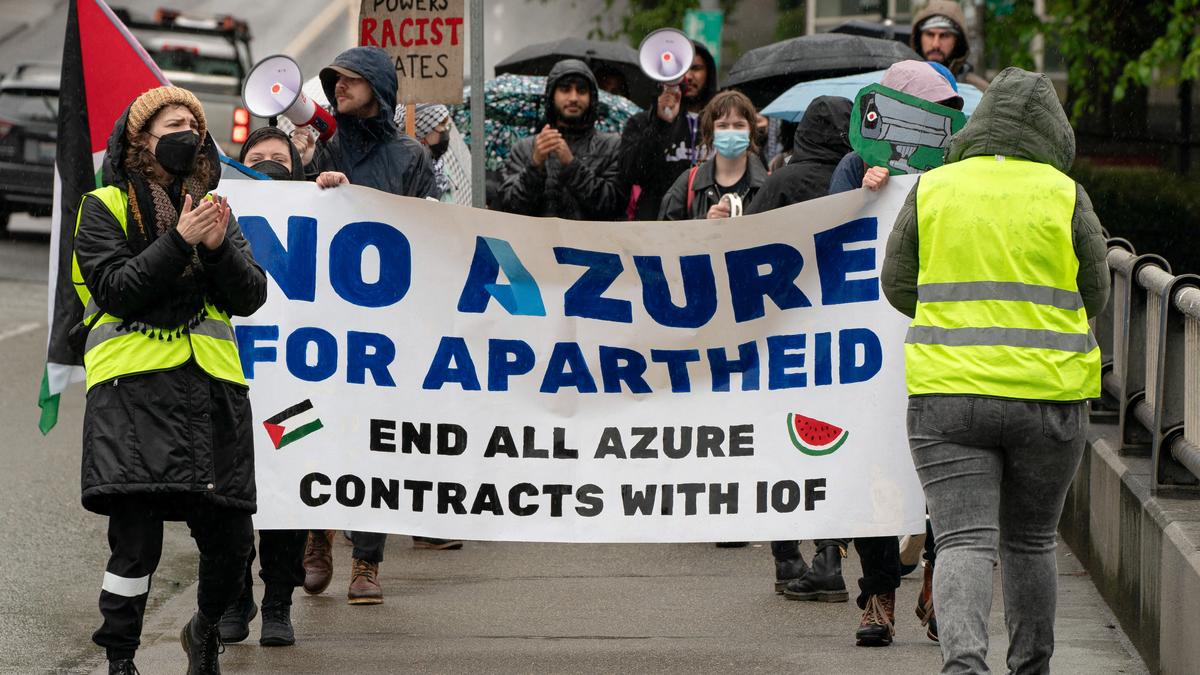
- 05 Oct 2025
In News:
- The Wassenaar Arrangement (WA), established in 1996, is a key multilateral export control regime that promotes transparency and responsibility in transfers of conventional arms and dual-use goods and technologies.
- It succeeded the Cold War-era Coordinating Committee for Multilateral Export Controls (COCOM). The name originates from Wassenaar, a suburb of The Hague (Netherlands), where the agreement was finalized in 1995.
Objectives and Structure
The primary goal of the WA is to prevent destabilizing accumulations of arms and sensitive technologies by ensuring that exports do not contribute to the development or enhancement of military capabilities that threaten international security. It seeks to achieve this through:
- Transparency and information exchange among member states on sensitive technology transfers.
- Control lists that detail conventional weapons, dual-use items, and technologies of military significance.
The Arrangement currently has 42 member countries, including major arms exporters. India became a member in 2017, enhancing its credentials as a responsible nuclear power and gaining access to advanced technologies. The Secretariat is located in Vienna, Austria.
Mechanism of Operation
- Member states voluntarily exchange information regarding exports and denials of items on the WA control lists. These include chemicals, materials, software, and production technologies that can have both civilian and military applications. Through this exchange, the Arrangement aims to ensure that exports do not reach entities or nations that could undermine global or regional security.
- India has aligned the WA’s control lists with its SCOMET (Special Chemicals, Organisms, Materials, Equipment, and Technologies) export framework, strengthening its export control system in line with international standards.
Emerging Challenges in the Digital Era
While the WA has evolved over time—such as by including controls on ‘intrusion software’—its framework largely focuses on physical exports like hardware, chips, and devices. However, modern technology increasingly operates through cloud-based services, data transfers, and software-as-a-service (SaaS) models, which do not always involve physical movement of goods.
This shift has created grey areas in export control enforcement. For example, when major tech infrastructure providers like Microsoft offer cloud computing or AI tools that could be misused for surveillance or repression, existing WA rules struggle to regulate such virtual exports. These challenges highlight the Arrangement’s limitations in addressing non-tangible, digital transfers of dual-use technologies.
The Need for Reform
To remain relevant, the Wassenaar Arrangement must modernize its control lists and definitions to address technologies such as:
- Cloud computing and virtualized infrastructure,
- Artificial intelligence and machine learning algorithms,
- Big data analytics and cybersecurity tools.
Strengthening coordination among member states to govern cross-border data flows and digital exports is crucial. The Arrangement should also explore mechanisms for real-time information sharing, capacity-building for developing members, and greater inclusivity in decision-making.
NCRB Data on Road Accidents

- 04 Oct 2025
In News:
According to the National Crime Records Bureau (NCRB) 2023 report, India recorded 4,64,029 road accidents, resulting in 1,73,826 deaths and 4,47,000 injuries. This marks a 1.6% rise in fatalities compared to 2022 (1,71,100 deaths) and highlights the continuing challenge of road safety in the country.
Key Trends and Statistics
- Total Accidents: 4,64,029 (17,261 more than in 2022).
- Fatalities: 1,73,826 people killed.
- Injuries: 4,47,000 people injured.
- Peak Accident Hours: 6 p.m. to 9 p.m. accounted for 20.7% of total accidents, followed by 3–6 p.m. (17.3%) and 12 noon–3 p.m. (15%).
Vehicle-Wise Analysis
Two-wheelers continued to be the most vulnerable category, responsible for nearly 46% of all road deaths.
- Two-wheelers: 79,533 deaths (45.8%)
- Pedestrians: 27,586 deaths (15.9%)
- SUVs/Cars/Jeep: 24,776 deaths (14.3%)
Tamil Nadu (11,490) and Uttar Pradesh (8,370) recorded the highest two-wheeler fatalities. Uttar Pradesh also reported the largest number of deaths due to car/SUV/jeep (19.2%) and truck/lorry (29.9%) accidents, reflecting both heavy traffic volumes and enforcement gaps.
Interestingly, while road accidents generally cause more injuries than deaths nationwide, states such as Andaman & Nicobar Islands, Jharkhand, Punjab, Bihar, and Uttar Pradesh reported higher fatalities relative to injuries.
Cause-Wise Distribution
The NCRB data highlights that speeding and careless driving remain the leading causes of fatalities:
- Speeding: 58.6% of deaths (1,01,841 fatalities)
- Dangerous or Careless Driving/Overtaking: 23.6% (41,035 fatalities)
- Other Causes: 4,952 deaths due to poor weather, intoxicated driving, or animal crossings.
Highway Fatalities
Roads designed for faster travel remain the deadliest:
- National Highways: Accounted for 34.6% of total deaths.
- State Highways: Accounted for 23.4%.
Uttar Pradesh, Tamil Nadu, Maharashtra, Karnataka, and Madhya Pradesh reported the highest fatalities on national highways.
Urban Accident Patterns
Among metropolitan areas, Delhi recorded 5,715 accidents (8.2% of total in megacities) — the highest number — followed by Bengaluru (4,980) and Chennai (3,653). Delhi also reported the highest fatalities (1,457), followed by Bengaluru (915) and Jaipur (848).
Interpretation and Policy Implications
The rising toll of road accidents underscores the multi-dimensional nature of India’s road safety crisis, rooted in over-speeding, poor enforcement, unsafe road design, and inadequate emergency response. Despite policy initiatives like the Motor Vehicles (Amendment) Act, 2019, which strengthened penalties and accountability, implementation remains uneven across states.
The dominance of two-wheeler fatalities reveals the need for:
- Stricter helmet and speed regulation enforcement,
- Improved road engineering for vulnerable users,
- Enhanced awareness campaigns, and
- Expansion of trauma care infrastructure along highways.
NCRB Data on Crime Against Children
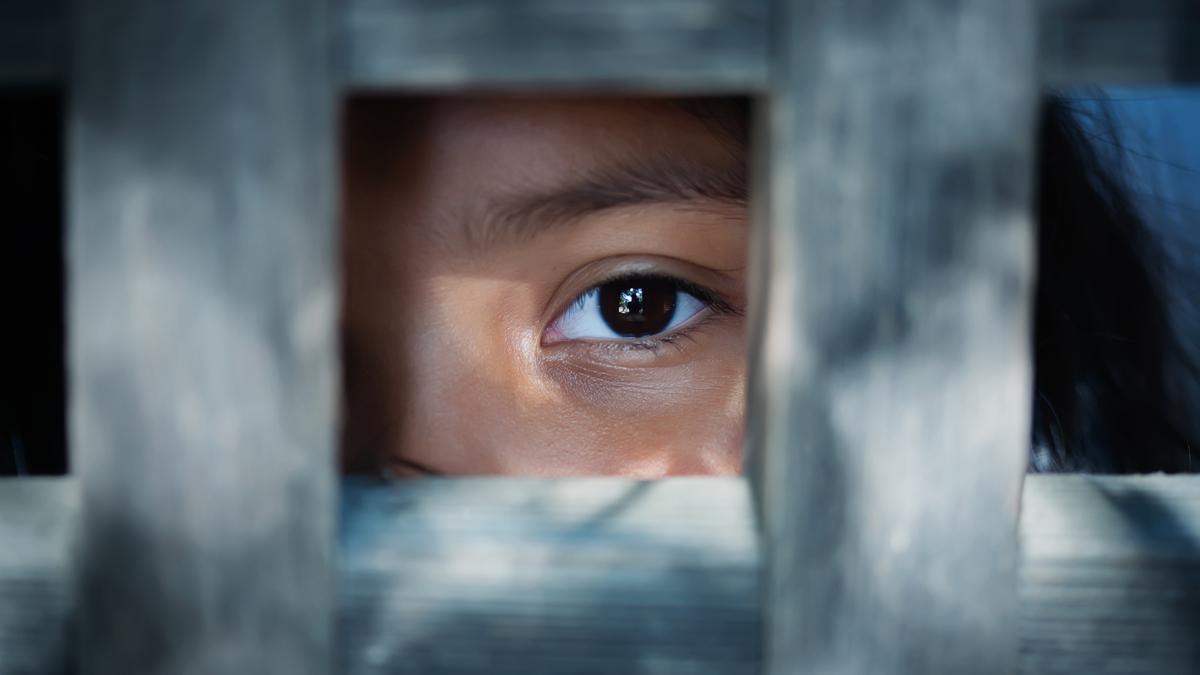
- 04 Oct 2025
In News:
According to the latest data released by the National Crime Records Bureau (NCRB), India recorded 1,77,335 cases of crimes against children in 2023, marking a 9.2% increase from 1,62,449 cases in 2022. The crime rate rose from 36.6 to 39.9 per lakh child population, reflecting both rising incidents and improved reporting mechanisms.
Major Trends and Patterns
The report reveals that kidnapping and abduction and sexual offences under the POCSO Act dominate crimes against children, together accounting for over 83% of total registered cases.
- Kidnapping and Abduction:
- 79,884 cases (45%) were registered, victimising82,106 children — a rate of 18 per lakh.
- Within this, 58,927 were general abductions, including 37,844 cases of missing children later deemed kidnapped.
- Alarmingly, 14,637 cases involved abduction of minor girls for forced marriage.
- POCSO Act Cases:
- 67,694 cases (38.2%) were filed under the Protection of Children from Sexual Offences (POCSO) Act.
- Of these, 40,434 involved penetrative sexual assault, affecting 40,846 child victims.
- In 39,076 cases, the offender was known to the victim, including 3,224 family members, 15,146 acquaintances, and 20,706 friends, online contacts, or live-in partners who exploited trust or false promises of marriage.
Victim Demographics
Among the 40,846 victims of penetrative assault:
- 762 were below 6 years,
- 3,229 were aged 6–12 years,
- 15,444 were between 12–16 years, and
- 21,411 were aged 16–18 years.
The vast majority of victims were girls, underscoring the gendered nature of sexual crimes against children.
Other Significant Offences
Beyond sexual and abduction-related crimes, the NCRB recorded:
- 1,219 murders, including 89 linked to rape or POCSO violations.
- 3,050 cases of simple hurt and 373 cases of abetment to suicide.
- 6,038 cases under the Prohibition of Child Marriage Act and 1,390 under the Child Labour (Prohibition and Regulation) Act, indicating persistent social and economic vulnerabilities affecting children.
Regional Distribution
Madhya Pradesh reported the highest number of cases (22,393), followed by Maharashtra and Uttar Pradesh.
Among smaller states and Union Territories:
- Assam recorded 10,174 cases, reflecting a sharp rise.
- Bihar followed with 9,906 cases.
- Delhi, despite its smaller population, registered 7,769 cases, among the highest rates nationally.
Law Enforcement and Justice Delivery
- Out of 2,57,756 cases investigated during the year, 1,12,290 were chargesheeted, leading to an overall chargesheeting rate of 64.3%. However, 80,198 cases remained pending at the end of 2023, highlighting systemic backlogs in investigation and prosecution.
- The chargesheeting rate varied considerably: it was higher in Tamil Nadu and Andhra Pradesh, but lower in Delhi and Haryana, reflecting uneven institutional efficiency across states.
Interpretation and Policy Significance
The steady increase in crimes against children underscores the growing vulnerabilities of minors in physical, digital, and domestic spaces. The dominance of offences by known persons reflects a disturbing breach of familial and social trust.
While better reporting and legal awareness may partly explain the rise, the data signals the urgent need for:
- Strengthening child protection systems and POCSO courts;
- Enhancing cyber surveillance to curb online grooming and exploitation;
- Expanding community-based awareness and school safety mechanisms; and
- Ensuring speedy investigation and trial to reinforce deterrence.
Interstellar Mapping and Acceleration Probe
- 04 Oct 2025
In News:
NASA has recently launched the Interstellar Mapping and Acceleration Probe (IMAP) to study how solar particles are energised and how the Sun’s protective bubble — the heliosphere — shields our solar system from harmful cosmic radiation. This mission represents a major step toward understanding the space environment critical for both scientific research and future human space exploration.
Understanding the Heliosphere
- The heliosphere is a vast bubble-like region created by the solar wind — a continuous stream of charged particles emitted by the Sun.
- It envelops the entire solar system and acts as a protective barrier against cosmic rays and interstellar particles. However, the structure, dynamics, and boundary of the heliosphere remain poorly understood.
- Understanding how solar particles are accelerated and how the heliosphere interacts with interstellar space is crucial, as variations in solar wind intensity influence space weather — which can damage satellites, affect communications, and pose health risks to astronauts.
About the IMAP Mission
- The IMAP spacecraft aims to map the boundary of the heliosphere, trace energetic particles, and enhance space weather forecasting.
- It is positioned at the first Earth–Sun Lagrange point (L1), about 1 million miles from Earth toward the Sun, enabling continuous observation of the solar wind in real time.
- IMAP will collect and transmit near real-time data to help scientists monitor solar wind disturbances and particle radiation hazards, improving preparedness for adverse space weather events.
- Its findings will also guide the planning of safer human missions beyond Earth, through improved spacecraft shielding and optimized flight paths.
Scientific Objectives
The IMAP mission will:
- Investigate how solar particles gain energy and how they are distributed throughout the heliosphere.
- Map the heliosphere’s outer boundary to understand its interaction with interstellar space.
- Enhance models of space weather, aiding the prediction of solar storms and radiation risks.
- Explore the fundamental physics governing plasma and particle behavior on both microscopic and galactic scales.
- Determine the composition of interstellar material and improve understanding of the cosmic building blocks of the universe.
Scientific Instruments
IMAP is equipped with 10 advanced instruments, each targeting specific phenomena in space.
Key instruments include:
- Energetic Neutral Atom Detectors — IMAP-Lo, IMAP-Hi, and IMAP-Ultra — which capture neutral atoms that were once charged ions and later gained electrons.
- Instruments to measure charged particles, magnetic fields, interstellar dust, and solar wind structures.
Together, these instruments will provide a comprehensive picture of particle behavior and energy flow within and beyond the heliosphere.
Significance
The IMAP mission bridges the gap between heliophysics, astrophysics, and planetary science. Its insights will:
- Advance our understanding of how the Sun’s magnetic and particle activity influences the solar system.
- Improve space weather forecasting, ensuring the safety of satellites, astronauts, and communication networks.
- Deepen scientific knowledge of how the heliosphere shields Earth and other planets from cosmic radiation.
- Support future human space missions, contributing to safer interplanetary travel.
By mapping our galactic neighborhood and decoding the physics of space particles, IMAP will transform our understanding of the Sun–Earth connection and the cosmic environment surrounding our solar system.
Red Sanders
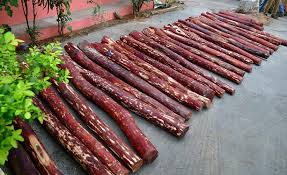
- 04 Oct 2025
In News:
- Recently, the National Biodiversity Authority (NBA) sanctioned ?82 lakh to the Andhra Pradesh Biodiversity Board for the conservation of Red Sanders (Pterocarpus santalinus), an endemic and endangered tree species of India.
- The initiative, undertaken under the Access and Benefit Sharing (ABS) mechanism of the Biological Diversity Act, 2002 (amended in 2023), marks a crucial step towards community-based biodiversity conservation.
About Red Sanders
- Red Sanders, also known as Red Sandalwood, is native to the Southern Eastern Ghats, particularly in the Anantapur, Chittoor, Kadapa, and Kurnool districts of Andhra Pradesh.
- The species thrives in rocky, red soil regions with a hot and dry climate, often in degraded or fallow lands.
- Renowned for its deep red wood, which commands high demand in international markets for musical instruments, furniture, and medicinal purposes, Red Sanders faces serious threats from illegal felling and smuggling. Due to its restricted distribution and exploitation, it is listed as:
- IUCN: Endangered
- CITES: Appendix II (regulated international trade)
- Wildlife (Protection) Act, 1972: Schedule IV
Conservation Initiative
- The ?82 lakh grant aims to raise one lakh saplings of Red Sanders, which will be distributed among farmers under the Trees Outside Forests (ToF)programme. This aligns with India’s broader goal of enhancing green cover beyond traditional forest areas.
- The funds are sourced from benefit-sharing amounts collected from users of Red Sanders, ensuring that economic benefits are returned to local stakeholders such as farmers, tribal communities, and Biodiversity Management Committees (BMCs). The initiative exemplifies how the Access and Benefit Sharing mechanism promotes equitable sharing of biological resources and converts conservation into a community-driven effort.
- In addition, the NBA has previously released ?31.55 crore to the Andhra Pradesh Forest Department for similar conservation and protection activities related to Red Sanders. The present funding will further strengthen grassroots conservation, generating local employment, fostering skill development, and enhancing community stewardship of biodiversity resources.
National Biodiversity Authority (NBA)
The National Biodiversity Authority, headquartered in Chennai, is a statutory body established under the Biological Diversity Act, 2002, and became operational in 2003. It works in coordination with:
- State Biodiversity Boards (SBBs): Regulate access to biological resources at the state level.
- Biodiversity Management Committees (BMCs): Function at the local level to document and conserve biodiversity through People’s Biodiversity Registers (PBRs).
Composition:
- Chairperson: An eminent expert in biodiversity conservation and sustainable resource use.
- 10 Ex-officio Members: Senior representatives from various ministries.
- 5 Non-official Members: Experts from relevant fields of biodiversity management.
National Crime Records Bureau
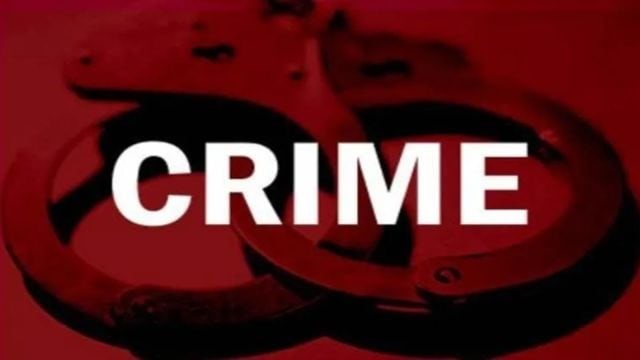
- 04 Oct 2025
In News:
The latest report from the National Crime Records Bureau (NCRB) highlights an alarming surge in crimes against Scheduled Tribes (STs) across India. As per the “Crime in India 2023” data, crimes against STs rose by 28.8%, from 10,064 cases in 2022 to 12,960 cases in 2023, reflecting deepening vulnerabilities of tribal communities in several parts of the country.
NCRB: Mandate and Role
Established in 1986, the NCRB functions under the Ministry of Home Affairs (MHA) as India’s central repository for crime and criminal data. Its creation followed recommendations from the Tandon Committee, the National Police Commission (1977–1981), and the MHA Task Force.
Headquartered in New Delhi, the Bureau is responsible for:
- Collection, analysis, and dissemination of crime data to aid law enforcement and policy formulation.
- Implementing and monitoring the Crime and Criminal Tracking Network and Systems (CCTNS) project, enabling interlinkage of police stations and online citizen services such as e-FIR and complaint filing.
- Maintaining the National Database of Sexual Offenders (NDSO) and managing the Online Cyber-Crime Reporting Portal, through which citizens can report offences like child pornography and cyber sexual violence.
- Hosting CyTrain, a digital training platform for cybercrime investigation and prosecution, and managing the Central Finger Print Bureau, India’s national fingerprint repository.
- Publishing annual statistical reports — Crime in India, Accidental Deaths & Suicides in India, and Prison Statistics India.
Key Findings: NCRB Crime Data 2023
The 2023 data reveals that Manipur witnessed the steepest spike in crimes against STs, registering 3,399 cases — a dramatic increase from just one case in 2022. The rise is closely linked to the ethnic violence between the Meitei and Kuki-Zo communities that erupted in May 2023.
Major offences reported in Manipur included 1,051 cases of arson, 260 cases of dacoity, 203 cases of humiliation or intimidation, and 193 cases of unlawful occupation or disposal of tribal land.
At the national level, the leading categories of offences against STs included:
- Simple hurt (21.3%) – 2,757 cases
- Riots (13.2%) – 1,707 cases
- Rape (9.2%) – 1,189 cases
State-wise, Madhya Pradesh (2,858 cases) and Rajasthan (2,453 cases) followed Manipur as the most affected states.
Crimes against Scheduled Castes (SCs) registered a marginal increase of 0.4% to 57,789 cases, while crimes against women rose 0.7% to 4,48,211 cases in 2023. The report highlighted that most offences against women were related to cruelty by husband or relatives (29.8%), kidnapping (19.8%), and assault to outrage modesty (18.7%).
Crimes against children surged by 9.2%, with 1,77,335 cases registered—predominantly under kidnapping (45%) and the POCSO Act (38.2%). Cases involving juveniles in conflict with law rose by 2.7%, totaling 31,365 cases.
|
Crime / Category |
2022 Count |
2023 Count |
% Change / Rate Info |
Notes |
|
Crimes against Scheduled Tribes (STs) — India total |
10,064 |
12,960 |
+28.8% |
Crime rate rose from 9.6 (2022) to 12.4 (2023) |
|
Manipur — Crimes against STs (state total) |
1 |
3,399 |
Huge increase |
2022 had 1 case; 2023 jumped to 3,399 |
|
Manipur — Dacoity (against STs) |
— |
260 |
— |
260 cases in 2023 |
|
Manipur — Arson (against STs) |
— |
1,051 |
— |
1,051 cases in 2023 |
|
Manipur — Intentional insult / intimidation (humiliation) |
— |
203 |
— |
203 cases in 2023 |
|
Manipur — Occupy / dispose of ST land |
— |
193 |
— |
193 cases in 2023 |
|
Crimes against Scheduled Castes (SCs) — India total |
57,582 |
57,789 |
+0.4% |
Slight increase year-on-year |
|
Crime against women — India total |
445,256 |
448,211 |
+0.7% |
Minor increase |
|
Crime against children — India total |
162,449 |
177,335 |
+9.2% |
Noticeable increase |
|
Juvenile cases (in conflict with law) |
30,555 |
31,365 |
+2.7% |
Cases involving juveniles |
Pallid Fish Eagle
- 03 Oct 2025
In News:
- The Corbett Tiger Reserve (CTR) in Uttarakhand, famed globally for its tigers, has recently emerged as a crucial sanctuary for raptors, with a preliminary survey confirming the presence of 30 species of birds of prey.
- Conducted jointly by the State Forest Department and the World Wide Fund for Nature (WWF), the survey has documented several rare and threatened species, including the Pallid Fish Eagle, whose nesting in the region is extremely rare.
Corbett Tiger Reserve: Overview
- Location: Foothills of the Himalayas, Uttarakhand.
- Established: Originally as Hailey National Park in 1936; first national park in India and the first to be included under Project Tiger.
- Terrain: Undulating with valleys; rivers Ramganga, Pallaen, and Sonanadi traverse the reserve.
- Vegetation: North Indian tropical moist and dry deciduous forests, with sal and mixed forests, interspersed with grasslands and riparian vegetation.
- Ecological Significance: A vital ecological corridor supporting both tiger populations and diverse avian species.
Pallid Fish Eagle (Haliaeetus leucoryphus)
- Common Names: Pallas’s Sea Eagle, Band-Tailed Fish Eagle.
- Size & Appearance: Large, brownish sea eagle.
- Habitat: Near lakes, rivers, and marshes, ranging from lowlands to 5,000 metres elevation.
- Diet: Primarily fish, but also opportunistically hunts other prey.
- Breeding: Builds large nests in tall trees, usually near water bodies.
- Distribution: East Palearctic regions — Kazakhstan, Russia, Tajikistan, Turkmenistan, Uzbekistan, Mongolia, China, India, Nepal, Bangladesh, and Myanmar.
- Conservation Status: Endangered (IUCN Red List).
- Threats: Habitat degradation, pollution, overfishing, and human disturbances.
- Significance in CTR: The discovery of a nesting site indicates active breeding, highlighting the reserve as a safe habitat for this threatened raptor.
Raptor Diversity in CTR
- Total Species Documented: 30 species of raptors, including both resident and migratory birds.
- Nesting Species: Evidence of nests from nine raptor species, including:
- Crested Serpent Eagle
- Hawk Eagle
- Red-Headed Vulture
- Indian Spotted Eagle
- White-Rumped Vulture
- Egyptian Vulture
- Indian Vulture
- Significance: The presence of nests indicates active breeding, confirming CTR as a protected and thriving habitat for raptors.
Conservation and Ecological Implications
- The discovery emphasizes CTR’s dual role as a tiger reserve and a key sanctuary for avian predators.
- Historical declines in vulture populations due to habitat disruption and veterinary drug use underscore the importance of protected habitats like CTR.
- CTR provides a superior ecological corridor, allowing threatened and migratory species to breed and sustain populations.
- Ongoing surveys aim to collect species profiles, population counts, and nesting specifics, forming the basis for targeted conservation strategies.
Swachh Shehar Jodi Initiative
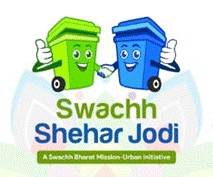
- 03 Oct 2025
In News:
- The Ministry of Housing and Urban Affairs (MoHUA) has launched the Swachh Shehar Jodi (SSJ) initiative, a structured mentorship and collaborative action program under the Swachh Bharat Mission – Urban (SBM-U).
- This initiative pairs top-performing mentor cities with low-performing mentee cities to facilitate knowledge-sharing, peer learning, and replication of best practices in sanitation and waste management.
Objectives
The primary aim of the SSJ initiative is to:
- Support low-performing cities in improving their sanitation outcomes.
- Replicate tested best practices in waste management and urban cleanliness.
- Foster peer learning, experience sharing, and collaborative urban transformation.
- Ensure no city is left behind in the spirit of Antyodaya, promoting inclusive urban development.
Structure of the Initiative
- Mentor Cities: Selected from the Super Swachh League, which comprises cities consistently ranking 1st, 2nd, or 3rd in Swachh Survekshan (SS) 2022, 2023, and 2024 across various population categories. Additional mentors include promising clean cities identified in SS 2024.
- Mentee Cities: Selected from the lowest ranks in their State’s cumulative SS rankings, with preference for geographical proximity to mentor cities.
- Scale: The initiative involves 72 mentor cities paired with around 200 mentee cities. Nearly 300 Memorandums of Understanding (MoUs) were signed simultaneously to formalize these partnerships.
Implementation Approach
- 100-Day Program: Each mentor–mentee pair develops an action plan with clear milestones, focusing on knowledge transfer and implementation of best practices.
- Capacity Building Funds: Both mentor and mentee cities can utilize funds allocated under SBM-U 2.0, supplemented by state contributions or other sources.
- Policy Support: MoHUA provides strategic guidance and monitoring to ensure effective implementation.
- Evaluation: Progress will be assessed through Swachh Survekshan 2026, measuring improvements in sanitation performance.
Significance
- Represents one of the largest time-bound mentorship frameworks in urban sanitation in India.
- Encourages citizen engagement, resilient governance, and operational excellence.
- Promotes scaling of successful urban waste management practices across diverse cities.
- Aligns with the broader vision of Swachh Bharat Mission by building capacity, capabilities, and collaborative urban governance.
Ophiorrhizaechinate
- 03 Oct 2025
In News:
In a remarkable botanical discovery, researchers have identified a new species of coffee plant, Ophiorrhizaechinata, in the biodiversity-rich shola forests of Devikulam, located in the Idukki district of Kerala. The finding underscores the ecological richness of the Western Ghats, a UNESCO World Heritage Site and one of the world’s eight “hottest hotspots” of biological diversity.
About Ophiorrhizaechinata
- Ophiorrhizaechinata is a newly discovered species belonging to the Rubiaceae family, which also includes the well-known coffee plant (Coffea species).
- The discovery was made by botanists from Sacred Heart College, Thevara, St. Teresa’s College, Ernakulam, and St. Thomas College, Thrissur, and has been published in the Nordic Journal of Botany.
- The plant grows in the ecotone region — the transitional zone between evergreen forests and grasslands — at an altitude of about 1,630 metres above sea level.
- So far, the species has been recorded only from its type locality in Devikulam, with an area of occupancy less than 4 sq. km and a population of around 35 plants, indicating its extremely limited distribution.
Biological Characteristics and Significance
- The species is closely related to Ophiorrhizamungos, commonly known as Indian Snake Root, which has long been used in traditional medicine for its anticancer and anti-venom properties.
- Given this close genetic relationship, researchers believe O. echinata may possess valuable medicinal potential, warranting further phytochemical and pharmacological studies.
- Its presence in the shola ecosystem—a habitat known for high endemism and speciation—highlights the ecological uniqueness and evolutionary importance of such forest environments.
Ecological and Conservation Importance
- The discovery reinforces the Western Ghats’ status as a centre of endemism, particularly for the Rubiaceae family, to which over ten coffee-related species are native in India.
- The limited distribution and small population make O. echinatavulnerable to habitat loss and anthropogenic pressures such as deforestation, tourism, and climate change.
- Scientists emphasize the need for urgent habitat conservation measures and in-situ protection to ensure the species’ survival, along with further research on its chemical composition and ecological interactions.
Coffee Diversity in India
- India produced approximately 3.63 lakh metric tonnes of coffee in 2024–25, mainly of Arabica and Robusta varieties.
- However, the discovery of Ophiorrhizaechinata adds to the botanical richness of native coffee-related plants found in the Western Ghats. According to the Coffee Board of India, over 100 coffee plant species are known globally, of which more than ten occur naturally in the Western Ghats region.
Preponderance of Probability
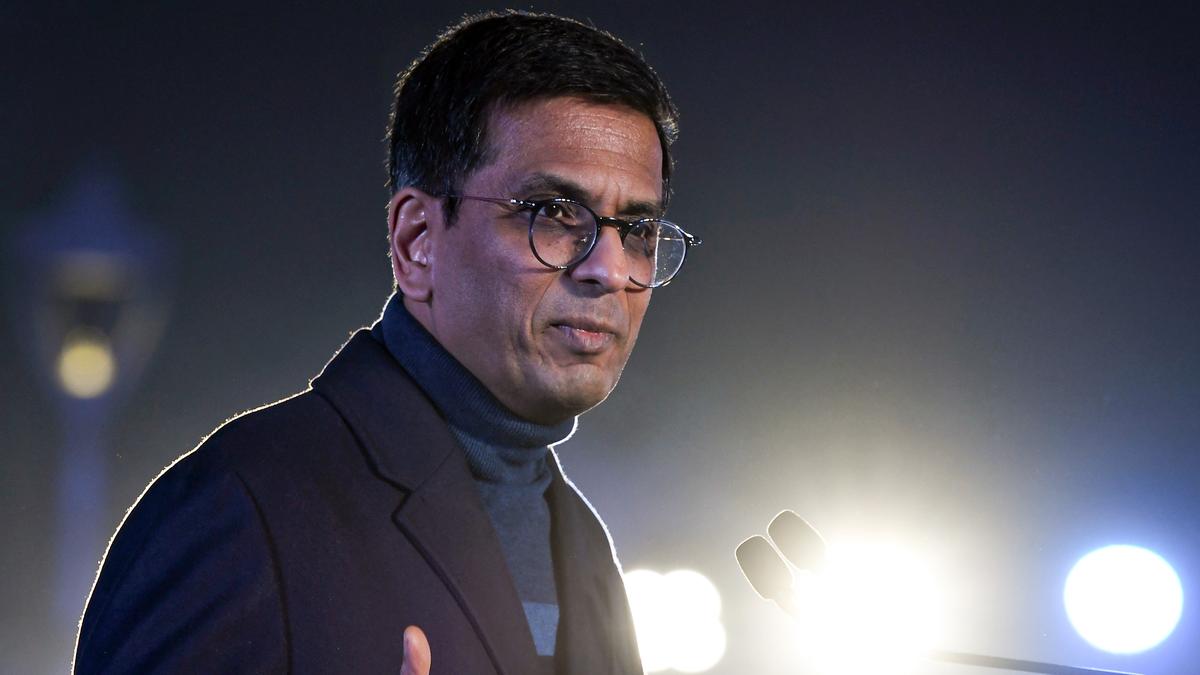
- 03 Oct 2025
In News:
- The Ayodhya title dispute judgment—a landmark decision of the Supreme Court—was founded on the principle of “preponderance of probabilities”, a key evidentiary standard in civil law. Former
- Chief Justice of India D.Y. Chandrachud (part of the 2019 constitutional bench) noted that the verdict was based not on religious sentiment or historical conjecture, but on civil law principles of possession and probability regarding ownership of the inner and outer courtyards of the disputed site.
Understanding the Principle of Preponderance of Probability
- The preponderance of probability is the standard of proof used in civil proceedings to determine whether a fact or claim is more likely to be true than false.
- It represents a balance of likelihoods, where the court weighs the evidence from both sides and accepts the version that appears more probable based on the available proof.
- Unlike the criminal law standard of “beyond a reasonable doubt”, which requires a very high degree of certainty before convicting an accused, the civil standard merely requires showing that a claim is more likely than not.
Key Features
- A fact is considered proved if the court believes it exists on the balance of probabilities, as defined under Section 3 of the Indian Evidence Act, 1872.
- The party bearing the burden of proof (typically the plaintiff) must present evidence that outweighs the opposing party’s version.
- The court does not demand absolute proof but relies on weighing evidence and drawing reasonable inferences.
This principle was elaborated in the case Narayan Ganesh Dastane v. Sucheta Narayan Dastane (1975), where the Supreme Court held that civil cases are determined based on which side’s evidence appears more credible, not necessarily conclusive.
Application in Civil Law
The preponderance of probability is the cornerstone of civil litigation, especially in matters relating to:
- Property and ownership disputes
- Contract enforcement
- Tort claims
- Family law and matrimonial matters
For instance, in a breach of contract case, a plaintiff only needs to establish that it is more likely than not that the contract was violated, rather than proving it beyond all possible doubt.
Ayodhya Judgment: Application of Civil Law Principles
In the Ayodhya title dispute case (2019), the Supreme Court applied the civil law test of possession and preponderance of probabilities to resolve competing claims over the disputed land.
The Court’s approach was rooted in legal reasoning rather than theological or emotive considerations.
Key Legal Reasoning
- The Court examined historical records, revenue documents, and testimonies to determine who had better evidence of possession of the inner and outer courtyards.
- The verdict concluded that while both Hindu and Muslim communities had worshipped at the site, the Hindus had stronger evidence of continued possession of the outer courtyard and belief in the Ram Janmabhoomi.
- The Muslim parties could not sufficiently establish exclusive possession of the inner courtyard before 1857.
- Hence, the balance of probabilities favored the Hindu claimants for ownership and management rights of the site.
Importantly, the judgment relied purely on civil law principles of possession and balance of probabilities, not on any assertion that the mosque’s construction was a desecration—a claim that does not feature in the 2019 verdict, despite later commentary.
Significance of the Principle
- Reinforces the objectivity of civil adjudication, where factual probabilities outweigh moral or religious narratives.
- Demonstrates the distinction between civil and criminal standards of proof in Indian jurisprudence.
- Ensures fairness in property disputes, where ownership is determined by evidence and not sentiment.
- Serves as a model case for the application of the Indian Evidence Act in balancing complex historical and legal claims.
PM E-DRIVE Scheme
- 03 Oct 2025
In News:
The Government of India has issued detailed operational guidelines for setting up around 72,300 public electric vehicle (EV) charging stations across the country, backed by an allocation of ?2,000 crore under the broader ?10,900 crore PM E-DRIVE Scheme. This initiative marks a major step towards achieving sustainable mobility and reducing India’s dependence on fossil fuels.
About the PM E-DRIVE Scheme
- The PM E-DRIVE (Electric Drive Revolution in Innovative Vehicle Enhancement) scheme was launched in October 2024 by the Ministry of Heavy Industries (MHI).
- It is a flagship program designed to accelerate EV adoption, strengthen charging infrastructure, and develop a robust domestic manufacturing ecosystem.
- The scheme is operational from October 1, 2024, to March 31, 2026.
Objectives
- Promote mass mobility through electrified public transport systems.
- Encourage domestic manufacturing of EVs and components under the Phased Manufacturing Programme (PMP).
- Support the creation of a comprehensive network of charging stations.
- Reduce vehicular pollution and enhance urban air quality.
- Facilitate the transition to a self-reliant (Aatmanirbhar) EV ecosystem.
Key Components of the Scheme
- Demand Incentives
- Financial support for purchasing e-2 wheelers, e-3 wheelers, e-ambulances, e-trucks, and electric buses.
- Focus on promoting electric public transport and commercial fleets.
- Grants for Capital Assets
- Funding for electric buses, public charging infrastructure, and testing facilities under MHI.
- States are encouraged to extend additional fiscal and non-fiscal incentives, such as road-tax waivers, permit exemptions, and reduced toll or parking fees.
- Administrative Support: Includes costs for Information, Education & Communication (IEC) activities and Project Management Agency (PMA) fees to ensure smooth implementation.
Implementation Framework
The scheme will be monitored by the Project Implementation and Sanctioning Committee (PISC), chaired by the Secretary, Heavy Industries.
- PISC will oversee progress, address challenges, revise incentives when necessary, and approve technical guidelines.
- Only vehicles registered under the Central Motor Vehicle Rules (CMVR) and equipped with advanced battery technology are eligible for incentives.
Bharat Heavy Electricals Limited (BHEL) serves as the Nodal Agency for:
- Demand aggregation for EV charging infrastructure.
- Development of a Unified EV Super App to provide real-time charger availability, slot booking, payments, and deployment tracking — promoting digital accessibility for users.
Guidelines for EV Charging Infrastructure (2025)
The Ministry of Heavy Industries issued a tiered subsidy framework to promote the establishment of EV charging stations nationwide.
Subsidy Structure
- 100% subsidy on upstream infrastructure and charging equipment for:Government offices, residential colonies, hospitals, and educational institutions (if open for public use).
- 80% subsidy on upstream infrastructure and 70% on equipment for:High-traffic public locations such as railway stations, airports, metro stations, bus terminals, toll plazas, and municipal parking lots.
- 80% subsidy on upstream infrastructure for:Shopping malls, markets, highways, expressways, and battery-swapping stations.
Deployment Priority
The scheme prioritizes:
- Cities with over one million population,
- State capitals, smart cities, metro-linked satellite towns, and
- High-density transport corridors.
Eligible government agencies are to designate nodal bodies to identify sites, aggregate demand, and submit proposals via a dedicated online portal.
BHEL will act as the Project Implementation Agency (PIA), with subsidies released in two tranches linked to performance and compliance milestones.
UNESCO’s World Network of Biosphere Reserves
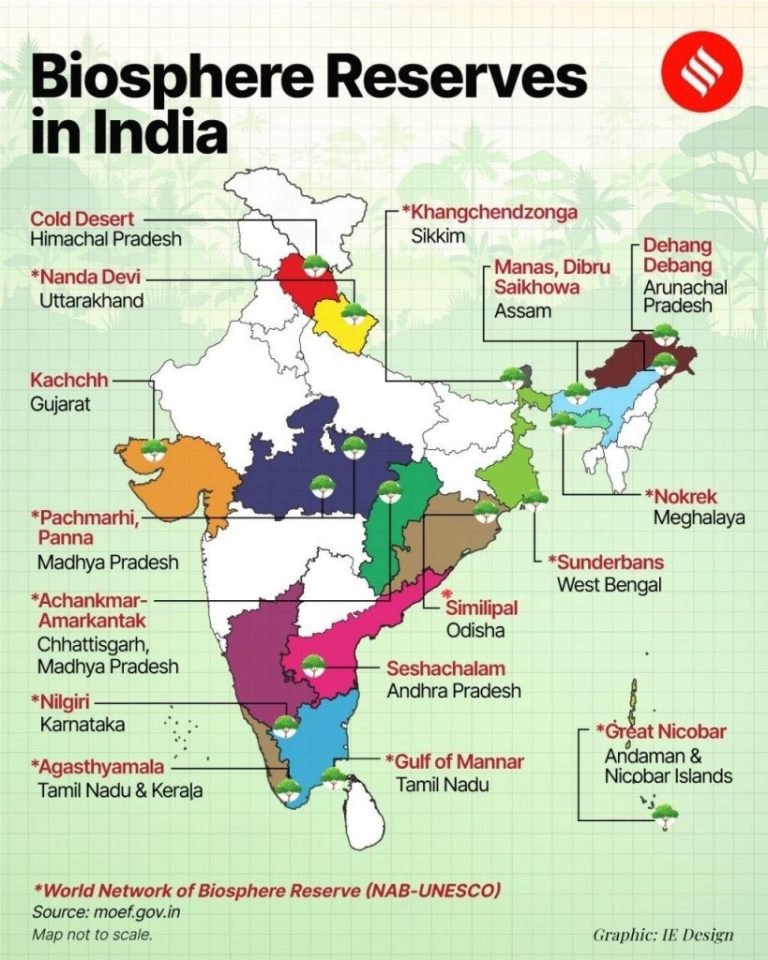
- 02 Oct 2025
In News:
UNESCO has included India’s Cold Desert Biosphere Reserve, located in Lahaul-Spiti district of Himachal Pradesh, in its World Network of Biosphere Reserves (WNBR) during the 37th ICC–MAB session (2025). This recognition makes it India’s first high-altitude cold desert biosphere reserve to join the global network, highlighting the country’s commitment to sustainable mountain ecosystem management.
About the Cold Desert Biosphere Reserve
- Established: 2009
- Location: Western Himalayas, Trans-Himalayan region of Himachal Pradesh
- Area: 7,770 sq. km
- Altitude: 3,300–6,600 m
- Constituent Areas:Pin Valley National Park, Kibber Wildlife Sanctuary, Chandratal Wetland, and adjoining regions.
- Terrain: Windswept plateaus, glacial valleys, alpine lakes, and high-altitude deserts.
- Zonation:
- Core Zone – 2,665 sq. km
- Buffer Zone – 3,977 sq. km
- Transition Zone – 1,128 sq. km
Biodiversity and Communities
- Flora: 655 herbs, 41 shrubs, and 17 tree species, including 14 endemic and 47 medicinal plants vital for the Sowa Rigpa (Amchi) traditional healing system.
- Fauna: 17 mammal and 119 bird species, including Snow Leopard, Tibetan Antelope, Himalayan Wolf, and Himalayan Ibex.
- Communities: Around 12,000 residents dependent on pastoralism, yak/goat herding, and high-altitude farming (barley and peas).
Maitri 2.0 Cross-Incubation Programme
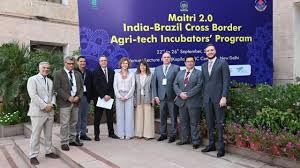
- 02 Oct 2025
In News:
The Indian Council of Agricultural Research (ICAR) recently launched the second edition of the Brazil–India Cross-Incubation Programme in Agritech (Maitri 2.0) in New Delhi. The initiative brings together innovators, startups, and research institutions from both countries to strengthen bilateral cooperation and build a more resilient and inclusive agri-food ecosystem.
About Maitri 2.0:
- Two-Way Learning Platform: Facilitates co-creation between Indian and Brazilian innovators, enabling mutual exchange of knowledge, best practices, and technology solutions.
- Objectives:
- Strengthen incubator linkages between India and Brazil.
- Promote co-incubation models and innovation-driven collaboration.
- Open opportunities in sustainable agriculture, digital technologies, and agri-value chain development.
- Foster inclusive ecosystems that directly benefit farmers and support global food security.
Strategic Significance:
Maitri 2.0 reflects the broader India–Brazil strategic partnership, aligning with their shared vision in agriculture, emerging technologies, and food and nutritional security. It builds on historical collaborations and complements global platforms such as BRICS and G20, highlighting both nations’ roles in addressing food security and climate-resilient agriculture.
Radar-Mounted Drones for Surveillance
- 02 Oct 2025
In News:
The Border Security Force (BSF), India’s first line of defence, is collaborating with the Indian Space Research Organisation (ISRO) to develop radar-mounted drones aimed at enhancing surveillance along India’s western and eastern borders. This initiative seeks to strengthen border security by providing persistent, high-accuracy monitoring of remote and difficult terrains without crossing international boundaries.
About Radar-Mounted Drones:
- Technology: Unmanned aerial systems equipped with compact radars capable of detecting moving targets, vehicles, or intruders.
- All-Weather Capability: Operates effectively in fog, darkness, rain, or adverse weather, unlike visual-only sensors.
- Real-Time Alerts: Provides immediate notifications, enabling rapid deployment of troops and timely response to border threats.
- Integrated Sensor Fusion: Potential to combine radar with infrared, high-resolution cameras, and ground sensors for enhanced detection.
- High Mobility and Scalability: Drones can be rapidly deployed in inaccessible areas, and multiple units can cover larger regions during crises.
Significance:
- The system is designed to overcome limitations of conventional border guarding, which relies on mobile soldiers or fixed towers and is effective only in limited areas.
- Radar-equipped drones can provide continuous day-and-night surveillance, monitor regions where permanent radars or outposts cannot be installed, and assist in controlling smuggling or infiltration attempts.
- The BSF, drawing experience from operations like ‘Operation Sindoor’, has also established a School of Drone Warfare at its Tekanpur Academy in Madhya Pradesh. In the coming months, the force plans to manufacture these radar-equipped drones in-house, further enhancing India’s technological edge in border security.
- This initiative exemplifies the growing role of technological interventions in modern border management, ensuring vigilance, rapid response, and comprehensive monitoring of India’s frontier regions.
Siphon-Powered Desalination
- 02 Oct 2025
In News:
- Researchers at the Indian Institute of Science (IISc), Bengaluru, have developed an innovative siphon-powered thermal desalination system that can transform seawater into potable water faster, cheaper, and more reliably than existing technologies.
- The breakthrough addresses long-standing challenges in solar desalination, such as salt buildup and limited wicking height, offering a scalable solution for water-stressed regions.
How the Siphon-Powered System Works:
- Composite Siphon: A fabric wick paired with a grooved metal surface continuously draws seawater from a reservoir.
- Gravity Flow: Ensures smooth movement and flushes away salt before crystallization occurs.
- Thin-Film Evaporation: Water spreads as a thin layer on heated metal surfaces and evaporates efficiently.
- Ultra-Narrow Air Gap: Vapor condenses just 2 mm away on a cooler surface, enhancing efficiency.
- Multistage Stacking: Multiple evaporator–condenser pairs recycle heat, maximizing water output.
Key Features and Advantages:
- High Efficiency: Produces more than 6 litres of potable water per square metre per hour under sunlight, significantly higher than conventional solar stills.
- Low-Cost Materials: Uses aluminum and fabric, making it affordable and easy to deploy.
- Energy Flexibility: Operates on solar energy or waste heat, enabling off-grid functionality.
- Durability: Can handle highly saline water (up to 20% salt) without clogging.
- Scalability: Suitable for villages, coastal areas, disaster zones, and island nations.
Significance:
- Water Security: Provides a sustainable solution for drinking water scarcity in remote and off-grid regions.
- Innovation Leap: Overcomes technical limits of traditional solar stills, particularly salt scaling and wicking height.
- Sustainable Development: Eco-friendly, low-cost, and aligned with SDG 6 (Clean Water and Sanitation).
Supported by India’s Department of Science and Technology (DST) and published in Desalination, this technology could make the ocean a reliable source of fresh water for millions, emphasizing simplicity, salt resistance, and scalability as its core strengths.
Special and Differential Treatment (SDT)
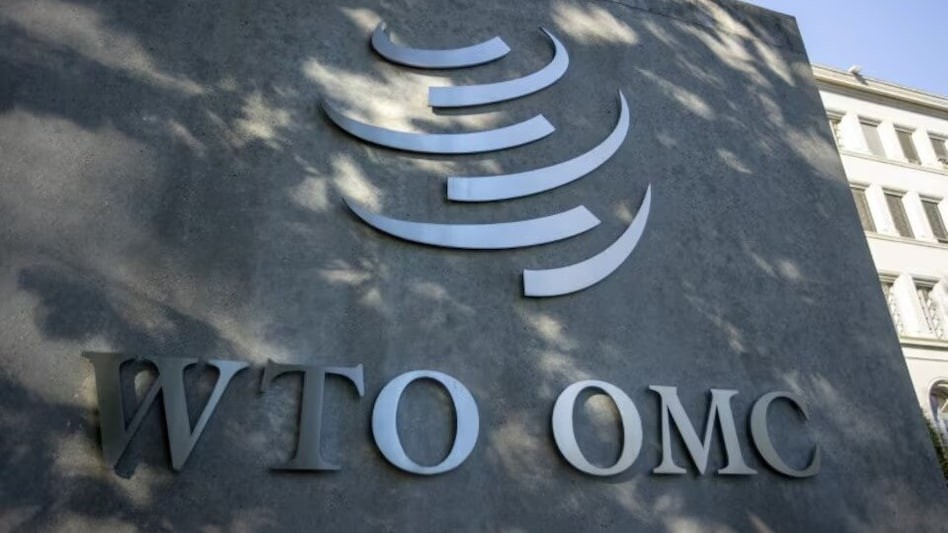
- 02 Oct 2025
In News:
China has announced that it will continue to be classified as a developing country within the World Trade Organization (WTO) but will no longer seek Special and Differential Treatment (S&DT) in future negotiations.
About Special and Differential Treatment (S&DT):
- S&DT grants developing and least-developed countries (LDCs) flexibilities in implementing WTO obligations, including longer deadlines, preferential market access, safeguard measures, and technical assistance.
- Introduced under GATT in the 1960s and formalized in WTO agreements (1995) and the Doha Development Agenda (2001).
- LDCs receive additional automatic benefits; other countries self-declare their status, subject to challenge by WTO members.
Significance of China’s Decision:
- China, historically a major beneficiary of S&DT, will forego such benefits while retaining its developing country status.
- The move signals support for multilateral trade and contributes to WTO reform, addressing concerns raised by the United States and others over selective access to S&DT.
- It highlights the tension between economic capabilities and self-declared developing status, especially among major economies.
Implications:
- Encourages balanced WTO negotiations and strengthens the global trading system.
- Marks a step towards aligning development considerations with global economic realities without relinquishing China’s role in the Global South.
AstroSat

- 01 Oct 2025
In News:
India’s first dedicated Space Astronomy Observatory — AstroSat — has successfully completed a decade of operations since its launch on September 28, 2015. Designed for a mission life of five years, AstroSatcontinues to deliver valuable scientific data, marking a major milestone in India’s advancement in space-based astrophysics research.
About AstroSat
- Launched by: Indian Space Research Organisation (ISRO)
- Launch Vehicle: PSLV-C30 (XL)
- Launch Site: Satish Dhawan Space Centre (SDSC), Sriharikota
- Launch Date: September 28, 2015
- Mission Life: Originally 5 years, extended due to sustained functionality and scientific output
- Managed by:Mission Operations Complex (MOX) of ISTRAC, Bengaluru
AstroSat represents India’s first multi-wavelength space observatory, capable of observing celestial bodies in Visible, Ultraviolet (UV), and low and high-energy X-ray bands of the electromagnetic spectrum simultaneously — a capability possessed by only a handful of space observatories globally.
Scientific Objectives
AstroSat was conceived to advance India’s capability in space-based astronomy and to deepen understanding of high-energy astrophysical phenomena. Its key scientific goals include:
- Investigating high-energy processes in binary star systems containing neutron stars and black holes.
- Estimating magnetic field strengths of neutron stars.
- Studying star formation regions and energetic star systems beyond the Milky Way.
- Detecting and monitoring transient X-ray sources (brief, bright cosmic events).
- Conducting a limited deep-field survey of the universe in the ultraviolet region.
Key Instruments (Payloads)
AstroSat carries five scientific payloads, each contributing to multi-spectral observations:
- Ultra Violet Imaging Telescope (UVIT):Observes celestial objects in near and far ultraviolet as well as visible wavelengths, helping in the study of star formation and evolution.
- Large Area X-ray Proportional Counter (LAXPC):Detects time variability and spectral properties of X-ray sources in the 3–80 keV range.
- Cadmium–Zinc–Telluride Imager (CZTI):Observes hard X-rays (above 20 keV) and helps study gamma-ray bursts and black hole emissions.
- Soft X-ray Telescope (SXT):Provides soft X-ray imaging and spectroscopy to study compact objects like neutron stars and white dwarfs.
- Scanning Sky Monitor (SSM):Continuously scans the sky to detect new transient X-ray sources and track their variability.
Study In India (SII) Portal
- 01 Oct 2025
In News:
The University Grants Commission (UGC) has mandated that all foreign nationals studying in Indian Higher Education Institutions (HEIs) must now register on the newly launched Study in India (SII) portal. The move seeks to centralise data, streamline admission and visa processes, and strengthen compliance monitoring for international students studying in India.
Background and Context
Until now, foreign students seeking admission in Indian universities had to apply directly to individual institutions, which also facilitated their visa processes. However, the absence of a centralised database made it difficult for authorities to track foreign student numbers, monitor visa compliance, and address instances of overstaying or misuse of study visas.
To overcome these challenges, the Ministry of Education (MoE), in collaboration with the UGC, has introduced the Study in India portal as a digital one-stop platform integrating admissions, visa processing, and compliance tracking.
About the Study in India (SII) Portal
- Nodal Ministry: Ministry of Education (MoE), Government of India
- Implementing Agency: University Grants Commission (UGC)
- Objective: To promote India as a global education hub and simplify access for international students seeking to study in Indian higher education institutions.
Key Features
- Single-Window Digital Platform:
- Acts as a unified interface for application submission, admission processing, and student visa facilitation.
- Enables foreign students to explore regular, short-term, and long-term courses across Indian universities and HEIs.
- Comprehensive Academic Directory:
- Lists undergraduate, postgraduate, and doctoral programmes available in participating institutions.
- Includes courses from the Indian Knowledge System (IKS) — such as Yoga, Ayurveda, classical music, and traditional arts — highlighting India’s cultural and intellectual heritage.
- Unique SII-ID Generation:
- Upon registration, each student receives a unique SII-ID, which must be quoted while applying for the student visa.
- The visa process is now directly linked to the SII portal, ensuring authenticity and easier tracking.
- Institutional Accountability:
- HEIs admitting foreign students must appoint a Compliance Officer to oversee adherence to all SII guidelines and data-reporting requirements.
- Institutions are required to update foreign student details regularly on the portal for regulatory oversight.
- Information Gateway:Provides details about academic facilities, research opportunities, campus infrastructure, and student support services to guide prospective applicants.
Agri-Stack Scheme
- 01 Oct 2025
In News:
- The Government of Uttar Pradesh has issued a stern directive to all District Magistrates (DMs), warning of strict action against officials who fail to complete farmer registration under the Agri-Stack scheme within the revised deadline.
- Beginning October 16, 2025, DMs have been allotted one month to ensure 100% registration of farmers, a crucial step in the implementation of this national digital agriculture initiative.
About the Agri-Stack Scheme
- The Agri-Stack is a national digital infrastructure being developed by the Ministry of Agriculture and Farmers Welfare, in collaboration with state governments, to digitally transform Indian agriculture.
- It aims to create a unified database of farmers and farmlands, integrating information on land records, crop patterns, and scheme benefits.
- The system is envisioned to serve as a foundational digital layer for data-driven governance, policy formulation, and targeted service delivery to farmers.
Objectives and Key Features
- Empowerment through Data: Enables the creation of a unique digital identity for every farmer through a Farmer ID linked to Aadhaar, ensuring accurate targeting of benefits.
- Efficiency and Transparency: Digitally connects demographic data, landholdings, and scheme eligibility, minimizing leakages and duplication.
- Customized Services: Facilitates localized advisories, early warning systems for disasters and pest attacks, and timely delivery of inputs and credit.
- Ease of Governance: Provides a single, verified data source for policy planning, monitoring, and feedback management.
- Public–Private Collaboration: Enables authorized access for banks, agri-tech startups, and value-chain companies to offer tailored financial and technical services.
Core Components of the Agri-Stack
- Farmer and Farmland Registries:
- A federated digital registry of all farmers across India, compiled by states and harmonized at the central level.
- Each farmer receives a unique, verifiable Farmer ID, dynamically linked to farmland plot data for non-legal, advisory, and planning purposes.
- Unified Farmer Service Interface (UFSI):
- A technical framework that ensures data interoperability between government and authorized private stakeholders.
- Enables federated data exchange with consent-based access, improving coordination across sectors like finance, insurance, and agri-input supply.
- Crop Sown Registry:
- Digitally records seasonal crop data for every farm using smartphone, drone, and satellite imagery.
- Replaces traditional manual crop surveys with real-time, geo-referenced data for better yield estimation and policy response.
- Agri-Stack Sandbox:A testing environment that allows authorized users (such as agri-tech firms and banks) to safely experiment with sample datasets and digital tools before gaining production-level access.
- Consent Manager:
- Empowers farmers to control the sharing of their personal data.
- Data access is granted only with explicit consent, which can be revoked at any time, ensuring privacy and accountability.
Lachipora Wildlife Sanctuary
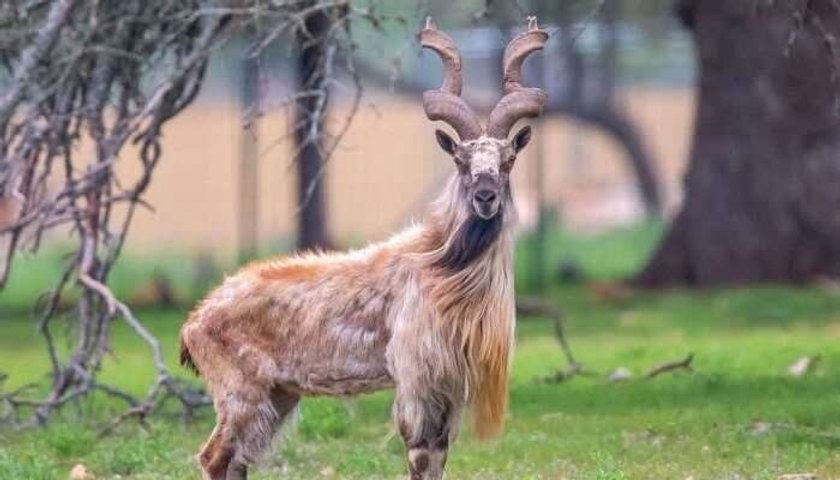
- 01 Oct 2025
In News:
The District Magistrate of Baramulla has ordered the immediate closure of 14 gypsum mining units operating within the prohibited 1-km radius of the Lachipora Wildlife Sanctuary in north Kashmir’s Uri subdivision, following directives from the Supreme Court of India.
Background and Legal Context
- The decision is based on the Supreme Court judgment in State of Uttarakhand & Others vs. Nandan Singh Bora & Others, which mandates that no mining or quarrying activity is permissible within 1 km of any protected forest or wildlife sanctuary.
- Furthermore, if the Eco-Sensitive Zone (ESZ) of a sanctuary extends beyond 1 km, the restriction applies to the entire notified ESZ area.
- Subsequent surveys conducted by the Wildlife Warden, North Kashmir Division (Sopore), confirmed that several gypsum mining units were functioning within the restricted buffer zone of Lachipora. Acting on this report, the district authorities ordered the immediate suspension of all mining operations to prevent further ecological degradation.
- Officials emphasized that the move aims to preserve the fragile ecology of the region, which forms a vital part of the North Kashmir forest belt and supports diverse wildlife species. The crackdown also aligns with the Geology and Mining Department’s intensified efforts to curb illegal quarrying across Baramulla district.
About Lachipora Wildlife Sanctuary
- Location: Situated in Baramulla district, Jammu & Kashmir, near the village of Lachipora, on the northern banks of the Jhelum River.
- Established: 1987
- Area: 141 sq. km
- Altitude Range: 1,630–3,300 metres
- Topography: Comprises a varied landscape of alpine meadows, gentle to steep slopes, and rocky cliffs, supporting rich biodiversity.
Ecological Significance
- Flora:The sanctuary hosts extensive coniferous forests of deodar, Himalayan white pine, and blue pine, along with broadleaf species such as birch, horse chestnut, West Himalayan fir, and Persian walnut.
- Fauna:
- Habitat for endangered species like the Hangul (Kashmir stag) and Markhor, a wild goat known for its spiral horns.
- Home to Himalayan black bear, snow leopard, musk deer, and several small mammals.
- Recognized as an Important Bird Area (IBA) for harboring the vulnerable Western Tragopan and other high-altitude avifauna.
Jal Prahar 2025
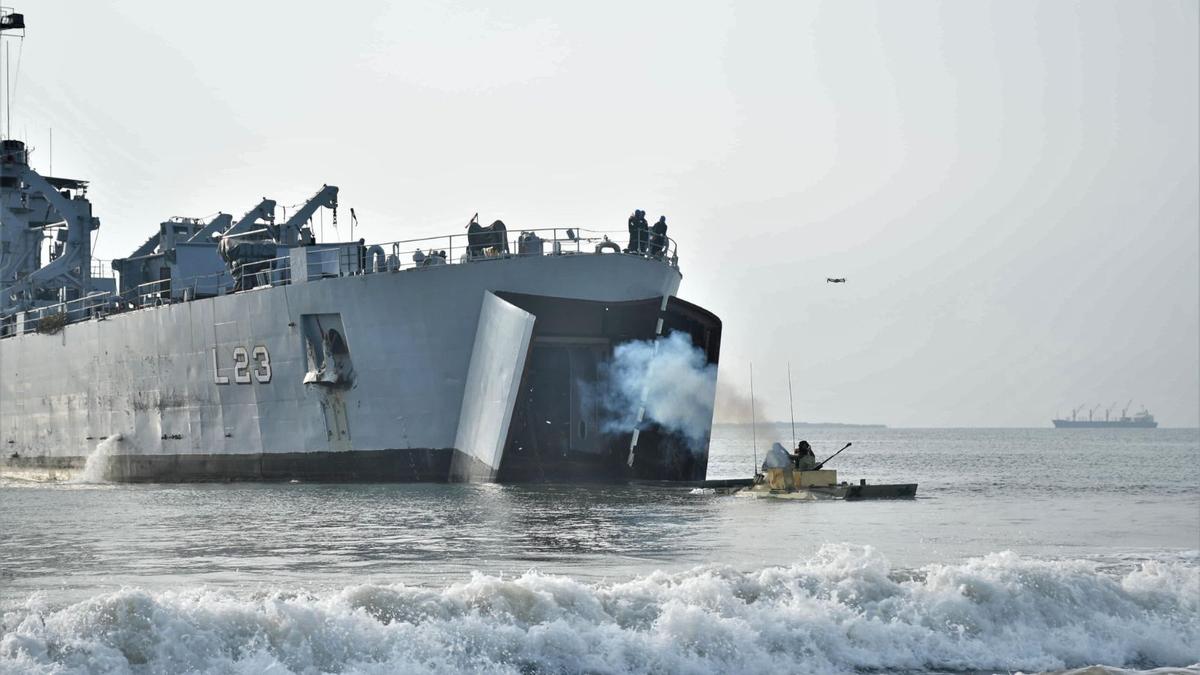
- 01 Oct 2025
In News:
The Indian Navy has successfully concluded the biannual joint amphibious exercise ‘Jal Prahar 2025’ along the eastern seaboard, in close coordination with the Indian Army. The exercise aimed to enhance joint operational readiness, inter-service synergy, and maritime security preparedness.
About Jal Prahar 2025
- Nature of Exercise:‘Jal Prahar’ is a biannual joint amphibious exercise conducted by the Indian Navy in collaboration with the Indian Army.
- Objective:To strengthen coordination, interoperability, and integration between the two forces for effective amphibious operations and coastal defence.
Exercise Structure and Key Highlights
The 2025 edition of the exercise was conducted in two phases:
- Harbour Phase (Visakhapatnam):
- Focused on the induction and integration of Army troops onboard naval platforms such as INS Gharial.
- Included onboard training sessions, safety briefings, familiarization with naval operations, and interaction activities to foster inter-service camaraderie.
- Sea Phase (Kakinada):
- Involved the execution of full-scale amphibious operations, including hard beaching, launching of Landing Craft Assaults (LCAs) and infantry combat vehicles (BMPs).
- Validated Standard Operating Procedures (SOPs) and Joint Training Protocols, ensuring seamless coordination during real-world operations.
UNEP Young Champions of the Earth Award 2025
- 30 Sep 2025
In News:
The United Nations Environment Programme (UNEP) has announced the winners of the 2025 Young Champions of the Earth Award, recognising three outstanding entrepreneurs from India, Kenya, and the United States for their innovative solutions addressing pressing environmental challenges.
About the Award
- Launched: 2017
- Relaunched: 2025, in partnership with Planet A, an environmental awareness initiative co-founded by U.S. cleantech executive Chris Kemper.
- Organised by:United Nations Environment Programme (UNEP)
- Objective: To empower and celebrate young innovators (below 30 years of age) offering scalable solutions to the triple planetary crisis — climate change, biodiversity loss, and pollution & waste.
Each winner receives USD 20,000 in seed funding, mentorship, and access to a global platform to expand their innovations. They also participate in the Planet A Pitch Competition, with opportunities to win an additional USD 100,000 growth grant and a potential USD 1 million seed investment.
2025 Award Winners
- JinaliMody (India) – Founder, Banofi Leather
- Innovation: Produces sustainable, leather-like material from banana crop waste.
- Impact: Reduces water consumption, chemical pollution, and carbon emissions associated with traditional leather production.
- Significance: A women-led initiative tackling the fast fashion industry’s environmental footprint while promoting circular economy principles.
- Joseph Nguthiru (Kenya) – Founder, HyaPak
- Innovation: Converts the invasive water hyacinth from Lake Naivasha into biodegradable packaging and seedling wrappers.
- Impact: Provides a sustainable alternative to single-use plastics while addressing invasive species management.
- Noemi Florea (United States) – Founder, Cycleau
- Innovation: Developed a compact greywater reuse system that can retrofit household sinks, showers, and laundry units.
- Impact: Converts wastewater into potable water using low energy, offering a scalable model for water conservation and reuse.
Significance
- The award exemplifies youth-driven environmental innovation, aligning with UNEP’s broader mission to foster sustainable solutions.
- It highlights global South participation, with India and Kenya demonstrating leadership in low-cost, eco-friendly technologies.
- The 2025 relaunch underscores growing private sector and media collaboration in advancing environmental entrepreneurship through platforms like Planet A.
India test-fires Agni-Prime missile from rail-based mobile launcher
- 30 Sep 2025
In News:
India has successfully test-fired the Agni-Prime (Agni-P) intermediate-range ballistic missile from a rail-based mobile launcher, marking a first-of-its-kind achievement in the nation’s defence history. The test was conducted from a platform integrated with the national railway network. This milestone represents a significant leap in India’s strategic mobility and deterrence capabilities.
About Agni-Prime Missile
- Type: Next-generation, nuclear-capable, intermediate-range ballistic missile (IRBM)
- Range: Up to 2,000 kilometres
- Developed by:Defence Research and Development Organisation (DRDO) in collaboration with the Strategic Forces Command (SFC)
- Part of: India’s Agni missile series, designed to reinforce the country’s credible minimum deterrence posture.
The Agni-Prime is equipped with advanced guidance and communication systems, featuring a canisterised launch mechanism that enhances storage safety, rapid deployment, and longer shelf life.
Rail-Based Mobile Launcher: A Game-Changing Innovation
The recent test marked the first time India used a rail-based canisterised mobile launcher.
- It can move seamlessly across the national rail network, allowing flexible positioning and quick deployment.
- The launcher enables a short reaction time with low visibility, enhancing operational stealth and survivability.
- This mobility reduces predictability of launch locations, complicating adversarial surveillance and targeting efforts.
Strategic Significance
- Enhanced Strategic Deterrence:The test demonstrates India’s ability to deliver a credible and survivable nuclear deterrent, joining the select group of nations with rail-based canisterised launch systems.
- Improved Survivability and Flexibility:Rail mobility adds a new dimension to India’s nuclear command structure by complementing road-based and silo-based systems, ensuring launch readiness even under high-threat scenarios.
- Operational Stealth and Rapid Response:The ability to launch within minutes from concealed rail positions strengthens India’s second-strike capability under its nuclear doctrine.
- Geopolitical Implications:The development aligns with India’s effort to maintain strategic stability in a complex regional environment, particularly amid evolving threats in South Asia and the Indo-Pacific.
Recent Developments in India’s Missile Programme
- In August 2025, Agni-Prime was successfully tested from Chandipur, Odisha.
- Earlier, in March 2024, under Mission Divyastra, India tested Agni-5 with MIRV (Multiple Independently Targetable Re-entry Vehicle) capability — allowing a single missile to carry and deliver multiple nuclear warheads to different targets.
- The Strategic Forces Command, operational since 2003, currently manages India’s nuclear arsenal and deployment systems.
India’s 4-Pillar Approach to Strengthen Shipbuilding, Maritime Financing, and Domestic Capacity
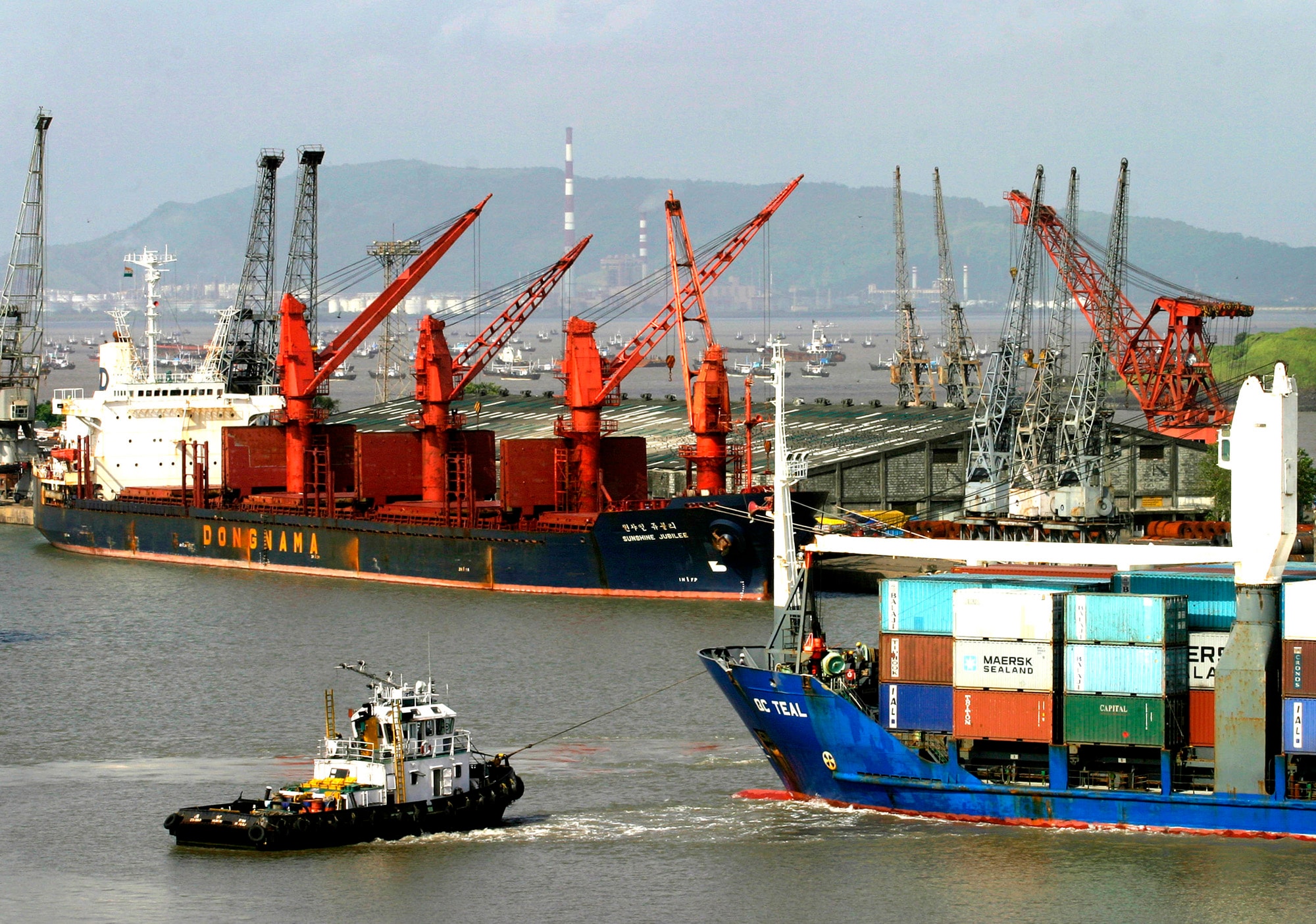
- 30 Sep 2025
In News:
In a major push to revive India’s maritime and shipbuilding sector, the Union Cabinet approved a ?69,725 crore package (September 2025) anchored on a comprehensive 4-Pillar Approach. The initiative aims to transform India into a global hub for shipbuilding and shipping services, enhance maritime self-reliance, and contribute to the vision of Aatmanirbhar Bharat.
Background
India’s maritime sector supports 95% of the nation’s trade by volume and 70% by value, making it a critical pillar of economic and strategic security. Recognized as the “mother of heavy engineering industries,” shipbuilding plays a pivotal role in employment generation, technological innovation, and defence capability. The new package seeks to address long-standing gaps in financing, infrastructure, and capacity to strengthen domestic shipyards and maritime logistics.
Objectives
- Expand domestic shipbuilding capacity to 4.5 million Gross Tonnage (GT) by 2036.
- Generate nearly 30 lakh employment opportunities.
- Mobilize ?4.5 lakh crore in investments.
- Build resilient maritime supply chains ensuring national, energy, and food security.
- Advance India’s position as a competitive and sustainable maritime economy.
The Four Pillars of the Package
1. Shipbuilding Financial Assistance Scheme (SBFAS)
- Extended till: 31 March 2036
- Corpus: ?24,736 crore
- Purpose: Incentivize shipbuilding within India by providing financial support to Indian shipyards.
- Key Feature: Introduction of a Shipbreaking Credit Note worth ?4,001 crore to encourage sustainable ship recycling and capacity utilization.
2. Maritime Development Fund (MDF)
- Corpus: ?25,000 crore
- Components:
- Maritime Investment Fund: ?20,000 crore, with 49% Government of India participation.
- Interest Incentivization Fund: ?5,000 crore to reduce the cost of borrowing and improve project bankability.
- Objective: Provide long-term financing for shipbuilding, port infrastructure, and related logistics services.
3. Shipbuilding Development Scheme (SbDS)
- Outlay: ?19,989 crore
- Aim: Expand India’s domestic shipbuilding capacity and support mega shipbuilding clusters.
- Key Features:
- Establishment of the India Ship Technology Centre under the Indian Maritime University (IMU).
- Support for greenfield and brownfield shipyards.
- Insurance and risk coverage for shipbuilding projects.
- Focus on skill development and adoption of advanced shipbuilding technologies.
4. National Shipbuilding Mission and Reforms
- A National Shipbuilding Mission will coordinate implementation and monitor outcomes of all initiatives under the package.
- Focus areas include:
- Taxation, legal, and policy reforms to streamline procedures.
- Capacity enhancement through modern shipyard development.
- Human resource and skill training to strengthen India’s maritime workforce.
- Promotion of green and sustainable shipbuilding practices aligned with global standards.
Expected Impact
- Unlock 4.5 million GT of annual shipbuilding capacity.
- Create nearly 30 lakh direct and indirect jobs across the maritime ecosystem.
- Boost investment inflows of ?4.5 lakh crore into ports, shipyards, and allied industries.
- Enhance strategic autonomy and reduce dependence on foreign shipbuilders.
- Strengthen geopolitical resilience, ensuring continuity of India’s trade, energy, and food supply chains during global disruptions.
- Foster innovation, sustainability, and competitiveness in line with “Make in India” and “Blue Economy” objectives.
SPARSH Pension System
- 30 Sep 2025
In News:
The System for Pension Administration – Raksha (SPARSH), an initiative of the Ministry of Defence (MoD), has emerged as a landmark reform in defence pension management. Recently, SPARSH resolved 87% of legacy discrepancies—addressing 5.60 lakh out of 6.43 lakh cases—and has significantly improved grievance redressal efficiency.
About SPARSH Pension System
- Launched by: Ministry of Defence
- Administered by:Defence Accounts Department (DAD) through the Principal Controller of Defence Accounts (Pensions), Prayagraj
- Coverage: Caters to pensioners from the Army, Navy, Air Force, and Defence Civilians
- Scope: Over 31.54 lakh defence pensioners across India and Nepal are onboarded on SPARSH, making it the world’s largest digital pension management system.
Objectives
- To provide a comprehensive, transparent, and paperless system for pension sanction, disbursement, and grievance redressal.
- To ensure direct pension disbursement to beneficiaries without intermediaries.
- To modernize defence pension administration by shifting from a fragmented and manual process to a centralized and integrated digital framework.
Key Features
- Centralized and Web-Based Platform:Handles pension sanction, claim, and disbursement directly into the pensioners’ bank accounts, eliminating third-party intermediaries.
- Self-Service Portal:Enables self-verification, easy data correction, and real-time access to pension details through a personal dashboard.
- Digital Life Certification:Pensioners can complete identification digitally, removing the need for physical visits to pension offices.
- Comprehensive Record Management:Maintains the entire pension lifecycle—from initiation to cessation and transfer to the last eligible beneficiary.
- Grievance Management:Provides an integrated mechanism for service requests and grievance redressal within the same platform.
Significance
SPARSH represents a paradigm shift in defence pension administration—from manual and fragmented systems to a transparent, technology-driven model. It embodies the government’s commitment to “Minimum Government, Maximum Governance”, ensuring efficiency, accountability, and dignity for millions of defence pensioners.
By integrating real-time disbursal, grievance monitoring, and self-service accessibility, SPARSH has strengthened financial inclusion, digital governance, and welfare delivery within India’s defence ecosystem.
L-1 Visa
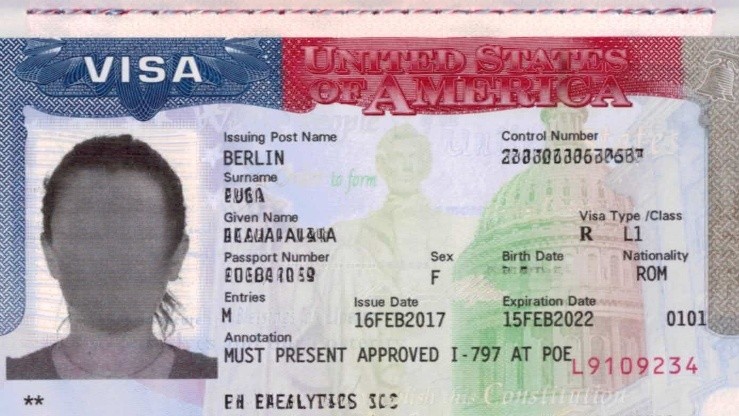
- 30 Sep 2025
In News:
The U.S. administration’s decision to impose a steep $100,000 fee on new H-1B visa applications has reignited debate over whether the L-1 visa could serve as a practical alternative for Indian professionals. While both facilitate skilled migration, they serve distinct purposes and cater to different categories of workers.
About the L-1 Visa
- Nature and Purpose:
- The L-1 visa is a non-immigrant work visa designed for intra-company transfers within multinational corporations.
- It enables global firms to relocate executives, managers, and employees with specialized knowledge from their overseas branches to U.S. offices.
- Introduced under the Immigration and Nationality Act (1965), it aims to promote international business operations and internal talent mobility without depending on the external labour market.
- Categories:
- L-1A: For executives and managers; maximum stay of 7 years.
- L-1B: For employees with specialized knowledge; maximum stay of 5 years.
Applicants must have worked at least one continuous year abroad for the same company within the preceding three years.
Key Features and Advantages
- No Cap or Lottery: Unlike the H-1B, the L-1 has no annual quota or lottery system, allowing year-round applications.
- Blanket Petitions: Large multinationals can file blanket petitions for quicker processing.
- Dual Intent: L-1 holders can apply for a green card without jeopardizing their visa status.
- Dependent Work Rights: Spouses on L-2 visas can work freely in the U.S., offering significant flexibility for families.
- Corporate Convenience: Firms can manage global mobility efficiently, especially for leadership or niche technical roles.
Limitations and Challenges
- Narrow Eligibility: Only employees of the same multinational company are eligible. The visa cannot be used to switch to another employer in the U.S.
- High Scrutiny: U.S. consulates, especially in India, closely scrutinize “specialized knowledge” claims, leading to higher rejection rates than H-1B visas.
- Time-Bound Stay: L-1 visas have strict duration limits and cannot be extended while awaiting permanent residency.
- No Portability: The visa binds the employee to the sponsoring company, unlike H-1B holders who can change employers under certain conditions.
L-1 vs H-1B: The Key Differences
|
Aspect |
L-1 Visa |
H-1B Visa |
|
Purpose |
Intra-company transfer |
Employment in speciality occupation |
|
Eligibility |
Must have worked abroad for the same company |
Bachelor’s degree in speciality field |
|
Annual Cap |
No cap |
85,000 new visas per year |
|
Employer Flexibility |
Cannot switch companies |
Can change employers (with transfer approval) |
|
Wage Requirement |
No prevailing wage rule |
Must meet U.S. Department of Labor’s wage standards |
|
Processing System |
No lottery |
Lottery-based selection |
|
Dependent Work Rights |
L-2 spouse can work freely |
H-4 spouse requires separate authorization |
|
Maximum Stay |
5–7 years (non-extendable beyond limits) |
6 years (extendable in green card process) |
Global Forest Fund
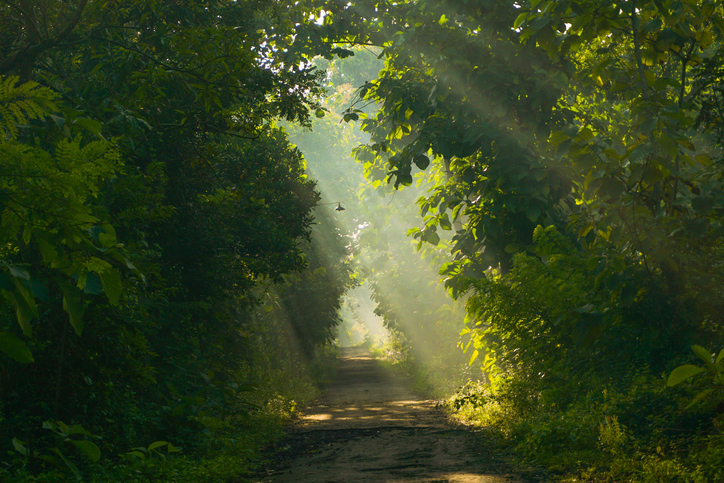
- 29 Sep 2025
In News:
- Brazil is set to become the first country to invest in the Tropical Forests Forever Facility (TFFF) — a multilateral fund designed to support long-term tropical forest conservation.
- The announcement is expected to be made at the United Nations headquarters in New York, marking a major step toward reshaping global climate finance ahead of COP30, which Brazil will host in Belém, Amazon region, in November.
About the Tropical Forests Forever Facility (TFFF)
- Origin: Proposed by Brazil during COP28 (UAE, 2023), the TFFF aims to create a permanent, self-sustaining financial mechanism to conserve tropical forests across the globe.
- Nature: It is a global, multilateral, and endowment-style fund—the first of its kind—dedicated exclusively to protecting tropical forests and ensuring steady, performance-based payments to countries maintaining their forest cover.
- Goal: To mobilize USD 125 billion through a blended finance structure, combining sovereign and private-sector contributions.
Financial Structure and Mechanism
- Funding Model:The fund will function as a permanent endowment, investing its corpus in diversified financial portfolios that generate sustainable returns.
- The returns will finance annual stipends to participating tropical forest countries (TFCs), based on the extent of their standing forests.
- Composition of Funds:
- Sponsors (20%) – High-income countries (as per World Bank classification) and global philanthropies.
- Market Investors (80%) – Institutional investors, sovereign wealth funds, and endowments participating via debt instruments (such as green bonds).
- Fund Management: Likely to be handled by a Multilateral Development Bank (MDB) such as the World Bank, ensuring transparency and credibility.
- Initial Target:To reach the full USD 125 billion goal, Brazil plans to secure an initial USD 25 billion from governments and philanthropies, which would serve as an anchor to attract an additional USD 100 billion from private investors.
Brazil’s Role and Strategic Intent
- Brazil’s upcoming investment will make it the first contributor to the fund — signaling its confidence in the mechanism and encouraging other nations to follow suit.
- According to official sources, the investment amount will be “considerable,” intended to set a benchmark and demonstrate Brazil’s commitment to global forest conservation.
- As home to the world’s largest tropical rainforest, Brazil stands to receive significant future payouts under the TFFF, reinforcing its dual role as a beneficiary and a leader in climate stewardship.
Global Participation and Support
- Several countries have already expressed interest in joining the initiative, including China, the United Kingdom, France, Germany, Norway, Singapore, and the United Arab Emirates.
- Notably, China has conveyed its intention to contribute among the first investors — a move seen as a potential turning point in global climate finance, traditionally dominated by Western donors.
Significance
- Bridging Climate Finance Gaps:The TFFF introduces a results-based, long-term funding model for forest conservation, shifting away from short-term grants toward permanent, scalable financing.
- Shared Global Responsibility:The participation of both developed and developing nations underscores a more equitable climate finance architecture, aligning with the principle of common but differentiated responsibilities (CBDR).
- Boost to COP30 and Viksit Bharat 2047 Goals:Brazil’s leadership strengthens its position ahead of COP30 and aligns with India’s own emphasis on sustainable development and green finance under Mission LiFE and Viksit Bharat 2047 frameworks.
- Preserving Global Carbon Sinks:By rewarding countries for maintaining forests, the fund provides a direct economic incentive for protecting vital ecosystems that regulate global climate patterns.
Adi Yuva Fellowship & Adi Karmayogi Volunteers Programme
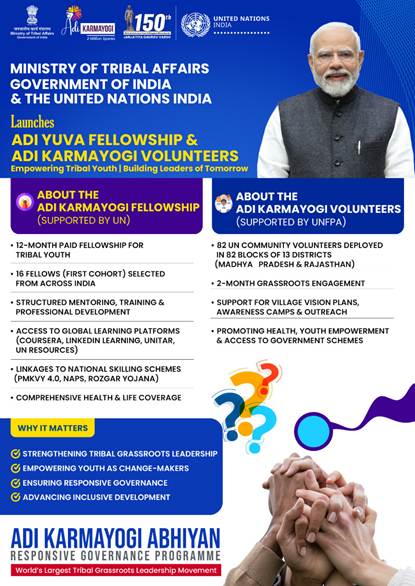
- 29 Sep 2025
In News:
- The Ministry of Tribal Affairs (MoTA), in partnership with the United Nations in India, has launched the Adi Yuva Fellowship and the Adi Karmayogi Volunteers Programme under the umbrella of the Adi Karmayogi Abhiyan — a flagship initiative envisioned as the world’s largest tribal grassroots leadership movement.
- These initiatives aim to empower tribal youth, strengthen grassroots governance, and promote inclusive development in alignment with the goals of Viksit Bharat 2047 and the 2030 Agenda for Sustainable Development.
About Adi Karmayogi Abhiyan
- Coverage: Targets 11 crore citizens across 1 lakh tribal-dominated villages in 550 districts of 30 States and UTs.
- Objective: To transform governance into a people’s movement rooted in responsive, accountable, and citizen-centric administration.
- The ongoing Adi SewaParv (17 September – 2 October 2025) focuses on preparing Tribal Village Vision 2030 Action Plans through community–government collaboration.
1. Adi Yuva Fellowship
Overview
The Adi Yuva Fellowship, supported by UN India, is a first-of-its-kind national programme designed to nurture tribal youth leadership through structured learning, mentorship, and professional development.
Key Features
- Duration: 12-month paid fellowship with a tailored learning plan combining knowledge-building, on-the-job training, and reflective practice.
- Support Package: Monthly allowances, comprehensive health and life insurance, and access to UN and commercial learning platforms.
- Skill Linkages: Fellows will be connected to national employability schemes such as:
- Pradhan Mantri Kaushal Vikas Yojana (PMKVY) 4.0
- National Apprenticeship Promotion Scheme (NAPS)
- PM Viksit Bharat Rozgar Yojana
- Mentorship and Exposure: Fellows will receive structured mentorship, engage in peer learning, and gain exposure to national and international platforms.
- Deployment: The first batch of 16 Fellows will be selected through a competitive process and placed with UN agencies at national, state, and district levels.
Objective
To build a cadre of empowered tribal youth who can contribute to governance, entrepreneurship, innovation, and community-led development, ensuring that tribal voices shape India’s growth story.
2. Adi Karmayogi Volunteers Programme
Overview
Supported by the United Nations Population Fund (UNFPA), the Adi Karmayogi Volunteers Programme is aimed at strengthening last-mile service delivery and promoting community participation in tribal regions.
Key Features
- Deployment:
- 82 Adi Karmayogi Volunteers (UN Community Volunteers) deployed across 82 blocks in 13 districts of Madhya Pradesh and Rajasthan.
- They will engage in anintensive two-month grassroots programme.
- Role and Activities:
- Support preparation of Village Vision 2030 Action Plans.
- Conduct awareness campaigns, outreach drives, and capacity-building sessions.
- Facilitate improved access to government schemes and services.
- Outcome: Strengthen inclusive governance, local participation, and service delivery at the village level.
Significance of the Initiatives
1. Empowering Tribal Youth
- Provides structured opportunities for skill enhancement, leadership, and employability.
- Bridges the gap between education, governance, and community development.
2. Strengthening Governance
- Promotes citizen-centric and participatory governance in tribal regions.
- Empowers communities to actively contribute to their own development vision.
3. Advancing India–UN Partnership
- Demonstrates India’s collaborative approach towards achieving the Sustainable Development Goals (SDGs).
- Highlights the One UN approach for inclusive and sustainable growth.
India’s first overseas defence manufacturing facility
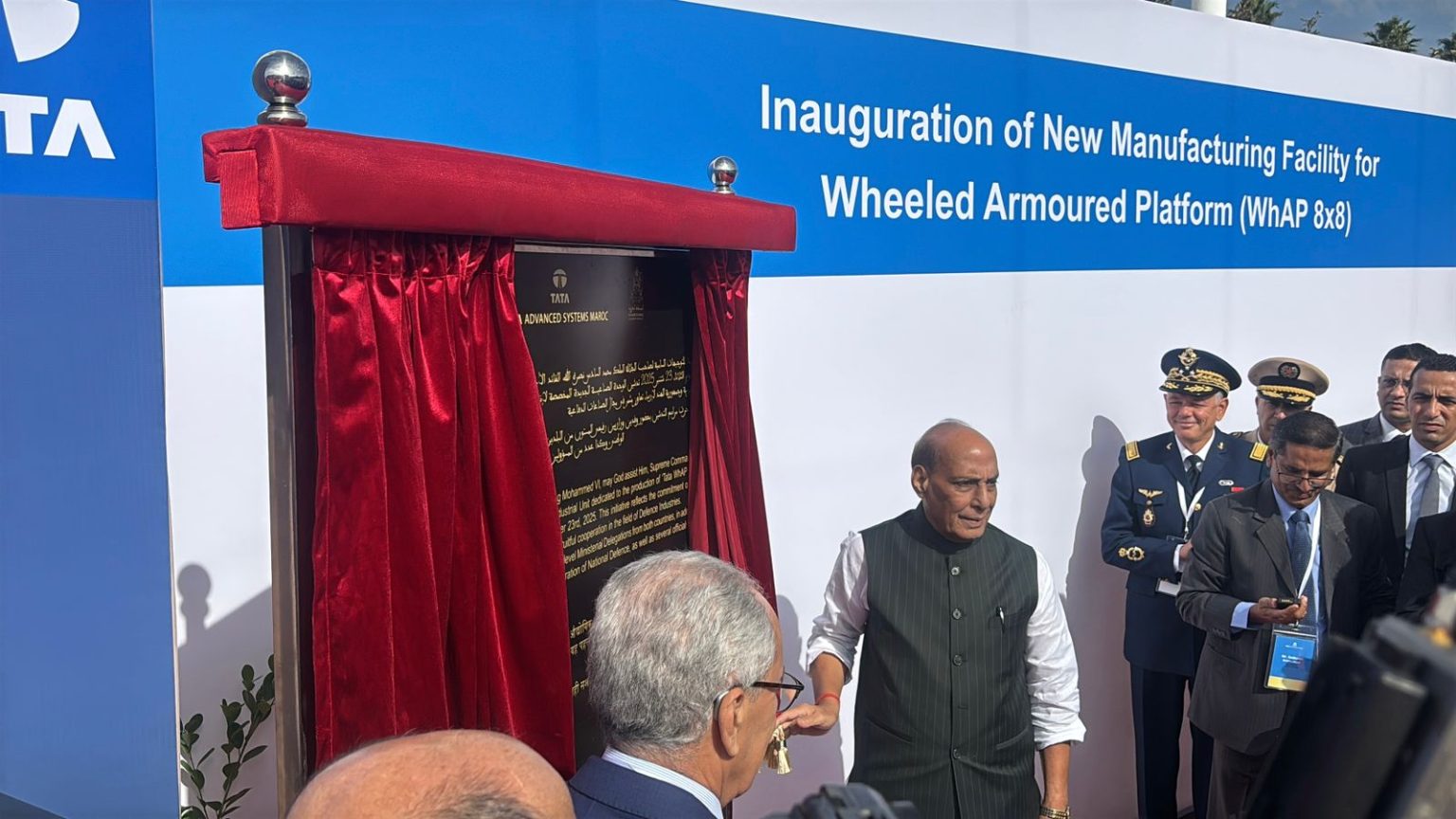
- 29 Sep 2025
In News
- In a major step towards expanding India’s defence industrial footprint globally, Defence Minister Rajnath Singh and his Moroccan counterpart AbdelatifLoudyi jointly inaugurated India’s first overseas defence manufacturing facilityatBerrechid, Morocco.
- Set up by Tata Advanced Systems Limited (TASL) in collaboration with the Defence Research and Development Organisation (DRDO), the facility marks a historic milestone in India’s defence diplomacy and the growing strategic partnership between India and Morocco.
About the Facility
- Location:Berrechid, Morocco
- Established by: Tata Advanced Systems Limited (TASL) in partnership with DRDO
- Launched in: 2025
- Scale: Spread over 20,000 sq. metres, it is Morocco’s largest defence manufacturing facility and India’s first such overseas plant by a private defence company in Africa.
- Primary Production: The Wheeled Armoured Platform (WhAP) — an indigenously developed 8×8 modular combat vehicle jointly designed by TASL and DRDO.
Key Features
- Product Range: The WhAP will be produced in multiple configurations including:
- Infantry Fighting Vehicle
- Armoured Personnel Carrier
- Reconnaissance Vehicle
- Command Post
- Mortar Carrier
- Armoured Ambulance
- Technical Capabilities:
- Equipped with advanced mobility, armour protection, remote weapon stations, and anti-tank guided missile systems.
- Incorporates indigenous technologies and customised modular design for varied combat roles.
- Local Sourcing:
- Initially, one-third of components will be sourced locally from Morocco.
- This is expected to increase to 50% in later phases, fostering industrial collaboration and technology transfer.
Strategic Objectives
The facility aims to advance India’s Aatmanirbhar Bharat vision beyond domestic production to global partnerships under the theme “Make with Friends, Make for the World.”
Key Goals:
- Strengthen India–Morocco defence cooperation and bilateral industrial partnerships.
- Promote defence exports and technology sharing with friendly nations.
- Support regional security and stability across Africa and Europe through capacity-building.
Significance
1. Strategic and Diplomatic
- Establishes Morocco as a strategic hub for Indian defence manufacturing in North Africa and Europe.
- Deepens India’s defence diplomacy and enhances its global footprint in high-technology sectors.
- Reinforces India’s credibility as a trusted partner in defence collaboration.
2. Economic and Industrial
- Generates direct and indirect employment in Morocco.
- Develops a local supplier ecosystem and supports critical technology capabilities within the host nation.
- Boosts India’s defence exports while contributing to Morocco’s industrial development.
3. Technological and Strategic Autonomy
- Demonstrates India’s growing capability to design, produce, and export advanced defence systems.
- Showcases India’s transition from import dependence to a global exporter of high-end military technologies.
World Food India (WFI) 2025
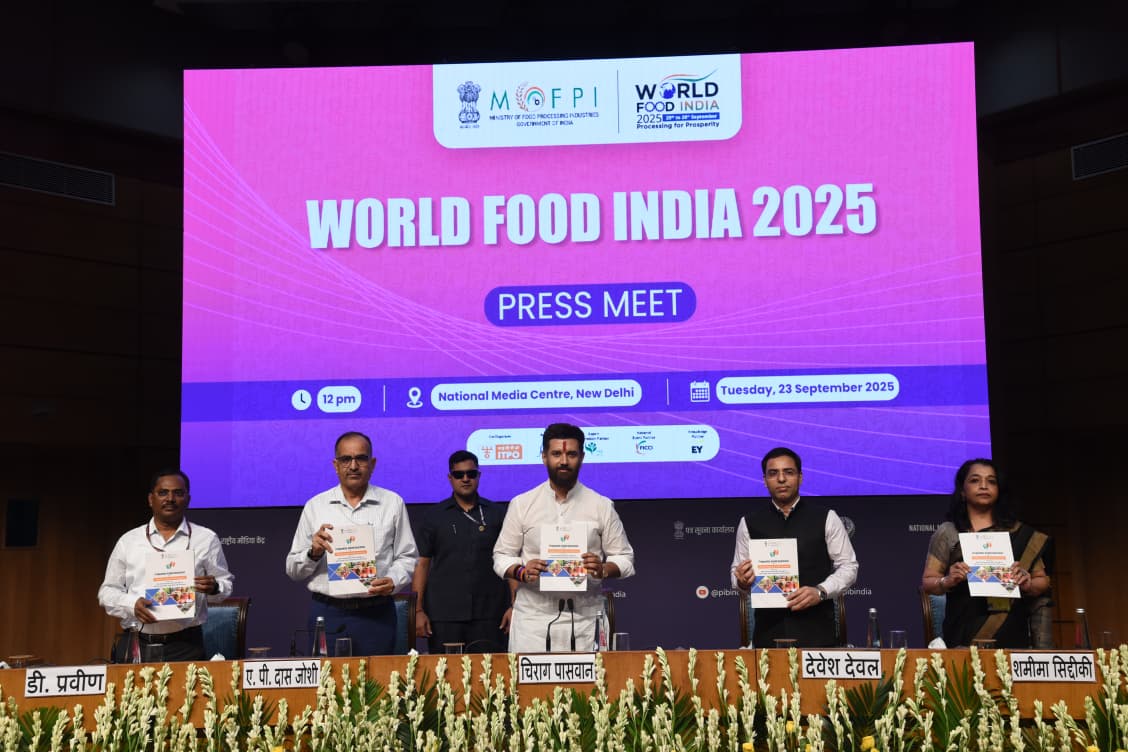
- 29 Sep 2025
In News:
The fourth edition of World Food India (WFI) 2025was held at Bharat Mandapam, New Delhi, organised by the Ministry of Food Processing Industries (MoFPI).
Overview
World Food India is the flagship global event of MoFPI that brings together key stakeholders from across the food ecosystem — governments, industry leaders, investors, and innovators — to strengthen India’s positioning as the “Food Basket of the World.”
Since its inception in 2017, the event has evolved into a transformative platform for food innovation, investment, and sustainability. The 2025 edition, spread across 1,00,000 sq. metres, is the largest congregation in the history of India’s food processing sector, with participation from:
- 21 countries, 21 States/UTs, 10 Central Ministries, and 5 allied organisations
- Over 1,700 exhibitors, 500 international buyers, and representatives from 100+ nations
Key Highlights of World Food India 2025
Partner and Focus Countries
- Partner Countries: New Zealand and Saudi Arabia
- Focus Countries: Japan, Russia, UAE, and Vietnam
Parallel and Thematic Events
- 3rd Global Food Regulators Summit (FSSAI): To harmonise international food safety standards.
- 24th India International Seafood Show (SEAI): To promote India’s seafood export potential.
- Reverse Buyer–Seller Meet (APEDA): Featuring over 1,000 buyers to boost agri-food exports.
- Knowledge Sessions: 45+ conferences, thematic discussions, and CXO roundtables with 100+ global agri-food leaders.
- Special Pavilions: Dedicated spaces for States, Ministries, Pet Food, Technology, Startups, and International exhibitors.
Core Pillars of WFI 2025
The 2025 edition revolves around five strategic pillars reflecting the government’s holistic vision for the food processing sector:
- Sustainability and Net Zero Food Processing – promoting climate-resilient and energy-efficient processing systems.
- India as a Global Food Processing Hub – showcasing India’s vast agri-resource base and processing potential.
- Frontiers in Food Processing, Products, and Packaging Technologies – highlighting innovation and technology adoption.
- Food for Nutrition, Health, and Wellness – aligning with the goals of nutritional security and public health.
- Livestock and Marine Products Driving the Rural Economy – boosting rural livelihoods and export competitiveness.
Significance of World Food India 2025
Economic Impact
- Attracts global and domestic investment in R&D, startups, logistics, and cold chain infrastructure.
- Enhances farm-to-fork linkages and promotes value addition across the supply chain.
Strategic Importance
- Reinforces India’s commitment to sustainable food systems in line with the UN Sustainable Development Goals (SDGs).
- Fosters international collaboration in technology, innovation, and regulatory frameworks.
Global Positioning
- Projects India as a leader in food innovation, safety, and sustainability.
- Strengthens India’s image as a trusted global supplier of high-quality, nutritious, and sustainable food products.
Exercise Cold Start
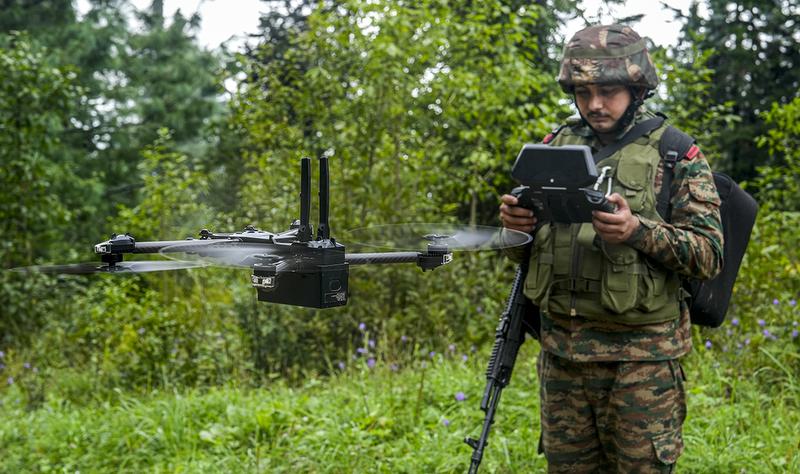
- 29 Sep 2025
In News:
- India will conduct a major tri-service exercise, ‘Cold Start’, in the first week of October 2025 in Madhya Pradesh.
- The exercise, involving the Army, Navy, and Air Force, will focus on testing drones and counter-drone systems to strengthen the country’s integrated air defence capabilities.
- It is being described as the largest such joint drill since Operation Sindoor.
About Exercise Cold Start
- Nature: A tri-service military exercise designed to simulate aerial threats and defence responses using drones, UAVs, and counter-drone systems.
- Objective:
- To evaluate operational readiness of the armed forces against evolving aerial threats.
- To identify technological and procedural gaps in India’s air defence systems.
- To enhance interoperability and coordination between the three defence services.
- Participants:
- Indian Army, Navy, and Air Force as primary participants.
- Supported by industry partners, research and development (R&D) agencies, and academic institutions, fostering a military–industry–academia partnership.
Key Features
- Live demonstrations of drones and counter-drone systems.
- Integration of GPS jamming, electronic warfare, and surveillance technologies.
- Testing of indigenous technologies developed through collaboration between defence R&D and private industry.
- Conceptual inspiration: The integrated air defence approach draws from the Sudarshan Chakra—symbolising a seamless and multi-layered defensive network against drones, UAVs, and hypersonic weapons.
Significance
- Enhances Jointness: Promotes synergy among the three defence services in technology-driven warfare.
- Technological Edge: Strengthens India’s counter-drone warfare capabilities and electronic warfare resilience.
- Strategic Readiness: Demonstrates India’s preparedness to respond to emerging aerial and cyber threats in the evolving domain of modern warfare.
- Defence Innovation: Encourages indigenous R&D and strengthens public–private collaboration in developing next-generation air defence systems.
Viksit Bharat Buildathon 2025

- 28 Sep 2025
In News:
- Union Education Minister Dharmendra Pradhan launched the Viksit Bharat Buildathon 2025, a nationwide school innovation movement aimed at nurturing creativity, entrepreneurship, and technological problem-solving among young students.
- The initiative seeks to transform school campuses into innovation hubs, empowering youth as the architects of a self-reliant and developed India.
About Viksit Bharat Buildathon 2025
- Organisers: Department of School Education and Literacy (DoSEL), Ministry of Education, in collaboration with Atal Innovation Mission (AIM), NITI Aayog, and the All India Council for Technical Education (AICTE).
- Culmination: January 2026, with felicitation of over 1,000 winners.
- Participants: School students across India — the largest school-level hackathon ever conducted.
Objectives
- Promote Grassroots Innovation: Cultivate a problem-solving mindset and creative thinking among school students.
- Foster Self-Reliance: Encourage innovation aligned with the principles of Atmanirbhar Bharat and Vocal for Local.
- Celebrate Swadeshi Innovation: Build indigenous solutions addressing real-world challenges.
- Enable National Development: Channel student ideas into tangible solutions for Samriddhi (prosperity) and Viksit Bharat (developed India).
- Create Global Impact: Project India as a global innovation capital and potential record-holder for the world’s largest synchronized innovation event.
Themes of the Buildathon
The competition revolves around four guiding themes that reflect India’s developmental vision:
- Vocal for Local – Promoting indigenous products and local entrepreneurship.
- Atmanirbhar Bharat – Encouraging technological self-reliance and innovation.
- Swadeshi – Leveraging traditional knowledge and indigenous technologies.
- Samriddhi – Designing solutions for inclusive and sustainable prosperity.
Structure and Timeline
|
Phase |
Timeline (2025–26) |
Key Activity |
|
Registration |
Sept 23 – Oct 6 |
Schools and students register via vbb.mic.gov.in |
|
Preparation Period |
Oct 6 – Oct 13 |
Teachers mentor student teams for ideation and submission |
|
Live Synchronized Innovation Event |
Oct 13 |
Nationwide simultaneous innovation challenge |
|
Final Submission Window |
Oct 13 – Oct 31 |
Upload of prototypes and project ideas |
|
Evaluation Phase |
Nov 1 – Dec 31 |
Expert panel assesses entries |
|
Grand Felicitation |
Jan 2026 |
Announcement of results and recognition of 1,000+ winners |
Building on Previous Success
The Buildathon builds upon the momentum of the School Innovation Marathon 2024, which led to:
- The Student Innovator Programme (SIP) and Student Entrepreneurship Programme (SEP).
- Multiple patents and startup ventures emerging from Atal Tinkering Labs (ATLs).
This continuum strengthens India’s school innovation ecosystem, linking student creativity to research, incubation, and entrepreneurship.
Significance
- Grassroots Empowerment: Encourages innovation at the school level, making every student a potential problem-solver.
- Integration with NEP 2020: Supports the National Education Policy’s emphasis on experiential learning, design thinking, and skill development.
- Atmanirbhar Bharat Vision: Aligns student innovation with national priorities of self-reliance and sustainable growth.
- Innovation Pipeline: Provides pathways for students to transition into formal innovation ecosystems — from idea to patent to startup.
- Global Positioning: Aims to showcase India’s youth-driven innovation capacity on international platforms.
India’s Fusion Energy Roadmap
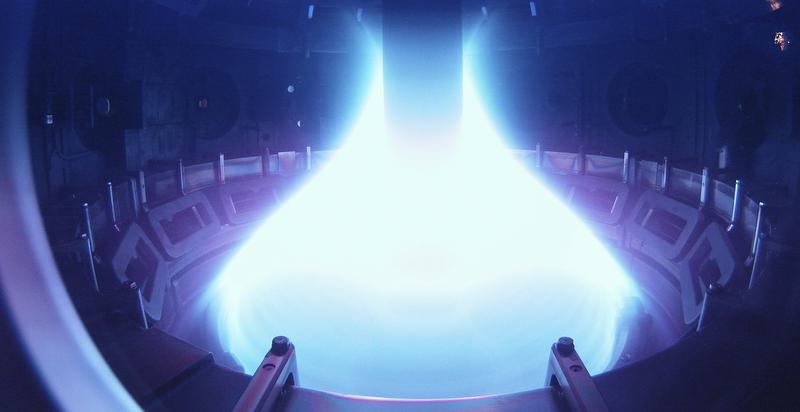
- 28 Sep 2025
In News:
- Researchers at the Institute for Plasma Research (IPR), Gandhinagar, have unveiled a comprehensive roadmap for India’s fusion energy programme.
- This initiative aims to develop the country’s first fusion electricity generator, Steady-state Superconducting Tokamak–Bharat (SST-Bharat), and ultimately commission a demonstration reactor by 2060.
- The roadmap signifies a major step in India’s pursuit of sustainable, high-yield, and low-waste energy alternatives.
Understanding Nuclear Fusion
Nuclear fusion is the process where two light atomic nuclei (like isotopes of hydrogen) merge to form a heavier nucleus, releasing immense energy—similar to the reactions that power the Sun.
It differs from nuclear fission, where heavy atoms split apart to release energy.
Advantages of Fusion over Fission
- Minimal radioactive waste and no long-term storage challenges.
- Abundant fuel sources (deuterium from water, tritium from lithium).
- No greenhouse gas emissions and no meltdown risk.
- High energy density, offering a virtually limitless energy source.
India’s Current Fusion Research Base
- SST-1 Tokamak (IPR, Gandhinagar): India’s first steady-state superconducting tokamak, designed for plasma research. It has achieved plasma duration of ~650 milliseconds, with potential to reach 16 minutes.
- Participation in ITER (France): India contributes technology, components, and funding to the International Thermonuclear Experimental Reactor (ITER), the world’s largest magnetic confinement experiment aimed at demonstrating a Q-value (output/input ratio) of 10.
India’s Fusion Power Roadmap
1. The SST-Bharat Project
- A fusion-fission hybrid reactor proposed as India’s next major milestone.
- Expected output: 130 MW (100 MW from fission, 30 MW from fusion).
- Estimated cost: ?25,000 crore.
- Efficiency target: Five times the input power.
- Acts as a bridge technology toward achieving pure fusion energy.
2. Demonstration Reactor (By 2060)
- Planned 250 MW full-scale reactor.
- Target Q-value: 20 (i.e., producing 20 times more energy than input).
- Will use magnetic confinement, heating plasma to over 100 million°C — much hotter than the Sun’s core (15 million°C).
Technological Innovations Proposed
- Digital Twinning: Creating virtual replicas of tokamak systems to test and optimise operations before physical construction.
- Machine Learning-Assisted Plasma Control: Using AI for real-time monitoring and stability of plasma.
- Radiation-Resistant Materials: Essential for reactor longevity and safety.
- Superconducting Magnet Development: To maintain continuous plasma confinement efficiently.
Global Benchmarks and India’s Position
|
Country/Programme |
Reactor/Initiative |
Target Year |
Notable Achievement |
|
UK |
STEP Programme |
2040 |
Prototype fusion power plant planned |
|
USA |
Private Start-ups |
2030s |
Early grid-connected fusion target |
|
China |
EAST Tokamak |
Ongoing |
Record plasma duration |
|
France |
WEST Tokamak |
2025 |
Maintained plasma for 22 minutes |
|
India |
SST-Bharat & Demo Reactor |
2060 |
Gradual, state-led development path |
While global players pursue faster timelines, India’s approach is cautious but strategic, focused on self-reliance and steady technological progress.
Challenges in India’s Fusion Path
Technological
- Sustaining stable plasma for long durations.
- Achieving Q > 1 (self-sustaining fusion).
- Developing durable superconducting magnets and radiation-resistant materials.
Financial
- High costs: SST-Bharat alone costs ?25,000 crore.
- Competing priorities: Solar, wind, and fission projects receive higher funding.
- Limited private-sector participation compared to global trends.
Policy and Governance
- Absence of a dedicated fusion energy regulatory framework.
- Need for integrated policy support under India’s Net Zero 2070 commitments.
Economic Viability
Experts like M.V. Ramana (University of British Columbia) caution that commercial fusion power remains economically unproven, and timelines are often optimistic. High R&D and construction costs could make fusion electricity expensive compared to renewables.
Strategic and Technological Significance
Even if commercial viability takes time, fusion R&D brings collateral benefits:
- Advances in plasma physics, superconducting technology, and high-temperature materials.
- Development of radiation-hardened components for defence, space, and nuclear industries.
- Strengthened technological autonomy and enhanced participation in global research networks.
Impatiens Selvasinghii
- 28 Sep 2025
In News:
- In a significant botanical discovery, researchers from Madura College, Madurai, have identified a new species of flowering plant belonging to the genus Impatiens in the Kudremukh range of the Western Ghats, Karnataka.
- The species has been named Impatiens selvasinghii in honour of Dr. P. Selva Singh Richard, Associate Professor of Botany at Madras Christian College (MCC), for his pioneering contributions to the study of reproductive biology of endemic and endangered plants of the Western Ghats.
Key Details of the Discovery
- Location:Kudremukh Peak, Chikkamagaluru district, Karnataka
- Altitude: Approximately 1,630 metres above sea level
- Published in:Taiwania, an international peer-reviewed botanical journal
- Unique Features: The species is distinguished by its exceptionally small flowers—the smallest among known balsams of the Western Ghats—and prominently lobed wing petals.
- Ecological Role: Small insects are dependent on this species for survival, underscoring its role in the local micro-ecosystem.
The Genus Impatiens in India
- India hosts over 280 taxa of Impatiens, widely distributed across the Eastern Himalayas and the Western Ghats.
- About 210 taxa are endemic to India, with 130 species unique to the Western Ghats.
- Notably, around 80% of the Impatiens species in the Western Ghats are categorized as endangered, highlighting the region’s ecological vulnerability.
Conservation Concerns
Researchers have cautioned that Impatiens selvasinghii is located along a popular trekking route in Kudremukh, where over-tourism and habitat disturbance could threaten its survival. Given the fragile mountain ecosystem and high endemicity of balsam species, measures for habitat protection and responsible ecotourism are vital.
Clean Plant Programme (CPP)
- 28 Sep 2025
In News:
- The Clean Plant Programme (CPP), conceptualized by the Ministry of Agriculture and Farmers Welfare in collaboration with the Asian Development Bank (ADB), is emerging as a transformative initiative aimed at ensuring healthy, disease-free planting material of key fruit crops.
- Approved by the Union Cabinet, CPP is implemented by the National Horticulture Board (NHB) with technical guidance from the Indian Council of Agricultural Research (ICAR).
Background and Rationale
India faces growing challenges to plant health from climate change, pests, and systemic pathogens, especially viruses, which significantly reduce crop quantity, quality, and longevity. By the time disease symptoms manifest, management in the field becomes difficult and often ineffective. Providing disease-free planting material has therefore been recognized as the most efficient preventive strategy.
CPP aligns with broader initiatives such as Mission LiFE (Lifestyle for Environment) and the National One Health Mission, promoting sustainable, eco-friendly agriculture and integrated management of human, animal, and environmental health risks.
Key Features of CPP
- For Farmers: Ensures access to virus-free, high-quality planting material to improve yields, income, and resilience against climate-induced pest and disease pressures.
- For Nurseries: Streamlined certification, infrastructure support, and technical guidance help nurseries propagate clean material efficiently.
- For Consumers: Delivers superior-quality fruits free from viruses, enhancing taste, appearance, and nutritional value.
- For Exports: Strengthens India’s global position by promoting high-quality, disease-free fruits.
- Equity and Inclusivity: Facilitates affordable access for all farmers, engages women in training and decision-making, and develops region-specific varieties for India’s diverse agro-climatic zones.
Investment and Implementation
CPP represents an investment of ?1,765.67 crore, including an ADB loan of $98 million. Key developments include:
- Nine Clean Plant Centres across India, including three in Maharashtra for grapes (Pune), oranges (Nagpur), and pomegranates (Solapur).
- Financial support for nurseries: ?3 crore for large nurseries and ?1.5 crore for medium nurseries. Expected annual production of 8 crore disease-free seedlings.
- Establishment of a national-level research laboratory in Pune for original plant species research.
- International collaboration with countries such as Israel and the Netherlands.
On-Ground Actions and Progress
- Hazard Analysis (HA): Virus profiling for grapevine, apple, and citrus crops, forming the foundation for Clean Plant Centers and certification.
- Nursery and Lab Assessments: NHB, ICAR, and ADB teams evaluated nurseries and laboratories across states for readiness, infrastructure, and bioinformatics capability.
- Clean Plant Propagation: Material testing, virus elimination through tissue culture, heat, or cryotherapy, and distribution through accredited nurseries to farmers.
- Digital and Resource Platforms: CPP website serves as a central hub for updates, resources, and technical guidance.
Alignment with Other Initiatives
- Mission LiFE: Encourages sustainable environmental practices and individual/community-level action to conserve natural resources.
- National One Health Mission: Integrates human, animal, and environmental health to manage disease risks and improve productivity.
- Mission for Integrated Development of Horticulture (MIDH): CPP complements MIDH’s goals of providing quality planting material and micro-irrigation to enhance horticultural productivity, which has increased from 12.10 MT/ha (2019–20) to 12.56 MT/ha (2024–25, 2nd advance estimates).
Industrial Park Rating System 3.0
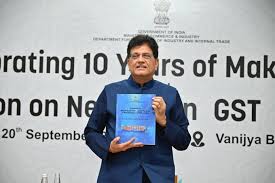
- 28 Sep 2025
In News:
- Recently, the Union Minister of Commerce and Industry, Shri Piyush Goyal, launched the Industrial Park Rating System (IPRS) 3.0 in New Delhi as part of the decade-long celebrations of the Make in India initiative.
- Developed by the Department for Promotion of Industry and Internal Trade (DPIIT) with support from the Asian Development Bank (ADB), IPRS 3.0 aims to benchmark and enhance the competitiveness of industrial parks across India.
Background and Evolution
The IPRS initiative began in 2018 as a pilot project, followed by IPRS 2.0 in 2021. The third edition builds upon these earlier versions by introducing a more comprehensive framework to assess industrial infrastructure, operational efficiency, and overall competitiveness.
Features of IPRS 3.0
IPRS 3.0 evaluates industrial parks based on multiple parameters, including:
- Sustainability and green infrastructure
- Logistics connectivity
- Digitalization
- Skill linkages
- Tenant feedback
Based on performance across these indicators, industrial parks are categorized into Leaders, Challengers, and Aspirers. This benchmarking enables stakeholders, including investors and policymakers, to access reliable and transparent data, identify best practices, and implement targeted interventions.
Significance for Industrial Development
The launch of IPRS 3.0 aligns with India’s broader strategy to create world-class industrial infrastructure. It provides States and Union Territories with an opportunity to:
- Showcase high-performing industrial parks
- Identify gaps for infrastructure improvement
- Attract domestic and foreign investments
- Generate employment
- Strengthen their industrial ecosystem
AI-enabled Centre at Betla National Park
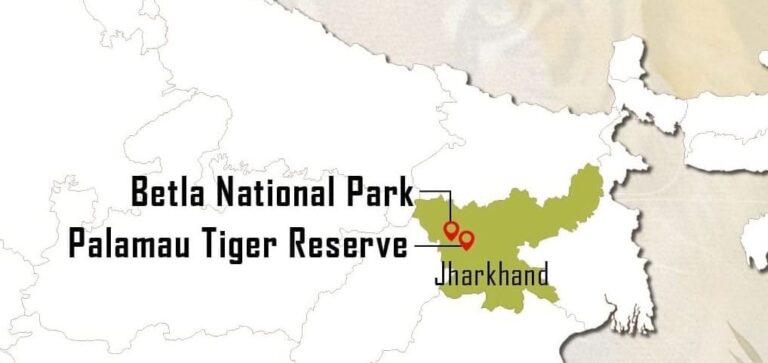
- 27 Sep 2025
In News:
Betla National Park, located in Latehar district, Jharkhand, will soon host India’s first AI-enabled nature experience centre. Part of the Palamu Tiger Reserve (PTR), the park is known for its rich biodiversity, including tigers, elephants, and diverse flora and fauna. PTR is one of the first nine tiger reserves established under Project Tiger (1973), covering a total area of 1,129.93 sq. km, and was notified as a National Park in 1986.
About the AI-Enabled Centre
The centre, developed by Palamu Tiger Reserve authorities under Deputy Director Prajesh Kant Jena, aims to provide visitors with an immersive, high-tech wildlife experience. Unlike conventional nature interpretation centres, it will use cutting-edge technologies to recreate the dynamics of the jungle ecosystem, including:
- AI assistants for guided learning.
- 3D holographic projections to display lifelike animal behaviour.
- Augmented Reality (AR) and immersive sound effects to simulate waterfalls, bird calls, predator-prey interactions, and herd movements.
- Ecosystem simulation, portraying animal movement, food-sharing activities, and other natural behaviours in a realistic manner.
Purpose and Significance
The centre, themed “Threads of Nature,” is designed to convey the interconnection between humans and nature. Key objectives include:
- Enhancing eco-tourism by offering a realistic jungle experience, including sightings of tiger hunts, elephant herds, and lions.
- Promoting conservation awareness through interactive learning and observation tools.
- Supporting researchers and nature enthusiasts with virtual wildlife monitoring capabilities.
Unique Features
While nature interpretation centres have existed in Betla since the 1970s, this facility represents the first high-tech effort in India to integrate AI, AR/VR, holograms, and immersive sound for wildlife education. Visitors will not just see static models or photographs but will experience the sights, sounds, and atmosphere of a living jungle, providing a deeper understanding of ecosystem dynamics.
By merging technology with conservation education, the Betla AI-enabled centre is poised to become a pioneering hub for tourism, research, and ecological awareness in Jharkhand and across India.
Combined Operational Review and Evaluation (CORE) Programme
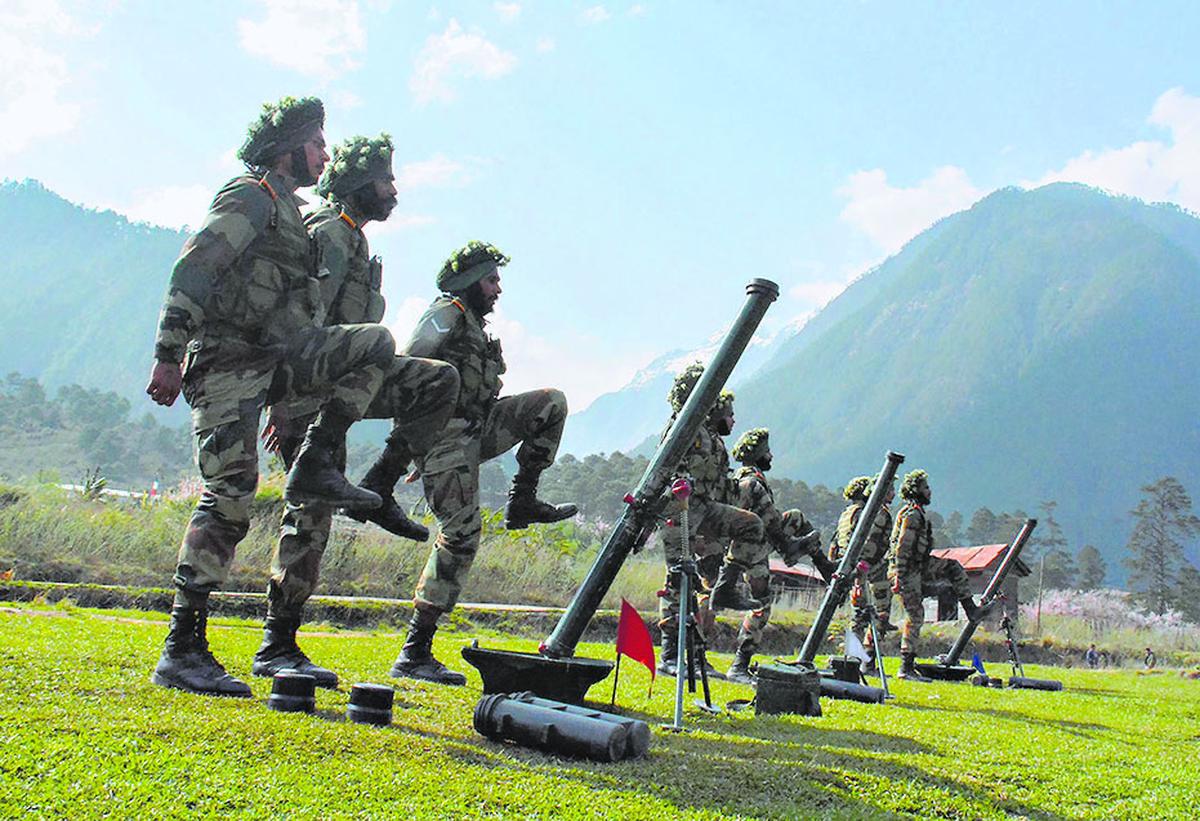
- 27 Sep 2025
In News:
- The Headquarters Integrated Defence Staff (HQ IDS) is organising the Combined Operational Review and Evaluation (CORE) Programme at the United Service Institution of India, New Delhi.
- The initiative serves as a unique platform for civil-military engagement on national and regional security, bringing together senior officers from the Indian Armed Forces alongside officials from the Ministries of Defence, External Affairs, and Home Affairs.
Objectives and Significance
The CORE Programme aims to:
- Strengthen civil-military synergy in addressing multidimensional security threats.
- Enhance strategic awareness among senior officers and develop their capacity for balanced, pragmatic decision-making.
- Foster leadership development and inter-agency coordination in complex national and international security scenarios.
The programme underscores HQ IDS’s commitment to jointness within the Armed Forces and professional development, preparing participants to navigate dynamic security challenges effectively.
Key Themes and Focus Areas
The CORE Programme covers a spectrum of contemporary security issues, including:
- Regional and global security challenges
- Technological transformation of warfare
- Strategic communication
- Inter-agency collaboration and joint problem-solving
The programme employs a combination of lectures, interactive discussions, and sessions with subject-matter experts and professionals from diverse fields. This approach broadens participants’ outlook, encourages collaborative solutions, and strengthens the intellectual foundations of senior leadership.
Participants
The five-day programme brings together senior civil and military officers, facilitating a holistic understanding of national security from multiple perspectives. By promoting dialogue across the defence and civilian sectors, CORE enhances preparedness to address complex, multidimensional threats at both national and international levels.
Phytosaur fossil
- 27 Sep 2025
In News:
Recent paleontological excavations in Megha village, Fatehgarh subdivision, Jaisalmer district, Rajasthan, have uncovered fossilised remains that may belong to a Phytosaur, a large, extinct semi-aquatic reptile. This discovery has generated significant excitement in the scientific community and reinforces Jaisalmer’s reputation as a paleontological hotspot.
About Phytosaurs
Phytosaurs are extinct reptiles of the order Phytosauria, resembling modern crocodiles, which thrived during the Late Triassic to Early Jurassic period. They displayed morphological diversity, including:
- Long-snouted forms (primarily fish-eating)
- Short-snouted forms (adapted for terrestrial prey)
- High-snouted forms (generalist feeders)
Phytosaur fossils have been reported in India, Europe, North America, Brazil, Morocco, Thailand, and Madagascar, highlighting their wide distribution and evolutionary significance.
Significance of the Find
The Megha village fossil adds to Jaisalmer’s growing list of paleontological finds, which includes dinosaur footprints, shark fossils, and marine remains. Experts suggest that the site may contain additional hidden fossils, which could provide crucial insights into:
- The evolution of prehistoric reptiles
- Convergent evolution with modern crocodilians
- Jurassic-era biodiversity and climate in India
If confirmed as a Phytosaur, the fossil will enhance our understanding of prehistoric fauna in the Indian subcontinent and strengthen the region’s global paleontological significance.
Striped Dolphin
- 27 Sep 2025
In News:
- In a rare observation, a pod of striped dolphins (Stenella coeruleoalba) was recently sighted off the Visakhapatnam coast in Andhra Pradesh.
- The sighting, captured on video by a local fisherman from Muthyalammapalem, has drawn attention to the rich but under-documented marine biodiversity of India’s eastern coastline.
- The species was identified by the East Coast Conservation Team (ECCT) with assistance from the Marine Mammal Research and Conservation Network of India — marking one of the few verified records of striped dolphins in Andhra waters.
About Striped Dolphins (Stenella coeruleoalba)
|
Aspect |
Details |
|
Family |
Delphinidae (Oceanic dolphins) |
|
IUCN Status |
Least Concern |
|
Distribution |
Found in tropical and temperate waters of all major oceans — including the Mediterranean Sea, Japan, South Africa, Western Australia, New Zealand, and occasionally, Indian waters. |
|
Habitat |
Prefer deep offshore waters and upwelling zones where nutrient-rich cold water supports abundant marine life. Often found near continental shelf edges. |
|
Physical Features |
Length: ~2.2–2.6 m; streamlined body; long beak (rostrum); tall, curved dorsal fin. Notable dark stripes run from the beak through the eye and down the sides, giving the species its name. |
|
Behaviour |
Found in tight pods of 25–100 individuals. Known for acrobatics such as breaching, leaping, and the characteristic “roto-tailing” — a spinning motion of the tail while airborne. |
|
Lifespan |
Up to 58 years. |
|
Diet |
Primarily small fish, squid, and crustaceans. |
Ecological and Conservation Significance
The recent sighting highlights the ecological richness of the Bay of Bengal, especially the Visakhapatnam coast, which supports diverse marine fauna but remains scientifically under-surveyed.
Such sightings are crucial for:
- Enhancing knowledge about the migratory patterns and population structure of marine mammals in Indian waters.
- Assessing ecosystem health, since dolphins are indicator species reflecting the condition of marine food chains.
- Formulating regional conservation policies for marine biodiversity and sustainable fisheries.
The ECCT’s collaboration with fishermen exemplifies a community-based conservation model, where local knowledge complements formal scientific documentation — essential for protecting fragile marine ecosystems.
Recent Discoveries Indicating Biodiversity Potential
During recent coastal surveys, researchers even rediscovered a sea slug species in Visakhapatnam that had not been recorded in nearly 180 years, further proving the hidden biodiversity of India’s east coast and the urgent need for systematic monitoring.
Protecting India’s Satellites
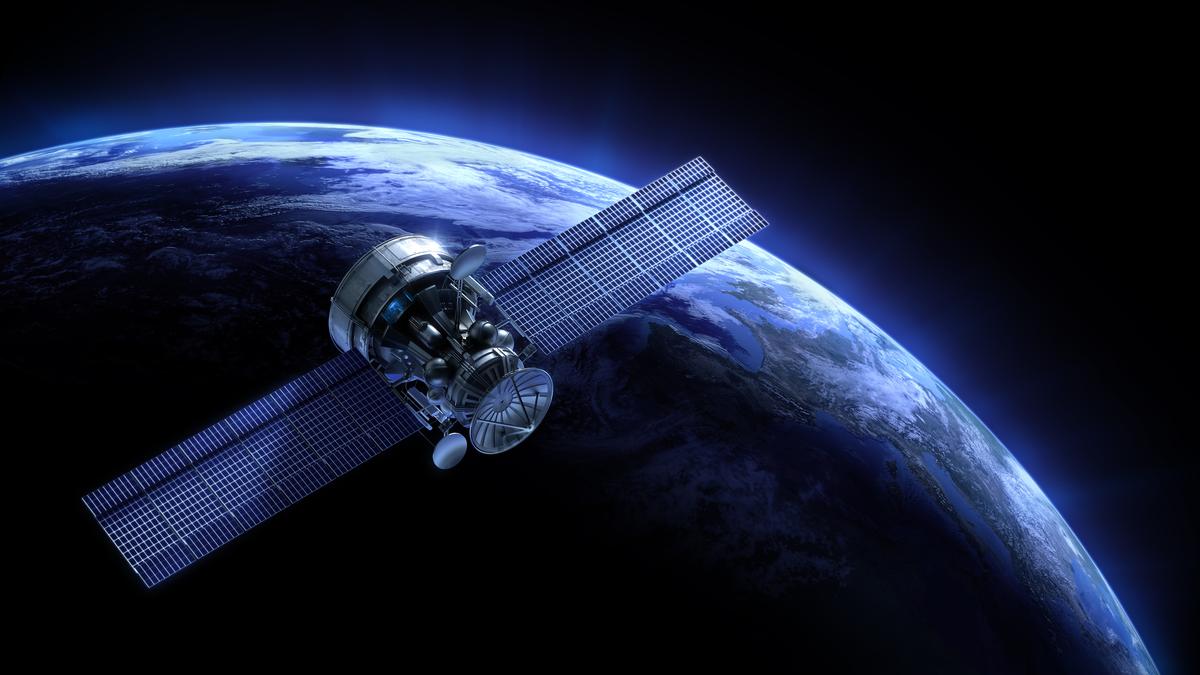
- 27 Sep 2025
In News:
Following a near-miss incident in 2024 between an Indian satellite and a foreign spacecraft, India has intensified efforts to protect its growing constellation of satellites. Given the critical role of satellites in national security, communication, and economic infrastructure, safeguarding them has become a strategic necessity.
Why Protecting Satellites is Crucial
India’s satellites are vital for a range of civilian and defence functions — from weather forecasting and navigation (NavIC) to internet services, surveillance, and global communications. They underpin sectors such as aviation, shipping, agriculture, and disaster management, while also enabling secure military operations.
However, these assets face increasing threats:
- Space debris and collisions — The expanding number of satellites and fragments in orbit raises the risk of accidental impacts.
- Hostile manoeuvres — Adversarial satellites may shadow or interfere with India’s space assets.
- Cyber threats — Ground stations and networks remain susceptible to hacking, jamming, and spoofing.
- Solar storms and space weather — Events like coronal mass ejections can damage satellite electronics and disrupt signals.
With the high costs of launching and maintaining satellites, ensuring their safety protects India’s technological investment and strategic autonomy.
India’s Ongoing and Planned Initiatives
- IS4OM (ISRO System for Safe and Sustainable Space Operations and Management): Located in Bengaluru, this centre continuously tracks India’s satellites and provides collision-avoidance alerts, enabling timely orbital manoeuvres to prevent accidents.
- Project NETRA (Network for Space Object Tracking and Analysis): An ambitious space surveillance system comprising radars and telescopes to build indigenous Space Situational Awareness (SSA) capabilities. It will allow India to monitor space debris and detect suspicious satellite movements in real-time.
- Aditya-L1 Mission: India’s first solar observatory mission monitors solar storms and radiation patterns, providing early warnings about solar events that could threaten satellite operations.
- ?27,000-crore Surveillance Satellite Programme (2026–2032): India has approved the launch of 52 surveillance satellites to strengthen real-time observation, border monitoring, and space domain awareness — forming the backbone of future space defence capabilities.
- CERT-In Satellite Cybersecurity Guidelines (2025): New cybersecurity protocols mandate strong encryption, network segmentation, and data protection norms to prevent satellite hacking or signal spoofing.
- IN-SPACe Licensing and Regulation: Private players are now integrated into India’s space ecosystem, but under strict safety and cybersecurity standards to ensure the security of the commercial space sector.
- Debris-Free Space Mission (By 2030): Announced at the Inter-Agency Space Debris Coordination Committee (IADC) in 2024, India has pledged to adopt sustainable space practices and avoid debris creation during launches and operations.
Emerging Plan: “Bodyguard Satellites”
India is reportedly considering deploying bodyguard satellites — specialised spacecraft that will act as orbital escorts for high-value satellites.
Functions and Features:
- Proximity monitoring: Detect when debris or foreign satellites come dangerously close.
- Threat identification: Track hostile proximity operations or suspicious manoeuvres.
- Protective action: Reposition themselves or guide the protected satellite to avoid collisions or interference.
- Strategic deterrence: Aligns India with global trends where major space powers (like the US, Russia, and China) are deploying similar defensive technologies.
Challenges:
- Technological: Requires advanced sensors, AI-driven autonomy, and ultra-precise orbital manoeuvring systems.
- Financial: High development and launch costs demand sustained investment.
- Cybersecurity: Satellite-ground communication remains a potential vulnerability.
- Geopolitical: May trigger suspicion or an arms race in outer space.
- Sustainability: Increased orbital activity must not worsen the space debris problem.
Way Forward
- Strengthen indigenous SSA: Invest in LiDAR, radar, and optical satellite networks to monitor all orbital zones.
- Enhance anti-jamming and encryption systems: Build resilient, autonomous communication systems immune to interference.
- Public–Private Collaboration: Encourage startups and private firms to co-develop low-cost, high-tech satellite protection tools.
- Global cooperation: Engage actively with international bodies like COPUOS and IADC to promote transparency and responsible behaviour in space.
- Defensive-first approach: Focus on non-weaponised, sustainable defence mechanisms to maintain peace and prevent escalation in outer space.
World’s 1st Functioning AI-designed Viral Genome
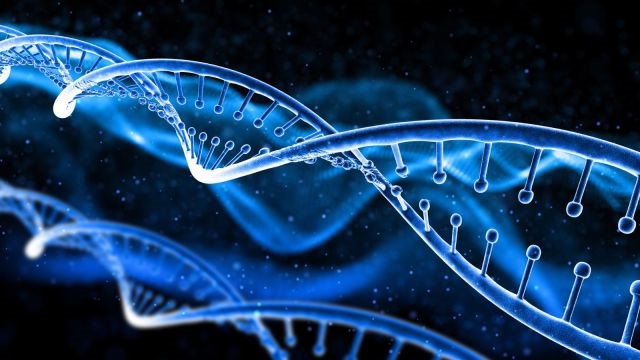
- 26 Sep 2025
In News:
Scientists at Stanford University and the Arc Institute have created the world’s first artificially designed viral genome using Artificial Intelligence (AI), marking a major milestone in computational biology and synthetic genomics. The breakthrough demonstrates AI’s capability to generate an entirely new and functional virus—one that can infect and kill bacteria.
About the Discovery
The AI-generated virus was designed using a genomic model called Evo, which functions like a “language model” for DNA. Evo was trained on nearly two million viral genomes, learning the patterns and grammar of genetic sequences—akin to how language models learn human syntax and semantics.
The model was guided to mimic the bacteriophage ΦX174 (phi-X-174), a virus that infects E. coli bacteria. This phage was chosen because:
- It has a small yet complex genome (about 5,386 DNA letters and 11 overlapping genes).
- It was the first genome ever sequenced (1977) and the first synthesized from scratch (2003)—now it is the first AI-designed genome.
How It Was Done
- Training the AI: Evo was trained on millions of viral sequences to understand gene order, composition, and regulatory logic.
- Design Phase: Using prompts, Evo generated thousands of potential genome designs.
- Screening & Testing: Researchers filtered these using software checks to ensure each genome contained the necessary genes and functional proteins.
- Lab Validation: Hundreds of genomes were synthesized and inserted into E. coli bacteria. Out of 302 attempts, 16 fully functional viruses emerged.
- Results:
- These viruses contained over 392 mutations never seen in nature.
- Some designs achieved functions human scientists had failed to engineer, such as borrowing DNA-packaging proteins from unrelated viruses.
- Cryo-electron microscopy confirmed the structural integrity of these AI-designed proteins within the viral shell.
What is a Virus?
A virus is a microscopic infectious agent made of nucleic acid (DNA or RNA) enclosed within a protein coat (capsid).
- It cannot replicate independently and must hijack a host cell’s machinery to reproduce.
- Many viruses cause diseases like COVID-19, AIDS, measles, and smallpox.
What is a Genome?
The genome is the complete set of DNA instructions in an organism.
- In humans, it comprises 23 pairs of chromosomes in the nucleus plus mitochondrial DNA.
- It encodes all genetic information required for growth, development, and functioning.
Significance of the Breakthrough
- Redefining Synthetic Biology:The experiment represents a leap from reading and writing genomes to designing them. AI is now capable of generating entirely new, functional genetic blueprints.
- Advancing Phage Therapy:The AI-designed bacteriophages could revolutionize phage therapy—the use of viruses to target and kill antibiotic-resistant bacteria, a major global health threat.
- Accelerating Biotechnology:This development showcases how AI can drastically accelerate genetic innovation, enabling rapid design and testing of new biological entities.
- Proof of Concept for AI-Driven Evolution:AI-generated viruses adapted to bacterial defenses faster than natural ones, indicating potential for directed evolution through computational models.
- Ethical and Regulatory Implications:While promising, the creation of new synthetic organisms underscores the need for global biosafety, biosecurity, and ethical frameworks to govern AI-driven genetic design.
High Seas Treaty of UN Reaches Entry into Force Threshold
- 26 Sep 2025
In News:
- The Biodiversity Beyond National Jurisdiction (BBNJ) Treaty, also known as the UN High Seas Treaty, has crossed the crucial threshold of 60 ratifications, enabling it to enter into force on January 17, 2026. With Morocco and Sierra Leone becoming the 60th and 61st ratifying nations, this milestone marks a historic step in the global conservation of marine biodiversity in international waters.
- So far, 143 countries, including India, have signed the treaty, reflecting strong international consensus on protecting marine ecosystems that lie beyond national boundaries.
About the BBNJ Treaty
- Full Name:Agreement under the United Nations Convention on the Law of the Sea on the Conservation and Sustainable Use of Marine Biological Diversity of Areas Beyond National Jurisdiction (BBNJ).
- Parent Framework: Builds upon the UN Convention on the Law of the Sea (UNCLOS), adopted in 1982 and effective since 1994 — often called the “Constitution for the Oceans”.
- Geographical Scope: Applies to areas beyond 200 nautical miles from the Exclusive Economic Zones (EEZs) of coastal nations, commonly referred to as the high seas.
- Coverage: These high seas account for nearly two-thirds of the global ocean and cover over 70% of the Earth’s surface, yet currently, only 1.44% are under any form of protection.
Objectives and Key Provisions
The BBNJ Treaty seeks to conserve and sustainably use marine biodiversity in areas beyond national jurisdiction through legally binding measures. Its major provisions include:
- Creation of Marine Protected Areas (MPAs):
- Aims to designate and manage MPAs in international waters.
- Currently, 6.35% of the ocean is protected, with only 1.89% designated as no-take MPAs, where all extractive activities such as fishing, mining, and drilling are prohibited.
- This aligns with the Kunming-Montreal Global Biodiversity Framework target of protecting 30% of global land and sea areas by 2030 (30x30 goal).
- Equitable Sharing of Marine Genetic Resources (MGRs):
- Establishes mechanisms to ensure fair and equitable distribution of benefits derived from marine genetic resources — biological materials such as microorganisms, plants, and animals with applications in pharmaceuticals and biotechnology.
- Mandatory Environmental Impact Assessments (EIAs):Mandates EIAs for high-impact activities like deep-sea mining, carbon sequestration, and bioprospecting in international waters to mitigate potential ecological harm.
- Scientific Cooperation and Technology Transfer:Encourages capacity building, data sharing, and technology transfer to support developing nations in ocean research and sustainable marine resource management.
Process for the Treaty’s Entry into Force
- Condition: The BBNJ Treaty enters into force 120 days after the deposit of the 60th instrument of ratification, approval, or accession.
- Implementation Date: Given the 60th ratification milestone was achieved in September 2025, the treaty will legally come into effect on January 17, 2026.
- Next Steps:
- Preparatory Commission (PrepCom): Tasked with operationalizing the treaty by establishing scientific and technical bodies, expert qualifications, and procedural frameworks for reviewing MPA proposals.
- First Conference of Parties (COP1): Will convene post-entry into force to initiate formal implementation. Key agenda items include governance mechanisms, financial arrangements, and the Clearing-House Mechanism for information exchange.
India’s Role and Strategic Interests
- India’s Involvement:
- The Union Cabinet approved India’s signing of the BBNJ Treaty in July 2024.
- India is among the 143 signatories, signaling commitment to sustainable ocean governance.
- Strategic Significance for India:
- Enhanced Oceanic Presence: Expands India’s strategic and scientific footprint beyond its Exclusive Economic Zone (EEZ).
- Scientific Research: Facilitates participation in global marine research, access to marine genetic resources, and technological collaboration.
- Alignment with SDG-14: Advances India’s commitment to Sustainable Development Goal 14 – “Life Below Water”, which seeks to conserve and sustainably use ocean resources.
- Diplomatic and Environmental Leadership: Positions India as a responsible stakeholder in global commons management and strengthens its environmental diplomacy credentials.
Assessment of Logistics Cost in India
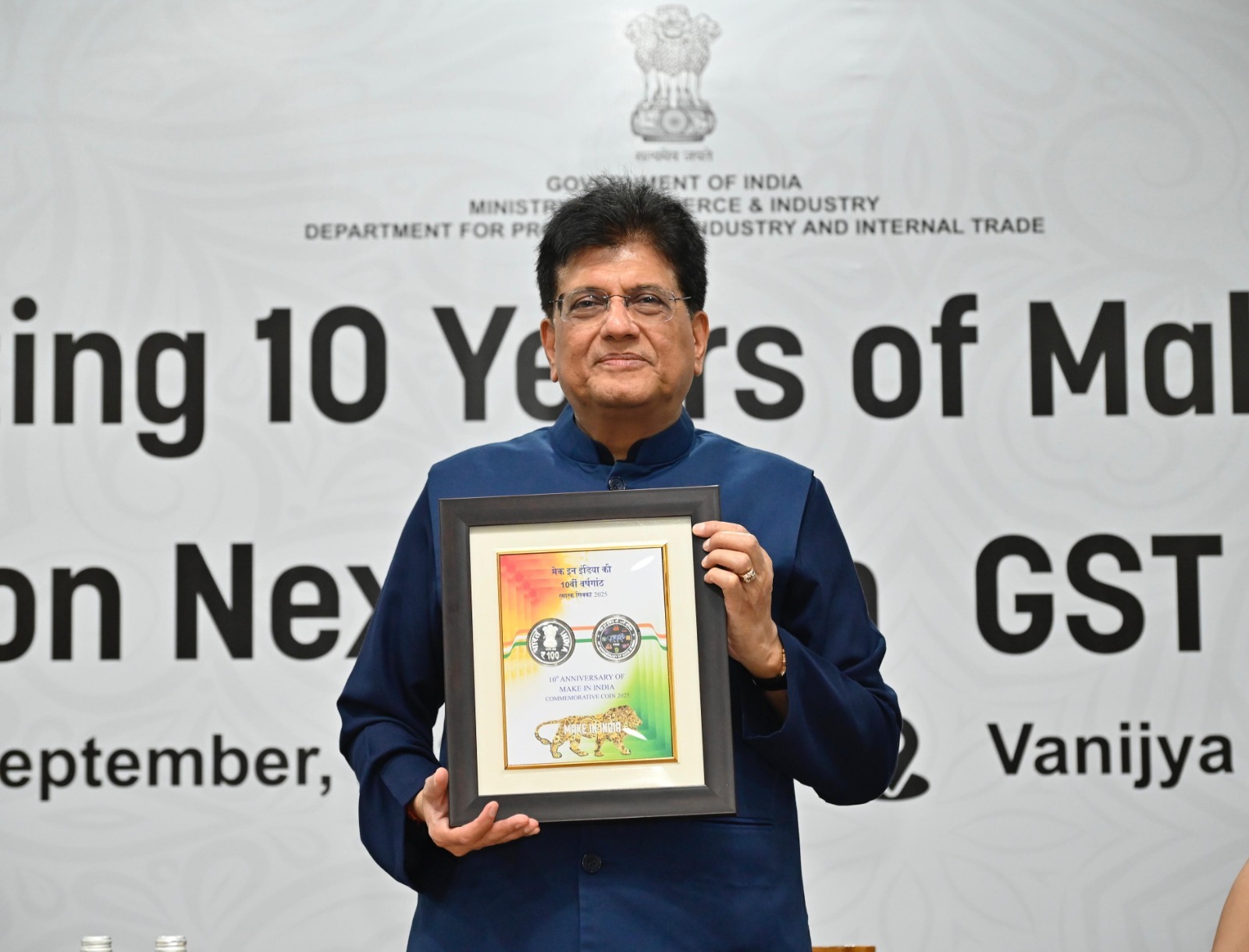
- 26 Sep 2025
In News:
- On the occasion of a decade of “Make in India”, the Union Minister of Commerce and Industry, Shri Piyush Goyal, launched the report on Assessment of Logistics Cost in India in September 2025.
- This marks the first scientifically derived national estimate of logistics costs, aligning with the objectives of the National Logistics Policy (NLP), 2022, to make India’s logistics sector globally competitive, data-driven, and cost-efficient.
About the Report
- Prepared by: Department for Promotion of Industry and Internal Trade (DPIIT) and the Department of Commerce.
- Methodology: Uses a hybrid approach, combining secondary data analysis with nationwide enterprise surveys to ensure scientific estimation.
- Objective: To establish a uniform national framework for measuring logistics costs and benchmarking them with global standards, in line with the NLP (2022).
Key Findings
- Logistics Cost Estimate (2025): Around 7.97% of India’s GDP.
- Previous Estimates: Older, often-cited figures of 13–14% of GDP were based on partial or external datasets, leading to inconsistent policy assessments.
- Trend Analysis: Over the past five years, logistics cost growth has slowed relative to non-services output, indicating improved sectoral efficiency.
Significance
This assessment provides evidence-based guidance for:
- Policy formulation on logistics modernization.
- Competitiveness enhancement of Indian exports.
- Strategic inputs for Free Trade Agreement (FTA) negotiations through the mapping of HSN codes to respective ministries.
- Development of logistics data banks and state logistics plans under the SMILE Programme (with ADB support).
Achievements and Improvements in India’s Logistics Sector
- Improved Global Ranking:India ranked 38th out of 139 countries in the 2023 World Bank Logistics Performance Index (LPI), up by six positions from 2018.
- Infrastructure Expansion:
- Cargo through Inland Waterways (2024–25):145.5 million tonnes.
- Operational National Waterways: Increased from 24 to 29.
- Digital Integration:
- Unified Logistics Interface Platform (ULIP): Consolidates logistics data across ministries, recording over 100 crore API transactions (2025).
- Facilitates end-to-end visibility and efficiency in multimodal logistics.
- Human Resource Development:Gati Shakti Vishwavidyalaya (GSV): India’s first logistics-focused university, has signed 40 MoUs with industry and academia to develop skilled manpower for transport and supply chain sectors.
Key Government Initiatives Driving Efficiency
1. PM GatiShakti National Master Plan (2021)
- Integrates 57 ministries/departments and all States/UTs on a digital GIS platform.
- Enables coordinated infrastructure planning acrossroads, railways, ports, airports, and inland waterways.
2. Dedicated Freight Corridors (DFCs)
- Two major DFCs under development by Indian Railways to:
- Ease congestion on passenger routes.
- Reduce freight cost and transit time.
- Improve energy efficiency and modal balance.
3. Multi-Modal Logistics Parks (MMLPs)
- 35 strategic locations approved (e.g., Chennai, Bengaluru, Nagpur, Indore).
- Five parks expected to become operational by 2027, promoting multimodal transport and value-added logistics services.
4. Maritime Amrit Kaal Vision 2047
- Long-term blueprint aligned with Blue Economy principles.
- Focuses on shipbuilding, coastal tourism, port-led development, and maritime skill-building to position India as a global maritime hub.
5. Sustainability and Green Initiatives
- Freight GHG Calculator: Estimates and compares transportation emissions to support eco-friendly logistics decisions.
- Rail Green Points: Helps freight customers assess carbon savings when using rail instead of road transport.
Challenges in India’s Logistics Sector
- High Logistics Cost (Legacy Issue): Historically estimated at 13–14% of GDP—higher than global benchmarks (8–9%).
- Infrastructure Gaps: Deficiency in warehousing, cold chain, and last-mile connectivity.
- Overdependence on Road Transport: Causes congestion, higher costs, and carbon emissions.
- Limited Multimodal Integration: Underutilization of railways and inland waterways for freight.
- Environmental Impact: Diesel-based trucking remains a major source of logistics-related emissions.
Objectives of the National Logistics Policy (NLP) 2022
- Reduce logistics cost to below 10% of GDP.
- Improve India’s LPI ranking to Top 25 by 2030.
- Build a robust, data-driven logistics decision-support system.
- Promote multimodal connectivity, sustainability, and ease of doing business.
Way Forward
- Integrated Infrastructure: Expansion of GatiShakti corridors and MMLPs to enable seamless multimodal movement.
- Digital Logistics Ecosystem: Wider adoption of ULIP, AI-driven route optimization, and e-logistics tracking.
- Green Logistics: Shift towards rail and waterways, adoption of electric and LNG-based freight vehicles, and GHG monitoring tools.
- Skill Development: Strengthening logistics education via GSV and industrial-academic partnerships.
- Policy Consistency: Periodic, data-backed cost assessments to guide long-term logistics and trade policy decisions.
Super Typhoon Ragasa
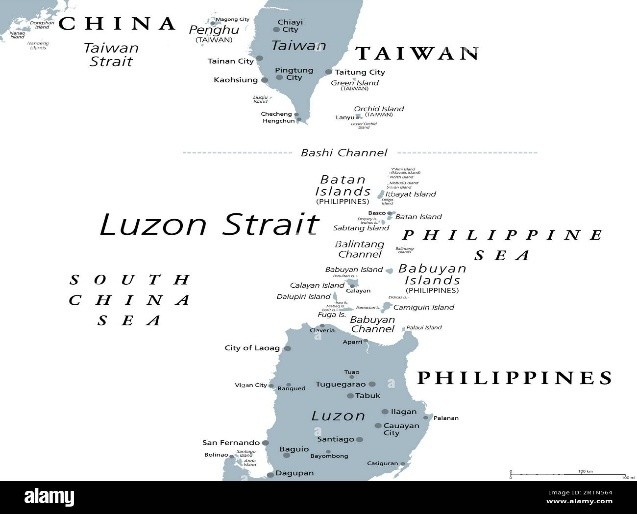
- 26 Sep 2025
In News:
Super Typhoon Ragasa—locally known as Nando—has emerged as one of the most powerful storms to strike Southeast Asia in recent years. With sustained winds exceeding 200 km/h and gusts up to 250 km/h, it has prompted large-scale shutdowns across the Philippines and Hong Kong, highlighting the region’s vulnerability to climate-induced extreme weather events.
About Super Typhoon Ragasa
- Category: 5 (the highest on the Saffir-Simpson scale)
- Wind Speed: Sustained winds of around 205 km/h, gusting up to 250 km/h.
- Origin: Formed over the western Pacific Ocean, where warm sea surface temperatures and low wind shear facilitated rapid intensification.
- Track: Moving northwestward across the Luzon Strait, impacting the Babuyan Islands in northern Philippines before heading toward southern China, including Hong Kong.
Regional and Environmental Significance
- The increasing intensity of storms like Ragasa reflects the broader pattern of climate change-driven extreme weather in the western Pacific region.
- Rising sea surface temperatures and shifting atmospheric circulation patterns have led to more frequent and severe typhoons, posing long-term challenges to disaster preparedness and coastal infrastructure resilience in densely populated regions like Luzon and Hong Kong.
Way Forward
- Strengthening Early Warning Systems: Enhanced forecasting and community-based alert dissemination can save lives in coastal and island regions.
- Climate Adaptation Infrastructure: Investment in storm-resilient housing, flood barriers, and sustainable urban planning is critical for mitigating recurring damage.
- Regional Cooperation: Shared meteorological data and coordinated disaster response among ASEAN nations, China, and Pacific island states can improve resilience.
Supercomputers vs Normal Computers
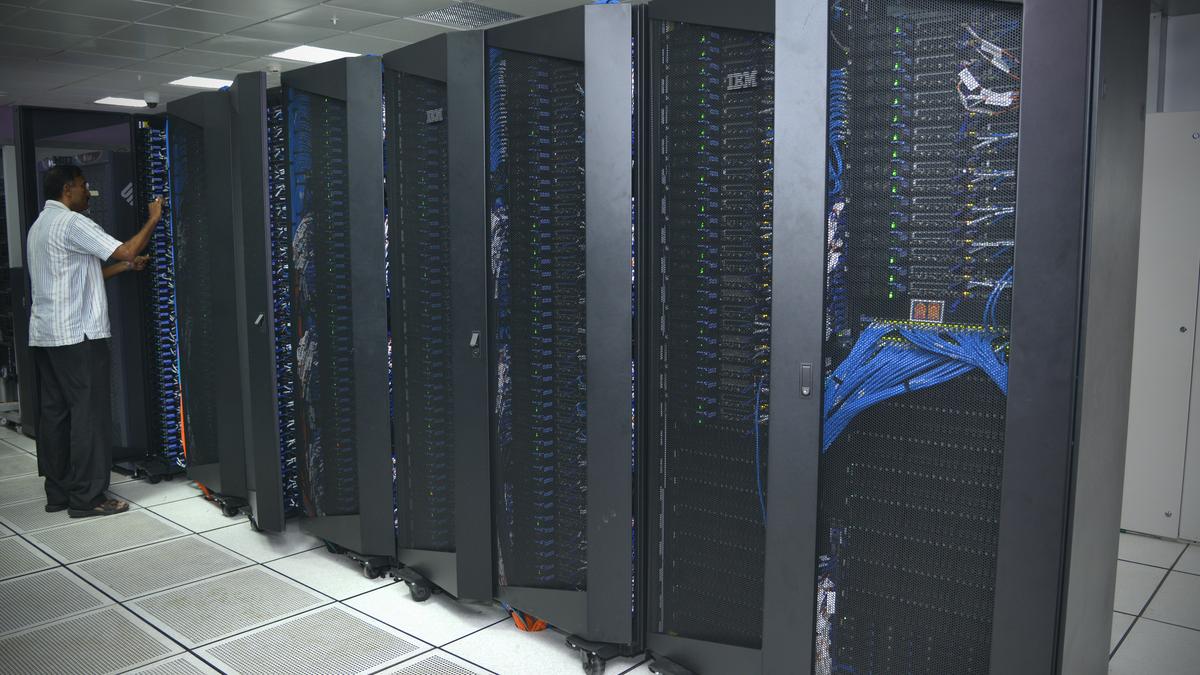
- 26 Sep 2025
In News:
Supercomputers are the giants of the computing world, built to solve problems far beyond the reach of everyday computers. Unlike normal laptops or desktops, which are designed for routine tasks like web browsing, office work, gaming, or media consumption, supercomputers tackle extremely complex, data-intensive problems—such as weather forecasting, simulating nuclear reactions, modelling the early universe, or training advanced artificial intelligence models.
Key Differences Between Normal Computers and Supercomputers
|
Aspect |
Normal Computers |
Supercomputers |
|
Processing Power |
Billions of operations per second (GFLOPS) |
Quintillions per second (ExaFLOPS); can complete tasks that would take ordinary machines years in just hours |
|
Architecture |
1–16 CPU cores |
Thousands to millions of CPUs and GPUs working in parallel |
|
Memory & Storage |
GB–TB range |
Petabyte-scale storage with parallel file systems |
|
Networking |
Standard Ethernet or Wi-Fi |
Ultra-fast interconnects like InfiniBand or Omni-Path |
|
Cooling & Power |
Small fans, low power consumption |
Liquid or immersion cooling; power requirements comparable to a small town |
|
Use & Access |
Direct individual use |
Remote access via job schedulers for research institutions and industrial applications |
India’s Supercomputing Initiative
- India’s journey in high-performance computing began in the late 1980s, largely as a response to export restrictions from Western countries. This led to the development of indigenous supercomputing capabilities under the National Supercomputing Mission (NSM).
- The mission has given rise to the PARAM series and the newer AIRAWAT supercomputers, positioning India on the global high-performance computing map.
- These systems are designed not just for academic research but also for solving real-world problems in climate modelling, healthcare simulations, and energy research. They exemplify India’s strategic approach to technological self-reliance and digital sovereignty.
Global Supercomputing Race
- Supercomputing has become a key area of technological competition. In Europe, Germany recently commissioned JUPITER, the continent’s first exascale supercomputer, capable of performing more than an exaFLOP (a quintillion calculation per second). This milestone highlights the global drive toward faster, more energy-efficient, and scalable computing infrastructures, with countries investing heavily in next-generation architectures.
Significance for India
For India, supercomputers are not only tools for scientific advancement but also instruments of national development. They support critical sectors such as meteorology, disaster management, nuclear research, and artificial intelligence, enhancing both strategic and developmental capacities. The NSM’s growing network of high-performance machines demonstrates India’s commitment to bridging the technological gap with global leaders.
Evo AI Model
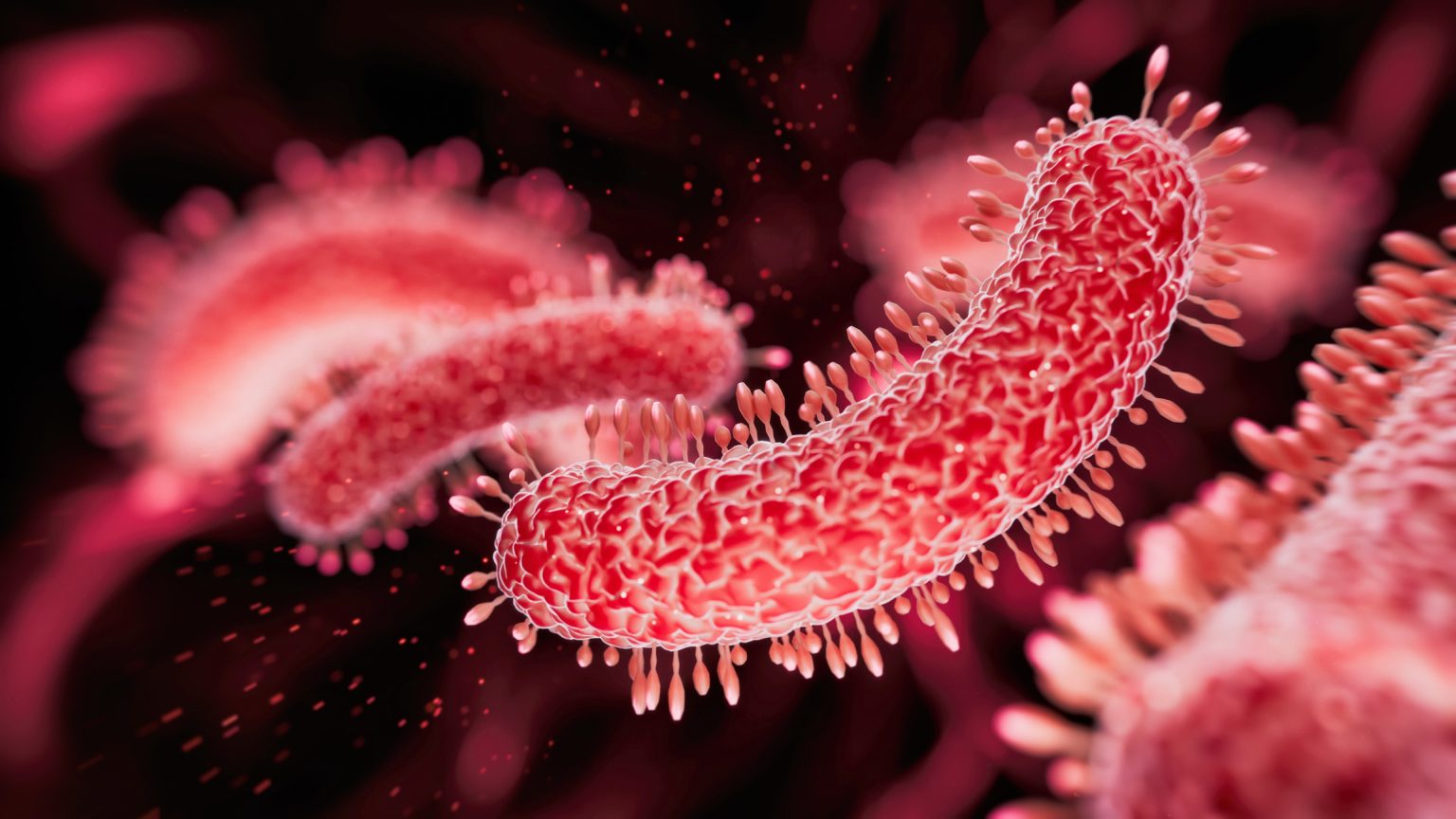
- 25 Sep 2025
In News:
- In a groundbreaking scientific development, researchers at Stanford University, in collaboration with the Arc Institute, have used artificial intelligence (AI) to design viruses capable of killing harmful bacteria.
- This breakthrough offers a potential solution to the global antibiotic resistance crisis and marks a significant advance in AI-guided synthetic biology.
The Challenge of Antibiotic Resistance
- Antimicrobial resistance (AMR) is a growing global health threat. According to the World Health Organization (WHO), AMR is among the top public health and development challenges, contributing to an estimated 1.27 million deaths globally in 2019 and playing a role in 4.95 million deaths.
- In India alone, around 6 lakh lives are lost annually due to drug-resistant infections. Traditional antibiotics are increasingly ineffective, necessitating novel approaches to combat bacterial diseases.
- Bacteriophages, or viruses that specifically target bacteria, provide a promising alternative. Unlike antibiotics, phages attack specific bacterial strains, sparing beneficial microbes. However, engineering or identifying effective phages has historically been slow and labor-intensive.
AI Breakthrough: The Evo Model
To accelerate this process, scientists developed Evo, a large AI model for genomics, described as a “ChatGPT for DNA”. Evo was trained on 80,000 microbial genomes and millions of bacteriophage and plasmid sequences, encompassingapproximately 300 billion nucleotides.
Key Features of Evo:
- Foundation Model for Genomics: Predicts, designs, and generates genetic code for synthetic biology applications.
- Generative Capability: Creates novel viral blueprints, synthetic genomes, and protein variants (e.g., Cas9 variants).
- Extended Context Length: Understands long DNA sequences and gene interactions.
- High Precision: Operates at nucleotide-level resolution.
- Accelerated R&D: Reduces decades of trial-and-error lab work to weeks.
- Open Research: Publicly available for non-commercial academic use.
How the AI-Designed Viruses Were Created
- Selection of Model Virus: Scientists chose phiX174, a simple virus infecting E. coli, due to its well-characterized genome (11 genes) and manageable complexity.
- AI Training: Evo analyzed millions of viral sequences, learning gene structures and functional combinations that could enhance antibacterial activity.
- Generative Design: The AI proposed hundreds of new virus variants predicted to attack bacteria effectively.
- Laboratory Synthesis: Researchers synthesized the AI-designed genomes and tested them in the lab. 16 new viruses successfully infected and destroyed bacteria, with some performing better than natural counterparts.
Significance of the Discovery
- Rapid Innovation: AI accelerates phage design, shrinking decades of research into weeks.
- Targeted Therapy: Offers precision treatments against drug-resistant bacterial infections.
- Agricultural and Clinical Applications: Potential to safeguard human health, hospitals, and food production from bacterial threats.
- Scientific Implications: Raises philosophical and biological questions about AI’s ability to create life-like entities, as viruses, while not strictly “alive,” mimic key life processes.
Safety and Ethical Considerations
Experts caution that AI-designed viruses, if misused or released unintentionally, could pose biosecurity risks. While engineering harmful human viruses is highly complex, the possibility of accidental creation of dangerous pathogens calls for strict safety protocols, oversight, and ethical guidelines. Responsible research is essential to ensure societal benefit while minimizing risk.
Logistics Ease Across Different States (LEADS) 2025
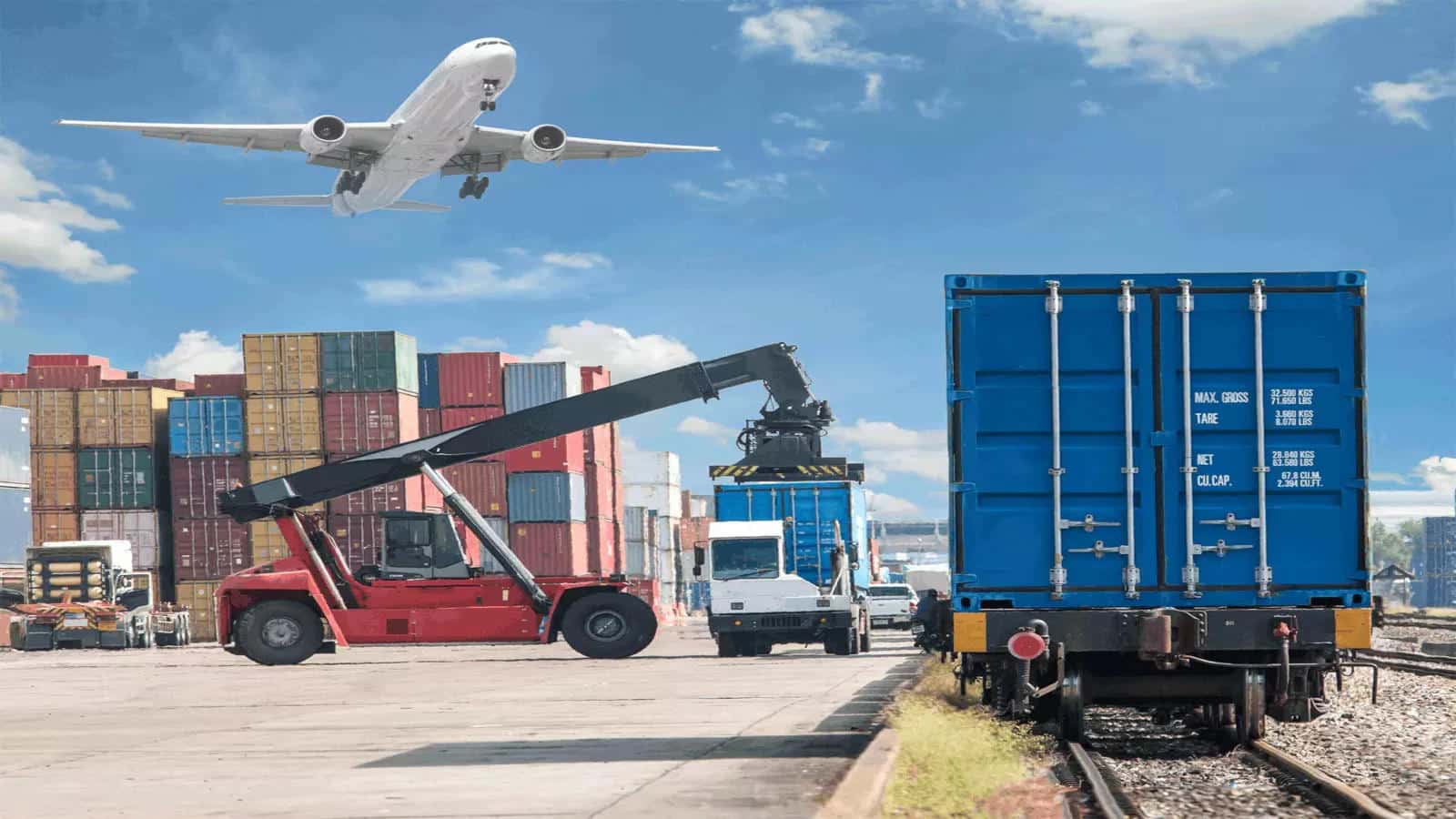
- 25 Sep 2025
In News:
The Union Minister for Commerce and Industry, launched Logistics Ease Across Different States (LEADS) 2025 in New Delhi as part of the decade-long celebrations of the Make in India initiative. The launch marks a major step in India’s efforts to create a globally competitive, efficient, and sustainable logisticsecosystem, integral to achieving the goals of Atmanirbhar Bharat and Viksit Bharat 2047.
About LEADS 2025
- Logistics Ease Across Different States (LEADS) is a national index and survey developed by the Department for Promotion of Industry and Internal Trade (DPIIT) under the Ministry of Commerce and Industry.
- It aims to benchmark and rank the logistics performance of Indian States and Union Territories, providing actionable insights to improve supply chain efficiency and reduce logistics costs.
Objectives
- To evaluate and compare logistics performance across States and UTs.
- To identify best practices and policy gaps for targeted reforms.
- To guide infrastructure planning and capacity building for logistics improvement.
- To support Make in India by enhancing logistics competitiveness and reducing costs.
Key Features of LEADS 2025
- Corridor Performance Tracking
- Assessment of 5–7 key national logistics corridors based on journey time, truck speed, and waiting periods.
- Provides a data-driven evaluation of corridor efficiency.
- API-Enabled Real-Time Data
- Introduces API-based analytics to evaluate section-wise speeds on major road corridors.
- Offers sharper insights into congestion points and logistics bottlenecks.
- State Rankings &Categorisation: States and UTs are ranked under Leaders, Achievers, and Aspirers categories to encourage healthy competition and policy innovation.
- Digital Dashboard: A new interactive monitoring platform allows States and UTs to track performance and progress in real time.
- Policy Recommendations: The survey provides customised state-level action plans to address infrastructure, service, and regulatory gaps.
Assessment Parameters
LEADS evaluates States and UTs on five major dimensions:
- Infrastructure Quality – Roads, warehousing, multimodal connectivity.
- Service Quality – Availability, reliability, and performance of logistics providers.
- Efficiency – Timeliness, truck turnaround time, and ease of clearances.
- Policy and Regulatory Support – State-level facilitation measures and grievance redressal mechanisms.
- Stakeholder Perception – Industry feedback on cost, speed, and reliability of logistics operations.
Papikonda National Park
- 25 Sep 2025
In News:
A recent study published in the Records of the Zoological Survey of India has documented 51 species of herpetofauna — including amphibians and reptiles — in Papikonda National Park, located in the northern part of the Eastern Ghats, Andhra Pradesh. This comprehensive survey marks a significant step in understanding the region’s biodiversity, which has remained largely underexplored.
Key Findings of the Study
Researchers recorded 18 amphibians, 21 lizards, 10 snakes, and 2 turtles through extensive fieldwork conducted between September 2021 and February 2023. The study revealed three species — Minervaryakalinga, Sphaerothecamaskeyi, and Hemidactylus kangerensis — reported for the first time in Andhra Pradesh.
According to the IUCN Red List (2024):
- 46 species are listed as Least Concern,
- 3 species are Not Yet Assessed,
- Hemidactylus kangerensis is Endangered, and
- Lissemyspunctata is Vulnerable.
Under the Wildlife (Protection) Act, 2022, several species enjoy legal protection:
- Schedule I:Chamaeleozeylanicus, Calodactylodes aureus, Pangshura tentoria, Lissemyspunctata
- Schedule II:Hoplobatrachustigerinus, Euphlyctiscyanophlyctis
The study also highlighted rare species such as Psammodynastespulverulentus and Argyrophisdiardii, the latter recorded for the first time in the Eastern Ghats. Two Eastern Ghats endemics — the Indian golden gecko (Calodactylodes aureus) and Dutta’s Mahendragiri gecko (Hemidactylus sushilduttai) — were also documented.
About Papikonda National Park
- Location: East and West Godavari districts, Andhra Pradesh
- Area: Approximately 1,012.86 sq km
- Established: Declared a Reserved Forest (1882), Wildlife Sanctuary (1978), and upgraded to National Park (2008)
- Landscape: Rugged terrain of the Eastern Ghats, divided by the Godavari River, with elevation ranging from 20–850 metres
- Geographical Features: Contains 62 named mountains, including Devara Konda (highest point) and Verala Konda (most prominent peak)
- Recognition: Identified as an Important Bird and Biodiversity Area (IBA) by BirdLife International
Flora and Fauna
- Vegetation: Tropical moist deciduous, semi-evergreen, and dry deciduous forests.
- Flora: Teak, rosewood, sandalwood, bamboo, sal, mahua, pterocarpus, terminalia, cassia, and eucalyptus.
- Fauna: Bengal tiger, Indian leopard, sloth bear, dhole (wild dog), sambar, and spotted deer.
- Unique Feature: Home to the “KanchuMekha”, a rare dwarf goat breed native to the region.
Conservation Significance
- The study provides baseline data crucial for biodiversity conservation and monitoring in the Eastern Ghats. Researchers warned that herpetofaunal populations face multiple threats — including habitat loss, fragmentation, emerging diseases, and climate change.
- Rare and threatened species like the Jeypore Hill Gecko (Geckoellajeyporensis), Barkud Spotted Skink (Barkudiainsularis), and King Cobra (Ophiophagus hannah) emphasize the need for targeted conservation strategies.
- The authors advocated for systematic surveys and integrated taxonomic approaches across the Eastern Ghats to enhance understanding of species distribution and to strengthen regional conservation planning.
Exercise Amogh Fury
- 25 Sep 2025
In News:
The Indian Army’s Sapta Shakti Command recently conducted a major integrated firepower exercise, ‘Amogh Fury’, at the Mahajan Field Firing Ranges in Rajasthan’s Thar Desert. The large-scale drill showcased the Army’s growing emphasis on technology-driven warfare, jointness of combat arms, and preparedness for multi-domain operations.
Objectives and Significance
- The primary aim of Exercise Amogh Fury was to test combat power, coordination, and operational readiness under realistic battlefield conditions.
- The exercise simulated live battle scenarios, enabling forces to validate their capabilities in offensive and defensive operations, while ensuring seamless integration between ground and air platforms.
- The drill reflected the Army’s commitment to operational transformation in line with evolving security dynamics, focusing on rapid decision-making, situational awareness, and integrated command structures.
Key Features of the Exercise
The exercise featured coordinated manoeuvres involving:
- Battle Tanks and Infantry Combat Vehicles – for armoured and mechanised warfare.
- Attack Helicopters and Long-Range Artillery – providing precision firepower support.
- Drones and Unmanned Aerial Systems (UAS) – for real-time reconnaissance, surveillance, and target acquisition.
These diverse platforms operated in unison to demonstrate jointness between air and ground forces, vital for modern high-intensity conflicts.
Integration of Advanced Technologies
A central focus of Amogh Fury was the use of modern technologies such as:
- Network-centric communication systems
- Integrated Command-and-Control (C2) architecture
- Real-time surveillance and targeting systems
These advancements allowed for the creation of a unified operational picture, enhancing situational awareness, rapid coordination, and decision-making across command levels. The integration of these systems reflects the Army’s move toward digitised battlefield management and multi-domain warfare capability.
Training and Outcomes
The exercise provided pragmatic training for personnel across all ranks under realistic combat conditions. It served as a testbed for refining tactical procedures and assessing the synergy between combat arms, support units, and logistic elements.
Through Amogh Fury, the Indian Army strengthened its readiness to counter emerging threats, underscoring its focus on agility, precision, and technological superiority on the modern battlefield.
DadasahebPhalke Award for 2023
- 25 Sep 2025
In News:
In a major recognition of artistic excellence, the Government of India has announced that legendary actor, director, and producer Shri Mohanlal Viswanathan Nair will be conferred with the DadasahebPhalke Award for the year 2023, the highest honour in Indian cinema.
About the DadasahebPhalke Award
The DadasahebPhalke Award is India’s highest honour in the field of cinema, instituted in 1969 to commemorate the birth centenary of DadasahebPhalke, widely regarded as the Father of Indian Cinema.
- Inaugural Recipient: Devika Rani (1969)
- Presented by: The President of India
- Award Components: Swarna Kamal (Golden Lotus) medallion, a shawl, and a cash prize of ?10 lakh
- Purpose: To recognise individuals for their outstanding lifetime contribution to the growth and development of Indian cinema.
About DadasahebPhalke
Dhundiraj Govind Phalke (1870–1944), born in Trimbak, Maharashtra, was a painter, photographer, playwright, and filmmaker. He directed India’s first full-length feature film, Raja Harishchandra (1913), which laid the foundation for Indian cinema. His pioneering vision and creative ingenuity earned him the title of “Father of Indian Cinema.”
Significance
The conferment of the DadasahebPhalke Award on Mohanlal marks a momentous chapter in Indian cinematic history. It recognises not just his artistic brilliance but also his contribution in shaping Indian cinema as a powerful medium of cultural expression. His journey from Kerala to global acclaim embodies the spirit of Indian creativity and excellence celebrated through this prestigious award.
Fentanyl Blacklist
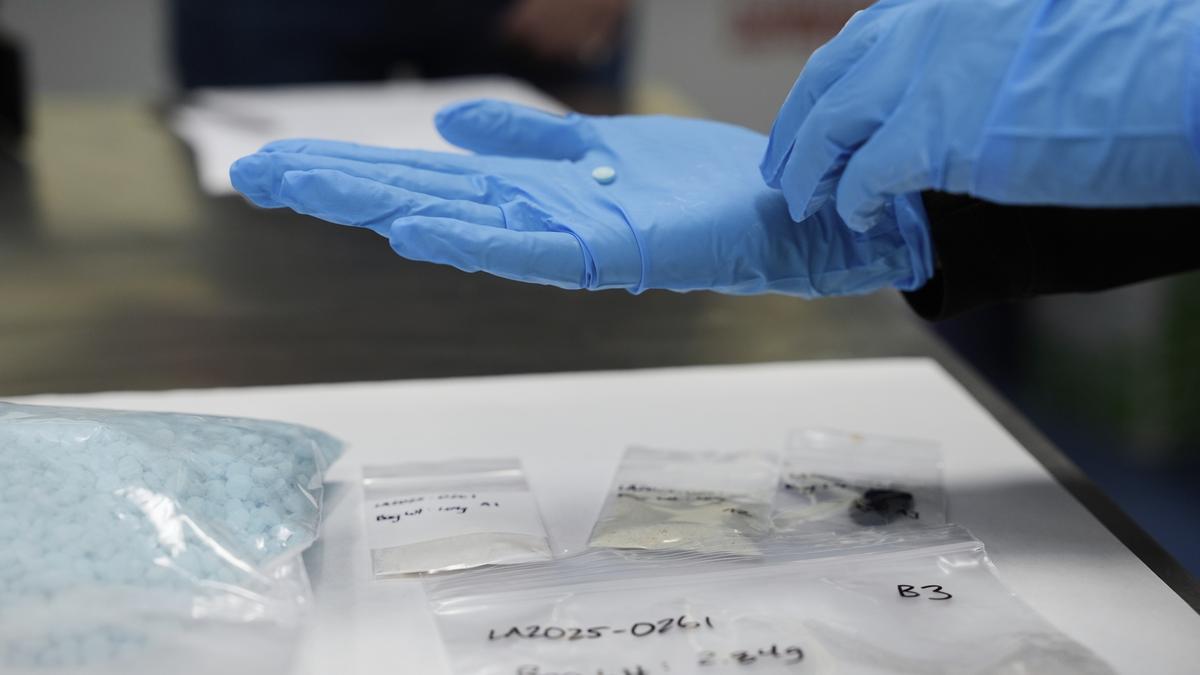
- 24 Sep 2025
In News:
The United States has intensified its global campaign against fentanyl, a powerful synthetic opioid responsible for tens of thousands of overdose deaths annually. In its latest narcotics control measures, the U.S. has imposed visa bans on Indian business executives allegedly linked to the trafficking of fentanyl precursor chemicals, reflecting growing scrutiny of global supply chains originating in Asia.
Background: The Major’s List and India’s Inclusion
- In the latest “Major’s List” submitted to the U.S. Congress, President Donald Trump identified 23 countries as major sources or transit hubs for illicit drugs — particularly fentanyl — posing a threat to American citizens.
- The list includes India, Pakistan, China, and Afghanistan, among others. While inclusion does not imply failure in counter-narcotics efforts, it highlights each nation’s role in the production or transit of controlled substances and precursor chemicals.
- Countries such as Afghanistan, Bolivia, Myanmar, Colombia, and Venezuela were categorized as having “failed demonstrably” to meet international drug-control obligations.
Understanding Fentanyl:
Fentanyl was first synthesized in the 1960s for legitimate medical use as a potent painkiller. However, illicitly manufactured variants now dominate the U.S. illegal drug market.
- It is 50 times stronger than heroin, and just 2 milligrams can be fatal, as it suppresses the brain’s respiratory centers.
- Between August 2023 and August 2024, more than 57,000 Americans died of opioid overdoses, primarily linked to fentanyl.
- In 2022, the U.S. Drug Enforcement Administration (DEA) seized enough fentanyl to deliver 379 million lethal doses—enough to kill the U.S. population.
The crisis has been termed the “opioid epidemic”, driving unprecedented public health and security responses in the U.S.
Fentanyl Precursors and the Challenge of Regulation
- Unlike plant-based drugs such as heroin or cocaine, fentanyl is lab-synthesized from chemical precursors like N-phenethyl-4-piperidone (NPP) and 4-anilino-N-phenethylpiperidine (4-ANPP).
- These compounds have legitimate pharmaceutical and industrial uses, complicating global regulatory oversight. Small quantities of these chemicals can yield large volumes of fentanyl, and they are easily concealed in international shipments through mislabelling or false customs declarations.
- This has made it difficult for authorities to distinguish between lawful trade and diversion into illicit production networks.
Global Fentanyl Supply Chain
The global fentanyl network involves multiple countries across different stages of production and distribution:
- China and India are key producers of precursor chemicals, some of which are diverted to illegal channels.
- Mexican cartels synthesize fentanyl using these precursors, convert it into powder or counterfeit pills, and smuggle it into the U.S. through the southwest border.
This multi-tiered chain, combined with e-commerce and courier systems, has created a complex and decentralized trafficking web, challenging traditional interdiction mechanisms.
U.S. Domestic and Global Enforcement Measures
Domestically, the U.S. has expanded DEA operations, seizures, and public health initiatives to counter the crisis:
- Nationwide naloxone distribution to reverse overdoses in emergencies.
- Public awareness campaigns warning of counterfeit prescription pills laced with fentanyl.
- Enhanced treatment and rehabilitation programs to curb addiction and demand.
Internationally, Washington has combined criminal prosecution, trade measures, and sanctions to curb the flow of fentanyl and its precursors.
- In February 2025, additional tariffs were imposed on imports from China, Canada, and Mexico to pressure stronger enforcement; these were later suspended for Canada and Mexico after improved border controls.
- The U.S. has also sought to align global chemical control frameworks through the UN and bilateral agreements.
India’s Position
India, while listed as a “major drug transit or producing country,” has not been accused of state complicity. The issue primarily involves private firms and individuals engaged in illicit chemical exports. Indian authorities are expected to strengthen precursor control mechanisms, enhance customs surveillance, and ensure regulatory compliance within the pharmaceutical and chemical industries.
The episode underscores India’s dual challenge — balancing its role as a legitimate pharmaceutical exporter while preventing misuse of chemical manufacturing capacity.
Semiconductor Designers Power India’s Chip Dreams
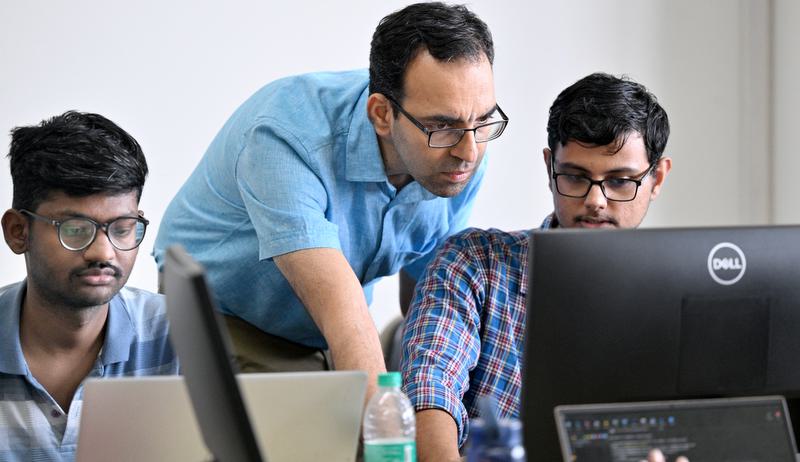
- 24 Sep 2025
In News:
India’s semiconductor ecosystem is witnessing a transformative shift — from being a consumer-driven electronics market to an emerging design and manufacturing hub. While the country’s large-scale semiconductor fabrication projects are still in early stages, the chip design sector is already thriving, positioning India as a critical player in the global semiconductor value chain.
Policy Framework: Semicon India Mission
The turning point came in 2021, when the Government of India launched the ?76,000 crore Semicon India Programme, aimed at developing India into a global hub for electronics design and manufacturing.
- Manufacturing Push:The mission provides 50% capital support for semiconductor fabrication (fab) and assembly, testing, marking, and packaging (ATMP/OSAT) facilities, with states adding 20–25% additional incentives.
- Ten major projects have been approved across Gujarat, Punjab, Uttar Pradesh, Odisha, Andhra Pradesh, and Assam.
- Notably, Micron’s ?22,500 crore ATMP facility in Gujarat is under construction and expected to begin operations in 2024.
- Design Support:The Design Linked Incentive (DLI) and Chips to Startup (C2S)programmes aim to nurture a new generation of semiconductor designers.
- The C2S initiative provides free access to high-end Electronic Design Automation (EDA) tools from Siemens, Cadence, and Synopsys, while targeting the training of 85,000 engineers in five years.
India’s Edge in Semiconductor Design
- India today accounts for 20% of the global semiconductor design workforce, hosting around 1.25 lakh chip designers who develop nearly 3,000 chips annually.
- Multinational firms like NVIDIA, Intel, AMD, and Qualcomm run large R&D operations from India, spread across Bengaluru, Hyderabad, Pune, and Noida.
- Even as the world faces a projected shortage of one million chip designers by 2030 (Deloitte), India’s deep talent pool offers a natural advantage.
- The country produces over 8 lakh engineering graduates annually, with around 5.7 lakh enrolled in electronics and related disciplines (2021–22).
Academia–Industry Collaboration: Bridging the Gap
- Despite government efforts, experts underline a persistent disconnect between academia and industry. Indian industries invest only 0.4% of profits in academic R&D, compared to 5–6% in the U.S. and South Korea.
- Strengthening collaboration — through joint research, funded Ph.D. programs, and internship pipelines — is essential to make graduates industry-ready and sustain innovation.
- Institutions like IITs, IISc, and IIITs have begun partnerships with leading toolmakers such as Synopsys, Lam Research, and Cadence to enable frontier-level projects at sub-10 nanometer design nodes.
Economic and Strategic Implications
- High-Value Employment: Semiconductor jobs have a multiplier effect of 6.7, driving indirect employment in allied sectors.
- Export Potential: Electronics exports are projected to quintuple by 2026, narrowing India’s trade deficit.
- Strategic Autonomy: Domestic chip capacity reduces dependence on foreign suppliers, vital for defence, telecom, and automotive sectors.
- Innovation Push: With rising patent filings and homegrown IP, India is consolidating its role in the global tech value chain.
Red-Necked Phalarope
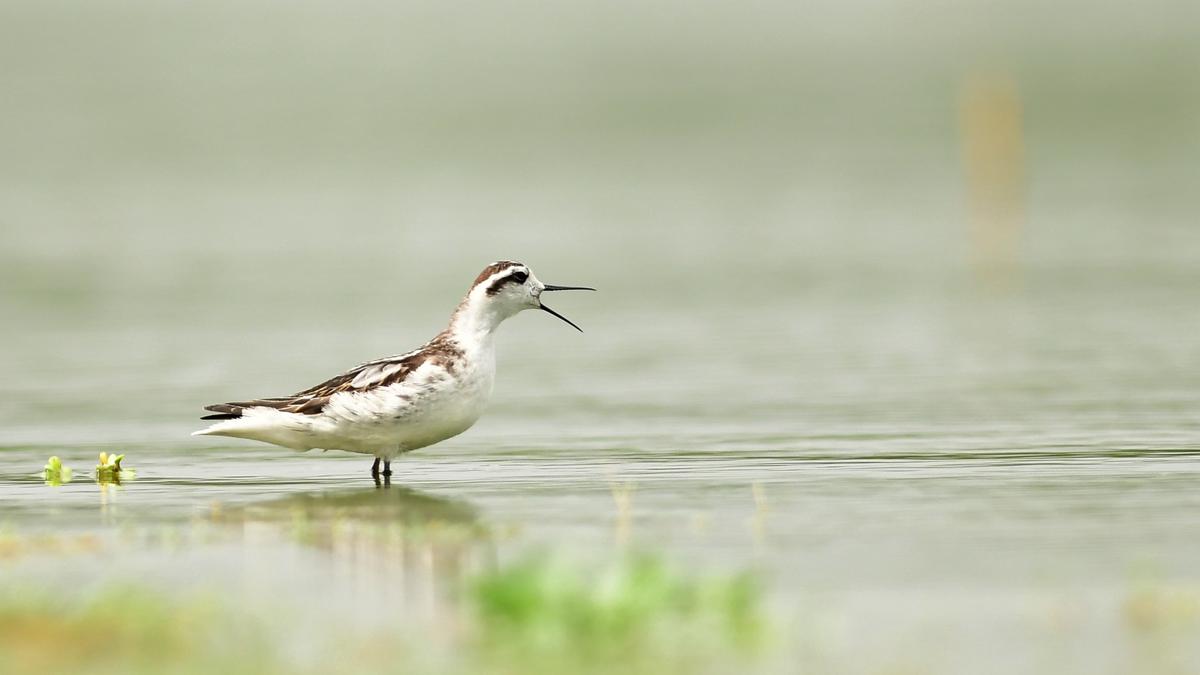
- 24 Sep 2025
In News:
In a notable development for ornithology and biodiversity conservation, the Red-necked Phalarope (Phalaropuslobatus), a rare migratory shorebird, has been sighted for the first time at the Nanjarayan Bird Sanctuary near Tiruppur, Tamil Nadu.
About the Red-Necked Phalarope
The Red-necked Phalarope is a small, migratory wader renowned for its unique feeding behavior and striking breeding plumage.
- Distinctive Feeding Behavior:It is known for its characteristic habit of spinning rapidly in circles on the water surface to stir up small invertebrates and plankton, which it then feeds upon.
- Physical Features:During the breeding season, the bird exhibits chestnut-red plumage extending from behind the ear to the sides of the neck — a feature that gives it its name.
Unusually among birds, the female is more brightly coloured than the male, and the species displays polyandrous behaviour (females mate with multiple males), with males incubating the eggs and caring for the chicks.
Distribution and Habitat
The Red-necked Phalarope has a circumpolar distribution, breeding in boreal and tundra zones between 60° and 70° latitude, across regions such as the Arctic coasts, Aleutian Islands, and northern Britain.
- During migration and the non-breeding season, it spends much of its time at sea, especially across:
- The Arabian Sea,
- Waters off central-west South America, and
- The central Indonesian to western Melanesian regions.
The recent sighting at Nanjarayan Bird Sanctuary — a vital inland wetland ecosystem — highlights the site’s growing importance as a stopover for migratory shorebirds along the Central Asian Flyway.
Conservation Status
- IUCN Red List:Least Concern
Despite being widespread globally, localized population declines have been observed due to habitat degradation, pollution, and climate-induced changes in migratory routes.
‘One-In, One-Out’ Migration Scheme
- 24 Sep 2025
In News:
- An Indian national has become the first person to be deported from the United Kingdom to France under the newly launched “one-in, one-out” migration scheme, part of the UK–France Returns Treaty.
- The deportation marks the beginning of a new bilateral arrangement aimed at curbing illegal cross-Channel migration and dismantling human smuggling networks operating between the two countries.
Background and Context
- The deported individual reportedly arrived in the UK illegally via the English Channel in early August 2025 aboard a small boat — one of the most common routes used by irregular migrants. He was subsequently detained and later flown from Heathrow to Paris on an Air France flight, under the provisions of the UK–France returns framework.
- The UK Home Office confirmed that upon arrival in France, the individual would be offered a voluntary, paid-for return to his home country. If he declines, he could face enforced deportation.
- The deportation comes amid a broader crackdown on illegal immigration in the UK, with reports indicating a sharp rise in Indian nationals detained in British immigration centres in recent months.
About the ‘One-In, One-Out’ Scheme
The “one-in, one-out” scheme is a bilateral deportation and migration management arrangement between the United Kingdom and France.
- Objective: To deter illegal small-boat crossings across the English Channel and disrupt human trafficking networks.
- Mechanism: For every illegal migrant returned by the UK to France, the UK will accept one legal asylum seeker from France — hence the name “one-in, one-out.”
- Implementation Period:August 2025 to June 2026, operating as a pilot programme subject to review.
- Provisions:
- Fast-track deportations for illegal entrants.
- Voluntary return option with financial assistance for deported migrants.
- Judicial oversight allowing courts to review last-minute appeals swiftly.
Significance of the Agreement
- Border Security: Strengthens the UK’s capacity to manage and deter illegal migration.
- International Cooperation: Demonstrates growing cross-border coordination between the UK and France on migration governance.
- Policy Shift: Reflects a move towards reciprocal responsibility in handling irregular migration.
- Political Impact: Reinforces the UK government’s tough stance on illegal immigration while maintaining humanitarian commitments.
Androth Anti-Submarine Warfare Ship
- 24 Sep 2025
In News:
- The Indian Navy has commissioned INS Androth, an indigenously built Anti-Submarine Warfare Shallow Water Craft (ASW-SWC), marking a significant milestone in strengthening India’s maritime security and self-reliance in defence production.
- Built by Garden Reach Shipbuilders & Engineers (GRSE), Kolkata, INS Androth is the second vessel in a series of eight ASW-SWCs being developed for the Navy.
Strategic Significance
- Named after Androth Island in the Lakshadweep archipelago, the ship’s designation underscores India’s commitment to safeguarding its maritime frontiers in the Arabian Sea and ensuring the security of critical sea lanes around the island territories.
- The induction comes at a time of growing Chinese naval presence in the Indian Ocean Region (IOR), adding a crucial layer of deterrence and surveillance to India’s coastal defence network.
Design and Capabilities
- INS Androth is designed for anti-submarine operations in shallow waters, coastal security patrols, and escort missions.
- It is 77 metres long and powered by diesel engine–waterjet propulsion, providing superior maneuverability in littoral and near-shore environments.
- Key onboard systems include:
- Advanced indigenous sonar and sensor suites for submarine detection and tracking.
- Lightweight torpedoes and ASW rockets for engaging underwater threats.
- 80% indigenous components, aligning with the ‘Aatmanirbhar Bharat’ initiative to reduce import dependence in defence production.
Operational Role
- The ship will primarily operate along India’s western seaboard, particularly around Lakshadweep, where it will conduct surveillance and deterrence missions against sub-surface threats.
- Its shallow-water design allows it to access areas that larger vessels cannot, enhancing the Navy’s reach in coastal and island territories.
India Re-elected to the Universal Postal Union’s Governing Bodies
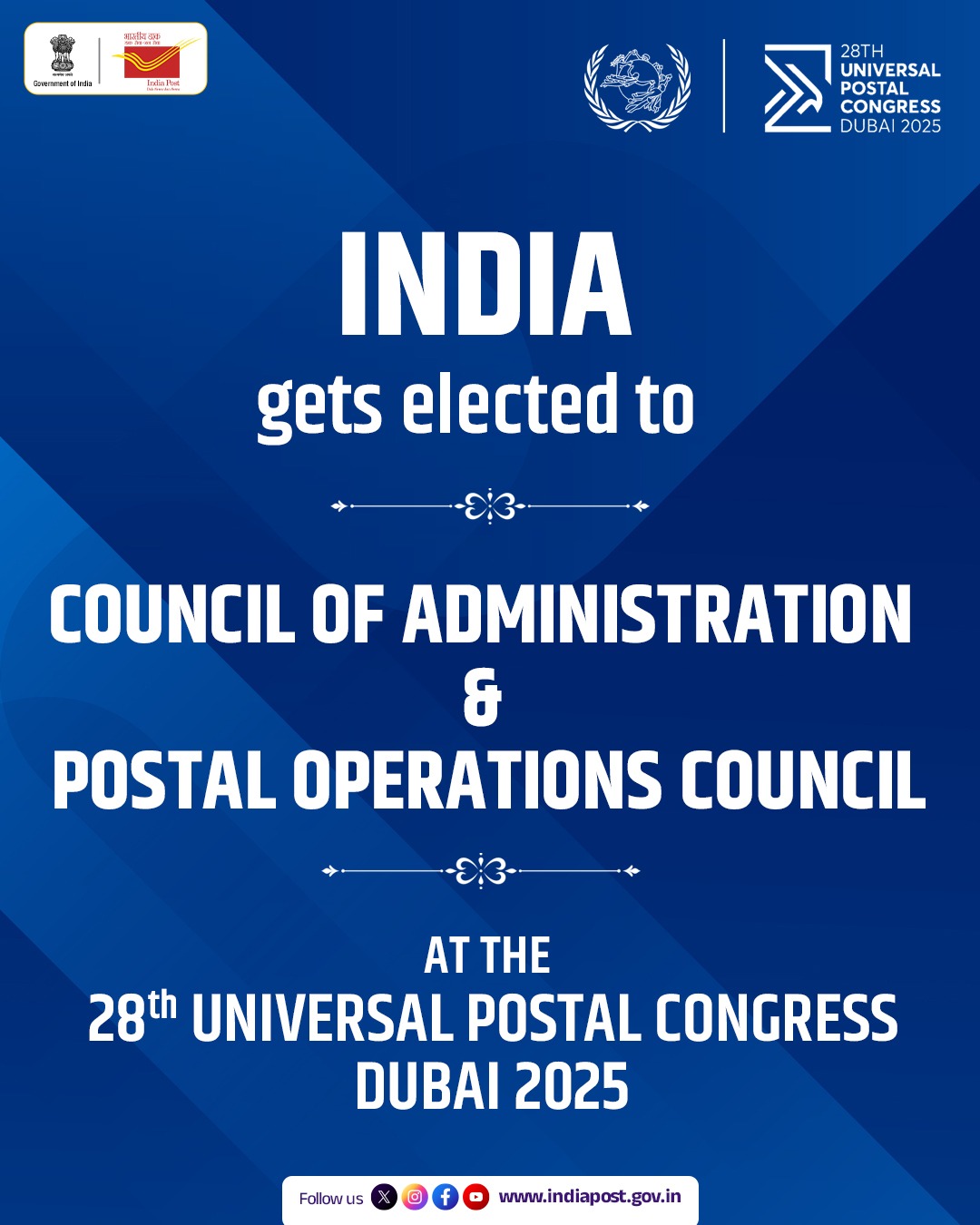
- 23 Sep 2025
In News:
- India has been re-elected to the Council of Administration (CA) and the Postal Operations Council (POC) of the Universal Postal Union (UPU) during the 28th Universal Postal Congress held in Dubai.
- This re-election reaffirms global confidence in India Post’s leadership, digital reforms, and commitment to inclusive postal development, strengthening India’s voice in shaping international postal governance.
About the Universal Postal Union (UPU)
- Founded: 1874 under the Treaty of Bern
- Headquarters: Berne, Switzerland
- Members: 192 countries
- Status: A specialized agency of the United Nations, it is the second-oldest international organization after the International Telecommunication Union (ITU).
Mandate and Objectives
- To promote global postal cooperation and ensure universal connectivity in mail and parcel delivery.
- To establish standards, regulations, and tariffs for international postal exchanges.
- To enhance efficiency, affordability, and reliability of postal services globally.
- To facilitate the growth of e-commerce and cross-border logistics through modern postal systems.
Governance Structure of UPU
The UPU functions through four key organs:
- Congress:
- The supreme decision-making body, convened every four years.
- Sets the long-term strategy, budget, and policy framework for global postal operations.
- Council of Administration (CA):
- Handles policy, legal, administrative, and regulatory issues between Congress sessions.
- Oversees the implementation of Congress decisions and coordinates global postal governance.
- Postal Operations Council (POC):
- The technical and operational body comprising 48 elected member countries.
- Works on service innovation, quality enhancement, digital integration, and modernisation of global postal systems.
- International Bureau:
- The secretariat of the UPU providing logistical, analytical, and technical support to member states and councils.
Significance of India’s Re-election
- Endorsement of Leadership: India’s re-election underscores the international community’s trust in its postal transformation, particularly in digital and financial inclusion.
- Modernisation Initiatives: India Post’s progress in e-commerce facilitation, postal banking, logistics efficiency, and technology-driven governance has positioned it as a model for developing nations.
- Strategic Representation: Through its roles in both CA and POC, India can influence policy formulation, standard setting, and capacity-building initiatives within the UPU.
- Global Collaboration: Reinforces India’s vision of “One World, One Postal Network”, aligning with its broader digital diplomacy and South-South cooperation goals.
India and the UPU: A Historical Perspective
- India joined the UPU in 1876, just two years after its establishment.
- Over the decades, it has played a constructive role in strengthening postal connectivity across the Global South.
- Under the leadership of the Ministry of Communications, India Post has transitioned from traditional mail delivery to offering digital, financial, and logistical services, supporting Digital India and Atmanirbhar Bharat missions.
Trump Imposes $100,000 Fee On H-1B Visas
- 23 Sep 2025
In News:
- In a significant policy shift, U.S. President Donald Trump signed a proclamation in October 2025 introducing a $100,000 (≈ ?88 lakh) sponsorship fee for H-1B visas, dramatically raising the cost for U.S. companies hiring foreign skilled workers.
- The move, presented as a measure to “protect American jobs,” marks one of the most stringent immigration-related economic policies in recent years and has wide-ranging implications for India’s IT sector, which remains the largest user of H-1B visas.
About the Policy
- New Regulation: U.S. employers sponsoring an H-1B worker must now pay a non-refundable fee of $100,000 per application, a steep increase from the earlier few-thousand-dollar processing cost.
- Official Objective: To ensure that only “highly skilled, non-substitutable” professionals are brought into the U.S., while deterring misuse of the program by firms replacing American workers with cheaper foreign labour.
- Rationale: According to the U.S. administration, the H-1B system is one of the most abused visa categories, often exploited by outsourcing companies to fill mid-level tech roles at lower wages.
Understanding the H-1B Visa
The H-1B is a non-immigrant U.S. work visa that allows companies to hire foreign professionals in specialty occupations requiring technical or theoretical expertise—mainly in STEM, finance, healthcare, and IT sectors.
- Introduced: Under the Immigration Act of 1990
- Eligibility: Bachelor’s degree or equivalent in a relevant field
- Tenure: Valid for 3 years, extendable up to 6 years (and beyond if Green Card process is ongoing)
- Quota: 65,000 general visas + 20,000 reserved for advanced U.S. degree holders
- Equal Pay Mandate: Employers must offer wages comparable to those of American workers to prevent labour exploitation
Applications are processed through the USCIS lottery system, which randomly selects qualified candidates.
Impact on India
1. Economic & Corporate Impact
- Cost Escalation: Indian IT majors like TCS, Infosys, and Wipro, which collectively sponsor thousands of H-1B employees annually, will face a steep rise in operational expenses.
- Reduced Hiring Abroad: Companies may shift high-skill operations back to India or relocate nearshore to countries such as Canada or Mexico to avoid the inflated cost.
- Automation Drive: Higher labour costs may accelerate automation and AI adoption within U.S. operations, reducing dependence on human capital from abroad.
2. Workforce & Migration Implications
- Major Beneficiaries Affected: Indians account for nearly 71% of all H-1B approvals, followed by China (≈12%).
- Extended Burden: Since most Indian professionals renew their H-1B multiple times due to the 10–15 year Green Card backlog, the cumulative cost will be enormous.
- Talent Diversion: The measure could divert Indian talent toward Canada, the EU, or Australia, which have relatively liberal skilled-migration policies.
‘Gold Card’ Visa Scheme
Alongside the H-1B fee hike, Trump announced a ‘Gold Card Visa Program’:
- Entry Fee: $1 million for individuals and $2 million for businesses.
- Objective: To attract “extraordinary individuals” capable of creating jobs and investments in the U.S. economy.
- Economic Rationale: The administration projects billions in revenue from the program to help reduce public debt and taxes.
- Selective Entry Policy: The move signals a shift from a skill-based to a wealth-based migration system, prioritizing elite entrepreneurs and investors over mid-level professionals.
Broader Policy Context
- The Trump administration has revived tougher citizenship tests, reinstating a 128-question civics and history exam (scrapped by the Biden government earlier), reflecting a wider push for restrictive immigration vetting.
- This marks a continuation of “America First” politics, emphasizing domestic employment protection and economic nationalism.
Implications for India–U.S. Relations
- Technology and Trade Impact: India’s $150+ billion IT export industry—largely dependent on U.S. markets—could face reduced competitiveness and project delays.
- Diplomatic Challenge: New Delhi must engage with Washington to safeguard the interests of Indian professionals and ensure that the visa restrictions do not spill over into bilateral technology and trade cooperation.
- Shift in Talent Dynamics: The policy could push India to strengthen domestic R&D ecosystems and negotiate reciprocal work mobility frameworks under trade agreements.
Global and Strategic Outlook
- Protectionism Resurgence: The policy aligns with a global trend of tightening skilled-migration channels amid economic uncertainty.
- Business Adaptation: U.S. tech firms like Amazon, Microsoft, Meta, and Google, which collectively secured over 25,000 H-1B approvals in early 2025, may now restructure hiring models or expand offshore R&D hubs in India.
- Brain Drain Reversal: Rising visa barriers could retain skilled manpower in India, strengthening domestic innovation capacity under initiatives like “Skill India 4.0” and “Startup India.”
India’s Manufacturing Momentum
- 23 Sep 2025
In News:
- India’s manufacturing sector has entered a phase of accelerated growth, driven by policy reforms, robust industrial performance, and rising global investor confidence.
- Recent data for July 2025 shows the Index of Industrial Production (IIP) growing 3.5% year-on-year, led by a 5.4% surge in manufacturing output.
- Simultaneously, the HSBC Manufacturing PMI reached 59.3, its highest in 16 months, signalling sustained expansion in factory activity and optimism among producers.
Current Performance Snapshot
|
Indicator |
Latest Data (2025) |
Trend/Significance |
|
IIP Growth |
3.5% (July 2025) |
Recovery in industrial output |
|
Manufacturing Growth |
5.4% |
Rising demand and capacity utilization |
|
Merchandise Exports (Apr–Aug) |
US$ 184.13 billion (+2.52% YoY) |
Strong export resilience |
|
Unemployment Rate |
5.1% (Male UR: 5.0%) |
5-month low; inclusive job growth |
|
FDI Inflows (FY25) |
US$ 81.04 billion (+14% YoY) |
Investor confidence improving |
|
Manufacturing FDI |
US$ 19.04 billion (+18%) |
Strengthening industrial base |
Engines of Growth
1. Electronics: Digital Factory Revolution
India’s electronics sector has witnessed exponential growth:
- Production rose from ?1.9 lakh crore (2014–15) to ?11.3 lakh crore (2024–25) — a 6x jump.
- Mobile phone manufacturing expanded from 2 units to over 300, while exports skyrocketed 127 times (?1,500 crore → ?2 lakh crore).
- Import dependence fell from 75% to 0.02%, reflecting strong domestic capacity.
- FDI inflow of US$ 4 billion since FY2020–21, largely under the PLI Scheme, has made India the world’s second-largest mobile manufacturer.
2. Pharmaceuticals: The Global Health Anchor
India ranks 3rd globally by volume and 14th by value in pharma production, supplying 50% of the world’s vaccines and 40% of U.S. generics.
- Projected to reach US$ 130 billion by 2030 and US$ 450 billion by 2047.
- Backed by PLI (?15,000 crore) and SPI (?500 crore) schemes for high-value drug manufacturing, quality enhancement, and R&D modernisation — consolidating India’s status as the “Pharmacy of the World.”
3. Automobiles: Driving Industrial Scale
The automotive sector contributes 7.1% to GDP and 49% of manufacturing GDP.
- In FY25, production exceeded 3.10 crore units, making India the 4th-largest automobile producer globally.
- GST 2.0’s tax reduction on vehicles and components is expected to boost consumer demand and accelerate production.
4. Textiles: Weaving Inclusive Growth
The textile and apparel industry contributes2.3% to GDP, 13% to industrial production, and 12% to exports, employing 45 million people.
- With a growth target of US$ 350 billion by 2030, the sector benefits from PM MITRA Parks (?4,445 crore), aimed at attracting ?70,000 crore investment and creating 20 lakh jobs.
- The recently inaugurated Dhar PM MITRA Park (Madhya Pradesh) is projected to generate 3 lakh jobs across 1,300 acres.
Investment, Employment, and Skills
- FDI Surge: Total inflows (2014–25) reached US$ 748.78 billion, up 143% from the previous decade.
- Top FDI sources: Singapore (30%), Mauritius (17%), U.S. (11%).
- Employment Creation: 17 crore jobs added over the last decade.
- Worker Population Ratio (WPR): 52.2% overall; Female WPR: 32%.
- Manufacturing’s job share: Up from 6% (2004–14) to 15% (2014–24).
- Skill Development Push: The Skill India 4.0 framework (?8,800 crore outlay) integrates major schemes (PMKVY 4.0, Apprenticeship, Jan ShikshanSansthan) to create an industry-aligned workforce equipped for Industry 4.0 technologies.
Policy Catalysts Powering the Surge
1. GST 2.0: Rationalisation for Growth
Launched in September 2025 under the banner “GST Bachat Utsav”, the reform simplifies tax slabs and lowers rates on 375+ items.
Impact on Manufacturing:
- Reduced Input Costs: 5% GST on packaging, textiles, and logistics lowers production expenses.
- MSME Boost: Faster refunds and simplified compliance enhance liquidity.
- Auto Sector Support: Lower taxes on small vehicles and parts drive consumption.
- Logistics Efficiency: Reduced GST on trucks and delivery vans enhances competitiveness.
2. National Manufacturing Mission (NMM)
The NMM provides a strategic, cross-ministerial roadmap integrating sustainability with industrial expansion. It promotes green manufacturing in solar PV, EV batteries, and hydrogen — aligning with India’s Net Zero 2070 goal.
3. Production Linked Incentive (PLI) Scheme
Covering 14 sectors with an outlay of ?1.97 lakh crore, the PLI scheme has:
- Boosted exports (e.g., smartphones > ?1 lakh crore in FY26 first half).
- Shifted pharma from trade deficit to surplus.
- Generated large-scale investments and jobs in electronics, autos, and medical devices.
4. National Logistics Policy (NLP)
Aims to reduce logistics cost (~13–14% of GDP) to single digits, improving LPI ranking to top 25 by 2030.
The PM GatiShakti Plan and Comprehensive Logistics Action Plan (CLAP) strengthen multi-modal connectivity and digital coordination.
5. Startup India & Industrial Corridors
- Over 1.91 lakh startups and 17.69 lakh direct jobs (as of 2025).
- 12 new industrial corridor projects worth ?28,602 crore approved to create smart, sustainable manufacturing cities.
Challenges Ahead
- Infrastructure Costs: Logistics remains costlier than global average, affecting export competitiveness.
- Skill Mismatch: Need for advanced training in automation, robotics, and AI.
- Regulatory Friction: Land and compliance issues constrain MSMEs.
- Global Headwinds: Trade protectionism and geopolitical volatility may disrupt export growth.
- Sustainability Imperative: Transition to low-carbon manufacturing critical to meet Net Zero goals.
Way Forward
- Plug-and-Play Manufacturing Parks: Accelerate park development with ready utilities for MSMEs.
- Skill India 4.0: Modernize ITIs, establish Centres of Excellence in robotics, AI, and green manufacturing.
- Tariff Rationalization: Lower duties on industrial raw materials to strengthen global competitiveness.
- Strengthen MSME Ecosystem: Provide concessional finance, technology upgradation, and global market access.
- Global Integration: Conclude FTAs (UK, EU) and join supply-chain alliances to diversify markets.
- Energy Diplomacy: Secure long-term access to crude oil, gas, and critical minerals.
Saudi–Pakistan Strategic Mutual Defence Agreement (SMDA)
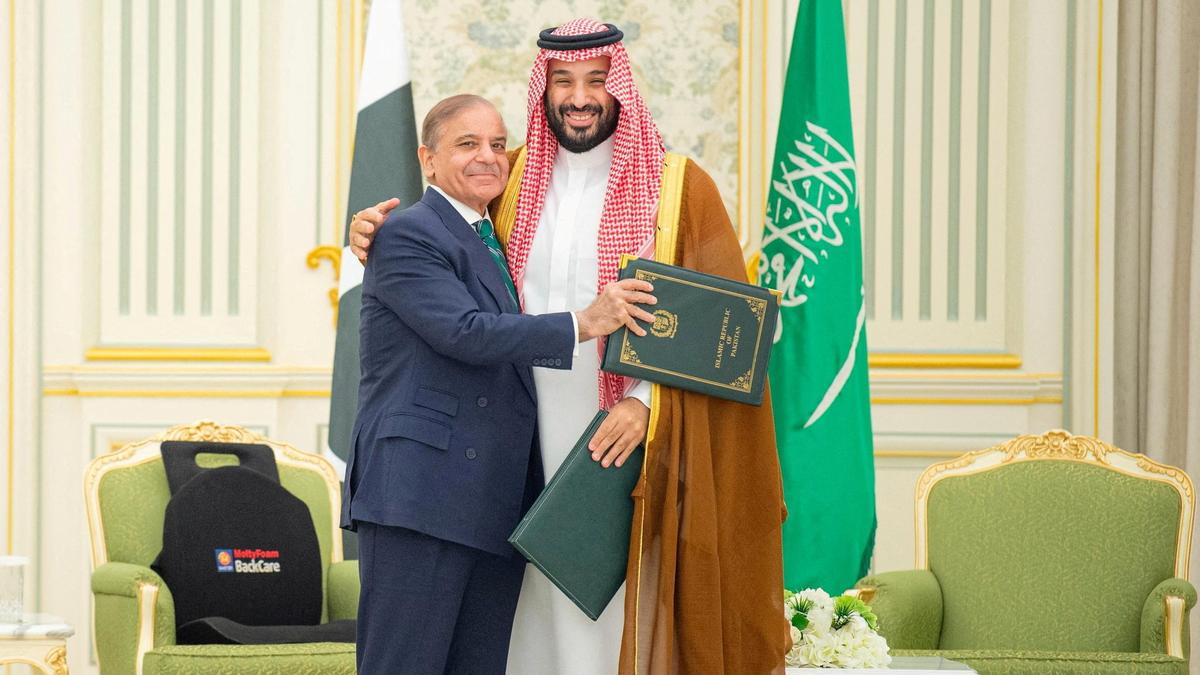
- 23 Sep 2025
In News:
- Recently, Saudi Arabia and Pakistan signed a Strategic Mutual Defence Agreement (SMDA) in Riyadh, formalising a long-discussed framework for joint defence and mutual security.
- The agreement, viewed as a landmark in bilateral ties, symbolises a renewed effort to institutionalise their security partnership amid changing regional dynamics and waning U.S. influence in West Asia.
Nature and Scope of the Pact
- The SMDA commits both nations to collective defence, stipulating that any attack on one country will be treated as an attack on both.
- It builds upon the 1982 Bilateral Security Cooperation Agreement, strengthening channels of military coordination, intelligence exchange, training, and arms trade.
- The pact extends across conventional defence cooperation, advisory roles, and — in principle — joint deterrence, though not explicitly nuclear.
Strategic Context
- The timing of the agreement follows rising regional uncertainty, including Israel–Qatar tensions, Yemen conflict spillovers, and Iran–Saudi rivalry.
- By signing the SMDA, Riyadh signals its intent to pursue greater regional self-reliance in defence, moving beyond full dependence on the U.S. security umbrella.
- For Pakistan, it secures much-needed economic and energy support from Saudi Arabia amid a deep fiscal crisis, while reaffirming its role as a key security partner in the Islamic world.
Key Drivers
- Mutual Security Assurance: Establishes a framework for joint deterrence and defence coordination.
- Economic Complementarity: Opens avenues for Saudi financial assistance, arms procurement, and energy trade with Pakistan.
- Symbolic Islamic Solidarity: Positions Pakistan as a pan-Islamic security contributor, enhancing its strategic visibility.
- Regional Rebalancing: Demonstrates Saudi Arabia’s effort to diversify security partnerships beyond Washington and regional blocs.
Implications
1. For India
- Strategic Caution: While the pact theoretically enables Pakistan to seek Saudi backing in a potential India–Pakistan confrontation, Riyadh’s growing ties with India — including $42.9 billion in bilateral trade, defence collaboration, and major investments — make an overt anti-India stance unlikely.
- Diplomatic Opportunity: New Delhi can leverage its energy and economic partnerships to maintain Saudi neutrality in South Asian affairs.
- Policy Imperative: India must sustain strategic dialogue and ensure Arab neutrality in regional crises through proactive diplomacy.
2. Regional and Global Dimension
- Shift in Gulf Security Architecture: Reflects a decline in U.S. dominance and emergence of a multipolar Gulf order, with Riyadh exploring independent alliances.
- Iran–Saudi–Pakistan Equation: Enhances Saudi deterrence posture against Iran, Yemeni Houthis, and potentially Israel’s unilateral actions.
- Nuclear Sensitivities: Raises concerns about possible nuclear collaboration, though the actual transfer of Pakistani nuclear technology to Saudi Arabia remains highly improbable, constrained by global non-proliferation norms and Israeli sensitivities.
Way Forward for India
- Deepen Defence and Security Cooperation: Expand joint training, exercises, and intelligence exchanges with Saudi Arabia.
- Energy Diplomacy: Pursue long-term crude oil and green hydrogen partnerships to consolidate interdependence.
- Strategic Monitoring: Closely track SMDA implementation, including possible Pakistani troop deployments or defence projects.
- Maritime Synergy: Strengthen India’s presence in the Arabian Sea through naval cooperation to protect vital energy routes.
- Economic Leverage: Utilize India’s market potential and diaspora network as stabilising anchors in Indo-Saudi relations.
GST 2.0
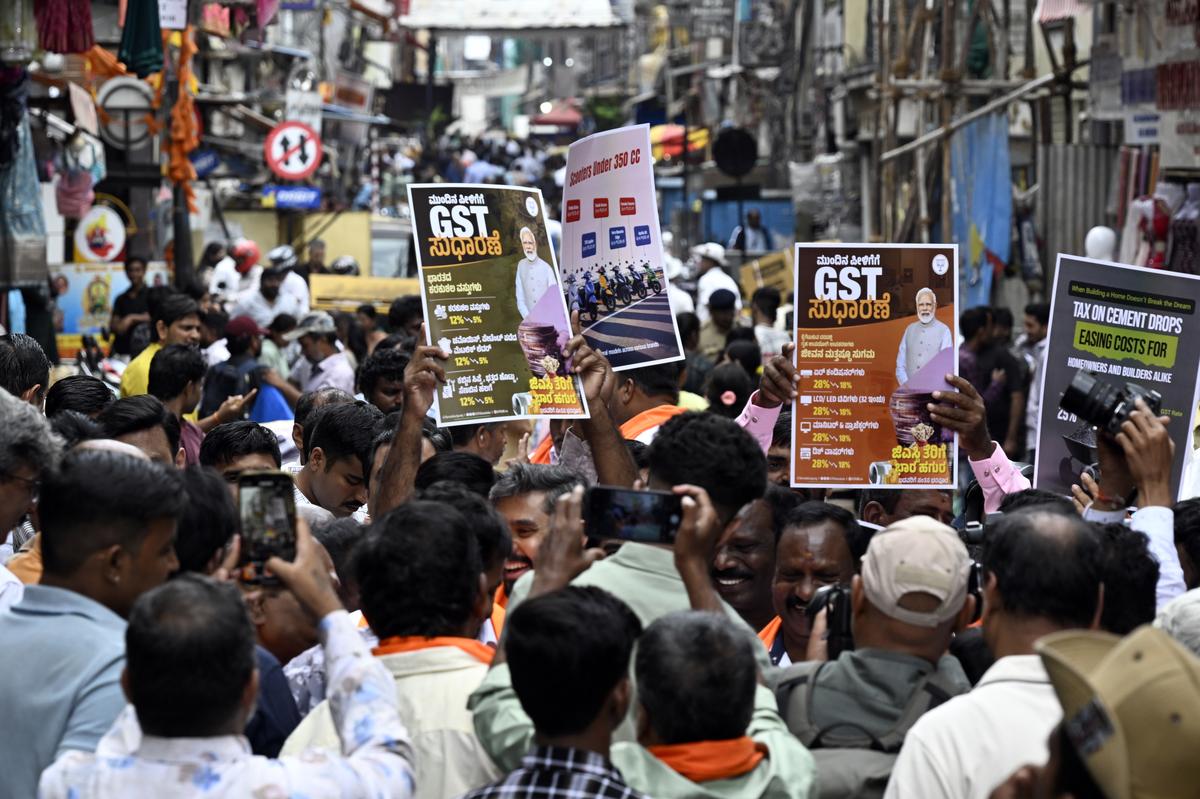
- 23 Sep 2025
In News:
The Government of India launched GST 2.0, marking a significant revamp of the Goods and Services Tax framework. Prime Minister Narendra Modi described the initiative as the “GST Bachat Utsav”, highlighting its focus on savings, simplicity, and growth.
Overview
- GST 2.0 represents the most comprehensive reform since the introduction of the Goods and Services Tax in 2017.
- It focuses on rationalising tax rates, reducing compliance burden, and boosting consumption and investment by lowering tax rates on more than 375 items.
Objectives
- Enhance household savings: By cutting rates on essential goods and services, it seeks to leave more disposable income with consumers, thereby stimulating demand.
- Simplify the tax framework: Aligns similar goods under the same slab to minimise disputes and litigation.
- Promote ease of doing business: Reduces procedural complexities and enhances transparency through digital solutions.
Key Features
- Simplified Tax Structure:Moves towards a broad two-slab system—5% (merit rate) and 18% (standard rate)—with a 40% slab for demerit or luxury goods.
- Consumer-Centric Relief:Tax reductions on essential food items, life and health insurance, and beauty and wellness services.
- Technology-Driven Compliance:Introduces digital registration, pre-filled returns, and automated refund systems, including 90% provisional refunds for Integrated Dispute Settlement (IDS) cases.
- Input-Output Correction:Aligns related goods under the same tax bracket to avoid input-output tax mismatches.
- Support for Key Sectors:Rate cuts to encourage investment and growth in textiles, agriculture, construction, and services industries.
Revised Tax Slabs
|
Rate |
Category / Examples |
|
0.25% |
Rough diamonds, precious stones |
|
1.5% |
Cut and polished diamonds |
|
3% |
Precious metals (gold, silver, pearls) |
|
5% |
516 items including food, agricultural machinery, medical devices, hydrogen vehicles, health & life insurance, salons |
|
18% |
640 items including machinery, chemicals, paints, automobile parts, small cars/bikes |
|
40% (Demerit Rate) |
Pan masala, tobacco, aerated beverages, luxury yachts, private aircraft, high-end vehicles |
|
Special Provision |
Bricks remain under dual option — 6% (without ITC) or 12% (with ITC) |
Significance: GST 2.0 is expected to spur demand, enhance compliance, and boost industrial growth, positioning India’s indirect tax system among the most simplified globally.
Iridogorgia Chewbacca
- 22 Sep 2025
In News:
Marine scientists have identified a new species of deep-sea coral, named Iridogorgiachewbacca, after the iconic Star Wars character Chewbacca. The name was inspired by the coral’s long, curly, and “hairy” branches resembling the furry appearance of the Wookiee warrior from the franchise.
Discovery and Habitat
- The coral was first observed in 2006 off the coast of Moloka?i (Hawaii) and later near the Mariana Trench in 2016, within the tropical western Pacific Ocean.
- It has now been officially described and classified as a new species in the genus Iridogorgia, following extensive research and genetic testing conducted by an international team of scientists, including Professor Les Watling from the University of Hawai?i at M?noa.
- The discovery was formally published in the scientific journal Zootaxa, highlighting its contribution to deep-sea biodiversity research.
About Iridogorgiachewbacca
- Taxonomy: Belongs to the genus Iridogorgia under the class Anthozoa, a group of deep-sea soft corals.
- Physical Features:Characterised by long, flexible, spiral-like branches with a shiny surface that reflects light in unique ways. These hair-like branches give it a distinct “furry” appearance.
- Growth Pattern: The coral grows upright and solitary on deep-sea rocky substrates, often hundreds to thousands of metres below sea level.
- Colony Structure: Each coral colony is made up of thousands of small polyps working together as a single organism.
Scientific Significance
The identification of Iridogorgiachewbacca underscores the vast biodiversity of the deep ocean, much of which remains unexplored. Even in relatively well-studied regions such as the western Pacific, new species continue to be discovered, highlighting the importance of deep-sea research and conservation.
Understanding Corals
- Biological Nature: Corals are marine animals, not plants, and remain sessile (attached to the seabed).
- Symbiotic Relationship: They coexist with microscopic algae called zooxanthellae, which provide nutrients through photosynthesis.
- Feeding: Corals also use their tiny, tentacle-like structures to capture food particles from the surrounding water.
- Ecological Role: Coral ecosystems support immense marine biodiversity, acting as habitats, breeding grounds, and protection zones for numerous marine species.
Why It Matters
- Expands scientific understanding of deep-sea ecosystems and their unique biodiversity.
- Reinforces the need for marine conservation amid increasing threats from deep-sea mining, climate change, and ocean acidification.
- Demonstrates how popular culture references can enhance public engagement with scientific discoveries, making marine science more accessible.
Pradhan Mantri Mudra Yojana (PMMY)
- 22 Sep 2025
In News:
Launched in 2015, the Pradhan Mantri Mudra Yojana (PMMY) is a flagship financial inclusion initiative of the Government of India. The scheme seeks to provide affordable credit to micro and small enterprises (MSEs) engaged in non-farm income-generating activities, thereby integrating them into the formal financial ecosystem.
Objective
- PMMY aims to “fund the unfunded” by facilitating access to institutional credit for small entrepreneurs who traditionally lack collateral or formal financial history.
- The scheme empowers these enterprises through loans provided by Public Sector Banks (PSBs), Regional Rural Banks (RRBs), Cooperative Banks, Private Banks, Foreign Banks, Micro Finance Institutions (MFIs), and Non-Banking Financial Companies (NBFCs).
Key Features and Loan Details
- Loan Amount: Up to ?10 lakh for non-farm income-generating activities across sectors such as manufacturing, processing, trading, and services.
- Eligibility: Any Indian citizen with a viable business plan for such activities can apply for a MUDRA loan through approved institutions.
- Subsidy: PMMY does not directly offer subsidies; however, if linked to other government schemes with capital subsidies, those benefits can be availed concurrently.
Categories of MUDRA Loans
|
Category |
Loan Range |
Target Group |
|
Shishu |
Up to ?50,000 |
New or micro enterprises in the early stage |
|
Kishore |
?50,000 – ?5 lakh |
Businesses seeking growth or consolidation |
|
Tarun |
?5 lakh – ?10 lakh |
Enterprises looking to expand operations |
Achievements under MUDRA 1.0
- Credit Outreach: Over ?27.75 lakh crore has been disbursed to nearly 47 crore beneficiaries, expanding access to formal credit for small entrepreneurs.
- Social Inclusion: Around 69% of loan accounts are held by women, while 51% belong to SC, ST, and OBC categories — strengthening financial inclusion and social equity.
- Employment Generation: The scheme has spurred job creation and self-employment, particularly in rural and semi-urban areas, fostering local entrepreneurship and economic decentralisation.
Vision for MUDRA 2.0
To further enhance the scheme’s reach and impact, the proposed MUDRA 2.0 envisions the following reforms:
- Wider Outreach: Greater focus on underserved rural and semi-urban regions through digital platforms and community-level facilitation.
- Financial Literacy & Mentorship: National-level programmes to improve awareness about budgeting, savings, digital transactions, and credit management to ensure sustainable enterprise growth.
- Enhanced Credit Guarantee Scheme (ECGS): A robust guarantee mechanism to minimise lender risk and encourage more credit flow to micro enterprises.
- Real-Time Monitoring Framework: Technology-driven systems for tracking disbursal, utilisation, and repayment to ensure transparency and reduce misuse.
- Impact Evaluation: Periodic socio-economic assessments to measure outcomes on income generation, employment, and business viability.
Adamya Fast Patrol Vessel
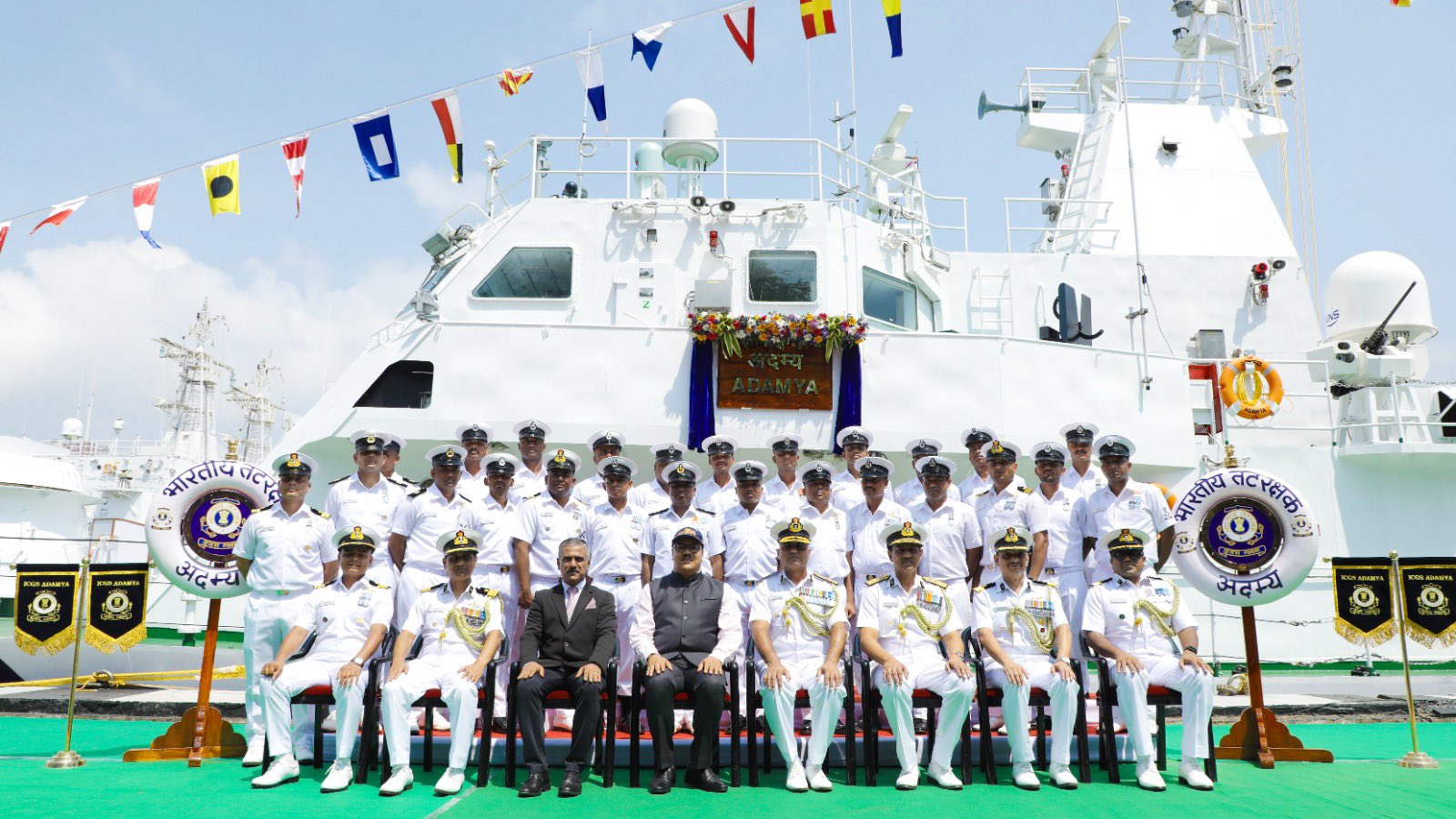
- 22 Sep 2025
In News:
The Indian Coast Guard Ship (ICGS) Adamya, the first in a new series of eight Adamya-class Fast Patrol Vessels (FPVs), was commissioned at Paradip Port, Odisha. The vessel, designed and built indigenously by Goa Shipyard Limited (GSL), marks another step forward in India’s Aatmanirbhar Bharat initiative in the defence sector.
About ICGS Adamya
- Meaning: “Adamya” translates to indomitable, symbolizing the Indian Coast Guard’s (ICG) resolve to safeguard the nation’s maritime interests.
- Operational Base: The ship will be based at Paradip, Odisha, under the administrative control of the Commander, ICG Region (North East).
- Crew Strength: The vessel is manned by five officers and 34 personnel.
- Primary Role: Coastal surveillance, anti-smuggling operations, anti-poaching patrols, and search and rescue missions within India’s maritime zones.
Key Specifications
|
Feature |
Specification |
|
Displacement |
Approx. 320 tons |
|
Speed |
Maximum 28 knots |
|
Endurance |
1500 nautical miles at economical speed |
|
Propulsion |
Two 3000 KW diesel engines |
|
Builder |
Goa Shipyard Limited |
|
Indigenous Content |
Over 60% |
Technological Highlights
- First-of-its-kind Propulsion:The Adamya is the first Indian vessel fitted with indigenously developed Controllable Pitch Propellers (CPPs) and gearboxes, enhancing manoeuvrability and fuel efficiency.
- Advanced Systems:Equipped with an Integrated Bridge System (IBS), Integrated Platform Management System (IPMS), and Automated Power Management System (APMS) to improve operational efficiency and automation.
- Weaponry:Armed with a 30 mm CRN 91 gun and two 12.7 mm stabilized remote-controlled machine guns, supported by advanced fire-control systems.
About Fast Patrol Vessels (FPVs)
Fast Patrol Vessels are medium-sized, high-speed ships used by the Indian Coast Guard for surveillance, policing, and search and rescue operations in coastal areas. They play a vital role in maintaining maritime safety, enforcing laws, and preventing smuggling and infiltration.
SwasthNari, SashaktParivarAbhiyaan

- 22 Sep 2025
In News:
Recently, Prime Minister Narendra Modi launched the ‘SwasthNari, SashaktParivar (SNSP) Abhiyaan’ and the 8thRashtriyaPoshanMaah from Dhar, Madhya Pradesh, marking one of India’s largest-ever health outreach campaigns for women and children. The initiative reflects the government’s commitment to promoting women-led development and holistic family well-being through accessible and equitable healthcare.
About the SwasthNari, SashaktParivarAbhiyaan
- The SNSP Abhiyaan is a joint initiative of the Ministry of Health & Family Welfare (MoHFW) and the Ministry of Women & Child Development (MoWCD).
- It aims to provide preventive, promotive, and curative health services to women and children, particularly in underserved regions.
- The campaign will organize over 10 lakh health camps between 17th September and 2nd October 2025 at Ayushman Arogya Mandirs, Community Health Centres (CHCs), District Hospitals, and other public health facilities across the country.
- This mass mobilisation aligns with the broader vision of Viksit Bharat (Developed India), where “Nari Shakti” (women power) forms the foundation of national progress.
Key Objectives
- Enhance Women’s Health through Screening and Care:Regular health check-ups for women, focusing on non-communicable diseases (NCDs) such as hypertension, diabetes, cancer, anaemia, tuberculosis, and sickle cell disease.
- Promote Maternal and Child Well-being:Strengthening antenatal care, immunisation, nutrition counselling, menstrual hygiene awareness, and adolescent health initiatives.
- Foster Behavioural Change and Health Education:Conducting awareness drives on healthy lifestyle practices, mental health, obesity prevention, and voluntary blood donation.
- Encourage Community Participation:Mobilisation through ASHAs, ANMs, Anganwadi workers, Self-Help Groups (SHGs), Panchayati Raj Institutions (PRIs), MY Bharat volunteers, and youth networks.
- Integrate Digital and Media Outreach:Real-time monitoring through the SASHAKT Portal, along with mass awareness via Doordarshan, All India Radio (AIR), and social media platforms.
Implementation Framework
- Nationwide Health Camps:Health facilities at all levels — from Ayushman Arogya Mandirs to tertiary hospitals — will provide free diagnostic tests, medicines, and specialist consultations.
- Specialist Services:Departments such as Gynaecology, Paediatrics, Ophthalmology, ENT, Dental, Dermatology, and Psychiatry will extend services through AIIMS, ESIC hospitals, Railway and Defence hospitals, and Institutes of National Importance (INIs).
- Public–Private Collaboration:Private hospitals and medical institutions have been encouraged to contribute to the outreach, ensuring broader reach and continuity of care.
- Community Health Monitoring:Volunteer initiatives like Nikshay Mitra will support tuberculosis prevention, while local youth networks promote healthy practices at the grassroots level.
Focus on Sickle Cell Anaemia
- During the launch, the Prime Minister handed over the 1 croreth Sickle Cell Card, underscoring the government’s National Sickle Cell Anaemia Mission. Over 5 crore individuals have been screened so far, especially in tribal-dominated regions, where the disease burden is highest. The mission aims at eliminating Sickle Cell Anaemia by 2047, ensuring improved tribal health outcomes.
Institutional and Grassroots Coordination
- Chief Ministers, Governors, Union Ministers, and local representatives across states participated in the launch events simultaneously. Ground-level implementation is being led by health workers, SHGs, PRIs, and community volunteers, ensuring last-mile outreach and inclusive participation.
Significance
- Largest Health Outreach in India: Over 10 lakh health camps make it the widest public health drive for women and children.
- Women-Centric Development: Strengthens India’s shift toward women-led welfare models under the vision of Viksit Bharat.
- Integrated Governance Model: Combines health, nutrition, and social empowerment across multiple ministries.
- Public Health Transformation: Promotes preventive healthcare, early detection, and equitable access to medical services.
- Focus on Tribal and Rural Health: Addresses critical health challenges in vulnerable and remote regions.
Kurmi Community

- 22 Sep 2025
In News:
Defying prohibitory orders, members of the Kurmi community in Jharkhand launched a rail blockade across several stations to demand Scheduled Tribe (ST) status and the inclusion of the Kurmali language in the Eighth Schedule of the Constitution. The agitation, organized under the banner of the Adivasi KurmiSamaj (AKS), disrupted train services across the South Eastern and East Central Railway divisions.
About the Kurmi Community
- Origins and Identity:The Kurmis (also known as Kunbi in some regions) are traditionally an agricultural community, predominantly Hindu, found across eastern Uttar Pradesh, southern Awadh, Bihar, Jharkhand, and parts of Odisha.The name “Kurmi” is derived from the Sanskrit word “Krishi” (agriculture), symbolizing their deep connection with farming.
- Historical Background:Historically, Kurmis are believed to be descendants of Kshatriya warriors who took to agriculture. Renowned for their hard work, soil management, and egalitarian culture, the community was lauded by both Mughal and British administrators for its agrarian contributions.
- Social Status:Currently, Kurmis are classified as Other Backward Class (OBC) in most Indian states. However, the community contends that their socio-cultural roots align more closely with tribal heritage, warranting ST recognition.
- Sub-Groups and Culture:The community is divided into several gotras (clans), including Chandel, Chauhan, Solanki, Tomar, Baghel, and Sengar. They are known for maintaining strong community networks and gender-inclusive social practices.
About the Kurmali Language
- Linguistic Affiliation:Kurmali belongs to the Indo-Aryan language family and is primarily spoken in Jharkhand, Bihar, and Odisha.
- Cultural Significance:It serves as a marker of Kurmi identity and is used in folk traditions, oral histories, and local communication.
- Demand for Recognition:Inclusion in the Eighth Schedule would ensure state-supported promotion, education, and preservation of the language, similar to other recognized regional languages.
Government Response and Implications
The Jharkhand administration has maintained a cautious approach, emphasizing the need for maintaining law and order while acknowledging the sensitivity of the community’s demands.The demand for ST status involves constitutional and demographic considerations, requiring evaluation by the Ministry of Tribal Affairs and approval by Parliament under Article 342 of the Constitution.
Gulf of Finland
- 21 Sep 2025
In News:
Estonia recently accused Russia of violating its airspace when three Russian MiG-31 fighter jets entered Estonian airspace over the Gulf of Finland, remaining there for approximately 12 minutes. The incident has heightened tensions between NATO and Russia, as Estonia is a NATO member and takes airspace security seriously in the strategically sensitive region.
About the Gulf of Finland
- Geography: The Gulf of Finland is the easternmost extension of the Baltic Sea, covering an area of 30,000 sq.km. It stretches 400 km from east to west and 19–130 km from north to south.
- Borders:
- North: Finland (including the capital, Helsinki)
- South: Estonia (including the capital, Tallinn)
- East: Russia (including St. Petersburg at the eastern tip)
- Physical Features:
- Average depth: 38 m
- Brackish water with low salinity (~6 ppt)
- Freezes over 3–5 months in winter
- Receives inflows from the Neva and Narva rivers and the Saimaa Canal
- Contains numerous banks, skerries, and islands, including Kotlin Island (Kronstadt), Beryozovye Islands, Lisiy Island, MalyVysotsky Island, among others.
- Climate: Humid continental, characterized by hot summers and relatively harsh winters.
Strategic Significance
The Gulf of Finland is strategically vital due to its location at the eastern edge of the Baltic Sea, proximity to major cities such as Helsinki, Tallinn, and St. Petersburg, and its role as a maritime and military corridor. The airspace and naval routes over the gulf are closely monitored by NATO and Russia, making any unauthorized incursion a serious geopolitical concern.
Implications
- For Estonia: The violation underscores the need for heightened air defense readiness along its borders.
- For NATO: The incident exemplifies the ongoing airspace tensions with Russia, reflecting broader geopolitical frictions in Northern Europe.
- For Russia: Demonstrates strategic airpower projection and interest in asserting influence over the Baltic region.
Yellow-Crested Cockatoos
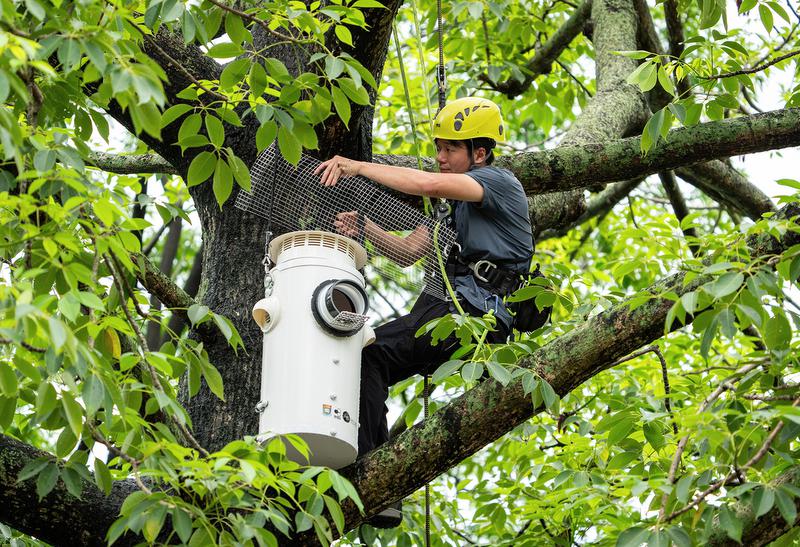
- 21 Sep 2025
In News:
Critically endangered yellow-crested cockatoos (Cacatuasulphurea) have established an unexpected refuge among Hong Kong’s urban landscape, including its parks and university campuses. Once native to Indonesia and East Timor, these snow-white birds with striking yellow crests now face multiple survival challenges, both globally and locally.
Population and Distribution
- The global wild population of yellow-crested cockatoos is estimated at up to 2,000 mature individuals, with around 10% residing in Hong Kong, largely as descendants of released or escaped caged birds.
- Historically, the species was widespread across central and eastern Indonesia and East Timor, but habitat loss has led to dramatic declines on many islands.
- In Hong Kong, they have adapted to urban life but depend on tree cavities for nesting, similar to their natural habitats.
Ecology and Behavior
- Appearance: Medium-sized cockatoo, predominantly white plumage, with a yellow or orange retractable crest.
- Habitat: Forests, forest edges, scrublands, and cultivated areas from sea level up to 1,500 meters.
- Diet: Omnivorous—seeds, fruits, nuts, berries, occasionally insects, small reptiles, and roots.
- Social Behavior: Monogamous, gregarious, and capable of mimicking sounds.
- Breeding Season: September to May.
Threats to Survival
- Habitat Loss: Typhoons, deforestation, and government-led tree trimming in urban areas reduce natural nesting sites.
- Illegal Pet Trade: Poaching continues to threaten wild populations in native habitats.
- Climate Change: Rising temperatures dry out forests, increasing susceptibility to fires and other environmental stresses.
Conservation Initiatives
To counter declining nesting opportunities, Hong Kong conservationists have implemented a practical solution: artificial nest boxes that replicate natural tree cavities.
Aflatoxin
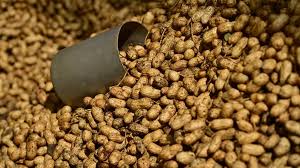
- 21 Sep 2025
In News:
Indian exporters have expressed concerns regarding delays by Indonesia in notifying aflatoxin contamination detected in groundnut shipments from India. This has raised issues about trade compliance and the need for timely communication in international agricultural trade.
Understanding Aflatoxins
- Aflatoxins are highly toxic substances classified as mycotoxins, produced by certain species of fungi. The main fungi responsible are Aspergillus flavus and Aspergillus parasiticus, which belong to the broader Aspergillus group.
- These fungi primarily thrive on agricultural crops, but can also be found in soil, decaying food, and compost. They develop as spores and form networks of microscopic filaments capable of growing on products such as grains, nuts, and other food items.
Sources and Conditions of Contamination
- Aflatoxin contamination commonly occurs in groundnuts, tree nuts, maize, rice, figs, spices, crude vegetable oils, and cocoa beans.
- Contamination can happen before harvest or during storage, especially in warm and humid conditions, which favor fungal growth.
Health Implications
Aflatoxins are genotoxic and carcinogenic, posing serious health risks to both humans and animals. Long-term exposure may lead to liver damage, immunosuppression, and increased cancer risk.
Modes of Human Exposure
- Dietary Intake: Consuming contaminated plant products like peanuts or animal products (meat, milk) from animals fed contaminated feed.
- Occupational Exposure: Farmers, processors, and other agricultural workers may inhale dust containing fungal spores during handling, harvesting, or processing contaminated crops.
This incident underscores the importance of stringent quality control and timely international reporting to prevent health risks and maintain confidence in agricultural trade.
Registered Unrecognised Political Parties (RUPPs)
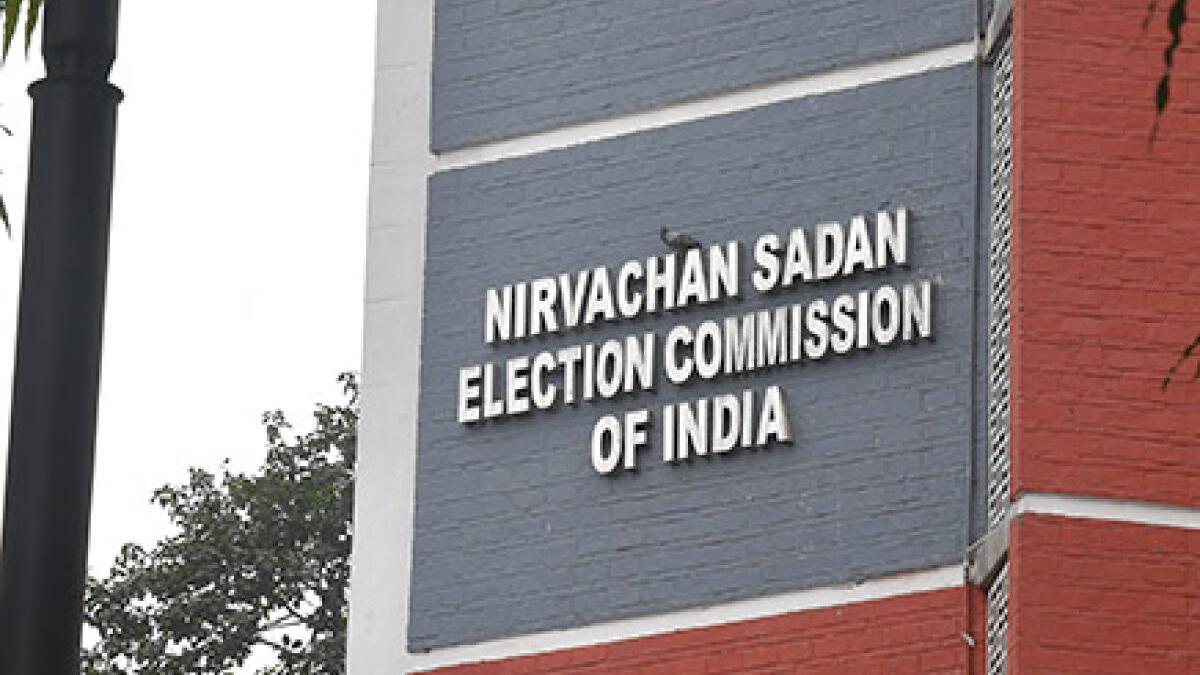
- 21 Sep 2025
In News:
The Election Commission of India (ECI) has de-listed 474 Registered Unrecognised Political Parties (RUPPs) for failing to comply with statutory norms, including not contesting elections in the last six years, as part of its ongoing efforts to clean up the electoral system. This move follows the first phase of de-listing, which removed 334 RUPPs.
About Registered Unrecognised Political Parties (RUPPs)
RUPPs are political entities that are registered with the ECI under Section 29A of the Representation of the People Act (RPA), 1951 but do not yet qualify as state or national parties. They may fall into the following categories:
- Newly registered parties.
- Parties that have not secured sufficient votes to gain state-level recognition.
- Parties that have never contested elections since registration.
Benefits for RUPPs include:
- Tax exemptions under Section 13A of the Income Tax Act, 1961.
- Eligibility for common poll symbols, subject to fielding at least 5% of candidates in state assembly elections.
- Permission to nominate up to 20 ‘star campaigners’ for election canvassing.
Obligations include:
- Contesting elections periodically.
- Filing annual audited accounts and contribution reports.
- Disclosing donations exceeding Rs. 20,000 and restricting cash donations above Rs. 2,000.
Failure to meet these obligations can result in de-listing, as seen in the recent action by the ECI.
Registration and Recognition of Political Parties
Political parties in India are registered with the ECI to avail legal and electoral benefits, including:
- Acceptance of voluntary contributions from individuals and private entities (except government companies).
- Preference in allotment of election symbols to candidates.
- Tax exemptions on donations under Section 13A of the Income Tax Act.
Registered parties that meet additional criteria may gain recognition as State or National Parties, with exclusive privileges:
- Reservation of a unique election symbol.
- Access to free broadcast facilities on Doordarshan and All India Radio.
- Higher campaign expenditure allowances.
- Free copies of electoral rolls before elections.
Criteria for Recognition
State Party: A political party is recognized as a state party if it meets any of the following conditions:
- Wins 3% of seats in the Legislative Assembly in general elections.
- Wins one Lok Sabha seat for every 25 seats allotted to the state.
- Secures at least 6% of votes in a state and wins one Lok Sabha or two Legislative Assembly seats.
- Secures 8% of votes in a state in Lok Sabha or Assembly elections.
National Party: A political party is recognized as a national party if it satisfies any of the following:
- Secures 6% of votes in four or more states in Lok Sabha or Assembly elections and has at least four Lok Sabha members.
- Holds 2% of total Lok Sabha seats with candidates from at least three states.
- Recognized as a state party in at least four states.
Recognition is subject to continuous compliance in subsequent elections; failure to meet the criteria can lead to loss of status.
Significance of De-listing
The de-listing of 474 RUPPs strengthens the electoral system by:
- Ensuring active participation of political parties in the democratic process.
- Promoting transparency in funding and campaign practices.
- Reducing the clutter of inactive or non-compliant parties, thereby making election management more efficient.
This move reflects the ECI’s proactive approach in maintaining a robust and credible electoral framework, which is essential for a healthy democracy in India.
INS Rajali
- 21 Sep 2025
In News:
The Indian Navy’s Eastern Naval Command hosted a two-day seminar on Long-Range Maritime Reconnaissance (LRMR) at INS Rajali, Arakkonam. The event underscored India’s growing maritime responsibilities, technological advancements, and strategic commitment to ensuring security in the Indian Ocean Region (IOR).
Objectives and Key Outcomes
The seminar brought together senior naval commanders, operational experts, and industry representatives, including from Boeing Ltd, to deliberate on the evolving role of LRMR platforms in safeguarding India’s maritime interests.
Key highlights included:
- Release of a compendium of scholarly papers on maritime domain awareness and surveillance.
- Discussions on the operational roles of Boeing P-8I Poseidon aircraft and High-Altitude Long Endurance (HALE) drones, such as the MQ-9B Sea Guardian, in anti-submarine warfare (ASW), multi-domain reconnaissance, and long-range surveillance.
- Recognition of the Navy’s drive to build indigenous capacity while maintaining strategic partnerships with global defence leaders to enhance maritime security cooperation.
INS Rajali: Strategic Maritime Aviation Base
INS Rajali, commissioned on March 11, 1992, is a premier Naval Air Station located near Arakkonam, Tamil Nadu, about 80 km west of Chennai.
- It is spread across 2,200 acres and houses over 4,700 personnel.
- Named after ‘Rajali’, a hawk native to Tamil Nadu’s coast, symbolizing vigilance and speed.
- It operates under the Eastern Naval Command and has the longest military runway in Asia, enabling operations of long-range aircraft.
- The station performs dual roles in operations and training, including hosting the Helicopter Training School (HTS).
INS Rajali has emerged as the hub of India’s maritime reconnaissance and surveillance operations, crucial for maintaining real-time situational awareness over the IOR.
INAS 312: A Milestone Achievement
The seminar also celebrated a historic milestone — the completion of 50,000 flying hours by INAS 312, the Navy’s premier Long-Range Maritime Reconnaissance Squadron based at INS Rajali.
- INAS 312 operates the Boeing P-8I Poseidon aircraft, a state-of-the-art platform known for anti-submarine warfare, surveillance, and maritime strike missions.
- The squadron’s operations have enhanced India’s ability to monitor sea lanes, detect hostile submarines, and secure trade routes across the Indo-Pacific.
- This achievement marks a first in Indian Naval Aviation history, reflecting the squadron’s professionalism and pivotal contribution to national security.
Technological Edge: Integration of LRMR Platforms
The integration of P-8I aircraft with MQ-9B Sea Guardian drones represents a transformative leap in India’s maritime surveillance ecosystem.
- These systems enable persistent intelligence gathering, real-time situational awareness, and high-endurance operations across vast oceanic stretches.
- The synergy between manned and unmanned assets significantly enhances Maritime Domain Awareness (MDA), ensuring rapid response to traditional and non-traditional threats, including piracy, smuggling, and humanitarian emergencies.
Strategic Significance
The LRMR initiative aligns with India’s vision of being a “Net Security Provider” in the Indo-Pacific.
By strengthening reconnaissance and surveillance capabilities, India is:
- Expanding its operational reach and deterrence posture.
- Enhancing interoperability with partner navies.
- Supporting Humanitarian Assistance and Disaster Relief (HADR) missions.
- Contributing to a Free, Open, and Rules-Based Indo-Pacific order.
Exercise Pacific Angel 2025
- 20 Sep 2025
In News:
India has joined the United States and Sri Lanka in Exercise Pacific Angel 2025, the largest multilateral disaster response and humanitarian assistance drill in the Indo-Pacific. The exercise signifies growing regional collaboration in humanitarian aid, disaster relief (HADR), and emergency preparedness amid increasing natural and geopolitical challenges in the Indian Ocean region.
About Exercise Pacific Angel 2025
- Host: Sri Lanka (Katunayake Air Base)
- Participants: United States, Sri Lanka, India, Australia, Bangladesh, Japan, and Maldives.
- Troop Strength: Nearly 90 U.S. and 120 Sri Lankan Air Force personnel, along with contingents and observers from partner nations.
- Assets Deployed:
- U.S.: Two C-130J aircraft
- Sri Lanka: Bell 412, B-212 helicopters, and a King Air 350 aircraft
Key Focus Areas
- Search and Rescue (SAR) operations
- Medical readiness and mass casualty response
- Aviation safety and engineering support
- Aeromedical evacuation drills and air mobility exercises
Linked Regional Drills and Strategic Context
The Pacific Angel series forms part of a broader network of U.S.-led multilateral exercises in South Asia aimed at improving interoperability, crisis response, and regional security.
1. Exercise Tiger Lightning 2025
- Host: Bangladesh
- Participants: Bangladesh Army and U.S. Army Pacific
- Objective: Strengthen counter-terrorism, peacekeeping, jungle warfare, and medical evacuation capabilities.
- Highlights: Simulation-based drills, rescue operations, and counterinsurgency coordination.
2. Exercise Tiger Shark 2025 (Flash Bengal Series)
- Host: Bangladesh
- Participants: Bangladesh Navy’s Special Warfare Diving & Salvage Unit, Para Commando Brigade, and U.S. Special Forces.
- Aim: Enhance maritime security, small-unit tactics, and special operations readiness.
- Training Components: Patrol boat handling, small-arms marksmanship, and maritime interdiction.
3. RQ-21 Blackjack UAS Program
- Location: Bangladesh
- Partnership: U.S. Army & Navy with Bangladesh Army and Navy.
- Purpose: Develop indigenous unmanned aerial surveillance capabilities for border monitoring, maritime domain awareness, and UN peacekeeping missions.
- Structure: Establishment of a joint Army-Navy UAS regiment.
Strategic and Geopolitical Significance
- Enhancing Humanitarian Preparedness:Pacific Angel 25 reinforces the ability of Indo-Pacific nations to jointly respond to natural disasters such as cyclones, tsunamis, and earthquakes, ensuring rapid humanitarian assistance and coordination.
- Building Regional Trust and Interoperability:Joint training fosters mutual understanding, operational coordination, and shared standard operating procedures (SOPs) among participating air forces and disaster response agencies.
- Geostrategic Balancing:The U.S. engagement through multilateral drills in Sri Lanka and Bangladesh, both immediate neighbours of India, signals Washington’s intent to expand its strategic presence in South Asia. This move is viewed within the broader Indo-Pacific strategy aimed at maintaining a “free, open, and resilient region” while counterbalancing China’s growing influence.
- India’s Role:India’s participation aligns with its Neighbourhood First, Security and Growth for All in the Region (SAGAR), and Act East policies. It also strengthens HADR diplomacy, reinforcing India’s image as a net security provider in the Indian Ocean.
Draft Civil Drone (Promotion and Regulation) Bill, 2025
- 20 Sep 2025
In News:
- The Ministry of Civil Aviation (MoCA) has released the draft Civil Drone (Promotion and Regulation) Bill, 2025 for public consultation.
- The legislation seeks to create a comprehensive legal framework for the operation, promotion, and regulation of Unmanned Aircraft Systems (UAS) in India, replacing the existing Drone Rules, 2021.
Objective
- The Bill aims to balance innovation with accountability—promoting the growth of India’s drone ecosystem while ensuring public safety, national security, and privacy.
- It aligns with the government’s vision of leveraging drone technology for governance, logistics, agriculture, and surveillance under the Digital Indiaand Make in India initiatives.
Key Provisions
1. Regulatory Authority
- The Directorate General of Civil Aviation (DGCA) will serve as the principal regulator for drone operations.
- The Ministry of Civil Aviation (MoCA) will oversee policy, promotion, and implementation aspects.
2. Scope and Exemptions
- The Bill applies to all civil unmanned aircraft systems (UAS).
- Exempted: UAS operated by the Armed Forces (Army, Navy, Air Force) and those weighing above 500 kilograms.
3. Registration and Certification
- Mandatory Registration: Every drone must obtain a Unique Identification Number (UIN) from DGCA.
- Type Certification: Manufacturing, sale, or operation of drones requires DGCA-approved Type Certificates ensuring safety and airworthiness.
- Remote Pilot Certification: Operators must hold a valid remote pilot license from DGCA or authorized entities.
4. Airspace Regulation — Digital Sky Zones
To ensure safe integration of drones into civil airspace, the Bill formalizes Digital Sky Zones:
- Green Zone: Free flying permitted without prior clearance.
- Yellow Zone: Requires Air Traffic Control (ATC) clearance.
- Red Zone: Restricted areas; operations allowed only with Central Government approval.
5. Safety, Security, and Insurance
- Mandatory third-party insurance for all drone operators to cover liability.
- Safety Features: Anti-tampering, traceability mechanisms, and airworthiness compliance are compulsory.
- Victim Compensation:
- ?2.5 lakh for death
- ?1 lakh for grievous injury
- Claims to be adjudicated by the Motor Accident Claims Tribunal.
6. Penalties and Enforcement
The Bill introduces stringent penalties to ensure responsible drone usage:
- Imprisonment: 3 months to 3 years.
- Fine: Up to ?1 lakh, or both.
- Violations of the Bharatiya Nyaya Sanhita (BNS), 2023 and Bharatiya Nagrik Suraksha Sanhita (BNSS), 2023related to drone misuse will be cognisable offences.
- Confiscation Powers: DGCA officers, authorized personnel, or police may seize drones, electronic devices, or records if rules are violated.
7. Industry and Stakeholder Involvement
The Bill encourages industry participation and innovation while enforcing compliance. The Drone Federation of India noted that the previously liberalised Drone Rules, 2021 have now been made more stringent in response to security and safety concerns.
Significance
- Strengthens legal enforcement and ensures accountability in drone operations.
- Protects national airspace integrity and citizens’ privacy.
- Supports India’s goal of becoming a global drone hub by 2030 — an industry projected to reach USD 11 billion in value.
- Ensures balance between promotion and regulation, crucial for sectors like agriculture, logistics, disaster management, and infrastructure monitoring.
Aquamonitrix – Portable Ion Chromatograph
- 20 Sep 2025
In News:
A team of scientists from the University of Tasmania, Australia, in collaboration with Aquamonitrix, has developed a portable ion chromatograph that enables real-time, on-site detection of nitrate and nitrite levels in environmental samples.
This innovative device — named Aquamonitrix — is a low-cost, field-deployable version of laboratory ion chromatographs, designed to make analytical chemistry more accessible, sustainable, and educationally enriching.
What is Aquamonitrix?
Aquamonitrix is a compact, low-pressure ion chromatograph capable of separating and detecting anions such as nitrate and nitrite outside traditional laboratory settings. It offers an eco-friendly, battery-operated, and user-friendly alternative to expensive laboratory chromatographs, making it particularly suitable for educational institutions and field researchers.
How It Works
- Sample Preparation: Soil pore water — water held between soil particles — is extracted using a portable vacuum pump, filtered on-site, and directly injected into the device.
- Separation: The chromatograph employs a short column through which a sodium chloride (NaCl) solution acts as a carrier, separating anions based on their chemical properties.
- Detection: Equipped with a UV absorbance detector, it identifies nitrate and nitrite by their distinct absorption peaks in the low UV region.
- Power and Portability: The device operates on a battery, enabling use in remote or field environments such as rivers, greenhouses, and water treatment plants.
Applications and Research Potential
- Environmental Monitoring: Real-time tracking of nitrate and nitrite in rivers, soil, and groundwater.
- Nitrogen Cycle Analysis: Can measure nitrite, nitrate, and ammonia, supporting studies on nutrient conversion in soil and aquatic systems.
- Water Treatment and Agriculture: Enables long-term nutrient monitoring in greenhouses and water management projects.
- Future Development: The research team is working on an arsenic-detecting variant of the instrument — critical for groundwater safety in countries like India and Bangladesh, where arsenic contamination remains a pressing issue.
Significance and Impact
- The Aquamonitrix portable ion chromatograph represents a significant step towards democratizing scientific tools by making high-quality analytical instruments more accessible, affordable, and field-compatible.
- It demonstrates how innovation in instrumentation can serve multiple goals — advancing STEM education, promoting environmental sustainability, and supporting grassroots-level scientific research.
- By integrating education, technology, and environmental stewardship, this innovation aligns with the United Nations Sustainable Development Goals (SDGs) — particularly SDG 4 (Quality Education), SDG 6 (Clean Water and Sanitation), and SDG 13 (Climate Action).
Frontier Tech Repository
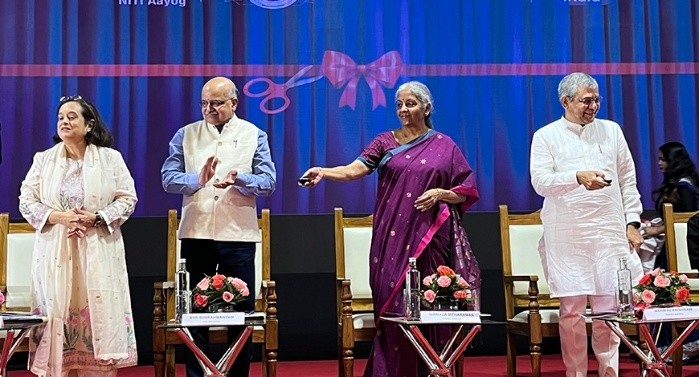
- 20 Sep 2025
In News:
- In a major stride towards achieving Viksit Bharat (Developed India) by 2047, NITI Aayog has launched two landmark initiatives under its Frontier Tech Hub — the ‘AI for Viksit Bharat Roadmap: Opportunity for Accelerated Economic Growth’ and the ‘Frontier Tech Repository’.
- These initiatives aim to harness the transformative potential of Artificial Intelligence (AI) and other frontier technologies to catalyse inclusive growth and innovation across sectors.
AI for Viksit Bharat Roadmap
The AI for Viksit Bharat Roadmap, launched by Finance Minister Smt. Nirmala Sitharaman and Minister for Electronics & IT Shri Ashwini Vaishnaw, outlines a practical and strategic framework to accelerate India’s AI-led growth. It focuses on two primary levers:
- Accelerating AI adoption across industries to boost productivity, efficiency, and innovation.
- Transforming Research and Development (R&D) through Generative AI, enabling India to leapfrog into global innovation leadership.
The roadmap emphasizes AI’s potential to drive robust, inclusive, and technology-driven economic growth, while underscoring the need for a collaborative ecosystem involving government, industry, academia, and startups.
Frontier Tech Repository
- Complementing the roadmap, the Frontier Tech Repository is a digital knowledge platform that showcases over 200 real-world impact stories across four critical sectors — Agriculture, Healthcare, Education, and National Security.
- It demonstrates how states, startups, and innovators are using technology to transform governance and improve livelihoods at the grassroots level.
- The repository serves as both a learning resource and a replication model, helping policymakers and administrators identify scalable frontier technology solutions.
Frontier 50 Initiative
- To ensure widespread adoption, NITI Aayog launched the Frontier 50 Initiative, which will support 50 Aspirational Districts and Blocks in selecting and deploying frontier technologies showcased in the repository.
- The goal is to accelerate service saturation across key Aspirational District Programme (ADP) and Aspirational Block Programme (ABP) themes — such as education, healthcare, and livelihood generation — through tech-enabled governance.
NITI Frontier Tech Impact Awards
- To further motivate innovation, NITI Aayog announced the Frontier Tech Impact Awards, which will recognize three states excelling in the use of technology for improving governance, education, health, and livelihoods. These states will receive support to scale their initiatives and create measurable, transformative outcomes.
About the NITI Frontier Tech Hub
- The Frontier Tech Hub serves as NITI Aayog’s platform to anticipate mega technological shifts and strategize India’s preparedness to harness emerging technologies for inclusive growth, supply chain resilience, and national security.
- It brings together experts from government, industry, and academia to assess opportunities and risks associated with frontier technologies such as AI, quantum computing, and biotechnology, thereby shaping policies for technology-driven development.
Eustoma
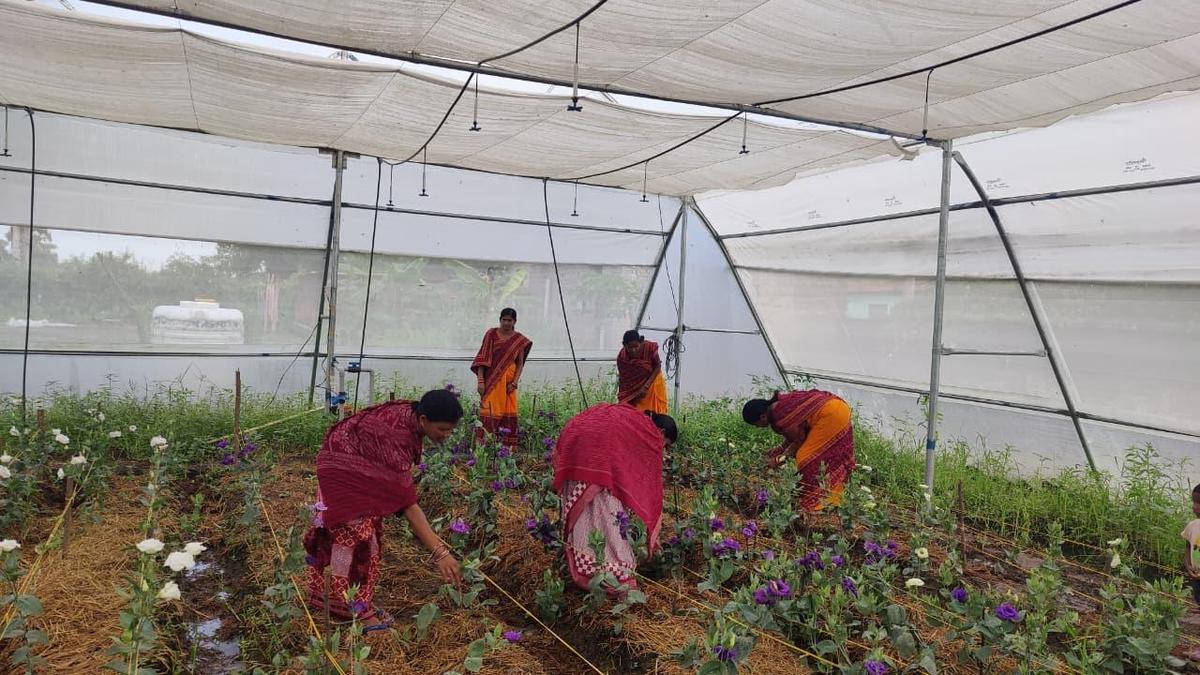
- 20 Sep 2025
In News:
The National Botanical Research Institute (NBRI), under the Council of Scientific and Industrial Research (CSIR), has achieved a remarkable breakthrough by successfully cultivating the Eustoma flower in Odisha. This marks the first instance of the exotic ornamental species blooming locally in the state, which until now depended solely on imports for its availability.
About Eustoma
- Scientifically known as Eustoma grandiflorum and commonly referred to as Lisianthus, Prairie Gentian, or Texas Bluebell, the flower is a perennial herbaceous ornamental species native to the grasslands of North America — including Mexico, the southern United States, the Caribbean, and northern South America. Globally, it ranks among the top ten popular cut flowers due to its elegance and commercial appeal.
Distinctive Features
- Eustoma is renowned for its rose-like blossoms, vibrant color range, long stems, and extended vase life, which have earned it the title of the “next rose” in the international flower trade. Its blooms exhibit a rich palette of colors — from pure white to shades of pink, purple, and blue — making it highly desirable for cut flower arrangements and potted ornamental use.
Growth Conditions and Habitat
- The plant thrives in warm, sunny climates and prefers well-drained yet moisture-retentive soil, enriched with garden compost or well-rotted manure. In its natural habitat, it grows in grasslands and disturbed areas, making it adaptable to varied environmental conditions when cultivated with appropriate care.
Significance of the Odisha Breakthrough
- The successful cultivation of Eustoma in Odisha represents a scientific and economic milestone. Previously, the flower had to be imported, which limited access for local floriculturists and increased costs. With NBRI’s intervention, local propagation techniques have now been developed, enabling indigenous production of this high-value ornamental crop.
- By adopting Eustoma cultivation, farmers in Odisha and other states with similar climatic conditions can benefit from higher income potential due to the flower’s global demand and premium market value.
Broader Implications
- The success underscores India’s growing capabilities in plant biotechnology, floriculture innovation, and agro-based entrepreneurship. It aligns with the government’s broader objectives of Atmanirbhar Bharat (self-reliant India) by reducing dependency on imports and promoting sustainable rural livelihoods through scientific advancements.
Polypropylene and Bioethanol Initiatives in Assam

- 19 Sep 2025
In News:
Prime Minister Narendra Modi recently laid the foundation stone for a Polypropylene (PP) Plant and inaugurated a Bioethanol Plant at Numaligarh Refinery Limited (NRL) in Golaghat, Assam. These projects mark a major step in strengthening India’s energy security, promoting clean energy, and enhancing industrial development in the Northeast.
About Polypropylene
Polypropylene (PP) is a thermoplastic polymer produced by the polymerization of propylene. Belonging to the polyolefin family, it is a lightweight, flexible, and heat-resistant material widely used in modern industries.
Key Properties:
- Chemical resistance: Highly resistant to acids, alkalis, and solvents, making it ideal for packaging cleaning products.
- Lightweight and durable: One of the lightest commodity plastics, suitable for high-temperature applications.
- Flammable: Requires controlled processing and handling.
- Insulating properties: Offers strong electrical insulation, used in casings, cables, and medical equipment.
Applications:
Polypropylene is extensively used in packaging, textiles, ropes, carpets, medical kits, automotive components, and agricultural tools. Its versatility makes it integral to both industrial and domestic use.
About the Polypropylene Plant at NRL
The Polypropylene Plant at Numaligarh Refinery aims to enhance India’s petrochemical capacity and reduce dependence on imports. It will serve as a key catalyst for industrial growth in Assam and contribute to the ‘Make in Assam’ and ‘Make in India’ initiatives.The plant will:
- Generate significant employment opportunities for the local population.
- Strengthen manufacturing sectors linked to plastics, textiles, and medical equipment.
- Promote regional economic diversification in the Northeast.
The Bioethanol Plant and Clean Energy Push
The newly inaugurated Assam Bioethanol Plant, also at NRL, produces bioethanol from bamboo—a sustainable feedstock abundantly available in the region. This initiative supports India’s Ethanol Blending Programme and aims to reduce reliance on imported fossil fuels.
Key Benefits:
- Encourages bamboo cultivation, benefitting farmers and tribal communities.
- Establishes bamboo chipping units and ensures steady raw material supply.
- Generates employment for thousands of people and boosts the rural economy.
- Promotes green energy and circular economy principles.
The government has allocated around ?200 crore annually to support bamboo-based ethanol production, which will provide a long-term economic boost to the region.
Strategic Significance
Prime Minister Modi emphasized that energy and semiconductors are two critical pillars of India’s self-reliance journey. Assam, through projects like these, is emerging as a key energy hub.
- India is now among the top five countries in solar power capacity.
- The government has launched the National Deepwater Exploration Mission to explore domestic oil and gas reserves under the “Samudra Manthan” initiative.
- A semiconductor factory worth ?27,000 crore is being set up in Morigaon, positioning Assam as a vital node in India’s electronics manufacturing ecosystem.
Cultural and Socio-Economic Integration
Beyond industrial growth, these projects are part of a broader vision to integrate Assam’s cultural heritage with modern development. The state’s traditional identity—symbolized by the Gamosa, Eri, and Muga silk—will now extend to polypropylene-based textiles and industries.
Initiatives such as Mission Basundhara, welfare schemes for tea garden workers, and the development of tourism circuits like the MaaKamakhya Corridor underscore inclusive growth in the region.
Centre for Cellular and Molecular Biology
- 19 Sep 2025
In News:
Scientists at the CSIR–Centre for Cellular and Molecular Biology (CCMB), Hyderabad, have uncovered a crucial mechanism explaining how white blood cells (WBCs) rapidly alter their internal structure to combat pathogens. The discovery reveals how immune cells adapt their cytoskeletons to move and respond swiftly during immune defence.
The Discovery
A research team led by Dr. Saikat Chowdhury at CCMB discovered how white blood cells form flat protrusions in the direction of pathogens, enabling them to move and engulf harmful microbes.
This process occurs within microseconds, allowing immune cells to dynamically remodel their internal structure to execute defence responses. The findings were published in the journal Nature Structural & Molecular Biology.
Mechanism Behind the Discovery:
- The shape and movement of cells depend on a dense, branched actin network near the cell membrane.
- Actin, a structural and dynamic protein, enables cells to push the membrane outward, forming protrusions.
- The CCMB team found that SPIN90, a regulatory protein, plays a pivotal role in generating new actin meshworks.
- SPIN90 works as a dimer with another protein complex, Arp2/3, to initiate the growth of new actin filaments in two opposite directions, separated by about 150°.
- These newly formed filaments serve as scaffolds, helping the cell reshape itself or move toward invading pathogens.
According to Dr. Chowdhury, SPIN90’s ability to build actin filaments bidirectionally helps cells create adaptable cytoskeletal frameworks, shedding light on how cells remodel themselves in both health and disease.
Scientific Significance
This discovery enhances understanding of:
- Cellular movement and immune response mechanisms.
- Cytoskeletal dynamics—a core process in cellular biology.
- Pathophysiological processes, such as cancer metastasis, immune disorders, and wound healing, where cell shape and motility are crucial.
It also opens new avenues for biomedical research in designing therapies that target cell motility and immune regulation.
About the CSIR–Centre for Cellular and Molecular Biology (CCMB)
- Established: 1977
- Location: Hyderabad, Telangana
- Parent Organization: Council of Scientific and Industrial Research (CSIR) under the Ministry of Science & Technology, Government of India
- Designation: UNESCO-recognized “Centre of Excellence” under the Global Molecular and Cell Biology Network
Mandate and Objectives:
- Conduct high-quality basic and applied research in frontier areas of modern biology.
- Promote centralized national facilities for cutting-edge biological research.
- Provide training and capacity-building for students and scientists in molecular biology, genomics, proteomics, and bioinformatics.
- Facilitate collaborations with national and international research institutions.
Research Areas:
- Genetics and Genomics
- Molecular Medicine and Biotechnology
- Immunology and Cell Biology
- Bioinformatics and Systems Biology
- Environmental and Agricultural Biotechnology
CCMB’s research integrates fundamental and translational science, addressing challenges in human health, agriculture, and environmental sustainability.
Doctrine of Escheat
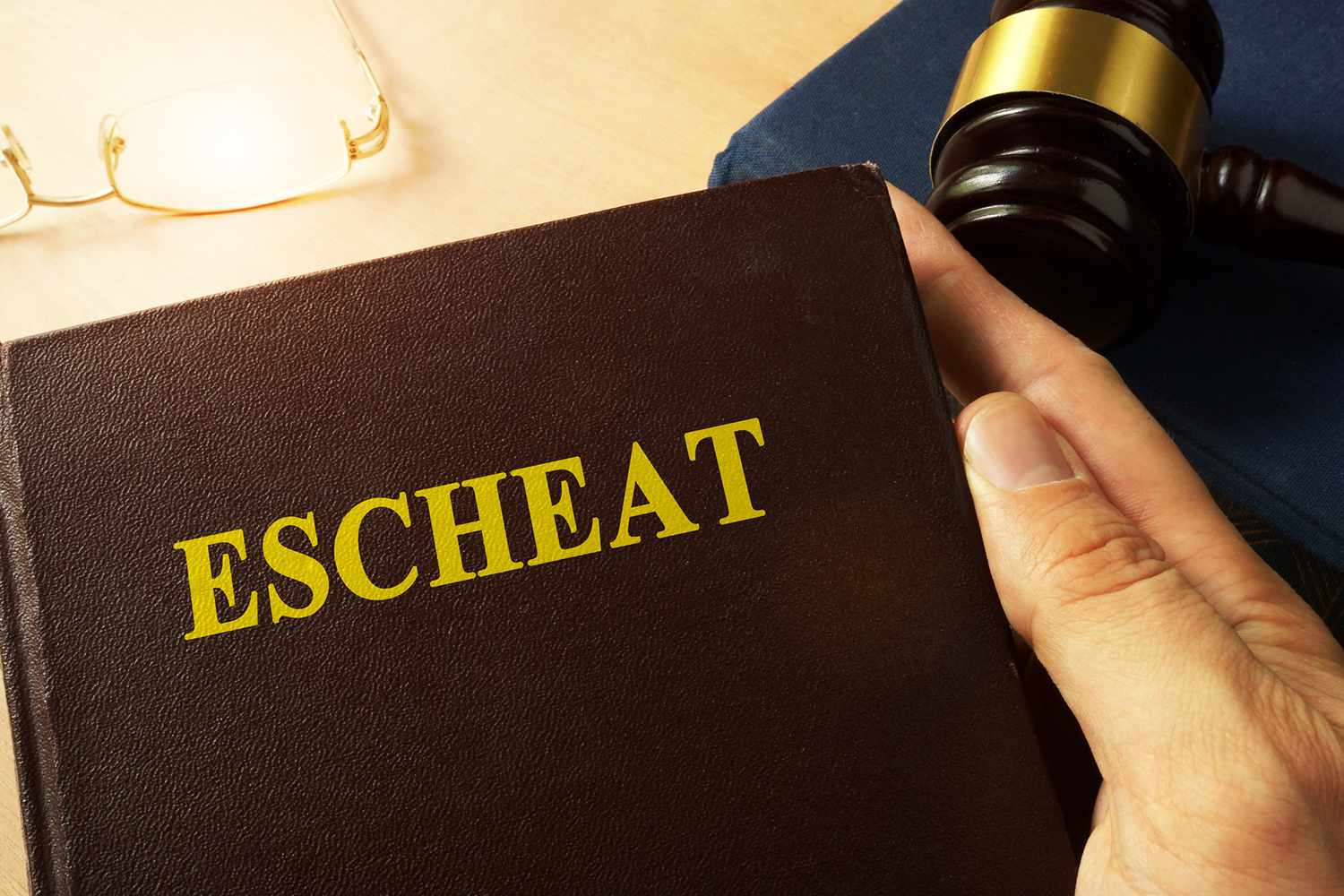
- 19 Sep 2025
In News:
The Supreme Court of India has recently ruled that a State Government cannot invoke the Doctrine of Escheat under Section 29 of the Hindu Succession Act, 1956, when a valid Will has been executed and probate has been granted by a competent court. The judgment underscores that the principle of escheat applies only as a last resort, when an individual dies intestate (without a Will) and without legal heirs.
What is the Doctrine of Escheat?
The Doctrine of Escheat is a long-standing legal principle ensuring that no property remains ownerless. When a person dies without a Will and without any legal heirs, ownership of the property reverts to the State.
This doctrine safeguards social and legal order, ensuring that property does not remain unclaimed or misused.
Situations Covered Under Escheat:
- Death without a Will (Intestate): When a person dies without making a valid Will and leaves no heirs.
- Unclaimed or Abandoned Property: When ownership cannot be established for a prolonged period.
The underlying idea is that property must always have an identifiable owner, and in the absence of heirs, the State becomes the ultimate owner.
Historical Background
- The term “escheat” originates from the Old French word “eschete”, meaning “to fall to.”
- The concept dates back to the feudal system of medieval Europe, where land held by a tenant reverted to the lord if the tenant died without an heir or was convicted of crimes such as treason.
- Over time, this right passed from feudal lords to the monarch or the state, ensuring continuous control over land and preventing property from becoming ownerless.
Doctrine of Escheat in Modern Legal Systems
In contemporary jurisprudence, escheat prevents property from remaining in legal limbo. The State assumes ownership of such assets, either permanently or temporarily, until legitimate claimants are found.
Different countries have codified laws governing this process, ensuring fairness and transparency.
Doctrine of Escheat in India
In the Indian legal framework, the doctrine operates through two main provisions:
- Article 296 of the Constitution of India:Provides that any property that escheats or lacks legal ownership vests in the State or Union, depending on where the property is situated.
- Section 29 of the Hindu Succession Act, 1956:States that if a Hindu dies intestate and without any legal heirs, the property escheats to the Government, which assumes ownership subject to all legal obligations.
Supreme Court’s Observation
In the recent judgment, the Supreme Court held that:
- The Doctrine of Escheat is a remedy of last resort and cannot be invoked when a valid Will exists.
- Once a Will is probated (i.e., validated by a competent court), the State has no locus to challenge the testamentary disposition under the garb of escheat.
- The testator’s intent must prevail, and the property should devolve strictly as per the terms of the Will.
This ruling reinforces the sanctity of testamentary freedom and clarifies the limited applicability of escheat provisions.
Significance of the Ruling
- Protects Individual Property Rights: Upholds the right of individuals to dispose of their property through a valid Will.
- Limits State Overreach: Prevents arbitrary claims by the State over private property.
- Clarifies Legal Interpretation: Defines the precise scope of Section 29 of the Hindu Succession Act and Article 296 of the Constitution.
- Ensures Legal Certainty: Strengthens property succession jurisprudence in India.
Carlsberg RidgeRegion
- 19 Sep 2025
In News:
India has secured an exploration contract from the International Seabed Authority (ISA) to explore polymetallic sulphide deposits in the Carlsberg Ridge region of the north-western Indian Ocean. The agreement marks a major step in India’s pursuit of deep-sea resource development and its broader vision under the Deep Ocean Mission.
About the Agreement
- The exploration contract grants India the right to survey and explore an area of approximately 3,00,000 square kilometres in the Carlsberg Ridge, a tectonically active region rich in polymetallic sulphides — deposits containing valuable metals such as copper, zinc, gold, silver, and rare elements.
- The International Seabed Authority (ISA), an autonomous body under the United Nations Convention on the Law of the Sea (UNCLOS), regulates mineral exploration and exploitation activities in international seabed areas beyond national jurisdictions.
- This licence enhances India’s presence in seabed resource exploration, complementing its earlier exploration area for polymetallic nodules in the Central Indian Ocean Basin.
About Carlsberg Ridge
- The Carlsberg Ridge is a mid-oceanic ridge — a divergent plate boundary — located in the western Indian Ocean.
- It extends from the triple junction of the African, Indian, and Australian plates, connecting to the Mid-Indian Ridge, and runs northwest toward the Gulf of Aden.
- The ridge acts as a tectonic boundary between the Somali Plate and the Indian Plate.
- Geographical features:
- Lies at an average depth of 6,000–12,000 feet (1,800–3,600 m) below sea level.
- Rises about 7,000 feet (≈2,100 m) above the surrounding seafloor.
- Extends westward near Socotra Island, eventually linking with the East African Rift System via the Gulf of Aden.
- It is one of the most prominent mid-ocean ridge systems in the Indian Ocean, characterized by frequent seismic activity and hydrothermal vents, which are potential sources of metal-rich sulphide minerals.
Significance of the Exploration
- Strategic Resource Security:Polymetallic sulphides contain economically vital metals like copper, zinc, gold, and silver, essential for clean energy technologies, electronics, and strategic industries.
- Technological Advancement:The project supports India’s Deep Ocean Mission, fostering indigenous capability in deep-sea mining, remotely operated vehicles (ROVs), and underwater robotics.
- Scientific and Environmental Research:Exploration in the Carlsberg Ridge will advance understanding of seafloor geology, hydrothermal systems, and biodiversity in deep-sea environments.
- Geopolitical and Economic Leverage:Strengthens India’s position in global ocean governance and the blue economy, ensuring equitable access to seabed resources.
About the International Seabed Authority (ISA)
- Headquarters: Kingston, Jamaica
- Established: 1994 under UNCLOS (1982)
- Mandate: Regulates mineral-related activities in the “Area” — the seabed and ocean floor beyond national jurisdiction — ensuring that exploration and exploitation are conducted for the benefit of mankind while protecting the marine environment.
Exercise Pacific Reach 2025
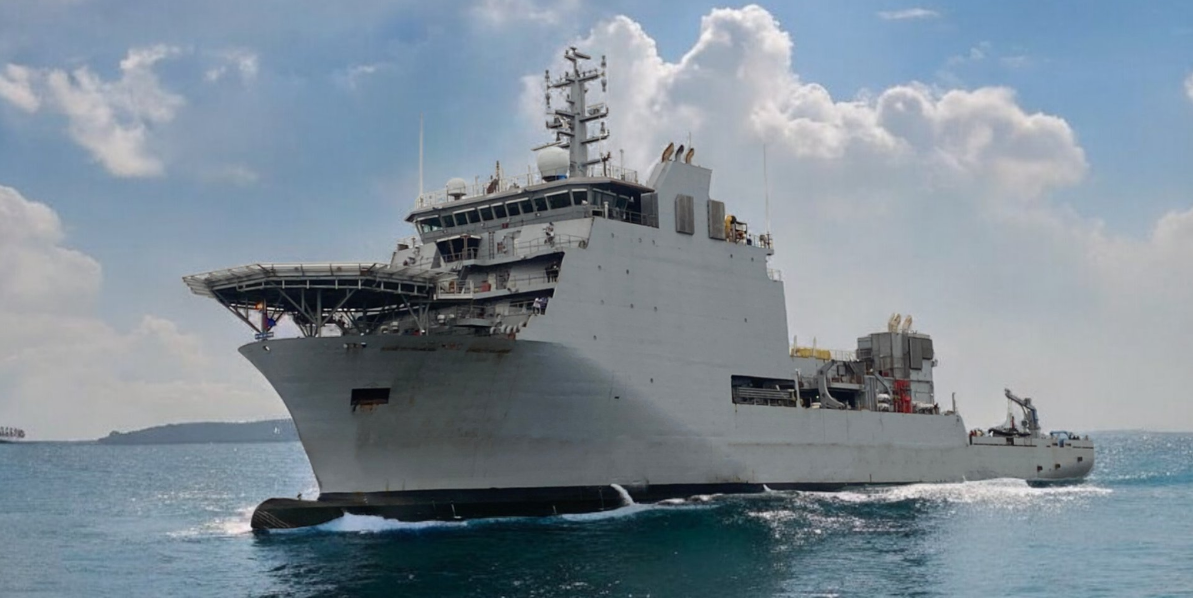
- 19 Sep 2025
In News:
The Indian Navy’s latest indigenously designed and constructed Diving Support Vessel (DSV), INS Nistar, is participating in the multinational Exercise Pacific Reach 2025 in Singapore, marking a key step in strengthening India’s naval cooperation and submarine rescue capabilities.
About Exercise Pacific Reach 2025
- Exercise Pacific Reach is a biennial multinational naval exercise hosted by Singapore, with the 2025 edition witnessing the participation of over 40 nations.
- The exercise focuses on submarine rescue operations, interoperability, and sharing of best practices among participating navies.
- It is conducted in two major phases:
- Harbour Phase:
- Involves in-depth discussions on submarine rescue systems.
- Includes Subject Matter Expert Exchanges (SMEE), a medical symposium, and cross-deck visits among participating nations.
- Aims to enhance coordination in rescue procedures and underwater medical responses.
- Sea Phase:
- Conducted in the South China Sea, featuring multiple intervention and rescue operations.
- INS Nistar and Submarine Rescue Unit (East) will collaborate with other international assets to simulate real-world submarine rescue missions and deep-sea operations.
The exercise underscores the growing importance of multilateral maritime cooperation in ensuring submarine safety, operational interoperability, and humanitarian response readiness in the Indo-Pacific region.
INS Nistar: A Technological Milestone in Naval Capability
- Commissioned on: 18 July 2025
- Built by: Hindustan Shipyard Limited (HSL), Visakhapatnam
- Under: Ministry of Defence’s ‘Aatmanirbhar Bharat’ initiative
- INS Nistar is designed to act as a mothership (MoSHIP) for Deep Submergence Rescue Vehicles (DSRVs) — a critical capability for submarine rescue and deep-sea support operations.
- The vessel exemplifies India’s indigenous shipbuilding prowess and self-reliance in complex maritime technologies.
Key Technical Features and Capabilities:
- Integrated Saturation Diving System (ISDS):Enables diver deployment up to 300 meters depth, facilitating underwater repairs, salvage, and rescue missions.
- Remotely Operated Vehicles (ROVs):Deployed for underwater surveillance and recovery in deep-sea environments.
- Side Scan Sonar:Assists in locating submerged vessels, wreckage, or obstacles on the seabed.
- Integrated Platform Management System (IPMS):Streamlines the operation and monitoring of onboard systems for greater efficiency and safety.
- Submarine Rescue System:A critical asset for submarine emergency response, ensuring timely and safe evacuation of personnel from disabled submarines.
Prime Minister Inaugurates Development Projects Amid Ethnic Tensions in Manipur

- 18 Sep 2025
In News:
Recently, Prime Minister Narendra Modi visited Imphal, Manipur, inaugurating and laying the foundation for multiple development projects aimed at improving infrastructure, governance, and socio-economic opportunities in the state.
The visit comes in the backdrop of ethnic tensions that erupted in May 2023 between the Meitei community in the Imphal valley and the Kuki-Zo tribes in the surrounding hills, which claimed over 250 lives and displaced more than 60,000 people.
Key Development Initiatives
- Infrastructure and Connectivity:
- Manipur Urban Roads Project: Investment of over ?3,600 crore to enhance urban road connectivity in Imphal.
- Jiribam–Imphal Railway Line: A ?22,000 crore project to connect Imphal to India’s national rail network.
- Imphal Airport Expansion: ?400 crore investment and inauguration of helicopter services to boost air connectivity.
- Civil Secretariat (?538 crore) and Police Headquarters (?101 crore) inaugurated to improve governance and law enforcement.
- Digital and IT Initiatives:Manipur Infotech Development Project aims to strengthen the state’s IT and startup ecosystem, creating employment and entrepreneurial opportunities.
- Women Empowerment:
- Four new Ima Markets (women-only markets) inaugurated, reinforcing the state’s tradition of women-led commerce.
- Construction of working women’s hostels at nine locations to support education and employment for women.
- Sports and Culture:
- Support for the National Sports University and Khelo India initiatives.
- Promotion of polo via the Marjing Polo Complex, featuring the world’s tallest polo statue.
Ethnic Conflict and Unresolved Issues
The conflict stems from the Meitei community’s demand for Scheduled Tribe (ST) status, opposed by Kuki-Zo groups. ST recognition would grant Meiteisconstitutional safeguards, including reservations in jobs, education, and political representation, and land rights in hill areas. Key unresolved issues include:
- Rehabilitation of Displaced Families: Over 280 relief camps sheltering around 57,000 people, some displaced for more than two years.
- Restrictions on Movement: Militarized buffer zones between valley and hill districts continue to limit free movement and access to services.
- Border Concerns: Porous border with Myanmar raises issues of cross-border migration, leading to the scrapping of the Free Movement Regime.
- Political Vacuum: The resignation of the Chief Minister and imposition of President’s Rule have created governance challenges.
- Dialogue Deficit: Despite reduced violence since late 2024, there is no sustained dialogue between Meitei and Kuki-Zo communities.
Demand for Separate Administration
The Kuki-Zo Council seeks administrative separation of hill areas as a Union Territory under Article 239A of the Constitution, while Meitei organizations like COCOMI oppose this, citing threats to territorial integrity.
Way Ahead
The Prime Minister emphasized the need to strengthen dialogue between the hill and valley districts to foster social harmony. Sustainable peace in Manipur requires:
- Inclusive dialogue and neutral mediation between Meitei and Kuki-Zo communities.
- Rehabilitation of displaced families with dignity and livelihood support.
- Balanced border management to address cross-border migration while respecting tribal ties.
- Strengthening local governance and administrative institutions to restore trust.
Strategic Significance
Infrastructure, IT, and women-centric initiatives are not only essential for socio-economic development but also align with the Act East Policy, facilitating regional integration and economic collaboration with Southeast Asia. Ensuring peace and development in Manipur is critical for maintaining national unity, regional stability, and long-term social cohesion.
CBSE Provides Partial Relief on APAAR ID Submission for Board Students
- 18 Sep 2025
In News:
The Central Board of Secondary Education (CBSE) has recently announced partial relaxations for schools regarding the submission of Automated Permanent Academic Account Registry (APAAR) IDs linked to the List of Candidates (LOC) for Classes 10 and 12 board examinations. The move comes in response to multiple representations from schools highlighting technical and administrative challenges.
About APAAR
APAAR, launched under the National Education Policy (NEP) 2020 and aligned with the National Credit and Qualifications Framework (NCrF), aims to assign every student in India a unique 12-digit lifelong academic identity. Key objectives include:
- Consolidation of all academic achievements, such as marksheets, certificates, and co-curricular accomplishments, in a single digital record.
- Facilitating credit transfers, mobility between institutions, and recognition of prior learning.
- Enhancing flexibility in education and supporting seamless integration with the Academic Bank of Credits (ABC).
Integration with Academic Bank of Credits
The Academic Bank of Credits (ABC), conceptualized under NEP 2020, serves as a digital repository of students’ academic records, enabling storage, transfer, and redemption of credits across recognized institutions. Integrated with APAAR, it allows students to move between schools and higher education institutions without repeatedly submitting physical certificates, thus promoting educational mobility and continuity.
Challenges in APAAR Implementation
Since its rollout, schools have reported several hurdles in generating APAAR IDs:
- Technical integration issues between school portals and the APAAR system.
- Mismatches between school records and Aadhaar-linked student data.
- Time delays due to correction or updating processes.
- Lack of parental consent, often arising from privacy concerns.
CBSE’s Guidelines and Partial Relaxations
To address these challenges, CBSE has provided the following instructions for schools while submitting LOCs:
- Parental Consent Denial: If APAAR IDs cannot be generated due to refusal of parental consent, schools must retain a copy of the consent refusal and mark the entry in the LOC as “REFUSED”.
- Technical or Other Issues: For IDs that cannot be generated due to technical or administrative reasons, schools should mark the LOC entry as “NOGEN”.
- All Other Cases: Wherever feasible, APAAR IDs should be indicated in the LOC.
CBSE has also activated an online module for Children With Special Needs (CWSN), enabling schools to apply for various examination-related exemptions. Examination forms for private candidates of Classes 10 and 12 have been consolidated along with the LOC submission schedule to ensure clarity and timely compliance.
Support Measures
CBSE has emphasized that these relaxations are intended to ensure smooth and error-free LOC submission within the stipulated timelines. Schools facing further difficulties are advised to reach out to their respective regional CBSE offices for assistance.
Significance
The APAAR initiative represents a key step toward a digital, lifelong academic identity for Indian students, enhancing transparency, mobility, and integration with the Academic Bank of Credits. CBSE’s temporary relaxations reflect a pragmatic approach to smooth implementation while addressing operational challenges faced by schools.
Dongsha Islands
- 18 Sep 2025
In News:
Taiwan’s Coast Guard Administration (CGA) recently repelled both a Chinese coast guard ship and a Chinese fishing boat near the Dongsha Islands (Pratas Islands), highlighting escalating tensions in the South China Sea and the strategic significance of the region.
Key Highlights:
These confrontations coincided with China’s announcement of a national nature reserve at Scarborough Shoal, a territory also claimed by Taiwan and the Philippines. While Beijing described it as a conservation initiative, analysts view it as part of China’s broader strategy to assert control over disputed areas.
Taiwan condemned the repeated incursions, labeling them “grey zone tactics”—persistent, low-intensity actions aimed at exerting pressure without provoking direct military conflict. The CGA reaffirmed its commitment to defend Taiwan’s sovereignty, pledging ongoing patrols and surveillance in the Dongsha region.
About the Dongsha Islands:
- Located in the northern South China Sea, ~445 km southwest of Kaohsiung, Taiwan, and 320 km southeast of Hong Kong.
- Governed by Taiwan and staffed by marines, with no permanent civilian residents.
- Comprised of three formations: Dongsha Island (above sea level) and Northern and Southern Vereker atolls (below sea level).
- Circular coral atoll structure: reef flats span 24 km in diameter, enclosing a 16 km lagoon; Dongsha Island itself is ~1.6 km long and 0.8 km wide.
The incidents underscore the fragile security balance in the South China Sea, where overlapping territorial claims, strategic maritime routes, and China’s assertive posture pose ongoing regional challenges. Taiwan’s proactive coastal defense measures reflect its determination to safeguard administered territories.
Exercise SiyomPrahar
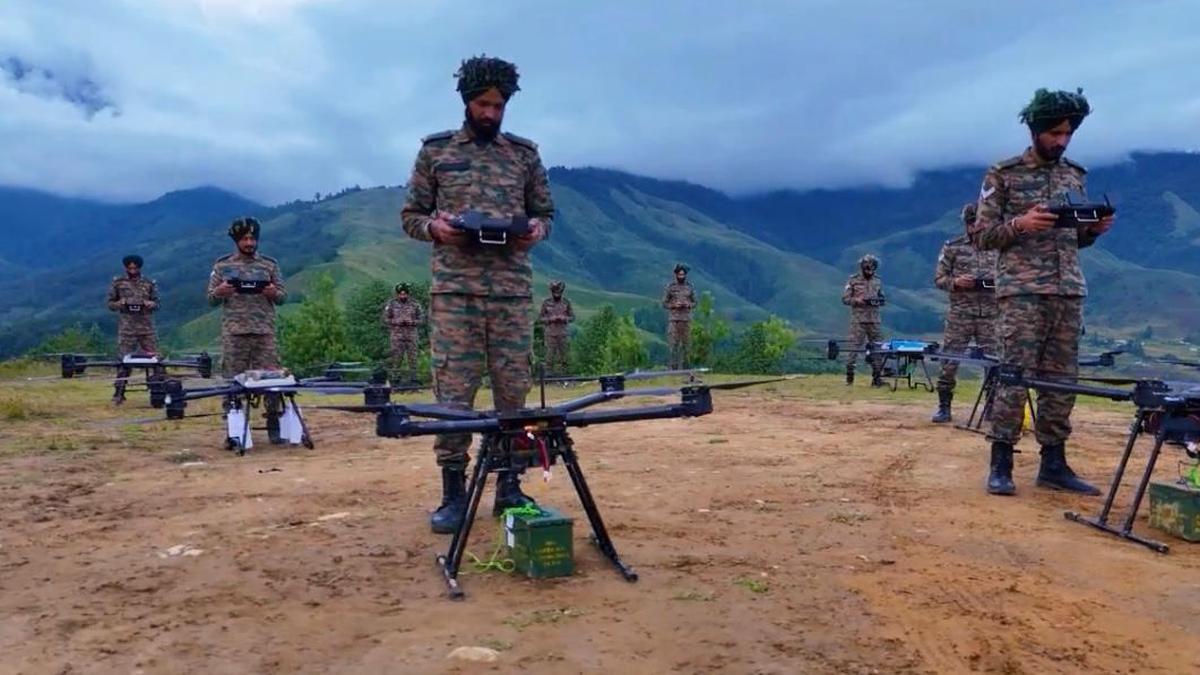
- 18 Sep 2025
In News:
The Indian Army's Exercise SiyomPrahar, represents a significant step in modernizing the Army’s operational capabilities. This field training exercise focused on validating the integration of unmanned aerial systems (UAS) into tactical operations, with a strong emphasis on surveillance, reconnaissance, target acquisition, and precision strikes. Below are the key highlights and insights from the exercise:
Key Objectives:
- Integration of Drone Technology: The core goal was to test how drone systems can be employed for persistent surveillance, battlefield reconnaissance, and precision strikes, thus enhancing overall combat effectiveness.
- Development of New TTPs (Tactics, Techniques, and Procedures): A key focus was on refining how drone-derived intelligence could be fused with conventional firepower, ensuring rapid decision-making in dynamic and evolving combat scenarios.
- Joint Targeting and Decision-making: The exercise aimed at refining joint targeting processes, highlighting the importance of real-time intelligence to improve targeting accuracy and decision-making speed in the heat of battle.
Key Features of the Exercise:
- Realistic Battlefield Conditions: The exercise was conducted under simulated real-world combat conditions, providing a comprehensive test of UAS capabilities in diverse operational environments.
- Synergy Between Traditional Combat and Emerging Technologies:Exercise SiyomPrahar underscored the importance of blending traditional combat arms with cutting-edge technologies, such as drones, to create a more adaptive and efficient military force.
- Operational Preparedness: The exercise was a significant step toward enhancing the Indian Army’s operational preparedness for future combat scenarios, integrating modern technology to ensure readiness for future battlefields.
Strategic Importance and Key Insights:
- Adaptability and Synergy: The exercise highlighted how the Army is integrating modern warfare tactics with traditional methods to create a more effective, adaptable force that can operate in dynamic and complex environments.
- Real-Time Data Utilization: By using drones to gather real-time intelligence, the Indian Army is significantly improving targeting accuracy, enabling faster, more informed decisions in combat situations.
- Reduced Soldier Risk: The deployment of drones for reconnaissance and strikes minimizes the exposure of ground troops to potential dangers, enhancing both tactical effectiveness and safety on the battlefield.
- Joint Operational Capabilities: Exercise SiyomPrahar demonstrated how drones can be integrated into joint operational structures, improving communication and coordination between various arms of the military.
Broader Implications for Future Warfare:
- Technological Innovation in Combat: The successful integration of drone technology in this exercise indicates a shift towards technology-driven warfare, where drones play a critical role in intelligence gathering, battlefield awareness, and precision targeting.
- India’s Commitment to Modernization: The exercise is a testament to India’s proactive approach to adapting to the changing nature of warfare, ensuring that its forces remain future-ready and capable of responding effectively to emerging security challenges.
Brown Trout
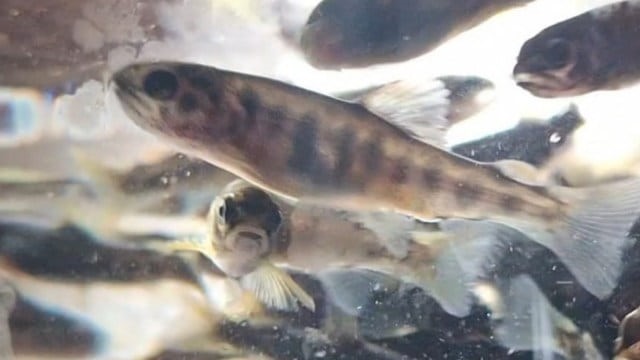
- 17 Sep 2025
In News:
- Kashmir is embarking on a significant initiative to revive its brown trout (Salmo trutta) population, a species first introduced to the Valley by the British in 1900.
- Once a hallmark of Kashmir’s cold-water streams and a popular game fish, the brown trout population had declined over decades due to unregulated angling, habitat degradation, and ecological disturbances.
- The Fisheries Department of Jammu & Kashmir plans to reintroduce the species into streams and lakes, aiming to combine conservation with tourism promotion.
About Brown Trout
- The brown trout is a cold-water, salmonid fish native to Europe, northern Africa, and parts of Asia. It prefers cool, well-oxygenated freshwater streams, often residing in crevices between boulders. Typically, individuals grow 15–22 inches in length and weigh 1–5 pounds.
- Brown trout are renowned as a game fish due to their aggressive and elusive nature, which makes angling challenging and rewarding.
- Globally, brown trout have been introduced widely as a game fish, but outside their native range, they are considered one of the world’s worst invasive species.
- In India, their introduction to Kashmir was facilitated by Frank J Mitchel, a British entrepreneur, and earlier attempts during Maharaja Pratap Singh’s era. The fish initially thrived in streams such as Panzagam, Lidder, Bringhi, and Ferozpora, eventually supporting recreational fishing and angling tourism.
Revival Initiative
The current revival project is supported under Pradhan Mantri Matsya Sampada Yojana (PMMSY) and J&K’s Holistic Agricultural Development Programme, enabling the import of 3 lakh pure brown trout eggs from Denmark. These were hatched at the Tchansar Hatchery in Kulgam, marking a milestone as previous efforts primarily focused on rainbow trout for food production rather than wild trout restoration.
Rearing brown trout posed unique challenges:
- They refuse artificial feed, requiring specially formulated diets of crustaceans mixed with cod liver oil.
- They feed in darkness, prompting hatchery modifications to simulate natural conditions and monitor feeding.
The October–November period, coinciding with their breeding season, was chosen for release as brown trout exhibit lower aggression and reduced cannibalism, increasing survival rates. Streams and lakes targeted for reintroduction include Veshav River and Kounsarnag Lake in Kulgam.
Ecological and Socioeconomic Significance
Reintroduction serves multiple purposes:
- Biodiversity restoration: Revives native aquatic fauna and strengthens freshwater ecosystems.
- Tourism enhancement: Brown trout are a draw for anglers, boosting local tourism and allied services.
- Heritage and culture: The initiative reconnects the Valley with a century-old ecological and recreational tradition.
Experts, however, caution that habitat preservation is crucial, emphasizing the need to control illegal riverbed mining and maintain clean, oxygen-rich streams for the trout’s survival.
Conservation Status and Global Context
According to the IUCN Red List, the brown trout is listed as Least Concern, reflecting its wide distribution and adaptability in native ranges. However, localized conservation efforts, such as this reintroduction in Kashmir, are essential to sustain ecologically and economically significant populations in specific regions.
Amrit Sarovar Mission
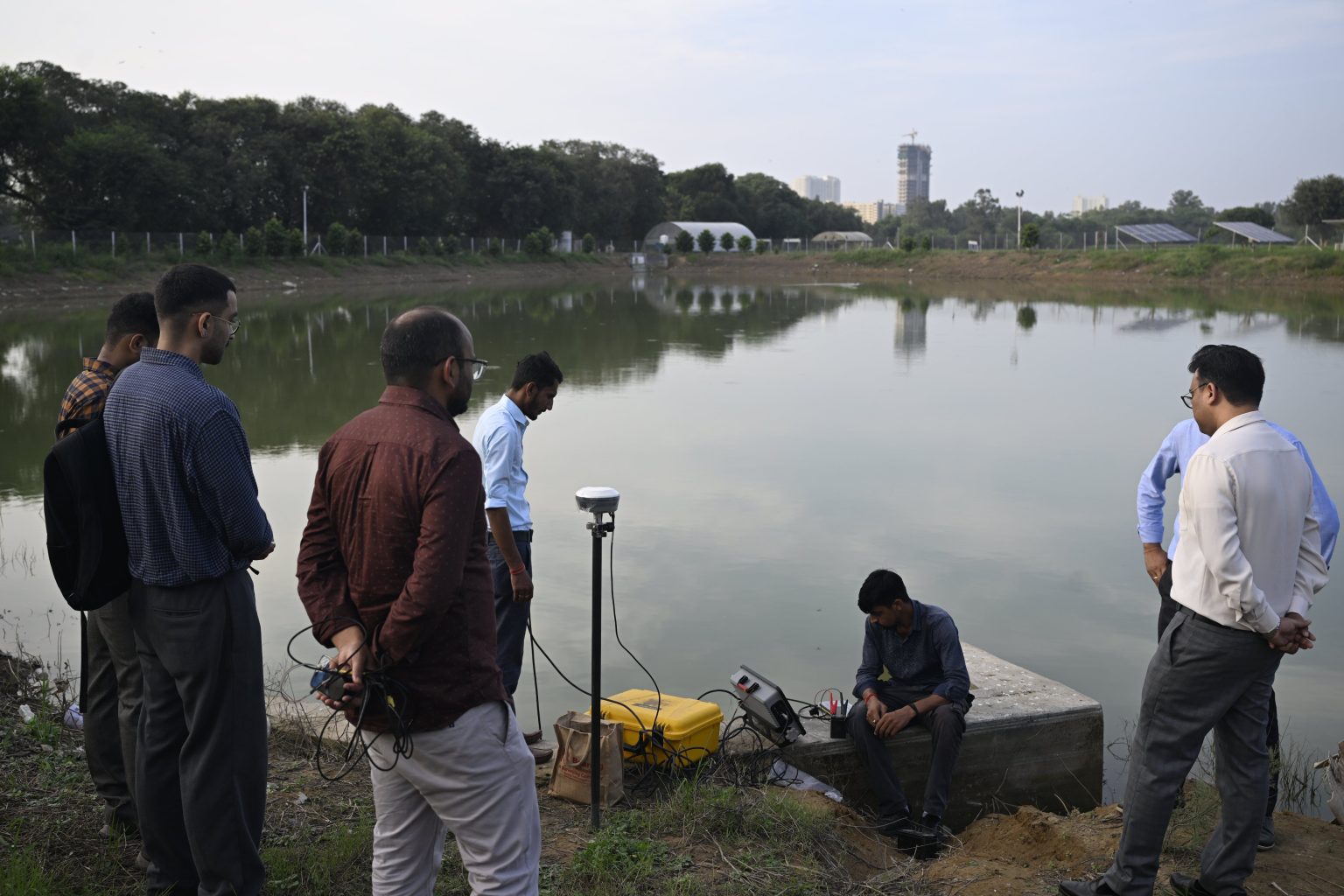
- 17 Sep 2025
In News:
- The Amrit Sarovar Mission, launched by Prime Minister Narendra Modi in April 2022, is a flagship initiative aimed at addressing water scarcity and promoting sustainable rural development across India.
- The mission seeks to construct or rejuvenate 75 Amrit Sarovars (ponds) in each district, as part of the celebrations of Azadi ka Amrit Mahotsav.
- As of 2025, the government has reported the creation of over 68,000 Amrit Sarovars nationwide, marking a significant milestone in water conservation and community engagement.
Objectives and Significance
The mission’s primary objectives include:
- Water conservation and management in rural areas.
- Enhancement of local livelihoods through irrigation, fisheries, duckery, cultivation of water chestnut, and water-based tourism.
- Promotion of social cohesion by establishing Amrit Sarovars as community gathering points.
- Integration of government initiatives through a “Whole of Government” approach, ensuring convergence of resources and expertise.
Each Amrit Sarovar is designed to have a minimum pondage area of one acre with a water-holding capacity of about 10,000 cubic metres. Surrounding vegetation typically includes trees such as Neem, Peepal, and Banyan, contributing to ecological sustainability and enhancing biodiversity.
Participatory and Institutional Framework
The site selection and supervision of Amrit Sarovars are conducted by Gram Sabhas, with Panchayat representatives overseeing the development. This participatory approach ensures that local communities have ownership and accountability for the maintenance and sustainable use of water resources.
The mission operates on convergence principles, utilizing funds and resources from multiple sources including:
- Mahatma Gandhi NREGS
- 15th Finance Commission Grants
- Pradhan Mantri Krishi Sinchai Yojana (PMKSY) sub-schemes, such as Watershed Development and Har Khet Ko Pani
- State government schemes
There is no separate financial allocation for the mission; rather, it leverages ongoing programs for maximum impact.
Technology and Monitoring
To ensure efficient implementation and progress tracking, the Bhaskaracharya National Institute for Space Applications and Geo-informatics (BISAG-N) has been engaged as a technical partner. The institute has developed the Amrit Sarovar Portal and Mobile App, which enables real-time monitoring, reporting, and evaluation of district-level activities.
Workshops and Capacity Building
The Ministry of Rural Development organized a national workshop in New Delhi to reinforce the mission’s technical foundations and promote community-driven sustainable practices. Officials from states and Union Territories discussed strategies to enhance technical capacity, innovation, and inter-departmental collaboration, paving the way for the next phase of the mission.
Impact and Prospects
The Amrit Sarovar Mission exemplifies integrated rural development, linking water security, ecological sustainability, and livelihood generation. By reviving traditional water bodies and creating new ponds, it contributes to groundwater recharge, climate resilience, and rural prosperity. The initiative also strengthens people’s participation in natural resource management, ensuring that water resources are used efficiently and sustainably.
As the mission progresses, it is expected to play a critical role in mitigating rural water crises, enhancing agricultural productivity, and fostering inclusive growth in India’s villages.
Erra Matti Dibbalu
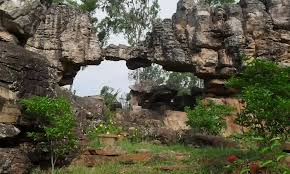
- 17 Sep 2025
In News:
Andhra Pradesh has taken a major step towards global heritage recognition with the inclusion of Erra Matti Dibbalu (Red Sand Dunes) near Visakhapatnam and the Natural Heritage of Tirumala Hills in the UNESCO Tentative List of World Heritage Sites. The move reflects India’s growing commitment to protect and preserve sites of geological and ecological importance. Being placed on the Tentative List is a mandatory prerequisite for eventual nomination to the UNESCO World Heritage List, symbolizing international acknowledgment of a site’s Outstanding Universal Value (OUV).
Erra Matti Dibbalu: India’s Rare Coastal Geo-Heritage Site
- Located along the coast near Visakhapatnam, Erra Matti Dibbalu—literally “Red Sand Dunes”—is a unique National Geo-heritage Monument, spread over 1,500 acres.
- The formations consist of sand, silt, and clay, with their deep red hue arising from natural oxidation over thousands of years.
- These dunes exhibit badland topography with striking geomorphic features such as gullies, buried channels, paired terraces, beach ridges, wave-cut terraces, knick points, and waterfalls.
- The site represents the late Quaternary geologic age and provides vital evidence of climatic and sea-level fluctuations over millennia. Dendritic drainage patterns and layered sediments at the site act as a natural archive of environmental changes and coastal evolution.
- First recorded in 1886 by British geologist William King, the site is globally rare — with only two similar formations identified, one in Sri Lanka and another in Tamil Nadu (Teri Sands).
- Additionally, archaeological artefacts discovered here point to Upper Palaeolithic human activity (around 20,000 BCE), making it an important cultural and scientific site.
- Recognizing its geological and historical significance, the Geological Survey of India (GSI) declared Erra Matti Dibbalu a National Geo-heritage Monument in 2016. However, experts warn that unregulated tourism and filming activities pose a threat to its fragile ecosystem, calling for stronger conservation and monitoring mechanisms.
- According to IUCN’s Geological World Heritage (2021) classification, the site may qualify under Theme 2: Tectonic System and Theme 7: Coastal System.
Tirumala Hills: A Geological and Ecological Treasure
- The Tirumala Hills in Tirupati district are celebrated not just for spiritual significance but also for their geological, ecological, and cultural heritage.
- The hills showcase the Eparchaean Unconformity—a rare geological boundary where 2.5-billion-year-old Archean rocks meet younger Proterozoic formations of the Cuddapah Supergroup. This boundary represents a vast time gap in Earth’s geological record, offering critical insights into planetary evolution.
- The site also houses the famous Natural Arch (Silathoranam), a naturally sculpted rock formation estimated to be 1.5 billion years old. The region forms part of the Seshachalam Biosphere Reserve and Venkateswara National Park, both home to rich biodiversity including endangered red sanders (Pterocarpus santalinus), Cycas beddomei, and the elusive Jerdon’s Courser.
- With dense forests, seasonal waterfalls, and unique geological formations, Tirumala Hills qualify under multiple UNESCO criteria related to natural beauty, ecological diversity, and geological significance. As per IUCN (2021), the site aligns with Theme 1: History of Planet Earth and Evolution of Life.
AI-Based Weather Forecasting for Agriculture
- 17 Sep 2025
In News:
India has launched a pioneering initiative that marks a paradigm shift in agricultural planning and climate risk management. The Ministry of Agriculture and Farmers’ Welfare (MoAFW) has implemented the country’s first-of-its-kind AI-based weather forecasting program aimed at empowering farmers with timely and accurate monsoon information. This initiative has reached 3.8 crore farmers across 13 states, positioning India as a global leader in applying artificial intelligence to agriculture.
Transforming Weather Forecasting through AI
Traditionally, Indian farmers depend heavily on the monsoon for Kharif cultivation — a critical determinant of rural livelihoods. Unpredictable rainfall patterns, intensified by climate change, have often disrupted sowing and crop management decisions. To address this, MoAFW harnessed artificial intelligence (AI) models to provide advance and localized monsoon forecasts, disseminated via SMS through the m-Kisan portal.
These AI-based monsoon forecasts were available up to four weeks earlier than usual, allowing farmers to make informed choices on what, when, and how much to plant. The initiative also ensured weekly forecast updates, especially during the 20-day pause in monsoon progression this year, helping farmers adjust operations accordingly.
AI Models and Technological Backbone
The forecasts were generated using a blend of two open-access AI models:
- Google’s Neural General Circulation Model (Neural GCM), and
- ECMWF’s Artificial Intelligence Forecasting System (AIFS) developed by the European Centre for Medium-Range Weather Forecasts.
Rigorous evaluation showed that these models outperformed traditional meteorological forecasts, particularly in predicting the onset and variability of monsoon rainfall at local levels. The initiative represents the first targeted dissemination of AI-based weather forecasts to farmers anywhere in the world.
m-Kisan Portal
The m-Kisan Portal serves as the digital backbone for this outreach. It enables government agencies and research institutions to deliver customized, location-specific, and language-tailored SMS advisories to farmers. Beyond weather forecasts, it also provides guidance on pest management, crop practices, and government schemes, thus strengthening the digital extension ecosystem in Indian agriculture.
Bairabi–Sairang Project
- 17 Sep 2025
In News:
The inauguration of Mizoram’s first-ever railway line — the Bairabi–Sairang Broad-Gauge Project — marks a historic milestone in the state’s connectivity and India’s Act East Policy. Prime Minister Narendra Modi inaugurated the 51.38-km line, constructed at a cost of ?8,070 crore, connecting Mizoram’s capital Aizawl to the national railway network for the first time.
A 15-Year Vision Realised
- Sanctioned in 2008–09 and launched for construction in 2015, the project exemplifies one of the most complex undertakings of the Indian Railways due to Mizoram’s mountainous terrain and fragile geology.
- Nearly 54% of the alignment passes through tunnels and bridges, making it a remarkable feat of engineering. The route comprises 45–48 tunnels, 142 bridges (including 55 major and 87 minor ones), and 10 road overpasses/underpasses.
- Among its iconic structures is Bridge No. 144 (or 196) near Sairang, which stands over 104–114 metres tall, surpassing the height of Delhi’s Qutub Minar and making it India’s tallest pier railway bridge.
- The project also introduced four new stations — Hortoki, Kawnpui, Mualkhang, and Sairang — linking remote communities and enhancing regional mobility.
Connecting Aizawl to the National Network
The line stretches from Bairabi on the Assam–Mizoram border to Sairang, located just 20 km from Aizawl, thereby integrating Mizoram’s capital into India’s railway map. With this, Aizawl becomes the fourth northeastern capital (after Guwahati, Agartala, and Itanagar) to gain direct rail connectivity, strengthening socio-economic linkages between the Northeast and the rest of India.
Boosting Regional Connectivity and Economic Growth
The newly inaugurated line will facilitate safe, efficient, and cost-effective transportation, reducing travel time and improving the movement of goods such as food grains, fertilizers, and essential commodities. It is also expected to stimulate tourism, horticulture, and local industries, generating employment and boosting livelihoods.
The Prime Minister also flagged off three new long-distance train services —
- Sairang–Delhi Rajdhani Express,
- Sairang–Guwahati Express, and
- Sairang–Kolkata Express —further enhancing the state’s integration with major urban centres.
Engineering Challenges and Innovations
Constructing railways across Mizoram’s steep ridges and fragile hills required advanced tunnelling techniques and innovative stabilization methods. Engineers had to solidify loose sand into rock formations before tunnelling. The passenger trains can now run at speeds up to 100 km/h, reflecting the project’s high safety and design standards.
Complementary Infrastructure Initiatives
Alongside the rail inauguration, infrastructure projects worth ?9,000 crore were launched under schemes like PM-DevINE and NESIDS, including:
- Aizawl Bypass Road (45 km),
- Thenzawl–Sialsuk Road, and
- Khankawn–Rongura Road, aimed at improving connectivity for farmers, traders, and industries.
Additionally, the Chhimtuipui Bridge under the Kaladan Multimodal Transit Project, an LPG bottling plant at Mualkhang, sports complexes, and Eklavya residential schools were announced to promote economic growth and human development.
Strategic and Policy Significance
The Bairabi–Sairang line is a critical component of India’s Act East Policy, designed to enhance connectivity and integration of the Northeast with Southeast Asia. It embodies India’s commitment to balanced regional development, national security, and border area empowerment.
By overcoming formidable terrain and logistical hurdles, the project stands as a testament to India’s infrastructural capabilities and its vision for an inclusive, connected, and self-reliant Northeast.
STAR Missile
- 16 Sep 2025
In News:
India has developed the Supersonic TARget (STAR) missile — an indigenous, reusable high-speed target system designed to reproduce modern cruise-missile and anti-ship threat profiles for realistic training and validation of sensors, weapons and doctrines. STAR replaces expensive imported target systems and fills a critical gap in live realistic training for the Navy, Air Force and Army.
What STAR does
STAR is not a combat weapon but a high-fidelity aggressor platform that simulates hostile supersonic missiles so air defence systems, shipborne weapons and interceptor pilots can practise time-critical engagements under realistic conditions. It can mimic sea-skimming runs, steep dives and evasive manoeuvres to test detection, tracking and interception chains end-to-end.
Key technical features
- Propulsion: Two-stage system — a solid booster for launch followed by a Liquid Fuel Ramjet (LFRJ) for sustained supersonic cruise. The ramjet experience is also being matured for future systems (e.g., Astra Mk-3 development).
- Speed: Mach 1.8–2.5 (roughly 612–850 m/s).
- Altitude & profiles: Operates from low sea-skimming heights (as low as ~12 feet above water) up to ~10 km, and can execute high-speed dives and complex manoeuvres.
- Range & flight time: Designed for missions between 55–175 km with flight durations of ~50–200 seconds, enabling diverse scenario replication.
- Variants:
- Air-launched STAR (carried by combat aircraft such as LCA Tejas) to emulate air-to-air or air-to-ground supersonic threats and anti-radar/anti-AWACS profiles.
- Ground-launched STAR (truck-mounted) for shore-based or remote launches without extensive infrastructure.
- Operational utility: High manoeuvrability, programmable trajectories and safe recovery/destruction options make it suitable for repeated use in trials.
Operational and strategic significance
- Realism in training: STAR provides time-critical, live target practice that simulations alone cannot offer — particularly valuable against low-altitude, high-speed cruise profiles which compress engagement timelines.
- Atmanirbhar Bharat: Fully indigenous development reduces dependency on foreign target systems, cuts recurring costs, and supports domestic missile-R&D ecosystems. STAR is reusable and cost-effective relative to imported alternatives.
- Force integration: Its modular design serves tri-service needs, helping calibrate ship radars, point-defence systems, interceptor missiles, and fighter tactics in joint exercises.
- R&D multiplier: The ramjet and guidance technologies validated on STAR feed into broader missile-development programs, strengthening long-term indigenous capabilities. Analysts also view STAR as a potential seed technology that could be adapted into tactical offensive roles in the future (e.g., anti-radar or precision suppression platforms), should doctrinal decisions and legal frameworks permit.
Development status and outlook
As of mid-2025, STAR progressed into advanced development and flight validation phases — integrating propulsion, guidance and control subsystems and conducting combat-style trials. Operational induction for routine service trials and training is anticipated as tests mature.
Cicadas
- 16 Sep 2025
In News:
The recent reappearance of cicadas in Kerala’s Silent Valley National Park — after decades of absence — has intrigued ecologists. It is being seen both as a possible indicator of ecosystem recovery and as a warning signal of ecological disruption caused by climate change and habitat alteration.
About Silent Valley
Located in the Nilgiri Hills of Kerala’s Western Ghats, Silent Valley National Park spans about 90 sq. km and represents one of India’s most pristine tropical rainforests. The forest’s name owes itself to the striking absence of cicada calls, which are ubiquitous in most tropical forests. The absence of these insects — known for their high-decibel songs — was noted as early as the 1840s by British botanist Robert Wight, making it an ecological enigma.
Understanding Cicadas
Cicadas are hemipteran insects recognized for their loud, species-specific acoustic signals. They spend most of their lives underground as nymphs, feeding on tree root sap, before emerging for a short adult phase primarily to mate.
- Habitat: Mostly canopy dwellers in natural forests with mature trees.
- Types:
- Annual cicadas – emerge every year in summer, often camouflaged among trees.
- Periodical cicadas – emerge collectively after 13 or 17 years of dormancy.
- Ecological Roles:
- Aerate soil and enhance nutrient cycling.
- Serve as prey for birds, reptiles, and mammals.
- After death, their bodies enrich soil nitrogen, aiding forest regeneration.
The Mystery of Silence
Unlike most tropical forests, Silent Valley lacked the characteristic cicada chorus. Scientists have proposed several hypotheses for this anomaly:
- Microclimate Conditions: The valley’s bowl-shaped topography, constant mist, and moisture-rich soils may hinder nymph development that prefers drier soil.
- Vegetation Composition: Unique tree species and leaf litter dynamics may not support cicada life cycles.
- Historical Climatic Shifts: Subtle long-term climate variations might have altered habitat suitability.
- Natural Absence Hypothesis: Cicadas may never have colonized this particular ecosystem in significant numbers.
Return of the Cicadas
Recent field surveys and local observations indicate a gradual resurgence of cicada populations in certain forest patches.
- Possible Causes:
- Shifts in vegetation structure and canopy composition.
- Rising temperatures and erratic rainfall patterns altering habitat conditions.
- Natural dispersal from adjoining forest landscapes.
Ecological and Conservation Implications
The reappearance of cicadas serves as a bioindicator — revealing subtle ecological shifts often invisible to human monitoring.
- It may represent resilience and natural regeneration following decades of conservation success since the 1984 ban on the Silent Valley hydroelectric project.
- Alternatively, it might indicate climate instability and biodiversity imbalance, as species distributions shift in response to anthropogenic pressures.
Silent Valley’s surrounding areas now face deforestation, plantation expansion, and tourism pressure, threatening its delicate ecological balance. Continuous long-term monitoring of insect diversity, vegetation, and microclimate is essential to interpret whether this trend marks recovery or disruption.
Revisiting the Right to Information (RTI) in the Age of Data Protection
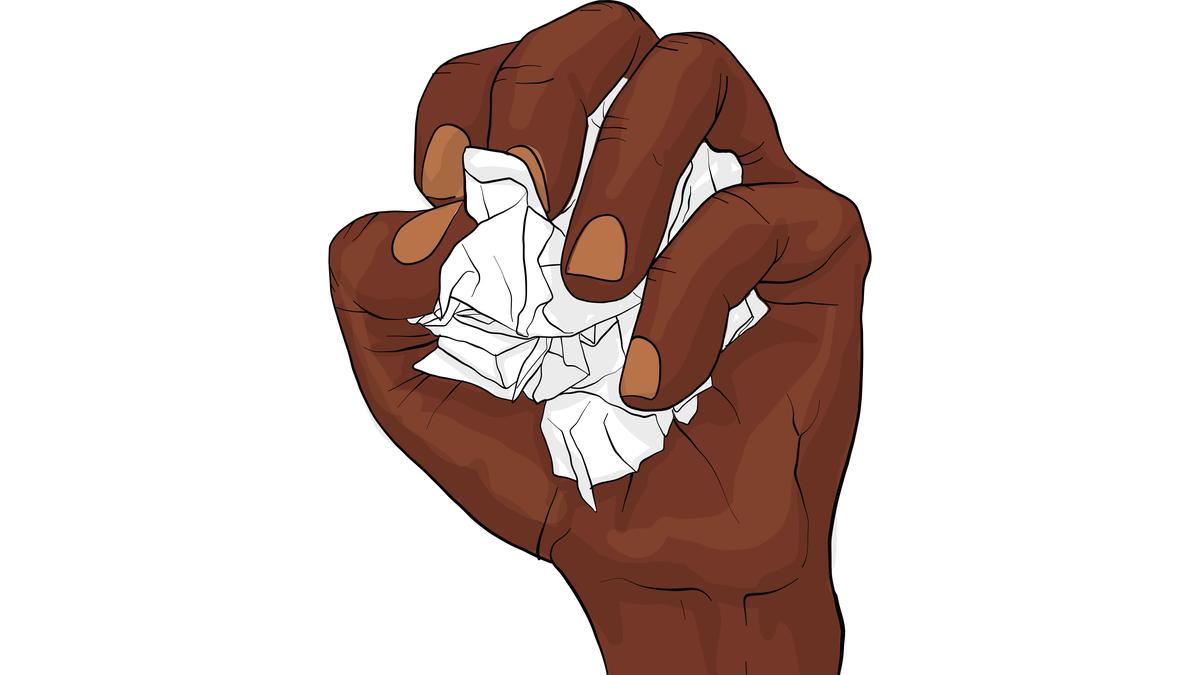
- 16 Sep 2025
In News:
The recent amendment to the Right to Information (RTI) Act, 2005 through the Digital Personal Data Protection (DPDP) Act, 2023 has sparked an intense debate on the balance between citizens’ right to information and the right to privacy. Critics argue that the change could transform India’s celebrated transparency law into a “Right to Deny Information”, undermining democratic accountability.
Evolution and Purpose of the RTI Act
- Enacted in 2005, the RTI Act is one of India’s most significant democratic reforms, aimed at promoting transparency, accountability, and citizen empowerment. It gives citizens the legal right to access information from public authorities, including government ministries, departments, and publicly funded organizations.
- Under the Act, public authorities are required to respond within 30 days to RTI requests. It also imposes penalties on officials who fail to provide information without valid reasons. Exemptions are limited to cases involving national security, confidential investigations, or information that could endanger individuals’ safety.
- The RTI rests on a foundational democratic principle — information held by the government belongs to the people. The state is merely a custodian of this information, accountable to citizens.
Amendment Through the DPDP Act, 2023
- Earlier, Section 8(1)(j) of the RTI Act permitted the disclosure of personal information if such disclosure served a larger public interest, such as exposing corruption or verifying implementation of welfare schemes.
- The DPDP Act, 2023 amended this clause, removing the public interest override and prohibiting disclosure of personal data altogether, even if it relates to public officials, unless legally mandated. This change effectively creates a blanket exemption for “personal information,” narrowing citizens’ access to critical public records.
Government’s Rationale
The Union government defends the amendment as an attempt to harmonize two fundamental rights —
- The Right to Privacy under Article 21, recognized by the Supreme Court in Justice K.S. Puttaswamy (2017), and
- The Right to Information under Article 19(1)(a).
According to the government, Section 8(2) of the RTI Act still allows disclosure if public interest outweighs privacy concerns, maintaining an “appropriate balance.” Officials argue that the amendment merely removes redundancy and ambiguity between the RTI and DPDP frameworks.
Criticisms and Concerns
However, legal experts, activists, and journalists warn that the amendment tilts the balance heavily toward secrecy, undermining the RTI’s original spirit.
- Dilution of Transparency:Without the “public interest” clause, authorities can refuse disclosure of crucial information, limiting citizens’ ability to scrutinize governance, corruption, or misuse of power.
- Broad Definition of ‘Personal Data’:The DPDP Act defines personal data expansively, enabling arbitrary denials of RTI requests, even for information concerning public servants’ official actions, assets, or decisions.
- Threat to Democratic Oversight:The amendment risks converting RTI from a tool of empowerment into a bureaucratic shield, curbing social audits and investigative journalism.
- Conflict with RTI’s Objective:The RTI was intended to shift power from public officials to citizens. Restricting access reverses this power dynamic, eroding democratic participation and accountability.
Judicial and Institutional Perspectives
- Justice K.S. Puttaswamy (Retd.) vs Union of India (2017):The Supreme Court upheld privacy as a fundamental right but emphasized it is not absolute and must be balanced with other rights, including transparency and public accountability.
- Supreme Court vs Subhash Chandra Agarwal (2019):The Court ruled that the office of the Chief Justice of India is subject to RTI and that judges’ asset declarations must be disclosed, reinforcing the primacy of public interest in promoting accountability.
- Justice A.P. Shah Committee on Privacy (2012):The expert group explicitly recommended that any privacy law should not dilute or override the RTI Act, asserting that transparency and privacy are complementary, not conflicting, principles.
Recommendations for Balance
- Narrow Definition of Personal Information:Limit exemptions only to information that genuinely compromises privacy, while allowing disclosure of public officials’ professional conduct, assets, and decisions.
- Training for Public Information Officers (PIOs):To ensure they interpret privacy clauses correctly and maintain the transparency-privacy balance.
- Strengthening Information Commissions:Empower Central and State Information Commissions with greater capacity and independence to adjudicate privacy-related disputes.
- Periodic Review:Establish a parliamentary oversight committee to review the impact of privacy laws on the RTI regime.
World’s First AI “Minister”
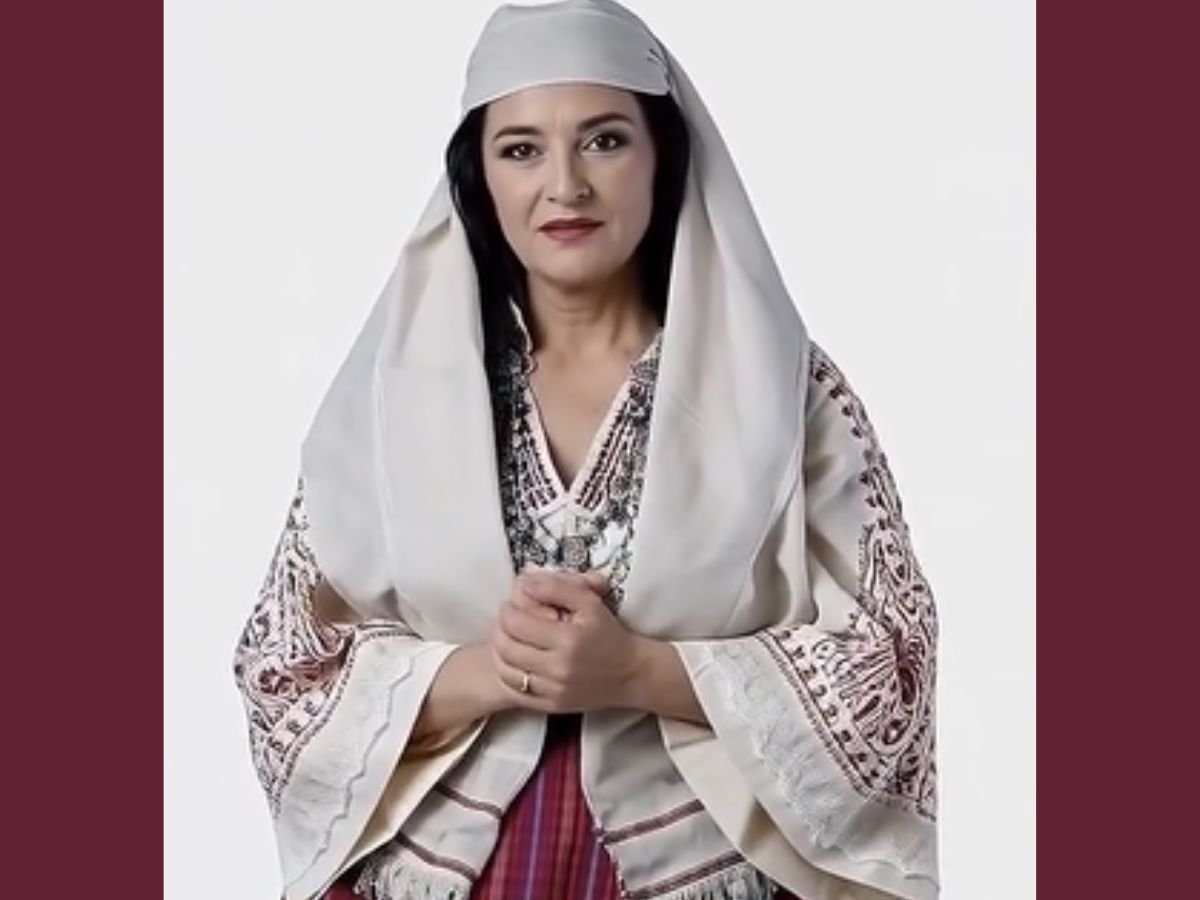
- 16 Sep 2025
In News:
In a historic first, Albania has appointed an AI-generated digital minister, named “Diella” (meaning ‘Sun’), to lead the country’s fight against corruption. The move, announced by Prime Minister Edi Rama, marks a pioneering experiment in AI-led governance, placing Albania at the forefront of the global debate on the use of artificial intelligence in public administration.
Background and Context
Albania has long struggled with systemic corruption, especially in public tenders, which have been at the centre of several high-profile scandals involving money laundering and organised crime. In response, the government has adopted an innovative approach — deploying AI to ensure transparency and accountability in governance.
Initially launched in January 2025, Diella began as an AI-powered virtual assistant helping citizens navigate e-Albania, the government’s online service portal. Dressed in traditional Albanian attire, the avatar symbolised the fusion of technology and national identity.
Following its successful trial, Diella has now been elevated to the rank of a “Digital Minister”, tasked with:
- Overseeing all public tenders, ensuring they are 100% corruption-free.
- Auditing tender decisions using data-driven algorithms for transparency.
- Recruiting global talent to strengthen Albania’s anti-corruption efforts.
- Promoting the digitisation of governance for efficiency and trust-building.
Ethical and Governance Concerns
While Diella’s appointment marks a milestone, it also highlights challenges associated with AI in governance:
- Bias and Discrimination: AI systems trained on flawed data may perpetuate societal biases.
- Accountability Gap: Ambiguity persists over who bears responsibility for AI-driven decisions — developers, operators, or governments.
- Data Privacy: Despite digital data laws, sensitive citizen information remains vulnerable.
- Job Displacement: Automation risks replacing administrative and clerical roles.
- Overdependence on Technology: Excessive reliance may undermine human judgment and empathy.
- Cybersecurity Threats: AI platforms are prone to hacking and data manipulation.
- Digital Colonization: Over-reliance on foreign AI technologies could erode national sovereignty.
India’s AI Governance Landscape
India has emerged as a global AI powerhouse through proactive policy initiatives:
- IndiaAI Mission (2024): ?10,300 crore initiative for AI research and common computing facilities (18,693 GPUs).
- BharatGen: First government-funded multimodal LLM (Large Language Model).
- Sarvam-1: Indigenous LLM supporting 10 major Indian languages (2 billion parameters).
- Hanooman’s Everest 1.0: Supports 35 Indian languages, expanding to 90.
- AI Centres of Excellence: Promoting innovation and AI startups nationwide.
- Digital Public Infrastructure (DPI): Integrates Aadhaar, UPI, DigiLocker, and AI solutions for efficient service delivery.
- e-Courts Phase III: Uses AI for smart case management and administrative reforms.
Nepal’s First Woman Prime Minister
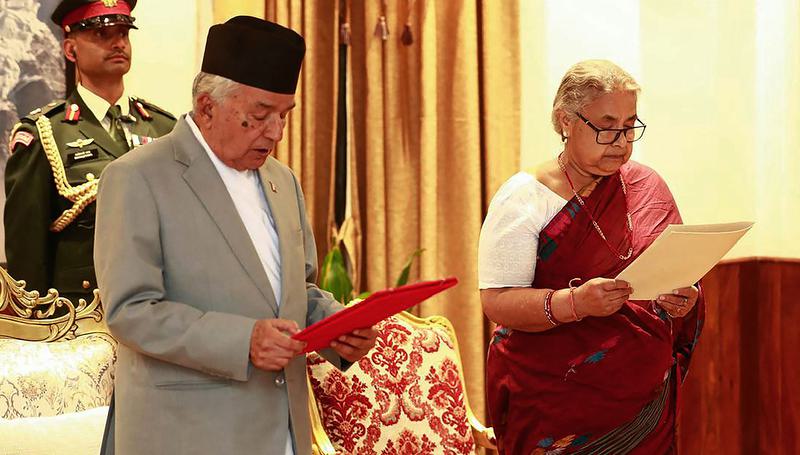
- 16 Sep 2025
In News:
Nepal has entered a crucial phase of political transition with the appointment of Sushila Karki, former Chief Justice and now the country’s first woman Prime Minister. President Ram Chandra Poudel administered the oath of office after dissolving Parliament and announcing fresh elections for March 5, 2026, marking a historic moment in Nepal’s democratic evolution.
Background: Political Turmoil and Gen Z-Led Movement
The decision came amid widespread Gen Z-led protests against former Prime Minister K.P. Sharma Oli, whose administration was accused of corruption, authoritarianism, and a social media ban that triggered nationwide unrest.
Facing pressure from the streets, the military, and constitutional experts, President Poudel dissolved the House and endorsed Karki’s appointment — a move described as a “remedial measure” during a political crisis. The protests, dominated by youth and digital activists, reflected a broader demand for accountability, transparency, and generational change in Nepal’s governance.
Sushila Karki: A Symbol of Integrity and Democratic Renewal
Aged 73, Sushila Karki is widely regarded as an upright and anti-corruption crusader. She holds a Master’s degree in Political Science from Banaras Hindu University and a Law degree from Tribhuvan University. As Nepal’s first female Chief Justice (2016–17), she was known for her fearless stance against corruption and political interference in the judiciary.
Her appointment as interim Prime Minister is supported by protesters, the Army, and civil society, who view her as a neutral and reformist leader capable of restoring trust in institutions. Her immediate mandate includes:
- Restoring law and order and maintaining peace amid political uncertainty.
- Investigating the September 8 violence and prosecuting those responsible for civilian deaths and attacks on state infrastructure.
- Overseeing the 2026 general elections and ensuring a peaceful, transparent transfer of power.
- Initiating constitutional reforms to strengthen democratic accountability.
Constitutional and Institutional Context
Although some questioned the legality of appointing a non-political figure as Prime Minister following Parliament’s dissolution, constitutional experts assert the decision falls within emergency democratic legitimacy, given the scale of the crisis. The Nepal Army played a stabilizing role throughout the unrest, mediating between the President’s Office and the protesters to ensure an orderly transition.
India–Nepal Relations: Context and Continuity
India welcomed Karki’s appointment, emphasizing stability, peace, and partnership under the ‘Neighbourhood First’ Policy. Nepal’s political stability is vital for India due to geostrategic, cultural, and economic interlinkages.
1. Geopolitical Significance:Nepal shares borders with five Indian states — Sikkim, West Bengal, Bihar, Uttar Pradesh, and Uttarakhand. Situated between India and China, it holds strategic importance in South Asian geopolitics.
2. Defence& Security Cooperation:India and Nepal share deep military ties, including the long-standing tradition of conferring honorary ranks on each other’s Army Chiefs. The Gorkha Regiment further symbolizes this enduring relationship based on mutual respect and trust.
3. Economic and Developmental Partnership:India remains Nepal’s largest trade and investment partner, accounting for over 64% of its trade and 33.5% of total FDI (USD 670 million). Bilateral trade stood at USD 8.85 billion in FY 2022–23, with India importing surplus electricity from Nepal.
India also provides 1,500+ scholarships annually under ITEC and other programs, supporting Nepal’s human resource development.
4. Cultural and People-to-People Ties:The countries share civilizational and religious linkages, exemplified by sites like Pashupatinath Temple (Kathmandu), Janakpur (birthplace of Sita), and Bodh Gaya (India). Over 8 million Nepalis live and work in India, deepening cross-border social integration.
India–Mauritius Relations
- 15 Sep 2025
In News:
- India and Mauritius share a unique relationship anchored in history, culture, and strategic convergence in the Indian Ocean Region (IOR). The visit of Mauritius Prime Minister Navinchandra Ramgoolam to Varanasi in 2025 marked a new milestone, with India announcing a USD 680 million Special Economic Package.
- The package seeks to strengthen bilateral cooperation in infrastructure, defence, maritime security, and cultural ties, while reinforcing India’s role as a key development and security partner in the region.
Key Features of the Special Economic Package (2025)
- Infrastructure Development: At least 10 projects, including completion of the new Air Traffic Control (ATC) tower at SSR International Airport, expansion of highways and ring roads, and the development of Motorway M4.
- Healthcare & Education: Establishment of new schools and hospitals.
- Maritime Cooperation: Redevelopment of Port Louis into a stronger maritime hub, and agreements on hydrography for joint surveys and navigation charts of Mauritius’ Exclusive Economic Zone (EEZ).
- Chagos Archipelago Engagement: In-principle agreement for joint surveillance of the Chagos Marine Protected Area, where the Diego Garcia base (operated by the US-UK) is located. India strongly backed Mauritius’ sovereignty claims, consistent with its support for decolonisation.
- Trade Facilitation: Bilateral trade in local currencies to be enabled, following the launch of UPI and RuPay cards in Mauritius.
- Security Partnership: India reaffirmed its role as Mauritius’ “first responder” and “net security provider” in the Indian Ocean, providing hydrographic support, refitting Mauritius Coast Guard ships, and training personnel.
Historical and Cultural Ties
- Migration: Indian migration to Mauritius began under French rule (1700s) and intensified during British rule post-1834, when nearly 500,000 indentured labourers arrived, most of whom settled permanently.
- Demographics: Today, about 70% of Mauritius’s population (1.2 million) is of Indian origin, strengthening cultural and familial bonds.
- National Day: Mauritius celebrates its National Day on March 12, coinciding with Mahatma Gandhi’s Dandi March, reflecting its deep-rooted civilizational connect with India.
Economic and Commercial Relations
- Trade: In FY 2022–23, bilateral trade stood at USD 554.19 million, with Indian exports at USD 462.69 million.
- FDI: Mauritius remains a significant investor in India—second-largest source of FDI (FY 2023–24) after Singapore.
- CECPA (2021): The Comprehensive Economic Cooperation and Partnership Agreement was India’s first trade agreement with an African country, expanding market access in goods, services, and investment.
- DTAA (1982): While the Double Taxation Avoidance Agreement facilitated investments, it also raised concerns of misuse for money laundering and round-tripping.
Defence and Security Cooperation
- India is Mauritius’ preferred defence partner, supplying platforms like Dornier aircraft and Advanced Light Helicopters (Dhruv), along with a USD 100 million Line of Credit for defence procurement.
- Joint patrolling, hydrographic surveys, and capacity building highlight the depth of security ties.
- The Agaléga Island Projects (airstrip and jetty, inaugurated in 2024) enhance maritime domain awareness and India’s strategic reach in the southwest Indian Ocean.
Strategic Significance of Mauritius for India
- Geopolitical Location: Mauritius, located 800 km east of Madagascar, is a crucial node for maritime security and trade in the Indian Ocean.
- Countering China: China’s growing influence, marked by its 2021 FTA with Mauritius under the Belt and Road Initiative (BRI), necessitates stronger India–Mauritius collaboration.
- Blue Economy: Mauritius’ EEZ expansion (post-treaty with the UK over Chagos) provides new opportunities in fisheries, offshore energy, and maritime resources, where India is a preferred partner.
- Regional Cooperation: Mauritius is active in the Indian Ocean Rim Association (IORA), aligning with India’s SAGAR vision—“Security and Growth for All in the Region”—and Vision MAHASAGAR.
Sarcoidosis
- 15 Sep 2025
In News:
- Sarcoidosis is a chronic inflammatory diseasecharacterised by the formation of granulomas—small clusters of immune cells—in multiple organs, most commonly the lungs and lymph nodes.
- The condition has a highly variable clinical course, ranging from asymptomatic or mild presentations to severe, life-threatening complications.
- Recent peer-reviewed studies, including those published in Nature Reviews Disease Primers,emphasise the importance of early diagnosis, timely intervention, and awareness of risk factors in improving patient outcomes.
Causes and Risk Factors
- The exact cause of sarcoidosis remains unknown, but evidence points towards a combination of genetic susceptibility, immune system overactivity, and environmental triggers.
- Possible stimuli include bacteria, viruses, dust, and chemical exposure. Certain gene variations may predispose individuals, with the immune system reacting abnormally, leading to chronic inflammation and granuloma formation.
Symptoms and Clinical Manifestations
Symptoms vary depending on organ involvement:
- Pulmonary (most common): persistent cough, shortness of breath, chest pain; advanced cases may progress to pulmonary fibrosis and respiratory failure.
- Skin: rashes, bumps, or nodules; tender sores (erythema nodosum).
- Eyes: redness, pain, blurred vision.
- Cardiac: irregular heartbeats, heart failure.
- Neurological: seizures, facial paralysis, or peripheral nerve damage.
Some patients remain asymptomatic, with the disease detected incidentally during routine examinations.
Diagnosis
Diagnosis requires a combination of clinical evaluation, imaging, and biopsy.
- Chest X-rays/CT scans often reveal characteristic granuloma patterns.
- Biopsy confirms non-caseating granulomas, distinguishing sarcoidosis from infections and malignancies.
- Blood tests and lung function tests help assess disease activity and organ damage.
Treatment Approaches
There is no definitive cure for sarcoidosis, but management depends on severity and organ involvement:
- Mild/asymptomatic cases: often require only observation and regular monitoring.
- Moderate to severe cases: treated with corticosteroids (e.g., prednisone) to suppress inflammation.
- Refractory cases: immunosuppressive agents (methotrexate, azathioprine) or biologic therapies targeting immune pathways.
Long-Term Outlook
The prognosis is highly variable:
- Many cases resolve spontaneously within a few years.
- Others may become chronic, causing permanent lung scarring, cardiac complications, or organ dysfunction.
- Early detection and continuous monitoring remain critical to preventing irreversible damage.
Public Health Relevance
Sarcoidosis highlights the complex interaction between genetics, immunity, and environment. Its unpredictable nature underlines the need for:
- Awareness campaigns for early recognition of symptoms.
- Strengthening diagnostic infrastructure in primary healthcare.
- Research on genetic predispositions and immunological mechanisms to develop targeted therapies.
Doctrine of Contributory Negligence
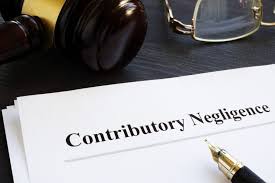
- 15 Sep 2025
In News:
The Andhra Pradesh High Court has recently clarified that the doctrine of contributory negligence cannot be invoked as a defence in criminal prosecutions. It held that a person driving rashly and negligently, causing death, will be held liable under Section 304A of the Indian Penal Code (IPC), even if the victim was partly negligent. This landmark ruling reinforces the distinction between civil liability for damages and criminal liability for offences.
Doctrine of Contributory Negligence: Concept
- Contributory negligence rests on the principle that every individual must exercise reasonable care for their own safety.
- If an injured party’s negligence contributes to the harm, they may be considered partly responsible.
- The doctrine stems from the legal maxim “Volenti non fit injuria” — one who consents to risk cannot later claim damages.
- Example: If a pedestrian crosses the road carelessly and is hit by a rash driver, the pedestrian’s conduct may reduce their claim for compensation in civil law.
Civil Law vs. Criminal Law Application
- Civil Law:
- Contributory negligence acts as a defence, reducing damages payable by the defendant.
- Indian courts often apply the principle of comparative negligence, apportioning liability based on the degree of fault of each party.
- Burden of proof lies on the defendant to show that the plaintiff’s negligence contributed to the harm.
- Criminal Law:
- The AP High Court clarified that contributory negligence is not a defence to criminal liability.
- Section 304A IPC punishes causing death by rash or negligent act, irrespective of victim’s conduct.
- Even if the victim was negligent, the accused cannot escape responsibility if their rashness directly caused the death.
Judicial Reasoning and Precedent
- Criminal liability is premised on breach of legal duty and societal responsibility, not merely individual claims of fairness.
- If contributory negligence were allowed as a defence in criminal law, it could dilute accountability and weaken deterrence against rash driving.
- By upholding strict liability under Section 304A IPC, the court reinforced that public safety outweighs individual contributory fault.
Indian Legal Position
- India does not have a codified statute on contributory negligence; instead, principles are derived from common law and judicial interpretation.
- In civil cases, courts exercise discretion to distribute damages fairly.
- In criminal prosecutions, however, the focus remains on the offender’s culpability, not the victim’s carelessness.
Significance of the Ruling
- Public Safety: Strengthens accountability for rash driving and negligent acts, a major cause of road fatalities in India.
- Doctrinal Clarity: Clearly separates the scope of contributory negligence in civil law from its inapplicability in criminal law.
- Victim-Centric Approach: Ensures justice is not denied to victims’ families on grounds of partial fault.
- Judicial Consistency: Aligns with the principle that criminal law serves deterrence and social protection, unlike civil law which primarily compensates.
Border Wing Home Guards
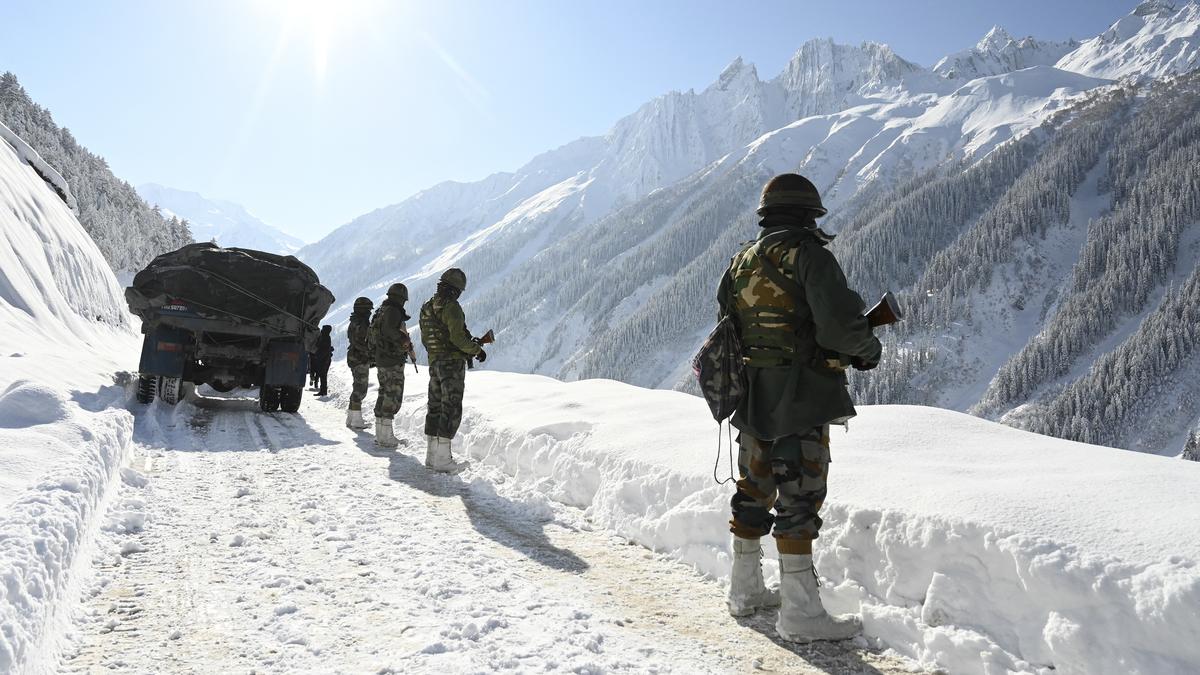
- 15 Sep 2025
In News:
The Union Ministry of Home Affairs (MHA) is contemplating the deployment of Border Wing Home Guards (BWHG) along the India–China border, on the lines of their existing role along the India–Pakistan border. This move reflects India’s evolving approach to border management, civilian participation in security, and augmentation of regular forces like the Indo-Tibetan Border Police (ITBP).
About Border Wing Home Guards (BWHG)
- Legal Framework: Home Guards are constituted under the Home Guards Act and Rules of States/Union Territories.
- Authorised States: Seven states have been authorised to maintain BWHGs — Meghalaya, Tripura, Assam, West Bengal, Punjab, Rajasthan, and Gujarat.
- Current Status: Presently, Rajasthan is the only state with active BWHGs.
- Tenure & Duties: Members are usually enlisted for 3–4 years, perform responsibilities similar to police constables, and receive training with 25% of costs borne by the Central Government.
Recruitment and Composition
- Open to individuals from all classes and walks of life, who volunteer their spare time for community and national service.
- Trained to act as a reserve force, capable of rapid mobilisation during border crises and emergencies.
Roles and Responsibilities
- Border Security:
- Act as ancillaries to the Army and ITBP.
- Assist in guarding vital installations, vulnerable areas, and border outposts, particularly during hostilities.
- Internal Security:
- Serve as an auxiliary to the police during law-and-order situations.
- Help in maintenance of essential services, disaster management, and crowd control.
- Community Support:
- Provide assistance during natural calamities such as earthquakes, floods, cyclones, and epidemics.
- Promote communal harmony and support protection of vulnerable sections of society.
- Operational Experience:
- Played a key role in information collection and dissemination during Operation Sindoor.
- Used effectively in intelligence support and area familiarisation along sensitive borders.
Strategic Relevance Along the China Border
- Force Multiplier: Deployment of BWHGs can supplement the ITBP and Army in surveillance, information gathering, and local liaison in border villages.
- Civil–Military Synergy: Encourages participation of local communities in security efforts, thereby improving intelligence flow and fostering trust.
- Cost-Effective Option: As they are part-time volunteers with limited tenure, they reduce the financial burden compared to raising additional paramilitary units.
- Border Management: Their presence may strengthen village defence networks in frontier areas, countering infiltration and enhancing preparedness.
INS Aravali
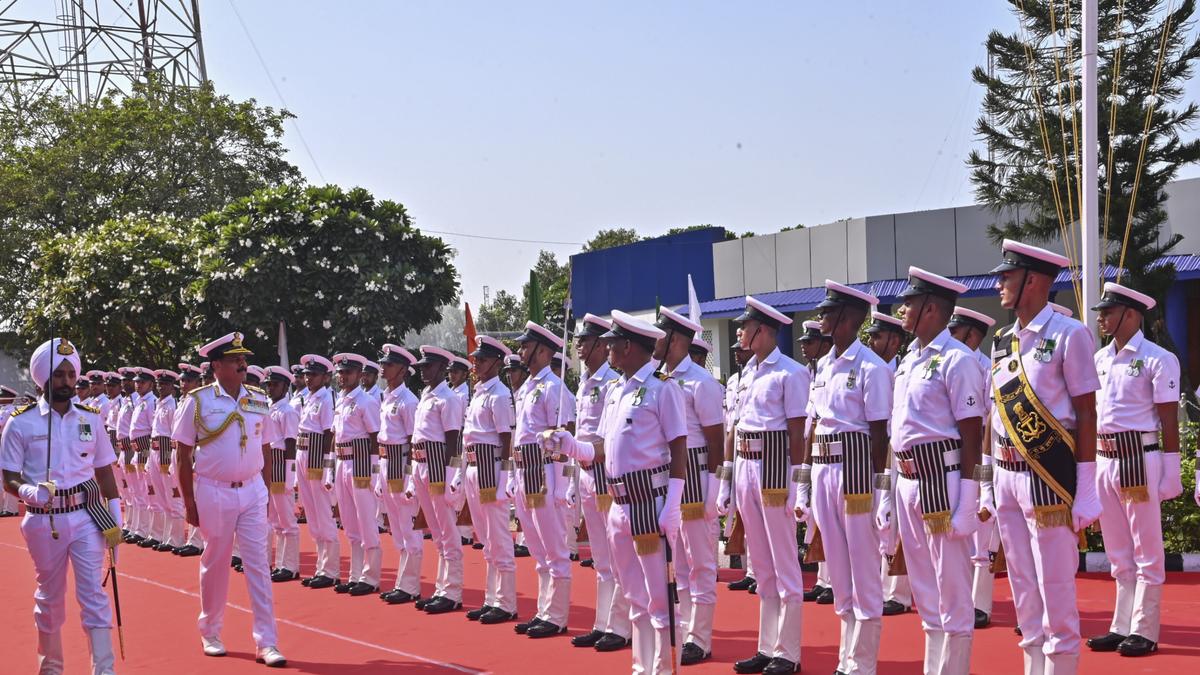
- 15 Sep 2025
In News:
The Indian Navy has recently commissioned INS Aravali, its latest naval base, at Gurugram, Haryana. Named after the ancient Aravali mountain range, the establishment is envisaged as a nerve centre for command, control, and Maritime Domain Awareness (MDA) operations, marking a significant stride in India’s maritime security architecture.
Strategic Importance
INS Aravali is designed to enhance the Navy’s information and communication infrastructure, which is central to modern maritime operations. Located in Gurugram—close to the national capital—it will support real-time decision-making, inter-agency coordination, and domain awareness across the vast Indian Ocean Region (IOR). This reflects India’s aspiration to position itself as the Preferred Security Partner in the IOR amidst evolving geopolitical challenges.
Motto and Vision
Guided by the motto “Maritime Security through Collaboration”, INS Aravali embodies a cooperative approach to maritime defence. It seeks synergy between naval information centres, maritime agencies, and allied stakeholders. The base also aligns with India’s broader strategic vision of MAHASAGAR (Mutual and Holistic Advancement for Security and Growth Across Regions), which underlines collaborative security and regional growth.
Symbolism and Identity
The crest of INS Aravali carries deep symbolism:
- A central mountain signifies the resilience and enduring strength of the Aravali Range.
- A rising sun reflects eternal vigilance, renewal, and the dawn of technological advancement in naval communications.
Together, they highlight the base’s mission to combine steadfastness with innovation in safeguarding India’s maritime interests.
Role in Maritime Domain Awareness (MDA)
MDA has become indispensable in an era of increasing threats, including piracy, illegal fishing, smuggling, cyber vulnerabilities, and grey-zone conflicts. INS Aravali’s role is to integrate satellite-based monitoring, coastal radar networks, information fusion, and real-time communication to ensure seamless surveillance of India’s maritime domain. It also supports the Navy’s partnerships with regional navies, reflecting the Indo-Pacific emphasis on collaborative security.
Broader Significance
- National Security: Enhances India’s capability to respond rapidly to maritime threats and secure sea lanes of communication, vital for trade and energy security.
- Regional Diplomacy: Strengthens India’s profile as a net security provider in the Indian Ocean, reinforcing strategic trust among neighbouring littoral states.
- Technological Edge: Demonstrates the Navy’s focus on modern information infrastructure and cyber-resilient systems to address multi-dimensional security challenges.
- Civil-Military Integration: Showcases participatory security governance by working with other agencies, reflecting a whole-of-government approach.
Non-communicable Diseases
- 14 Sep 2025
In News:
Non-Communicable Diseases (NCDs) such as cardiovascular disorders, diabetes, chronic respiratory ailments, and cancers have emerged as the leading cause of premature mortality globally. A recent Lancet study tracking progress across 185 countries (2010–2019) highlighted a worrying trend for India: unlike most nations where mortality risk from NCDs declined, India witnessed an increase in NCD-related deaths, especially among women.
Key Findings from the Lancet Study
- Rising Mortality Risk: Between 2010–2019, NCD mortality in India increased by 2.1% for females and 0.1% for males, compared to a decline in the previous decade.
- Probability of Death Before 80:
- Women – rose from 46.6% (2010) to 48.7% (2019).
- Men – remained high at 57.9% (2019), up from 57.8% (2010).
- Major Drivers: Ischaemic heart disease and diabetes (including kidney disease due to diabetes) contributed most to the rising risk, especially in women over 40 and men over 55.
- Improvements: Declines in deaths from liver cirrhosis, stroke, COPD, and stomach cancer were recorded, largely due to better blood pressure awareness and management.
Causes of the NCD Burden in India
- Lifestyle Factors
- Rapidly rising obesity, driven by unhealthy diets and sedentary lifestyles.
- Increased consumption of processed foods, sugary beverages, and trans fats.
- Tobacco and alcohol use.
- Environmental & Social Factors
- Urbanization, pollution (ambient and indoor), and chronic stress.
- Ageing population and poverty-driven dietary imbalances.
- Health System Gaps
- Limited access to quality primary care and preventive services.
- Low penetration of screening and early detection programmes in rural areas.
Expert Insights
- Diabetes–Obesity–Heart Disease Spiral: Experts warn that India’s growing obesity rates are fuelling diabetes, which in turn increases risks of cardiovascular complications.
- Policy Solutions Suggested:
- Aggressive taxation (up to 40%) on sugary drinks and ultra-processed foods.
- Subsidies for vegetables, fruits, and nutrient-rich foods.
- Urban planning reforms to create walking spaces and encourage physical activity.
- Public campaigns against tobacco, alcohol, excess salt, and stress.
- Tackling pollution as a compounding risk factor.
National Initiatives to Combat NCDs
- National Programme for Prevention and Control of NCDs (NP-NCD): Launched in 2010, expanded in 2023, focuses on early detection, management, and referral.
- 75/25 Initiative (2023): Targets 75 million people with hypertension and diabetes by 2025 through standardized care.
- Ayushman Bharat–PMJAY: Provides financial protection for tertiary NCD treatment and upgrades PHCs into Ayushman Arogya Mandirs.
- Eat Right India Movement (FSSAI): Promotes healthier diets and reduction of trans fats.
- Fit India Movement: Encourages regular physical activity and fitness to reduce lifestyle-related risks.
Way Forward
India’s NCD challenge demands a multi-pronged strategy:
- Strengthening primary healthcare for screening and early detection.
- Fiscal measures (taxes and subsidies) to influence dietary choices.
- Health education campaigns to promote lifestyle modifications.
- Integration of NCD management into universal health coverage.
- Climate and pollution control measures, given their direct links to respiratory and cardiac illnesses.
Five Years of Blue Revolution 2.0
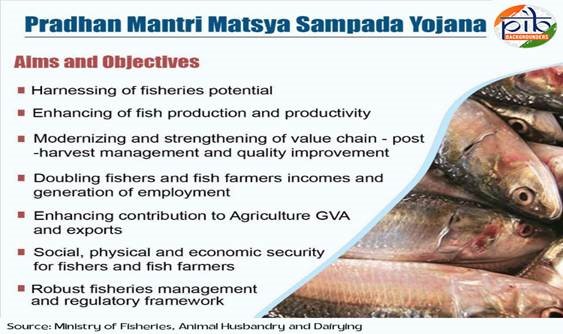
- 14 Sep 2025
In News:
India’s fisheries sector has been a key driver of food security, livelihoods, and exports. The Blue Revolution (2015) enhanced fish production and modernized infrastructure but left gaps in post-harvest management, market access, fisher welfare, and sustainability.
To bridge these, the government launched the Pradhan Mantri MatsyaSampada Yojana (PMMSY) in September 2020, with an investment of ?20,050 crore. It sought to make the sector ecologically sustainable, economically viable, and socially inclusive. The scheme has now been extended up to 2025–26.
Objectives
PMMSY aims to:
- Harness fisheries potential in a sustainable, equitable, and responsible manner.
- Enhance fish production, diversification, and efficient use of land and water.
- Strengthen value chains through modernized post-harvest infrastructure and quality improvements.
- Double incomes of fishers and generate large-scale employment.
- Enhance contribution to Agriculture GVA and exports.
- Provide social, physical, and economic security for fishers.
- Establish a robust fisheries management and regulatory framework.
The scheme functions through two components:
- Central Sector Scheme (CS): Fully funded by the Centre.
- Centrally Sponsored Scheme (CSS): Cost-sharing with states, further divided into beneficiary and non-beneficiary oriented activities.
Milestones and Achievements
In its first five years, PMMSY has significantly reshaped India’s fisheries sector:
- Production: Fish output rose from 141.64 lakh tonnes (2019–20) to a record 195 lakh tonnes in 2024–25, making India the second-largest fish producer globally (8% of world production).
- Exports: Grew from ?46,662 crore (2019–20) to ?60,524 crore (2023–24), strengthening India’s global seafood footprint.
- Livelihoods: Created nearly 58 lakh jobs and supported 99,018 women beneficiaries, with up to 60% subsidy support for women entrepreneurs.
- Technology adoption: Supported 52,058 reservoir cages, 22,057 RAS &Biofloc units, 1,525 sea cages, and raceways, making aquaculture more productive and climate-resilient.
- Post-harvest infrastructure: Approved projects worth over ?3,281 crore for 58 fishing harbours, 734 cold storages, 21 wholesale fish markets, 192 retail markets, 6,410 kiosks, and digital fish trade platforms.
- Community resilience: Declared 100 Climate Resilient Coastal Fishermen Villages and promoted sustainable technologies like Biofloc, which reduces water use and boosts productivity.
Supplementary Initiatives
- Pradhan Mantri MatsyaKisanSamridhiSah Yojana (PM-MKSSY): Launched in 2024 as a central sub-scheme with an outlay of ?6,000 crore (2023–27). Focuses on formalisation, aquaculture insurance, value chain efficiency, and quality assurance.
- National Fisheries Digital Platform (NFDP): Introduced in 2024 to digitise the sector, provide work-based digital identities, enhance credit access, ensure traceability, and integrate cooperatives. By September 2025, it had 2.7 million registrations.
Challenges
- Climate stress: Rising sea temperatures and extreme weather threaten coastal ecosystems.
- Infrastructure gaps: Cold storage and transport remain inadequate in remote areas.
- Overfishing: Risks depletion of marine resources.
- Limited reach: Many small-scale fishers lack awareness and access to formal schemes.
Scarborough Shoal Dispute
- 14 Sep 2025
In News:
The Scarborough Shoal, a triangular atoll in the South China Sea, has once again become a flashpoint after China announced the establishment of a 3,524-hectare nature reserve in the disputed waters. The move has drawn strong protests from the Philippines, which claims sovereignty over the feature and views China’s step as an assertion of jurisdiction under the guise of ecological protection.
Geographical and Strategic Significance
- The shoal is located about 220 km west of the Philippines’ Luzon Island and falls well within Manila’s 200-nautical mile Exclusive Economic Zone (EEZ) under the 1982 UN Convention on the Law of the Sea (UNCLOS).
- Claimed by both China (which calls it Huangyan Island) and the Philippines (locally known as Panatag Shoal or Bajo de Masinloc), sovereignty over the shoal remains unsettled.
- Its location near major global shipping lanes that carry over $3 trillion worth of trade annually enhances its geostrategic value.
- The lagoon and surrounding waters are rich in fish stocks, shellfish, and sea cucumbers, making it a vital fishing ground for regional communities.
Historical and Legal Context
- China’s claim: Traced back to maps from the Yuan Dynasty (1200s), Beijing argues historical sovereignty.
- Philippines’ claim: Based on proximity, falling within its EEZ, and backed by the 2016 Permanent Court of Arbitration (PCA) ruling under UNCLOS, which invalidated China’s “nine-dash line” claim. The ruling, however, did not adjudicate on sovereignty but recognized the shoal as a traditional fishing ground for multiple nations.
- Control: China seized effective control of the shoal in 2012 after a naval standoff and has since maintained coast guard and fishing militia presence, often intercepting Filipino vessels.
China’s Nature Reserve Plan
- China has approved a marine protected area to conserve the coral reef ecosystem of the shoal.
- Chinese officials argue it reflects improved “jurisdiction and governance” and claim Filipino fishermen are responsible for overfishing and pollution.
- Critics, however, view the reserve as a political instrument to strengthen Chinese control and potentially restrict access to Filipino fishermen under the pretext of conservation.
- The Philippines has accused China of coral destruction and giant clam harvesting, raising the possibility of fresh international arbitration on environmental grounds.
Regional and Global Reactions
- Philippines: Strongly protested the move, viewing it as a violation of its sovereign rights. President Ferdinand Marcos Jr. has leveraged the issue domestically while deepening ties with the United States.
- United States: Condemned the reserve plan as “destabilising and coercive.” Under the 1951 Mutual Defence Treaty, Washington has pledged to defend the Philippines against armed attacks, including those occurring “anywhere in the South China Sea.”
- Risk of escalation: Recent incidents—such as the use of water cannons, ramming of boats, and close aerial encounters—underline the danger of miscalculation, though both sides avoid direct combat to prevent escalation.
- Expert views: Chinese analysts frame the reserve as ecological protection, while Philippine experts argue it is a strategic tool to consolidate Beijing’s de facto control and marginalize other claimants.
Implications
- For the Philippines:
- Raises questions about maritime security and economic livelihood of fishermen.
- Strengthens its reliance on the U.S. alliance for deterrence.
- For China:
- Enhances its long-term maritime footprint and jurisdictional claims.
- Risks further international pushback, reinforcing perceptions of coercion.
- For International Order:
- Challenges the enforcement of UNCLOS and undermines multilateral dispute settlement mechanisms.
- Escalates tensions in one of the world’s busiest waterways with direct implications for global trade.
AdFalciVax
- 14 Sep 2025
In News:
- The Indian Council of Medical Research (ICMR) has recently licensed its indigenous multi-stage malaria vaccine, AdFalciVax, to five Indian pharmaceutical companies — Indian Immunologicals Limited, Techinvention Lifecare Private Limited, Panacea Biotec Limited, Biological E Limited, and Zydus Lifesciences.
- The technology transfer follows an Expression of Interest (EoI) process launched in July 2025, inviting eligible organisations to commercialise the vaccine.
About AdFalciVax
AdFalciVax is India’s first recombinant multi-stage malaria vaccine, developed by the Regional Medical Research Centre (RMRC), Bhubaneswar, under ICMR. It is specifically designed to tackle Plasmodium falciparum, the most lethal malaria parasite responsible for high morbidity and mortality across tropical regions.
Key Features
- Dual-purpose protection: Prevents Plasmodium falciparum infection in individuals and reduces community-level transmission.
- Pre-bloodstream targeting: Stops the parasite before it reaches the bloodstream, breaking the infection cycle.
- Novel technology: Uses Lactococcus lactis, a genetically engineered food-grade bacterial host, as its delivery system.
- Dual-antigen approach:
- PfCSP (Plasmodium falciparum circumsporozoite protein) – prevents initial infection.
- Pfs230 and Pfs48/45 fusion proteins – block parasite transmission from humans to mosquitoes.
- Validated research: Pre-clinical trials conducted in collaboration with ICMR–National Institute of Malaria Research (NIMR) and the National Institute of Immunology (NII), New Delhi, supported by the Department of Biotechnology.
Licensing and Technology Transfer
The licences are granted on a non-exclusive basis, enabling multiple companies to develop, manufacture, and commercialise the vaccine simultaneously. This model is expected to:
- Accelerate vaccine production and reduce costs.
- Ensure wide accessibility within India and potentially in malaria-endemic regions abroad.
- Strengthen India’s position in vaccine innovation and biotechnology.
Significance
- Public health impact: With malaria still a major global health challenge, AdFalciVax offers a potential breakthrough in reducing disease burden.
- Strategic milestone: Marks India’s entry into the development of advanced recombinant vaccines targeting multi-stage pathogens.
- Global relevance: Supports the World Health Organization’s (WHO) goal of reducing malaria cases and deaths by at least 90% by 2030 under the Global Technical Strategy for Malaria.
Biodiversity Heritage Site
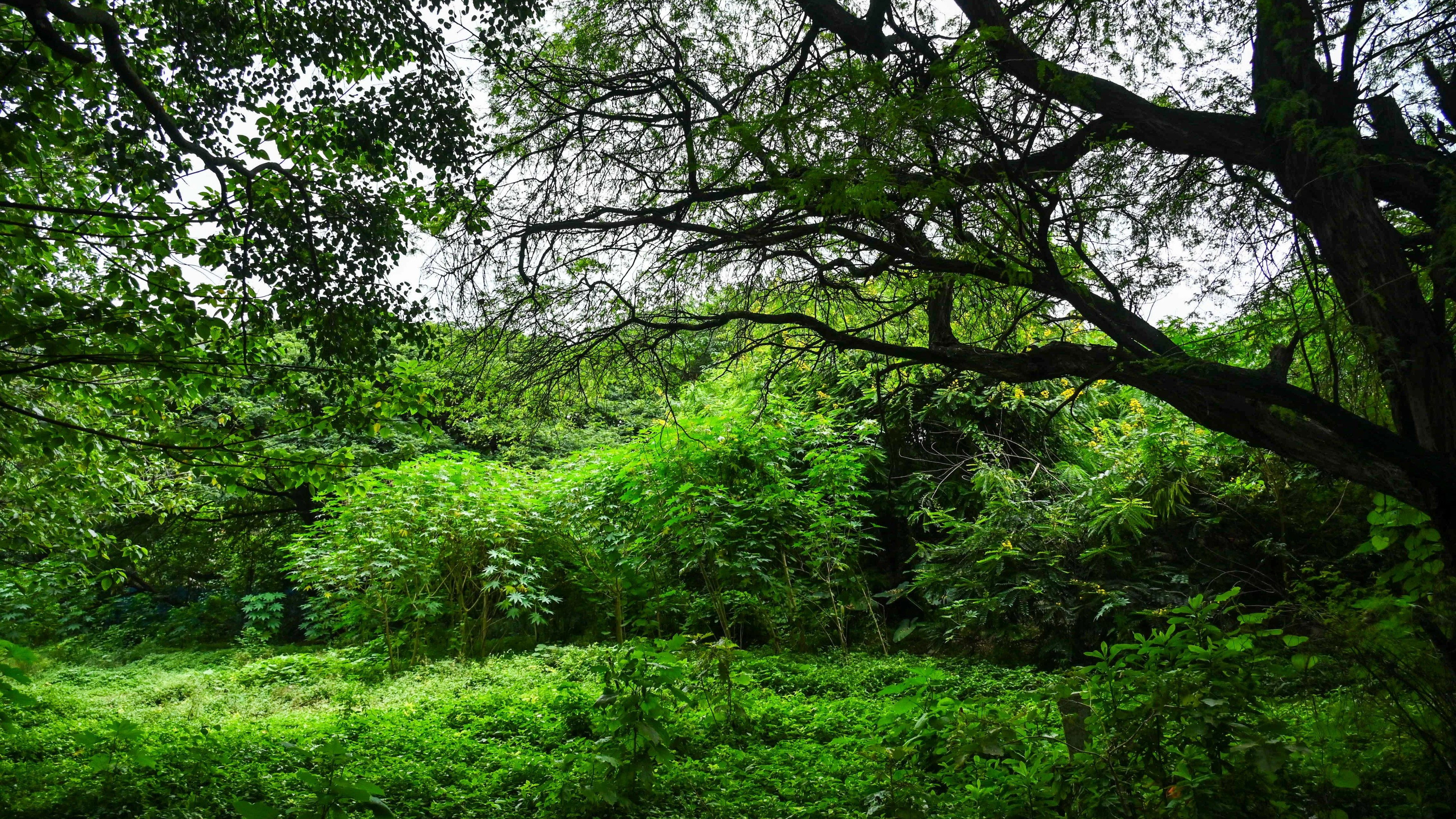
- 14 Sep 2025
In News:
Bengaluru has recently witnessed the declaration of 8.6 acres of green cover at Cantonment Railway Colony as a Biodiversity Heritage Site (BHS)—the second in the city after the Gandhi Krishi Vigyan Kendra (GKVK). This decision marks a crucial step in safeguarding urban green spaces under increasing developmental pressures.
Citizen-led Conservation Movement
- The site was earlier earmarked for commercial development by the Rail Land Development Authority in collaboration with private real estate players. However, strong resistance emerged from citizens and environmental groups, particularly the ParisarakkagiNaavu organization. A large-scale campaign saw the participation of over 15,000 residents, of whom only two opposed the proposal, reflecting strong public consensus in favor of conservation.
- This site houses 371 trees across nearly 50 species, highlighting its ecological diversity. The move demonstrates how community activism and participatory governance can effectively influence environmental decision-making.
About Biodiversity Heritage Sites
Biodiversity Heritage Sites are unique ecosystems identified for their ecological, cultural, and evolutionary significance. They may encompass terrestrial, aquatic, coastal, or marine ecosystems. Key features include:
- High species richness (wild and domesticated), including endemic and threatened species.
- Presence of keystone species, wild ancestors of cultivated plants, or species of evolutionary importance.
- Historical or cultural relevance, such as fossil beds or sites linked with traditional practices.
The first BHS in India was the Nallur Tamarind Grove (2007, Karnataka), and since then, several others have been declared across states.
Legal Framework
The Biological Diversity Act, 2002 (Section 37) empowers state governments to notify areas of biodiversity importance as BHS, in consultation with local bodies. Key provisions include:
- State autonomy in management, conservation, and framing rehabilitation schemes for affected communities.
- Community participation, with no restrictions on prevailing traditional practices unless voluntarily adopted.
- Purpose: Enhancing quality of life and ensuring sustainable use of biodiversity resources.
Thus, the Cantonment Colony green cover’s recognition aligns with both ecological imperatives and community welfare.
Significance for Bengaluru and Urban India
- Urban ecological security: Protecting 8.6 acres of dense green cover helps counteract urban heat islands, air pollution, and biodiversity loss in one of India’s most rapidly expanding cities.
- Community stewardship: The initiative illustrates how local involvement strengthens environmental governance.
- Policy relevance: The case highlights the role of public consultation in environmental decision-making, setting a precedent for other urban centers facing similar challenges.
Perpetual Bonds
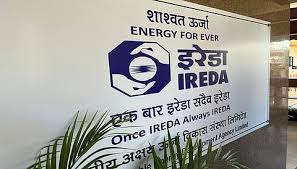
- 13 Sep 2025
In News:
- The Indian Renewable Energy Development Agency Ltd (IREDA) has successfully raised ?453 crore through its second issue of Perpetual Bonds at an annual coupon of 7.70%.
- The issue received bids worth ?1,343 crore against the base size of ?100 crore and a Green Shoe option of ?400 crore, resulting in an oversubscription of 2.69 times.
- This fund infusion will help IREDA strengthen its capital base and enhance its ability to finance green and renewable energy projects, in line with India’s clean energy transition goals.
What are Perpetual Bonds?
- Definition: A type of fixed-income security with no maturity date, paying interest indefinitely. They are also called “perps” or “consol bonds.”
- Redemption: Issuers are not obligated to repay the principal, though most bonds have a call option after 5–10 years, allowing issuers to redeem them if market conditions are favorable.
- Returns & Risk:
- Offer higher interest rates to compensate for indefinite tenure.
- Highly sensitive to interest rate fluctuations.
- In case of bankruptcy, bondholders are paid after secured creditors but before shareholders.
- Accounting Perspective: Often treated as equity-like instruments on balance sheets, making them attractive for strengthening capital structure without diluting ownership.
- Usage in India: Commonly issued by banks and financial institutions to meet capital requirements.
Significance of IREDA’s Move
- Capital Strengthening: Provides a stable, long-term source of funds without creating repayment obligations.
- Boost to Renewable Energy: Ensures greater financing availability for solar, wind, bioenergy, and emerging green technologies.
- Market Confidence: Oversubscription reflects investor trust in India’s renewable energy sector and in IREDA’s financial stability.
- Policy Alignment: Supports India’s commitment to achieve 500 GW of renewable capacity by 2030 and transition towards net-zero by 2070.
Isobutanol
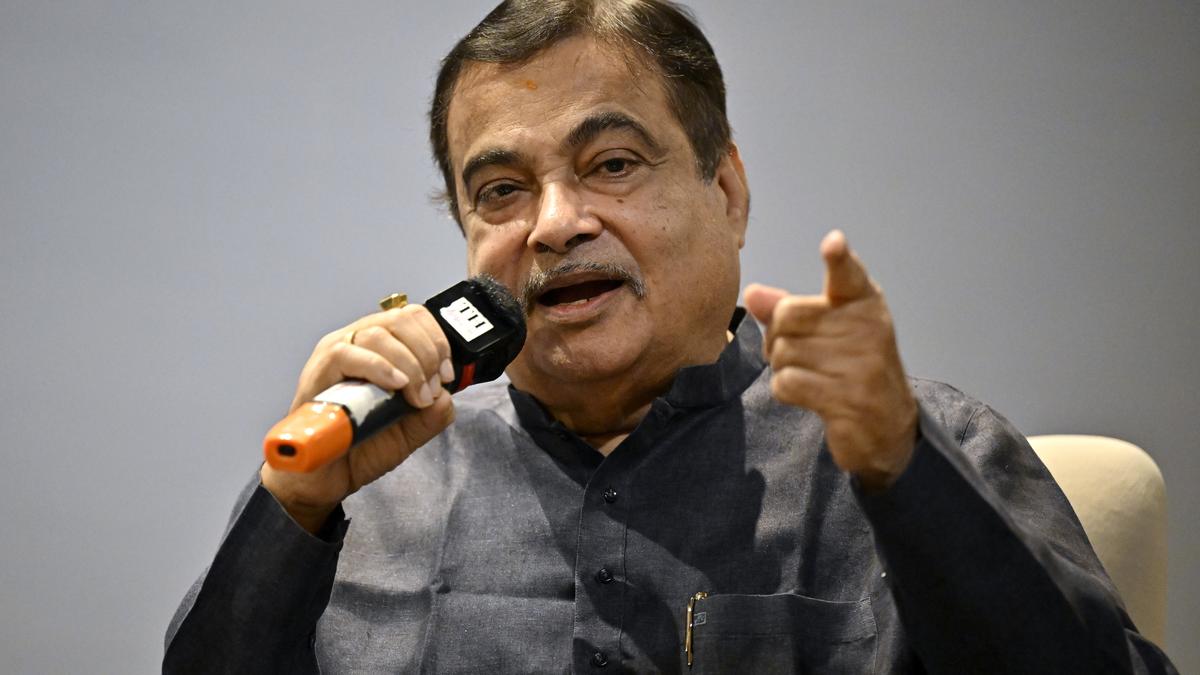
- 13 Sep 2025
In News:
- The Government of India is exploring the possibility of blending isobutanol with diesel, following the limited success of earlier attempts at blending ethanol with diesel.
- At the annual conclave of the India Sugar and Bio-Energy Manufacturers Association (ISMA), Union Minister for Road Transport and Highways, Nitin Gadkari, announced that the Automotive Research Association of India (ARAI) is conducting trials to test the feasibility of 10% isobutanol–diesel blends. Alongside blending, isobutanol is also being considered for standalone fuel applications.
- This development comes at a time when India has been pushing for higher ethanol blending with petrol (20%), but challenges remain in extending the same success to diesel, which accounts for the bulk of transport fuel consumption.
About Isobutanol
- Chemical Nature: An alcohol with the chemical formula C?H??O and one of the four isomers of butanol.
- Physical Properties:
- Clear, colorless liquid with a distinct odor.
- Moderately soluble in water.
- Highly flammable with a flash point just above room temperature.
- Vapors are heavier than air, making handling risky.
- Health Hazards: Prolonged exposure can cause skin irritation, eye damage (including vision loss), and respiratory issues.
Applications of Isobutanol
- Industrial Uses: Widely used as a solvent in paints, coatings, lacquers, flavor and fragrance industries, pharmaceuticals, and pesticides.
- Food Additive: Approved for limited use; also found naturally in some foods and alcoholic beverages.
- Biofuel Potential:
- Can be manufactured from plant-based sources using fermentation, often derived from ethanol.
- Higher energy density (heating value) compared to ethanol.
- Less corrosive and less hygroscopic than ethanol, enabling easier storage and transport in existing infrastructure.
- High octane rating, making it suitable for internal combustion engines.
- Unlike ethanol, it does not significantly distort vapor pressure when blended with gasoline.
Significance for India
- Energy Security: Diversifying biofuel options can reduce reliance on crude oil imports.
- Environmental Benefits: Biofuel adoption helps lower greenhouse gas emissions.
- Industrial Opportunities: Opens new avenues for sugar and bio-energy industries, which are central to India’s ethanol economy.
- Policy Alignment: Supports the government’s push towards alternative fuels and cleaner mobility under initiatives like the National Bio-Energy Mission.
Fast Track Immigration-Trusted TravellerProgramme
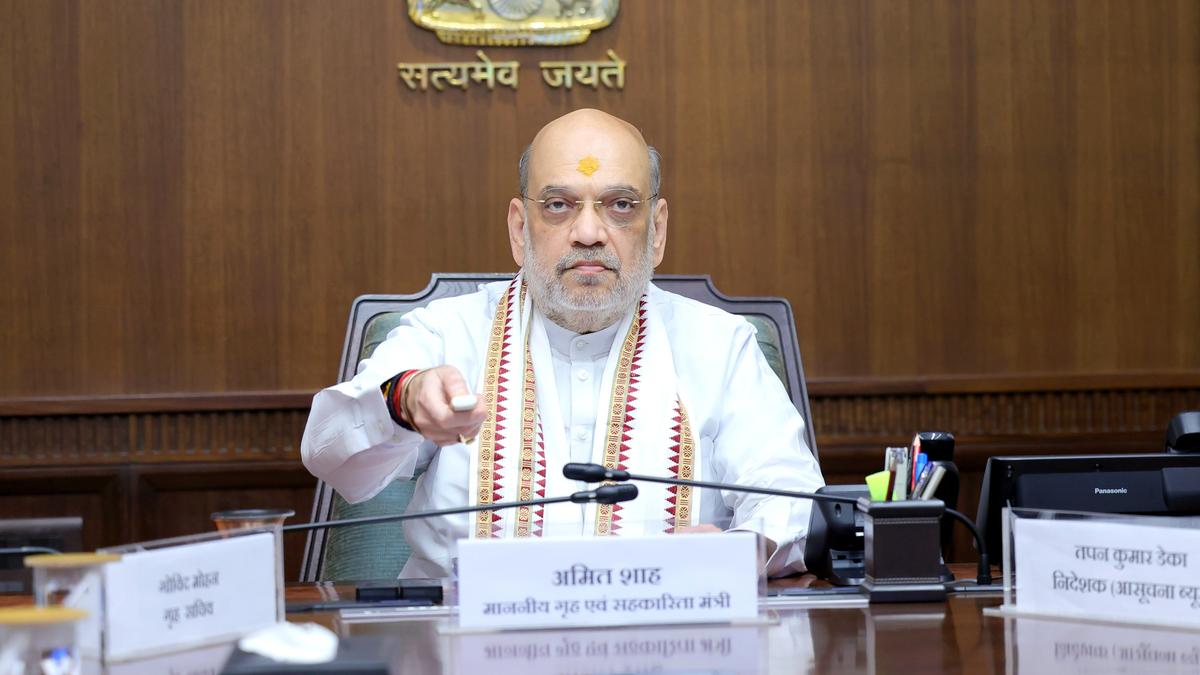
- 13 Sep 2025
In News:
- The Union Home Minister recently launched the Fast Track Immigration – Trusted TravellerProgramme (FTI-TTP) at five additional airports — Lucknow, Thiruvananthapuram, Tiruchirappalli, Kozhikode, and Amritsar — further expanding its coverage across the country.
- The initiative aims to provide seamless, secure, and faster immigration clearance for Indian citizens and Overseas Citizen of India (OCI) cardholders.
Background and Coverage
- Launch: First introduced at Delhi’s Indira Gandhi International (IGI) Airport in 2024.
- Latest Expansion: Now operational at 13 airports nationwide.
- Nodal Agency: Implemented by the Bureau of Immigration (BoI) under the Ministry of Home Affairs (MHA).
Objectives
- To reduce waiting time at immigration counters.
- To enhance international mobility of Indian citizens and OCI cardholders.
- To ensure convenient yet secure border management using digital technology.
Enrollment and Process
- Online Registration: Applicants must apply via the official portal https://ftittp.mha.gov.in, providing personal details and uploading documents.
- Biometric Capture: Collected either at Foreigners Regional Registration Offices (FRROs) or at the airport.
- Immigration Process at e-Gates:
- Boarding pass scan to fetch flight details.
- Passport scan for identity verification.
- Biometric authentication (fingerprint/face scan).
- Automated clearance — the e-gate opens within 30 seconds, eliminating the need for manual checks.
- Validity: Enrollment remains valid until the passport expires or for five years, whichever is earlier, with provision for renewal.
Significance
- Cuts down long queues at airports, reducing clearance time to under 30 seconds.
- Aligns with India’s vision of Digital Governance and Smart Borders.
- Enhances traveller experience, particularly for frequent international flyers.
- Strengthens security protocols through biometric and digital verification.
National Forest Martyrs Day 2025
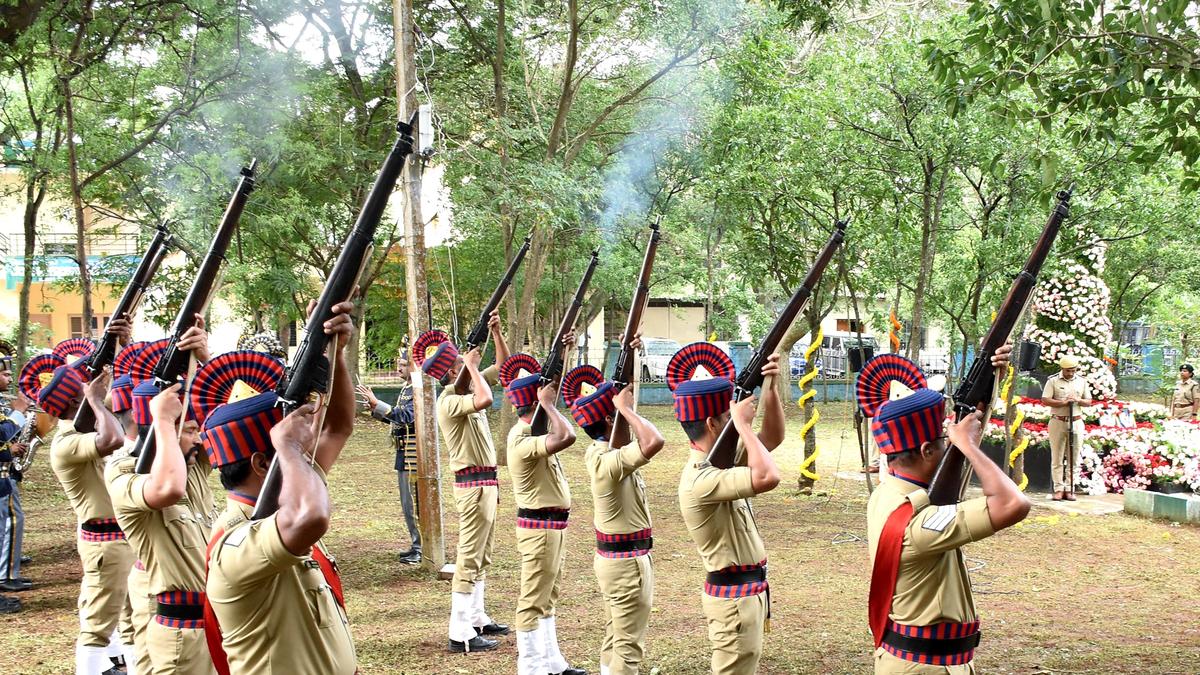
- 13 Sep 2025
In News:
- National Forest Martyrs Day is observed annually on September 11 to pay tribute to forest officials, personnel, and community members who have sacrificed their lives while protecting India’s forests and wildlife.
- The day recognizes the risks undertaken in the line of duty against threats like illegal logging, poaching, encroachment, and forest fires.
Historical Background
- The observance is rooted in the Khejarli Massacre of 1730 in present-day Rajasthan. When Maharaja Abhai Singh of Marwar ordered the felling of Khejri trees for palace construction, the Bishnoi community, led by Amrita Devi Bishnoi, resisted by embracing the trees. In the brutal crackdown, 363 villagers lost their lives to protect their sacred groves.
- This legacy later inspired environmental movements such as the Chipko Movement (1970s), reinforcing India’s tradition of community-led conservation. Recognizing this historic sacrifice, the Ministry of Environment, Forest and Climate Change (MoEFCC) officially declared September 11 as National Forest Martyrs Day in 2013.
Significance
- Commemoration of Sacrifice: The day honours not only the Bishnoi martyrs but also countless forest personnel who have died in the line of duty.
- Environmental Awareness: Highlights the critical role of forests in climate regulation, biodiversity conservation, and ecosystem services like air and water purification.
- Community Involvement: Encourages local communities to uphold traditions of eco-conscious living.
- Policy Emphasis: Reinforces the need for stronger laws and protection mechanisms for natural resources and frontline forest staff.
Observance
The day is marked through:
- Memorial ceremonies in forest departments.
- Tree plantation drives to promote ecological restoration.
- Awareness campaigns and educational programmes in schools and communities.
- Community participation to spread the message of sustainable living and conservation.
All India Debt and Investment Survey (AIDIS) and Situation Assessment Survey (SAS) of Agricultural Households (2026–27)
- 13 Sep 2025
In News:
- The National Statistics Office (NSO), under the Ministry of Statistics and Programme Implementation (MoSPI), is set to conduct two of its flagship household surveys — the All India Debt and Investment Survey (AIDIS) and the Situation Assessment Survey (SAS) of Agricultural Households — during July 2026 to June 2027.
- These surveys are part of the broader framework of the National Sample Survey (NSS), initiated in 1950, which provides critical data on consumption, employment, health, indebtedness, and welfare, forming the backbone of evidence-based policymaking in India.
All India Debt and Investment Survey (AIDIS)
- Origin and Evolution: Traces its roots to the All India Rural Credit Survey (1951-52), later expanded in 1961-62 to cover debt and investment. Since then, AIDIS has been conducted roughly once every decade, with the latest in the 77th Round (2019), at the request of the Reserve Bank of India (RBI).
- Coverage: Captures data on household indebtedness, savings, and asset ownership across rural and urban households.
- Significance:
- Inputs for national accounts and measurement of wealth distribution.
- Helps assess inequality in asset ownership and functioning of credit markets.
- Provides a crucial evidence base for the RBI, MoSPI, and financial policymakers.
Situation Assessment Survey (SAS) of Agricultural Households
- Launch and Expansion: Initiated in 2003 to examine the economic conditions of farmers, expanded in 2013 to cover all agricultural households, and further refined in the 2019 round.
- Scope of Coverage:
- Income and expenditure patterns of agricultural households.
- Indebtedness and credit access.
- Ownership of land and livestock.
- Crop and livestock production, farming practices, and adoption of technology.
- Access to government schemes, including crop insurance.
- Policy Relevance: Used extensively by the Ministry of Agriculture and Farmers Welfare, NITI Aayog, researchers, and financial institutions to frame policies for agriculture and rural development.
Technology Perspective and Capability Roadmap (TPCR) 2025
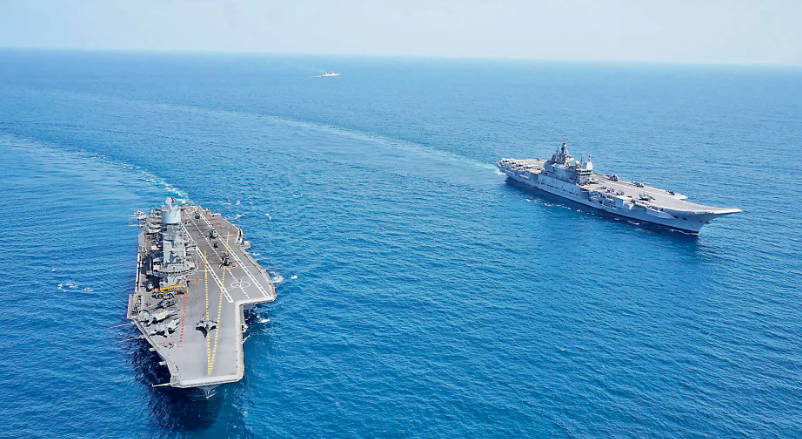
- 12 Sep 2025
In News:
- The Ministry of Defence (MoD) recently released the Technology Perspective and Capability Roadmap (TPCR) 2025, a strategic blueprint outlining India’s defence technology and capability requirements over the next 15 years.
- The roadmap aims to guide the Indian Army, Navy, and Air Force in modernisation while providing domestic industry, academia, and research institutions early visibility to align R&D and production with future procurement needs. Indigenisation and self-reliance form the core of TPCR 2025.
Objectives of TPCR 2025
- Early Visibility for Industry: Help domestic manufacturers and research organisations plan development and production of advanced defence systems.
- Indigenisation: Reduce dependence on imports and promote domestic defence manufacturing.
- Future-Ready Armed Forces: Equip the military to face multi-domain warfare challenges, including cyber, space, AI-enabled, and hybrid conflicts.
- Sustainability: Integration of green logistics and energy-efficient systems in defence operations.
Key Features by Service
Navy:
- Nuclear Propulsion: Plans to induct 10 nuclear propulsion systems for aircraft carriers and large surface combatants, providing virtually unlimited endurance at sea.
- Next-Generation Aircraft Carrier: Equipped with Electromagnetic Aircraft Launch System (EMALS) to launch heavy fighters, airborne early warning aircraft, and UAVs in all sea states. Digital twin simulations to enable predictive maintenance.
- Surface Combatants: Induction of 5–10 destroyers, 7 corvettes, 4 Landing Platform Docks (LPDs) (~29,000 tonnes each), and 100 Next Generation Fast Interceptor Craft for coastal security.
- Underwater Warfare: 20 high-endurance Autonomous Underwater Vehicles (AUVs) for long-range surveillance and mine countermeasures.
- Missiles & Weapons: Over 200 surface-to-surface missiles and universal launchers for multi-platform deployment.
Army:
- ArmouredModernisation: Replacement of ageing T-72 fleet with 1,800 Future Ready Combat Vehicles (FRCVs); 300–400 light tanks for high-altitude sectors.
- Anti-Tank and Precision Weapons: Procurement of 50,000 ATGMs with tandem HEAT warheads, along with 600,000 artillery rounds, emphasising precision-guided munitions.
- UAV & Robotic Systems: Deployment of 70 MALE/HALE UAVs, 800 integrated drone-loitering munitions systems, and 400 ultra-light missiles for UAVs; over 700 robotic counter-IED systems.
- Cyber & AI Warfare: AI-enabled detection, classification, and adaptive jammers creating 15 km electronic denial zones; deepfake detection tools for operational security.
Air Force:
- Directed-Energy Weapons: 10–15 Tactical High-Energy Laser (THEL) systems with ranges of 6–15 km; high-power microwave systems to neutralise incoming threats.
- Stealth and UAVs: 150 stealth bomber drones for deep-strike missions; 100+ remotely piloted aircraft for ISR and strike roles.
- Persistent Surveillance: 75 High-Altitude Pseudo-Satellites (HAPS) and 20 stratospheric airships for continuous ISR and communications over extended periods.
Tri-Services (Joint):
- Hypersonic Missiles: Induction of 500+ scramjet-propelled hypersonic missiles capable of Mach 5+ speeds for rapid strike across land, sea, and air.
- Universal Missile Launchers: Platforms for multiple missile types to ensure interoperability.
- Cyber-Space Preparedness: AI-as-a-service platforms for 4,000 users, quantum key distribution networks, satellite hardening, and post-quantum secure communications.
Cross-Cutting Technologies
- AI & ML: Smart, predictive warfare through digital twin simulations and autonomous systems.
- Hybrid Warfare Capability: Integration of unmanned systems, robotic tools, and precision-guided munitions.
- Green & Sustainable Defence: Energy-efficient platforms and logistics aligned with national sustainability goals.
Strategic Significance
TPCR 2025 positions India to:
- Achieve self-reliance in defence technologies.
- Maintain credible deterrence and modernisation across all domains.
- Address emerging threats in cyber, space, and multi-domain warfare environments.
- Strengthen domestic defence industrial base through early technology visibility.
India’s first port-based Green Hydrogen Pilot Project
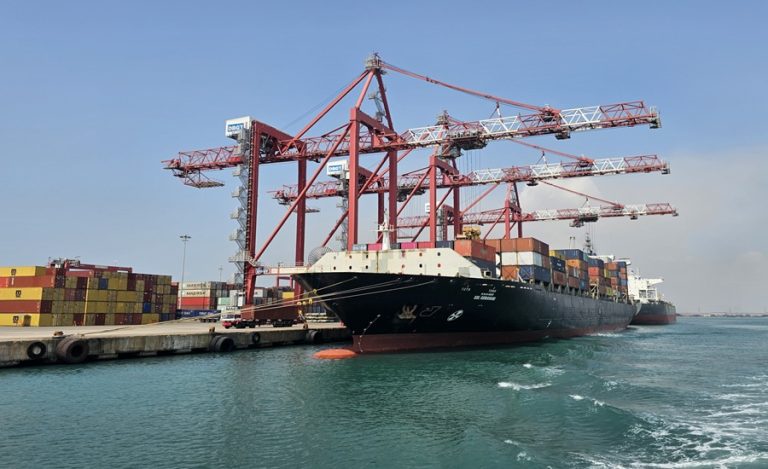
- 12 Sep 2025
In News:
Union Minister for Ports, Shipping and Waterways, SarbanandaSonowal, inaugurated India’s first port-based Green Hydrogen Pilot Project at V.O. Chidambaranar (VOC) Port, Tuticorin, Tamil Nadu, marking a significant step in India’s clean energy transition and green shipping ambitions.
Key Features of the Project
- Capacity: 10 Nm³ per hour.
- Cost: ?3.87 crore.
- Uses: The green hydrogen produced will power streetlights and an EV charging station in the port colony.
- Significance: VOC Port becomes the first Indian port to generate green hydrogen, aligning with India’s vision of Viksit Bharat 2047 and clean energy leadership.
Associated Green Initiatives at VOC Port
- Green Methanol Bunkering and Refuelling Facility
- Capacity: 750 m³, at a cost of ?35.34 crore.
- Expected to make VOC Port a green bunkering hub in South India.
- Linked to the proposed Coastal Green Shipping Corridor (Kandla–Tuticorin).
- Renewable Energy and Infrastructure Projects
- 400 KW rooftop solar plant, raising total capacity to 1.04 MW (highest among Indian ports).
- Foundation for a 6 MW wind farm.
- ?24.5 crore link conveyor to improve coal handling efficiency.
- ?90 crore multi-cargo berth and 3.37 km four-lane road for port connectivity.
- Upcoming Tamil Nadu Maritime Heritage Museum to showcase maritime history.
Strategic Importance
- Port Modernisation: Chennai, Kamarajar, and VOC ports have seen rapid expansion under the SagarmalaProgramme.
- 98 projects worth ?93,715 crore initiated in Tamil Nadu’s ports in the past 11 years.
- 50 projects completed; ?16,000 crore invested in modernisation and capacity building.
- Economic Impact:
- Expected to generate thousands of jobs.
- Attract global investments in green shipping and clean fuels.
- Strengthen India’s ambition of becoming a top 10 shipbuilding nation by 2030 and top 5 by 2047.
About V.O. Chidambaranar (VOC) Port
- Location: Tuticorin, Tamil Nadu, on the Coromandel Coast.
- Status: One of India’s 13 major ports, serving as a key maritime hub for South India.
- History: Formerly Tuticorin Port, renamed in 2011 after freedom fighter V.O. Chidambaranar (KappalottiyaTamizhan).
- Role: Major centre for coal handling, container trade, and now emerging as a green energy hub.
Angikaar 2025 Campaign
- 12 Sep 2025
In News:
The Ministry of Housing and Urban Affairs (MoHUA) has launched Angikaar 2025, a nationwide outreach campaign under the Pradhan Mantri Awas Yojana – Urban 2.0 (PMAY-U 2.0). The initiative seeks to bridge last-mile implementation gaps, accelerate housing delivery, and ensure that welfare benefits reach vulnerable urban families.
Objectives of Angikaar 2025
- Awareness Generation: Create widespread awareness of PMAY-U 2.0 across urban India.
- Housing Delivery: Fast-track verification of applications and completion of sanctioned houses.
- Beneficiary Support: Facilitate access to financial assistance, credit-linked support, and convergence with other welfare schemes.
- Inclusion: Prioritise housing needs of Special Focus Groups identified under PMAY-U 2.0.
Key Features
- Coverage: Over 5,000 Urban Local Bodies (ULBs) across India.
- Activities: Door-to-door campaigns, awareness drives, loan melas, cultural events, and anchor events under PM Awas Mela – Shehri.
- Convergence: Linkage with schemes such as the Credit Risk Guarantee Fund Trust for Low Income Housing (CRGFTLIH) and PM Surya Ghar: Muft Bijli Yojana.
PMAY-U Progress So Far
- Sanctioned Houses: 120 lakh.
- Completed & Delivered: 94.11 lakh pucca houses.
- Pending: Angikaar 2025 will focus on expediting completion of remaining sanctioned houses.
- Future Target under PMAY-U 2.0: Provide financial support (up to ?2.5 lakh per family) to an additional one crore urban families for constructing or purchasing pucca houses.
Significance
- Last-Mile Outreach: Brings government schemes closer to beneficiaries through direct engagement.
- Community Mobilisation: Promotes Jan Bhagidari (people’s participation) via awareness camps and cultural events.
- Holistic Development: Integrates housing with access to electricity, financial inclusion, and basic services.
- Housing for All: Reaffirms the government’s commitment to inclusive and sustainable urban development.
Vulture Network Portal
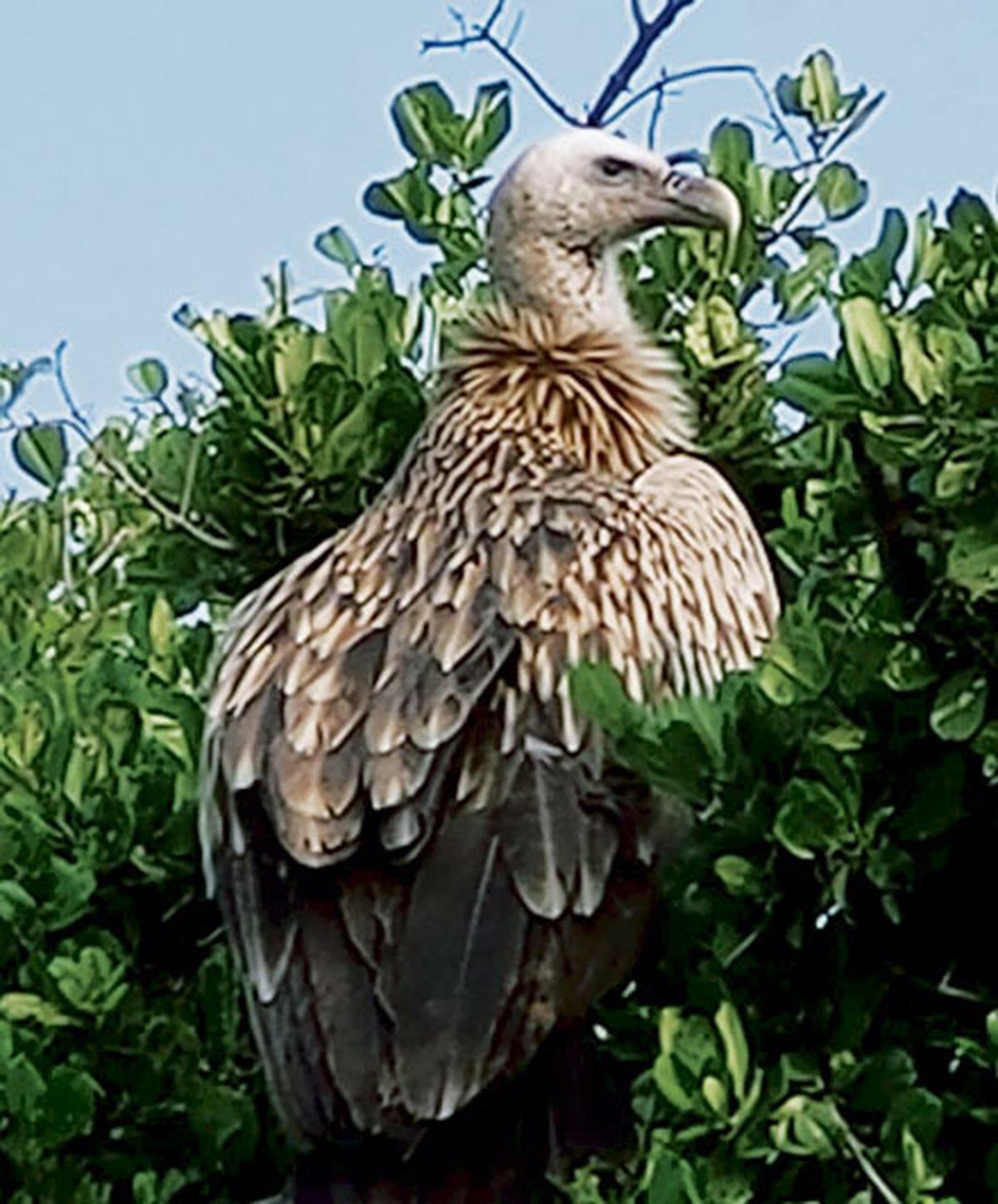
- 12 Sep 2025
In News:
- Vultures, once abundant across India, have faced catastrophic population declines over the past three decades due to carcass poisoning, harmful veterinary drugs (notably diclofenac), and negative social perceptions.
- Recognizing the urgency of conservation, an Assam-based foundation has launched India’s first dedicated vulture conservation portal to create a knowledge-sharing and awareness-driven network for their protection.
The Vulture Network Portal
- Nature: A cloud-based, first-of-its-kind portal in India dedicated to vulture conservation.
- Developer: We Foundation India, in collaboration with partners like the Assam Bird Monitoring Network and other organizations.
- Functions:
- Compiles scientific information on vultures.
- Provides freely downloadable outreach materials for awareness campaigns.
- Disseminates conservation material in local languages (beginning with Assamese) to ensure community participation.
- Focuses on addressing key threats to vultures, including:
- Carcass poisoning.
- Harmful veterinary drugs such as diclofenac.
- Myths and negative social perceptions around scavenger birds.
Significance
- Community Engagement: Builds a network of individuals and organizations working for vulture conservation.
- Policy & Awareness: Offers a centralized platform to support awareness drives, education, and grassroots campaigns.
- Localized Impact: By promoting information in regional languages, it enhances outreach among rural communities, where interaction with vultures is most direct.
Vultures of India
India hosts several species of vultures, many of which are critically endangered:
- Slender-billed vulture – ~800 mature individuals left.
- White-rumped vulture.
- Red-headed vulture.
- Himalayan griffon.
- Indian vulture.
- Cinereous vulture.
- Eurasian griffon.
- Egyptian vulture.
- Bearded vulture.
Conservation Context
- India has already banned the veterinary use of diclofenac (a major cause of vulture deaths) and promoted safer alternatives like meloxicam.
- Initiatives such as Vulture Safe Zones, breeding centres, and now this digital portal strengthen the country’s commitment to vulture conservation.
- As vultures play a critical ecological role as scavengers, their survival is linked to disease control and overall ecosystem health.
P-47 Protein
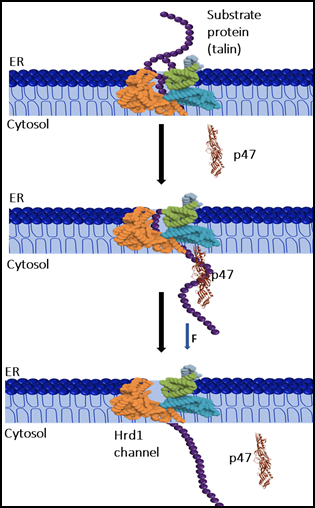
- 12 Sep 2025
In News:
Proteins within living cells constantly face mechanical stress during processes such as intracellular transport, cytoskeletal remodeling, and degradation. These stresses can compromise protein folding and stability, leading to cellular dysfunction.
Traditionally, specialized proteins called canonical chaperones were considered the primary agents guiding protein folding and stability. However, recent research has uncovered a surprising player in this landscape—p47, a cofactor protein with previously underestimated roles.
Discovery by SNBNCBS
A study conducted by the S. N. Bose National Centre for Basic Sciences (SNBNCBS), an autonomous institute under the Department of Science & Technology (DST), revealed that p47 functions as a “mechanical chaperone.” Using single-molecule magnetic tweezers, researchers applied controlled mechanical forces to mimic stresses faced by proteins inside cells.
The experiments demonstrated that:
- p47 stabilizes mechanically stretched proteins, enabling them to refold even under constant pulling forces.
- It enhances the mechanical efficiency of protein extraction from the endoplasmic reticulum (ER) lumen to the cytoplasm.
- It facilitates polypeptide translocation through narrow pores, reducing misfolding risks and improving protein quality control.
About p47 Protein
- Nature: A cofactor protein traditionally associated with the p97 complex, a major cellular machine responsible for protein trafficking, degradation, and membrane fusion.
- Revised Role: Beyond being a passive assistant, p47 exhibits autonomous, force-dependent protective activity, extending the functional repertoire of accessory proteins.
Significance of the Findings
- Scientific Breakthrough
- This is the first direct, single-molecule evidence that cofactors can act as mechanical chaperones.
- It challenges the existing view of accessory proteins as mere helpers and redefines their role in protein mechanics.
- Therapeutic Potential
- Targeting p47 or similar cofactors may provide new treatment avenues for diseases where protein stability under stress is compromised, such as:
- Cardiomyopathies (heart muscle diseases).
- Laminopathies (genetic disorders linked to nuclear protein instability).
- This could lead to precision medicine strategies focusing on mechanical resilience of proteins.
- Targeting p47 or similar cofactors may provide new treatment avenues for diseases where protein stability under stress is compromised, such as:
- Broader Implications
- Enhances understanding of cellular stress response mechanisms.
- Opens possibilities for drug development aimed at modulating protein folding under force.
- Strengthens India’s contributions to cutting-edge biophysical research with global relevance.
Health AI Global Regulatory Network (GRN)
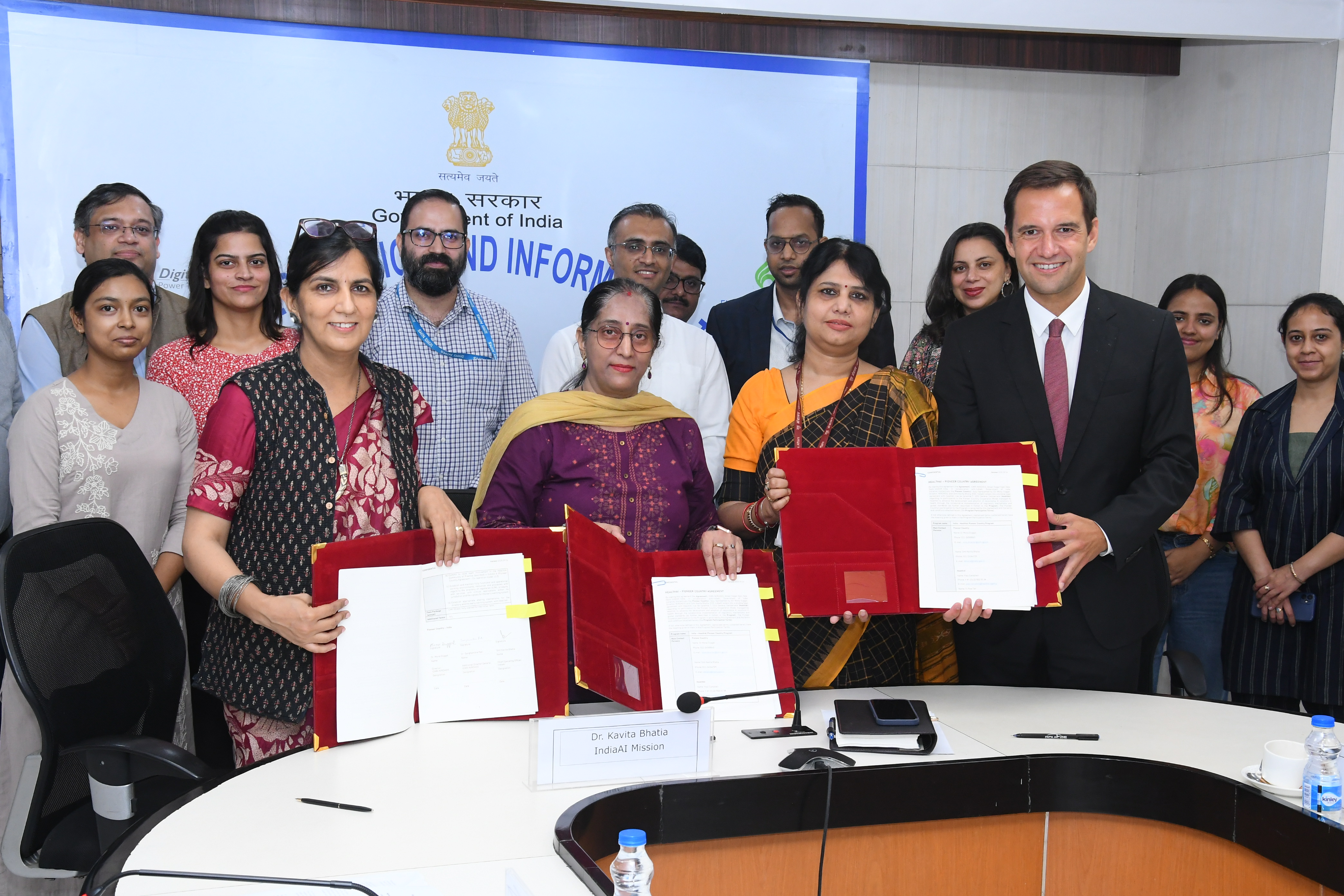
- 11 Sep 2025
In News:
India has joined the HealthAI Global Regulatory Network (GRN), becoming one of the pioneer countries shaping global norms for the responsible use of Artificial Intelligence (AI) in healthcare. This move reinforces India’s leadership in digital health innovation and aligns with its broader strategy to promote safe, equitable, and effective AI applications.
About the HealthAI Global Regulatory Network (GRN)
- Nature: An international, Geneva-based non-profit consortium of health regulators.
- Objective: To ensure fair, secure, and efficient deployment of AI in healthcare by building trust, strengthening oversight, and promoting shared learning.
- Functions:
- Develop joint safety standards and early warning systems for emerging risks.
- Facilitate cross-country collaboration and technical support.
- Maintain a global directory of registered AI health tools for transparency.
- Membership: Initial “pioneer countries” from diverse regions, including the UK, Singapore, and now India.
India’s Role in the Network
India’s participation is led by:
- Indian Council of Medical Research – National Institute for Research in Digital Health and Data Science (ICMR-NIRDHDS): A key institute driving digital health research under ICMR.
- IndiaAI: The Government of India’s central initiative under MeitY (via Digital India Corporation), aimed at building a comprehensive AI ecosystem.
Together, they will:
- Share safety protocols and best practices.
- Monitor AI performance in clinical settings.
- Contribute to shaping global frameworks for AI regulation.
Strategic Importance for India
- Global Leadership: Solidifies India’s position as a pioneer in responsible AI for health, enhancing its credibility in digital health diplomacy.
- National AI Strategy Alignment: Supports India’s vision to become a global hub for AI innovation and workforce, leveraging AI for public health, startups, and job creation.
- Strengthening Healthcare Delivery: Ensures AI-driven solutions enhance efficiency, safety, and equity in India’s diverse health ecosystem.
- Cross-Border Collaboration: Provides access to technical expertise, early warning systems, and shared regulatory tools.
Sample Registration System (SRS) Statistical Report 2023
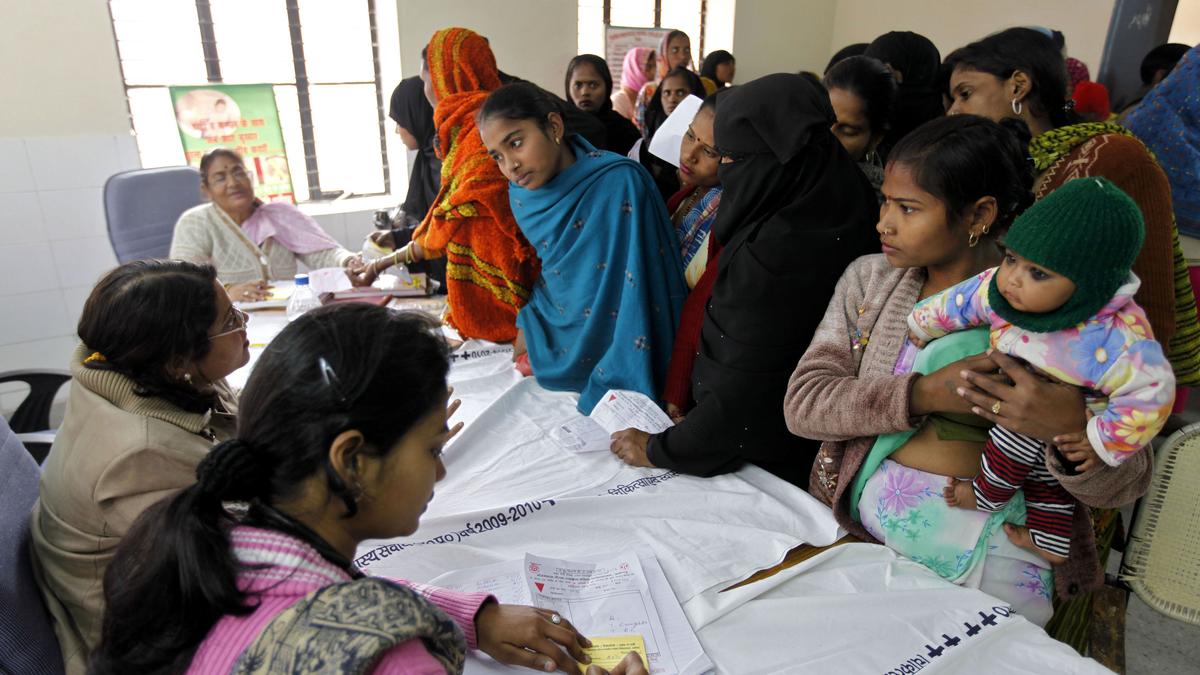
- 11 Sep 2025
In News:
The Sample Registration System (SRS) Statistical Report 2023, released by the Office of the Registrar General & Census Commissioner (ORGI), provides crucial insights into India’s demographic transition. The report highlights notable shifts in fertility, mortality, and ageing patterns, underlining both progress and challenges in population dynamics.
Key Findings of SRS 2023
1. Total Fertility Rate (TFR)
- India’s TFR declined to 1.9 in 2023, falling below the replacement level of 2.1 children per woman.
- This marks the first decline in two years, reflecting sustained fertility reduction.
- State variations:
- Highest TFR: Bihar (2.8 among larger states).
- Lowest TFR: Tamil Nadu (well below replacement).
- 18 States/UTs reported TFR below replacement level, indicating an advancing demographic transition.
2. Crude Birth Rate (CBR)
- The national CBR declined from 19.1 (2022) to 18.4 (2023).
- State-wise extremes:
- Bihar: 25.8 (highest).
- Tamil Nadu: 12 (lowest).
3. Infant Mortality Rate (IMR)
- India’s IMR touched a historic low of 25 per 1,000 live births in 2023, down significantly from 40 in 2013.
- The decline highlights improvements in maternal and child healthcare.
4. Sex Ratio at Birth (SRB): The SRB stood at 917 girls per 1,000 boys, reflecting persistent gender imbalance despite gradual improvements in many regions.
5. Ageing Population
- Seniors (aged 60+) constitute 9.7% of the population, up from 8.6% in 2011.
- State variation: Kerala leads with nearly 15% elderly population, indicating advanced population ageing.
Significance of the Trends
- Demographic Transition:The fall in fertility and birth rates confirms India’s movement towards a stabilising population, with many states already below replacement fertility.
- Public Health Gains:The sharp fall in IMR highlights the impact of government interventions in maternal health, institutional deliveries, and immunisation.
- Gender Challenges:A low SRB underscores continuing son preference and gender discrimination, raising concerns for long-term demographic balance.
- Ageing Burden:Rising share of the elderly, especially in southern states, signals the need for social security, geriatric healthcare, and pension reforms.
Environment Auditors
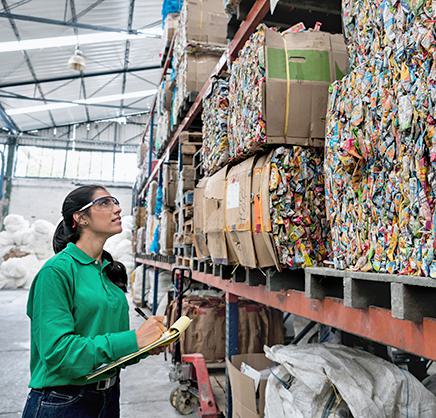
- 11 Sep 2025
In News:
The Ministry of Environment, Forest and Climate Change (MoEFCC) has notified the Environment Audit Rules, 2025, authorising the creation of a new, independent cadre of environment auditors. This marks a significant reform in India’s environmental governance framework, aiming to strengthen compliance, accountability, and transparency in monitoring ecological regulations.
Background and Rationale
Environmental monitoring in India is primarily overseen by the Central Pollution Control Board (CPCB), Regional Offices of MoEFCC, and State Pollution Control Boards (SPCBs)/Pollution Control Committees (PCCs). However, these bodies face persistent challenges of manpower shortage, limited resources, and infrastructural constraints, which hinder effective enforcement across the vast number of industries and projects.
To address this gap, the government has introduced environment auditors—certified professionals or accredited private agencies—who can supplement regulatory agencies in compliance verification. This is expected to enhance the implementation of environmental laws while promoting self-regulation by industries.
Key Features of Environment Auditors
- Legal Basis: Established under the Environment Audit Rules, 2025.
- Nature: Independent class of licensed professionals/agencies accredited to inspect, verify, and audit industrial and infrastructure projects.
- Functions:
- Conduct systematic environmental audits of projects under existing environmental laws.
- Sample and analyse emissions, effluents, and waste.
- Report non-compliance and compute environmental compensation.
- Act as verifiers under multiple regulatory frameworks, including the Green Credit Rules, E-Waste Rules, and Plastic Waste Rules.
- Provide independent data for climate action planning, ESG ratings, and sustainable development initiatives.
Linkage with Green Credit Rules
Audits by these accredited agencies will also support compliance with the Green Credit Rules, 2023, which incentivise activities like afforestation, water management, waste reduction, and pollution control through tradable “green credits.” Environment auditors will thus act as third-party verifiers, ensuring credibility in the crediting process.
Significance of the Reform
- Bridges Institutional Deficits: Addresses manpower and infrastructure shortages in SPCBs and CPCB.
- Promotes Accountability: Encourages industries to adopt self-compliance mechanisms rather than relying solely on regulatory enforcement.
- Enhances Transparency: Independent, third-party verification fosters stakeholder trust in environmental governance.
- Strengthens Climate Commitments: Provides robust compliance data for India’s climate action goals and sustainability reporting.
- Reduces Regulatory Burden: Eases the monitoring load on overstretched government agencies.
Particularly Vulnerable Tribal Groups (PVTGs)
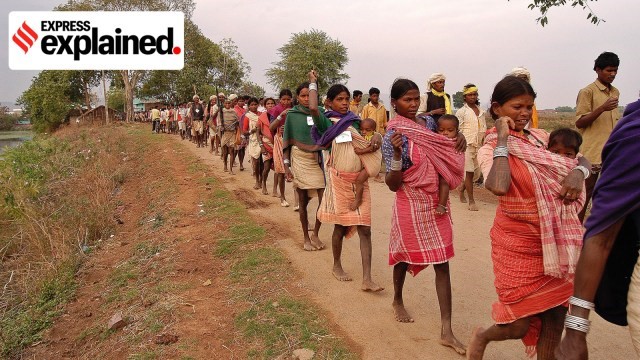
- 11 Sep 2025
In News:
- The Ministry of Tribal Affairs (MoTA) has requested the Registrar General and Census Commissioner of India (RGI) to enumerate Particularly Vulnerable Tribal Groups (PVTGs) separately in the upcoming Census.
- Aim: To capture population, households, and distinctive socio-economic and cultural features of PVTGs for better targeting of schemes such as the Pradhan Mantri Janjati Adivasi NyayMaha Abhiyan (PM JANMAN).
About PVTGs
- Definition: A sub-category of Scheduled Tribes (STs), considered the most disadvantaged among tribal communities.
- Origin: Concept recommended by the Dhebar Commission (1960–61) to address disparity within STs.
- Criteria for Identification:
- Declining/stagnant population
- Geographical isolation
- Pre-agrarian economy (hunting, gathering, shifting cultivation)
- Economic backwardness
- Low literacy
- Numbers:
- Initially 52 groups identified during the Fifth Five-Year Plan (1974–79).
- Later, 23 more groups added in 2006 → 75 PVTGs today.
- Spread: Across 18 states and the Andaman & Nicobar Islands.
Demographic Profile
- Estimated Population (2023 Survey): ~47.5 lakh PVTGs in India.
- Madhya Pradesh – 13.22 lakh (highest)
- Maharashtra – 6.7 lakh
- Andhra Pradesh – 5.18 lakh
- Smallest Groups: Sentinelese (Andaman & Nicobar Islands) with just 15 individuals.
- Largest Group: Baiga (Madhya Pradesh) – ~4.14 lakh population.
Habitat & Livelihoods
- Mostly live in remote forests, hilly regions, or islands with limited access to infrastructure.
- Livelihood sources:
- Hunting and gathering
- Shifting cultivation
- Non-Timber Forest Produce (NTFP) collection
- Livestock rearing
- Traditional artisan work
Cultural & Social Features
- Distinct cultural identities, practices, and languages.
- Often outside mainstream socio-economic and political processes.
- Many face critical health and education deficits.
Need for Separate Enumeration
- No separate count so far: PVTGs only enumerated under the general ST category; many grouped together under one nomenclature.
- Single-entry STs: Out of 75 PVTGs, 40 explicitly listed under Article 342 of the Constitution.
- Challenges: Current lists vary across states; some groups not separately listed in Census.
- Benefits of separate enumeration:
- Accurate population data for targeted schemes.
- Helps assess whether PVTG classification criteria remain relevant.
- Supports preservation of cultural identity.
- Identifies infrastructure gaps in health, education, and livelihoods.
Welfare Measures
- PM JANMAN Scheme (2023):
- Budget: ?24,104 crore.
- Coverage: More than 200 districts.
- Objective: Improve health, education, livelihoods, and basic amenities of PVTGs.
2D Materials
- 11 Sep 2025
In News:
- NITI Aayog’sFrontier Tech Hub, in collaboration with IISc Bengaluru, released the 4th edition of FutureFront Quarterly Insights titled “Introduction to 2D Materials”.
- Report highlights the need for India to invest early in 2D materials to lead in semiconductors, quantum technologies, and advanced electronics.
What are 2D Materials?
- Definition: Materials that are one atom thick, with unique electrical, thermal, and mechanical properties.
- Discovery: Graphene isolated in 2004 → Nobel Prize in Physics, 2010.
- Examples:
- Graphene (Carbon-based)
- Transition Metal Dichalcogenides (TMDCs) –MoS?, WS?
- Hexagonal Boron Nitride (h-BN)
- Xenes – Silicene, Phosphorene
Key Properties
- ~200× stronger than steel, yet flexible.
- Conducts electricity better than copper; spreads heat efficiently.
- Tunable band gaps → useful for semiconductors.
- Exhibits quantum effects (e.g., spin–valley coupling).
- Transparent & flexible → foldable/wearable electronics.
Applications
- Semiconductors: Chips up to 10× smaller than silicon-based chips.
- Quantum Computing: Hosting qubits, spin–valley interactions.
- Artificial Intelligence: Atom-thin memristors for neuromorphic computing.
- Optoelectronics: LEDs, photodetectors, ultra-thin solar cells.
- Green Tech: EV batteries, water filtration, aerospace composites.
Significance for India
- Tech Geopolitics: Control over supply chains and standards creates “tech choke points.”
- Challenge: Current reliance on licensed technologies → dependency (“umbilical cord” risk).
- Opportunity: Early push in 2D materials offers first-mover advantage in semiconductors.
- Global Status: USA, China, Japan, South Korea already investing heavily.
Policy Measures
- NITI Aayog: Urges creation of a complete 2D ecosystem – R&D, talent, supply chains, standards, manufacturing.
- MeitY& DST: Invited proposals for R&D and product development in 2D materials.
India–Singapore Comprehensive Strategic Partnership (CSP): 2025 Roadmap
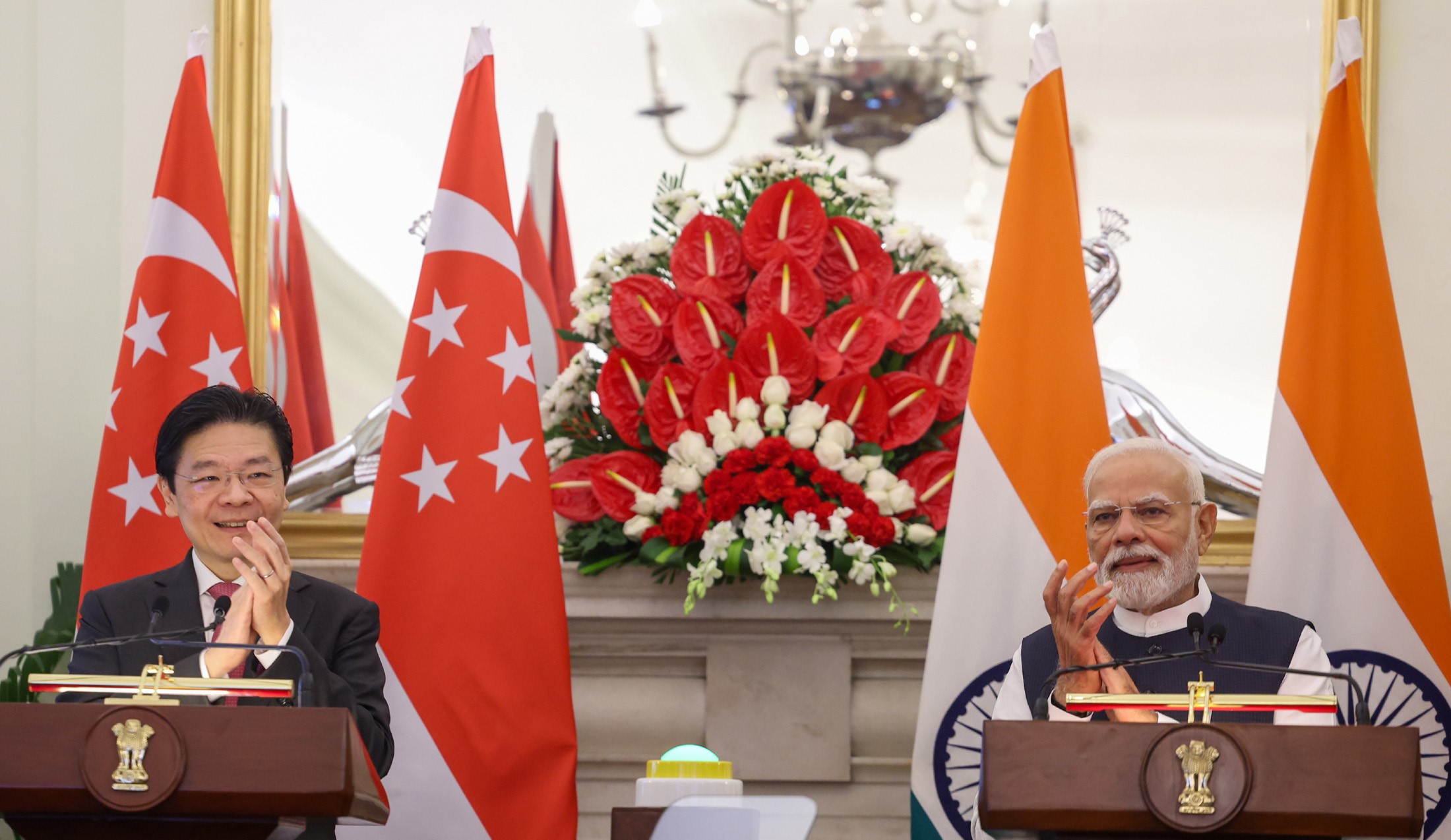
- 10 Sep 2025
In News:
The visit of Singapore Prime Minister Lawrence Wong to India in September 2025 marked 60 years of diplomatic relations and culminated in the adoption of a forward-looking Comprehensive Strategic Partnership (CSP) Roadmap. This elevates bilateral ties beyond trade to encompass technology, security, sustainability, and people-centric cooperation, reinforcing Singapore’s role as a vital partner in India’s Act East Policy and Indo-Pacific vision.
What is CSP?
- The Comprehensive Strategic Partnership (CSP) is the highest level of bilateral engagement between India and Singapore.
- It was elevated from a Strategic Partnership in 2015, and deepened further in 2025 through the adoption of a roadmap across eight key sectors.
Eight-Pillar Cooperation Framework
- Economic Cooperation
- Review of Comprehensive Economic Cooperation Agreement (CECA) and ASEAN-India Trade in Goods Agreement (AITIGA) in 2025.
- Partnership in semiconductors: Singapore produces 10% of global semiconductors and 20% of semiconductor equipment—key to India’s domestic chip manufacturing ambitions.
- Cooperation in industrial parks, sustainable manufacturing, capital market connectivity (NSE-IFSC-SGX GIFT Connect), and space collaboration.
- Skills Development
- Establishment of the National Centre of Excellence for Advanced Manufacturing in Chennai.
- Joint efforts in Technical and Vocational Education and Training (TVET), skill certification, train-the-trainers programmes, and nursing skill cooperation (expansion of the Singapore–Assam model).
- Digitalisation
- Expansion of UPI–PayNow linkage for seamless cross-border payments.
- Collaboration in fintech, cybersecurity, AI applications (healthcare, agriculture), start-up ecosystems, and adoption of TradeTrust for e-Bills of Lading in trade documentation.
- Sustainability & Green Growth
- Cooperation in green hydrogen, ammonia, and civil nuclear energy.
- Joint climate initiatives under Article 6.2 of the Paris Agreement.
- Collaboration in the International Solar Alliance (ISA) and Global Biofuels Alliance.
- Partnership in food security, agricultural exports, and water management.
- Connectivity
- Establishment of an India–Singapore Green and Digital Shipping Corridor linking major Indian ports with Singapore.
- Knowledge-sharing in aviation (air services agreement, sustainable aviation fuel, MRO collaboration).
- Healthcare & Medicine
- MoU on Health and Medicine: digital health, maternal and child health, disease surveillance, and medical R&D.
- Nursing cooperation and skills training to enhance employability in Singapore.
- People-to-People & Cultural Exchanges
- Student and professional exchanges, parliamentary engagement, think tank linkages, and public service training.
- Promotion of cultural heritage and maritime history collaborations.
- Defence& Security
- Enhanced military cooperation through SIMBEX 2025 and other tri-service exercises.
- Collaboration on defence technology (AI, automation, unmanned systems, quantum computing).
- Maritime security including submarine rescue cooperation and regional patrols.
- Strengthened counter-terrorism efforts via FATF and other multilateral mechanisms.
- Singapore acknowledged India’s interest in the Malacca Straits Patrol (MSP); India’s Andaman & Nicobar Command enhances regional maritime domain awareness.
Strategic Significance
- Positions Singapore as India’s gateway to Southeast Asia and the broader Indo-Pacific.
- Enhances regional security architecture aligned with ASEAN principles.
- Demonstrates how middle powers can address global uncertainties through technology partnerships, defence collaboration, and sustainable growth initiatives.
India’s Path to Atmanirbharta in Millets
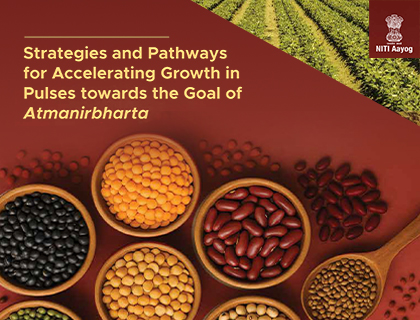
- 10 Sep 2025
In News:
The NITI Aayog report “Strategies and Pathways for Accelerating Growth in Pulses towards the Goal of Atmanirbharta” also provides broader lessons for achieving self-reliance in other food crops like millets, which face similar challenges of productivity, market stability, and sustainability.
Current Status of Millets in India
- Global Leadership: India contributes nearly 41% of world millet output (~16 million tonnes annually), making it the largest producer.
- Regional Spread: Five states—Rajasthan, Maharashtra, Karnataka, Uttar Pradesh, and Madhya Pradesh—produce over 80% of India’s millets.
- Consumption Decline: Per capita consumption has dropped from 32 kg/year in the 1960s to ~4 kg/year today, largely replaced by rice and wheat due to PDS bias.
- Exports: In 2022–23, India exported 1.8 million tonnes, mainly to UAE, Nepal, and Saudi Arabia, indicating rising global demand.
- Policy Push: The Union Budget 2023–24 renamed millets as “Shree Anna”, earmarking resources for research, processing, and marketing.
Importance of Millets
- Nutritional Security: Rich in iron, calcium, fiber, and proteins, helping fight malnutrition and anemia.
- Climate Resilience: Require 70% less water than rice and withstand drought, making them suitable for rainfed regions.
- Farmer Livelihoods: Low-input crops reduce reliance on irrigation and fertilizers, benefiting smallholders.
- Food Security: Inclusion in Mid-Day Meals, ICDS, and PDS enhances nutrition for vulnerable groups.
- Global Branding: India’s “Shree Anna” campaign has positioned millets as a superfood and strengthened agri-diplomacy.
Initiatives Taken
- NFSM-Millets: Expands area under millets, provides quality seed, and boosts productivity.
- Shree Anna Mission (2023): A six-year plan for millet research, processing, branding, and market integration.
- State Schemes: Karnataka’s Ksheera Bhagya included millets in school meals.
- International Recognition: India led the UNGA resolution declaring 2023 as International Year of Millets.
- Export Promotion: APEDA supports branding, GI tagging, and product exports to West Asia, US, and EU.
Challenges
- Consumer Preference Shift: Rice and wheat dominate diets due to PDS subsidies and cooking convenience.
- Low Productivity: Millet yields (~1.2 t/ha) remain below rice/wheat due to limited R&D and weak seed systems.
- Weak Market Linkages: Fragmented value chains, inadequate FPO presence, and absence of MSP-backed assured procurement.
- Post-Harvest Constraints: Poor processing/storage technologies and limited millet-based food industry.
- Policy Bias: NFSA subsidies for rice/wheat discourage millet adoption in rainfed belts.
Strategic Framework for Atmanirbharta
- Horizontal Expansion: Cultivate millets in rice fallows and degraded lands, especially in Eastern India.
- Vertical Expansion: Develop high-yielding, bio-fortified, climate-resilient varieties with robust seed systems.
- Cluster-Based Model: District-wise crop cluster strategy for focused interventions.
- Value Chain Integration: Establish processing hubs, branding centers, and FPO-led aggregation.
- Climate-Smart Farming: Promote organic and water-efficient millet practices, aligning with SDGs and climate goals.
National Institutional Ranking Framework
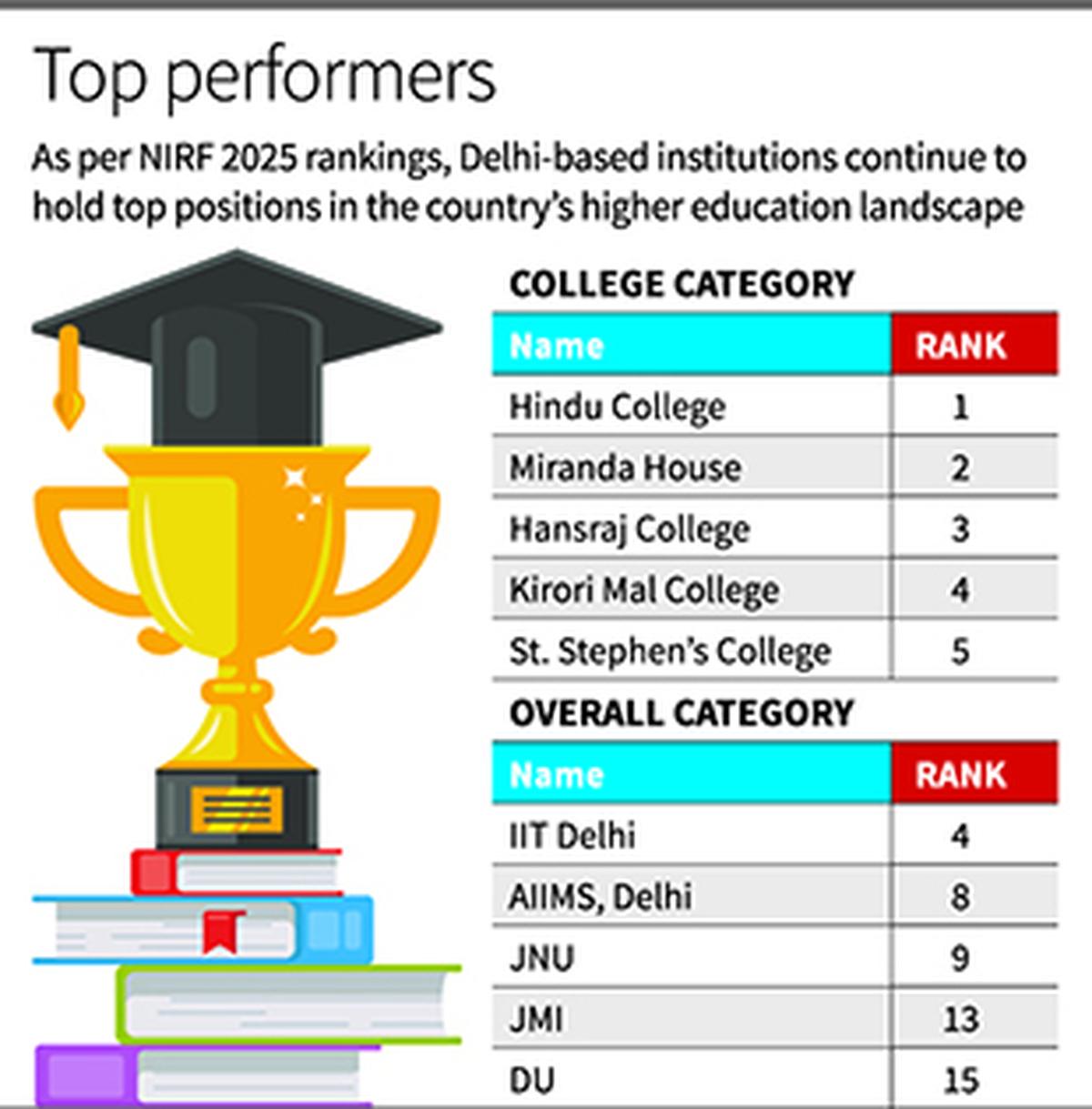
- 10 Sep 2025
In News:
The Ministry of Education has released the India Rankings 2025 under the National Institutional Ranking Framework (NIRF), first launched in 2015 to provide a transparent, data-driven methodology for ranking higher education institutions (HEIs).
Background
- Introduced in 2015 by the Ministry of Education (then MHRD).
- First rankings released in 2016 with one category (Universities) and three domains (Engineering, Management, Pharmacy).
- Now expanded to 9 categories and 8 subject domains, with SDG-based rankings introduced in 2025.
- Aim: To benchmark quality, ensure accountability, guide students/parents, and align with NEP 2020 goals of making India a knowledge superpower by 2047.
Parameters of NIRF (Weightage)
- Teaching, Learning & Resources (30%)
- Research & Professional Practice (30%)
- Graduation Outcomes (20%)
- Outreach & Inclusivity (10%)
- Perception (10%)
- Total of 19 sub-parameters used.
- Data sourced from institutions and third parties like Scopus, Web of Science, Derwent Innovation for publications, citations, and patents.
Participation & Growth
- 2025: 7,692 unique institutions applied (14,163 submissions), compared to 2,426 in 2016 – a 217% rise in participants and 297% rise in applications.
- Rankings now cover 17 categories, including overall, universities, colleges, research institutions, medical, dental, law, pharmacy, management, architecture & planning, agriculture, open universities, skill universities, state public universities, innovation, and SDGs.
Key Highlights of 2025 Rankings
- IIT Madras: Retains 1st rank in Overall category for the 7th year and Engineering for the 10th year. Also topped Innovation and SDGs categories.
- IISc Bengaluru: Ranked 1st among Universities for the 10th year; also leads in Research Institutions for the 5th year.
- IIM Ahmedabad: Topped Management for the 6th consecutive year.
- AIIMS Delhi: 1st in Medical for the 8th year; also ranked 8th in Overall. Additionally topped Dental for the first time.
- Jamia Hamdard (Delhi): 1st in Pharmacy for the 2nd year.
- IIT Roorkee: 1st in Architecture & Planning for the 5th consecutive year.
- NLSIU Bengaluru: Retains 1st position in Law for the 8th year.
- Hindu College (Delhi University): 1st among Colleges for the 2nd year, displacing Miranda House. Six of the top ten colleges are from Delhi.
- Indian Agricultural Research Institute (Delhi): 1st in Agriculture & Allied Sectors for the 3rd year.
- IGNOU (Delhi): 1st in Open Universities category for the 2nd year.
- Symbiosis Skill & Professional University (Pune): 1st in Skill Universities for the 2nd year.
- Jadavpur University (Kolkata): 1st in State Public Universities (introduced in 2024).
Significance
- NIRF has evolved into a credible national benchmark for higher education, enhancing global competitiveness, transparency, and inclusivity.
- With new categories such as Innovation, Skill Universities, and SDG rankings, it reflects India’s effort to link education with sustainability, entrepreneurship, and national development goals under NEP 2020.
- Participation trends demonstrate growing institutional acceptance of NIRF as a fair and transparent ranking mechanism.
Acanthamoeba

- 10 Sep 2025
In News:
Recent studies have revealed that Acanthamoeba, a free-living amoeba, is more widespread in Kerala’s waterbodies than previously believed. This raises significant public health concerns, especially due to its ability to cause severe and often fatal infections.
About Acanthamoeba
- Nature: A single-celled, free-living amoeba found in water, soil, and dust.
- Habitats: Frequently detected in swimming pools, hot tubs, household wells, drinking water systems, humidifiers, and HVAC (heating, ventilation, and air conditioning) systems.
- Mode of Transmission: Enters the human body through skin wounds, inhalation via lungs/nasal cavity, or eye exposure (notably among contact lens users).
Types of Infections
- Granulomatous Amebic Encephalitis (GAE): Affects the brain; almost always fatal.
- Cutaneous Acanthamoebiasis: Skin infection through wounds.
- Acanthamoeba Rhinosinusitis: Infection of the nasal cavity and sinuses.
- Acanthamoeba Keratitis: Serious eye infection, often in healthy individuals and contact lens users; may lead to permanent vision loss.
Kerala Case Study
- In 2013, research from the Regional Institute of Ophthalmology (Kerala) identified that several cases of non-healing corneal ulcers were due to Acanthamoeba keratitis, traced back to household wells as the infection source.
- Current findings indicate that Acanthamoeba is more widespread in Kerala’s natural and man-made waterbodies than earlier thought, heightening risks of waterborne and eye-related infections.
Significance
- The rise of Acanthamoeba-related keratitis underlines the need for safe water practices, improved eye hygiene among contact lens users, and awareness of rare pathogens.
- Its resilience across diverse environments makes it a public health challenge, especially in regions dependent on household wells and untreated water sources.
Debrigarh Wildlife Sanctuary

- 10 Sep 2025
In News:
Odisha’s Debrigarh Wildlife Sanctuary has recently been approved by the National Tiger Conservation Authority (NTCA) to become India’s newest tiger reserve. This marks a significant ecological achievement rooted in community participation, innovative eco-tourism, and conservation success.
Location and Geography
- Situated in western Odisha, near Sambalpur and Bargarh district, Debrigarh is bordered by the Hirakud Reservoir—a Ramsar-tagged wetland and part of the Mahanadi River system.
- The Hirakud Dam, the world’s longest earthen dam, lies adjacent to the sanctuary.
- Spread over 804 sq km, it includes around 347 sq km of core area, encompassing forests, grasslands, and wetlands, making it a unique amphi-terrestrial ecosystem.
Historical Significance
- The rugged terrain of Debrigarh was a strategic base for freedom fighter Veer Surendra Sai during his armed resistance against British colonial rule.
- Sites like Bara Bakra/Barapathara remain important heritage landmarks within the sanctuary.
Flora and Fauna
- Vegetation: Dominated by mixed and dry deciduous forests, with species such as Sal, Asana, Bija, Aanla, and Dhaura.
- Mammals: Indian bison (gaur), sambar deer, wild boar, chousingha (four-horned antelope), leopards, sloth bears, and wild dogs.
- Avifauna: Over 300 bird species, including 120 migratory species such as crested serpent eagle, drongo, tree pie, flower peckers, and white-eye oriental.
Eco-Tourism and Innovation
- Debrigarh is home to India’s first dark sky tourism hub, offering stargazing facilities.
- Adventure tourism includes safaris (53 vehicles), kayaking, cycling, and birding trails, designed with minimal ecological footprint.
Conservation and Community Model
- Declared a sanctuary in 1985 and upgraded to a tiger reserve in 2025.
- A community-led model: Over 400 families voluntarily relocated with rehabilitation packages; 155 villages actively participate in conservation and eco-tourism activities.
- Wildlife success: Expansion of prey base, increase in gaur population, and nearly 40% of herds comprising newborns, reflecting ecosystem recovery.
Significance
Debrigarh exemplifies a national model of integrated conservation, blending:
- Biodiversity protection (tiger reserve status, prey base recovery).
- Cultural heritage (legacy of Veer Surendra Sai).
- Sustainable eco-tourism (dark sky hub, water- and land-based safaris).
- Community participation (relocation and livelihood integration).
Its success offers a replicable blueprint for wildlife conservation across India, highlighting how ecological protection, heritage, and rural livelihoods can be balanced under one framework.
Majorana Particles
- 09 Sep 2025
In News:
One of the biggest challenges in quantum computing is decoherence — the tendency of qubits to lose their fragile quantum state due to environmental noise. To address this, scientists are exploring the potential of Majorana particles, exotic entities that are their own antiparticles. Their unique quantum properties may help build topological qubits, inherently resistant to errors, offering a radically new path toward practical quantum computing.
What are Majorana Particles?
- Proposed by: Italian physicist Ettore Majorana in 1937.
- Nature: A hypothetical fermion that is its own antiparticle, unlike electrons or protons which have distinct antimatter counterparts.
- Key Characteristics:
- Neutral in charge, hence elusive in detection.
- Do not annihilate on contact with themselves.
- In condensed-matter systems, they appear as quasiparticles (collective excitations) inside superconductors at ultra-low temperatures.
- Often exist in pairs: two spatially separated halves forming one quantum state.
- Exhibit non-Abelian statistics, meaning that exchanging or “braiding” them changes the overall quantum state in a predictable but unusual way.
Relevance to Quantum Computing
- Problem of Decoherence
- Qubits (quantum bits) exist in superpositions of 0 and 1, but are easily disturbed by external noise.
- Current quantum error correction requires hundreds to thousands of physical qubits to stabilise a single logical qubit, making scaling inefficient.
- Majorana-Based Solution
- Information can be encoded nonlocally across two Majorana modes.
- Disturbance of one half does not collapse the qubit; both must be affected simultaneously, making errors less likely.
- Braiding Majoranas enables topologically protected operations, where outcomes depend only on the braiding pattern and not on experimental imperfections.
- This reduces the need for massive error correction, making quantum hardware simpler and more stable.
- Current Research
- Experiments in superconducting nanowires (e.g., indium antimonide) have shown conductance patterns consistent with Majorana modes.
- However, alternative explanations exist, and conclusive proof requires demonstrating controlled braiding.
Wider Implications
- Quantum Technology: Potential to drastically lower the qubit requirement for large-scale quantum computers.
- Particle Physics: Ongoing efforts to test whether fundamental particles like neutrinos could be Majorana fermions.
- Condensed Matter Physics: Research into Majoranas has advanced material science, superconductors, and nanotechnology.
Challenges
- Experimental signals remain inconclusive, as other phenomena can mimic Majorana-like behaviour.
- Braiding demonstrations in two-dimensional architectures remain technically difficult.
- Majorana-based qubits are still at the proof-of-concept stage, not yet integrated into practical computing systems.
Self-Respect Movement
- 09 Sep 2025
In News:
The year 2025 marks the centenary of the Self-Respect Movement, a landmark social reform initiative launched by E.V. Ramasamy “Periyar” in Tamil Nadu. Emerging in 1925 through the Tamil weekly KudiArasu(Republic), the movement fundamentally reshaped Tamil society by questioning caste hierarchies, patriarchy, and religious orthodoxy, and by laying the foundations of modern Dravidian politics.
Origins and Context
- The Justice Party (South Indian Liberal Federation, 1916) had earlier challenged Brahmin dominance but remained largely confined to elite non-Brahmin interests.
- Periyar, after leaving the Indian National Congress in 1925, criticised the Justice Party for lacking a people-centric agenda and warned against creating a new non-Brahmin elite as oppressive as Brahmin oligarchy.
- Through KudiArasu,Periyar articulated a more radical vision — shifting reform efforts towards the common masses and framing an agenda of rationalism, equality, and self-respect.
Core Ideas and Aims
The Self-Respect Movement stood for:
- Abolition of caste hierarchy and Brahmanical dominance.
- Promotion of rationalism over religious superstition and ritualism.
- Assertion of dignity and equality for all individuals, irrespective of caste or gender.
- Social reform over political independence — unlike the Congress-led freedom struggle, which the movement saw as tied to Hindu orthodoxy.
Key Features and Reforms
- Self-Respect Marriages – Conducted without priests or rituals, challenging caste and religious authority.
- Women’s Rights – Advocacy of widow remarriage, right to divorce, property rights, reproductive choice (including abortion), and women’s education.
- Inter-caste Unity – Promotion of inter-caste marriages and solidarity across oppressed groups.
- Critique of Religion and Nationalism – Rejection of Gandhi’s “religion-tinted nationalism” and the Congress as a bastion of caste Hindu interests.
- Dravidian Identity – Assertion of Tamil/Dravidian identity and resistance to Sanskritichomogenisation.
Impact and Legacy
- Mass Awakening: Instilled pride and self-respect among non-Brahmin masses, transforming them from passive subjects of reform to active participants.
- Foundation for Dravidian Politics: Evolved into the DravidarKazhagam (DK) and inspired political parties like DMK and AIADMK, shaping Tamil Nadu’s welfare-driven governance model.
- Gender and Social Justice: Pioneered radical reforms in marriage, family, and gender relations, decades ahead of mainstream Indian discourse.
- Intellectual Tradition: Drew inspiration from earlier reformers such as IyotheeThass, Jyotirao Phule, and B.R. Ambedkar, situating Tamil Nadu in a wider anti-caste, rationalist movement.
Contemporary Relevance
As the movement enters its centenary in 2025, it resonates amid debates over Hindutva, cultural homogenisation, and caste discrimination. Its emphasis on rationalism, social equality, and grassroots empowerment continues to provide a counter-narrative to exclusivist identities and remains vital for advancing social justice and constitutional morality in India.
Senna spectabilis
- 09 Sep 2025
In News:
Invasive alien species are among the biggest threats to global biodiversity, ecosystem balance, and local livelihoods. In South India, Senna spectabilis, introduced in the 1980s for ornamental and fuelwood purposes, has emerged as a serious ecological challenge. Its unchecked spread across the Nilgiri Biosphere Reserve (NBR) has disrupted native ecosystems, escalated human-wildlife conflicts, and triggered large-scale forest degradation.
AboutSenna spectabilis
- Origin: Native to tropical America.
- Common Names: Popcorn Bush Cedar, Archibald's Cassia, Golden Shower, Fetid Cassia, etc.
- Characteristics: Grows 7–18 metres tall, forms dense sterile thickets, alters soil chemistry, suppresses native vegetation, and deprives herbivores of food.
- Confusion: Resembles Kerala’s state flower Cassia fistula (Kanikkonna), aiding its popularity in afforestation drives.
- IUCN Status: Classified as Least Concern.
- Challenge: Prolific seed production (up to 6,000 seeds annually), viability for nearly a decade, and quick regrowth even after cutting.
Ecological and Social Impacts
- Biodiversity Loss – Chokes out native species, prevents natural regeneration, and alters ecosystem dynamics.
- Food Chain Disruption – Loss of grasses and shrubs reduces prey availability for carnivores.
- Human-Wildlife Conflict – Decline in herbivore populations forces elephants, tigers, and deer to enter human settlements.
- Forest Degradation – Spread across Wayanad, Bandipur, and Mudumalai wildlife regions, threatening one of Asia’s most critical wildlife corridors.
- Spread Beyond South India – Reports of infestation in Andhra Pradesh, Goa, and Maharashtra.
A 2021 Rufford Foundation study showed Senna had spread over 23% of Wayanad Wildlife Sanctuary, now estimated at 40%.
Kerala’s “Wayanad Model” of Restoration
Kerala pioneered India’s first science-based, community-led eradication program at Tholpetty range, Wayanad Wildlife Sanctuary:
- Scale: 383 acres cleared; 46,450 trees uprooted; total eco-restoration covers 560 acres.
- Innovation: A lightweight hand-held uprooting tool designed by a marine engineer enabled complete root removal.
- Community Participation: Tribal youth (Kurichiya, Kattunaikka) trained as forest restoration guardians.
- Biodiversity Revival:
- 80 native tree species replanted.
- 15 indigenous grasses naturally regenerated.
- 184 bird species recorded in post-restoration zones.
- Return of elephants and deer to reclaimed patches.
This approach of “un-planting mistakes” emphasizes uprooting rather than cutting, ensuring long-term ecological recovery.
Policy and Replication
- Cross-border Extension: Karnataka adopted the Wayanad model in Nagarhole Tiger Reserve (DB Kuppe range). Tamil Nadu is exploring similar interventions.
- Utilisation of Biomass: Pilot projects have converted Senna wood into 6,000 tonnes of paper pulp; however, experts caution that biomass use alone will not halt invasion unless roots are fully removed.
- Other Invasives: The Senna challenge mirrors broader issues with Lantana, Eupatorium, and Acacia, which silently erode ecosystems across India.
Invasive Species
- Definition: An invasive species is a non-native organism that causes ecological, economic, or health harm in a new environment.
- Introduction Pathways: Ballast water of ships, aquaculture, ornamental planting, and accidental releases.
- Impacts: Extinction of native species, biodiversity loss, ecosystem degradation, and livelihood disruptions.
Graphite Spyware
- 09 Sep 2025
In News:
The Trump administration has unfrozen a stalled Biden-era contract with Paragon Solutions, granting the US Immigration and Customs Enforcement (ICE) access to its spyware tool Graphite. The contract, worth $2 million, was initially signed in September 2024 under the Department of Homeland Security (DHS) but paused due to concerns over violating the March 2023 executive order restricting spyware procurement.
About Graphite Spyware
- Nature: Advanced spyware capable of remote mobile phone access and control.
- Capabilities:
- Access photos, messages, and location data.
- Intercept encrypted communications (WhatsApp, Signal).
- Convert device into a listening tool by manipulating its microphone.
Paragon Solutions and Background
- Founded in Israel; co-founded by former PM Ehud Barak.
- Acquired in late 2024 by AE Industrial Partners (Florida) for $900 million.
- AE also owns REDLattice, a cyber-intelligence firm with ex-CIA officials.
- Track record:
- Claims to sell only to governments and law enforcement agencies for crime prevention.
- Terminated contract with Italy (Feb 2025) after WhatsApp (Meta) flagged misuse against journalists and activists in 24 countries.
Concerns and Implications
- Civil liberties: May expand ICE’s surveillance on undocumented immigrants, raising due process concerns.
- Rights at risk: Free speech and privacy could be undermined if spyware is misused.
- Expert view: Nadine Farid Johnson (Knight First Amendment Institute) warned that bypassing vetting requirements threatens constitutional safeguards.
Understanding Spyware
- Definition: Malicious software that collects data from devices and transmits it without user consent.
- Common Types:
- Adware: Tracks user activity, sells data to advertisers.
- Infostealers: Extracts sensitive data, including chats and files.
- Keyloggers: Record keystrokes, capturing passwords and personal information.
Niveshak Didi- Phase II
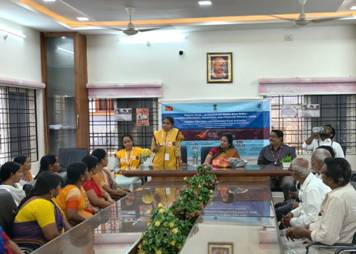
- 09 Sep 2025
In News:
The Investor Education and Protection Fund Authority (IEPFA), under the Ministry of Corporate Affairs, has launched Phase II of its flagship financial literacy initiative,Niveshak Didi, in Hyderabad. The program targets rural communities, with a special emphasis on women’s financial empowerment.
Objective and Significance
- Aim: To deepen financial awareness and enable women to make informed financial decisions, safeguard savings, and actively participate in the financial ecosystem.
- Approach: Based on the principle of “women for women”, recognizing that rural women are more comfortable discussing financial matters with female educators.
- Significance: Acts as a catalyst for bridging knowledge gaps, building confidence, and promoting financial resilience in rural communities.
Launch Highlights
Key points from the launch:
- Financial literacy sessions were conducted in Telugu to facilitate understanding.
- Emphasis on fraud prevention, safe investments, and digital financial literacy.
- IPPB’s extensive rural network ensures last-mile delivery of financial education and services.
Key Features of Phase II
- Expanded outreach to more villages and rural areas.
- Interactive training modules to improve engagement.
- Collaboration with grassroots organizations for maximum impact.
- Focus on savings, investment safety, fraud prevention, and digital transactions.
About IEPFA
- Established: 2016 under the Companies Act, 2013
- Functions:
- Manage the Investor Education and Protection Fund (IEPF)
- Facilitate refunds of unclaimed dividends, shares, matured deposits, and debentures
- Promote financial literacy and investor protection
- Major Initiatives:Niveshak Didi, Niveshak Panchayat, NiveshakShivir
Unique Disability ID (UDID) Scheme
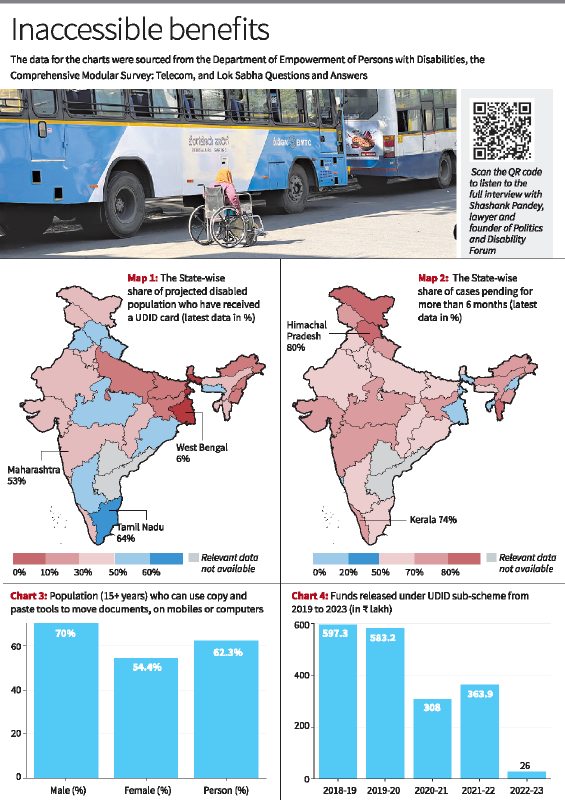
- 08 Sep 2025
In News:
The Unique Disability ID (UDID) project, launched by the Department of Empowerment of Persons with Disabilities (DEPwD), Ministry of Social Justice and Empowerment, aims to create a national database of Persons with Disabilities (PwDs) and provide them with a single identification document that is valid across the country. Despite its importance, recent data highlight serious gaps in its coverage and implementation.
Current Status and Coverage
- Less than 40% of India’s projected PwD population have been issued UDID cards.
- Over 11 lakh applications remain pending, with more than 60% delayed for over six months.
- In most States, fewer than half of PwDs possess the card; only Tamil Nadu, Meghalaya, Odisha, and Karnataka have crossed the 50% coverage mark.
- West Bengal stands out with an extremely low coverage of around 6%.
- Data for Andhra Pradesh and Telangana were unavailable separately.
Features of the UDID Card
- Structure: An 18-character alphanumeric ID, encoding details such as state, district, disability type, year of birth, and a security checksum.
- Types of Cards (based on disability percentage):
- White: Below 40% disability.
- Yellow: 40%–80% disability.
- Blue: Above 80% disability.
- Issuance: Authorized by district hospitals or the hospital where the PwD is undergoing treatment, under the Rights of Persons with Disabilities (RPwD) Act, 2016.
Objectives of the UDID Project
- Creation of a centralized, nationwide database of PwDs.
- Elimination of duplicate records and ensuring portability across States.
- Online and offline submission of applications, with provision for renewal and updates.
- Tracking of physical and financial progress of beneficiaries through an integrated Management Information System (MIS).
- Facilitation of access to benefits under schemes such as:
- ADIP Scheme – providing assistive devices like wheelchairs, prostheses, and hearing aids.
- Scholarships for education.
- Reservations in employment and educational institutions.
Implementation Challenges
- Delayed Processing: Over half of all applications remain pending beyond six months, with Himachal Pradesh, Ladakh, and Mizoram having the highest backlog.
- Digital Divide: The application process requires online submissions and document uploads, which excludes many due to low digital literacy. Only about 60% of Indians above 15 years can use basic digital tools; the share is even lower among women and PwDs.
- Staggered Roll-out: Earlier, States issued disability certificates locally; the transition to UDID was not communicated effectively, leading to confusion.
- Reduced Funding: While overall allocation for PwD welfare has increased, budgetary support for the UDID sub-scheme has declined, constraining outreach.
- Political Marginalization: PwDs constitute only 2.68 crore people (2011 Census), making them a relatively small political constituency. This reduces policy priority, as their collective influence on electoral outcomes is limited.
Significance
- Welfare Access: UDID acts as a gateway to schemes, ensuring uniformity and portability across States.
- Data-Driven Policy: Enables real-time monitoring and evidence-based policymaking.
- Administrative Efficiency: Prevents duplication and leakages in welfare delivery.
- Social Inclusion: Supports the objectives of the RPwD Act, 2016 and aligns with India’s commitments under the UN Convention on the Rights of Persons with Disabilities (UNCRPD).
Incentive Scheme to Promote Critical Mineral Recycling
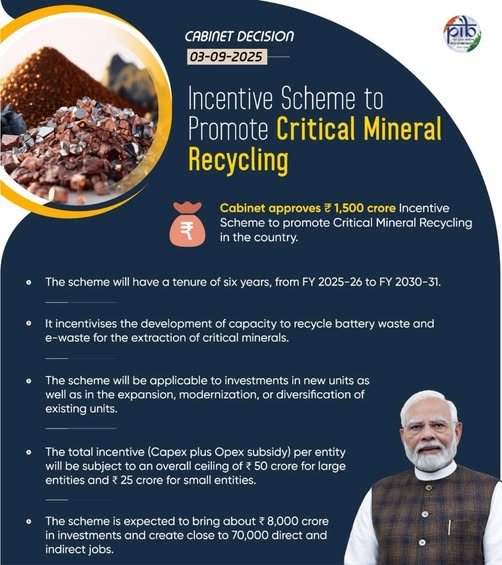
- 08 Sep 2025
In News:
- The Union Cabinet has approved a ?1,500 crore Incentive Scheme to promote critical mineral recycling in India, marking a significant step towards reducing import dependence and ensuring sustainable supply chain resilience.
- The scheme forms part of the broader National Critical Mineral Mission (NCMM), which seeks to build domestic capacity in exploration, mining, acquisition of foreign assets, and recycling of critical minerals.
Key Features of the Scheme
- Tenure: Six years, from FY 2025-26 to FY 2030-31.
- Outlay: ?1,500 crore.
- Eligible Feedstock:
- E-waste
- Lithium-ion battery (LIB) scrap
- Other scrap sources such as catalytic converters from end-of-life vehicles.
- Beneficiaries:
- Large, established recyclers.
- Small/new recyclers and start-ups (allocated one-third of scheme outlay).
- Applicability: Investments in new units, as well as expansion, modernization, or diversification of existing units.
Incentive Structure
- Capex Subsidy:
- 20% subsidy on plant, machinery, equipment, and utilities for projects that commence production within the stipulated timeframe.
- Delays will lead to reduced subsidies.
- Opex Subsidy:
- Linked to incremental sales over FY 2025-26 baseline.
- 40% subsidy in the 2nd year (FY 2026-27).
- 60% subsidy in the 5th year (FY 2030-31), subject to achieving threshold sales.
- Ceilings per Entity:
- Large recyclers – ?50 crore (with ?10 crore cap on Opex subsidy).
- Small recyclers/start-ups – ?25 crore (with ?5 crore cap on Opex subsidy).
- Scope: Incentives are limited to the extraction of critical minerals, not just black mass production.
Expected Outcomes
- Development of 270 kilotons of annual recycling capacity.
- Production of around 40 kilotons of critical minerals annually.
- Mobilization of about ?8,000 crore investment.
- Creation of nearly 70,000 direct and indirect jobs.
Significance
- Strategic Minerals Security: Provides near-term solutions to bridge supply-demand gaps until new mines and foreign acquisitions materialize.
- Circular Economy Boost: Promotes recycling of high-value e-waste and LIB scrap, reducing environmental load.
- Atmanirbhar Bharat: Strengthens domestic industries in electronics, renewable energy, and EV sectors by ensuring reliable access to lithium, cobalt, nickel, and other critical minerals.
- Inclusivity: Special provisions for start-ups and small recyclers to encourage innovation and wider participation.
Matanomadh in Kutch
- 08 Sep 2025
In News:
- A remote village in Gujarat’s Kutch district, Matanomadh, is emerging as a potential analogue site for India’s future Mars missions.
- Researchers from the Space Applications Centre (ISRO), Savitribai Phule Pune University, and the Birbal Sahni Institute of Palaeosciences have confirmed the presence of jarosite, a mineral also discovered on Mars, making the region significant for planetary studies.
Jarosite and Its Relevance
- Composition: Jarosite is a yellow-brown mineral composed of potassium, iron, and sulphate, typically formed in arid, saline environments under extreme geochemical conditions.
- Formation: On Earth, it is linked to volcanic activity, where volcanic ash containing sulphur reacts with water-rich environments.
- Global Occurrence: Rare on Earth; found in Mexico, Canada, Japan, Spain, USA (Utah, California), and in India at Kerala’s Varkala cliffs and now Kutch.
- On Mars: First detected in 2004 by NASA’s Opportunity Rover at Meridiani Planum, jarosite is considered strong evidence of water activity on the red planet.
The Kutch Discovery
- Age: Jarosite deposits at Matanomadh have been dated to around 55 million years ago (Paleocene period).
- Geological Significance: Indicates that environmental and chemical conditions in Kutch millions of years ago resembled those on Mars.
- Current Findings: The mineral occurs as fine deposits mixed with clay. When mixed with water, this clay expands—closely resembling Martian sulphate-clay formations.
Importance for Space Research
- Field Analogue for Mars: The site provides a natural laboratory to test rovers, instruments, drilling, geochemistry, and astrobiology experiments for upcoming missions like Mangalyaan-2.
- Astrobiology Potential: Sulphates such as jarosite can trap organic molecules, offering clues to possible microbial life.
- Palaeo-evolution Insights: Helps decode the geological and chemical history of Mars.
- Complementary Sites: While Ladakh’s Tso Kar Valley (HOPE Mission) simulates Martian living conditions, Kutch offers geological parallels for studying surface mineralogy.
Challenges
- The site is currently waterlogged and threatened by coal mining activities in the vicinity. Scientists have urged that Matanomadh be declared a site of planetary geo-heritage to protect its unique deposits.
Foreigners Tribunals
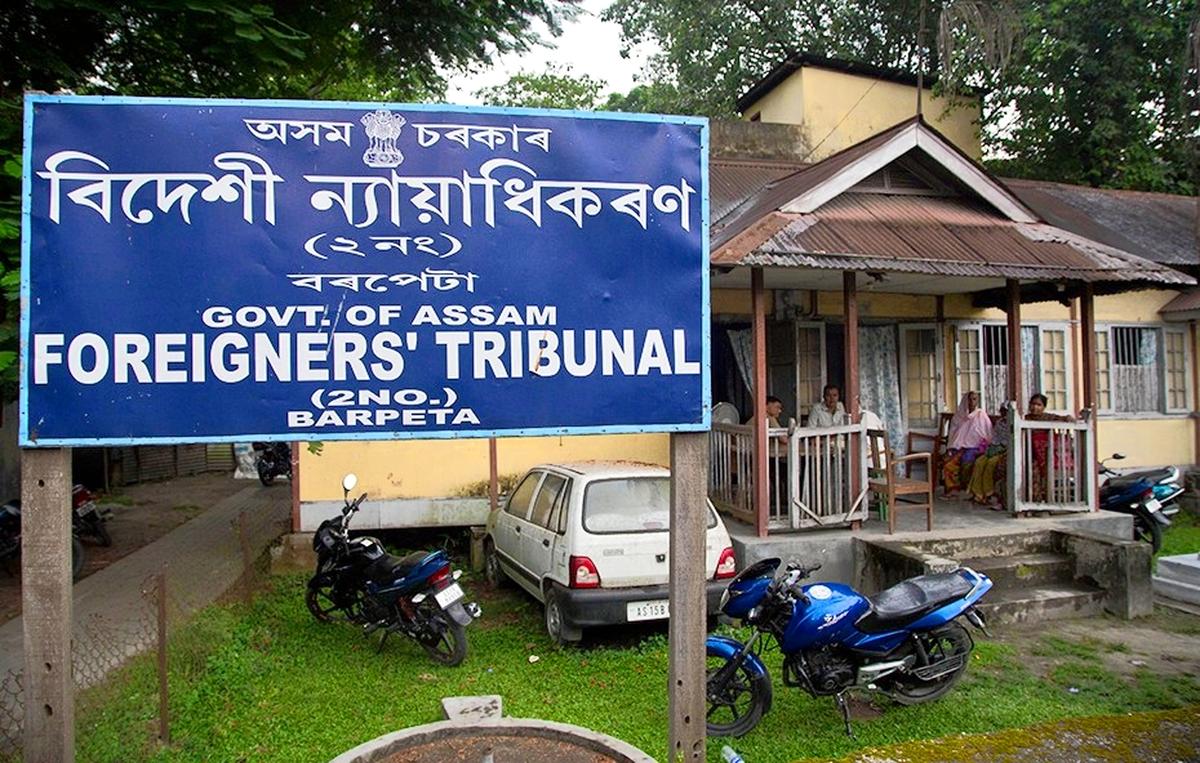
- 08 Sep 2025
In News:
The Union Home Ministry has recently empowered Foreigners Tribunals (FTs) with expanded judicial authority under the Immigration and Foreigners Act, 2025, which came into effect in September 2025. This marks a significant shift in India’s approach to dealing with suspected illegal immigrants, particularly in states like Assam.
Background
- Earlier Framework: Foreigners Tribunals were originally set up under the Foreigners (Tribunals) Order, 1964, issued under the Foreigners Act, 1946. Their main role was to determine whether a person was a foreign national.
- In Assam, such tribunals were established after the Illegal Migrants (Determination by Tribunals) Act, 1983 was struck down by the Supreme Court in 2005. Currently, around 100 FTs are functional in the state.
- Earlier, detention of declared illegal immigrants was carried out through executive orders, without direct judicial sanction.
Provisions of the 2025 Act
The Immigration and Foreigners Act, 2025 repeals older legislations and replaces the 1964 Order, giving FTs enhanced powers akin to those of a civil court and a first-class judicial magistrate.
New Powers of Foreigners Tribunals:
- Summoning and enforcing attendance of individuals and examining them under oath.
- Requiring production and verification of documents.
- Issuing commissions for the examination of witnesses.
- Directing suspects (“proceedees”) to appear in person.
- Issuing arrest warrants in case of non-appearance.
- Sending suspected or declared foreigners to detention/holding centres pending deportation.
Procedural Aspects:
- Notices are served to suspected individuals to prove their citizenship within 10 days.
- Cases are to be disposed of within 60 days of reference.
- Declared foreigners are placed in detention or transit camps until deportation.
Significance
- Strengthened Legal Framework: Brings uniformity and judicial backing to the process of identifying and detaining unauthorised foreigners.
- Due Process Assurance: Ensures quasi-judicial scrutiny before declaring an individual a foreigner.
- Regional Relevance: Particularly critical in Assam and Northeast India, which face unique challenges of cross-border migration.
- Administrative Clarity: Clearly demarcates powers between executive authorities and tribunals.
Exercise MAITREE
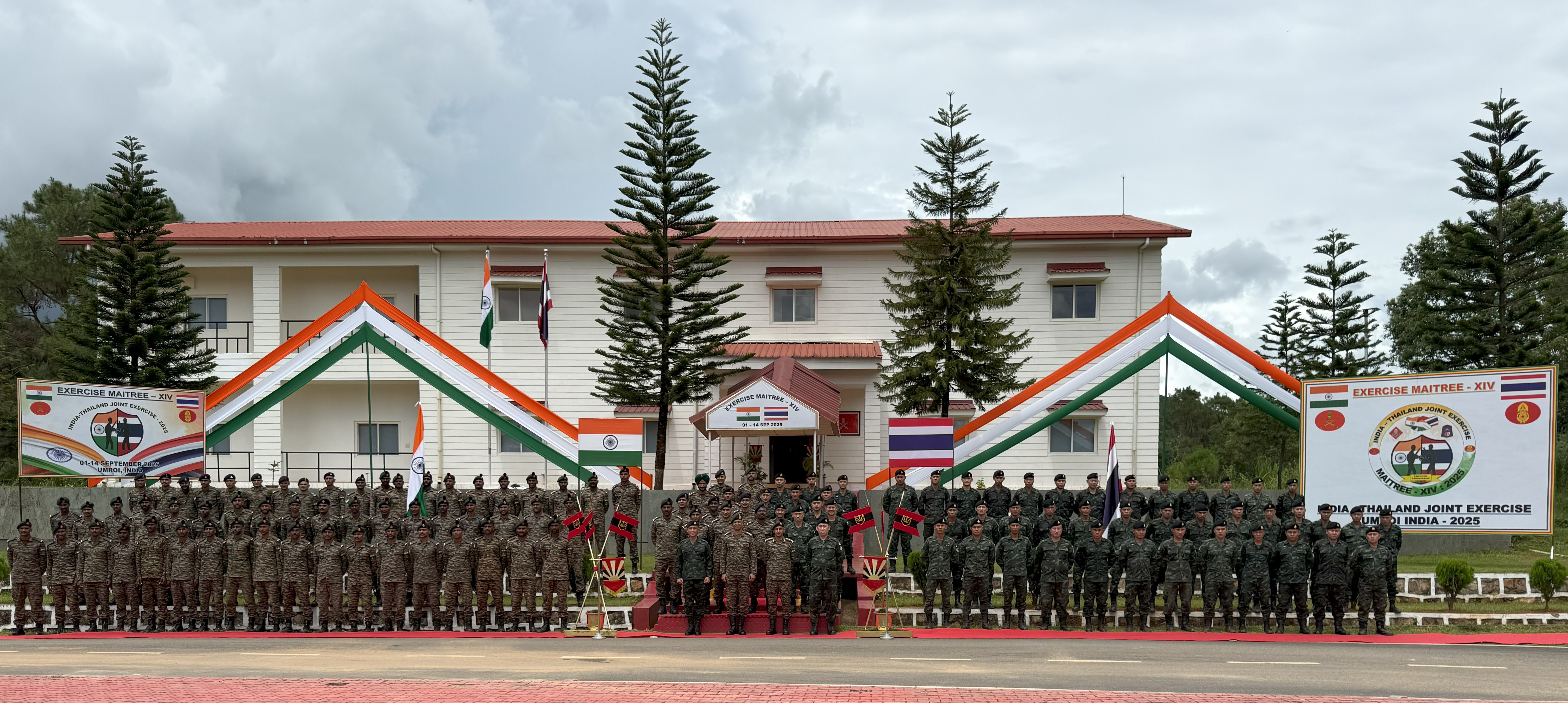
- 08 Sep 2025
In News:
The 14th edition of Exercise MAITREE-XIV, a joint military exercise between India and Thailand, commenced at the Joint Training Node (JTN), Umroi, Meghalaya.
Background
Instituted in 2006, Exercise MAITREE is a bilateral military exercise aimed at enhancing cooperation, interoperability, and mutual understanding between the Indian Army and the Royal Thai Army. The 13th edition was held at Fort Vachiraprakan, Tak Province, Thailand.
Key Features of MAITREE-XIV
- Participants:
- Indian Army – 120 personnel, represented by a battalion of the Madras Regiment.
- Royal Thai Army – 53 personnel from the 1st Infantry Battalion, 14th Infantry Brigade.
- Focus Area:
- Company-level counter-terrorist operations in semi-urban terrain, in accordance with Chapter VII of the UN Charter.
- Tactical drills, joint planning, special arms skills, physical fitness, and raiding operations.
Significance
- Reinforces bilateral defence cooperation and strengthens regional security architecture.
- Reflects the shared commitment of India and Thailand towards peace, stability, and counter-terrorism efforts.
- Enhances the operational synergy of both armies, particularly in addressing contemporary security challenges in the Indo-Pacific.
Global Peace Index (GPI) 2025
- 07 Sep 2025
In News:
The Global Peace Index (GPI) 2025, compiled by the Institute for Economics and Peace (IEP), ranked Iceland as the world’s most peaceful country, a position it has held since 2008. Covering 163 independent states and territories that represent 99.7% of the global population, the index provides a comparative measure of peace across nations.
India’s Performance
- Rank: 115th out of 163 countries.
- Score: 2.229, reflecting a 0.58% improvement over the previous year.
- Improvement Drivers: Gradual decline in domestic disputes and relative stability in societal security.
- Persistent Challenges: High militarisation, cross-border tensions, and sporadic internal unrest continue to limit India’s peacefulness score.
Global Rankings
- Top 10 Peaceful Nations (2025): Iceland, Ireland, New Zealand, Finland, Austria, Switzerland, Singapore, Portugal, Denmark, and Slovenia.
- Least Peaceful Nations: Russia, Ukraine, Sudan, Democratic Republic of Congo, and Yemen.
- Regional Highlights:
- Europe dominates the top 10 due to low crime, political stability, and strong institutions.
- South America witnessed improvements, with Argentina and Peru making notable gains.
- Sub-Saharan Africa and the Middle East remain the least peaceful, marred by civil wars, terrorism, and political instability.
Criteria of Assessment
The GPI ranks countries across 23 indicators grouped under three domains:
- Societal Safety and Security – crime rates, political stability, refugee impact.
- Ongoing Domestic and International Conflict – wars, terrorism, civil unrest.
- Militarisation – defence expenditure, arms imports/exports, armed personnel.
Global Peace Trends 2025
- The global average peacefulness has declined, primarily due to growing internal conflicts, rising militarisation, and widening geopolitical divides.
- While countries like Iceland scored consistently high due to low crime, absence of an army, and strong social trust, many regions faced setbacks with increased unrest and repression (e.g., Pakistan, Bangladesh, South Africa).
Gastrochiluspechei
- 07 Sep 2025
In News:
Researchers have discovered a new orchid species, Gastrochiluspechei, in Vijoynagar, Arunachal Pradesh, one of India’s remotest administrative circles bordering Myanmar. Until now, this orchid was known to bloom only in Myanmar, highlighting the floristic link between Arunachal Pradesh and Southeast Asia.
Key Features of Gastrochiluspechei
- Genus: Belongs to the Gastrochilus genus, first recorded in 1825, comprising 77 species spread across tropical, subtropical, and temperate Asia.
- Identification: Distinguished by short axillary inflorescence, brightly coloured flowers, a distinct epichile on the hypochile, and two porate, globose pollinia on a slender stipe.
- Habitat: Thrives in moist, evergreen rainforests, growing on small trees near riverbanks.
- Flowering Season: Blooms between September and October.
Floristic Significance
- With this finding, India now records 23 species of the Gastrochilus genus, of which 15 are from Arunachal Pradesh.
- The discovery reinforces Arunachal Pradesh’s title as the “Orchid State of India,” which harbours about 60% of the country’s orchid diversity.
- It also provides scientific evidence of the biogeographical continuity between Arunachal Pradesh and Myanmar, where the species was earlier recorded in Kachin’s Putao County.
Broader Context
Orchids are not only indicators of ecological richness but also hold significance for conservation, floriculture, and sustainable livelihoods. The discovery of Gastrochiluspechei adds to India’s botanical wealth and underscores the need to preserve fragile Himalayan ecosystems where such rare species thrive.
BHARATI Initiative
- 07 Sep 2025
In News:
The Agricultural and Processed Food Products Export Development Authority (APEDA) has launched the BHARATI initiative (Bharat’s Hub for Agritech, Resilience, Advancement and Incubation for Export Enablement) to accelerate India’s agricultural and processed food exports.
Objectives and Vision
- Empowering Startups: BHARATI will support 100 agri-food and agri-tech startups in its first pilot cohort beginning September 2025.
- Export Growth: It is aligned with APEDA’s vision of achieving $50 billion in agri-food exports by 2030.
- Innovation & Competitiveness: The initiative seeks to promote cutting-edge solutions in GI-tagged products, organic foods, superfoods, processed agri-foods, livestock, and AYUSH-based products.
Key Features
- Technology Integration: Focus on AI-based quality control, blockchain-enabled traceability, IoT-enabled cold chains, agri-fintech, sustainable packaging, and sea protocols.
- Export Challenges Addressed: Product development, value addition, perishability, wastage reduction, quality assurance, and logistics efficiency.
- Collaborative Ecosystem: Startups will be connected with agri-innovators, tech providers, and SPS-TBT focused ventures to deliver scalable, cost-effective export solutions.
- Capacity Building: Selected startups will undergo a three-month acceleration programme covering product development, export readiness, regulatory compliance, and market access.
Institutional Support
To build a strong support ecosystem, APEDA will partner with:
- State agricultural boardsand agricultural universities
- IITs, NITs, and premier research institutions
- Industry bodies and accelerators
Significance
- Strengthens India’s global competitiveness in agri-food exports.
- Promotes Atmanirbhar Bharat, Vocal for Local, Digital India, and Start-Up India missions.
- Encourages demand-driven backward integration, innovation, and sustainable food value chains.
- Creates a scalable annual incubation model, ensuring long-term growth in agricultural and processed food exports.
India Green Energy Paradox
- 07 Sep 2025
In News:
India’s energy sector is witnessing a paradoxical challenge: while 44 GW of renewable energy (RE) capacity is ready for deployment, it remains stranded due to lack of Power Purchase Agreements (PPAs), weak demand absorption, and systemic barriers. This “green energy paradox” highlights the tension between India’s global climate commitments and its domestic energy realities.
Current Energy Landscape
Despite global recognition for its renewable push, India’s energy mix remains heavily dependent on coal:
- Coal & lignite: ~79% of domestic energy (FY23).
- Renewables (excluding large hydro): Only 3.8% of domestic production.
- Oil & gas imports: Over 85% oil and 50% gas, making India highly import-dependent.
While renewable capacity is expanding, India continues to lock itself into long-term coal PPAs, raising both environmental and economic concerns.
Green Energy Paradox: Two Dimensions
1. Supply-Side Readiness
- 44 GW of RE projects are deployment-ready but idle without PPAs.
- Tariff challenges: Solar power in India remains costlier than global benchmarks due to high cost of capital, GST, duties, and import taxes.
- Storage costs: Storage-backed renewables (battery/pumped hydro) raise tariffs to ?6.6–?9/unit, making them uncompetitive against coal.
- Government interventions: Initiatives like the National Solar Mission, Hybrid Policy, Production-Linked Incentive (PLI) for batteries, and Viability Gap Funding (VGF) aim to reduce costs and promote adoption.
2. Demand-Side Weaknesses
- Discom reluctance: Financially stressed state distribution companies (discoms) prefer coal PPAs due to predictable pricing.
- Grid inflexibility: Poor transmission capacity, absence of smart meters, and weak demand-response systems hinder RE integration.
- Slow electrification: With electricity accounting for just 20% of India’s total energy consumption (vs. 28% in China), limited adoption of EVs, electric cooking, and industrial heating suppresses RE demand.
- Reliability deficit: India’s System Average Interruption Duration Index (SAIDI) stands at 600 minutes/year, compared to 35 minutes in Thailand and 46 in Malaysia, deterring energy-intensive industries.
Barriers to Integration
- Structural: Debt-ridden discoms, weak cross-subsidy frameworks, and lack of flexible grids.
- Economic: High capital costs, expensive borrowing, and unviable storage solutions.
- Environmental: Long-term coal lock-ins undermine India’s Net Zero 2070 goals, while idle RE capacity delays emissions reduction.
Initiatives Taken
- Renewable Purchase Obligations (RPOs): Mandate states to procure RE, though targets often clash with local grid capability.
- Green Open Access Rules (2022): Allow industries to directly purchase renewable power, bypassing discoms.
- National Green Hydrogen Mission: Positions hydrogen as a long-term storage solution and clean fuel.
- PLI for batteries and India Semiconductor Mission: Support indigenous storage manufacturing.
Afghanistan Earthquake
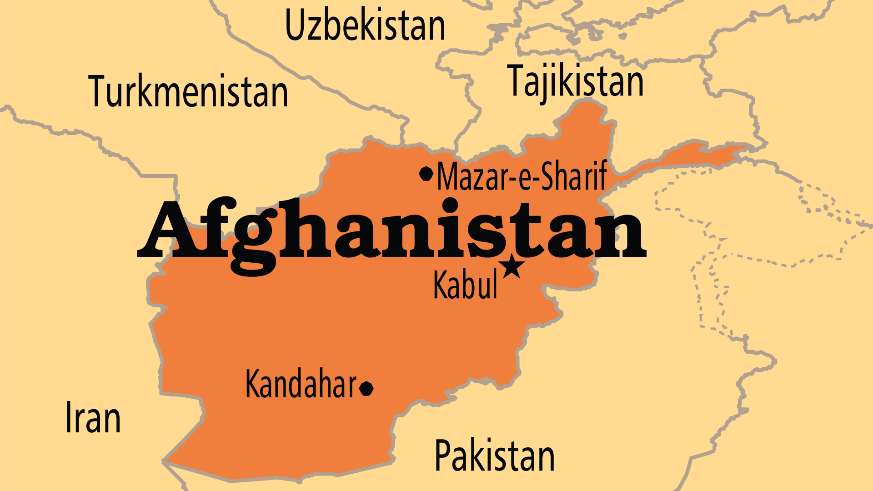
- 07 Sep 2025
In News:
A devastating 6.0-magnitude earthquake struck eastern Afghanistan near Jalalabad, killing over 800 people and injuring at least 2,800 across Kunar, Nangarhar, and Laghman provinces. The tremors, felt from Kabul to Islamabad, destroyed homes in remote mountainous regions and highlighted Afghanistan’s acute vulnerability to natural disasters.
Afghanistan’s Seismic Vulnerability
Afghanistan lies at the collision zone of the Eurasian and Indian tectonic plates, making it one of the world’s most seismically active regions. The Hindu Kush mountain range, part of the greater Himalayan system, witnesses frequent tremors. Since 1900, at least 12 earthquakes exceeding magnitude 7 have struck northeast Afghanistan.
Most Afghans live in low-rise, mud-brick dwellings, which offer little resistance to seismic shocks. With poor infrastructure, fragile governance, and limited access to technology, the human toll of disasters is amplified.
Geographic and Geostrategic Context
Afghanistan is a landlocked, multi-ethnic nation in South-Central Asia, historically situated at the crossroads of trade and power rivalries—from the “Great Game” between Britain and Russia to Cold War confrontations.
- Capital: Kabul
- Neighbours: Pakistan, Iran, Turkmenistan, Uzbekistan, Tajikistan, and China (via the narrow Wakhan Corridor).
- Geographic Features:
- Mountains: The Hindu Kush dominates, with passes like the Khyber and Shebar, linking Central and South Asia.
- Rivers: Amu Darya (north), Kabul River (tributary of Indus), Helmand (longest at 715 miles), and Hari Rud (Afghanistan–Iran boundary).
- Regions:
- Central Highlands – rugged, earthquake-prone terrain.
- Northern Plains – fertile, resource-rich areas with gas reserves.
- Southwestern Plateau – arid deserts such as Registan and Margow.
These geographical features make Afghanistan both strategically significant and highly disaster-prone.
Indian Rosewood
- 06 Sep 2025
In News:
- Indian rosewood (Dalbergialatifolia in the south and Dalbergia sissoo in the north), often referred to as the “ivory of the forests”, is prized globally for its rich grain, deep colour, and durability.
- It serves as both a premium timber resource for furniture, handicrafts, and musical instruments, and an ecologically significant species that enhances soil fertility through nitrogen fixation, supports bird and insect diversity, and acts as a long-term carbon sink.
Distribution and Habitat
- Dalbergialatifolia: Native to the Nilgiris, Anamalai, and Parambikulam ranges in Tamil Nadu, with significant habitats in Karnataka and Kerala.
- Dalbergia sissoo (North Indian rosewood): Found along the Himalayan foothills, from Afghanistan to Bihar, typically growing along riverbanks between 200–1,400 m elevation.
- Recent habitat modelling by the Institute of Wood Science and Technology (IWST), Bengaluru, using 3,224 geo-referenced points and 19 bioclimatic variables, found that only 17.2% of India’s suitable habitat lies within protected areas.
Current Status in Tamil Nadu
- Field surveys (2019–2025) by IWST and the Indian Council of Forestry Research and Education revealed that Tamil Nadu has the lowest density of rosewood in South India, with just 2.85 trees per 0.1 hectare, compared to 6.19 in Karnataka and 5.38 in Kerala.
- The populations are dominated by mature, ageing trees with little or no natural regeneration, and seedlings are rare or absent in many areas.
- The situation has worsened after the lapse of the Tamil Nadu Rosewood (Conservation) Act, 1995, which had regulated felling of rosewood for nearly three decades.
- With no renewal after February 2025, privately owned rosewood, especially in tea plantations of the Nilgiris, faces heightened risk of exploitation.
Threats
- Weak Legal Safeguards – With the lapse of State legislation, most rosewood outside protected areas is exposed to felling and land-use change.
- Climate Change – IWST modelling projects shrinking suitable habitats in coming decades, further compounding the species’ vulnerability.
- International Demand – Luxury furniture and musical instruments drive high global demand.
- Regeneration Crisis – Ageing tree populations without sufficient seedlings threaten long-term survival.
Conservation Status
- IUCN Red List: Vulnerable (since 2018).
- CITES: Appendix II (regulated trade).
- India’s Last National Assessment (2011–12): Near Threatened.
Blue Sea Dragons
- 06 Sep 2025
In News:
Recently, several beaches in Guardamar del Segura, Spain, were closed after an unusual invasion of blue sea dragons (Glaucus atlanticus), a rare but strikingly beautiful species of sea slug. Authorities imposed the ban as a precautionary measure to protect residents and tourists from potential stings.
About Blue Sea Dragons
- Taxonomy: A type of mollusk belonging to the nudibranch family.
- Other Names: Also called blue sea slugs, sea swallows, and blue angels.
- Appearance: Known for their ethereal blue and silver coloration and small size (1–3 cm), often floating upside down on the ocean surface.
- Distribution: Found across Atlantic, Pacific, and Indian Oceans in tropical and temperate waters.
- Reproduction: They are hermaphrodites, possessing both male and female reproductive organs.
Feeding and Venom Storage
- Diet consists mainly of venomous siphonophores such as the Portuguese man-o’-war and bluebottle jellyfish.
- Instead of digesting their prey’s stinging cells (nematocysts), they store and concentrate them in finger-like structures on their backs called cerata.
- This makes their sting more potent than that of the original prey, giving them a powerful defence mechanism despite their fragile appearance.
Impact on Humans
- Though not venomous on their own, their stored nematocysts can deliver extremely painful stings.
- Reported symptoms include nausea, vomiting, pain, dermatitis, allergic reactions, and post-inflammatory hyperpigmentation.
- Children and elderly individuals are especially vulnerable.
Ramon Magsaysay Award 2025
- 06 Sep 2025
In News:
The Ramon Magsaysay Award 2025, Asia’s most prestigious honour, has been conferred on ‘Educate Girls’, an Indian non-profit organisation working to promote girls’ education in rural and remote areas. This marks the first time an Indian NGO has received this award, making it a historic milestone for the country.
About Educate Girls
- Founded by Safeena Husain, Educate Girls (also known as the Foundation to Educate Girls Globally) has been instrumental in addressing gender inequality in education.
- The organisationmobilises communities to enrol out-of-school girls, improve learning outcomes, and empower them to continue education.
- Its grassroots volunteers, known as Team Balika and preraks, work in partnership with governments, donors, and local communities.
About Ramon Magsaysay Award
- Instituted in 1958 to celebrate “greatness of spirit and transformative leadership in Asia”.
- Named after Philippine President Ramon Magsaysay, remembered for his integrity and people-centric leadership.
- From 1958–2008, the award was given in six categories: Government Service, Public Service, Community Leadership, Journalism & Creative Communication Arts, Peace & International Understanding, and Emergent Leadership.
- Since 2009, except for Emergent Leadership, it is presented without fixed categories.
- Winners receive a certificate and a medallion bearing the image of Ramon Magsaysay.
- The award ceremony takes place annually in Manila, Philippines on 31st August, Magsaysay’s birth anniversary.
- Till date, over 300 individuals and organisations across Asia have been recognised.
Other 2025 Awardees
- Shaahina Ali (Maldives): Environmental activist.
- Fr. Flaviano Antonio L. Villanueva (Philippines): Human rights advocate known for opposing extrajudicial killings during the Duterte administration.
Exercise Yudh Kaushal 3.0
- 06 Sep 2025
In News:
The Indian Army recently conducted Exercise Yudh Kaushal 3.0 in the high-altitude Kameng region of Arunachal Pradesh, reaffirming its preparedness for next-generation warfare in extreme Himalayan terrain.
The exercise underscored the Army’s shift towards multi-domain operations, greater reliance on emerging technologies, and closer engagement with the domestic defence industry.
Key Highlights of the Exercise
- Terrain & Conditions: Conducted in high-altitude, harsh Himalayan conditions, validating combat effectiveness and operational resilience.
- Technological Integration: Featured drone surveillance, precision strikes, real-time target acquisition, air–littoral operations, and synchronized battlefield tactics, reflecting the Army’s technological adaptation.
- Debut of ASHNI Platoons: Marked the first operational deployment of the newly raised ASHNI platoons, designed to combine advanced technology with traditional combat expertise for decisive battlefield advantage.
- Indigenous Defence Industry Participation: Reflected India’s emphasis on Atmanirbhar Bharat and the “Decade of Transformation,” with active involvement of the domestic defence sector.
Strategic Significance
- Demonstrated India’s ability to conduct large-scale, coordinated operations in sensitive border regions.
- Validated the Army’s preparedness for multi-domain conflicts involving land, air, cyber, and unmanned systems.
- Reinforced the importance of self-reliance in defence technology by incorporating indigenous systems in live combat simulations.
- Showcased India’s resolve to maintain combat superiority in high-altitude operational theatres along the Line of Actual Control (LAC).
Mira Variable Stars
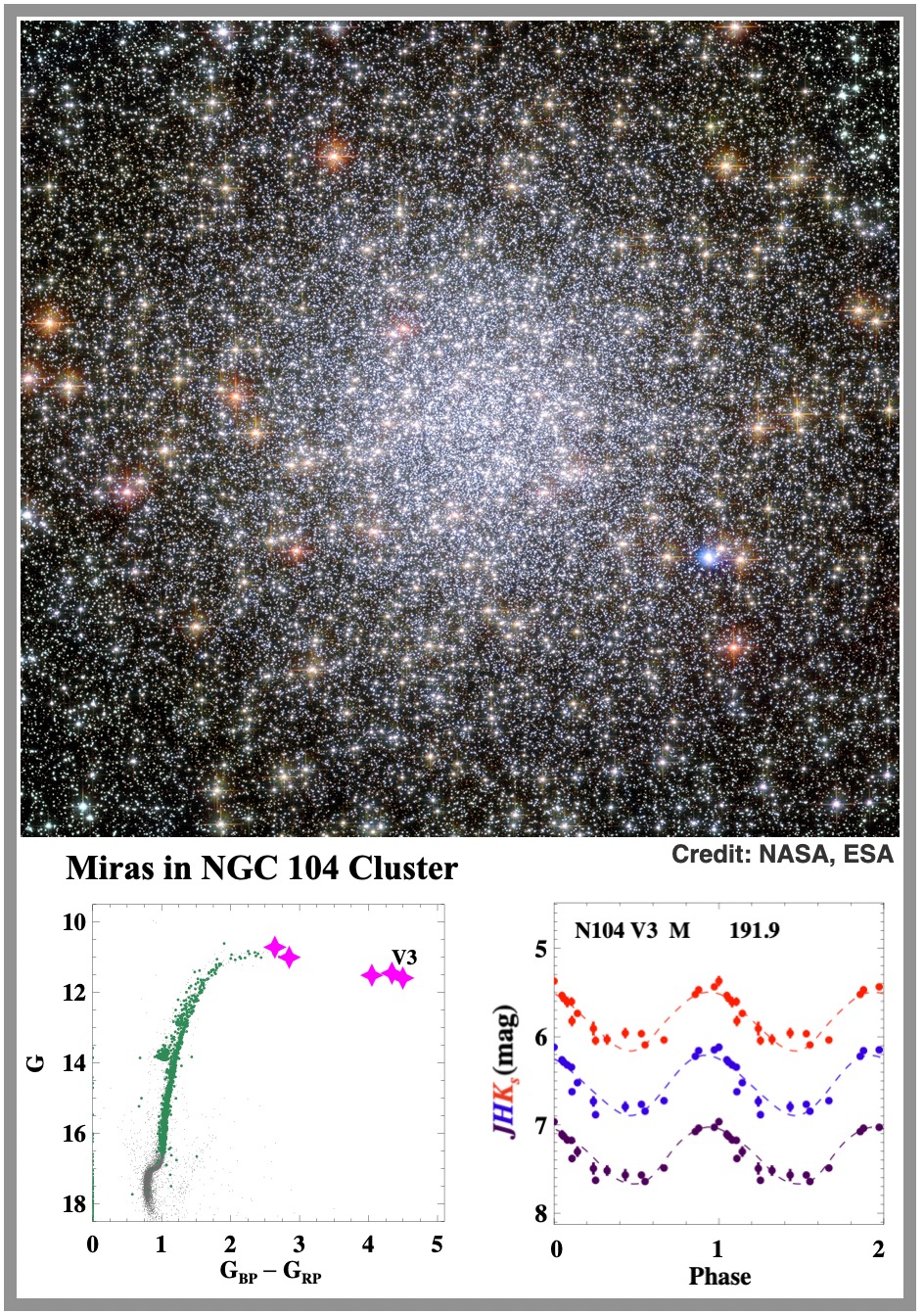
- 06 Sep 2025
In News:
A landmark study by the Inter-University Centre for Astronomy and Astrophysics (IUCAA), Pune, in collaboration with international scientists, has provided the most precise measurement yet of the Hubble constant, the rate of expansion of the universe. The work, co-authored by Nobel laureate Adam Riess, introduces oxygen-rich Mira variable stars as a new and reliable anchor in the cosmic distance ladder.
What are Mira Variables?
- Mira (Omicron Ceti), discovered in the 17th century, was the first known variable star, named “Mira” meaning ‘the wonderful’ in Latin.
- Mira variables are cool, giant stars (surface temperature ~3,000 K) in their late life stages.
- They exhibit regular cycles of expansion and contraction, leading to predictable brightness variations over 100–1,000 days.
- Crucially, their luminosity is strongly related to pulsation periods, making them excellent “standard candles”—objects of known brightness used to measure cosmic distances.
The IUCAA Study
- Led by Prof. Anupam Bhardwaj, the team studied 40 oxygen-rich Mira stars across 18 stellar clusters in our galaxy.
- Using precise distance data from the European Space Agency’s Gaia mission, they calibrated the absolute luminosities of these stars with unprecedented accuracy.
- This enabled an independent period–luminosity relationship, bypassing traditional reliance on Cepheid variables.
- The study achieved a 3.7% precision in measuring the Hubble constant—the most accurate determination using Miras to date.
Significance for Cosmology
- Mira-based calibration provides an independent check on Cepheid-based measurements, reducing metallicity-related uncertainties (Miras are 3 times less sensitive to metal abundance than Cepheids).
- Current results show consistency between Mira-anchored and Cepheid-anchored Hubble constant values, suggesting that the long-standing “Hubble tension”—the mismatch between early-universe (CMB-based) and late-universe (stellar-based) expansion rates—is not due to measurement errors.
- This points toward possible new physics beyond the Standard Cosmological Model.
Limitations and Future Prospects
- Presently, only two supernova-host galaxies contain known Mira stars, limiting large-scale calibration.
- Upcoming surveys with the Rubin Observatory are expected to discover numerous Miras in distant galaxies, significantly improving cosmic distance measurements.
- The study thus opens pathways to a more accurate determination of the universe’s age and size.
Equity Derivatives
- 05 Sep 2025
In News:
The Securities and Exchange Board of India (SEBI) has introduced a new regulatory framework to monitor intraday positions in equity index derivatives, effective October 1, 2025. The move is aimed at mitigating systemic risks, ensuring orderly market functioning, and curbing speculative excesses, especially on expiry days.
Key Features of the Framework
- Net Intraday Position Cap: ?5,000 crore per entity in index options (compared to the existing end-of-day limit of ?1,500 crore).
- Gross Intraday Position Cap: Restricted to ?10,000 crore, the same as the current end-of-day limit. This applies separately to long and short positions.
- Applicability: Framework applies only to index options, which dominate India’s derivatives market.
- Objectives:
- Prevent creation of outsized intraday exposures.
- Provide predictability and operational clarity.
- Strike a balance between ease of trading and robust risk management.
- Facilitate market-making activity on all trading days while ensuring discipline on expiry days.
Understanding Derivatives
Derivatives are financial contracts whose value is derived from an underlying asset, such as stocks, indices, commodities, or currencies. They allow investors to speculate on price movements, hedge against risks, or enhance returns.
Types of Equity Derivatives
- Futures Contracts: Obligates buyer and seller to transact an equity asset at a predetermined price on a future date (e.g., Nifty and Sensex futures).
- Options: Provides the right, but not obligation, to buy (call) or sell (put) an underlying asset at a set price before or on expiry.
- Forwards: Similar to futures but non-standardised and over-the-counter (not exchange-traded).
- Swaps: Involves exchange of cash flows linked to equity returns; used for hedging or investments.
Significance of Equity Derivatives in Markets
- Leverage: Small upfront margin allows control over large positions, magnifying gains (and risks).
- Hedging: Protects portfolios from adverse price fluctuations.
- Arbitrage Opportunities: Exploit price mismatches across markets.
- Diversification: Enhances portfolio risk-spread.
- Liquidity: High trading volumes ensure ease of entry and exit.
- Income Generation: Writing options or structured strategies provide additional returns.
- Cost Efficiency: Lower transaction costs compared to direct investment in underlying assets.
Why SEBI’s Move Matters
- Risk Containment: Prevents destabilisation of markets due to oversized speculative positions.
- Systemic Stability: Reduces chances of flash crashes or manipulative trades, especially during contract expiries.
- Market Discipline: Introduces quantitative caps that align with global best practices.
- Investor Confidence: Ensures orderly trading, which is crucial for attracting both institutional and retail investors.
Vikram 3201
- 05 Sep 2025
In News:
India crossed a significant milestone in its journey towards technological self-reliance in space electronics with the unveiling of the Vikram 3201, the nation’s first fully indigenous 32-bit microprocessor for rockets and satellites. The processor was showcased at the Semicon India 2025 conference, symbolising the country’s growing semiconductor capabilities and its commitment to Atmanirbhar Bharat.
Development and Collaboration
- Designed by: Vikram Sarabhai Space Centre (VSSC), ISRO
- Fabricated at: Semiconductor Laboratory (SCL), Chandigarh
- Launched by: Ministry of Electronics & Information Technology at Semicon India 2025
- Marks the first indigenously designed and fabricated processor of this scale for launch vehicle avionics.
Why the Processor Matters
- Unlike consumer processors (used in laptops or mobiles), the Vikram 3201 is space-grade, built to handle the navigation, control, and mission management of launch vehicles.
- Space electronics must withstand radiation, extreme vibration, and temperature fluctuations (–55°C to +125°C).
- With this chip, India reduces reliance on foreign processors, securing autonomy for critical missions and reducing supply-chain vulnerabilities.
Key Features
- Upgrade over Vikram 1601 (a 16-bit processor used since 2009).
- 32-bit architecture – enables faster, more precise data handling.
- 64-bit floating-point operations – ensures accurate trajectory and guidance calculations.
- Ada programming language support – widely used in aerospace for safety-critical systems.
- On-chip 1553B bus interfaces – allows seamless communication between avionics modules.
- Fabricated with 180 nm CMOS technology at SCL – reliable for aerospace-grade use.
- Military-grade resilience – rigorously tested for launch stresses and in-orbit functioning.
Testing and Validation
- Successfully tested on PSLV-C60 mission, where it powered the Mission Management Computer on the PSLV Orbital Experimental Module (POEM-4).
- Its in-orbit validation has given ISRO confidence for wider deployment in future missions.
Ecosystem and Complementary Developments
- ISRO has developed a complete software ecosystem: Ada compilers, assemblers, linkers, simulators, and Integrated Development Environments. A C-compiler is also under development.
- Alongside Vikram 3201, ISRO introduced:
- Kalpana 3201 – a 32-bit SPARC V8 RISC microprocessor with open-source compatibility.
- Reconfigurable Data Acquisition Systems (RDAS) – two variants.
- Relay Driver IC.
- Multi-Channel Low Drop-out Regulator IC.
- Together, these reduce dependency on imported avionics components.
Strategic Significance
- Technological Sovereignty: Eliminates dependency on foreign space-grade processors.
- Atmanirbhar Bharat: Strengthens indigenous capability in high-end semiconductor manufacturing.
- Semiconductor Push: Part of India’s broader semiconductor strategy, with five fabrication units under construction and incentives under the Design-Linked Incentive (DLI) scheme.
- Global Context: Space-grade processors are niche, not mass-produced, making indigenous capability a strategic advantage.
PRATUSH Telescope
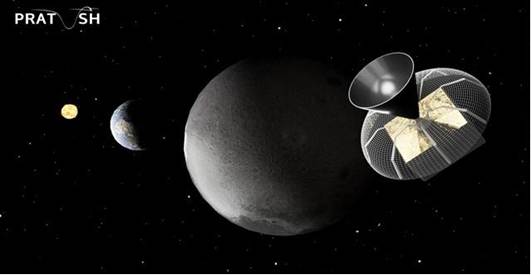
- 05 Sep 2025
In News:
Scientists at the Raman Research Institute (RRI), Bengaluru, with support from the Department of Science and Technology (DST) and collaboration with ISRO, have proposed a pioneering lunar mission called PRATUSH (Probing ReionizATion of the Universe using Signal from Hydrogen). This futuristic radiometer aims to detect faint 21-cm radio signals from hydrogen atoms, which hold imprints of the Cosmic Dawn—the epoch when the first stars and galaxies formed, fundamentally shaping the Universe.
The Science of the Cosmic Dawn
- The Cosmic Dawn marks the birth of the first stars and galaxies, initiating the reionization of the Universe.
- Detecting the 21-cm hydrogen signal is crucial to study this epoch, but the signal is extremely faint, buried under strong terrestrial radio interference.
- The far side of the Moon—a naturally radio-quiet zone—offers the ideal site for such observations, free from Earth’s radio noise and ionospheric distortions.
About PRATUSH Payload
- Type: Radiometer telescope for low-frequency radio astronomy.
- Orbit: Preferred circumlunar orbit around the far side of the Moon.
- Core Components:
- Wideband frequency-independent antenna (30–250 MHz).
- Self-calibratable analog receiver.
- Digital correlator with 100 kHz spectral resolution.
- Mission Strategy:
- Continuous observation of large sky regions.
- Recording beam-averaged radio spectra at high spectral resolution.
- Nominal lifetime: Two years, ensuring high signal-to-noise ratio with broad sky coverage.
Role of Single-Board Computer (SBC)
At the heart of PRATUSH lies a compact Single-Board Computer (SBC), initially modeled on a Raspberry Pi, designed to overcome stringent size, weight, and power (SWaP) constraints of space missions.
Functions of SBC:
- Master controller of the radiometer system.
- Coordinates antenna, analog receiver, and Field Programmable Gate Array (FPGA) for digital processing.
- Records, stores, and calibrates high-speed data streams.
- Performs preliminary data processing onboard.
Performance:
- Laboratory tests collected 352 hours of reference data, reducing receiver noise to just a few millikelvins, confirming its sensitivity to the Cosmic Dawn signal.
- Next-generation space-grade SBCs will replace commercial models for flight.
Significance of PRATUSH
- Scientific Breakthrough:
- May unlock how the first stars sculpted the Universe.
- Potential to discover new physics related to early cosmic evolution.
- Technological Innovation:
- Demonstrates the effectiveness of low-power, miniaturized controllers in deep-space astronomy.
- Showcases India’s ability to design low-mass, high-capability payloads.
- Strategic Value:
- Strengthens India’s presence in lunar science and radio astronomy.
- Enhances collaboration between RRI, DST, and ISRO.
- Global Impact:
- Contributes to humanity’s collective effort to detect the Universe’s earliest signals.
- Positions India as a frontrunner in next-generation space astrophysics.
High Performance Biomanufacturing Platforms
- 05 Sep 2025
In News:
- India has taken a significant step towards strengthening its bioeconomy with the launch of High-Performance Biomanufacturing Platforms by the Department of Biotechnology (DBT) and the Biotechnology Industry Research Assistance Council (BIRAC) under the BioE3 Policy (Biotechnology for Environment, Economy & Employment).
- The initiative aims to provide world-class infrastructure, tools, and expertise to start-ups, SMEs, industry, and academia, enabling the transition of bio-based innovations from laboratories to production scale.
Key Features of the Platforms
- National Network: 21 bio-enablers comprising advanced biofoundries and biomanufacturing hubs.
- Focus Areas:
- Microbial strains & smart proteins
- Probiotics & bio-based chemicals
- Next-generation cell therapies & mRNA medicines
- Marine bio-innovations
- Sustainable biofuels
- Support System: Offers integrated facilities for R&D, innovation, and commercialization.
- Alignment: Consistent with Atmanirbhar Bharat vision and India’s climate commitments.
Objectives
- Economic: Position India as a global bioeconomy leader and build a multi-trillion-dollar bioeconomy by 2047.
- Strategic: Reduce dependence on imports by strengthening indigenous capabilities.
- Social: Generate employment, build capacity, and support youth-led innovations.
- Environmental: Promote green growth and sustainable production systems.
Significance of the Initiative
- Economic Potential
- India now accounts for ~20% of global biomanufacturing capacity.
- Bio-industrial sector contributes 47.2%, bio-farmers 35.2%, bio-services 9.4%, and bio-agri8.1% to the bioeconomy.
- Reinforces India’s status as the world’s fourth-largest economy and a rising biotech powerhouse.
- Employment and Innovation
- Creates an enabling ecosystem for start-ups and SMEs, boosting entrepreneurship.
- Generates skilled jobs in cutting-edge sectors like synthetic biology, bioenergy, and therapeutics.
- Strategic Autonomy
- Enhances self-reliance in critical biomanufacturing domains such as vaccines, smart proteins, and biofuels.
- Reduces vulnerability to global supply chain disruptions.
- Sustainability and Viksit Bharat 2047
- Supports green growth through bio-based, low-carbon solutions.
- Anchors India’s long-term development vision of Viksit Bharat by 2047.
Pradhan Mantri Garib Kalyan Anna Yojana (PMGKAY)
- 05 Sep 2025
In News:
The Pradhan Mantri Garib Kalyan Anna Yojana (PMGKAY), launched in March 2020 as a COVID-19 relief measure, has evolved into one of the world’s largest food security initiatives.
Implemented under the National Food Security Act (NFSA), 2013, the scheme provides free rice and wheat to eligible households through the Public Distribution System (PDS). While it has ensured nutritional security for ~81 crore people, the soaring food subsidy bill (?2.03 lakh crore in FY26) has prompted the Union government to initiate a review for fiscal sustainability.
Key Features of PMGKAY
- Coverage: ~81.35 crore beneficiaries (75% rural, 50% urban population).
- Entitlements:
- Antyodaya Anna Yojana (AAY): 35 kg per family per month.
- Priority Households (PHH): 5 kg per person per month.
- Annual Distribution: 56–58 million tonnes of foodgrains.
- Mode of Delivery: ~5.4 lakh fair price shops (FPSs).
- Cost: Entirely free of cost since January 2023 (earlier, NFSA beneficiaries paid nominal prices).
- Transparency Measures: 83% Aadhaar-based e-KYC completed; 204 million household ration cards seeded.
Current Review and Concerns
- Rising Subsidy Burden
- Food subsidy bill has crossed ?2 lakh crore in FY26, widening the fiscal strain.
- Gap between economic cost (procurement, storage, transportation) and issue prices has grown, since prices were never revised after NFSA’s enactment.
- Ineligible Beneficiaries
- About 10% of the 800 million listed beneficiaries were found in government databases (taxpayers, vehicle owners, company directors, etc.).
- Several beneficiaries did not lift their share of grains for months.
- States like Rajasthan, Odisha, and Madhya Pradesh have started removing ineligible ration cards.
- Re-verification Drive
- States asked to reverify ration cards issued a decade ago to weed out ineligible households and add new ones.
- Field verification and inter-ministerial data convergence with CBDT, CBIC, MCA, Road Transport, and PM-Kisan databases are being carried out.
- Equity Concerns
- In some cases, single-member AAY households received 35 kg/month, raising questions on fairness.
- Conversely, deserving families remain excluded due to outdated lists.
Reform Measures Underway
- Database Cleansing: Aadhaar-based authentication to ensure rightful targeting.
- Infrastructure Creation: ?1.25 lakh crore project for modern grain storage in cooperatives and integration of PACS godowns into the supply chain.
- Policy Options:
- Introducing a partial cost-sharing model for better-off sections.
- Rationalising coverage to focus more on nutritional outcomes (shift to nutri-cereals).
- Savings redirected towards agri-R&D, irrigation, and value chain efficiency.
Japan Post Bank’s Digital Yen (DCJPY)
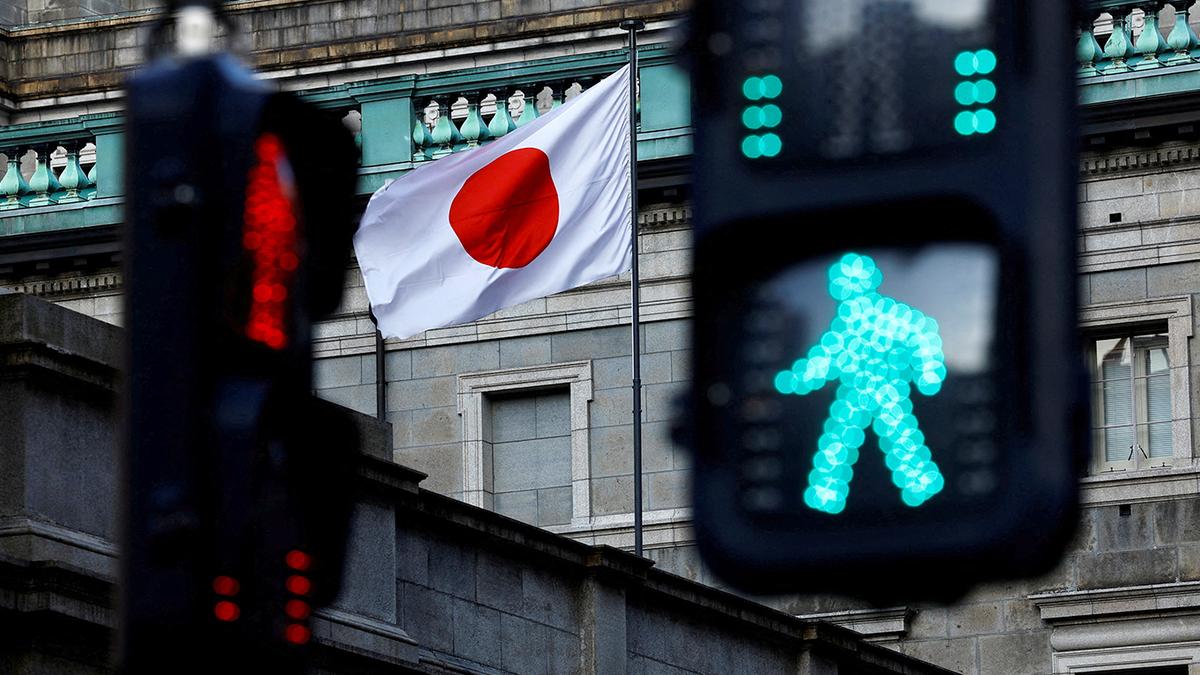
- 04 Sep 2025
In News:
Japan is set to make a significant leap in the digital finance space with the launch of a blockchain-based digital yen (DCJPY) by fiscal 2026. Announced by the Japan Post Bank—a major financial institution with significant government shareholding—this initiative marks one of the largest government-linked ventures into deposit-based digital currencies worldwide.
About DCJPY
- Nature: A blockchain-based deposit currency.
- Backing: Fully backed 1:1 by fiat yen, eliminating volatility risks common to cryptocurrencies.
- Issuer: Japan Post Bank, in collaboration with DeCurret DCP (subsidiary of Internet Initiative Japan).
- Regulation: Issued through the formal banking system, giving it more security, oversight, and credibility compared to private stablecoins.
How It Works
- Customers convert yen deposits into DCJPY tokens.
- These tokens can be used for:
- Real-time digital transactions.
- Settlement of digital securities.
- Asset tokenization and blockchain-based asset transfers.
- Entirely recorded on a blockchain ledger, ensuring traceability, transparency, and instant settlement.
Key Features
- Full Fiat Backing: Maintains stability with zero volatility.
- Blockchain-based: Offers decentralisation, improved security, and transparency.
- Instant Settlement: Removes delays of traditional bank transfers.
- Wider Usability: Designed for ordinary depositors, unlike experimental central bank digital currencies (CBDCs).
- Tokenized Deposit Currency: Positioned distinct from private stablecoins, bridging regulated banking with blockchain innovation.
Strategic Significance
- For Japan’s Financial System
- Strengthens the use of blockchain in mainstream finance.
- Supports digital securities, asset tokenization, and fintech integration.
- Enhances efficiency in payments, settlements, and cross-border transfers.
- Global Context
- Adds momentum to the digital currency race, where China has already advanced with its e-CNY (digital yuan) pilot.
- Offers a regulated alternative to volatile cryptocurrencies, addressing concerns of money laundering, volatility, and lack of oversight.
- Reflects a growing global trend of exploring CBDCs and deposit tokens to safeguard monetary sovereignty against private crypto dominance.
YudhAbhyasExercise
- 04 Sep 2025
In News:
Despite rising bilateral tariff tensions, India and the United States have commenced their largest-ever edition of the YudhAbhyas Army exercise at Fort Wainwright, Alaska. The two-week-long exercise underscores the strategic depth of the India–US defence partnership, even amid political and trade frictions.
About YudhAbhyas Exercise
- Nature: Annual bilateral military exercise between the Indian Army and the US Army.
- Initiation: Started in 2004 under the India–US Defence Cooperation Framework.
- Hosting: Conducted alternately in India and the US.
- Focus: Joint training in counter-terrorism, peacekeeping, mountain and high-altitude warfare.
2025 Edition Highlights
- Location: Fort Wainwright, Alaska — subarctic conditions comparable to Himalayan terrain.
- Indian Participation: Over 450 soldiers from the Madras Regiment.
- US Participation: Troops from the 5th Infantry Regiment “Bobcats”, Arctic Wolves Brigade Combat Team, 11th Airborne Division.
Training Features
- Joint heliborne operations.
- Surveillance and UAV deployment.
- Rock-craft and mountain warfare.
- Casualty evacuation and combat medical aid.
- Integrated use of artillery, aviation, and electronic warfare.
Strategic Significance
- Operational Readiness
- Enhances interoperability and coordination in extreme cold climates, vital for Himalayan and Arctic theatres.
- Strengthens joint capabilities in counter-terrorism, peace support, and disaster relief operations.
- Defence Cooperation Beyond Exercises
- The US has secured Indian defence deals worth over $25 billion since 2007.
- Recent major acquisitions:
- 99 GE-F404 turbofan engines (for Tejas Mk-1A fighters) worth $716 million.
- Proposed deal for 113 more engines worth $1 billion.
- 31 MQ-9B Predator drones worth $3.8 billion, deliveries expected in 2029–30.
- Geopolitical Context
- Exercises continue despite 50% tariffs imposed by the US on India under President Trump, straining economic ties.
- Defence cooperation remains resilient, reflecting two decades of strategic partnership.
- India balances ties with Russia and cautiously re-engages with China, maintaining its strategic autonomy.
- Quad Linkages
- Parallel planning is underway for the Malabar Naval Exercise among Quad nations (India, US, Japan, Australia) off Guam in November 2025, further deepening maritime security collaboration in the Indo-Pacific.
World Liberty Financial tokens ($WLFI)
- 04 Sep 2025
In News:
The launch and trading of the World Liberty Financial tokens ($WLFI), linked to the Trump family’s cryptocurrency venture, mark a significant development at the intersection of politics, finance, and technology. The tokens recently began trading on major global crypto exchanges such as Binance, OKX, and Bybit, drawing global attention due to their political association and implications for the future of decentralized finance (DeFi).
About $WLFI
- Platform: Issued under the World Liberty Financial (WLF)DeFi venture.
- Launch: Initiated in 2024 by the Trump family and business partners. Reports suggest that Donald Trump has earned over $500 million from the project.
- Structure:
- Tokens: $WLFI cryptocurrency.
- Stablecoin: Parallel issuance for transactional stability.
- Governance: Early investors received non-tradable tokens with voting rights on governance matters (e.g., code and business decisions).
Trading Features
- Exchanges: Listed on Binance, Bybit, OKX, KuCoin, MEXC, Gate.io, among others.
- Trading Mechanisms:
- Spot Trading – direct ownership and withdrawal (low entry barrier for beginners).
- Perpetual Futures – leverage-based trading, with higher risks and volatility.
- Circulation: Limited supply at launch; allocations for future release governed by investor votes.
- Investor Exit: Early investors allowed to sell up to 20% of their holdings.
- Launch Price: Approx. $0.31 per token (CoinGecko data).
Governance and Investor Role
- Investors play a governance role by voting on changes to the platform, including trading rules and code modifications.
- A July 2025 investor vote enabled tokens to become tradable, boosting both liquidity and potential value appreciation.
Significance and Implications
- Political-Crypto Nexus: The association of a former U.S. President with a cryptocurrency raises concerns of conflict of interest, especially in shaping U.S. regulatory frameworks for digital assets.
- Financial Innovation: Combines governance tokens with tradable assets, blurring lines between speculative crypto trading and participatory corporate governance.
- Investor Hype vs Utility: While the Trump brand adds political and market visibility, critics argue much of the token’s value stems from speculation and celebrity endorsement rather than technological or financial innovation.
- Crypto Market Dynamics: Listings on major exchanges enhance liquidity and visibility, while also fueling volatility and generating revenue through transaction fees.
Swarnamukhi River
- 04 Sep 2025
In News:
The Tirupati Urban Development Authority (TUDA) has launched Operation SWARNA, a comprehensive initiative aimed at rescuing, reviving, and rejuvenating the River Swarnamukhi in Andhra Pradesh. The project seeks to restore the river’s ecological flow, protect it from encroachments, and ensure its long-term sustainability. Modeled on Hyderabad’s HYDRAA (Hyderabad Drainage and River Authority for Action and Awareness) framework, the proposed task force will be headed by the TUDA Vice-Chairman and vested with enforcement powers.
About River Swarnamukhi
- Location: Andhra Pradesh; an east-flowing river with a catchment area of 3,225 sq. km.
- Origin: Rises at ~300 m elevation in the Eastern Ghats near Pakala village, Chittoor district.
- Course: Flows 130 km northeast, passing through Tirupati hills, and joins the Bay of Bengal.
- Religious Significance: Passes through Tirumala and Srikalahasti, home to temples like the Srikalahasteeswara Temple.
- Hydrology:
- Independent river system, not connected to major rivers.
- Rain-fed; highly dependent on rainfall in upper catchments.
- Rainfall varies from 1270 mm (eastern side) to 762 mm (western side) of the basin.
- Tributary: Kalyani River, across which the Kalyani Dam (1977) regulates flow.
Challenges
- Encroachment and land grabbing along the riverbanks.
- Seasonal and irregular flows due to rainfall dependency.
- Decline in water quality and ecological health from urban pressures.
- Cultural risk: Threat to temple towns and their heritage that depend on the river.
Significance of Operation SWARNA
- Ecological revival: Ensures sustainable river flow and biodiversity restoration.
- Water security: Rejuvenation can enhance groundwater recharge and local water availability.
- Cultural preservation: Protects sacred towns of Tirumala–Srikalahasti corridor.
- Model initiative: Replicates the HYDRAA framework of Hyderabad, strengthening river governance.
Air Quality Life Index
- 04 Sep 2025
In News:
Air pollution has emerged as India’s gravest public health challenge, surpassing traditional concerns like malnutrition, unsafe water, and tobacco use. The Air Quality Life Index (AQLI) 2025 Report, prepared by the Energy Policy Institute at the University of Chicago (EPIC), highlights how toxic air substantially reduces life expectancy across the country, with disproportionate impacts in the northern belt.
About Air Quality Life Index (AQLI)
- Developed by Michael Greenstone and EPIC, University of Chicago.
- Quantifies the impact of long-term exposure to PM2.5 on life expectancy.
- Combines research evidence with global particulate pollution data to estimate the loss in healthy years of life.
Key Findings of AQLI 2025 Report
National Impact
- Average life expectancy loss in India: 3.5 years.
- All 1.4 billion Indians live in areas exceeding the WHO’s safe limit of 5 µg/m³ for PM2.5.
- Comparative impact:
- Malnutrition: 1.6 years lost
- Tobacco use: 1.5 years lost
- Unsafe water & sanitation: 8.4 months lost
Regional Disparities
- Northern India is the world’s most polluted region, with 544.4 million people (38.9% of population) exposed to severe pollution.
- Delhi-NCR: Worst affected, with residents losing 8.2 years of life expectancy (WHO standards).
- By India’s weaker PM2.5 norm (40 µg/m³): 4.74 years lost.
- Other states:
- Bihar: 5.6 years lost
- Haryana: 5.3 years lost
- Uttar Pradesh: 5 years lost
South Asian Context
- South Asia remains the most polluted region globally.
- PM2.5 levels rose by 2.8% in 2023 after a brief decline in 2022.
- Regional impact:
- 3 years cut from average life expectancy.
- Over 8 years lost in most affected zones.
Standards and Gains from Pollution Reduction
- 46% of Indians live in areas exceeding even India’s own PM2.5 limit of 40 µg/m³.
- Meeting national standards could add 1.5 years to life expectancy.
- Meeting WHO standards could add up to 9.4 months even in relatively cleaner regions.
India’s First Multi-Lane Free Flow (MLFF) Tolling System
- 03 Sep 2025
In News:
In August 2025, the Indian Highways Management Company Limited (IHMCL), promoted by the National Highways Authority of India (NHAI), signed an agreement with ICICI Bank to implement India’s first Multi-Lane Free Flow (MLFF) tolling system. The pilot will be rolled out at Choryasi Fee Plaza on NH-48 in Gujarat, making it the country’s first barrier-free toll plaza, with further expansion planned across multiple locations.
What is MLFF?
- Definition: A barrier-less electronic tolling system.
- Technology Used:
- FASTag-based RFID readers.
- Automatic Number Plate Recognition (ANPR) cameras for vehicle registration verification.
- Function: Enables seamless toll deduction without vehicles halting at toll plazas.
Significance of MLFF
- Seamless travel – Eliminates queues and stoppages at toll booths.
- Reduced congestion & time-saving – Improves traffic flow on busy highways.
- Fuel efficiency & lower emissions – Supports environmental sustainability.
- Improved toll revenue collection – Reduces leakages and ensures transparency.
- Technology-driven infrastructure – Supports creation of a smart, efficient, and user-friendly National Highway network.
About NHAI
- Statutory Body: Established under the National Highways Authority of India Act, 1988; operational since 1995.
- Mandate: Development, maintenance, and management of India’s National Highways.
- Administrative control: Ministry of Road Transport and Highways (MoRTH).
- Composition:
- 1 Full-time Chairman.
- Up to 5 Full-time Members.
- 4 Part-time Members (Secretaries of Road Transport & Highways, Expenditure, Planning, and DG of Road Development).
CEREBO – Indigenous Brain Injury Diagnostic Tool
- 03 Sep 2025
In News:
Traumatic Brain Injury (TBI) is a major public health challenge in India, causing high mortality, morbidity, and long-term disability. Traditional diagnostic tools like CT and MRI scans are costly, infrastructure-intensive, and often unavailable in rural or emergency settings.
To bridge this gap, the Indian Council of Medical Research (ICMR), in collaboration with AIIMS Bhopal, NIMHANS Bengaluru, the Medical Device & Diagnostics Mission Secretariat (MDMS), and Bioscan Research, has developed CEREBO, a portable and indigenous diagnostic device.
What is CEREBO?
- Nature: A hand-held, portable, non-invasive device.
- Technology: Uses near-infrared spectroscopy integrated with machine learning.
- Function: Detects intracranial bleeding and brain edema within one minute.
- Accessibility: Designed for use by paramedics and unskilled personnel in ambulances, trauma centres, rural clinics, and disaster zones.
- Safety: Radiation-free, safe for infants and pregnant women.
- Output: Provides colour-coded, easy-to-interpret results.
Validation & Adoption
- Underwent multi-centre clinical trials at leading trauma and neurosurgical centres.
- Evaluated for diagnostic accuracy, time-to-decision benefits, and feasibility in emergency care pathways.
- Supported by ICMR-MDMS post-market surveillance confirming effectiveness in patient triage.
- Recommended for adoption in tertiary care hospitals, emergency services, and military healthcare.
Importance of CEREBO
- Addresses diagnostic gaps in rural and underserved areas.
- Enables early detection and triage, reducing fatalities and long-term complications.
- Provides a low-cost, rapid, and radiation-free alternative to CT/MRI scans.
- Potential for global adoption in emergency medicine, military operations, and disaster response.
Traumatic Brain Injury (TBI) – A Public Health Concern
- Definition: Disruption of normal brain function due to sudden trauma to the head.
- Causes in India:
- Road traffic accidents: ~60%
- Falls: 20–25%
- Violence: ~10%
- Incidence: ~1.5–2 million injuries annually; ~1 million deaths in India.
- Challenges: Mild TBIs often go undiagnosed initially, but may worsen over time.
- Consequences:
- Immediate: Loss of consciousness, seizures, dizziness, confusion.
- Complications: Intracranial bleeding, brain swelling, coma.
- Long-term: Memory loss, cognitive decline, depression, behavioural changes, and risk of neurodegenerative diseases.
UDISE+ 2024-25 Report
- 03 Sep 2025
In News:
- The Ministry of Education released the Unified District Information System for Education Plus (UDISE+) 2024–25 report, providing a comprehensive picture of India’s school education system.
- Covering Grades I–XII across government, aided, and private schools, UDISE+ maps enrolment, teacher availability, infrastructure, digital access, retention, and learning environment.
- The findings reflect both significant progress and persistent gaps in achieving the goals of the National Education Policy (NEP) 2020.
Teacher Availability and Pupil–Teacher Ratio (PTR)
- For the first time, the number of teachers crossed 1 crore (1.01 crore) in 2024–25, a 6.7% rise since 2022–23.
- PTRs improved: Foundational (10), Preparatory (13), Middle (17), and Secondary (21)—all within NEP’s benchmark (30:1).
- However, disparities remain: states like Jharkhand (47:1) and Maharashtra/Odisha (37:1) face severe shortages, especially in higher classes.
- Female teachers now constitute 54.2%, reflecting growing gender balance.
Enrolment, Dropouts, and Retention
- Dropout rates declined significantly: Preparatory (2.3%), Middle (3.5%), Secondary (8.2%).
- Retention rates improved: Foundational (98.9%), Preparatory (92.4%), Middle (82.8%), Secondary (47.2%).
- Transition rates rose across stages, with 92.2% students moving to middle level and 86.6% to secondary level.
- Gross Enrolment Ratio (GER): Middle (90.3%), Secondary (68.5%)—indicating improved access but a need for further inclusion at higher levels.
Infrastructure and Digital Divide
- Basic facilities: Electricity (93.6%), Girls’ toilets (97.3%), Boys’ toilets (96.2%), Drinking water (99.3%), Handwashing (95.9%).
- Digital readiness: Computer access in schools rose to 64.7%, internet access to 63.5%. Yet regional disparities remain:
- South Indian states (Kerala, Tamil Nadu) report near-universal coverage.
- Eastern & Northeastern states lag behind—West Bengal (18.6% internet), Meghalaya (26.4%).
- Despite progress, >25,000 schools lack electricity, and 5.1% schools run with fewer than 10 students.
- Single-teacher schools reduced by 6%, and zero-enrolment schools fell by 38%, but remain concentrated in Ladakh (32%), Arunachal Pradesh and Uttarakhand (22%).
Health and Inclusive Education
- Medical check-ups are available in only 75.5% schools, with serious gaps in Bihar (32.7%) and Nagaland (44.9%).
- Inclusive facilities: 54.9% of schools now have ramps and handrails for children with disabilities.
- Girls’ enrolment increased marginally to 48.3%, indicating gradual progress towards gender equity.
Teacher Training and Capacity Building
- 91% teachers are formally trained, but inter-state variation persists.
- Kerala and Tamil Nadu lead with near-total coverage.
- Meghalaya lags with only 72% at primary and 80% at upper-primary levels.
Significance and Challenges
- The report highlights improved teacher strength, better PTR, reduced dropouts, and rising digital access, aligning with NEP’s vision of universal foundational literacy and equitable access.
- Persistent regional disparities, lack of electricity in thousands of schools, inadequate digital penetration in the Northeast, and weak health infrastructure remain major challenges.
VrindavaniVastra
- 03 Sep 2025
In News:
The VrindavaniVastra, a 16th-century sacred silk textile of Assam, is set to return temporarily from the British Museum, London, for exhibition in 2027. The decision marks a significant milestone in India’s efforts to reclaim its cultural heritage and present it to the public in its place of origin.
Historical Background
- The VrindavaniVastra was woven in Assam under the guidance of SrimantaSankardeva, the great Vaishnav saint-reformer, at the request of Koch King Nara Narayan.
- It depicts scenes from Lord Krishna’s childhood and divine pastimes in Vrindavan, woven intricately with silk threads.
- Historically, Nara Narayan had sheltered Sankardeva after he faced persecution by the Ahom kingdom under pressure from Brahmin priests, reflecting the socio-political tensions of the time.
Artistic and Cultural Significance
- The textile is regarded as a masterpiece of Assamese Vaishnav art, blending weaving traditions with spiritual themes.
- Originally consisting of 15 separate silk panels, the current exhibit measures around 9.5 metres in length, assembled from multiple fragments.
- It represents not only religious devotion but also the syncretic weaving traditions of Assam, incorporating motifs influenced by diverse artistic cultures.
- As a central artefact of Assamese Vaishnavism, it reinforces Sankardeva’s legacy of devotional bhakti traditions.
Journey to the West
- Fragments of the Vastra were believed to have travelled from Assam to Tibet in the 17th–18th centuries, before being collected by British explorers during the 19th–20th centuries.
- In 1904, the India Museum acquired the textile and later transferred it to the British Museum. Since then, it has been part of their South Asian collection, alongside similar pieces in other European museums.
Mela Patt Festival

- 03 Sep 2025
In News:
The Mela Patt Festival, celebrated annually in Bhaderwah (Doda district, Jammu & Kashmir), is one of the most prominent cultural and religious events of the region. Rooted in Nag culture, the festival honors Lord Vasuki Nag, the presiding deity of Bhaderwah Valley, and reflects the valley’s rich legacy of syncretic traditions and communal harmony.
Historical Background
- The origins of the festival date back to the 16th century, when it was first celebrated by King Nag Pal during the era when Bhaderwah was known as Bhadarkashi.
- The festival commemorates the historic meeting between Mughal Emperor Akbar and King Nag Pal of Bhaderwah, highlighting its integration into broader Indian history.
- Over the centuries, the event has remained a symbol of unity, with no reported communal discord in its nearly 600-year-long history.
Rituals and Celebrations
- Timing: The festival is observed on Nag Panchami, seven days after the conclusion of the sacred Kailash Yatra.
- Cultural Expressions:
- The unique ‘Dikko Dance’ features participation from men and women across communities, symbolizing peace and pride.
- The ‘Dhakku Dance’, a traditional Dogra folk performance, is also showcased, underscoring its importance in the cultural mosaic of India.
- Inclusivity: Devotees and visitors from across Jammu & Kashmir, irrespective of caste or religion, gather to pay homage to Raja Nag Pal’s bravery and spiritual power.
Ethanol Blending in India

- 02 Sep 2025
In News:
India has been steadily advancing towards ethanol blending in petrol to reduce dependence on fossil fuels, cut carbon emissions, and boost the agricultural economy. Recently, debates have intensified after the nationwide rollout of E20 fuel (20% ethanol + 80% petrol) in July 2025—five years ahead of its initial 2030 target. Concerns were raised about its impact on older vehicles and consumer safety.
What is Ethanol Blending?
- Ethanol (C?H?OH): A renewable, biodegradable, and clean-burning fuel derived from biomass such as sugarcane molasses, rice, maize, barley, and wheat.
- Ethanol Blending: Mixing ethanol with petrol to increase oxygen content, leading to cleaner combustion, reduced greenhouse gas emissions, and lower crude oil imports.
- India’s Ethanol Blended Petrol (EBP) Programme began in 2003.
- Progress:
- 10% blending target achieved in 2021-22
- 12.06% in 2022-23
- 14.06% in 2023-24
- 20% blending achieved in July 2025, ahead of the 2030 deadline.
E20 Fuel and Automobile Industry Response
- E20 fuel is now being offered at petrol pumps, replacing earlier E5/E10 options.
- The Society of Indian Automobile Manufacturers (SIAM) confirmed that warranties will remain valid for older cars even if they were not originally designed for E20.
- Automakers are issuing dealer advisories on E20 usage in pre-2023 vehicles, when flex-fuel-compatible models began rolling out.
- The government has also announced guidelines for 27% ethanol blending, further deepening the transition.
Concerns and Challenges
- Fuel Efficiency & Engine Issues: Some vehicle owners have reported lower mileage and performance issues with E20.
- Warranty and Consumer Trust: Initial confusion over automaker responsibility raised fears of invalidated warranties.
- Agricultural Dependence: Heavy reliance on sugarcane and food crops raises concerns about the food vs. fuel debate and water stress.
- Supply Chain & Technology: Ethanol storage, transport, and blending infrastructure must scale up nationwide.
- Legal Challenge: A public interest litigation (PIL) on the impact of E20 is pending before the Supreme Court.
Benefits of Ethanol Blending
- Environmental: Cuts CO? emissions, improves urban air quality, and reduces vehicular pollution.
- Economic: Reduces crude oil imports (India imports ~85% of crude requirements), saving forex reserves.
- Agricultural: Provides a stable market for farmers through ethanol demand from crops like sugarcane, maize, and rice.
- Strategic: Contributes to India’s energy security and climate commitments under Paris Agreement & Net Zero 2070 goals.
Government Push and Future Roadmap
- Union Minister Nitin Gadkari has reiterated that higher ethanol blending is central to India’s green mobility transition.
- India is also exploring flex-fuel vehicles and second-generation (2G) ethanol derived from agricultural residues to address food security concerns.
- Targets:
- 27% blending roadmap under preparation.
- Expansion of ethanol production capacity through distilleries and 2G ethanol plants.
- Incentives for biofuel research, hybrid engines, and flex-fuel adoption.
Samudrayaan Project
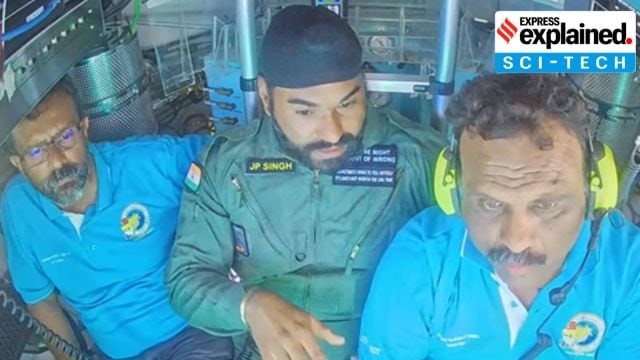
- 02 Sep 2025
In News:
India is set to join a select group of nations—US, Russia, China, Japan, and France—with the capability for manned deep-sea exploration through its ambitious Samudrayaan Project.
As part of preparations, two Indian aquanauts recently dived into the Atlantic Ocean aboard France’s submersible Nautile, gaining critical experiential insights.
The mission is a core component of the Deep Ocean Mission (2021–26), which supports India’s Blue Economy vision and aligns with the UN Decade of Ocean Science for Sustainable Development (2021–30).
Samudrayaan Project
- Objective: To send three humans in a manned submersible to a depth of 6,000 metres by 2027.
- Coordinating agency:National Institute of Ocean Technology (NIOT) under the Ministry of Earth Sciences (MoES), with technical support from ISRO’s Vikram Sarabhai Space Centre (VSSC).
- Budget: Part of the ?4,077 crore Deep Ocean Mission, approved by the Union Cabinet in 2021.
Key Aims
- Develop deep-sea mining technologies, robotics, and underwater vehicles.
- Conduct surveys for mineral deposits, particularly polymetallic nodules (rich in nickel, cobalt, manganese, rare earths).
- Explore deep-sea biodiversity and promote bio-prospecting.
- Establish an ocean climate change advisory service.
- Develop technologies for energy and freshwater from oceans.
- Build an advanced marine station for ocean biology and engineering.
Matsya-6000: The Crewed Submersible
- India’s first self-propelled manned submersible, designed like a fish.
- Built with a titanium alloy sphere (2.1 m diameter, 80 mm thickness) to withstand 600 times atmospheric pressure at 6,000 m depth and temperatures as low as -3°C.
- Capacity: 3 aquanauts for 12-hour missions, extendable to 96 hours in emergencies.
- Equipped with:
- Life-support systems (oxygen supply, CO? scrubbers, re-breather systems).
- Acoustic communication systems (since radio waves cannot penetrate deep water).
- Drop-weight escape mechanism for emergency ascent.
- Li-Po batteries and bio-vests for crew health monitoring.
Challenges in Deep-Sea Exploration
- Extreme Pressure: Precise fabrication (via electron beam welding) is required, as even a 0.2 mm deviation in sphere thickness can lead to collapse.
- Material Constraints: Titanium alloy of required grade is rare, and countries are reluctant to share reserves.
- Life Support: Ensuring safe oxygen levels, CO? absorption, and emergency backup systems.
- Communication: Acoustic telephones must overcome issues of temperature, salinity, and water depth.
- Human Endurance: Aquanauts face restricted mobility, limited nutrition, and confined conditions during 9–12 hour dives.
Deep Ocean Mission (DOM)
- Launched in 2021 for 5 years.
- Components:
- Deep Sea Mining & Manned Submersible: Samudrayaan and mineral exploration.
- Ocean Climate Change Advisory Services: Seasonal to decadal forecasting.
- Deep-Sea Biodiversity Studies: Exploration of flora, fauna, microbes.
- Deep Ocean Surveys: Mapping multi-metal sulphide and PMN sites.
- Energy & Freshwater: Research into Ocean Thermal Energy Conversion (OTEC) and desalination.
- Advanced Marine Station: Capacity building, R&D, and technology incubation.
Recent Progress
- Ocean Mineral Explorer (OMe 6000): Autonomous underwater vehicle deployed in 2022, surveying 14 sq. km in the Central Indian Ocean Basin at depths of 5,271 m, assessing PMN deposits and biodiversity.
- Research vessel SagarNidhi used for exploration and surveys.
Strategic and Economic Significance
- Blue Economy Growth: Supports industries like shipping, fishing, tourism, and biotechnology.
- Resource Security: Access to polymetallic nodules critical for electronics, renewable energy, and defense sectors.
- Geostrategic Edge: Enhances India’s role in the International Seabed Authority (ISA) regime.
- Scientific Advancement: Builds indigenous expertise in ocean engineering and extreme-environment technologies.
- Climate Preparedness: Generates critical data on ocean-climate interactions.
International Centre for Integrated Mountain Development
- 02 Sep 2025
In News:
The Hindu Kush Himalaya (HKH), spanning about 3,500 km across eight countries—Afghanistan, Bangladesh, Bhutan, China, India, Myanmar, Nepal, and Pakistan—is a global ecological and hydrological powerhouse.
Often termed the “Third Pole”, it holds the largest area of permanent ice cover outside the Arctic and Antarctic, feeding 10 major Asian river systems including the Indus, Ganga, and Brahmaputra. Despite its significance, a new report by the International Centre for Integrated Mountain Development (ICIMOD) warns that the region is tapping only 6.1% of its vast renewable energy potential, exposing vulnerabilities in the face of climate change.
About ICIMOD
- Established in 1983, headquartered in Kathmandu, Nepal.
- Intergovernmental body representing eight member countries of the HKH.
- Mission: Build and share knowledge to drive regional policy, investments, and climate-resilient development.
- Functions:
- Knowledge generation and sharing.
- Bridging science, policy, and practice.
- Providing a regional platform for sustainable mountain development.
Renewable Energy Potential in HKH
- Total hydropower potential: 882 GW.
- Of this, 635 GW lies in the trans-boundary rivers of HKH.
- Only 49% of hydropower potential is currently harnessed.
- Non-hydro potential: Nearly 3 Terawatts (solar & wind).
- Combined renewable energy potential in the region: >3.5 Terawatts.
- Current share in Total Primary Energy Supply (TPES): just 6.1%.
Country-wise Renewable Scenario
- Bhutan & Nepal: Generate 100% of electricity from renewables.
- India: Renewables contribute 23% of electricity generation.
- Others: Reliance on fossil fuels remains very high (Bangladesh 98%, Pakistan 76%, China 67%, Myanmar 51%).
- Traditional biomass use: Alarmingly high in rural areas—two-thirds of Nepal’s TPES, half of Myanmar’s, one-fourth of Bhutan’s and Pakistan’s—leading to severe air quality and health issues.
Climate Change & Energy Risks
The report highlights that climate variability is destabilising energy systems:
- Increased water variability and changing hydrological regimes reduce hydropower reliability.
- Glacial Lake Outburst Floods (GLOFs) and extreme weather events threaten nearly two-thirds of existing and planned hydropower projects.
- Infrastructure damage due to landslides, floods, and mega-floods is rising.
Policy Recommendations
- Integrate disaster risk reduction into hydropower and renewable energy projects.
- Explore “dams equivalents” like:
- Climate-resilient irrigation systems.
- On-farm water-efficient practices.
- Urban water storage solutions.
- Scaling up solar and wind power.
- Promote regional cooperation through platforms like SAARC Energy Centre and BIMSTEC Energy Ministers’ Conference.
- Attract international finance and private investment to overcome capital constraints.
- Encourage south-south collaboration, technology exchange, and joint research.
Significance for India
- India, a major HKH country, has both high renewable potential and high fossil fuel dependence.
- Regional clean energy cooperation can:
- Enhance energy security.
- Reduce import dependence.
- Create green jobs.
- Help achieve India’s Nationally Determined Contributions (NDCs) under the Paris Agreement.
MY Bharat Aapda Mitras
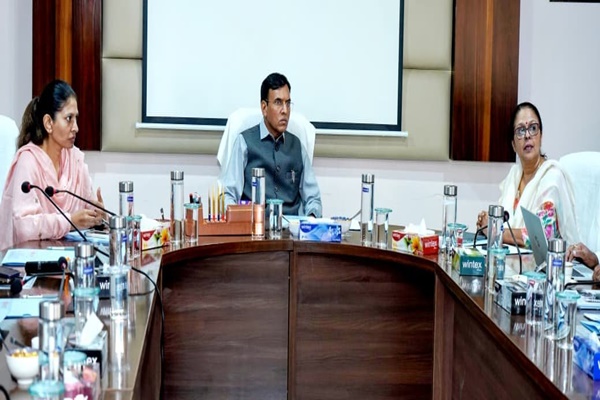
- 02 Sep 2025
In News:
- In the wake of devastating floods in Punjab and Himachal Pradesh, the Union Minister of Sports and Youth Affairs, Dr. Mansukh Mandaviya, announced the deployment of over a thousand trained MY Bharat Aapda Mitras to aid ongoing rescue and relief efforts.
- The initiative underscores the government’s emphasis on community-based disaster response, leveraging trained youth volunteers to strengthen resilience at the grassroots level.
MY Bharat: An Overview
- MY Bharat is an autonomous body established by the Department of Youth Affairs, Ministry of Youth Affairs and Sports.
- It operates as a phygital (physical + digital) platform, connecting and mobilising India’s youth (aged 15–29 years) through volunteering, mentorship, experiential learning, and industry networks.
- The platform seeks to provide equitable access to opportunities, enabling youth to contribute to Viksit Bharat (Developed India).
Aapda Mitra Programme under MY Bharat
- The Aapda Mitra programme, implemented by the National Disaster Management Authority (NDMA), provides structured, NDMA-certified disaster response training to youth volunteers.
- Training modules cover:
- Search and rescue operations
- First aid and medical response
- Crowd management
- Emergency coordination
- These volunteers act as first responders, ensuring the timely supply of food, medicines, and relief material to communities cut off by floods, landslides, or cloudbursts.
Current Mobilisation for Punjab and Himachal Pradesh
- Thousands of Aapda Mitras are being deployed across the flood-hit districts of Punjab and Himachal Pradesh.
- Volunteers will work in coordination with District Magistrates, district administrations, and local authorities to ensure swift rescue and relief.
- Their role will be crucial in reaching remote villages, where connectivity has been disrupted due to floods and landslides.
Significance
- Strengthens community-led disaster resilience.
- Bridges the gap between formal institutions (NDMA, administration) and citizen response efforts.
- Provides a youth-centric model of disaster preparedness, integrating skill development with national service.
- Demonstrates the whole-of-society approach to disaster management by combining government resources, institutional training, and grassroots volunteerism.
Mission Mausam
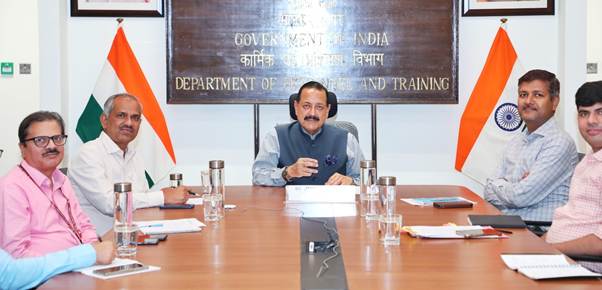
- 02 Sep 2025
In News:
The increasing frequency of extreme weather events—cloudbursts, flash floods, and landslides—has underlined the urgent need for robust forecasting and disaster management mechanisms in India’s Himalayan region.
In this context, the Indian Meteorological Department (IMD), under the Ministry of Earth Sciences (MoES), is set to install four additional radars in Jammu & Kashmir (J&K) as part of Mission Mausam (2024). This development coincides with intensified relief and rehabilitation efforts following unprecedented rainfall and floods in August–September 2025.
Mission Mausam: An Overview
- Launched: 2024 by the Ministry of Earth Sciences.
- Implementing Agencies: IMD, National Centre for Medium-Range Weather Forecasting (NCMRWF), and Indian Institute of Tropical Meteorology (IITM).
- Objectives:
- Enhance India’s forecasting capability across short, medium, extended, and seasonal scales.
- Develop high-resolution models for improved accuracy in monsoon prediction.
- Strengthen observational networks with radars, satellites, automated weather stations.
- Provide sector-specific advisories for agriculture, water resources, health, energy, and disaster management.
- Build capacity through national and international collaborations.
Significance: It represents a transformative milestone in India’s climate resilience strategy, supporting sustainable development, while safeguarding lives, livelihoods, and infrastructure.
Relief and Rehabilitation Measures in J&K (2025)
Following the cloudbursts and floods, the Centre and UT administration launched coordinated relief measures:
- Immediate Relief: Supply of rations, medicines, water filters, and medical kits. Additional consignments dispatched from MP funds to supplement government aid.
- Community Role: Civil society and local bikers acted as first responders, showcasing a whole-of-society approach.
Broader Relevance for Disaster Management
- Policy Linkages: Aligned with the Disaster Management Act, 2005 and the Sendai Framework (2015–2030), emphasizing early warning systems and community resilience.
- Socio-Economic Impact: Strengthening forecasting reduces agricultural losses, protects infrastructure, and prevents human casualties.
- Strategic Significance: Enhances preparedness in the fragile Himalayan ecosystem, prone to climate-induced disasters.
India Develops Rare Reference Material for Enhanced Anti-Doping Testing

- 01 Sep 2025
In News:
- In a landmark achievement, India has successfully developed a rare and high-purity Reference Material (RM) – Methandienone Long-Term Metabolite (LTM) for advanced anti-doping testing in sports.
- This development was led by the National Institute of Pharmaceutical Education and Research (NIPER), Guwahati in collaboration with the National Dope Testing Laboratory (NDTL), New Delhi, under the Department of Pharmaceuticals.
What are Reference Materials (RMs)?
- Highly purified, scientifically characterized forms of drug substances or their metabolites.
- Essential for accurate analytical testing and doping control.
- Crucial for detecting over 450 prohibited substances listed by the World Anti-Doping Agency (WADA).
- Globally scarce – only 4–5 manufacturers worldwide produce such materials, making them expensive and difficult to access.
Methandienone Long-Term Metabolite (LTM)
- A specialized RM developed for tracing misuse of anabolic steroid Methandienone.
- LTMs are metabolites that remain detectable in urine long after substance use – enabling identification of athletes even months or years after doping.
- Enhances detection sensitivity and increases the number of positive tests, thus acting as a deterrent.
- Not commercially available globally, making India’s contribution unique.
Significance for India and the World
- Strengthening Anti-Doping Efforts: Supports WADA’s global mission of transparency, fairness, and integrity in sports.
- Protecting Clean Athletes: Shields honest athletes while discouraging performance-enhancing drug misuse.
- Global Contribution: Methandienone LTM can be shared with 30 WADA-accredited laboratories worldwide, positioning India as a global leader in doping science.
- Self-Reliance in Sports Science: Since 2020, NIPER Guwahati has synthesized 12 out of 22 identified RMs for NDTL, reducing dependency on costly imports.
National Dope Testing Laboratory (NDTL) – Key Facts
- Premier analytical testing and research organization under Government of India.
- Only laboratory in India accredited for human sports dope testing.
- Accredited by:
- National Accreditation Board for Testing & Calibration Laboratories (NABL)
- World Anti-Doping Agency (WADA)
- Plays a central role in ensuring India’s compliance with international anti-doping standards.
Strait of Malacca
- 01 Sep 2025
In News:
India and Singapore have recently elevated their Comprehensive Strategic Partnership (CSP) by signing multiple agreements across defence, space, trade, skills, and sustainability.
A key highlight was Singapore’s support for India’s interest in joint patrolling of the Malacca Strait, one of the world’s most critical maritime chokepoints. This development has both bilateral and regional strategic implications.
The Malacca Strait: Geography and Importance
- Location: Between Sumatra (Indonesia) and Peninsular Malaysia–Thailand, linking the Andaman Sea (Indian Ocean) with the South China Sea (Pacific Ocean).
- Significance:
- One of the busiest shipping lanes globally, handling ~60% of India’s seaborne trade and nearly all its LNG imports.
- A vital energy artery for China, making it a strategic vulnerability (“Malacca Dilemma”).
- Historically named after the Malacca Sultanate (1400–1511).
Malacca Straits Patrols (MSP)
- Launched in 2004 by Indonesia, Malaysia, and Singapore; Thailand joined later.
- Aimed at curbing piracy, terrorism, and trafficking.
- Three coordinated layers:
- Sea Patrols: Regular joint naval patrolling.
- Eyes-in-the-Sky: Combined aerial surveillance.
- Intelligence Exchange Group: Real-time information sharing.
- India’s interest in joining the MSP reflects its commitment to freedom of navigation, regional stability, and maritime security.
India–Singapore Bilateral Cooperation (2025 Roadmap)
During PM Narendra Modi’s meeting with Singapore PM Lawrence Wong (2025), a roadmap was adopted identifying eight priority areas:
- Trade and Economy
- Skills Development – MoU to establish a National Centre of Excellence for Advanced Manufacturing Skilling in Chennai.
- Digitalisation& AI
- Sustainability – MoU for a Green and Digital Shipping Corridor and collaboration on green maritime fuel.
- Connectivity– Deepening maritime links.
- Healthcare & Medicine
- People-to-People and Cultural Exchanges
- Defence and Security – including space collaboration.
Key Agreements
- Space Cooperation: MoU between IN-SPACe (India) and Singapore’s Office for Space Technology and Industry for commercial and research linkages.
- Green Shipping Corridor: To promote sustainable maritime trade.
- Skill Development: Centre of Excellence for advanced manufacturing skilling.
Strategic Implications
- For India:
- Securing energy and trade routes through the Strait.
- Expanding its role in regional security architecture.
- Strengthening defence and space cooperation with ASEAN.
- For Singapore:
- Reinforces its position as a hub for maritime and digital connectivity.
- Gains from India’s manufacturing, space, and green energy initiatives.
- Regional Balance:
- Counters China’s strategic dominance in the South China Sea.
- Enhances multilateral security frameworks in the Indo-Pacific.
Vaquita Porpoise
- 01 Sep 2025
In News:
- The vaquita porpoise (Phocoena sinus), the world’s rarest marine mammal, is on the brink of extinction with only about 10 individuals remaining in the northern Gulf of California (Sea of Cortez), Mexico.
- Despite global attention, weak enforcement of wildlife protection laws in Mexico and the persistence of illegal fishing practices have accelerated the species’ decline.
- A recent report by the North American Environmental Commission under the United States-Mexico-Canada Agreement (USMCA) has held Mexico accountable for failing to safeguard the vaquita.
The Vaquita: An Overview
- Discovery: Identified in 1958.
- Classification: Smallest member of the cetacean family (whales, dolphins, porpoises), diverged from dolphins ~15 million years ago.
- Habitat: Restricted to shallow waters (up to 50 m deep) in the Upper Gulf of California.
- Appearance: Distinct dark eye rings, lip patches, and a large dorsal fin aiding heat release.
- Behavior: Solitary or small-group species, shy, avoids boats.
- Status:
- IUCN Red List: Critically Endangered.
- CITES: Appendix I (strict trade regulation).
Causes of Decline
- Gillnet Bycatch:
- The primary threat is entanglement in illegal gillnets set for totoaba fish, whose swim bladder fetches high prices in East Asia.
- Despite Mexico’s ban on gillnets since 2020, on-ground reports reveal continued use.
- Weak Enforcement:
- Only 10 of the 850 promised satellite trackers fitted on fishing vessels.
- Fishermen bypass restrictions by sending illegal catch to other regions.
- Institutional Failures:
- Lack of adequate vessel inspections, monitoring, and promotion of alternative fishing gear.
- Mexico’s enforcement claims contradicted by eyewitness accounts and NGO reports.
International Pressure and USMCA Mechanisms
- The USMCA Environmental Commission report has urged the United States to hold Mexico accountable.
- Under USMCA, the US can:
- Press for stricter compliance through consultations.
- Escalate disputes to a panel stage.
- Impose import penalties if Mexico fails to enforce the ban in vaquita habitats.
Global AI Governance
- 01 Sep 2025
In News:
Artificial Intelligence (AI) is reshaping economies, governance, and societies at an unprecedented pace. While AI offers transformative opportunities in healthcare, education, mobility, and governance, it also poses challenges of bias, misinformation, data privacy, and ethical use. Recognizing the urgency of global cooperation, the United Nations General Assembly (UNGA) has launched two institutional mechanisms to advance inclusive and responsible AI governance.
UNGA’s Two New Initiatives on AI Governance (2025)
- Independent International Scientific Panel on AI
- Serves as a bridge between research and policymaking.
- Provides independent scientific assessments of emerging AI risks and opportunities.
- Annual reports to be presented at the Global Dialogue sessions in 2026 (Geneva) and 2027 (New York).
- Global Dialogue on AI Governance
- An inclusive UN platform for member states and stakeholders.
- Facilitates deliberation on critical AI issues: ethical use, regulation, global standards, and equitable access.
- Complements the Global Digital Compact, adopted as part of the Pact for the Future (2024).
India’s AI Governance Landscape
- Legal Framework:
- No dedicated AI law. AI is currently governed under:
- IT Act, 2000 – cybercrimes, intermediary liability.
- Digital Personal Data Protection Act, 2023 – data privacy.
- IPR laws – regulation of AI-generated works.
- No dedicated AI law. AI is currently governed under:
- Policy Initiatives:
- NITI Aayog’s National Strategy on AI (2018): Focus on healthcare, agriculture, education, mobility, smart cities.
- Principles for Responsible AI (2021): Emphasize safety, transparency, fairness, accountability, and inclusivity.
- Global Engagement:
- Hosted the GPAI Summit (2023).
- Co-chaired the AI Action Summit with France (2025).
- Set to host the AI Impact Summit (2026).
- Actively shaping norms of ethical AI use in the Global South.
PM SVANidhi 2.0
- 01 Sep 2025
In News:
The Prime Minister Street Vendor’s AtmaNirbhar Nidhi (PM SVANidhi) Scheme, launched on 1st June 2020 amidst the COVID-19 crisis, has emerged as a landmark initiative for supporting urban street vendors by providing collateral-free working capital loans, promoting digital inclusion, and enabling social security access.
In August 2025, the Union Cabinet approved the restructuring and extension of the scheme till 31st March 2030, with an enhanced outlay of ?7,332 crore to benefit 1.15 crore beneficiaries, including 50 lakh new entrants.
Key Features of the Restructured Scheme
- Enhanced Loan Tranches
- 1st tranche: ?15,000 (earlier ?10,000)
- 2nd tranche: ?25,000 (earlier ?20,000)
- 3rd tranche: ?50,000 (unchanged)
- UPI-linked RuPay Credit Card
- Available for vendors who have repaid the second loan.
- Ensures instant credit access for business and personal needs.
- Digital Incentives
- Cashback up to ?1,600 on digital transactions.
- Promotes financial literacy and digital adoption.
- Expanded Coverage
- From statutory towns to census towns, peri-urban areas, in a phased manner.
- Capacity Building & Convergence
- Training in entrepreneurship, financial literacy, and digital skills.
- Food safety & hygiene certification for street food vendors in partnership with FSSAI.
‘SVANidhi se Samriddhi’ Component
- Ensures saturation coverage of welfare schemes for vendors’ families.
- Monthly Lok Kalyan Melas to connect beneficiaries with schemes like PM Suraksha Bima Yojana, PM Jeevan Jyoti Bima Yojana, Ayushman Bharat, and PM Jan Dhan Yojana.
Achievements Till Date (as of July 2025)
- 96 lakh loans disbursed worth ?13,797 crore to 68 lakh vendors.
- 47 lakh digitally active beneficiaries with over 557 crore transactions worth ?6.09 lakh crore.
- ?241 crore cashback earned by vendors.
- 46 lakh beneficiaries profiled across 3,564 ULBs, leading to 1.38 crore scheme sanctions.
- Recognitions:
- PM’s Award for Excellence in Public Administration (2023) for Innovation.
- Silver Award (2022) for Government Process Re-engineering in Digital Transformation.
Grid Connected Rooftop Solar Scheme

- 31 Aug 2025
In News:
The Grid Connected Rooftop Solar Scheme was launched by the Government of India to promote clean energy, reduce dependence on fossil fuels such as coal and petroleum, and control pollution. By harnessing solar power through rooftop installations, the scheme provides households, institutions, and commercial entities with access to low-cost, sustainable electricity, while contributing to India’s climate goals.
Solar Rooftop System
- Definition: Installation of solar photovoltaic (SPV) panels on rooftops of residential, commercial, industrial, and institutional buildings.
- Types:
- With Battery Storage – Stores excess solar energy for later use.
- Grid Connected (SPV System) – Converts DC power from solar panels into AC power, which is used for captive consumption and surplus energy is fed into the grid. During low solar generation, the grid compensates for the shortfall.
Objectives of the Programme
- Achieve 40,000 MW capacity by 2022 (target set under the National Solar Mission).
- Central government allocation: ?11,814 crore.
- Phase II incentives:
- Up to 40% subsidy for systems up to 3 kW.
- 20% subsidy for systems between 3–10 kW.
- Increase the role of Distribution Companies (DISCOMs) in promotion and implementation.
Advantages of Grid-Connected Rooftop Solar
- Economic:
- Reduces consumer electricity bills.
- No additional land requirement as panels are roof-mounted.
- Short gestation period compared to large-scale power projects.
- Technical:
- Minimises transmission and distribution losses.
- Reduces congestion and improves voltage at tail ends of distribution lines.
- Environmental:
- Cuts carbon emissions.
- Strengthens long-term energy and environmental security.
Implementation & Nodal Ministry
- Implemented by the Ministry of New and Renewable Energy (MNRE).
- MNRE promotes research, innovation, and global collaboration in renewable energy sectors (solar, wind, hydropower, and biogas).
- Broader goals include:
- Increasing renewable energy share in India’s energy mix.
- Reducing dependence on oil-based energy.
- Supporting clean cooking, heating, and energy equity across regions.
Sundarbans Tiger Reserve
- 31 Aug 2025
In News:
The Sundarbans Tiger Reserve (STR) in West Bengal has become India’s second-largest tiger reserve after the National Board for Wildlife (NBWL) approved the state government’s proposal to expand its area by 1,044.68 sq km. With this addition, STR now spans 3,629.57 sq km, moving up from the seventh to the second position among the country’s 58 tiger reserves, next only to Andhra Pradesh’s Nagarjunasagar-Srisailam Tiger Reserve (3,727.82 sq km).
Expansion Details
- The newly added area includes three tiger-bearing forest ranges of South 24 Parganas district: Matla, Raidighi, and Ramganga.
- The expansion brings all tiger-bearing mangrove forests under the unified management of STR, ensuring uniform application of National Tiger Conservation Authority (NTCA) guidelines.
- The proposal was first conceived nearly two decades ago, revived in 2022–23, and formally cleared by NBWL in August 2025 after approvals from the State Wildlife Board and NTCA.
Location and Ecological Importance
- STR is located in the coastal districts of West Bengal, at the southernmost tip of the Gangetic delta, bordering the Bay of Bengal.
- It is part of the world’s largest delta, formed by the Ganga and Brahmaputra rivers.
- STR is unique as it is the only mangrove habitat in the world (shared with Bangladesh) that supports a significant tiger population.
- It also holds the status of a National Park and a Biosphere Reserve.
Boundaries
- East: International boundary with Bangladesh (rivers Harinbhanga, Raimangal, Kalindi).
- South: Bay of Bengal.
- West: River Matla (boundary with South 24-Parganas Forest Division).
- North-West: Rivers Bidya and Gomdi.
Biodiversity
- Flora: True mangroves, mangrove associates, halophytic herbs, shrubs, weeds, epiphytes, and parasitic plants.
- Fauna: Bengal tiger, estuarine crocodile, fishing cat, Gangetic and Irrawaddy dolphins, king cobra, water monitor lizard, and numerous bird and fish species.
Conservation and Development Implications
- Estimated tiger population: ~101 (80 within STR, 21 in adjoining forests). The number is expected to increase with better management.
- Expansion is expected to enhance:
- Central funding for tiger conservation.
- Tourism potential and local economic benefits.
- Infrastructure and staff capacity within the reserve.
- Conservationists welcome the move as long overdue, while some forest officials caution about manpower shortages (currently only 40% of sanctioned strength).
Support for Marginalized Individual for Livelihood and Enterprise (SMILE) Scheme

- 31 Aug 2025
In News:
The Government of India has undertaken multiple initiatives for the welfare and empowerment of marginalized groups, including the transgender community. A significant step in this direction is the launch of a 15-day Entrepreneurship Development Programme (EDP) under the Support for Marginalized Individual for Livelihood and Enterprise (SMILE) scheme.
About the Programme
- Inaugurated at Garima Greh, a shelter home for transgender persons in Delhi.
- Organized by the Department of Social Justice & Empowerment (DoSJE) and implemented by the National Institute of Entrepreneurship and Small Business Development (NIESBUD).
- Initially, 25 transgender candidates will be trained, with a target of 18 programmes nationwide on a pilot basis, benefitting around 1800 persons.
- Training includes:
- Business opportunity identification and market survey
- Knowledge of the entrepreneurship ecosystem
- Financial aid support schemes and banking procedures
- Entrepreneurial accounting, taxation, and regulatory compliances
- Exposure visits (e.g., incubation centres of NSIC)
- Trainees will prepare business plans and be linked with banks for financial support. Post-training, 6 months of handholding support will ensure sustainability of enterprises.
Financial Inclusion Measures
On the request of DoSJE, the Reserve Bank of India (RBI) has included the transgender community in the Priority Sector Lending (PSL) category. This ensures easier access to credit and financial services for entrepreneurial ventures.
The SMILE Scheme – Key Features
The SMILE scheme is a Central Sector Scheme implemented by the Ministry of Social Justice & Empowerment. It has two components:
- Comprehensive Rehabilitation for Welfare of Transgender Persons
- Comprehensive Rehabilitation of Persons Engaged in Begging
Provisions under SMILE
- Education: Scholarships for transgender students (Class IX to Post-Graduation).
- Skill Development & Livelihood: Training support under PM-DAKSH.
- Healthcare: Composite medical support through convergence with PM-JAY, including gender-reaffirmation surgeries in selected hospitals.
- Housing: Garima Greh shelters providing food, clothing, skill training, recreational and medical support.
- Protection & Legal Support: Establishment of Transgender Protection Cells in each state for timely investigation and prosecution of offences.
- Information Support: National Portal & Helpline for grievance redressal and information dissemination.
Significance
- Promotes economic empowerment and self-reliance of transgender persons.
- Ensures financial inclusion through PSL categorization.
- Strengthens India’s commitment towards an inclusive “Viksit Bharat” by addressing social and economic vulnerabilities of marginalized groups.
Drake Passage
- 31 Aug 2025
In News:
A powerful earthquake of magnitude 7.5 struck the Drake Passage, the stretch of ocean between South America’s Cape Horn and the South Shetland Islands of Antarctica.
About Drake Passage
- Location: Lies between Cape Horn (South America) and the South Shetland Islands (Antarctica).
- Geography: A deep and wide waterway connecting the southwestern Atlantic and southeastern Pacific Oceans; also the narrowest stretch of the Southern Ocean, spanning nearly 800 km between South America and the West Antarctic Peninsula.
- Climatic Role: Marks a climatic transition zone, separating the cool, humid subpolar conditions of Tierra del Fuego from the frigid polar climate of Antarctica.
- Navigation: Considered among the roughest seas in the world due to the collision of cold southern currents and warmer northern waters, which create strong eddies, compounded by powerful westerly winds around Cape Horn.
- Historical Importance: Before the opening of the Panama Canal, it served as a vital maritime trade route in the 19th and early 20th centuries.
- Naming: The passage is named after Sir Francis Drake, the first Englishman to circumnavigate the globe.
Lipulekh Pass

- 31 Aug 2025
In News:
India has rejected Nepal’s claims over Lipulekh Pass after the resumption of India–China trade through this border point. The issue has once again brought the strategic and political importance of the pass into focus.
Location & Geography
- Situated in the Kumaon region of Uttarakhand, near the trijunction of India, Nepal, and China.
- Altitude: ~5,334 metres (17,500 feet).
- Serves as a gateway to the higher Himalayan ranges and the Tibet Autonomous Region of China.
Historical & Trade Importance
- A traditional trade route connecting India with Tibet for centuries.
- In 1992, Lipulekh became the first Indian border post opened for official trade with China.
- Later followed by Shipki La (Himachal Pradesh, 1994) and Nathu La (Sikkim, 2006).
Religious Significance
- Forms an integral part of the Kailash Mansarovar Yatra, an important Hindu pilgrimage route to Mount Kailash and Lake Mansarovar in Tibet.
Strategic Significance
- Its geopolitical location near the trijunction makes it strategically vital for India’s border security and connectivity with Tibet.
- The dispute with Nepal underscores its sensitive nature in regional geopolitics.
Blue Carbon

- 30 Aug 2025
In News:
Seaweed farming has emerged as a potential Blue Carbon strategy, yet empirical estimates of carbon burial from such farms remain lacking in the literature.
What is Blue Carbon?
- Blue Carbon refers to organic carbon captured and stored by ocean-based vegetated ecosystems such as mangroves, saltmarshes, and seagrass meadows.
- The term “blue” highlights its association with aquatic ecosystems.
- Most blue carbon comes from carbon dioxide dissolved directly into the ocean. Smaller amounts are stored in:
- Underwater sediments and soils
- Coastal vegetation
- Organic molecules (DNA, proteins, etc.)
- Marine organisms (phytoplankton, whales, etc.)
- Despite covering just 2% of the ocean surface, these ecosystems account for 50% of total oceanic carbon absorption, making them vital in global climate mitigation efforts.
Seaweed Farming as a Blue Carbon Strategy
- Emerging Role: Seaweed cultivation has been identified as a potential Blue Carbon pathway, though empirical evidence of its carbon burial capacity has been limited until recently.
- Global Study: An analysis of 20 seaweed farms worldwide, aged between 2 and 300 years and ranging from 1 to 15,000 hectares, provides new insights.
- Findings:
- Sediment organic carbon stocks increased with farm age, reaching 140 tC ha?¹ in the oldest farm.
- Average burial rates: 1.87 ± 0.73 tCO?e ha?¹ yr?¹ in farm sediments, nearly double that of nearby reference sediments.
- Excess CO?e burial attributable to seaweed farming: 1.06 ± 0.74 tCO?e ha?¹ yr?¹.
- Conclusion: Seaweed farms in depositional environments act as effective carbon sinks, with burial rates at the lower end of traditional Blue Carbon habitats but increasing significantly with farm maturity.
Significance
- Reinforces the role of marine ecosystems in carbon sequestration.
- Highlights seaweed farming as a scalable, nature-based climate solution alongside mangroves, saltmarshes, and seagrasses.
- Provides a scientific basis for integrating seaweed aquaculture into Blue Carbon policies and climate strategies.
Charge-Coupled Device

- 30 Aug 2025
In News:
A Charge-Coupled Device (CCD) is an innovative electronic component that transformed imaging technology and left a lasting impact across multiple disciplines.
What is a CCD?
- A CCD is a technology that converts light into electrical signals using an arrangement of capacitors, which transfer stored charges sequentially.
- It is built as an integrated circuit containing a grid of tiny picture elements, or pixels.
- Each pixel functions as a miniature light sensor that captures incoming photons and converts them into electrical charges.
- These charges are then shifted across the device pixel by pixel until they reach a readout register, where they are processed into a digital image.
Working Principle
- Based on the photoelectric effect, where incident light generates electron-hole pairs in a semiconductor.
- When photons hit a pixel, they dislodge electrons, creating an electric charge proportional to the light intensity at that point.
- Each pixel acts like a capacitor, storing the accumulated electrons.
- By applying a controlled voltage to electrodes over the pixels, the stored charges are moved step by step across the array—similar to passing buckets of water along a line.
- Once charges reach the output stage, they are converted into voltage signals, amplified, and digitized to form a high-resolution digital image.
- This sequential transfer mechanism is what gives the device its name—charge-coupled.
Applications
- Everyday Use:
- Revolutionized digital photography by replacing traditional film.
- Widely used in CCTV cameras, offering high-quality surveillance in banks, malls, hospitals, and other sensitive locations.
- Medical Field:
- Integral to diagnostic imaging such as X-rays, CT scans, and endoscopy.
- Also employed in microscopes, spectrometers, and particle detectors, enabling detailed scientific analysis.
- Astronomy:CCD-equipped telescopes capture faint and distant celestial objects with greater sensitivity and accuracy than old photographic plates, driving advances in space observation.
CCDs remain one of the most influential inventions in modern imaging, bridging science, medicine, security, and astronomy.
Exercise Samanvay Shakti

- 30 Aug 2025
In News:
The Indian Army, in collaboration with the state governments of Assam and Manipur, inaugurated Exercise Samanvay Shakti 2025 at Laipuli in Tinsukia district, Assam. The initiative is a Military–Civil Integration Exercise designed to build cooperation, cohesion, and mutual understanding among various stakeholder
Aim & Objectives
- Enhance synergy between the armed forces, government departments, and civil institutions.
- Develop a unified and coordinated approach to address the region’s complex challenges.
- Improve preparedness through refined SOPs, effective communication channels, and practical rehearsals.
- Strengthen the bond of trust between local communities and institutions.
- Promote nation-building, development, and national integration.
Participation
The inaugural session saw participation from:
- Indian Army and Indian Air Force.
- State administration, Police, and Intelligence Agencies.
- NDRF, SDRF, BRO, GREF, Medical officials, and Railways.
- Educational institutions and security teams from OIL India, IOCL, Coal India, along with local media representatives.
Key Features
- Location & Duration: Conducted in Assam and a parallel 10-day exercise in Manipur (20–30 August 2025).
- Thematic Focus in Manipur: Disaster management, healthcare, education, public works, forest initiatives, narcotics control, irrigation, road safety, employment in armed forces, sports promotion, police–Army–paramilitary coordination, and infrastructure development under Operation Sadbhavna.
Significance
- Provides a platform for collaboration between civil authorities and the military.
- Enhances regional security preparedness while addressing developmental needs.
- Encourages community participation in governance and security-related initiatives.
- Contributes towards integrated development and inclusive nation-building in the Northeast.
Sci-Hub Ban and the ‘One Nation, One Subscription’ Scheme

- 30 Aug 2025
In News:
The Delhi High Court has ordered a ban on Sci-Hub and its mirror websites after global publishing houses filed a copyright infringement case. This decision has reignited the debate on access to academic literature in India and highlighted the relevance of the government’s One Nation, One Subscription (ONOS) initiative
About Sci-Hub
- Founded: 2011 by Alexandra Elbakyan.
- Nature: A free digital repository providing millions of research articles.
- Function: Circumvents paywalls of academic journals, allowing unrestricted access without subscriptions.
- Popularity: Widely used by students, independent researchers, and scholars, particularly in developing nations.
The Sci-Hub Case
- Litigation: Publishing giants Elsevier, Wiley, and the American Chemical Society (ACS) filed a copyright case against Sci-Hub.
- Court Ruling: The Delhi High Court found Alexandra Elbakyan guilty of contempt for violating earlier commitments.
- Directive: Internet Service Providers (ISPs) were instructed to block Sci-Hub and related mirror portals.
- Implication: While the ruling reinforced intellectual property rights, it left unanswered the critical issue of affordable access to scholarly resources in India.
One Nation, One Subscription (ONOS) Scheme
- Launch: 2024.
- Funding: ?6,000 crore allocated for the first phase (2023–26).
- Approach: Centralized negotiations with 30 publishing houses to provide access to nearly 13,000 journals.
- Coverage:
- Phase I: Public universities and research institutions.
- Phase II: Private colleges and institutes.
- Objective: To provide equitable, legal, and affordable access to global research material, reducing dependence on piracy platforms like Sci-Hub.
Project Aarohan

- 30 Aug 2025
In News:
The National Highways Authority of India (NHAI), in collaboration with Vertis Infrastructure Trust, has launched Project Aarohan, a nationwide scholarship and mentorship program aimed at supporting the educational aspirations of the children of toll plaza employees, particularly those from economically weaker sections (EWS) and disadvantaged communities.
Key Objectives
- Remove financial barriers to education.
- Ensure equal access to quality education for children of toll plaza staff.
- Bridge socio-economic divides while nurturing talent among first-generation learners, girls, and students from EWS, SC, ST, OBC, and minority groups.
- Prepare students for higher education, employment, and entrepreneurship through holistic guidance.
Features of Project Aarohan
- Coverage: 500 students from Class 11 to the final year of graduation.
- Scholarships: Each selected student will receive ?12,000 annually (FY 2025–26).
- Higher Studies Support: 50 bright students aspiring for postgraduate and higher studies will get ?50,000 each.
- Beyond Finance: Mentorship, skill-building workshops, career guidance, and structured progress tracking to foster holistic growth.
- Fund Allocation: ?1 crore for the first phase (July 2025–March 2026).
- Application Process: Through an online portal, requiring academic records, income proof, caste certificate, ID proof, etc., with a transparent selection and renewal mechanism.
Super Garuda Shield 2025

- 29 Aug 2025
In News:
Indonesia, in collaboration with the United States and allied nations, has launched the annual multinational military exercise “Super Garuda Shield 2025”. Initiated in 2009 as a bilateral drill between U.S. and Indonesian forces, the exercise has expanded significantly since 2022 to include multiple Indo-Pacific and Western partners.
Features of Super Garuda Shield 2025
- Organisers: Indonesian National Armed Forces and the U.S. Indo-Pacific Command.
- Participants: Core members — Indonesia and the U.S.; Expanded members — Australia, Japan, Singapore, UK, France, Canada, Germany, Netherlands, New Zealand, Brazil, and South Korea.
- Scale: Around 6,500 troops.
- Duration & Location: 11 days, conducted in Jakarta and on Sumatra island.
- Activities: Joint combat training, interoperability drills across land, air, and maritime domains, and a combined live-fire exercise.
- Objectives:
- Enhance interoperability and combat readiness.
- Strengthen regional security cooperation.
- Uphold sovereignty, territorial integrity, and collective deterrence.
Strategic Context
The Indo-Pacific is witnessing rising tensions due to China’s growing military assertiveness, especially in the South China Sea. Indonesia has expressed concern about Chinese encroachment in its Exclusive Economic Zone (EEZ), though it continues to maintain positive economic relations with Beijing.
The U.S., meanwhile, is reinforcing an “arc of alliances” to reassure partners against coercion and status quo changes by force. Washington views the expanded Garuda Shield as a demonstration of collective resolve to uphold sovereignty and deter aggression.
China, however, has criticised the exercise, calling it an attempt to build an “Asian NATO” to contain its influence.
Indonesia’s Diplomatic Balancing
- Indonesia follows a dual-track diplomacy — avoiding overt confrontation with China while diversifying its defence partnerships with the U.S. and Western powers.
- This includes arms purchases from the U.S. and France and enhancing interoperability with multiple militaries.
- Scholars note that Indonesia’s refusal to choose sides outright reflects its strategy of defence diversification without formal alignment.
- Such an approach is seen as a key asset for Jakarta in a region marked by great power rivalry.
Significance
- For Regional Security: Strengthens multinational defence cooperation, collective deterrence, and stability in the Indo-Pacific.
- For Indonesia: Demonstrates its role as a pivotal state capable of balancing economic ties with China while engaging in security cooperation with the West.
- For the World Order: Reflects the growing salience of multilateral military exercises in managing great power competition and reinforcing the principles of sovereignty and territorial integrity.
India Launches First Veterinary Blood Transfusion Guidelines 2025

- 29 Aug 2025
In News:
A tragic incident in Pune has highlighted regulatory gaps in complex medical procedures. A woman, who donated part of her liver to her husband, died shortly after he succumbed to complications following a transplant surgery at a private hospital.
The Maharashtra Health Department has issued a notice to the hospital, underscoring the critical need for robust patient safety mechanisms, accountability, and monitoring of high-risk medical interventions such as organ transplants.
This incident reiterates the importance of strict compliance with Transplantation of Human Organs and Tissues Act (THOTA), 1994, ensuring informed consent, donor safety, quality control, and post-operative care. It also brings attention to the ethical dimensions of living donor transplants, where both donor and recipient are at significant medical risk. Strengthening regulatory oversight, grievance redressal mechanisms, and transparency in medical procedures is vital for safeguarding trust in India’s healthcare system.
Veterinary Healthcare Regulation: First National Guidelines
In a landmark step for animal health, the Department of Animal Husbandry and Dairying (DAHD), Government of India has released the first comprehensive national guidelines for veterinary blood transfusion services (2025). Until now, most transfusions in veterinary practice were conducted in emergencies without standardized norms, creating risks for animals as well as humans due to possible zoonotic disease transmission.
Key Features of the Guidelines:
- Scientific Protocols: Blood typing, cross-matching, and mandatory donor screening to prevent transfusion reactions.
- Donor Criteria: Health checks, vaccination requirements, and a Donor Rights Charter encouraging voluntary donation.
- Veterinary Blood Banks: State-regulated facilities with biosafety-compliant infrastructure.
- One Health Integration: Addressing zoonotic disease risks by linking animal and human health surveillance.
- Digital Network: Real-time inventory tracking, emergency helplines, and registries for donor–recipient matching.
- Capacity Building: Training modules for veterinary professionals and students.
- Future Innovations: Mobile blood collection units and rare blood-type preservation.
Significance
Both developments underline the evolving landscape of healthcare governance in India. While the Pune case exposes ethical and regulatory challenges in human medicine, the veterinary guidelines represent a proactive, systematised approach to animal welfare, biosafety, and public health.
These events also reflect the growing importance of One Health — the integrated management of human, animal, and environmental health — as India strengthens its healthcare regulations in response to rising public expectations, ethical concerns, and global standards.
India’s Fossil Heritage
- 29 Aug 2025
In News:
India’s fossil heritage, spanning hundreds of millions of years, holds clues to the evolution of plants, dinosaurs, mammals, and marine life. Yet, the absence of strong protection laws and national repositories leaves this heritage vulnerable to theft, vandalism, and illegal global trade.
India’s Fossil Wealth
- Diverse Record: Fossils in India range from the Precambrian era to the Cenozoic, covering ancient plants, marine life, dinosaurs, and mammals.
- Key Discoveries:
- Vasuki indicus – a 47-million-year-old giant snake (~15 m long) from Kutch.
- Indohyus – an early ancestor of whales, discovered in Central India.
- Dinosaur nests and eggs – particularly in the Narmada Valley and Deccan basalt formations.
- Unique Evolutionary Insights: India’s prolonged isolation after separating from Gondwanaland (~150 million years ago) and later collision with Asia (50–60 million years ago) created unique fossil beds documenting crucial evolutionary transitions.
Sites of Importance
- Kutch, Gujarat – rich in marine fossils and large vertebrates.
- Narmada Valley, Madhya Pradesh – known for dinosaur eggs, nests, and bones.
- Deccan Traps & Himalayan foothills – diverse vertebrate and invertebrate fossils.
- Balasinor, Gujarat – developed as India’s Dinosaur Fossil Park.
Lunar Module Launch Vehicle (LMLV)
- 29 Aug 2025
In News:
Indian Space Research Organisation (ISRO) Chairman V Narayanan said the space agency was in the process of building its heaviest rocket ever, and had named it Lunar Module Launch Vehicle (LMLV).
About the LMLV
- A next-generation heavy-lift launch vehicle, planned readiness by 2035.
- Designed specifically for lunar and interplanetary missions.
- Will be India’s most powerful rocket to date.
Specifications
- Payload to Moon: ~27 tonnes.
- Payload to Low Earth Orbit (LEO): ~80 tonnes.
- Propulsion: Advanced cryogenic and semi-cryogenic engines.
- Objective: To enable crewed lunar missions by 2040 and expand India’s capabilities in deep space exploration.
Evolution of India’s Launch Vehicles
- Sounding Rockets (1963): For atmospheric studies; first launch at Thumba, Kerala.
- SLV-3 (1980): Led by A.P.J. Abdul Kalam; placed Rohini satellite in orbit.
- ASLV (1987–94): Limited success; ~150 kg payloads.
- PSLV (1994 onwards): India’s “workhorse” rocket; enabled Chandrayaan-1 (2008), Mangalyaan (2013).
- GSLV (1990s–2010s): Introduced cryogenic engines; ~2,500 kg payload to GTO.
- LVM-3 / GSLV Mk-III (2017): Heaviest operational rocket; ~4,000 kg to GTO; launched Chandrayaan-2 (2019), Chandrayaan-3 (2023).
- LMLV (planned 2035): Will surpass all earlier systems; cornerstone for India’s human spaceflight to the Moon and beyond.
Integrated Air Defence Weapon System (IADWS)
- 29 Aug 2025
In News:
India has successfully conducted the maiden flight tests of its Integrated Air Defence Weapon System (IADWS) off the coast of Odisha, marking a major milestone under Project Sudarshan Chakra. Developed indigenously by the Defence Research and Development Organisation (DRDO), the system represents a significant advancement in the country’s ability to defend critical assets against evolving aerial threats.
What is IADWS?
The IADWS is a multi-layered, network-centric air defence architecture that integrates:
- Quick Reaction Surface-to-Air Missile (QRSAM)
- Very Short Range Air Defence System (VSHORADS)
- Directed Energy Weapon (DEW) (high-power laser)
Together, these components form a composite shield capable of engaging a wide spectrum of threats—from high-speed aircraft and cruise missiles to drones, swarm UAVs, and loitering munitions.
Key Features
- Centralised Command & Control Centre (C2C2): Integrates radar and electro-optical sensor data to generate a real-time aerial picture. Based on parameters like speed, altitude, and trajectory, threats are assigned to the most effective weapon.
- Multi-layered Defence:
- QRSAM (outer layer): Intercepts fighter aircraft, helicopters, and standoff precision weapons (cruise missiles, glide bombs) at 25–30 km range and up to 10 km altitude. Highly mobile with short reaction times.
- VSHORADS (middle layer): Infrared seeker-based shoulder-fired missiles to neutralise low-flying UAVs and helicopters within 6 km range and up to 4 km altitude.
- Directed Energy Weapon (inner layer): A DRDO-developed laser system capable of disabling drones and loitering munitions at close range. Offers virtually unlimited firing capacity, making it cost-effective and sustainable.
- Simultaneous Target Engagement: During trials, IADWS successfully intercepted three different aerial targets (two fixed-wing UAVs and a multi-copter drone) in real time.
- Mobility & Flexibility: Mounted on high-mobility launchers, the system can be rapidly deployed in forward areas.
Strategic Importance
IADWS strengthens India’s area defence capability by providing a layered shield for:
- Forward air bases and command centres
- Radar and missile installations
- Nuclear and space assets
- Power plants and critical industrial hubs
By combining kinetic (missiles) and non-kinetic (lasers) weapons under a unified command structure, India has taken a major step toward countering both conventional and asymmetric aerial threats.
Significance for India’s Defence Preparedness
- Enhances self-reliance under Atmanirbhar Bharat in advanced defence technologies.
- Strengthens India’s deterrence against hostile air campaigns, drone swarms, and precision strikes.
- Positions India among a select group of nations with multi-layered integrated air defence systems.
ISRO Integrated Air Drop Test (IADT-01)
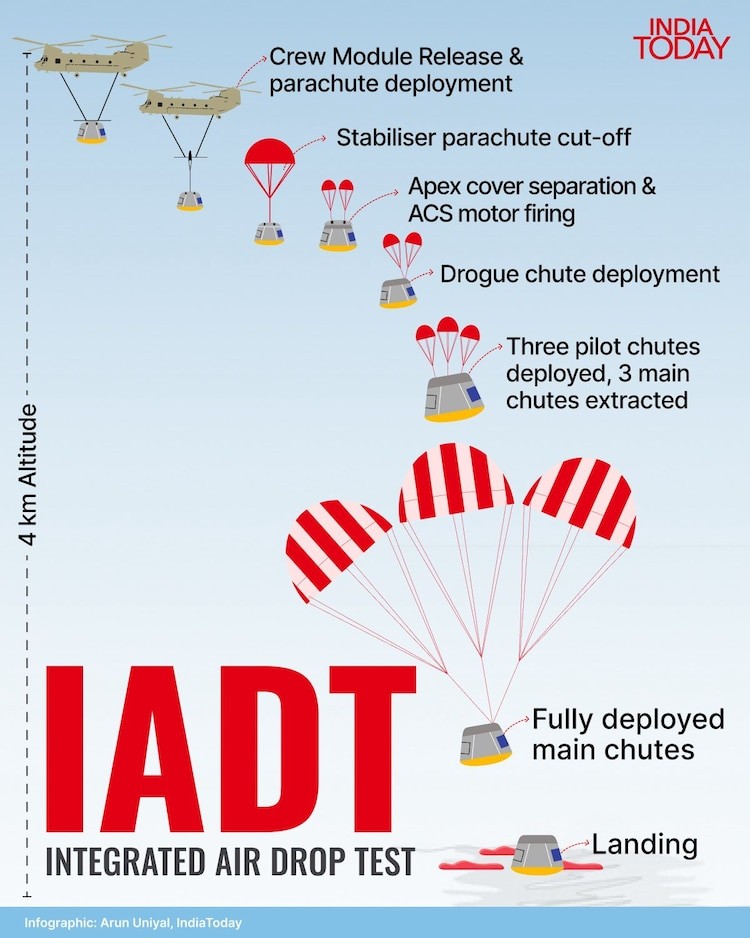
- 28 Aug 2025
In News:
The Indian Space Research Organisation (ISRO)has successfully conducted its firstIntegrated Air Drop Test (IADT-01) for the Gaganyaan human spaceflight programme, marking a critical milestone in validating astronaut safety systems.
Objective of IADT-01
- Test the end-to-end parachute recovery system of the Gaganyaan crew module.
- Demonstrate reliability, sequencing, and redundancy of drogue, pilot, and main parachutes for controlled deceleration and safe splashdown.
- Ensure astronaut safety during the re-entry and landing phases, considered the riskiest part of any human space mission.
Significance
- Validates a vital safety mechanism for Gaganyaan, boosting confidence ahead of upcoming missions like Test Vehicle-D2 (TV-D2) and the first uncrewedGaganyaan mission (G1).
- Strengthens India’s human-rating capabilities, positioning the country to become the fourth nation with independent crewed spaceflight capability.
- Reflects successful inter-agency collaboration among ISRO, Indian Air Force, DRDO, Navy, and Coast Guard.
Gaganyaan Mission Overview
- Crewed mission scheduled for 2028; uncrewed test flight planned in December 2025.
- Mission profile: Carry a three-member crew to low Earth orbit (~400 km) for up to three days, followed by safe return.
- The programme emphasizes astronaut safety, technological reliability, and operational preparedness, with future tests including additional parachute validations, pad abort trials, and sea recovery rehearsals.
Strategic Importance
- Demonstrates India’s capability in human spaceflight, enhancing its global standing in space technology.
- Paves the way for advanced crewed missions and potential applications in scientific research, space exploration, and international collaborations.
India’s Push for 27% Ethanol Blending
- 28 Aug 2025
In News:
India has announced its ambitious plan to increase ethanol blending in petrol to 27% (E27) by 2030, building upon the successful Ethanol Blended Petrol (EBP) Programme launched in 2003. This move aligns with India’s goals of energy security, environmental sustainability, and rural development.
Background and Progress
- EBP Programme: Started with 5% blending, it has grown from less than 2% a decade ago to 10% (E10) by 2022, with 20% blending (E20) projected for 2025, five years ahead of schedule.
- Ethanol Feedstocks: Primarily derived from sugarcane, maize, and surplus food grains, with an increasing push for second-generation ethanol from crop residues and agricultural waste under PM-JI-VAN Yojana.
- Energy Security: India imports nearly 88% of crude oil, spending over $120 billion annually. Ethanol blending reduces crude imports, conserves foreign exchange, and mitigates vulnerability to global price shocks.
- Environmental Goals: Ethanol blends reduce carbon monoxide and hydrocarbon emissions, supporting the National Green Mobility Strategy and India’s Net Zero 2070 commitment.
Economic and Social Benefits
- Farmer Welfare: The programme has channeled over ?1.2 lakh crore to farmers and nearly ?2 lakh crore to distilleries, providing stable markets for sugarcane, maize, and other crops.
- Rural Development: Ethanol distilleries generate employment, promote agro-industries, and reduce distress migration.
- Circular Economy Link: Second-generation ethanol initiatives convert crop residues and waste into energy, addressing stubble burning and enhancing sustainability.
Challenges and Risks
- Food Security: Rising ethanol demand strains maize and grain supplies. In 2023, a 5-million-tonne maize shortfall forced imports, affecting poultry, starch industries, and food prices.
- Water Use: Sugarcane requires 1,500–2,000 litres of water per kg of sugar, risking groundwater depletion in states like Maharashtra and Uttar Pradesh.
- Technological Issues: Higher blends can reduce fuel efficiency by 6–7% in vehicles not designed for ethanol. Adoption of Flex Fuel Vehicles is slow and more costly.
- Supply-Side Constraints: India produced 7 billion litres of ethanol in 2023 but will require over 12 billion litres by 2030. Financially stressed sugar mills and limited investment in grain-based or second-generation plants challenge scaling.
- Infrastructure Needs: Storage, transport, and fuel dispensing networks must expand nationwide to meet E27 targets.
Policy Recommendations
- Feedstock Diversification: Rapid development of second-generation ethanol from crop residues, forestry waste, and municipal solid waste.
- Consumer Incentives: Subsidies for Flex Fuel Vehicles, retrofitting existing engines, and awareness campaigns to ensure adoption.
- Public–Private Partnerships: Investment and collaboration to scale production, distribution, and technology adoption.
- Integration with Clean Energy Transition: Ethanol should complement electric mobility and green hydrogen, serving as a bridge solution for decarbonisation while more transformative technologies mature.
Famine in Gaza
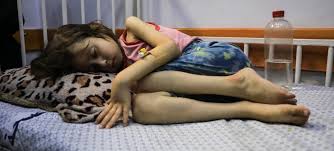
- 28 Aug 2025
In News:
The United Nations has confirmed a famine in Gaza City and surrounding areas, describing it as a “failure of humanity” and a man-made disaster. The declaration follows a report by the Integrated Food Security Phase Classification (IPC), which raised food insecurity in parts of Gaza to Phase 5, the highest level, indicating catastrophic conditions of starvation, destitution, and death.
Scale of the Crisis
- Population affected: Nearly 641,000 people are facing IPC Phase 5 conditions, while 1.14 million (58% of Gaza’s population) are projected to experience emergency-level food insecurity (IPC Phase 4) between mid-August and end of September.
- Children at risk: By June 2026, 132,000 children under five may face life-threatening malnutrition.
- Mortality: Gaza’s Hamas-run health ministry reports 271 deaths due to malnutrition, including 112 children.
- Historical Context: Since 2004, IPC has officially classified only four famines, with the last one in Sudan, 2024.
Causes
The famine is described as “starvation by design” by UN officials:
- Aid Restrictions: Israel has been accused of systematically obstructing humanitarian aid. The UN estimates 600 aid trucks per day are needed, but only 300 trucks are entering daily.
- Conflict Impact: Israel launched a military campaign in response to the Hamas attack on southern Israel in October 2023, leading to mass casualties and displacement. Over 62,000 deaths have been reported in Gaza, with more than 90% of homes damaged or destroyed.
- Infrastructure Collapse: Healthcare, water, sanitation, and hygiene systems have collapsed, exacerbating malnutrition and disease.
International Response
- UN Officials:
- Secretary-General Antonio Guterres called the famine a “moral indictment” and a man-made disaster.
- UNRWA Chief Philippe Lazzarini termed it “starvation by design”.
- UN Human Rights Chief Volker Turk attributed the famine to Israel’s unlawful restriction of aid.
- Global Condemnation:
- UK Foreign Secretary David Lammy described it as a “moral outrage”.
- Humanitarian groups and UN bodies have called for an immediate, at-scale response to prevent widespread starvation.
- Israeli Position: Israel denies a policy of starvation, claiming it has allowed 2 million tons of aid since the conflict began and continues to organize humanitarian corridors and airdrops, though the UN calls these efforts insufficient and sometimes unsafe.
NITI Aayog Report on “Rethinking Homestays: Navigating Policy Pathways”
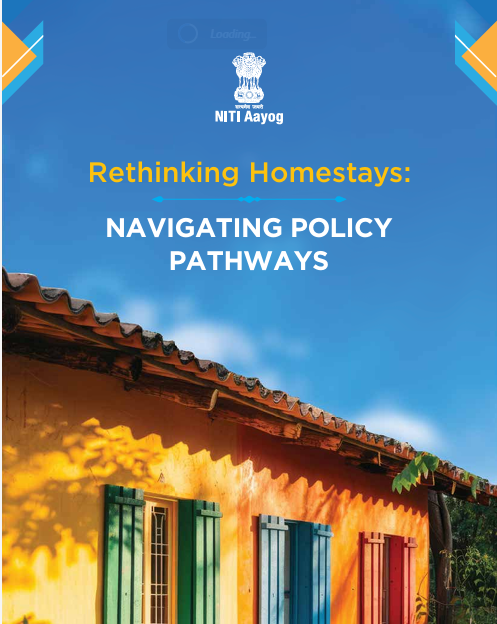
- 28 Aug 2025
In News:
NITI Aayog, in collaboration with the Internet and Mobile Association of India (IAMAI), released the report “Rethinking Homestays: Navigating Policy Pathways”. The document provides a strategic roadmap for strengthening India’s homestay and BnB sector, emphasizing its role in tourism, rural livelihoods, and cultural preservation.
Key Highlights of the Report
- Tourism & Cultural Value: Homestays offer travelers culturally immersive experiences while promoting local entrepreneurship, heritage conservation, and community participation.
- Economic Role: They serve as engines of livelihood creation, particularly in rural and semi-urban areas, fostering inclusive and sustainable growth.
- Regulatory Approach: The report calls for light-touch, transparent regulation to balance safety, consumer trust, and ease of doing business.
- Digital Integration: Strong emphasis on leveraging digital platforms for marketing, consumer engagement, and capacity building of hosts.
- Public–Private Partnerships: Collaboration with stakeholders like Airbnb, MakeMyTrip, IAMAI, ISPP, Chase India, and The Convergence Foundation was highlighted as critical for shaping a vibrant ecosystem.
- Best Practices: State-level examples from Goa, Kerala, Uttarakhand, and Uttar Pradesh showcase scalable models in policy, governance, and community-led initiatives.
- Policy Recommendations: Suggests flexible frameworks, skill development, financial access, and infrastructure support to strengthen the sector.
Significance for India
- Tourism Development – Homestays diversify India’s hospitality sector, offering authentic alternatives to conventional hotels.
- Employment Generation – Potential to create entrepreneurial opportunities for women, youth, and local communities.
- Cultural Preservation – Encourages conservation of art, craft, cuisine, and heritage while generating income.
- Rural Transformation – Helps bridge urban–rural divides by promoting community-based tourism.
- Sustainability – Supports low-impact tourism models, aligning with SDG 8 (Decent Work & Economic Growth) and SDG 11 (Sustainable Cities & Communities).
About NITI Aayog
- Established: 1 January 2015, replacing the Planning Commission.
- Chairperson: Prime Minister of India.
- Vice-Chairperson: Appointed by PM.
- Members: Full-time, part-time experts, ex-officio Union Ministers.
- Governing Council: Chief Ministers of states and LGs of UTs.
- Functions:
- Premier policy think tank for cooperative federalism.
- Provides strategic and long-term policy frameworks.
- Monitors and evaluates development programmes.
- Promotes innovation, entrepreneurship, and technology adoption.
- Coordinates between Centre, States, and global partners.
- Nature: Advisory, yet influential in shaping policies; key driver of initiatives like Aspirational Districts Programme, Atal Innovation Mission, and SDG localization.
Climate Change and Workplace Heat Stress
- 28 Aug 2025
In News:
The WHO–WMO joint report (2025), Climate Change and Workplace Heat Stress, warns that rising global temperatures are creating an unprecedented occupational health and productivity crisis. The year 2024 was the warmest on record, with global average temperatures 1.45°C above pre-industrial levels, and the decade 2015–2024 being the hottest ever recorded.
Key Findings
- Productivity Losses: Each 1°C rise in Wet-Bulb Globe Temperature (WBGT) above 20°C reduces global worker productivity by 2–3%. Sun exposure further raises WBGT by 2–3°C, amplifying risk.
- Scale of Exposure: Over 2.4 billion workers are directly exposed; annually, 22.85 million injuries, 18,970 deaths, and 2.09 million disability-adjusted life years (DALYs) are linked to workplace heat stress (ILO estimates).
- Geographical Hotspots: South Asia, Sub-Saharan Africa, and the Middle East face the highest risks. Heat stress now affects 30% of the global population seasonally or daily.
- Health Impacts: More than one-third of workers in hot conditions report physiological heat strain (hyperthermia, kidney dysfunction, dehydration, neurological problems). WHO safety guidance (1969) recommends that core body temperature during an 8-hour shift not exceed 38°C, a threshold increasingly breached.
- Climate Change Dimension: Daytime peaks of 40–50°C are becoming frequent even outside the tropics. Europe’s 2023 heatwave saw worker fatalities, showing that occupational heat stress is no longer limited to equatorial regions.
India’s Experience
In India, informal workers in brick kilns, construction, agriculture, and power looms are the most affected. Many begin work before sunrise to avoid peak heat, yet still suffer dehydration, dizziness, and lost wages as work hours shrink. Indoor workplaces with poor ventilation often become “furnaces,” leading to chronic fatigue, kidney strain, and even fatalities. By 2030, the ILO projects India could lose 34 million full-time equivalent jobs, particularly in agriculture and construction, due to heat stress.
Wider Implications
- Public Health Burden – Rising cases of heat stroke, cardiovascular collapse, and chronic kidney disease (26.2 million cases in 2020 alone) strain already weak health systems.
- Economic Losses – Developing economies face shrinking GDP as productivity drops; agriculture and construction are most vulnerable.
- Social Inequality – The poor, migrant labourers, and women are disproportionately at risk due to unsafe working conditions and lack of social protection.
- Climate Justice – Regions contributing least to emissions, like Bangladesh and Sub-Saharan Africa, suffer the harshest effects, deepening global inequities.
- Food Security – Agricultural labour productivity loss disrupts crop cycles and threatens farmer incomes, worsening hunger and malnutrition.
- Legal Burden – Rising occupational illness cases risk overwhelming compensation systems and highlight gaps in labour safety laws.
Adaptation Strategies
- Occupational Heat Action Plans: Early warning systems, rescheduling work timings, shaded shelters, and worker training.Example: The Ahmedabad Heat Action Plan (India) has reduced heatwave mortality through alerts, shelters, and training.
- Infrastructure & Technology: Cooling shelters, hydration points, and mechanisation to reduce manual strain.Example: Bangladesh’s garment sector has piloted low-cost ventilation and cooling fans, lowering worker fatigue.
- Labour Policy Reforms: Enforcing heat-index-based work-hour rules, mandatory rest breaks, and compensation for heat-linked illnesses.Example: Qatar bans outdoor work between 10 am–3:30 pm during peak summer.
- Public Health Measures: Hydration protocols, health screenings, and recognition of heat stress as an occupational disease.Example: US OSHA’s “Water–Rest–Shade” campaigninstitutionalises hydration and rest breaks.
- Global & National Coordination: Mainstreaming heat stress into ILO conventions, COP climate talks, and SDG frameworks, with climate finance support for vulnerable economies.Example: Australia integrates climate projections into mining and agriculture workplace safety standards.
National Tiger Conservation Authority’s Corridor Restriction
- 27 Aug 2025
In News:
The National Tiger Conservation Authority (NTCA), the apex statutory body under the Ministry of Environment, Forest and Climate Change (MoEFCC), has recently issued a clarification restricting the definition of tiger corridors to only the 32 “least cost pathways” identified in 2014 and those recorded in Tiger Conservation Plans (TCPs) of individual reserves. This excludes later studies by the Wildlife Institute of India (WII) (2016, 2021) and data from the All-India Tiger Estimation (AITE) exercises.
What are Tiger Corridors?
Tiger corridors are natural pathways that connect fragmented tiger habitats, allowing for:
- Genetic flow and long-term survival of populations.
- Migration and dispersal between reserves.
- Minimisation of human-wildlife conflict through guided movement.
Projects that require land in or around these corridors or reserves need statutory clearance from the Standing Committee of the National Board for Wildlife (SC-NBWL) under the Wildlife Protection Act, 1972.
About NTCA
- Established: 2005 (through 2006 amendment of Wildlife Protection Act, 1972).
- Chairperson: Union Minister of Environment, Forest and Climate Change.
- Functions:
- Approves TCPs of states.
- Provides financial and technical support for tiger conservation.
- Oversees Project Tiger implementation.
- Conducts All-India Tiger Estimation (AITE) every 4 years.
- Ensures ecological connectivity through corridor protection.
The Recent Controversy
- NTCA had earlier told the Bombay High Court (July 2025) that multiple benchmarks would be used to identify corridors, including:
- Protected areas with tiger occupancy.
- 2014 least-cost pathways.
- WII studies (2016, 2021).
- AITE distribution data.
- However, in its latest clarification, NTCA restricted corridors only to 2014 least-cost pathways and TCP records, ignoring updated scientific models.
Potential Beneficiaries
Industrial projects, particularly in Maharashtra, such as:
- Western Coalfields Limited’s Durgapur open cast mines.
- Lloyds Metals & Energy’s Surajgarh iron ore mines in Gadchiroli.
Scientific Concerns
- 2014 NTCA Report itself noted that its corridors were “minimal requirement” and alternative connectivities also needed conservation.
- Newer studies (e.g., Circuitscape modelling, 2025) suggest at least 192 corridors across 10 central Indian states, far beyond the restricted 32.
- Narrowing protection risks fragmentation of habitats, reducing gene flow and increasing chances of local extinctions.
Fortified Rice Scheme Extended to 2028
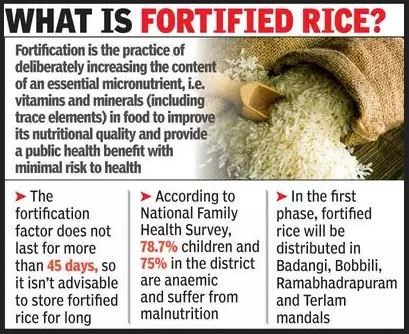
- 27 Aug 2025
In News:
The Union Cabinet has approved the continuation of the universal supply of fortified rice under all government food safety net schemes till December 2028, with 100% central funding of ?17,082 crore. This initiative is part of India’s broader strategy to combat anaemia, malnutrition, and hidden hunger, which remain major public health challenges.
Evolution of the Scheme
- 2018: Launch of Anemia Mukt Bharat (AMB) initiative by MoHFW, emphasising fortified foods.
- 2019: Pilot project for rice fortification introduced in select districts.
- 2022: Government approved national scale-up of fortified rice across welfare schemes.
- March 2024: Fortified rice fully replaced normal rice in all central schemes.
- 2025: Cabinet approved extension till 2028, ensuring continuity with dedicated funding.
Nodal Ministries & Agencies
- Department of Food and Public Distribution (DFPD) under Ministry of Consumer Affairs → implementing agency.
- FSSAI (Food Safety and Standards Authority of India) → sets fortification standards.
- Convergence with Ministry of Education, MoHFW, Ministry of Women and Child Development, and NDDB Foundation for Nutrition.
Components of the Programme
- Public Distribution System (PDS): Fortified rice supplied through ration shops.
- PM POSHAN (Mid-Day Meal): Fortified rice used in school meals; guidelines also promote Double Fortified Salt (DFS) and fortified edible oil.
- Integrated Child Development Services (ICDS): Supplies fortified staples to children and women.
- Special Schemes: Distribution under Wheat-Based Nutrition Programme (WBNP) and Scheme for Adolescent Girls (SAG).
- Complementary Nutrition Initiatives:NDDB’s Gift Milk Programme has provided 7.1 lakh litres of fortified milk, benefitting 41,700 children in 257 schools across 11 states.
Nutritional Focus
- Micronutrients in Fortified Rice: Iron, Folic Acid, and Vitamin B12 → combat iron-deficiency anaemia, support neurological and cognitive health.
- Double Fortified Salt (DFS): Prevents anaemia and goitre.
- Fortified Edible Oil: Provides Vitamins A & D, preventing deficiencies.
Key Features
- Universal Coverage: Fortified rice supplied across all central schemes.
- Cost Coverage: Entire fortification cost borne by the Government of India.
- Monitoring & Accountability: States/UTs tasked with ensuring quality and compliance.
- Multi-Sectoral Approach: Linked with nutrition awareness campaigns and Anemia Mukt Bharat.
- Private & CSR Partnerships: NFN mobilises funds and awareness through CSR and donations.
Wider Context – Food Processing Linkages
The Ministry of Food Processing Industries (MoFPI) supports complementary schemes like:
- PM Kisan SAMPADA Yojana (PMKSY)
- PLI Scheme for Food Processing Industry (PLISFPI)
- PM Formalization of Micro Food Processing Enterprises (PMFME)
These aim to improve supply chains, reduce wastage, and enhance processing levels – strengthening nutrition outcomes alongside fortification.
RBI Discussion Paper on Inflation Targeting

- 27 Aug 2025
In News:
The Reserve Bank of India (RBI), in August 2025, released its discussion paper on reviewing India’s Flexible Inflation Targeting (FIT) framework, which is due for renewal in March 2026. The paper seeks public feedback on key questions such as whether the 4% target remains optimal, whether the 2–6% tolerance band should be revised, and whether the target should be expressed as a point or only a range.
Evolution of the Framework
- Adopted in 2016, the FIT framework formalised inflation targeting in India.
- Current mandate: 4% CPI-based inflation target with a tolerance band of 2–6%, jointly set by the RBI and the Government of India.
- Review cycle: Every five years, with the next mandate to begin April 2026.
Rationale for Retaining the 4% Target
- Credibility with Investors: Raising the target above 4% could be perceived as policy dilution, eroding credibility. Rating agencies like S&P Global recently upgraded India’s rating (BBB), citing the RBI’s strong inflation management.
- Institutional Stability: The framework has strengthened the Monetary Policy Committee (MPC) process and fiscal discipline.
- Domestic Outcomes: Headline CPI inflation has mostly remained within the 2–6% band. In July 2025, it hit 1.55%, the second-lowest since the series began.
- External Balance: Low and stable inflation safeguards the rupee, maintains external competitiveness, and prevents capital outflows.
Headline vs Core Inflation Debate
- Economic Survey 2023–24: Suggested targeting core inflation (excluding food and fuel) as food inflation is largely supply-driven and beyond monetary control.
- RBI’s View: Headline CPI should remain the target, as persistent food shocks spill over into wages, rents, and production costs, influencing core inflation.
- Global Norm: Nearly all inflation-targeting countries focus on headline CPI; Uganda is the only exception.
- Indian Context: Food has ~50% weight in CPI. Excluding it would undermine policy relevance for households and workers.
Key Issues Under Review
- Target Level: Lowering below 4% could hurt growth; raising above 4% risks credibility loss.
- Tolerance Band: Debate on retaining the 2–6% range, narrowing it, or removing it. While a band allows flexibility, it may reduce accountability.
- Inflation Volatility: Between 2014–2025, headline CPI ranged from 1.5% to 8.6%, mainly due to food prices, while core inflation remained relatively stable.
Positive Outcomes of the Framework
- Anchored Expectations: Households and firms now base decisions around a credible 4% anchor, reducing uncertainty.
- Investor Confidence: Predictable inflation management has lowered risk premiums on Indian assets, boosting FDI and portfolio inflows.
- Improved Sovereign Ratings: Low inflation stability has supported fiscal credibility, earning global recognition.
- Resilience to Shocks: Despite global supply disruptions and oil price volatility, India avoided runaway inflation.
India’s Draft Climate Finance Taxonomy

- 27 Aug 2025
In News:
In May 2025, the Ministry of Finance (Department of Economic Affairs) released India’s draft Climate Finance Taxonomy (CFT) for public consultation. This initiative is timely, as it coincides with India’s expanding climate finance ecosystem, including green bonds, carbon credit trading, and global commitments under the Paris Agreement and net-zero targets by 2070.
What is a Climate Finance Taxonomy?
- A classification framework that defines which sectors, technologies, and activities qualify as climate-aligned investments.
- It is described as a “living document”, evolving with India’s domestic priorities and international climate obligations.
- Core purpose: To mobilise public and private finance, ensure transparency, and prevent greenwashing.
Key Features of India’s Draft CFT
- Scope: Covers activities contributing to mitigation, adaptation, and low-carbon transition.
- Review Mechanism
- Annual reviews for course correction.
- Five-year reviews aligned with India’s Nationally Determined Contributions (NDCs) and the UNFCCC global stocktake.
- Legal Coherence
- Designed to be consistent with Indian laws (Energy Conservation Act, SEBI regulations, Carbon Credit Trading Scheme).
- Harmonised with international standards for credibility.
- Substantive Clarity: Provides clear, precise, and updated definitions that are accessible to both experts and non-experts.
- Inclusivity
- Simplified compliance for MSMEs, informal sector actors, and vulnerable communities.
- Staggered timelines for smaller entities to avoid exclusion.
- Institutional Accountability
- Proposal for a standing review unit/expert committee.
- Public dashboards to ensure transparency and investor confidence.
Significance
- Boosts Investor Confidence: Provides clarity for domestic and global investors in India’s green economy.
- Ensures Transparency: Prevents mislabeling of projects as “green,” tackling greenwashing risks.
- Mobilises Finance: Unlocks predictable, science-based finance flows for mitigation and adaptation.
- Supports Net-Zero Goals: Complements instruments like green bonds and carbon credit markets.
- Global Positioning: Strengthens India’s role in shaping international norms on climate finance.
Mercator Projection Map
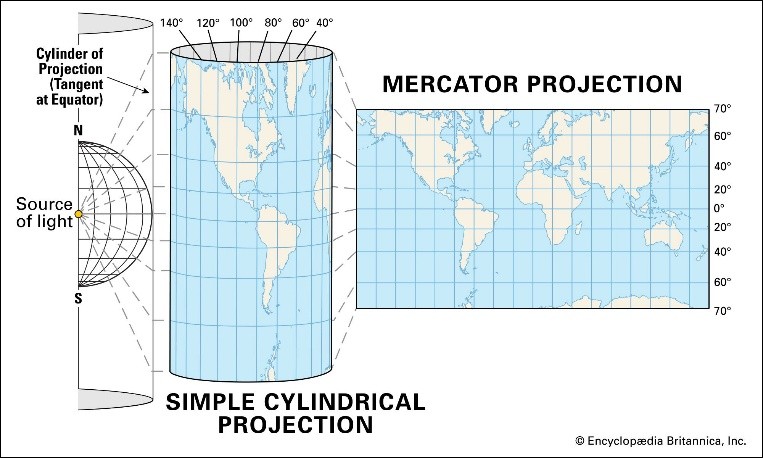
- 27 Aug 2025
In News:
The African Union (AU) has endorsed the “Correct the Map”campaign, calling for the replacement of the Mercator projection with modern alternatives that represent Africa’s true size. This move is not just cartographic—it is deeply political, tied to questions of historical justice, cultural representation, and global perception.
The Mercator Projection: Origins and Features
- Introduced: 1569 by Gerardus Mercator, a Flemish mathematician and cartographer.
- Purpose: Designed for navigation, enabling sailors to follow a straight line of constant compass bearing (Rhumb lines/loxodromes).
- Structure:
- Meridians (longitude): parallel, vertical, equally spaced.
- Parallels (latitude): horizontal, spacing increases away from the equator.
- Grid forms right angles.
- Strengths: Conformal projection that preserves shapes and angles, ideal for maritime exploration.
- Limitations: Distorts area and scale. True scale exists only along the equator; distortion grows near the poles.
Distortions and Bias
- Africa & South America appear much smaller than their real size.
- Europe, North America, and Greenland are disproportionately enlarged.
- Example: Greenland (≈2.1 million sq km) appears similar in size to Africa (≈30 million sq km).
- Such distortions fed into Eurocentric worldviews, reinforcing colonial narratives of Africa as “smaller” and “conquerable.”
Corrective Measures
- Gall-Peters Projection (1970s): Area-accurate but distorts shapes. Adopted in some schools, e.g., Boston (2017).
- Equal Earth Projection (2018): Balances shape and area, providing a fairer representation of continents.
- AU’s Endorsement: By backing the Equal Earth projection, the AU aims to restore “Africa’s rightful place on the global stage,” highlighting the continent’s true scale and importance.
Agni-5 Missile
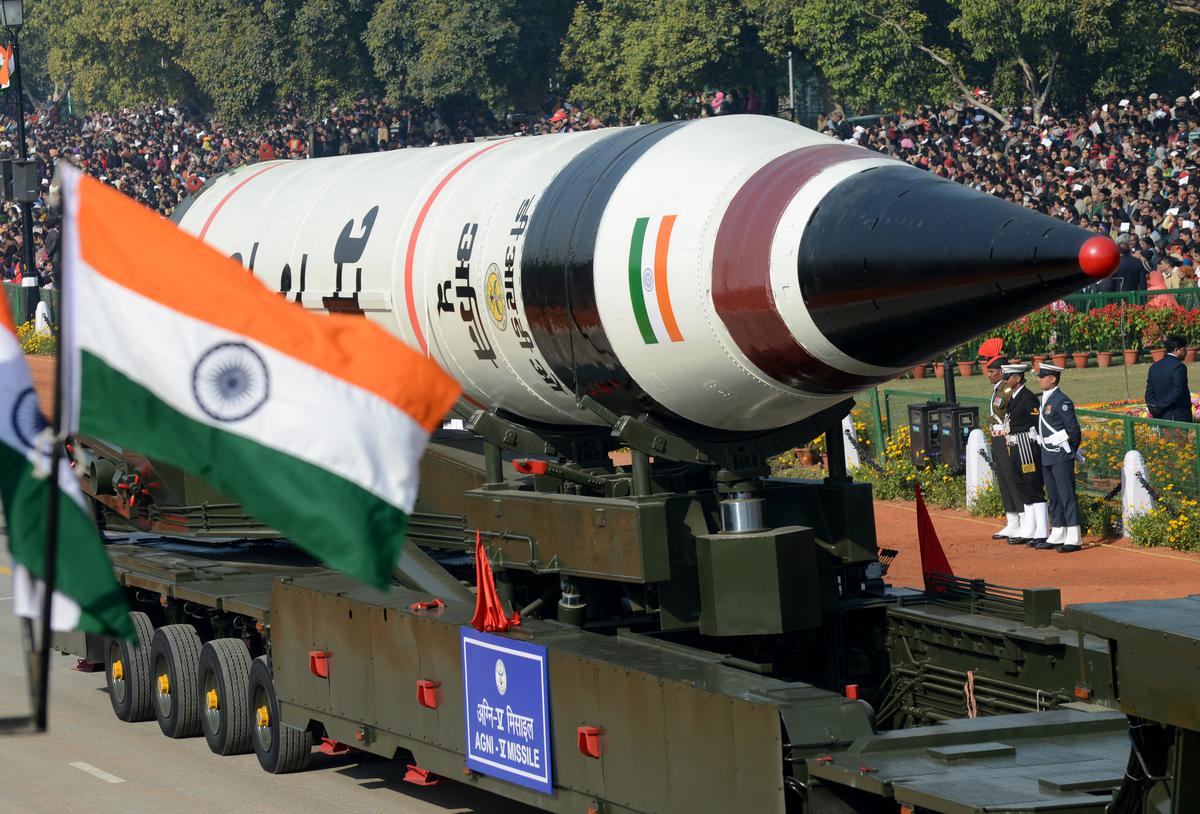
- 26 Aug 2025
In News:
India has successfully conducted the test of its nuclear-capable Agni-5 ballistic missile from the Integrated Test Range (ITR), Chandipur, Odisha. The launch was carried out under the Strategic Forces Command (SFC) and validated all operational and technical parameters, marking a significant boost to India’s strategic deterrence capabilities.
About Agni-5 Missile
- Type: Land-based Intercontinental Ballistic Missile (ICBM).
- Developer: Defence Research and Development Organisation (DRDO).
- Range: Beyond 5,000 km, capable of covering most of Asia and parts of other continents.
- Payload Capacity: Equipped with Multiple Independently Targetable Reentry Vehicle (MIRV) technology, enabling it to carry and deliver up to three nuclear warheads simultaneously at different targets.
- Technologies Used: Modern navigation, guidance, warhead, and propulsion systems, ensuring high accuracy and survivability.
Ballistic Missiles – Classification by Range
Ballistic missiles are rocket-propelled strategic weapons that follow a ballistic trajectory after the powered phase:
- Short-range: < 1,000 km (Tactical role).
- Medium-range: 1,000–3,000 km (Theater role).
- Intermediate-range: 3,000–5,500 km.
- Intercontinental (ICBM): > 5,500 km (Strategic role).
Agni-5, with its long range and MIRV capability, places India in the league of nations with advanced ICBM technology.
Strategic Significance
- Strengthens nuclear deterrence under India’s credible minimum deterrence and no first use (NFU) doctrines.
- Enhances India’s security architecture amidst evolving regional and global threats.
- Positions India among the select group of countries (U.S., Russia, China, France) with operational ICBM and MIRV capability.
National Policy to Promote Globally Important Agricultural Heritage Systems (GIAHS) in India
- 26 Aug 2025
In News:
- The Globally Important Agricultural Heritage Systems (GIAHS) programme, launched by the Food and Agriculture Organization (FAO) in 2002 at the World Summit on Sustainable Development, aims to conserve unique agricultural systems that sustain biodiversity, traditional knowledge, and rural livelihoods while adapting to modern challenges such as climate change, biodiversity loss, and community displacement.
- GIAHS adopts a multi-stakeholder approach by offering technical assistance, enhancing the value of traditional agricultural knowledge, and stimulating markets through agrotourism, product branding, and sustainable value chains.
India’s Recognised GIAHS Sites
Currently, India hosts three GIAHS sites, each reflecting diverse agro-ecological and cultural traditions:
- Koraput Region (Odisha):
- Known for subsistence paddy cultivation on highland slopes.
- Conserves a wide range of paddy landraces and farmer-developed varieties.
- Rich in medicinal plant genetic resources, closely linked with indigenous tribal knowledge.
- Supported by community seed banks, organic farming practices, and branding initiatives under state biodiversity programmes.
- Kuttanad Farming System (Kerala):
- A rare below-sea-level farming landscape.
- Comprises wetlands for paddy, garden lands for coconut and food crops, and inland water bodies for fishing and shell collection.
- Infrastructure development works under RKVY-DPR projects, such as HaritamHarippad in Alappuzha, and research on ecological utilization of water hyacinth are underway.
- Saffron Heritage of Kashmir:
- Represents a traditional agro-pastoral system of saffron cultivation.
- Characterized by organic farming practices, intercropping, and soil conservation.
- Supported through Rashtriya Krishi Vikas Yojana (RKVY) and the Mission for Integrated Development of Horticulture (MIDH) for revival and economic sustainability.
National Support Mechanisms
- Government Schemes: RKVY, MIDH, and other sectoral interventions promote conservation, branding, and livelihood opportunities.
- Biodiversity Revival: Emphasis on neglected crops and forgotten foods to ensure resilience.
- Integration with Research: State-supported projects in Kerala and Odisha enhance scientific validation and infrastructure.
Significance
- Ensures balance between conservation and socioeconomic development.
- Protects traditional knowledge systems and cultural landscapes.
- Enhances climate resilience and strengthens India’s commitment to sustainable agriculture.
- Promotes rural development, agrotourism, and niche product markets, thereby contributing to farmer incomes.
NAVYA Initiative

- 26 Aug 2025
In News:
- The Government of India launched the NAVYA (Nurturing Aspirations through Vocational training for Young Adolescent Girls) initiative in June 2025 to strengthen the socio-economic empowerment of adolescent girls (aged 16–18 years), particularly in aspirational districts.
- It is a joint initiative of the Ministry of Skill Development & Entrepreneurship (MSDE) and the Ministry of Women & Child Development (MWCD).
Objectives of NAVYA
- Vocational Training: Provide demand-driven skilling in both traditional and modern sectors.
- Holistic Development: Cover modules on health, nutrition, hygiene, life skills, financial literacy, and legal awareness.
- Enhancing Employability: Facilitate internships, apprenticeships, and job linkages, along with promoting self-employment.
- Gender-Inclusive Skilling: Ensure a safe and supportive training environment for adolescent girls.
- Bridging Gaps: Connect education and livelihood opportunities in underserved and remote regions.
Key Features
- Coverage: Implemented across 19 States and 27 districts, including Barpeta (Assam), Gaya (Bihar), Bastar (Chhattisgarh), Nuh (Haryana), Chamba (Himachal Pradesh), Baramulla (J&K), Raichur (Karnataka), Gadchiroli (Maharashtra), Rayagada (Odisha), Dholpur (Rajasthan), Virudhunagar (Tamil Nadu), Sonbhadra (Uttar Pradesh), and Haridwar (Uttarakhand), among others.
- Beneficiaries: 3,850 adolescent girls are being trained under Pradhan Mantri Kaushal Vikas Yojana (PMKVY) 4.0.
- Modern Job Roles: Training includes digital marketing, cybersecurity, AI-enabled services, green jobs, and other emerging sectors.
- Future Readiness: Modules on life skills, digital competence, and financial literacy prepare participants for evolving workforce demands.
Significance
- Strengthens women-centric skilling ecosystem.
- Promotes inclusive growth and gender equity in workforce participation.
- Supports Atmanirbhar Bharat by creating a skilled workforce in emerging sectors.
- Contributes to SDG 4 (Quality Education), SDG 5 (Gender Equality), and SDG 8 (Decent Work and Economic Growth).
Anna-Chakra
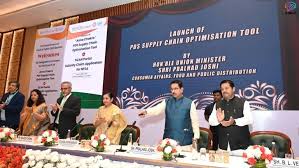
- 26 Aug 2025
In News:
The Government of India has introduced “Anna-Chakra”, a digital supply chain optimisation tool under the Public Distribution System (PDS), aimed at improving efficiency, reducing costs, and minimizing environmental impact in foodgrain distribution.
Implementation Status
- Implemented in 30 out of 31 States/UTs; yet to be implemented in Manipur.
- States/UTs covered include Punjab, Telangana, Tamil Nadu, Rajasthan, Bihar, Gujarat, Maharashtra, Uttar Pradesh, Delhi, J&K, Ladakh, Kerala, Karnataka, Odisha, among others.
Development and Collaboration
- Spearheaded by the Department of Food and Public Distribution.
- Developed in collaboration with:
- World Food Programme (WFP)
- Foundation for Innovation and Technology Transfer (FITT), IIT-Delhi
Working of Anna-Chakra
- Uses advanced algorithms to identify optimal routes for foodgrain movement across supply chain nodes.
- Covers 4.37 lakh Fair Price Shops (FPSs) and around 6,700 warehouses.
- Integrated with:
- FOIS (Freight Operations Information System) of Railways through the Unified Logistics Interface Platform (ULIP).
- PM Gati Shakti platform, which now houses geo-locations of FPSs and warehouses.
Key Benefits
- Financial Savings: Estimated ?250 crore per annum through reduction in transportation costs.
- Efficiency Gains: Faster delivery and streamlined PDS operations in the world’s largest food security programme benefiting 81 crore citizens.
- Environmental Impact: Reduction in fuel consumption and CO? emissions, aligning with India’s climate commitments.
- Operational Improvement: Ensures seamless coordination among multiple stakeholders, from farmers to FPS dealers.
Significance
Anna-Chakra represents a major leap in digitally enabled governance and logistics management, combining technology, sustainability, and welfare delivery. By cutting costs and carbon emissions while enhancing the efficiency of foodgrain delivery, it strengthens India’s food security architecture under the National Food Security Act (NFSA).
e-Jagriti Platform

- 26 Aug 2025
In News:
In a significant boost to India’s consumer protection framework, ten States along with the National Consumer Disputes Redressal Commission (NCDRC) achieved a disposal rate of over 100% in July 2025. This indicates that the number of consumer cases resolved exceeded the number of new cases filed, showcasing efficiency in grievance redressal.
Key Disposal Achievements
- NCDRC: 122%
- Tamil Nadu: 277%
- Rajasthan: 214%
- Telangana: 158%
- Himachal Pradesh & Uttarakhand: 150% each
- Meghalaya: 140%
- Kerala: 122%
- Puducherry: 111%
- Chhattisgarh: 108%
- Uttar Pradesh: 101%
This trend highlights faster case resolution and effective functioning of consumer commissions across India.
The e-Jagriti Platform
The success is largely aided by e-Jagriti, a flagship digital initiative of the Department of Consumer Affairs, designed to strengthen the consumer dispute redressal system.
Objectives
- Computerization and networking of all Consumer Commissions (National, State & District).
- Enhancing transparency, efficiency, and speed in dispute resolution.
- Providing accessible, cost-effective, and paperless grievance redressal.
Features
- E-filing of complaints with online fee payment.
- Real-time case tracking and access to judgments.
- AI-powered Smart Search for archived complaints/judgments.
- Voice-to-text conversion of judgments and case details using AI/ML.
- Integration of multiple platforms:
- Online Case Monitoring System (OCMS)
- E-Daakhil
- NCDRC Case Monitoring System
- CONFONET website
- Mediation application
Since its launch, over 2 lakh users (including NRIs) have registered on e-Jagriti, with 85,531 cases filed online in 2025 alone, demonstrating growing public trust.
Significance
- Strengthens consumer rights and access to justice.
- Reduces backlog and delays through tech-driven case management.
- Promotes digital governance and transparency in consumer protection.
- Aligns with citizen-centric reforms and Digital India Mission.
UdyamSakhi Portal
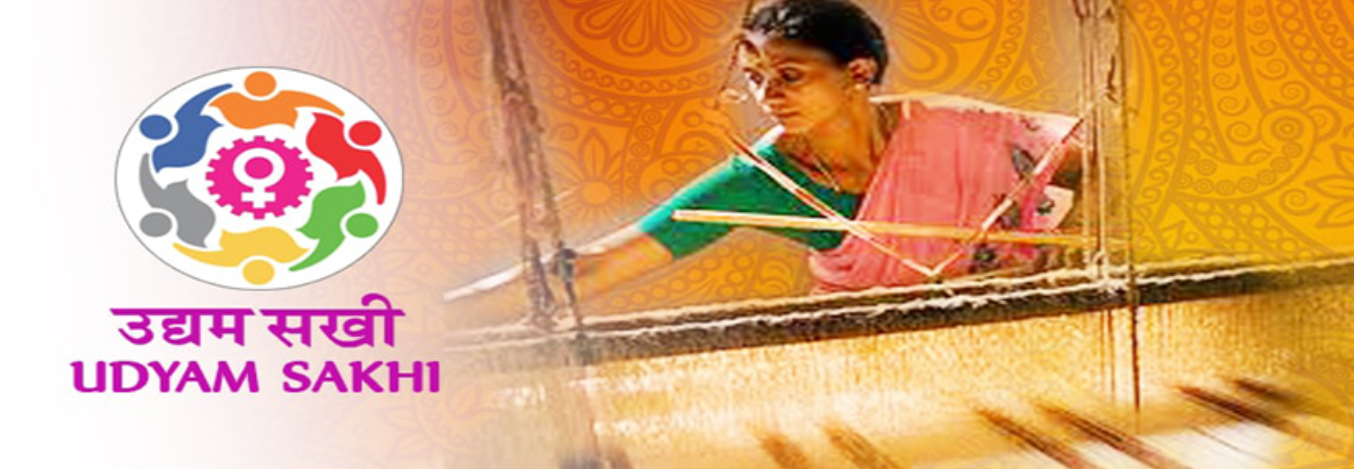
- 25 Aug 2025
In News:
The UdyamSakhi Portal, launched by the Ministry of Micro, Small and Medium Enterprises (MSME) in March 2018, is helping women entrepreneurs across India start, build, and expand their businesses, fostering self-reliance and economic empowerment.
Objectives and Significance
The portal serves as a one-stop resource for existing and prospective women entrepreneurs, providing information on:
- Financial schemes such as the Prime Minister’s Employment Generation Programme (PMEGP), Credit Guarantee Fund Trust for Micro and Small Enterprises (CGTMSE), MUDRA, and Trade Receivables e-Discounting System (TReDS).
- Policies, programs, and business plan preparation.
- Nodal offices and supporting organizations of the MSME Ministry across states.
It also updates users on exhibitions, trade fairs, and international events, creating opportunities to connect with markets and expand business reach.
Programmatic Functions
UdyamSakhi provides a comprehensive suite of services, including:
- Entrepreneurship learning tools and guidance for business model creation
- Incubation facilities for nurturing startups
- Training programs for fundraising
- Mentorship support and one-on-one investor interactions
- Market survey support
- Learning and development through education, information, technical assistance, and training
The portal acts as a network for nurturing entrepreneurship, especially for low-cost products and services, enabling women to become self-reliant and self-sufficient.
Outreach and Impact
Since its inception, the portal has seen 4,535 women register, demonstrating its growing impact on women-led entrepreneurship in the MSME sector. Developed with an expenditure of ?43.52 lakh, the portal continues to expand access to resources, guidance, and opportunities for women entrepreneurs nationwide.
Sliteye Shark
- 25 Aug 2025
In News:
For the first time, scientists have recorded the sliteye shark (Loxodonmacrorhinus) in the Great Chagos Bank, the world’s largest coral atoll in the Indian Ocean. The discovery underscores the hidden biodiversity of the Chagos Archipelago and its Marine Protected Area (MPA), highlighting the ecological importance of deepwater habitats.
About the Sliteye Shark
The sliteye shark is a small-bodied requiem shark in the family Carcharhinidae and is the only species in the genus Loxodon. Named for its distinctive slit-like eyes, the species is adapted to low-light, deepwater environments, though it can also inhabit clear, shallow seas.
- Scientific Name:Loxodonmacrorhinus
- Size: Up to 95 cm in length
- Features: Slender body, long narrow face, large eyes, short furrows at mouth corners, small teeth with protruding tips, absent or rudimentary ridge between dorsal fins, gray coloration with white belly, dark-edged caudal and first dorsal fins
- Distribution: Tropical waters of the Indian and western Pacific Oceans, including countries such as India, Indonesia, Sri Lanka, Japan, Australia, China, Kenya, South Africa, and others between 34°N and 30°S
Discovery in Chagos
- Researchers observed two sliteye sharks at depths of 23–29 metres, just 11 km apart, using Baited Remote Underwater Video systems in deep seagrass habitats on the southern rim of the Great Chagos Bank. These meadows, first mapped in 2016 using satellite tracking of green turtles, support more than 110 fish species and are now confirmed as important for sliteye sharks as well.
Conservation Concerns
- The sliteye shark is classified as Near Threatened by the IUCN Red List, with populations projected to decline by approximately 30% over the next 15 years due to heavy fishing pressure.
- The Chagos discovery raises critical questions regarding the species’ abundance, habitat use, and conservation needs.
- The study forms part of a project led by Swansea University in collaboration with international partners, funded by the Bertarelli Foundation, with full findings expected in 2026. The results strengthen the case for protecting deepwater seagrass habitats in the Indian Ocean.
Sakura Science Programme 2025
- 25 Aug 2025
In News:
- A group of 34 students from government schools across India has been selected to participate in the Sakura Science Programme 2025, a prestigious Japan-Asia Youth Exchange Program in Science.
- The initiative, implemented by the Japan Science and Technology Agency (JST), provides young learners an opportunity to explore cutting-edge scientific innovations and experience Japanese culture firsthand.
Programme Details
- The 2025 edition of the programme was held, with participants from India, Egypt, Ghana, Kenya, Nigeria, South Africa, and Zambia. The Indian delegation consists of students, hailing from nine states—Andhra Pradesh, Bihar, Delhi, Himachal Pradesh, Lakshadweep, Odisha, Puducherry, West Bengal, and the Regional Institute of Education (RIE) demonstration schools in Ajmer, Bhopal, Bhubaneswar, and Mysuru. The students will be accompanied by three supervisors.
- The selected students were flagged off at a ceremony at NCERT, New Delhi, hosted by the Ministry of Education’s Department of School Education & Literacy (DoSEL), attended by key officials including Sanjay Kumar, Secretary of DoSEL, Professor Prakash Chandra Agrawal, Joint Director of NCERT, and Archana Sharma Awasthi, Joint Secretary of DoSEL.
Background and Objectives
Launched globally in 2014, the Sakura Science Programme aims to foster scientific curiosity among youth and promote international collaboration. India joined the programme in 2016, and since then, over 630 Indian students and 90 supervisors have participated.
The programme’s objectives include:
- Developing talented human resources overseas with potential contributions to science and technology innovation.
- Facilitating international brain circulation.
- Promoting continuous collaboration between Japanese and foreign educational and research institutes.
- Strengthening diplomatic relations through science and technology exchanges.
Through short-term visits to Japan, students gain exposure to advanced scientific research, innovation ecosystems, and Japanese culture, fostering both academic growth and cross-cultural understanding.
Nepal Eliminates Rubella
- 25 Aug 2025
In News:
The World Health Organization (WHO) has officially announced that Nepal has eliminated rubella as a public health problem, marking a significant achievement in the country’s fight against vaccine-preventable diseases. Nepal is the sixth country in the WHO South-East Asia Region to achieve rubella elimination, joining Bhutan, DPR Korea, Maldives, Sri Lanka, and Timor-Leste.
About Rubella
- Rubella, also known as German measles or three-day measles, is a highly contagious viral infection caused by the Rubella virus, an enveloped, single-stranded RNA virus distinct from the measles virus.
- Rubella primarily spreads through coughing, sneezing, or contact with contaminated surfaces, and can also be transmitted from a pregnant woman to her fetus.
- While rubella generally causes mild or no symptoms, the hallmark is a spotty red rash starting on the face or behind the ears and spreading to the neck and body.
- Infection during early pregnancy is particularly dangerous, with a 90% chance of virus transmission to the fetus, potentially causing miscarriage, stillbirth, or Congenital Rubella Syndrome (CRS). CRS may result in hearing impairments, eye and heart defects, and lifelong disabilities, including autism, diabetes, and thyroid dysfunction.
- Currently, there is no specific treatment for rubella, and symptoms are generally managed with rest and fever-reducing medications. Prevention through vaccination is key: the measles-mumps-rubella (MMR) vaccine is safe, highly effective, and provides lifelong protection.
Nepal’s Rubella Elimination Journey
- Nepal introduced the rubella-containing vaccine in its immunization program in 2012, targeting children aged 9 months to 15 years. A second dose was added to the routine immunization schedule in 2016.
- Nationwide campaigns in 2012, 2016, 2020, and 2024 helped achieve over 95% coverage for at least one dose, despite challenges such as the COVID-19 pandemic and earthquakes in 2015 and 2023.
- The country implemented innovative strategies such as observing an “immunization month,” outreach programs for missed children, and incentives for districts to achieve “fully immunized” status. Nepal also strengthened rubella surveillance through a robust laboratory testing algorithm, the first of its kind in the WHO South-East Asia Region.
Regional and Global Recognition
The Regional Verification Commission for Measles and Rubella (SEA-RVC), established in 2016, reviewed data from Nepal’s National Verification Committee and recommended verification of rubella elimination. Nepal’s Ministry of Health and Population acknowledged the contribution of government leadership, health workers, volunteers, and communities, alongside support from WHO and Gavi, in achieving this milestone.
The WHO South-East Asia Region initially aimed to eliminate measles and control rubella by 2020, later revising the target to 2023, and finally extending to 2026 due to setbacks caused by the COVID-19 pandemic. Nepal’s early achievement underscores the strength of its national immunization program and serves as a model for other countries in the region.
SWAYAM Portal
- 25 Aug 2025
In News:
The Ministry of Education (MoE) has launched five free Artificial Intelligence (AI) courses on the SWAYAM portal to equip students with the skills required in the rapidly growing AI-driven economy. These courses aim to enhance employability, promote research and innovation, and provide access to high-quality education for learners across India.
About SWAYAM
SWAYAM (Study Webs of Active–Learning for Young Aspiring Minds) is India’s indigenous Massive Open Online Course (MOOC) platform, launched in 2017. It seeks to bridge the digital divide and provide access to education for students across rural and urban areas. The platform hosts courses from Class 9 to post-graduation across disciplines including Engineering, Science, Humanities, Management, Commerce, Arts, Mathematics, and Language.
Courses are delivered in four quadrants:
- Video lectures
- Downloadable reading material
- Self-assessment tests (quizzes and assignments)
- Online discussion forums
Courses are free of cost, though learners opting for certification must pay a nominal fee. Successful completion is assessed through a proctored examination, and the earned credits can be transferred to a student’s academic record under UGC’s Credit Framework for Online Learning (2016).
National Coordinators of SWAYAM
- AICTE: Self-paced and international courses
- NPTEL: Engineering courses
- UGC: Non-technical post-graduate education
- CEC: Undergraduate education
- NCERT & NIOS: School education
- IGNOU: Out-of-school learners
- IIMB: Management studies
- NITTTR: Teacher training programs
- Institutes of National Importance (INI): Non-technical courses
SWAYAM Plus Platform
SWAYAM Plus, operated by IIT Madras, offers industry-collaborated courses to enhance employability. It focuses on sectors such as Manufacturing, Energy, IT/ITES, Healthcare, Management, Hospitality, and Indian Knowledge Systems, with features like multilingual content (12 Indian languages), AI-enabled guidance, credit recognition, and employment pathways.
Free AI Courses Offered
- AI/ML Using Python: Covers basics of AI, Machine Learning, Statistics, Linear Algebra, Optimization, Data Visualization, and Python programming. Duration: 36 hours with certification assessment.
- Cricket Analytics with AI: Introduces sports analytics using Python with cricket as a case study. Offered by IIT Madras. Duration: 25 hours with multiple-choice assessment.
- AI in Physics: Demonstrates how Machine Learning and Neural Networks can solve real-world physics problems through interactive sessions and lab work. Duration: 45 hours.
- AI in Accounting: Focused on commerce and management students, explaining applications of AI in accounting practices. Duration: 45 hours with certification assessment.
- AI in Chemistry: Teaches prediction of molecular properties, reaction modeling, and drug design using AI and Python. Duration: 45 hours, offered by IIT Madras.
These courses exemplify practical applications of AI, such as predicting outcomes from data—for instance, estimating the speed of the next ball in cricket by analyzing past records. They aim to prepare students for careers in technology, innovation, and research, keeping India at the forefront of the AI revolution.
Almond Cultivation in Kashmir
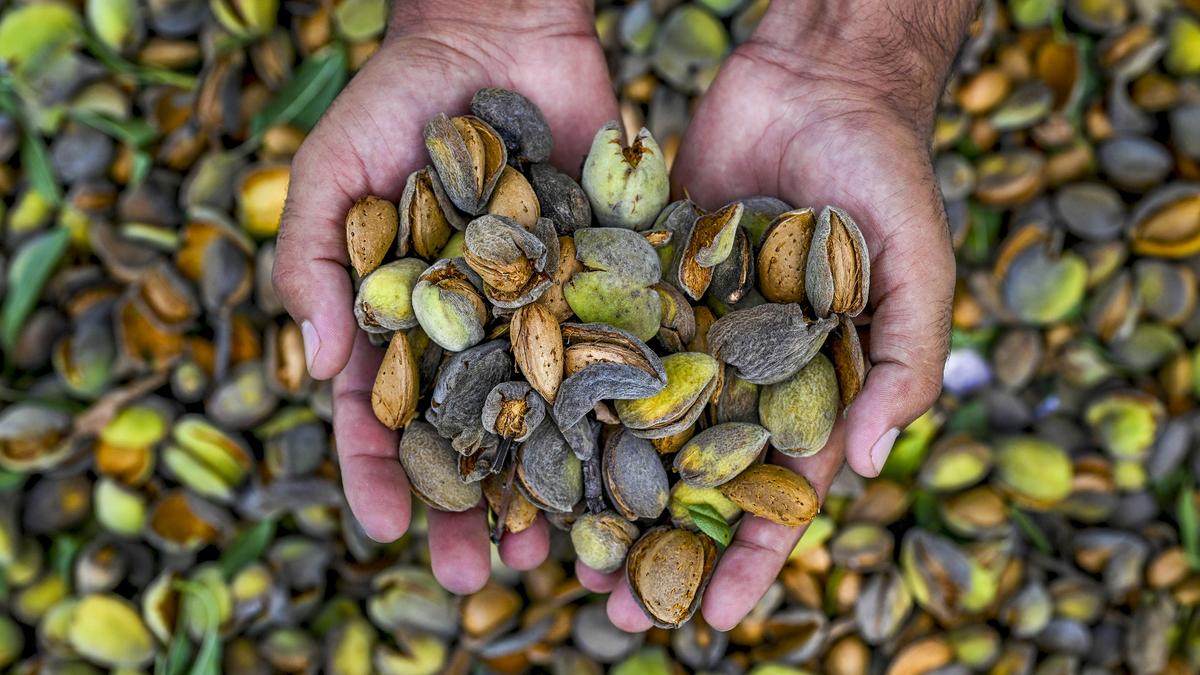
- 24 Aug 2025
In News:
The almond harvest in Kashmir is not only a vital agricultural activity but also a culturally significant seasonal event. This year’s bumper crop has brought relief and optimism to local farmers, reinforcing the economic and social importance of almond cultivation in the region.
About Almonds:
- Almonds are among the oldest and most widely cultivated tree nuts in the world, with two primary types: sweet almonds and bitter almonds.
- They are used extensively in culinary preparations, including sweets, almond milk, and as raw nuts, and are also processed for almond oil.
Climatic and Soil Requirements:
- Climate: Almond trees thrive in colder regions.
- Temperature: Optimal growth occurs between 7°C and 24°C.
- Soil: Deep, loamy, well-drained soils are ideal.
- Rainfall: Requires an average of 75–110 cm of rainfall.
- Altitude: Can grow effectively at 750–3200 meters above sea level.
Global and Indian Context:
- Major producing countries: USA, Australia, Spain, Turkey.
- In India: Almond cultivation is concentrated in hilly and colder regions, primarily in Jammu & Kashmir, Himachal Pradesh, Uttarakhand, with smaller cultivation in Kerala and some hilly areas of Andhra Pradesh.
Economic and Cultural Significance in Kashmir:
- Almond farming provides livelihoods to thousands of farmers in the region.
- The harvest season coincides with local festivals and traditional practices, reinforcing the crop’s cultural relevance.
- This year’s abundant yield has boosted local income and food security.
Primary Amoebic Meningoencephalitis (PAM)

- 24 Aug 2025
In News:
Kerala’s Kozhikode district has reported three recent cases of primary amoebic meningoencephalitis (PAM), including the death of a nine-year-old girl. A three-month-old infant and another child are currently receiving treatment. Following these incidents, the state health department has issued an alert to prevent further infections.
About Primary Amoebic Meningoencephalitis (PAM):
- Definition: PAM is a rare but severe infection of the brain and its protective membranes, caused by the free-living amoeba Naegleria fowleri, popularly called the “brain-eating amoeba.”
- Transmission: The amoeba thrives in warm, fresh water, soil, hot tubs, and improperly maintained swimming pools. Infection occurs when contaminated water enters the nose, allowing the pathogen to reach the brain and meninges. Dust or soil exposure can also serve as potential sources.
- Symptoms: Include headache, fever, nausea, vomiting, sore throat, hallucinations, and neurological deterioration. PAM progresses rapidly, often proving fatal within days.
- Treatment: Early diagnosis and administration of specific antibiotics can sometimes save lives, but recovery is rare. Globally, the disease has a 97% fatality rate, whereas Kerala has reduced it to 25% due to prompt medical interventions and protocols.
Other Amoebic Infections:
- Granulomatous Amebic Encephalitis (GAE): Caused by Acanthamoeba or Balamuthia mandrillaris, GAE progresses more slowly than PAM but is equally deadly if untreated. Unlike PAM, GAE does not necessarily require water exposure for infection.
Epidemiology in Kerala:
- The first PAM case in India was reported in 1971, and Kerala’s first case occurred in 2016. From 2016 to 2023, eight cases were confirmed in the state.
- Last year, Kerala recorded 36 positive cases with nine deaths, prompting the development of the state’s first standard operating procedure (SOP) for managing amoebic meningoencephalitis.
- Notably, in July 2024, a 14-year-old boy in Kozhikode became the first Indian to survive PAM, only the 11th survivor globally.
Factors Contributing to Recent Cases:
- Increased testing for acute encephalitis syndrome (AES).
- Environmental changes, including climate change and pollution.
- Greater awareness and proactive healthcare measures, leading to earlier detection and treatment.
Ionic Liquids
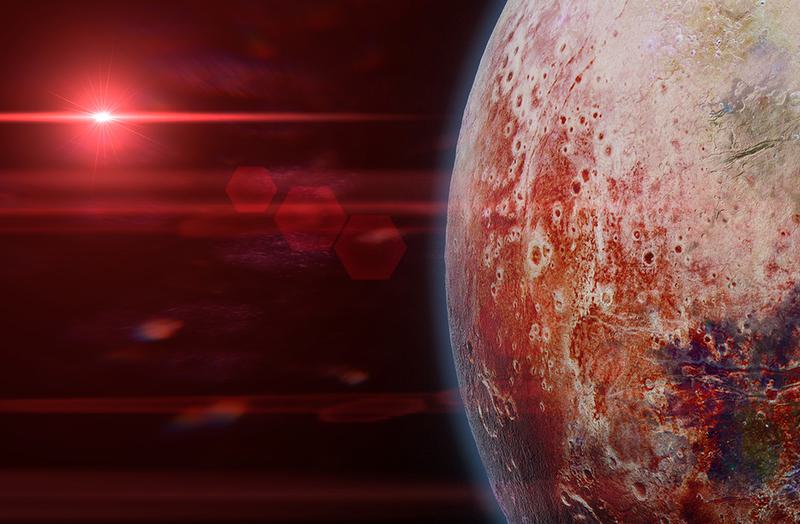
- 24 Aug 2025
In News:
Recent scientific research suggests that life could exist on rocky super-Earths with volcanic activity and minimal water, thanks to ionic liquids (ILs)—salts that remain liquid even in extreme conditions such as a vacuum.
About Ionic Liquids (ILs):
- ILs are salts that are liquid at room temperature, typically with melting points below 100°C.
- Unlike ordinary liquids composed of neutral molecules, ILs are made entirely of ions or short-lived ion pairs.
- Examples include tetrabutylammonium nitrite, 1-(Cyanomethyl)-3-methylimidazolium chloride, and choline acetate.
- ILs are also called liquid electrolytes, ionic melts, ionic fluids, fused salts, liquid salts, or ionic glasses.
Properties and Significance:
- Non-volatile and non-flammable, making them safe under extreme conditions.
- Thermally and chemically stable, resisting decomposition up to 200–400°C depending on composition.
- Can be hydrophobic or hydrophilic, and act as good conductors with a broad electrochemical range.
- Highly tunable: Their physico-chemical properties can be modified by changing the size and type of ions, making them versatile in applications.
Applications in Science and Industry:
- Widely used in synthesis, catalysis, extraction, electrochemistry, analytics, and biotechnology.
- Serve as environmentally friendly alternatives to conventional organic solvents and catalysts.
- Their stability under heat and vacuum conditions allows their use in high-temperature processes.
Role in Supporting Extraterrestrial Life:
- Laboratory experiments demonstrated that ILs can be created by mixing volcanic sulphuric acid with nitrogen-containing organic molecules found on planets.
- These liquids can dissolve biological molecules, offering a medium for biochemical reactions without the need for liquid water.
- This discovery expands the scope of habitable environments beyond Earth-like conditions, suggesting that life could potentially survive on arid, volcanic exoplanets.
SarvottamYudhSeva Medals
- 24 Aug 2025
In News:
On the eve of the 79th Independence Day, President DroupadiMurmu approved the awarding of seven SarvottamYudhSeva Medals (SYSM), the nation’s highest wartime distinguished service honour, to the leaders of Operation Sindoor, marking the first such awards since the Kargil War.
About the SarvottamYudhSeva Medal:
- Institution: 26 June 1980, to recognise distinguished service of the highest order during war, conflict, or hostilities.
- Eligibility: All ranks of the Army, Navy, Air Force, including Territorial Army Units, Auxiliary and Reserve Forces, and lawfully constituted Armed Forces when embodied. Nursing officers and members of the Nursing Services are also eligible. Awards can be given posthumously.
- Design: Circular medal, 35 mm in diameter, gold gilt, with the State Emblem and inscription “SARVOTTAM YUDH SEVA MEDAL” on the obverse, and a five-pointed star on the reverse. The ribbon is golden with a red vertical stripe in the centre. Subsequent awards are recognised by a Bar on the ribbon with a miniature insignia.
- Significance: Considered the wartime equivalent of the Param VishishtSeva Medal (PVSM) for exceptional service in peacetime. Previously awarded to three officers for Kargil War leadership: Lt Gen Amarjit Singh Kalkat, Air Marshal Vinod Patney, and Lt Gen Hari Mohan Khanna.
Escherichia coli
- 24 Aug 2025
In News:
Researchers have recently developed a method to transform genetically engineered Escherichia coli (E. coli) bacteria into self-powered chemical sensors capable of detecting mercury and directly interfacing with electronic devices. This breakthrough represents a significant advancement in environmental monitoring and bioengineering.
About Escherichia coli:
- E. coli is a rod-shaped bacterium belonging to the Enterobacteriaceae family, commonly found in the intestines of humans and animals.
- Most strains are harmless or beneficial, aiding digestion, but certain strains can cause illnesses such as diarrhea, urinary tract infections, respiratory issues, and pneumonia.
- Pathogenic strains, particularly Shiga toxin-producing E. coli (STEC), produce toxins that damage the intestinal lining, leading to symptoms such as fever, persistent diarrhea, bloody stools, and vomiting.
- Transmission occurs through contaminated food, water, or contact with fecal matter from infected individuals or animals.
- Most infections are self-limiting, and treatment primarily focuses on hydration and symptomatic care.
E. coli as a Mercury Sensor:
By leveraging synthetic biology, scientists have reprogrammed E. coli to detect trace amounts of mercury, a highly toxic heavy metal. These bacteria generate an electrical signal when they encounter mercury, allowing direct interfacing with electronic devices to provide real-time monitoring of environmental contamination.
Significance and Applications:
- Provides a low-cost, eco-friendly alternative to conventional mercury detection methods, which often rely on expensive and sophisticated instruments.
- Potential use in monitoring water bodies, industrial effluents, and soil for mercury pollution.
- Demonstrates the broader potential of bioengineered microorganisms in environmental sensing, medical diagnostics, and bio-electronic devices.
This development highlights the convergence of microbiology, synthetic biology, and electronics, paving the way for innovative solutions in pollution monitoring and environmental safety.
Golden Dome Missile Defense Shield
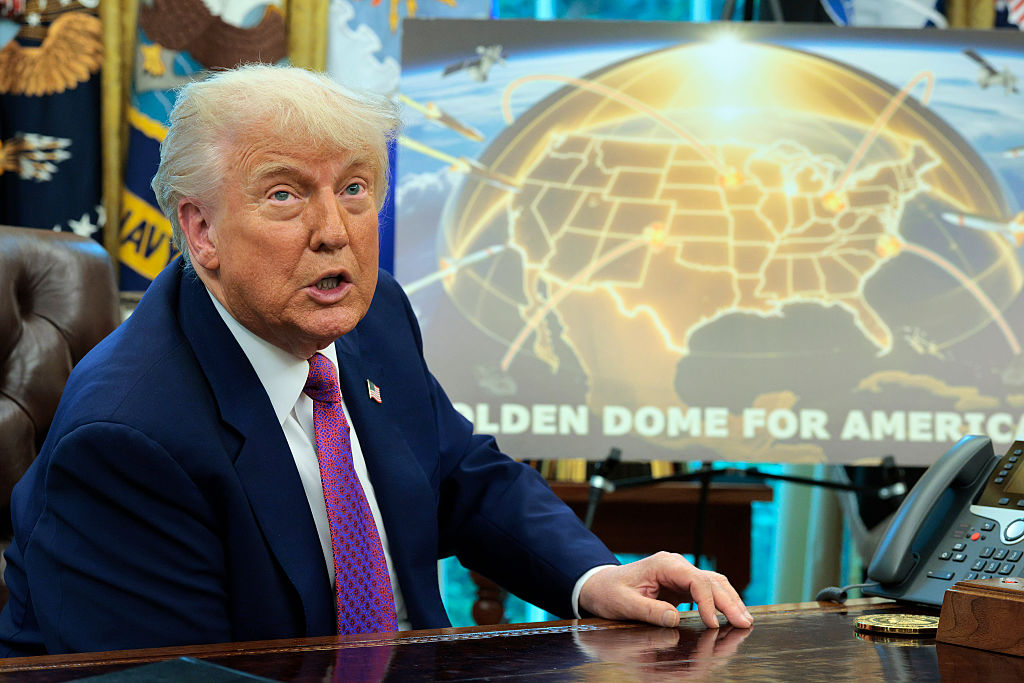
- 23 Aug 2025
In News:
The Golden Dome is a proposed ground- and space-based missile defense system of the United States, announced in 2025 with a projected outlay of $175 billion. It is designed to provide multi-layered protection against intercontinental ballistic missiles (ICBMs), hypersonic weapons, and cruise missiles from adversaries such as China, Russia, Iran, and North Korea.
Objectives
- Establish a comprehensive shield capable of intercepting hostile missiles in their boost, midcourse, and terminal phases.
- Enhance U.S. homeland security through satellite-based early warning, tracking, and interception.
- Integrate existing U.S. missile defense systems into a unified architecture.
Key Features
- Space-Based Layer
- Hundreds of satellites equipped with sensors and interceptors to detect and neutralize missiles soon after launch.
- Incorporation of laser-based systems for mid-flight interception.
- Ground-Based Layers
- Layer 2: Strengthening of the existing Ground-Based Midcourse Defense (GMD) in California and Alaska.
- Layer 3: Five new land-based launch sites (three in continental U.S., two in Hawaii and Alaska) to intercept missiles during their space trajectory.
- Layer 4: “Limited Area Defense” to protect key population centers, using radars, common launchers, and systems like Patriot, THAAD, and Aegis BMD.
- Integration with Existing Systems
- Builds upon existing U.S. missile defense infrastructure to ensure layered and redundant protection.
Comparison with Other Systems
- Israel’s Iron Dome: Golden Dome is often compared to Iron Dome, though the latter is designed for short-range rockets (4–70 km), while Golden Dome targets long-range ballistic and hypersonic threats.
- Reagan’s Strategic Defense Initiative (SDI/“Star Wars”): Golden Dome revives the 1980s concept of space-based defenses, but with advanced modern technology in satellites, sensors, and lasers.
Challenges
- Funding uncertainties: Though an initial $25 billion allocation has been proposed, political hurdles remain.
- Technological feasibility: Space-based interceptors and lasers pose significant challenges in cost, testing, and deployment.
- Strategic implications: Critics argue the system could revive debates on arms races and anti-ballistic missile treaties.
Significance
If realized, the Golden Dome would represent the most ambitious U.S. missile defense program since the Cold War, potentially altering global strategic stability by providing the U.S. with a multi-domain shield against next-generation missile threats.
Sri Lanka–India Naval Exercise (SLINEX-25)

- 23 Aug 2025
In News:
The 12th edition of the Sri Lanka–India Naval Exercise (SLINEX-25)was held recently, marking another milestone in the two-decade-long maritime cooperation between India and Sri Lanka. The exercise underscores India’s commitment to strengthening regional security in line with its vision of MAHASAGAR (Mutual and Holistic Advancement for Security and Growth Across Regions).
Background
- Initiation: Conceptualised in 2005, SLINEX has emerged as a key bilateral exercise, promoting interoperability and mutual trust.
- Previous edition: Conducted at Visakhapatnam, India in December 2024.
Participants
- India: INS Rana (Guided Missile Destroyer) and INS Jyoti (Fleet Tanker).
- Sri Lanka: SLNS Gajabahu and SLNS Vijayabahu (Advanced Offshore Patrol Vessels).
- Special Forces from both navies also took part.
Structure of the Exercise
- Harbour Phase:
- Professional interactions and Subject Matter Expert Exchanges (SMEE).
- Sharing of best practices, cultural and social events, yoga sessions, and sporting activities to strengthen naval camaraderie.
- Sea Phase:Naval drills including gunnery firing, seamanship evolutions, navigation, communication protocols, fueling at sea, and Visit Board Search and Seizure (VBSS) operations.
Significance
- Enhances interoperability between the two navies for multi-faceted maritime operations.
- Facilitates capacity-building and knowledge-sharing in naval tactics.
- Deepens people-to-people and defence diplomacy ties, reinforcing maritime security in the Indian Ocean Region (IOR).
- Complements India’s broader strategic engagement under MAHASAGAR to promote cooperative security and growth in the region.
Pradhan Mantri Viksit Bharat Rozgar Yojana
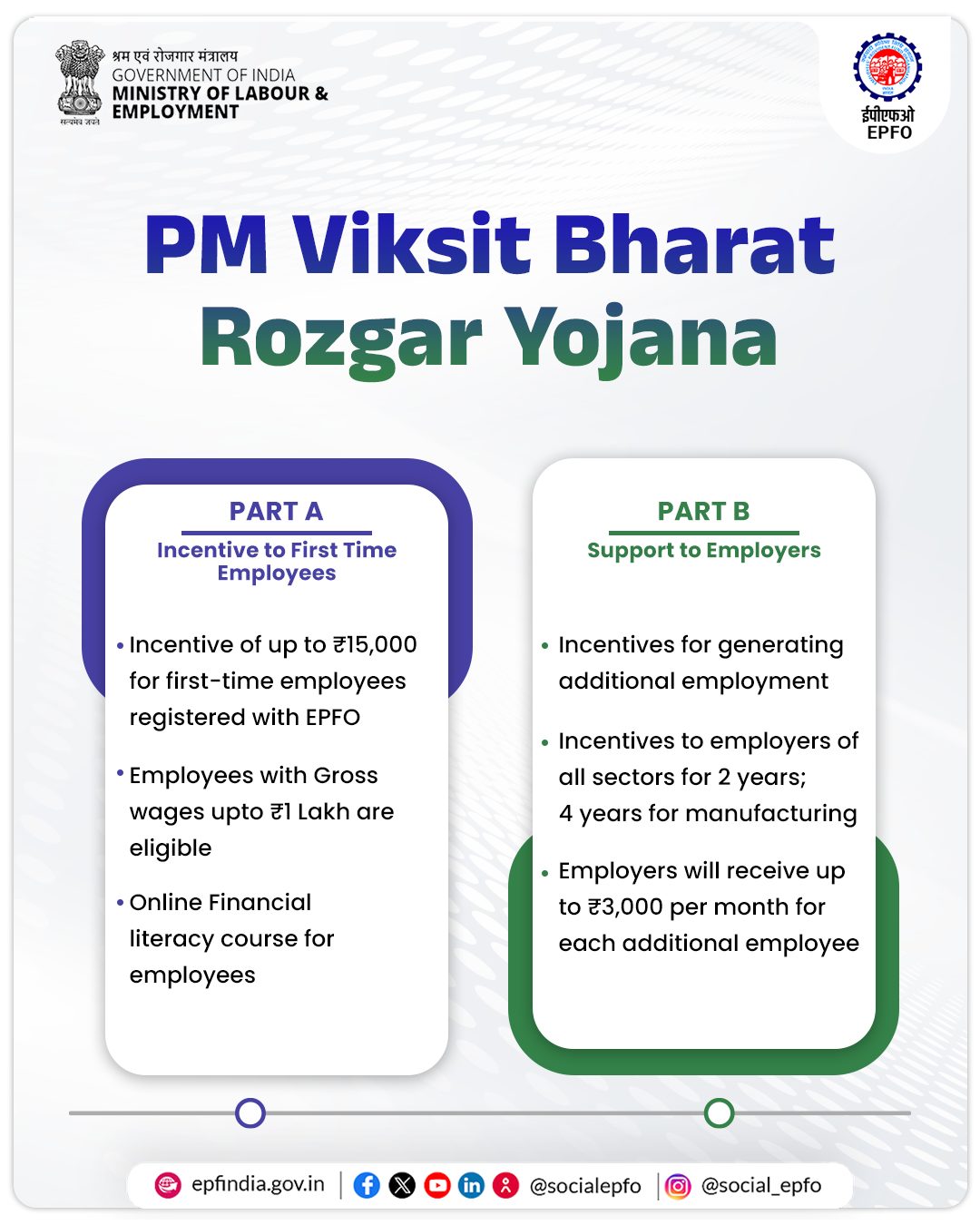
- 23 Aug 2025
In News:
In his 12th Independence Day address from the Red Fort (15 August 2025), Prime Minister Narendra Modi announced the launch of the Pradhan Mantri Viksit Bharat Rozgar Yojana (PMVBRY). With an ambitious financial outlay of nearly ?1 lakh crore, the scheme aims to generate over 3.5 crore jobs in two years, representing a landmark initiative to strengthen the bridge from Swatantra Bharat to Samriddha Bharat through massive employment creation.
Objectives
The scheme seeks to:
- Boost formal job creation by offering direct financial incentives to both employees and employers.
- Promote workforce formalisation by bringing more workers under the ambit of the Employees’ Provident Fund Organisation (EPFO).
- Encourage savings and financial literacy among youth entering the workforce for the first time.
- Catalyse employment growth in the manufacturing sector, a critical pillar of Make in India and Atmanirbhar Bharat.
Key Features of the Scheme
Part A – Support to First-Time Employees
- Targets first-time employees registered with EPFO.
- Provides one month’s EPF wage support up to ?15,000, disbursed in two instalments:
- First instalment after 6 months of continuous service.
- Second instalment after 12 months, subject to completion of a financial literacy programme.
- Incentive is partly locked in a savings/deposit account to encourage long-term financial discipline.
- Employees earning up to ?1 lakh per month are eligible.
- Expected to benefit 1.92 crore first-time employees.
Part B – Incentives for Employers
- Employers will be incentivised to create additional formal jobs, with a focus on manufacturing.
- Incentive: up to ?3,000 per employee per month for two years, provided the employment is sustained for at least six months.
- For the manufacturing sector, support will extend to the 3rd and 4th year as well.
- Expected to facilitate the creation of 2.6 crore jobs.
Incentive Payment Mechanism
- Payments to employees under Part A will be made via Direct Benefit Transfer (DBT) using the Aadhaar Bridge Payment System (ABPS).
- Payments to employers under Part B will be credited directly into PAN-linked accounts.
e-Sushrut@Clinic
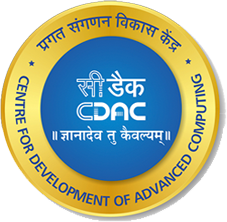
- 23 Aug 2025
In News:
- India’s healthcare system is undergoing rapid digital transformation under the Ayushman Bharat Digital Mission (ABDM), launched in 2021 to build an integrated digital health infrastructure.
- In this context, the National Health Authority (NHA) and the Centre for Development of Advanced Computing (C-DAC) have signed an MoU to roll out e-Sushrut@Clinic—a lightweight, government-backed Hospital Management Information System (HMIS).
- Designed specifically for small and medium healthcare providers, this initiative seeks to bridge the digital divide, enhance interoperability, and empower clinics with affordable, secure, and efficient digital solutions.
Need for a Digital HMIS for Small Providers
- The demand for a trustworthy and affordable HMIS has been persistent, especially among small clinics and medium hospitals that face resource constraints.
- Feedback from ABDM microsites revealed the challenges of adopting costly and fragmented private solutions. While large hospitals like AIIMS have already benefitted from C-DAC’s flagship e-Sushrut HMIS—currently operational in 17 AIIMS and over 4,000 health facilities—a simplified version was needed for smaller stakeholders.
- By addressing these gaps, e-Sushrut@Clinic provides a low-cost, easy-to-adopt, and ABDM-enabled platform that ensures inclusivity in India’s digital health journey.
Features of e-Sushrut@Clinic
- Lightweight Cloud-Based System: Tailored for outpatient management, with pharmacy and nursing modules.
- Ease of Onboarding: Providers can register using the Health Facility Registry (HFR) and Health Professionals Registry (HPR). Even unregistered facilities can directly sign up on the platform.
- Comprehensive Utilities: Facilitates patient record digitization, prescriptions, billing, and telemedicine with minimal technical burden.
- Integration with ABDM Tools: Enables interoperability across the health ecosystem.
- Clinical Decision Support Systems (CDSS): Offers free AIIMS-developed modules for hypertension and diabetes, supporting doctors in evidence-based diagnosis and treatment.
- Patient-Centric Benefits: Enhances efficiency, data security, and patient satisfaction through transparent and reliable digital care.
Significance for Healthcare Delivery
- For Providers – Simplifies administrative processes, reduces paperwork, and improves continuity of care.
- For Patients – Facilitates secure access to health records, better treatment planning, and telemedicine consultations.
- For the System – Creates a standardised, interoperable, and government-backed HMIS that strengthens trust and accelerates the adoption of ABDM.
By reducing barriers to digital adoption, this initiative will benefit tens of thousands of doctors and facility managers nationwide.
Contribution to ABDM and Digital India
- e-Sushrut@Clinic is a pivotal step in expanding the ABDM ecosystem, which aims to create a digital health highway connecting patients, providers, and policymakers. Its low per-user cost ensures affordability, while government backing guarantees credibility.
- The platform complements other digital health initiatives by promoting transparency, efficiency, and interoperability.
- Moreover, it aligns with the Digital India mission, ensuring that even small clinics in rural and semi-urban areas can be integrated into the national digital health infrastructure.
Online Gaming Bill, 2025
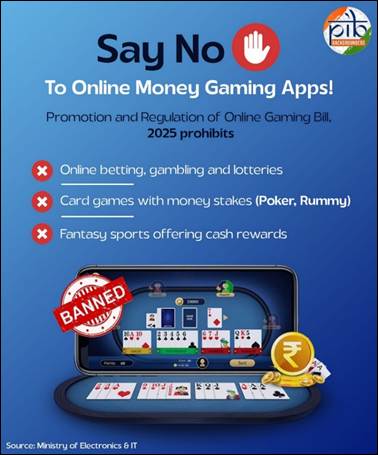
- 23 Aug 2025
In News:
- The Promotion and Regulation of Online Gaming Bill, 2025, passed by Parliament, represents a landmark intervention in India’s digital policy.
- It seeks to prohibit exploitative online money games while simultaneously promoting e-sports and safe online social games.
- The legislation balances the twin objectives of protecting citizens, especially the middle class and youth, from financial and psychological harm and leveraging the potential of the online gaming industry as a driver of innovation, employment, and global competitiveness.
Rationale for the Bill
- The rapid proliferation of online money gaming platforms has led to addiction, financial ruin, fraud, and even suicides.
- The World Health Organization has classified “gaming disorder” as a health condition, reinforcing the urgency of regulation. According to government estimates, 45 crore people were adversely impacted, with losses exceeding ?20,000 crore.
- These platforms also posed risks of money laundering, terror financing, and cybercrime, exploiting loopholes in existing laws. With most operators based offshore, regulatory gaps persisted. Therefore, the Bill provides a comprehensive legal framework that integrates social protection with sectoral growth.
Understanding the Online Gaming Sector
- E-Sports – Organised competitive digital sports that foster strategy, teamwork, and discipline.
- Online Social Games – Recreational, skill-based, and educational games designed for safe entertainment and learning.
- Online Money Games – Games involving financial stakes, often associated with addiction, fraud, and economic distress.
The Bill encourages the first two categories while imposing a blanket ban on money games.
Key Provisions of the Bill
- Applicability: Extends to all of India, including offshore platforms offering services within India.
- Promotion of E-Sports: Recognised as a legitimate sport; guidelines to be framed by the Ministry of Youth Affairs and Sports, with support for training academies and tournaments.
- Encouragement of Social/Educational Games: Central Government to register safe games and develop platforms for digital literacy and skill-building.
- Ban on Online Money Games: Prohibition on offering, advertising, or facilitating such games; banks barred from processing related transactions.
- Online Gaming Authority: A national regulator to classify games, enforce compliance, and address grievances.
- Penalties: Up to 3 years imprisonment and ?1 crore fine for violations; harsher penalties for repeat offenders.
- Corporate Liability: Companies and responsible officers held accountable, with protection for independent directors.
- Investigative Powers: Authorised officers may search, seize, and arrest under the Bharatiya Nagarik Suraksha Sanhita, 2023.
Complementary Legal Measures
- IT Act, 2000 and Intermediary Rules, 2021 – Empower government to block illegal platforms; 1,524 sites already blocked.
- Bharatiya Nyaya Sanhita, 2023 – Criminalises betting and unlawful economic activities.
- GST Act, 2017 – Extends taxation compliance to offshore gaming platforms.
- Consumer Protection Act, 2019 – Prohibits misleading advertisements; celebrities warned against endorsing betting apps.
- Advisories and Education Guidelines – Awareness campaigns on safe gaming for parents, teachers, and youth.
Societal Benefits
- Consumer Protection: Shields families from predatory gaming platforms.
- Youth Empowerment: Expands avenues for e-sports careers and skill-based learning.
- Digital Economy Growth: Positions India as a global gaming hub, driving innovation, exports, and jobs.
- National Security: Prevents misuse of platforms for illicit financing or propaganda.
- Global Leadership: Establishes India as a model for responsible digital regulation.
Conclusion
The Promotion and Regulation of Online Gaming Bill, 2025 reflects India’s attempt to balance innovation with responsibility. By banning harmful money games while nurturing e-sports and educational platforms, the Bill not only safeguards citizens but also unlocks opportunities in the digital economy. It exemplifies a preventive yet progressive regulatory approach, aligning national security, youth welfare, and economic growth. Ultimately, it ensures that technology remains a tool for empowerment, not exploitation.
Indian Ports Bill, 2025
- 22 Aug 2025
In News:
The passage of the Indian Ports Bill, 2025 in both Houses of Parliament marks a landmark reform in India’s maritime governance. The new legislation replaces the colonial-era Indian Ports Act, 1908, bringing in a modern, transparent, and sustainability-driven framework for port development and operations.
Why the Reform was needed
- The 1908 Act, framed under colonial administration, had become outdated in the context of globalised trade, containerisation, and environmental challenges.
- India’s expanding maritime ambitions under the SagarmalaProgramme and Maritime India Vision 2030 required a contemporary law aligned with international standards.
- The reform is also tied to India’s long-term goal of becoming a leading maritime nation by 2047.
Key Objectives of the Bill
- Replace archaic colonial rules with a forward-looking framework.
- Strengthen cooperative federalism through Centre–State partnership in port governance.
- Promote ease of doing business with digitalised and simplified procedures.
- Encourage investment, including PPPs and FDI, by providing regulatory clarity.
- Standardise safety, security, and operational protocols across ports.
- Advance sustainability through green and smart port development.
Major Provisions
1. Institutional Reforms
- Maritime State Development Council (MSDC): A central–state body for coordinated planning, policy harmonisation, and dispute resolution.
- State Maritime Boards: Strengthened to manage non-major ports and oversee expansion/modernisation projects.
- Dispute Resolution Committees: Fast-track mechanisms for sectoral disputes among ports, operators, and users.
2. Operational Reforms
- Tariff Autonomy: Ports empowered to set competitive tariffs under transparent guidelines.
- Integrated Planning: Long-term strategies for cargo handling, multimodal logistics, and coastal shipping.
- Digitalisation: Introduction of the Maritime Single Window, e-clearances, and real-time vessel tracking to cut delays.
- Boost to Coastal & Inland Waterways: Greater connectivity with rail, road, and riverine transport.
3. Environmental & Safety Measures
- Mandatory Waste Reception Facilities and Ballast Water Management systems.
- Compliance with MARPOL (International Convention for the Prevention of Pollution from Ships).
- Emergency Preparedness Plans for accidents, natural disasters, and security threats.
- Promotion of renewable energy, electrification, and shore power systems to cut emissions.
Significance of the Bill
- Economic Growth: Ports as engines of trade, logistics, and job creation.
- Global Alignment: Brings India’s port governance on par with leading maritime nations.
- Sustainability: Push for eco-friendly, digitally enabled, and climate-resilient ports.
- Cooperative Federalism: Greater state participation ensures balanced and region-specific development.
The Bigger Picture
By integrating institutional, operational, and environmental reforms, the Indian Ports Bill, 2025 seeks to transform Indian ports into world-class hubs of trade and logistics. It not only aligns with global best practices but also supports the Prime Minister’s vision of “Ports for Prosperity”, contributing to India’s emergence as a maritime power by 2047.
First removable Solar Panel System between tracks
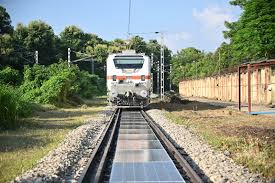
- 22 Aug 2025
In News:
Indian Railways has taken a major step towards achieving its net-zero carbon emission target by 2030 with the commissioning of India’s first removable solar panel system between railway tracks at Banaras Locomotive Works (BLW), Varanasi in August 2025.
About the Project
- Length of Installation: 70 metres
- Number of Panels: 28 removable panels
- Capacity: 15 KWp (Power density: 240 KWp/km; Energy density: 960 units/km/day)
- Special Feature: Panels are removable, enabling easy maintenance, emergency clearance, and seasonal adaptation.
- Design: Indigenously developed to be installed between tracks without disrupting rail traffic.
Technical Specifications of Panels
- Dimensions: 2278 mm × 1133 mm × 30 mm
- Weight: 31.83 kg per panel
- Type: 144 half-cut mono crystalline PERC bifacial collar cells (multi-bus bar)
- Efficiency: 20.15%
- Maximum Voltage: 1500V; Open Circuit Voltage (Voc): 49.71V
Significance
- Green Energy Transition: Promotes sustainable transport by reducing dependency on fossil fuels and cutting carbon footprint.
- Innovative Space Utilisation: Uses the space between tracks, avoiding land acquisition. Potential estimated at 3.5 lakh units/year/km of track. With IR’s 1.2 lakh km track length, the scalability is massive.
- Economic Efficiency: Supports auxiliary energy needs of railway units, lowering operational costs.
- Replicability: Being a pilot project, it serves as a model for adoption across Indian Railways.
Other Recent Railway Developments
- Green Logistics: In August 2025, the first salt-loaded freight rake from Sanosara (Bhuj–Naliya section) to Dahej carried 3,851.2 tonnes of industrial salt over 673.57 km, generating ?31.69 lakh in freight revenue. This initiative boosts regional industry and expands rail freight solutions.
- Electrification Innovation: Western Railway commissioned the country’s first 2×25 kV Electric Traction System at the Nagda–Khachrod section (Ratlam Division). Powered by two Scott-connected 100 MVA transformers, it enhances efficiency in overhead equipment (OHE) supply, marking a leap in electrification infrastructure.
Broader Context
- Indian Railways is rapidly expanding its solar adoption strategy, aligning with the National Solar Mission and Sustainable Development Goal (SDG-7: Affordable and Clean Energy).
- This innovation aligns with India’s climate commitments under the Paris Agreement and helps advance the country’s energy transition pathway.
Water-Scarce Districts in India
- 22 Aug 2025
In News:
Water, being a State subject, places the responsibility for augmentation, conservation, and efficient management primarily on State Governments. However, the Central Government supplements efforts through technical and financial support. Recent assessments by the Central Ground Water Board (CGWB) highlight the growing challenge of water scarcity in India.
Water-Scarce Districts in India
- The “National Compilation of Dynamic Ground Water Resources of India, 2024” jointly prepared by CGWB and State Governments, categorises districts based on groundwater status.
- Classification:
- Over-exploited: 102 districts
- Critical: 22 districts
- Semi-critical: 69 districts
- Total water-stressed districts:193
- Causes of Stress: Over-extraction for agriculture, rapid urbanisation, industrial demand, erratic monsoons, and climate variability.
- Geographic Spread: Punjab, Haryana, Rajasthan, Tamil Nadu, and Karnataka are among the most affected.
Government Initiatives
1. Jal Shakti Abhiyan (JSA) – 2019 onwards
- A mission-mode campaign for water conservation in 256 water-stressed districts.
- Scaled up nationwide with the tagline: “Catch the Rain – Where it Falls, When it Falls.”
2. Thematic Focus under JSA: Catch the Rain (CTR)
- 2023 – Source Sustainability for Drinking Water: Focused on 150 districts identified by Jal Jeevan Mission.
- 2024 – Nari Shakti se Jal Shakti: Focused on 151 districts identified by CGWB, highlighting women’s role in water management.
- 2025 – Jal Sanchay Jan Bhagidari: Focused on 148 districts, emphasising community participation, inter-sectoral convergence, and innovative financing.
3. Institutional Mechanism
- Central Teams: Comprising Central Nodal Officers (Additional Secretary/Joint Secretary level) and Technical Officers from agencies like CWC, CGWB, NIH, CSMRS, CWPRS, etc., for field monitoring and technical support.
- State Nodal Officers: Oversee campaign execution at state level.
- 148 Central Nodal Officers appointed for high-focus districts in JSA: CTR 2025–26.
Significance of Water Scarcity Data
- Drinking Water Security: Ensures reliable access in rural and urban areas.
- Climate Adaptation: Builds resilience against droughts and erratic rainfall.
- Policy Planning: Provides evidence for programmes such as Jal Jeevan Mission, Atal Bhujal Yojana, and achieving SDG 6 (Clean Water and Sanitation).
- Public Awareness & Participation: Encourages community-led water conservation for sustainable outcomes.
State of Food Security and Nutrition in the World 2025
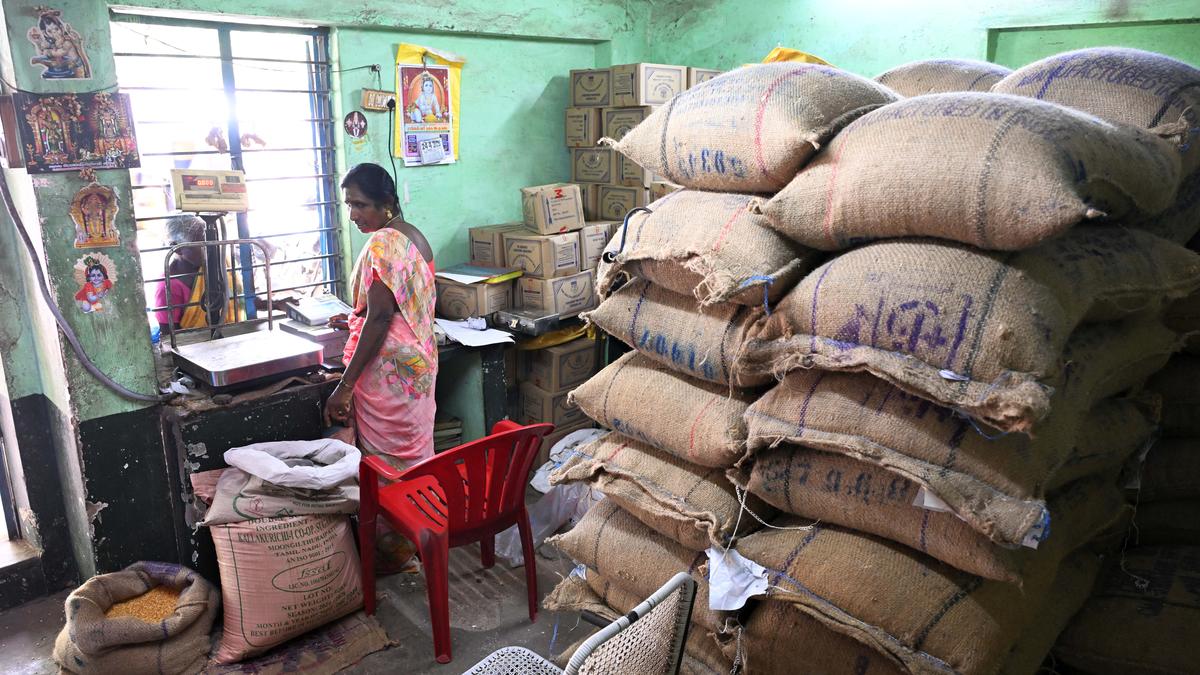
- 22 Aug 2025
In News:
According to the UN’s “State of Food Security and Nutrition in the World 2025”, global undernourishment decreased to 8.2% (673 million individuals) in 2024, down from 8.5% in 2023.
India has been instrumental in this turnaround—its prevalence of undernourishment fell from 14.3% (2020–22) to 12% (2022–24), equating to 30 million fewer hungry people. These outcomes underscore India’s unique role in advancing SDG 2: Zero Hunger globally.
Defining Hunger: Layers and Causes
- Undernourishment: Insufficient calorie intake.
- Malnutrition: Poor diet quality lacking protein and essential micronutrients.
- Hidden Hunger: Micronutrient deficiencies (iron, iodine, vitamin A, zinc).
Root Causes:
- Economic barriers: Poverty limits access to nutritious food (NITI Aayog Index: ~11.3% multidimensionally poor).
- Agricultural inefficiencies: Fragmented holdings, climate variability, poor irrigation, and 13% post-harvest losses.
- High food costs: A nutritious diet remains unaffordable for over 60% of Indians.
- Weak infrastructure: Poor cold storage and logistics aggravate food wastage.
- Health and sanitation challenges: NFHS-5 (2019–21): 35.5% of children under five are stunted; 19.3% are wasted.
- Macro-disruptions: Global conflicts, pandemics, and climate shocks affect food systems, impacting India too.
India’s Strategic Interventions: From Policies to Systems
- Public Distribution System (PDS) Reforms
- Extensive digital overhaul: Aadhaar-based targeting, biometric authentication, real-time inventory tracking, and ONORC (One Nation One Ration Card) ensuring portability and inclusion for migrants and the vulnerable.
- Served over 800 million beneficiaries during COVID-19—a monumental welfare scaling.
- Emphasis on Nutrition Over Mere Calories
- Continued unaffordability of healthy diets (60%+ can’t afford) due to price inflation and weak linkages.
- Nutrition-centric interventions:
- PM POSHAN (2021): Expanded mid-day meals into nutrition-sensitive programs.
- ICDS & POSHAN Abhiyaan: Enhanced focus on dietary diversity and maternal-child health.
- AnaemiaMukt Bharat: Tackles widespread anaemia among women and children.
- Agrifood System Transformation
- Promote nutrient-dense food affordability (pulses, fruits, vegetables, animal-source proteins).
- Address 13% food loss via upgraded cold-chain infrastructure and logistics.
- Support women-led enterprises and FPOs, especially in climate-resilient, biofortified crop cultivation.
- Digital Innovations in Agriculture: Tools such as AgriStack, e-NAM, and geospatial platforms enhance market access, planning, and transparency.
Strategies for Sustainable Impact
|
Strategy |
Actions |
|
Nutrition-centric policy shift |
Fortify staples, subsidise nutrient-rich foods (pulses, eggs, milk) |
|
Infrastructure strengthening |
Upgrade cold storage, logistics, and digital post-harvest systems |
|
Inclusive economy |
Scale women-led food enterprises, FPOs, and biofortified crop cultivation |
|
Digital expansion |
Broaden use of AgriStack, e-NAM, geospatial tools for planning & targeting |
|
Urban nutrition resilience |
Launch community kitchens, food banks, awareness drives |
|
Global sharing & leadership |
Replicate ONORC, PDS digitalisation, nutrition models in the Global South |
Overseas Citizens of India (OCI) Scheme
- 22 Aug 2025
In News:
The Ministry of Home Affairs has announced new rules for overseas citizens of India that may impact their future registration or cancellation.
Background
The Overseas Citizens of India (OCI) Scheme was launched in 2005 by the Ministry of Home Affairs (MHA) to strengthen India’s engagement with its diaspora. It provides certain residency, travel, and economic benefits to foreign nationals of Indian origin, while keeping intact India’s constitutional restrictions on dual citizenship.
Key Features of OCI
- Eligibility:
- Persons who were citizens of India on or after 26 January 1950, or their children/grandchildren/great-grandchildren.
- Excludes individuals who have ever been citizens of Pakistan or Bangladesh, and their descendants.
- Benefits:
- Visa-free travel: Lifelong, multiple-entry, multi-purpose visa to India.
- Economic & Educational Rights: Can pursue education, invest in India, and purchase property (except agricultural/plantation land).
- Ease of Residency: Long-term residency without repeated visa applications.
- Restrictions:
- No political rights (cannot vote, contest elections, or hold constitutional posts).
- No ownership of agricultural or plantation land.
New Rules Notified by MHA (2025)
The government has tightened the regulatory framework around OCI registration by amending rules under the Citizenship Act, 1955 (Section 7D).
Fresh Grounds for Cancellation
- Conviction-based: If an OCI cardholder is sentenced to imprisonment for two years or more.
- Charge-sheet-based: If charge-sheeted for an offence punishable with seven years or more.
- Applicability: These provisions apply irrespective of where the conviction or charge-sheet occurs (India or abroad), provided the offence is recognised under Indian law.
Existing Grounds (already under law)
An OCI card can also be cancelled if the person:
- Obtained registration through fraud, misrepresentation, or concealment of facts.
- Has shown disaffection towards the Indian Constitution.
- Has engaged in unlawful trade or communication with an enemy during war.
- Acts against the sovereignty, integrity, security of India, or its friendly relations with other countries/public interest.
- Within five years of registration, is sentenced to imprisonment for two years or more.
Significance of the Amendment
- Strengthens legal accountability of OCI cardholders.
- Ensures parity of standards between domestic and overseas citizens regarding serious offences.
- Reinforces national security and constitutional safeguards while maintaining diaspora ties.
Damselfly Species
- 21 Aug 2025
In News:
Researchers have discovered two new species of damselflies in the Western Ghats—Konkan Shadowdamsel from Maharashtra’s Sindhudurg district and Crimson Shadowdamsel (Protosticta sanguinithorax) from Kerala’s Thiruvananthapuram district. The findings were published in the international journal Zootaxa.
About the New Species
- Group: Both belong to the genus Protosticta, commonly called Shadowdamsels, which prefer shaded forest habitats and pristine streams.
- Physical Traits:
- Crimson Shadowdamsel → reddish body.
- Konkan Shadowdamsel → coffee-brown ground colouration.
- Previously, these were mistaken for the Red-spot Shadowdamsel (Protosticta sanguinostigma), described over a century ago from the Nilgiris, which is jet black in colour.
- Identification: Differentiation was confirmed using high-resolution microscopy and molecular analysis of the COI gene, a standard marker for species classification.
- Distribution: Both species are endemics with very restricted microhabitats in the Western Ghats, often outside protected areas.
Ecological Importance
- Shadowdamsels are considered bioindicators:
- Found only in pristine forests with good canopy cover and unpolluted streams.
- Their presence reflects the ecological health of habitats.
- Many species are microendemics, restricted to small hill ranges, making them highly vulnerable to habitat disturbance.
- Current threats include expansion of plantations, deforestation of shade trees, and loss of natural streams.
Damselflies: A Brief Overview
- Belong to the order Odonata, along with dragonflies.
- Characteristics: slender body, delicate net-veined wings, weak flight.
- Habitat: shallow freshwater ecosystems.
- Difference from dragonflies: generally smaller, more fragile, and weaker fliers.
APAAR ID
- 21 Aug 2025
In News:
The Central Board of Secondary Education (CBSE) has made it mandatory for students to submit their APAAR ID during board exam registration, beginning with the 2026 board examinations. This marks a major step in integrating India’s education system under the Digital Public Infrastructure for Education (DPIE).
What is APAAR ID?
- Full Form: Automated Permanent Academic Account Registry.
- Origin: Envisioned under the National Education Policy (NEP), 2020.
- Nature: A unique, permanent 12-digit identification number assigned to every student from pre-primary to higher education.
- Function: Tracks a student’s entire academic journey, consolidating degrees, report cards, scholarships, awards, and credits.
- Integration:
- Linked to Aadhaar for authentication.
- Records stored in DigiLocker for easy and secure access.
- Generated through the Unified District Information System for Education Plus (UDISE+).
- Vision: Embodies the principle of “One Nation, One Student ID”, serving as a lifelong academic passport.
Objectives of APAAR
- Unified Academic Record – Create a lifelong, universally accessible digital database of academic achievements.
- Seamless Transfers – Facilitate smooth migration of students across schools and institutions.
- Transparency & Verification – Eliminate fake certificates and duplication through verifiable digital records.
- Policy Support – Aid educational policymaking and data-driven governance by maintaining standardized records.
- Student Empowerment – Provide students easy access to academic documents via DigiLocker.
Why is CBSE Making APAAR Mandatory?
- Until now, CBSE schools submitted student lists for Class 10 and 12 exams with registration details in Classes 9 and 11.
- There was no standardised identity system, causing inconsistencies and lack of verifiability.
- Linking APAAR ID with registration ensures accuracy, transparency, and elimination of duplication in student records.
- The Ministry of Education has mandated APAAR adoption as part of DPIE for improved data management and transparency.
Concerns and Safeguards
- Concerns Raised: Parents have expressed fears of misuse of personal data and privacy breaches.
- Government’s Assurance: Information will only be accessible to authorized educational entities—such as UDISE+, scholarship agencies, recruitment boards, and institutions—and strictly for academic purposes.
Significance
- APAAR will transform academic governance by creating a single, verifiable, lifelong academic identity.
- It will help students, institutions, and policymakers by streamlining record-keeping, enabling mobility, and ensuring trust in credentials.
- In the long term, it could become the backbone of India’s digital education ecosystem, aligned with NEP 2020’s vision of inclusivity, efficiency, and accountability.
RBI has released a report on the FREE-AI
- 21 Aug 2025
In News:
The Reserve Bank of India (RBI) has released the Framework for Responsible and Ethical Enablement of Artificial Intelligence (FREE-AI) Committee Report, marking a major step in shaping ethical, transparent, and sustainable AI adoption in India’s financial sector. The framework seeks to balance innovation with risk mitigation, ensuring that the transformative power of AI is harnessed without compromising trust, fairness, or safety.
RBI’s 7 Sutras for Responsible AI in Finance
The FREE-AI framework is built on seven guiding principles (Sutras):
- Trust is the Foundation – AI must be reliable, transparent, and inspire public confidence.
- People First – AI should empower human decision-making while safeguarding dignity, inclusion, and citizen interest.
- Innovation over Restraint – Encourage responsible innovation without excessive restrictions.
- Fairness and Equity – AI outcomes must be unbiased and equitable.
- Accountability – Responsibility for AI decisions rests with deploying entities, with clear lines of answerability.
- Understandable by Design – Systems must be interpretable and explainable to users, auditors, and regulators.
- Safety, Resilience, and Sustainability – AI must be secure, adaptable, and capable of delivering long-term benefits.
India’s Policy Developments
- MuleHunter AI – Developed by RBI Innovation Hub to detect mule accounts and curb digital frauds.
- Digital Lending Rules – Mandate auditable AI-driven credit assessments with human oversight and grievance redressal.
- SEBI’s 2025 Guidelines – Propose responsible AI use in Indian securities markets.
- IndiaAI Mission – Aims to boost AI innovation, research, and computational infrastructure.
RBI’s Recommendations under FREE-AI
The Committee laid down 26 recommendations across six pillars:
- Infrastructure – Establish high-quality financial data infrastructure, integrated with AI Kosh.
- Innovation Enablement – Create an AI Innovation Sandbox for testing models with anonymised data, ensuring compliance with AML, KYC, and consumer protection norms.
- Consumer Protection & Security – Periodic AI red-teaming, incident reporting frameworks, and good-faith disclosures.
- Capacity Building – Structured AI governance training at all institutional levels; knowledge sharing across REs (regulated entities).
- Governance – Oversight frameworks ensuring accountability and transparency in AI deployments.
- Assurance Mechanisms – Standards and audit processes for AI-based systems.
Higher Education Commission of India (HECI)
- 21 Aug 2025
In News:
India’s higher education system is poised for its most significant transformation since independence with the establishment of the Higher Education Commission of India (HECI), a unified regulatory body that will replace the fragmented oversight of University Grants Commission (UGC), All India Council for Technical Education (AICTE), and National Council for Teacher Education (NCTE).
Background & Genesis
- The HECI is a proposed unified regulator intended to replace the existing oversight bodies: UGC, AICTE, and NCTE—tasked with regulating non-technical, technical, and teacher-education domains respectively.
- The concept originates from NEP 2020, which advocates for a "light but tight" regulatory framework governed by one umbrella institution with four independent verticals.
- Originally floated in a 2018 draft bill, the idea regained momentum in 2021 and is currently under drafting, with status updates as recent as July–August 2025.
Objectives & Rationale
- Streamline governance: HECI aims to eliminate overlapping jurisdictions, reduce bureaucratic delays, and improve accountability across higher education institutions.
- Enhance autonomy and innovation: Under NEP 2020’s vision, it seeks to foster institutional independence coupled with data-driven oversight.
- Align with global best practices: The vertical structure (regulation, accreditation, funding, standards) mirrors international examples like the UK's Office for Students and Australia’s TEQSA.
Structural Framework: Four Vertical Councils
As per NEP 2020, HECI will function through four independent verticals:
- National Higher Education Regulatory Council (NHERC): Responsible for regulatory oversight, excluding medical and legal education.
- National Accreditation Council (NAC): Acts as a meta-accrediting body, setting phased benchmarks and ensuring quality across institutions.
- Higher Education Grants Council (HEGC): Will manage funding based on transparent, performance-linked criteria, replacing UGC’s funding role.
- General Education Council (GEC): Tasked with developing the National Higher Education Qualification Framework (NHEQF), defining graduate learning outcomes. It will subsume the NCTE and liaise with other professional standard-setting bodies.
Some sources also mention integration of accreditation entities such as NAAC and NBA into HECI’s accreditation wing, adopting peer-review models.
Legislative Journey & Current Status
- The HECI bill is being prepared following NEP 2020, specifically underwritten by Minister Sukanta Majumdar in July 2025. A Cabinet note is anticipated before formal introduction.
- Finalisation is pending, with no clear date as of mid-2025.
Expected Benefits
- Simplified administration—one regulator instead of multiple authorities.
- Improved transparency and efficiency, eliminating redundancy.
- Promoting global standards, quality enhancements, and integration of interdisciplinary and digital learning.
Gaur
- 20 Aug 2025
In News:
The Palamau Tiger Reserve (PTR), the last stronghold of the Gaur (Bos gaurus) in Jharkhand, has reported an alarming decline in population. Once spread across Saranda, Dalma, Hazaribagh, Gumla, and other forests of the state, Gaurs are now restricted to small and isolated groups in PTR’s northern range.
About Gaur
- Common name: Indian Bison
- Family: Bovidae; largest species of wild cattle.
- Distribution: Native to South and Southeast Asia.
- Preferred habitat:
- Evergreen, semi-evergreen, and moist deciduous forests with grasslands.
- Hilly terrains below 1,500–1,800 m with large, undisturbed forests and reliable water sources.
Conservation Status
- IUCN Red List: Vulnerable
- CITES: Appendix I
- Wildlife Protection Act, 1972: Schedule I
Population Trends in PTR
- 1970s population: ~150
- Recent study: Only 68 individuals remain.
- Demography: Slightly female-biased sex ratio (1:1.32), but very low numbers of juveniles and calves indicate poor recovery.
Ecological Significance
- Important prey species for large predators such as tigers and leopards.
- Herbivory: Helps regulate vegetation dynamics.
- Seed dispersal: Contributes to forest regeneration and ecosystem balance.
Causes of Decline
- Habitat degradation & fragmentation due to human activity.
- Anthropogenic pressures: Rising livestock populations (approx. 1.5 lakh around Betla region).
- Disease transmission from domestic cattle (e.g., foot-and-mouth disease, rinderpest).
- Genetic bottlenecks due to small and isolated herds.
Recovery Efforts in PTR
- Action Plan: “Ecology and Recovery Plan of Gaur in PTR” prepared after two years of research.
- Habitat improvement: Grassland expanded from 190 ha to 400 ha; waterholes secured.
- Security: 40 anti-poaching camps with round-the-clock staff.
- Technology: Use of GPS and modern monitoring systems.
- Disease control: Large-scale livestock vaccination programmes to reduce risks.
- Genetic infusion: Proposal to introduce Gaurs from Kanha Tiger Reserve (Madhya Pradesh) to improve genetic diversity.
About Palamau Tiger Reserve
- Location: Chota Nagpur Plateau, Jharkhand.
- Established: One of the first nine tiger reserves (1973 Project Tiger).
- Area: 1,129 sq km (Core: 414 sq km; Buffer: 715 sq km).
- Protected areas within PTR:
- Palamau Wildlife Sanctuary
- Betla National Park
Moai Statues
- 20 Aug 2025
In News:
A recent study published in the Journal of Cultural Heritage warns that rising sea levels may submerge Easter Island’s iconic Moai statues by 2080, endangering both the island’s cultural heritage and tourism-based economy.
About Moai Statues
- What they are: Massive monolithic statues carved from volcanic rock by the Rapa Nui people, the island’s first Polynesian settlers.
- Time of construction: Approx. 1250–1500 CE (some estimates: 1400–1650 CE).
- Number: Nearly 1,000 statues have been identified.
- Features:
- Tallest statue: ~33 feet high.
- Made primarily of volcanic tuff.
- Carved in the likeness of ancestors.
- Cultural role:
- Built to honor chiefs and important individuals.
- Placed on rectangular stone platforms called ahu, which also served as tombs.
- Each statue has unique traits to represent the person commemorated.
Study Findings
- Researchers used digital twin models and advanced simulations to project flooding risks caused by sea-level rise.
- Results show that by 2080, seasonal waves could reach Ahu Tongariki – the largest ceremonial platform on the island, part of the Rapa Nui National Park (UNESCO World Heritage Site since 1995).
- The flooding could impact 51 cultural assets, including the world-famous Moai statues.
- The study emphasizes the urgency of local community planning to safeguard heritage against climate risks.
Easter Island – Key Facts
- Location: Eastern Pacific Ocean.
- Forms part of the Polynesian Triangle along with Hawaii and New Zealand – the traditional homeland of Polynesian peoples.
- Known globally for its archaeological and cultural significance, particularly the Moai statues.
Mud Waves
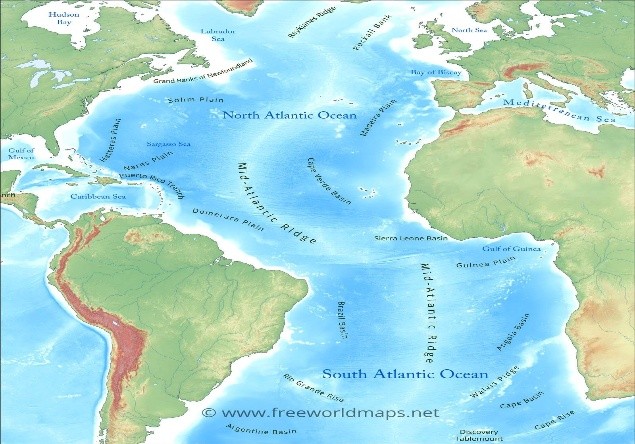
- 20 Aug 2025
In News:
A recent study published in Global and Planetary Change (2025) has uncovered 117-million-year-old mud waves buried nearly 1 km beneath the Atlantic seabed west of Guinea-Bissau. This finding reshapes our understanding of the formation of the Atlantic Ocean, ancient climate patterns, and tectonic shifts during the Cretaceous period.
About Mud Waves
- Definition: Large, rhythmic sedimentary structures formed on the seafloor by persistent bottom currents.
- Age & Size: Approximately 117 million years old; over 1 km long and several hundred meters high.
- Location: Deep seabed, west of Guinea-Bissau, near the Equatorial Atlantic Gateway.
- Composition: Layered sediments preserving evidence of historic ocean circulation.
Formation Process
- Early Atlantic Spillover: Around 117 million years ago, the young North Atlantic Ocean began spilling dense, salty waters into southern basins through the newly formed Equatorial Atlantic Gateway.
- Underwater Avalanches: The influx collided with older, stagnant waters rich in mud and organic matter, triggering massive sediment avalanches.
- Wave Formation: These currents pushed and piled up sediments into wave-like structures, which solidified into permanent mud waves over millions of years.
Scientific Significance
- Rewrites Ocean History: Suggests Atlantic waters circulated much earlier than previously thought.
- Climate Insights: Provides evidence of Cretaceous climate shifts and ancient carbon cycles.
- Tectonic Implications: Offers clues to plate movements shaping Earth’s geography during the breakup of Gondwana.
About the Atlantic Ocean
- Size & Shape: Second-largest ocean after the Pacific; distinctive ‘S’-shape.
- Major Features:
- Mid-Atlantic Ridge: 14,000 km long, ~4 km high, central seafloor mountain range.
- Continental Shelves: Widest along NE America and NW Europe.
- Islands & Seamounts: Azores, Canary Islands, Bermuda, Cape Verde.
- Trenches: Puerto Rico Trench, Romanche Trench (less prominent than Pacific trenches).
- Marginal Seas: Hudson Bay, Gulf of Mexico, Baltic Sea.
India Semiconductor Mission
- 20 Aug 2025
In News:
The Union Cabinet has cleared four new semiconductor manufacturing projects worth ?4,600 crore in Odisha, Punjab, and Andhra Pradesh under the India Semiconductor Mission (ISM). With this, the total number of approved projects under ISM has reached ten across six states, attracting cumulative investments of nearly ?1.60 lakh crore.
Details of Newly Approved Units
- SiCSem Pvt. Ltd. (Odisha):
- In partnership with UK-based Clas-SiC Wafer Fab Ltd.
- India’s first commercial compound semiconductor fabrication unit focused on Silicon Carbide (SiC) devices.
- Capacity: 60,000 wafers and 96 million packaged units annually.
- 3D Glass Solutions Inc. (Odisha):
- Will establish a vertically integrated packaging and embedded glass substrate unit.
- Focus: 3D Heterogeneous Integration modules.
- ASIP Technologies (Andhra Pradesh):
- Joint venture with APACT Co. Ltd., South Korea.
- Annual capacity: 96 million units.
- Applications: Mobile phones, set-top boxes, automobiles, and other electronic devices.
- Continental Device India Pvt. Ltd. (Punjab):
- Brownfield expansion of its Mohali facility.
- Focus: High-power discrete devices – MOSFETs, IGBTs, Schottky diodes, and transistors (using both silicon and SiC).
- Capacity: 158.38 million units annually.
Production from these units is expected to commence within the next 2–3 years.
Progress under ISM
- Launch Year: 2021
- Nodal Ministry: Ministry of Electronics and Information Technology (MeitY)
- Objective: Establish a self-reliant semiconductor and display ecosystem in India.
- Support: Incentive package of ?75,000 crore for fabs, ATMP/OSAT, compound semiconductor plants, and display fabs.
- Capacity Building: Target to train 60,000+ skilled professionals.
- Strategic Significance: Reduce import dependency, boost Atmanirbhar Bharat, and make India a global semiconductor hub.
Major Ongoing Projects under ISM
- Tata-PSMC Fab (Dholera, Gujarat): ?91,526 crore investment; capacity of 50,000 wafers/month for automotive and AI; operational by 2026.
- Micron ATMP (Sanand, Gujarat): ?22,900 crore investment; focus on DRAM and NAND packaging; expected by late 2025.
- Tata TSAT OSAT (Jagiroad, Assam): Output of 48 million chips/day.
- Kaynes OSAT (Sanand, Gujarat): Capacity of 6 million chips/day for telecom and industrial use.
- HCL–Foxconn JV (Uttar Pradesh): To produce 36 million display driver chips/month by 2027.
Burevestnik Missile
- 20 Aug 2025
In News:
According to recent reports, Russia is preparing to conduct fresh trials of the 9M730 Burevestnik – a nuclear-powered cruise missile that has often been described as a “unique” and formidable addition to Moscow’s strategic arsenal.
About the Burevestnik
- The term Burevestnik translates to “storm petrel” in Russian.
- It is a ground-launched, nuclear-powered cruise missile, also capable of carrying a nuclear warhead.
- The system was first unveiled by the Russian President in 2018, as part of six advanced strategic weapons.
- NATO has designated it as SSC-X-9 “Skyfall.”
- In theory, its nuclear propulsion allows it to circle the globe multiple times before striking a target, making it an unprecedented strategic weapon.
Key Features
- Nuclear Propulsion: The missile uses a compact nuclear reactor that heats the surrounding air for thrust.
- Extended Range: Unlike traditional engines restricted by fuel capacity, the nuclear design enables a potential range of up to 22,000 km (14,000 miles).
- Low-Altitude Flight: The system is engineered to fly close to the ground, significantly reducing its detectability by conventional air-defence radars.
- Strategic Significance: Its combination of long endurance and stealthy trajectory poses challenges to existing missile defence systems.
SabhaSaar
- 19 Aug 2025
In News:
The Government of India is set to launch ‘SabhaSaar’, an Artificial Intelligence (AI)-based tool designed to automatically generate structured minutes of gram sabha meetings, thereby enhancing transparency, uniformity, and efficiency in local governance. The tool will be first rolled out in Tripura on Independence Day (August 15) and later extended to other states.
What is SabhaSaar?
- Gram Sabha: It is the primary body of the Panchayati Raj system, consisting of all registered voters of a gram panchayat. Gram sabhas are mandated to meet at least four times a year (January 26, May 1, August 15, and October 2).
- SabhaSaar: An AI tool that converts audio and video recordings of gram sabha meetings into structured minutes, ensuring uniformity across the country.
- Access: Panchayat officials can upload recordings using their e-GramSwaraj login credentials.
Key Features
- AI-driven transcription &summarisation: Generates transcripts, translates into the chosen language, and prepares concise summaries.
- Language inclusivity: Built on Bhashini, the government’s AI-powered language platform, it supports transcription in all major Indian languages (Hindi, Bengali, Tamil, Telugu, Marathi, Gujarati) and English.
- Standardisation: Ensures uniformity of gram sabha documentation nationwide.
- Ease of governance: Facilitates instant access to insights for panchayats, administrative bodies, and rural development projects.
Associated Reforms for Gram Sabhas
- Panchayat NIRNAY Portal: A real-time monitoring system for gram sabha meetings, enabling scheduling, agenda notification to citizens, decision tracking, and transparency in implementation.
- Recent progress: In 2024–25, more than 10,000 gramsabha meetings were held through the NIRNAY platform, with Punjab, Andhra Pradesh, Telangana, and Bihar leading in usage.
Significance
- Governance efficiency: Automates and digitises record-keeping, reducing errors and delays.
- Transparency & accountability: Ensures that decisions of gram sabhas are properly recorded and accessible.
- Public participation: Facilitates better citizen awareness and engagement in local governance.
- Bridging digital divide: Through Bhashini, makes governance accessible across linguistic barriers.
Cheque Truncation System (CTS)
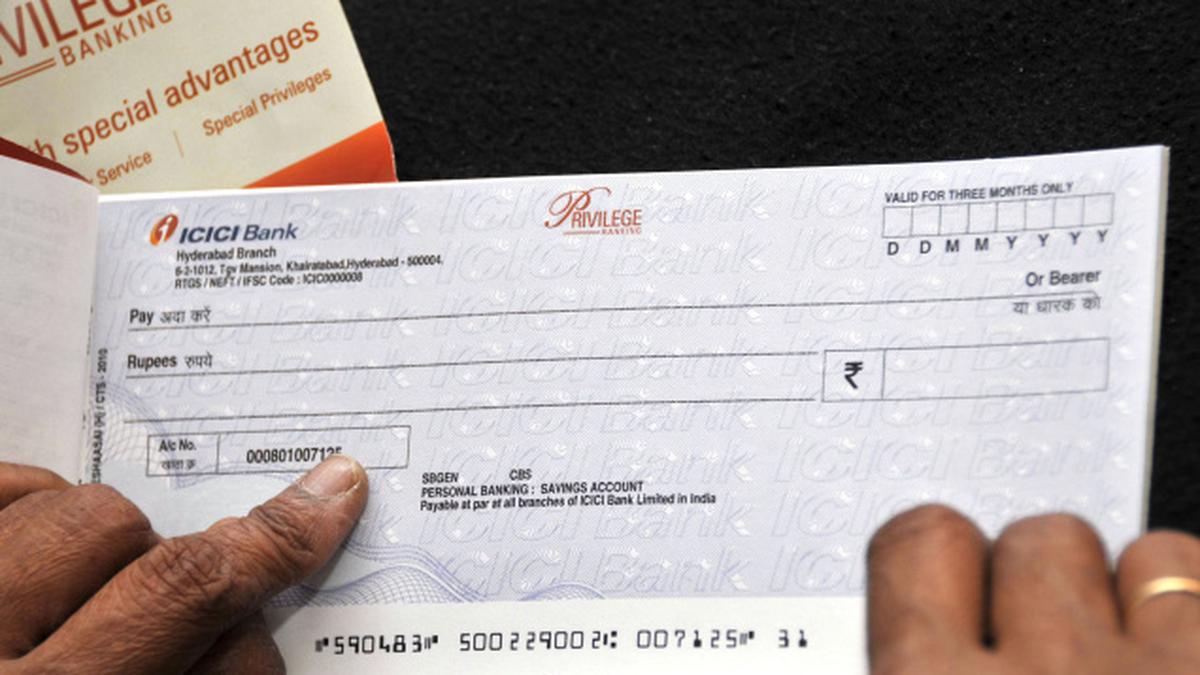
- 19 Aug 2025
In News:
The Reserve Bank of India (RBI) has announced the transition of the Cheque Truncation System (CTS) from batch processing to a continuous clearing mechanism, with settlement on realisation, to be implemented in two phases. This reform aims to further enhance efficiency, reduce delays, and strengthen the digitalisation of cheque-based transactions.
About Cheque Truncation System (CTS)
- Introduced by RBI to speed up cheque clearance and minimise physical movement of instruments.
- Process: Physical cheques are truncated at the collecting bank; only cheque images and MICR data are transmitted electronically.
- Security: Protected by a PKI-based security architecture with dual access controls, user authentication, crypto box, and smart card interfaces.
- CTS-2010 Standards: Only compliant instruments are accepted, ensuring:
- Use of specified paper quality, watermark, and invisible-ink logos.
- Mandatory minimum-security features like void pantograph.
- Standardised cheque design for uniform image-based processing.
Current vs. New System
- Current CTS: Clearing cycle takes up to two working days.
- New System (Continuous Clearing):
- Cheques will be cleared within hours of submission.
- Settlement will occur on realisation basis rather than at fixed batch intervals.
Benefits
- Faster Settlement: Realisation of cheque proceeds on the same day.
- Efficiency Gains: Reduced bottlenecks and delays in processing.
- Cost Savings: Eliminates costs linked to physical cheque movement.
- Security & Reliability: Enhanced authentication safeguards against fraud.
- Better Data Management: Easy storage and retrieval of digital records via a centralised archival system.
- Customer Convenience: Shorter clearing cycles improve banking efficiency for individuals and businesses.
NashaMukt Bharat Abhiyaan (NMBA)

- 19 Aug 2025
In News:
India has intensified efforts to combat substance abuse through community engagement and national-level programmes. Recently, a “Drug-Free India” campaign was held in Mysuru, complementing the larger framework of the NashaMukt Bharat Abhiyaan (NMBA), which has completed five years since its launch in 2020.
About NashaMukt Bharat Abhiyaan (NMBA)
- Launched: 15 August 2020.
- Nodal Ministry: Ministry of Social Justice & Empowerment (MoSJE).
- Objective:
- Reduce drug demand through awareness, prevention, and education.
- Strengthen community response by mobilising youth, women, and local institutions.
- Provide rehabilitation and treatment support to victims of addiction.
Key Features
- Targeted Districts: Implemented in 272 high-risk districts identified through national surveys and Narcotics Control Bureau (NCB) data.
- Three-Pronged Strategy:
- Supply Reduction: Led by NCB.
- Demand Reduction: Community outreach under MoSJE.
- Treatment: Medical interventions coordinated by the Health Department.
- Community-Based Model: District and state committees headed by senior officials ensure localised implementation.
- Technology Integration: Dedicated NMBA app, website, and social media platforms for wider outreach.
- Mass Mobilisation: Partnerships with civil society organisations like Art of Living, Brahma Kumaris, and ISKCON for awareness drives.
Impact
- Public Health: Over 18 crore citizens sensitised, with a focus on youth and women.
- Capacity Building: More than 20,000 Master Volunteers trained nationwide.
- Social Stability: Contributed to reducing drug-related crime and strengthening the social fabric.
- Awareness Events: Local campaigns such as the Drug-Free India drive in Mysuru amplify the Abhiyaan’s outreach at the grassroots level.
Significance
- Strengthens India’s commitment to tackling the drug menace through prevention, rehabilitation, and community participation.
- Complements India’s obligations under international conventions on narcotic drug control.
- Directly contributes to SDG 3 (Good Health and Well-being) and SDG 16 (Peace, Justice, and Strong Institutions).
Human African Trypanosomiasis (HAT)
- 19 Aug 2025
In News:
The World Health Organization (WHO) has certified Kenya as free from human African trypanosomiasis (HAT), or sleeping sickness, marking it the 10th African nation to eliminate the disease as a public health problem (August 2025). This is Kenya’s second victory against a Neglected Tropical Disease (NTD) after eliminating guinea worm disease in 2018.
About Human African Trypanosomiasis (HAT)
- Cause: A vector-borne parasitic disease caused by the protozoa Trypanosoma brucei.
- Vector: Spread by the bite of infected tsetse flies (Glossina spp.).
- Types:
- T.b.gambiense (West & Central Africa): Chronic, slow-progressing form.
- T.b. rhodesiense (East & Southern Africa): Acute, fast-progressing form (present in Kenya).
- Symptoms:
- First stage: Fever, headache, joint pain, swollen lymph nodes.
- Second stage: Parasites invade the central nervous system → confusion, behavioural changes, loss of coordination, and disrupted sleep cycle.
- Fatal if untreated, though effective drugs exist (pentamidine, suramin, fexinidazole, nifurtimox–eflornithine, melarsoprol), supplied free by WHO.
Kenya’s Journey
- History: First detected in early 20th century; no indigenous cases since 2009. Last imported cases reported in 2012 (Masai Mara).
- Control measures:
- Strengthened disease surveillance in 12 facilities across 6 endemic counties (Busia, Siaya, Kisumu, Homa Bay, Migori, Kwale).
- Upgraded laboratories, diagnostic capacity, and trained personnel.
- Controlled tsetse flies and animal trypanosomiasis with veterinary support.
- Partnerships: WHO, Kenya’s Ministry of Health, FIND (Foundation for Innovative New Diagnostics), and community engagement played key roles.
Global Context
- WHO’s NTD Road Map 2021–2030: Target—100 countries to eliminate at least one NTD by 2030.
- So far, 57 countries (including Burundi, Senegal) have achieved elimination of at least one NTD.
- However, cuts in international funding threaten progress, risking resurgence in vulnerable areas.
- Success is critical for meeting SDG 3 (Good Health and Well-being), particularly the target of ending epidemics of NTDs by 2030.
Bhu-Neer Portal
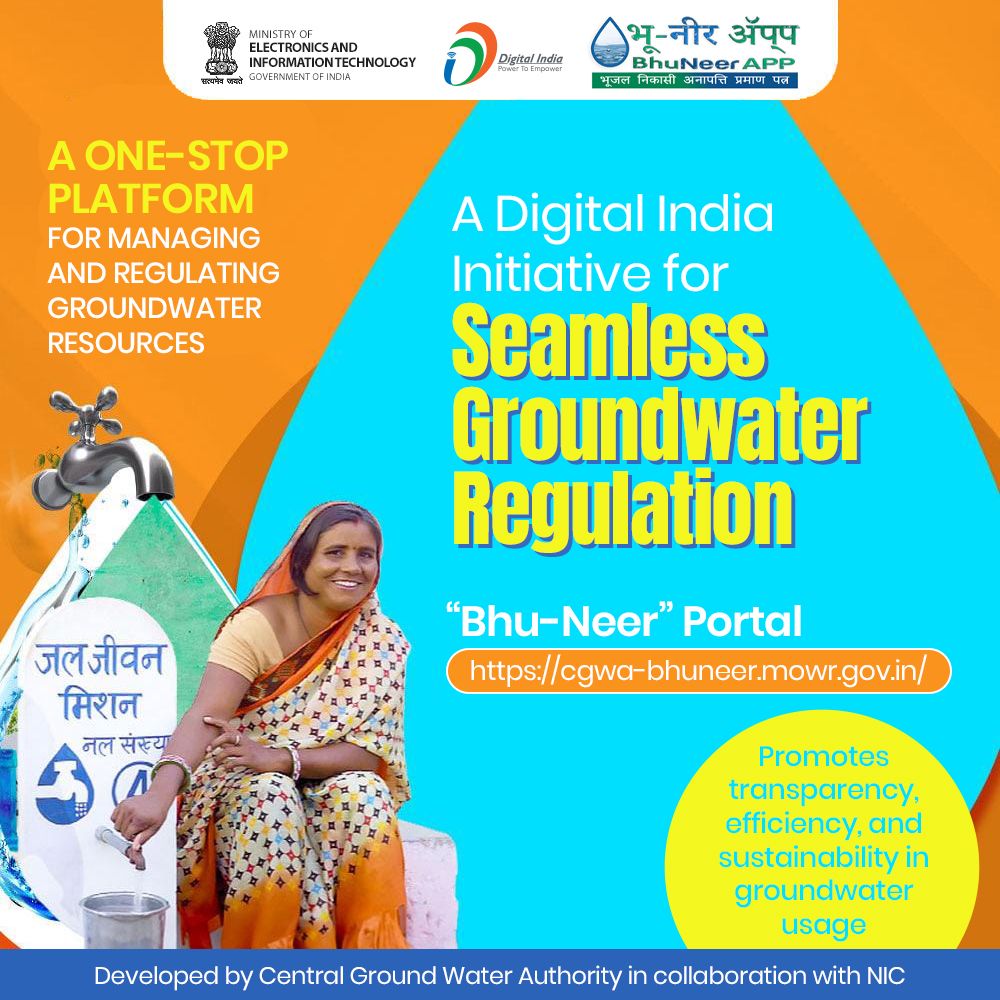
- 19 Aug 2025
In News:
The Bhu-Neer Portal, launched in 2024 during the 8th India Water Week by the Ministry of Jal Shakti, is a digital initiative developed by the Central Ground Water Authority (CGWA) in collaboration with the National Informatics Centre (NIC). It represents a significant reform in the regulation and management of groundwater extraction in India.
Background:
- CGWA: Constituted under the Environment (Protection) Act, 1986, regulates and controls the development and management of groundwater resources in the country.
- NIC: Established in 1976, under MeitY, it supports e-Governance and digital platforms for sustainable development.
- The portal replaces the earlier NOCAP system, offering a more transparent, user-friendly, and efficient mechanism for granting No Objection Certificates (NOCs) for groundwater abstraction.
Objectives:
- To provide a centralised, transparent, and efficient platform for groundwater regulation.
- To ensure compliance with the Guidelines of September 24, 2020 on groundwater abstraction.
- To promote sustainability by integrating water conservation measures such as rooftop rainwater harvesting and sewage treatment plants.
Key Features:
- PAN-based Single ID System for ease of access and integration with payment gateways.
- QR code-enabled NOCs for secure and quick verification.
- Online charges calculator for transparency in fee structures.
- Eligibility checker before filing applications.
- Query module for real-time interaction with CGWA officials.
- SMS and email alerts to track application status.
- Centralised database for groundwater compliance, policies, and monitoring.
Scope:
- Applicable in 19 States/UTs where groundwater regulation is under CGWA’s jurisdiction.
- Covers industries, infrastructure, and mining projects seeking to abstract groundwater.
Significance:
- Strengthens enforcement of groundwater guidelines, curbing indiscriminate extraction.
- Enhances Ease of Doing Business by streamlining NOC procedures.
- Promotes water-use efficiency and sustainable management of depleting groundwater resources.
- Facilitates greater transparency and accountability in resource governance.
Awareness & Outreach:
- The Ministry has organized workshops with industry bodies and Public Interaction Programmes (PIPs) to promote adoption of the portal among stakeholders.
Chagas Disease
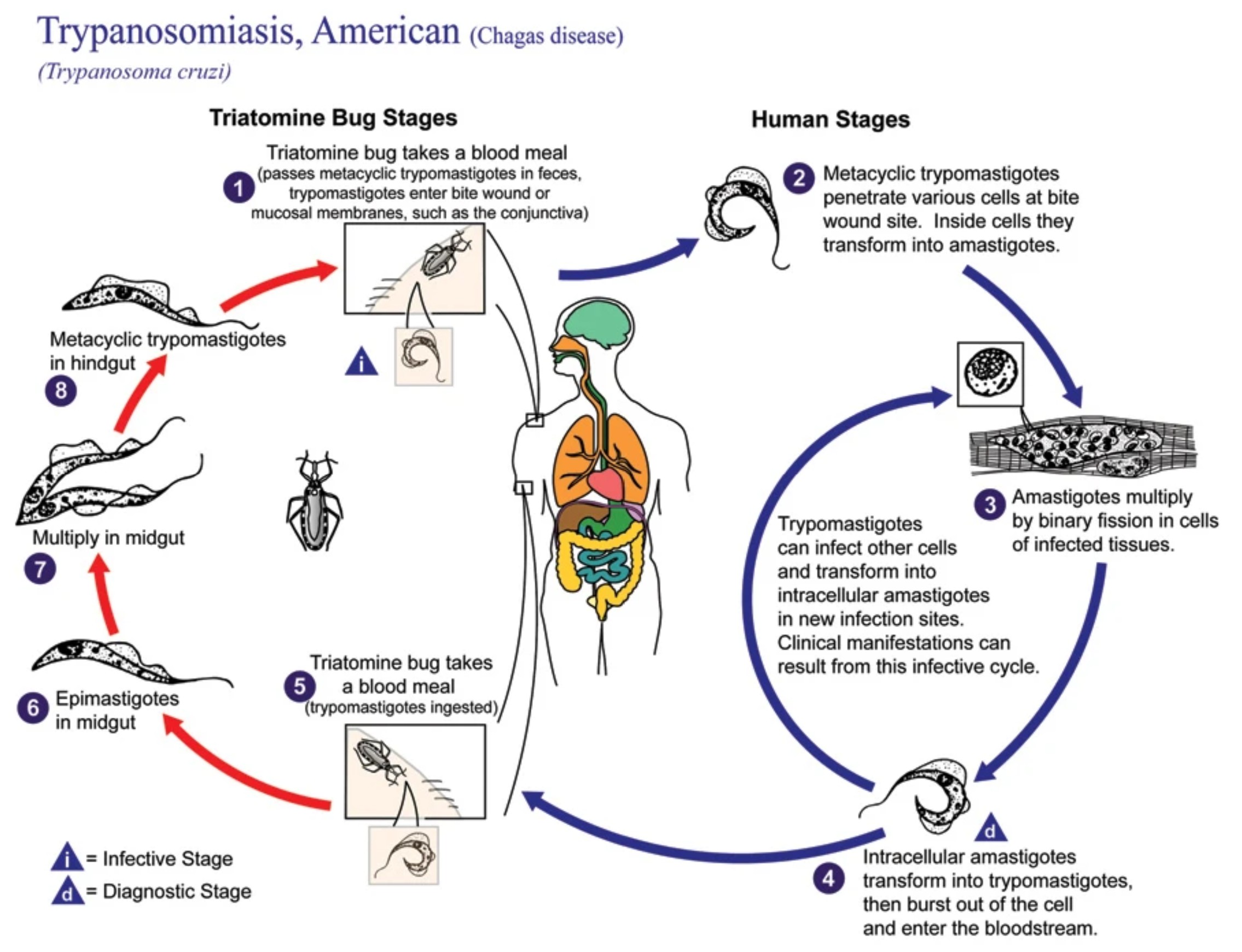
- 18 Aug 2025
In News:
- Chagas disease, or American trypanosomiasis, is an infection caused by the protozoan Trypanosoma cruzi and is transmitted primarily through the feces of triatomine bugs—commonly known as “kissing bugs.”
- It can also spread via congenital transmission (from mother to child), contaminated food or water, blood transfusion, organ transplant, or during laboratory handling.
- Though initially endemic to South and Central America, and Mexico, the disease has now emerged as a global health concern, partly due to migration and local vector presence in places like the southern United States.
Clinical Progression & Treatment
- Many infected individuals remain asymptomatic initially, but chronic infection can lead to severe cardiac and digestive complications if left untreated.
- In the acute phase, antiparasitic treatment is aimed at eliminating the parasite. In the chronic phase, therapeutic focus shifts to managing symptoms since parasite clearance becomes difficult.
Alarming Underinvestment in R&D
- R&D investment for Chagas disease is startlingly low—accounting for only 0.6% of all neglected disease research globally.
- This share is even smaller when compared to other tropical diseases: less than US$1 million was spent on new drug development in 2007, constituting a mere 0.04% of neglected disease R&D funding.
- Between 2009 and 2018, US$236 million was invested in Chagas-related R&D—just 0.67% of the total neglected disease investment. Only a handful of funders (NIH, industry, Wellcome Trust) accounted for the majority.
- Patent data reflect this disparity, especially in vaccine development—highlighting significant underinvestment relative to the global health threat posed by Chagas.
- To put it in perspective, malaria receives 20 times more funding than Chagas.
Pathways to Progress
- Innovative Therapies: Research shows promise in novel, low-cost immunotherapeutic agents derived from cyanobacteria that may offer safer and more tolerable options than current drugs.
- Campaigns and Advocacy: Initiatives like the “Chagas: Time to Treat” campaign by DNDi (Drugs for Neglected Diseases Initiative) emphasize urgent need for:
- Affordable, pediatric formulations
- Safe, field-ready treatments for chronic phases
- Greater public and private funding for R&D.
Broader Significance and Current Calls to Action
- Chagas disease remains among the most neglected tropical diseases, impacting an estimated 6 million people, causing approximately 12,000 deaths annually, and contributing to over 30,000 new cases each year—mainly in Latin America.
- Effective solutions require:
- Improved surveillance and mandatory case notification systems
- Enhanced training and diagnostic tools for health workers
- Integration of One Health approaches (veterinary, environmental control, and human health) in vector management.
- Investment in neglected disease R&D delivers substantial societal returns—studies suggest $1 spent yields $405 in broader economic and health benefits.
18th International Olympiad on Astronomy and Astrophysics
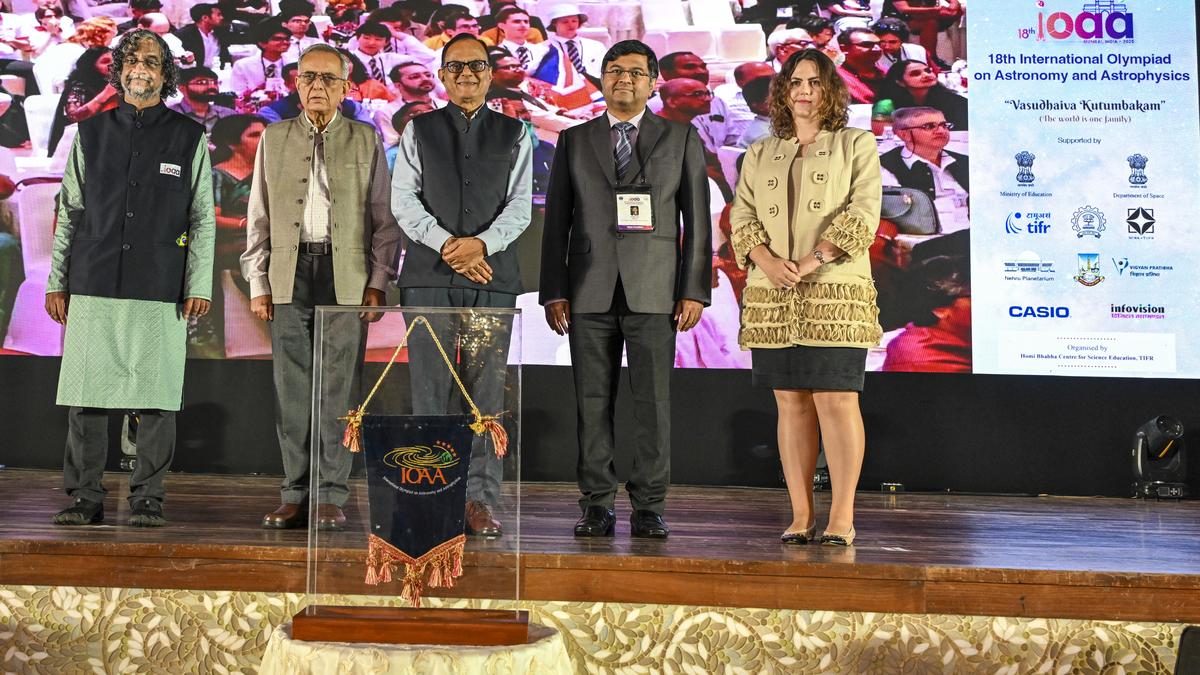
- 18 Aug 2025
In News:
India is hosting the 18th International Olympiad on Astronomy and Astrophysics (IOAA) in Mumbai, Maharashtra, with participation from over 300 young astronomers from 64 countries. The event is jointly organised by the Homi Bhabha Centre for Science Education (HBCSE), Tata Institute of Fundamental Research (TIFR), and the Union Ministry of Education.
About IOAA:
- A premier global competition for high-school students in astronomy, astrophysics, and observational sciences.
- Tests theoretical knowledge, data analysis skills, and observational abilities.
- Objectives:
- Promote scientific thinking and problem-solving in space sciences.
- Encourage international cooperation and cultural exchange.
- Inspire careers in space sciences and research.
- Showcase India’s scientific and technological progress.
Features of the 18th Edition:
- Largest-ever IOAA with record participation from 64 nations.
- Competition includes written exams, data analysis, and night-sky observations.
- Highlighting India’s legacy: From Aryabhatta’s discoveries to modern space missions like Chandrayaan-3 (historic landing near Moon’s South Pole) and Aditya-L1 (India’s first solar observatory).
- Showcasing STEM Empowerment:
- Atal Tinkering Labs benefitting over 10 million students through hands-on STEM learning.
- One Nation One Subscription scheme providing free access to global research journals for students and researchers.
- Global Collaboration: Participation in mega-science projects such as the Square Kilometre Array and LIGO-India.
Significance for India:
- Strengthens India’s global image as a leader in space sciences and STEM education.
- Provides a platform for showcasing India’s scientific achievements and educational initiatives.
- Encourages the next generation to pursue careers in astronomy, astrophysics, and research.
- Aligns with India’s broader vision of linking science, innovation, and human welfare.
UNDP Equator Initiative Award 2025
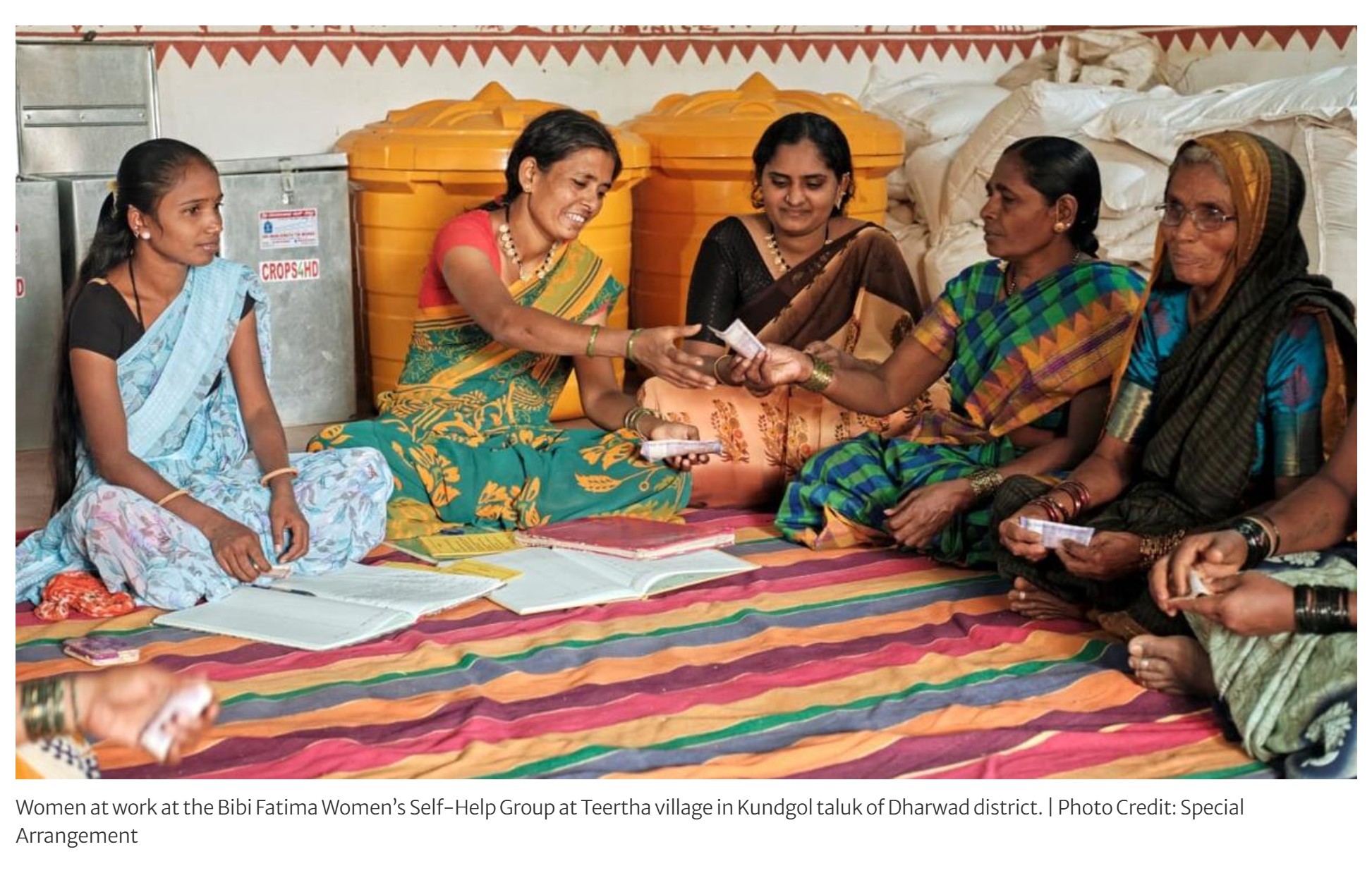
- 18 Aug 2025
In News:
The Bibi Fatima Women’s Self-Help Group (SHG) from Teertha village, Kundgol taluk, Dharwad district, Karnataka, has won the prestigious Equator Initiative Award 2025. The award, often referred to as the Nobel Prize for Biodiversity Conservation, honours community-led, nature-based solutions for sustainable development.
About the Equator Initiative Award:
- Organiser: United Nations Development Programme (UNDP) under its Equator Initiative.
- Nature: Recognises local and indigenous communities for biodiversity conservation, ecological resilience, and poverty reduction.
- Frequency: Biennial.
- Prize: Includes a cash award of $10,000 (approx. ?8.5 lakh).
- Theme (2025):“Women and Youth Leadership for Nature-Based Climate Action”.
- Eligibility: The initiative must have been active for at least three years, community-based, and contribute to at least two Sustainable Development Goals (SDGs).
In 2025, Bibi Fatima SHG was the only Indian winner, alongside groups from Argentina, Brazil, Ecuador, Indonesia, Kenya, Papua New Guinea, Peru, and Tanzania.
Achievements of Bibi Fatima SHG:
- Formation: Established in 2018 by 15 women, with support from Sahaja Samruddha (NGO), Indian Institute of Millets Research (IIMR, Hyderabad), and CROPS4HD.
- Eco-Friendly Farming: Revived millet-based mixed cropping systems on rainfed lands through natural and climate-resilient farming practices in nearly 30 villages.
- Community Seed Bank: Distributes millet seeds free of cost to farmers, strengthening local seed sovereignty.
- Food & Nutrition Security: Promoted millets to improve dietary diversity and resilience against climate change.
- Women-led Enterprise: Established a solar-powered millet processing unit with support from SELCO Foundation, entirely managed by women.
- Value Addition & Marketing: Produces millet-based products such as rotis and vermicelli, boosting local markets.
- Livelihood Diversification: Expanded into livestock rearing, horticulture, and farmers’ markets, improving incomes of small and marginal households.
- Partnerships: Collaborates with Devadhanya Farmer Producer Company to scale rural, agriculture-based enterprises.
Significance:
- Strengthens the role of women’s leadership in climate action and sustainable agriculture.
- Demonstrates a successful community-driven model for biodiversity conservation, food security, and rural entrepreneurship.
- Aligns with India’s efforts to revive millets (International Year of Millets 2023) and promote climate-resilient farming.
- Advances multiple SDGs – notably SDG 1 (No Poverty), SDG 2 (Zero Hunger), SDG 5 (Gender Equality), SDG 12 (Responsible Consumption and Production), and SDG 13 (Climate Action).
State Health Regulatory Excellence Index

- 18 Aug 2025
In News:
The Union Health Secretary, Smt. Punya Salila Srivastava, recently launched the State Health Regulatory Excellence Index (SHRESTH), a first-of-its-kind national framework to benchmark and strengthen state drug regulatory systems through transparent, data-driven assessments. The initiative has been developed by the Central Drugs Standard Control Organization (CDSCO) in collaboration with states and UTs.
About SHRESTH:
- Objective: To improve the performance of state drug regulatory authorities, ensuring drug safety, quality, and efficacy across India.
- Nature: Functions as a virtual gap-assessment tool, enabling states to measure their regulatory preparedness and move towards maturity certification.
- Categories of States:
- Manufacturing States: Assessed on 27 indices under five themes – Human Resources, Infrastructure, Licensing Activities, Surveillance Activities, Responsiveness.
- Primarily Distribution States/UTs: Assessed on 23 indices under similar themes.
- Process:
- States/UTs submit predefined data to CDSCO by the 25th of every month.
- Metrics are scored on the 1st of the following month and shared with all states/UTs.
- Significance:
- Enables targeted improvements in infrastructure, digitisation, inspection, and grievance redressal.
- Promotes cross-learning by sharing best practices of top-performing states.
- Provides a roadmap rather than a scorecard, encouraging harmonization of drug regulatory systems nationwide.
Wallacean Hominids
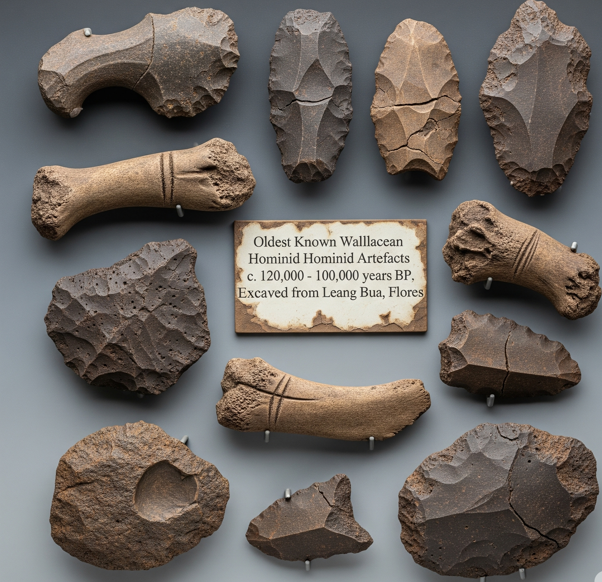
- 18 Aug 2025
In News:
Recent archaeological findings on Sulawesi Island, Indonesia, have revealed stone tools dating back to nearly 1.5 million years ago, marking the earliest known evidence of human presence in the Wallacea region.
Key Findings:
- Archaeologists from Australia and Indonesia discovered small, chipped stone tools in the Soppeng region of South Sulawesi.
- The artefacts, likely used to cut small animals and carve rocks, were found along with animal teeth.
- Radioactive dating suggests the tools are up to 1.48 million years old.
- These findings were published in Nature (August 2025).
Significance:
- The artefacts are attributed to Homo erectus, pre-historic hominids that lived long before the emergence of Homo sapiens.
- Previously, Homo erectus in Wallacea were thought to have occupied only Flores (Indonesia) and Luzon (Philippines) around 1.02 million years ago.
- The Sulawesi discovery pushes back the timeline by almost half a million years, challenging earlier assumptions that Homo erectus lacked the capacity for long-distance sea crossings.
- It provides crucial evidence of early maritime dispersal and migration patterns of ancient humans from the Asian mainland into island ecosystems.
About Wallacea:
- Wallacea is a biogeographic region in Eastern Indonesia, comprising islands such as Sulawesi, Lombok, Flores, Timor, and Sumbawa, situated between Borneo–Java and Australia–New Guinea.
- The region is named after Alfred Russel Wallace, the naturalist who studied its distinct biodiversity.
- It acts as a natural transitional zone between the fauna of Asia and Australia.
Satellite Internet
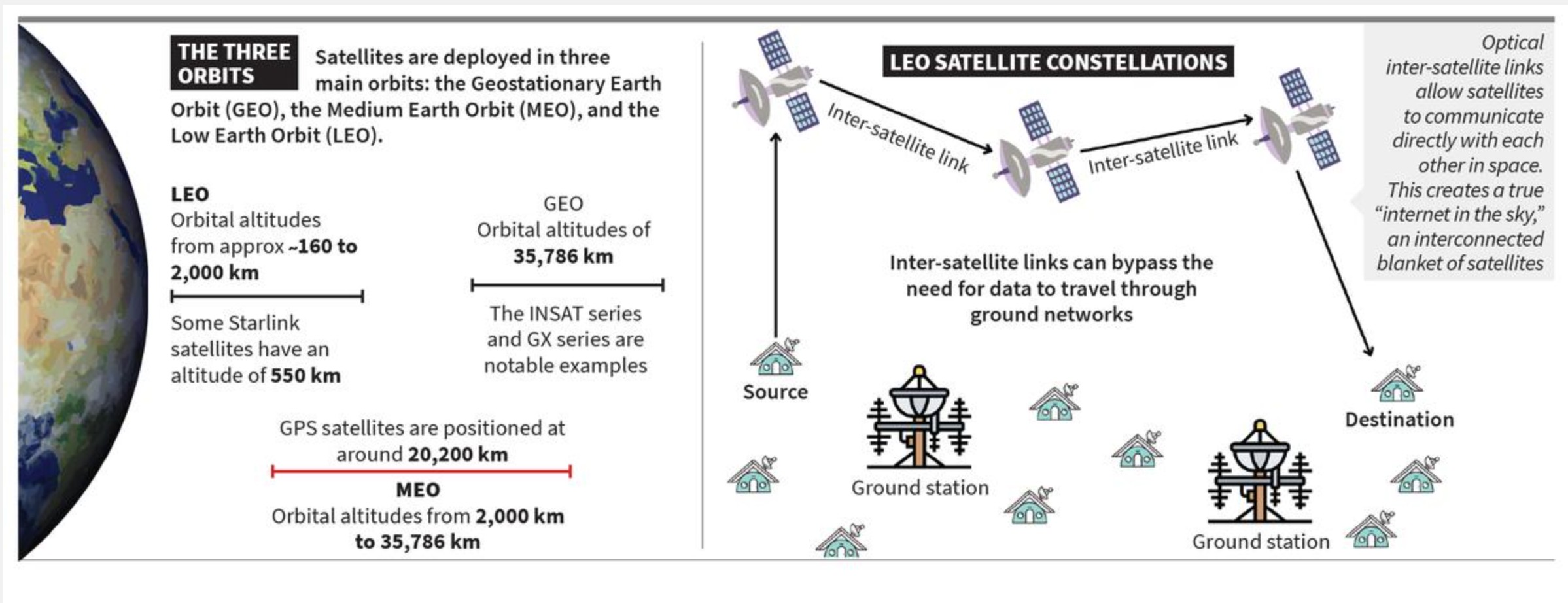
- 17 Aug 2025
In News:
The advent of satellite internet, spearheaded by mega-constellations like Elon Musk’s Starlink, is set to transform global connectivity. With Starlink’s expected entry into India, this technology carries vast implications for bridging the digital divide, disaster resilience, national security, and economic development.
Why Satellite Internet?
Conventional internet networks rely on cables and towers, which are efficient in urban areas but face limitations:
- Economically unviable in sparsely populated or remote regions.
- Vulnerable to disruptions from floods, earthquakes, or cyclones.
- Restricted mobility, failing to meet connectivity needs for ships, aircraft, or defence units in rugged terrains.
Satellite internet addresses these gaps by providing global, resilient, and mobile coverage, independent of terrestrial infrastructure. It can be rapidly deployed in emergencies and enables connectivity in conflict zones or offshore locations.
How Satellite Internet Works
A satellite internet network has two key segments:
- Space Segment: Satellites orbiting Earth, carrying communication payloads (antennas, transponders, onboard processors).
- Ground Segment: User terminals, antennas, and ground stations that link devices to satellites.
Data flow: When a user sends a request, the signal goes to the satellite → routed to a ground station connected to the internet backbone → response sent back via satellite to the user.
Seamless handover: Especially in Low Earth Orbit (LEO), satellites move fast (~27,000 km/hr) and stay over a region only for minutes. Smart handovers between satellites ensure uninterrupted connectivity.
Types of Orbits
|
Orbit Type |
Altitude |
Advantages |
Limitations |
Example |
|
Geostationary Earth Orbit (GEO) |
~35,786 km |
Covers ~? of Earth; stable position |
High latency, no polar coverage |
Viasat Global Xpress |
|
Medium Earth Orbit (MEO) |
2,000–35,786 km |
Balanced coverage & latency |
Needs constellations; still moderate latency |
O3b Network |
|
Low Earth Orbit (LEO) |
<2,000 km |
Very low latency; smaller, cheaper satellites |
Small footprint; requires mega-constellations |
Starlink (7,000+ satellites, plans for 42,000) |
Key Features of Satellite Internet
- Global Coverage: Works across oceans, mountains, deserts, and polar regions.
- Dual-use Technology: Supports both civilian services and military operations.
- Rapid Deployment: Can be activated within hours during emergencies.
- Network Resilience: Independent of local telecom infrastructure.
- Mega-Constellations: Thousands of interconnected satellites with optical inter-satellite links create an “internet in the sky,” reducing reliance on ground stations.
Applications
- Civilian: Expands broadband to rural and island communities, supports e-governance, smart farming, education, and environmental monitoring.
- Disaster Management: Provides resilient connectivity after cyclones, floods, or earthquakes (e.g., Hurricane Harvey, 2017).
- Defence & Security: Ensures battlefield communication, drone operations, and secure links in high-altitude zones (e.g., Indian Army at Siachen, Ukraine’s defence using Starlink).
- Transport: Improves aviation, shipping, and autonomous vehicle navigation.
- Healthcare: Enables telemedicine and remote patient monitoring.
- Space Economy: Strengthens global trade, logistics, and exploration.
Orbiting Carbon Observatories (OCO)Program

- 17 Aug 2025
In News:
The Trump administration has proposed terminating NASA’s Orbiting Carbon Observatories (OCO) program, a key initiative monitoring global carbon dioxide (CO?) emissions and plant health. The move, part of the 2026 federal budget, has triggered concerns among scientists and lawmakers given its implications for climate monitoring and policy.
About the Orbiting Carbon Observatories (OCO) Program
- Objective: Dedicated Earth remote-sensing satellites designed to observe atmospheric CO? and study its role in climate change.
- Timeline:
- OCO-1 (2009): Failed shortly after launch.
- OCO-2 (2014): Successfully launched, providing high-precision global CO? data.
- OCO-3 (2019): Installed on the International Space Station (ISS) to enhance observations.
- Significance:
- Produced high-resolution maps of plant growth, drought stress, and carbon fluxes.
- Helped discover that the Amazon rainforest emits more CO? than it absorbs, while boreal forests in Canada and Russia are turning into unexpected carbon sinks.
- Tracked photosynthesis rates to forecast crop yields, drought conditions, and food shortages—data crucial for global food security and preventing civil unrest.
- Utilized by the US Department of Agriculture and private agricultural firms for crop yield predictions and rangeland management.
Reasons for Proposed Termination
- The administration claims the missions are “beyond their prime mission” and need to align with new budgetary priorities.
- Funding for OCO missions is excluded from the proposed 2026 budget.
International dimension:
-
- Scientists are exploring partnerships with Japan and Europe to keep OCO-3 operational on the ISS.
- Private or philanthropic funding is also being considered, though experts warn this is unsustainable.
Dardanelles Strait
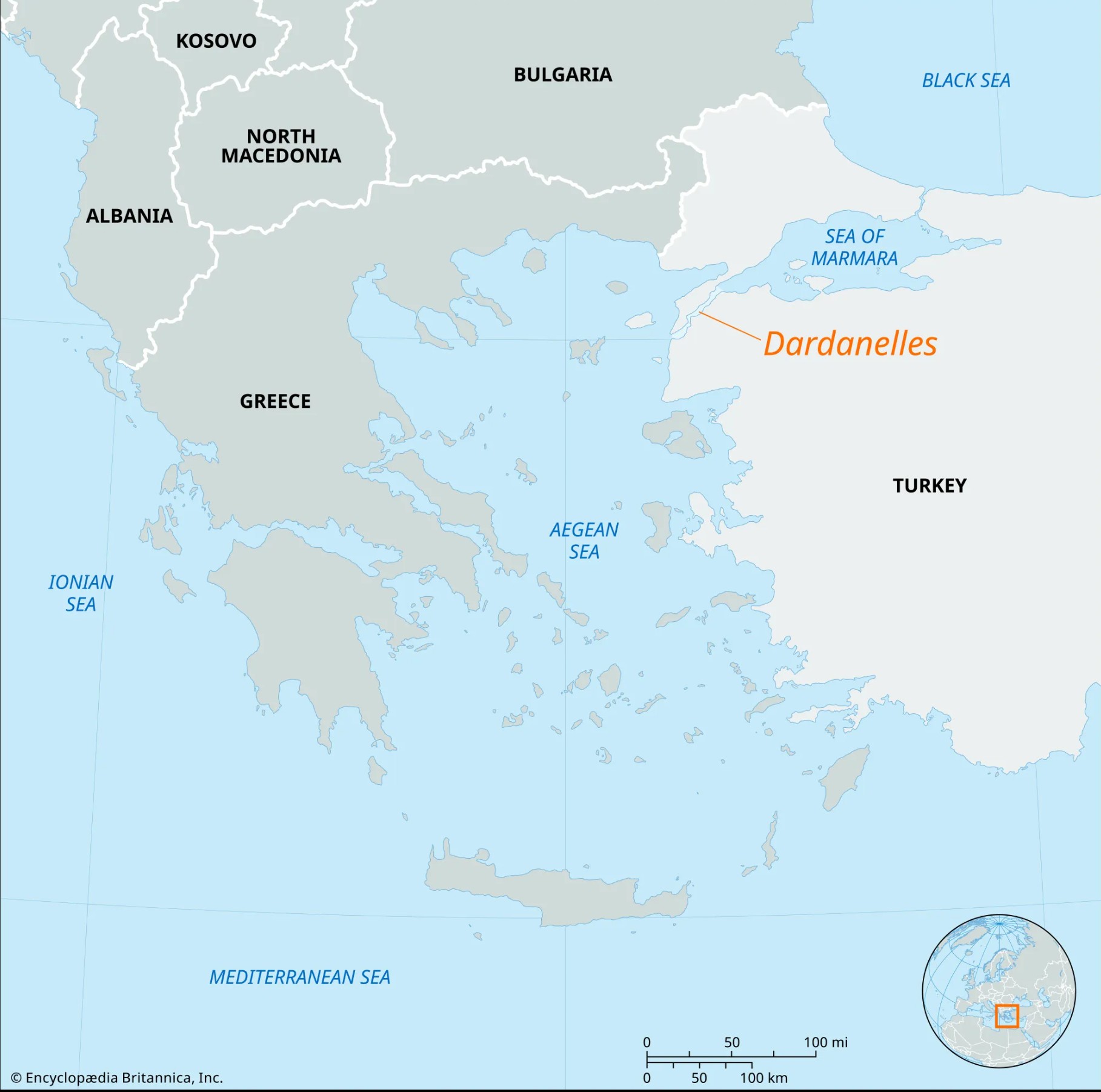
- 17 Aug 2025
In News:
The Dardanelles Strait, a narrow but vital maritime passage in northwestern Turkey, was recently closed to shipping traffic after severe forest fires broke out near Çanakkale province. The incident highlights the strait’s enduring strategic, economic, and environmental importance.
Geographical Overview
- Length: 61 km; Width: 1.2–6.5 km.
- Depth: Average ~55 m, maximum ~90 m in central narrow sections.
- Location: Separates the Gallipoli Peninsula (Europe) from Anatolia (Asia), lying entirely within Turkey’s territorial waters.
- Connectivity: Links the Aegean Sea to the Sea of Marmara, and with the Bosphorus Strait, forms the Turkish Straits system, connecting the Mediterranean to the Black Sea.
- Hydrology: Two-way currents – surface flow from Marmara to the Aegean, undercurrent in the reverse direction.
- Ports: Major ones include Gallipoli, Eceabat, and Çanakkale.
Strategic and Economic Significance
- Maritime Trade: Nearly 46,000 vessels crossed the Dardanelles in 2024, underscoring its role as a global shipping artery between Europe and Asia.
- Chokepoint Status: Serves as a gateway to Istanbul and the Black Sea, shaping regional power dynamics.
- Fisheries: Rich in migratory fish species, supporting local economies.
- Geopolitical Role: Critical for Turkey’s strategic influence, NATO security, and Black Sea maritime routes.
Historical Importance
- Known in antiquity as the Hellespont.
- Greek mythology: Associated with the tale of Hero and Leander.
- Ancient campaigns: Xerxes I of Persia crossed via a pontoon bridge (480 BCE); Alexander the Great crossed during his conquest of Asia (334 BCE).
- Modern conflicts: Key battleground in World War I’s Gallipoli Campaign, where Allied forces attempted but failed to seize control.
Nüshu: Revival of the World’s Only Women’s Script

- 17 Aug 2025
In News:
Nüshu, literally meaning “women’s writing” in Chinese, is a unique script originating in the 17th century in Jiangyong, Hunan Province. Developed when women were excluded from formal education, it functioned as a private communication system among women through letters, embroidery, songs, and poetry. With around 500 core characters, it is the only known writing system in the world created and used exclusively by women.
Distinctive Features
- Form: Rhomboid, thread-like characters derived from traditional Chinese script; composed of dots, horizontals, virgules, and arcs.
- Medium of Use: Mothers taught daughters; used among sisters and friends. Content included folk songs, riddles, autobiographies, and translations of Chinese poems.
- Symbolism: Embodied sisterhood, resilience, and empowerment in a patriarchal society.
Historical Transformation and Conservation
- Decline: By the late 20th century, Nüshu faced near extinction with the death of its last native writers such as Yi Nianhua (1988–89).
- Revival Efforts: Since the 21st century, museums, training centers, and manuals have been established to preserve and promote Nüshu.
- National Recognition: Inscribed on China’s National Intangible Cultural Heritage list; efforts are ongoing for UNESCO recognition.
- Community Role: Women inheritors and enthusiasts continue to practice Nüshu as a cultural art form, while scholars study its historical and social value.
Technology and Modern Adaptation
- Digital Archiving: Unicode integration, high-resolution scans, and cloud storage aid global accessibility.
- AI Tools: Machine learning assists in translation and decoding.
- Global Outreach: Social media, e-courses, AR/VR exhibitions, and documentaries such as Hidden Letters have amplified its relevance.
- Cultural Integration: Featured in creative mediums—e.g., WeChat memes celebrating Chinese female athletes during the Paris 2024 Olympics—blending heritage with contemporary culture.
Social and Cultural Impact
- Women’s Empowerment: Nüshu fosters confidence, independence, and identity among modern women, especially Gen Z.
- Dialogue Across Genders: Increasing interest among men reflects its role as a bridge between genders, expanding from women’s private script to a shared cultural heritage.
- Economic Potential: Provides livelihood through digital art, tourism, crafts, and cultural exchanges.
Smooth-Coated Otters
- 17 Aug 2025
In News:
In a significant conservation development, the National Zoological Park (NZP), Delhi, has welcomed a pair of smooth-coated otters from the Shyamaprasad Mukherji Zoological Garden, Surat, marking the first such arrival in two decades. The last otter at the Delhi Zoo died in 2004. The transfer took place under a Central Zoo Authority (CZA)-approved exchange programme.
About Smooth-Coated Otters (Lutrogaleperspicillata)
- Taxonomy: The only extant member of the genus Lutrogale.
- Distribution: Found across India, southern and Southeast Asia, China, and Iraq (small population).
- Habitat: Freshwater wetlands, mangroves, peat swamps, forested rivers, lakes, rice paddies; capable of long overland movements.
- Features:
- Largest otter species in Southeast Asia.
- Smooth, short fur (brown dorsally, lighter ventrally) with water-repellent guard hairs.
- Social animals, hunt in groups, often using V-formations while fishing upstream.
- Threats:
- Habitat loss due to urbanization, agriculture, and pollution (fertilizers, pesticides).
- Poaching for fur and pet trade.
- Conservation Status: IUCN – Vulnerable.
Landmark Study on Dengue Immunity
- 14 Aug 2025
In News:
A new study published in Science Translational Medicine has provided critical insights into dengue immunity and vaccine development. The research, conducted in the Philippines with nearly 3,000 children, highlighted the role of Envelope Dimer Epitope (EDE)-like antibodies as a key driver of broad, cross-serotype protection against dengue virus (DENV).
Dengue: Global Challenge
- Caused by four serotypes (DENV1–DENV4).
- Most common vector-borne viral disease, affecting nearly half the world’s population, particularly in Southeast Asia, Africa, and the Americas.
- Economic burden in Southeast Asia exceeds that of 17 other diseases including hepatitis B and Japanese encephalitis.
- Severe dengue typically occurs during secondary infection with a different serotype due to Antibody-Dependent Enhancement (ADE), where non-neutralising antibodies worsen infection.
Current Vaccines
- Dengvaxia – Licensed in some countries, but recommended only for those with prior dengue exposure (requires laboratory confirmation).
- QDENGA – Approved in some regions, effective mainly in pre-exposed individuals.
- Limitation: Both vaccines carry ADE risks for dengue-naïve individuals.
What are EDE-like Antibodies?
- Definition: Antibodies targeting Envelope Dimer Epitope (EDE), a quaternary structure formed by paired E proteins on the viral surface.
- Function: Broadly neutralise all four serotypes by preventing viral entry into cells.
- Key Features:
- Broadly neutralising, cross-reactive across serotypes.
- Common in individuals with multiple infections or vaccinated with prior exposure.
- Rare in primary infection (detected in only 4–12% of such cases).
- Strongly correlated with reduced disease severity and hospitalisation risk.
- Potential biomarker for evaluating vaccine efficacy.
Study Highlights
- Conducted during a dengue outbreak in Cebu, Philippines (DENV2 dominant, followed by DENV3).
- Children with secondary immunity showed high prevalence of EDE-like antibodies (82–90%).
- These antibodies explained 42–65% of the protective effect of neutralising antibodies and 41–75% of E protein-binding antibodies, making them the primary determinant of broad protection.
- Findings:
- Less protective against new infections but highly effective against severe disease.
- Boosted by both natural infection and vaccination.
- Strong predictor of reduced symptomatic dengue and hospitalisation.
Implications
- Vaccine Development: Targeting EDE could overcome ADE risks and provide universal dengue protection.
- Public Health: Potential for safer immunisation strategies in endemic regions like India.
- Therapeutics: Basis for developing monoclonal antibody treatments to deliver rapid, cross-serotype protection during outbreaks.
Ladakh Protest: Demand for Statehood and Inclusion in Sixth Schedule
- 14 Aug 2025
In News:
In August 2025, a large protest rally was held in Kargil, led by climate activist Sonam Wangchuk and Ladakh MP Mohmad Haneefa Jan, demanding statehood for Ladakh and its inclusion under the Sixth Schedule of the Constitution. The rally marked the conclusion of a three-day hunger strike and was organized jointly by the Leh Apex Body and the Kargil Democratic Alliance (KDA).
The protesters criticized the delay in resuming dialogue by the Centre, despite the formation of a high-powered committee by the Union Home Ministry in January 2023 to address Ladakh’s concerns. Earlier discussions led to the introduction of a domicile policy with a 15-year eligibility criterion beginning from 2019.
Background
- On 5 August 2019, Article 370 was abrogated, and Jammu & Kashmir was bifurcated into two Union Territories—J&K with legislature and Ladakh without legislature.
- Since then, political groups and civil society in Ladakh have been demanding statehood for democratic representation and Sixth Schedule inclusion to safeguard land, resources, and cultural identity.
Ladakh Statehood Demand
- Objective: To grant a democratically elected legislature with full legislative powers.
- Rationale: Local representation, protection of fragile ecology, and preservation of Ladakh’s unique cultural heritage.
Sixth Schedule of the Constitution
- Constitutional Basis: Articles 244(2) and 275(1).
- Current Applicability: Assam, Meghalaya, Tripura, and Mizoram.
- Purpose: To safeguard tribal communities’ rights through Autonomous District and Regional Councils (ADCs).
Key Features
- Autonomous Councils: Elected bodies with powers over land, forests, agriculture, village administration, and social customs.
- Judicial Powers: Village councils/courts to resolve community disputes.
- Revenue & Taxation: Power to levy taxes on land, trade, and professions.
- Governor’s Role: Can alter council boundaries and approve laws.
- Financial Provisions: Grants-in-aid from the Consolidated Fund of India under Article 275(1).
- Cultural Safeguards: Protection against alienation of tribal land and exploitation by outsiders.
Significance of Demand
- Democratic Governance: Ensures political autonomy and local participation.
- Cultural Protection: Safeguards Ladakh’s Buddhist and tribal identity.
- Environmental Security: Allows better control over fragile Himalayan ecosystems.
- Strategic Importance: Strengthens governance in a border region critical for India’s national security.
Operation Falcon and Rhino Conservation in Assam
- 14 Aug 2025
In News:
The Assam government has achieved major success in protecting the greater one-horned rhinoceros through Operation Falcon, a joint initiative of the Assam Police and Forest Department launched in 2024. The operation was initiated after the killing of two rhinos prompted a shift in anti-poaching strategy.
Key Outcomes
- 42 poachers arrested across districts including Biswanath (18), Darrang (8), Nagaon (6), Karbi Anglong (5), Sonitpur (2), and one each in Udalguri, Dibrugarh, and Cachar.
- Six major poaching gangs with links to illegal trade through Myanmar dismantled.
- Nine poaching attempts foiled using digital and on-ground intelligence.
- Zero rhino killings reported in 2025 so far.
Conservation Impact
- Rhino poaching in Assam has dropped by 86% since 2016, when the BJP came to power.
- Annual data shows steady decline: one rhino killed in 2021, none in 2022, one in 2023, two in 2024, and none so far in 2025.
- Enhanced coordination, intelligence-driven operations, and rapid response mechanisms have been key factors.
About Assam’s Rhinos (Census 2022)
- Total Rhinos: 2,895 in Assam.
- Distribution:
- Kaziranga National Park & Tiger Reserve – 2,613 (largest habitat, ~1,300 sq km).
- Orang National Park & Tiger Reserve – 125.
- Pobitora Wildlife Sanctuary – 107.
- Manas National Park & Tiger Reserve – 50.
Significance of Operation Falcon
- Biodiversity Protection: Safeguards the greater one-horned rhino, listed as Vulnerable on the IUCN Red List.
- International Recognition: Strengthens India’s image in global wildlife conservation.
- Eco-Tourism Boost: Ensures safety in parks like Kaziranga, enhancing Assam’s tourism appeal.
Sukhna Lake
- 14 Aug 2025
In News:
The Chandigarh Administration recently closed the floodgate of Sukhna Lake after water levels receded from the near-danger mark.
About Sukhna Lake
- Type: Artificial, rain-fed lake at the foothills of the Shivalik Hills, Chandigarh.
- Creation: Built in 1958 by damming the Sukhna Choe, a seasonal stream.
- Size: Originally 188 ha (now ~150 ha); length 1.52 km, width 1.49 km.
- Depth: Originally 18 ft, reduced to ~8.5 ft due to siltation.
- Ecological Importance:
- Declared a National Wetland by the Government of India.
- Habitat for ~30 species of resident and migratory birds, including Siberian ducks, storks, and cranes.
- Part of Sukhna Wildlife Sanctuary.
- Recreational Importance:
- Longest channel for rowing and yachting events in Asia.
- Surrounded by Nek Chand’s Rock Garden (west) and a golf course (south).
Pfizer’s Next-Generation Vaccine
- 14 Aug 2025
In News:
- Pfizer has introduced the 20-valent pneumococcal conjugate vaccine (PCV20) for adults in India.It offers protection against 20 pneumococcal serotypes, which are responsible for most pneumococcal diseases.
About Pneumococcal Disease
- Cause: Infection by Streptococcus pneumoniae (pneumococcus), an encapsulated bacterium with a polysaccharide capsule (major virulence factor).
- Serotypes: ~90 identified worldwide; only a few cause the majority of infections.
Types of Illness
- Mild: Ear infections, sinus infections.
- Severe:
- Pneumonia
- Bloodstream infections (septicemia)
- Meningitis (CNS infection)
Public Health Burden
- Major global health concern.
- Most vulnerable groups: young children and the elderly.
- Mortality: Around 1 million child deaths annually due to pneumococcal disease.
- Transmission: Direct contact with respiratory secretions of patients or asymptomatic carriers.
Treatment and Prevention
- Treatment: Antibiotics.
- Challenge: Rapidly growing antimicrobial resistance in pneumococci.
- Prevention: Vaccination remains the most effective strategy, especially for:
- Children under 5 years
- Elderly individuals
- Immunocompromised patients
Khelo India ASMITA
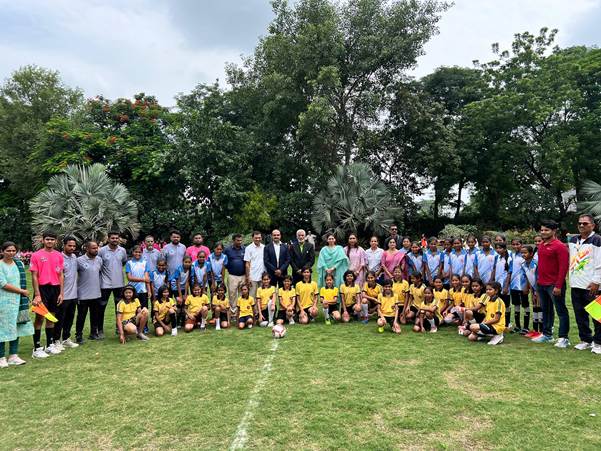
- 13 Aug 2025
In News:
The Khelo India ASMITA Football League 2025-26 was inaugurated in Jalgaon, Maharashtra, by the Minister of State for Youth Affairs & Sports, Raksha Khadse. The initiative is a key step in promoting gender-inclusive sports participation and empowering women athletes at the grassroots level.
About ASMITA
- Full form: Achieving Sports Milestone by Inspiring Women Through Action (ASMITA).
- Launched: 2021, under Khelo India.
- Nodal Ministry: Ministry of Youth Affairs and Sports.
- Support: Sports Authority of India (SAI), National Sports Federations, AIFF, WIFA, and other stakeholders.
- Component of: Khelo Bharat Niti – promoting sports as a tool for nation-building and empowerment.
Objectives
- Affirmative action to increase women’s participation in sports.
- Provide grassroots platforms for talent discovery, especially among tribal and minority communities.
- Create opportunities for young girls, addressing historical imbalances in sports.
- Help women challenge stereotypes and emerge as role models.
Key Features
- Inclusive Participation: From first-time players to hidden talent, ensuring wide outreach.
- Talent Identification: Leagues used as scouting grounds for future athletes.
- Scale: In FY 2025-26, 852 leagues are planned across 15 sports disciplines, targeting 70,000+ women athletes in all States/UTs.
- Age Focus: Leagues cover multiple categories, including U-13 and above.
- Institutional Backing: Supported by SAI and National Sports Federations to ensure professional management.
Significance
- Promotes women’s empowerment through sports.
- Strengthens grassroots sports ecosystem.
- Contributes to India’s vision of becoming a global sporting powerhouse with equal female participation.
- Aligns with the government’s philosophy of “Sabka Saath, Sabka Vikas.”
Revised Income Tax Bill, 2025
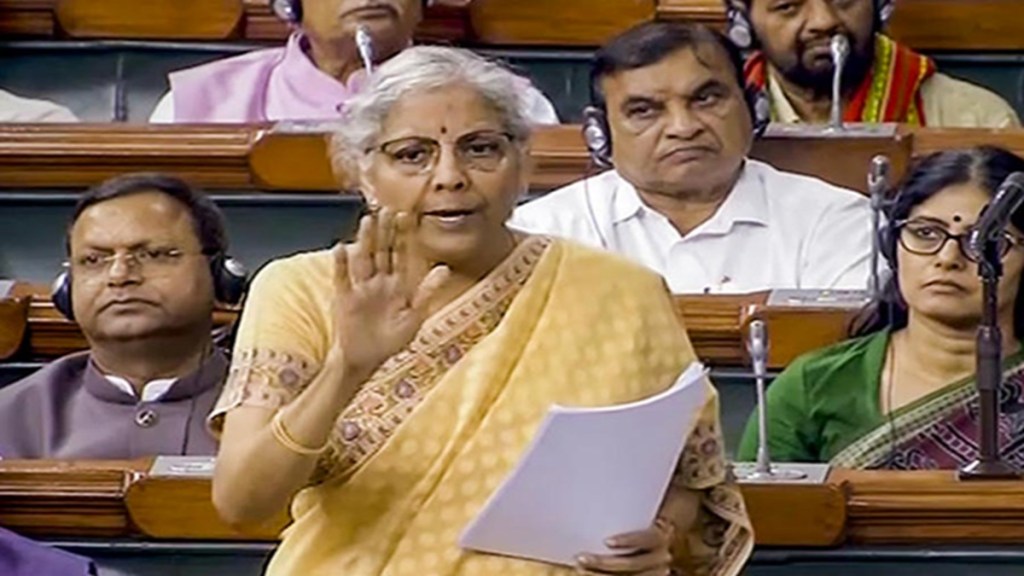
- 13 Aug 2025
In News:
The Income Tax (No. 2) Bill, 2025 was passed in the Lok Sabha in August 2025, replacing the Income Tax Act, 1961 after nearly six decades. The earlier draft of the Bill was withdrawn to incorporate recommendations of the Parliamentary Select Committee and stakeholder feedback. The revised Bill consolidates, simplifies, and modernises India’s direct tax framework.
Background
- Old Act (1961): Complex language, overlapping provisions, and compliance burden.
- New Bill (2025):
- Contains 536 sections and 16 schedules.
- Incorporates over 285 recommendations of the Select Committee, which examined the draft for four months and submitted a 4,500-page report.
- Aims to make the law simpler, clearer, and more aligned with the digital era.
Key Features
- Simplification of Tax Framework
- Single “Tax Year” concept replaces “Previous Year” and “Assessment Year”.
- Outdated and contradictory provisions removed to reduce litigation.
- Clear drafting, structured numbering, and improved terminology for easier interpretation.
- Taxpayer-Friendly Provisions
- Refunds allowed even if returns are filed after the due date.
- NIL-TDS certificates available for taxpayers with no liability.
- Relief on vacant house property – no taxation on notional rent.
- 30% standard deduction (post municipal tax) and interest deduction allowed on rented property.
- Corporate and MSME Reforms
- ?80M deduction on inter-corporate dividends reintroduced.
- MSME definition aligned with the MSME Act for uniformity.
- Institutional & Governance Reforms
- CBDT empowered for flexible, digital-era rule-making.
- Simplified compliance for TDS, PF withdrawals, advance rulings, and penalties.
- Relief to Specific Sectors
- Alternate Minimum Tax (AMT) on LLPs abolished.
- Charitable Trusts – compliance relaxations and reduced regulatory burden.
- Transfer Pricing & Associated Enterprise definitions rationalised.
- Extension of pension benefits – commuted pension deduction available even for non-employee individuals.
World Elephant Day 2025

- 13 Aug 2025
In News:
World Elephant Day 2025 was celebrated on August 12 in Coimbatore, Tamil Nadu, organised by the Ministry of Environment, Forest and Climate Change (MoEF&CC) in collaboration with the Tamil Nadu Forest Department. The event focused on human–elephant conflict (HEC) mitigation and reaffirmed global commitment to elephant conservation.
About World Elephant Day
- Launched in 2012 by Patricia Sims (Canada) and the Elephant Reintroduction Foundation of Thailand.
- Aims to promote conservation of elephants, raise awareness on threats like habitat loss, poaching, and HEC, and encourage human–elephant coexistence.
Elephants in India
- India holds 60% of the global wild elephant population.
- 33 Elephant Reserves and 150 Elephant Corridors (as per 2023 Report).
- Elephants are recognised as National Heritage Animal of India.
- Legal and institutional backing provided through Project Elephant (1992), Wildlife Protection Act, and corridor conservation measures.
Human–Elephant Conflict (HEC)
- Rising incidents of elephants entering human settlements due to habitat loss, fragmentation, and search for food/water.
- The Coimbatore workshop under World Elephant Day 2025 brought together policymakers, foresters, conservationists, and civil society to share best practices.
- Measures discussed: habitat management, corridor maintenance, awareness campaigns, and capacity building in high-conflict areas.
- Focus on balancing wildlife conservation with human safety through community participation and scientific approaches.
Public Participation
- 12 lakh students from 5,000 schools across India joined awareness programmes.
- Citizen outreach emphasised coexistence, youth engagement, and long-term behavioural change in society.
Conservation Status (IUCN Red List)
- Asian Elephant (Elephas maximus): Endangered.
- African Savanna Elephant (Loxodonta africana): Endangered.
- African Forest Elephant (Loxodonta cyclotis): Critically Endangered.
Ecological Importance of Elephants
- Keystone species: maintain grasslands, disperse seeds, create water holes, and support biodiversity.
- Social structure: Matriarch-led herds with strong communal care for calves; males often solitary or in small groups.
- Long gestation (22 months) and slow reproduction make them vulnerable to population decline.
Jal Jeevan Mission (JJM)
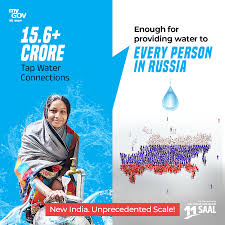
- 13 Aug 2025
In News:
The Jal Jeevan Mission (JJM), launched in August 2019, aims to provide Functional Household Tap Connections (FHTCs) to every rural household, ensuring safe, adequate, and regular potable water supply. At the time of its launch, only 17% of rural households (3.23 crore) had tap water access. As of 14 August 2025, this has increased to 81% coverage (15.68 crore households) out of a total 19.36 crore rural households, with over 12.45 crore additional connections provided.
Institutional Framework
- State Subject: Drinking water supply is primarily the responsibility of States/UTs, while the Centre provides technical and financial support.
- Funding: An initial outlay of ?2,08,652 crore was approved; the scheme has now been extended until 2028 with enhanced allocation for completing pending works and strengthening Operation & Maintenance (O&M).
- Citizen Participation: The 2025 Budget emphasized “Jan Bhagidari” for sustainable and community-centric water service delivery.
Quality Standards and Monitoring
- Benchmark: Water quality is mandated to comply with BIS:10500 standards, which specify acceptable and permissible limits for chemical, physical, and bacteriological parameters.
- Testing: In December 2024, the government released a Concise Handbook for States/UTs, recommending comprehensive testing at multiple points—source, treatment plant, storage, and distribution.
- Remedial Actions: Include regular cleaning of overhead tanks and corrective measures in case of contamination.
- Transparency Tools:
- JJM Dashboard “Citizen Corner” displays village-level water test results.
- Complaints can be filed via CPGRAMS (pgportal.gov.in) and the Department’s website (jalshakti-ddws.gov.in).
- Aadhaar-linked monitoring, geo-tagging, IoT sensors, and third-party inspections are employed for real-time tracking.
Significance
- Public Health: Ensures safe drinking water, reducing the burden of waterborne diseases.
- Gender Empowerment: Frees women and girls from time-consuming water collection, enabling better education and livelihoods.
- Rural Development: Improves quality of life, reduces drudgery, and enhances rural productivity.
- Sustainability: Integrates with groundwater management initiatives like the Atal Bhujal Yojana, promoting long-term water security.
Current Status (2025)
- Coverage: 81% rural households have tap water supply.
- Target: Universal coverage by 2028 with a focus on infrastructure quality, O&M, and sustainable, citizen-driven service delivery.
Supreme Court orders immediate removal of stray dogs from Delhi-NCR streets
- 13 Aug 2025
In News:
The Supreme Court of India has directed the immediate removal of all free-ranging dogs from Delhi, Noida, Gurugram, and Ghaziabad. The Court emphasized permanent relocation of these animals to shelters, citing rising incidents of rabies and dog bites, particularly affecting children and vulnerable groups.
Key Features of the Order
- Complete Removal: All stray dogs are to be captured to ensure “stray-free” streets in urban and peri-urban areas.
- No-Release Policy: Unlike the earlier Animal Birth Control (ABC) approach, captured dogs will not be returned to their original localities but retained in shelters.
- Shelter Infrastructure: Authorities must build facilities capable of housing at least 5,000 dogs within eight weeks, prioritizing high-risk localities.
- Emergency Response: A 24×7 helpline with a four-hour response time is mandated to tackle bite incidents.
- Strict Compliance: Interference with the process will attract contempt of court, ensuring accountability.
Rationale Behind the Order
- Public Health Priority: With nearly 5,700 rabies-related deaths annually (95% from dog bites), the order seeks to directly curb a preventable disease.
- Protection of Vulnerable Groups: Children and the elderly face higher risks due to limited self-defence capacity.
- Policy Ineffectiveness: The sterilisation-centric ABC model has not adequately addressed aggressive or rabies-carrying dogs.
- Constitutional Angle: By invoking Article 21 (Right to Life and Liberty), the Court underlined safe mobility and freedom from fear in public spaces.
- Permanent Reform: A structural shift from temporary containment to long-term removal from public areas.
Arguments in Favour
- Public Safety: A direct life-saving intervention against rabies deaths.
- Constitutional Backing: Strengthens the right to security under Article 21.
- Urban Governance: Integrates sanitation and safety into city management.
- Accountability: Surveillance and records ensure transparency in enforcement.
- Policy Gaps Addressed: Closes loopholes of the ABC model by ending return-to-locality practices.
Concerns and Counter-Arguments
- Legal Conflict: The directive may clash with existing ABC Rules framed under the Prevention of Cruelty to Animals Act.
- Animal Welfare: Overcrowded shelters risk inhumane conditions, raising ethical concerns.
- Ecological Impact: Sudden removal could disrupt rodent control and waste management functions performed by strays.
- Risk of Abuse: Lack of monitoring might lead to covert culling under the guise of relocation.
- Rights-Based Critique: May be seen as undermining the intrinsic rights of animals and compassion-based governance.
Way Forward
- Humane Shelter Models: Ensure adequate space, veterinary care, and nutrition.
- Mass Vaccination Drives: Combine removal with preventive health measures to eradicate rabies.
- Adoption and Community Participation: Promote responsible adoption under strict guidelines.
- Policy Harmonisation: Amend ABC Rules to align with SC directions and resolve legal inconsistencies.
- Awareness and Behavioural Change: Community-level campaigns on rabies prevention and civic responsibility.
Conclusion
The Supreme Court’s intervention highlights the tension between public health imperatives and animal welfare ethics. While it seeks to secure citizens’ right to safe public spaces, it also raises concerns of legality, humane treatment, and ecological balance. Going forward, the challenge lies in striking a balance between constitutional morality (right to life) and compassion ethics (animal welfare) through coherent policy design and ethical urban governance.
Biofortified Potatoes
- 12 Aug 2025
In News:
India is intensifying efforts to combat micronutrient deficiencies and enhancenutritional security by introducing biofortified potatoes with enhanced iron content. These varieties, developed by the International Potato Center (CIP), Peru, are being adapted for Indian conditions in collaboration with the ICAR–Central Potato Research Institute (CPRI), Shimla.
What are Biofortified Potatoes?
- Definition: Specially bred potatoes enriched with higher levels of iron, zinc, and vitamin C compared to conventional varieties.
- Objective: Address iron deficiency anemia and “hidden hunger” without compromising yield or taste.
- Development: CIP has released iron-rich potato varieties in Peru, now under evaluation and seed multiplication for Indian farmers.
Sweet Potatoes with Vitamin A
- Biofortified Sweet Potatoes with high beta-carotene (Vitamin A precursor) are already cultivated in Odisha, West Bengal, Karnataka, and Assam.
- Their bright orange flesh indicates nutritional richness, helping prevent night blindness, strengthen immunity, and improve child growth.
- ICAR-CTCRI’s SP-95/4 variety combines high beta-carotene with good yield, enhancing tribal nutrition.
- Advantages: Long shelf life (up to 2 years without refrigeration), versatile in food preparation, and suitable for Mid-Day Meal and nutrition schemes.
Institutional Initiatives
- CIP South Asia Regional Centre is being set up in Agra, Uttar Pradesh, within the Indo-Gangetic Plains – the world’s largest potato-producing region – to strengthen R&D and seed access.
- ICAR’s Wider Biofortification Drive:
- Released 61 biofortified crop varieties, including 34 field crops (cereals, pulses, millets, oilseeds) and 27 horticultural crops (tubers, vegetables, medicinal plants).
- Examples:
- CR Dhan 416: Salinity-resistant rice with pest resistance.
- Durum Wheat: Rich in zinc (41.1 ppm), iron (38.5 ppm), and 12% protein.
Biofortification: Concept and Importance
- Definition: Enhancing the nutrient content of crops through conventional breeding, agronomic practices, or biotechnology while preserving consumer-preferred traits.
- Examples:
- Iron-rich: Rice, beans, sweet potato, cassava, legumes.
- Zinc-rich: Wheat, rice, maize, beans.
- Vitamin A-rich: Sweet potato, maize, cassava.
- Protein/amino acid-rich: Sorghum, cassava.
Significance for India
- Public Health: Addresses widespread iron deficiency anemia, especially among women and children.
- Agricultural Sustainability: Promotes nutritionally dense crops without heavy reliance on supplements.
- Policy Alignment: Supports PoshanAbhiyaan, Mid-Day Meal Scheme, and SDG 2 (Zero Hunger).
- Economic Benefits: Enhances farmer incomes by creating demand for nutrient-rich crops.
MERITE Scheme
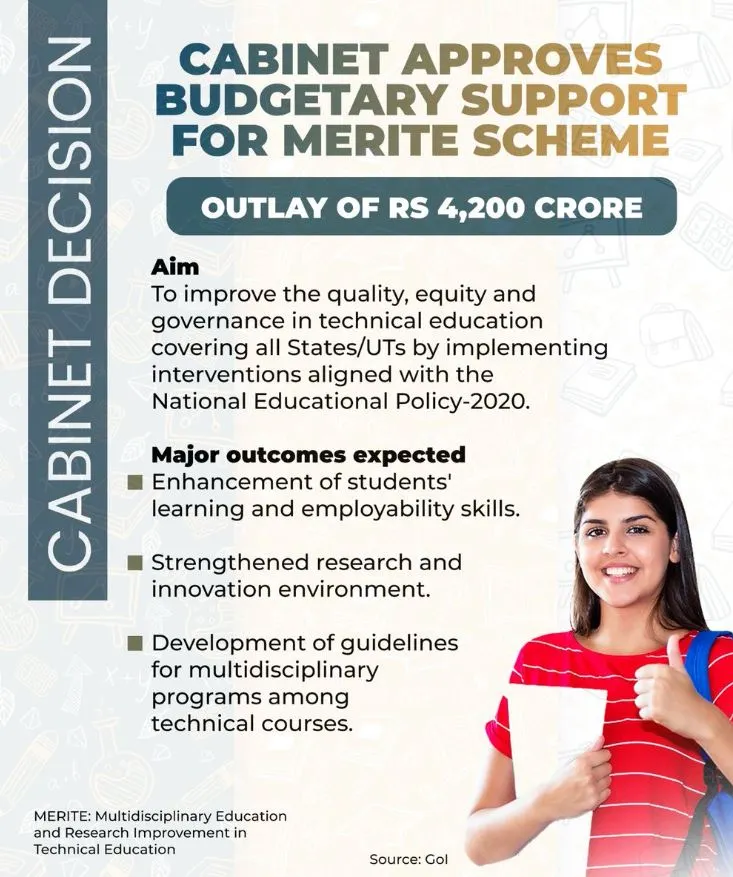
- 12 Aug 2025
In News:
The Union Cabinet has approved the Multidisciplinary Education and Research Improvement in Technical Education (MERITE) Scheme with a total outlay of ?4,200 crore (2025–26 to 2029–30). This includes ?2,100 crore World Bank loan assistance. The scheme seeks to transform India’s technical education landscape in line with the National Education Policy (NEP), 2020.
Coverage
- Institutions: 275 government/government-aided technical institutions (175 engineering institutions + 100 polytechnics).
- Beneficiaries: Around 7.5 lakh students across all States and Union Territories.
- Stakeholders: National Institutes of Technology (NITs), State Engineering Institutions, Affiliating Technical Universities (ATUs), with implementation support from IITs, IIMs, AICTE, and NBA.
Objectives
- Improve quality, equity, and governance in technical education.
- Align curricula with labour market requirements.
- Strengthen the research and innovation ecosystem.
- Support State/UT technical education departments in digitalization and quality assurance.
Key Focus Areas
- Digital Transformation: ICT-enabled learning, blended teaching models.
- Multidisciplinary Programs: Introduction of NEP-2020 aligned technical courses.
- Skill & Employability Enhancement: Internships, industry-linked curricula, language labs, skill/maker labs.
- Research and Innovation: Establishing research hubs, incubation centres, innovation labs.
- Faculty & Governance: Faculty development programs, creation of academic administrators with focus on women leadership.
- Accreditation & Quality Assurance: Strengthening institutional governance and accountability.
Expected Outcomes
- Increased student employability and higher placement rates.
- Improved research output and innovation ecosystem.
- Greater equity and inclusion in technical education, with emphasis on reducing gender gaps and digital divide.
- Enhanced global competitiveness of Indian technical institutions.
Employment Generation Impact
By modernising technical education and strengthening linkages with industry, MERITE is expected to:
- Improve fresh graduates’ placement prospects.
- Foster entrepreneurship through incubation and innovation centres.
- Contribute to reducing unemployment among engineering graduates.
Background and Significance
India’s sustainable and inclusive growth hinges on technological advancement, which demands upgraded academic and research standards. MERITE builds upon NEP-2020 reforms such as curriculum revamp, skill development, interdisciplinary learning, and enhanced governance. Importantly, it integrates global expertise through the World Bank partnership.
The scheme also ensures participatory governance, incorporating feedback from States/UTs during policy design, thereby strengthening cooperative federalism in higher education reform.
Global Risk of Zoonotic Diseases and India’s Preparedness
- 12 Aug 2025
In News:
A recent study published in Science Advances has highlighted that over 9.3% of the world’s land surface is at high (6.3%) or very high (3%) risk of zoonotic outbreaks — diseases transmitted between animals and humans. About 3% of the global population lives in extremely high-risk areas, while nearly 20% live in medium-risk zones.
The study introduced a Global Epidemic Risk Index, combining country-specific zoonotic risk factors with national preparedness capacities, to help policymakers strengthen health systems, allocate resources effectively, and enhance global cooperation.
Disease Burden and Examples
- Zoonotic diseases account for 60% of all known infectious diseases and up to 75% of emerging infectious diseases (EIDs).
- Globally, they cause 2.5 billion cases and 2.7 million deaths annually.
- Examples: Rabies, anthrax, influenza (H1N1, H5N1), Nipah virus, brucellosis, tuberculosis, Ebola, SARS, MERS, and Covid-19.
Drivers of Spillover Events
- Climate Change: Rising temperatures, erratic rainfall, and water scarcity heighten risks by altering habitats and vector distribution.
- Land Use Change: Deforestation, urban expansion, and agricultural intensification increase human–animal contact.
- Transmission Routes:
- Direct (e.g., avian influenza)
- Food-borne (e.g., salmonella)
- Vector-borne (e.g., West Nile virus)
- Water-borne (e.g., cryptosporidiosis)
Regional Vulnerabilities
- Latin America: 27% of land at high risk
- Oceania: 18.6%
- Asia: 7%
- Africa: 5%
India’s Vulnerability
- An ICMR study (2018–23) found that 8.3% of all reported outbreaks (583 of 6,948) were zoonotic.
- Outbreaks peaked during June–August, linked to monsoon-driven ecological changes.
- The Northeast region accounted for 35.8% of reported zoonotic outbreaks.
India’s Initiatives
- National Animal Disease Control Programme (NADCP): Mass vaccination to eliminate Foot & Mouth Disease (FMD) and Brucellosis.
- Target: Control FMD by 2025 and eradicate by 2030.
- National One Health Programme for Prevention and Control of Zoonoses (2013): Integrated surveillance and inter-sectoral coordination.
- Animal Birth Control (Dogs) Rules, 2023: Rabies vaccination and sterilisation of stray dogs.
- Rabies Vaccination under ASCAD (Livestock Health & Disease Control Programme).
Global Initiatives
- Zoonotic Disease Integrated Action (ZODIAC): Launched by IAEA (2020) for early detection and rapid response.
- World Zoonoses Day (6 July): Marks Louis Pasteur’s rabies vaccine in 1885.
- G20 Pandemic Fund: Financial support for strengthening preparedness and response.
- Global Early Warning System (GLEWS): A WHO–FAO–WOAH collaboration for coordinated zoonotic disease surveillance.
One Health Approach
The One Health framework recognizes the interconnectedness of human, animal, and environmental health. It promotes collaborative, multisectoral strategies for sustainable disease prevention and response.
Rhisotope Project
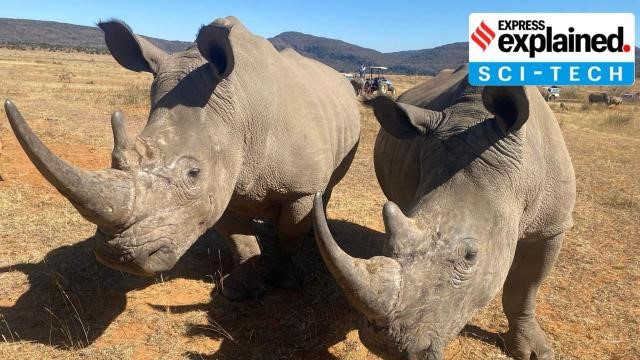
- 12 Aug 2025
In News:
South Africa, which shelters the world’s largest rhino population, has lost over 10,000 rhinos in the last decade to poaching driven by the illegal horn trade in Asian markets. To counter this crisis, the University of the Witwatersrand, in collaboration with the International Atomic Energy Agency (IAEA), has launched the Rhisotope Project (2024) — a novel initiative using radioactive isotopes to protect rhinos.
What is the Rhisotope Project?
- A non-invasive procedure where rhino horns are injected with low doses of radioisotopes.
- The process is harmless to rhinos but makes horns:
- Detectable through Radiation Portal Monitors (RPMs) and scanners at borders, ports, and airports — even in sealed shipping containers.
- Toxic and unfit for human use, reducing demand in illegal trade.
- Pilot studies (2024–25):
- 20 rhinos in the Waterberg Biosphere Reserve were treated.
- Tests by Ghent University (Belgium) showed no cellular damage or health impact.
- 3D-printed horns used in trials confirmed detectability in container loads.
Why Radioisotopes?
- Radioisotopes are unstable forms of elements that emit ionising radiation (alpha, beta, gamma) to achieve stability.
- They are easily traceable with nuclear detection systems.
- Already widely used in medicine (I-131 for thyroid, Tc-99m for imaging), archaeology (C-14 dating), and industry.
The Scale of the Crisis
- Global rhino numbers: Declined from ~5,00,000 in the early 20th century to ~27,000 today (IUCN).
- South Africa: Lost 103 rhinos to poaching in the first quarter of 2025 alone.
- Conventional measures like dehorning reduce poaching but disrupt rhino social behaviour and habitat use. The Rhisotope Project offers a less disruptive alternative.
Broader Conservation Significance
- If successful, the method could be extended to other endangered species like elephants and pangolins.
- It represents an international collaboration that combines nuclear science with wildlife conservation, redefining the role of technology in biodiversity protection.
Threats Beyond Poaching
- Invasive species: Plants like Parthenium threaten habitats (e.g., Assam’s Pobitora Wildlife Sanctuary, home to the densest one-horned rhino population).
- Climate change: Intensified droughts and monsoons push rhinos into human-dominated landscapes, increasing conflicts.
- Habitat loss due to agricultural expansion and human settlement.
Rhino Conservation Initiatives
- Global/Regional:
- New Delhi Declaration on Asian Rhinos (2019)
- DNA Profiling of all Rhinos for tracking and protection
- India-specific:
- National Rhino Conservation Strategy
- Indian Rhino Vision 2020 (for Assam’s one-horned rhinos)
About the IAEA
- Established in 1957 as the UN’s “Atoms for Peace”organisation.
- Promotes peaceful applications of nuclear technology while preventing misuse for weapons.
- 178 member states; India is a founding member.
- Awarded the 2005 Nobel Peace Prize for contributions to nuclear safety and disarmament.
- HQ: Vienna, Austria. Reports to both UNGA and UNSC.
National Narcotics Helpline MANAS
- 12 Aug 2025
In News:
The Government of India launched the National Narcotics Helpline MANAS (Madak-PadarthNishedAsoochna Kendra) to strengthen citizen participation in the fight against the drug menace. The initiative, spearheaded by the Narcotics Control Bureau (NCB) under the Ministry of Home Affairs (MHA), functions as a secure, bilingual, and citizen-centric platform to enable anonymous reporting of drug trafficking, illicit cultivation, and related crimes, while also providing counselling and rehabilitation support.
Key Features of MANAS
- Helpline Number: 1933 (Toll-Free)
- Digital Access: Web portal (www.ncbmanas.gov.in), Email (info.ncbmanas@gov.in), and UMANG Mobile App
- Integration: Direct transfer to the MoSJE De-addiction Helpline (14446) for rehabilitation guidance
- Awareness Outreach: Posters, videos, contests, and citizen engagement through MyGov platform under the Drug-Free Bharat campaign
India’s Legal & Policy Framework Against Drug Abuse
- Constitutional Backing: Article 47 directs the State to prohibit intoxicating substances except for medicinal purposes.
- Legislation:
- Narcotic Drugs and Psychotropic Substances (NDPS) Act, 1985
- Prevention of Illicit Traffic in NDPS Act, 1988
- Drugs and Cosmetics Act, 1940
- International Conventions: India is party to the
- Single Convention on Narcotic Drugs, 1961 (amended 1972)
- Convention on Psychotropic Substances, 1971
- UN Convention against Illicit Traffic in Narcotic Drugs and Psychotropic Substances, 1988
- Other Initiatives: NIDAAN Portal (for drug law offenders), NashaMukt Bharat Abhiyan (community-based de-addiction programme).
Significance for Governance & Society
The MANAS helpline marks a shift from enforcement-centric approaches to a citizen-participatory, tech-enabled model. It bridges law enforcement, rehabilitation, and public awareness, reflecting India’s commitment to a balanced supply and demand reduction strategy against narcotics.
World Lion Day 2025
- 11 Aug 2025
In News:
India celebrated World Lion Day 2025 at Barda Wildlife Sanctuary, Gujarat, marking a milestone in wildlife conservation. The event highlighted the success of Project Lion, launched by Prime Minister Narendra Modi on 15th August 2020, and underscored India’s global leadership in protecting the endangered Asiatic Lion (Panthera leopersica).
Status of Asiatic Lions
- Population Growth: Numbers rose from 284 in 1990 to 674 in 2020, and further to 891 in 2025(16th Lion Census). This reflects a 32% increase since 2020 and 70% rise over the last decade.
- Distribution: The lions roam across ~35,000 sq. km in 11 districts of Saurashtra, with Gir National Park as the core habitat. In recent years, Barda Wildlife Sanctuary (192 sq. km) has emerged as a second home, hosting 17 lions including 11 cubs.
- Global Significance: If Asiatic lions survive anywhere today, it is solely in India—making their conservation a matter of both ecological and national pride.
Ecological and Cultural Importance
- Apex Predators: Regulate herbivore populations, prevent overgrazing, and maintain ecosystem balance.
- Cultural Symbolism: Depicted on the National Emblem and Indian currency, symbolizing strength and heritage.
- Unique Traits: Asiatic lions are smaller than African lions, with a distinct belly fold and less prominent mane (ears remain visible).
Conservation Measures
1. Project Lion (2020–2030)
- Budget: ?2,927 crore sanctioned.
- Focus Areas:
- Habitat improvement and prey base augmentation.
- Scientific monitoring using GPS, GIS-based real-time surveillance, and automated sensor grids.
- Veterinary healthcare (National Referral Centre at Junagadh).
- Human–wildlife conflict mitigation.
- Community participation and eco-tourism.
2. Greater Gir Concept: Expands protected landscapes toGirnar, Pania, Mitiyala, and Bardasanctuaries to reduce habitat pressure.
3. Recent Developments
- ?180 crore wildlife and ecotourism initiative launched in 2025 for new habitats, safari park, and veterinary facilities.
- Barda Safari Park & Zoo approved to boost ecotourism and conservation.
- Return of lions to Barda after 143 years, enhancing biodiversity and eco-tourism potential.
4. Global Cooperation
- International Big Cats Alliance (IBCA, 2023): A platform of 97 countries for sharing knowledge and resources on big cat conservation.
Conservation Status
- Panthera leo (Lion)IUCN Red List: Vulnerable (Green Status: Largely Depleted).
- CITES: Appendix I.
- Wildlife (Protection) Act, 1972: Schedule I species.
- Part of India’s Species Recovery Programme under the Centrally Sponsored Scheme – Development of Wildlife Habitat.
India’s 3rd Launch Pad in Sriharikota by 2029
- 11 Aug 2025
In News:
India’s space programme is set for a major expansion with the Third Satellite Launch Pad (TLP) being developed at the Satish Dhawan Space Centre (SDSC), Sriharikota. The facility, sanctioned in March 2025, is expected to be fully operational by March 2029, significantly strengthening India’s ability to handle next-generation launch vehicles (NGLV) and ambitious human spaceflight missions.
Development Timeline and Infrastructure
The TLP project has been structured with clear milestones:
- Civil works: by May 2028
- Fluid and propellant storage systems: by July 2028
- Launch pad systems: by September 2028
- Commissioning: by March 2029
Preliminary geotechnical investigations and topographic surveys were completed in May 2025. Currently, tenders for essential road, electrical, and infrastructure works are under evaluation.
Objectives and Capabilities
- Support NGLV Operations: The 91-metre-tall Next Generation Launch Vehicle, designed with semi-cryogenic stages, will have a payload capacity of up to 30 tonnes to Low Earth Orbit (LEO)—a major leap from existing LVM3 capabilities.
- Backup for LVM3: Ensures continuity of operations in case of single-pad disruption.
- Enable Human Spaceflight: Provides critical infrastructure for the Gaganyaan mission, future astronaut flights, and crewed lunar landing plans by 2040.
- Facilitate Deep-Space Missions: Supports long-term goals like BharatiyaAntariksh Station (2035), lunar missions, and interplanetary exploration.
Key Features
- Advanced Propellant Systems: Compatible with cryogenic and semi-cryogenic fuels with higher thrust requirements.
- New Jet Deflection Systems: Built to withstand the powerful thrust of next-gen rockets.
- Make-in-India Integration: Emphasis on collaboration with private industry and MSMEs, ensuring maximum indigenous participation in design, construction, and manufacturing.
- Modular Construction: Use of multiple work packages for efficient execution.
- Increased Launch Capacity: Enhances frequency, redundancy, and capability to handle commercial as well as strategic missions.
Strategic Significance
- Redundancy and Reliability – Reduces dependence on two existing pads, mitigating risks of delays due to maintenance or failure.
- Future-Proofing India’s Space Infrastructure – Specifically designed for larger payloads, human-rated systems, and next-gen propulsion.
- Boost to Space Economy – By enabling frequent and diverse launches, TLP supports India’s rising commercial space sector under the Make-in-India and Atmanirbhar Bharat initiatives.
- Geopolitical Leverage – Strengthens India’s position in the global space economy, catering to both domestic and international clients.
Diabetes in India
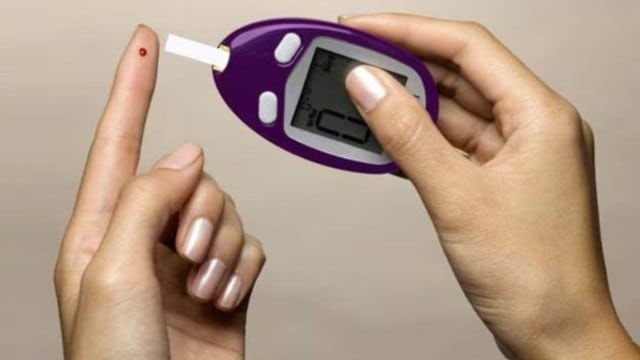
- 11 Aug 2025
In News:
A Lancet Global Health study (2023), based on the Longitudinal Aging Study in India (LASI), has highlighted the alarming rise of diabetes among Indians aged 45 years and above. The findings underscore the urgent need for universal screening, awareness, and improved management strategies to address this public health challenge.
Key Findings of the Study
- Prevalence: One in five Indians aged 45+ (approx. 20%) had diabetes in 2019.
- Undiagnosed Diabetes: Nearly 40% of people with diabetes were unaware of their condition—around 20 million Indians remain undiagnosed.
- Treatment Gaps:
- 5% had untreated diabetes.
- 47% were under-treated.
- Only 36% were adequately treated.
- Awareness and Treatment: Once aware, 94% of patients sought treatment, highlighting the impact of diagnosis.
- Control Rates:
- 46% achieved blood sugar control,
- 59% achieved blood pressure control,
- 6% used lipid-lowering medicines.
- Urban-Rural Divide: Urban prevalence (30%) was nearly double that of rural areas (15%).
- Gender Gap: Prevalence was similar in men (19.6%) and women (20.1%).
- Regional Trends:
- Highest rates: Chandigarh (36.9%), Kerala (36%), Puducherry (36%).
- Largest number of diabetics: Tamil Nadu (6.1 mn), Maharashtra (5.8 mn), Uttar Pradesh (4.7 mn).
- Methodology: Diagnosis based on HbA1c testing (3-month blood sugar average), more accurate than random glucose tests used in earlier surveys.
Understanding Diabetes
- Type 1: Autoimmune; body destroys insulin-producing cells. Requires lifelong insulin.
- Type 2: Accounts for 95%+ of cases; due to insulin resistance or inadequate production; linked to obesity, sedentary lifestyle, and genetics. Preventable via lifestyle changes.
- Gestational Diabetes: Occurs during pregnancy; increases risk of complications and later Type 2 diabetes.
- Type 5 (Newly Recognized): Seen in lean adolescents (BMI < 18.5 kg/m²); caused by malnutrition damaging pancreatic beta cells, leading to insulin deficiency.
India’s Policy and Programmatic Response
- Ayushman Arogya Mandirs (Health and Wellness Centres): Provide population-based diabetes screening.
- Fit India Movement: Encourages preventive health and fitness practices.
- School Interventions: CBSE mandates ‘sugar boards’ to educate students about hidden sugars and health risks.
- National Programme for Prevention and Control of Cancer, Diabetes, Cardiovascular Diseases and Stroke (NPCDCS): Strengthens NCD screening and management across primary healthcare.
RBI’s Internal Working Group Recommendations on Liquidity Management Framework
- 11 Aug 2025
In News:
The Reserve Bank of India (RBI) recently released the recommendations of its Internal Working Group (IWG) constituted to review the Liquidity Management Framework (LMF), which has been operational since February 2020. The review seeks to enhance efficiency, transparency, and predictability in liquidity operations—crucial for ensuring smooth monetary policy transmission.
Liquidity Management Framework (LMF):
- Objective: To manage systemic liquidity and guide short-term interest rates in alignment with monetary policy objectives.
- Core Mechanism: Operates through the Liquidity Adjustment Facility (LAF)—using repo (liquidity injection) and reverse repo (liquidity absorption) operations.
- Corridor System: The policy repo rate sits at the middle of the interest rate corridor, while the Weighted Average Call Rate (WACR) serves as the operating target of monetary policy.
- Other Tools: Open Market Operations (OMO), Cash Reserve Ratio (CRR), Statutory Liquidity Ratio (SLR) for durable liquidity; and Standing Deposit Facility (SDF) for absorbing surplus liquidity.
Key Recommendations of the IWG
- WACR as Operating Target
- Recommendation: Continue using overnight WACR as the operating target.
- Rationale: WACR strongly correlates with collateralized overnight money market rates, making it reliable for transmitting policy signals across the system.
- Discontinuation of 14-day VRR/VRRR as Main Operation
- Recommendation: Replace 14-day Variable Rate Repo/Reverse Repo (VRR/VRRR) as the main liquidity management tool.
- Alternative: Manage transient liquidity primarily through 7-day repo/reverse repo operations and other operations (overnight to 14-day tenor) at RBI’s discretion.
- Rationale: 14-day auctions have witnessed lower participation, as banks prefer shorter-tenor instruments like SDF.
- Advance Notice for Liquidity Operations
- Recommendation: RBI should provide at least one-day advance notice for repo/reverse repo operations.
- Exception: Same-day operations may be undertaken in response to evolving liquidity shocks.
- Rationale: Predictability reduces market uncertainty and stabilizes money market rates.
- Variable Rate Auction Mechanism
- Recommendation: Continue using variable rate auctions for repo and reverse repo operations, including longer tenors.
- Rationale: Enhances price discovery and aligns market rates with liquidity conditions.
- Cash Reserve Ratio (CRR) Norms
- Recommendation: Continue with the 90% daily minimum maintenance requirement of CRR.
- Rationale: Ensures banks maintain sufficient reserves, preventing liquidity shortfalls.
- Durable Liquidity Tools
- Observation: Existing instruments under the LMF are sufficient to meet durable liquidity needs; no changes are required at this stage.
Key Terms:
- WACR (Weighted Average Call Rate): The average overnight interest rate at which banks borrow and lend funds, weighted by transaction volume; RBI’s operating target for monetary policy.
- Repo Rate: Rate at which RBI lends to banks against collateral to inject liquidity.
- Reverse Repo Rate: Rate at which RBI borrows from banks to absorb excess liquidity.
- VRR/VRRR: Auction-based repo/reverse repo operations, where rates are determined by market bids.
- SDF (Standing Deposit Facility): Tool for absorbing liquidity without collateral.
- CRR (Cash Reserve Ratio): Portion of deposits banks must maintain with RBI as liquid cash.
Significance of Recommendations
- For Monetary Policy: Reinforces the role of WACR in aligning short-term rates with policy stance.
- For Markets: Enhances predictability, reducing volatility in money markets.
- For Banks: Offers greater flexibility in managing short-term liquidity needs.
- For RBI: Provides operational flexibility to balance stability with market efficiency.
TRISO Nuclear Fuel
- 11 Aug 2025
In News:
The United States Department of Energy (DOE) has selected Standard Nuclear as the first company to establish a domestic supply chain for TRi-structural ISOtropic (TRISO) nuclear fuel, marking a major step toward reducing dependence on Russian uranium and advancing nuclear innovation. The initiative, part of DOE’s Fuel Line Pilot Program (2025), is designed to strengthen US energy security, promote private sector participation, and accelerate the deployment of advanced nuclear reactors.
Why TRISO Matters
TRISO is a next-generation nuclear fuel specifically engineered for high-temperature gas-cooled reactors (HTGRs) and molten salt-cooled reactors, both of which fall under Generation IV (Gen-IV) advanced reactor designs.
- Composition: TRISO fuel consists of a uranium–carbon–oxygen fuel kernel encapsulated by three protective layers of carbon and ceramic materials.
- Form: The particles are extremely small—seed-sized—and can be fabricated into cylindrical pellets or “pebbles.”
- Key Features:
- Extreme durability: Resistant to neutron irradiation, corrosion, oxidation, and very high temperatures.
- Self-containment: Each particle acts as its own containment system, preventing radiation leakage even under extreme reactor conditions.
- Versatility: Compatible with multiple advanced reactor designs, including small modular reactors (SMRs).
This makes TRISO structurally and functionally superior to conventional nuclear fuels, ensuring safer, more reliable, and more efficient reactor performance.
Strategic Implications
- Energy Security & Supply Chains
- The US has historically relied on imports of enriched uranium, particularly from Russia.
- By developing domestic TRISO production in Tennessee and Idaho, the DOE seeks to build a resilient nuclear fuel ecosystem independent of geopolitical disruptions.
- Advanced Reactor Deployment
- DOE’s Advanced Reactor Demonstration Program targets at least three new advanced reactor designs to achieve criticality by July 4, 2026.
- TRISO fuel is central to this push, enabling safer operation of SMRs and Gen-IV reactors, both of which are crucial to America’s clean energy transition.
- Private–Public Partnership
- Standard Nuclear will finance construction, operation, and decommissioning of TRISO fabrication facilities.
- Reactor developers will source nuclear material feedstock, partly through DOE’s high-assay low-enriched uranium (HALEU) allocation program.
- Technological Momentum
- Other firms, such as BWX Technologies (BWXT), have also developed TRISO production lines, including uranium nitride TRISO, in collaboration with Idaho and Oak Ridge National Laboratories.
- These advancements reinforce US leadership in nuclear innovation while supporting its broader climate and national security goals.
Tuvalu’s Planned Climate Migration to Australia
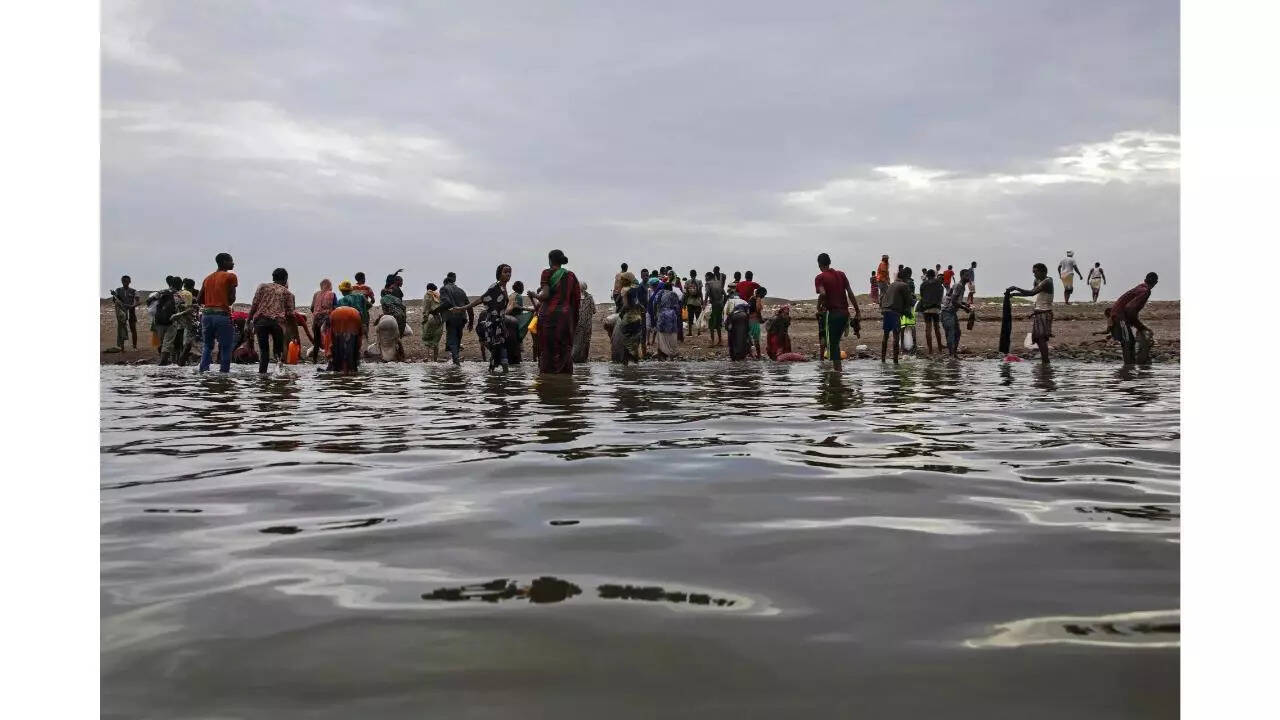
- 10 Aug 2025
In News:
Tuvalu, a small Pacific island nation, is undertaking the world’s first planned national migration due to the existential threat posed by climate change and rising sea levels. The initiative stems from the Falepili Union Treaty (2023) signed between Tuvalu and Australia, marking a landmark case in global climate governance and migration policy.
Why Migration is Needed
- Geography & Vulnerability: Tuvalu consists of nine coral atolls with a total land area of just 25.14 sq. km and a population of ~11,000 (2022 census). Its average elevation is only 2 metres, making it highly vulnerable to flooding, storm surges, and coastal erosion.
- Climate Impact:
- NASA’s Sea Level Change Team reported that sea levels in Tuvalu were already 15 cm higher in 2023 compared to the previous 30 years.
- At this rate, most of Tuvalu could be submerged by 2050.
- Two of its nine atolls are already largely underwater.
- Scientists warn the islands may become uninhabitable within 80 years.
The Falepili Union Treaty (2023)
- Migration Provision: Australia will grant 280 Tuvaluans permanent residency annually, with access to healthcare, education, housing, and employment.
- Selection Mechanism: Migration is ballot-based. The first phase (June–July 2025) saw 8,750 registrations. The first group of 280 migrants was selected on 25 July 2025.
- Scale: Along with other pathways to Australia and New Zealand, up to 4% of Tuvalu’s population could migrate annually. Within a decade, nearly 40% of the population may relocate, although some may return periodically.
- Objective: To ensure “mobility with dignity”, preventing Tuvaluans from becoming stateless climate refugees.
International Significance
- Precedent for Climate Migration: This is the first-ever state-backed relocation of an entire population due to climate change, setting a model for other vulnerable island nations.
- Global Climate Justice: Tuvalu’s case highlights the plight of Small Island Developing States (SIDS) and the urgent need for stronger international climate agreements.
- Diplomatic Signalling: Tuvalu’s Prime Minister Feleti Teo has called for a new global treaty safeguarding nations at risk from rising seas.
About Tuvalu
- Location: Polynesian island nation in the Pacific Ocean, midway between Australia and Hawaii.
- Capital: Funafuti.
- Population: ~11,000 (second least populous UN member after Vatican City).
- Economy: Relies on fishing licenses, foreign aid, and remittances from Tuvaluan seafarers.
- UN Membership: Since 2000; actively champions the rights of climate-vulnerable states.
India’s Joint Doctrines on Cyberspace and Amphibious Operations
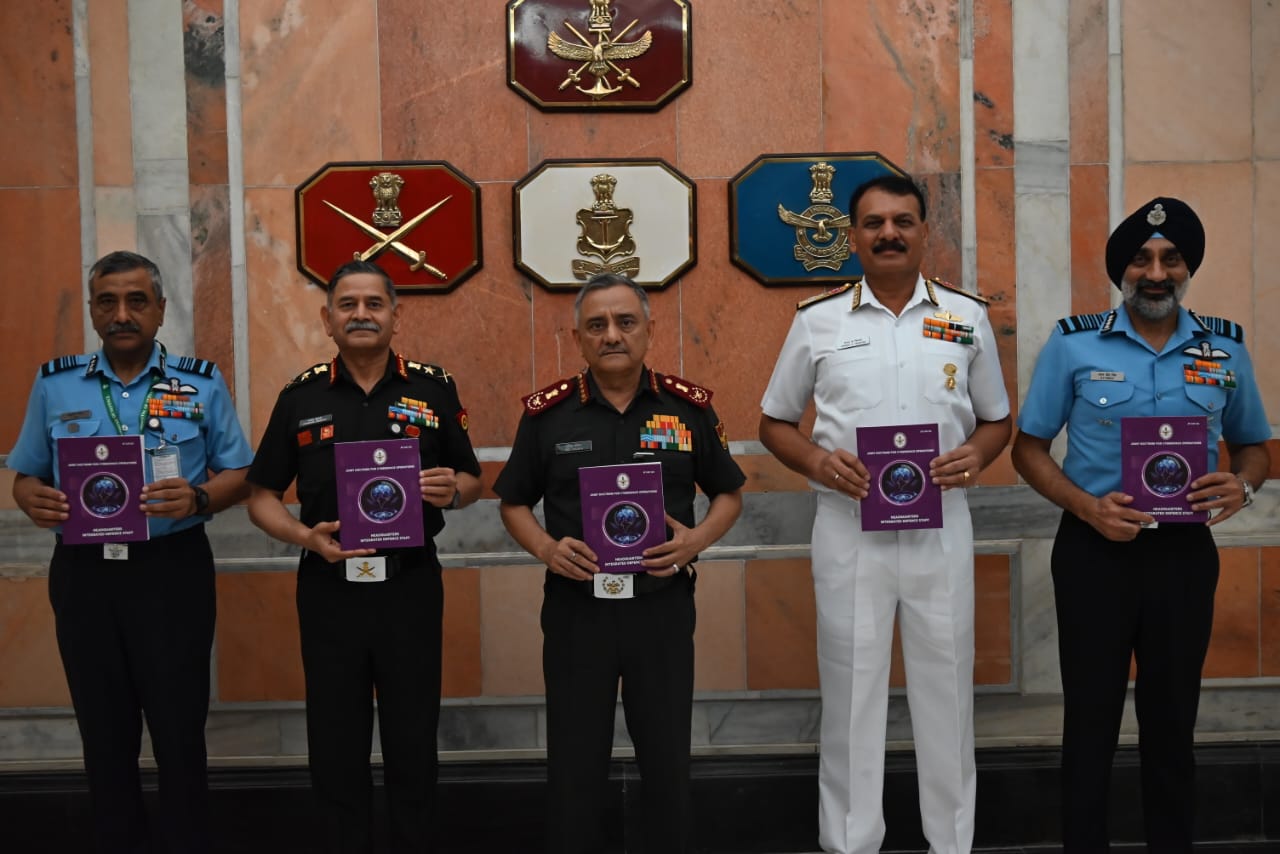
- 10 Aug 2025
In News:
Recently, the Chief of Defence Staff (CDS) General Anil Chauhan released thedeclassified versions of India’s Joint Doctrines for Cyberspace Operations and Amphibious Operations. This step reflects India’s effort to enhance jointness, interoperability, and transparency in military operations while strengthening preparedness for multi-domain warfare.
Cyberspace Operations Doctrine
What is Cyberspace?
- A global domain comprising information systems, communication networks, satellites, and data infrastructures.
- It is borderless, dual-use (civilian and military), and subject to rapidly evolving threats.
Components of Cyberspace Operations
- Defensive Cyber Operations – Protects national and military networks against malware, hacking, and data breaches.
- Offensive Cyber Operations – Targets adversary systems to disrupt communications, disable command networks, or damage infrastructure.
- Cyber Intelligence & Reconnaissance – Collects and analyses data to detect vulnerabilities and anticipate attacks.
- Cyber Support Operations – Provides digital tools and assistance to land, maritime, air, and space operations.
- Resilience & Recovery – Ensures continuity through backup systems, redundancies, and rapid restoration measures.
Operational Principles
- Threat-informed Planning – Based on real-time intelligence.
- Interoperability – Seamless coordination across the three Services and with civil agencies.
- Layered Defence – Multi-tiered cyber security protocols.
- Legal & Ethical Compliance – Operates within Indian law and global cyber norms.
- Real-time Response – Swift counteraction to minimise damage.
Significance:
- Shields critical infrastructure (power grids, defence networks, communication systems).
- Acts as a force multiplier, enhancing conventional operations.
- Prepares India for hybrid warfare, where cyber, land, sea, and air threats are interlinked.
Amphibious Operations Doctrine
What are Amphibious Operations?
- Coordinated actions by naval, air, and land forces launched from the sea to secure objectives onshore.
- Applications range from combat missions to humanitarian assistance and disaster relief (HADR).
Key Features
- Tri-service Integration – Combines maritime, aerial, and ground assets.
- Rapid Response – Enables swift deployment from sea to shore.
- Strategic Reach – Expands influence over island territories and littoral regions.
- Flexible Missions – Suitable for both warfare and non-war operations (e.g., disaster relief).
- Maritime–Land Linkage – Strengthens the sea–land operational continuum.
Significance:
- Enhances maritime superiority in the Indian Ocean Region.
- Secures India’s island territories, trade routes, and coastal areas.
- Strengthens India’s blue-water navy aspirations and capacity for overseas contingencies.
- Provides options for HADR missions, vital in the Indo-Pacific where natural disasters are frequent.
Strategic Importance of Doctrines
The release of these doctrines marks a major step in joint military planning and multi-domain operations. They:
- Promote synergy among the Army, Navy, and Air Force, reducing duplication of efforts.
- Build resilience against hybrid threats, including cyber-attacks and maritime conflicts.
- Signal India’s intent to safeguard its national security and global strategic interests.
- Provide policymakers and military planners with a common framework and lexicon.
Further, the CDS has initiated work on new doctrines covering Military Space Operations, Special Forces Operations, Airborne/Heliborne Operations, Integrated Logistics, and Multi-Domain Operations. These will ensure India remains prepared for the emerging spectrum of modern warfare.
Biochar in India
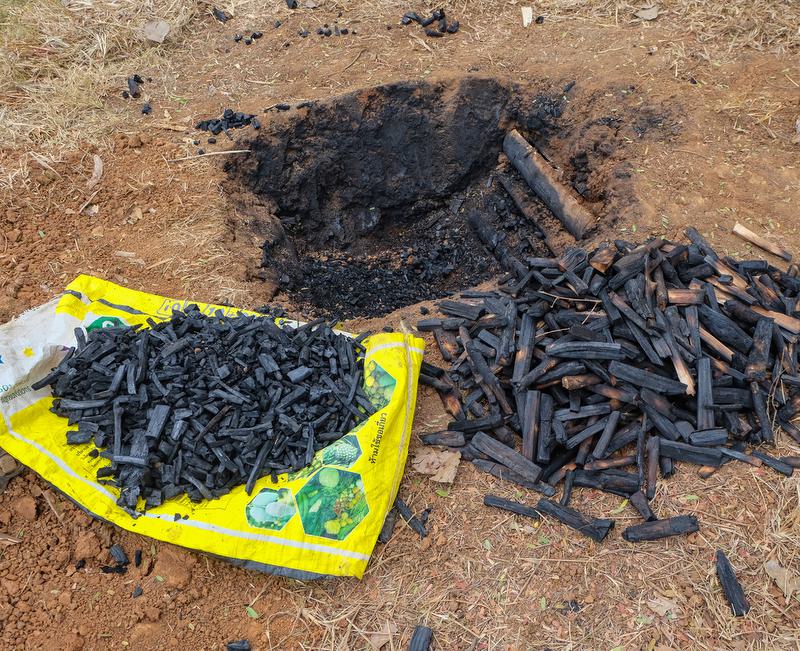
- 10 Aug 2025
In News:
India is set to launch its carbon credit trading market in 2026, with biochar emerging as a promising carbon dioxide removal (CDR) technology. Biochar is a carbon-rich, porous, and stable substance produced through pyrolysis (burning biomass without oxygen) ofagricultural residue and municipal solid waste. It offers multiple co-benefits spanning climate mitigation, agriculture, energy, construction, and wastewater treatment.
India’s Untapped Biochar Potential
- Resource base: India generates 600+ million tonnes of agricultural residue and 60+ million tonnes of municipal solid waste annually, much of which is burnt or dumped, causing air pollution and GHG emissions.
- Carbon removal: Converting 30–50% of surplus biomass can yield 15–26 million tonnes of biochar, sequestering ~0.1 gigatonne of CO?-eq annually.
- Byproducts:
- Syngas (20–30 MT): Can generate 8–13 TWh electricity, replacing 0.4–0.7 MT coal/year.
- Bio-oil (24–40 MT): Can offset 8% of diesel/kerosene demand, reducing >2% of India’s fossil-fuel-based emissions.
- Employment: Village-level pyrolysis units could create 5.2 lakh rural jobs, linking waste management with livelihoods.
Multi-Sectoral Applications
1.Agriculture and Soil Health
- Enhances soil organic carbon and fertility.
- Improves water retention, critical for semi-arid regions.
- Reduces fertilizer needs by 10–20% and increases crop yields by 10–25%.
- Cuts N?O emissions by 30–50% (273× more potent than CO?).
- Example: Andhra Pradesh’s Community Managed Natural Farming has piloted biochar to improve soil quality.
2. Energy and Fuel Substitution
- Syngas and bio-oil provide renewable energy for rural micro-grids and transport.
- Example: Maharashtra pilot projects use pyrolysis gas to replace diesel generators.
3. Construction Sector
- Adding 2–5% biochar to concrete:
- Increases mechanical strength and heat resistance (+20%).
- Sequesters ~115 kg CO? per cubic metre.
- Offers a green alternative to cement, key for India’s infrastructure push.
- Example: IIT-Madras research shows biochar-concrete mix lowers embodied carbon in buildings.
4. Wastewater Treatment
- 1 kg biochar can treat 200–500 litres of wastewater.
- With India producing 70 billion litres/day (72% untreated), biochar offers low-cost, decentralised treatment solutions for rural and urban areas.
Clouded Leopard
- 10 Aug 2025
In News:
A rare video recently shared by Indian Forest Service officer Susanta Nanda offered a rare glimpse into the secretive life of the clouded leopard (Neofelisnebulosa), showcasing a mother with her cubs in the rainforests of Northeast India. The sighting highlights the critical conservation importance of this elusive and endangered species.
About the Clouded Leopard
- Scientific name:Neofelisnebulosa (mainland Asia); Neofelisdiardi (Sunda clouded leopard, Sumatra & Borneo).
- Classification: Among the most ancient cat species; neither a true “great cat” nor a small cat — cannot roar or purr.
- Size: Medium-sized (60–110 cm long; 11–20 kg); lifespan ~13–17 years.
- Distinctive features:
- Named for large “cloud-like” coat patterns (ellipses with dark edges).
- Exceptionally long tail (often body-length) for balance.
- Long canine teeth, proportionally the same size as those of a tiger.
- Broad paws and short legs, making it an agile climber; one of the only cats that can climb down trees headfirst, hang upside down, and hunt arboreally.
- Behaviour: Solitary, shy, and nocturnal.
Distribution and Habitat
- Found across Nepal, Bangladesh, India, Indochina, Sumatra, Borneo, and southern China (historically also Taiwan).
- In India: Present in Sikkim, northern West Bengal, Meghalaya, Tripura, Mizoram, Manipur, Assam, Nagaland, and Arunachal Pradesh.
- Declared the State Animal of Meghalaya.
- Habitat preference: Lowland tropical rainforests, but also found in dry woodlands, secondary forests, high altitudes in the Himalayas, and even mangrove swamps (Borneo).
Conservation Status
- IUCN Red List:Vulnerable.
- Global wild population:fewer than 10,000 individuals.
- Threats:
- Habitat loss (deforestation, infrastructure expansion).
- Poachingfor pelts and body parts.
- Human-wildlife conflict.
Conservation Significance
- Rare sightings, such as the video from Northeast India, underscore the species’ ecological and cultural importance.
- Conservationists stress the need for:
- Habitat protection through transboundary wildlife corridors.
- Strengthening protected areas across Northeast India.
- Community participation to reduce conflict and safeguard prey base.
Great Barrier Reef
- 10 Aug 2025
In News:
The Great Barrier Reef (GBR), the world’s largest living structure and a UNESCO World Heritage Site (1981), has recorded its steepest decline in hard coral cover in nearly four decades, according to the Australian Institute of Marine Science (AIMS) 2025 survey. The reef, spread over 2,000 km along Australia’s northeast coast and covering ~350,000 sq. km, accounts for nearly 10% of global coral reef ecosystems and hosts extraordinary biodiversity, including 400 coral species, 1,500 fish species, 4,000 mollusk species, six of seven turtle species, dugongs, and numerous seabirds.
The 2024–25 Mass Bleaching Event
- The 2024 bleaching, the fifth since 2016, coincided with record ocean heat stress, cyclones, flooding, and crown-of-thorns starfish outbreaks.
- AIMS’ long-term monitoring across 124 reefs (Aug 2024–May 2025) revealed:
- 48% reefs showed a decline in coral cover,
- 42% reefs showed no change,
- Only 10% reefs recorded recovery.
- Some areas, especially in the northern GBR (around Lizard Island), lost over 70% of hard coral cover, the sharpest decline since monitoring began in 1986.
Regional Breakdown of Coral Loss (2024–25)
- Northern GBR: Coral cover dropped from 39.8% to 30% (–24.8%), driven by record heat stress, cyclones, and freshwater inundation.
- Central GBR: Cover fell by 13.9% to 28.6%, with Cairns sector reefs losing 6–60% due to Cyclone Jasper (2023) and flooding.
- Southern GBR: Sharpest relative loss, down from 38.9% to 26.9% (–30.6%), largely due to extreme heat stress in the Capricorn-Bunker sector, storm damage, and coral disease.
Drivers of Decline
- Climate change-induced heat stress – primary driver of bleaching.
- Cyclones & floods – physical damage and sedimentation.
- Crown-of-thorns starfish – venomous predators that feed on corals.
- Coral disease – post-bleaching infections weaken recovery.
Oscillating Ecosystem Under Stress
- Acropora corals, fast-growing and heat-resilient species that helped reef recovery (2017–24), were worst hit.
- Scientists warn of increasing volatility in coral cover, shifting between record highs and lows within short periods.
- Before the 1990s, mass bleaching was rare (first major event: 1998). Since 2020, GBR has faced bleaching in 2020, 2022, 2024, and 2025, with two consecutive years of mass bleaching for the second time in a decade.
Global Perspective
According to the US NOAA, between Jan 2023 and May 2025, 83.9% of global coral reef area experienced bleaching-level heat stress, with mass bleaching reported in at least 83 countries and territories.
Conservation & Outlook
The GBR, managed largely under the Great Barrier Reef Marine Park Authority, remains one of the most studied ecosystems. However, repeated bleaching events are leaving insufficient recovery time, pushing the ecosystem toward collapse. Scientists warn the window to save the GBR is rapidly closing without urgent global climate action.
Dark Eagle Hypersonic Missile
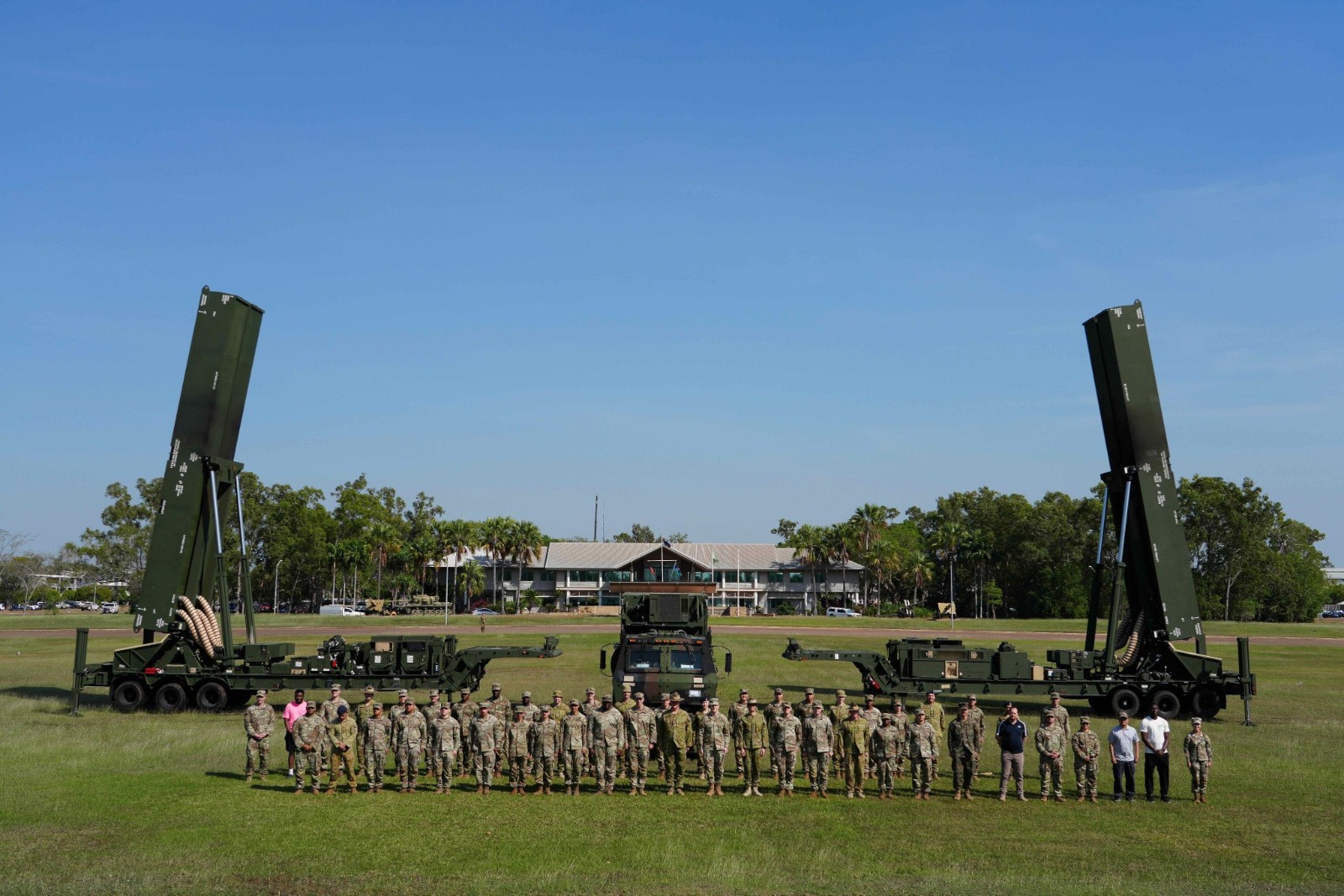
- 09 Aug 2025
In News:
The United States has achieved a major milestone by deploying its Long-Range Hypersonic Weapon (LRHW), known as Dark Eagle, to Australia’s Northern Territory during the Talisman Sabre 2025 multinational military exercise. This marks the system’s first-ever overseas deployment and represents a critical step in strengthening U.S. deterrence capabilities in the Indo-Pacific.
Features:
- Range & Speed: Approximately 2,700–2,776 km with a reported velocity of up to Mach 17.
- Design: A land-based, road-mobile system comprising four trailer-mounted launchers, each with two missile canisters.
- Warhead: Equipped with the Common Hypersonic Glide Body (C-HGB), an unpowered yet maneuverable glide vehicle capable of evading interception.
- Deployment Capability: Road-mobile, air-transportable (C-17), and integrated with the U.S. Army’s Integrated Air and Missile Defense Battle Command System (IBCS).
- Developers: Jointly developed by Lockheed Martin and Northrop Grumman, with collaboration from the U.S. Navy on the glide body and boosters.
- Mission Role: Designed to penetrate anti-access/area-denial (A2/AD) networks, suppress enemy defenses, and engage time-sensitive, high-value targets.
Exercise Talisman Sabre
For the first time, India participated in the 11th edition of Exercise Talisman Sabre 2025, a large-scale Australia-led multinational military exercise. This reflects India’s growing role in the Indo-Pacific security architecture and deepening defense cooperation with like-minded partners.
- Launch & Evolution: Initiated in 2005 as a bilateral drill between Australia and the United States, it has expanded into a premier multinational warfighting exercise.
- Scale: The 2025 edition is the largest-ever, involving over 35,000 personnel from 19 nations including Australia, U.S., India, Japan, France, U.K., and others.
- Geographical Spread: Conducted across Queensland, Northern Territory, Western Australia, New South Wales, and Christmas Island, with a first-ever extension to Papua New Guinea, underscoring wider regional engagement.
- Objective:
- To uphold a free, open, and inclusive Indo-Pacific.
- Enhance military readiness, interoperability, and joint operational capabilities.
- Reinforce regional security cooperation among allies and partners.
- Activities: Includes live-fire drills, amphibious landings, ground maneuvers, air combat, maritime operations, and force preparation exercises, testing joint warfighting capabilities.
Key India-Australia Military Exercises
- AUSINDEX – Naval exercise.
- Pitch Black – Multinational air exercise.
- AustraHind – Bilateral military exercise.
Key India-U.S. Military Exercises
- YudhAbhyas – Joint military training.
- Vajra Prahar – Special Forces exercise.
- Cope India – Air combat exercise.
- Tiger Triumph – Tri-services amphibious exercise.
France’s Largest Wildfire in Decades
- 09 Aug 2025
In News:
Recently, southern France witnessed its worst wildfire since 1949, scorching nearly 16,000 hectares (39,500+ acres) of forests and villages—an area 1.5 times the size of Paris. Though the blaze has now been contained, firefighters remain deployed to prevent flare-ups and secure the affected zone.
Causes and Challenges
- Climatic Drivers: Officials and France’s Environment Minister attributed the fire’s intensity to climate change, prolonged drought, strong winds, and extremely dry vegetation.
- Geographic Factors: Proximity to the Pyrenees mountains and the Mediterranean coast made the terrain vulnerable to rapid fire spread. Loss of traditional vineyards and land-use changes further accelerated the blaze.
- Future Risks: France’s weather office has warned of fresh heatwaves, increasing wildfire vulnerability across southern Europe.
Geographic Overview of France
- Location: Northern & Eastern Hemispheres; bordered by Belgium, Luxembourg, Germany, Switzerland, Italy, Spain, Andorra.
- Water Bodies: Bounded by the Bay of Biscay (west), English Channel (northwest), and Mediterranean Sea (south).
- Major Rivers:Loire (into Atlantic), Seine (into English Channel).
- Mountain Ranges:Alps, Jura, and Pyrenees (natural border with Spain).
- Resources: Coal, iron ore, bauxite, zinc, uranium, potash, gypsum, etc.
- Overseas Regions: Guadeloupe, French Guiana, Réunion, Martinique, Mayotte.
- Capital: Paris.
Notary Portal

- 09 Aug 2025
In News:
The Government of India has launched the Notary Portal, a dedicated digital platform designed to modernize services under the Notaries Act, 1952 and the Notaries Rules, 1956. The initiative, led by the Ministry of Law and Justice, aims to create a faceless, paperless, transparent, and efficient system for notarial services.
Key Features
- Online Interface: Connects notaries appointed by the Central Government with the Ministry for seamless service delivery.
- Services Offered:
- Submission of applications for appointment as notaries.
- Verification of eligibility for appointment.
- Issuance of digitally signed Certificates of Practice.
- Renewal of certificates, change of practice area, and submission of annual returns.
- Current Status: Modules for verification of documents, eligibility checks, and issuance of digitally signed certificates are operational.
Significance
- Enhances transparency and efficiency in legal certification processes.
- Reduces paperwork, delays, and physical interface, thereby minimizing scope for corruption.
- Aligns with the government’s broader agenda of Digital India and modernization of legal services.
SheLeadsProgramme
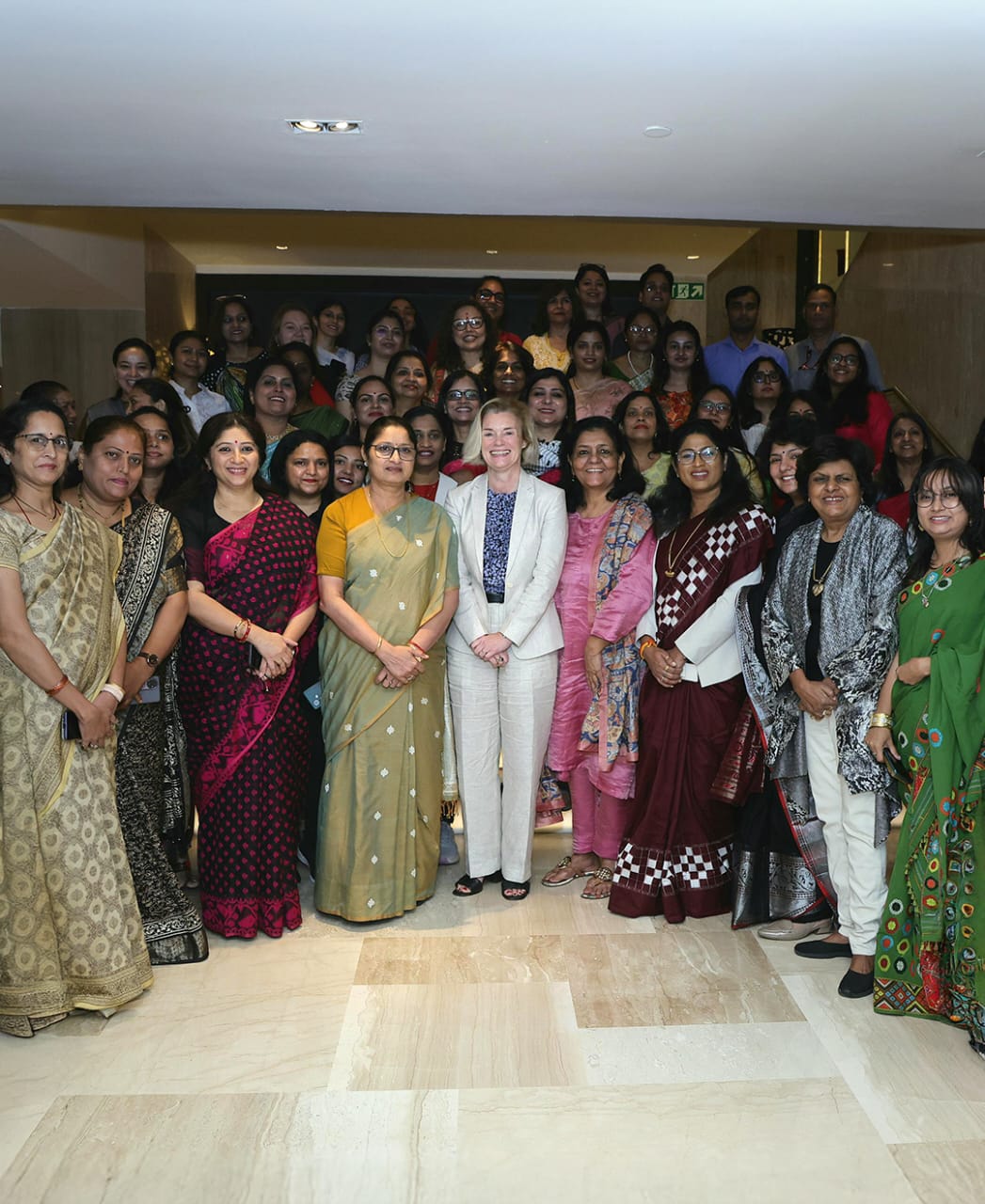
- 09 Aug 2025
In News:
The Union Minister for Women and Child Development, inaugurated the second edition of UN Women’s flagship capacity-building programme — SheLeads II: Workshop for Women Leaders in New Delhi (August 2025). The initiative seeks to strengthen women’s political leadership, a crucial step towards women-led development and the vision of a Viksit Bharat.
Key Highlights:
- The workshop comes in the backdrop of the Women’s Reservation Act, 2023, mandating 33% reservation for women in the Lok Sabha and State Legislative Assemblies.
- Despite this landmark reform, only 14% of seats in the 18th Lok Sabha are currently occupied by women, highlighting the urgent need for leadership training and political empowerment.
About SheLeadsProgramme
- Flagship Initiative: Launched by the UN Women India Country Office.
- Aim: Advance gender equality in public and political leadership, equipping women with skills, confidence, and networks to contest elections and participate effectively in governance.
- Scope: Supports women leaders in shaping policies, governance structures, and electoral narratives that reflect the aspirations of all citizens.
- Participation: In 2025, over 260 applications from 22 states were received; 36 participants were selected for the two-day workshop.
- Engagement: Interactive sessions with MPs, policy experts, and media strategists on electoral campaigning, governance, narrative building, and media engagement.
About UN Women
- Established in 2010 by the UN General Assembly, consolidating resources and mandates under one entity.
- Mandate:
- Support intergovernmental bodies (e.g., Commission on the Status of Women) in framing global standards.
- Assist member states in implementing gender equality commitments through technical and financial support.
- Partner with civil society to advance women’s rights and empowerment.
Strategic Interventions for Green Hydrogen Transition (SIGHT) Scheme
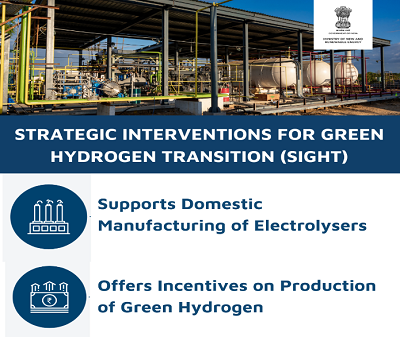
- 09 Aug 2025
In News:
India has achieved a milestone in its clean energy transition with the discovery of a record-low price of ?55.75/kg (USD 641/MT) for Green Ammonia in the first-ever auction conducted by the Solar Energy Corporation of India (SECI) under the Strategic Interventions for Green Hydrogen Transition (SIGHT) Scheme, a core component of the National Green Hydrogen Mission (NGHM).
About the SIGHT Scheme
- Nature: Flagship financial mechanism under NGHM.
- Nodal Ministries: Ministry of New & Renewable Energy (MNRE) and Ministry of Petroleum & Natural Gas (MoPNG).
- Objective:
- Scale up green hydrogen and its derivatives (like green ammonia).
- Make them cost-competitive with fossil-based alternatives.
- Create domestic demand across fertilizer, refining, and shipping sectors.
- Financial Outlay: ?17,490 crore (till 2029–30) out of the total NGHM budget of ?19,744 crore.
- Implementation Modes:
- Mode 1: Incentives to lowest incentive seekers.
- Mode 2A: Aggregated demand for Green Ammonia (fixed incentive).
- Mode 2B: Aggregated demand for Green Hydrogen (fixed incentive).
- Incentive Structure (Mode 2B): ?50/kg (Year 1), ?40/kg (Year 2), ?30/kg (Year 3).
- Monitoring: A joint MNRE–MoPNG committee ensures compliance with notified green hydrogen standards.
First Green Ammonia Auction (Mode-2A)
- Winning Bid: ?55.75/kg (down from ?100.28/kg discovered in H2Global auction 2024).
- Quantity: 75,000 MTPA out of a total tendered 7.24 lakh MTPA.
- Offtaker:Paradeep Phosphates Ltd., Odisha.
- Contract: Fixed 10-year supply, ensuring price stability and supply chain reliability.
- Global Comparison: Price is slightly higher than grey ammonia (USD 515/MT, March 2025) but provides strong economic incentives for clean transition.
Ectopic Pregnancy
- 08 Aug 2025
In News:
A recent rare case from Bulandshahr, Uttar Pradesh, reported a fetus developing in the liver—a condition termed intrahepatic ectopic pregnancy. This has drawn attention to ectopic pregnancies, a critical medical concern.
What is an Ectopic Pregnancy?
- An ectopic pregnancy occurs when a fertilised egg implants outside the uterus, instead of the uterine lining.
- The fallopian tube is the most common site (called tubal pregnancy).
- Other possible sites include the ovary, abdominal cavity, cervix, or, in extremely rare cases, the liver.
Causes
- Blockage or abnormal movement of the fertilised egg.
- Inflammation or scarring of fallopian tubes.
- Damage from prior surgeries or pelvic infections.
- Congenital irregularities in the structure of the fallopian tubes.
Symptoms
- Early pregnancy-like signs: missed periods, nausea, breast tenderness.
- Progressive symptoms:
- Vaginal bleeding
- Abdominal or pelvic pain
- Back pain, shoulder pain, dizziness
- Low blood pressure in severe cases.
Risks & Complications
- If untreated, ectopic pregnancy can cause rupture of the fallopian tube, leading to life-threatening internal bleeding.
- It is a medical emergency and a significant cause of maternal morbidity and mortality.
Treatment
- Methotrexate (a drug that stops cell growth and dissolves existing cells) may be used in some cases.
- Surgical intervention is required in cases of rupture or internal bleeding.
World Air Transport Statistics (WATS) 2024
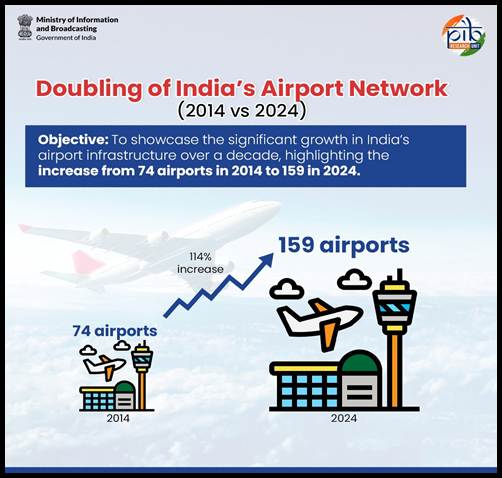
- 08 Aug 2025
In News:
According to the World Air Transport Statistics (WATS) 2024, released by the International Air Transport Association (IATA), India has emerged as the world’s 5th-largest aviation market, handling 211 million passengers in 2024.
Key Findings of WATS 2024
- India: 211 million passengers in 2024, growing 11.1% over 2023.
- Ahead of: Japan (205 million, 18.6% growth).
- Global Rankings:
- United States – 876 million passengers (+5.2%).
- China – 741 million passengers (+18.7%).
- United Kingdom – 261 million passengers.
- Spain – 241 million passengers.
- India – 211 million passengers.
- Busiest Routes (Airport Pairs):
- Global:Jeju–Seoul (South Korea) – 13.2 million passengers.
- India: Mumbai–Delhi – 5.9 million passengers, ranked 7th globally.
- Trend: Asia-Pacific dominated busiest airport-pair rankings.
India’s Aviation Transformation
1. Legislative Reforms
- Protection of Interests in Aircraft Objects Bill, 2025: Aligns leasing system with the Cape Town Convention, lowering leasing costs and boosting investor confidence.
- BharatiyaVayuyanAdhiniyam, 2024: Replaces colonial-era Aircraft Act, 1934; promotes Make in India, simplifies licensing, and aligns with ICAO norms.
2. Infrastructure Expansion
- New Terminals: Foundation laid at Varanasi, Agra, Darbhanga, Bagdogra.
- Greenfield Airports: 12 operationalised since 2014 (e.g., Shirdi, Mopa, Shivamogga); Navi Mumbai and Noida (Jewar) to be operational by 2025–26.
- Investment: ?91,000 crore allocated under National Infrastructure Pipeline (NIP); ?82,600 crore already spent by Nov 2024.
3. Government Initiatives
- UDAN Scheme: Expands regional air connectivity, affordable travel.
- National Civil Aviation Policy (NCAP): Boosts MRO (Maintenance, Repair, Overhaul), airport development, and leasing ecosystem.
- Green Airports Policy: Promotes renewable energy, waste reduction, and carbon neutrality.
- Aircraft Leasing Hub:GIFT City being developed as a global hub for aircraft leasing and financing.
Significance
- India consolidates its position as a major aviation hub, driven by rising passenger traffic, policy reforms, and infrastructure expansion.
- Reflects growing regional connectivity under UDAN and global competitiveness with regulatory modernisation.
- Places India in the top five global aviation markets for the first time.
Asian Giant Tortoise
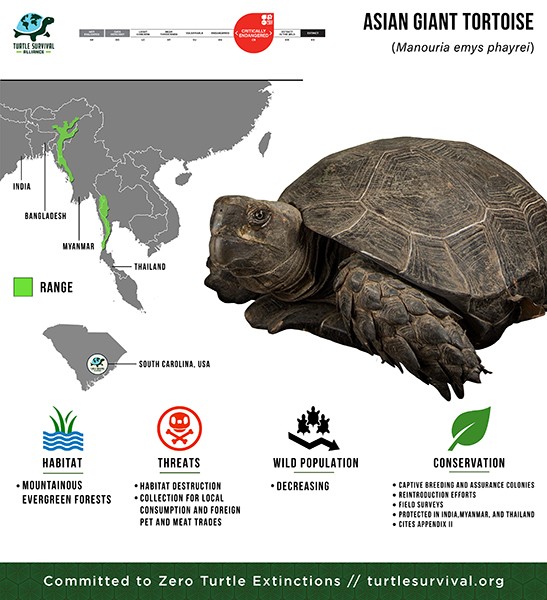
- 08 Aug 2025
In News:
The Asian Giant Tortoise, the largest tortoise in mainland Asia, has been reintroduced into the Zeliang Community Reserve in Peren district, Nagaland. Local youth groups have been engaged as “tortoise guardians” to ensure protection.
About Asian Giant Tortoise
- Scientific name:Manouriaemysphayrei
- Common name: Asian Giant Tortoise / “Small elephants of the forests” (due to their role in forest ecology).
- Lineage: Among the oldest tortoise lineages in the world; display unique nesting behaviour similar to crocodilians, where they protect eggs and regulate incubation temperatures.
- Appearance: Hatchlings are greyish-brown, becoming charcoal-colored in adulthood.
- Diet: Bamboo shoots, tubers, soft vegetation, some invertebrates, and frogs.
Habitat & Distribution
- Habitat: Tropical and subtropical evergreen hill forests.
- Range in India: Northeastern states – Arunachal Pradesh, Nagaland, Assam.
- Global distribution: Bangladesh, Myanmar, Thailand, Malaysia, Indonesia.
Ecological Role
- Seed Dispersal: Helps regenerate forests by dispersing seeds.
- Scavenging: Cleans forest floor by feeding on decomposed organic matter.
Threats
- Hunting and collection for consumption.
- Illegal trade (pets and exotic meat).
- Habitat destruction due to shifting cultivation, deforestation, and infrastructure projects.
Conservation Status
- IUCN Red List: Critically Endangered
- CITES: Appendix II
Conservation Efforts
- Captive Breeding & Assurance Colonies for population recovery.
- Reintroduction Programmes like the recent one in Nagaland.
- Community-based conservation with active participation of locals as guardians.
- Field Surveys to monitor population health and habitat conditions.
Global Artificial Intelligence (AI) City Index 2025
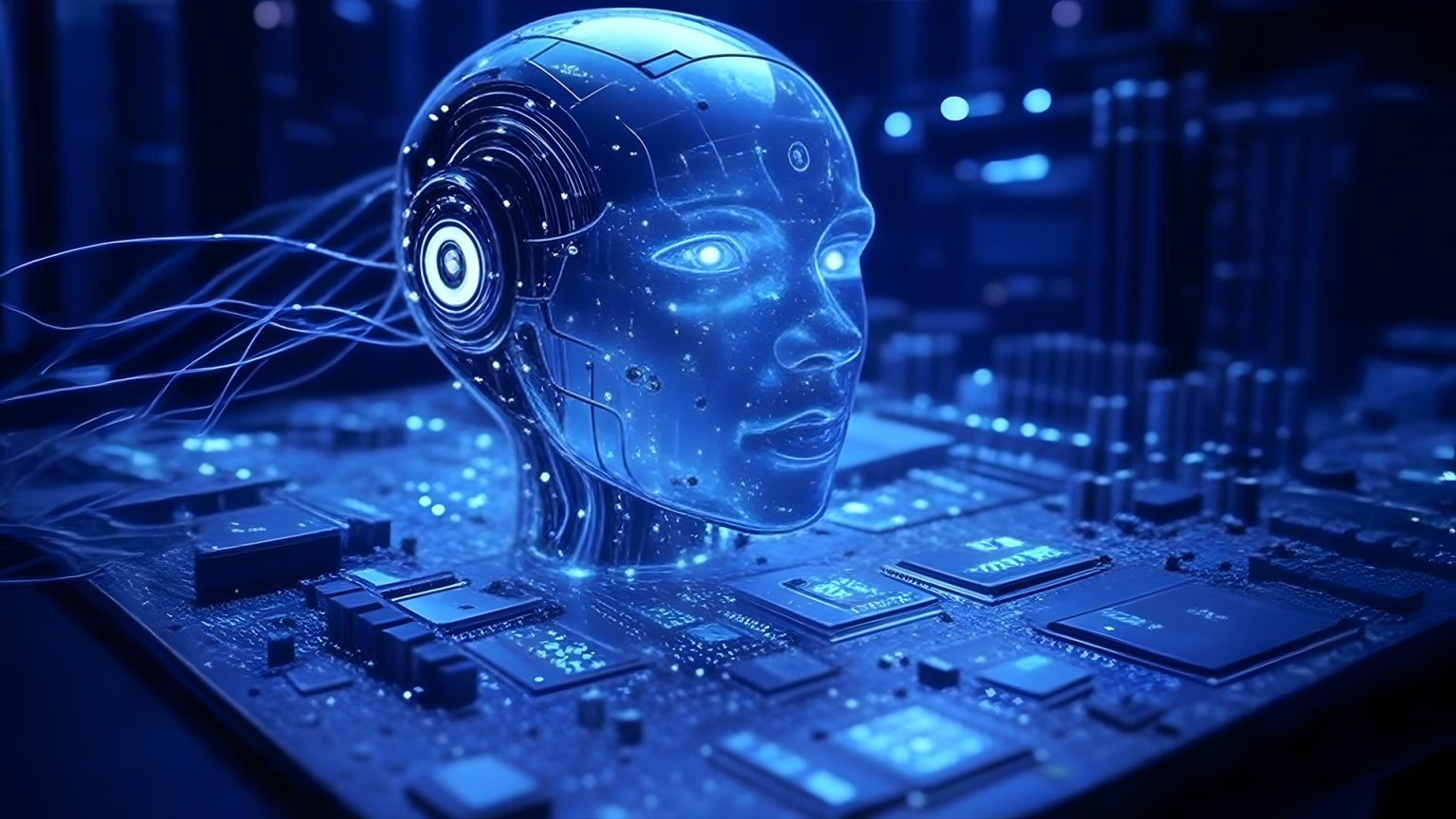
- 08 Aug 2025
In News:
Bengaluru ranks 26thin Global AI City Index, Singapore secures top spot.
About the Index
- Published by: Market research firm Counterpoint Research.
- Objective: Benchmarks global cities on their AI capacity, investment, and innovation.
- Evaluation Criteria:
- AI R&D ecosystem and startup strength
- Investment inflows & public–private partnerships
- AI applications in transport, healthcare, and education
- Data centre growth & digital infrastructure readiness
- Governance and regulatory frameworks
Global Rankings (2025)
- Top 5 Cities: Singapore (1st), Seoul (2nd), Beijing (3rd), Dubai (4th), San Francisco (5th).
- Key Trends:
- Singapore’s success driven by strong startup ecosystem and public–private collaboration in healthcare, telecom, and transport.
- Seoul excels in AI healthcare and education applications.
- Beijing introduced formal AI education for all primary & secondary school students (2025).
- Investments in supercomputing expected to reduce gap between North America and China.
- Tech industry leaders: Microsoft (most active vendor with AI data centres, training, innovation hubs), followed by Google and Amazon expanding their global AI footprint.
India’s Performance
- Bengaluru: Ranked 26th globally – India’s top AI R&D and data centre hub with a vibrant startup ecosystem attracting foreign investment.
- Other Indian Cities:
- Mumbai & Delhi – Leveraging AI for traffic management and public security.
- Chennai & Kolkata – Emerging AI hubs.
- India’s Challenge: Report highlights need for a comprehensive AI roadmap and robust regulatory framework to maximize growth potential.
Significance
- Establishes Bengaluru as India’s AI capital, strengthening its role in digital infrastructure and innovation.
- Reflects India’s growing presence in the global AI landscape while underlining policy gaps.
- Offers lessons from global leaders like Singapore and Seoul on AI integration in governance, education, and healthcare.
India Electric Mobility Index (IEMI)

- 08 Aug 2025
In News:
NITI Aayog launched the India Electric Mobility Index (IEMI), a first-of-its-kind tool developed to comprehensively track and benchmark the progress of States and Union Territories (UTs) in achieving their Electric Mobility goals.
Key Highlights:
- Objective: The IEMIis a first-of-its-kind national tool designed to comprehensively track, evaluate, and benchmark the performance of States and Union Territories (UTs) in their electric mobility transition. It aims to guide sub-national policies, strengthen EV adoption, and align efforts with India’s net-zero by 2070 target.
Core Features of IEMI
- Benchmarking Framework: Scores States/UTs on a 0–100 scale.
- Indicators: Covers 16 indicators under three core themes:
- Transport Electrification Progress – Demand-side adoption in passenger, freight, and public transport.
- Charging Infrastructure Readiness – Deployment of public/private charging stations and supportive policies.
- EV Research & Innovation Ecosystem – R&D, manufacturing capacity, and technological advancements.
- Dashboard Access: Interactive tool for real-time comparison, rankings, and insights.
- Policy Guidance Tool: Identifies gaps, best practices, and investment priorities.
- Cross-Sectoral Utility: Supports inter-ministerial coordination, capacity building, and infrastructure planning.
Trends & Rankings in IEMI 2024
- Top Performers:Delhi, Maharashtra, and Chandigarh led in EV readiness and innovation.
- EV Share in Sales: Grew from 5% (2018) to 7.7% (2024).
- Total EVs on Road: Surpassed 5 million by June 2025, with 12 lakh EVs registered in 2024 alone.
- Charging Infrastructure: Over 25,000 public charging stations installed by October 2024; Karnataka leads in installations.
- Policy Coverage:29 States/UTs have notified EV policies; 4 more are in draft stage.
Significance of IEMI
- Promotes Green Mobility: Aligns state actions with India’s decarbonisation roadmap.
- Encourages Healthy Competition: Enables peer learning and best practice sharing among states.
- Supports Make in India: Strengthens domestic EV manufacturing and innovation clusters.
- Guides Infrastructure Planning: Highlights charging network gaps for targeted rollouts.
- Informs Policy: Helps States/UTs design tailored strategies for equitable e-mobility adoption.
Mount LewotobiLakiLaki
- 07 Aug 2025
In News:
Mount LewotobiLakiLaki, one of Indonesia’s most active volcanoes, erupted in August 2025, spewing volcanic ash up to 18 km into the atmosphere and blanketing nearby villages on the island of Flores. The eruption followed another event just hours earlier, which sent ash plumes 10 km high, accompanied by glowing lava and volcanic lightning.
Key Features of the Eruption
- Scale: Among Indonesia’s largest volcanic events since the 2010 Mount Merapi eruption, which killed over 350 people and displaced hundreds of thousands.
- Hazards Observed:
- Pyroclastic flows of gas, rocks, and lava up to 5 km down the slopes.
- Volcanic debris, including hot gravel, scattered as far as 8 km from the crater.
- Risk of lahars (volcanic mudflows) triggered by heavy rainfall.
- Alert Status: Indonesia’s Geology Agency placed the volcano on the highest alert level since June 18, 2025. The exclusion zone was extended to 7 km radius. Thousands of residents have been permanently relocated due to repeated eruptions, including a deadly series in November 2024 that killed nine and destroyed homes.
Geological Context
- Volcano Type: Part of the Lewotobi twin stratovolcano system (“husband and wife”), comprising:
- LewotobiLakiLaki (male)
- Lewotobi Perempuan(female)
- Location: Island of Flores, Indonesia.
- Height: 1,584 metres (5,197 feet).
- Ring of Fire Connection:
- Situated along the Pacific Ring of Fire (Circum-Pacific Belt), a 40,000 km horseshoe-shaped zone around the Pacific Ocean.
- Hosts 75% of Earth’s volcanoes (over 450) and accounts for 90% of global earthquakes.
India–Nepal Mutual Legal Assistance Pact and Extradition Treaty
- 07 Aug 2025
In News:
India and Nepal have recently finalised a Mutual Legal Assistance (MLA) Agreement in Criminal Matters, marking a significant step in strengthening bilateral security cooperation. The pact is designed to enhance cross-border collaboration in criminal investigations, evidence sharing, and law enforcement.
Mutual Legal Assistance (MLA) in Criminal Matters
- Definition: A bilateral or multilateral treaty that provides a structured framework for cooperation between countries to combat transnational crimes such as terrorism, human trafficking, smuggling, cybercrime, and financial fraud.
- Legal Nature:
- MLAT countries: Legally binding and based on reciprocity.
- Non-MLAT countries: Cooperation remains discretionary.
- India’s Practice:
- Central Authority: Ministry of Home Affairs (MHA), assisted by the Ministry of External Affairs (MEA) when routed through diplomatic channels.
- Existing Network: India has signed MLA treaties with 42 countries (as of November 2019), including the USA (2005), UK (1995), and France (2005).
- Significance for Nepal: Until now, Nepal (along with Bhutan) was the only neighbouring country without such a pact with India, which inadvertently made it a safe haven for criminals.
Extradition Treaty with Nepal
- Current Treaty: India and Nepal are working to revise their outdated 1953 Extradition Treaty.
- Objective of Revision: To overcome legal and administrative hurdles that delay or prevent the extradition of fugitives involved in organised crime and terrorism.
Strategic Importance
- Enhances border management and security cooperation between the two countries.
- Prevents misuse of the open India–Nepal border by criminals and extremists.
- Strengthens India’s regional security framework and supports its fight against transnational crime.
Framework Agreement

- 07 Aug 2025
In News:
The Framework Agreement (FA), signed on 3rd August 2015 between the Government of India and the National Socialist Council of Nagalim–Isak-Muivah (NSCN-IM), remains a central element in the ongoing Naga peace process. Its 10th anniversary (2025) witnessed renewed debates over its sanctity and future.
Background
- The Indo-Naga conflict has persisted for over six decades, rooted in demands for sovereignty and recognition of the Nagas’ unique identity.
- The Government of India first acknowledged the “unique history of the Nagas” in 2002 (Amsterdam talks), paving the way for structured peace negotiations.
The Framework Agreement: Key Provisions
- Recognition of Political Identity: India recognized the Nagas’ distinct historical and cultural identity.
- Shared Sovereignty: Proposed a cooperative model of governance, dividing powers between India and Nagalim while ensuring coexistence.
- Political Equality: Both India’s and Nagalim’s political systems to be respected, avoiding a hierarchical relationship.
- People-Centric Governance: Emphasizes sovereignty residing with the people, aiming for inclusive, democratic self-rule.
- Commitment to Peace: Seeks to end armed struggle and establish a roadmap for lasting peace and autonomy.
Political Significance
- The accord symbolically acknowledges the existence of the “Naga nation.”
- It shifted the discourse from an administrative problem to a political conflict requiring negotiated settlement.
- It was signed in New Delhi in the presence of Prime Minister Narendra Modi and interlocutor RN Ravi.
Current Developments
- On the 10th anniversary (2025), NSCN-IM chairman Q Tuccu reaffirmed commitment to the FA, calling it the “torchbearer of Naga sovereignty”.
- He criticized the Naga National Political Groups (NNPGs)—a coalition of other Naga factions—accusing them of aligning too closely with New Delhi by accepting a settlement under the Indian Constitution (“Agreed Position”).
- Tuccu argued that the NNPGs’ stance compromises the Nagas’ historical and political identity, unlike the FA which ensures recognition of sovereign rights.
- NSCN-IM maintains that the Government of India is slow in implementing the FA, but it remains committed despite challenges.
Operation Akhal
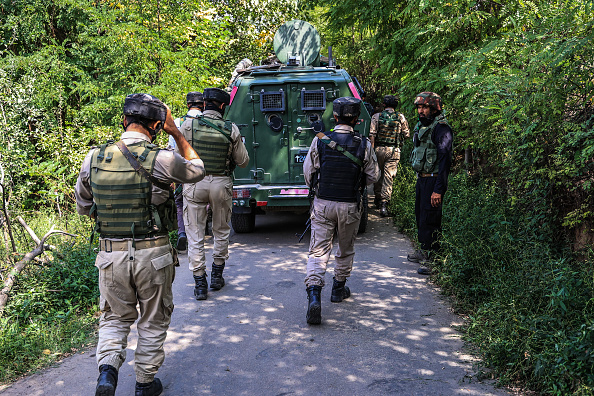
- 07 Aug 2025
In News:
Operation Akhal is a high-intensity counter-terrorism operation being conducted in the AkhalKhulsan forest area of Kulgam district, Jammu & Kashmir. Launched jointly by the Indian Army’s Chinar Corps, the J&K Police, and the Special Operations Group (SOG), the operation reflects India’s continued strategy to dismantle terror networks in the Union Territory.
Objectives
- Neutralize 3–5 terrorists based on intelligence inputs.
- Curb the activities of local terror modules.
- Strengthen internal security in South Kashmir.
- Disrupt associated networks of hawala funding, drug smuggling, and Overground Workers (OGWs).
Key Features
- Nature of Operation: Involves intermittent but calibrated firefights in dense forest terrain, supported by drone surveillance and reinforcements.
- Extended Duration: The operation has continued for several days, indicating the presence of multiple terrorists offering strong resistance.
- Casualties:
- At least three unidentified terrorists have been neutralized.
- Two soldiers — Lance Naik Pritpal Singh and Sepoy Harminder Singh — succumbed to injuries sustained in the encounter, highlighting the intensity of the conflict.
- Security Measures: Strict cordon around suspected hideouts, enhanced surveillance, and troop deployment to block escape routes.
Broader Context
- Operation Akhal is part of a post-Pahalgam crackdown on terror groups and their ecosystem in South Kashmir.
- Reflects India’s evolving counter-terror strategy combining ground operations, intelligence-based targeting, and crackdown on financial/logistical support systems.
Right to Repair and Repairability Index in India

- 07 Aug 2025
In News:
India has accepted the proposal to introduce a Repairability Index for electronics, aligning with the global movement to strengthen the Right to Repair. This is seen as a step towards sustainable consumption and consumer empowerment, but concerns remain about the neglect of India’s vibrant informal repair economy, which is rich in tacit and generational knowledge.
Understanding Right to Repair
- Definition: The Right to Repair ensures that consumers can repair, modify, or access affordable third-party repair services for their products.
- Global Trends:
- The European Union mandates access to spare parts and repair manuals.
- Several U.S. states have legislated consumer rights for repair.
- The principle supports UN SDG-12 (Responsible Consumption and Production).
- India’s Framework:In 2023, the Department of Consumer Affairs launched a Right to Repair portal, covering electronics, automobiles, and farm equipment.
Significance Beyond Consumer Rights
- Tacit Knowledge Systems: Informal repairers acquire skills through observation and mentorship, not formal certifications. Repair hubs like Karol Bagh (Delhi) and Ritchie Street (Chennai) embody this tradition.
- Cultural Identity: Repair is not just technical work but part of India’s jugaad culture, reflecting frugality, resource reuse, and indigenous innovation.
- Sustainability: Repair extends product life, prevents premature disposal, and reduces e-waste burden.
- Unrecognized Workforce: Informal repairers, despite their contribution to the circular economy, remain excluded from labour laws and digital policy frameworks.
Policy and Digital Gaps
- E-Waste Rules, 2022: Focus primarily on recycling while overlooking repair as the first line of defence.
- Skill India (PMKVY): Training modules remain rigid and unsuitable for improvisational, diagnostic repair work.
- AI and Digital Public Infrastructure (DPI) Policies: Emphasize structured data but ignore human-led, tacit repair knowledge.
- Education (NEP 2020): While advocating experiential learning, it fails to recognize repair work as skill education.
- Legal Support: Informal repairers lack certification pathways, formal rights, or recognition within the digital economy roadmap.
Towards an Inclusive Repair Ecosystem
- Repairability Standards: Embed repair norms in AI systems, public procurement, and hardware design.
- Expanded Right to Repair:
- Introduce product classifications by repairability.
- Ensure access to manuals and spare parts.
- Promote community repair hubs.
- Skill Recognition: Integrate informal repairers into e-Shram, and design flexible reskilling modules.
- Knowledge Preservation: Use AI tools (LLMs, decision trees) to digitize tacit repair knowledge and make it shareable.
- Policy Convergence: Collaborate across ministries — Labour (MoLE), Electronics & IT (MeitY), Rural Development (MoRD) — for a unified repair ecosystem.
Single Window System for Appointment of State DGPs
- 06 Aug 2025
In News:
The Union Government has notified a Single Window System (SWS) to streamline the appointment of State Directors General of Police (DGPs)/Heads of Police Force (HoPFs). This move seeks to ensure transparency, uniformity, and compliance with Supreme Court directives inPrakash Singh vs Union of India (2006) and the Ministry of Home Affairs (MHA) guidelines.
Key Features of the SWS
- Standardization: Provides a checklist and uniform formats for States to submit proposals.
- Eligibility Certification: A Secretary-rank officer must certify that officers proposed for empanelment fulfill criteria, including a minimum of 6 months residual service.
- Timely Submission: States are mandated to send proposals at least 3 months before the anticipated vacancy of the DGP/HoPF.
Constitutional and Legal Framework
- State Subject: Police is a State subject under the 7th Schedule of the Constitution.
- Superintendence: As per Section 3 of the Police Act, 1861, the superintendence of police lies with the State Government.
- District Level: A dual control system exists—authority is shared between the District Magistrate (executive) and the Superintendent of Police (police administration).
- State Police Leadership: State police forces are generally headed by officers of the DGP rank.
India–EFTA Trade and Economic Partnership Agreement (TEPA)
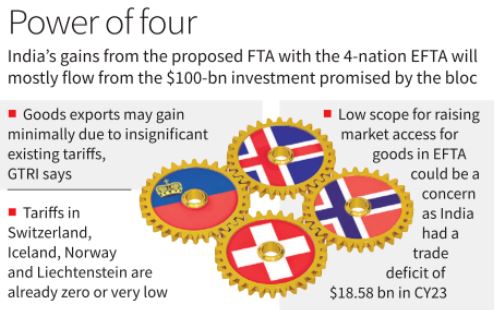
- 06 Aug 2025
In News:
The Trade and Economic Partnership Agreement (TEPA) between India and the European Free Trade Association (EFTA) — comprising Iceland, Liechtenstein, Norway, and Switzerland — will come into force on 1 October 2025.
Key Features of TEPA
- Strategic Investment Commitment
- Legally binding commitment of USD 100 billion FDI in India over 15 years (USD 50 billion in first 10 years + USD 50 billion in next 5 years).
- Expected to generate 1 million jobs.
- Excludes foreign portfolio investment (FPI); sovereign wealth funds exempted.
- India can withdraw tariff concessions if commitments are not met.
- Market Access & Tariff Concessions
- EFTA: 92.2% tariff lines offered, covering 99.6% of India’s exports (100% non-agri products + concessions on processed agri products).
- India: 82.7% tariff lines offered, covering 95.3% of EFTA exports (including gold, which retains existing duty).
- Duty-free access: Indian basmati and non-basmati rice exports, without reciprocity.
- Exclusions: Dairy, soya, coal, and sensitive agri products; protection given to sectors linked with PLI schemes (e.g., pharma, medical devices, processed food).
- Concessions: Cheaper Swiss chocolates, wines, luxury watches (though wines < USD 5 excluded to protect Indian wineries).
- Services & Professional Mobility
- Boosts Indian services exports: IT, business, cultural, sporting, educational, and audiovisual services.
- Mutual Recognition Agreements (MRAs): Nursing, accountancy, and architecture professionals to gain work access in EFTA countries.
- Legal & Institutional Framework
- Covers 14 chapters: market access, trade facilitation, investment promotion, IPR, sustainable development.
- Protects India’s generic medicines; prevents evergreening of patents.
- Promotes technology collaboration but not compulsory technology transfer.
About the European Free Trade Association (EFTA)
- Established: 1960 (Stockholm Convention).
- Members: Iceland, Liechtenstein, Norway, Switzerland (not part of the EU).
- Aim: Promote free trade and economic integration among members and global partners.
India–EFTA Trade Relations
- India is EFTA’s 5th largest trading partner (after EU, US, UK, China).
- Trade Volume (2024–25): USD 24.4 billion.
- India’s exports: USD 1.96 billion (chemicals, iron & steel, precious stones, sports goods, bulk drugs).
- Imports from EFTA: USD 22.45 billion (mainly gold, silver, coal, pharma, vegetable oil, medical equipment, dairy machinery).
- Deficit: Large trade deficit, primarily due to gold imports from Switzerland (USD 20.7 billion in 2021–22).
- India–EFTA Desk: Set up by Invest India as a single-window platform to facilitate investments under TEPA.
Krasheninnikov Volcano
- 06 Aug 2025
In News:
The Krasheninnikov volcano, located in Russia’s Kamchatka Peninsula, recently erupted for the first time in recorded history. The eruption followed a nearby magnitude 8.8 earthquake and released ash plumes reaching 20,000 ft (≈6,000 m) into the atmosphere. Authorities issued an “orange” aviation hazard code due to potential risks to air traffic.
About Krasheninnikov Volcano
- Type: Active stratovolcano (composite volcano).
- Height: ~1,856–1,886 m.
- Structure: Formed within a 9 km wide collapsed caldera created by a massive eruption ~39,600 years ago that expelled 50 cubic km of dacitic pumice.
- Cones: Contains two eruptive cones; the southern cone has an 800 m wide, 140 m deep crater.
- Past Activity: Last known eruption occurred ~400–600 years ago.
Kamchatka Peninsula – Volcanic Hotspot
- Lies along the Pacific “Ring of Fire”, one of the world’s most seismically active zones.
- Home to 114 Holocene volcanoes (eruptions recorded in the last ~12,000 years).
- Known for frequent explosive eruptions due to subduction of the Pacific Plate beneath the Eurasian Plate.
Stratovolcano – Key Features
- Steep, conical structure with alternating layers of lava and pyroclastic deposits.
- Typically found above subduction zones (e.g., Pacific Ring of Fire).
- Characterized by explosive eruptions due to viscous andesite/dacite lavas that trap gases.
- Account for about 60% of Earth’s volcanoes.
- Example: Mount Fuji (Japan), Mount Vesuvius (Italy), Mount St. Helens (USA).
Significance of 2025 Eruption
- First recorded activity of Krasheninnikov highlights the unpredictability of dormant volcanoes.
- Demonstrates the link between major seismic events and volcanic eruptions in tectonically active zones.
- Raises concerns for aviation safety, regional ecology, and monitoring of Ring of Fire volcanism.
Slovenia
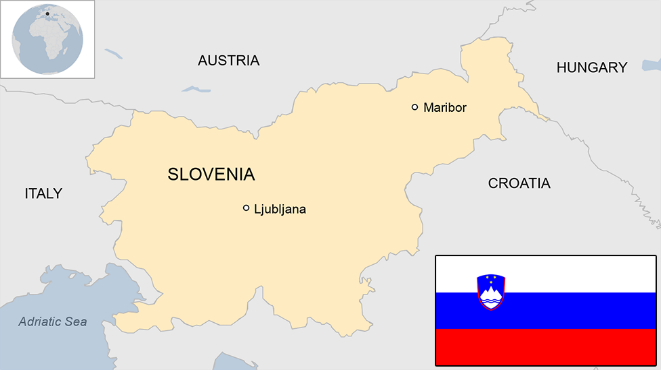
- 06 Aug 2025
In News:
Slovenia has announced a complete ban on the import, export, and transit of weapons to and from Israel in response to Israel’s military actions in Gaza. This makes it the first European Union (EU) member state to enforce a blanket arms embargo on Israel.
Context and Diplomatic Stand
- Slovenia has frequently criticized Israel for alleged atrocities in Gaza.
- In June 2024, Slovenia’s parliament recognisedPalestinian statehood, joining Ireland, Norway, and Spain.
- In July 2024, it barred two far-right Israeli ministers from entering the country, citing “incitement of violence” and “genocidal statements.”
- Although Slovenia’s arms trade with Israel is minimal, the decision carries symbolic diplomatic weight, intended to pressure Israel amid growing international condemnation.
Other European countries have taken partial measures:
- UK (2024): Suspended export of some weapons that could breach international law.
- Spain (2023): Halted arms sales.
- Netherlands, France, Belgium: Tightened regulations or faced legal challenges, but none imposed a total embargo like Slovenia.
Slovenian Prime Minister Robert Golob emphasized that Slovenia would act unilaterally in the absence of collective EU action, accusing the EU of disunity in addressing the humanitarian crisis in Gaza.
About Slovenia
- Location: Central Europe; formerly part of Yugoslavia.
- Capital: Ljubljana.
- Borders: Austria, Hungary, Croatia, Italy; coastline along the Adriatic Sea (Gulf of Venice).
- Memberships: Joined EU and NATO in 2004; uses the Euro.
- Physical Features:
- Alpine Highlands (~40% of territory) – includes Julian Alps, Karavanke, Kamnik-Savinja Alps. Highest peak: Mount Triglav (2,864 m).
- Karst Plateau – globally renowned for caves, sinkholes, underground rivers.
- Subpannonian Plains – fertile alluvial soils; rivers Sava, Drava, Mura drain toward the Danube.
- Slovene Littoral – 47 km coastline; major port Koper.
Financial Sector Changes from August 2025
- 06 Aug 2025
In News:
India’s financial ecosystem is undergoing significant operational changes aimed at strengthening stability, efficiency, and consumer protection. From August 1, 2025, several regulatory and institutional reforms—spanning digital payments, credit cards, fuel pricing, trading hours, and monetary policy—are set to reshape the financial landscape.
UPI Operational Reforms by NPCI
The National Payments Corporation of India (NPCI), which manages the Unified Payments Interface (UPI), has introduced revised operational rules to reduce transaction delays and prevent system overload during peak hours. UPI, India’s flagship digital payment platform, has emerged as the backbone of cashless transactions with over 14 billion monthly transactions (2025 data).
Key reforms effective from August 1, 2025:
- Balance Check Limit: Maximum 50 balance enquiries per day per app.
- Linked Account Enquiries: Limited to 25 per day per app.
- Auto-Pay Transactions: Permitted only during non-peak hours (before 10 AM, 1–5 PM, after 9:30 PM).
- Transaction Status Checks: Restricted to 3 per transaction, with a mandatory 90-second gap.
- Beneficiary Name Display: Recipient’s registered bank name will be shown before confirmation to curb fraud.
These reforms reflect an effort to balance user convenience with systemic efficiency while reducing risks of fraudulent transfers.
Credit Card Insurance Changes by SBI
The State Bank of India (SBI), India’s largest lender, has announced withdrawal of complimentary air accident insurance cover on several co-branded credit cards. Earlier, insurance covers of ?1 crore (ELITE series) and ?50 lakh (PRIME/Platinum series) were provided. The discontinuation reflects banks’ attempts to rationalize costs in a competitive credit market, but it also raises concerns regarding customer protection.
Fuel Price Revisions
Prices of LPG cylinders, CNG, PNG, and aviation turbine fuel (ATF) are subject to monthly review. Effective August 1, 2025, fresh revisions are expected in line with global crude trends and domestic subsidy policies. Given that LPG and CNG are crucial for households and transport, even marginal adjustments influence inflation and consumer spending.
Extension of Trading Hours
The Reserve Bank of India (RBI) has extended trading hours for money market instruments to deepen liquidity and align with global practices:
- Call Money Market: Extended to 9:00 AM – 7:00 PM (effective July 1, 2025).
- Market Repo & Tri-Party Repo (TREPs): Extended to 9:00 AM – 4:00 PM (effective August 1, 2025).
This reform is expected to improve liquidity management for banks and non-banking financial institutions, enhancing the efficiency of short-term borrowing and lending.
Apna Ghar Initiative

- 05 Aug 2025
In News:
The Ministry of Petroleum and Natural Gas has launched ‘Apna Ghar’, a nationwide initiative to provide resting facilities for truck drivers along highways. The programme, launched in 2025, aims to enhance road safety, driver well-being, and logistics efficiency, addressing the long-standing issue of fatigue and poor hygiene conditions faced by India’s trucking workforce.
Key Features of Apna Ghar
- Coverage: As of July 1, 2025, 368 units with 4,611 beds have been set up at retail fuel outlets along national and state highways by Public Sector Oil Marketing Companies (OMCs).
- Facilities Provided:
- Dormitories (10–30 beds per unit)
- Clean toilets and dedicated bathing areas (Houdas)
- Restaurants/dhabas and self-cooking spaces
- Purified drinking water access
- Technology Integration: Launch of the ‘Apna Ghar’ mobile app for bookings, user feedback, and engagement.
- Implementation Model: Public sector OMCs build and manage facilities at fuel retail stations, ensuring accessibility to drivers during long-haul journeys.
Objectives and Significance
- Road Safety: Reduces driver fatigue, a major cause of road accidents.
- Worker Welfare: Provides dignified working and resting conditions for truckers, a vital yet often informal part of India’s transport ecosystem.
- Economic Impact: Supports supply chain resilience by improving the productivity and well-being of drivers.
- Social Development: Aligns with Sustainable Development Goal 8 (Decent Work and Economic Growth) by promoting safe and humane working environments.
National Waterway-57 (River Kopili)
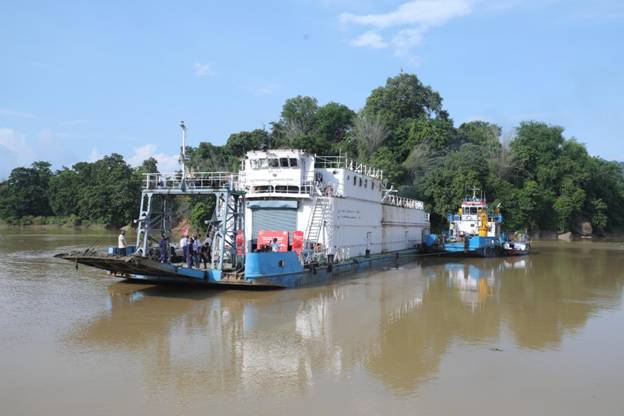
- 05 Aug 2025
In News:
In a landmark development for sustainable logistics in the Northeast, the Kopili River (National Waterway-57) was operationalised with the maiden cargo movement of 300 MT of cement from Chandrapur (Kamrup) to Hatsingimari (South Salmara, Assam).
About the Kopili River
- Origin:Saipong Reserve Forest in the Borail Range, North Cachar Hills, at 1,525 m altitude.
- Length: 256 km (78 km along the Assam–Meghalaya border; 178 km in Assam).
- Basin Coverage: Flows through Meghalaya and Assam, making it an interstate river.
- Significance: Largest south bank tributary of the Brahmaputra in Assam; traverses North Cachar Hill, KarbiAnglong, Nagaon, and Morigaon districts.
- Agricultural Zone: Supports cultivation of rice (winter, summer, autumn), wheat, mustard, and rapeseed in Kamrup and surrounding areas.
Strategic and Policy Significance
- Economic Impact: Reduces road congestion, lowers logistics costs, and provides an efficient alternative for bulk cargo. The trial run replaced the equivalent of 23 truckloads of cement.
- Environmental Gains: Inland water transport curbs emissions and promotes sustainable logistics.
- Regional Development: Enhances connectivity for riverine communities, boosts trade, and unlocks economic opportunities in Assam.
- National Integration: Aligns with Maritime India Vision 2030 and PM Gati Shakti, which seek to create multimodal, integrated transport infrastructure.
Pradhan Mantri National Dialysis Programme (PMNDP)

- 05 Aug 2025
In News:
The Pradhan Mantri National Dialysis Programme (PMNDP) has been significantly expanded by the Government of India and is now operational in all 36 States and Union Territories, covering 751 districts. As of June 30, 2025, a total of 1,704 dialysis centres are functional under the programme.
Background and Objectives
- Launched in 2016, the PMNDP aims to provide free dialysis services to patients suffering from end-stage kidney failure, with special focus on Below Poverty Line (BPL) beneficiaries.
- It is implemented under the National Health Mission (NHM) in Public-Private Partnership (PPP) mode.
- The programme addresses the rising burden of chronic kidney disease and aims to ensure equitable access to life-saving renal care across India.
Key Features
- Dialysis Services: Supports both Haemodialysis and Peritoneal Dialysis.
- Infrastructure Expansion: Initially recommended at all district hospitals, with flexibility to scale down to Community Health Centres (CHCs), especially in remote and tribal regions.
- PMNDP Portal: Integrates all NHM-supported dialysis centres, facilitates creation of a renal registry, and ensures service portability within states (“One State–One Dialysis”) and eventually nationwide (“One Nation–One Dialysis”).
- Funding Mechanism: The NHM provides financial assistance to States/UTs for setting up and operating dialysis centres.
- Implementation Strategy: Expansion is based on gap assessments carried out by States/UTs as part of their annual Programme Implementation Plans (PIPs).
Significance
- Health Equity: Extends life-saving kidney care to vulnerable groups, including rural and tribal populations.
- Cost Reduction: Provides free dialysis, reducing the out-of-pocket burden on families.
- Data Integration: The renal registry aids in epidemiological tracking and planning of kidney health interventions.
- Public Health Impact: Strengthens India’s healthcare delivery under Universal Health Coverage (UHC) goals.
‘Matri Van’ initiative
- 05 Aug 2025
In News:
The Government of India has launched the ‘Matri Van’ initiative in Gurugram under the ‘Ek Ped MaaKe Naam’ programme, symbolizing ecological preservation and community participation. The project was inaugurated by the Union Minister for Environment, Forest and Climate Change, Shri Bhupender Yadav, and the Union Minister for Housing and Urban Affairs and Power, Shri Manohar Lal, during Van Mahotsav 2025.
About the Initiative
- Location & Scale: Spread over 750 acres in the Aravalli hill area along the Gurugram-Faridabad road.
- Concept: A theme-based urban forest aimed at nurturing generations through mother-nature-inspired green efforts.
- Vision: To enhance biodiversity, public well-being, and urban sustainability, while serving as the “heart and lung of Delhi-NCR.”
- Collaboration: Developed through multi-stakeholder participation, including CSR partners, Resident Welfare Associations (RWAs), NGOs, MNCs, school children, and government bodies.
Ecological and Social Significance
- Restoration of degraded land by removing invasive Kabuli Kikar (Prosopis juliflora).
- Plantation of native Aravalli species such as Dhak, Amaltash, Neem, Bargad, Peepal, Gullar, Pilkhan, Khair, Semal, and bamboo.
- Development of theme-based groves, including:
- Bodhi Vatika (sacred fig species like Bargad, Peepal),
- Bamboosetum (bamboo species),
- Aravalli Arboretum,
- PushpVatika (flowering trees),
- Sugandh Vatika (fragrant species),
- Medicinal Plants Vatika,
- Nakshatra and RashiVatika,
- Cactus Garden,
- Butterfly Garden.
Facilities and Infrastructure
- Eco-tourism and community spaces: nature trails, cycle tracks, yoga zones, gazebos, and sitting areas.
- Environmental safeguards: treated water irrigation systems, sprinklers, and waterbodies to aid water conservation and urban flood prevention.
- Urban amenities: parking spaces, public facilities, and accessibility features.
Broader Environmental Vision
- Linked to Mission LiFE (Lifestyle for Environment) with components like:
- Saving food, water, and energy,
- Solid waste and e-waste management,
- Ban on single-use plastics,
- Promotion of healthy lifestyles.
- Complements India’s renewable energy transition, with non-fossil fuel power now accounting for over 50% of the national energy mix.
- Supports Prime Minister’s vision of rejuvenating the Aravalli ecosystem through plantation of native species.
Significance for Delhi-NCR
- Acts as a natural carbon sink to counter rising emissions.
- Provides a green lung to improve air quality in a highly polluted urban region.
- Promotes eco-tourism and environmental education through biodiversity parks, wildlife safaris, and thematic groves.
- Offers citizens a serene, stress-free environment, strengthening the image of Gurugram as a model “Millennium City.”
Investor Education and Protection Fund Authority (IEPFA)
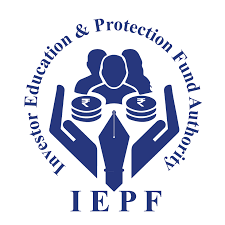
- 05 Aug 2025
In News:
The Investor Education and Protection Fund Authority (IEPFA), established in 2016 under the Companies Act, 2013, functions under the Ministry of Corporate Affairs (MCA) with the mandate of safeguarding investor interests, refunding unclaimed financial assets, and promoting financial literacy across India.
Mandate and Fund Structure
The Investor Education and Protection Fund (IEPF) consists of amounts that remain unclaimed for seven years, including:
- Unpaid dividends,
- Application money due for refund,
- Matured deposits and debentures,
- Accrued interest on investments,
- Grants and donations received from government or other entities.
The fund is utilized to refund unclaimed shares/dividends to rightful investors and to spread financial awareness among citizens.
Recent Developments: Integrated Portal
IEPFA is in the final phase of testing its Integrated Portal, a unified digital platform aimed at:
- Streamlining claim processes for unclaimed shares/dividends,
- Enhancing accessibility for both investors and companies,
- Integrating stakeholders such as depositories and the Public Financial Management System (PFMS).
Companies have been urged to upload their IEPF-1/7 SRNs with prescribed templates to enable smooth data verification and claim processing.
Key Features of the New System
- Simplified claims for low-value refunds through reduced documentation.
- Integrated Call Center to strengthen grievance redressal and ensure responsive communication with stakeholders.
- Temporary disruptions may occur during transition, but the reforms promise faster, transparent, and investor-friendly outcomes.
Investor Awareness Initiatives
IEPFA also undertakes extensive financial literacy campaigns through programs like:
- Niveshak Didi,
- Niveshak Panchayat,
- NiveshakShivir.
These initiatives empower citizens, particularly in rural and semi-urban areas, to make informed financial decisions and protect themselves from fraud and mismanagement.
Significance
- For Investors: Easier access to unclaimed assets and improved grievance redressal.
- For Companies: Structured compliance framework and digital integration with regulators.
- For Governance: Strengthens India’s financial ecosystem by combining investor protection with financial literacy.
Nahargarh Wildlife Sanctuary
- 04 Aug 2025
In News:
The Rajasthan Forest Department has recently redrawn the boundaries of the Nahargarh Wildlife Sanctuary (NWS), located near Jaipur, sparking controversy among conservationists and legal experts. The move, alleged to benefit luxury hotels and commercial establishments within the sanctuary and its Eco-Sensitive Zone (ESZ), has raised questions about legality, ecological safeguards, and governance.
About Nahargarh Wildlife Sanctuary
- Location: ~20 km from Jaipur, under the Aravalli range.
- Size: Originally ~720 hectares; currently notified as 6,025.74 hectares across 16 villages.
- History: Named after Nahargarh Fort, built by Maharaja Sawai Jai Singh II in the 18th century.
- Nahargarh Biological Park: Part of the sanctuary, noted for its lion safari.
- Flora: Dry deciduous forests, scrublands, grasslands.
- Fauna: Leopards, deer, sloth bears, wild boars, lions, tigers, reptiles like pythons and monitor lizards, and diverse birdlife including owls, eagles, and peacocks.
The Controversy
- Procedural Lapses
- Under Section 26A of the Wildlife Protection Act, 1972, any change in sanctuary boundaries requires approval from the National Board for Wildlife (NBWL).
- Experts cite the 2013 Supreme Court judgment (Centre for Environmental Law, WWF-India vs Union of India), which mandated NBWL clearance for altering protected area limits.
- However, Rajasthan submitted revised maps to the National Green Tribunal (NGT) in July 2025 without NBWL’s recommendation.
- Alleged Motivations
- Activists claim the revised map excludes “Described Areas” (revenue lands held by public and private bodies) while retaining only Reserved Forest patches.
- This adjustment allegedly protects existing luxury hotels and other constructions in the ESZ, some of which earlier faced demolition orders for violations.
- Government’s Justification
- Officials argue the 1980 notification used “grossly approximate” boundary descriptions.
- Over four decades, urbanisation and topographical changes blurred the original limits.
- A GIS-based remapping exercise using high-resolution satellite imagery and land records was undertaken, and state approval was granted in July 2025.
BlueBird Communications Satellite
- 04 Aug 2025
In News:
Following the successful NISAR (NASA–ISRO Synthetic Aperture Radar) mission, the Indian Space Research Organisation (ISRO)is preparing for its next major collaboration with the United States: the launch of the BlueBird communications satellite. The mission highlights India’s growing role as a reliable global launch partner and the expanding scope of Indo–U.S. space cooperation.
The BlueBird Satellite
- Developer: U.S.-based AST SpaceMobile
- Type: Advanced communications satellite designed for direct satellite-to-smartphone connectivity
- Weight: ~6,000 kg
- Antenna: Innovative 64-square-metre antenna array for high-capacity communication
- Orbit: Low Earth Orbit (LEO)
- Technology:
- Enables direct calling and broadband access from space without the need for ground-based mobile towers
- Supports beams up to 40 MHz capacity
- Offers peak speeds of up to 120 Mbps
- Service Plan: After deployment, BlueBird satellites will provide non-continuous broadband cellular service initially in the U.S. and select global markets.
Launch Details
- Launch Vehicle: LVM3 (Launch Vehicle Mark-3), ISRO’s heaviest rocket, formerly known as GSLV Mk-III
- Launch Site: Satish Dhawan Space Centre, Sriharikota
- Timeline: Expected launch in the next 3–4 months (as per ISRO chairman V. Narayanan)
Strategic Significance
- For India–U.S. Cooperation:
- Follows the joint NISAR Earth observation mission, reinforcing strategic space ties.
- Strengthens India’s position as a preferred partner for global commercial satellite launches.
- For India’s Space Economy:
- Enhances ISRO’s reputation in heavy-lift commercial launches, particularly with LVM3.
- Showcases India’s cost-effective access to space, attracting further foreign collaborations.
- For Global Communication Technology:
- Marks a breakthrough in direct-to-device (D2D) connectivity, reducing dependency on ground infrastructure.
- Could help expand mobile and broadband coverage to remote and underserved regions worldwide.
Oreshnik Hypersonic Missile
- 04 Aug 2025
In News:
In August 2025, Russian President Vladimir Putin announced that the Oreshnik hypersonic missile—a new-generation intermediate-range ballistic missile—has entered production and military service. Plans are underway to deploy the system in Belarus by the end of 2025, signalling a major escalation in Russia’s standoff with NATO amid the Ukraine conflict.
Key Features
- Type: Intermediate-range, solid-fuel, mobile, hypersonic ballistic missile
- First Operational Use: November 2024, in a strike on Ukraine’s Pivdenmashdefence facility at Dnipro
- Speed: Capable of reaching Mach 10 (10 times the speed of sound)
- Range: Approx. 5,000 km (3,100 miles), bringing the entirety of Europe within its strike zone
- Warhead Capability:
- Carries conventional or nuclear warheads
- Equipped with Multiple Independently Targetable Re-entry Vehicles (MIRVs), allowing simultaneous strikes on multiple targets
- Strategic Advantage: Hypersonic speed, mid-flight manoeuvrability, and MIRV capability make it virtually immune to interception by current Western missile defence systems
Strategic Context
- Belarus as a Forward Base:
- Belarus shares a 673-mile border with Ukraine, making it strategically vital.
- It already hosts Russian troops and tactical nuclear weapons.
- Deployment of Oreshnik here allows Moscow to project power deeper into Europe.
- Nuclear Security Pact (2023):
- Russia and Belarus signed an agreement placing Belarus under Russia’s nuclear umbrella.
- Russia retains the right to use nuclear weapons stationed in Belarus if “aggression” is perceived.
- Belarus has reportedly hosted “several dozen” Russian nuclear weapons since late 2024.
- Geopolitical Implications:
- Russia warned NATO against supplying Ukraine with long-range weapons capable of striking inside Russia.
- Putin cautioned that Russia could retaliate with systems like Oreshnik “even beyond Ukraine.”
- By suggesting that conventional Oreshnik strikes could be as devastating as nuclear attacks, Moscow is raising deterrence levels against the West.
Implications for Global Security
- Erosion of Arms Control: With the collapse of Cold War-era treaties like the INF Treaty (1987), weapons such as Oreshnik operate in a largely unregulated environment.
- Escalation of NATO–Russia Rivalry: The missile’s deployment in Belarus expands Russia’s strike capability across Europe, heightening NATO security concerns.
- Nuclear Threshold Ambiguity: Oreshnik’s dual capability (conventional and nuclear) blurs the line between conventional warfare and nuclear escalation.
- Arms Race in Hypersonics: The U.S., China, and other powers are also developing hypersonic weapons, intensifying competition in next-generation strategic arms.
Polavaram–Banakacherla Link Project (PBLP)
- 04 Aug 2025
In News:
The bifurcation of Andhra Pradesh in 2014 created prolonged disputes between Andhra Pradesh (AP) and Telangana over sharing the waters of the Krishna and Godavari rivers. Issues have resurfaced with Andhra Pradesh’s proposal of the Polavaram–Banakacherla Link Project (PBLP), opposed by Telangana on legal and ecological grounds.
In July 2025, the Union Government decided to set up two dedicated river management boards—the Krishna River Management Board (KRMB) at Amaravati and the Godavari River Management Board (GRMB) at Hyderabad. Both will include Central officials, technical experts, and representatives from the two states.
Polavaram–Banakacherla Link Project (PBLP)
- Objective: Divert 200 TMC of surplus Godavari floodwaters to drought-prone Rayalaseema by linking the Polavaram reservoir to the Banakacherla regulator in Kurnool district.
- Water Transfer Mechanism:
- Draw water from Polavaram Dam
- Convey through Prakasam Barrage → lift to Bollapalli reservoir
- Tunnel through the Nallamala hills → release into Banakacherla reservoir
- Significance: Strengthens irrigation, drinking water supply, and agricultural sustainability; aligns with national schemes such as Jal Jeevan Mission, Blue Revolution, and Make in India.
Telangana’s Concerns
- Violation of the Andhra Pradesh Reorganisation Act, 2014 – which requires prior approval of the Apex Council, KRMB, and CWC for new inter-state river projects.
- Disputed “Surplus” Claim – Telangana contests Andhra’s claim of 200 TMC surplus Godavari waters, arguing no adjudicatory body has approved such diversion.
- Environmental and Legal Clearances – Though the Polavaram Project got clearance in 2005, the Expert Appraisal Committee has called for fresh scrutiny, especially due to submergence concerns in Odisha and Chhattisgarh.
- Unauthorised Inter-Basin Diversion – Godavari-to-Krishna transfer without mutual consent could undermine Telangana’s own projects.
- Breach of Cooperative Federalism – Telangana sees unilateral action by Andhra as bypassing consensus-driven water governance.
Consensus Achieved in July 2025 Talks
- Telemetry Systems: Both states agreed to install real-time monitoring devices at reservoirs and projects to ensure transparency in water usage.
- Srisailam Project Repairs: Andhra agreed to undertake crucial maintenance at this shared project.
- Board Reorganisation: KRMB’s office to shift to Amaravati/Vijayawada for better oversight.
- Joint Committee: High-level committee of central, state, and technical experts to study outstanding issues and recommend equitable solutions.
Legal and Institutional Mechanisms for Inter-State Water Disputes
- Constitutional Provisions:
- Article 262: Parliament may legislate for adjudication of inter-state water disputes; can also bar courts’ jurisdiction.
- State List (Entry 17): States control water-related issues.
- Union List (Entry 56): Centre can regulate inter-state rivers in the national interest.
- Statutory Framework:
- River Boards Act, 1956: Allows River Boards for coordinated development; not implemented in practice.
- Inter-State Water Disputes Act, 1956: Provides for tribunals. Amendments in 2002 mandated quicker constitution of tribunals (1 year) and decisions within 3 years.
- Judicial Role: Despite Article 262(2), the Supreme Court has intervened in interpretation and implementation of tribunal awards (e.g., Mahadayi Water Dispute, 2018).
A New Approach to Treating Liver Cirrhosis
- 04 Aug 2025
In News:
A team of Indian scientists may have found a way to improve the drainage capacity of lymphatic vessels in the liver and intestine that fails in case of cirrhosis, by using nanocarriers filled with a powerful protein called VEGF-C.
Understanding Liver Cirrhosis
Cirrhosis is the advanced stage of chronic liver disease where healthy tissue is replaced by scar tissue due to prolonged inflammation. This structural distortion affects both blood and lymphatic vessels in the liver and intestine, impairing circulation and fluid balance.
Causes:
- Excessive alcohol consumption
- NASH (Non-Alcoholic Steato-Hepatitis)
- Chronic viral infections such as Hepatitis B and C
Symptoms (often in advanced stages): extreme fatigue, loss of appetite, easy bruising or bleeding, swelling in legs/ankles (edema), and abdominal fluid accumulation (ascites).
The Problem of Lymphatic Dysfunction
In cirrhosis, lymphatic vessels (mesenteric lymphatic vessels or mLVs) become dilated and dysfunctional. Normally, these vessels drain interstitial fluid, proteins, and immune cells back into venous blood.
- In cirrhosis, lymph production increases nearly 30-fold due to portal hypertension and liver congestion.
- Dysfunctional lymph flow leads to ascites (abdominal fluid buildup), one of the most serious complications of decompensated cirrhosis.
- Currently, there is no effective therapy to correct this lymphatic dysfunction.
The VEGF-C Based Breakthrough
A joint team from the Institute of Liver and Biliary Sciences (ILBS), New Delhi and the National Institute of Pharmaceutical Education and Research (NIPER), Guwahati has developed a novel therapy using Vascular Endothelial Growth Factor-C (VEGF-C).
- Role of VEGF-C: A key pro-lymphangiogenic factor that binds to VEGFR-3 receptors, stimulating the growth of new lymphatic vessels and enhancing drainage.
- Challenge: VEGF-C has a short half-life, is hydrophilic, and can cause systemic side effects.
The Innovation: Nanocarriers
- Scientists at NIPER designed reverse micelle-based nanocarriers to encapsulate VEGF-C, ensuring targeted delivery to gut lymphatic vessels.
- These nanocarriers specifically bind to VEGFR-3 homodimers, maximizing efficacy and minimizing side effects.
- The formulation was delivered orally in animal models, ensuring uptake by intestinal lymphatic vessels.
Findings (Animal Studies)
- Significant increase in mesenteric lymph drainage
- Reduction in ascites and portal hypertension
- Enhanced cytotoxic T-cell immunity in lymph nodes
- Reduction in local and systemic bacterial load
Significance and Future Prospects
- This is the first study to demonstrate that therapeutic lymphangiogenesis using VEGF-C can reconstruct fragmented lymphatic networks and restore function in advanced cirrhosis.
- Funded by the DST Nano Mission and published in JHEP Reports, it marks a major step in translational medicine.
- Next steps: Preclinical studies in larger animals, followed by human clinical trials to establish safety, dosage, and efficacy.
Indo-Burma Ramsar Regional Initiative (IBRRI)
- 03 Aug 2025
In News:
The 15th Conference of the Parties (COP15) to the Ramsar Convention concluded with a significant side event of the Indo-Burma Ramsar Regional Initiative (IBRRI), highlighting collaborative efforts for wetland conservation and restoration across Southeast Asia.
About IBRRI
- Origin: Jointly developed by the Ramsar National Focal Points of Cambodia, Lao PDR, Myanmar, Thailand, and Viet Nam, with technical support from the IUCN Asia Regional Office.
- Aim: To coordinate and support the implementation of the Strategic Plan of the Ramsar Convention, particularly in addressing wetland degradation.
- Support: Backed by IUCN’s BRIDGE (Building River Dialogue and Governance) project, which promotes sustainable water management, biodiversity conservation, and cross-border cooperation.
Governance Structure
To ensure oversight, transparency, and inclusivity, IBRRI has developed a multi-tiered governance framework:
- Steering Committee: Comprising Ramsar Administrative Authorities from the five member countries.
- Secretariat: Hosted by the IUCN Asia Regional Office, Bangkok.
- Stakeholder Committee: Provides technical and strategic guidance, ensuring multi-stakeholder participation including governments, NGOs, and civil society.
Strategic Plan 2025–2030
- Launch: Officially unveiled during COP15 as a transboundary framework for wetland management.
- Objective: To halt and reverse wetland loss across member states through restoration, sustainable use, and regional cooperation.
- Approach: Promotes knowledge exchange, policy coordination, and joint action for wetland conservation.
About BRIDGE Project
- Aim: To strengthen transboundary water governance by catalysingsustainable management of shared rivers, ensuring water security, conserving biodiversity, and fostering peaceful cooperation across borders.
Significance
- Provides a regional mechanism for Ramsar Convention implementation.
- Enhances transboundary cooperation in the Indo-Burma region, which hosts critical wetland ecosystems.
- Contributes to biodiversity conservation, climate resilience, and sustainable development goals (SDGs).
Darwin Tree of Life (DToL) Project
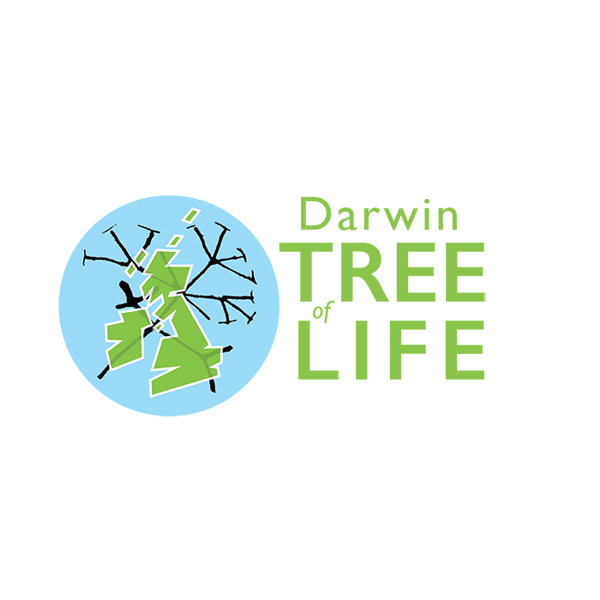
- 03 Aug 2025
In News:
The Darwin Tree of Life (DToL) project is nearing the completion of its first phase and represents one of the most ambitious scientific efforts to decode the diversity of life on Earth. Focused on sequencing the genomes of all eukaryotic species in Britain and Ireland, the project is a cornerstone of the global Earth BioGenome Project (EBP).
About the Project
- Objective: To generate high-quality genome sequences of around 70,000 eukaryotic species including animals, plants, fungi, and protists.
- Approach: Careful collection of representative samples, application of advanced DNA sequencing technologies, and use of computational tools to understand how genetic code drives biological diversity.
- Collaboration: A joint initiative involving ten biodiversity, genomics, and data analysis partners.
What are Eukaryotes?
- Definition: Organisms with complex cells that have a well-defined nucleus enclosed by a membrane, along with organelles such as mitochondria and Golgi apparatus.
- Examples: Protists, plants, fungi, and animals.
- Distinctive Features:
- Possess chromosomes inside the nucleus.
- Reproduce asexually (mitosis) or sexually (meiosis + gamete fusion).
- Contrast with Prokaryotes: Unlike bacteria and archaea, eukaryotes are structurally advanced due to compartmentalized cell functions.
The Earth BioGenome Project (EBP)
- Vision: A global initiative to sequence, catalogue, and analyse the genomes of all known eukaryotic species on Earth.
- Timeline: 10 years.
- Network: Collaborative effort involving scientists, institutions, and multiple regional projects like DToL.
Significance:
- Scientific Advancement
- Provides a genomic foundation for understanding biodiversity, evolution, and taxonomy.
- Helps uncover how genetic variations translate into ecological and physiological adaptations.
- Conservation and Sustainability
- Offers data vital for protecting endangered species and ecosystems.
- Assists in addressing biodiversity loss and supporting global conservation strategies.
- Applications in Human Development
- Medicine: Discovery of new genes for disease resistance or therapeutic innovations.
- Agriculture: Identification of traits for crop resilience and productivity.
- Biotechnology:Utilisation of unique biological pathways for industrial and environmental applications.
Human Outer Planet Exploration (HOPE)
- 03 Aug 2025
In News:
- India has taken a decisive step in advancing its space exploration ambitions with the launch of theHuman Outer Planet Exploration (HOPE) analogue station in Ladakh’s Tso Kar region.
- Developed by Bengaluru-based space science company Protoplanet in collaboration with the Indian Space Research Organisation (ISRO), the station is designed to simulate extra-terrestrial conditions, closely mimicking the geological and environmental features of the Moon and Mars.
What is HOPE?
- Analogue Station Concept: An analogue research station replicates planetary conditions to test technologies, study human adaptability, and conduct crew training. Globally, there are 33 such facilities, including BIOS-3 (Russia), HERA (USA), SHEE (Europe), and the Mars Desert Research Station (Utah, USA).
- Location & Conditions: Situated at an altitude of over 14,500 feet, Tso Kar offers a cold desert and high-altitude environment, chosen after nine years of study. Its extreme terrain makes it an “exceptional analogue site” for simulating extraterrestrial challenges.
- Mission Objective: HOPE aims to generate insights into human adaptability, resilience, and technology readinessfor sustained human presence beyond Earth.
Research and Operations
From August 1, 2025, selected crew members will undergo 10-day isolation missions inside the station. They will be subject to:
- Physiological studies – monitoring body adaptation in extreme conditions.
- Psychological studies – assessing mental resilience during confinement.
- Epigenetic research – studying biological changes in response to stress and environment.
Significance for India
- Strengthening Human Spaceflight Programme: This initiative provides critical data on crew adaptability for long-duration missions, supporting India’s vision of human exploration.
- Policy Alignment: The mission aligns with Prime Minister Narendra Modi’s announcement of establishing the BharatiyaAntariksh Station by 2035 and launching a manned Moon mission by 2040.
- Global Context: While NASA is targeting a manned mission to Mars by the 2030s, India is positioning itself as a rising player in deep-space exploration.
Strategic Importance
- Scientific Gains: HOPE will aid in technology validation, geological studies, life-detection research, and habitability assessments.
- International Standing: India joins the select group of countries operating analogue research stations, strengthening its credibility in interplanetary exploration.
- Capacity Building: The project helps build indigenous expertise in crew training, mission simulations, and psychological conditioning, paving the way for sustained space presence.
OECD Report on Plastic Pollution in Southeast & East Asia
- 03 Aug 2025
In News:
The Organisation for Economic Cooperation and Development (OECD) has warned that plastic use and waste in Southeast and East Asia could nearly double by 2050 unless countries adopt urgent and stringent policy measures. The findings are particularly significant as they coincide with the final round of UN negotiations on a global plastics treaty scheduled in August 2025 in Geneva.
Key Findings of the OECD Report
1. Surge in Plastic Use and Waste
- Plastic consumption in the ASEAN Plus Three (APT) region – which includes ASEAN-10 (Brunei, Cambodia, Indonesia, Laos, Malaysia, Myanmar, Philippines, Singapore, Thailand, Vietnam) plus China, Japan, and South Korea – is projected to rise from 152 million tonnes (2022) to 280 million tonnes (2050).
- Plastic waste will increase from 113 million tonnes (2022) to 242 million tonnes (2050).
- Packaging waste alone will almost double, from 49 million tonnes to 91 million tonnes.
2. Regional Disparities
- China will see the largest absolute rise, from 76 million tonnes (2022) to 160 million tonnes (2050).
- Lower-middle-income ASEAN nations such as Indonesia, Vietnam, and the Philippines will see the sharpest relative increase, with plastic waste nearly quadrupling from 7.5 million tonnes to 28 million tonnes.
3. Mismanaged Waste and Leakage
- Share of mismanaged plastic waste may fall (29% → 23% between 2022–2050), but total mismanaged waste will grow from 33 million tonnes to 56 million tonnes.
- The region is already the largest contributor to global plastic leakage – 8.4 million tonnes in 2022 (one-third of global leakage), projected to rise to 14.1 million tonnes by 2050.
- Plastic build-up:
- Freshwater systems: from 57 million tonnes (2022) → 126 million tonnes (2050).
- Oceans: from 17 million tonnes (2022) → 55 million tonnes (2050).
4. Climate Implications
- Greenhouse gas emissions from the plastic lifecycle (production + waste management) in the APT region are expected to nearly double from 0.6 GtCO?e (2022) to over 1 GtCO?e (2050).
Global High Stringency Scenario: Pathway to Solutions
OECD outlines a Global High Stringency (GHS) policy scenario that can reverse the trajectory:
- Plastic use: Could drop by 28% by 2050.
- Plastic waste: Could fall by 23%.
- Recycling: Average recycling rate could reach 54%, with secondary plastics meeting all future demand growth.
- Mismanaged waste: Could decline by 97%, drastically reducing environmental leakage.
Key recommended measures:
- Phase out single-use plastics.
- Strengthen waste collection systems and invest in recycling infrastructure.
- Promote circular economy approaches and regional cooperation.
Regional and Global Implications
- Cross-border challenge: Plastics persist for decades and move across boundaries. Poorer ASEAN nations like Indonesia often receive waste leakage from wealthier neighbours and China, with spillover impacts reaching the Indian Ocean and African coasts.
- Climate risks: Rising plastic demand intensifies emissions, undermining climate action goals.
- Global treaty negotiations: The report’s timing strengthens the case for an ambitious legally binding plastics treaty.
ICJ Ruling on the Kyoto Protocol
- 03 Aug 2025
In News:
In a landmark advisory opinion, the International Court of Justice (ICJ) has clarified that the Kyoto Protocol (1997) remains legally valid and binding, even after the Paris Agreement (2015) came into effect. This ruling has revived the Protocol’s legal relevance and has far-reaching implications for international climate law and global climate governance.
Background: The Kyoto Protocol
- Adopted: 1997; Entered into force: 2005 under the UN Framework Convention on Climate Change (UNFCCC).
- Nature: First binding international treaty mandating emission reductions by industrialised nations (Annex-I countries).
- Principle: Based on Common but Differentiated Responsibilities and Respective Capabilities (CBDR–RC), recognising that developed nations bear greater responsibility due to their historical emissions.
- Commitment Periods:
- First: 2008–2012
- Second: 2012–2020
- Obligations:
- Quantified emission reduction targets (from 1990 baseline).
- Provision of finance and technology transfer to developing nations.
- Market-based mechanisms such as the Clean Development Mechanism (CDM).
Why was Kyoto Considered Obsolete?
- US Non-Ratification: The largest historical emitter never joined the Protocol.
- Withdrawals: Countries like Canada and Japan later exited or refused binding targets.
- Rise of New Emitters: China overtook the US as the largest emitter by mid-2000s but, as a “developing country,” had no binding obligations.
- Shift to Paris Agreement (2015):
- Kyoto: Top-down, binding targets for developed countries.
- Paris: Bottom-up, voluntary Nationally Determined Contributions (NDCs) for all states.
- With no third commitment period defined after 2020, Kyoto was widely seen as defunct though never formally repealed.
ICJ’s Key Rulings
- Kyoto Still in Force: The absence of a new commitment period does not terminate the Protocol; it remains part of applicable international law.
- Legal Accountability: Non-compliance with emission reduction targets can constitute an “internationally wrongful act.”
- Retroactive Review: Past obligations (e.g., unfulfilled first commitment period targets) remain open for assessment.
- Advisory but Influential: Though not legally binding, the ruling strengthens grounds for climate litigation and accountability mechanisms.
Significance of the Ruling
- Legal Continuity: Confirms coexistence of Kyoto and Paris, rather than substitution.
- Revival of CBDR–RC: Re-emphasises differentiated responsibilities of developed nations, which Paris had diluted.
- Climate Justice: Opens the door for renewed scrutiny of historical emitters and their unfulfilled obligations.
- Litigation Pathways: Strengthens civil society and state efforts to seek compensation or stronger climate actions through international and domestic courts.
Implications for Global Climate Governance
- Developed countries face renewed legal and moral pressure to honour past commitments and extend finance and technology support.
- Developing nations gain a stronger footing to demand accountability for historical emissions.
- The ruling highlights the layered nature of international climate treaties, with Kyoto, UNFCCC, and Paris coexisting rather than replacing each other.
- It may reshape climate negotiations by reviving unfinished obligations under Kyoto while reinforcing Paris as the ongoing framework.
Piprahwa Relics
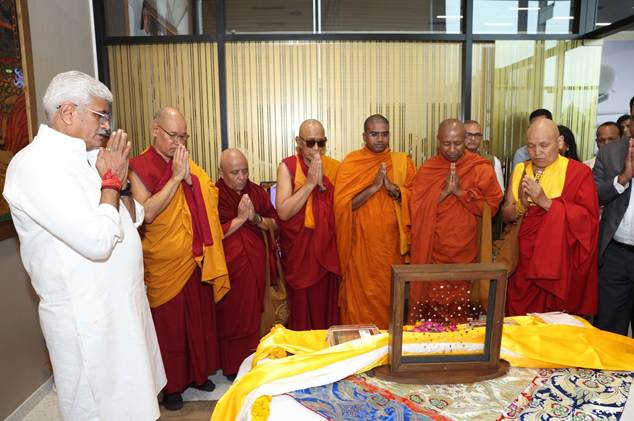
- 02 Aug 2025
In News:
The recent return of the sacred Piprahwa relics of Lord Buddha to India marks a landmark moment in India’s cultural diplomacy, heritage preservation, and spiritual history. Orchestrated by the Ministry of Culture in partnership with the Godrej Industries Group, this event prevented the relics’ auction in Hong Kong (May 2025) and instead restored them to their rightful home. For India, the land where the Buddha attained enlightenment and preached, this repatriation is more than a matter of archaeology—it reaffirms India’s role as the civilizational custodian of global heritage.
What are the Piprahwa Relics?
- Association: Believed to be the mortal remains of Lord Buddha, enshrined by the Sakya clan (his kinsmen) in the 3rd century BCE.
- Discovery: Excavated in 1898 by William Claxton Peppé, a British civil engineer and estate manager, from a stupa at Piprahwa, Uttar Pradesh, located just south of Lumbini (Buddha’s birthplace, now in Nepal).
- Contents:
- Bone fragments of the Buddha
- Caskets: soapstone, crystal, and sandstone coffer
- Offerings: gold ornaments, gemstones, and other ritual objects
- Inscription: A Brahmi script engraving on one of the caskets confirmed the relics’ identity, noting they were deposited by the Sakya clan.
Historical Journey of the Relics
- Colonial Appropriation (1898–1899)
- Following their discovery, the British Crown claimed the artefacts under the Indian Treasure Trove Act, 1878.
- The bone and ash relics were gifted to King Chulalongkorn of Siam (Thailand), reflecting colonial practices of cultural transfer.
- The majority of the remaining relics were placed in the Indian Museum, Kolkata (1899).
- Legal Protection
- Classified as ‘AA’ antiquities under Indian law, these relics cannot be sold, exported, or removed—underscoring their sacred and national significance.
- Attempted Auction in 2025
- The relics resurfaced in Hong Kong for an intended auction.
- Through timely diplomatic and legal intervention, supported by public-private partnership with the Godrej Group, the Ministry of Culture secured their return.
Significance of the Repatriation
1. Spiritual and Cultural Significance
- Buddhism, which spread from India across Asia, regards relics of the Buddha as sacred embodiments of peace, compassion, and enlightenment.
- The return reaffirms India as the spiritual homeland of Buddhism, strengthening cultural linkages with Buddhist-majority nations like Thailand, Myanmar, Japan, and Sri Lanka.
2. Archaeological and Historical Importance
- Piprahwa is one of the earliest archaeologically verified stupa sites.
- The discovery provides rare material evidence of Buddhist practices of relic veneration, confirming textual accounts in Buddhist scriptures.
3. Diplomatic and Soft Power Dimensions
- The move highlights cultural diplomacy as a tool of India’s foreign policy.
- India positions itself as a global guardian of Buddhist heritage, enhancing ties with Southeast Asian nations where Buddhism is deeply rooted.
4. Model of Public–Private Partnership
- The collaboration between the Government of India and the Godrej Industries Group sets a precedent for safeguarding heritage.
- It reflects how corporate social responsibility (CSR) can extend beyond business to civilizational legacy.
Supply and Use Tables 2020–21 & 2021–22
- 02 Aug 2025
In News:
Recently, the Ministry of Statistics and Programme Implementation (MoSPI) released the Supply and Use Tables (SUTs) for 2020–21 and 2021–22.
What are Supply and Use Tables?
SUTs consist of two interlinked matrices—Supply Tables and Use Tables, organized in a product-by-industry format.
- Supply Table: Captures total supply of goods and services, combining domestic production (at basic prices) and imports.
- Use Table: Reveals how these products are used across the economy—intermediate consumption, final consumption, capital formation, and exports (at purchasers’ prices).
Purpose & Significance of SUT
- Integration of GDP Approaches: SUT unifies production, income, and expenditure methods for GDP calculation, helping reconcile discrepancies between them.
- Robust Analytical Tool: Offers granular insights into product-industry dynamics, facilitating better policymaking and economic analysis.
- Data Reconciliation: Aligns macroeconomic estimates from sources like National Accounts Statistics (NAS), ASI, RBI, EXIM data, and census, improving coherence.
Data Coverage & Compilation Methodology
- Scope: Covers 140 products and 66 industries, at current prices, aligned with UN’s System of National Accounts (SNA).
- Key Steps:
- Identify industries (via NIC, NAS compilation categories) and products (via NPCMS for manufacturing, NPCSS for services).
- Compile Supply Table at basic prices; translate to purchasers’ prices using tax, margin, and CIF adjustments.
- Compile Use Table, detailing intermediate and final uses.
- Balance product supply and use to ensure consistency.
- Data Sources: NAS, ASI, EXIM, RBI, CBIC, MCA, Cost of Cultivation, etc.
Key Highlights
|
Metric |
2020–21 |
2021–22 |
|
Total Supply (Purchasers’ Prices) |
?407.52 lakh crore |
?523.08 lakh crore |
|
Sectoral Composition (basic prices) |
Agriculture: 11–13%, Mining: 2%, Manufacturing: 30–33%, Manufacturing-related services: 3%, Other Services: ~55% |
GVA-to-GVO Ratios (Efficiency Indicators)
- Top-performing industries (high ratios):
- 2020–21: Ownership of Dwellings, Fishing & Aquaculture, Forestry & Logging, Agriculture, Education & Research
- 2021–22: Ownership of Dwellings, Fishing & Aquaculture, Forestry & Logging, Agriculture, Crude Petroleum
- Low-performing industries (low ratios):
- 2020–21: Meat processing, Dairy, Grain mill & animal feeds, Communication equipment, Other manufacturing
- 2021–22: Similar, with Coke & Refined Petroleum added
Consumption Patterns
- Intermediate Consumption: Highest share by Construction—13.82% (2020–21), 14.03% (2021–22).
- Consumption Composition:
- 2020–21: Intermediate: Goods 70%, Services 30%; PFCE: Goods 62%, Services 38%
- 2021–22: Intermediate: Goods 72%, Services 28%; PFCE: Goods 59%, Services 41%
GDP Discrepancy Reconciliation
- 2020–21: Discrepancy of –?2,46,154 crores; reconciled by reducing PFCE by ?3,05,628 cr; Inventory by ?18,897 cr; Imports by ?78,374 cr.
- 2021–22: Discrepancy of –?2,16,579 crores; PFCE cut by ?3,55,540 cr; Inventory by ?1,884 cr; Imports by ?1,37,081 cr.
Significance
- Macro-Accounting Sophistication:SUT represents India’s advanced approach to reconciling diverse economic indicators—critical for accurate GDP estimation.
- Policy Insights:Understanding sectoral efficiencies (via GVA-to-GVO), product dependencies, and consumption structures can guide targeted reforms.
- Post-Pandemic Recovery Landscape:The sharp increase in total supply (28.4% growth) between 2020–21 and 2021–22 reflects economic resilience and rebound.
- Data-Driven Governance: SUT’s transparency and granularity strengthen evidence-based policymaking.
- Statistical Infrastructure Evolution: Proposals for SME/MNE disaggregation, real-time dashboards, and annual updates align India with OECD’s extended SUT models and global best practices.
8.8-magnitude earthquakenear Russia’s Kamchatka Peninsula
- 02 Aug 2025
In News:
- Recently, a magnitude 8.8 megathrust quake struck off the eastern coast of Kamchatka Peninsula, one of the largest ever recorded globally.
- This quake ranks among the six strongest recorded since modern seismology began—comparable to events in Ecuador (1906) and Chile (2010)—but caused remarkably limited damage.
- It originated in the Kuril–Kamchatka subduction zone, where the denser Pacific Plate thrusts beneath the North American/Okhotsk plates—a region known for frequent tectonic activity. The rupture extended over 200–300 miles underwater.
Tsunami: Warnings, Impact, and Aftermath
- The quake triggered tsunami alerts across the Pacific: Japan, the U.S. West Coast, Alaska, Hawai‘i, Chile, Ecuador (Galápagos), and French Polynesia, among others, issued multi-national warnings.
- In Kamchatka, waves between 3 to 5 meters struck, inundating the port and fish-processing plants in Severo-Kurilsk.
- Locally in Severo-Kurilsk, the quake caused serious structural damage to residential and social infrastructure, once again highlighting its vulnerability—especially recalling the catastrophic 1952 earthquake and tsunami that devastated the town.
Volcanic Aftermath: A Volcanic Chain Reaction
- In the quake’s wake, six volcanoes on Kamchatka became active. Most notably, Krasheninnikov erupted for the first time in 600 years, while others like KlyuchevskayaSopka, Shiveluch, Bezymianny, Karymsky, and Avachinsky also showed signs of eruption.
- This surge in volcanic activity—sparked by seismic fracturing of the crust—is considered a rare geological cascade, comparable to events last seen in 1737. Ash plumes reached up to 10 km height, posing aviation hazards.
Historical Perspective: Kamchatka’s Seismic Legacy
- 1952 Severo-Kurilsk Earthquake (Mag 8.8–9.0) caused a massive tsunami up to 18 meters, killing thousands and destroying the original town. It remains a defining tragedy in Russia’s seismic history.
- Earlier, the 1923 Kamchatka quake (Mag ~7–8) generated a tsunami that reached Hawaii and California’s coastlines, showing long-standing Pacific-wide impacts.
- These events underline the repeatable seismic vulnerability of the region and importance of preparedness.
India's Digital Payments Index
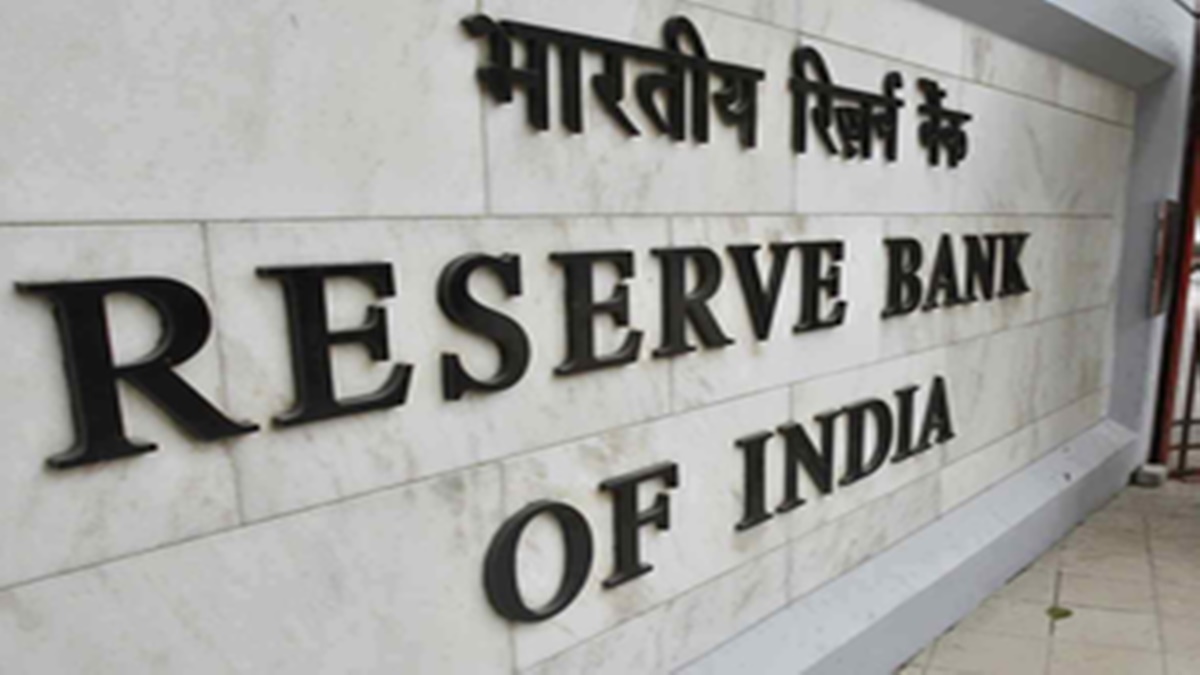
- 02 Aug 2025
In News:
The Reserve Bank of India’s Digital Payments Index (RBI-DPI), launched in January 2021, serves as a pivotal metric to gauge the country's journey toward a digital payments ecosystem. It uses March 2018 as its base year (index = 100) and is published every six months, offering a holistic and dynamic snapshot of digital transaction adoption.
RBI-DPI Calculation: Five Key Parameters
The DPI aggregates various dimensions of digital payments adoption across five weighted components:
|
Parameter |
Weightage |
Focus |
|
Payment Enablers |
25% |
Access infrastructure—mobile/internet penetration, Aadhaar, bank accounts, fintech regulations |
|
Demand-Side Infrastructure |
10% |
Consumer-facing tools—mobile/internet banking, debit/credit cards, FASTags |
|
Supply-Side Infrastructure |
15% |
Merchant tools—PoS terminals, ATMs, QR codes, bank branches, business correspondents |
|
Payment Performance |
45% |
Transaction metrics—volume/value of digital transfers, IMPS/NEFT/UPI usage, paper clearing |
|
Consumer Centricity |
5% |
User experience—awareness, complaint resolution, fraud handling, system uptime |
Drivers Behind the Mar 2025 Jump
As of March 2025, RBI-DPI stood at 493.22, up from 465.33 in September 2024—a year-on-year rise of 10.7%. The key drivers include:
- Supply-side Infrastructure Improvements: Wider merchant adoption of PoS, QR codes, and enhanced banking outreach.
- Payment Performance Surge: Rapid uptake of UPI, IMPS, and other platforms.
- Policy & Technology Boosters: Initiatives such as Digital India, increasing smartphone penetration, and fintech innovation have fueled demand.
Significance for Digital India
- Digital Economy Tracking: DPI is a quantitative barometer of India’s shift to a digital-first economy—enabling policymakers to monitor progress and identify gaps in access or infrastructure.
- Financial Inclusion & Transparency: Growth in DPI indicates deeper penetration of digital finance into rural and marginalized areas, helping combat cash reliance and promote inclusion.
- Policy Formulation & Monetary Insights: Metrics under Payment Performance bolster the RBI’s real-time understanding of transactional trends, aiding monetary policy and regulatory interventions.
- Enhancing Global Fintech Standing: A rising DPI strengthens India’s position as a global digital finance hub, enhancing credibility and attracting investment.
Challenges & Recommendations Ahead
- Digital Divide: Rural areas still lack adequate connectivity and awareness to fully utilize digital tools.
- Cybersecurity & Fraud: As transactions rise, so do risks. Issues like fraud, system downtime, and grievance redressal remain priorities.
- Tech Standardization: Ensuring interoperability and unified standards across platforms is essential.
Schengen Visa Cascade Regime
- 02 Aug 2025
In News:
Since 18 April 2024, the European Commission implemented a preferential “cascade” regime under the revised Schengen Visa Code (2020 reform), offering long-term, multiple-entry Schengen visas to Indian nationals with a clean travel history. Originally effective for India, Turkey, and Indonesia, this regime could expand to other countries based on diplomatic and readmission cooperation.
What Is the Schengen Area & Visa Basics
- The Schengen Area comprises 29 countries, including most EU members and four EFTA nations—allowing passport-free movement.
- A Schengen (short-stay) visa permits up to 90 days within any 180-day period. It is purpose-flexible (tourism, business, visiting family, etc.) but does not confer work rights.
The Cascade Regime – A Tiered System
Tier-Based Progression
The regime introduces a pyramid-like progression based on prior visa use:
|
Tier |
Requirement |
Visa Validity |
|
Entry-level |
First-time or minimal travel history |
Short-term, single-entry (probationary) |
|
Tier 1 |
Used three Schengen visas in the past 2 years |
1-year multiple-entry |
|
Tier 2 |
Held and lawfully used a 1-year multiple-entry visa in the past 2 years |
2-year multiple-entry |
|
Tier 3* |
Used a 2-year multiple-entry visa in the past 3 years |
5-year multiple-entry |
*Availability of the 5-year visa depends on passport validity.
Underlying Rule
Mexico’s 90/180 rule still applies: holders can stay only up to 90 days within any rolling 180-day period.
What's Special for Indian Nationals
- The cascade regime for Indians is more favorable than the general rule (which typically demands three prior visas within 2 years for progression). Indians now qualify for a 2-year visa with just two prior visas within 3 years, thanks to a special provision under Article 24(2c) of Regulation (EC) No 810/2009.
- The visa must not exceed passport validity—if the passport expires earlier, the visa has to be correspondingly shorter.
- The policy is discretionary—granting long-term visas (especially 5-year ones) depends on the visa officer’s judgement, even if eligibility criteria are technically met.
Strategic and Policy Significance
- People-to-people diplomacy: The cascade visa fosters cultural, business, and academic exchange, aligning with the EU's emphasis on soft power and deepening ties with India.
- Bilateral alignment: Reflects the EU-India Common Agenda on Migration and Mobility, and dovetails with negotiations around the India–EU Free Trade Agreement (FTA).
- Administrative efficiency: Long-term visas reduce repeat applications—beneficial for both visa applicants and consular resources.
- Reciprocity and expansion: Initially for India, Turkey, and Indonesia; the regime may expand to more countries based on cooperation levels.
SIMBEX-25
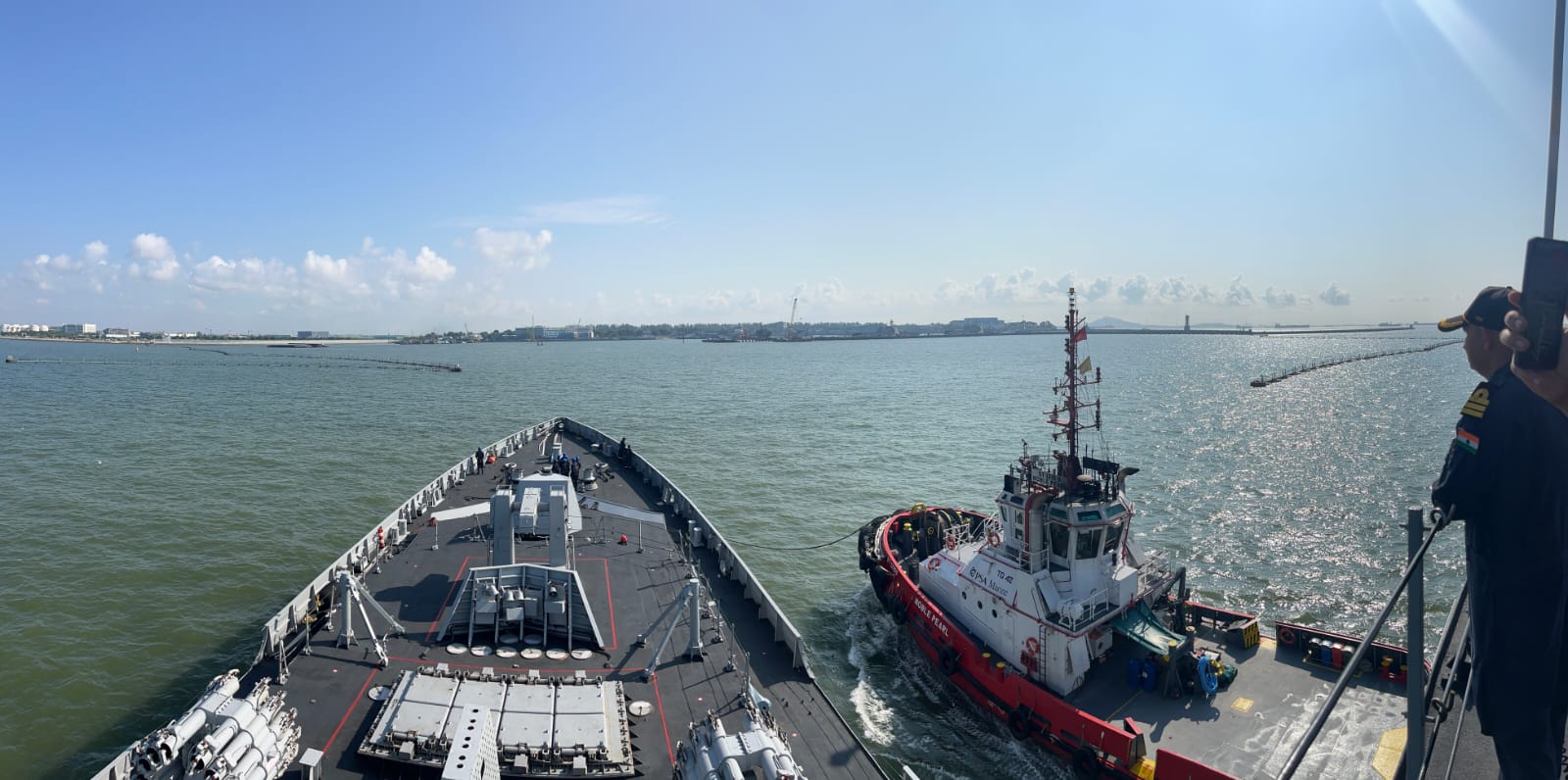
- 01 Aug 2025
In News:
- The 32nd edition of SIMBEX—India’s longest continuously conducted maritime bilateral exercise—was held from 28 July to 1 August 2025, hosted by Singapore. It included a Harbour Phase at Changi Naval Base and a Sea Phase in the southern South China Sea.
- Indian participation: INS Satpura, alongside INS Delhi, INS Kiltan, and the support vessel INS Shakti.
- Singapore Navy elements: RSN Vigilance and RSN Supreme, supported by MV Mentor and aerial units—S-70B Seahawk, Fokker-50 aircraft, and F-15SG fighters.
Objectives & Activities
Harbour Phase
- Featured Subject Matter Expert Exchanges (SMEEs), professional presentations, and strategic interactions.
- Conducted deck familiarisation visits aboard respective ships to foster doctrinal alignment
Sea Phase
- Encompassed advanced drill sequences, including:
- Air defence exercises, cross-deck helicopter operations
- Precision targeting, complex manoeuvres, and VBSS operations (Visit, Board, Search, and Seizure)
- Concluded with a ceremonial sail-past, symbolising professionalism and unity.
Geopolitical Landscape
- Strategic Reach: Deployment of Indian vessels to Philippines and Vietnam — alongside participation in SIMBEX—demonstrates India’s extended operational posture in Southeast Asia amidst regional tensions, notably with China’s maritime assertiveness.
- Broader Continuity: The Indian Navy, operating via the Andaman and Nicobar Command, employs SIMBEX as part of a broader matrix of maritime outreach in the region, including CORPAT and MILAN exercises
Sawalkote Hydroelectric Project
- 01 Aug 2025
In News:
In a strategic shift, India has floated international tenders for constructing the long-stalled Sawalkote Hydroelectric Project (1,856 MW) on the Chenab River in Jammu & Kashmir, leveraging the fact that the Indus Waters Treaty (IWT) with Pakistan is currently in abeyance. This development marks a significant turn in India’s water diplomacy and infrastructure planning.
Background & Project Details
- Location & Nature: Sawalkote is a run-of-river hydropower project near Sidhu village in Ramban district, J&K.
- Conception & Delay: Originally conceived in the 1980s, handed to NHPC in 1985, then returned to JKSPDC in 1997. Despite Rs 430 crore spent on enabling infrastructure, the project remained unstarted until a 2021 MoU revived it under an BOOT (Build-Own-Operate-Transfer) model.
- Tender Process: In July 2025, NHPC invited international bids (design, planning, engineering) with bid submissions due by September 10, 2025.
- Scale & Costs: Estimated cost stands at Rs 22,704.8 crore, set to be executed in two phases.
- Environmental Clearances: Forest Advisory Committee granted in-principle approval for diversion of 847 hectares of forest land.
Indus Waters Treaty (IWT) & Its Suspension
- Treaty Overview: Signed in 1960 (brokered by the World Bank), IWT allocates the eastern rivers (Ravi, Beas, Sutlej) to India, and the western rivers (Indus, Chenab, Jhelum) to Pakistan. India retains limited non-consumptive usage rights for hydro-power on these western rivers.
- First Suspension: On 23 April 2025, following a terrorist attack in Pahalgam, India suspended the IWT, citing national security and the treaty’s exploitation by Pakistan for cross-border terrorism.
- Consequences: India ceased hydrological data sharing, blocked Pakistani access to project visits, and released annual joint-status reporting—effectively halting treaty obligations.
- Strategic Intent: This pause grants India freedom to launch projects like Sawalkote without Pakistan’s prior objections or IWT constraints.
Geopolitical Tensions & Ramifications
- Long-term Impact on Pakistan: The Indus system sustains ~80% of Pakistan’s agriculture and electricity. Disruption could severely undermine food security, hydropower production, and urban water supply.
- Symbolism of a Rift: The treaty had survived wars and conflicts. Its suspension is viewed as an overt break in regional cooperative norms, with potential for conflict escalation.
- Legal & Diplomatic Fallout: Pakistan views reduced water flows as “act of war”; it is exploring legal avenues and appealing for treaty revival.
- India’s Firm Stance: PM Modi has labeled the treaty “unjust,” declared “blood and water cannot flow together,” further hardening India's negotiating posture.
Strategic Evaluation
- Violation or Tactical Move? While the IWT allows limited usage by India, its suspension indicates a focus on infrastructure autonomy over the western river system.
- Regional Domino Effects: With rising global water disputes, actions like this may set precedent in viewing water as geopolitical leverage.
- Environmental & Social Risks: Dam construction and forest diversion raise ecological concerns; plus, local displacement and compensation need careful handling.
Skill Impact Bond (SIB)
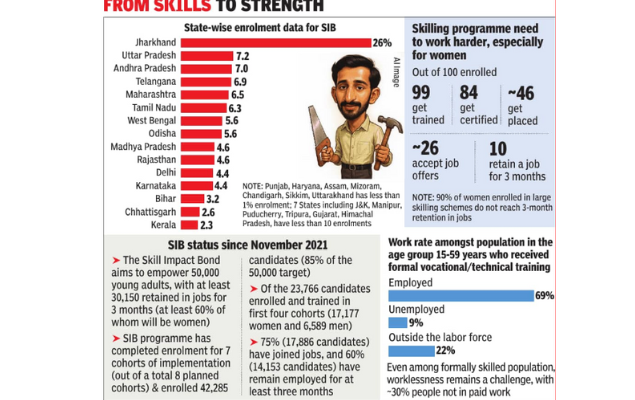
- 01 Aug 2025
In News:
- India is at the cusp of a demographic transition, with a young workforce expected to drive its goal of becoming a $30 trillion economy by 2047.
- Yet, only ~4% of India’s workforce is formally skilled, and nearly 30% of trained individuals remain unemployed. Traditional skilling schemes have struggled, especially with job retention.
- Against this backdrop, Skill Impact Bond (SIB), launched in 2021, marks a paradigm shift in India’s skilling ecosystem by linking financing to actual outcomes.
What is the Skill Impact Bond (SIB)?
- Launched: November 2021.
- Implementing Agency: National Skill Development Corporation (NSDC) under Ministry of Skill Development & Entrepreneurship.
- Partners: British Asian Trust, Children’s Investment Fund Foundation (CIFF), HSBC India, JSW Foundation, Dubai Cares.
- Target: Train 50,000 youth (60% women), ensure sustained employment.
It is India’s first development impact bond focused on employment, not just certification.
How Does SIB Work?
- Risk Investors (Private/Philanthropic): Provide upfront funds to service providers (training institutes).
- Service Providers: Deliver skill training, placement support, and post-placement mentoring.
- Outcome Funders (Govt/Donors): Repay investors if measurable outcomes are achieved (job placement + retention).
- Third-Party Evaluator: Verifies outcomes.
Key Distinction: Funding is tied to placement and retention, not mere enrolment/certification.
Progress So Far
- 23,700 youth trained across 13 sectors & 30 job roles.
- 72% women participation – one of the highest in any skilling programme.
- 75% placed in jobs, and 60% retained beyond 3 months, exceeding national averages (<10% under older schemes).
- Jharkhand, UP, Delhi are leading states in enrolment.
Significance
- Women-led Growth:
- 72% women trainees; many first-generation formal workers (tribal, rural, conservative households).
- Skilling gives women not just jobs but also agency, confidence, and identity.
- Outcome-Based Financing:
- Ensures accountability of training providers.
- Attracts private/philanthropic capital into public welfare.
- Addresses Retention Challenge:
- Traditional skilling: 84% complete training, but <10% stay in jobs beyond 3 months.
- SIB model pushes for long-term impact.
- Replicable Model:
- Can be scaled to health, education, social welfare.
- Example: Project AMBER (apprenticeship-based skilling) also uses this financing.
Challenges Ahead
- Scale vs Depth: Training 50,000 is significant, but India needs millions of skilled youth annually.
- Social Barriers: Women face mobility, safety, and cultural challenges in sustaining employment.
- Monitoring & Evaluation: Requires robust third-party systems to measure outcomes fairly.
- Private Participation: Sustaining investor confidence demands continuous success stories.
Way Forward
- Expand outcome-based financing to more sectors.
- Strengthen ecosystem for women (hostels, childcare, safe mobility).
- Continuous mentoring & alumni networks to ensure retention.
- Use digital platforms for scalable skilling and tracking.
Barbados Threadsnake (Tetracheilostoma carlae)
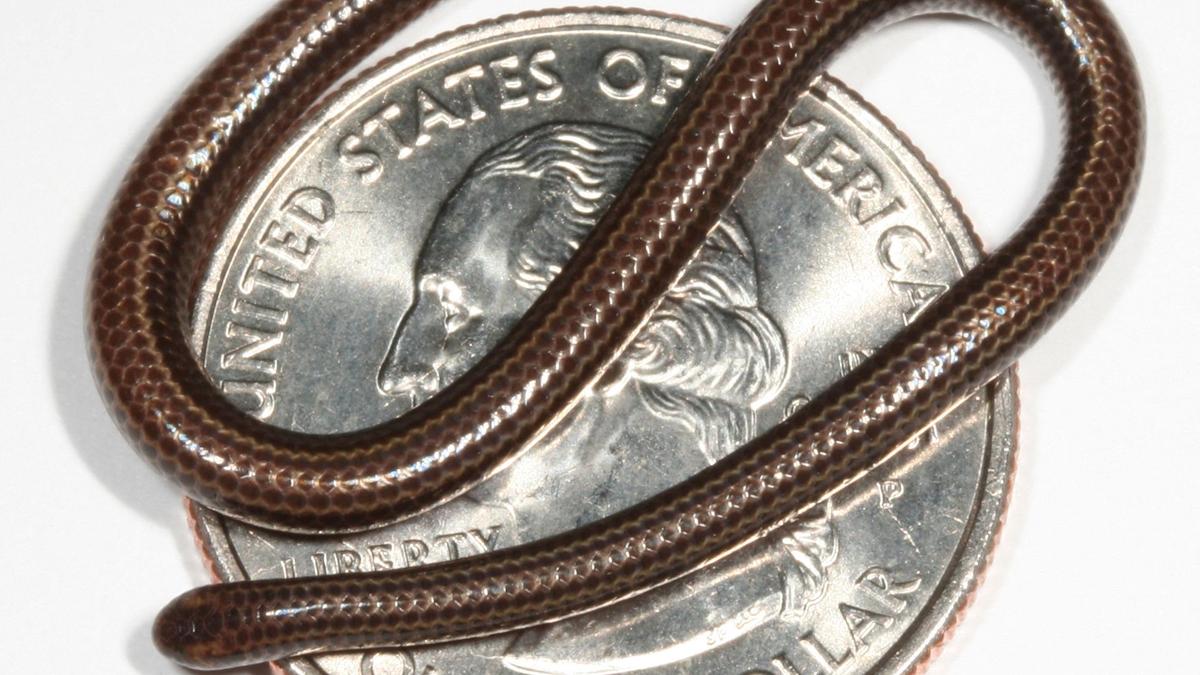
- 01 Aug 2025
In News:
The Barbados threadsnake, long considered lost to science, has made a startling comeback. This diminutive reptile—no longer than a coin—was rediscovered in Barbados in March 2025, nearly two decades after its last documented sighting. Its reappearance has reignited global interest in its conservation and the fragile ecosystems it inhabits.
Key Attributes & Taxonomy
- Scientific Classification: Tetracheilostoma carlae, family Leptotyphlopida.
- Size & Weight: Adults reach approximately 9–10 cm (3–4 in) in length and weigh ~0.6 g (~0.02 oz)—making it the world’s smallest known snake
- Physical Traits: Extremely slender—about as thick as a spaghetti noodle. Distinguished by pale orange dorsal stripes and a small scale on the snout
- Vision & Behavior: A blind, fossorial snake that burrows underground, especially hiding under rocks during the day.
- Diet: Feeds on termite and ant larvae—its petite jaws prevent it from consuming larger prey.
- Reproduction: Oviparous, laying only one large egg at a time, with hatchlings already about half the size of adults.
Rediscovery: A Significant Scientific Moment
- Context: The species had not been observed since 2006, and earlier specimens were often misidentified in museum collections.
- 2025 Rediscovery: During a March ecological survey in central Barbados by the Ministry of Environment and Re:wild, the snake was found under a rock near a jack-in-the-box tree. It was confirmed after microscopic and morphological assessment at the University of the West Indies.
- Reactions: This turn of events is hailed as a conservation triumph and a poignant reminder of Barbados’s biodiversity despite its heavily altered landscape.
Conservation Context & Implications
- Habitat Loss: Over 98% of Barbados’s primary forests have been cleared, leaving threadsnake habitats limited to a few square kilometers of secondary forests, particularly in the Scotland District.
- Threats: Loss of habitat and competition from the invasive Brahminy blind snake (Ramphotyphlops braminus), which reproduces asexually and may outcompete the threadsnake.
- Conservation Action: The rediscovery falls under the broader Conserving Barbados’ Endemic Reptiles (CBER) project. Future plans focus on mapping its range, safeguarding habitats, and preserving biodiversity as part of Barbados's compliance with the Kunming-Montreal Global Biodiversity Framework.
Dorjilung Hydropower Project
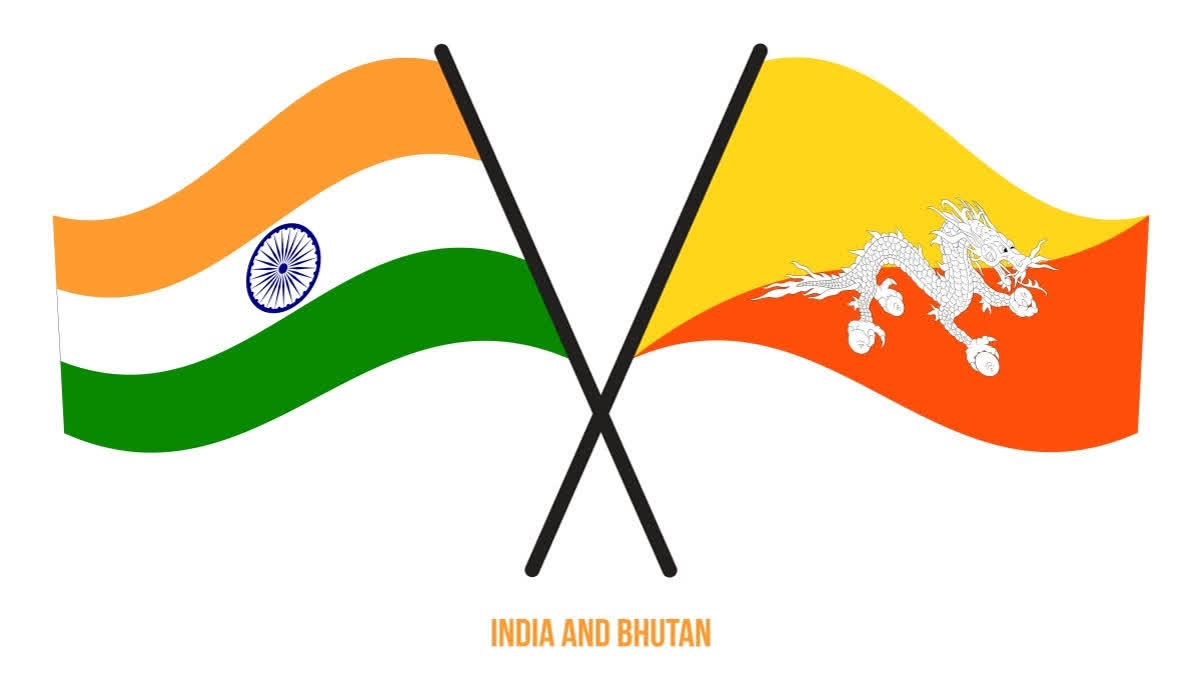
- 01 Aug 2025
In News:
India and Bhutan share one of the most successful models of hydropower cooperation in South Asia. The launch of the 1125 MW Dorjilung Hydropower Project in Bhutan, with Tata Power’s equity participation alongside Bhutan’s Druk Green Power Corporation (DGPC), marks a turning point in cross-border energy diplomacy. Unlike earlier projects dominated by Indian government financing, Dorjilung reflects a shift towards Public–Private Partnership (PPP), multilateral funding, and private sector involvement.
Key Features of the Project
- Type: Run-of-the-river scheme on the Kurichhu River (tributary of Drangmechhu, flows into India).
- Location: Mongar and Lhuentse districts, eastern Bhutan.
- Technical Specs:
- Dam height: ~139.5 m (concrete-gravity).
- Headrace tunnel: 15 km.
- Powerhouse: 6 Francis turbines.
- Annual generation: ~4.5 TWh.
- Cost: USD 1.7 billion (~?150 billion).
- Funding: World Bank.
- Equity Structure: DGPC (60%) + Tata Power (40%).
- Timeline: Commissioning expected by 2032.
India–Bhutan Energy Ties
- Existing Cooperation:
- Governed by the 2006 Bilateral Agreement on Hydropower Cooperation (protocol revised 2009).
- 4 operational projects supplying power to India: Chhukha (336 MW), Kurichhu (60 MW), Tala (1020 MW), Mangdechhu (720 MW).
- Punatsangchhu I (1200 MW) and Punatsangchhu II (1020 MW) under construction.
- Economic Importance for Bhutan:
- Hydropower exports = 40% of govt revenue and 25% of GDP.
- India buys surplus electricity, ensuring stable market access.
- India’s Strategic Interest:
- Ensures clean energy imports.
- Strengthens regional energy security.
- Counters Chinese presence in the Himalayan hydropower sector.
What Makes Dorjilung Different?
- PPP & Private Sector Role: First large-scale project with an Indian private company (Tata Power) holding major equity.
- Diversified Financing: World Bank funding reduces Bhutan’s dependence on Indian grants and credit lines.
- B2B Model: Moves from a government-to-government (G2G) model to business-to-business (B2B), granting Bhutan greater autonomy and bargaining parity.
- Integrated Renewable Plan: Tata Power–DGPC partnership envisions 5000 MW clean energy capacity, including:
- Dorjilung (1125 MW)
- Gongri (740 MW)
- Jeri Pumped Storage (1800 MW)
- Chamkharchhu IV (364 MW)
- Solar projects (500 MW).
Strategic & Geopolitical Significance
- For Bhutan:
- Reduces financial vulnerability by avoiding overdependence on Indian government aid.
- Attracts global institutions (World Bank), raising international credibility.
- Boosts local development in eastern districts (infrastructure, jobs).
- For India:
- Enhances energy security via long-term clean energy imports.
- Strengthens economic diplomacy with a trusted neighbour.
- Counters China’s Belt and Road Initiative (BRI) push in Himalayan hydropower (e.g., Nepal’s tilt towards Chinese funding).
- Supports Paris Agreement & renewable targets.
- For the Region:
- Creates scope for regional energy grids under BIMSTEC and BBIN (Bangladesh, Bhutan, India, Nepal).
- Encourages private-sector led cross-border energy trade.
Challenges Ahead
- Delayed Timelines: Past Bhutanese projects (e.g., Punatsangchhu I & II) suffered huge delays and cost overruns.
- Debt Burden: Large projects raise Bhutan’s external debt, though hydropower revenue offsets this risk.
- Environmental Concerns: Dam construction in fragile Himalayan ecosystems risks landslides, habitat loss, and displacement.
- Domestic Politics: Growing debate within Bhutan on overdependence on India; balancing autonomy with partnership is key.
- Regional Rivalries: India’s refusal to import power from Chinese-funded projects in Nepal shows how geopolitics can complicate energy trade.
Way Forward
- Diversify Financing: Blend of multilateral, private, and bilateral sources to reduce dependency risks.
- Strengthen Grid Connectivity: Expand India–Bhutan–Bangladesh power corridors.
- Sustainable Practices: Ensure climate-resilient dam design, environmental safeguards, and local community participation.
- Expand Solar–Hydro Synergy: Hybrid models (hydropower + solar) to ensure round-the-clock renewable supply.
- Institutional Mechanisms: Strengthen the India–Bhutan Joint Group on Hydropower Projects for dispute resolution and faster approvals.
First-Ever Grassland Bird Census in Kaziranga National Park
- 31 Jul 2025
In News:
The first dedicated Grassland Bird Census was conducted in Kaziranga National Park, Assam, marking a significant step in avian biodiversity monitoring in India. The initiative was widely acknowledged, including by Prime Minister Narendra Modi in his Mann Ki Baat broadcast, for its innovative use of Artificial Intelligence (AI) and acoustic monitoring.
Objective and Significance
- Purpose: To systematically monitor the population, breeding patterns, and habitat health of grassland-dwelling bird species, many of which are rare or threatened.
- Conservation Value: Grassland birds serve as ecological indicators of habitat quality, akin to how BMI reflects human health.
- Highlight Species:
- Documented 43 bird species
- Included 1 Critically Endangered, 2 Endangered, and 6 Vulnerable species (IUCN Red List)
- Notably, over 85 nests of the endangered Finn’s Weaver, endemic to the Brahmaputra floodplains, were discovered.
Methodology & Technological Innovations
- Conducted By: Joint effort of forest officials, Kaziranga National Park authorities, conservationists, and researchers including INSPIRE fellow Chiranjib Bora.
- Sites Covered: 185 grassland locations across the national park.
- Tools Used:
- Passive Acoustic Monitoring: Audio recorders placed atop trees to capture bird calls during the breeding season.
- AI Integration:
- BirdNET Software used to automatically identify bird species by analyzing vocalizations.
- Spectrograms enabled visual analysis of sound frequencies for accurate classification.
Key Innovations and Impact
- First of its Kind: India’s first census focused exclusively on grassland bird species, often overlooked in standard bird surveys.
- Non-Intrusive Monitoring: AI-powered audio analysis allowed species identification without disturbing natural behavior.
- Awareness & Biodiversity Education: The census is a powerful example of how technology and sensitivity can together enhance biodiversity understanding and conservation awareness.
Setubandha Scholar Scheme
- 31 Jul 2025
In News:
The Setubandha Scholar Scheme (also referred to as Setubandha Vidwan Yojana) is a pioneering national initiative launched by the Ministry of Education to integrate scholars from traditional gurukuls into India's mainstream research ecosystem—especially at premier institutions like IITs.
Key Highlights:
- Objective: To formally recognise traditional learning and connect Indian Knowledge Systems (IKS) with modern scientific disciplines.
- Implementing Agency: Indian Knowledge System (IKS) division under the Central Sanskrit University (CSU).
- Eligibility: Minimum 5 years of rigorous study in a recognised gurukul and proven expertise in Shastras or traditional knowledge. No formal academic degree is required.
- Age Limit: Maximum 32 years.
Fellowships & Research Grants:
|
Category |
Fellowship (per month) |
Annual Research Grant |
Equivalent Academic Level |
|
Category 1 |
?40,000 |
?1,00,000 |
Postgraduate (Master’s) |
|
Category 2 |
?65,000 |
?2,00,000 |
Doctoral (PhD) |
- Research Domains (18 Fields): Ayurveda, health sciences, mathematics, astronomy, physics, grammar, strategic studies, political theory, cognitive science, architecture, performing arts, and more.
- Notable traditional categories include Anvikshiki Vidya (philosophy), Ganit-Bhaut-Jyotish Vidya (mathematics, physics, astronomy), and Bhaishajya-Arogya Vidya (health sciences).
Policy Context: NEP 2020 and Beyond
The scheme is a direct outcome of reforms envisioned under the National Education Policy (NEP) 2020, which emphasizes integrating traditional Indian knowledge systems with modern education, promoting multidisciplinary learning, and creating a flexible, inclusive research environment.
NEP-Driven Initiatives Linked to Setubandha:
- Nipun Bharat: Improved foundational literacy and numeracy by Class 2.
- Vidya Pravesh & Balvatikas: Early childhood education integration.
- Bharatiya Bhasha Pustak Yojana: Democratizing Indian language access.
- National Digital Depository for IKS: Repository of classical knowledge.
- PM Shri Schools: Model schools aligned with NEP's vision.
- Academic Bank of Credits (ABC) and Multiple Entry-Exit options.
- Anusandhan NRF & PMRF 2.0: Boosting research funding and fellowships.
- Global Outreach: Foreign universities (e.g., Deakin, Wollongong) setting up campuses in India.
Wider Impact and Significance:
- Institutional Recognition: For the first time, gurukul-trained scholars can pursue advanced research alongside IIT peers.
- Inclusivity in Education: Enables non-formal scholars to access elite academic spaces.
- Global Relevance: As interest grows in Ayurveda, Yoga, Sanskrit linguistics, and indigenous governance, India is positioning itself as a global knowledge hub.
- Empowerment of Marginalised Groups: Over 7.12 lakh girls in Kasturba Gandhi Balika Vidyalayas, and hostel schemes for PVTGs reflect NEP’s inclusive approach.
CRIB Blood Group
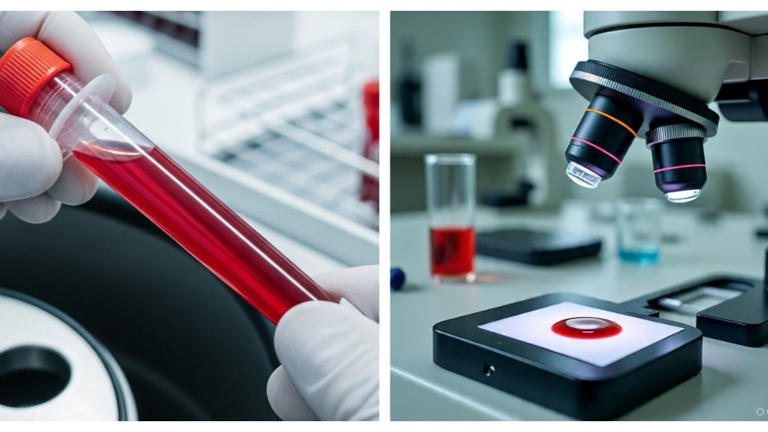
- 31 Jul 2025
In News:
- In a landmark discovery in transfusion science, researchers from India and the UK have identified a new and ultra-rare human blood group named CRIB, with the first case detected at the Rotary Bangalore TTK Blood Centre.
- The CRIB group adds to India’s growing contribution to rare blood immunogenetics and has been officially recognised by the International Society of Blood Transfusion (ISBT) and the International Blood Group Reference Laboratory (IBGRL), UK.
What is the CRIB Blood Group?
- CRIB stands for Cromer India Bengaluru and also symbolically refers to its importance in newborn and fetal medicine.
- It is a new antigen within the Cromer blood group system, which is linked to the Decay-Accelerating Factor (DAF) protein on red blood cells.
- CRIB belongs to the broader INRA (Indian Rare Antigen) blood group system, officially recognised in 2022 by the ISBT.
Discovery and Identification:
- Detected in a 38-year-old South Indian woman undergoing cardiac surgery in Kolar, Karnataka.
- Her blood was pan-reactive, reacting with all samples including O+ blood.
- No match was found even among 20 family members, leading to further analysis.
- After 10 months of genetic study at IBGRL, UK, a novel antigen was confirmed and designated as CRIB.
Scientific and Medical Significance:
- Rare Antigen Profile: Individuals with CRIB blood type lack a high-prevalence antigen, making compatible transfusions highly complex.
- Hemolytic Disease Risk: The CRIB antigen is especially relevant in Hemolytic Disease of the Fetus and Newborn (HDFN), where maternal antibodies attack fetal red blood cells.
- Global First: It is the first discovery of its kind globally, expanding the total number of known human blood group systems.
Implications for India and the World:
- Transfusion Protocols: Requires specialised matching and CRIB-negative donor identification, necessitating rare donor registries.
- Prenatal Care: Early screening could prevent complications in pregnancies involving blood group incompatibilities.
- Healthcare Infrastructure: Highlights the need for investment in genetic screening, rare blood banks, and pan-India awareness among healthcare professionals.
- Research Opportunities: Opens new areas of study in genomics, population diversity, and immune response in transfusions.
Next Steps:
- Development of CRIB-specific antibody panels and diagnostic tests.
- Integration into global and national blood group databases.
- Promotion of international collaboration in transfusion science and rare donor management systems.
Mera Gaon Mera Dharohar Programme

- 31 Jul 2025
In News:
The Mera Gaon Meri Dharohar (MGMD) initiative is a nationwide cultural mapping project launched by the Ministry of Culture on 27th July 2023 as part of the Azadi Ka Amrit Mahotsav. It operates under the National Mission on Cultural Mapping (NMCM) and is implemented by the Indira Gandhi National Centre for the Arts (IGNCA).
Key Highlights:
- Objective: To digitally document and preserve the intangible cultural heritage of all 6.5 lakh villages across India through a comprehensive virtual cultural portfolio.
- Current Status (as of 2025):
- Over 4.7 lakh villages have been culturally mapped.
- The data is accessible on the MGMD web portal.
- Thematic Categories: Each village is documented based on one or more of seven cultural themes:
- Arts and Crafts Villages
- Ecologically Oriented Villages
- Scholastic Villages (linked to texts and scriptural traditions)
- Epic Villages (associated with Ramayana, Mahabharata, Puranas, and oral epics)
- Historical Villages (linked to local or national history)
- Architectural Heritage Villages
- Other culturally significant villages (e.g., fishing, horticulture, pastoral communities)
Significance:
- Preservation of Heritage: Helps safeguard India’s diverse village-level traditions and practices.
- Cultural Inclusion: Recognizes lesser-known cultural narratives and identities.
- Rural Development: Encourages economic and artistic growth through cultural awareness.
- Digital Cultural Infrastructure: Enables access to cultural data via online platforms.
About National Mission on Cultural Mapping (NMCM)
Launched in 2017, the NMCM is a flagship initiative of the Ministry of Culture aimed at documenting and promoting India’s cultural diversity with a focus on grassroots-level heritage.
Key Components:
- Mera Gaon Meri Dharohar (MGMD) – Mapping of village-level cultural assets.
- Sanskritik Pratibha Khoj – Campaigns to discover artistic talent and promote folk and tribal arts.
- National Cultural Workplace (NCWP) – A digital platform and mobile app to create databases of artists, art forms, and cultural services.
This initiative strengthens India’s commitment to heritage conservation, digital documentation, and self-reliant cultural development, in line with Atmanirbhar Bharat.
Exercise Divya Drishti
- 31 Jul 2025
In News:
In July 2025, the Indian Army conducted Exercise Divya Drishti in East Sikkim, showcasing next-generation warfare technologies under high-altitude conditions.
Organised by the Trishakti Corps, the exercise focused on integrating Artificial Intelligence (AI) with battlefield surveillance and decision-making systems, in alignment with the Atmanirbhar Bharat initiative and the Army’s Decade of Transformation roadmap.
Key Features:
- AI-Enabled Battlefield Awareness: The Army deployed AI-integrated sensors capable of real-time surveillance, terrain mapping, and threat detection.
- Sensor-to-Shooter Linkage: Real-time data was transmitted from UAVs, drones, and ground-based sensors to command centres and firepower units, ensuring rapid response capability.
- UAV-Drone-Ground Synergy: Unmanned Aerial Vehicles (UAVs) and drones operated in coordination with ground platforms to simulate operational combat scenarios.
- Secured Communication Networks: Robust digital communication systems enabled seamless and secure data sharing across units.
- High-Altitude Readiness: The technologies were tested in the Himalayan terrain to assess their effectiveness in extreme operational environments.
Strategic Significance:
- Enhanced Situational Awareness: The exercise aimed to improve the Army’s capacity to observe, interpret, and act swiftly on the modern battlefield.
- Faster Decision-Making: AI integration minimizes command delays, improving response speed and operational precision.
- Indigenisation Drive: Demonstrates the Indian Army’s push for self-reliance in defence technology under Make in India.
- Future Warfare Doctrines: The insights will inform new operational strategies for multi-domain and hybrid warfare.
Operation Mahadev
- 30 Jul 2025
In News:
Indian security forces recently launched Operation Mahadev, a joint counter-terror operation near Srinagar, successfully neutralising three high-value terrorists, including Suleiman Shah, the mastermind behind the April 22 Pahalgam attack.
Key Facts about Operation Mahadev
|
Attribute |
Details |
|
Nature |
Precision anti-terror operation |
|
Launched By |
Indian Army (Para SF), CRPF, and J&K Police |
|
Command |
Strategically coordinated under the Chinar Corps |
|
Location |
Lidwas area, near Dara and Harwan, close to Dachigam National Park, Srinagar, Jammu & Kashmir |
Objectives and Outcomes
- Primary Aim: To neutralise Lashkar-e-Taiba-affiliated terrorists, specifically those involved in:
- Pahalgam attack (April 2024)
- Sonamarg Tunnel attack
- Notable Neutralised Terrorists:
- Suleiman Shah (main planner of Pahalgam attack)
- Two other Pakistan-trained terrorists, including a former Pakistani Army personnel
Strategic Significance
- Major blow to cross-border terrorism networks operating in Kashmir
- Reinforces India’s anti-terror posture, especially amidst the ongoing Operation Sindoor policy debate
- Enhances morale of security forces engaged in continuous counter-insurgency in the region
Paithani Sarees
- 30 Jul 2025
In News:
The Prime Minister recently highlighted the cultural and artisanal significance of Paithani sarees during the monthly ‘Mann Ki Baat’ radio programme, bringing national attention to this traditional Maharashtrian textile.
Historical Background
- Origin: Paithani sarees derive their name from Paithan, an ancient town on the banks of the Godavari River in Maharashtra.
- Antiquity: The tradition of Paithani weaving dates back over 2,000 years, with its roots in the Satavahana dynasty (2nd century BCE).
- Royal Patronage: These sarees were patronized by several royal courts, including the Satavahanas, Peshwas of Pune, Nizams of Hyderabad, and Mughal emperors.
Key Features
|
Attribute |
Description |
|
Material |
Woven using pure silk and gold/silver zari |
|
Technique |
Crafted using the tapestry weaving method, all handwoven |
|
Designs |
Intricate motifs like peacocks, parrots, lotuses, and floral vines |
|
Border & Pallu |
Known for distinctive kath (border) and padar (pallu) designs |
|
Size |
Typically six- or nine-yard sarees |
|
Cultural Significance |
Regarded as the ‘Mahavastra’ (great garment) of Maharashtra, traditionally worn by Maharashtrian brides |
Recognition and Cultural Value
- Symbol of Heritage: Paithani sarees are considered a symbol of Maharashtrian cultural identity and artisanal excellence.
- GI Tag: Granted the Geographical Indication (GI) tag in 2010, acknowledging their unique regional origin and craftsmanship.
- Artistic Value: Among the most exquisite and expensive sarees in India, valued for their aesthetic finesse and traditional techniques.
State of Food Security and Nutrition in the World (SOFI) 2025 Report
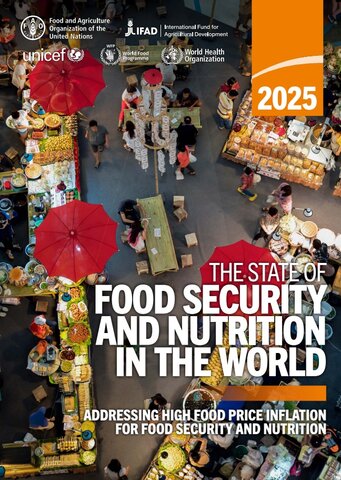
- 30 Jul 2025
In News:
Hunger affected up to 720 million people worldwide in 2024 — around 8.2 per cent of the global population, while 2.3 billion people in the world were estimated to have been moderately or severely food insecure, according to the ‘State of Food and Nutrition in the World’ (SOFI) 2025.
Key Highlights:
- Released by: Jointly published by FAO, IFAD, UNICEF, WFP, and WHO.
- Purpose:
- Annual global assessment to monitor progress on Sustainable Development Goal (SDG) 2:
- Target 2.1: End hunger and ensure access to safe, nutritious food.
- Target 2.2: End all forms of malnutrition.
Key Global Findings (2024 Data)
- Chronic Hunger:
- 720 million people (approx. 8.2% of global population) suffered from chronic hunger in 2024.
- Although lower than 8.5% (2023) and 8.7% (2022), it remains above pre-pandemic (2015) levels.
- 96 million more people are hungry now than in 2015.
- Food Insecurity:
- 2.3 billion people were moderately or severely food insecure in 2024.
- This is 335 million more than in 2019 (pre-COVID) and 683 million more than in 2015.
- Regional Distribution:
- Asia: 323 million undernourished (highest in absolute numbers).
- Africa: 307 million (highest prevalence, over 20% of population).
- Latin America & Caribbean: 34 million.
- Trends & Progress:
- Modest improvements in Southeast Asia, Southern Asia, and South America.
- Worsening hunger in parts of Africa and Western Asia due to conflict and climate stress.
Projections for 2030
- By 2030, 512 million people (6% of global population) may remain chronically undernourished.
- A decline of only 65 million since 2015, far short of the Zero Hunger target.
- 60% of these undernourished people are projected to be in Africa, with 17.6% prevalence.
India-Specific Insights
- Nutritional Affordability:
- 6% of Indians cannot afford a healthy diet despite food surplus.
- Urban areas show improvement due to post-pandemic income recovery.
- Rural areas face continued hardship due to PDS inefficiencies and price volatility.
- Child Malnutrition:
- High rates of stunting and wasting persist.
- Micronutrient deficiencies (hidden hunger) are common due to cereal-heavy diets lacking diversity.
- Policy Recommendations:
- Strengthen inclusion of millets, pulses, and fortified foods in public nutrition schemes.
- Address regional and demographic disparities through targeted interventions.
Major Drivers of Food Insecurity
- Post-COVID Aftermath: Reversed a decade of gains in global food security.
- Climate Events: Floods, droughts, and heatwaves have disrupted food systems.
- Conflicts & Wars: Ongoing wars (e.g. Ukraine) have triggered food price inflation and supply disruptions.
- Inflation:
- Since 2020, food price inflation has outpaced general inflation globally.
- Disproportionately affects low-income and vulnerable populations.
SOFI 2025: Recommendations
- Protect vulnerable populations via targeted fiscal support.
- Align macroeconomic policies to stabilize food markets.
- Invest in resilient agrifood systems and nutrition-sensitive agriculture.
- Strengthen food and nutrition data systems for informed policymaking.
- Promote dietary diversity and nutrition education.
SDG Context & Governance
- SDG 2 (Zero Hunger) is among the 17 UN Sustainable Development Goals adopted in 2015.
- These are non-binding, but serve as guiding principles for national policy and international cooperation.
- The SOFI report tracks progress annually against Targets 2.1 & 2.2.
- With only 5 years left to 2030, the current pace is inadequate for achieving global food and nutrition targets.
Gavri Festival
- 30 Jul 2025
In News:
Gavri is a unique 40-day ritualistic folk festival celebrated annually by the Bhil tribal community of the Mewar region in Rajasthan. It is a vibrant blend of dance, drama, music, and oral storytelling rooted deeply in the Bhil worldview, spirituality, and socio-cultural expression.
Key Features:
- Duration: 40 days, usually observed during the Hindu months of Shravana and Bhadrapada (July to September), coinciding with the monsoon and early harvest season.
- Form: A fusion of dance, drama (khel), mime, and dialogues.
- Theme: Enacts mythological battles between good and evil, primarily featuring Goddess Gauri/Amba and demons such as Bhasmasur or Bhiamwal, symbolizing the triumph of good.
- Performance Spaces: Villages where the performers' married sisters and daughters reside, reinforcing familial ties and social cohesion.
- Characters: All roles, including female ones, are portrayed by male performers, due to prevailing patriarchal norms.
- Narration: A storyteller called Kutkadiya introduces each scene, enhancing audience immersion.
- Costumes & Music: Colorful attire, energetic drumming, and folk instruments create a lively, theatrical atmosphere.
Cultural and Social Significance
- Spiritual Identity: The Bhil community considers themselves descendants of Lord Shiva and Goddess Parvati, viewing Parvati (Gauri) as their divine sister. Gavri is performed to honour her and ensure the well-being of their married women.
- Oral Heritage: The festival preserves centuries-old oral traditions, possibly dating back to the 3rd or 4th century CE, with references to the era of Siddhraj Jai Singh of Gujarat.
- Carnivalesque Spirit: Gavri subverts caste and class hierarchies through humor, parody, and satire. Authority figures, kings, and even gods may be lampooned in the plays.
- Resistance & Nature Worship: Performances like Badliya Hindwa and Bhilurana reflect themes of nature worship, tribal resistance to invaders (Mughals, British), and warnings against ecological destruction.
- Gender Fluidity: Though patriarchal in nature, the performance of female roles by men adds a layer of gender expression and cultural fluidity during the ritual.
Bhil Tribe: An Overview
- One of India's largest Adivasi groups, found mainly in Rajasthan, Gujarat, Madhya Pradesh, and Maharashtra.
- Speak the Bhili language and practice a syncretic faith combining animism with Hindu mythology.
- Their cultural identity is closely tied to forests, nature, and community-based rituals like Gavri.
Golden Jackal
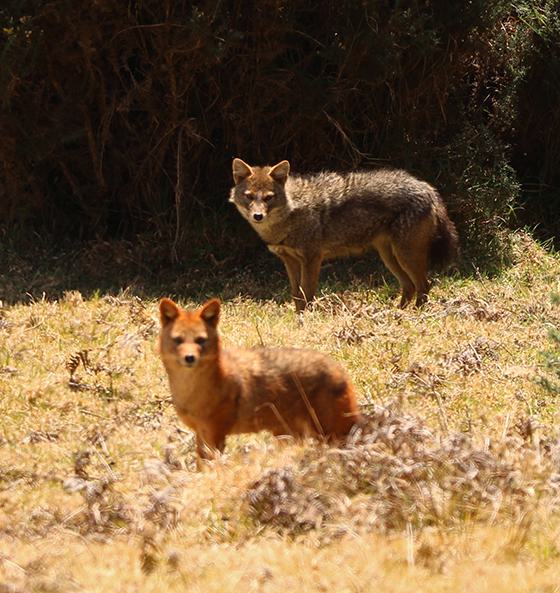
- 30 Jul 2025
In News:
A recent citizen science study conducted by the Aranyakam Nature Foundation estimates that Kerala is home to approximately 20,000 to 30,000 golden jackals (Canis aureus naria), highlighting the species' wide distribution and adaptability across the state’s diverse landscapes.
Key Ecological Facts
- Scientific Name: Canis aureus
- Common Names: Golden Jackal, Common Jackal
- Physical Appearance: Medium-sized canid, smaller than a wolf and larger than a fox; coat ranges from golden to pale brown, varying seasonally.
- Behaviour: Primarily nocturnal in human-dominated areas; lives in monogamous pairs, often uses burrows or rock crevices for shelter.
- Diet: Omnivorous; consumes small mammals, birds, fish, insects, hares, fruits, and is known to scavenge near human settlements.
Habitat and Distribution
- Found in South, Southeast, and Central Asia, extending into Southeastern Europe and North-East Africa.
- In India, widespread from the Himalayan foothills to the Western Ghats, including Kerala, Maharashtra, Rajasthan, and Haryana.
- Preferred Habitats: Open lowland regions, especially below 200m elevation. In Kerala:
- Coconut groves (24%)
- Rural settlements (10%)
- Urban areas (5.6%)
- Rare in protected forest areas (only 2% of sightings)
Key Findings from Kerala Study
- Over 5,000 sightings were recorded across 874 villages, involving 2,200+ participants.
- High adaptability to human-modified landscapes such as peri-urban zones and coastal belts.
- Ecological Concerns:
- Rising cases of poultry predation
- Risk of rabies transmission
- Increasing dependence on organic waste, especially near coastlines
- Threat of hybridisation with stray dogs, posing genetic risks
Conservation Status
- IUCN Red List: Least Concern
- CITES: Appendix III
- Wildlife Protection Act, 1972 (India): Schedule I (highest protection under Indian law)
Veer Parivar Sahayata Yojana
- 29 Jul 2025
In News:
The National Legal Services Authority (NALSA), in a significant step toward safeguarding the legal rights of India’s uniformed forces, launched the Veer Parivar Sahayata Yojana during the North Zone Regional Conference in Srinagar. Themed “Reaffirming the Constitutional Vision of Justice for Defence Personnel and Tribals,” the event spotlighted the urgent need to institutionalize accessible legal assistance for military personnel and their families.
Rationale and Objectives
- Defence and paramilitary personnel frequently serve in remote, conflict-prone, or high-risk environments, which limits their ability to attend to civilian legal matters. Be it land disputes, family conflicts, service-related claims, or bureaucratic issues, legal hurdles can deeply affect their lives. The scheme acknowledges that a soldier stationed on the border cannot readily leave his post to handle legal proceedings back home.
- The Veer Parivar Sahayata Yojana is designed to bridge this critical gap by providing free, competent, and timely legal aid to serving personnel, veterans, and their families.
Key Features of the Scheme
- Joint Collaboration: The initiative is a joint effort between NALSA, the Kendriya Sainik Board (KSB), Rajya Sainik Boards (RSBs), and Zilla Sainik Boards (ZSBs) under the Department of Ex-Servicemen Welfare, Ministry of Defence.
- Legal Clinics Across Sainik Boards: Legal Services Clinics will be established at the district, state, and central levels of the Sainik Boards across India. These will function as the first point of contact for defence families seeking legal assistance.
- Trained Legal Volunteers: The initiative actively involves panel lawyers and trained paralegal volunteers, including ex-servicemen and defence family members, to offer legal services and counselling.
- Back-end Legal Infrastructure: A robust administrative mechanism will support the on-ground functioning of clinics and ensure prompt resolution of legal grievances.
- Coverage for Paramilitary Forces: The scheme will also extend support to paramilitary personnel from forces such as BSF, CRPF, ITBP, and others, who operate under similar hardships and isolation.
Significance and Constitutional Context
- The scheme upholds Article 39A of the Constitution, which mandates equal justice and free legal aid for all citizens. Defence personnel, who make immense sacrifices for national security, often remain underserved when it comes to civilian entitlements, rights, and dispute resolution.
- By reaffirming the constitutional commitment to access to justice, the scheme aligns with the broader goal of legal empowerment of vulnerable and marginalized communities, including those in service of the nation.
Deep Brain Stimulation (DBS)
- 29 Jul 2025
In News:
Over 1.6 lakh individuals globally have benefited from Deep Brain Stimulation (DBS)—a cutting-edge neurological procedure designed to manage complex brain disorders.
What is Deep Brain Stimulation?
DBS is a neurosurgical intervention wherein electrodes are surgically implanted into precise regions of the brain. These electrodes are connected via insulated wires to a pulse generator (similar to a pacemaker), typically placed under the skin near the collarbone.
The device delivers regulated electrical signals to targeted brain circuits. This helps modulate abnormal neural activity or restore disrupted brain function caused by neurological or psychiatric conditions.
How Does It Work?
- The implanted system sends mild, continuous electrical pulses to specific brain areas.
- These pulses help in stabilizing erratic electrical signals, which are often responsible for motor and cognitive dysfunctions.
- The stimulation does not destroy brain tissue and can be adjusted or turned off, offering reversibility unlike traditional ablative surgeries.
Clinical Applications of DBS
DBS has been widely adopted for treating movement disorders, especially when medications become ineffective:
- Parkinson’s Disease
- Essential Tremor
- Dystonia
Beyond motor disorders, DBS has received regulatory approval for use in certain psychiatric illnesses, such as: Obsessive-Compulsive Disorder (OCD)
Research is ongoing to explore its efficacy in conditions like:
- Severe Depression
- Epilepsy
Benefits of DBS
- Reversible and adjustable intervention
- Helps reduce motor symptoms such as tremors, stiffness, and rigidity
- Aims to normalize brain circuit functions at both micro (cellular) and macro (network) levels
- Offers hope in cases resistant to standard pharmacological therapies
Internal Complaints Committees
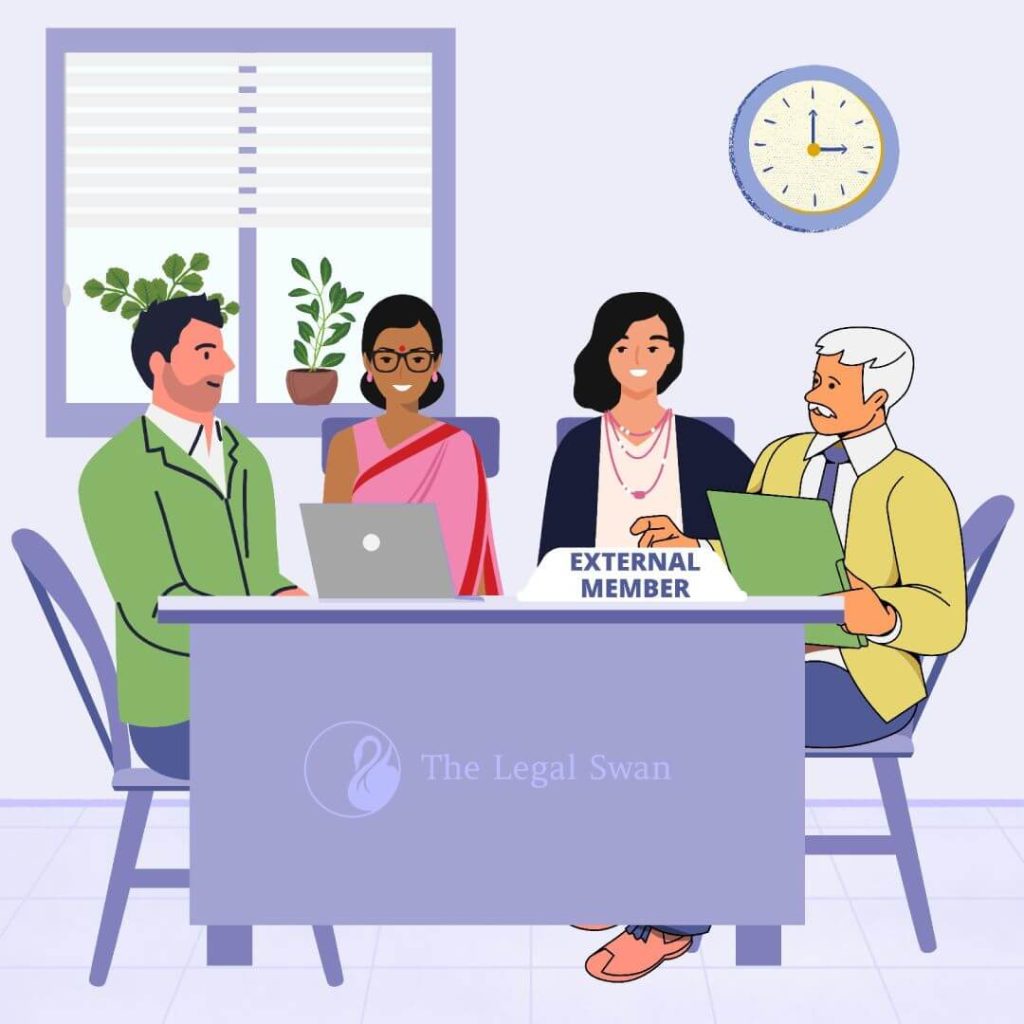
- 29 Jul 2025
In News:
The tragic case of a student’s self-immolation in Balasore, Odisha, in 2025, has brought renewed focus on the functioning of Internal Complaints Committees (ICCs) in India. The student, alleging sexual harassment by her Head of Department, had approached the college ICC, but her complaint was dismissed. Her family has alleged that the ICC was inadequately trained and biased in favor of the accused, exposing systemic flaws in India’s redressal mechanisms for workplace harassment.
This incident is a stark reminder that even a decade after the enactment of the Sexual Harassment of Women at Workplace (Prevention, Prohibition and Redressal) Act, 2013—popularly known as the POSH Act—the law’s implementation remains inconsistent and often ineffective.
Evolution of ICCs and the Legal Framework
1. Vishaka Guidelines (1997)
The foundation for workplace sexual harassment law in India was laid by the Supreme Court’s judgment in the Vishaka vs. State of Rajasthan (1997). The case stemmed from the gang-rape of Bhanwari Devi, a social worker who attempted to prevent a child marriage. The judgment led to the formulation of the Vishaka Guidelines, which:
- Defined sexual harassment at the workplace.
- Mandated Complaints Committees in institutions.
- Required these committees to be headed by a woman, have at least 50% female members, and include an external member to prevent internal bias.
However, these were non-binding guidelines and lacked statutory force.
2. POSH Act, 2013
The 2012 Nirbhaya gang-rape case spurred public demand for stronger gender-based protections, resulting in the enactment of the POSH Act, which gave legal backing to the Vishaka Guidelines. Key provisions of the POSH Act include:
- Mandatory establishment of Internal Complaints Committees (ICCs) at all workplaces with more than 10 employees.
- Creation of Local Complaints Committees (LCCs) at the district level to cover unorganized or small enterprises.
- ICCs are empowered to inquire, recommend disciplinary action, and facilitate criminal reporting when needed.
Structure and Powers of ICCs
Each ICC must have the following composition:
- Presiding Officer: A senior female employee.
- Two internal members: Preferably with legal knowledge or experience in social work.
- One external member: From an NGO or association committed to women's rights.
- At least 50% women members.
Functions and Powers:
- Can attempt conciliation if requested by the complainant.
- If not, must conduct an inquiry within 90 days.
- Can summon individuals and documents, with powers equivalent to a civil court.
- Can recommend disciplinary action to the employer if allegations are proven.
- The employer must assist the victim in pursuing a criminal complaint if desired.
- All proceedings and identities must be kept confidential.
Challenges in Implementation
Despite a clear legal mandate, the real-world functioning of ICCs has been fraught with systemic issues:
1. Poor Coverage
- Many institutions, especially in the private and informal sectors, have not constituted ICCs.
- Local Committees, intended to help informal workers, are either underreported or ineffective.
2. Inadequate Training and Bias
- ICC members often lack legal training or understanding of trauma-sensitive inquiry.
- As seen in the Balasore case, committees may favor senior male colleagues, reinforcing institutional power hierarchies.
- The absence of external accountability leads to compromised decisions.
3. Lack of Monitoring and Enforcement
- The Ministry of Women and Child Development is the nodal agency for the Act.
- But enforcement responsibility often lies with Labour and Industry Ministries, leading to fragmented oversight.
- The Supreme Court, in a 2024 review, described enforcement as “disquieting”, with serious lapses and poor record-keeping.
4. Breaches of Confidentiality
- There have been reports of identities being leaked, and complainants being stigmatized or retaliated against, violating the core principles of the Act.
Strengthening the POSH Mechanism
To ensure that the POSH Act fulfills its mandate, the following steps are critical:
- Universal Coverage and Registration:
- Mandate public disclosure of ICCs in all eligible institutions.
- Strengthen district monitoring mechanisms for both ICCs and LCCs.
- Capacity Building: Introduce mandatory training for ICC members on legal procedures, gender sensitivity, and trauma-informed handling.
- Robust Monitoring Framework:
- Enable centralized reporting portals for annual compliance.
- Conduct audits and periodic evaluations of ICC functioning.
- Accountability and Penalties:
- Impose penalties on employers for non-compliance or retaliatory action.
- Encourage whistleblower protections for witnesses and complainants.
- Public Awareness Campaigns: Inform women—especially in informal sectors—about their rights and the complaint mechanisms available to them.
Foot and Mouth Disease (FMD)
- 29 Jul 2025
In News:
- In July 2025, a concerning outbreak of Foot and Mouth Disease (FMD) led to the death of 16 spotted deer (chitals) at the Rajiv Gandhi Zoological Park in Pune, Maharashtra.
About Foot and Mouth Disease (FMD)
Nature of the Disease
- Foot and Mouth Disease (FMD) is a highly contagious viral infection caused by the aphthovirus from the Picornaviridae family.
- It affects cloven-hoofed animals, including cattle, buffaloes, goats, pigs, sheep, deer, and camelids.
- FMD is not zoonotic, i.e., it does not affect humans, and it poses no food safety risk.
Global and National Status
- FMD is classified as a Transboundary Animal Disease (TAD).
- It remains endemic in over 77% of the world’s livestock populations, particularly across Asia, Africa, and the Middle East.
- It severely disrupts livestock productivity, animal trade, and rural livelihoods.
Transmission and Symptoms
Transmission Routes
- Direct contact with infected animals.
- Indirect transmission through contaminated feed, equipment, vehicles, human movement, and airborne particles.
- Incubation period: 2–14 days.
- The virus can enter via inhalation, ingestion, or skin wounds.
Clinical Symptoms
- High fever lasting 2–3 days.
- Blisters and ulcers on the tongue, lips, hooves, teats, and mouth.
- Excessive salivation, lameness, and depression.
- Significant drop in milk production, weight loss, and growth retardation.
- In young animals, the disease can cause high mortality, while adults may suffer debilitating effects, affecting long-term productivity.
Strains and Immunity
- There are seven known strains of the FMD virus: A, O, C, SAT1, SAT2, SAT3, and Asia1.
- Immunity to one strain does not protect against others, making strain-specific vaccination critical.
Diagnosis and Institutional Infrastructure
- Confirmatory diagnosis is conducted through laboratory testing at premier institutes such as:
- ICAR-National Institute on Foot and Mouth Disease (NIFMD), Bhubaneswar
- Indian Veterinary Research Institute (IVRI), Bareilly
- National Institute of High Security Animal Diseases (NIHSAD), Bhopal
Government Interventions and Policies
National Animal Disease Control Programme (NADCP)
- Launched in 2019, the 100% centrally funded programme targets eradication of FMD and Brucellosis by 2030.
- Key components include:
- Mass vaccination
- Ear-tagging for traceability
- Cold chain infrastructure
- Disease surveillance and reporting
- Farmer awareness and community participation
Integrated Disease Management
- NADCP is aligned with the Livestock Health and Disease Control Programme (LHDCP).
- Several institutions like NIVEDI Bengaluru and Regional Disease Investigation Laboratories contribute to monitoring and outbreak control.
Preventive Strategies and Recommendations
To strengthen India's preparedness against FMD and other epizootics, the following measures are vital:
- Expand FMD Vaccination Coverage: Include zoo animals, wildlife reserves, and peri-urban livestock in regular vaccination drives.
- Strengthen Veterinary Surveillance: Ensure round-the-year disease surveillance, especially during weather extremes (monsoon and summer).
- Upgrade Infrastructure
- Expand testing capacity at regional levels.
- Deploy mobile diagnostic labs in remote zones.
- Raise Awareness: Educate livestock owners, zoo staff, and veterinary professionals about early symptoms, hygiene practices, and reporting protocols.
- Develop Strain-Specific Vaccines: Increase funding for R&D in strain identification and rapid-response vaccines.
- Leverage Technology: Use AI, GIS mapping, and data analytics to predict outbreaks and monitor disease spread.
Glacial Lake Outburst Floods (GLOFs)
- 29 Jul 2025
In News:
- In recent years, Glacial Lake Outburst Floods (GLOFs) have emerged as a critical concern in the Himalayan region, particularly affecting countries like India, Nepal, Bhutan, and China.
- The July 8, 2025, GLOF in Nepal—which washed away a China-built bridge and crippled hydropower plants supplying 8% of Nepal’s electricity—has drawn urgent attention to the increasing frequency and severity of such events.
- For India, especially in the Indian Himalayan Region (IHR), GLOFs pose an escalating risk to lives, infrastructure, and ecological systems due to climate change and unregulated development.
What is a Glacial Lake Outburst Flood (GLOF)?
A GLOF is the sudden, catastrophic release of water from a glacial lake—typically dammed by ice or moraine (glacial debris). The floodwaters often cause massive downstream destruction, marked by:
- Extremely high discharge volumes
- Destructive debris flows
- Short warning times
Types of Glacial Lakes in the Himalayas
- Supraglacial Lakes: Form on the surface of glaciers due to meltwater accumulation. Highly unstable during summer.
- Example: Cirenma Co in Tibet (1981), July 2024 Nepal GLOF.
- Moraine-Dammed Lakes: Form at glacier snouts, blocked by weak debris. Most vulnerable to outbursts.
- Example: South Lhonak (Sikkim), Tsho Rolpa (Nepal), Shako Cho (Sikkim)
Causes of GLOFs
Natural Triggers
- Glacial Retreat: Rising temperatures accelerate glacial melt, enlarging lakes.
- Ice or Rock Avalanches: Sudden falls into lakes displace water and rupture dams.
- Cloudbursts & Heavy Rainfall: Rapid rise in water levels increases pressure on dams.
- Seismic Activity: Earthquakes can destabilize moraine dams.
- Internal Piping: Seepage within dams weakens structural integrity over time.
Anthropogenic Factors
- Climate Change: Human-induced warming accelerates glacial melt.
- Unregulated Development: Construction near glacial zones—e.g., hydropower—exacerbates risk.
- Example: Teesta-III dam destruction in 2023.
Impacts of GLOFs
On Human Life and Infrastructure
- Casualties: Kedarnath (2013) and Sikkim (2023) GLOFs caused hundreds of deaths.
- Hydropower & Transport Damage: Washed-out roads, bridges, and dams; loss of electricity and connectivity.
- Displacement & Livelihood Loss: Long-term socio-economic disruption in affected regions.
On Environment
- River Course Changes & Silting: Raised riverbeds and reduced flood-carrying capacity.
- Teesta river rose several meters post-2023 flood.
- Habitat Loss & Biodiversity Decline: Ecological imbalance in alpine and riparian zones.
- Long-Term Ecosystem Stress: Sedimentation affects water quality and ecosystem resilience.
The Situation in India
India’s Himalayan arc—covering J&K, Ladakh, Himachal Pradesh, Uttarakhand, Sikkim, and Arunachal Pradesh—houses:
- 28,000 glacial lakes
- 7,500 lakes above 4,500 m altitude
- 11 major river basins
Yet, the region lacks sufficient monitoring infrastructure and early warning systems, primarily due to remoteness and hostile terrain.
Notable GLOF events:
- Kedarnath (2013): Triggered by cloudburst and glacial melt.
- South Lhonak (2023): Avalanche-triggered breach, damaging a $2 billion hydro project.
India’s Institutional Response to GLOF Risks
1. National Disaster Management Authority (NDMA) Initiatives
India has transitioned from reactive relief to proactive risk mitigation, through:
- National GLOF Programme: A ?150 crore initiative targeting 195 high-risk lakes.
- Committee on Disaster Risk Reduction (CoDRR): Coordinates central and state agencies, scientific institutions, and communities.
2. Five-Pronged Strategy
- Hazard Assessment: Classification of lakes by size, dam type, and downstream threat.
- Automated Weather & Water Stations (AWWS): Real-time monitoring (e.g., in Sikkim).
- Early Warning Systems (EWS): ITBP-led manual alerts; multilingual digital alerts in pilot stages.
- Engineering Interventions:
- Bathymetry and ERT scans
- Artificial channels and retention structures
- Community Engagement:
- Sensitization on religious and ecological concerns.
- Involving locals in scientific expeditions for credibility and access.
Technological Interventions
- SAR Interferometry: Satellite-based technique to detect micro-slope changes.
- Electrical Resistivity Tomography (ERT): Detects ice-cores under moraine dams.
- Unmanned Aerial Vehicles (UAVs): High-resolution terrain mapping.
- Remote Sensing: Tracks surface area growth of glacial lakes (but is post-facto).
Status of Mitigation Efforts
- Expeditions to 40 high-risk lakes in 2024 across J&K, Ladakh, HP, UK, Sikkim, and Arunachal Pradesh yielded positive outcomes.
- Installation of AWWS at lakes in Sikkim providing 10-minute interval data and daily lake imagery.
- ITBP trained for early alerts in absence of automated systems.
- More stations and expeditions are planned post-monsoon 2025.
Transboundary Challenges
- Many GLOF-prone lakes lie in Tibet, with rivers flowing into Nepal, Bhutan, and India.
- Nepal has faced multiple transboundary GLOFs recently (2024–25), with little to no warning from China.
- Example: July 8, 2025 GLOF from Tibet triggered floods in Nepal, destroying infrastructure.
- Past major GLOFs: Cirenma Co (1981), Dig Tsho (1985), Tama Pokhari (1998).
Policy Recommendations
- Strengthen Early Warning Systems: Expand AWWS and EWS coverage, integrate with mobile alerts.
- Transboundary Collaboration: Create shared protocols for upstream monitoring and data exchange with China, Nepal, and Bhutan.
- Integrate Climate Adaptation in Planning: Include GLOF risk in disaster risk reduction and infrastructure resilience planning.
- Ban Critical Infrastructure: Avoid siting major installations near vulnerable glacial zones.
- Promote Indigenous Technology: Invest in SAR, ERT, and AI-based modelling to predict GLOF risks.
- Community-Led Risk Reduction: Involve local populations in monitoring, response planning, and implementation.
Exercise Bold Kurukshetra 2025
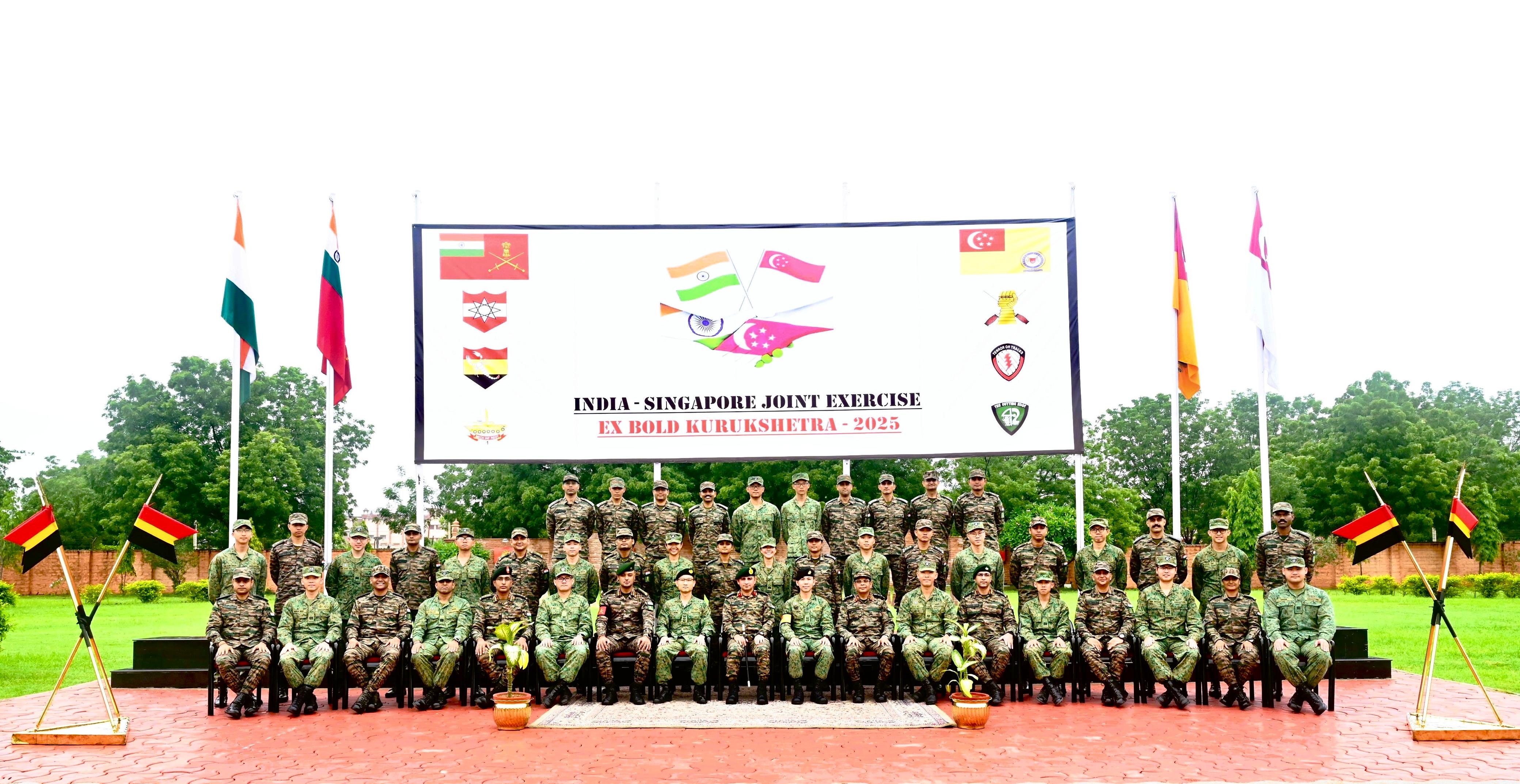
- 28 Jul 2025
In News:
The 14th edition of Exercise Bold Kurukshetra was commenced in Jodhpur, Rajasthan, reinforcing India–Singapore military ties. This bilateral military exercise is a key component of both countries’ growing defence cooperation.
About Exercise Bold Kurukshetra:
|
Feature |
Description |
|
Type |
Bilateral joint military exercise |
|
First Initiated |
2005 |
|
Edition |
14th edition (2025) |
|
Location (2025) |
Jodhpur, Rajasthan |
|
Duration |
28 July – 4 August 2025 |
|
Format |
Tabletop Exercise and Computer-Based Wargame |
|
Objective |
Enhance interoperability, validate mechanised warfare tactics, and simulate UN peacekeeping operations |
Participating Contingents:
|
Country |
Unit/Regiment |
|
India |
Mechanised Infantry Regiment |
|
Singapore |
42nd Armoured Regiment, 4th Singapore Armoured Brigade |
Key Features:
- Mechanised Warfare Focus: Validates joint operational tactics in modern armoured and mechanised operations.
- UN Mandate Simulation: Exercises conducted under simulated Chapter VII of the UN Charter, preparing both armies for peacekeeping and peace enforcement missions.
- Ceremonial Traditions: Enhances military camaraderie through shared symbolism and operational command handovers.
- Equipment Display: The exercise concludes with a display of Indian Army equipment, highlighting India's indigenous defence capabilities.
Strategic Significance:
|
Domain |
Contribution |
|
Defence Diplomacy |
Deepens bilateral military cooperation with Singapore |
|
Indo-Pacific Stability |
Enhances India’s strategic role in maintaining peace in the Indo-Pacific |
|
UN Peacekeeping |
Builds joint operational readiness for multinational UN-mandated missions |
|
Capacity Building |
Boosts joint planning and execution skills for mechanised combat environments |
Sohrai Art of Jharkhand
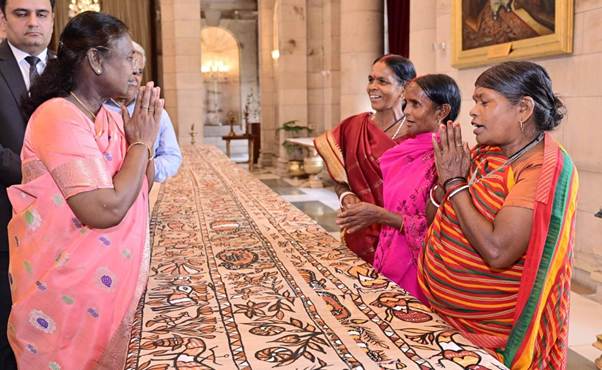
- 28 Jul 2025
In News:
Sohrai Art from Jharkhand was prominently showcased during Kala Utsav 2025 held at Rashtrapati Bhavan, where President Droupadi Murmu hailed it as reflecting the “soul of India.” The event marked a significant national recognition for this traditional tribal art.
About Sohrai Art:
|
Aspect |
Details |
|
Tribal Origins |
Practised by Santhal, Munda, and Oraon tribes in Jharkhand. |
|
Region |
Predominantly in Hazaribagh, Santhal Parganas, and parts of eastern Bihar. |
|
Occasion |
Ritual wall-painting during Diwali and harvest festivals. |
|
Purpose |
Thanksgiving for livestock and land fertility; linked to agrarian rituals and spiritual ecology. |
|
Artists |
Traditionally women; passed down through generations orally and practically. |
Key Features of Sohrai Art:
- Motifs: Stylized animals, birds, trees, and rural life, symbolizing harmony with nature.
- Materials: Uses natural pigments such as red ochre, white kaolin, yellow clay, and black manganese.
- Tools: Made with bamboo twigs, chewed sticks, and cloth instead of synthetic brushes.
- Cultural Essence: Embodies a blend of mythology, agrarian life, womanhood, and sustainability.
Kala Utsav 2025: National Recognition
- Held at Rashtrapati Bhavan as part of the Artists in Residence Programme.
- Ten tribal artists from Hazaribagh showcased their work to a national audience.
- President Murmu lauded the art as a symbol of India’s cultural depth and ecological consciousness.
Institutional Support: IGNCA’s Role
- Indira Gandhi National Centre for the Arts (IGNCA) and its Regional Centre in Ranchi coordinated artist participation.
- IGNCA continues to promote indigenous art forms, ensuring cultural preservation and artist recognition.
Cultural and Policy Relevance:
- Art & Culture: Highlights India’s rich tribal and folk heritage.
- Women Empowerment: Female-centric art practice promoting rural livelihoods.
- Sustainable Development: Use of eco-friendly materials and community-led traditions.
- Tribal Development Schemes: Aligns with objectives of schemes like TRIFED, GI tagging, and cultural promotion under Tribal Affairs Ministry.
Rajendra Chola I
- 28 Jul 2025
In News:
India is commemorating 1,000 years of Rajendra Chola I’s Southeast Asian expedition through cultural events and heritage projects.
Key Highlights:
Rajendra I Chola (r. 1014–1044 CE), son of Rajaraja I, was one of India’s most formidable monarchs, remembered for transforming the Chola Empire into a powerful naval and commercial force that extended influence far beyond the Indian subcontinent.
Background: Rise of the Chola Empire
- Imperial Cholas, based in Thanjavur, rose to prominence after Vijayalaya Chola captured the region around 850 CE.
- Successive rulers like Aditya I and Rajaraja I expanded the empire by defeating the Pallavas, Pandyas, and Rashtrakutas.
- Rajaraja I built the Brihadeeswarar Temple (1010 CE) and initiated overseas campaigns, laying the foundation for maritime expansion.
Rajendra I Chola’s Expansionist Vision
- Ascended the throne in 1014 CE, though anointed in 1012 CE.
- Sought to establish Chola supremacy across land and sea.
- Completed the conquest of Sri Lanka, capturing King Mahinda V and consolidating the southern frontier.
- Defeated the Western Chalukyas, Pandyas, Cheras, and Palas, earning the title Gangaikonda Chola (“the Chola who conquered the Ganges”).
New Capital – Gangaikondacholapuram
- To commemorate northern victories, Rajendra founded Gangaikondacholapuram, an imperial capital that served as a political, administrative, and cultural hub.
Naval Expeditions to Southeast Asia
Motivation:
- Establish maritime supremacy, protect trade routes, and forge strategic alliances.
- Respond to shifting alliances in Southeast Asia (Khmer Empire vs Srivijaya).
The Campaign (c. 1025 CE):
- Launched a massive naval expedition targeting the Srivijaya Empire (modern-day Indonesia, Malaysia).
- Conquered strategic regions like:
- Kadaram (Kedah)
- Pannai (Sumatra)
- Malaiyur (Malay Peninsula)
- Tambralinga, Pegu, and Kalingga
Significance:
- Asserted dominance over key trade routes to Song China.
- Cemented Chola-Khmer alliance.
- Extended Tamil commercial and cultural influence across Southeast Asia.
Commercial and Cultural Legacy
- Promoted merchant guilds such as Manigramam, Ayyavole, and Ainnurruvar, which flourished in overseas ports.
- Tamil inscriptions, artifacts, and temple architecture found across Indonesia, Malaysia, Cambodia, and China.
- Tamil loanwords persist in the Karo language of Sumatra.
- Contributed to a Tamil diaspora that influenced art, architecture, trade, and religion in Southeast Asia.
Military and Administrative Excellence
- Maintained a vast army and navy.
- Efficient administrative system with support from Krishnadeva Kendras (early research and extension centers).
- Built upon the model of divine kingship with Nataraja (Shiva as cosmic dancer) symbolizing spiritual legitimacy.
Global Recognition and Commemoration
- India’s training ship TS Rajendra, commissioned in 1972, honours his naval prowess.
- Chinese accounts from the 11th century describe the Chola court’s wealth, discipline, and grandeur.
- The Coromandel Coast derives its name from Cholamandala ("realm of the Cholas").
Conclusion
Rajendra I Chola stands out in Indian history as a maritime emperor, who not only expanded territorial frontiers but also projected Indian influence across Southeast Asia. His legacy lies in blending military conquests with trade diplomacy, and establishing cultural ties that endured for centuries. His reign marks one of the earliest and most successful examples of Indian soft power abroad.
Climate-Resilient and Organic Agriculture: Parliamentary Committee Report Highlights
- 28 Jul 2025
In News:
The Committee on Estimates (2024–25) has submitted its Sixth Report to Parliament, emphasizing the pressing need for a climate-resilient and ecologically sustainable agricultural system in India. The report presents a roadmap aimed at tackling the vulnerabilities posed by climate change, soil degradation, and unsustainable farming practices.
Key Challenges in Indian Agriculture:
1. Climate Vulnerability:
- Projected Yield Decline: Crop yields may fall by 4.5% to 9% in the medium term due to climate-induced stresses.
- District-Level Risks: Out of 310 climate-vulnerable districts identified by the IPCC,
- 109 are at ‘very high risk’,
- 201 are categorized as ‘highly vulnerable’.
2. Soil Health Crisis:
- Extent of Degradation: Nearly 30% of India's land suffers from soil degradation.
- Root Causes: Excessive chemical inputs (urea and pesticides) and loss of organic matter have disrupted nutrient cycles and reduced fertility.
3. Economic Pressures: The Green Revolution model now shows diminishing returns, with rising input costs contributing to farmer indebtedness and suicides.
Policy Shift Towards Sustainable Farming:
1. Natural Farming:
- National Mission on Natural Farming (NMNF): Launched in 2023–24 as an independent scheme, expanding upon the earlier Bhartiya Prakritik Krishi Paddati (BPKP).
- Focus: Chemical-free agriculture, soil regeneration, and farmer self-reliance.
2. Organic Farming Initiatives:
- Paramparagat Krishi Vikas Yojana (PKVY): Promotes cluster-based organic farming using Participatory Guarantee Systems (PGS) for certification.
- MOVCDNER: Aims to develop organic value chains in the North Eastern Region, leveraging traditional practices and rich biodiversity.
Challenges in Transition:
- Yield reductions during the initial switch.
- Complex and often expensive certification procedures.
- Weak market linkages and poor consumer awareness.
- Training and knowledge gaps among farmers.
- Financial risks for small and marginal farmers lacking safety nets.
Recommendations of the Committee:
- Integrate climate-resilient agriculture into national schemes like PM-KISAN, MGNREGA, and RKVY.
- Provide green subsidies to farmers offering ecological services.
- Establish a national agroecological transition framework combining research, training, and market access.
- Empower Krishi Vigyan Kendras (KVKs) with digital tools and decentralized funding for field-level implementation.
Scaling Up Climate-Resilient Strategies:
National Innovations in Climate Resilient Agriculture (NICRA):
- Launched: 2011 by the Indian Council of Agricultural Research (ICAR).
- Objective: Equip farming systems to adapt to climate variability.
Key Components:
- Strategic research on climate-tolerant varieties.
- Technology demonstrations in vulnerable districts.
- Capacity building for farmers and extension staff.
- Infrastructure enhancement at research institutions.
Notable Achievements in NICRA Villages:
- 2,900+ climate-resilient varieties developed (e.g., heat-tolerant wheat, drought-resistant rice).
- 28–37% rise in crop productivity.
- 10–12% increase in livestock productivity.
- 35–40% higher farm incomes compared to non-NICRA areas.
Way Forward:
- Expand NICRA initiatives to cover more vulnerable districts with dedicated funding.
- Create agroecological clusters to support localized natural/organic farming models.
- Simplify and support organic certification and branding to enhance marketability.
- Promote ministerial convergence among Agriculture, Environment, and Rural Development departments for cohesive implementation.
Environmental Flow (E-Flow) in Indian Rivers
- 28 Jul 2025
In News:
Union Jal Shakti Minister Shri C.R. Patil recently chaired a crucial meeting focused on the Environmental Flow (E-Flow) of the Ganga River and its tributaries, with particular attention to the Yamuna River. This initiative is a part of the broader effort to ensure the ecological sustainability of India’s river systems.
What is Environmental Flow (E-Flow)?
Environmental Flow refers to the quantity, timing, and quality of water flow necessary to sustain freshwater ecosystems and the livelihoods dependent on them. It ensures that rivers maintain their ecological integrity, supporting aquatic life, estuarine health, and human usage in a sustainable manner.
Why is E-Flow Important?
- Maintains ecological balance in rivers and estuaries.
- Supports aquatic biodiversity, especially key fish species.
- Provides long-term ecological and economic benefits.
- Balances human needs and environmental sustainability, especially in overexploited river basins.
Challenges in Maintaining E-Flow:
- Construction of dams and barrages.
- Pollution and urban encroachments.
- Over-extraction of water for agriculture and industry.
These interventions disrupt natural flow patterns, threatening riverine ecosystems and dependent communities.
Government Initiatives and Studies:
Environmental Flow Notification (2018):
- Introduced by the government to regulate minimum required flows in the Ganga. However, a review of its impact is now being undertaken to determine its effectiveness and the need for improvements.
Recent Meeting Outcomes:
- Emphasis on strengthening the e-flow framework, especially for the Yamuna River, which faces severe pollution and over-extraction issues.
- Need for a robust, inclusive, and scientific approach to water management.
Studies Approved Under National Mission for Clean Ganga (NMCG):
|
Institution |
Rivers/Sub-Basins Assigned |
|
NIH Roorkee |
Chambal, Son, Damodar |
|
IIT Roorkee |
Ghaghara, Gomti |
|
IIT Kanpur |
Kosi, Gandak, Mahananda |
These studies aim to assess current flow conditions and recommend sustainable flow levels.
Way Forward:
- Expedite assessments under NMCG and ensure multi-stakeholder participation.
- Develop comprehensive water flow strategies for heavily impacted rivers like the Yamuna.
- Strengthen decision-making frameworks to balance ecological and human needs.
Decline of Coral Reefs in Lakshadweep: A 24-Year Study
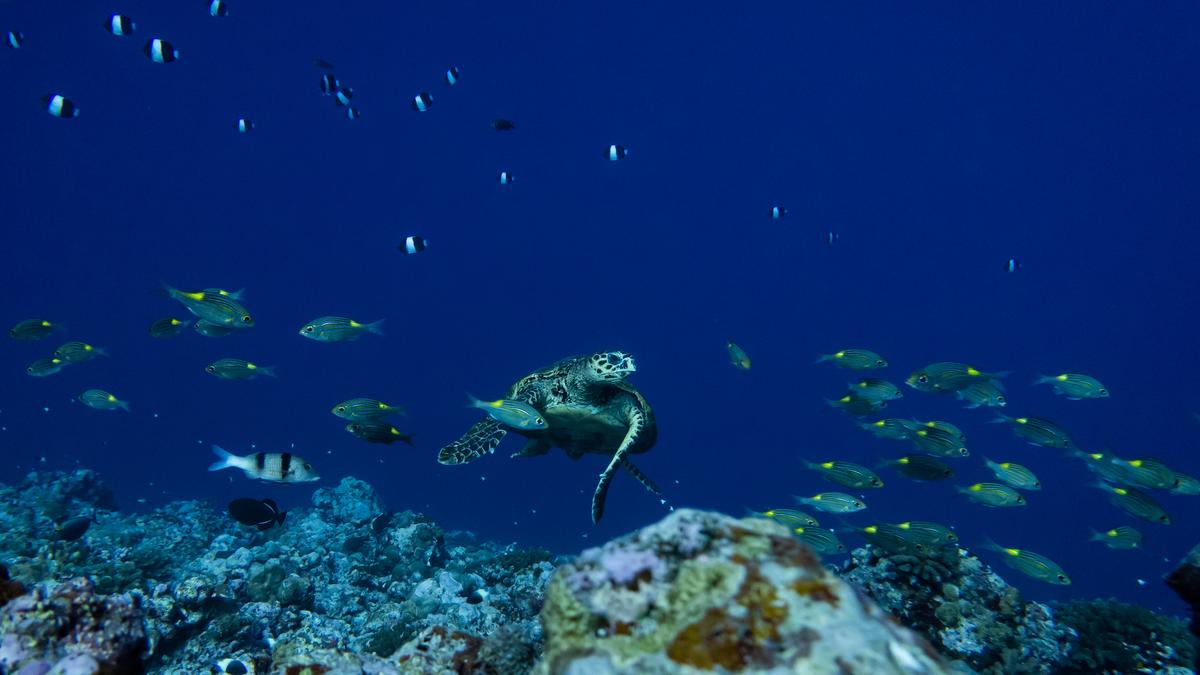
- 27 Jul 2025
In News:
A recent 24-year study (1998–2022) of coral reefs in the Lakshadweep Archipelago revealed that live coral cover has declined by nearly 50%, from about 37.2% to 19.1%. The research, conducted across three atolls—Agatti, Kadmat, and Kavaratti—highlights the severe impact of repeated marine heatwaves linked to climate change.
What are Corals?
Corals are small, soft-bodied marine invertebrates belonging to the Cnidaria group. Individual corals, called polyps, secrete a calcium carbonate exoskeleton, forming vast reef structures. Coral reefs provide crucial habitats for about 25% of marine life and support over 1 billion people worldwide with food, livelihoods, and coastal protection.
Types and Distribution:
India’s coral reefs are mainly found in the Gulf of Kutch, Gulf of Mannar, Andaman & Nicobar Islands, Lakshadweep Islands, and Malvan.
Causes of Coral Decline:
- Marine Heatwaves & Climate Change: Rising sea surface temperatures disrupt the symbiotic relationship between corals and their algae (zooxanthellae), causing bleaching and mortality.
- Ocean Acidification: Increased CO? lowers ocean pH, hampering coral skeleton formation.
- Pollution: Land runoff with fertilizers, pesticides, and heavy metals harms coral health.
- Physical Damage: Coastal development, sedimentation, and unsustainable fishing.
- Overfishing: Imbalance in reef ecosystems due to loss of algae-eating fish.
Key Findings from the Lakshadweep Study:
- Coral mortality from bleaching has decreased over time but so has the reefs’ recovery rate.
- Heat-sensitive coral species have largely disappeared, leaving more stress-tolerant species like Porites dominant.
- Recovery accelerates only if reefs are given at least a six-year gap between bleaching events.
- The 2010 marine heatwave was the most severe, with a Degree Heating Week (DHW) value of 6.7, indicating significant heat stress.
- The study emphasizes the need for longer recovery periods between bleaching for coral regeneration.
Implications for Conservation:
- The study provides a predictive framework to identify reefs vulnerable to bleaching and prioritize restoration.
- Local conservation must be combined with urgent global climate action to reduce the frequency of heatwaves.
- Without global intervention, even resilient coral species may not survive repeated disturbances.
This study underscores the vulnerability of India’s coral reefs, especially in Lakshadweep, to climate change and highlights the urgent need for integrated local and global conservation efforts.
ICJ Declares Clean Environment a Human Right
- 27 Jul 2025
In News:
In a historic advisory opinion delivered on 23rd July 2025, the International Court of Justice (ICJ) recognized the right to a clean, healthy, and sustainable environment as a fundamental human right. The opinion was issued at the request of the UN General Assembly (2023) following lobbying by Vanuatu and supported by over 130 countries, mainly small island developing states (SIDS) vulnerable to climate change.
Key Legal Questions Addressed:
- What are states’ obligations under international law to mitigate climate change?
- What are the legal consequences of failing to act on climate commitments?
Major Highlights of the ICJ Advisory Opinion:
1. Environment as a Human Right
- The Court affirmed that access to a clean, healthy, and sustainable environment is inherent to the enjoyment of other human rights.
- Based on customary international law, UNGA Resolution 76/300 (2022), and international human rights treaties.
2. Binding Legal Duties
- States are bound under UNFCCC, Kyoto Protocol, and Paris Agreement to:
- Implement mitigation and adaptation policies.
- Submit and update Nationally Determined Contributions (NDCs).
- Facilitate technology transfer and climate finance.
3. Due Diligence and Liability
- States must prevent significant transboundary environmental harm and regulate both public and private actors (e.g., fossil fuel companies).
- Failure to act amounts to an internationally wrongful act, triggering:
- Cessation,
- Guarantees of non-repetition,
- Compensation or restitution.
4. Historical Emissions & Responsibility
- The ICJ accepted that cumulative emissions can be legally attributed to specific states.
- Supports legal claims for reparations and accountability based on historic contributions to climate change.
5. Climate Obligations as Erga Omnes
- These duties are owed to the entire international community.
- Any state can seek enforcement, regardless of direct injury.
6. Scientific Attribution Accepted
- Climate science was admitted as legal evidence.
- Allows courts to establish causal links between emissions and environmental harm.
Geopolitical & Legal Implications:
- Empowers SIDS and developing nations in climate negotiations.
- Opens doors to domestic and international litigation based on environmental rights.
- Highlights inadequacy of current global agreements in ensuring timely climate action.
- Major emitters like USA and Russia have resisted legally binding obligations through courts.
Relevance for India:
- Reinforces Article 21 (Right to Life) and Article 48A (Protection of Environment) of the Indian Constitution.
- Can influence Indian courts and tribunals (e.g., NGT, Supreme Court) in:
- Air and water pollution cases,
- Waste management,
- Climate adaptation litigation.
This ruling marks a critical shift in international environmental law, signaling greater legal accountability for climate action and strengthening the legal foundation for future climate justice claims.
National Cooperation Policy 2025
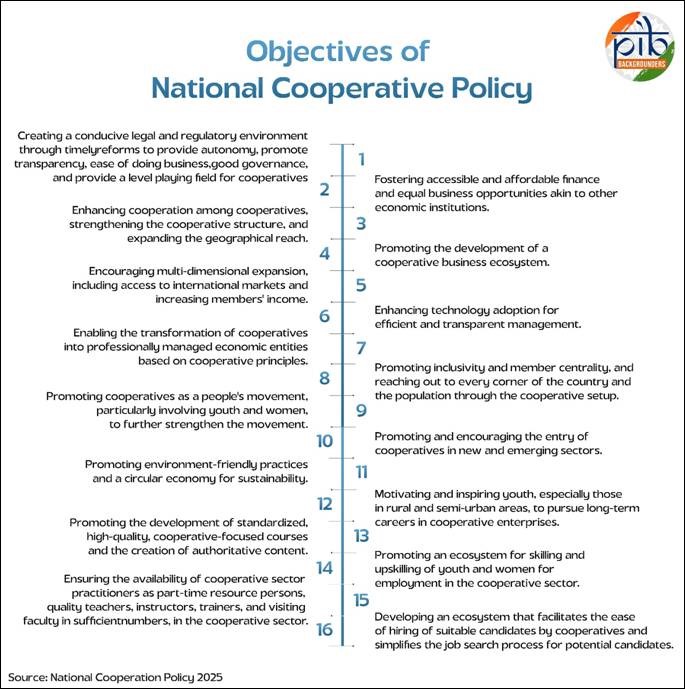
- 27 Jul 2025
In News:
- The National Cooperation Policy (NCP) 2025 marks a strategic roadmap for revitalizing India’s cooperative sector to meet the nation’s goal of becoming “Viksit” by 2047.
- Rooted in the ethos of Sahkar-se-Samriddhi, this policy aims to build on the unique strengths of India’s cooperative tradition, promote economic democratization, and uplift rural economies through collective participation.
- Mission: To create an enabling legal, economic, and institutional framework that will strengthen and deepen the cooperative movement at the grassroots level and facilitate the transformation of cooperative enterprises into professionally managed, transparent, technology-enabled, vibrant, and responsive economic entities to support production by the masses.
What is a Cooperative?
A cooperative is an autonomous association of persons, united voluntarily to meet their common economic, social, and cultural needs and aspirations through a jointly owned and democratically member-controlled enterprise.
Difference between Credit & Non-Credit Cooperatives
|
Aspect |
Credit Cooperatives |
Non-Credit Cooperatives |
|
Function |
Provide financial services like loans and savings |
Provide goods/services like farming inputs, housing, etc. |
|
Examples |
PACS, Urban Cooperative Banks |
Dairy, Marketing, Consumer, Housing Cooperatives |
The Indian cooperative movement has been the flag bearer of a participatory, people-led development model aimed at socio-economic upliftment at the grassroots level for more than a century.
Strategic Pillars:
The policy is structured around six mission pillars and 16 objectives:
- Strengthening the Foundation – Legal reforms, better governance, access to finance, digitalization.
- Promoting Vibrancy – Creating business ecosystems, expanding exports and rural clusters.
- Making Cooperatives Future-Ready – Technology integration, professional management, cooperative stack.
- Promoting Inclusivity and Deepening Reach – Promoting cooperative-led inclusive development and cooperatives as a people’s movement.
- Entering New and Emerging Sectors – Biogas, clean energy, warehousing, healthcare, etc.
- Shaping Young Generation for Cooperative Growth – Courses, training, employment exchanges.
Key Highlights of the Policy
Legislative and Institutional Reforms
- Encourage States to amend cooperative laws (Cooperative Societies Acts and Rules) to enhance transparency, autonomy and the ease of doing business.
- Promote digitalization of registrar offices and real-time cooperative databases.
- Revive sick cooperatives with institutional mechanisms.
Financial Empowerment
- Preserve and promote the three-tier Primary Agriculture Credit Societies - District Central Cooperative Bank - State Cooperative Bank credit structure.
- Promote cooperative banks and umbrella organizations (like National Urban Cooperative Finance & Development Corporation).
- Enable cooperative banks to handle government businesses.
Business Ecosystem Development
- Model cooperative villages with multipurpose PACS as growth engines.
- Encouraging States/UTs to develop at least one model cooperative village.
- Develop rural economic clusters (e.g., honey, spices, tea).
- Support branding under the ‘Bharat’ brand.
Model Cooperative Village
A Model Cooperative Village is a self-reliant rural unit developed through a cooperative-led, household-focused approach to enhance livelihoods and productivity.
Future-Readiness & Technology
- Develop a national ‘Cooperative Stack’ integrating with Agri-stack and databases.
- Promote Open Network for Digital Commerce (ONDC) and Government e-marketplace (GeM) platform integration.
- Encourage research and innovation through cooperative incubators and Centres of Excellence.
Open Network for Digital Commerce (ONDC)
The ONDC is a transformative initiative by the Department for Promotion of Industry and Internal Trade (DPIIT), Ministry of Commerce, Government of India aimed at democratizing digital commerce. Launched in April 2022, ONDC aims at promoting open networks for all aspects of exchange of goods and services over digital or electronic networks.
Government e-Marketplace (GeM)
GeM is an online platform for public procurement in India. The initiative was launched on August 09, 2016 by the Ministry of Commerce and Industry with the objective to create an open and transparent procurement platform for government buyers.
Inclusivity Measures
- Active participation of youth, women, SC/STs, and differently-abled in cooperatives.
- Model bye-laws for gender representation and transparent governance.
- Cooperative awareness campaigns in schools and colleges.
Model Bye-Laws
The Model Bye-laws are simply a representative sample and a guide to frame bye-laws of a multi-state cooperative society.
Sectoral Diversification
- Promote cooperatives in new and emerging sectors such as:
- Renewable energy,
- Waste management,
- Health and education,
- Mobile-based aggregator services (e.g., for plumbers, taxi drivers),
- Organic and natural farming,
- Biogas and ethanol production, etc.
Youth-Oriented Capacity Building
- Develop cooperative-focused courses in higher education institutions (HEIs).
- Build a national digital cooperative employment exchange.
- Promote financial and digital literacy among youth.
- Recruit quality cooperative teachers and resource persons.
Implementation and Monitoring
A robust multi-tier implementation structure is proposed:
- Implementation Cell within the Ministry of Cooperation with technical Project Management Unit support for effective and timely implementation of the policy.
- National Steering Committee on Cooperation Policy chaired by the Union Cooperation Minister will be constituted for overall guidance, inter-ministerial coordination, periodic policy review, etc.
- Policy Implementation and Monitoring Committee headed by the Union Cooperation Secretary for coordination with States, troubleshooting implementation bottlenecks, periodic monitoring and evaluation, etc.
India Skills Accelerator Initiative

- 27 Jul 2025
In News:
The Ministry of Skill Development and Entrepreneurship (MSDE), in collaboration with the World Economic Forum (WEF), deliberated on the “India Skills Accelerator” initiative.
Key Highlights:
- Launched by: Ministry of Skill Development and Entrepreneurship (MSDE)
- Collaborating Partner: World Economic Forum (WEF)
- Announced on: 8th April 2025 during a high-level roundtable at Kaushal Bhawan, New Delhi
- Objective: To strengthen India's skilling ecosystem through inclusive upskilling and reskilling, enhanced government-industry collaboration, and investment in lifelong learning, particularly in high-growth sectors such as Artificial Intelligence, robotics, and clean energy.
- Key Features:
- Public-Private Collaboration: Structured as a national platform bringing together government and private sector stakeholders; notably, 2 of the 4 co-chairs are from the private sector.
- Focus Areas:
- Promotes scalable and adaptive training models
- Facilitates agile career transitions for the workforce
- Aligns education and training with evolving industry demands
- Strategic Approach:
- Raising awareness and changing perceptions about future skills
- Encouraging cross-sectoral collaboration and sharing of best practices
- Reforming institutional frameworks to support a responsive and dynamic skilling system
- Significance: The initiative is aligned with India’s goal of building a future-ready workforce by addressing skill mismatches and preparing youth for rapidly transforming industries. It contributes to the broader national missions like Skill India, Digital India, and Make in India.
AI for India 2.0 Programme
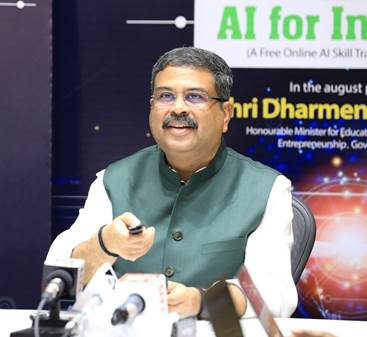
- 27 Jul 2025
In News:
The Minister of State (Independent Charge), Ministry of Skill Development and Entrepreneurship (MSDE), informed the Rajya Sabha about AI for India 2.0 Programme.
Key Highlights:
- Launched: 15th July 2023, on the occasion of World Youth Skills Day
- Implementing Bodies: Joint initiative by Skill India and GUVI (an ed-tech platform incubated by IIT Madras and IIM Ahmedabad)
- Accreditation: Recognized by NCVET and IIT Madras
- Objective: To democratize access to emerging technologies like Artificial Intelligence (AI) and Machine Learning (ML), especially among youth from non-English-speaking and rural backgrounds.
- Key Features:
- Free Online Training: Offers no-cost courses in AI and ML.
- Vernacular Focus: Educational content provided in 9 Indian languages including Hindi, Telugu, and Kannada, enhancing accessibility for non-English speakers.
- Target Audience: College students, recent graduates, and early-career professionals, with a focus on learners from rural regions.
- Course Content: Includes expert-curated Python programming courses designed to enhance technical proficiency.
- National Recognition: The programme is nationally accredited, ensuring quality and credibility.
- Significance: This initiative aims to empower the Indian youth by equipping them with industry-relevant digital skills, thus aligning with the broader goals of digital inclusion and skilling under Digital India and Skill India missions.
HOPS-315 Discovery
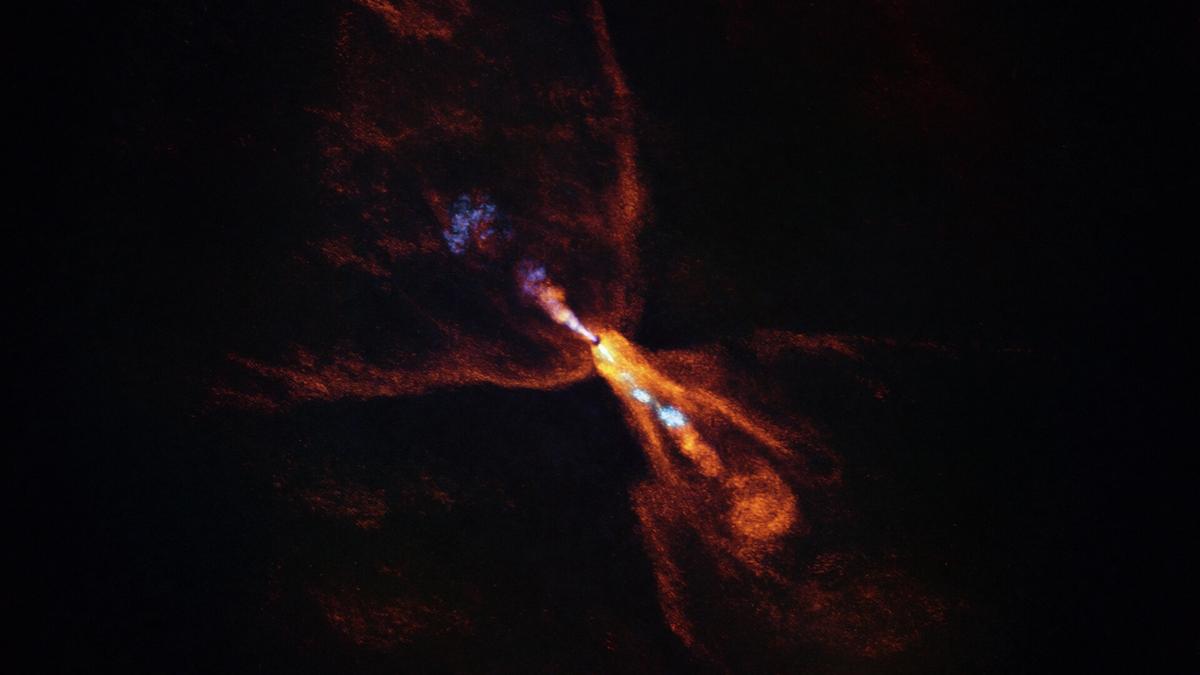
- 26 Jul 2025
In News:
Astronomers, for the first time, have observed solid rock condensation from vapor around a newborn protostar, HOPS-315, located in the Orion Molecular Cloud. This breakthrough offers unprecedented insight into the earliest stages of rocky planet formation, similar to how Earth likely formed.
About HOPS-315
- Type: Protostar (young, still-forming star)
- Location: Orion constellation (~1,300 light-years from Earth)
- Key Feature: Surrounded by a tilted protoplanetary disc of dust and gas, allowing deep observational access to its planet-forming region.
Instruments & Research Collaboration
- Telescopes Used:
- James Webb Space Telescope (JWST) – Spectral analysis via NIRSpec and MIRI instruments.
- Atacama Large Millimeter/submillimeter Array (ALMA) – Millimeter-wavelength mapping of gases and dust.
- Research Consortium: Scientists from France, the Netherlands, Sweden, Taiwan, and the USA.
- Published In: Nature (2025)
Key Observations & Findings
- Crystallization Process:
- Initial heating vaporizes dust (~1300 K near 1 AU from star).
- Subsequent cooling condenses vapor into refractory minerals (e.g., forsterite, enstatite, silica).
- Spectroscopic Evidence:
- Silicon monoxide (SiO) gas detected at ~470 K.
- Presence of crystalline silicates within 2.2 AU of the star — the zone where rocky planets typically form.
- ALMA Findings:
- Cooler gas in outer disc.
- Absence of slow SiO outflows confirms crystals are part of the disc atmosphere — not stellar jets.
Why It Matters
|
Significance |
Explanation |
|
First-Ever Observation |
Direct evidence of solid rock condensing from vapor around a protostar. |
|
Planet Formation Insight |
Confirms the earliest phase of rocky planet creation — from vapor to mineral solidification. |
|
Solar System Parallel |
Chemistry mirrors early Earth meteorites, suggesting universal mechanisms in rocky planet formation. |
|
Rare Viewing Geometry |
Tilted disc of HOPS-315 provided rare access to inner disc regions, usually obscured in other systems. |
National Sports Governance Bill 2025
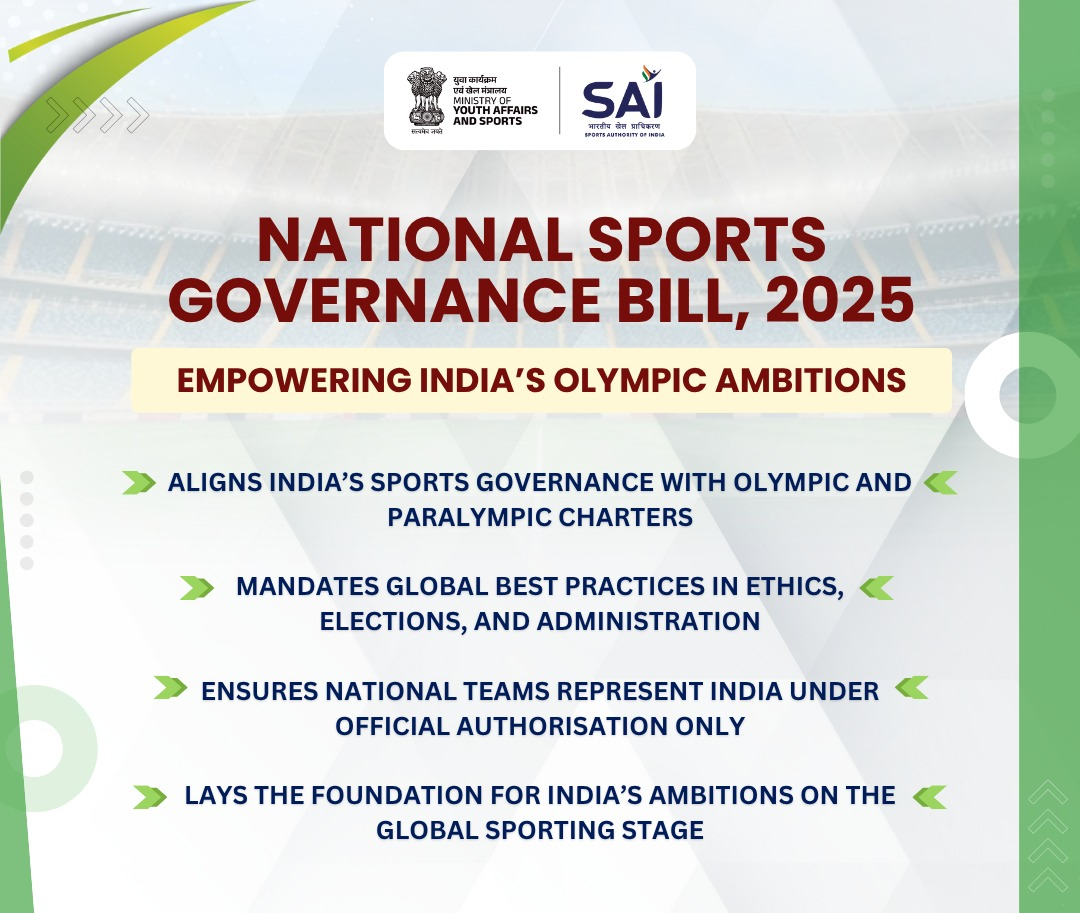
- 26 Jul 2025
In News:
The National Sports Governance Bill, 2025, introduced in the Lok Sabha, marks a significant legislative effort to restructure and reform India's sports administration framework. It seeks to replace the non-binding National Sports Code of 2011 with a statutory, enforceable law that prioritizes transparency, athlete welfare, and institutional accountability.
Key Objectives of the Bill
- Establish a uniform governance system across all sports federations.
- Legally regulate bodies like the Board of Control for Cricket in India (BCCI).
- Align Indian sports governance with international standards, particularly ahead of India’s 2036 Olympic bid.
- Introduce dedicated institutions for oversight, dispute resolution, and electoral transparency.
Major Structural Changes
1. Statutory Institutions Established
|
Institution |
Function |
|
National Sports Board (NSB) |
Recognition, funding eligibility, ethics compliance, and oversight of NSFs. |
|
National Sports Tribunal |
Dispute resolution (e.g., selection, elections, governance conflicts). |
|
National Sports Election Panel |
Ensures free, fair, and independent elections of sports bodies. |
Governance Reforms in National Sports Bodies
- Recognition & Regulation: All National Sports Federations (NSFs), including the BCCI, must seek annual recognition from the NSB.
- Affiliation: National bodies must have aligned state and district units, and comply with international federations' statutes.
- Code of Ethics: Mandatory for members, athletes, coaches, sponsors, and officials.
- Grievance Redressal: Internal mechanisms must be instituted by each federation.
Administrative Structure of National Bodies
- General Body: Equal representation from all affiliates and ex-officio members.
- Executive Committee: Maximum 15 members, mandatory inclusion of at least 4 women and 2 elite athletes.
- Age Limit: Officials must be aged 25–70 years (exceptions up to 75 years if permitted by international rules).
- Term Limit: Max three consecutive terms of four years in the same or different posts, with a cooling-off period.
Role of the National Sports Board (NSB)
The NSB acts as a central regulatory authority, similar to SEBI in financial markets.
Powers and Functions:
- Granting/suspending/canceling recognition of sports bodies.
- Investigating misuse of funds or violation of athlete welfare norms.
- Issuing guidelines for ethics, governance, and international compliance.
- Forming ad-hoc bodies in case of international de-recognition.
Composition: Chairperson and members with expertise in sports governance, law, and public administration. Appointed by the central government through a search-cum-selection committee.
National Sports Tribunal
A quasi-judicial body to resolve disputes involving federations, athletes, and administration.
Composition:
- Chairperson: Sitting/former Supreme Court Judge or Chief Justice of a High Court.
- Two expert members from sports, law, or public administration.
Appointed by: A committee comprising the Chief Justice of India (or nominee), the Law Secretary, and the Sports Secretary.
Appeals: Lie directly to the Supreme Court, except where international regulations mandate the Court of Arbitration for Sport (CAS) in Switzerland.
Jurisdiction Excludes: Disputes related to international sports events and internal matters of global sports bodies.
Electoral Oversight
A National Sports Election Panel will be constituted, comprising:
- Former Election Commissioners of India
- Former Chief Electoral Officers and Deputy Election Commissioners
Purpose:
- Supervise elections of executive committees of national federations.
- Ensure electoral integrity at the state and district levels via affiliate panels.
Legal Enforceability vs. Sports Code 2011
|
Parameter |
Sports Code 2011 |
Governance Bill 2025 |
|
Legal Status |
Advisory guidelines |
Statutory law |
|
Enforceability |
Non-binding |
Legally enforceable |
|
Gender/Athlete Representation |
Not mandated |
4 women & 2 elite athletes required |
|
Dispute Resolution |
Ministry-driven |
National Sports Tribunal |
|
BCCI Regulation |
Outside purview |
Brought under framework |
|
Election Oversight |
Ministry oversight |
Independent election panel |
|
RTI Applicability |
Exempt (BCCI) |
Mandatory for recognized bodies |
Bringing BCCI Under the Legal Framework
Historically resisting regulation, the BCCI will now be required to:
- Register annually with the NSB.
- Submit to the National Sports Tribunal for disputes.
- Comply with RTI Act provisions, if it seeks government recognition and funding.
This change is significant as cricket is now part of the 2028 Los Angeles Olympics, making BCCI subject to international governance norms under the Olympic Charter.
Provision for Exemptions
The central government may exempt specific sports bodies from certain provisions of the Bill, in the public interest or for the promotion of specific sports disciplines.
Parallel Legislation: Anti-Doping Amendment
The National Anti-Doping (Amendment) Bill, 2025 was also introduced, addressing World Anti-Doping Agency (WADA) concerns. It:
- Retains the National Board for Anti-Doping, but strips it of oversight over NADA.
- Restores NADA’s independence, aligning Indian anti-doping efforts with international norms.
Henley Passport Index 2025
- 26 Jul 2025
In News:
The Henley Passport Index 2025 reveals significant shifts in global mobility, highlighting increased visa-free access for citizens worldwide. India has made notable progress in the latest rankings, climbing eight places to reach the 77th position, up from 85th in 2024. Indian passport holders can now access 59 countries without a prior visa.
What is the Henley Passport Index?
The Henley Passport Index is a global ranking of passports based on the number of destinations their holders can enter without a visa or with visa-on-arrival. It is compiled by Henley & Partners using data from the International Air Transport Association (IATA). The index, started in 2006, now covers 199 passports and 227 travel destinations.
India’s Passport Performance:
- Current Rank (2025): 77th
- Visa-Free Access: 59 countries
- Previous Rank (2024): 85th
- Lowest Rank: 90th in 2021
- Best Rank: 71st in 2006
India's improved standing reflects enhanced global engagement and evolving diplomatic relations. However, it still trails far behind leading Asian and Western nations in terms of travel freedom.
Top 10 Most Powerful Passports (2025):
- Singapore – 193 visa-free destinations
- Japan, South Korea – 190 destinations
- Germany, France, Italy, Spain, Ireland, Denmark, Finland – 189 destinations
- Sweden, Austria, Belgium, Portugal, Netherlands, Luxembourg, Norway – 188 destinations
- Greece, Switzerland, New Zealand – 187 destinations
- United Kingdom – 186 destinations
- Australia, Czechia, Poland, Malta, Hungary – 185 destinations
- Canada, Estonia, United Arab Emirates (UAE) – 184 destinations
- Croatia, Latvia, Slovakia, Slovenia – 183 destinations
- United States, Iceland, Lithuania – 182 destinations
Note: The UAE is the only significant climber in the top 10, jumping from 42nd to 8th over the past decade.
Bottom 10 Least Powerful Passports (2025):
99. Afghanistan – 25 destinations
98. Syria – 27 destinations
97. Iraq – 30 destinations
96. Pakistan, Yemen, Somalia – 32 destinations
95. Libya, Nepal – 38 destinations
94. Bangladesh, Eritrea, Palestinian Territories – 39 destinations
93. North Korea – 40 destinations
92. Sudan – 41 destinations
91. Sri Lanka – 42 destinations
Global Trends in Passport Power:
- The global average of visa-free destinations has risen from 58 in 2006 to 109 in 2025, indicating increasing global mobility.
- Asian dominance continues, with Singapore, Japan, and South Korea topping the list.
- European Union countries maintain strong positions, reflecting widespread bilateral agreements.
- The United States and United Kingdom, once top-ranking, have seen a decline in influence. The US ranks 10th (182 destinations), while the UK stands at 6th (186 destinations).
- Afghanistan remains at the bottom of the list, with access to just 25 countries, highlighting stark global disparities in travel freedom.
Significance:
- The Henley Passport Index reflects soft power, diplomatic ties, and economic standing of nations.
- India's rising passport strength indicates improved bilateral relations, trade diplomacy, and international mobility.
National Critical Mineral Mission
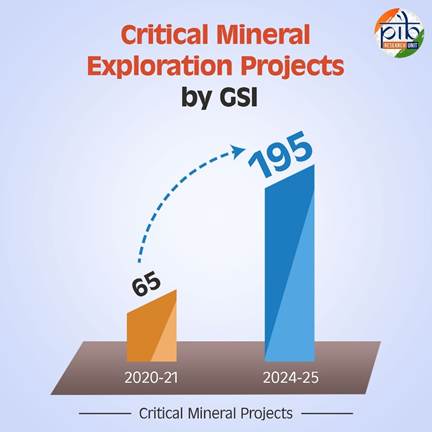
- 26 Jul 2025
In News:
The National Critical Mineral Mission (NCMM), launched by the Government of India in 2025, represents a strategic initiative to secure India's access to essential critical minerals, vital for clean energy, advanced electronics, defence, and emerging technologies. It aims to address India’s dependence on imports, strengthen domestic capacity, and build resilient supply chains.
What are Critical Minerals?
Critical minerals are those essential to economic development and national security, often marked by limited domestic availability and a high risk of supply disruption. These include lithium, cobalt, nickel, rare earth elements (REEs), graphite, and silicon, which are central to electric vehicles (EVs), solar panels, semiconductors, wind turbines, and defence applications.
Why NCMM? Strategic Context
- Energy Transition: India is 100% import-dependent for lithium, cobalt, and rare earths—crucial for EVs and energy storage.
- Tech Sovereignty: Strategic autonomy in AI, defence, and semiconductors depends on secure mineral access.
- Geopolitical Concerns: China controls 70–90% of global critical mineral processing. Diversifying supply chains is essential.
- Industrial Push: Schemes like PLI for EVs, electronics, and solar energy require a reliable mineral base.
- Climate Commitments: India aims to reduce emissions intensity by 45% (from 2005 levels) and reach net-zero by 2070.
Components of the National Critical Mineral Mission (NCMM)
Key Features of NCMM
1. Legal and Policy Framework
- Enacted under the Ministry of Mines in 2025.
- 30 critical minerals identified (24 inserted into Part D of the First Schedule of the MMDR Act, 1957).
- The Centre now has exclusive authority to auction mining leases for these minerals.
2. Domestic and Foreign Sourcing Targets (2024–2030)
|
Objective |
Target |
|
Domestic Exploration Projects |
1,200 |
|
Overseas Projects by PSUs |
26 |
|
Overseas Projects by Private Sector |
24 |
|
Recycling Incentive Scheme (in kilotons) |
400 |
|
Strategic Mineral Stockpile |
5 |
3. Capacity Building and Innovation
|
Objective |
Target |
|
Patents in Critical Mineral Tech |
1,000 |
|
Workforce Trained |
10,000 |
|
Processing Parks |
4 |
|
Centres of Excellence |
3 |
Sectoral Applications of Critical Minerals
- Solar Energy: Silicon, tellurium, indium, and gallium in photovoltaic cells; India’s solar capacity is 64 GW.
- Wind Energy: Neodymium and dysprosium in turbine magnets; target capacity: 140 GW by 2030.
- EVs: Lithium, nickel, cobalt in batteries; goal: 6–7 million EVs by 2024.
- Energy Storage: Lithium-ion battery storage systems; key for grid balancing and renewables.
Implementation Highlights
Exploration and Domestic Production
- 195 GSI projects launched in 2024–25, including 35 in Rajasthan.
- Over 100 mineral blocks identified for auction.
- Offshore exploration for polymetallic nodules (cobalt, REEs, nickel, manganese) underway.
- UNFC classification and MEMC Rules, 2015, guide the exploration methodology.
Asset Acquisition Abroad
- KABIL (Khanij Bidesh India Ltd):
- MoU with CAMYEN (Argentina) for lithium over 15,703 hectares.
- Ties with Australia for cobalt/lithium via Critical Mineral Office (CMO).
- Public–Private Partnership support via funding, MEA coordination, and guidelines for overseas investments.
Recycling and Circular Economy
- Incentives for mineral recovery from e-waste, fly ash, and tailings.
- Emphasis on building a formal recycling infrastructure.
- Current battery and electronics recycling sector is informal and lacks scale.
Processing and Midstream Infrastructure
- Development of dedicated Mineral Processing Parks.
- Encourage public–private partnerships and offer PLI-style incentives for refining technologies.
Challenges in India’s Critical Mineral Ecosystem
- High Import Dependence: 100% for lithium, cobalt, REEs.
- Underdeveloped Infrastructure: Lack of domestic refining, separation, and conversion capacity.
- Low Private Sector Participation: Technical and financial barriers deter participation.
- ESG Concerns: Mining zones often overlap with ecologically or tribally sensitive regions.
- Legal Bottlenecks: Environmental clearance delays due to weak ESG compliance.
- Informal Recycling Ecosystem: Fragmented, unregulated battery/e-waste recovery systems.
Strategic Roadmap Ahead
- Strengthen Exploration: Expand GSI capabilities; fund viability gap to attract investment.
- Diversify Global Sources: Engage in “friendshoring” with Australia, Argentina, U.S., etc.
- Build Midstream Capacity: Set up refining zones, mineral parks, and conversion units.
- Sustainable and Inclusive Mining: Implement ESG mandates and tribal welfare frameworks.
- Enhance Circular Economy: Provide tax breaks and subsidies for high-efficiency recovery systems.
Institutional Support
- IREL (India) Limited:
- Produces ilmenite, zircon, sillimanite, and rare earths.
- Operates Rare Earth Extraction Plant (Chatrapur, Odisha) and Refining Unit (Aluva, Kerala).
- Profitable PSU with ?14,625 million turnover (2021–22), including ?7,000 million exports.
Conclusion
India's National Critical Mineral Mission (NCMM) is pivotal for achieving strategic autonomy, industrial growth, and clean energy goals. By integrating domestic exploration, international partnerships, midstream processing, recycling, and regulatory reform, NCMM lays the foundation for a resilient and self-reliant mineral ecosystem. Its success is critical for India’s leadership in green technologies, manufacturing, and strategic geopolitics—making it a cornerstone initiative under Atmanirbhar Bharat and India's 21st-century industrial vision.
India–UK Comprehensive Economic and Trade Agreement (CETA)
- 26 Jul 2025
In News:
India and the United Kingdom signed the Comprehensive Economic and Trade Agreement (CETA) in July 2025, marking a landmark Free Trade Agreement (FTA) between India and a major developed economy. The agreement is part of the broader India–UK Vision 2035, aiming to strengthen bilateral ties across trade, technology, defence, climate, and education.
Key Features of CETA
1. Trade in Goods
- Zero-duty access for 99% of Indian exports to the UK, covering major sectors:
- Labour-intensive: textiles, leather, footwear, gems & jewellery, toys, marine products.
- High-growth: auto components, engineering goods, organic chemicals.
- Improved access for Indian agricultural products (tea, spices, coffee, fruits, meats) to UK’s $63.4 billion agri-market (dairy excluded).
2. Trade in Services
- First-of-its-kind comprehensive services commitment by the UK.
- Expands Indian access in: IT/ITeS, financial & legal services, architecture, education, telecom, consulting, and engineering.
3. Labour Mobility
- Liberalised visa norms for:
- Contractual Service Suppliers
- Intra-Corporate Transferees
- Independent Professionals (e.g. chefs, yoga instructors, musicians)
- Double Contribution Convention (DCC):
- Exempts Indian professionals and their employers from UK social security contributions for up to 3 years.
4. Inclusive Growth
- Benefits designed for MSMEs, women entrepreneurs, artisans, farmers, and startups.
- Provisions include:
- Dedicated SME contact points
- Digital trade facilitation
- Paperless customs
India–UK Vision 2035: 5 Strategic Pillars
1. Growth and Jobs
- Target: Double bilateral trade from USD 56 bn to USD 112 bn by 2030.
- Initiatives:
- New Bilateral Investment Treaty (BIT)
- UK–India Infrastructure Financing Bridge
- British International Investment (BII)
- Regulatory harmonisation in legal and financial services.
2. Technology and Innovation
- Focus Areas: AI, 6G, semiconductors, biotech, cybersecurity, biomaterials.
- Key Initiatives:
- Joint AI research centre
- India–UK Critical Minerals Guild
- Startup collaboration via incubators and biofoundries.
3. Defence and Security
- Launch of 10-Year Defence Industrial Roadmap: R&D in electric propulsion, underwater warfare, directed energy weapons.
- Deepening:
- 2+2 Ministerial Dialogue
- Military exercises, intelligence sharing
- Indian Ocean logistics cooperation
4. Climate and Clean Energy
- Areas of Collaboration: Offshore wind, small modular nuclear reactors (SMRs), carbon markets, blue carbon research.
- Joint commitment to:
- International Solar Alliance (ISA)
- One Sun One World One Grid (OSOWOG)
- Net Zero Innovation Partnership
5. Education and People-to-People Ties
- UK universities allowed to open campuses in India.
- Launch of dual degree programmes, mutual qualification recognition.
- Young Professionals Scheme for career mobility.
- Green Skills Partnership to bridge climate tech skill gaps.
Strategic Importance for India
|
Sector |
Impact |
|
Economy |
Enhances export potential, promotes Make in India, and attracts FDI. |
|
Employment |
Boosts jobs in textiles, IT, food processing, and engineering. |
|
Mobility |
Facilitates professional migration and global exposure. |
|
Technology |
Drives domestic innovation in AI, semiconductors, climate tech. |
|
Defence |
Supports self-reliance in high-tech military R&D. |
|
Climate Action |
Aids India’s Net Zero goals via access to green finance and clean energy tech. |
|
Global Positioning |
Strengthens India’s influence in WTO, UN, IMF, and other multilateral fora. |
Paika Rebellion (1817)
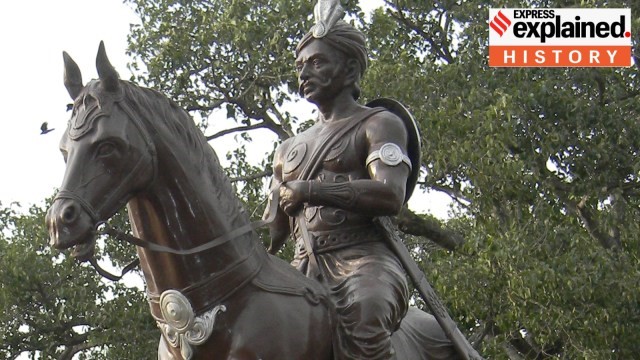
- 25 Jul 2025
In News:
The recent exclusion of the Paika Rebellion of 1817 from NCERT’s Class VIII history textbook triggered political backlash in Odisha. Former Chief Minister Naveen Patnaik termed the omission a “huge dishonour” to the Paika warriors, prompting NCERT to clarify that the topic would be included in the second volume of the textbook to be released later in 2025.
Who were the Paikas?
- The Paikas (literally "foot soldiers") were military retainers traditionally employed by the Gajapati kings of Odisha since the 16th century.
- In exchange for military service, they were granted hereditary rent-free lands (nish-kar jagirs), which they cultivated during peacetime.
- Under British rule, their privileges eroded, and they faced land dispossession, economic hardship, and social marginalisation.
Background to the Revolt
- In 1803, the British East India Company annexed Odisha. Colonel Harcourt marched from Madras to Cuttack, defeating feeble Maratha opposition.
- A deal with King Mukunda Deva II of Khurda promised ?1 lakh and four parganas (Lembai, Rahanga, Surai, Chabiskud) for safe passage, but the British defaulted.
- Jayee Rajguru, the king’s adviser, mobilised 2,000 Paikas to confront the British. Though part payment was made, the parganas were not returned.
- Rajguru was arrested and executed on 6 December 1806 for waging war against the British. The king was dethroned and exiled, and the Barunei Fort was demolished.
Causes of the Paika Rebellion
- Loss of Traditional Privileges:
- Confiscation of rent-free lands after British land settlements.
- End of royal patronage.
- Land Alienation & Tax Burden:
- Local Odia landowners were forced to sell land to Bengali absentee landlords.
- Revenue demands shifted to rupee payments, affecting marginal farmers and tribal communities.
- Salt Monopoly & Trade Restrictions: British control over salt trade, particularly after 1814, increased hardship for inland hill populations.
- Cultural and Political Suppression: The decline of local leadership and traditions under colonial authority contributed to growing dissent.
Course of the Rebellion (1817)
- In March 1817, approximately 400 Kondh tribal fighters from Ghumusar marched toward Khurda.
- They were joined by Bakshi Jagabandhu Bidyadhar, the former commander-in-chief of Khurda and ex-holder of the Rodanga estate.
- The rebels:
- Attacked the police station at Banpur
- Burned colonial buildings
- Looted the treasury
- Killed several British officials
- The rebellion spread across southern and central Odisha. Despite initial successes, the British suppressed the revolt.
- Jagabandhu evaded capture for years and surrendered in 1825 under negotiated terms.
Contemporary Significance and Political Debate
- The Paika Rebellion is widely regarded in Odisha as an early expression of anti-colonial resistance.
- In 2017, the Odisha government demanded that the uprising be recognised as the “First War of Independence”, predating the 1857 revolt.
- The Union Government, while not granting this status, acknowledged it as one of the early popular uprisings against colonial rule.
- National Recognition Efforts:
- In 2017, PM Narendra Modi felicitated over 200 descendants of Paika rebels.
- In 2019, President Ram Nath Kovind laid the foundation for a Paika Memorial at Barunei foothills, the rebellion’s epicentre.
- In 2024–25, the new BJP-led government in Odisha announced fast-tracked development of the Paika Academy and Memorial.
U.S. withdraws from UNESCO for the third time

- 25 Jul 2025
In News:
In 2025, the United States announced its decision to withdraw from the UNESCO, citing perceived bias against Israel. This move comes just two years after rejoining the organization in 2023 and marks the third U.S. exit, and the second under the Trump administration.
What is UNESCO?
- Full Form: United Nations Educational, Scientific and Cultural Organization
- Founded: 16th November 1945
- Headquarters: Paris, France
- Membership: 194 Member States and 12 Associate Members
- India's Role: A founding member of UNESCO
Mandate and Key Functions
- Education: Promote inclusive and equitable lifelong learning (aligned with SDG 4)
- Culture: Safeguard tangible and intangible cultural heritage through tools like the World Heritage List
- Science: Advance climate science, AI ethics, and sustainable development
- Global Understanding: Foster mutual respect, peace, and international cooperation
Timeline of U.S. Exits from UNESCO
|
Year |
Administration |
Reason for Exit |
|
1984 |
Reagan |
Accusations of mismanagement and pro-Soviet bias |
|
2017 |
Trump (1st Term) |
Alleged anti-Israel bias after Palestine was accepted as a member in 2011 |
|
2025 |
Trump (2nd Term) |
Continued allegations of bias; exit scheduled by December 2026 |
- Rejoined: Under Biden Administration in 2023
Global Implications of U.S. Withdrawal
1. Financial Consequences
- The U.S. was a major contributor to UNESCO.
- Its exit leaves a budget deficit, affecting:
- Education initiatives
- Cultural heritage projects
- Climate and AI research
- Past example: U.S. and Israel froze funding after Palestine’s admission in 2011.
2. Geopolitical Rebalancing
- China’s influence may expand in UNESCO’s absence, potentially altering agendas and narratives.
- Risk of geopolitical polarization in multilateral agencies.
3. Weakening of Multilateralism
- Unpredictable U.S. engagement weakens global cooperation mechanisms.
- Undermines trust and support for UN agencies, especially in developing countries.
4. Impact on Science and Education
- Reduced backing for global programs in:
- STEM education for girls
- AI ethics frameworks
- Climate change awareness and mitigation
Implications for India
Opportunities
- Diplomatic leverage: Greater voice in shaping global agendas on education, AI, and heritage.
- Soft power expansion: Through advocacy for Indian culture and World Heritage nominations.
- South-South cooperation: Leadership in global education and sustainable development dialogue.
Challenges
- Funding constraints could affect:
- Ongoing Indian UNESCO projects (e.g., Nalanda, Sundarbans)
- Educational programs in rural/tribal regions
- Increased pressure on India to contribute more financially
- Rising Chinese influence could marginalize India’s strategic interests
Long-Billed Bush Warbler
- 25 Jul 2025
In News:
In a significant ornithological event, a team of birders has confirmed the first Indian sighting in 46 years of the elusive Long-billed Bush Warbler (Locustella major). The bird was observed in dense willow thickets at an altitude of over 3,200 metres in Suru Valley, Ladakh.
About Long-Billed Bush Warbler
- Scientific Name: Locustella major
- Common Name: Long-Billed Bush Warbler (formerly Long-billed Grasshopper Warbler)
- Type: Medium-sized, skulking songbird of the bush warbler group
- Size: Approximately 15–17 cm in length
- Plumage:
- Brownish-olive upperparts with fine streaking
- Pale underparts (whitish or buff)
- Both sexes appear similar
- Call: Produces an insect-like clicking sound used for territory marking and mate attraction
Distribution and Habitat
- Global Range:
- Limited distribution in the mountains of Central Asia
- Documented in India, Pakistan, China, and Tajikistan
- Preferred Habitat:
- Altitude: 2,400–3,600 metres
- Found on grassy slopes with bushes and weeds
- Upland terraced cultivation and forest edge clearings
- Often observed among Rumex, sea buckthorn, and Ribes gooseberry shrubs near spruce forests
Conservation Status
- IUCN Red List: Near Threatened (NT)
- Reasons for decline include habitat loss, especially due to conversion of bushland into agricultural fields.
Significance of the 2025 Sighting
- The last confirmed Indian record was in 1979 near Sankoo in Kargil, by researchers from Southampton University.
- Historically, the species was relatively common in Dras and Suru valleys until the early 20th century.
- The recent sighting aligns with records from nearby Gilgit-Baltistan (2022–2025), where the species has been increasingly documented at similar altitudes (3,000–3,100 m).
Preah Vihear Temple Dispute
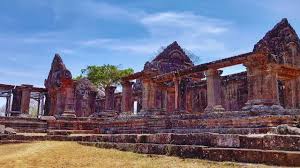
- 25 Jul 2025
In News:
Tensions between Thailand and Cambodia have sharply escalated in recent months, marked by armed clashes, airstrikes, and diplomatic fallout, all centering around the Preah Vihear Temple—a centuries-old Hindu monument of immense cultural and geopolitical significance.
About Preah Vihear Temple
- Location: Preah Vihear Province, northern Cambodia, atop a cliff in the Dangrek Mountain range, near the Cambodia–Thailand border.
- Religious Affiliation: Hindu temple dedicated to Lord Shiva.
- Historical Background:
- Constructed during the Khmer Empire, primarily in the 11th and 12th centuries.
- Key patrons: King Suryavarman I (1002–1050) and King Suryavarman II (1113–1150).
- UNESCO World Heritage Site: Inscribed in 2008 for its exceptional architectural and historical value.
Architectural Features
- Exemplifies Khmer temple architecture with a linear arrangement of sanctuaries linked by pavements and staircases over an 800-metre-long axis.
- Contains over five gopuras (monumental gateways) connected by a raised path and tiered platforms.
- Mixture of stone and wooden roofing, though many structures are partially in ruins.
Territorial Dispute Overview
- Historical Basis:
- Dispute stems from differing interpretations of a 1907 French map, which placed the temple inside Cambodian territory.
- Thailand disputes the map, arguing lack of formal acceptance.
- International Court of Justice (ICJ) Rulings:
- 1962: ICJ ruled the temple belongs to Cambodia, citing Thailand’s implicit acceptance of the 1907 map.
- Thailand was ordered to withdraw troops and return artifacts taken since 1954.
- 2013 (Reaffirmation): ICJ clarified that surrounding areas—particularly a 4.6 sq. km. disputed zone—also belong to Cambodia.
Major Flashpoints in the Conflict
- 2008: Cambodia registers Preah Vihear as a UNESCO World Heritage Site, triggering nationalist backlash in Thailand.
- 2008–2011: Border skirmishes escalate, culminating in a 2011 clash that killed at least 15 people.
- 2025 Escalation:
- Renewed violence erupted in July 2025, after a series of provocations:
- May 2025: Cambodian soldier killed.
- July 2025: Two Thai soldiers injured in landmine blasts.
- July 24, 2025: Armed conflict intensifies—Thai airstrikes target Cambodian positions near the temple.
- Casualties: At least 9 civilians killed, 14 injured in Thai provinces bordering Cambodia.
- Both nations expelled ambassadors and blamed each other for violations of sovereignty.
- Renewed violence erupted in July 2025, after a series of provocations:
Significance of the Dispute
- Cultural: Preah Vihear is a sacred site and national symbol for both nations.
- Strategic: Its location atop a cliff offers military advantage and control over surrounding terrain.
- Diplomatic: The temple remains a fault line in bilateral ties, with unresolved territorial claims despite multiple ICJ verdicts.
Palna Scheme
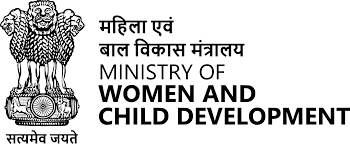
- 25 Jul 2025
In News
Launched by the Ministry of Women and Child Development (MoWCD) under the Samarthya vertical of Umbrella Mission Shakti, the Palna Scheme aims to provide safe, accessible, and quality day care (crèche) facilities for children aged 6 months to 6 years across all States and Union Territories, effective from 1st April 2022.
Key Features:
- Objective: To support working mothers by providing crèche services ensuring:
- Safety and well-being of children
- Nutritional support
- Early childhood care and cognitive development
- Health check-ups, growth monitoring, and immunization
- Target Beneficiaries: All children aged 6 months to 6 years. Services are irrespective of mothers' employment status, covering both organized and unorganized sectors.
- Types of Crèches:
- Standalone Crèches
- Anganwadi-cum-Crèches (AWCCs)
Anganwadi-cum-Crèche (AWCC) Model
- Utilizes existing Anganwadi Centres, the world’s largest public childcare infrastructure, to provide full-day childcare services.
- Ensures last-mile delivery of services in a safe and secure environment.
- Supports women’s workforce participation by relieving unpaid childcare burden.
Timings & Flexibility
- Crèches to operate for 26 days/month and 7.5 hours/day, with timings adapted to local needs.
- States/UTs may adjust timings under Standard Operating Procedures based on community work patterns.
Funding Pattern
|
Category |
Centre:State Funding Ratio |
|
General States |
60:40 |
|
North Eastern & Special Category States |
90:10 |
|
UTs with Legislature |
60:40 |
|
UTs without Legislature |
100% Central Assistance |
Integrated Services Offered
- Day care and sleeping facilities
- Early stimulation for children below 3 years
- Pre-school education for 3–6 years
- Supplementary nutrition (locally sourced)
- Growth monitoring, health check-ups & immunization
Implementation Status (As of July 2025)
- Total Envisioned AWCCs (FY 2022–26): 17,000
- AWCCs Approved by MoWCD (as of July 2025): 14,599
- Implemented based on proposals from States/UTs with cost-sharing as per applicable funding norms.
Significance
- Addresses the rising need for formal childcare due to:
- Increasing nuclear families
- Greater women’s participation in the workforce
- Migration, urbanization, and limited informal support structures
- Aligns with SDG 8 (Decent Work and Economic Growth) by formalizing care work and supporting inclusive economic participation.
Manual Scavenging
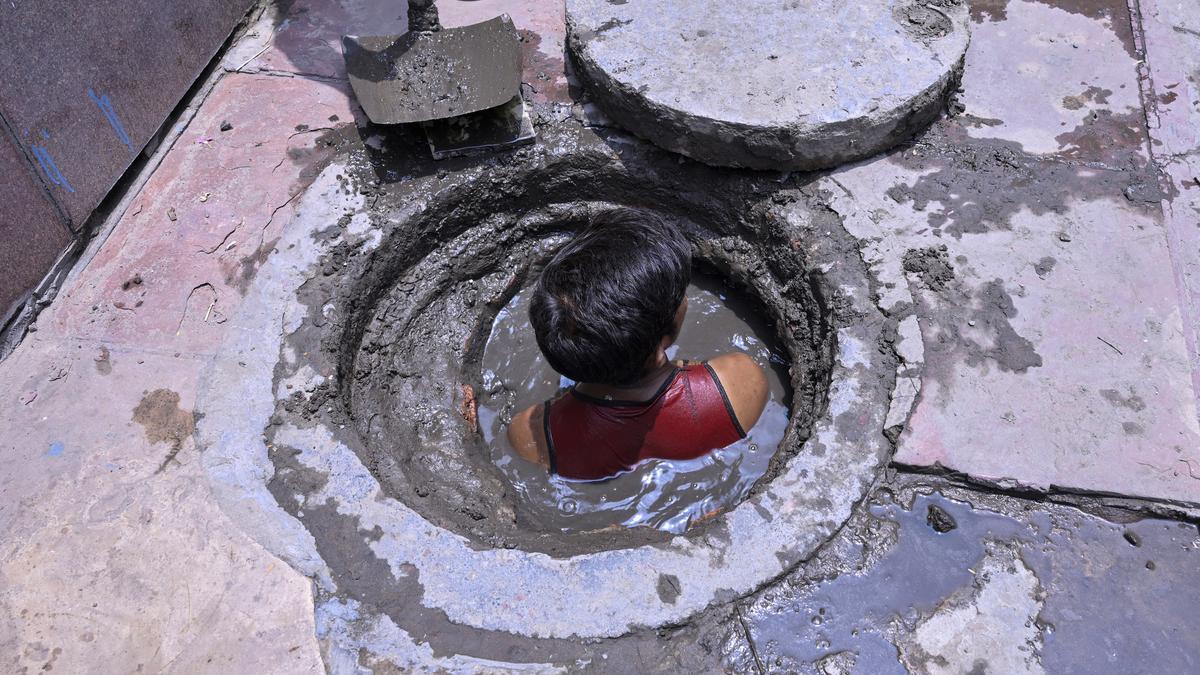
- 24 Jul 2025
In News:
A recent social audit conducted by the Ministry of Social Justice and Empowerment has exposed alarming lapses in the safety and legal safeguards meant to protect sanitation workers. The study, which examined 54 sewer-related deaths across 17 districts in eight States and Union Territories during 2022 and 2023, found that over 90% of the workers who died had no access to basic safety gear or mechanised equipment. Despite legal bans and policy interventions, manual scavenging and hazardous sewer cleaning continue, often resulting in fatalities, primarily among marginalized communities.
What is Manual Scavenging?
Manual scavenging involves the manual handling of human excreta from dry latrines, open drains, sewers, and septic tanks. Although officially prohibited under the 2013 Act, the practice continues under different forms, particularly through hazardous sewer and septic tank cleaning.
Key Findings from the Social Audit (2022–2023)
- 150 deaths from hazardous cleaning were recorded nationally during the two-year period.
- In 49 of the 54 deaths audited, no safety equipment was provided.
- In only five cases, the deceased had gloves; just one worker had both gloves and gumboots.
- No mechanised equipment was available in 47 cases; training was provided in only one instance.
- Informed consent was missing in 27 cases; in the 18 cases where consent was obtained, no counselling on risks was given.
- Most workers were individually contracted and not hired through government channels, evading institutional accountability.
- Post-death awareness drives were conducted in only seven locations, and even these were only partially executed.
Constitutional and Legal Safeguards
Constitutional Provisions:
- Article 21: Ensures the right to life with dignity, including safe working conditions.
- Article 23: Prohibits forced labour, applicable when workers are compelled into hazardous tasks.
- Article 42: Calls for humane working conditions and maternity relief.
Legal Framework:
- Prohibition of Employment as Manual Scavengers and their Rehabilitation Act, 2013:
- Bans manual scavenging.
- Mandates rehabilitation of identified workers.
- Supreme Court Judgment (2014 – Safai Karamchari Andolan v. Union of India):
- Ordered ?10 lakh compensation for each sewer/septic tank death.
- Held the State responsible for implementation failures.
Government Initiatives
NAMASTE Scheme (2023)
The National Action Plan for Mechanised Sanitation Ecosystem (NAMASTE) aims to eliminate hazardous cleaning practices.
- 84,902 workers have been identified across 36 States/UTs.
- Around 50% of them have been provided with PPE kits.
- In Odisha, 100% of identified workers (1,295) have received PPE kits, supported by the Garima Scheme.
- ?20 crore in capital subsidies distributed to 707 sanitation workers.
- 1,000 awareness workshops conducted.
- The scheme has also identified 37,800 waste pickers for support.
Other Key Initiatives:
- Swachh Bharat Abhiyan: Aims to reduce dependence on manual scavenging through sanitation infrastructure.
- Rashtriya Garima Abhiyaan: Campaign to eliminate manual scavenging and ensure rehabilitation.
- Bandicoot Robot: India’s first manhole-cleaning robot, developed in Kerala, which became the first fully robotised state for manhole cleaning in 2023.
Financial Inclusion Index (FI-Index)
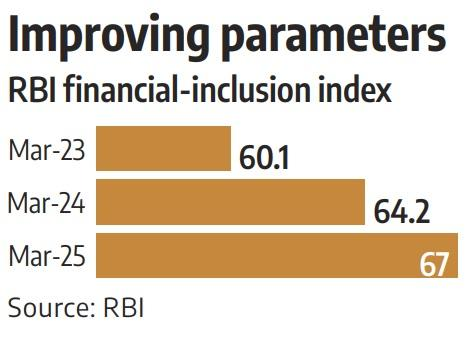
- 24 Jul 2025
In News:
The Reserve Bank of India’s Financial Inclusion Index (FI-Index) saw a 4.3% rise in FY2024-25, climbing from 64.2 in March 2024 to 67 in March 2025. This growth signals India’s ongoing success in expanding access to financial services, particularly in underserved regions, and enhancing the depth and quality of financial inclusion.
Understanding Financial Inclusion
- Financial inclusion refers to ensuring that individuals and businesses have accessible, affordable, and appropriate financial services such as banking, insurance, pensions, and investments. These services should be delivered responsibly and sustainably, supporting long-term economic empowerment.
What is the Financial Inclusion Index (FI-Index)?
- Developed by the RBI, the FI-Index offers a comprehensive measure of financial inclusion in India. It was formulated in consultation with the government and relevant financial sector regulators and captures progress across diverse financial domains—including banking, insurance, postal services, investments, and pensions.
- The Index is expressed as a single score between 0 and 100, where 0 denotes complete exclusion and 100 indicates full financial inclusion.
Components of the FI-Index
- Access (35% weight): Availability of financial services to the public.
- Usage (45% weight): Frequency and extent of usage of financial services.
- Quality (20% weight): Incorporates factors such as financial literacy, consumer protection, and equality in service delivery.
Key Insights from FY2024–25
- The FI-Index rose to 67 in March 2025, indicating broader and deeper financial engagement.
- All three sub-indices—access, usage, and quality—showed improvement.
- Notably, the rise was primarily driven by enhanced usage and service quality, reflecting the success of financial literacy campaigns and improved consumer trust in financial systems.
Importance of Financial Inclusion
Financial inclusion is not just an economic tool—it is a developmental imperative. It:
- Fuels entrepreneurship and employment generation.
- Advances gender empowerment, especially among women-led households.
- Helps in poverty alleviation and the resilience of vulnerable groups against financial and climate-related shocks.
- Supports at least seven of the United Nations Sustainable Development Goals (SDGs), including reducing inequalities and promoting inclusive economic growth.
Major Government Initiatives Driving Financial Inclusion
India's focused efforts have resulted in widespread access to formal financial services:
- Pradhan Mantri Jan Dhan Yojana (PMJDY): Over 54.58 crore bank accounts opened; deposits crossed ?2.46 lakh crore by January 2025.
- Atal Pension Yojana (APY): Enrolments surged to 7.33 crore, with 89.95 lakh new subscribers in FY25 alone.
- Pradhan Mantri Jeevan Jyoti Bima Yojana (PMJJBY): Covered 22.52 crore people, disbursing over ?17,600 crore for 8.8 lakh claims.
- Pradhan Mantri Suraksha Bima Yojana (PMSBY): Provided insurance to 49.12 crore individuals, settling claims worth ?2,994.75 crore.
- Pradhan Mantri Mudra Yojana (PMMY): Sanctioned loans worth ?32.36 lakh crore across 51.41 crore accounts; 68% to women and 50% to SC/ST/OBC beneficiaries.
- Stand-Up India Scheme: Loans worth ?53,609 crore sanctioned to 2.36 lakh entrepreneurs, promoting SC/ST and women entrepreneurship.
MiG-21 Fighter Jets
- 24 Jul 2025
In News:
- The Indian Air Force (IAF) is set to retire its final two squadrons of the iconic MiG-21 Bison fighter jets in September 2025, marking the end of an era that spanned over six decades.
- First inducted in 1963, the MiG-21 played a pivotal role in shaping India's aerial combat capabilities and remains a symbol of India's early steps toward defence self-reliance.
MiG-21: An Overview
- Origin: Designed by the Mikoyan-Gurevich Design Bureau of the Soviet Union in the 1950s.
- Type: Single-engine, supersonic jet fighter.
- Speed: Capable of speeds over Mach 2.0, making it one of the fastest jets of its time.
- Induction in India: Entered IAF service in 1963; licensed production began in the 1960s by Hindustan Aeronautics Limited (HAL).
- Significance: India’s first combat aircraft of non-Western origin and a key asset for air superiority during the Cold War and beyond.
Operational Legacy
The MiG-21 became the backbone of the IAF from the 1970s until the early 2000s, remaining in service even after the induction of more advanced aircraft like the Su-30MKI.
Wars and Combat Contributions
- 1965 & 1971 Indo-Pak Wars: Played a crucial role in establishing air superiority.
- During the 1971 war, MiG-21s conducted multiple successful bombing missions, including attacks on Pakistani airbases, contributing significantly to India’s decisive victory and the creation of Bangladesh.
- The aircraft famously outmatched Pakistan’s F-104 Starfighters in dogfights.
Strengths
- All-weather operations capability.
- Versatility in roles: air-to-air combat, ground attacks, and reconnaissance.
- Compatibility with a variety of air-to-ground and air-to-air weapons.
Limitations and Controversy
Despite its legendary status, the MiG-21's later years were marked by increasing technical limitations and a poor safety record:
- Nicknamed "Flying Coffin" due to over 400 crashes since the 1970s.
- Resulted in the deaths of over 200 pilots and 50 civilians.
- Upgraded variants like the MiG-21 Bison included radar and avionics improvements but could not overcome structural and safety limitations.
- Retirement was delayed multiple times due to shortages in the IAF’s squadron strength.
Retirement and Replacement
- The last two MiG-21 Bison squadrons will be phased out by September 2025.
- India had produced over 600 MiG-21s under license.
- Replacement underway with indigenously developed Tejas Mk-1A fighter jets, part of India’s push for self-reliance under Atmanirbhar Bharat.
- The IAF currently operates 29 squadrons—well below the sanctioned strength of 42.5 squadrons.
Fungus-Resistant Pineapple
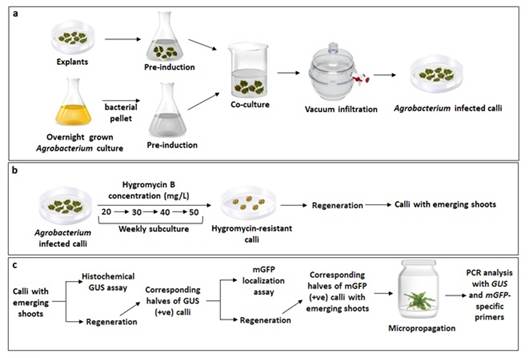
- 24 Jul 2025
In News:
- Pineapple (Ananas comosus L. Merr.), the most economically significant fruit of the Bromeliaceae family, plays a crucial role in nutrition and agriculture across tropical regions.
- In India, pineapple cultivation contributes significantly to rural livelihoods, particularly in northeastern and southern states. However, the productivity of this high-value fruit is severely impacted by Fusariosis, a destructive fungal disease caused by Fusarium moniliforme.
- A recent breakthrough by Indian scientists promises a potential game-changer in combating this challenge using indigenous genetic innovation.
Fusariosis
- Fusariosis is a devastating fungal infection that warps the stem, blackens the leaves, and rots the fruit internally, leading to heavy crop losses.
- Traditional breeding methods have struggled to provide effective resistance due to the rapid evolution of fungal pathogens. For farmers, this translates into unreliable harvests and financial instability.
The Biotechnological Solution: AcSERK3 Gene Overexpression
Researchers from the Bose Institute, an autonomous body under the Department of Science and Technology (DST), have successfully identified and overexpressed a gene in pineapple that significantly enhances resistance to Fusariosis.
- The gene, AcSERK3 (Somatic Embryogenesis Receptor Kinase 3), is part of the pineapple’s natural genome.
- It is known to regulate somatic embryogenesis and strengthen plant responses to biotic and abiotic stress.
- By genetically overexpressing this gene in pineapple plants, the researchers were able to trigger enhanced internal defence mechanisms.
- The transgenic lines exhibited increased production of stress-associated metabolites and antioxidant enzyme activity, enabling them to survive fungal attacks that severely damaged wild-type plants.
This is the first documented instance of overexpression of an indigenous pineapple gene to impart fungal disease tolerance while simultaneously improving regenerative capacity.
Significance of the Research
- The study, published in In Vitro Cellular & Developmental Biology – Plants, lays the foundation for developing multi-fungal tolerant pineapple varieties.
- These genetically enhanced lines are not dependent on foreign genes, thereby addressing biosafety concerns.
- Field trials, if successful, could lead to the commercial deployment of these varieties using conventional propagation methods like slips and suckers.
- This offers a sustainable, farmer-friendly solution, especially for smallholder pineapple growers in India.
Pineapple Cultivation in India: Key Facts
- Climatic Conditions: Grows well in 15–30°C temperature range and 600–2500 mm annual rainfall (optimum: 1000–1500 mm).
- Soil: Requires well-drained soils; intolerant to waterlogging.
- Tolerant to Drought: Possesses water-storing tissues making it suitable for rainfed cultivation.
- Cultivation Pattern: Can be grown as a monocrop or intercropped with coconut.
- Major Producing States: Assam, Meghalaya, Tripura, Manipur, West Bengal, Kerala, Karnataka, and Goa.
- Global Producers: Thailand, Philippines, Brazil, China, Nigeria, Mexico, Indonesia, Colombia, and the USA.
Stablecoins
- 24 Jul 2025
In News:
In the evolving landscape of digital finance, stablecoins have emerged as a promising innovation. Unlike volatile cryptocurrencies such as Bitcoin, stablecoins are designed to maintain a consistent value by pegging their worth to stable assets like fiat currencies or commodities. Recent legislative and technological developments, particularly in the United States, indicate growing global interest in integrating stablecoins into everyday financial systems.
What are Stablecoins?
Stablecoins are a type of cryptocurrency whose value is anchored to an external asset, commonly a fiat currency like the US dollar, or commodities such as gold. This pegging mechanism aims to minimize price volatility, making them more suitable for routine transactions.
There are three primary categories of stablecoins:
- Fiat-collateralized: Backed by actual reserves of fiat currency.
- Crypto-collateralized: Secured using other cryptocurrencies as collateral.
- Algorithmic (non-collateralized): Use smart contracts to automatically manage the coin’s supply based on demand.
Although designed for stability, these digital assets still carry some risks, especially if reserve management is opaque or unregulated.
Technological Foundation
Stablecoins, like other cryptocurrencies, are built on blockchain technology—a decentralized, distributed ledger system that records transactions in a secure, transparent manner. Blockchains operate through consensus mechanisms without needing a central authority, making stablecoins capable of direct peer-to-peer transactions without traditional banking intermediaries.
Recent Policy Development: The GENIUS Act
In a landmark move, the GENIUS Act (Generating Emergency National Income Using Stablecoins) was recently signed into law by the US President. It provides a regulatory framework specifically for US dollar-pegged stablecoins like USDC (by Circle) and USDT (by Tether). This legislative support is expected to accelerate the mainstream adoption of stablecoins, especially in cross-border payments.
Applications of Stablecoins
- Remittances and Cross-Border Transfers:
- Traditional remittance services like Western Union or MoneyGram charge high fees and delays.
- Stablecoins offer instant, low-cost transactions, benefiting especially those in countries facing hyperinflation or capital controls.
- Companies can also pay overseas workers in stablecoins, bypassing complex financial systems and exchange rate risks.
- E-Commerce and Retail:
- Online merchants can reduce reliance on credit card networks, which collected over $187 billion in fees in the US in 2023 alone.
- Stablecoins eliminate intermediaries, reducing transaction fees and improving profit margins.
- Enterprise and Supply Chain Payments:
- Businesses can benefit from faster and cheaper cross-border payments.
- Chinese conglomerate JD.com suggests stablecoins could cut transaction costs by 90% and reduce settlement time from days to seconds.
- Custom Stablecoins by Corporations:
- Giants like Amazon, Walmart, and JD.com are exploring the issuance of proprietary stablecoins to support in-house payment systems, customer loyalty programs, and even financial services.
- This could potentially shift customer deposits away from traditional banks, affecting their lending capacity.
- Integration with Artificial Intelligence: Emerging AI agents may autonomously execute and manage stablecoin-based transactions, particularly in business-to-business ecosystems, improving operational efficiency.
Opportunities and Challenges
Advantages:
- Faster, cheaper international payments
- Improved financial inclusion
- Enhanced efficiency in e-commerce and global business operations
Concerns:
- Regulatory uncertainty, especially across jurisdictions
- Security risks, including fraud and hacking
- Potential disruption to traditional banking systems
SASCI Scheme
- 23 Jul 2025
In News:
The Ministry of Tourism has issued operational guidelines for the SASCI Scheme – Special Assistance to States for Capital Investment – Development of Iconic Tourist Centres to Global Scale – aiming to comprehensively upgrade iconic tourist destinations across India.
About the SASCI Scheme
- Objective: To develop iconic tourist centres into world-class destinations, ensuring global branding and promotion, and enhancing the overall tourist experience.
- Ministry in Charge: Ministry of Tourism, Government of India.
- Nature of Assistance: Central Government provides financial support to State Governments for selected tourism projects under capital investment mode.
Key Features of the Scheme
- Integrated Development:
- Creation of end-to-end tourist experiences, including infrastructure, amenities, and accessibility.
- Strengthening all points of the tourist value chain – from entry to exit.
- Proposal-Based Implementation:
- Projects are selected based on proposals submitted by State Governments.
- These proposals are evaluated based on several prescribed parameters.
- Evaluation Parameters Include:
- Connectivity to the site
- Existing tourism ecosystem
- Carrying capacity of the site
- Sustainability measures (environmental, social)
- Operation and maintenance mechanisms
- Project impact and value creation
- Tourism marketing strategies
- Design & Sustainability:
- Projects to leverage high-quality expertise for planning, design, and execution.
- Emphasis on sustainable development and maintenance of tourist centres.
Implementation Timeline & Funding
- Timeline:
- Projects to be completed within a maximum of 2 years from sanction.
- Deadline for Central funding: 31st March 2026.
- Execution Responsibility: Entirely with the respective State Governments under the guidance of the Ministry of Tourism.
Promotional Strategy
- The Ministry promotes these destinations through:
- International and domestic events
- Social media campaigns
- Dedicated tourism websites
- Other promotional and branding platforms
Ambrosia Beetle
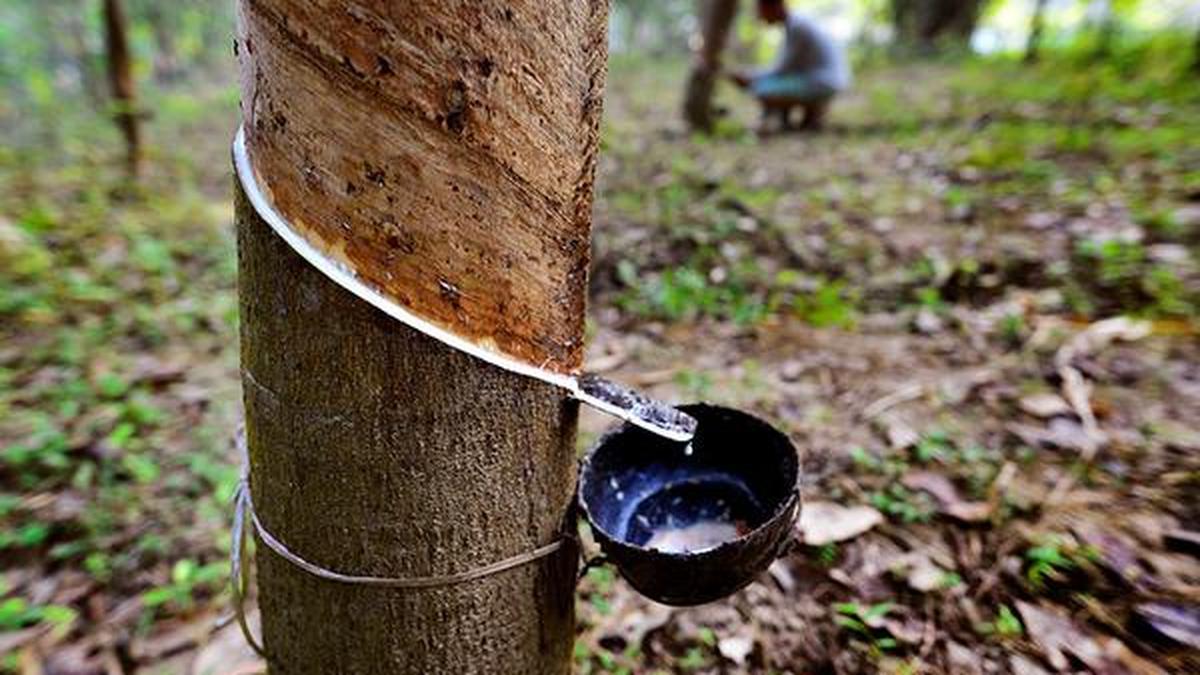
- 23 Jul 2025
In News:
Rubber plantations in Kerala, the heart of India’s natural rubber production, are under significant threat due to an invasive insect-fungal association. A mutualistic relationship between the ambrosia beetle (Euplatypus parallelus) and two fungal species (Fusarium ambrosia and Fusarium solani) has caused widespread tree damage, including leaf fall, trunk drying, and reduction in latex yield. This development poses a serious risk to India's rubber economy, biodiversity, and public health.
Key Highlights:
Ambrosia Beetle
- Origin: Native to Central and South America.
- First reported in India: In 2012, from cashew trees in Ponda, Goa.
- Current host: Rubber trees in Kerala, especially in Irrity-Kannur region.
Fungal Partners
- Fusarium ambrosia
- Fusarium solani — first time reported in association with adult ambrosia beetles in India.
Mutualistic Relationship
- The beetles do not feed on wood, but carry fungi into tunnels (galleries) bored into the tree bark.
- The fungi feed on wood, releasing enzymes that degrade plant tissue.
- Beetles and their larvae then feed on the nutrient-rich fungal mycelia.
- This association causes systemic infections in trees, often leading to their death.
Impact on Rubber Trees
- Weakens wood structure
- Causes severe leaf fall and drying of trunks
- Blocks xylem vessels, reducing water transport
- Leads to reduced latex production
- Long recovery time and high tree mortality
- The infection is hard to treat, as fungi lodge deep in plant tissues where fungicides and insecticides are ineffective.
Wider Implications
Scientific Concerns
- Fungi like Fusarium solani can evolve to associate with other beetles, expanding the range of infection to cashew, coconut, coffee, mango, and teak.
- These fungi can spread through soil or be carried by insect vectors, making containment difficult.
Health Hazards
- Fusarium species are opportunistic pathogens in humans.
- Workers in plantations may be exposed to these fungi, especially those with compromised immunity.
India’s Rubber Sector at Risk
- India is the 6th largest producer of rubber globally.
- Kerala accounts for 90% of national production and 72% of cultivation area.
- The economic stakes are high, as the beetle-fungi threat endangers not only latex yields but also the livelihoods of thousands of smallholder farmers.
Response Measures and Strategies
Current Management Practices
- Use of antifungal agents
- Pruning or burning infected parts
- Installation of ambrosia beetle traps
- Chipping infected wood to prevent spread
Challenges
- No mycangia (fungal sacs) found in beetles in India — raises questions on fungal transmission mechanisms.
- Soil- and insect-mediated spread of fungi makes conventional phytosanitary measures ineffective for broadleaf trees like rubber.
Suggested Solutions
- Genetically modified (GM) rubber plants to resist fungal infection (debated).
- Use of antagonistic fungi or microbial consortia inside plants to outcompete pathogens.
- Location-specific strategies based on geography and host tree characteristics.
- Greater collaboration between researchers and policymakers to monitor and contain the threat.
Winter Fog Experiment (WiFEX)
- 23 Jul 2025
In News:
The Winter Fog Experiment (WiFEX) has completed ten successful years since its launch in 2015. Initiated at the Indira Gandhi International Airport (IGIA), New Delhi, WiFEX has emerged as a pioneering long-term scientific initiative aimed at understanding and mitigating the impact of dense winter fog over the Indo-Gangetic Plain (IGP) — one of the most fog-prone regions in the world.
What is WiFEX?
- Launched in Winter 2015 at IGIA, New Delhi.
- Led by the Indian Institute of Tropical Meteorology (IITM) under the Ministry of Earth Sciences (MoES).
- Supported by:
- India Meteorological Department (IMD)
- National Centre for Medium Range Weather Forecasting (NCMRWF).
- One of the world’s few open-field long-term experiments exclusively dedicated to studying winter fog.
Objectives of WiFEX
- To develop accurate now-casting (up to 6 hours) and forecasting systems for fog events over North India.
- To reduce the adverse impact of fog on:
- Aviation (flight delays, diversions, safety).
- Surface transport (road and rail accidents).
- Economy and public safety.
How it was Conducted
Observational Framework
WiFEX deployed cutting-edge scientific equipment, including:
- Micrometeorology towers
- Ceilometers
- High-frequency sensors
- Radiometers
- Wind profilers
These were installed at multiple locations including:
- IGIA, Delhi
- Jewar Airport, Noida
- Hisar, Haryana
Key Parameters Studied
- Atmospheric temperature stratification
- Relative humidity and soil heat flux
- Wind speed and turbulence
- Aerosol concentration
- Urban heat island effects
- Land-use changes
This comprehensive data helped scientists decode how dense fog forms, persists, and disperses.
Major Achievements of WiFEX
High-Resolution Forecasting Model
- A 3-km resolution probabilistic fog prediction model was developed.
- Achieved over 85% accuracy in forecasting very dense fog (visibility <200 meters).
- Provides insights on:
- Onset and dissipation timing
- Fog density
- Duration of fog events
Operational Impact
- Significantly reduced flight diversions and delays at IGIA.
- Enhanced airport safety and efficiency in fog conditions.
- Helped airlines and transport authorities activate timely contingency plans.
Scientific Contributions
- Showcased how air pollution, aerosols, urbanization, and land-use changes influence fog behavior.
- Facilitated improvements in early warning systems for North India.
- Informed urban planning and air quality policies for fog-prone areas.
United Nations Educational, Scientific and Cultural Organization (UNESCO)
- 23 Jul 2025
In News:
In a significant development, the United States has announced its decision to withdraw from UNESCO (United Nations Educational, Scientific and Cultural Organization) by December 2026, citing what it perceives as the agency’s anti-Israel bias and its recognition of the State of Palestine as a full member. This marks the third withdrawal of the U.S. from UNESCO and the second under President Donald Trump’s leadership, having previously exited in 2018 and rejoined in 2023 under the Biden administration.
Reasons for U.S. Withdrawal
According to the U.S. State Department, the decision stems from:
- UNESCO’s admission of the State of Palestine as a member state, which contradicts official U.S. policy.
- Allegations that UNESCO promotes divisive social and cultural causes.
- Concerns about the proliferation of anti-Israel rhetoric within the organization.
About UNESCO
Founding and Mandate
- Founded: 16 November 1945 (Constitution in force from 1946).
- Headquarters: Paris, France.
- Parent Body: United Nations Economic and Social Council (ECOSOC).
- Membership: 194 member states and 12 associate members.
- Origin: Born out of post–World War II efforts to foster peace through education, science, and culture.
Objectives
UNESCO aims to build global peace and security by:
- Promoting international cooperation in education, science, culture, and communication.
- Supporting literacy, educational access, and free universal education.
- Acting as a clearinghouse of knowledge, especially in global South nations.
Focus Areas
UNESCO operates in five major sectors:
- Education
- Natural Sciences
- Social and Human Sciences
- Culture
- Communication and Information
Key Functions and Initiatives
Flagship Initiatives
- World Heritage Convention (1972): Protects cultural and natural sites of outstanding universal value.
- Man and the Biosphere Programme (1971): Promotes sustainable development through biosphere reserves.
- Convention for Safeguarding Intangible Cultural Heritage (2003): Preserves oral traditions, performing arts, and rituals.
- Global Education Coalition (2020): Formed during COVID-19 to ensure education continuity.
- Recommendation on the Ethics of Artificial Intelligence (2021): Sets global standards for ethical AI development.
Important Publications
- Global Education Monitoring Report
- World Water Development Report
- World Trends in Freedom of Expression and Media Development
Strategic Importance of UNESCO
- Acts as a platform for intercultural dialogue and peacebuilding.
- Enhances scientific cooperation for issues like climate change and disaster preparedness.
- Supports freedom of expression and combats misinformation globally.
- Promotes equity in global education and digital access.
- Plays a key role in setting ethical standards in science and technology.
U.S. and UNESCO: A Tumultuous Relationship
- The U.S. has historically had a strained relationship with UNESCO:
- 1984: First withdrawal under Ronald Reagan, citing mismanagement and politicization.
- 2002: Rejoined under George W. Bush.
- 2011: Stopped funding after UNESCO admitted Palestine as a member.
- 2018: Withdrew under Donald Trump.
- 2023: Rejoined under Joe Biden.
- 2026: Set to withdraw again.
Implications of U.S. Withdrawal
- Financial Impact: The U.S. has historically contributed around 22% of UNESCO’s budget.
- Geopolitical Signal: Reflects a broader American skepticism towards multilateral institutions.
- Operational Effect: May hamper UNESCO’s work, especially in politically sensitive or conflict regions.
- Diplomatic Fallout: Could weaken the U.S.'s soft power and global cultural influence.
Resignation of Vice-President of India
- 23 Jul 2025
In News:
Vice-President of India, Jagdeep Dhankhar, resigned from office on health grounds on July 2025, invoking Article 67(a) of the Constitution. This created a rare mid-term vacancy in the Vice-President’s office, necessitating immediate action by the Election Commission of India (ECI) to conduct fresh elections.
Constitutional Provisions and Duties of the Vice-President
Articles Related to Vice-President:
- Article 63: Provides for the post of Vice-President.
- Article 64: Vice-President acts as ex-officio Chairman of Rajya Sabha.
- Article 65: Vice-President acts as President in case of a vacancy in the office of the President.
- Article 66: Deals with election of the Vice-President.
- Article 67(a): Vice-President may resign by writing under his hand addressed to the President.
- Article 68: Covers election in case of a vacancy and mandates that it be filled as soon as possible.
- Article 324: Vests the Election Commission of India (ECI) with the authority to conduct the election.
Resignation of the Vice-President
Key Facts:
- Jagdeep Dhankhar, 74, resigned before completing his 5-year term (2022–2027).
- The resignation was addressed to the President of India as per Article 67(a).
- No formal acceptance is necessary; it becomes effective upon submission.
- Constitutionally, no method of succession is provided other than fresh elections.
Historical Precedents:
- V.V. Giri (1969): Resigned to contest Presidential election.
- Bhairon Singh Shekhawat (2007): Resigned after losing Presidential race.
- Jagdeep Dhankhar (2025): Resigned for health reasons.
Election Process for Vice-President
Electoral College:
- Comprises both elected and nominated members of the Lok Sabha and Rajya Sabha.
- Unlike the Presidential election, MLAs are not part of the Vice-Presidential electoral college.
Voting System:
- Election is held by proportional representation through single transferable vote (STV).
- Voting is by secret ballot.
- All votes carry equal value, unlike in Presidential elections.
Nomination Procedure:
- Requires at least 20 proposers and 20 seconders, all of whom must be MPs.
- Security deposit: ?15,000.
- Nomination papers must be submitted between 11 a.m. and 3 p.m. on appointed days.
Returning Officer:
- Typically, the Secretary-General of the Lok Sabha or Rajya Sabha, appointed by rotation.
- Two Assistant Returning Officers from Parliament Secretariat also assist.
Eligibility Criteria for Vice-President
A candidate must:
- Be a citizen of India.
- Have completed 35 years of age.
- Be qualified for election to the Rajya Sabha.
- Not hold any office of profit under the Union or State Government or any subordinate authority.
If an MP is elected Vice-President, they vacate their parliamentary seat on assuming office.
Dispute Resolution
- Supreme Court exclusively handles disputes related to Vice-Presidential elections.
- Cases are heard by a five-judge bench, and its decision is final.
Implications of Vacancy
- The post of Vice-President cannot remain vacant, even temporarily.
- In the interim, the Deputy Chairman of the Rajya Sabha presides over its proceedings.
- The ECI is mandated to conduct elections immediately after such a vacancy occurs, although no fixed constitutional timeline is prescribed for Vice-Presidential elections (unlike Presidential elections which must occur within six months).
Tenure and Re-election
- The Vice-President holds office for five years but continues until a successor is elected and takes office.
- There is no bar on re-election to the office.
Meri Panchayat App
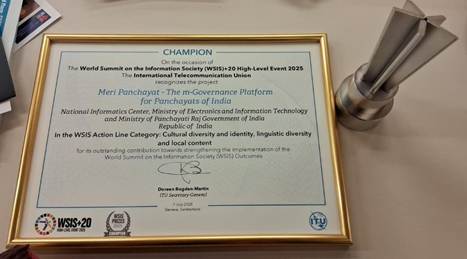
- 22 Jul 2025
In News:
India’s digital governance model received global recognition as the Meri Panchayat mobile application won the prestigious WSIS Prizes 2025 Champion Award under the category Cultural Diversity and Identity, Linguistic Diversity and Local Content. The award was presented during the WSIS+20 High-Level Event 2025 held in Geneva, Switzerland.
Key Highlights:
- The award was conferred by the International Telecommunication Union (ITU) as part of the World Summit on the Information Society (WSIS) initiative.
- The WSIS+20 event commemorated 20 years of WSIS, providing a platform to assess digital progress, address new challenges, and promote inclusive information societies.
- The event was co-hosted by ITU and the Swiss Confederation, and co-organized by UNESCO, UNDP, and UNCTAD.
About the “Meri Panchayat” App:
- A flagship m-Governance platform developed by the Ministry of Panchayati Raj in collaboration with National Informatics Centre (NIC) under the Ministry of Electronics and IT (MeitY).
- Designed to empower 2.65 lakh Gram Panchayats, the app caters to over 950 million rural residents and 25 lakh elected Panchayat representatives.
Key Features:
- Real-time Access: Budgets, receipts, payments, and Panchayat-level development plans.
- Transparency & Accountability: Social audit tools, geo-tagged fund utilization, and grievance redressal mechanisms.
- Participatory Governance: Enables citizens to propose projects, rate completed works, and view Gram Sabha decisions.
- Multilingual Support: Interface available in 12+ Indian languages, enhancing local inclusivity.
- Weather and Civic Info: Gram Panchayat-level weather forecasts, civic services, and infrastructure details.
Significance:
- The app strengthens participatory democracy by digitally integrating rural citizens into governance.
- It aims to bridge the digital divide and promote linguistic and cultural inclusivity in rural India.
- Recognized globally for promoting citizen-centric governance and local content diversity.
Bima Sakhi Yojana
- 22 Jul 2025
In News:
Life Insurance Corporation of India (LIC) has signed a Memorandum of Understanding (MoU) with the Department of Rural Development, Ministry of Rural Development, to implement the Bima Sakhi Yojana in rural areas. The agreement was formalized during the ‘Anubhuti’ national conclave on financial inclusion held in Goa.
About Bima Sakhi Yojana:
- Implementing Body: Life Insurance Corporation of India (LIC) in collaboration with the Union Ministry of Rural Development.
- Objective: To promote financial inclusion and women empowerment by facilitating their participation in the insurance distribution sector.
- Target Group: Rural women aged 18–70 years, with at least a Class 10 qualification.
Key Features:
- Stipendiary LIC Agency Scheme:
- Women are inducted as LIC agents with all associated privileges.
- The scheme offers a monthly stipend for the initial three agency years:
- ?7,000 in the first year
- ?6,000 in the second year
- ?5,000 in the third year (Subject to performance and terms and conditions)
- Commission Benefits:
- In addition to stipends, Bima Sakhis are eligible for sales commissions.
- A commission of ?48,000 (excluding bonuses) is provided in the first year for qualifying agents.
- Training & Career Path:
- Selected candidates undergo specialized training to build capacity in insurance awareness and financial literacy.
- Post-training, they function as LIC agents.
- Graduates among them may be eligible to become LIC Development Officers.
- Scale of Implementation: The scheme aims to appoint 2 lakh Bima Sakhis over a period of three years, with focus on enhancing rural outreach and insurance penetration.
Eligibility Criteria:
- Age Limit: 18 to 70 years
- Minimum Education: Must have passed Class X
- Preference: Women from rural areas are prioritized
Ineligibility Conditions:
- Women who are:
- Related to existing LIC agents or employees (including spouse, children, siblings, parents, and in-laws)
- Retired LIC employees or ex-agents
- Currently working as LIC agents
Significance:
- Promotes gender empowerment and financial literacy in rural India.
- Part of government’s push for inclusive financial growth through public-private partnerships.
- Illustrates convergence between LIC’s social responsibility and government rural development goals.
Hatti Tribe
- 22 Jul 2025
In News:
Recently, two brothers from the Hatti tribe in the Trans-Giri region of Sirmaur district, Himachal Pradesh, married the same woman under the traditional custom of polyandry. The wedding, held in Shillai village, was conducted openly and witnessed by hundreds, reviving attention to this rare tribal practice.
About the Hatti Tribe
- The Hatti community derives its name from the traditional occupation of selling agricultural produce, meat, and wool in local markets called haats.
- They reside primarily in the Himachal–Uttarakhand border region, especially in the basins of the Giri and Tons rivers, both tributaries of the Yamuna.
- The Hattis are divided into two major groups:
- One in Trans-Giri, Sirmaur district (Himachal Pradesh)
- Another in Jaunsar-Bawar (Uttarakhand)
- They maintain similar cultural practices, and intermarriage between these clans is common.
- The community follows a traditional council system called ‘Khumbli’ for resolving social issues.
- As of 2023, the Hatti tribe in Himachal Pradesh was granted Scheduled Tribe (ST) status, while Jaunsar-Bawar in Uttarakhand received tribal status in 1967.
- Their economy is largely agrarian, with a focus on cash crops due to favorable climatic conditions.
The Tradition of Polyandry ("Jajda")
- Polyandry in the Hatti community is locally called “Jajda” and was historically practiced to prevent division of ancestral land.
- The ritual includes a marriage procession of the bride to the groom’s village and a ceremony called “Seenj”.
- Local priests chant mantras in the native language and conclude the ceremony with blessings and offerings like jaggery.
- This practice has declined in recent decades due to increasing literacy among women, social modernization, and economic shifts.
Legal and Social Acceptance
- Polyandrous marriages are informally recognized under Himachal Pradesh revenue laws, where the practice is referred to as “Jodidara”.
- Though rare, such marriages continue to be socially accepted in some remote villages of Trans-Giri, Kinnaur, and Jaunsar-Bawar.
Demographics
- As per the 2011 Census, the Hatti population was around 2.5 lakh, and estimates now suggest about 3 lakh people across 450 villages in the Trans-Giri region alone.
Cultural and Practical Rationale
According to Hatti elders and community leaders:
- Land Preservation: Prevents fragmentation of ancestral property.
- Joint Family Bonding: Promotes unity and mutual understanding among brothers.
- Labor Sharing: Ensures adequate manpower to manage scattered agricultural lands in hilly terrain.
- Security: A larger family offers greater social and economic protection in tribal settings.
Cy-TB Test
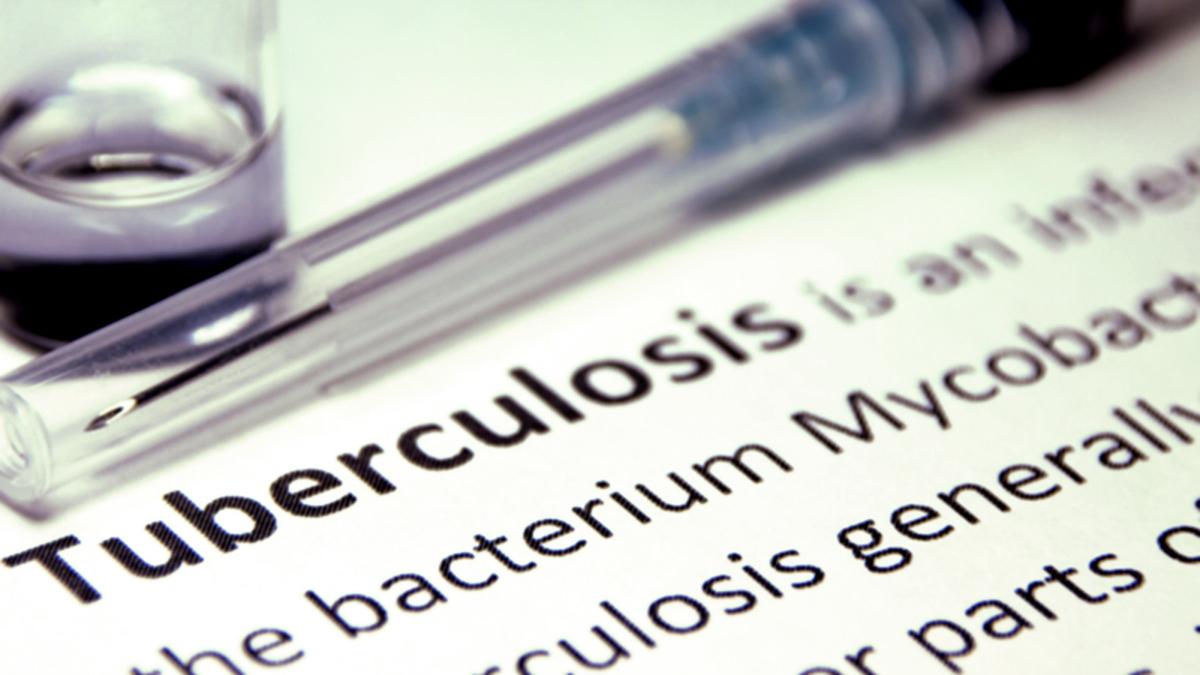
- 22 Jul 2025
In News:
Kerala has introduced Cy-TB, a new intradermal diagnostic tool, under the National TB Elimination Programme (NTEP) to identify and manage latent tuberculosis infections (LTBI).
What is the Cy-TB Test?
- Cy-TB is a third-generation skin test approved by the Central TB Division, Government of India.
- It involves the intradermal injection of 0.1 ml of Mycobacterium tuberculosis-specific antigens (ESAT-6 and CFP-10) into the inner forearm.
- If an individual develops a raised area of 5 mm or more within 48–72 hours, it indicates TB infection.
- The test is:
- Highly specific, accurate, and user-friendly
- Administered by a trained nurse
- Requires follow-up for reading the result
- A cost-effective alternative to the Interferon Gamma Release Assay (IGRA), which requires lab support
TB Infection vs. Active TB Disease
- TB infection means that a person harbours Mycobacterium tuberculosis bacteria in a dormant form and shows no symptoms.
- These individuals are not contagious.
- If left untreated, about 5–10% may progress to active TB when their immune system weakens.
Why Focus on Latent TB?
Kerala is prioritising treatment of latent TB infections as part of its last-mile strategy in TB elimination. Despite a 40% reduction in TB transmission over six years, the state faces challenges due to subclinical (asymptomatic) TB and a high burden of comorbidities such as diabetes, chronic kidney disease, and alcohol abuse.
Key Study in Thiruvananthapuram (2022)
- A cross-sectional community study found that 20.5% of adults had TB infection.
- Prevalence increased with age, from 11.5% (18–35 years) to 30.3% (above 58 years).
- State-level estimates suggest around 22% of Kerala’s general population is latently infected.
Burden of Tuberculosis (India & Global)
According to the WHO Global Tuberculosis Report 2024:
- India accounts for 26% of global TB cases – the highest worldwide.
- TB continues to be the leading infectious disease killer.
- Each year, around 10 million people fall ill globally, and 1.5 million die of TB.
- TB is the top cause of death among people with HIV and a major driver of antimicrobial resistance (AMR).
Implementation of Cy-TB in Kerala
- The Cy-TB test will be used in district TB centres, taluk hospitals, dialysis centres, and some block-level facilities.
- It will also be used to screen residents of old age homes, especially where pulmonary TB cases have emerged.
- The test is also available in major private hospitals.
High-Risk Groups for Preventive Therapy
Only high-risk individuals who test positive for latent TB are recommended for TB preventive therapy (TPT). These include:
- People on dialysis or awaiting transplants
- Patients on immunosuppressive or anti-TNF therapy
- Individuals with silicosis
- Healthcare workers exposed to TB
- Elderly in institutional settings
Preventive TB Treatment Regimens
- 3HP: 3 months of weekly doses of Isoniazid and Rifapentine
- 6H: 6 months of daily Isoniazid. These regimens use fewer drugs and are shorter than active TB treatment protocols.
Guryul Ravine Fossil Site
- 22 Jul 2025
In News:
The Geological Survey of India (GSI) has raised an alarm over a serious threat to the Guryul Ravine fossil site located in Khonmoh, on the outskirts of Srinagar, Jammu & Kashmir. The site holds immense geological significance and is facing the risk of degradation due to human activity.
About the Site
The Guryul Ravine is situated near Khonmoh in Jammu & Kashmir, close to the Dachigam National Park. Geologically, the area is part of the Vihi district. It falls within the ecologically sensitive Khonmoh Conservation Reserve.
- This fossil site is globally significant because it contains sedimentary layers that preserve evidence of the Permian–Triassic mass extinction event. These geological layers date back around 260 million years and represent one of the most catastrophic periods in Earth’s biological history.
- Remarkably, the site also shows signs of what is believed to be the world’s earliest recorded tsunami, with the imprint still visible in the exposed strata.
Significance of the Permian–Triassic Extinction Event
- Also referred to as the “Great Dying,” the Permian–Triassic extinction event occurred around 251.9 million years ago. It marks a major boundary between the Permian and Triassic geological periods and also separates the Paleozoic and Mesozoic eras.
- This event was the most severe extinction episode in Earth’s history. It led to the loss of nearly 90–95% of marine species and about 70% of terrestrial vertebrate species. The extinction dramatically reshaped life on Earth and paved the way for the rise of dinosaurs in the subsequent Mesozoic era.
Conservation Concerns
- The GSI has warned that this invaluable geo-heritage site is under threat due to encroachment and unregulated activities. It has recommended urgent steps to protect the fossil-rich area to preserve its scientific and educational value.
Allographa effusosoredica
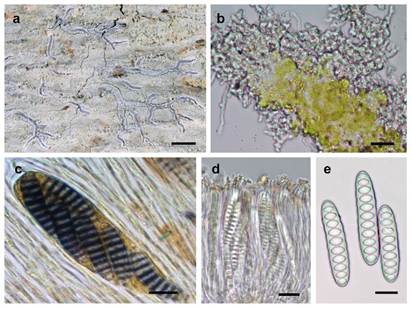
- 20 Jul 2025
In News:
A team of Indian scientists from MACS-Agharkar Research Institute, Pune (under the Department of Science & Technology) has discovered a new species of lichen named Allographa effusosoredica in the Western Ghats, a UNESCO World Heritage Site and biodiversity hotspot. This crustose lichen exhibits effuse soredia and contains norstictic acid, a rare secondary metabolite within its genus.
Scientific and Molecular Significance
- The species was examined through polyphasic taxonomy, integrating:
- Morphological traits
- Chemical profiling
- Molecular sequencing using genetic markers:
- Fungal DNA markers: mtSSU, LSU, RPB2
- Algal symbiont marker: ITS
- The lichen’s photobiont was identified as a species of Trentepohlia, advancing the understanding of tropical algal diversity in lichens.
- Though morphologically similar to Graphis glaucescens, it is phylogenetically closest to Allographa xanthospora.
Symbiosis in Lichens
- Lichens are composite organisms, formed by a symbiotic association between:
- A fungal partner (mycobiont) — provides structure and protection.
- A photosynthetic partner (photobiont), such as green algae or cyanobacteria — produces nutrients via photosynthesis.
- This discovery supports the concept of locally adapted symbiosis, emphasizing co-evolution in tropical ecosystems.
Ecological Importance of Lichens
- Lichens are vital for:
- Soil formation
- Feeding insect populations
- Acting as bioindicators of air quality and ecosystem health.
Conservation and Biodiversity Impact
- Allographa effusosoredica is:
- The 53rd Allographa species reported from India.
- The 22nd species of this genus documented in the Western Ghats.
- The first Indian Allographa species validated using molecular tools.
- The study was supported by the Anusandhan National Research Foundation (ANRF) and contributes to the growing inventory of India’s cryptic biodiversity.
Global Measles Resurgence
- 20 Jul 2025
In News:
Virologists raise alarm over surge in measles cases worldwide.
What is Measles?
- Measles is a highly contagious viral disease caused by the Measles morbillivirus (from the paramyxovirus family).
- It primarily affects children, but any non-immune person (unvaccinated or without immunity) is at risk.
- The virus spreads via airborne transmission—through coughing, sneezing, and respiratory droplets. It can remain in the air or on surfaces for up to 2 hours.
- Infectivity: ~90% of unvaccinated individuals exposed will contract the virus.
Global Surge in Cases (2023–2025)
- The World Health Organization (WHO) and US CDC reported a 30-fold global surge in measles cases from 10,000 in 2022 to 10.3 million in 2023.
- Outbreaks have been recorded in Africa, Europe, Southeast Asia, and the Americas.
- Africa: Nearly half of global outbreaks.
- Europe: 41 of 53 countries reported cases.
- United States: Worst outbreak since 1992 with 1,300+ cases across 40 states, including Texas, Ohio, and California.
- Americas (2025): 11-fold increase in cases due to international travel.
Symptoms and Progression
- Incubation: Symptoms appear 7–14 days after exposure.
- Early signs: High fever, cough, runny nose, conjunctivitis (red, watery eyes), and white spots in the mouth (Koplik spots).
- Rash: Starts on the face and neck, spreads to the entire body, lasting 5–6 days.
- Contagious: 4 days before and after rash onset.
Complications
- Common: Pneumonia, diarrhoea, encephalitis (brain inflammation), deafness.
- Severe:
- 1–3 per 1,000 unvaccinated children may die.
- Can cause blindness, subacute sclerosing panencephalitis (SSPE) (a fatal brain disorder).
- In pregnancy: Can lead to stillbirth or premature delivery.
Vaccination and Prevention
- No specific antiviral treatment exists; only preventive vaccination is effective.
- MMR Vaccine (Measles, Mumps, Rubella):
- Two doses recommended:
- 1st dose: 12–15 months
- 2nd dose: 4–6 years
- During outbreaks or travel: Can be given from 6 months of age.
- Two doses recommended:
- Herd Immunity Threshold: 95% vaccination coverage needed to prevent outbreaks.
- Current US rate: 92.7%, with rising nonmedical exemptions at 3.3%, falling short of safety threshold.
Causes of Resurgence
- Vaccine hesitancy, misinformation, and declining immunisation rates.
- Conflict zones, weak health systems, and interrupted vaccination drives in developing regions.
- Post-COVID travel rebound accelerating transcontinental spread.
Call to Action by Scientists and WHO
- Global Virus Network (GVN) and virologists urge:
- Urgent vaccination of unvaccinated children and vulnerable adults.
- Strengthening public health infrastructure.
- Enhancing outbreak surveillance and public awareness.
- Focused outreach in rural and underserved communities.
Exercise SIMBEX
- 20 Jul 2025
In News:
The Indian Navy is participating in the 32nd edition of the Singapore-India Maritime Bilateral Exercise (SIMBEX) in Singapore in July 2025. It marks one of the longest uninterrupted bilateral naval exercises India has with any country.
What is SIMBEX?
- SIMBEX stands for Singapore-India Maritime Bilateral Exercise
- It is an annual naval exercise conducted between the Indian Navy and the Republic of Singapore Navy (RSN)
- Origin: Initiated in 1994 as Exercise Lion King
- It has evolved into a complex maritime engagement, showcasing interoperability in surface, subsurface, and air operations
Significance
- It supports India’s Vision SAGAR (Security and Growth for All in the Region) and the Act East Policy
- Promotes regional maritime security cooperation and ensures the safety of sea lanes of communication (SLOCs)
- Reinforces commitment to a rules-based international maritime order, especially amidst rising piracy and threats from non-state actors
Indian Navy’s Participation (2025 Edition)
- The Indian naval contingent includes:
- INS Delhi – Guided missile destroyer
- INS Satpura – Stealth frigate
- INS Shakti – Fleet replenishment tanker
- INS Kiltan – Anti-submarine corvette
- These vessels are indigenously designed and equipped with advanced systems for high-seas operations
Strategic Engagement Highlights
- SIMBEX is a critical part of India’s expanding maritime diplomacy in the Indo-Pacific
- The naval exercise is conducted alongside a goodwill visit to Singapore, coinciding with the 60th anniversary of India-Singapore diplomatic ties
- Following Singapore, the Indian Navy’s Eastern Fleet is also scheduled to visit the Philippines and Vietnam
Broader Defence Cooperation with Singapore
In addition to SIMBEX, India and Singapore engage in:
- Exercise Agni Warrior (Army)
- Joint Military Training (JMT) (Air Force)
India also engages with ASEAN through:
- ASEAN-India Maritime Exercise (First held in 2023, co-hosted by Singapore)
- Participation in ASEAN-led forums like:
- ADMM-Plus
- ASEAN Regional Forum
- East Asia Summit
Vision SAGAR & Maritime Security
India’s Vision SAGAR emphasizes:
- Collaborative maritime partnerships
- Combating common maritime threats (e.g., piracy, trafficking, and disasters)
- Securing economic and strategic interests in the Indian Ocean Region (IOR)
Chronic Venous Insufficiency (CVI)
- 20 Jul 2025
In News:
Former U.S. President Donald Trump, aged 79, was recently diagnosed with Chronic Venous Insufficiency (CVI) — a common vascular condition, especially among individuals above 70 years. This brings attention to a condition affecting millions globally.
What is Chronic Venous Insufficiency (CVI)?
CVI is a circulatory disorder where the veins in the legs fail to return blood effectively to the heart. This results in blood pooling in the lower limbs due to damaged or weak vein valves, increasing venous pressure.
- Typically begins in one leg and may progress to both.
- Common symptoms include:
- Leg pain, swelling
- Varicose veins
- Cramps, skin discoloration, or thickening
- In advanced cases: venous ulcers
- In some cases, patients may be asymptomatic in early stages.
Epidemiology
- Affects approximately 1 in 20 adults
- Risk significantly increases with age
- Particularly common among individuals over 70
- People with CVI are about 60% more likely to also have cardiovascular disease compared to those without the condition
Risk Factors and Causes
CVI can result from or be worsened by:
- Obesity and pregnancy
- Family history of vein disorders
- Leg injury, surgery, or prior blood clots
- High blood pressure, smoking
- Lack of physical activity or prolonged sedentary lifestyle
Management and Treatment
Lifestyle Modifications
- Regular physical activity
- Avoid prolonged sitting or standing
- Weight management
- Elevating the legs to aid venous return
Medical Interventions
- Compression therapy: Use of compression stockings or bandages to support vein function
- Medications that enhance venous tone and reduce inflammation
Surgical/Minimally Invasive Procedures
- Endovenous laser ablation
- Vein glue therapy: Seals off malfunctioning veins
- Vein ligation/stripping (less common today due to invasive nature)
These newer techniques often ensure quicker recovery than traditional surgery.
Global Wetland Outlook 2025
- 20 Jul 2025
In News:
The Global Wetland Outlook (GWO) 2025, released by the Ramsar Convention on Wetlands, highlights alarming degradation trends in global wetlands—especially in Africa, Latin America, and the Caribbean—with implications for climate resilience, biodiversity, and socio-economic wellbeing.
What are Wetlands?
A wetland is a land area saturated with water—either permanently or seasonally—and functions as a distinct ecosystem. Wetlands include:
- Inland: Lakes, rivers, swamps, peatlands
- Coastal: Mangroves, tidal flats, coral reefs, estuaries
- Human-made: Rice paddies, reservoirs, wastewater ponds
Key Findings:
- Produced by: Scientific and Technical Review Panel (STRP) of the Ramsar Convention
- Global Wetland Loss: Since 1970, the world has lost 411 million hectares of wetlands—a 22% decline in extent.
- Current loss rate: ~0.52% annually
- Regional Degradation:
- Most severe in Africa, Latin America, and the Caribbean
- Africa’s wetlands are deteriorating faster than they can be restored, especially in South Africa
- Drivers of degradation:
- Africa, Latin America & Caribbean: Urbanisation, industrialisation, infrastructure development
- Europe: Drought
- North America & Oceania: Invasive species
- Economic Valuation:
- Global value of wetlands: $7.98 to $39.01 trillion/year
- Africa’s wetlands (2023): $825.7 billion, vs Asia’s $10.58 trillion
- Restoration Costs vs Conservation:
- Restoration: $1,000 to $70,000 per hectare/year
- Conservation is cheaper and more effective long-term
- Policy Insight: Most wetlands in Least Developed Countries (LDCs) are in poor condition, while those in high-income countries are in better health.
Africa’s Wetlands: A Deepening Crisis
- Millions depend on wetlands for food, water, disaster protection, and climate resilience.
- The Kafue Flats (Zambia) restoration example shows:
- $300,000 investment revived flooding
- Supported biodiversity and over a million people
- Boosted artisanal fisheries worth $30 million annually
- Warning from Ramsar Secretariat: Loss of wetlands is a major barrier to achieving global climate, biodiversity, food, and poverty targets.
India and Wetlands
- India has ~4.6% of its land as wetlands
- Hosts 91 Ramsar Sites – largest in South Asia and third in Asia
- Wetland types: Himalayan high-altitude lakes, Gangetic floodplains, mangroves (e.g., Sundarbans), coastal lagoons
Importance of Wetlands:
|
Function |
Explanation |
|
Biodiversity Hotspots |
Support endangered and endemic species |
|
Water Purification |
Trap pollutants and sediments |
|
Flood Regulation |
Act as natural buffers |
|
Carbon Sequestration |
Slow decomposition stores carbon |
|
Livelihoods |
Sustain agriculture, fisheries, tourism |
Ramsar Convention on Wetlands
- Adopted: 1971, Ramsar, Iran | Came into force: 1975
- India joined: 1982
- Goal: Conservation and wise use of wetlands globally
- Ramsar Site Criteria: Supports endangered species, ≥20,000 waterbirds, or critical fish spawning grounds
Key Framework: Kunming-Montreal Global Biodiversity Framework (GBF)
- Adopted in 2022 (COP15 to Convention on Biological Diversity)
- Dubbed “Paris Agreement for Nature”
- Targets:
- Halve invasive species spread
- Cut harmful subsidies by $500 billion/year
- 30x30 Target: Protect 30% of land + marine areas by 2030
- Restore 30% of degraded ecosystems by 2030
Recommendations from GWO 2025
- Increase Wetland Financing:
- Incorporate wetlands in KM-GBF finance targets
- Mobilise private-public funding
- Cross-Border Collaboration: Enhance regional conservation partnerships, especially in Africa
- Value Nature in National Accounts: Recognise GDP contributions from wetlands, forests, biodiversity
- Invest in Nature-Based Solutions: Wetlands can buffer climate shocks and reduce disaster response costs
Marungur Excavation
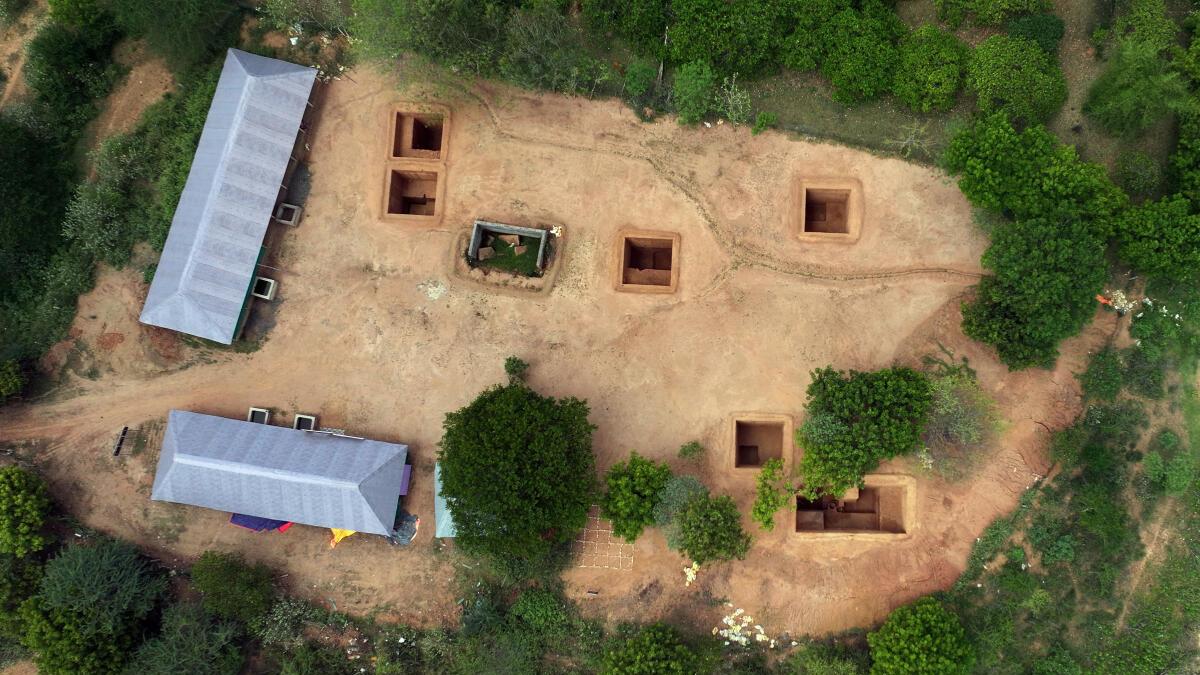
- 21 Jul 2025
In News:
The Tamil Nadu State Department of Archaeology (TNSDA) has completed a landmark archaeological excavation at Marungur village, located in Panruti taluk, Cuddalore district, uncovering a habitation-cum-burial site dating from the Iron Age to the Early Historic period. This multidisciplinary excavation offers significant insights into the cultural evolution of ancient Tamil Nadu’s Naduvil Mandalam (Central Territorial Division), between the Thenpennai and Vada Vellar rivers.
Key Features:
1. Rare Dual Site Discovery
- Both a habitation mound and an associated burial site were found together — a rarity in Tamil Nadu.
- The site is situated at 100 metres above mean sea level, adjacent to a pond and covered by laterite soil.
2. Chronological Context
- Dated tentatively to the transition from late Iron Age to Early Historic Period.
- Radiocarbon dating (AMS) of charcoal samples, phytolith studies, and Optically Stimulated Luminescence (OSL) analysis are underway to confirm dates.
3. Advanced Techniques Used
- UAV Mapping, LiDAR (Light Detection and Ranging), stratigraphic trenching, and archaeo-botanical studies.
- Collaboration with Beta Analytic Laboratory (USA) and the French Institute of Pondicherry for dating and pollen analysis.
Major Discoveries
A. Habitation Mound (8 Trenches Excavated)
- Pottery: Rouletted ware, red-slipped ware, black-and-red ware, grey ware, coarse red ware, and graffiti-inscribed potsherds (some resembling Indus signs).
- Artifacts (95 antiquities): Bone tools (points), burnishing stones, terracotta pipes, and beads (carnelian, agate, quartz, glass, terracotta).
- Iron implements: Crescent-shaped chisels, knives.
- Conch shell cores and antimony rods (ornamental use).
- Copper coin of Raja Raja Chola I from upper layers.
- Large terracotta storage jars (1.25 m), one containing six bone tools.
B. Burial Site (2 Trenches Excavated in Cashew Grove)
- Megalithic Stone Circles (Laterite):
- Two concentric circles (outer and inner), capstone-protected burial urns.
- Total of 10 urns recovered.
- Grave Goods:
- Iron swords, red jasper beads, black-and-red ware, red-slipped ware.
- Offering pots around urns — evidence of complex burial rituals.
C. Tamil-Brahmi Inscribed Potsherds
- Found in urn burials and dated paleographically to 2nd–3rd century BCE.
- Inscriptions include terms like “a-ti-y(a)-ka-n”, “a-ma-?”, and “a-ta”.
- Significance: Among earliest epigraphic evidence of Tamil-Brahmi in burial contexts.
Significance:
|
Aspect |
Significance |
|
Cultural Chronology |
Sheds light on the transition from the Iron Age to Early Historic society. |
|
Urban & Trade Patterns |
Proximity to ancient port cities like Arikamedu and Poompuhar hints at external trade. |
|
Script & Literacy |
Tamil-Brahmi inscriptions expand understanding of early Tamil epigraphy. |
|
Burial Practices |
Megalithic urn burials with grave goods indicate complex socio-religious beliefs. |
|
Scientific Advancement |
Integration of modern remote sensing and dating techniques in Indian archaeology. |
Future Steps
- Radiometric Dating: Charcoal to be analyzed using Accelerator Mass Spectrometry (AMS) in the USA.
- Pollen and phytolith analysis to reconstruct ancient diet and environmental conditions.
- Thermoluminescence and petrology studies to date ceramics and sediment exposure.
- TNSDA proposes further surveys at Manikkollai (30 km from Marungur) for 2025–26.
India Emerges as Global Leader in Real-Time Digital Payments
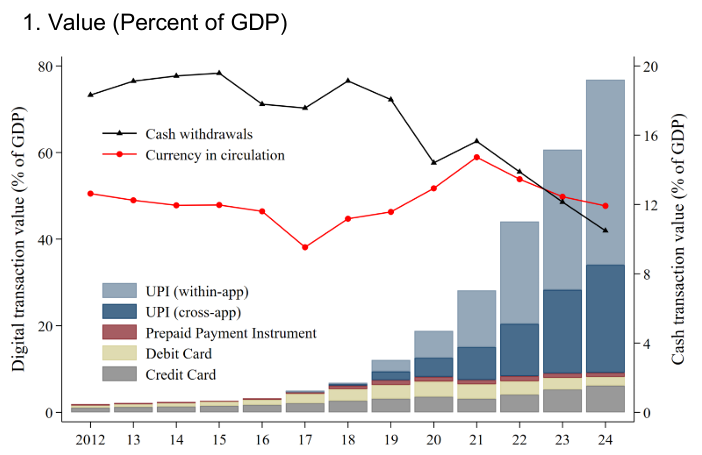
- 21 Jul 2025
In News:
India has cemented its position as the world’s foremost digital payments economy, with the Unified Payments Interface (UPI) registering 18.39 billion transactions in June 2025, according to a report jointly prepared by the International Monetary Fund (IMF) and FIS Global.
About the Report: Fast Payments 2025
- Prepared by: IMF and FIS Global
- Focus: Assessment of digital public infrastructure enabling real-time payments
- Key Metric Introduced: Faster Payment Adoption Score (FPAS) – a benchmark for evaluating the scale and effectiveness of fast payment systems across 30 countries
India’s Standout Performance
- Top Global Rank: India scored 87.5% on FPAS, ranking highest globally—outpacing Brazil, Singapore, the United Kingdom, and the United States.
- UPI Ecosystem Scale:
- Handles over 640 million daily transactions
- Caters to approximately 491 million users and 65 million merchants
- Supported by a network of 675+ banks
- Speed and Cost Efficiency:
- Payment settlement within 5 seconds
- Transactions are virtually cost-free for users
- International Footprint:
- UPI services are now live in seven countries, including France, UAE, and Singapore
- India is advocating its adoption within the BRICS+ grouping as a model for cross-border payment interoperability
Key Strengths of UPI Infrastructure
- Interoperability: Seamless transactions across multiple platforms (PhonePe, Google Pay, Paytm, etc.) and banks
- Inclusivity Features:
- Aadhaar-based linking
- USSD-based services for feature phones
- Multilingual interfaces to facilitate rural access
- Built on India Stack: Utilizes digital infrastructure components like Aadhaar, eKYC, DigiLocker, and Account Aggregator
- Security Framework:
- Real-time fraud detection
- Tokenization and robust regulatory oversight
- Collaborative Ecosystem: A joint effort of NPCI, fintech players, and RBI, ensuring scalability and resilience
88th Executive Committee Session of the Codex Alimentarius Commission (CCEXEC88)
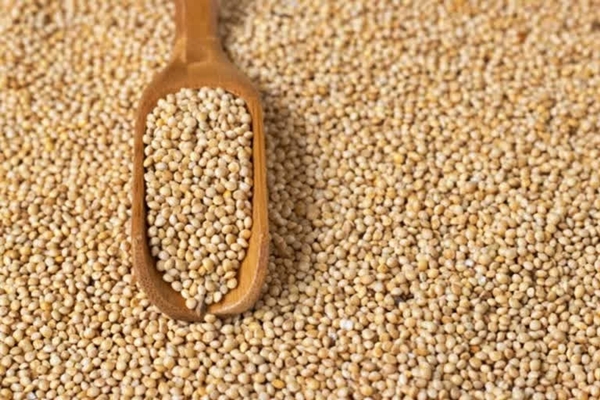
- 21 Jul 2025
In News:
India’s contributions were widely appreciated at the 88th Executive Committee Session of the Codex Alimentarius Commission (CCEXEC88) held at FAO Headquarters, Rome.
What is the Codex Alimentarius?
- A collection of internationally recognized food standards, guidelines, and codes of practice.
- Promotes consumer health protection, food safety, and fair-trade practices.
- Recognized under the WTO Agreement on the Application of Sanitary and Phytosanitary (SPS) Measures as a global reference point.
Codex Alimentarius Commission (CAC)
|
Feature |
Detail |
|
Established |
1963 by FAO and WHO |
|
Type |
Intergovernmental food standards body |
|
Headquarters |
Rome, Italy |
|
Objectives |
To protect consumer health and ensure fair practices in the food trade |
|
Members |
189 members: 188 countries + European Union |
|
India’s Membership |
Since 1964 |
Structure of CAC:
- Codex Commission
- Executive Committee (CCEXEC)
- Codex Secretariat
- Subsidiary Bodies and Committees
Meetings alternate between Geneva and Rome annually. Funded by regular budgets of FAO and WHO.
India’s Contributions at CCEXEC88 (2025):
1. Millet Standards: India chaired the development of Codex group standards for whole millet grains, alongside Mali, Nigeria, and Senegal. These standards are up for final approval at CAC48.
2. Strategic Planning (2026–2031):
- India led discussions on SMART (Specific, Measurable, Achievable, Relevant, Time-bound) indicators for monitoring Codex outcomes.
- These KPIs will guide Codex’s strategic direction and will be adopted at CAC48.
3. Regional Capacity Building:
- India mentored Bhutan, Nepal, Bangladesh, Sri Lanka, and Timor Leste under the Codex Trust Fund (CTF).
- Urged other developing countries to use the CTF for mentorship and twinning programs.
Other Leadership Roles by India in Codex:
|
Domain |
India's Role |
|
Spices & Herbs |
Chairs Codex Committee on Spices and Culinary Herbs (CCSCH) since 2014 |
|
Fresh Produce |
Led standard development for dates, co-chaired for turmeric and broccoli |
|
Digital Participation |
Promotes transparent, inclusive discussions in Codex committees |
National Codex Contact Point (NCCP), India
- Constituted by: Food Safety and Standards Authority of India (FSSAI)
- Role:
- Liaison with the Codex Secretariat
- Coordinate India’s input via National Codex Committee
- Facilitate domestic stakeholder consultation for Codex decisions
Kashi Declaration
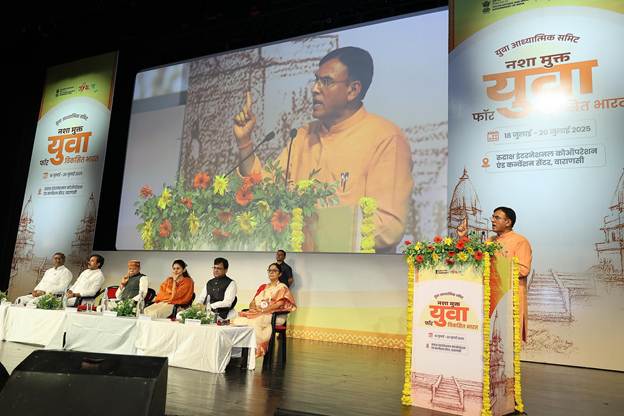
- 21 Jul 2025
In News:
The Youth Spiritual Summit 2025 concluded at the Rudraksh International Convention Centre, Varanasi, with the formal adoption of the Kashi Declaration — a landmark roadmap to combat drug abuse through youth and spiritual leadership.
- Organised by: Ministry of Youth Affairs and Sports
- Theme: "Drug-Free Youth for Developed India"
What is the Kashi Declaration?
The Kashi Declaration is a national action plan to counter substance abuse in India. It integrates spiritual wisdom, youth empowerment, and institutional coordination to establish a Nasha Mukt Yuva (Drug-Free Youth) by 2047, aligning with the vision of Viksit Bharat @2047.
Key Objectives:
- Eradicate Drug Abuse: Mobilise youth to build a drug-free society by 2047.
- Spiritual Mobilisation: Leverage India’s spiritual heritage as a tool for transformation and healing.
- Whole-of-Society Approach: Involve families, schools, communities, and institutions in prevention and rehabilitation.
- Empower Youth Volunteers: Enable MY Bharat clubs to conduct awareness, outreach, and de-addiction drives.
- Institutional Coordination: Establish a Joint National Committee for multi-ministerial convergence and periodic reporting.
Major Features:
|
Feature |
Details |
|
Plenary-Driven Agenda |
Covered themes of psychology, drug trafficking, awareness, and spiritual rehabilitation. |
|
Multi-Ministerial Action |
Involves Ministries of Youth Affairs, Social Justice, Home Affairs, Labour, and Culture. |
|
Annual Review Mechanism |
Progress tracked via the Viksit Bharat Young Leaders Dialogue 2026. |
|
Digital Monitoring |
Measures proposed to curb online targeting of schoolchildren for drugs. |
|
Community Outreach |
Grassroots campaigns, pledge drives, and support services launched through the MY Bharat platform. |
Institutional Mechanisms Proposed:
- Joint National Committee: For inter-ministerial coordination and implementation oversight.
- Annual Progress Reporting: Ensures transparent monitoring and accountability.
- National Platform: To connect affected youth with rehabilitation and support services.
Biostimulants
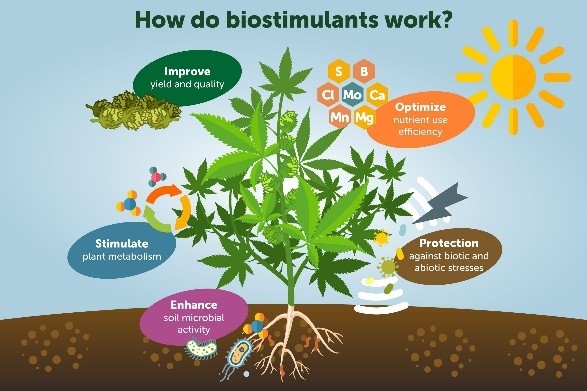
- 21 Jul 2025
In News:
Union Agriculture Minister Shivraj Singh Chouhan last week wrote to Chief Ministers of all states to immediately stop the “forced tagging” of nano-fertilisers or biostimulants along with conventional fertilisers.
What are Biostimulants?
Biostimulants are substances or microorganisms that enhance nutrient uptake, plant growth, yield, and stress resistance in crops. They are distinct from fertilisers and pesticides, as they do not directly supply nutrients or control pests.
- Composition: Often derived from plant waste, seaweed extracts, or microbes.
- Function: Stimulate physiological processes in plants.
- Not classified as: Fertilisers (under nutrient input) or Pesticides (regulated under Insecticides Act, 1968).
Official Definition (FCO, 1985): A substance or microorganism whose primary function is to stimulate physiological processes in plants, enhancing nutrient uptake, growth, and yield—but not including pesticides or plant growth regulators.
Regulatory Framework
- Governing Law: Fertiliser Control Order (FCO), 1985 – amended in February 2021 to include biostimulants.
- Central Biostimulant Committee (CBC): Established in April 2021 for five years to advise the Ministry on:
- Product approval and specifications
- Sampling/testing methods
- Lab and data standards
Toxicity and Safety Requirements:
To be approved, biostimulants must undergo:
- 5 acute toxicity tests: Oral, dermal, inhalation (rat), skin, and eye irritation (rabbit)
- 4 eco-toxicity tests: Impact on fish, birds, honeybees, and earthworms
- Field trials: At 3 agro-ecological zones, with 3 doses, for one crop season
No biostimulant shall contain pesticide beyond 0.01 ppm.
Why Tightened Regulation?
- Previous Lack of Oversight: Biostimulants operated in a regulatory vacuum for years.
- Market Flooded with Unapproved Products: Over 30,000 unregulated products were in circulation.
- Farmer Complaints: Rising concerns over efficacy and “forced sales” with subsidised fertilisers like urea and DAP.
- Judicial Push: A 2011 Punjab & Haryana HC observation prompted states to monitor biostimulant sales more stringently.
Recent Government Measures
- Provisional Registration (2021–2024): Allowed 2-year sale of products while testing was underway. Deadline extended repeatedly until June 16, 2024. Post-June 2024: Unsold stocks from unregistered firms are no longer permitted for sale.
- Retailer Misuse: Reports of retailers forcing farmers to buy biostimulants with subsidised fertilisers prompted Union Agriculture Minister Shivraj Singh Chouhan to direct states to halt such practices.
- Product Crackdown: From over 8,000 products four years ago, the number of approved products is now down to 650.
- Crop-Specific Specifications (May 2025): Government notified biostimulant standards for crops including tomato, chilli, brinjal, paddy, cotton, potato, soybean, maize, etc.
Prithvi-II and Agni-I Ballistic Missiles

- 19 Jul 2025
In News:
India recently conducted successful test-firings of its nuclear-capable short-range ballistic missiles Prithvi-II and Agni-I from the Integrated Test Range (ITR), Chandipur, Odisha. The trials aimed to validate operational readiness and technical reliability of India’s strategic missile systems.
These tests follow closely on the heels of the Indian Army's successful high-altitude test of the Akash Prime air defence system in Ladakh, underscoring India’s advancing indigenous defence capabilities.
Strategic Significance
- Conducted by: Strategic Forces Command (SFC) under routine training and validation exercises.
- Developed by: Defence Research and Development Organisation (DRDO) under the Integrated Guided Missile Development Programme (IGMDP).
- Purpose:
- To validate accuracy, technical parameters, and combat readiness.
- To reinforce India’s nuclear deterrence and second-strike capability.
- To ensure strategic preparedness post the May 2025 Indo-Pak conflict.
Prithvi-II Missile: Key Features
|
Parameter |
Details |
|
Type |
Short-range, surface-to-surface ballistic missile |
|
Range |
~350 km |
|
Propulsion |
Liquid-fuelled |
|
Payload Capacity |
Up to 500 kg |
|
Warhead Type |
Conventional and nuclear |
|
Navigation |
Advanced inertial navigation system |
|
Deployment |
Road-mobile launcher |
|
Speed |
Above Mach 1 |
|
Role |
Part of India’s tactical nuclear strike capability |
Agni-I Missile: Key Features
|
Parameter |
Details |
|
Type |
Short-range, single-stage ballistic missile |
|
Range |
700–900 km |
|
Propulsion |
Solid-fuelled |
|
Payload Capacity |
Up to 1,000 kg |
|
Warhead Type |
Conventional and nuclear |
|
Accuracy |
High precision with advanced guidance |
|
Induction |
Early 2000s, operational with Indian Army |
|
Strategic Role |
Integral to India’s minimum credible deterrence posture |
Green Synthesis of Hydrogen Peroxide
- 19 Jul 2025
In News:
Indian scientists at the S.N. Bose National Centre for Basic Sciences (SNBNCBS) have developed a novel, eco-friendly method to synthesize hydrogen peroxide (H?O?) directly from sunlight and water using a photocatalyst called Mo-DHTA COF. This innovation marks a significant advancement in green chemistry and sustainable industrial practices.
What is Hydrogen Peroxide (H?O?)?
- A colorless, bitter-tasting liquid with powerful oxidizing properties.
- Environmentally friendly: Decomposes into water and oxygen without leaving harmful residues.
- Naturally present in trace amounts in the atmosphere.
- Unstable and decomposes readily, releasing heat.
- Found in household use (3–9% concentration) for disinfection, bleaching, and wound cleaning.
Applications
- Medical: Disinfectant, wound cleaner.
- Industrial: Textile and paper bleaching, foam rubber production, and rocket propellant.
- Environmental: Wastewater treatment, green sterilization.
- Energy & Chemistry: Fuel cells, chemical synthesis, and potentially in CO? reduction and water splitting.
Limitations of Conventional H?O? Production
- Energy-intensive and environmentally hazardous.
- Costly and not sustainable for large-scale, decentralized applications.
The Innovation: Mo-DHTA COF
What is it?
- Mo-DHTA COF stands for dimolybdenum paddlewheel-embedded Covalent Organic Framework.
- Developed by a DST-supported research team at SNBNCBS.
- Published in the journal Small.
Photocatalytic Mechanism
- Made from α-hydroquinone-based organic linkers and dimolybdenum units.
- Upon visible light exposure, the material generates excitons (electron-hole pairs).
- Electrons reduce oxygen to superoxide radicals, which then convert to H?O? through further reactions.
- Functions in various media (ethanol, benzyl alcohol, and even pure water).
Advantages of Mo-DHTA COF
|
Feature |
Description |
|
Eco-Friendly |
Uses only water and sunlight—no harmful by-products. |
|
High Photocatalytic Efficiency |
Effective even in pure water, not just organic solvents. |
|
Stability |
Structurally stable and recyclable, suitable for long-term use. |
|
Enhanced Performance |
Overcomes limitations of earlier photocatalysts like metal oxides, g-C?N?, and MOFs. |
|
Scalable |
Promising for industrial upscaling and decentralized chemical production. |
Significance and Future Potential
- Green Chemistry: Sets a foundation for cleaner chemical production methods.
- Healthcare & Pharma: Enables low-cost production of disinfectants.
- Environmental Remediation: Supports sustainable water purification and sterilization.
- Energy & Materials Science: Potential use in CO? reduction, water splitting, and fuel cell technologies.
- Research Outlook: Future focus includes optimization of metal-embedded COFs and exploring other catalytic systems for broader applications.
Akash Prime Missile System

- 19 Jul 2025
In News:
India has successfully conducted a high-altitude trial of the Akash Prime surface-to-air missile system in Ladakh, marking a major step in strengthening indigenous air defence capabilities, particularly for mountainous and high-altitude terrains.
What is Akash Prime?
Akash Prime is an upgraded variant of the Akash Surface-to-Air Missile (SAM) system, developed by the Defence Research and Development Organisation (DRDO). It is designed to operate efficiently in high-altitude, low-oxygen environments—ideal for India’s sensitive border regions like Ladakh and Sikkim.
Developers
- DRDO – Lead developer
- In collaboration with:
- Bharat Dynamics Limited (BDL)
- Bharat Electronics Limited (BEL)
Key Features
|
Feature |
Description |
|
Purpose |
Neutralizes aerial threats like enemy aircraft, drones, and cruise missiles |
|
Altitude Performance |
Successfully tested at 15,000 ft; engineered for deployment above 4,500 metres |
|
Seeker Technology |
Equipped with an indigenous Radio Frequency (RF) seeker for precise target acquisition during terminal phase |
|
Guidance System |
Hybrid: Command guidance + terminal active homing |
|
Range & Speed |
Operates within 25–30 km range; travels at Mach 2.5 |
|
Mobility |
Mounted on mobile platforms for rapid deployment across terrains |
|
All-Weather Capability |
Functions in extreme cold and low-density atmospheric conditions |
|
Kill Probability |
88% (single missile); up to 98.5% in dual-salvo mode |
Operational Significance
- High-Altitude Readiness: Specifically tailored for mountainous regions such as the Line of Actual Control (LAC).
- Versatile Deployment: Protects mobile, semi-mobile, and fixed military installations.
- Strategic Feedback Integration: Incorporates enhancements based on feedback from armed forces for use in vital installations.
Strategic Importance
- Aatmanirbhar Bharat: Fully indigenous system contributing to self-reliance in defence manufacturing.
- Cost Efficiency: Reduces dependency on imported air defence systems.
- Force Multiplier: Strengthens India’s layered air defence network against modern aerial threats.
Swachh Survekshan 2024–25

- 19 Jul 2025
In News:
Swachh Survekshan 2024–25, the world's largest urban sanitation survey, has marked a new milestone in India’s cleanliness journey under the Swachh Bharat Mission–Urban (SBM-U). Conducted by the Ministry of Housing and Urban Affairs (MoHUA), this 9th edition evaluated 4,500+ Urban Local Bodies (ULBs), reflecting deepened citizen engagement and growing competition among cities.
Key Highlights
- Cleanest Big City (10+ lakh population): Ahmedabad (Gujarat) ranked 1st for the first time, Bhopal (Madhya Pradesh), Surat (Gujarat).
- Swachh Bharat Super League 1.0: Introduced for cities with sustained performance—Indore, Surat, and Navi Mumbai led the league.
- Top Mid-Sized Cities (3–10 lakh): Mira-Bhayandar (1st), Bilaspur (2nd), Jamshedpur (3rd).
- Top Small Cities (<1 lakh): Sasvad (1st), Lonavala, Vita.
- Best Ganga Towns: Prayagraj, Varanasi, and Bijnor.
- Cleanest Cantonment: Secunderabad Cantonment Board.
- Best Performing States: Maharashtra, Madhya Pradesh, Chhattisgarh.
- Cleanest State Capital: Bhopal.
- Sanitation Worker Safety Awards: Visakhapatnam, Jabalpur, and Gorakhpur were recognised under SafaiMitra Surakshit Shehar.
Swachh Survekshan Framework
- Launched: 2016 under SBM-U.
- Objective: Foster competition among cities for sanitation and cleanliness.
- 2024–25 Innovations:
- One City, One Award principle for fair evaluation across population sizes.
- Super Swachh League: Honours cities with consistent top-tier performance.
- Real-time monitoring: Integrated Command and Control Centres (ICCCs) used for validation.
- Digital citizen engagement: Over 14 crore citizens participated via apps and feedback systems.
- 3R Emphasis: Focus on Reduce, Reuse, Recycle as a sustainability principle.
Super Swachh League (SSL)
- A newly created elite category within the survey.
- Aim: To promote continuous excellence in urban sanitation.
- Criteria:
- Minimum 3-star Garbage Free City (GFC) rating.
- Consistent top performance in waste management, segregation, ODF++ status, and citizen engagement.
- Population Brackets:
- 10 lakh+ (e.g., Ahmedabad, Indore, Surat)
- 3–10 lakh (e.g., Mysuru, Noida, Chandigarh)
- Below 3 lakh (with revised benchmarks)
Recognitions and Best Practices
- Waste-to-Wealth Initiatives: Recycled waste used to create artistic gifts for dignitaries.
- “Each One Clean One” Mentorship: Top 78 cities to mentor one lower-performing city each.
- Clean Kumbh Operations: Prayagraj efficiently managed waste during the Mahakumbh, which witnessed a footfall of 66 crore pilgrims.
- AI-Based Monitoring: Artificial intelligence tools deployed for cleanliness validation.
- Citizen-Centric Innovations: Apps and grievance portals boosted accountability.
Impact on Governance and Society
- Decentralised Sanitation Success: Cities like Bilaspur and Jamshedpur emerged as sanitation leaders.
- Inclusion of Smaller Towns: Simplified evaluation allowed small towns to compete on equal footing.
- Women & Youth Engagement: SHGs and youth campaigns played a major role in waste segregation drives.
- Job Creation & Entrepreneurship: Growth in green jobs and circular economy-based startups.
- Sanitation Worker Welfare: Greater focus on dignity, safety, and health of SafaiMitras.
Swachh Bharat Mission–Urban (SBM-U)
- Launched: October 2, 2014
- Phase II (SBM-U 2.0): Running from October 1, 2021 to 2026
- Goals:
- Eliminate open defecation
- Ensure 100% scientific waste management
- Make cities “Garbage-Free”
- Aligned with: India’s SDG 2030 goals and Viksit Bharat 2047 vision
Gujarat launches India’s First Tribal Genome Sequencing Project
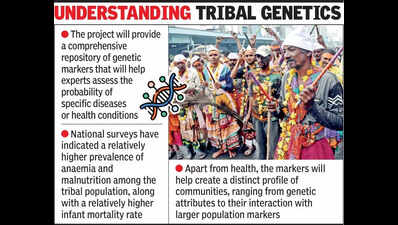
- 19 Jul 2025
In News:
Gujarat has become the first Indian state to launch a genome sequencing initiative specifically targeting tribal communities. The Tribal Genome Sequencing Project, announced in July 2025, aims to identify genetic health risks among tribal populations and develop precision healthcare strategies.
About the Project
- Name: Creation of Reference Genome Database for Tribal Population in Gujarat
- Launched by: Gujarat Biotechnology Research Centre (GBRC)
- Coverage: 2,000 individuals from tribal communities across 17 districts in Gujarat
- Budgetary Support: Part of the Gujarat State Budget 2025–26
Objectives
- Identify genetic risk markers for inherited disorders such as:
- Sickle cell anaemia
- Thalassaemia
- Hereditary cancers
- Develop personalised healthcare protocols tailored to tribal genetic profiles.
- Detect natural immunity markers to aid targeted medical interventions.
- Promote data-driven tribal health equity and science-led empowerment.
Key Features
- Establishes advanced infrastructure for:
- Sample collection
- Genome sequencing
- Genetic data interpretation
- Enables early detection and targeted treatment for genetically inherited diseases.
- Involves community engagement for inclusive participation and awareness.
- Represents diverse tribal groups, ensuring comprehensive genomic mapping.
Significance
- Healthcare Equity: Bridges the healthcare gap by enabling affordable, preventive, and precision medicine for marginalised tribal communities.
- Scientific Advancement: Provides a genomic reference database for long-term public health research and policy planning.
- Scalability: Sets a precedent for other Indian states to replicate region-specific genomic initiatives aimed at health inclusion.
What is Genome Sequencing?
- A genome is the complete set of DNA in an organism.
- Human DNA comprises 23 pairs of chromosomes, made up of millions of nucleotide bases: Adenine (A), Thymine (T), Guanine (G), Cytosine (C)
- Whole Genome Sequencing (WGS) decodes the exact sequence of these bases, helping identify genetic disorders and traits.
ADEETIE Scheme
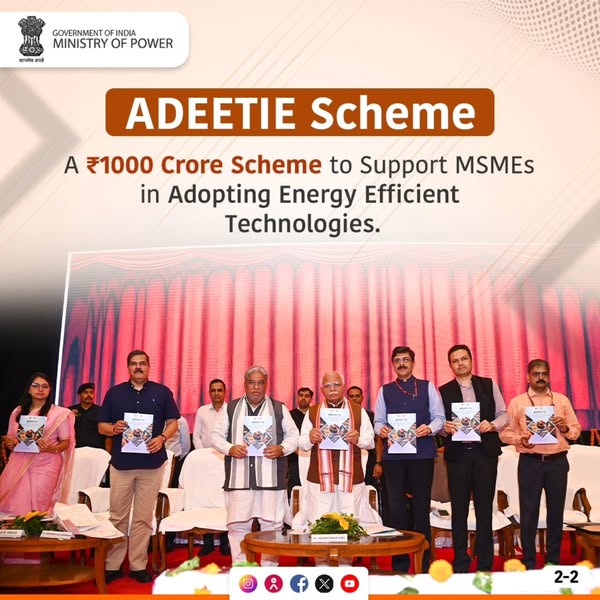
- 18 Jul 2025
In News:
The Ministry of Power launched the Assistance in Deploying Energy Efficient Technologies in Industries & Establishments (ADEETIE) scheme to promote energy efficiency in Micro, Small, and Medium Enterprises (MSMEs).
Key Details:
- Objective: To reduce energy consumption by 30–50%, enhance the power-to-product ratio, and facilitate the creation of green energy corridors in MSME industrial sectors.
- Implementing Agency:
- o Bureau of Energy Efficiency (BEE), under the Ministry of Power
- o Legislative backing: Energy Conservation Act, 2001
- Duration & Funding
- o Period: FY 2025–26 to 2027–28 (3 years)
- o Budgetary Outlay: ?1000 crore
- Target Beneficiaries
- Eligible Enterprises: MSMEs with Udyam ID
- Must demonstrate a minimum 10% energy savings using implemented technologies
- Sectoral Coverage: Targets 14 energy-intensive sectors, including: Brass, Bricks, Ceramics, Chemicals, Fisheries, Food Processing, etc.
- Implementation Strategy Phased Roll-out:
- Phase 1: 60 industrial clusters
- Phase 2: Additional 100 clusters
Scheme Components
|
Component |
Details |
|
Interest Subvention |
- 5% for Micro & Small Enterprises |
|
Technical Assistance |
- Investment Grade Energy Audits (IGEA) |
|
Financial Support |
- Incentives for adoption of efficient technologies |
Other BEE Initiatives for MSMEs
|
Initiative |
Purpose |
|
BEE-SME Programme |
Promote energy efficiency in MSMEs |
|
National Programme on Energy Efficiency & Technology Upgradation |
Modernize and reduce energy intensity |
|
SIDHIEE Portal |
Digital tool providing energy efficiency insights and handholding support |
Bureau of Energy Efficiency (BEE)
- The Government of India set up the Bureau of Energy Efficiency (BEE) on March 1, 2002 under the provisions of the Energy Conservation Act, 2001.
- The mission of the Bureau of Energy Efficiency is to assist in developing policies and strategies with a thrust on self-regulation and market principles, within the overall framework of the Energy Conservation Act, 2001 with the primary objective of reducing the energy intensity of the Indian economy.
- BEE coordinates with designated consumers, designated agencies and other organizations and recognises, identifies and utilises the existing resources and infrastructure, in performing the functions assigned to it under the Energy Conservation Act.
- The Energy Conservation Act provides for regulatory and promotional functions.
Prime Minister Professorships Scheme
- 18 Jul 2025
In News:
To strengthen India’s research and innovation ecosystem, the Anusandhan National Research Foundation (ANRF) has launched the Prime Minister Professorships under its flagship Promoting Advanced and Inclusive Research (PAIR) programme.
Objective
The scheme aims to:
- Utilize the expertise of retired scientists, industry professionals, and Professors of Practice
- Mentor faculty and students in State universities with emerging research ecosystems
- Address gaps in R&D capacity and promote globally competitive research
Key Features of the Prime Minister Professorship Scheme
|
Aspect |
Details |
|
Implementing Agency |
Anusandhan National Research Foundation (ANRF), under DST |
|
Eligibility |
- Superannuated scientists/faculty from reputed Indian/foreign institutions |
|
Host Institutions |
Category A State universities classified as spoke institutions under the PAIR programme |
|
Relocation Requirement |
Full-time presence at the host university is mandatory |
|
Tenure |
Up to 5 years, based on performance review |
|
Financial Support |
?30 lakh/year fellowship ?24 lakh/year research grant ?1 lakh/year overhead for host university |
|
Restrictions |
Cannot draw parallel fellowship/salary from other institutions; IP rights governed by host institution norms |
About PAIR Programme
|
Component |
Description |
|
Goal |
To foster inclusive, high-quality research in institutions with limited R&D capacity |
|
Hub Institutions |
Top 25 in NIRF rankings or Institutions of National Importance (within top 50) |
|
Spoke Institutions |
Central & State public universities, select NITs and IIITs |
|
Mentorship Ratio |
One hub can mentor up to 7 spoke institutions |
|
Participation Criteria |
|
Responsibilities of Selected Professors
- Mentor students and faculty for world-class research
- Guide establishment of labs and research facilities
- Promote interdisciplinary collaboration
- Facilitate industry-research linkages
- Provide 6-month internships at advanced labs or institutions
Significance for India’s R&D Ecosystem
- Addresses regional imbalance in research infrastructure
- Strengthens the research culture in State universities
- Enables structured national and international collaborations
- Promotes grassroots innovation and scientific leadership
India’s First Digital Nomad Village in Sikkim
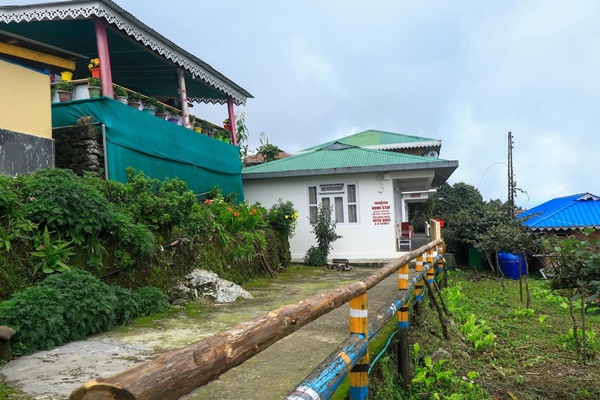
- 18 Jul 2025
In News:
Yakten, a village in Pakyong district, Sikkim, was officially declared India’s first Digital Nomad Village under the ‘Nomad Sikkim’ initiative.
Objective of the Initiative
- Transform strategic locations in Sikkim into year-round hubs for digital professionals from India and abroad.
- Ensure sustainable income for homestay owners during the lean tourism season (April–October).
- Promote sustainable tourism, remote work, and grassroots entrepreneurship.
Key Features:
|
Feature |
Details |
|
Connectivity |
Village-wide Wi-Fi, dual internet lines |
|
Electricity |
Inverters for uninterrupted power supply |
|
Eco-Initiatives |
Zero-waste management, eco-friendly practices |
|
Water Security |
Long-term solution planned under Jal Jeevan Mission |
|
Employment Focus |
Aligned with CM’s “One Family, One Entrepreneur” mission |
Who is a Digital Nomad?
A digital nomad is a person who uses technology to work remotely while traveling or residing in different locations, often in scenic or peaceful areas.
Implementation Partners
- District Administration (Pakyong)
- NGO Sarvahitey
Sikkim: A Pioneer in Sustainable Development
Sikkim holds the distinction of being:
- India’s first fully organic state (2016)
- First state to achieve 100% ODF status (2016)
- First to introduce organic aquaculture
Quantum Noise and Intraparticle Entanglement
- 18 Jul 2025
In News:
A collaborative study led by the Raman Research Institute (RRI), Bengaluru, in association with Indian and international institutions, has made a groundbreaking discovery: quantum noise, often seen as a disruptive factor in quantum systems, may facilitate or even revive quantum entanglement under specific conditions.
Key Scientific Concept: Quantum Entanglement
- Quantum Entanglement: A quantum phenomenon where particles remain interconnected such that the state of one particle instantly influences the state of another, regardless of distance.
- Intraparticle Entanglement: A lesser-known form of entanglement occurring between different properties (degrees of freedom) of a single particle, as opposed to interparticle entanglement (between two or more particles).
The Discovery
- Contrary to long-held assumptions, quantum noise, specifically amplitude damping, can:
- Revive lost intraparticle entanglement
- Generate entanglement in initially unentangled intraparticle systems
- In contrast, interparticle entanglement under similar noise conditions only decays without revival.
Types of Quantum Noise Studied
- Amplitude Damping: Simulates energy loss, akin to an excited state relaxing to a ground state.
- Phase Damping: Disrupts phase relationships, impacting quantum interference.
- Depolarizing Noise: Randomizes the quantum state in all directions.
- Key Finding: Intraparticle entanglement is more robust and less susceptible to decay across all three noise types.
- Scientific Tools Used
- Derived an analytical formula for concurrence (a measure of entanglement)
- Developed a geometric representation of how entanglement behaves under noise
Institutions Involved
- Raman Research Institute (RRI) – Lead Institute (Autonomous under DST)
- Indian Institute of Science (IISc)
- Indian Institute of Science Education and Research (IISER), Kolkata
- University of Calgary
- Funded by:
- India-Trento Programme on Advanced Research (ITPAR)
- National Quantum Mission (NQM), Department of Science and Technology (DST)
Applications and Significance
- Could lead to more stable and efficient quantum systems
- Implications for Quantum Communication and Quantum Computing
- Results are platform-independent (applicable to photons, trapped ions, neutrons)
- Provides a realistic noise model (Global Noise Model) for practical quantum technologies
Maglev Technology
- 18 Jul 2025
In News:
China has successfully tested magnetic levitation (Maglev) technology, potentially enabling trains to travel faster than aircraft.
What is Maglev Technology?
Magnetic Levitation (Maglev) is an advanced transportation technology that uses electromagnetic forces to levitate and propel trains without physical contact with the track. The train is lifted off the track using opposing magnetic fields, eliminating friction and enabling extremely smooth, silent, and high-speed travel.
Origin and Development
- Inventors: Robert Goddard (USA) and Emile Bachelet (French-American) first conceptualized maglevs in the early 1900s.
- Commercial Use: Maglev systems have been operational since 1984.
How Maglev Works
Maglev trains operate on three core principles:
- Levitation: Magnets lift the train above the guideway.
- Guidance: Electromagnets maintain lateral stability.
- Propulsion: Linear motors create magnetic fields that push/pull the train forward.
- The system involves superconducting magnets or electromagnets embedded in both the train and the track (guideway).
- Recent advancements include the use of high-temperature superconducting levitation and vacuum tubes, reducing air resistance and energy loss.
Recent Breakthrough: China's Supersonic Maglev
- Developed by: China Railway Rolling Stock Corporation (CRRC)
- Top Speed Achieved: 620+ mph (998+ km/h), faster than commercial aircraft (547–575 mph).
- Latest Test Site: Donghu Laboratory, Hubei Province, June 2024.
- A 1.1-ton train accelerated to 404 mph in under 7 seconds on a 1,968-foot track inside a vacuum tube.
- Design:
- Sleek, aerodynamic nose to reduce drag.
- Spacious interior with digital displays for passenger comfort.
Future Potential
- Travel Time Reduction:
- Beijing–Shanghai: From 5.5 hours (current high-speed rail) to 2.5 hours.
- Delhi–Kolkata (if implemented in India): Estimated to take under 2.5 hours for ~1,200 km.
- Ongoing Projects: Full-scale high-speed maglev tracks expected to be completed in China by end of 2025.
Key advantages of Maglev
|
Feature |
Benefits |
|
Speed |
Exceeds 600 km/h; faster than short-haul flights |
|
Efficiency |
Lower energy loss; high acceleration/deceleration capacity |
|
Eco-Friendliness |
Zero direct emissions; compatible with renewable energy |
|
Low Maintenance |
No physical contact = minimal wear & tear |
|
Passenger Comfort |
Silent ride with negligible vibration |
Behdeinkhlam Festival
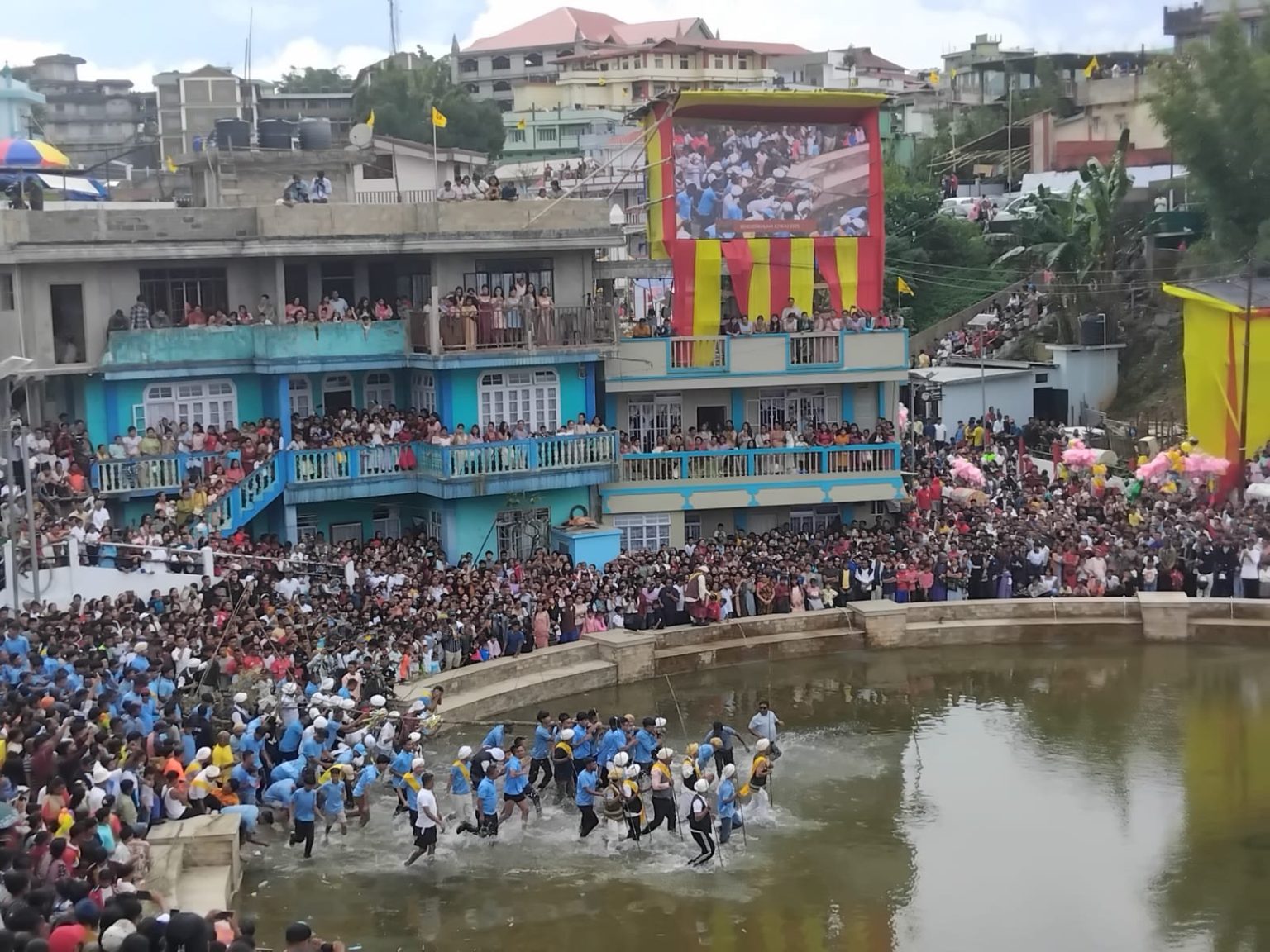
- 17 Jul 2025
In News:
The Behdeinkhlam Festival, a vibrant cultural and religious celebration of the Pnar community in Jowai, Meghalaya, was recently observed with great enthusiasm. Blending age-old indigenous rituals with contemporary social messages, the festival reflects the rich cultural heritage and evolving societal concerns of the Jaintia Hills region.
Etymology and Meaning
- The term “Behdeinkhlam” comes from the Pnar language:
- “Beh Dien” – to drive away with sticks or prayers.
- “Khlam” – refers to plague, pestilence, or disease.
- Thus, the name signifies a ritual expulsion of illness, evil spirits, and misfortune, historically associated with diseases like cholera.
Cultural and Religious Significance
- Primarily celebrated by the Pnars, a sub-tribe of the Jaintia community, the festival is a symbolic act of:
- Protecting society from disease.
- Invoking blessings for a bountiful harvest.
- Promoting community health, peace, and prosperity.
- It plays a crucial role in preserving the Niamtre faith, the indigenous religion of the Jaintia people, through intergenerational participation in ritual practices.
Timing and Duration
- Held annually in July, right after the sowing season, the festival lasts for three days.
- The timing is agriculturally significant, linking health rituals with hopes for a successful farming cycle.
Key Rituals and Celebrations
- Symbolic Rituals:
- Men go around beating the roofs of houses with bamboo poles to drive away evil spirits and symbolic disease.
- Tree trunks known as Dein Khlam and Khnong—rounded, straight, and polished—are brought from the forest and used in the main rituals.
- Community Processions:
- A sacred wooden post called Symbud Khnong is carried around the town and installed as a spiritual safeguard.
- Gender Roles in Rituals:
- Men perform dances, carry the sacred logs, and lead the processions.
- Women play a vital ceremonial role by preparing sacrificial food for ancestral spirits.
- Dance and Music: On the final day, the community gathers at Aitnar, where both young and old dance to the rhythmic beats of pipes and drums.
- Dad-Lawakor – Traditional Game: A unique football-like game called Dad-lawakor is played at Mynthong, showcasing indigenous sporting traditions and community bonding.
Contemporary Relevance
- In recent years, the festival has evolved to incorporate modern themes such as:
- Awareness against drug abuse
- Prevention of alcoholism
- Climate change consciousness
- These additions reflect a harmonious blending of tradition and modernity, where festivals serve both spiritual and civic functions.
Sierra Leone’s First UNESCO World Heritage Site
- 17 Jul 2025
In News:
In a landmark achievement for global environmental conservation, Sierra Leone has secured its first UNESCO World Heritage Site with the inscription of the Gola-Tiwai Complex, comprising the Tiwai Island Wildlife Sanctuary and the Gola Rainforest National Park (GRNP). This milestone is the result of over three decades of environmental activism led by Tommy Garnett, founder of the Environmental Foundation for Africa (EFA).
About the Gola-Tiwai World Heritage Site
Location
- Southern Sierra Leone, along the Moa River, near the Liberia border.
Components
- Tiwai Island Wildlife Sanctuary
- Area: Only 12 sq. km
- Biodiversity: Home to 11 primate species, including:
- Western Chimpanzee (endangered)
- Diana Monkey
- *King Colobus Monkey
- Serves as a biodiversity research hub and ecotourism destination in West Africa.
- Gola Rainforest National Park
- Sierra Leone’s largest tropical rainforest
- Biodiversity Highlights:
- Pygmy Hippopotamus
- Critically Endangered African Forest Elephant
- Numerous bird, insect, and plant species
- Provides critical services such as:
- Carbon sequestration
- Climate regulation
- Genetic biodiversity conservation
Ecological and Global Significance
- Biodiversity Hotspot: The Gola-Tiwai complex is one of the most biologically diverse areas in West Africa.
- Sustainable Development Model:
- Combines community engagement, scientific research, and eco-tourism.
- Sets a precedent for post-conflict environmental restoration.
- Global Climate Importance: The rainforest acts as a carbon sink, playing a role in mitigating climate change.
- Cultural-Ecological Linkages: Local communities depend on forests for livelihoods, traditions, and spiritual practices.
Geographical Context: Sierra Leone
Capital: Freetown
- Located on a peninsula with one of the world’s largest natural harbours.
Neighbouring Countries: Guinea (North and East), Liberia (Southeast), Atlantic Ocean (Southwest)
Key Geographical Features:
- Mountains:
- Mount Bintimani (Loma Mansa) – Highest peak at 1,948 m (6,391 ft)
- Tingi Hills, Sula Plateau, Kambui Schists
- Rivers:
- Major rivers: Moa, Sewa, Mano, Rokel
- Originate in Fouta Djallon highlands in Guinea
- Coastal Plains: Include mangrove swamps, lateritic soils, and seasonally flooded Bolilands
- Climate: Tropical with high rainfall and Harmattan winds in dry seasons
Natural Resources:
- Rich in diamonds, gold, rutile, and bauxite
- Economy based on mining and agriculture
Noctilucent Clouds
- 17 Jul 2025
In News:
Recently, rare noctilucent clouds were sighted over parts of Scotland, drawing attention due to their unique shimmering appearance in the night sky. These occurrences are significant in the context of climate studies and upper atmospheric science.
What are Noctilucent Clouds?
- Definition: Noctilucent clouds (NLCs), also known as polar mesospheric clouds, are high-altitude ice crystal clouds that appear thin, wispy, and glow with a blue or silvery hue after sunset.
- Etymology: The term “noctilucent” is derived from Latin—"nocto" (night) and "lucent" (shining)—meaning "night shining."
Atmospheric Location
- These are the highest clouds in Earth’s atmosphere, found in the mesosphere, around 76–85 km above the Earth's surface.
- In contrast, most other cloud types form in the troposphere, the lowest atmospheric layer.
Seasonal and Geographical Occurrence
- Seasonality:
- Northern Hemisphere: Visible from late May to early August, peaking during June and July.
- Southern Hemisphere: Much rarer; may appear from late November to early February, most commonly in December and January.
- Latitude Range: Typically occur between 45° and 80° latitude, both north and south of the equator.
- Visibility Conditions:
- Seen only during summer months, shortly after sunset or just before sunrise.
- The Sun remains just below the horizon, illuminating these high clouds from below, creating a glowing effect while the lower atmosphere is in darkness.
Formation Mechanism
- Composition: Made up of tiny ice crystals.
- Temperature Conditions: The mesosphere becomes extremely cold during summer, enabling the formation of ice on fine particles.
- Sources of Dust Nuclei:
- Natural: Micrometeorites, volcanic dust.
- Anthropogenic: Rocket exhaust particles and other upper-atmospheric pollutants.
- Optical Phenomenon: These ice crystals reflect sunlight even when the lower atmosphere is dark, giving them their luminous appearance.
Significance
- Serve as indicators of mesospheric conditions, especially temperature and humidity.
- Their increasing frequency and intensity in recent decades may be linked to climate change and human activities, including space exploration.
- Valuable for understanding upper atmospheric dynamics, particularly in the context of atmospheric chemistry and space weather.
Pradhan Mantri Divyasha Kendra (PMDK)
- 17 Jul 2025
In News:
The Union Ministry of Social Justice & Empowerment has recently inaugurated the 75th Pradhan Mantri Divyasha Kendra (PMDK) at the Government Medical College, Badaun, Uttar Pradesh, marking a significant milestone in India's efforts toward inclusive social welfare.
About PMDK
The Pradhan Mantri Divyasha Kendra (PMDK) is a flagship initiative of the Government of India aimed at delivering integrated rehabilitation and assistive services under one roof. It caters primarily to:
- Persons with Disabilities (Divyangjan), as identified under the Rights of Persons with Disabilities Act, 2016.
- Senior Citizens, especially those from economically weaker sections (EWS).
These centres offer comprehensive services including:
- Assessment and evaluation
- Counselling
- Distribution of assistive devices
- Post-distribution follow-up care
Institutional Framework
PMDKs operate under the aegis of the Ministry of Social Justice & Empowerment, and are implemented by the Artificial Limbs Manufacturing Corporation of India (ALIMCO), a Central Public Sector Undertaking under the Department of Empowerment of Persons with Disabilities (DEPwD).
Schemes Implemented through PMDKs
- Assistance to Disabled Persons for Purchase/Fitting of Aids and Appliances (ADIP Scheme): Aims to assist Divyangjan with suitable, durable, and scientifically manufactured aids and appliances.
- Rashtriya Vayoshri Yojana (RVY): Focuses on providing free-of-cost assistive devices to senior citizens from BPL or economically weaker backgrounds.
Beneficiary-Oriented Impact
- With the inauguration of the latest centre in Badaun, the total number of operational PMDKs in the country has reached 75.
- These centres have collectively benefited over 1.4 lakh individuals, distributing assistive devices worth ?179.15 lakh.
- Devices offered include:
- Tricycles, wheelchairs, walkers
- Hearing aids and artificial limbs
- Other mobility and sensory support equipment
Significance and Relevance
The PMDK initiative plays a crucial role in addressing the accessibility gap in health and welfare services for Divyangjan and elderly citizens. By establishing these centres at regional medical hubs, the government is:
- Reducing the travel burden and logistical challenges for beneficiaries.
- Ensuring dignified, timely, and localised support.
- Strengthening the implementation of constitutional and legal mandates under Articles 41 and 46, which call for state support to the vulnerable sections of society.
Machilipatnam

- 17 Jul 2025
In News:
Located at the confluence of the Krishna River and the Bay of Bengal, Machilipatnam—historically known as Masulipatnam—is a port town with a rich maritime legacy. Once a prominent node in ancient and medieval trade networks, the town is now experiencing renewed attention and developmental revival.
Ancient Maritime Significance
- Known in classical sources such as the Periplus of the Erythraean Sea (1st century CE) as Maisolos, Machilipatnam played a crucial role in early Indian Ocean trade.
- Its strategic position on the Coromandel Coast made it a conduit for commercial exchange between the Deccan Plateau and distant civilizations, including Rome, the Arab world, and Southeast Asia.
- Archaeological and literary evidence points to Machilipatnam's role as a trans-shipment point for goods like spices, textiles, and pearls.
Flourishing Under the Satavahanas (1st BCE – 3rd CE)
- During the reign of the Satavahana dynasty, the port witnessed significant expansion.
- It became renowned for the export of fine muslin fabrics, precious stones, and aromatic goods.
- Inland trade links with Amaravati and Dharanikota—important urban and Buddhist centres—further enhanced the port’s economic significance.
Medieval Resurgence and Colonial Trade
- From the 16th to 18th centuries, the port was revitalized under the Golconda Sultanate.
- It emerged as a hub for European maritime powers such as the Dutch, British, and French East India Companies.
- Despite its early importance, Machilipatnam’s influence declined in the 18th century when colonial powers shifted their focus to Madras (now Chennai), which offered better access and facilities for long-distance trade.
Port Cities in Indian Maritime History
The historical prominence of Machilipatnam can be viewed in the broader context of ancient Indian port cities:
|
Port City |
Region/Modern State |
Period/Dynasty |
|
Lothal |
Gujarat |
Indus Valley Civilization |
|
Arikamedu |
Puducherry |
Cholas, Early Tamil Kingdoms |
|
Kaveripattinam |
Tamil Nadu |
Cholas |
|
Sopara |
Maharashtra |
Satavahanas |
|
Tamralipta |
West Bengal |
Mauryas and Guptas |
|
Barygaza |
Bharuch, Gujarat |
Indo-Greek and Kushan Periods |
These ports collectively illustrate India’s extensive maritime interactions across time, with Machilipatnam serving as a significant node in this network during multiple historical phases.
Contemporary Relevance
- Recent efforts to revitalize Machilipatnam’s port infrastructure are aimed at restoring its economic utility and cultural relevance.
- Its historical importance makes it a potential candidate for heritage tourism, as well as a case study in urban renewal based on historical identity.
RhoDIS India
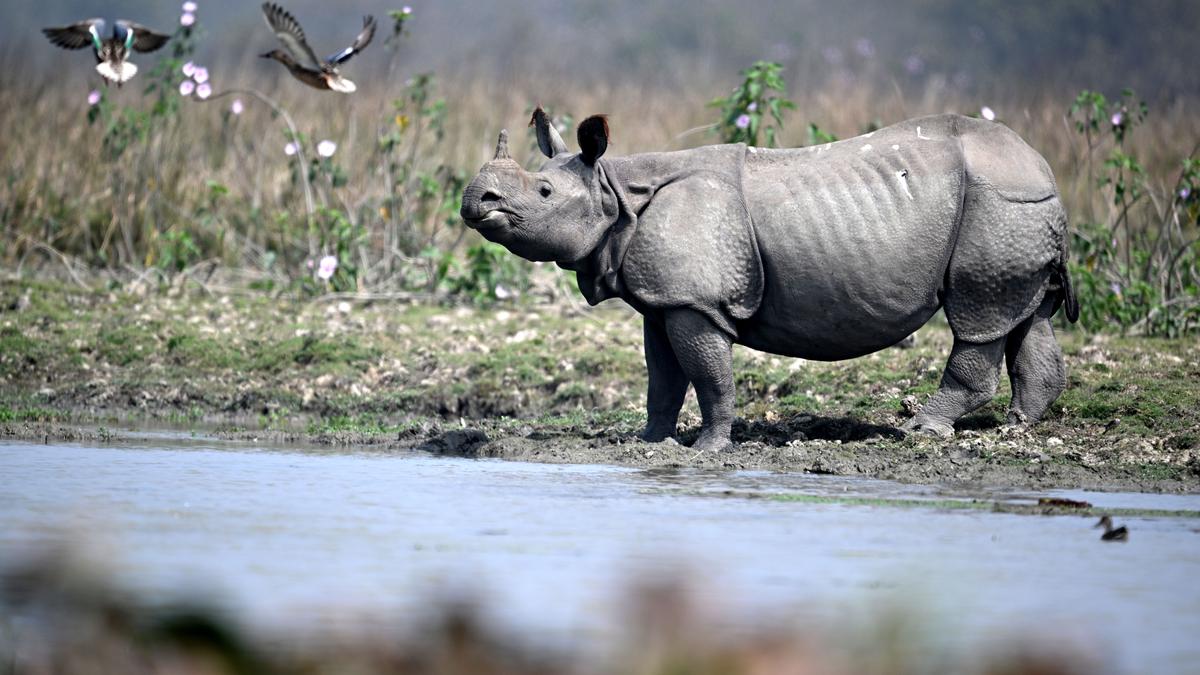
- 16 Jul 2025
In News:
A specialised team has begun the genetic analysis of 2,573 rhino horn samples in India, with the goal of enhancing rhino conservation and curbing wildlife crimes. This is part of the RhoDIS India (Rhino DNA Index System) initiative.
About RhoDIS India Programme:
- Launched in 2016 by the Ministry of Environment, Forest and Climate Change (MoEFCC) in collaboration with:
- Wildlife Institute of India (WII), Dehradun
- State forest departments of Assam, West Bengal, and Uttar Pradesh
- WWF India
- Objective:
To create a DNA database of individual rhinos for:- Aiding wildlife crime investigations
- Supporting scientific management of the rhino population
- Implementation:
The genetic lab at WII Dehradun handles DNA profiling using a standardised protocol approved by the MoEFCC. It involves short tandem repeat (STR) allele analysis for generating unique genetic signatures for each rhino.
Recent Developments in Assam:
- In September 2021, the Assam Forest Department verified and destroyed 2,479 rhino horns stored in state treasuries, excluding horns under court cases or of special scientific interest.
- Prior to destruction, tiny samples from 2,573 horns were preserved for DNA and chemical analysis. These samples have now been repackaged and transported to WII for genetic sequencing.
- This analysis will help track temporal genetic changes and improve understanding of the rhino population’s genetic health across Assam.
- The entire repackaging process was recorded and monitored by independent experts to ensure transparency.
Significance of RhoDIS:
- Provides individual identification of rhinos from horn samples, helping track poaching incidents and illegal wildlife trade.
- Strengthens forensic evidence in courts related to wildlife crime.
- Assists in population management through genetic diversity assessments.
What is a Rhino Horn?
- Composed of keratin, the same protein found in human nails and horse hooves.
- Contains sulphur-rich amino acids like cysteine, and minerals such as calcium carbonate and phosphate.
- Greater one-horned rhinos (found in India) have a single horn, unlike African species with two.
Jarawa Tribe

- 16 Jul 2025
In News:
The 16th Census of India, scheduled for 2026–27, will include a special effort to enumerate the six main indigenous tribes of the Andaman and Nicobar Islands, including the Jarawa, one of the world’s oldest surviving tribal groups.
About the Jarawa Tribe:
- Status: Recognized as a Particularly Vulnerable Tribal Group (PVTG).
- Location: Reside in Middle and South Andaman Islands, primarily in dense tropical forests and coastal zones.
- Lifestyle:
- Nomadic hunter-gatherers living in small groups of 40–50.
- Depend on forest produce, marine fishing, and traditional medicine.
- Exhibit robust health, with low incidence of lifestyle diseases.
- Cultural Characteristics:
- Minimal attire suited to the climate.
- Known for strong territorial identity and historical resistance to outsiders.
- Maintain a natural diet and traditional healing practices.
Population Trends:
- 1998 Estimate: ~260 individuals (based on limited contact).
- 2011 Census: 380 individuals (out of 28,530 STs in A&N Islands).
- 2025 Official Estimate: 647 individuals.
- Increase attributed to improved healthcare, trust-building, and non-intrusive welfare policies.
Government Interventions & Welfare Initiatives:
- Healthcare: Preventive medical support (measles, hepatitis, malaria) provided without interfering in traditional practices.
- Welfare Access: Increased interaction since 1998 has enabled better outreach, aiding accurate population tracking.
- PM-JANMAN Scheme: Under the Pradhan Mantri Janjati Adivasi Nyaya Maha Abhiyan, 191 PVTG individuals have been identified in the islands for targeted welfare.
Challenges & Ethical Considerations:
- Andaman Trunk Road (ATR): Provides physical access but raises concerns of cultural intrusion.
- Expert Opinion: Minimum intervention is essential for preserving the Jarawa way of life. Trust and respect for autonomy remain key.
16th Census of India: Timeline & Relevance:
- Reference Dates:
- October 1, 2026: Snow-bound areas (e.g., Ladakh, A&N Islands).
- March 1, 2027: Rest of India.
- Special Feature: Will include caste enumeration, the first since 1931.
- Jarawa Inclusion: Officials expect smooth access to PVTGs like the Jarawas due to longstanding trust and contact.
Exercise Talisman Sabre 2025
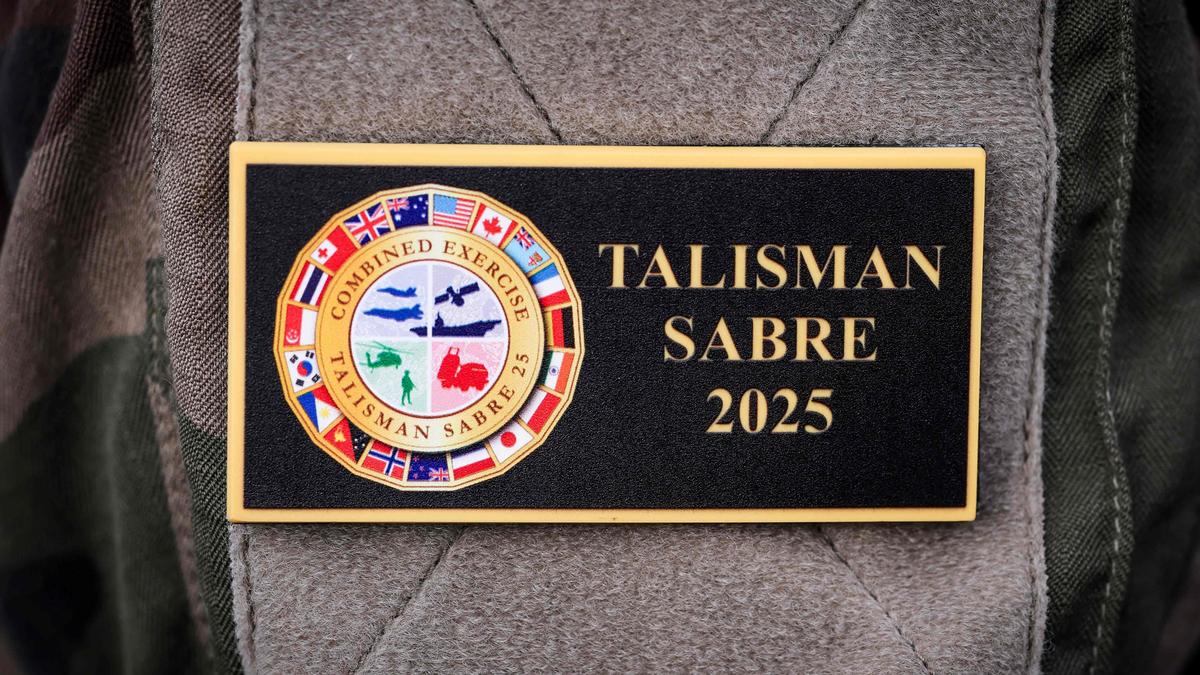
- 16 Jul 2025
In News:
India is participating in Exercise Talisman Sabre 2025, a major multinational military exercise led by Australia and the United States, now in its 11th edition. The exercise commenced on July 13, 2025, and includes over 35,000 military personnel from 19 nations.
About Exercise Talisman Sabre:
- Origin & Nature:
- A biennial bilateral military exercise between Australia and the United States since 2005.
- Designed to promote a free and open Indo-Pacific and strengthen interoperability and strategic partnerships among allies.
- Multinational Participation (2025):
- Participants: Australia, United States, India, Canada, Fiji, France, Germany, Indonesia, Japan, Netherlands, New Zealand, Norway, Papua New Guinea, Philippines, Republic of Korea, Singapore, Thailand, Tonga, United Kingdom.
- Observers: Malaysia and Vietnam.
- Geographical Scope: Exercises are being conducted across Queensland, Northern Territory, Western Australia, New South Wales, Christmas Island, and for the first time, in Papua New Guinea (outside Australian territory).
Significance for India and the Indo-Pacific:
- Strengthens India's defence diplomacy and military interoperability with Indo-Pacific allies.
- Reinforces commitment to collective security and rules-based international order.
- Enhances India's operational exposure in multidomain warfighting scenarios alongside major powers.
Who is an ‘Ordinarily Resident’?
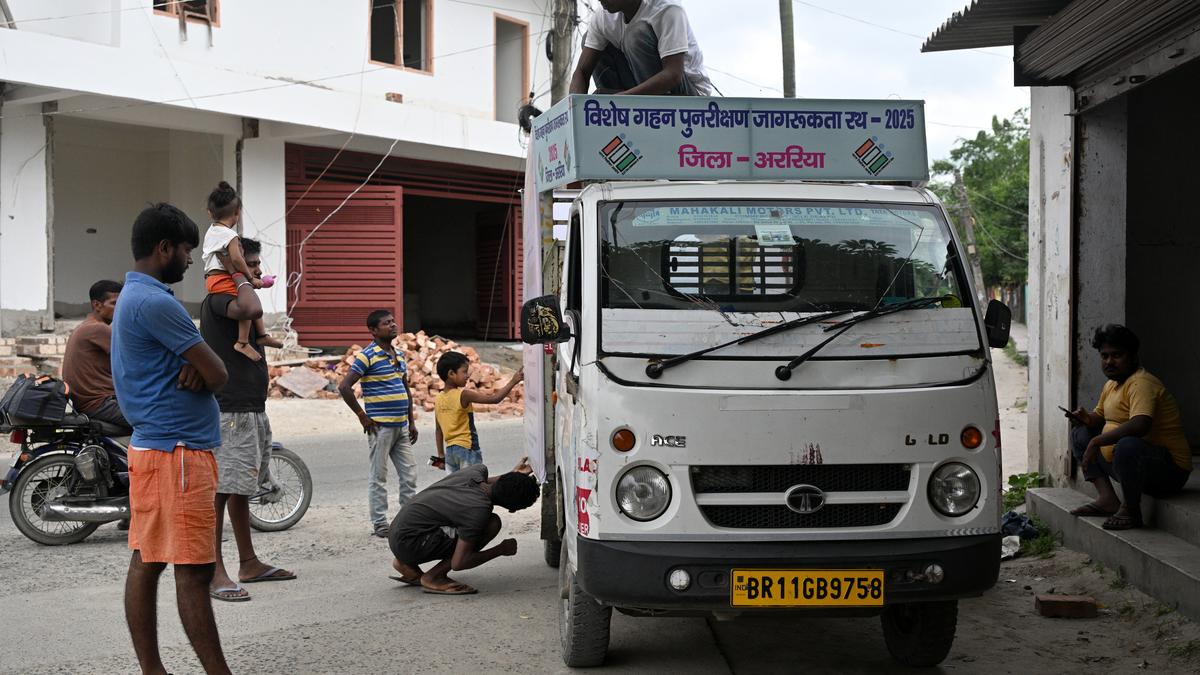
- 16 Jul 2025
In News:
The Election Commission of India (ECI) has initiated a Special Intensive Revision (SIR) of electoral rolls in Bihar, sparking debate over the eligibility of migrant workers and the interpretation of ‘ordinarily resident’ under electoral law.
Legal Basis of ‘Ordinarily Resident’
- Representation of the People Act, 1950:
- Section 19: Only persons ordinarily resident in a constituency are eligible for enrolment in its electoral roll.
- Section 20: Defines ‘ordinarily resident’ and clarifies that:
- Ownership or possession of a house alone does not qualify one as ordinarily resident.
- A person temporarily absent from their usual place of residence (due to work, travel, etc.) continues to be ordinarily resident there.
- Certain categories are deemed to be ordinarily resident in their home constituency even if posted elsewhere:
- Members of armed forces,
- State police serving outside their State,
- Central government employees posted abroad,
- Persons holding constitutional offices declared by the President in consultation with the ECI,
- Their spouses are also covered.
- Section 20A (added in 2010):
- Allows Non-Resident Indians (NRIs) to register and vote from the address mentioned in their passport, even if they reside abroad long-term.
Rules Governing Electoral Rolls
- The Registration of Electors Rules, 1960 (RER):
- Notified by the Central Government in consultation with the ECI.
- Govern the preparation, revision, and correction of electoral rolls.
- Electoral Registration Officers apply and verify the concept of ‘ordinarily resident’ during the enrolment process.
Judicial Interpretation
- Gauhati High Court (Manmohan Singh Case, 1999):
- Defined ‘ordinarily resident’ as one who is habitually and permanently living in a place.
- The person must intend to reside there, and society must reasonably accept them as a resident.
3I/Atlas: Third Interstellar Object Discovered
- 16 Jul 2025
In News:
Scientists have confirmed the discovery of 3I/Atlas, the third-known interstellar object, which could be over 7 billion years old — predating the Solar System by nearly 3 billion years. It was detected on July 1, 2025, by the Asteroid Terrestrial-impact Last Alert System (ATLAS) telescope in Río Hurtado, Chile.
Key Features:
- Interstellar Origin: 3I/Atlas is not gravitationally bound to the Sun and follows a hyperbolic trajectory, indicating it entered the Solar System from interstellar space.
- High Speed: It is traveling at approximately 60 km/s — too fast to be retained by the Sun’s gravity at a distance of 670 million km from the Sun.
- Current Location: The object is now roughly 917 million km from Earth, close to the orbit of Jupiter.
- Age Estimation: Estimated to be around 7 billion years old, making it potentially the oldest comet ever observed.
Understanding Interstellar Objects
- Definition: Interstellar objects are celestial bodies that originate outside the Solar System and pass through it without being gravitationally bound to the Sun.
- Known Interstellar Objects:
- 1I/?Oumuamua (2017)
- 2I/Borisov (2019)
- 3I/Atlas (2025)
How do scientists confirm Interstellar Origin?
- Trajectory Analysis: Objects within the Solar System follow closed elliptical orbits. Interstellar objects exhibit open hyperbolic orbits — they have a perihelion (closest point to the Sun) but no aphelion (no return).
- Velocity Measurement: A high velocity at a great distance from the Sun, such as with 3I/Atlas, suggests that the object was not accelerated within our Solar System and must have originated externally.
- Example: At 670 million km from the Sun, 3I/Atlas’s speed of 60 km/s indicates a hyperbolic escape path, unaffected significantly by the Sun’s gravitational pull.
Why is it Significant?
- Clues to Alien Planetary Systems: The chemical composition of interstellar objects offers insights into the formation conditions of other star systems.
- Rare Opportunity: These objects provide a direct sample of exoplanetary material, potentially long before space missions can reach other star systems.
- Scientific Value: If rich in ices, as expected in long-distance comets, it implies ejection from a cold, outer region of a distant planetary system—likely influenced by large planets like Jupiter or Neptune analogues.
e-Truck Incentive Scheme
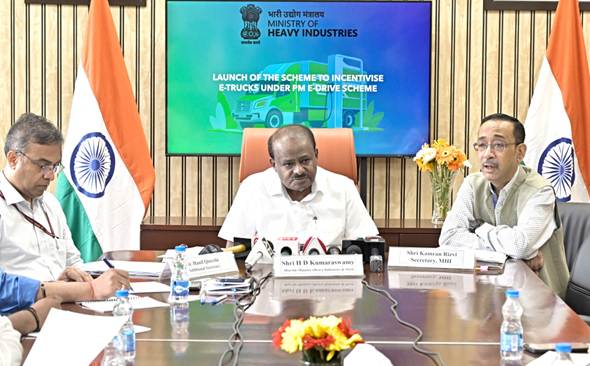
- 15 Jul 2025
In News:
The Government of India, under the PM E-DRIVE initiative, has launched the country’s first dedicated financial incentive scheme for electric trucks (e-trucks). Spearheaded by the Ministry of Heavy Industries (MHI) and launched by Union Minister H.D. Kumaraswamy, the initiative is a key component of India's push toward green freight mobility, net-zero emissions by 2070, and cleaner urban air quality.
Key Features of the Scheme
- Scope & Objective: Aimed at reducing emissions from the freight sector, lowering logistics costs, and encouraging indigenous e-truck manufacturing under Atmanirbhar Bharat.
- Target Vehicle Categories:
- N2 Category: Trucks with Gross Vehicle Weight (GVW) between 3.5 to 12 tonnes
- N3 Category: Trucks with GVW above 12 tonnes and up to 55 tonnes (In case of articulated vehicles, only the N3-category puller tractor is eligible.)
- Eligibility Conditions:
- Mandatory scrapping of old diesel trucks for availing incentives
- Battery warranty: 5 years or 5 lakh km
- Vehicle and motor warranty: 5 years or 2.5 lakh km
- Incentives Structure:
- Maximum incentive: ?9.6 lakh per e-truck
- Incentive amount based on GVW
- Disbursal: Upfront reduction in purchase price; reimbursed to OEMs via PM E-DRIVE portal (first-come, first-served)
Implementation Timeline and Financial Outlay
- Duration: October 1, 2024 – March 31, 2026
- Budget:
- ?500 crore earmarked for e-trucks within an overall outlay of ?10,900 crore under PM E-DRIVE
- Dedicated ?100 crore allocation for 1,100 e-trucks registered in Delhi to combat air pollution
Wider PM E-DRIVE Ecosystem (formerly EMPS-2024)
- EV Categories Covered:
- Electric 2-Wheelers: Incentive of ?5,000/kWh (capped at ?10,000 in Year 1, ?5,000 in Year 2)
- Electric 3-Wheelers: ?25,000 in Year 1, ?12,500 in Year 2
- L5 Cargo EVs: ?50,000 in Year 1, ?25,000 in Year 2
- E-buses and e-ambulances: Covered under future extensions
- e-Vouchers: Introduced for digital verification and incentive tracking. One vehicle per Aadhaar; required for OEM reimbursement.
- Charging Infrastructure: The scheme promotes setting up EV Public Charging Stations (EVPCS) in high EV penetration cities and along major highways.
Strategic Importance and Impact
- Environmental: Diesel trucks constitute only 3% of the vehicle fleet but contribute to 42% of transport-related GHG emissions.
- Deployment Goal: Support for 5,600 e-trucks across India
- Sectoral Focus: Logistics, cement, steel, and port sectors
- Industry Participation: OEMs like Tata Motors, Ashok Leyland, Volvo Eicher are actively engaged
- CPSE Involvement: SAIL to procure 150 e-trucks and electrify 15% of hired vehicles.
Sanchar Mitra Scheme
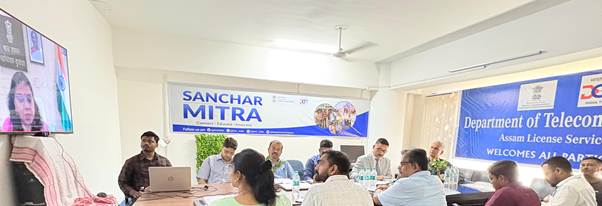
- 15 Jul 2025
In News:
The Sanchar Mitra Scheme, launched by the Department of Telecommunications (DoT), Ministry of Communications, is a nationwide volunteer-based initiative aimed at promoting digital literacy, telecom safety, and cybersecurity awareness among citizens.
Initially piloted in select institutions, the scheme has now been scaled up nationally due to its successful outreach and impact.
Key Highlights:
- Who are Sanchar Mitras?
- Selected university student volunteers from streams such as telecom, electronics, computer science, and cybersecurity who act as digital ambassadors to spread awareness at the grassroots level.
- Core Objectives:
- Promote digital safety and cyber hygiene
- Raise awareness on cyber frauds, EMF radiation concerns, and responsible mobile usage
- Bridge the communication gap between telecom services and citizens
- Training & Exposure: Sanchar Mitras receive specialized training from:
- National Communications Academy–Technology (NCA-T)
- DoT Media Wing: Training covers topics such as 5G, 6G, Artificial Intelligence, Cybersecurity, and telecom technologies.
- Community Engagement: Volunteers organize awareness campaigns, collaborate with NGOs, and engage in door-to-door outreach to promote informed digital behavior.
- Assessment & Incentives: Participants are evaluated on innovation, consistency, and outreach impact. Top performers receive:
- Internship opportunities
- Involvement in national telecom projects
- Invitations to forums like the India Mobile Congress
- Participation in International Telecommunication Union (ITU) events
Recent Developments:
- The first expanded rollout was initiated in Assam, where DoT partnered with 18 top engineering institutions including IIT, IIIT, and NIT.
- Chaired by senior DoT officials, sessions in BSNL Bhawan, Guwahati, introduced the scheme and invited collaboration from academic institutions.
Significance for India:
- Digital Inclusion: Empowers citizens to participate securely in the digital ecosystem.
- Youth Engagement: Mobilizes Yuva Shakti as a force for nation-building and technological awareness.
- Cybersecurity Shield: Acts as a grassroots defense against increasing cyber threats and misinformation.
- Alignment with National Priorities: Supports India’s vision of leadership in the 4 Ds – Democracy, Demography, Digitization, and Delivery.
Astra Missile
- 15 Jul 2025
In News:
The Astra missile, developed by the Defence Research and Development Organisation (DRDO), is India’s first indigenous Beyond-Visual-Range Air-to-Air Missile (BVRAAM). Recently, the Indian Air Force (IAF) and DRDO successfully flight-tested the missile from a Sukhoi-30 MKI fighter jet off the coast of Odisha.
Key Features:
- Range: Over 100 km, enabling engagement of distant aerial targets.
- Speed: Capable of flying at speeds exceeding Mach 4.
- Operational Ceiling: Effective up to 20 km altitude.
- Seeker: Equipped with a fully indigenous Radio Frequency (RF) Seeker, enhancing precision targeting.
- Guidance System: State-of-the-art navigation and guidance technologies ensure high accuracy.
- All-weather Capability: Operable in day and night across diverse weather conditions.
Recent Tests:
- Conducted against high-speed unmanned aerial targets at varying ranges and conditions.
- Achieved pinpoint accuracy in both launches.
- All subsystems, including the RF seeker and tracking systems, functioned flawlessly.
- Tests were conducted at the Integrated Test Range (ITR), Chandipur.
Strategic Significance:
- Boosts India’s air-to-air combat capability.
- Reduces dependency on foreign missile systems.
- Supports the vision of Aatmanirbhar Bharat in defence technology.
- Over 50 Indian public and private sector industries, including Hindustan Aeronautics Limited (HAL), contributed to its development.
Lake Turkana Basin
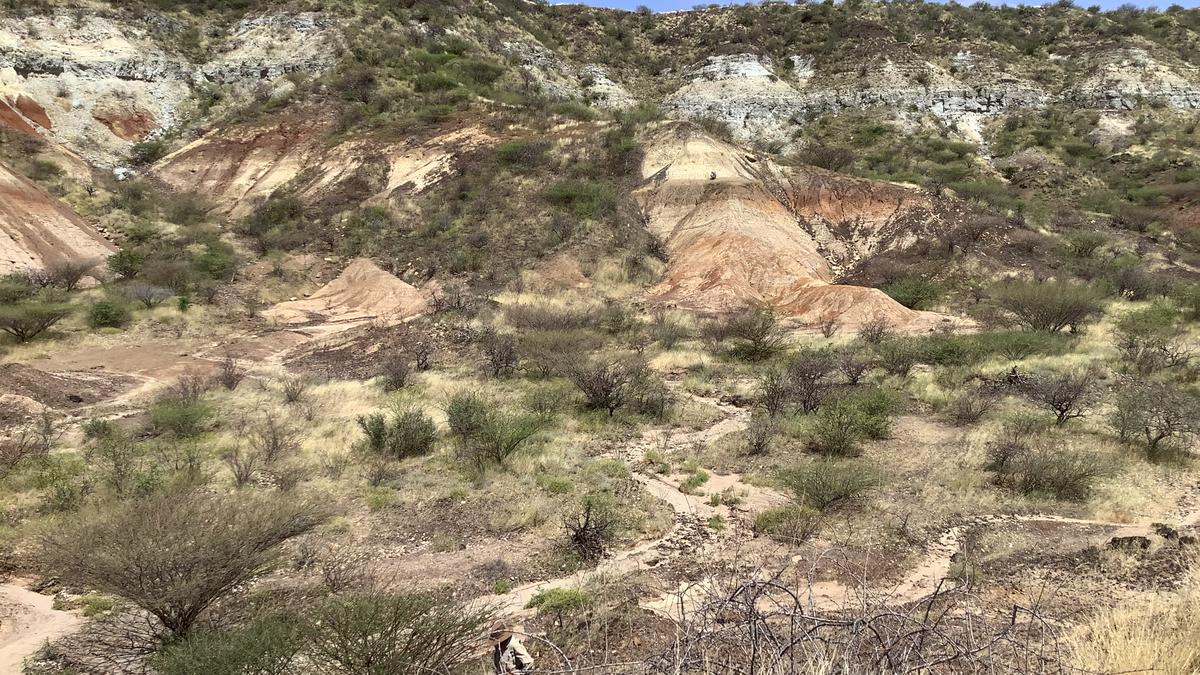
- 15 Jul 2025
In News:
For the first time, scientists have successfully extracted and analyzed 18–24 million-year-old enamel proteins from extinct mammal fossils—pushing the frontiers of biomolecular preservation and reshaping our understanding of mammalian evolution. The groundbreaking findings were published in Nature (July 2025) and draw from fossils found in Lake Turkana Basin (Kenya) and the Haughton Impact Crater (Canada's High Arctic).
Key Highlights:
What was Discovered?
- Enamel proteins, trapped in the dense tooth enamel of extinct mammals, were recovered from fossils dating back 18–24 million years.
- These proteins are now the oldest biomolecular sequences ever recovered, exceeding the time limits of ancient DNA (which typically degrades within 1 million years).
Significance of Enamel Proteins:
- Enamel—being the hardest biological substance—acts as a molecular vault, shielding proteins from environmental degradation.
- These ancient proteins provide crucial phylogenetic information, even in hot tropical zones like Lake Turkana, where preservation was previously thought improbable.
Methodology:
- Researchers extracted structural enamel proteins like amelogenin, enamelin, and ameloblastin.
- Advanced mass spectrometry and rigorous contamination controls ensured data integrity.
- Over 1,000 peptides and 7 different enamel proteins were recovered from a 21–24 million-year-old rhinoceros tooth in the Arctic.
- Diagenetic alterations (e.g., oxidation, glycation) were used as authenticity markers.
Site-Wise Discoveries:
Lake Turkana Basin (Kenya):
- Fossils from a hot, arid region yielded enamel proteins up to 18 million years old.
- Demonstrated exceptional preservation due to fluviodeltaic sedimentation, which allowed rapid burial and protection from oxygen and heat.
- The Turkana Basin is a major palaeontological site in Eastern Rift Valley and home to species like proboscideans, rhinocerotids, hippopotamids, and hominoids.
- Enamel samples ranged from 1.5 to 29 million years old.
- Turkana Lake, the world’s largest permanent desert lake and a UNESCO World Heritage Site, lies in this region.
Haughton Impact Crater (Nunavut, Canada):
- Ancient enamel from a permafrost site enabled recovery of 21–24 million-year-old proteins.
- The site was once a temperate lake, aiding preservation under low oxygen (anoxic) conditions.
- Researchers reconstructed rhinocerotid evolution, showing Epiaceratherium diverged before the Elasmotheriinae-Rhinocerotinae split, revising long-held fossil-based phylogenies.
Scientific Implications:
|
Aspect |
Enamel Proteins |
Ancient DNA |
|
Age limit |
>20 million years |
<1 million years |
|
Preservation |
High in enamel |
Poor in hot climates |
|
Resolution |
Useful for deep-time splits |
High for closely related species |
|
Data Type |
Protein sequence |
Genetic sequence |
|
Application |
Tree of life reconstruction, evolutionary history |
Genome mapping, ancestry |
Agricultural Monitoring and Event Detection (AMED) API
- 15 Jul 2025
In News:
Google has introduced a set of artificial intelligence (AI)-based innovations to advance India’s agricultural practices and enhance the cultural and linguistic relevance of global AI models.
Agricultural Monitoring and Event Detection (AMED) API
- Launched by: Google DeepMind and Google’s Partnerships Innovation Team
- Collaborators: TerraStack, IIT-Kharagpur, and other local partners
- Foundation: Built on the Agricultural Landscape Understanding (ALU) API launched in 2023
- Key Features:
- AI-Based Field Monitoring: Offers field-level insights using satellite imagery and deep learning to monitor crops and agricultural activity.
- Crop-Specific Data: Provides details on crop type, season, field size, and three years of historical cropping and land-use data.
- Event Detection: Detects agricultural changes at individual field levels, improving yield prediction and input management.
- Biweekly Updates: Data refreshed every two weeks to ensure real-time agricultural monitoring.
- Open Access for Innovation: Available for integration by agri-tech startups, financial institutions, and government bodies to support data-backed rural lending, climate adaptation, and sustainable farming practices.
- Objectives and Utility:
- Empower agriculture stakeholders with granular, real-time intelligence.
- Facilitate precision agriculture by tailoring support for soil, water, and climatic needs.
- Strengthen India's resilience to climate-related risks and promote informed policymaking.
- Help financial services design location-specific rural credit systems.
Amplify Initiative: Cultural and Linguistic Localization of AI
Google is also working to enrich AI systems with deeper understanding of India’s diversity through the Amplify Initiative, piloted earlier in Sub-Saharan Africa.
Indian Collaboration:
- Partner Institution: IIT-Kharagpur
- Goal: Create hyperlocal annotated datasets in multiple Indic languages related to healthcare, safety, and social issues.
- Aims to ensure that Large Language Models (LLMs) are better aligned with India’s cultural plurality and linguistic complexity.
Global Impact:
- Builds on success in Africa, where 8,000+ queries in 7 languages were developed by 155 experts to address issues such as chronic illness and misinformation.
INS Nistar

- 14 Jul 2025
In News:
In a significant stride towards self-reliance in defence manufacturing under the Aatmanirbhar Bharat initiative, the Indian Navy has inducted INS Nistar, its first indigenously designed and built Diving Support Vessel (DSV). Developed by Hindustan Shipyard Limited (HSL), Visakhapatnam, INS Nistar enhances India’s capabilities in deep-sea rescue, submarine emergency response, and underwater operations, placing India among a select group of nations with such advanced maritime assets.
Key Features and Capabilities
- Size and Endurance:
- Length: ~118–120 meters
- Displacement: Over 10,000 tonnes
- Endurance: Capable of operating for over 60 days at sea
- Diving and Rescue Capabilities:
- Equipped for saturation diving up to 300 meters and side diving stage operations up to 75 meters
- Integrated with Remotely Operated Vehicles (ROVs) for diver monitoring and salvage missions up to 1000 meters below sea level
- Serves as the Mother Ship for the Deep Submergence Rescue Vehicle (DSRV), crucial for submarine crew evacuation in emergencies
- Medical and Operational Infrastructure:
- Includes an 8-bed hospital, ICU, operation theatre, and hyperbaric chambers for diver treatment and recovery
- Fitted with a 15-tonne subsea crane, helicopter landing deck, and Side Scan SONAR for multi-role logistics and salvage operations
- Navigation and Control: Integrated Dynamic Positioning System (DPS) ensures precision during complex underwater missions
Indigenous Content and Industrial Participation
- Indigenous Content: Approximately 75–80%
- Over 120 Indian MSMEs contributed to the vessel’s construction
- Compliant with Indian Register of Shipping (IRS) classification standards
Strategic and Symbolic Significance
- Bridges critical capability gaps in submarine rescue, deep-sea salvage, and maritime disaster response
- Strengthens India’s strategic posture in the Indian Ocean Region (IOR), ensuring rapid and self-reliant response to undersea emergencies
- Reinforces India’s position as an emerging blue water navy
- Symbolically revives the legacy of the erstwhile Soviet-origin INS Nistar (commissioned in 1971), reaffirming continuity and progress in naval capabilities
TALASH Initiative

- 14 Jul 2025
In News:
The National Education Society for Tribal Students (NESTS), under the Ministry of Tribal Affairs, in collaboration with UNICEF India, has launched TALASH — Tribal Aptitude, Life Skills and Self-Esteem Hub — a first-of-its-kind national initiative aimed at fostering the holistic development of tribal students enrolled in Eklavya Model Residential Schools (EMRSs).
Launched in July 2025, TALASH reflects a focused effort to promote self-awareness, life skills, and career clarity among tribal youth across India. The initiative aligns with the vision of the National Education Policy (NEP) 2020, emphasizing inclusive, equitable, and holistic education.
Key Objectives:
- Support all-round development of over 1.38 lakh EMRS students across 28 States and 8 Union Territories.
- Strengthen academic learning, while building life skills, self-esteem, and career readiness.
- Bridge educational and psychological gaps for tribal youth, especially in remote and underprivileged areas.
Core Features of TALASH
- Digital Self-Discovery Platform: TALASH is an innovative digital portal that equips students with tools for career planning, aptitude assessment, and personal development.
- Psychometric Assessments: Inspired by NCERT’s Tamanna initiative, it offers a standardized aptitude test to identify students’ strengths, interests, and potential career paths.
Students are provided with Career Cards based on test results. - Career Counselling Support: Helps students make informed choices by aligning their aspirations with personal aptitude and career opportunities.
- Life Skills & Self-Esteem Modules: Includes interactive content to build problem-solving abilities, emotional intelligence, communication skills, and self-confidence.
- E-Learning for Educators: Offers a dedicated teacher portal for capacity building, enabling educators to mentor and support students effectively.
Implementation and Outreach
- The program is being rolled out in phases, starting in select EMRSs for smooth execution.
- So far, 189 teachers from 75 EMRSs have been trained as master trainers.
- By the end of 2025, TALASH aims to be active in all EMRSs nationwide.
Institutional Backing and Vision
- NESTS: An autonomous body under the Ministry of Tribal Affairs, responsible for the establishment and administration of EMRSs to ensure quality education for tribal students.
- UNICEF India: Brings global expertise in child development, focusing on equitable access, well-being, and digital empowerment.
Earth Intelligence

- 14 Jul 2025
In News:
In a major forecast shaping the future of data-driven decision-making, Gartner Inc. estimates that Earth Intelligence will emerge as a $20 billion industry between 2025 and 2030, with enterprise spending surpassing government and military investments by the end of the decade. This signals a pivotal shift in how space-based Earth observation data is being transformed into actionable insights across industries.
What is Earth Intelligence?
Earth Intelligence refers to the application of artificial intelligence (AI) to Earth observation data—mainly derived from satellite imagery, remote sensors, and complementary datasets like social, economic, and policy data—to generate domain-specific, actionable insights.
It involves:
- Data collection: Satellite and sensor-based Earth observation.
- Data transformation: Converting raw data into tailored formats.
- Insight generation: Using AI, analytics, and modeling to support business and policy decisions.
This integrated approach also increasingly draws on local and Indigenous knowledge, enhancing its relevance for climate resilience, urban planning, resource management, and disaster response.
Key Applications
Gartner highlights several real-world use cases:
- Disaster Response: Identifying fallen trees on railway lines post-storms.
- Industrial Monitoring: Tracking metal refinery temperatures to gauge global supply chains.
- Urban Analytics: Counting vehicles to study traffic and consumer behavior.
- Trade Analysis: Monitoring sea cargo movement to assess global shipping trends.
Trends and Projections
- In 2024, less than 15% of Earth Intelligence spending came from the private sector.
- By 2030, enterprises are expected to contribute over 50% of total spending—outpacing government and military usage.
- The annual revenue from Earth Intelligence is projected to grow from $3.8 billion (2025) to $4.2 billion (2030).
- The cumulative revenue opportunity for tech and service providers is estimated at $20 billion (2025–2030).
Polycyclic Aromatic Hydrocarbons (PAHs)

- 14 Jul 2025
In News:
In a significant development in astrochemistry, researchers from Australia, Sweden, and the UK have discovered how polycyclic aromatic hydrocarbons (PAHs)—complex organic molecules—can survive in the harsh environment of space, particularly within the Taurus Molecular Cloud 1 (TMC1). Their findings offer fresh perspectives on the origins of life and the chemical evolution of the universe.
What are PAHs?
Polycyclic Aromatic Hydrocarbons (PAHs) are flat, ring-shaped molecules composed of carbon and hydrogen. They are believed to constitute up to one-fifth of all carbon in interstellar space. While on Earth PAHs are typically formed through the incomplete combustion of organic matter such as fossil fuels and biomass, in space they are thought to be delivered by meteors and may have contributed to the early building blocks of life on Earth.
Astrochemical Puzzle: PAHs in TMC1
TMC1 is a cold, dense molecular cloud located about 430 light-years away in the Taurus constellation, composed primarily of molecular hydrogen (H?) along with dust, plasma, and organic compounds like ammonia (NH?) and carbon monoxide (CO). Despite constant exposure to high-energy starlight, which should destroy fragile molecules, small, closed-shell PAHs—those with paired electrons—are found in unexpectedly high concentrations in TMC1.
Scientific Breakthrough: The Indenyl Cation (C?H??)
To investigate this anomaly, researchers focused on a fragment of a PAH molecule known as the indenyl cation (C?H??). This molecule was studied under ultra-cold conditions at Stockholm University’s DESIREE facility, which allows ions to circulate without collisions at temperatures near –260°C.
Key findings:
- C?H?? ions exhibit an efficient cooling mechanism, enabling them to survive rather than disintegrate.
- The cooling occurs through recurrent fluorescence—where energy is gradually lost as electrons shift between excited and ground states—and infrared emission via molecular vibrations.
- This mechanism is crucial for stabilizing small PAHs (<50 carbon atoms), which have increasingly been detected in space through radioastronomy.
Scientific Significance:
- Validates how organic molecules can survive and grow in interstellar environments.
- Refines astrochemical models of molecular evolution in space.
Implications for the Origin of Life:
- Supports the hypothesis that PAHs delivered by meteors may have seeded early Earth with prebiotic carbon, aiding the emergence of life.
Relevance to Space Research:
- Enhances understanding of interstellar chemistry, useful for missions like James Webb Space Telescope (JWST) and future astrobiology missions.
MALE Drone Procurement
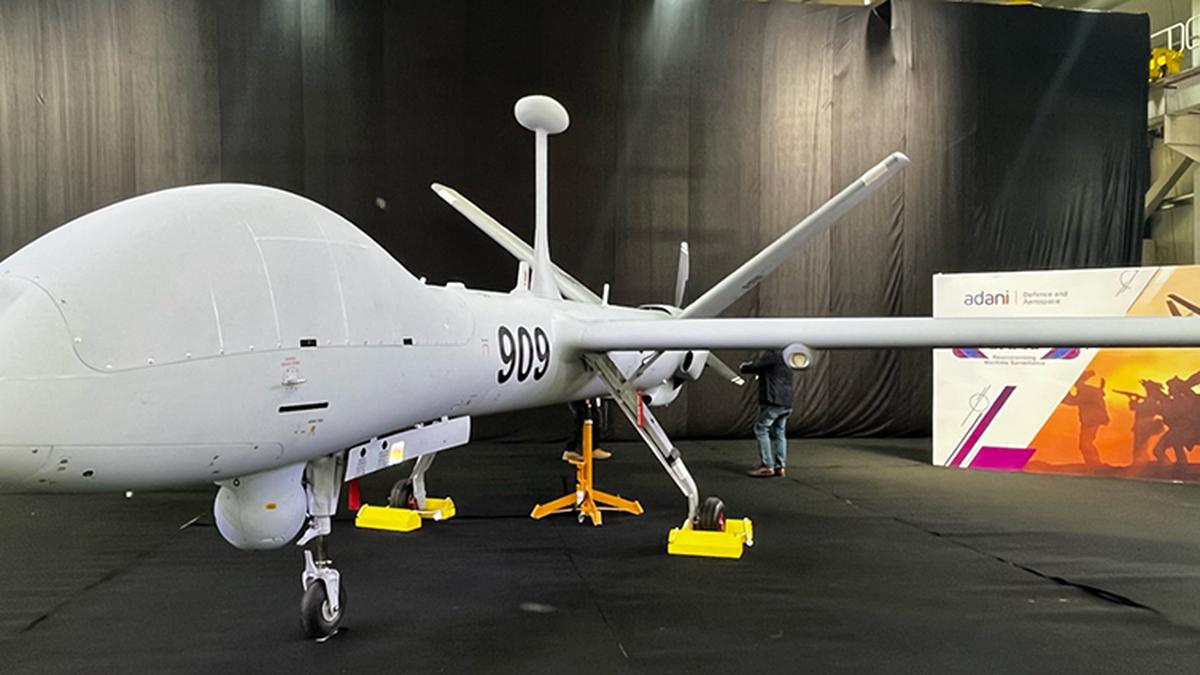
- 14 Jul 2025
In News:
In a significant stride towards self-reliance in defence technology, India has expedited the procurement of 87 Medium Altitude Long Endurance (MALE) drones from domestic manufacturers under the ?20,000 crore initiative, marking a major step in strengthening border surveillance and operational readiness.
What are MALE Drones?
MALE (Medium Altitude Long Endurance) drones are unmanned aerial vehicles (UAVs) capable of flying at altitudes of up to 35,000 feet and sustaining flight for over 30 hours. These drones are equipped for Intelligence, Surveillance, and Reconnaissance (ISR) and can undertake limited combat missions.
Key Features
- Endurance: Operational capacity exceeds 30 hours.
- Altitude Range: Effective at 35,000 feet or higher.
- Payload: Equipped with Electro-Optical/Infrared (EO/IR) cameras, radar systems, and combat modules.
- Real-time ISR: Provides persistent surveillance over diverse terrain.
- Remote Operations: Ground stations with secure communication links manage operations.
- Indigenous Content: Over 60% of components are locally manufactured, promoting import substitution.
Strategic Applications
- Border and Maritime Surveillance: Enhances India’s ability to monitor land borders with Pakistan and China, and maritime boundaries in the Indian Ocean Region.
- Tri-Service Integration: These drones will be deployed across the Army, Navy, and Air Force, improving joint situational awareness.
- Counter-Insurgency Support: Useful in operations in Naxal-affected and insurgency-prone areas, providing tactical aerial intelligence.
- Disaster Relief and Mapping: Can aid in real-time mapping and coordination during natural disasters and humanitarian crises.
Strategic Importance
- Fills the capability gap between smaller tactical UAVs and high-altitude surveillance drones like the MQ-9B Sea/ Sky Guardians.
- Replaces India’s earlier dependence on Israeli UAVs (e.g., Heron drones), boosting the ‘Make in India’ initiative in defence manufacturing.
- Enhances 24×7 real-time surveillance, thereby strengthening national security architecture.
Extended Range Anti-Submarine Rocket (ERASR)
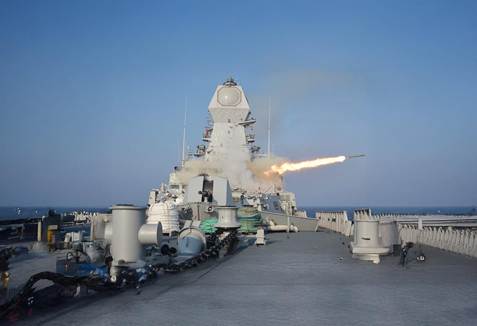
- 13 Jul 2025
In News:
India recently conducted successful user trials of the Extended Range Anti-Submarine Rocket (ERASR) from INS Kavaratti, marking a significant milestone in strengthening the country’s anti-submarine warfare (ASW) capabilities through indigenously developed technologies.
What is ERASR?
The ERASR is a state-of-the-art anti-submarine rocket system designed to neutralize hostile submarines from Indian naval warships. It is specifically intended for launch from Indigenous Rocket Launchers (IRLs) onboard Indian Navy ships.
- Developed by: Defence Research and Development Organisation (DRDO), specifically the Armament Research & Development Establishment (ARDE), Pune, in collaboration with the High Energy Materials Research Laboratory and Naval Science & Technological Laboratory.
- Production partners: Bharat Dynamics Limited (Hyderabad) and Solar Defence & Aerospace Ltd. (Nagpur).
Key Features
- Twin Rocket Motor System: Enables engagement of both short- and long-range submarine targets with high accuracy and consistency.
- Electronic Time Fuze: Fully indigenously developed to ensure precise detonation near underwater threats.
- High Operational Reliability: Demonstrated through consistent warhead detonation and fuze performance.
- Launch Compatibility: Designed to be fired from frontline warships equipped with Indian-made rocket launchers.
Highlights of User Trials
- Conducted from: INS Kavaratti under simulated maritime combat conditions.
- Number of Rockets Tested: 17
- Parameters Evaluated:
- Range performance
- Fuze timing reliability
- Warhead detonation effectiveness
- Outcome: All trial objectives were met; system demonstrated full battlefield readiness.
Significance
- Strengthens India’s ASW capabilities in the Indian Ocean Region, a vital strategic space.
- Boosts Atmanirbharta in defence by reducing reliance on foreign imports.
- Economically efficient, as the scalable domestic production replaces high-cost foreign systems.
- Reflects DRDO’s technological maturity in delivering mission-ready, indigenous defence solutions.
Optical Atomic Clock
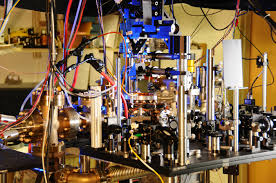
- 13 Jul 2025
In News:
In a landmark advancement, an international team of 65 scientists from six countries conducted the world’s largest and most accurate optical atomic clock comparison across three continents. This is a major step towards redefining the SI unit of time — the second — using optical atomic clocks instead of current caesium-based clocks.
Current Definition of a Second
- Defined since 1967 by the International System of Units (SI):
One second is the time it takes for 9,192,631,770 cycles of microwave radiation emitted during the transition between two hyperfine levels of the ground state of a caesium-133 atom.
- In India, the National Physical Laboratory (NPL) in New Delhi maintains the time standard using five caesium atomic clocks, disseminating the output via INSAT satellites, telecom signals, and fibre links.
Why Redefine the Second?
Limitations of Caesium Clocks:
- Frequency: 9.19 billion Hz (microwave range).
- Stability: Drifts by 1 second every 300 million years.
- Insufficient for the growing precision demands of:
- Global Positioning Systems (GPS, NavIC, Galileo)
- Climate science (e.g., measuring gravity changes due to ice loss)
- Radio astronomy (e.g., black hole imaging)
- Quantum technologies and space navigation
Optical Atomic Clocks: The Next Time Standard
Advanced atomic clocks that use visible light (optical frequencies) rather than microwaves to measure atomic transitions, allowing much higher precision.
Atoms Used:
- Strontium-87 (Sr)
- Ytterbium-171 (Yb)
- Charged Ytterbium Ions (Yb? E2, Yb? E3)
- Charged Strontium-88 (Sr?)
- Indium-115 ions (In?)
Working Principle:
- Atoms are held in optical lattices or ion traps.
- A laser, tuned to the atom’s natural frequency, stimulates atomic transitions.
- The resulting oscillations — which occur hundreds of trillions of times per second — are counted to define one second.
Superior Attributes:
- Frequency range:
- Strontium: 429 trillion Hz
- Ytterbium: 642 trillion Hz (≈ 10,000 times greater than caesium clocks)
- Unmatched stability: Drift of 1 second in 15 billion years in some cases
- Precision: Agreement between clocks within 10?¹? to 10?¹?, enabling ultra-precise synchronization globally
The Global Clock Comparison: Key Highlights
Objective:
To test whether optical clocks across the world remain synchronized at ultra-high precision, a prerequisite for redefining the SI second.
Experiment Overview:
- Duration: 45 days (Feb 20 – Apr 6, 2022)
- Participants: 10 optical clocks across six countries (Germany, France, Italy, Japan, Finland, UK)
- Atoms used: Sr, Yb, Sr?, Yb? (E2 & E3), In?
- Techniques:
- Optical fibre links between countries
- Advanced GPS method: Integer Precise Point Positioning (IPPP)
- Backups: GPS-based clocks during maintenance downtime
Key Outcomes:
- 38 independent frequency ratios measured — most extensive comparison to date
- 4 new ratios measured for the first time, including:
- Yb?(E3) to Yb
- In? to Yb
- Sr? to Sr
- Sr? to Yb
- Precision Achievements:
- Sr clocks in Germany and France: differed by < 2 × 10?¹?
- In? and Yb?(E3) clocks in Germany: matched within 4.4 × 10?¹?
- Germany–UK clocks: matched within 3 × 10?¹? via GPS, even with downtime
Challenges & Corrections Identified
- Italy’s Yb clock showed a consistent offset of 4 × 10?¹? in GPS-based ratios due to a signal distribution glitch.
- France and Germany’s Sr clocks showed small but real mismatches (~2 × 10?¹?), needing further investigation.
- Error Correlation Matrix: A 38×38 matrix with 242 non-zero correlation coefficients was created to responsibly combine data and avoid double-counting.
Significance for India and the World
- By 2030, optical atomic clocks are expected to officially redefine the second.
- India, through NPL, will need to upgrade infrastructure to remain in sync with the new global standard.
- Enhanced time precision will benefit:
- ISRO’s navigation and deep space programs
- Disaster response using satellite geolocation
- Quantum communication and computing
Catastrophe Bonds (Cat Bonds)
- 13 Jul 2025
In News:
Life insurance is common in India, but disaster risk insurance is not. Low coverage leaves most assets and livelihoods uninsured and vulnerable to loss. Globally, after the late-1990s U.S. hurricanes impacted even re-insurers, catastrophe risk began shifting to financial markets via catastrophe bonds (cat bonds).
What are Catastrophe Bonds (Cat Bonds)?
Catastrophe bonds (cat bonds) are insurance-linked securities (ILS) that convert disaster risks into tradable debt instruments, allowing countries or insurers to transfer the financial burden of natural disasters to capital markets.
- They are high-yield bonds issued by governments or insurance entities (sponsors) via intermediaries like the World Bank or Asian Development Bank.
- In case of a pre-defined disaster event (e.g., a 7.0 magnitude earthquake or 250 km/h cyclone), investors lose part or all of the principal, which is used by the sponsor for relief and reconstruction.
- If no disaster occurs, investors receive attractive coupon payments and their principal is returned at maturity.
- A Special Purpose Vehicle (SPV) is created to manage funds, isolate risks, and ensure legal and financial transparency.
Why Cat Bonds Matter
India is one of the most disaster-prone countries in the world, experiencing regular cyclones, floods, landslides, earthquakes, and forest fires. Despite this:
- Insurance penetration remains low, leaving individual property and livelihoods largely uninsured.
- The fiscal burden of post-disaster recovery typically falls on government budgets, disrupting planned expenditure and long-term development projects.
As a solution, cat bonds offer pre-arranged, parametric-trigger-based disaster financing, enabling faster payouts and risk diversification.
Advantages of Cat Bonds
|
Benefit |
Explanation |
|
1. Fast Payouts |
Unlike conventional insurance, cat bonds disburse funds immediately after a trigger event. |
|
2. Fiscal Resilience |
Shields government budgets from sudden disaster-related shocks. |
|
3. Diversified Risk |
Catastrophic risks are uncorrelated with financial markets, offering true portfolio diversification. |
|
4. Broader Capital Base |
Taps into global capital markets, beyond traditional reinsurance capacities. |
|
5. Encourages Mitigation |
Countries with better disaster preparedness may attract lower premiums. |
Cat bonds also appeal to institutional investors, especially pension funds and hedge funds, seeking returns that diversify portfolio risk away from traditional market-linked assets.
Limitations and Challenges
|
Limitation |
Explanation |
|
Trigger Rigidity |
No payout if the event falls just short of the pre-set parameters (e.g., a 6.5 magnitude quake when 6.6 is the threshold). |
|
Design Complexity |
Requires precise, data-backed modeling; poor design may exclude real risks. |
|
Perception of Waste |
In resource-scarce settings, non-triggered bonds may be seen as wasteful. |
|
High Premiums |
Hazard-prone regions attract higher premiums, potentially reducing cost-effectiveness. |
Transparent design, clear actuarial modelling, and historical comparisons with actual relief costs are critical for effective implementation.
India’s Readiness for Cat Bonds
- Annual Allocation: ?1.8 billion allocated since FY21–22 for disaster mitigation and capacity building shows India’s proactive approach to risk reduction.
- Sovereign Credibility: India’s stable credit rating and large economy make it a credible sponsor for such instruments.
- Hazard Exposure: Increasing frequency and severity of climate-induced disasters makes India a suitable case for cat bond-backed financial risk transfer.
Towards a South Asian Cat Bond
Given shared disaster vulnerabilities, India could spearhead a regional catastrophe bond to cover multiple countries facing similar risks:
Benefits:
- Regional risk pooling reduces premium costs.
- Enables a broader hazard matrix (e.g., cyclones in Bay of Bengal, earthquakes in Himalayan belt).
- Enhances regional financial resilience and climate cooperation.
Possibilities:
- An earthquake bond covering India, Nepal, Bhutan
- A cyclone bond for India, Bangladesh, Sri Lanka, Maldives, Myanmar
Such instruments would address unhedged regional risks and promote disaster preparedness in South Asia.
Global Context
- $180 billion: Approximate global issuance of cat bonds since inception.
- $50 billion: Currently outstanding in global cat bond markets.
- Post-1990s hurricanes in the US catalyzed growth in this market, especially as reinsurers struggled to bear repeated losses.
Bulgaria to join the Eurozone in 2026
- 13 Jul 2025
In News:
Recently, the EU finance ministers officially approved Bulgaria’s adoption of the euro, set to take effect from January 1, 2026. This decision marks Bulgaria as the 21st member of the Eurozone, nearly 19 years after it joined the European Union in 2007. The euro will replace the Bulgarian lev at a fixed exchange rate of 1 euro = 1.95583 lev.
About the Eurozone
- The Eurozone comprises EU member states that have adopted the euro (€) as their official currency and fall under the monetary jurisdiction of the European Central Bank (ECB).
- The euro was introduced in electronic form in 1999 and entered physical circulation in 2002 across 12 initial member states.
- As of now, 20 countries use the euro, with Croatia being the latest entrant in 2023. Bulgaria will become the 21st in 2026.
Maastricht Convergence Criteria
To adopt the euro, EU member states must satisfy strict economic criteria to ensure stability and convergence with the Eurozone economies:
- Price Stability: Inflation should not exceed 1.5 percentage points above the average of the three best-performing EU states.
- Sound Public Finances:
- Fiscal deficit ≤ 3% of GDP
- Gross government debt ≤ 60% of GDP
- Exchange Rate Stability: The national currency must be part of ERM-II (Exchange Rate Mechanism) for at least 2 years without severe fluctuations.
- Interest Rate Convergence: Long-term interest rates must not exceed the average rates of the three lowest-inflation member states by more than 2 percentage points.
After years of delay due to high inflation, Bulgaria recently fulfilled all these criteria, leading to EU and ECB approval.
About Bulgaria
- Location: Southeastern Europe; occupies the eastern Balkan Peninsula.
- Borders:
- North: Romania
- South: Turkey & Greece
- West: Serbia & North Macedonia
- East: Black Sea
- Geography:
- Major mountain ranges: Balkan Mountains, Rhodope Mountains
- Highest peak: Mount Musala (2,925 m) in the Rila Mountains
- Rivers: Danube, Iskur, Maritsa, Struma, Tundzha, Yantra
- Climate: Mostly continental; southern areas influenced by the Mediterranean.
- Capital: Sofia
- Population: ~6.4 million
Eklavya Model Residential Schools
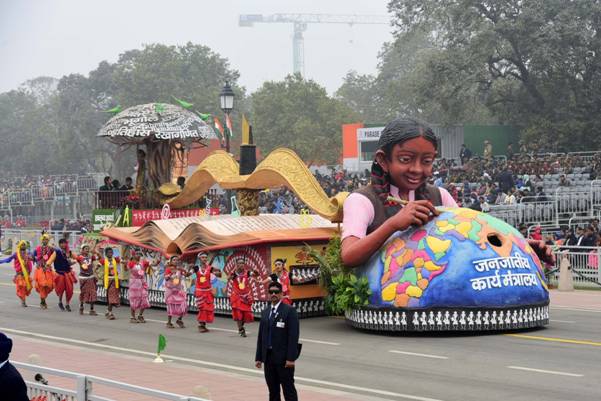
- 13 Jul 2025
In News:
In a significant milestone for tribal education in India, nearly 600 students from Eklavya Model Residential Schools (EMRSs) across 12 States have successfully cleared top national-level entrance exams like IIT-JEE (Mains & Advanced) and NEET 2024, as per the recent performance assessment by the Ministry of Tribal Affairs. This marks a remarkable improvement in academic outcomes for Scheduled Tribe (ST) students in government-run residential schools.
Breakdown of Performance (2024-25):
- IIT-JEE Mains: 218 students qualified; ~25 expected to secure admission in NITs.
- IIT-JEE Advanced: 34 students qualified; 18 likely to get admission into IITs.
- NEET: 344 students qualified; 3 expected to be placed in AIIMS, others in top government medical colleges.
This is the first comprehensive data compilation for EMRS performance in national competitive exams, a sharp increase from earlier years when only a few dozen tribal students achieved similar success.
Government Support & Outreach:
To further encourage these meritorious students, the Ministry of Tribal Affairs is launching a dedicated outreach programme:
- Students will be actively supported and hand-held through the post-matric scholarship application process.
- The Scholarship Division of the Ministry will proactively connect with all qualifying students to ensure they receive their entitled financial support.
- This initiative reflects a paradigm shift from passive support to active facilitation.
Institutional and Policy Framework:
- EMRS is a flagship scheme under the Ministry of Tribal Affairs, aimed at providing quality residential education from Class 6 to 12 to tribal students in remote and underdeveloped regions.
- Introduced in 1998, the programme was revamped in 2018–19 to enhance infrastructure and expand coverage.
- Schools are being established in blocks with >50% tribal population and at least 20,000 tribal persons.
- The government has targeted the establishment of 728 EMRSs by 2026.
- The National Education Society for Tribal Students (NESTS), an autonomous body under the Ministry, is tasked with operationalizing these schools.
Key Features of EMRS:
- Co-educational residential schools from Class VI to XII.
- Follow CBSE curriculum; completely free education.
- Special focus on local tribal culture, sports, and skill development.
- Each school has a capacity of 480 students, with gender parity in enrolment.
- Reservation norms: 10% for non-ST students; 20% under sports quota for ST students excelling in sports.
- Infrastructure includes academic blocks, hostels, teacher accommodations, labs, sports grounds, and cultural activity spaces.
Recent Initiatives and Recognition:
- The success is partly attributed to strategic partnerships with reputed coaching institutes facilitated by NESTS for IIT-JEE and NEET preparation.
- Around 85% of EMRS students belong to Scheduled Tribes, including Particularly Vulnerable Tribal Groups (PVTGs).
- The achievements were acknowledged in a high-level review meeting chaired by Union Tribal Affairs Minister Jual Oram and MoS Durgadas Uikey, who lauded the efforts of teachers, administrators, and students.
Advanced Towed Artillery Gun System (ATAGS)
- 12 Jul 2025
In News:
The Advanced Towed Artillery Gun System (ATAGS) marks a significant milestone in India’s defence modernization. Developed indigenously under the ‘Make in India’ initiative, the system is poised to replace the Indian Army’s ageing artillery with cutting-edge, high-performance firepower.
Key Facts:
- Calibre: 155 mm / 52 calibre
- Maximum Range: Up to 48 km, among the longest for towed artillery globally
- Developer: Defence Research and Development Organisation (DRDO) through ARDE (Pune)
- Production Partners: Bharat Forge Ltd and Tata Advanced Systems Ltd
Project Timeline & Cost:
- Project initiated in 2012 and completed within 12 years
- In March 2025, the Defence Ministry signed contracts worth ?6,900 crore for procurement of 307 ATAGS units and associated 6×6 towing vehicles
- Delivery scheduled over five years
Salient Features of ATAGS:
- Firing Modes: Burst, Intense, and Sustained fire
- Firing Capacity: Up to five rounds per minute, 60 rounds per hour
- Automation: Fully electric gun-laying and ammunition handling, replacing conventional hydraulics for enhanced reliability and reduced maintenance
- Shoot-and-Scoot Capability: Quick repositioning post firing to avoid counter-battery fire
- Rapid Deployment: Becomes operational within 90 seconds
- Mobility: Towed by a 6×6 high mobility vehicle, suitable for desert and mountainous terrain
- Ammunition Compatibility: Supports all 155 mm ammunition types including high-explosive, smoke, illumination, and precision-guided shells
- Minimum Range Advantage: Capable of achieving shortest minimum range at high elevation angles
- Operating Conditions: Designed for extreme climates
Strategic Significance:
- Artillery Modernization: Replaces vintage, smaller-calibre guns, enhancing range, accuracy, and tactical mobility
- Indigenous Content: Over 80% components sourced domestically, contributing to Aatmanirbhar Bharat
- Mission Mode Achievement: Described as an "exemplary mission-mode success" by the Ministry of Defence
- Multi-Sector Collaboration: Joint effort between DRDO, Indian Army, public and private sector manufacturers
Broadcasting Infrastructure and Network Development (BIND) Scheme
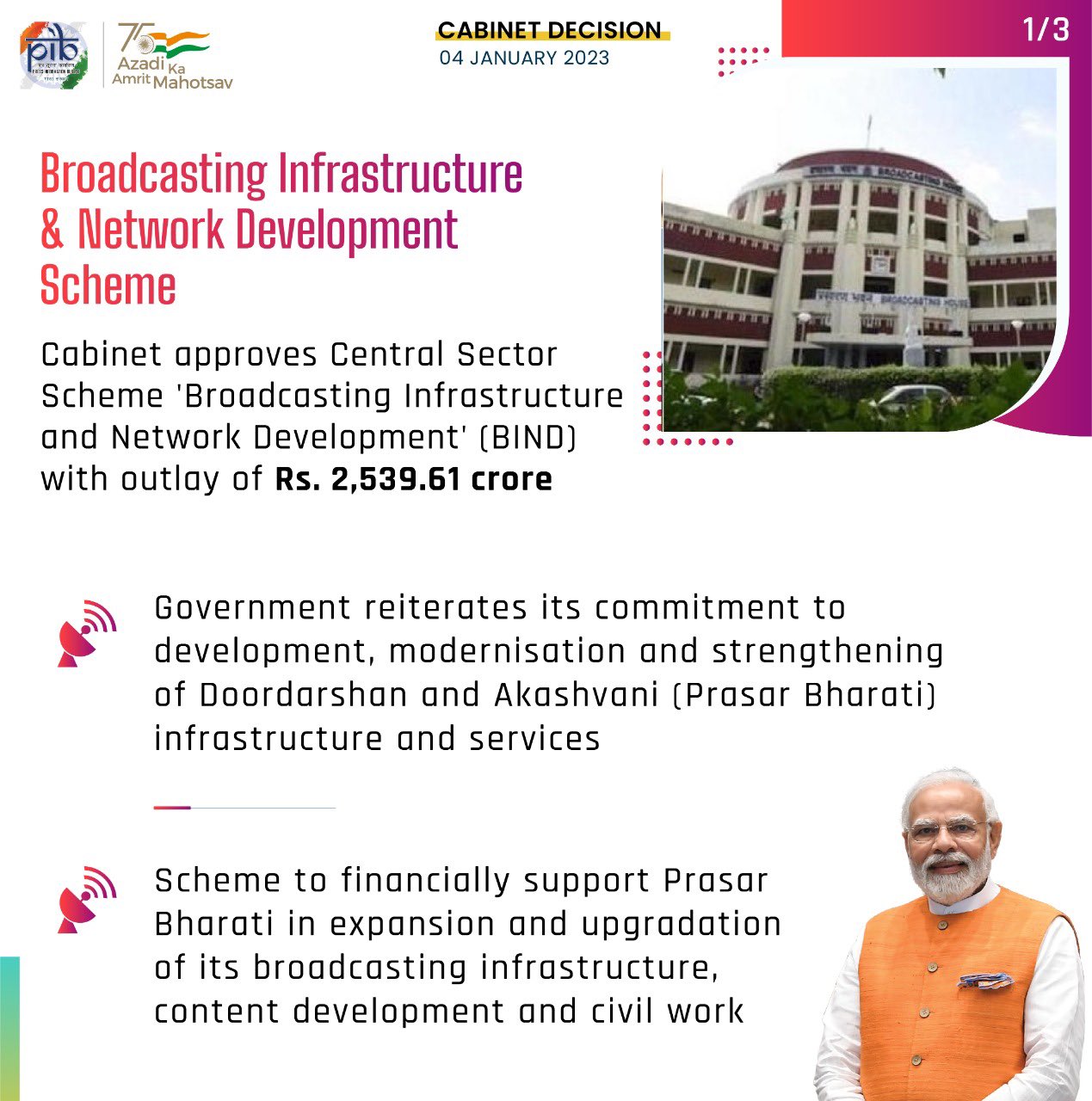
- 12 Jul 2025
In News:
The Government of India has proposed the establishment of a new Akashvani Kendra in Ujjain, Madhya Pradesh, under the Broadcasting Infrastructure and Network Development (BIND) Scheme.
About BIND Scheme
- Type: Central Sector Scheme
- Implementing Agency: Ministry of Information and Broadcasting
- Beneficiary: Prasar Bharati (All India Radio and Doordarshan)
- Objective: To provide financial support for:
- Expansion and modernization of broadcasting infrastructure
- Content development for domestic and international audiences
- Civil works related to Prasar Bharati’s operations
Key Features
- Facilitates technological upgradation of All India Radio (AIR) and Doordarshan (DD)
- Enhances reach in border, Left-Wing Extremism (LWE)-affected, and strategic regions
- Focuses on high-quality and diverse content
- Expands the capacity of the DTH platform, enabling more channels for viewers
- Aims to boost AIR FM coverage from 59% to 66% of India's geographical area and from 68% to 80% of the population
Significance
- Supports regional broadcasting, especially in underserved and aspirational districts
- Promotes cultural preservation and grassroots-level development narratives
- Expected to create indirect employment in manufacturing and broadcast services sectors
- Aids in ensuring last-mile delivery of public communication and information services
The proposed Akashvani Kendra in Ujjain aligns with the broader vision of ‘Viksit Bharat’, focusing on inclusive media access and robust public broadcasting infrastructure. It underscores the growing synergy between the Centre and States to enhance media penetration and communication outreach.
Coartem Baby
- 12 Jul 2025
In News:
In a significant breakthrough in global health, Switzerland has approved Coartem Baby, the first malaria treatment specifically designed for newborns and infants weighing 2–5 kg. Developed by Novartis in collaboration with the Medicines for Malaria Venture (MMV) and international health partners, this pediatric formulation is set to fill a critical treatment gap in malaria-endemic regions.
About Coartem Baby:
- What it is: A pediatric formulation of the antimalarial drug artemether-lumefantrine, customized for babies under 6 months of age (2–5 kg weight range). It is also known as Riamet Baby in some countries.
- Developed by: Novartis, in partnership with MMV, with support from the governments of Switzerland, UK, Netherlands, World Bank, and the Rockefeller Foundation.
- Approval path: Authorized under Swissmedic’s Global Health Products pathway, with fast-track approvals expected in eight African nations: Burkina Faso, Ivory Coast, Kenya, Malawi, Mozambique, Nigeria, Tanzania, and Uganda
Key Features:
- Infant-Specific Design:
- Dose ratio adapted for immature liver function
- Dissolves easily in liquids, including breast milk
- Cherry-flavoured for easier administration
- Public Health Impact:
- Addresses treatment needs of ~30 million newborns born annually in malaria-endemic African countries
- Targets the most vulnerable group previously excluded from clinical trials and vaccination coverage
- Safety Advantage:
- Eliminates the risk of off-label dosing from older children’s formulations
- Offers a clinically proven, age-appropriate treatment alternative
- Access Model: Will be distributed on a largely not-for-profit basis in malaria-endemic countries
Why it matters:
- Fills a Long-standing Treatment Gap: Until now, no antimalarial drug was approved for infants weighing less than 4.5 kg, despite their high risk.
- Impact on Child Mortality:
- As per 2023 data, 597,000 malaria deaths occurred globally, with ~75% among children under 5, mostly in Africa
- The approval of Coartem Baby could drastically reduce mortality in this group
Key Facts about Malaria:
- Cause: Life-threatening illness caused by Plasmodium parasites, transmitted by infected female Anopheles mosquitoes
- Most Dangerous Species:
- Plasmodium falciparum
- Plasmodium vivax
- Transmission: Not contagious person-to-person, but can spread via infected blood or needles
- Symptoms (appear 10–15 days after bite):
- Fever, chills, vomiting, headache
- Severe: seizures, breathing difficulty, jaundice, dark urine, coma, death
- Immunity: Partial immunity can develop in endemic regions, complicating diagnosis
Accelerator Mass Spectrometry (AMS) Dating
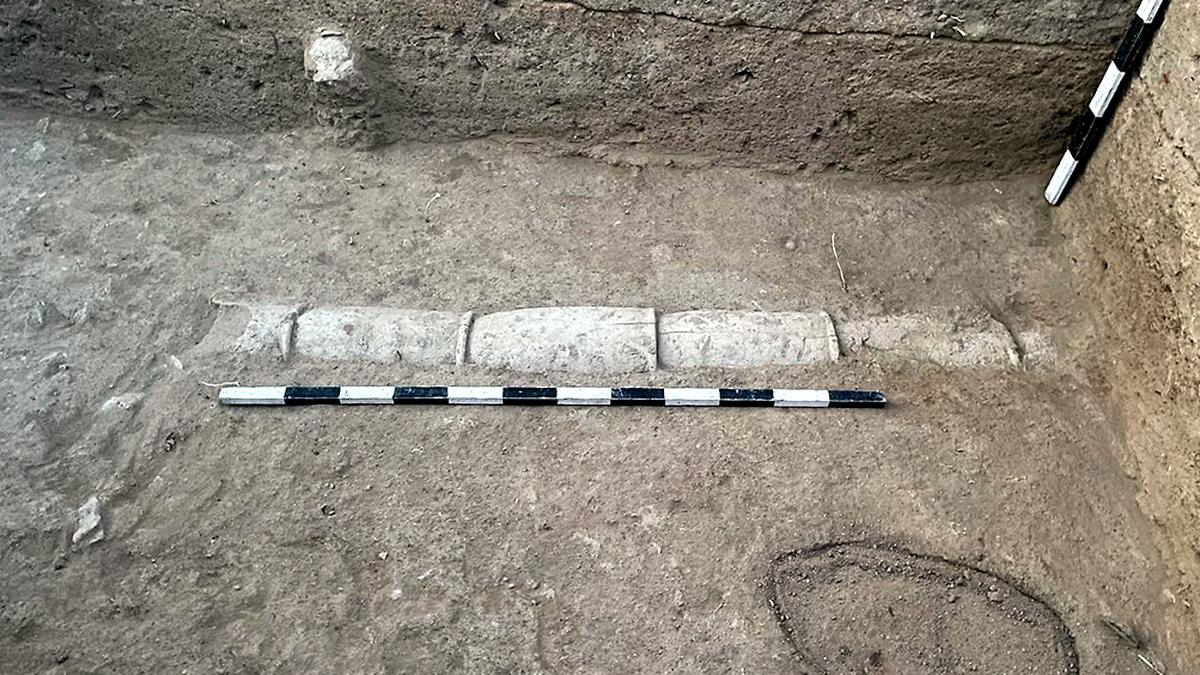
- 12 Jul 2025
In News:
The Tamil Nadu State Department of Archaeology (TNSDA) has sent 23 charcoal samples from seven archaeological excavation sites to the Beta Analytic Laboratory in the United States for Accelerator Mass Spectrometry (AMS) dating, aiming to establish an accurate chronology of the cultural deposits unearthed during the 2024–25 excavation season.
Key Discoveries:
- Keeladi: Over 500 antiquities, 100 inscribed potsherds, including red-slipped ware with fish motifs.
- Porpanaikkottai: From 11 trenches, 1,792 antiquities such as pottery, glass beads, and bangles were found.
- Tirumalapuram: A stone slab chamber with urn burials—a first in Tamil Nadu’s megalithic excavation record.
What is AMS Dating?
- A high-precision radiocarbon dating technique that measures the Carbon-14 (C-14) content in archaeological samples.
- Unlike conventional radiometric methods, AMS counts individual atoms of C-14, not their radioactive decay.
How It Works:
- Sample Preparation: Organic samples like charcoal are chemically treated and converted to graphite.
- Ion Generation: A cesium beam bombards the graphite, generating negatively charged carbon ions.
- Acceleration: Ions are propelled by a tandem electrostatic accelerator to high kinetic energies.
- Stripping & Detection:
- Ions pass through a stripping chamber to become positively charged.
- Magnetic fields separate C-12, C-13, and C-14 isotopes based on mass.
- C-14 atoms are counted to calculate the sample’s age.
Advantages of AMS Dating:
|
Feature |
AMS Dating |
Conventional Radiocarbon Dating |
|
Sample Size |
As little as 20 mg |
Requires ≥10 grams |
|
Precision |
Higher – atom-level count |
Lower – based on decay measurement |
|
Time |
Results within hours to days |
1–2 days or more |
|
Destructiveness |
Less destructive, ideal for rare artifacts |
More sample consumed |
|
Sensitivity |
Detects trace C-14 levels in minute samples like seeds, blood, etc. |
Limited sensitivity |
Applications of AMS:
- Archaeology: Dating of charcoal, wood, bones, pottery layers.
- Climate Science: Carbon mapping in marine and sediment systems.
- Geology/Oceanography: Sediment and core dating.
- Biomedical Research: Drug microdosing, tracing labeled compounds.
Admiralty (Jurisdiction and Settlement of Maritime Claims) Act, 2017
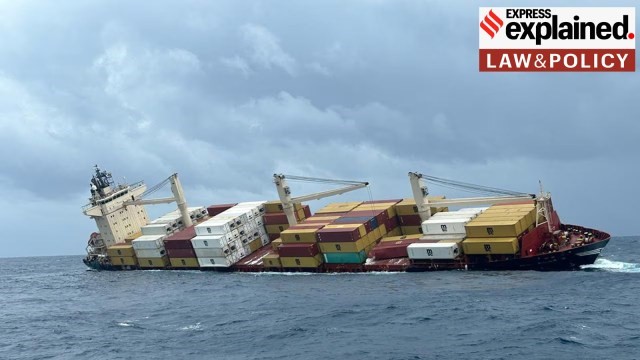
- 12 Jul 2025
In News:
In a rare legal move, the Kerala High Court ordered the conditional arrest of the Liberian container ship MSC Akiteta II, anchored at Vizhinjam Port. The Kerala government filed an admiralty suit seeking ?9,531 crore compensation for alleged environmental and economic damage caused by the sinking of MSC Elsa III.
Legal Framework: Admiralty (Jurisdiction and Settlement of Maritime Claims) Act, 2017
Purpose:
- Consolidates and updates maritime laws in India.
- Replaces outdated colonial legislations like:
- Admiralty Court Act, 1861
- Colonial Courts of Admiralty Acts of 1890 and 1891
- Relevant provisions of Letters Patent, 1865
Applicability:
- Applies to all vessels, regardless of owner’s residence or domicile.
- Exemptions:
- Inland vessels under the Inland Vessels Act, 1917
- Warships and other government vessels used for non-commercial purposes
- Foreign government vessels used for non-commercial purposes (as notified)
Key Provisions:
Section 4 – Maritime Claims:
High Courts can adjudicate disputes related to:
- Damage to vessels or marine environment
- Oil pollution and hazardous cargo
- Ownership or possession of a vessel
- Loss of life or injury due to vessel operations
- Carriage agreements (goods/passengers)
- Claims for unpaid wages, port dues, or cargo losses
Section 5 – Arrest of Vessels:
- Courts may order “arrest” of a ship to secure a maritime claim.
- Arrest can be made even if the ship is not directly involved but is owned by the liable party.
- It serves to ensure that compensation or security is provided before the vessel is released.
- Claimants may be asked to furnish an unconditional undertaking to compensate for wrongful arrest, if proved later.
Jurisdictional Expansion:
- Earlier limited to Bombay, Calcutta, and Madras High Courts.
- Now extended to Kerala, Karnataka, Odisha, Telangana, and Andhra Pradesh as well.
- Jurisdiction covers territorial waters up to 12 nautical miles, including seabed, subsoil, and airspace.
In Rem vs In Personam:
- Legal action can be initiated directly against the vessel (in rem) or against the owner/operator (in personam), based on the nature of the claim.
National Maritime Domain Awareness (NMDA) Project
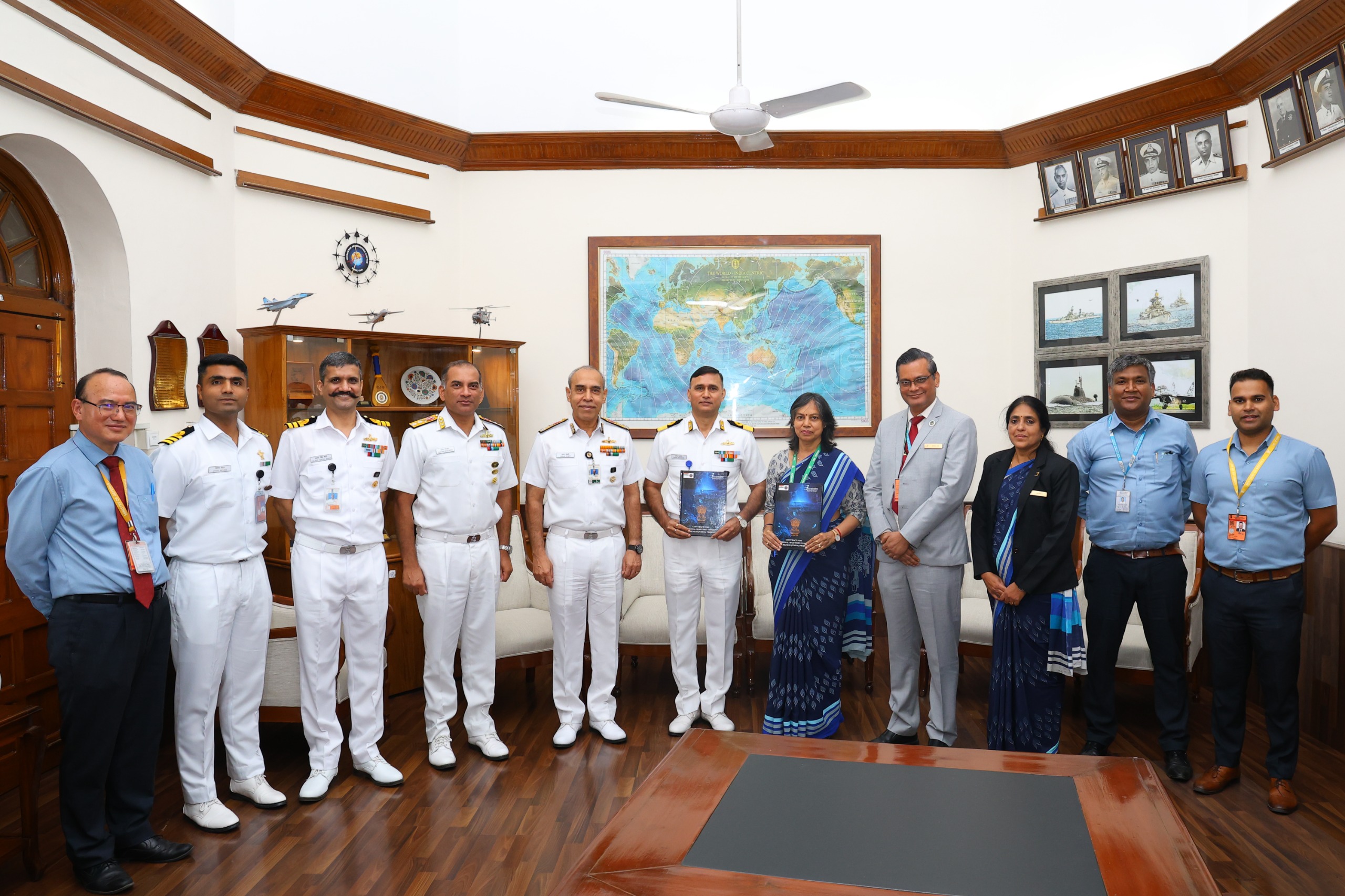
- 11 Jul 2025
In News:
The Indian Navy has signed a significant contract with Bharat Electronics Limited (BEL), Bengaluru for the implementation of the National Maritime Domain Awareness (NMDA) Project, a strategic initiative to strengthen India’s maritime and coastal security infrastructure.
Key Objectives and Scope
- Purpose: The NMDA Project aims to create a unified, real-time maritime surveillance and information-sharing framework to safeguard India's vast coastline and maritime interests.
- It seeks to enhance coordination among maritime stakeholders, including national agencies, coastal states, and union territories.
Major Components of the Project
- Upgrade of NC3I Network: The existing National Command, Control, Communication and Intelligence (NC3I) Network will be upgraded to a more advanced NMDA Network.
- AI Integration: Artificial Intelligence-enabled software will be deployed to enable smart surveillance, automated threat detection, and informed decision-making.
Multi-Agency NMDA Centre
- The Information Management and Analysis Centre (IMAC) at Gurugram — currently the nodal agency of the NC3I Network — will be transformed into a Multi-Agency NMDA Centre.
- The upgraded centre will include representatives from 15 national agencies across seven key ministries, such as Defence, Shipping, Petroleum, and Fisheries, ensuring seamless inter-agency coordination.
Operational and Strategic Benefits
- Integrated Maritime Picture: The system will link various stakeholders to provide a comprehensive operational view of India’s maritime domain.
- Enhanced Response: It will improve response mechanisms to maritime threats, search and rescue operations, environmental incidents, and other contingencies.
- Data Integration: Inputs from sectors such as commercial shipping and fisheries will be integrated into the system for improved situational awareness.
Execution and Administration
- The project will be implemented on a turnkey basis and administered by the Indian Navy.
- BEL will act as the lead system integrator, delivering both hardware and AI-enabled software solutions for the project.
Miniature Plasma Loops
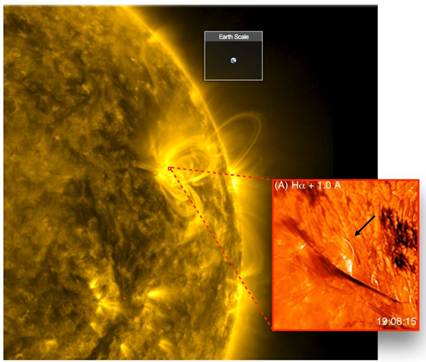
- 11 Jul 2025
In News:
A significant discovery by Indian and international astronomers has unveiled the existence of miniature plasma loops in the lower layers of the Sun’s atmosphere, shedding new light on how the Sun stores and releases magnetic energy—a long-standing mystery in solar physics.
- These loops are tiny in scale, measuring 3,000–4,000 km in length and less than 100 km in width, making them difficult to detect with earlier instruments. Despite their short lifespan of only a few minutes, they offer crucial insights into magnetic reconnection—a process where tangled magnetic field lines snap and realign, releasing immense energy.
- The research was led by scientists at the Indian Institute of Astrophysics (IIA), Bengaluru, under the Department of Science and Technology (DST), in collaboration with global institutions including NASA, the Max Planck Institute, and the Big Bear Solar Observatory (BBSO).
Key Findings and Instruments Used
- The team used high-resolution imaging and multi-wavelength spectroscopy, combining data from the Goode Solar Telescope (BBSO), NASA’s IRIS, and the Solar Dynamics Observatory (SDO).
- The loops were observed in the H-alpha spectral line from hydrogen atoms—crucial for studying the solar chromosphere.
- Spectroscopic data from IRIS revealed non-thermal broadening of spectral lines, indicating explosive magnetic activity.
- Plasma jets erupting from the tops of these loops point to reconnection-driven events, similar to those that cause large-scale solar eruptions.
- Using Differential Emission Measure (DEM) analysis, the plasma inside these tiny loops was found to reach temperatures of several million degrees, which is unexpectedly high for regions in the dense chromosphere.
Why It Matters
- Although coronal loops in the outer solar atmosphere have been studied for decades, these miniature loops offer a unique window into the fine-scale dynamics of the Sun's magnetic environment. Understanding them is crucial for grasping the mechanisms behind solar flares, coronal heating, and space weather phenomena that impact Earth.
Future Prospects
- The findings highlight the need for next-generation solar observatories. India’s upcoming National Large Solar Telescope (NLST)—a 2-meter aperture facility proposed near Pangong Lake, Ladakh—aims to provide sharper images of the Sun’s chromosphere and better magnetic field data.
Great Hornbill Sighting
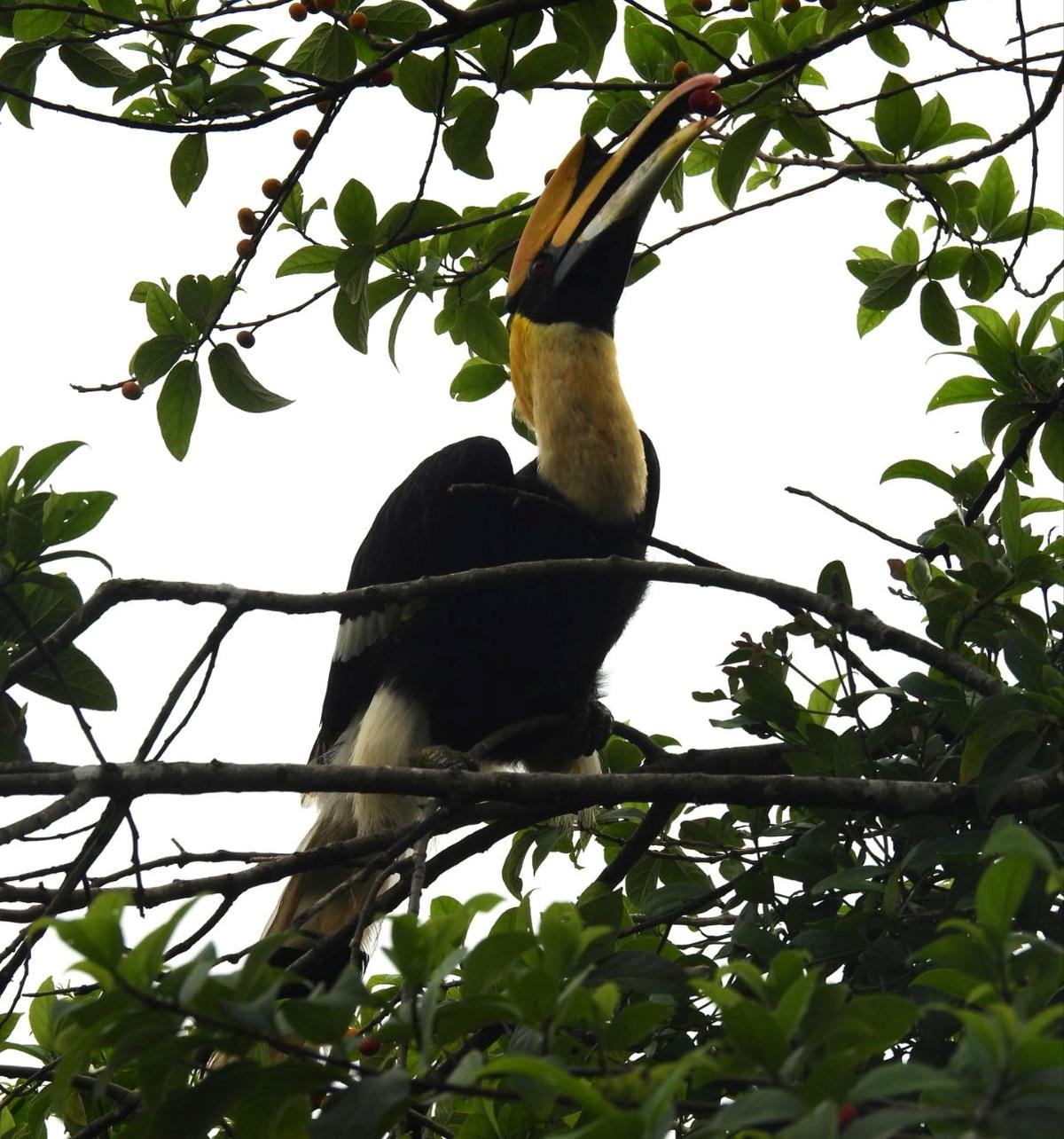
- 11 Jul 2025
In News:
In a rare and ecologically significant event, the Great Hornbill (Buceros bicornis), Kerala’s State Bird, was recently spotted in the coastal belt of Kakkampara, near Ezhimala in Kannur district. This area lies well outside the species’ typical forested habitats, making the sighting both unusual and important for biodiversity assessments.
About the Great Hornbill
- The Great Hornbill, also known as the great Indian hornbill or great pied hornbill, is one of the largest members of the hornbill family.
- It is primarily found in the Western Ghats, forests along the Himalayas, and parts of Southeast Asia.
- Its preferred habitat includes wet evergreen and moist deciduous forests at elevations between 600 to 2000 meters.
- This large, vividly colored bird measures between 95 to 120 cm in length with a wingspan of 151 to 178 cm, and typically weighs around 3 kilograms.
- The hornbill is easily identifiable by its prominent casque, a hollow structure on top of its large yellow bill. Males and females look similar, although males can be distinguished by their red irises and slightly larger casques, whereas females have white irises.
- Hornbills are primarily frugivorous, feeding on a variety of forest fruits, especially figs. However, they are opportunistic and may also consume small reptiles, birds, and mammals.
- A distinctive feature of the Great Hornbill is the tinted oil secreted by its preen gland, which gives its feathers, bill, and casque a yellow to reddish hue during grooming.
Conservation Status and Legal Protection
- The Great Hornbill is listed as ‘Vulnerable’ on the IUCN Red List due to habitat loss, hunting, and fragmented populations.
- In India, it is provided the highest level of protection under Schedule I of the Wildlife (Protection) Act, 1972, making it illegal to hunt or trade the species.
Ecological Importance of the Ezhimala Sighting
The occurrence of the Great Hornbill in a coastal region far from its usual forest range is considered a valuable ecological indicator. Experts believe such sightings could hint at changing habitat patterns, microhabitat availability, or even displacement due to habitat disturbance in core forest areas. The area around Ezhimala, despite human habitation, appears to sustain enough ecological richness to attract such a rare forest species.
India’s Battery Passport System
- 11 Jul 2025
In News:
The Government of India is preparing to implement a Battery Passport framework to enhance safety, traceability, and export readiness of electric vehicle (EV) batteries. The initiative is being spearheaded by NITI Aayog in collaboration with multiple ministries and stakeholders.
What is a Battery Passport?
A Battery Passport is a digital identity assigned to each EV battery, embedded in a QR code, which stores complete lifecycle information. This includes:
- Origin and manufacturing details
- Chemical composition and configuration
- Performance metrics and carbon footprint
- Date of manufacture and service history
- End-of-life data for recycling and reuse
The system assigns each battery a unique ID, akin to an Aadhaar for batteries, ensuring transparency and traceability across its lifecycle.
Key Features:
|
Feature |
Description |
|
QR Code Integration |
Allows users and service providers to scan and access battery details |
|
Lifecycle Tracking |
Monitors battery data from production to disposal |
|
Unique Digital Identity |
Each battery is individually identifiable, preventing cell mismatch |
|
Real-Time Monitoring |
Tracks performance, degradation, and usage patterns |
|
Standardised Data Format |
Includes manufacturer info, batch ID, composition, carbon metrics |
|
Controlled Data Access |
Enables secure sharing with regulators, manufacturers, and recyclers |
|
EU Compliance Ready |
Aligns with European Union regulations for batteries above 2 kWh |
Why is it Needed?
- Battery Safety: Addresses concerns due to frequent EV fire incidents linked to faulty or mismatched battery cells.
- Battery Swapping: Ensures interoperability and standardisation, essential for the upcoming battery-swapping policy.
- Export Promotion: Positions Indian batteries to comply with global traceability norms, especially in EU markets.
- Lifecycle & Performance Transparency: Batteries make up ~40% of EV cost; users benefit from informed decision-making.
- Circular Economy: Facilitates reuse, recycling, and end-of-life recovery to promote sustainability.
Expected Benefits
- Improved EV safety and reliability
- Enhanced consumer confidence
- Boost to India’s EV exports
- Support for circular economy in battery usage
- Industry-wide quality and compliance enforcement
Vera C. Rubin Observatory
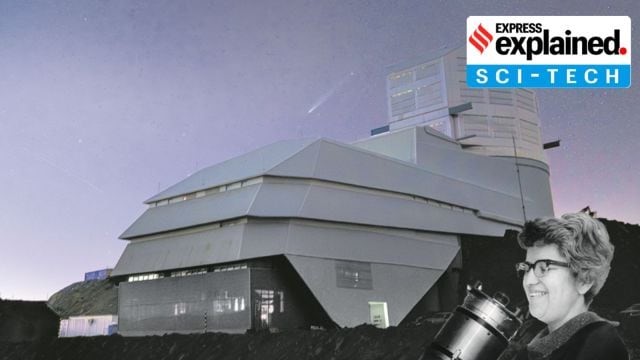
- 11 Jul 2025
In News:
The Vera C. Rubin Observatory in Chile has unveiled its first stunning images, highlighting the capabilities of its 3,200-megapixel digital camera — the most powerful ever constructed.
Location and Background:
- Situated 8,684 feet above sea level on Cerro Pachón mountain, Chilean Andes.
- Named after Vera C. Rubin, the astronomer who first provided evidence for dark matter in the 1970s.
- Joint initiative of the U.S. Department of Energy (DOE) and the National Science Foundation (NSF).
Objective:
The observatory aims to conduct an unprecedented 10-year survey of the southern sky, addressing critical questions like:
- Structure and formation of the Milky Way
- Existence of Planet 9
- Detection of potentially hazardous asteroids
- Nature of dark matter and dark energy
Key Features:
1. Simonyi Survey Telescope
A state-of-the-art telescope, unique for:
a) Wide Field of View:
- Captures an area equivalent to 40 full Moons in a single shot.
- Utilizes a three-mirror design:
- Primary Mirror: 8.4 m
- Secondary Mirror: 3.5 m
- Tertiary Mirror: 5 m (part of primary)
- Enables scanning of the entire visible sky every three nights.
b) Largest Digital Camera in the World:
- Size: Comparable to a small car
- Weight: 2,800 kg
- Resolution: 3,200 megapixels
- Sensor sensitivity: Detects objects 100 million times dimmer than visible to the naked eye
- Has six optical filters to capture various wavelengths (e.g., UV for hot stars, IR for distant galaxies)
c) Fastest Slewing Capability:
- Adjusts from one celestial target to another in just five seconds
- Enables up to 1,000 images per night
Scientific Potential and Impact
- Will collect 20 terabytes of data every night, generating nearly 10 million alerts per night for any detected changes in the sky.
- Already identified 2,104 new asteroids, including 7 near-Earth objects, using only 10 hours of preliminary data.
- Expected to catalogue:
- 5 million+ asteroids
- 100,000 near-Earth objects
- More than double the total known asteroids within a year of full operation
- Facilitates a high-resolution map of the universe’s structure—vital to understand the distribution of dark matter and dark energy, which together constitute 95% of the universe.
Sheesh Mahal
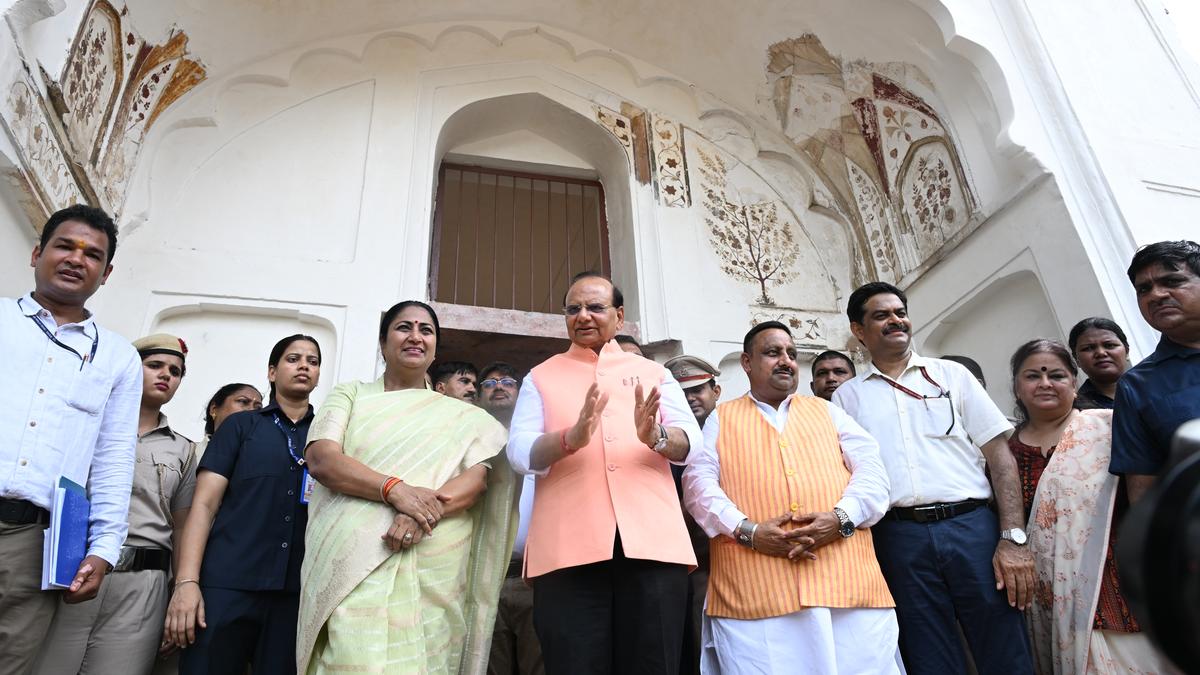
- 10 Jul 2025
In News:
The Sheesh Mahal, a 17th-century Mughal-era palace located in Shalimar Bagh, North Delhi, was recently restored and reopened to the public by the Union Culture and Tourism Minister. The restoration was carried out by the Archaeological Survey of India (ASI) and the Delhi Development Authority (DDA).
About Sheesh Mahal
- Built in 1653 by Izz-un-Nisha Begum, wife of Mughal Emperor Shah Jahan.
- Inspired by and a replica of Shalimar Bagh in Kashmir, designed as a royal retreat from Shahjahanabad.
- The garden was originally called Aizzabad Garden, later renamed Shalimar, meaning “abode of pleasure”.
- The palace was the site of Aurangzeb’s first coronation in 1658.
- Declared a monument of national importance in 1983, under ASI protection.
Architectural Features
- Constructed using red sandstone and brick masonry.
- Features archways, three-arched dalans, and a central hall with compartments on each wing.
- A Baradari (pavilion) lies in the main building with a water channel passing through it.
- Houses mirror-worked chambers with paintings in Kangra and Rajasthani qalam, depicting poetic imagery by Keshav, Surdas, and Bihari.
- Adjacent structure served as a Hamam (bathhouse).
Restoration Highlights
- ASI restored the palace’s original heritage features.
- DDA recreated the traditional Mughal Char Bagh-style landscape.
- Traditional materials used: Lime surkhi, lakhori bricks, gud (jaggery), belgiri, and urad dal.
- An old baradari and three heritage cottages were also restored.
New Additions for Public Engagement
- Two heritage cottages repurposed:
- The Readers Café Corner – a literary café.
- Café Shalimar – for general visitors.
2nd Edition of the NER District SDG Index
- 10 Jul 2025
In News:
NITI Aayog, in collaboration with the Ministry of Development of North Eastern Region (MoDoNER) and with technical support from UNDP, released the second edition of the North Eastern Region District SDG Index (2023–24).
About the NER District SDG Index
- First Edition: Released in August 2021
- Current Edition: Covers 121 districts across the 8 North Eastern States
- Developed By: NITI Aayog, MoDoNER, and UNDP
- Purpose:
- Monitor district-wise progress on Sustainable Development Goals (SDGs)
- Provide evidence-based planning, resource allocation, and intervention strategies
- Ensure localisation of SDGs and leave no one behind
Scoring Categories
Districts are classified into four categories:
- Achiever: Score = 100
- Front Runner: Score 65–99
- Performer: Score 50–64
- Aspirant: Score < 50
Composite Score Range:
- Highest: Hnahthial, Mizoram – 81.43
- Lowest: Longding, Arunachal Pradesh – 58.71
Key Highlights
- 85% of districts showed an increase in composite scores.
- All districts of Mizoram, Sikkim, and Tripura attained Front Runner status.
- Hnahthial (Mizoram) emerged as the best-performing district.
- Nagaland entered the Top 10 with 3 districts.
- Sikkim showed the most consistent intra-state performance with a score range of just 5.5 points.
- Assam saw notable improvements in Zero Hunger, Quality Education, Clean Water & Sanitation, and Decent Work & Economic Growth.
Top Performing Districts
Significance
- Supports the Viksit Bharat @2047 vision by targeting SDG achievement by 2030.
- Enhances cooperative federalism by aligning state and district efforts with national goals.
- Acts as a diagnostic and planning tool for identifying gaps and prioritising interventions.
UAE Golden Visa Scheme
- 10 Jul 2025
In News:
The United Arab Emirates (UAE) has introduced a nomination-based pilot Golden Visa programme targeting skilled individuals from India and Bangladesh. However, recent rumours around a ?23 lakh “lifetime visa” triggered misinformation, later debunked by UAE authorities.
What is a Golden Visa?
- A long-term residency visa allowing foreign nationals to live, work, or study in the UAE without a local sponsor.
- Designed to attract investors, entrepreneurs, scientists, and skilled professionals.
- Offers 5 to 10 years of renewable residency, and in some cases, lifetime validity under specific frameworks.
Key Features of the UAE Golden Visa Scheme
|
Feature |
Details |
|
Residency |
Long-term (5–10 years); in some cases lifetime under nomination |
|
Sponsorship |
Not required (self-sponsored) |
|
Eligibility Categories |
Investors, entrepreneurs, scientists, doctors, artists, athletes, PhD holders, exceptional students |
|
Benefits |
Sponsor family and domestic staff; multiple entry; no need to stay in UAE continuously |
|
New Nomination-Based Model |
Pilot phase launched for India and Bangladesh — selection based on professional merit and contributions |
|
Application Process |
Managed through UAE’s official channels; some remote application facilities (e.g., OneVASCO centres) available |
|
No Minimum Investment Requirement (in new model) |
Unlike earlier versions requiring AED 2 million+ in assets or business |
Controversy: ?23 Lakh ‘Lifetime Golden Visa’ Rumour
- A viral rumour claimed that Indians could buy a lifetime UAE Golden Visa for ?23.3 lakh (AED 1,00,000).
- Debunked by UAE Government within 48 hours as false and misleading.
- Originated from a press release by Rayad Group, later withdrawn and discredited.
- UAE authorities clarified: No consultancy is authorised to process Golden Visas outside official channels.
- Golden Visas are not available for simple purchase; eligibility is merit-based, not transactional.
Eligibility vs. Misconception
- Golden Visas are for High Net-Worth Individuals (HNWIs) and exceptional talent — not for general migration or middle-class aspirations.
- Traditional routes still require investments of AED 2 million (~?4.67 crore) or equivalent in real estate or business.
Comparison with Other Countries’ Golden Visa Models
|
Country |
Investment Requirement |
|
Portugal |
€500,000 real estate / job creation / capital transfer |
|
Greece |
€250,000 property (rising in urban areas) |
|
Italy |
Startups, bonds, or public projects |
|
Singapore |
SGD 2.5 million under Global Investor Programme |
|
Grenada |
$235,000 donation or $270,000 property for citizenship |
|
UAE (Traditional) |
AED 2 million in real estate or business assets |
Significance for India-UAE Relations
- Enhances people-to-people links under the India–UAE Comprehensive Economic Partnership Agreement (CEPA).
- Offers Indian professionals access to UAE’s innovation, business, and academic ecosystem.
- Promotes economic diversification of UAE beyond oil — with India as a strategic partner.
Amaravati Quantum Valley Declaration (AQVD)

- 10 Jul 2025
In News:
The Government of Andhra Pradesh has officially approved the Amaravati Quantum Valley Declaration (AQVD), aiming to transform Amaravati into India’s first Quantum Valley and a global hub for quantum technologies.
What is AQVD?
- A strategic framework signed by the Andhra Pradesh Government, IBM, TCS, L&T, academia, and startups.
- It envisions a collaborative ecosystem for quantum computing, communication, sensing, and chip development.
- Seeks to align with India’s National Quantum Mission (NQM) to position Amaravati as a deep-tech capital.
Key Features and Targets
- Investment Goals: Total investment target of $1 billion by 2029, with $500 million by 2027.
- QChipIN: Creation of India’s largest open quantum testbed, integrating quantum computers and enabling hands-on innovation.
- Focus Areas: Quantum computing, quantum chip design, sensing technologies, and secure quantum communication.
- Skilling & Research: Encourages development of quantum talent and promotes industry-academia synergy.
Quantum Computing – Core Concepts
- Qubit: Basic unit of quantum data, unlike classical bits, can be in a state of superposition (0 and 1 simultaneously).
- Superposition: Enables parallel processing.
- Entanglement: Qubits can be interlinked, allowing instantaneous state sharing.
- Quantum Gates: Analogous to classical logic gates but work on qubits to perform complex operations.
Strategic & National Significance
- Dual-Use Technology: Quantum computing impacts national security, health, climate modeling, logistics, cryptography, and more.
- Data Sovereignty: Reduces dependence on foreign cloud-based quantum platforms.
- Global Competitiveness: Puts India on the map with nations like the US, China, and the EU in the quantum race.
Related National Initiatives
- National Quantum Mission (NQM):
- Launched with ?6,003 crore outlay.
- Target: Develop quantum computers with 50–1000 qubits by 2031.
- QpiAI-Indus (2025): India’s first full-stack quantum computer with 25 superconducting qubits.
- ISRO-SAC Projects: Satellite-based Quantum Key Distribution (QKD) for ultra-secure communications.
- Quantum Materials: Focus on superconductors and topological materials for robust devices.
Challenges Ahead
|
Challenge |
Description |
|
Decoherence |
Qubits are unstable and prone to error. |
|
Scalability |
Building large-scale, fault-tolerant systems is difficult. |
|
Cost |
Requires ultra-cold cryogenic systems and electromagnetic shielding. |
Japonica Rice

- 10 Jul 2025
In News:
The National Institute of Plant Genome Research (NIPGR), New Delhi, has successfully used CRISPR-Cas9 gene-editing technology to develop japonica rice lines with enhanced phosphate uptake, leading to up to 40% higher yield under limited fertilizer conditions. The research is published in the Plant Biotechnology Journal.
Background: Phosphorus and Agriculture
- Phosphorus (P) is vital for plant growth, involved in photosynthesis, energy transfer, and root development.
- However, only 15–20% of phosphate fertilizers are absorbed by crops; the rest is lost due to leaching or chemical fixation in soils.
- India imports ~4.5 million tonnes of DAP (Diammonium Phosphate) annually, making it crucial to improve P-use efficiency.
The Innovation: CRISPR-Based Precision Editing
- Target Gene: OsPHO1;2, a phosphate transporter responsible for P movement from root to shoot.
- Repressor Gene Identified: OsWRKY6, a negative regulator of OsPHO1;2.
- Initial approach (complete knockout of repressor) caused negative effects due to loss of other essential functions.
- Final strategy: Only the 30 base-pair binding site of OsWRKY6 on the promoter was deleted using CRISPR-Cas9, ensuring:
- Increased transporter expression
- Normal functioning of other plant processes
- Enhanced phosphate transfer and absorption
Key Outcomes:
- Yield Increase:
- 20% with full phosphate dose
- 40% with only 10% of recommended fertilizer
- Improved panicle number and seed count
- No compromise on seed size, starch content, or quality
- Roots acted as efficient phosphate sinks, absorbing more P from soil
- Gene-editing localized to promoter site, ensuring minimal genetic disturbance
Safety and Regulatory Assurance
- No off-target effects: Verified using leading in silico tools and genome analysis
- No foreign DNA in final seeds: Foreign genes (e.g., Cas9, Agrobacterium vector) eliminated via Mendelian segregation
- Plants with precise edits were screened and only accurate lines were cultivated further
Significance for India
- Phosphorus-deficient soils are common across India, especially in alkaline or acidic regions
- Potential application to indica rice varieties, widely grown in India
- Supports sustainable agriculture by reducing fertilizer usage and environmental runoff
- Strengthens food security and reduces import dependency on fertilizers
About Japonica Rice:
- One of the two main varieties of Oryza sativa (the other is Indica)
- Short, sticky grains; grown primarily in Japan, Korea, China, and other East Asian countries
- Model variety used: Nipponbare, due to ease of genetic manipulation
- Japonica is commonly used in research; adaptation to Indian indica cultivars is under process
National Overseas Scholarship Scheme

- 09 Jul 2025
In News:
The Ministry of Social Justice and Empowerment has come under scrutiny after withholding provisional award letters for 66 out of 106 selected candidates under the National Overseas Scholarship (NOS) scheme for the 2025–26 cycle. This development has raised concerns regarding funding gaps, administrative bottlenecks, and the future of the scheme intended to uplift marginalised students through access to global education.
About the National Overseas Scholarship Scheme
- The NOS is a Central Sector Scheme aimed at enabling students from socially and economically disadvantaged communities to pursue postgraduate (Master’s) and doctoral (Ph.D.) education abroad in top-ranking universities.
- It provides financial assistance for tuition, living expenses, contingency costs, and travel.
- Administered by: Ministry of Social Justice and Empowerment
- Target Beneficiaries:
- Scheduled Castes (SCs)
- Denotified, Nomadic, and Semi-Nomadic Tribes
- Landless Agricultural Labourers
- Traditional Artisans
- Eligibility Criteria:
- Academic Qualification:
- Master’s: Bachelor’s degree with ≥ 60%
- Ph.D.: Master’s degree with ≥ 60%
- Age Limit: Not more than 35 years as on April 1 of the selection year.
- Income Limit: Annual family income should not exceed ?8 lakh.
- University Criteria: Unconditional admission in Top 500 QS-ranked institutions.
- Other Conditions:
- A maximum of 2 students per family (second eligible only if slots remain).
- Not already settled or studying abroad.
- Key Features:
- Total Annual Slots: 125
- 115 for SCs, 6 for Denotified Tribes, 4 for Labourers/Artisans
- 30% reserved for women candidates
- Two-Phase Selection:
- First: QS Top 500 mandatory
- Second: Open to broader university lists
- State Cap: Maximum 10% slots per state to ensure geographic diversity
Ongoing Evaluation and Policy Review
- The government is currently conducting a performance evaluation of the NOS scheme ahead of its 16th financial cycle (2026–27). This includes assessing issues related to fund disbursal, slot utilization, and implementation gaps.
- A Parliamentary Standing Committee on Social Justice and Empowerment had earlier flagged:
- Insufficient scholarship amounts
- Persistent delays in fund release
- Underutilization of slots
- Need for expanding coverage and increasing annual slots
17th BRICS Summit 2025
- 09 Jul 2025
In News:
The 17th BRICS Summit was held in Rio de Janeiro, Brazil under the theme:
“Strengthening Global South Cooperation for a More Inclusive and Sustainable Governance.”
The summit concluded with the adoption of the Rio de Janeiro Declaration, marking a strategic shift towards BRICS expansion, inclusive multilateralism, and South-South cooperation.
What is BRICS?
- BRICS is an intergovernmental platform of emerging economies originally comprising Brazil, Russia, India, China, and South Africa.
- The term BRIC was coined by economist Jim O’Neill in 2001.
- The grouping evolved from informal dialogue (1st Summit in 2009, Yekaterinburg) to a structured cooperation framework.
- In 2024–25, BRICS underwent expansion and is now referred to as BRICS+.
Key Highlights of the 17th BRICS Summit 2025
1. Expansion of Membership
- Indonesia formally joined BRICS in 2025, becoming its first Southeast Asian member.
- Eleven new BRICS+ partner countries were welcomed: Belarus, Bolivia, Kazakhstan, Cuba, Nigeria, Malaysia, Thailand, Vietnam, Uganda, Uzbekistan.
- The expansion aims to reshape global power dynamics, promote multipolarity, and deepen Asia-Africa-Latin America cooperation.
2. Rio de Janeiro Declaration: Major Themes
A. Global Governance Reform
- Strong call for reforming UNSC, IMF, WTO to reflect contemporary geopolitical and economic realities.
- Supported the UN Summit of the Future's “Pact for the Future”, including the Global Digital Compact and Declaration on Future Generations.
- Emphasized greater participation of the Global South in international decision-making.
B. Peace and Security
- Condemned terrorism in all forms; specifically denounced the Pahalgam attack in India.
- Called for zero tolerance for terrorism and decisive global action against sponsors of terror.
- Opposed securitizing climate change; advocated development-centric responses to global challenges.
C. Technology and Responsible AI
- Released a Statement on Global AI Governance promoting a balance between innovation and regulation.
- Proposed the creation of a BRICS Science & Research Repository to facilitate open access for Global South researchers.
D. Climate Action
- Reaffirmed commitment to the Paris Agreement and UNFCCC principles, especially Common But Differentiated Responsibilities (CBDR).
- Supported Brazil’s hosting of COP-30 (Belem) and endorsed India’s bid for COP-33 in 2028.
- Launched the BRICS Leaders’ Framework on Climate Finance to enhance climate adaptation and finance equity.
E. Economic and Financial Cooperation
- Reviewed the BRICS Economic Partnership Strategy 2025; agreed to frame the 2030 Strategy, focusing on:
- Digital economy
- Trade and investment
- Financial integration
- Sustainable development
- Emphasized inclusive, rules-based multilateral trade systems.
- Launched BRICS Multilateral Guarantee Mechanism (BMG) under New Development Bank (NDB) to catalyze infrastructure and climate finance.
F. Social and Cultural Priorities
- Focus on inclusive development through:
- Empowerment of youth and women
- Support for persons with disabilities
- Urbanization and migration management
- Recognized demographic transitions as opportunities for sustainable growth.
India at BRICS 2025
India played a pivotal role in shaping key summit outcomes and announced its BRICS Chairship for 2026, themed around: Building, Resilience, Innovation, Cooperation, and Sustainability.
India’s Key Interventions:
- Global Financial Reform: Advocated for de-dollarization and diversification of global trade currencies.
- Digital Governance: Pushed for interoperable, inclusive digital public infrastructure.
- Institutional Reform: Reiterated the urgent need to restructure global governance institutions.
- Climate Finance: Urged equitable climate financing mechanisms for developing nations.
On BRICS Currency:
- India rejected the idea of a common BRICS currency, but supported local currency trade under a National Currency Settlement Framework.
- Refused to settle Russian oil trade in Chinese Yuan, indicating resistance to Chinese monetary dominance within BRICS.
Geopolitical Implications and U.S. Response
- With BRICS now representing 45% of the global population and 35% of world GDP, the bloc's rise has triggered concern in Western circles.
- The U.S., under former President Donald Trump, warned of:
- 10% tariff on countries aligning with BRICS’ "anti-American" stances.
- 100% tariff if BRICS pursues de-dollarization, viewing it as a direct challenge to U.S. economic interests.
Discovery of Penico
- 09 Jul 2025
In News:
Archaeologists have recently uncovered a significant archaeological site in northern Peru—an ancient city named Penico, estimated to be around 3,500 years old. The discovery sheds new light on early urban development, trade networks, and cultural evolution in pre-Inca South America.
Location and Time Period
- Geographic Location: Penico is located in the Barranca Province of northern Peru, approximately 200 km north of Lima, the capital.
- Altitude: The site is situated on a hillside terrace, around 600 metres above sea level.
- Estimated Age: The city is believed to have been founded between 1800 BCE and 1500 BCE, roughly during the same period as early civilizations in Egypt, Sumeria, and the Indus Valley.
Key Features of the Site
Urban and Architectural Highlights:
- The city is laid out around a central circular plaza, encircled by at least 18 identified stone-and-mud structures.
- Structures include:
- Ceremonial temples
- Residential complexes
- Public gathering areas with sculpted wall reliefs
Notable Artifacts:
- Clay figurines depicting human and animal forms
- Pututus (conch shell trumpets), traditionally used for long-distance communication
- Beaded necklaces and ceremonial artifacts crafted from shells and stones
Cultural and Historical Significance
Strategic Importance:
- Penico’s elevated location likely served both practical and symbolic purposes—protecting against natural disasters such as floods or landslides, while also enhancing the visibility and monumentality of its structures.
- The city’s placement made it a vital trading nexus, linking communities across the Pacific coast, Andean highlands, and the Amazon basin.
Link to the Caral Civilization:
- Penico is situated near the ancient city of Caral, considered the oldest known civilization in the Americas (dating back to 3000 BCE in the Supe Valley).
- Researchers suggest that Penico represents a cultural continuation or evolution of the Caral society, which declined due to climatic disruptions.
- The discovery of Penico offers valuable insight into how civilizations adapted and transitioned post-Caral, particularly in terms of urban planning, trade, and ceremonial practices.
Comparative Civilizational Context:
- Despite emerging in geographic isolation, Penico developed contemporaneously with Bronze Age civilizations of Mesopotamia, the Nile Valley, and South Asia, showcasing parallel patterns in complex societal development.
International Treaty on Plant Genetic Resources for Food and Agriculture (ITPGRFA)
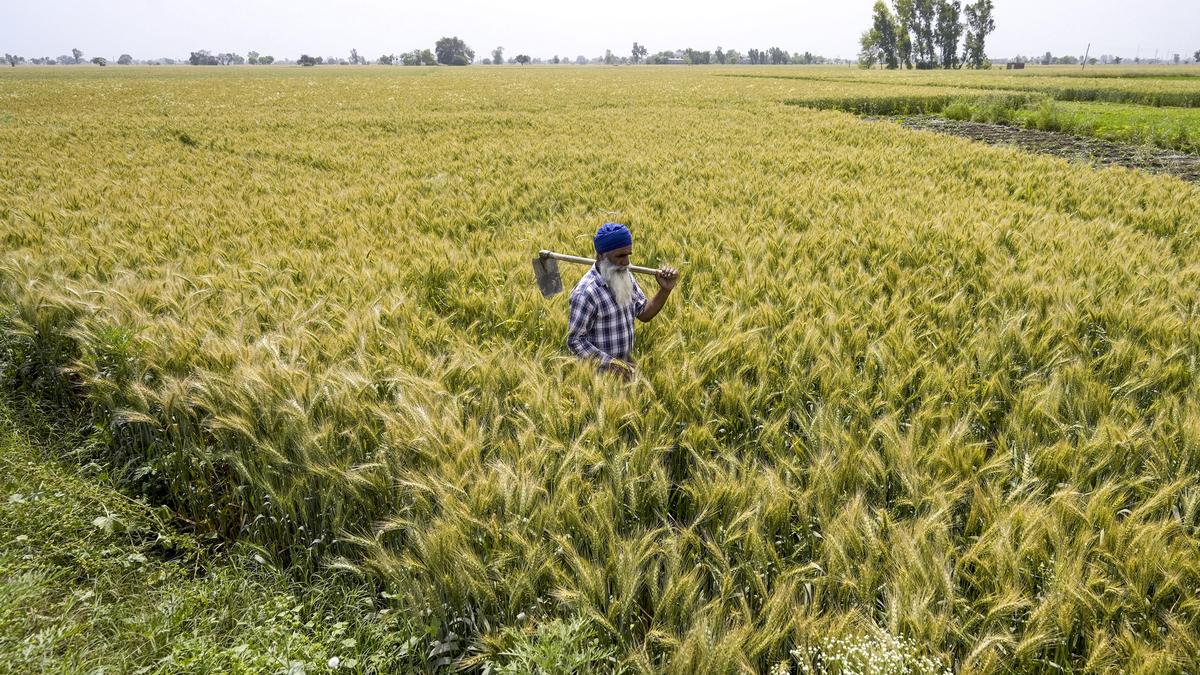
- 09 Jul 2025
In News:
India has raised strong objections to proposed amendments to the International Treaty on Plant Genetic Resources for Food and Agriculture (ITPGRFA)—also known as the Plant Treaty—during recent deliberations in Peru. The concerns stem from potential implications for India’s sovereign rights over plant genetic resources and its traditional farming practices.
About the Plant Treaty
The Plant Treaty is a legally binding international agreement, adopted by the Food and Agriculture Organization (FAO) in 2001 and enforced from 2004. India is a signatory to the treaty. It is aligned with the Convention on Biological Diversity (CBD) and supports the FAO’s Global Plan of Action.
Key Objectives:
- Conservation and sustainable use of plant genetic resources for food and agriculture (PGRFA).
- Equitable sharing of benefits arising from the use of these resources.
- Ensuring food security and preserving agrobiodiversity, especially for climate-resilient agriculture.
Core Features of the Treaty
- Multilateral System (MLS) of Access and Benefit-Sharing:
- Covers 64 major crops (e.g., rice, wheat, maize, pulses) listed in Annex I.
- Facilitates global access to plant genetic materials among member nations.
- Ensures benefit-sharing through:
- Technology transfer
- Capacity-building
- Commercialization revenues
- Standard Material Transfer Agreement (SMTA):
- A legal framework that governs the access, transfer, and exchange of genetic materials under the MLS.
- Farmers' Rights (Article 9):
- Recognizes the rights of farmers to save, use, exchange, and sell farm-saved seeds.
- Acknowledges indigenous knowledge and the contributions of local communities.
- Encourages inclusion of farmers in decision-making processes.
- Global Information System (Article 17): Facilitates data-sharing on plant genetic resources globally.
- Benefit-sharing Fund (BSF): Supports farmers and public institutions in developing countries to conserve genetic diversity, enhance crop productivity, and build resilience to pests and climate change.
India’s Concerns Over the Proposed Amendments
The new proposal seeks to expand the scope of Annex I, making it mandatory for countries to share all plant germplasm through the MLS under a uniform SMTA framework.
Why India Opposes the Proposal:
- Erosion of Sovereignty: It may weaken India’s control over its vast indigenous plant genetic wealth.
- Legal Conflict: The proposal could override India’s national laws governing access and benefit-sharing.
- Impact on Traditional Practices: Smallholder and tribal farmers who rely on traditional seed-saving and exchange systems may be adversely affected.
- Threat to Biodiversity Conservation: Centralized control over plant genetic materials could hinder community-led conservation efforts.
Alluri Sitarama Raju

- 09 Jul 2025
In News:
During the 128th birth anniversary celebration of Alluri Sitarama Raju, the Union Defence Minister lauded his valiant role in India’s freedom movement. The Minister also reiterated the government’s commitment to ending Maoist extremism by August 2026.
Alluri Sitarama Raju
- He was a revolutionary figure revered for leading a tribal resistance against British colonial authority. Although he did not belong to a tribal community himself, he championed the cause of indigenous people, earning their deep respect and admiration.
- He was born on 4 July 1897 in Mogallu village, near Bhimavaram, located in present-day Andhra Pradesh. His revolutionary activities were concentrated in the Eastern Ghats’ Agency areas of the state.
Historical Context
- Early Life and Spiritual Turn: After receiving basic education in his village and later in Visakhapatnam, Alluri chose a life of renunciation around the age of 18. As a sanyasi, he traversed forested and hilly regions, developing a close bond with tribal communities.
- Gandhian Influence and Shift to Armed Struggle: Initially influenced by Mahatma Gandhi’s Non-Cooperation Movement, he urged tribal people to disengage from colonial institutions. However, disillusioned by the ineffectiveness of non-violence in protecting tribal rights, he resorted to armed rebellion.
- Role in the Freedom Struggle
- The Rampa Rebellion (1922–1924): Alluri became the face of the Rampa Rebellion, launched in protest against the Madras Forest Act, 1882, which curtailed traditional tribal practices like Podu cultivation and led to forced displacement. Additionally, tribals were subjected to unpaid labour for constructing colonial infrastructure, fueling widespread anger.
- Guerrilla Tactics and Resistance: Raju organized tribal youth into a guerrilla army that attacked British police outposts, looted weapons, and eliminated British officers, causing considerable concern for the colonial administration.
- Martyrdom: His growing influence and success made him a prime target for the British, who announced a ?10,000 bounty for his capture. He was eventually apprehended through deception and executed on 7 May 1924, reportedly tied to a tree and shot dead.
Legacy
- Revered as “Manyam Veerudu” or the Hero of the Jungle, Alluri’s life epitomizes courage and sacrifice.
- The Government of Andhra Pradesh commemorates July 4 as a state festival in his honour.
- He remains a powerful symbol of tribal resistance and justice in India's freedom narrative.
Nipah Virus

- 08 Jul 2025
In News:
The Kerala government has initiated a serological surveillance programme in response to the recurrent outbreaks of the Nipah virus (NiV) in the northern districts of the state. Notably, this marks the eighth outbreak in as many years within Kerala’s high-risk zones.
About Nipah Virus (NiV):
What is Nipah Virus?
- Zoonotic Nature: The Nipah virus is a highly infectious zoonotic pathogen, transmitted primarily from animals (especially bats) to humans.
- It can cause illnesses ranging from mild flu-like symptoms to fatal brain inflammation (encephalitis).
- Case Fatality Rate: Ranges between 40% and 75%, depending on healthcare accessibility and regional factors.
History of Outbreaks:
|
Country |
Outbreak Details |
|
Malaysia |
First outbreak recorded in 1999 among pig farmers. |
|
Bangladesh |
Repeated annual outbreaks since 2001. |
|
India |
Significant outbreaks in West Bengal (Siliguri) and Kerala (8 episodes since 2018). |
Reservoir and Transmission:
Natural Host:
- Fruit bats of the Pteropodidae family (genus Pteropus) are the natural reservoirs.
- The virus is shed through bat saliva, urine, and feces, often contaminating fruits or surfaces.
Modes of Transmission:
- Animal to Human:
- Direct contact with infected animals (especially pigs or bats).
- Consumption of contaminated items like raw date palm sap or fruit.
- Human to Human:
- Close contact with infected persons, especially bodily fluids.
- High risk in hospital settings among caregivers and healthcare workers.
Symptoms and Disease Progression:
- Initial Symptoms: Fever, headache, sore throat, muscle pain, and vomiting.
- Advanced Cases: Severe respiratory issues, seizures, encephalitis, and altered mental status.
- Incubation Period: Typically 4–14 days, may extend up to 45 days.
- Post-recovery Complications: Around 20% of survivors may suffer long-term neurological effects such as personality changes or seizures.
Diagnostic Tools:
- RT-PCR: Detects viral RNA in blood, urine, throat swabs, or cerebrospinal fluid.
- ELISA: Identifies presence of NiV-specific antibodies.
- Advanced Virology Labs: Use virus isolation and genome sequencing methods.
Kerala’s Serological Surveillance Initiative:
- The state has launched a targeted serological survey using pseudovirus neutralization assays.
- The survey focuses on human and domestic animal populations living near previously identified Nipah hotspots.
- Objectives:
- Track antibody prevalence in high-risk populations.
- Understand spillover mechanisms from animal to human.
- Identify potential animal reservoirs and transmission routes.
- Enhance early warning capabilities to prevent future outbreaks.
Pethia dibrugarhensis
- 08 Jul 2025
In News:
A team of Indian researchers has identified a new species of freshwater fish in the Brahmaputra River near Maijan, Dibrugarh (Assam). The species has been named Pethia dibrugarhensis, in reference to its place of discovery.
Discovery Details:
- The discovery was made during a freshwater biodiversity survey conducted by:
- ICAR–Central Inland Fisheries Research Institute (CIFRI) – Barrackpore & Guwahati centres
- Manipur University
- The findings were published in the international journal National Academy Science Letters (Springer Nature).
About the Species:
- Family: Cyprinidae (the carp family)
- Genus: Pethia
- Common Group: Barbs (small indigenous freshwater fish)
- Habitat: Found in moderately fast-flowing stretches of the Brahmaputra, with a mud-sand-stone substrate. It shares its habitat with other small indigenous fish species native to northeastern India.
Distinctive Characteristics:
- Incomplete lateral line
- A prominent black blotch on both dorsal and ventral sides of the caudal peduncle
- Absence of humeral marks and barbels
- These unique morphological traits set it apart from other known species in the genus Pethia.
Significance:
- The discovery highlights the rich and underexplored aquatic biodiversity of the Brahmaputra river system.
- It underscores the importance of systematic ichthyofaunal surveys for biodiversity conservation, especially in ecologically sensitive regions like the Northeast.
- According to the researchers, documenting such species is critical before they are impacted by environmental degradation and habitat loss.
AIR LORA
- 08 Jul 2025
In News:
The Indian Air Force (IAF) is reportedly exploring the procurement of AIR LORA, an advanced air-launched ballistic missile system, aimed at strengthening its long-range precision strike capability.
About AIR LORA Missile System:
- Origin: Developed by Israel Aerospace Industries (IAI), AIR LORA (Long-Range Artillery) is a next-generation air-to-surface ballistic missile designed for high-impact strike missions.
- Role: Optimized to target high-value and fortified enemy assets, such as:
- Military command centers
- Airbases
- Critical infrastructure
- Naval vessels, especially in coastal and contested maritime zones
Key Features and Specifications:
|
Parameter |
Details |
|
Length |
5.2 meters |
|
Diameter |
0.624 meters |
|
Launch Weight |
~1,600 kg |
|
Payload Capacity |
Up to 600 kg |
|
Warhead Types |
High Explosive (HE) or submunitions |
|
Maximum Range |
~400 km |
|
Speed |
Supersonic |
Technological Capabilities:
- Autonomous Fire-and-Forget System:
- Post-launch, the missile requires no further guidance from the aircraft.
- Supports mid-course re-targeting, allowing dynamic adaptation to battlefield changes.
- Navigation and Guidance:
- Employs advanced INS/GNSS (Inertial Navigation System/Global Navigation Satellite System).
- Features robust anti-jamming systems, ensuring operability in highly contested electronic warfare environments.
- Operational Versatility:
- All-weather, 24/7 deployable
- Can be integrated as a standalone weapon or via an aircraft’s avionics.
- Terminal trajectory shaping and 90° steep-attack profile enhance target precision and survivability against air defences.
- Combat Proven: Boasts high mission success rates due to its supersonic speed, GNSS immunity, and precision terminal guidance system.
Strategic Relevance for India:
- Enhances the IAF’s standoff strike capabilities, allowing engagements beyond the reach of enemy air defences.
- Provides the ability to strike deep targets with minimal risk to pilots or aircraft.
- Strengthens India's deterrence posture, especially in regions with highly fortified enemy positions or naval assets.
Atomic Energy Regulatory Board (AERB)
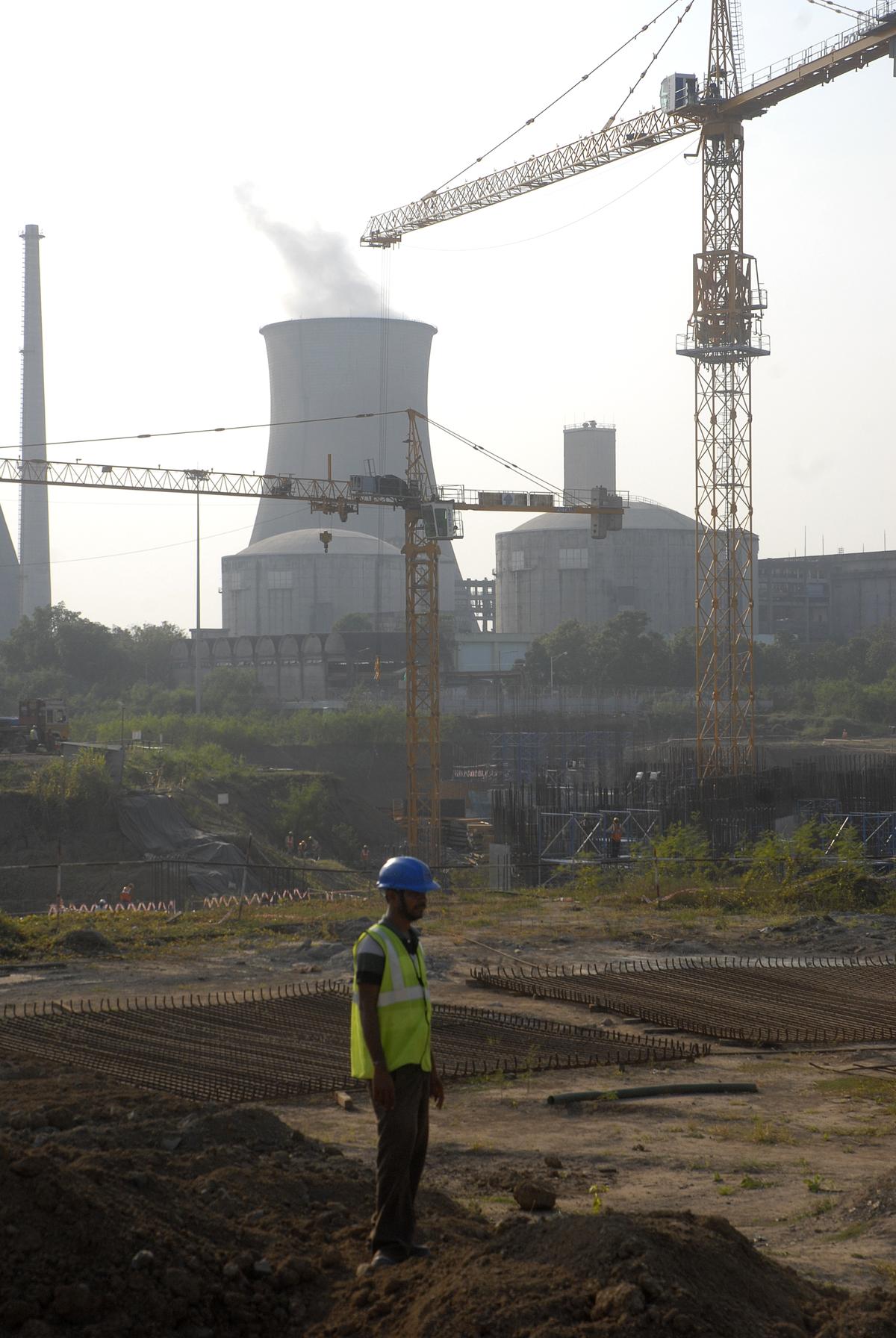
- 08 Jul 2025
In News:
India’s nuclear regulator, the Atomic Energy Regulatory Board (AERB), has granted the Licence for Operation of Units 3 and 4 of the Kakrapar Atomic Power Station (KAPS) in Gujarat — India’s first indigenously developed 700 MWe Pressurised Heavy Water Reactors (PHWRs).
Key Highlights:
- Operational Approval: The AERB concluded multi-stage design and commissioning safety reviews before granting the licence for both reactors.
- KAPS-3: Achieved full-power commissioning in August 2023.
- KAPS-4: Achieved full-power commissioning in August 2024.
- Licence Details:
- Issued on July 3, 2025.
- Valid for a period of five years.
- Granted to the Nuclear Power Corporation of India Limited (NPCIL).
Significance of the Development:
- These reactors are part of India’s first fleet of 700 MWe PHWRs, marking a major milestone in the country’s indigenous nuclear energy capabilities.
- The licensing process involved rigorous multi-tiered safety assessments spanning the full lifecycle:
- Siting
- Construction
- Commissioning
- Full-power operation
- Review was conducted with contributions from AERB and technical support organisations, involving over 15 years of evaluation.
India’s PHWR Progression:
|
Design |
Capacity |
Number |
Remarks |
|
PHWR |
220 MWe |
15 |
Operational |
|
PHWR |
540 MWe |
2 |
Operational |
|
PHWR |
700 MWe |
2 (KAPS-3 & 4) |
Now Licensed |
- The 700 MWe PHWR design is an upgraded version of the 540 MWe model.
- A similar 700 MWe reactor began commercial operation at Rawatbhata (Rajasthan) in March 2025.
Broader Impact:
- The licence is a boost to NPCIL’s fleet-mode approach, which involves building 10 such 700 MWe PHWRs across India.
- It reinforces India’s commitment to self-reliance in nuclear technology under the broader Atmanirbhar Bharat initiative.
- It enhances the nation's ability to meet low-carbon energy targets through domestic nuclear capacity.
National Biobank

- 08 Jul 2025
In News:
The Union Minister of State (Independent Charge) for Science & Technology recently inaugurated the Phenome India “National Biobank” at the CSIR-Institute of Genomics and Integrative Biology (IGIB).
About the National Biobank:
- The National Biobank will act as the backbone of a nationwide cohort study, aimed at collecting comprehensive genomic, lifestyle, and clinical data from 10,000 individuals across India.
- It is a part of the Phenome India Project, focusing on long-term health tracking of participants over several years.
- Designed to reflect India's diverse geography, ethnicity, and socio-economic backgrounds, it ensures inclusivity in data collection.
- The biobank will enable researchers to:
- Uncover disease patterns and gene-environment interactions.
- Study individual responses to therapies within the Indian population context.
- Aid in early diagnosis and precision medicine, especially for complex diseases like:
- Diabetes
- Cancer
- Cardiovascular disorders
- Rare genetic conditions
Phenome India Project (PI-CheCK):
- Full Name: Phenome India – CSIR Health Cohort Knowledgebase (PI-CheCK)
- Launched by: Council of Scientific and Industrial Research (CSIR) on 7th December 2023
- Objective: To build India-specific risk prediction models for cardio-metabolic diseases, including:
- Diabetes
- Liver diseases
- Cardiac conditions
- Significance: India’s first pan-India longitudinal health monitoring study focused specifically on cardio-metabolic health.
- Sample Cohort: ~10,000 individuals (primarily CSIR employees, pensioners, and spouses) from 17 states and 24 cities.
- Data Collection Includes:
- Clinical questionnaires
- Lifestyle and dietary assessments
- Anthropometric measurements
- Imaging and scanning data
- Extensive biochemical and molecular data
Green Climate Fund

- 07 Jul 2025
In News:
- The Green Climate Fund (GCF) has approved over USD 120 million to support climate adaptation initiatives in Ghana, the Maldives, and Mauritania, with technical development by the UN Environment Programme (UNEP).
- The projects aim to build climate resilience among vulnerable populations through nature-based solutions, climate-resilient agriculture, early warning systems, and water security enhancements.
- These initiatives are critical in delivering adaptation finance to regions like Small Island Developing States (SIDS) and the Sahel, addressing some of the most urgent climate vulnerabilities and are expected to benefit over 3.5 million people.
Project Highlights by Country:
Ghana: Agroecological Resilience in Northern Regions
- Total funding: USD 70 million (USD 63 million GCF grant).
- Objective: Strengthen climate resilience in eight districts across North East, Upper East, and Upper West Ghana.
- Key Interventions:
- Improve access to climate data and early warnings.
- Enable dry-season farming via water storage.
- Restore 28,000 hectares of degraded land to improve water retention and soil health.
- Impact:
- Direct benefits for 619,000 people.
- Early warning systems to reach 2.9 million.
- Improved food security for 120,000 individuals.
- Implementing agencies: Ghana EPA and Ghana Meteorological Agency.
Maldives: Early Warning and Risk Reduction in a SIDS
- Total funding: USD 25 million.
- Project Name: Toward Risk-Aware and Climate-Resilient Communities (TRACT).
- Focus: Expand multi-hazard early warning systems and build national capacity under the Early Warnings for All (EW4All) initiative.
- Risks Addressed: Rising sea levels, storm surges, heatwaves, and coastal erosion threatening agriculture, fisheries, and tourism.
- Impact:
- Coverage for over 500,000 people.
- Special emphasis on remote and marginalized communities, including women and children.
Mauritania: Ecosystem Restoration in the Sahel
- Total funding: USD 33 million (USD 30 million GCF grant).
- Objective: Address desertification, drought, and water scarcity across four vulnerable regions.
- Key Activities:
- Build green-grey infrastructure to stabilize sand dunes.
- Improve water access for farming and land rehabilitation.
- Promote climate-resilient agriculture to reduce food imports.
- Impact:
- 85,000 people to benefit directly; 145,000 indirectly.
- 2,100 hectares of land to be protected.
- Supports the Great Green Wall Initiative—Africa’s flagship response to desertification.
Institutional Roles and Significance:
- The UNEP, as a global leader in environmental governance, has played a key role in contextualizing science-based, locally led climate solutions.
- The GCF, under the Paris Agreement framework, remains the largest international climate fund, supporting countries in implementing their Nationally Determined Contributions (NDCs).
Chautal
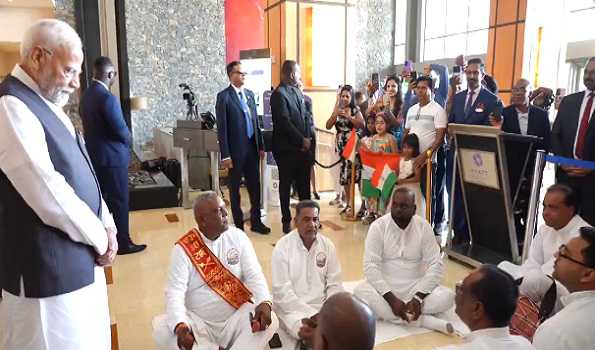
- 07 Jul 2025
In News:
During the recent state visit of the Indian Prime Minister to Trinidad and Tobago, a notable cultural highlight was the performance of the traditional Bhojpuri Chautal, reflecting the deep-rooted Indian heritage in the Caribbean diaspora.
Understanding Chautal
- Chautal (also spelled Chartaal or Chowtaal) is a 12-beat rhythmic cycle (taal) integral to Hindustani classical music.
- It is primarily used to accompany vocal forms such as Dhrupad and Dhamar, as well as instrumental music.
- The term “Chautal” can be interpreted as "four claps", hinting at its vibhag (sectional) structure.
Structural Interpretations:
- One tradition describes it as comprising four vibhags of 4, 4, 2, and 2 beats (matras), respectively.
- An alternative view equates its structure with Ektal, dividing the cycle into six segments of 2 beats each.
Musical Characteristics and Cultural Context
- Chautal is closely associated with the pakhawaj, a barrel-shaped percussion instrument, giving it a powerful and resonant character.
- Unlike the subtle and intricate rhythms of the tabla, Chautal emphasizes strength and gravity in performance.
- Beyond classical settings, Chautal holds cultural significance in Bhojpuri folk traditions, especially during festivals and religious gatherings.
Significance in the Indian Diaspora
The inclusion of Chautal in Trinidad and Tobago’s ceremonial welcome reflects the preservation and celebration of Indian classical and folk arts among overseas Indian communities, particularly those with Bhojpuri ancestry.
Gini Index
- 07 Jul 2025
In News:
According to the World Bank’s Spring 2025 Poverty and Equity Brief, India has emerged as the fourth most equal society globally, with a Gini Index of 25.5—outperforming all G7 and G20 nations. Only the Slovak Republic (24.1), Slovenia (24.3), and Belarus (24.4) rank ahead.
This achievement marks a significant improvement from India’s Gini score of 28.8 in 2011 to 25.5 in 2022, reflecting a steady narrowing of income inequality and growing social equity.
Key Highlights:
Gini Index Comparison (2022-2023):
|
Country |
Gini Index |
|
Slovak Republic |
24.1 |
|
Slovenia |
24.3 |
|
Belarus |
24.4 |
|
India |
25.5 |
|
China |
35.7 |
|
United States |
41.8 |
|
Germany (G7) |
~31.4 |
|
United Kingdom (G7) |
~34.4 |
|
France (G7) |
~32.4 |
|
Japan (G7) |
~32.9 |
Poverty Reduction Achievements:
- 171 million people lifted out of extreme poverty (2011–2023).
- Population living under $2.15/day fell from 16.2% (2011–12) to 2.3% (2022–23).
- Under revised poverty line of $3.00/day, poverty fell to 5.3% in 2022–23.
Drivers of Income Equality:
a) Financial Inclusion:
- Jan Dhan Yojana: Over 55.69 crore bank accounts opened (as of June 2025).
- Enabled Direct Benefit Transfers (DBT), reducing leakages and ensuring targeted welfare.
b) Digital Infrastructure:
- Aadhaar: Over 142 crore issued (as of July 2025), enabling real-time, identity-based service delivery.
- DBT savings: Over ?3.48 lakh crore by March 2023.
c) Universal Healthcare Access:
- Ayushman Bharat: Over 41.34 crore health cards issued.
- Covers ?5 lakh per family/year; now extended to all citizens aged 70+ under Ayushman Vay Vandana.
- Over 32,000 empanelled hospitals ensure access to treatment.
d) Empowerment of Marginalized Communities:
- Stand-Up India: Loans worth ?62,807 crore disbursed to SC/ST and women entrepreneurs.
- PM Vishwakarma Yojana: Nearly 30 lakh artisans registered for credit and marketing support.
Significance for India and the World:
India’s low Gini score demonstrates that economic growth and social equity can be pursued together. The country’s targeted welfare architecture, digital governance tools, and inclusive schemes have created a replicable model for other developing nations.
As global inequality widens, India’s success offers a template for countries seeking to integrate economic reforms with social protection mechanisms to foster inclusive development.
Tokara Islands
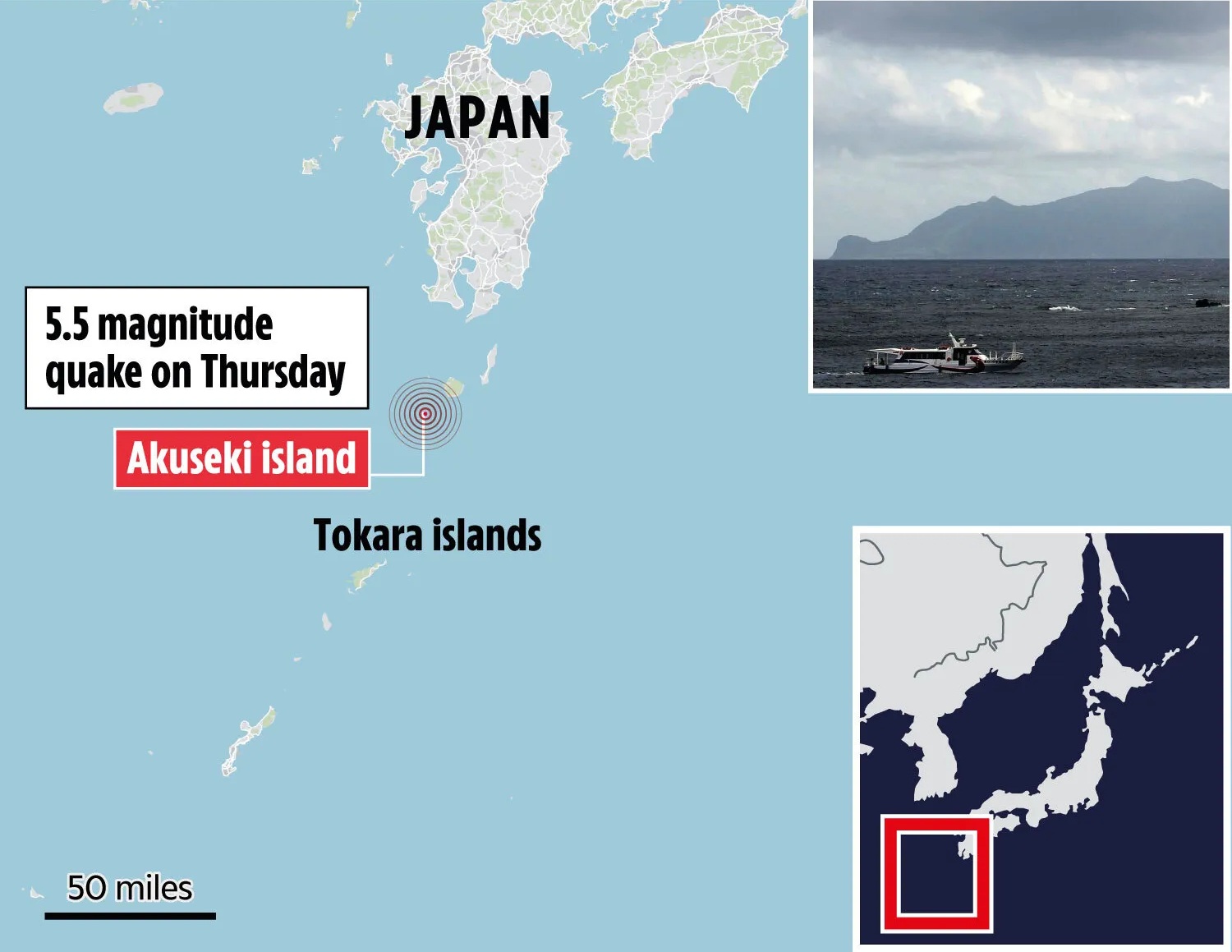
- 07 Jul 2025
In News:
In an unusual seismic episode, over 1,000 earthquakes have struck the Tokara Islands in southern Japan since June 1, 2025, triggering panic, evacuation orders, and heightened concerns about a potential larger earthquake. The persistent tremors—several of which registered magnitudes of 5.5 or higher—have had a significant psychological and logistical impact on the island's residents.
About Tokara Islands:
- Located south of Kyushu and north of the Amami Islands, the Tokara archipelago (also called Toshima Islands) consists of seven inhabited and five uninhabited islands.
- The inhabited islands include Kuchinoshima, Nakanoshima, Suwanosejima, Tairajima, Akusekijima, Kodakarajima, and Takarajima.
- Administered by Toshima Village, it is Japan’s longest village, stretching over 160 km.
- Nakanoshima is the largest and most populated island; it is dominated by Mount Otake (979 m).
- The islands lie in a subtropical-temperate climate zone, receiving around 2,700 mm of rainfall annually.
- Geologically, they are situated in one of the most earthquake-prone zones globally.
Variable Rate Reverse Repo (VRRR)
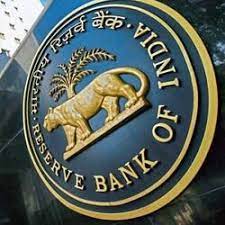
- 07 Jul 2025
In News:
The Reserve Bank of India (RBI) recently carried out a 7-day Variable Rate Reverse Repo (VRRR) auction worth ?1 lakh crore. This measure was taken to manage the surplus liquidity in the banking system, which had surged to approximately ?3.75 lakh crore.
What is VRRR?
The Variable Rate Reverse Repo (VRRR) is a liquidity management tool employed by the RBI to absorb excess funds from commercial banks for a specified period. Unlike the fixed reverse repo rate, the VRRR rate is determined through an auction mechanism, allowing market forces to decide the interest rate.
Key Characteristics:
- Auction-Based Interest Rate: Interest is not fixed but discovered through competitive bidding.
- Time-Bound Operation: Typically conducted for durations like 7, 14, or 28 days.
- Liquidity Management Tool: Helps the RBI withdraw excess liquidity from the financial system.
- Repo Rate Ceiling: The interest rate in VRRR operations cannot exceed the current repo rate.
- Flexible Tenor: RBI may modify the duration of VRRR auctions based on prevailing liquidity conditions.
Objective of VRRR
- To mop up surplus liquidity from the banking system.
- To help regulate short-term interest rates and support effective transmission of monetary policy.
- To foster a market-driven interest rate environment in the short-term interbank market.
How VRRR Functions
- Auction Announcement: RBI declares the amount and duration of the VRRR operation.
- Bid Submission: Banks submit bids with the amount and the interest rate at which they are willing to park funds with RBI.
- Rate Determination: RBI accepts bids at or above the cut-off rate, determined by the auction.
- Interest Earnings: Banks earn interest at the accepted rate over the auction tenure.
Implications of VRRR Operations
- On the Money Market: Tightens liquidity, leading to an uptick in short-term rates such as the call money rate and TREPS.
- On the Bond Market: May cause short-term government and corporate bond yields to rise, increasing borrowing costs.
- On Banks:
- Offers an avenue to earn returns on idle funds, improving short-term profitability.
- Temporarily locks up funds, which may reduce immediate availability for lending or investment.
This mechanism is a vital part of the RBI's toolkit to maintain financial stability and ensure efficient transmission of monetary policy.
3 by 35 Initiative
- 06 Jul 2025
In News:
Amid shrinking official development assistance (ODA) and growing health burdens, the World Health Organization (WHO) has launched the 3 by 35 Initiative—a global call to action to increase taxes on three harmful products: tobacco, alcohol, and sugary drinks. The goal is to raise their real prices by at least 50% by the year 2035, tailored to each country’s context.
Why the Initiative?
- Noncommunicable Diseases (NCDs)—like cardiovascular diseases, cancers, and diabetes—are the leading cause of death and disability worldwide.
- Tobacco use causes over 7 million deaths annually; alcohol and sugary drinks significantly contribute to the global NCD burden.
- Health taxes are a proven strategy to curb harmful consumption while generating domestic revenue for health and development.
Economic Potential:
- A one-time 50% price increase via taxation could generate:
- US$ 3.7 trillion over five years
- ~US$ 740 billion per year (approx. 0.75% of global GDP)
- Estimated to raise US$ 1 trillion in public revenue over the next decade while reducing product consumption.
Key Objectives of 3 by 35:
- Reduce Harmful Consumption:
- Discourage use of tobacco, alcohol, and sugary drinks.
- Mitigate NCDs and associated healthcare costs.
- Mobilize Domestic Revenue:
- Strengthen public financing without reliance on external aid.
- Support progress toward Sustainable Development Goals (SDGs).
- Build Healthier, Resilient Economies:
- Improve economic productivity through healthier populations.
- Channel revenue toward health services, nutrition, and education.
Strategic Actions:
- Mobilize Countries:
- Engage leaders, finance and health ministries, and civil society.
- Provide platforms for peer learning and global recognition.
- Support Country-Led Policies:
- Offer technical support for health tax design, legal reform, and implementation.
- Promote evidence-based, locally tailored solutions.
- Build Commitments and Partnerships:
- Foster multi-sector collaboration and civil society engagement.
- Shift public and political narratives around health taxation.
Governance and Collaboration:
- Led by WHO and supported by:
- National governments
- Civil society and academic institutions
- Development partners and multilateral organizations
C-FLOOD
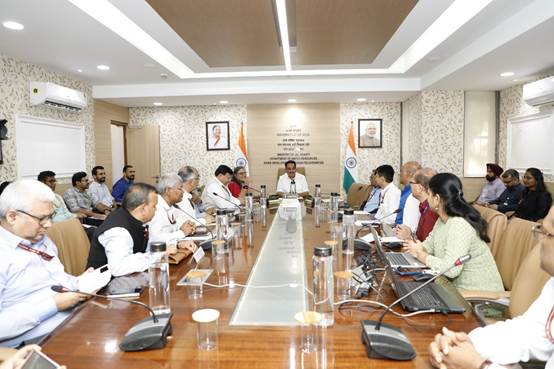
- 06 Jul 2025
In News:
In a significant advancement in disaster risk management, Union Minister of Jal Shakti Shri C.R. Patil inaugurated C-FLOOD, a Unified Inundation Forecasting System. Developed under the National Supercomputing Mission (NSM), C-FLOOD marks a pivotal step toward strengthening India's flood preparedness and mitigation strategy.
What is C-FLOOD?
C-FLOOD is a web-based, real-time flood forecasting platform designed to deliver two-day advance inundation forecasts at village-level resolution. It provides:
- Flood inundation maps
- Water level predictions
- Localized early warnings to support disaster response and planning.
Developing Agencies:
- Centre for Development of Advanced Computing (C-DAC), Pune
- Central Water Commission (CWC)
- National Remote Sensing Centre (NRSC)
Developed in collaboration with the Ministry of Jal Shakti, Ministry of Electronics & IT (MeitY), and Department of Science & Technology (DST).
Key Features:
- 2-Day Village-Level Forecasts: Localized and high-resolution predictions up to the gram panchayat level.
- Advanced 2-D Hydrodynamic Modelling: Simulations run on High-Performance Computing (HPC) systems under NSM.
- Multi-Basin Coverage: Initially operational in the Mahanadi, Godavari, and Tapi river basins, with future expansion planned.
- Unified Data Integration: Combines outputs from national and regional flood models into one platform.
- Disaster Portal Linkage: Designed for integration with the National Disaster Management Emergency Response Portal (NDEM).
- Climate-Adaptive Governance: Supports flood forecasting in regions vulnerable to climate-induced extreme weather events.
Strategic Importance:
- Disaster Risk Reduction: Enables timely warnings, efficient evacuations, and minimizes loss of life and property.
- Scientific & Operational Integration: Bridges hydrological modelling with on-ground responses.
- Supports Viksit Bharat @2047 Vision: Contributes to climate-resilient water governance.
- Promotes Inter-Agency Synergy: Encourages coordination among CWC, C-DAC, NRSC, and disaster management bodies.
Government Directions and Future Path:
During the inauguration, the Union Minister emphasized:
- Wide dissemination of C-FLOOD to enhance public awareness.
- Expansion to all major river basins through comprehensive inundation studies.
- Improved accuracy via satellite data validation and ground-truthing.
- Integration with NDEM for real-time emergency response.
The minister lauded the collaborative spirit of CWC, C-DAC, and NRSC, and reaffirmed the government's commitment to proactive and technology-driven disaster management.
Status of Youth in Agrifood Systems
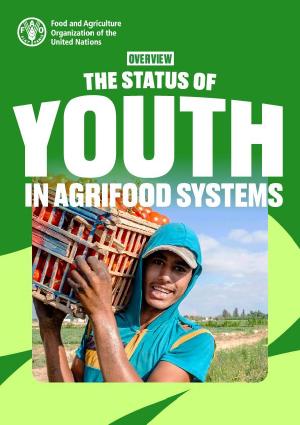
- 06 Jul 2025
In News:
The Food and Agriculture Organization (FAO) has released the “Status of Youth in Agrifood Systems” report, emphasizing that youth empowerment in agriculture could significantly reduce global unemployment and enhance food security, with the potential to boost global GDP by 1.4% (approx. $1.5 trillion).
Key Insights from the Report:
Declining Youth Engagement in Agriculture:
- The share of youth employed in agrifood systems has dropped from 54% in 2005 to 44%, even though many low-income countries remain heavily dependent on youth labour in agriculture.
Youth NEET Crisis:
- Over 20% of global youth (ages 15–24) are Not in Employment, Education, or Training (NEET).
- Young women are twice as likely to fall into this category compared to men.
- Addressing NEET status, particularly among those aged 20–24, could raise global output, with 45% of potential gains stemming from agrifood-related employment.
Urban-Rural Divide:
- 54% of youth now reside in urban areas, while only 5% of rural youth participate in industrial agrifood systems — posing challenges for future agricultural labour availability.
Climate Vulnerability:
- Around 395 million rural youth live in regions projected to experience reduced agricultural productivity due to climate change and extreme weather events.
Rising Food Insecurity Among Youth:
- Youth facing moderate to severe food insecurity has grown from 16.7% (2014) to 24.4% (2023), with severe impacts in Africa and conflict-affected areas.
FAO’s Strategic Recommendations:
Inquire More:
- Close data gaps related to youth roles in agrifood systems.
- Promote evidence-based, youth-responsive policies.
Include More:
- Ensure youth participation in decision-making at local, national, and international levels.
- Foster inclusive governance for both rural and urban youth.
Invest More:
- Job Creation: Facilitate decent employment opportunities on farms and in agrifood value chains.
- System Modernization: Invest in rural infrastructure, digital tools, and agricultural innovation.
- Resource Access: Improve youth access to land, credit, markets, training, and technology.
- Safe Migration: Develop regulated migration pathways for youth involved in agriculture and related sectors.
Russia recognizes Taliban-led Government in Afghanistan
- 06 Jul 2025
In News:
Russia has become the first nation to officially recognize the Taliban-led Islamic Emirate of Afghanistan, formalizing diplomatic relations with the regime that took control in 2021.
Context and Significance:
- This development comes amid limited international recognition of the Taliban government, which took over Kabul in 2021 after the withdrawal of U.S. and NATO forces.
- Russia’s move could reshape regional diplomacy in Central and South Asia, potentially influencing other neighboring powers like China, Iran, and the UAE, which has also shown warming ties.
- The decision also reflects Russia's strategic interests in counterterrorism cooperation, regional stability, and its broader geopolitical competition with the West.
Profile of Russia
Geographical Overview:
- Continent: Northern Eurasia, straddling both Eastern Europe and Northern Asia
- Area: Approximately 17 million square kilometers, making it the largest country in the world
- Time Zones: Spans across 11 time zones
- Capital City: Moscow
Neighbours and Boundaries:
- Land Borders: Shares land borders with 16 countries—more than any other nation:
- In Europe: Norway, Finland, Estonia, Latvia, Lithuania, Poland (via Kaliningrad), Belarus, Ukraine
- In Asia: Georgia, Azerbaijan, Kazakhstan, Mongolia, China, North Korea
- Maritime Borders:
- United States (via the Bering Strait)
- Japan (via the Sea of Okhotsk)
- Major Mountain Ranges:
- Ural Mountains: Traditional boundary between Europe and Asia
- Caucasus Mountains: Includes Mount Elbrus, Europe’s highest peak
- Altai, Sayan, and Kamchatka ranges in Siberia
- Key Rivers and Lakes:
- Volga River: Longest river in Europe
- Lena, Yenisei, and Ob Rivers: Flow through Siberia into the Arctic Ocean
- Lake Baikal: World’s deepest and oldest freshwater lake
- Lake Ladoga: Largest lake in Europe by area
- Climatic and Vegetation Zones:
- Encompasses tundra, taiga (boreal forest), steppes, and semi-deserts
- Permafrost regions in Siberia restrict infrastructure and habitation
Roll Cloud
- 06 Jul 2025
In News:
A striking atmospheric event unfolded over Portugal’s coastline during a severe European heatwave, where beachgoers and weather enthusiasts witnessed a rare roll cloud. The phenomenon occurred as cooler Atlantic air met the hot, dry continental air, producing a visually stunning and scientifically intriguing cloud formation.
What is a Roll Cloud?
A roll cloud is an uncommon, tube-shaped, low-altitude cloud formation that appears to rotate horizontally along its axis. Unlike funnel clouds, it is not connected to any thunderstorm base or rotating system.
Typical Occurrence Zones:
- Frequently spotted in coastal areas, particularly where oceanic and continental air masses interact
- Notably seen in regions like:
- U.S. Great Plains
- Gulf of Carpentaria, Australia (famous for “Morning Glory” clouds)
- Atlantic coasts of Europe
Formation Mechanism:
- Air Mass Interaction: Roll clouds develop when cool, moist maritime air confronts hot, dry air from land, creating instability.
- Temperature Inversion: A thermal inversion layer traps cooler air beneath a warmer layer, suppressing vertical air movement.
- Gravity Waves: As dense cool air undercuts warm air, it creates gravity waves—oscillations within the lower atmosphere.
- Adiabatic Cooling: The ascending portion of the wave cools rapidly, leading to condensation and cloud formation.
- Detached Structure: The cloud remains independent of any parent cloud system, often forming a long, horizontal roll.
Cloud Characteristics:
- Shape: Long, tubular, and low-lying—can stretch over hundreds of kilometers
- Motion: Appears to roll horizontally like a barrel
- Timing: Often forms during early morning hours
- Orientation: Aligns with low-level wind flow, sometimes influenced by sea breeze or nocturnal land breeze fronts
Why are Roll Clouds important?
- Serve as visual indicators of atmospheric instability and changing weather conditions
- Though not hazardous, they reflect mesoscale meteorological processes
- May signal localized shifts in temperature or wind that could precede storm activity in some environments
- Their presence also highlights the interplay between land-sea thermal contrasts, especially relevant in the context of climate variability
Motor Vehicle Aggregator Guidelines (MVAG) 2025
- 05 Jul 2025
In News:
The Ministry of Road Transport and Highways has released the Motor Vehicle Aggregator Guidelines (MVAG), 2025, updating the 2020 norms to accommodate evolving urban transport trends — including bike taxis, electric vehicles (EVs), and app-based autorickshaws.
Overview
- Legal Basis: Formulated under the Motor Vehicles Act, 1988, MVAG provides the regulatory foundation for digital ride-hailing platforms such as Ola, Uber, and Rapido.
- Issuing Authority: Ministry of Road Transport and Highways, Government of India
Key Provisions of MVAG 2025
Driver Welfare and Remuneration
- Revenue Sharing:
- Drivers using own vehicles must receive minimum 80% of the fare.
- For aggregator-owned vehicles, the share must be at least 60%.
- Insurance Requirements:
- Health cover of ?5 lakh
- Term life insurance of ?10 lakh for each driver
- Skill Enhancement: Drivers in the lowest 5% rating bracket to undergo quarterly training
Passenger Safety and Accountability
- Travel Insurance: Mandatory coverage of ?5 lakh per passenger
- Complaint Resolution:
- Issues must be addressed within 3 working days
- Aggregators must notify passengers of outcomes
- Fare Transparency: Charges apply only from pick-up to drop-off location
Fare Regulation and Surge Pricing
- Base Fare Governance: State governments to decide base fare for each vehicle type
- Dynamic Pricing Limits:
- Aggregators may charge as low as 50% below base fare or up to 2x the base fare cap
- Designed to curb excessive surge pricing and ensure fare predictability
Cancellation Penalties
- Symmetrical Accountability:
- 10% penalty (capped at ?100) for riders or drivers cancelling without valid reason
- Acceptable cancellation grounds must be clearly listed on platforms
Legitimisation of Bike Taxis
- Policy Recognition:
- For the first time, private two-wheelers (non-transport motorcycles) may be used for commercial ride services, pending state-level approval
- Legal clarity for platforms operating in regulatory grey zones
EV Integration and Inclusivity
- EV Adoption Targets: States may enforce annual targets for aggregator fleets to switch to electric vehicles
- Accessible Vehicles Mandate: Aggregators must include vehicles equipped to serve persons with disabilities (Divyangjan)
Enhanced Driver Onboarding Standards
- Screening and Health Protocols: Mandatory police verification, medical fitness, and psychological evaluation before onboarding
- Training Mandates: Induction training for new drivers and annual refresher programs for all
Grievance Redressal & Licensing
- Mandatory Officer Appointment: A Grievance Redressal Officer must be designated with contact details published on the platform
- Centralised Licensing Portal: A unified digital portal to streamline aggregator licensing, renewals, and deposit management
Enforcement and Penalties
- Penalty Range: Fines for non-compliance range from ?1 lakh to ?1 crore
- Escalation for Repeat Offences: Repeat violations can lead to license suspension (up to 3 months) and possible revocation
Significance of MVAG 2025
- Aligns India’s mobility ecosystem with sustainable transport goals, passenger safety, and driver welfare
- Encourages EV transition, inclusive access, and regulated digital transport economy
- Brings regulatory clarity for emerging services like bike taxis
RBI’s New Policy on Pre-Payment Charges
- 05 Jul 2025
In News:
In a move aimed at enhancing fair lending practices and improving access to affordable credit, the Reserve Bank of India (RBI) has prohibited pre-payment penalties on floating-rate loans availed by individuals and Micro and Small Enterprises (MSEs). The new norms will come into effect from January 1, 2026, and will apply to all loans and credit facilities sanctioned or renewed on or after this date.
Key Provisions of the RBI Guidelines
Ban on Pre-Payment Charges:
- Applicable to:
- Individuals taking floating-rate loans for non-business purposes, even with co-borrowers.
- Individuals and MSEs availing business loans.
- Individuals taking floating-rate loans for non-business purposes, even with co-borrowers.
- Lenders prohibited from imposing pre-payment penalties include:
- Commercial Banks (except SFBs, RRBs, Local Area Banks)
- Tier 4 Urban Cooperative Banks
- NBFCs in the Upper Layer (NBFC-UL)
- All India Financial Institutions (AIFIs)
- For smaller institutions like Small Finance Banks, RRBs, Tier 3 Urban Cooperative Banks, State and Central Co-op Banks, and NBFCs in the Middle Layer (NBFC-ML), the exemption from pre-payment charges applies to loans up to ?50 lakh.
Early Closure of Overdraft/Cash Credit:
- If the borrower informs in advance and closes the account on time, no pre-closure charges can be levied.
- If the lender requests prepayment, no charges are permitted in such cases either.
Transparency and Disclosure Requirements
- Lenders must clearly disclose the applicability or non-applicability of pre-payment charges in:
- Sanction letters
- Loan agreements
- Key Facts Statement (KFS) (where applicable)
- Any charges not explicitly disclosed as per these guidelines cannot be imposed.
Pre-Payment Without Lock-in
- Pre-payment (partial or full) can be made without any lock-in period, and irrespective of the source of funds.
Rationale Behind the Move
- The RBI noted that inconsistent practices regarding pre-payment fees have led to customer disputes.
- Ensuring easy and affordable finance for MSEs is “of paramount importance,” the central bank emphasized.
Policy Continuity and Legal Update
- All earlier RBI circulars and guidelines regarding pre-payment charges stand repealed.
- The final guidelines were issued after considering public feedback on the draft circular (February 2025).
Significance for MSEs and Borrowers
- Enhances credit mobility and refinancing freedom for borrowers.
- Prevents penalty-driven disincentives for early loan closure.
- Aligns with the RBI’s broader goal of financial consumer protection and MSME support.
Overseas Citizen of India (OCI)
- 05 Jul 2025
In News:
During his official visit to Trinidad and Tobago, the Prime Minister of India announced a significant policy update: Indian-origin persons up to the sixth generation residing in Trinidad and Tobago will now be eligible for the Overseas Citizen of India (OCI) card.
This move strengthens India's outreach to its diaspora, especially in regions with deep-rooted historical ties dating back to indentured migration.
About Overseas Citizen of India (OCI)
What is OCI?
The OCI card is a form of permanent residency granted to foreign nationals of Indian origin, enabling them to live, work, and travel in India without requiring a visa.
- Introduced: August 2005
- Legal Basis: Citizenship (Amendment) Act, 2005
- Administered by: Ministry of Home Affairs, Government of India
- Objective: To foster long-term engagement between India and its diaspora communities by offering them residency and economic/cultural participation rights—without conferring dual citizenship.
Eligibility Criteria (Section 7A of Citizenship Act, 1955)
An individual is eligible if they are a foreign national who:
- Was a citizen of India on or after 26 January 1950,
- Was eligible for Indian citizenship on that date, or
- Belonged to a territory that became part of India after 15 August 1947
Also eligible:
- Children, grandchildren, or great-grandchildren of eligible persons
- Minor children with one or both parents as Indian citizens
- Spouses of Indian citizens or OCI holders, if marriage has lasted 2+ years
Not eligible if: The individual or their ancestors were ever citizens of Pakistan, Bangladesh, or other countries notified by the Indian government
Key Features of the OCI Card
- Lifelong, multiple-entry visa to India
- No police reporting required, regardless of duration of stay
- Work and study rights similar to Indian citizens (no separate visa needed)
- Economic parity with NRIs in areas such as:
- Education (e.g., admissions, fee structure)
- Financial services and bank accounts
- Real estate (excluding agricultural land)
- Can buy residential and commercial property in India
- Not eligible for:
- Voting rights
- Holding constitutional posts (e.g., President, MP, Judge)
- Government employment
- Digital-friendly: Application, renewal, and status tracking available via the official OCI Portal
Significance of the Latest Announcement
- Extending OCI eligibility to the sixth generation acknowledges the deep historical diaspora links between India and the Caribbean, particularly descendants of indentured laborers.
- This strengthens India's soft power, promotes people-to-people diplomacy, and enhances economic and cultural ties with Indian-origin communities abroad.
India’s First Transgender Clinic
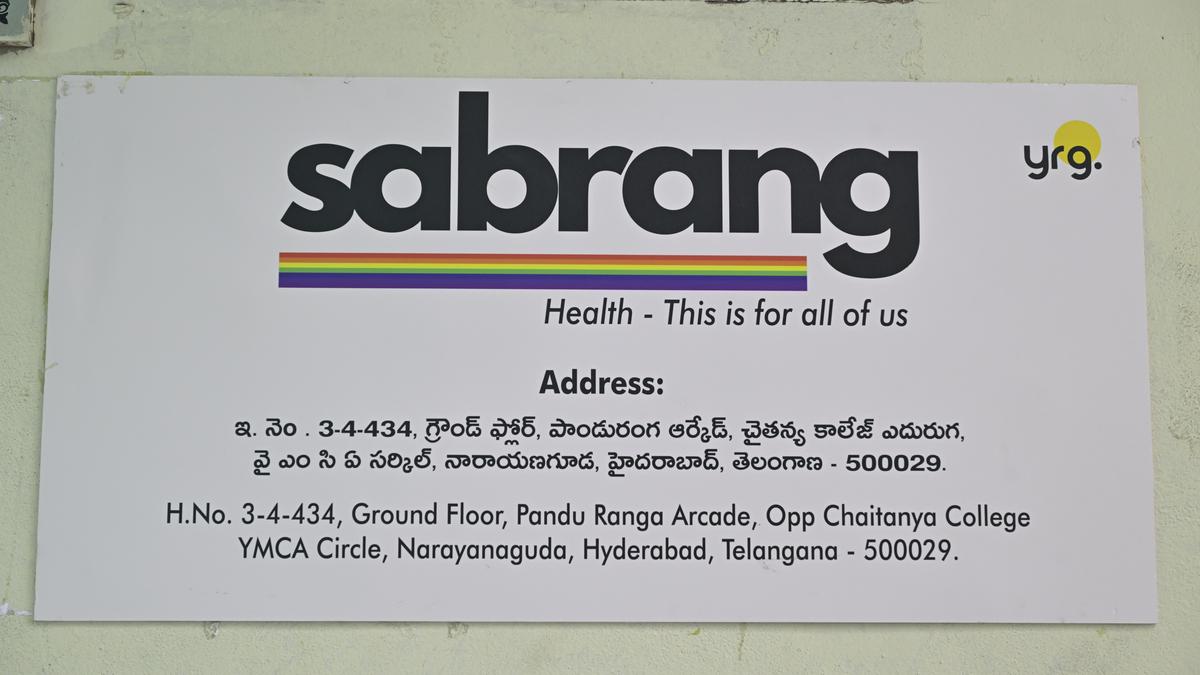
- 05 Jul 2025
In News:
India’s first healthcare facility entirely led and managed by transgender individuals — formerly known as Mitr Clinic — has reopened in Hyderabad under a new name, Sabrang Clinic, after a brief closure in January 2025 due to a USAID funding freeze.
Launched in 2021 in Narayanguda, Mitr Clinic was a pioneering initiative providing trans-affirmative healthcare services, and was notable for being completely staffed by members of the transgender community. Over 3,000 patients were served during its initial phase.
Revival and Funding
- Funding Setback: Operations were suspended in January 2025 following the withdrawal of USAID support.
- Renewed Support: The clinic resumed services in May 2025 after securing three-year funding from Tata Trusts, at a rate of ?1,500 per person per year (compared to ?1,900 under USAID).
- Supporting Partners: Core clinical staff is now funded by Tata Trusts, while senior positions are jointly supported by YRG Care, an NGO associated with the earlier model.
Current Setup and Services
Services Offered:
- General health services
- Counselling and clinical consultations for:
- Hormone Replacement Therapy (HRT)
- Gender Affirmation Surgeries
- Breast Augmentation
- Mental Health
- HIV/STI testing and treatment
- Psychological support
Clinic Team:
- 1 Medical Officer
- 1 Nurse
- 1 Counsellor
- 2 Outreach Workers
Operating Hours: Monday to Saturday, 10 a.m. – 6 p.m.
During the shutdown, the team continued online consultations and medicine delivery, sustaining community outreach until new funding was secured.
Legacy and Policy Impact
- The Telangana Government, inspired by Mitr Clinic’s model, launched Maitri Clinics in all 33 districts, adopting a trans-inclusive healthcare approach.
- While collaboration with State agencies was considered, the Sabrang team opted for independent operation to ensure quicker service resumption and retain community trust.
Expanded Vision: Why ‘Sabrang’?
- The new name, Sabrang (meaning "all colours"), reflects a broader, inclusive healthcare mission.
- It now aims to serve not only transgender persons but also queer, gender-diverse, and other marginalized groups who face similar healthcare barriers.
Chemical Industry – Powering India’s Participation in Global Value Chains
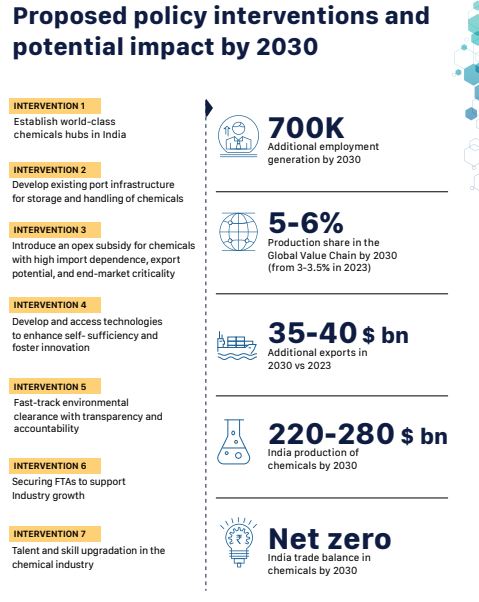
- 05 Jul 2025
In News:
NITI Aayog has released a comprehensive report envisioning India’s transformation into a global chemical manufacturing hub with a projected 12% share in global value chains (GVCs) and USD 1 trillion in output by 2040.
Current Landscape of India’s Chemical Industry
- Significant Economic Contributor: India is the 6th largest chemical producer globally and 3rd in Asia, contributing over 7% to manufacturing GDP. Key linkages: Pharmaceuticals, textiles, agriculture, and construction.
- Fragmented Sector Structure: Dominated by MSMEs, the sector suffers from lack of integrated value chains and modern infrastructure. Example: Cluster-based growth is concentrated in Gujarat, Maharashtra, and Tamil Nadu.
- Low Global Integration: India’s 3.5% share in global chemical value chains reflects weak backward integration and poor export competitiveness. The trade deficit in 2023 was USD 31 billion.
- High Import Dependence: Heavy reliance on China and Gulf countries for feedstocks and specialty chemicals. Example: Over 60% of critical Active Pharmaceutical Ingredients (APIs) are sourced from China.
- Negligible R&D Investment: India invests only 0.7% of industry revenue in R&D, far below the global average of 2.3%, limiting innovation in green and specialty chemicals.
- Regulatory and Procedural Hurdles: Environmental clearance (EC) delays (up to 12–18 months) and procedural bottlenecks lead to cost and time overruns.
- Skilling Deficit:
A 30% shortage of skilled professionals in green chemistry, process safety, and nanotechnology. Example: ITIs and vocational programs lag behind industry requirements.
Emerging Opportunities
- Green Chemistry Revolution: Global shift toward sustainable chemicals presents new market opportunities.
- Geopolitical Realignment: Rising distrust of China globally enables India to emerge as an alternate supplier.
- FTA Leverage: India’s Free Trade Agreements (FTAs) with UAE, EU, and ASEAN can enhance tariff-free access to major markets.
- Make in India Ecosystem: Policy support through PLI schemes, Petroleum, Chemicals and Petrochemicals Investment Regions (PCPIRs), and chemical parks.
- Job Creation Potential: The sector could generate 7 lakh skilled jobs by 2030, particularly in petrochemicals, research, and logistics.
Persistent Challenges
- Feedstock Vulnerability: Over-dependence on crude oil and naphtha imports poses price and supply risks.
- Outdated Industrial Clusters: Legacy clusters lack modern safety systems, storage infrastructure, and waste treatment facilities.
- High Logistics Costs: Freight costs are 2–3 times higher than global averages, reducing export competitiveness.
- Regulatory Complexities: Absence of single-window clearances, frequent policy shifts, and inter-state inconsistencies deter investments.
- Weak Industry-Academia Linkages: Poor collaboration leads to low patent output and limited skill development.
NITI Aayog’s Recommendations
- Develop World-Class Chemical Hubs: Upgrade existing clusters and establish empowered committees. Suggested hubs: Paradeep, Dahej, Vizag. Introduce a dedicated Chemical Infrastructure Fund.
- Opex-Based Incentives: Offer operational subsidies linked to import substitution and export potential.
- Boost Technology Access & R&D:
- Establish an industry-academia interface under the Department of Science and Technology (DST).
- Enable technology transfer from global MNCs.
- Streamline Environmental Clearances:
- Simplify processes via DPIIT audit mechanisms.
- Ensure greater transparency and faster approvals.
- Strengthen Skill Development:
- Expand and modernize ITIs and specialized institutes.
- Introduce tailored courses in polymer science, green chemistry, and process safety.
- Negotiate Chemical-Specific FTAs:
- Incorporate product-specific clauses.
- Simplify rules of origin and documentation processes.
Kolhapuri Chappals
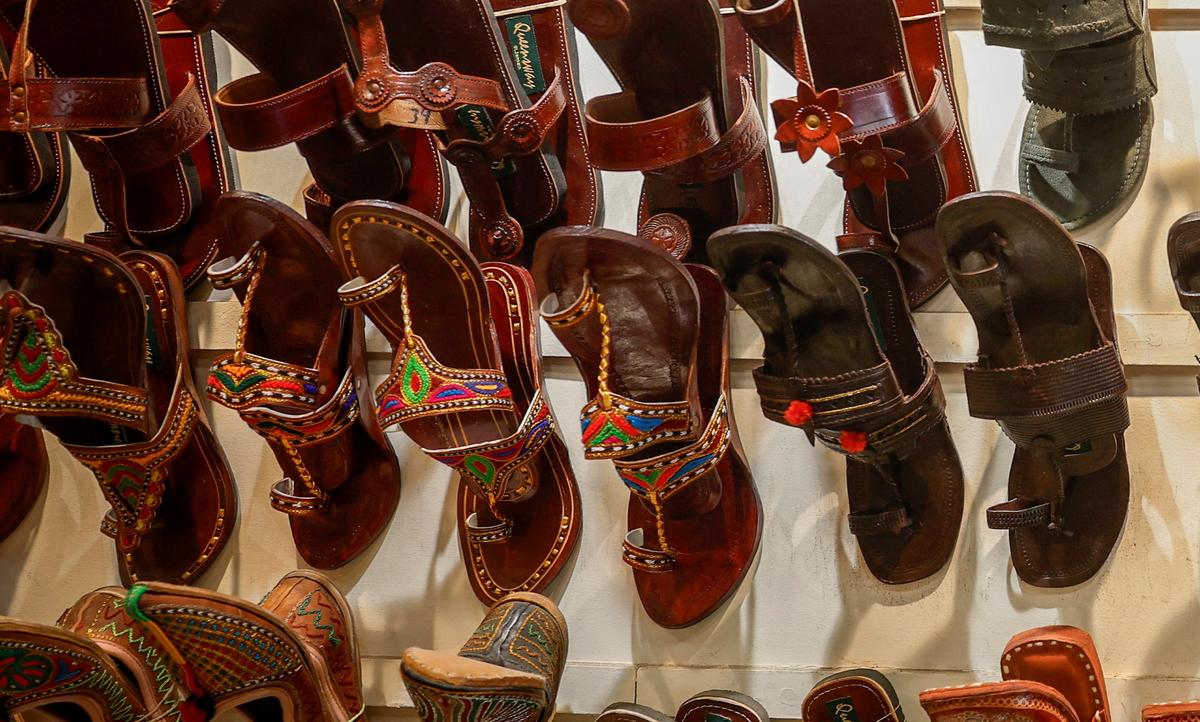
- 04 Jul 2025
In News:
Italian luxury fashion house Prada, after public criticism, has acknowledged that its Men’s Spring/Summer 2026 collection sandals were inspired by India’s traditional handcrafted footwear — the Kolhapuri chappals, a product with Geographical Indication (GI) status.
About Kolhapuri Chappals
Origin:
- Named after Kolhapur city in Maharashtra, India
- Handcrafted tradition dates back to the 13th century
Design & Craftsmanship:
- Made from 100% leather (cow, buffalo, or goat)
- Vegetable-tanned using natural dyes – non-toxic and eco-friendly
- Typicallyopen-toed with a T-strap design
- Traditionally in tan and brown shades with oil, natural, or polish finishes
- Time-intensive craftsmanship – can take up to six weeks per pair
Cultural & Economic Value:
- Recognised under the Geographical Indications (GI) Act of India
- Symbol of sustainable fashion, durability, and local artisanal skill
- Leather molds to feet over time, ensuring custom comfort and longevity
The Controversy: Cultural Appropriation vs Cultural Inspiration
- Criticism emerged after Prada launched sandals resembling Kolhapuris without credit
- Public and media backlash led to acknowledgement of Indian inspiration
- Highlights the importance of:
- Ethical recognition of traditional knowledge and cultural heritage
- Protection of GI-tagged products from unauthorized imitation
- Global awareness of India’s artisanal heritage
Financial Stability Report – June 2025
- 04 Jul 2025
In News:
The Reserve Bank of India (RBI) recently released the Financial Stability Report for June 2025.
What is the Financial Stability Report (FSR)?
- The Financial Stability Report (FSR) is a biannual publication by the Reserve Bank of India (RBI).
- It presents the collective assessment of the Sub-Committee of the Financial Stability and Development Council (FSDC-SC) regarding:
- Resilience of the Indian financial system
- Emerging systemic risks
- Outlook for macro-financial stability
Key Highlights – FSR June 2025
Macroeconomic & Global Outlook
- India remains a key driver of global growth, supported by strong macroeconomic fundamentals and prudent policies.
- Risks to growth include:
- Prolonged geopolitical tensions
- Trade and supply chain disruptions
- Weather-related uncertainties impacting agricultural output
Banking Sector Performance
- Gross Non-Performing Asset (GNPA) ratio:
- Stands at 2.3% as of March 2025, a multi-decadal low
- May rise modestly to 2.5% in baseline and 2.6% under adverse conditions by March 2027 (based on stress tests on 46 banks covering 98% of SCB assets)
- Capital Adequacy Ratios (CAR):
- Remain well above regulatory thresholds across the sector
- Even under severe stress scenarios, banks maintain adequate buffers — indicating robust financial health
Non-Banking Financial Companies (NBFCs)
- NBFCs are in good financial health with:
- Strong capital buffers
- Robust earnings
- Improving asset quality
- Continued financial resilience contributes to the overall stability of the financial system
Domestic Demand and Inflation Outlook
- Growth remains domestically driven
- Food inflation outlook favorable:
- Price moderation observed
- Crop output at record levels, supporting price stability
Significance for Financial Policy
- The report signals that India’s financial institutions are resilient and well-equipped to absorb economic shocks
- RBI's stress-testing framework confirms systemic soundness
- Reinforces India's investor confidence, especially in volatile global conditions
Research Development and Innovation (RDI) Scheme
- 04 Jul 2025
In News:
The Union Cabinet, chaired by the Prime Minister, has approved the Research Development and Innovation (RDI) Scheme with a corpus of ?1 lakh crore to strengthen India’s innovation ecosystem and boostprivate sector R&D investments.
Objective of the RDI Scheme
The scheme is designed to:
- Provide long-term financing or refinancing at low or nil interest rates
- Stimulate private sector investment in R&D and innovation
- Overcome existing funding challenges for private research
- Support sunrise and strategic sectors to drive:
- Innovation
- Technology adoption
- National competitiveness
- Economic security and self-reliance
Key Aims
- Encourage private sector participation in high-TRL (Technology Readiness Level) R&D projects
- Fund transformative innovation in sunrise domains
- Enable acquisition of critical and strategic technologies
- Facilitate the establishment of a Deep-Tech Fund of Funds (FoF)
Funding Structure
The RDI Scheme will operate on a two-tiered funding mechanism:
First Tier: Special Purpose Fund (SPF) under ANRF
- Housed within the Anusandhan National Research Foundation (ANRF)
- Acts as the primary custodian of funds
Second Tier: Fund Allocation & Disbursal
- SPF will allocate funds to multiple 2nd-level fund managers
- Mode of financing:
- Long-term concessional loans (low or nil interest)
- Equity financing, particularly for startups
- Contributions to Deep-Tech Fund of Funds (FoF) or other RDI-focused FoFs
Governance & Implementation
- Governing Board of ANRF (chaired by the Prime Minister): Provides strategic direction
- Executive Council (EC) of ANRF:
- Approves scheme guidelines
- Recommends fund managers
- Determines project types and sectors
- Empowered Group of Secretaries (EGoS):
- Led by the Cabinet Secretary
- Approves scheme changes, sectors, fund managers
- Monitors performance of the scheme
- Nodal Department:Department of Science and Technology (DST) is the nodal ministry for implementation.
Employment Linked Incentive (ELI) Scheme

- 04 Jul 2025
In News:
The Employment Linked Incentive (ELI) Scheme is a flagship initiative of the Government of India aimed at formal job creation, especially for youth and in the manufacturing sector. It was announced in the Union Budget 2024–25 and came into implementation following cabinet approval.
Recent Update (July 2025 Cabinet Decision)
- EPFO registrationand Aadhaar seeding deadline:30 June 2025
- Job coverage period:1 August 2025 – 31 July 2027
Objectives
- Promote formal employment by incentivising employers
- Encourage first-time EPFO registration for workers
- Target high employment-generating sectors like manufacturing
- Provide direct income support and EPFO reimbursement subsidies
Key Components – 3 Schemes under ELI
|
Scheme |
Focus |
Key Beneficiaries |
Duration |
Central Outlay |
Estimated Beneficiaries |
|
Scheme A |
First-time employment |
New EPFO-enrolled youth |
3 years |
?23,000 crore |
210 lakh |
|
Scheme B |
Job creation in manufacturing |
Employers hiring ≥50 non-EPFO workers |
6 years |
?52,000 crore |
30 lakh |
|
Scheme C |
Support to employers |
All employers creating net new jobs |
6 years |
?32,000 crore |
50 lakh |
Detailed Scheme Benefits & Conditions
Scheme A: First-Time Employment
- Direct cash benefit: ?15,000 (?7,500 x 2 instalments)
- 1st installment: After 6 months of continuous EPFO-linked employment
- 2nd installment: After 12 months + completion of financial literacy course
- Condition: Exit before 12 months = employer must refund benefit
Scheme B: Job Creation in Manufacturing
- Eligibility: Employer must have 3-year EPFO record; hire ≥50 non-EPFO or 25% baseline
- Salary cap for subsidy: ?25,000/month (overall salary ≤ ?1 lakh)
- Incentive structure:
- Year 1: 24% of salary (employee + employer EPFO contribution)
- Year 2: 24%
- Year 3: 16%
- Year 4: 8%
- Refund clause: If employee leaves before 12 months
Scheme C: Support to Employers
- Eligibility:
- Employers with <50 workers: Hire ≥2 net new
- ≥50 workers: Hire ≥5 net new
- Subsidy per employee/month:
- ?1,000 (salary ≤ ?10,000)
- ?2,000 (?10,001–?20,000)
- ?3,000 (?20,001–?1 lakh)
- Duration: 2 years, extendable to 4 years for large job creators
Eligibility Criteria
- Employees:
- Salary < ?1 lakh/month
- Must be EPFO-registered with Aadhaar–UAN–bank linkage
- Employers:
- Must create net new jobs over EPFO baseline
- For Scheme B: 3-year EPFO record required
Application Process (Current Status)
- No dedicated ELI portal yet
- Via EPFO portal:
- UAN activation and Aadhaar seeding
- Employer-led EPFO registration
- Completion of Financial Literacy Course (for Scheme A)
Significance
- Reduces informal employment
- Supports youth entering formal jobs for the first time
- Incentivises hiring in labour-intensivemanufacturing
- Promotes EPFO inclusion and financial literacy
Challenges
- Compliance burden on small enterprises
- Ensuring retention to avoid refund liabilities
- Monitoring duplication between schemes
- Delay in scheme-specific digital portal rollout
E-Voting System
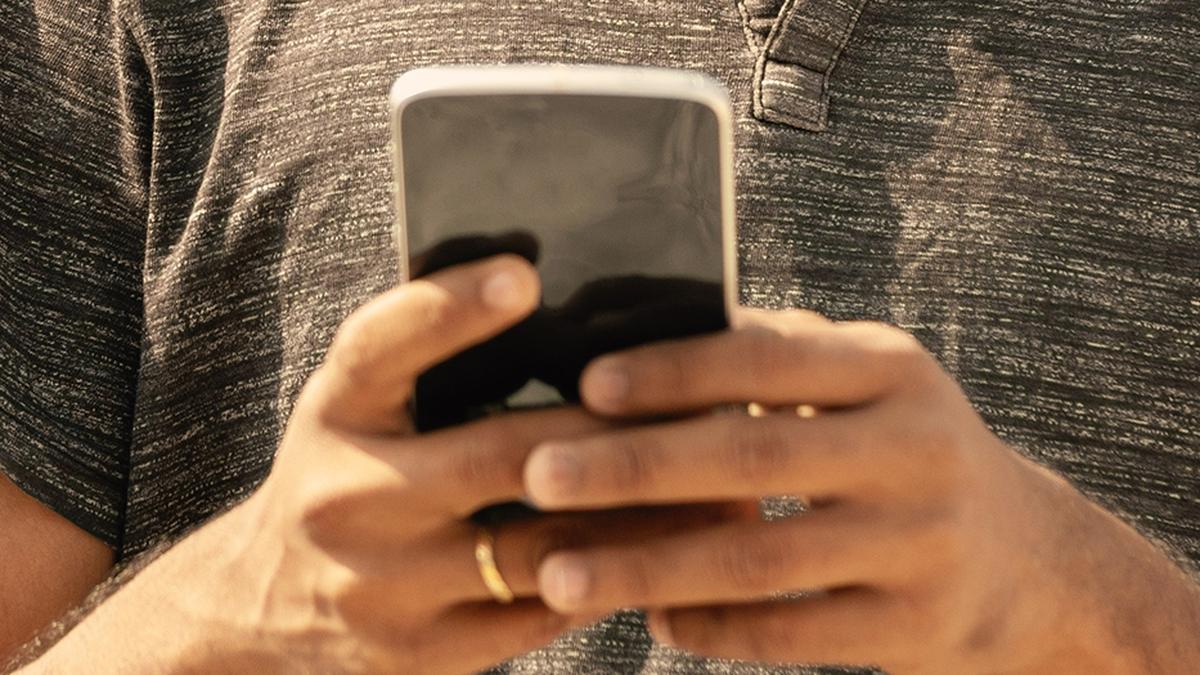
- 04 Jul 2025
In News:
For the first time in India, e-voting through a mobile app was used in the Bihar municipal elections (June 28, 2025) for six municipal councils in Patna, Rohtas, and East Champaran districts.
About the E-Voting System
- App Used:E-SECBHR, developed by Centre for Development of Advanced Computing (C-DAC)
- Target Groups:
- Senior citizens
- Persons with disabilities
- Pregnant women
- Others unable to reach polling booths
How It Works
- Installation: App available for Android users.
- Registration: Voter must link mobile number as per the electoral roll.
- Verification: Through voter ID number and facial recognition.
- Voting: Vote via app or Bihar Election Commission’s website on polling day.
Security Measures to Ensure Fairness
- Limited Logins: One mobile number can be used by only two registered voters.
- Facial Recognition: Used to verify identity during login and voting.
- Blockchain Technology:
- Ensures immutability of vote data.
- Prevents tampering or alteration of records.
National Turmeric Board Inaugurated in Telangana
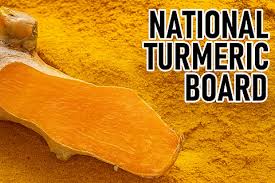
- 03 Jul 2025
In News:
The Union Home Minister inaugurated the headquarters of the National Turmeric Board in Nizamabad, Telangana, addressing a long-standing 40-year demand of turmeric farmers in the region.
About the National Turmeric Board (NTB):
- Established by: Government of India
- Status: Statutory body
- Location:Headquartered in Nizamabad, Telangana – popularly known as the "Turmeric Capital of India"
Administrative Oversight:
- Functions under the Ministry of Commerce and Industry
- Operates in coordination with the Ministries of AYUSH, Agriculture, Pharmaceuticals, and Cooperation
Governing Composition:
- Chairperson appointed by the Central Government
- Secretary from the Department of Commerce
- Members from:
- Relevant central ministries
- Turmeric-producing states (e.g., Telangana, Maharashtra, Meghalaya)
- Farmer groups, exporters, and research institutions
Objectives of the Board:
- Promote value addition, branding, and marketing of turmeric products
- Ensure better prices to farmers by reducing intermediaries
- Promote global recognition of turmeric’s medicinal value
- Upgrade logistics and quality infrastructure to meet global standards
- Support training, research, and skill development in turmeric cultivation and utilization
Key Functions:
- Develop an end-to-end export ecosystem for turmeric
- Promote GI-tagged organic turmeric in international markets
- Ensure compliance with global food and safety standards
- Coordinate with the Spices Board, National Cooperative Exports Ltd., and other cooperatives for export promotion
Turmeric in India: An Overview
Botanical Information:
- Scientific Name:Curcuma longa
- A rhizomatous herbaceous plant, valued for its use in cooking, dyeing, and traditional medicine
- Commonly known as the "Golden Spice"
Agro-Climatic Conditions:
- Grown in tropical climates, requires 20–30°C temperature and high rainfall
- Prefers well-drained loamy soils
- Cultivated under both rain-fed and irrigated conditions
Production and Exports (2022–23):
- Area under cultivation: 3.24 lakh hectares
- Total production: 11.61 lakh tonnes
- India's global share: Over 75% of world turmeric production
- Varietal diversity: Over 30 indigenous varieties cultivated
- Exports: 1.53 lakh tonnes valued at USD 207.45 million
- Target: USD 1 billion in turmeric exports by 2030
- Top export destinations:Bangladesh, UAE, USA, Malaysia
CRISPR-Based Gene Switch for Climate-Resilient Agriculture

- 03 Jul 2025
In News:
Scientists at the Bose Institute, Kolkata, under the Department of Science and Technology (DST), have developed a modified CRISPR-based molecular tool to enhance plant resilience against heat stress and bacterial infections. The research is published in the International Journal of Biological Macromolecules.
What is the Innovation?
- The tool is a modified version of the CRISPR system called dCas9 (dead Cas9), which does not cut DNA.
- Instead, it functions as a stress-responsive gene switch, turning defense and heat-tolerance genes on or off only when the plant is under stress (e.g., high temperature or pathogen attack).
How Does It Work?
- The switch is held outside the plant cell’s nucleus using a tomato-derived protein domain (NACMTF3 TM domain).
- Under stress conditions, such as heat waves or bacterial infection, the tether is released.
- The dCas9 switch then enters the nucleus, activating genes that help the plant combat the stress.
Key Functional Genes Activated:
|
Gene |
Function |
|
CBP60g, SARD1 |
Activate immune response to bacterial infection (e.g., Pseudomonas syringae) |
|
NAC2, HSFA6b |
Enhance heat tolerance, retain water, and improve overall health |
Salient Features of the Tool:
- Non-invasive: Unlike traditional CRISPR, this version does not edit the DNA, making it safer and more acceptable.
- Energy-efficient: The switch is activated only when needed, minimizing unnecessary energy use by the plant.
- Dual Protection: Shields plants from both heat stress and pathogenic infections.
- Eco-friendly and crop-compatible: Based on naturally occurring proteins, tested successfully in tomato, potato, and tobacco.
Significance and Impact:
- Climate-Resilient Agriculture: Helps plants survive in rising temperatures and unpredictable weather.
- Food Security: Boosts productivity in solanaceous crops like tomato, potato, brinjal, and chilli.
- Smart Farming Solution: Offers a model for sustainable and precision agriculture globally.
- Global Applicability: Can be adapted to other food crops affected by climate change and disease outbreaks.
Hong Kong International Convention (HKC)
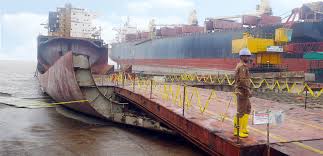
- 03 Jul 2025
In News:
The Hong Kong International Convention (HKC) for the safe and environmentally sound recycling of ships officially came into force on June 26, 2025.
About HKC:
- The HKC is a global treaty adopted under the aegis of the International Maritime Organization (IMO) to regulate the safe and environmentally sustainable recycling of ships that have reached the end of their operational life.
Objectives:
- Protect human health, especially that of shipbreaking workers.
- Prevent environmental pollution during ship dismantling.
- Control and manage hazardous materials such as asbestos, heavy metals, and hydrocarbons.
- Ensure safe waste handling and disposal practices in recycling yards.
Key Provisions:
- Inventory of Hazardous Materials (IHM):Ships must maintain an IHM listing all hazardous substances on board.
- Ship Recycling Plan (SRP):A certified SRP must be approved before the ship is sent for dismantling.
- Recycling Completion Certificate:Recycling facilities must issue this certificate within 14 days of dismantling completion.
- Third-Party Audits and Certification:Classification societies recognized by the IMO will conduct compliance audits and issue relevant certifications.
- Authorized Recycling Yards:The convention promotes the use of regulated and approved facilities for ship recycling to ensure compliance with international safety and environmental norms.
Significance:
- Strengthens global maritime safety and sustainable shipbreaking practices.
- Encourages modernization and regulation of recycling yards, especially in developing countries like India and Bangladesh.
- Aligns ship recycling with UN Sustainable Development Goals (SDGs), particularly those on health, environment, and decent work.
Operation Deep Manifest
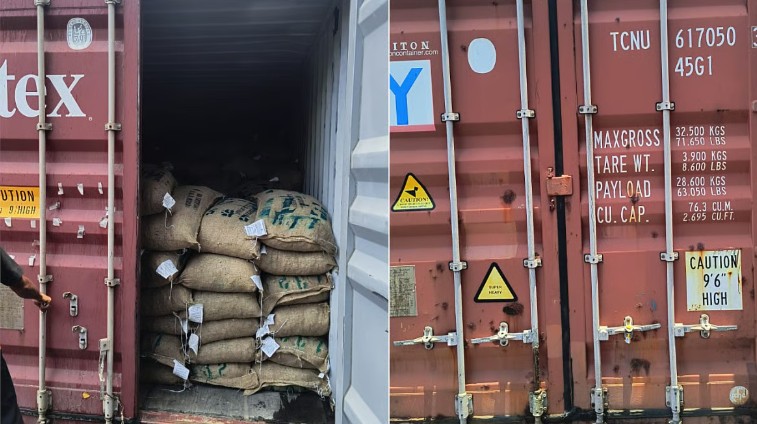
- 03 Jul 2025
In News:
The Directorate of Revenue Intelligence (DRI), under the Central Board of Indirect Taxes and Customs (CBIC), Ministry of Finance, launched “Operation Deep Manifest”, resulting in the seizure of Pakistani-origin goods worth ?9 crore.
Key Highlights:
- Seizure Details:39 containers carrying 1,115 metric tonnes of goods—primarily dry dates—were intercepted at Nhava Sheva Port. These goods were falsely declared as originating from the UAE.
- Route Manipulation:The consignments were illicitly routed via Dubai’s Jebel Ali Port after being shipped from Karachi, Pakistan, to obscure their true origin. Shipping documents were falsified and containers were switched during transshipment to evade detection.
- Violation of Policy:This seizure comes after India’s comprehensive ban on Pakistani-origin goods, which took effect on May 2, 2025, following the Pahalgam terror attacks. This replaced the earlier 200% customs duty imposed post-Pulwama (2019) and represents a zero-tolerance economic policy toward Pakistan.
- Financial and Security Links:Investigations uncovered financial linkages with Pakistani and UAE-based entities, pointing to an organized smuggling network with possible illicit financial flows and national security implications.
- Enforcement Action:A partner from one of the importing firms was arrested on June 26, and further criminal and financial investigations are ongoing.
Significance:
- National Security:Helps prevent economic infiltration from hostile states and curbs funding channels that could support anti-national activities.
- Trade Compliance:Acts as a deterrent against third-country transshipment—a common method to bypass sanctions or import bans.
- Tech-Driven Enforcement:Utilized document forensics, data analytics, and container surveillance to detect misdeclarations and track suspect cargo routes.
- Reinforces Policy Posture:Strengthens India's position of economic disengagement with Pakistan in response to cross-border terrorism.
Cell Broadcast System

- 03 Jul 2025
In News:
The Department of Telecommunications (DoT), in collaboration with the National Disaster Management Authority (NDMA), is piloting a Cell Broadcast (CB) system to enhance emergency communication and deliver real-time disaster alerts across India.
What is the Cell Broadcast System?
Cell Broadcasting is a telecommunication technology that enables mobile network operators to send geographically targeted text alerts to all mobile devices in a specific area. Unlike traditional SMS, CB messages are broadcast simultaneously to all phones within a cell tower’s coverage, ensuring instant delivery even during network congestion.
Key Features and Benefits:
- Instantaneous alerts during emergencies like earthquakes, tsunamis, lightning strikes, and industrial disasters.
- Indigenously developed by the Centre for Development of Telematics (C-DOT).
- Language inclusivity: Messages can be broadcast in multiple Indian languages.
- Particularly effective in high-density areas and during network overloads.
Integration with Existing Systems:
This CB system complements the existing Integrated Alert System (SACHET), which:
- Has delivered over 6,899 crore SMS alerts.
- Covers all 36 States and Union Territories.
- Supports 19 Indian languages.
- Is based on the Common Alerting Protocol (CAP) as recommended by the International Telecommunication Union (ITU).
Once fully deployed, the Cell Broadcast system will strengthen India’s disaster preparedness, ensuring wider, faster, and more inclusive dissemination of critical alerts.
Magnetic Resonance-guided Focused Ultrasound (MRgFUS) technology
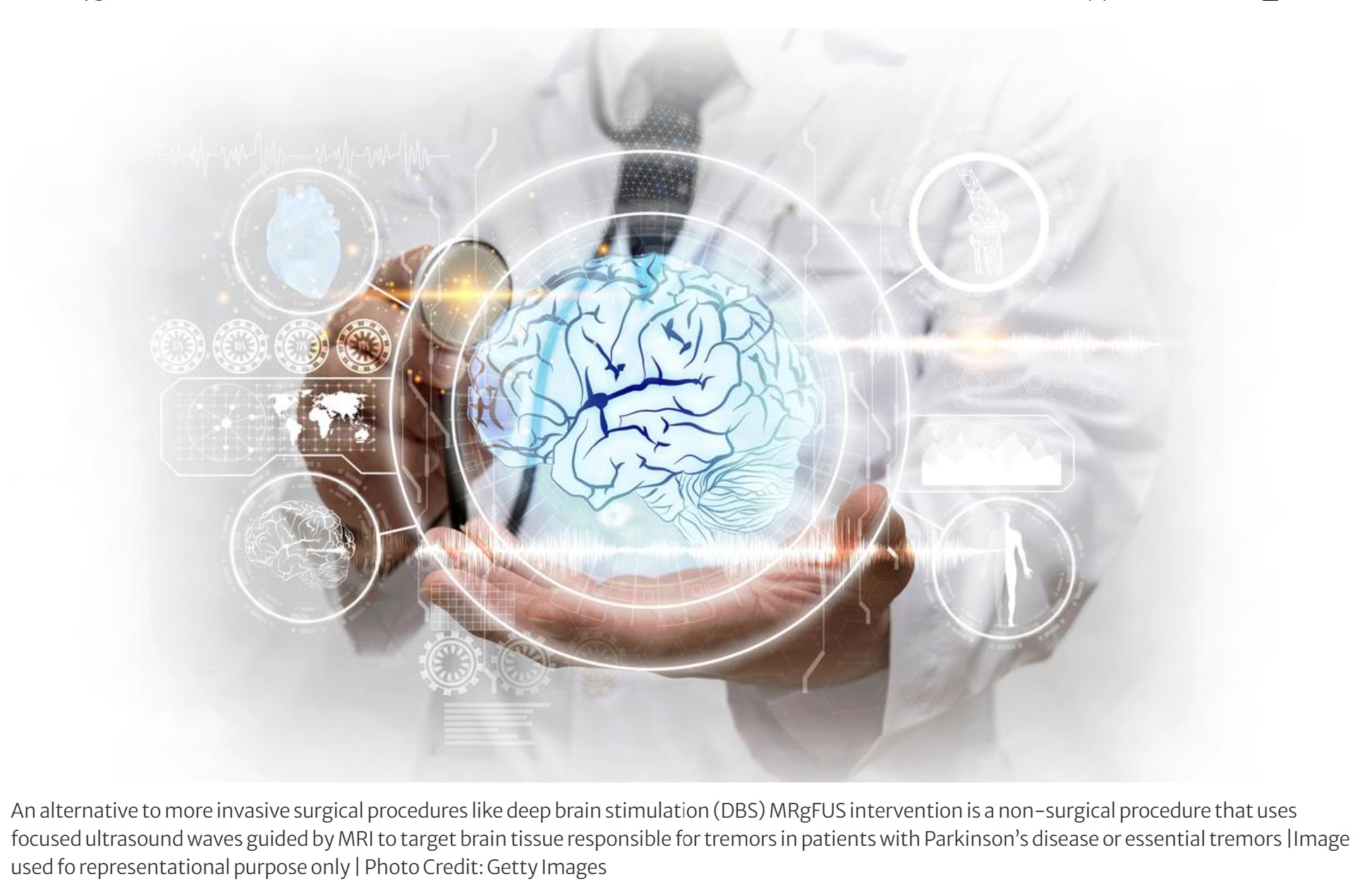
- 02 Jul 2025
In News:
India has recently introduced Magnetic Resonance-guided Focused Ultrasound (MRgFUS) technology, marking a significant advancement in non-invasive neurological treatment. This technique is now being offered in select hospitals, providing new hope for patients suffering from Essential Tremor (ET) and Tremor-Dominant Parkinson’s Disease (TD-PD) — two common but debilitating neurological disorders.
What is MRgFUS?
MRgFUS is a non-surgical, incisionless medical intervention that uses high-intensity focused ultrasound energy, guided by real-time MRI, to target and ablate precise regions of brain tissue responsible for tremors, especially in the thalamus, a key brain relay centre.
Unlike traditional procedures like Deep Brain Stimulation (DBS) that require surgery and implants, MRgFUS is performed without any cuts or anaesthesia and allows immediate symptom relief with minimal recovery time.
Key Features of MRgFUS
- Incisionless procedure: No need for surgical opening of the skull
- MRI-guided precision: Real-time monitoring and adjustment
- Rapid recovery: Hospital stay of 1–2 days
- No implants or batteries: One-time treatment
- Immediate results: Visible tremor relief during the procedure itself
Medical Significance
Essential Tremor (ET):
- Affects ~1% of global population
- Incidence increases with age: ~5% of people over 60
- Not life-threatening but impairs daily life — eating, writing, speaking
- Leads to social isolation, anxiety, and functional disability
MRgFUS offers a safe, effective, and non-invasive solution for patients who are unwilling or unfit for brain surgery.
Availability in India
MRgFUS has been introduced in several advanced medical centres:
- Sir Ganga Ram Hospital, Delhi – First private hospital in North India to offer the procedure
- AIIMS, Delhi – First government institution to adopt it
- Royal Care Super Speciality Hospital, Coimbatore – Pioneer centre in India
- KIMS Hospitals, Telangana
As of mid-2025, over 200 patients in India have undergone the procedure successfully, with more than 25,000 globally.
Cost and Duration
- Procedure Cost: ?19–23 lakh
- Duration: 1–3 hours
- Performed by: A multidisciplinary team of neurologists, neurosurgeons, and neuroradiologists
Global Context and Technological Backing
- Insightec, a global leader in MRgFUS technology, is facilitating its expansion in India.
- The company is also exploring new clinical applications for the same technology in other neurological disorders beyond ET and Parkinson’s.
India Energy Stack (IES)
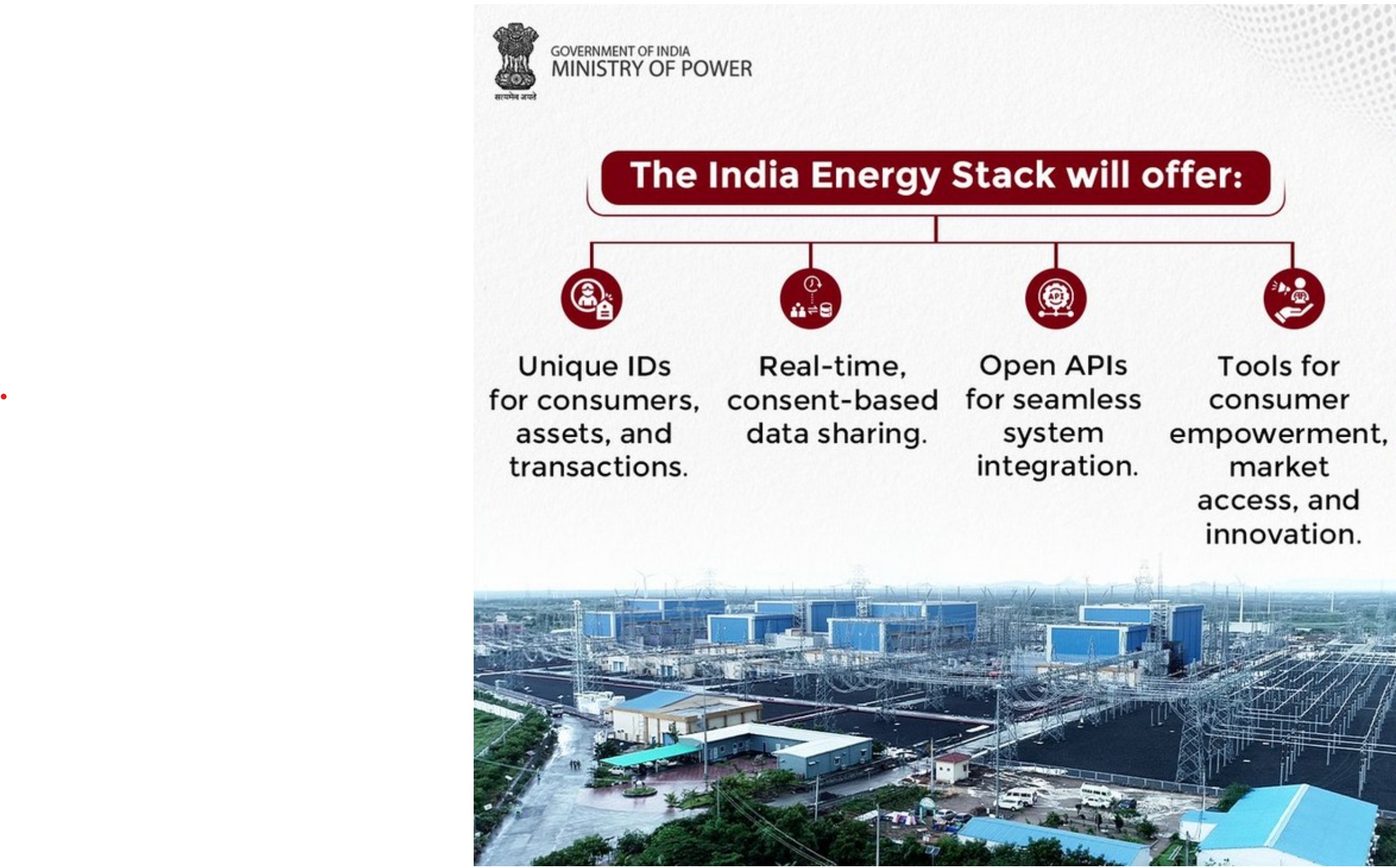
- 02 Jul 2025
In News:
In a transformative move aimed at digitising India’s power sector, the Ministry of Power has announced the conception of the India Energy Stack (IES) — a Digital Public Infrastructure (DPI) initiative designed to build a unified, secure, and interoperable digital ecosystem across the energy value chain.
This effort aligns with India’s goals of achieving a $5 trillion economy and meeting its Net Zero commitments, while addressing the growing complexities of a rapidly evolving energy landscape marked by renewables, electric vehicles, and consumer-centric markets.
What is India Energy Stack (IES)?
The India Energy Stack is envisioned as a standardised, open, and secure digital infrastructure to:
- Streamline operations in the power sector
- Empower consumers with access to real-time, consent-based data
- Integrate renewable energy into the national grid
- Enhance the efficiency of Distribution Companies (DISCOMs)
The initiative is spearheaded by the Ministry of Power, drawing inspiration from successful DPI models like Aadhaar (identity) and UPI (digital payments).
Core Features of IES
- Unique IDs: Assigned to consumers, assets, and energy transactions
- Real-time Data Sharing: Consent-based access for secure and accountable data exchange
- Open APIs: Enabling seamless integration across utility systems and third-party applications
- Consumer Empowerment Tools: Market access platforms, billing transparency, demand response options, and innovation support
- Interoperability: Standardised protocols for all stakeholders in the electricity ecosystem
Implementation Strategy
1. Proof of Concept (PoC) – 12 Months
A year-long pilot phase will test the India Energy Stack using real-world scenarios in partnership with selected utilities and DISCOMs.
2. Utility Intelligence Platform (UIP)
The UIP is a modular, analytics-driven application built on the India Energy Stack. It aims to:
- Provide real-time insights to utilities, policymakers, and regulators
- Enable smart energy management
- Enhance decision-making for grid operations and consumer services
3. Pilot Regions
The PoC will be conducted in collaboration with DISCOMs in:
- Mumbai
- Gujarat
- Delhi
Institutional Framework
- A dedicated Task Force has been established by the Ministry of Power.
- It includes experts from:
- Technology domain
- Power sector operations
- Regulatory bodies
- The Task Force will guide:
- System architecture design
- Pilot implementation
- National scale-up strategy
Expected Outcomes
- India Energy Stack White Paper for public consultation
- UIP deployment in pilot cities
- National roadmap for phased rollout of IES across all states and UTs
- Improved grid stability, energy access, and transparency in service delivery
- Enhanced integration of renewable energy sources into the mainstream grid
Significance for India’s Power Sector
The India Energy Stack has the potential to be a game-changer for the power sector, enabling:
- Modernisation of legacy systems
- Digital empowerment of consumers
- Efficient energy trading and billing
- Decentralised and democratised power governance
As India undergoes its green energy transition, IES will serve as the digital spine supporting clean, accountable, and consumer-centric power distribution.
At Sea Observer Mission
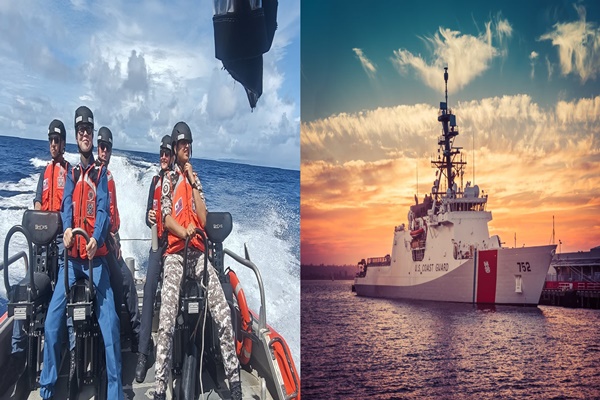
- 02 Jul 2025
In News:
In a major milestone for regional security, the QUAD nations — India, Japan, the United States, and Australia — have launched their first-ever 'At Sea Observer Mission'. This cross-embarkation initiative, conducted under the Wilmington Declaration, seeks to deepen maritime interoperability, operational coordination, and domain awareness in the Indo-Pacific region.
This move signifies the QUAD’s growing shift from diplomatic coordination to practical maritime collaboration, in line with the vision outlined at the QUAD Leaders’ Summit in September 2024.
Key Features of the At Sea Observer Mission
- Participating Nations: India, Japan, USA, and Australia — the four QUAD countries.
- Agencies Involved:
- Indian Coast Guard (ICG)
- Japan Coast Guard (JCG)
- United States Coast Guard (USCG)
- Australian Border Force (ABF)
- Vessel Involved:USCGC Stratton (US Coast Guard Cutter) currently en route to Guam.
- Observer Teams: Two officers from each country, including women officers, embarked for the mission.
- Format:Cross-embarkation, where officers from different countries are hosted on board a partner nation's ship to enable firsthand operational learning.
Objectives and Strategic Relevance
- Strengthening Maritime Security
- Promotes collective surveillance, intelligence sharing, and maritime law enforcement.
- Enhances preparedness against common threats such as illegal fishing, piracy, smuggling, and disaster response.
- Boosting Interoperability and Coordination
- Lays groundwork for real-time joint operations and coordinated patrols.
- Encourages standardization of practices and communication protocols across QUAD navies and coast guards.
- Upholding the Rules-Based Order: Reinforces commitment to a Free, Open, Inclusive, and Rules-Based Indo-Pacific, countering unilateral actions and grey-zone threats in the region.
Indian Perspective: SAGAR and IPOI
India’s participation in the mission reflects its broader strategic vision of SAGAR (Security and Growth for All in the Region). It also aligns with India’s leadership in the Indo-Pacific Oceans Initiative (IPOI), particularly in the pillars of:
- Maritime Security
- Capacity Building and Resource Sharing
- Disaster Risk Reduction and Management
- Maritime Ecology and Maritime Resources
India's active role demonstrates its commitment to multilateral maritime cooperation, gender inclusivity, and regional stability.
Long-Term Implications: Toward a 'QUAD Coast Guard Handshake'
The ‘At Sea Observer Mission’ represents a foundation for the future institutionalisation of QUAD maritime security cooperation, informally dubbed the ‘QUAD Coast Guard Handshake.’ This aims to:
- Foster trust and operational familiarity
- Improve collective resilience against emerging maritime challenges
- Create a responsive, inclusive, and rule-abiding Indo-Pacific maritime domain
Space-Based Surveillance-III Programme
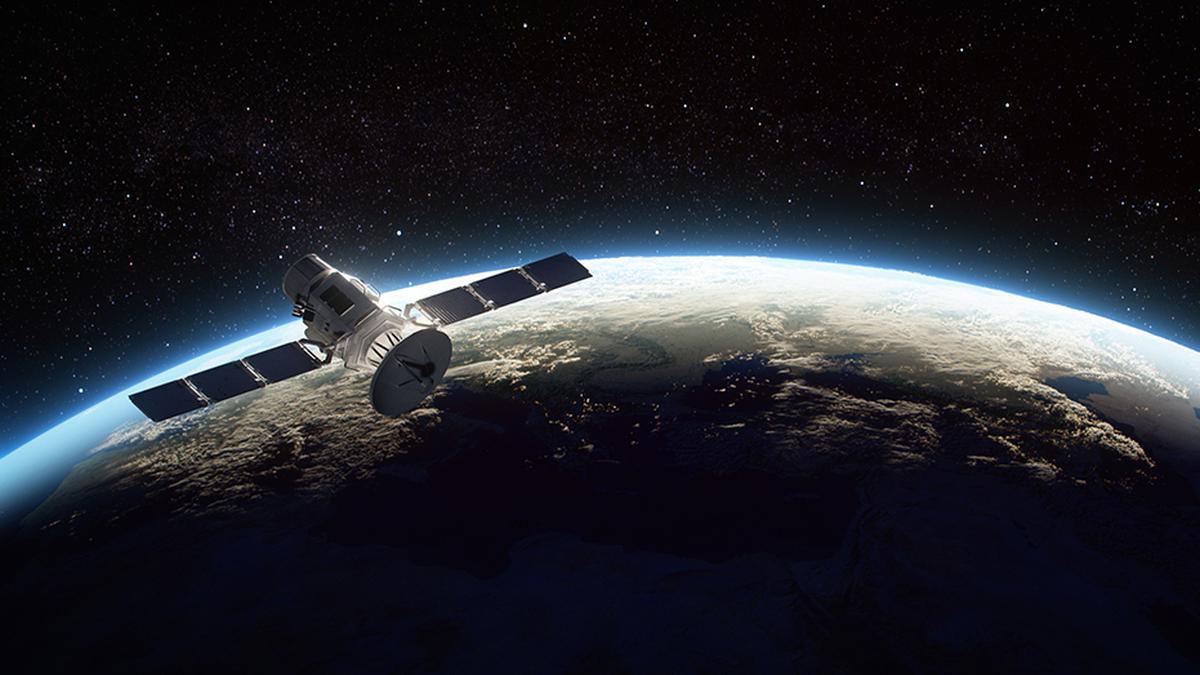
- 02 Jul 2025
In News:
Building on critical lessons from Operation Sindoor, where satellite surveillance played a pivotal role in precision military responses, the Union Government has decided to fast-track the launch of 52 dedicated surveillance satellites. The move is aimed at enhancing real-time, all-weather, and round-the-clock monitoring of India’s land and maritime borders, particularly with China and Pakistan.
The decision comes amid growing emphasis on space-based intelligence, surveillance, and reconnaissance (ISR) capabilities to counter modern threats, including drones and hypersonic weapons.
SBS-III Programme: Overview
The Space-Based Surveillance-III (SBS-III) programme was approved in October 2023 by the Cabinet Committee on Security (CCS) chaired by the Prime Minister. It is India’s most ambitious defence space project to date.
Key Features of SBS-III:
- Total Satellites: 52 dedicated military satellites
- ISRO: Will build and launch 21 satellites
- Private Sector: Will develop 31 satellites
- Launch Timeline:
- First launch by April 2026
- Full constellation targeted by end of 2029
- Project Cost: ?26,968 crore (approx. $3.2 billion)
- Supervising Agency:Defence Space Agency (DSA) under the Integrated Defence Staff (IDS), Ministry of Defence
Strategic Objectives and Capabilities
- Surveillance Reach and Coverage
- Wider coverage of China, Pakistan, and Indian Ocean Region (IOR)
- Reduced revisit times: Faster and more frequent imaging of sensitive areas
- Capability to monitor airfields, military bases, and staging grounds deep inside adversary territory
- Operational Orbits
- Satellites to operate in both Low Earth Orbit (LEO) and Geostationary Orbit (GEO) for layered coverage
- Designed to counter China’s anti-satellite (ASAT) capabilities including kinetic and electronic warfare systems
Technology and Innovations
- Artificial Intelligence (AI) Integration
- Satellites will use AI-powered decision-making to enhance image processing, target detection, and threat identification
- Ability to interact with each other and form a Geo-Intelligence (GeoInt) network for real-time intelligence sharing
- Small Satellite Launch Vehicles (SSLV)
- ISRO to transfer SSLV technology to private players
- Enables rapid satellite deployment during emergencies, ensuring strategic agility and resilience
Lessons from Operation Sindoor
During Operation Sindoor, Indian defence forces used satellite-based surveillance to track drone and missile trajectories, providing precise actionable intelligence. This success underscored the need for:
- High-resolution radar imaging
- Day-night and all-weather capabilities
- Faster intelligence turnaround time
These operational insights directly influenced the SBS-III mission design and its urgency.
Defence Space Agency (DSA)
- Established in 2019, replacing the Integrated Space Cell
- Operates under the Ministry of Defence’s Integrated Defence Staff (IDS)
- Coordinates with ISRO, DRDO, and Armed Forces on:
- Space warfare strategy
- Protection of Indian space assets
- Integration of ISR data with battlefield operations
Eight Years of GST

- 02 Jul 2025
In News:
The Goods and Services Tax (GST) was implemented on 1st July 2017, aiming to unify India’s fragmented indirect tax system into a single, nation-wide tax. It replaced multiple central and state levies such as excise duty, service tax, VAT, and others.
By simplifying the tax structure and improving transparency, GST aimed to enhance compliance, remove tax cascading, and create a common national market. As of 1st July 2025, GST has completed eight years.
Key Highlights of 2024–25
- In the financial year 2024–25, GST collections reached an all-time high of ?22.08 lakh crore, representing a growth of 9.4% over the previous year. The average monthly collection was ?1.84 lakh crore. The number of active GST taxpayers crossed 1.51 crore.
- According to the Deloitte GST@8 survey, 85% of respondents across industries reported a positive experience with GST, highlighting improvements in compliance, transparency, and ease of doing business.
Structure of the GST System
Components of GST
GST operates under a dual model:
- Central GST (CGST) and State GST (SGST) for intra-state transactions.
- Integrated GST (IGST) for inter-state transactions and imports.
Rate Structure
The GST Council has approved a multi-tier rate structure:
- Standard slabs of 5%, 12%, 18%, and 28% apply to most goods and services.
- Special lower rates include 0.25% on rough diamonds, 1.5% on cut and polished diamonds, and 3% on gold, silver, and jewellery.
- A Compensation Cess is levied on select goods such as tobacco, aerated drinks, and luxury cars to compensate states for revenue loss during the transition.
Key Features of GST
- Destination-Based Tax: GST is levied at the place of consumption, rather than origin. This ensures equitable revenue distribution and smooth credit flow across the supply chain.
- Input Tax Credit (ITC): Businesses can claim credit for taxes paid on inputs. This eliminates the cascading effect of taxes and reduces overall costs.
- Threshold Exemption: Small businesses with turnover below ?40 lakh for goods and ?20 lakh for services are exempt from GST, reducing the compliance burden on micro-enterprises.
- Composition Scheme: Businesses with turnover up to ?1.5 crore (goods) and ?50 lakh (services) can opt for a simplified tax scheme with fixed rates and minimal paperwork.
- Digital Compliance: All processes—from registration to return filing and payments—are conducted online through the GSTN portal. This digital-first approach enhances transparency and efficiency.
- Sector-Specific Exemptions: Essential sectors such as healthcare and education are either exempt or taxed at concessional rates to ensure affordability.
- Revenue Sharing: GST enables seamless credit transfers and transparent revenue sharing between the Centre and States, strengthening cooperative fiscal federalism.
Impact of GST
On MSMEs
- GST has provided major relief to micro, small, and medium enterprises by raising exemption thresholds and simplifying compliance. The introduction of the composition scheme allows them to pay tax at a flat rate with simplified filing.
- The Trade Receivables Discounting System (TReDS) has also expanded access to credit. As of May 2024, four digital platforms were operational, with over 5,000 buyers and 53 banks and 13 NBFCs registered as financiers.
- Other initiatives include quarterly return filing for businesses with turnover up to ?5 crore and SMS-based NIL return filing, reducing administrative hassle for small taxpayers.
On Consumers
- GST has benefited consumers by lowering tax rates on essential goods such as cereals, edible oils, sugar, and snacks. A study by the Finance Ministry found that GST led to an average household saving of 4% in monthly expenses.
- The expansion of the tax base from 60 lakh registered taxpayers in 2017 to over 1.51 crore in 2025 has enabled the government to rationalize rates further.
On the Logistics Sector
- The removal of inter-state check posts and the introduction of e-way bills have significantly improved logistics efficiency. Transport time has reduced by over 33%, and businesses no longer need to maintain warehouses in every state. This has facilitated the creation of centralized, tech-enabled supply chains.
Revenue Performance Over Time
Since its launch, GST collections have shown consistent growth. In 2020–21, collections stood at ?11.37 lakh crore. They rose to ?14.83 lakh crore in 2021–22, ?18.08 lakh crore in 2022–23, ?20.18 lakh crore in 2023–24, and finally to ?22.08 lakh crore in 2024–25. This reflects improved compliance, economic recovery, and digital enforcement.
GST Council and Its Role
Constitutional Basis: The GST Council was constituted under Article 279A of the Constitution following the passage of the 122nd Constitutional Amendment Act. The Council was formally set up after Presidential assent on 8th September 2016.
Composition: The Council includes:
- Union Finance Minister as Chairperson
- Union Minister of State (Finance/Revenue)
- State Finance Ministers
- Special representation in case of constitutional emergency (Article 356)
Major Decisions: Since its inception, the GST Council has met 55 times and taken several reform-oriented decisions:
- Introduced e-way bills, e-invoicing, and the QRMP scheme
- Reduced GST on under-construction affordable housing from 8% to 1%
- Lowered GST on electric vehicles from 12% to 5%, and exempted large EV buses
- Streamlined compliance through auto-populated returns and QR codes
- Rationalized GST slabs, reducing items in the 28% slab from 227 to 35
- Set up GST Appellate Tribunals with Principal Bench in New Delhi
- Rolled out Aadhaar-based biometric authentication and clarified rules for vouchers
- Recommended full GST exemption on gene therapy and a legal framework for Invoice Management System
Skills for the Future
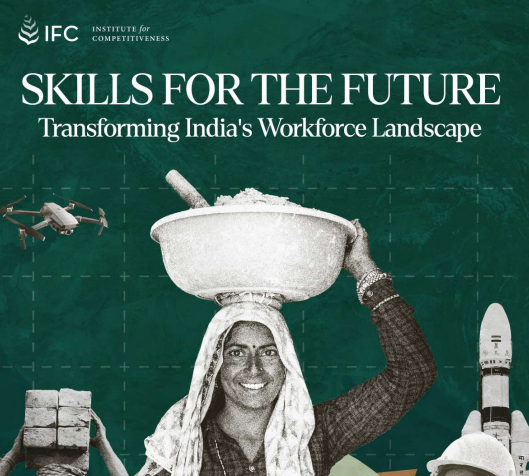
- 01 Jul 2025
In News:
Recently, theUnion Minister Jayant Chaudhary (MoS, Independent Charge – Ministry of Skill Development and Entrepreneurship, and MoS – Ministry of Education) unveiled the report "Skills for the Future: Transforming India’s Workforce Landscape", prepared by the Institute for Competitiveness (IFC). This data-driven report critically analyses India’s skilling ecosystem using PLFS 2023–24 and other datasets.
Significance of Skilling for India’s Development
- Demographic Dividend: India has one of the world’s youngest populations. Skilling is crucial to leverage this before population ageing sets in (by 2047).
- Economic Growth: A 1% rise in Gross Enrolment Ratio (GER) at the tertiary level increases GDP by 0.511% (Parika, 2020).
- Employment Creation: India needs to create 5 lakh non-farm jobs annually till 2030 (Economic Survey 2023–24).
- Global Competitiveness: Leadership in EVs, AI, biotechnology, and green energy demands a future-ready workforce.
Key Findings from the Report (PLFS 2023–24 Based)
1. Skill Distribution
- 88% of India’s workforce is in low-competency jobs (Skill Levels 1 & 2).
- Only 10–12% are employed in high-skill roles (Skill Levels 3 & 4).
- Only 4.5% of the workforce has received formal vocational training.
2. Education-Skill Mismatch
- Only 8.25% of graduates are in roles matching their skill level.
- Over 50% of graduates are employed in lower-skill jobs.
- Severe case of overqualification and underutilization of educational capital.
3. TVET and Sectoral Gaps
- Top 5 Sectors (66% of vocational enrolment):
- Electronics
- IT & ITeS
- Textiles & Apparel
- Healthcare & Life Sciences
- Beauty & Wellness
- Skill Deficits are critical in high-growth sectors like green tech, AI, biotech, and EVs.
4. Wage Inequality by Skill Level
Skill Level Avg. Annual Wage
Level 1 Rs.98,835
Level 2 Rs.1.26 lakh
Level 3 Rs.2.81 lakh
Level 4 Rs.3.94 lakh
46% of the workforce earns less than ?1 lakh/year, highlighting a major economic disparity.
5. Regional Disparities
- Low-Skilled States: Bihar, Assam (95% in Skill Levels 1 & 2)
- Higher-Skill States: Kerala, Chandigarh
- Migration and brain drain observed in low-skill, low-growth regions
Challenges Identified
- Skill-Education Mismatch: Graduates in low-skill jobs; vocational roles filled by underqualified informal workers.
- Weak TVET-Industry Linkage: Existing courses not aligned with Industry 4.0 or green economy needs.
- Low GER and Transition Dropout: Higher secondary GER at 57.56%, tertiary GER still below 30%.
- Gender & Social Exclusion: Low skilling access for women, SC/STs, rural youth.
- Data & Outcome Gaps: No central skill repository or real-time job-skill tracking.
Recommendations from the Report
- Institutional Reforms
- Launch a National Skill Gap Survey
- Establish a Central Skill Data Repository for real-time, evidence-based policymaking
- Curriculum & TVET Overhaul
- Update NCO codes (National Classification of Occupations)
- Integrate vocational training in schools
- Scale up PMKVY, NAPS, and credit-linked certifications
- Industry & Market Linkages
- Incentivise hiring of certified skilled labour
- Link industry wage structures to skill certifications
- Encourage industry-led training programs
- Targeted Inclusion & Regional Empowerment
- Empower State Skill Missions
- Prioritise high-potential regions and sectors
- Target women, SC/STs, informal sector workers
- Education Pipeline Strengthening
- Raise GER at higher secondary and tertiary levels
- Promote flexible, modular skilling programs for working populations and school dropouts
Digital Initiatives for Maritime Sector

- 01 Jul 2025
In News:
Recently, the Union Minister for Ports, Shipping and Waterways, Shri Sarbananda Sonowal, launched a series of digital and sustainability-driven initiatives aimed at modernising India’s maritime sector. These reforms are aligned with the Maritime India Vision 2030 and Amrit Kaal Vision 2047.
Major Digital and Policy Initiatives Launched
1. Digital Centre of Excellence (DCoE)
- MoU signed between: MoPSW and Centre for Development of Advanced Computing (CDAC)
- Objective: Accelerate digital transformation across Indian ports
- Key Features:
- Application of AI, IoT, Blockchain to optimize maritime logistics
- Drive real-time operational upgrades
- Support green and sustainable port operations
- Strategic Alignment: Supports Atmanirbhar Bharat, Viksit Bharat @2047
2. SAGAR SETU Platform
- Type: Unified digital interface for maritime trade and EXIM operations
- Go-Live Date: 26th June 2025
- Integration: Connects 80+ ports and 40+ stakeholders
- Objective:
- Streamline cargo and vessel documentation
- Enable paperless, seamless, and transparent logistics
- Improve Ease of Doing Business (EoDB)
- Linked with: PM Gati Shakti National Master Plan
3. DRISHTI Framework
- Full Form: Data-driven Review Institutional System for Tracking Implementation
- Purpose: Real-time monitoring of projects under Maritime India Vision 2030
- Key Pillars:
- KPI Monitoring
- Progress & Achievements Tracking
- Organisational Oversight
- Functional Cell Coordination
- Strategic Value: Informed decision-making, faster project delivery
4. Standardised Scale of Rates (SOR) Template for Major Ports
- Objective: Standardise port tariffs to remove inconsistencies and improve transparency
- Features:
- Uniform structure for port tariffs
- Digitally comparable rates across ports
- Ports retain flexibility for local economic conditions
- Expected Impact:
- Enhances investor confidence
- Improves user experience
- Aligns with global maritime practices
Sustainability & Clean Energy: Hydrogen Transition Roadmap
Gateway to Green Report
Title: Gateway to Green — Assessing Port Readiness for Green Hydrogen Transition in India
- Released by: Ministry of Ports in collaboration with the Indian Ports Association (IPA)
- Objective: Transform Indian ports into green hydrogen hubs by 2030
- Strategic Goals:
- Produce 5 million tonnes of Green Hydrogen by 2030
- Develop infrastructure for production, storage, and export
- Leverage India’s maritime geography for clean energy leadership
- Targeted Ports for Hydrogen Transition:
- V.O. Chidambaranar Port
- Paradip Port
- Deendayal Port
- Jawaharlal Nehru Port
- Mumbai Port
- Cochin Port
- Key Action Areas:
- Land allocation for hydrogen projects
- Demand stimulation and investor facilitation
- International collaborations for knowledge and finance
- Shared infrastructure models
Strategic Relevance for India
- Economic Impact:
- Enhances trade competitiveness and reduces logistics cost
- Modernises infrastructure to global benchmarks
- Boosts Make in India and port-led development
- Digital Governance:
- Promotes data-driven decision-making
- Enables real-time monitoring and performance tracking
- Environmental Sustainability:
- Aligns with India’s National Hydrogen Mission
- Ports act as catalysts for clean energy transition
International Potato Research Center
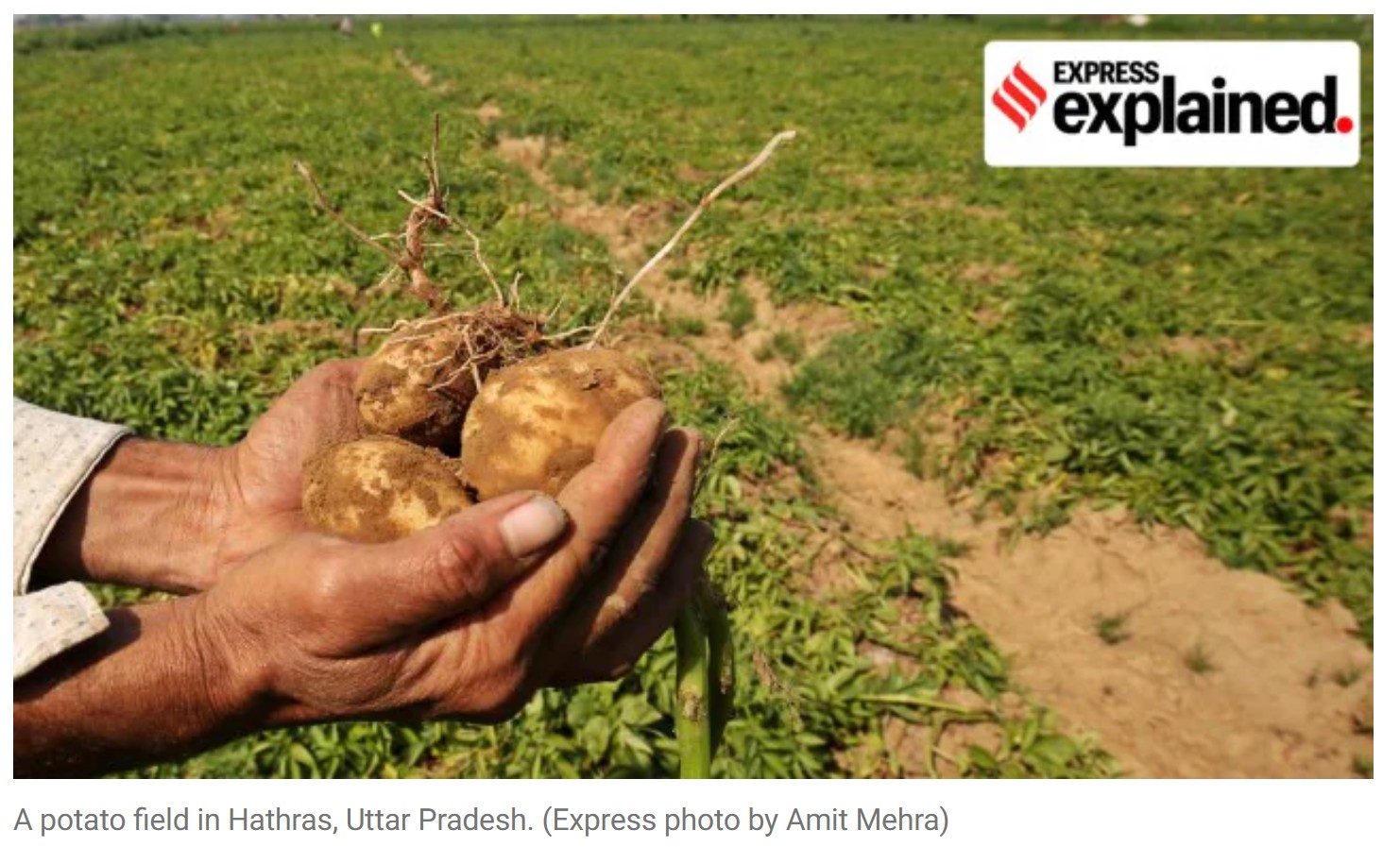
- 01 Jul 2025
In News:
- On June 25, 2025, the Union Cabinet approved the establishment of the CIP-South Asia Regional Center (CSARC) in Agra, Uttar Pradesh.
- The center will function as a regional wing of the International Potato Center (CIP) headquartered in Lima, Peru.
About CIP
- Founded: 1971
- Headquarters: Lima, Peru
- Focus Crops: Potato, Sweet Potato, and Andean roots & tubers
- Global Presence: South America, Africa, Asia
- India Operations: Since 1975, through partnership with ICAR
About CIP-South Asia Regional Center (CSARC)
- Location: Singna, Agra district, Uttar Pradesh
- Land Provided: 10 hectares (by UP Government)
- Total Project Cost: ?171 crore
- Indian Contribution: ?111.5 crore
- CIP Contribution: ?60 crore
- Implementing Ministry: Ministry of Agriculture & Farmers’ Welfare
Objectives of the Center
- Improve productivity of potato and sweet potato
- Promote climate-resilient, disease-free varieties
- Enhance post-harvest management and value addition
- Boost domestic seed production
- Support exports and food processing industries
- Increase farmer income, employment, and nutritional security
Why is this Significant?
- Potato is the 3rd most consumed crop globally (after rice and wheat)
- Sweet potato ranks 6th globally (after maize and cassava)
- India is the 2nd largest producer and consumer of potato
- Current average yield in India:
- Potato: ~25 tonnes/ha (Potential: >50 tonnes/ha)
- Sweet Potato: ~11.5 tonnes/ha (Potential: ~30 tonnes/ha)
- Establishment of CSARC will:
- Reduce dependency on seed imports
- Improve access to global germplasm
- Help bridge the yield gap
Global and National Context
- China is the largest potato producer (78.24 million tonnes, 2020)
- India is second (51.3 million tonnes, 2020)
- Top Potato-Producing States in India (2020–21):
- Uttar Pradesh (~15 million tonnes)
- West Bengal (~15 million tonnes)
- Bihar (~9 million tonnes)
Related Agricultural Research Institutions in India
- ICAR-CPRI, Shimla – Potato research
- ICAR-CTCRI, Thiruvananthapuram – Sweet potato and tuber crops
- IRRI-SARC, Varanasi – Regional center of International Rice Research Institute
CIP Centers Outside Peru
- China Center for Asia-Pacific (CCCAP) – Established in 2017 in Beijing, China
- India's CSARC (Agra) will be the second major CIP center outside Peru
Operation Bihali
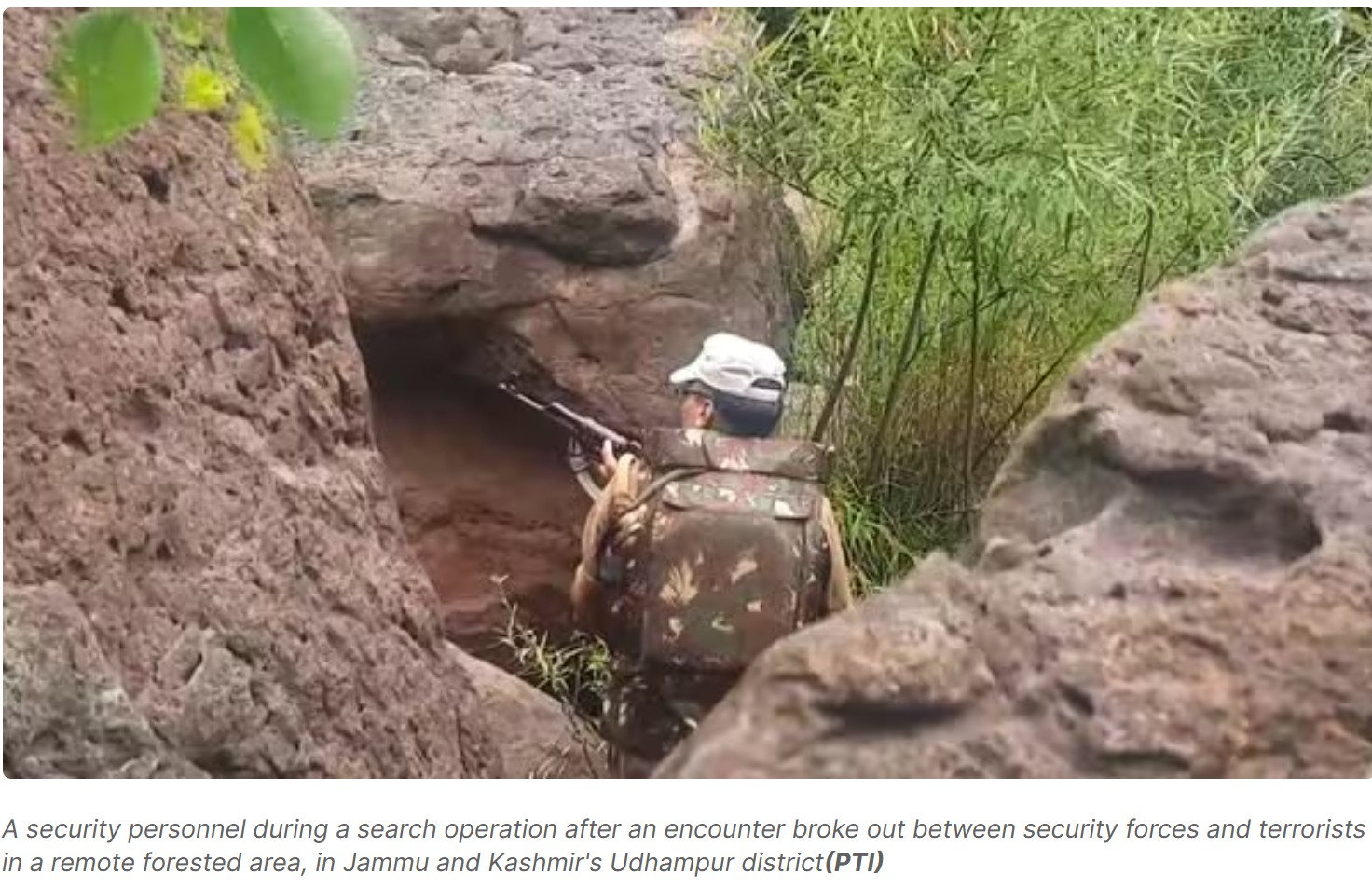
- 01 Jul 2025
In News:
A Jaish-e-Mohammad (JeM) terrorist was neutralized and three others were cornered in Operation Bihali, a high-risk counter-terror operation conducted in the Basantgarh area of Udhampur district, Jammu & Kashmir.
About Operation Bihali
Aspect Details
Type of Operation Counter-terrorism
Objective Neutralize a group of 4 JeM terrorists and prevent cross-border attacks
Location Basantgarh region, Udhampur district, J&K
Launched by Jointly by Indian Army Para Commandos and J&K Police
Operational Command Under the White Knight Corps
Intelligence Basis Based on 12 months of surveillance identifying the terrorist group
Key Significance
- Neutralization of JeM Threat: Thwarted potential attacks and ensured regional stability.
- Intelligence-Led Operation: Reflects enhanced surveillance and coordination between civil and military forces.
- Strategic Impact:
- Disrupted terror infiltration routes along sensitive zones.
- Reinforced India's proactive counter-insurgency posture in Jammu & Kashmir.
- Strengthened local security infrastructure in vulnerable border districts.
19th National Statistics Day
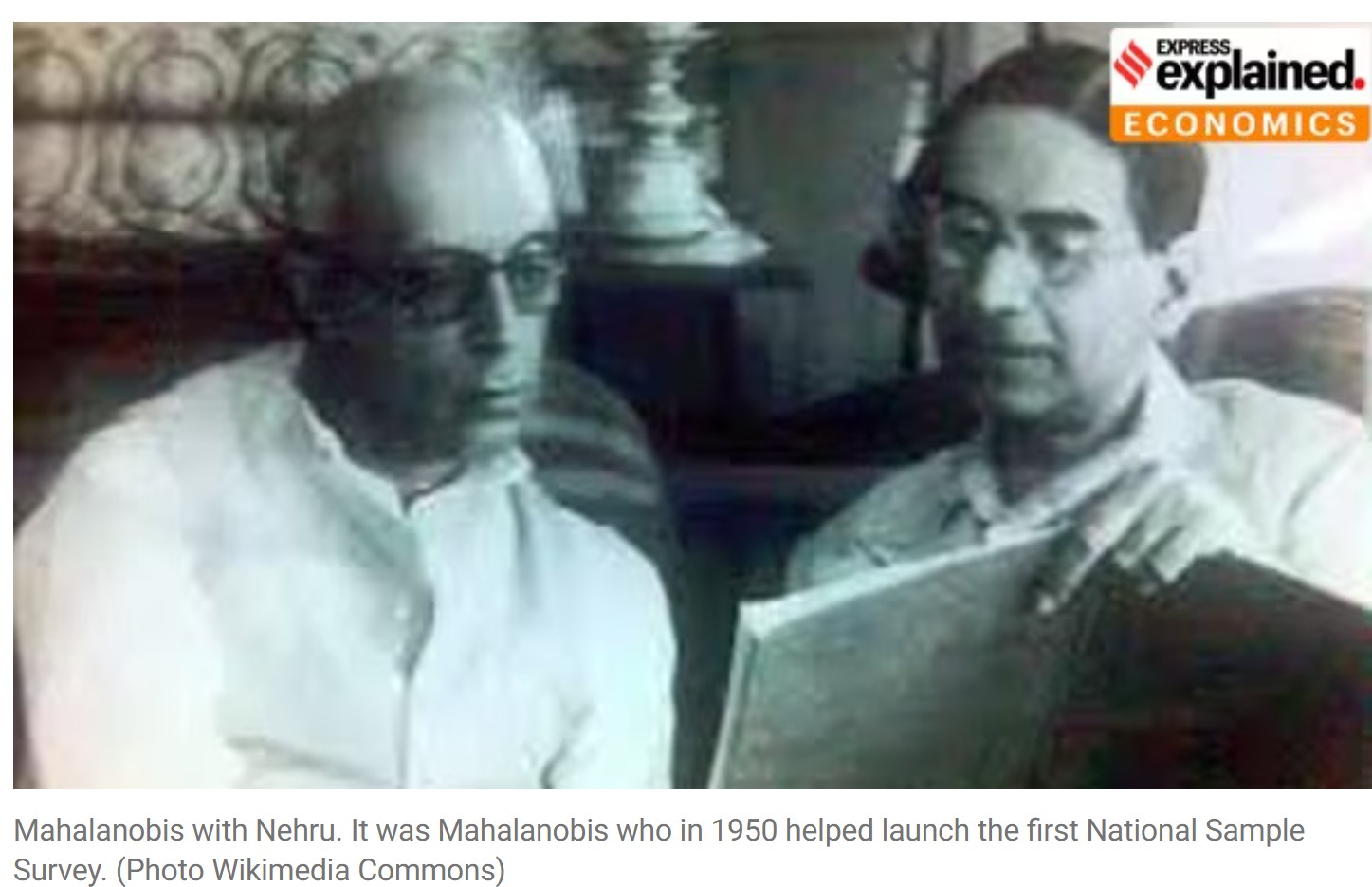
- 01 Jul 2025
In News:
MoSPI celebrates 19th Statistics Day honouring Prof. P.C. Mahalanobis and 75 years of National Sample Survey.
Key Highlights:
June 29 is observed as National Statistics Day in India to commemorate the birth anniversary of Prof. Prasanta Chandra Mahalanobis (1893–1972), widely regarded as the Father of Indian Statistics. The 2025 theme is "75 Years of National Sample Survey (NSS)".
The day is dedicated to promoting the role of statistics in nation-building and policy formulation, especially among the youth.
Key Contributions of P.C. Mahalanobis
1. Architect of India’s National Sample Survey (NSS)
- In 1950, Prof. Mahalanobis pioneered the National Sample Survey, India's first scientific and large-scale household data collection system.
- NSS is a large-scale, nationwide socio-economic data collection initiative conducted by the National Sample Survey Office (NSSO) under the Ministry of Statistics and Programme Implementation (MoSPI).
- Key Objectives of the NSS: Generate high-quality data to inform public policy, planning, and developmental programs.Conduct household surveys on:
- Consumption expenditure
- Employment & unemployment
- Health and education
- Migration and the informal sector
- Undertake the Annual Survey of Industries (ASI) to evaluate industrial performance.
- Support the agricultural sector by supervising crop area and yield estimation.
- Provide price statistics for rural and urban India to monitor inflation and cost-of-living changes.
- Key Features of the NSS
- All-India Scientific Coverage: Surveys conducted in both rural and urban areas using stratified multi-stage sampling methods.
- Organizational Structure – Four Major Divisions
Division Function
Survey Design & Research Division (SDRD) Survey planning, design, and methodology (HQ: Kolkata)
Field Operations Division (FOD) Data collection via 170+ regional offices (HQ: Delhi/Faridabad)
Data Processing Division (DPD) Data validation, tabulation, processing for surveys like PLFS & ASI
Survey Coordination Division (SCD) Coordinates survey activities and publishes Sarvekshana journal
- Multi-Thematic and Integrated Surveys
- Consumption patterns
- Employment trends (via Periodic Labour Force Survey - PLFS)
- Health and morbidity
- Education, migration, and social welfare indicators
- Support for Agriculture and Industry: Strengthens crop statistics and supports the ASI Web Portal for industrial data validation.
- Digital Integration & Real-Time Processing:Modernization efforts include urban sampling frame maintenance, tablet-based data collection, and real-time monitoring tools.
2. Mahalanobis Distance (1936)
- A multivariate statistical measure used to identify outliers and data anomalies.
- It quantifies the distance of a data point from a distribution, factoring in correlations between variables.
- Widely applied in fields such as public health, market research, and machine learning.
3. Flood Control and Environmental Planning
- In the 1920s, Mahalanobis used historical data to guide flood mitigation in Bengal and Odisha.
- His studies disproved incorrect assumptions (e.g., rising river beds) and recommended drainage improvements and dam construction.
- His early estimates contributed to the Hirakud Hydroelectric Project, inaugurated in 1957.
4. Institution Building: Founder of ISI & Sankhya Journal
- Founded the Indian Statistical Institute (ISI) in Kolkata in 1931, a premier research institute for statistics and mathematics.
- Launched ‘Sankhya’, India’s first statistical journal, fostering academic and applied research.
5. Role in National Planning & Technology Advocacy
- Chief architect of the Second Five-Year Plan, which introduced the Mahalanobis Model — emphasizing heavy industries and public sector-led growth.
- Advocated for digital computing in India. However, during the Cold War, the U.S. denied India access to the UNIVAC computer, fearing Mahalanobis’s pro-Soviet leanings.
Biographical Snapshot
Attribute Details
Born 29 June 1893, Kolkata (then Calcutta)
Education Presidency College; King's College, Cambridge
Field Statistics, Economic Planning, Data Science
Key Institutions Indian Statistical Institute (ISI), NSS, Planning Commission
Died 28 June 1972
Axiom Mission 4 (Ax-4)
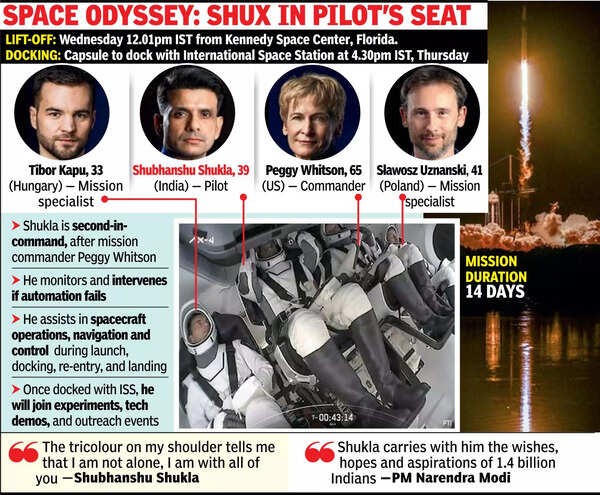
- 30 Jun 2025
In News:
India marked a historic moment in space exploration as Group Captain Shubhanshu Shukla became the first Indian to reach the International Space Station (ISS), 41 years after Rakesh Sharma’s 1984 mission.
Organizations Involved:
- Axiom Space – Mission organizer
- NASA – ISS host and operations support
- SpaceX – Provided Falcon 9 launch vehicle and Dragon capsule
Launch Details:
- Launch Date: June 25, 2025
- Launch Site: Launch Complex 39A, Kennedy Space Center, Florida
- Mission Duration: ~14 days aboard the ISS
Mission Objectives:
1. Scientific Research in Microgravity:
- Over 60 research experiments conducted across:
- Life sciences
- Material sciences
- Human physiology
- Earth observation
2. International Space Cooperation:
- Promotes global collaboration in low-Earth orbit science.
- Supports capacity-building for emerging space nations, including India, Poland, and Hungary.
3. National Space Program Development:
- Enables participating nations to strengthen human spaceflight capabilities.
- Acts as a stepping stone for India’s Gaganyaan and future space station plans.
Significance for India:
- Revival of Human Spaceflight:
- Marks India’s return to human space missions after four decades.
- Reinforces India's presence in international human space exploration.
- Boost to Gaganyaan Mission:
- Offers valuable operational experience and technical collaboration.
- Supports India’s vision to launch Gaganyaan, its first indigenous human spaceflight mission.
- Long-Term Space Ambitions:
- Aids India’s goal to establish its own space station by 2035.
- Positions India as a partner in space science diplomacy and global research.
- Scientific Prestige:India contributes to key microgravity experiments, enhancing its global research footprint in space.
Banakacherla Reservoir Project Dispute
- 30 Jun 2025
In News:
A fresh inter-state water dispute has surfaced between Telangana and Andhra Pradesh, with Telangana accusing Andhra Pradesh of violating provisions of the Andhra Pradesh Reorganisation Act, 2014 through its proposed Banakacherla Reservoir Project.
About the Banakacherla Reservoir Project
- Location: Banakacherla, Nandyal district, Andhra Pradesh
- Implementing State: Andhra Pradesh
- Objecting State: Telangana
- Purpose: To divert surplus Godavari river water to the drought-prone Rayalaseema region via the Krishna river system.
Key Features of the Project:
River Diversion and Infrastructure Upgrades:
- Polavaram Right Main Canal capacity to be increased from 17,500 to 38,000 cusecs.
- Thatipudi Lift Canal capacity to be enhanced from 1,400 to 10,000 cusecs.
- New reservoir at Bollapalli, with a tunnel through the Nallamala forest to transfer water to Banakacherla.
Lift Irrigation Points:
Five major lift stations planned:
- Harischandrapuram
- Lingapuram
- Vyyandana
- Gangireddypalem
- Nakirekallu
Inter-Basin Linkage:
- Connects Godavari → Krishna → Penna rivers.
- Aims to ensure water availability in Rayalaseema and address regional droughts.
Telangana’s Objections
1. Violation of the AP Reorganisation Act, 2014:Telangana alleges the project bypasses the statutory requirement of prior approval for new inter-basin water projects between the successor states.
2. Absence of Statutory Clearances:
- The project has not been cleared by:
- Krishna River Management Board (KRMB)
- Godavari River Management Board (GRMB)
- Central Water Commission (CWC)
3. Godavari Tribunal Allocation Overlooked:
- Telangana cites the Godavari Water Disputes Tribunal award which allocated 968 TMCft to the state out of 1,486 TMCft.
- Telangana argues that “surplus water” claims lack formal quantification or agreement.
4. Potential Impact on Telangana Projects:Telangana fears that Andhra’s diversion plan will affect its own irrigation schemes and reservoirs dependent on Godavari inflows.
Broader Implications
- This dispute underscores the growing tensions over inter-basin water transfers in India, especially in the context of climate variability and regional water stress.
- It highlights the need for:
- Transparent interstate coordination
- Functioning river boards
- Expedited dispute resolution mechanisms
RBI Eases Priority Sector Lending (PSL) Norms for Small Finance Banks (SFBs)
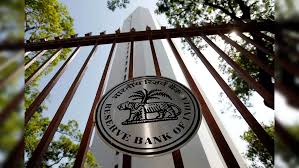
- 30 Jun 2025
In News:
In a major policy shift aimed at enhancing financial flexibility, the Reserve Bank of India (RBI) has reduced the Priority Sector Lending (PSL) target for Small Finance Banks (SFBs) from 75% to 60% of their Adjusted Net Bank Credit (ANBC).
What Has Changed?
Previous Norms:
- SFBs were required to allocate 75% of ANBC towards PSL.
- An additional 35% PSL requirement applied beyond the standard 40% applicable to universal banks.
- These strict targets led to:
- Difficulty in sourcing quality borrowers.
- Compressed profit margins.
- Limited portfolio diversification.
Revised Norms (2024):
- Overall PSL target reduced to 60% of ANBC.
- Additional PSL requirement brought down from 35% to 20%.
- Sub-sector allocation remains: SFBs must continue to dedicate 40% of ANBC to core PSL sectors such as agriculture, MSMEs, and weaker sections.
Objective of the Reform
- Enhance lending flexibility for SFBs.
- Improve asset quality and profitability by allowing portfolio diversification.
- Align SFB regulations more closely with those of other banks, without compromising on financial inclusion goals.
About Small Finance Banks (SFBs)
Origin and Mandate:
- Conceptualised by the NachiketMor Committee (2013).
- Regulated under the Banking Regulation Act, 1949.
- Created to expand financial inclusion by targeting:
- Small and marginal farmers,
- Micro and small enterprises (MSMEs),
- Unbanked and underserved populations.
Key Features:
- Offer basic banking services, including all deposit and small-ticket loan products.
- Operate on a localised model with strong rural and semi-urban outreach.
- Permitted to distribute non-risk sharing financial products like mutual funds and insurance.
Regulatory Requirements:
- At least 25% of branches in rural areas.
- Minimum 50% of loan portfolio must serve the MSME sector.
- Minimum net worth: ?100 crore at inception, to be raised to ?200 crore within 5 years.
- Maintain a Capital Adequacy Ratio (CAR) of 15% on risk-weighted assets.
Significance of the Move
- Offers SFBs greater operational autonomy and room to grow sustainably.
- Aims to balance developmental goals with commercial viability.
- Expected to promote credit flow to priority sectors while ensuring sound financial health of these institutions.
UN80 Initiative
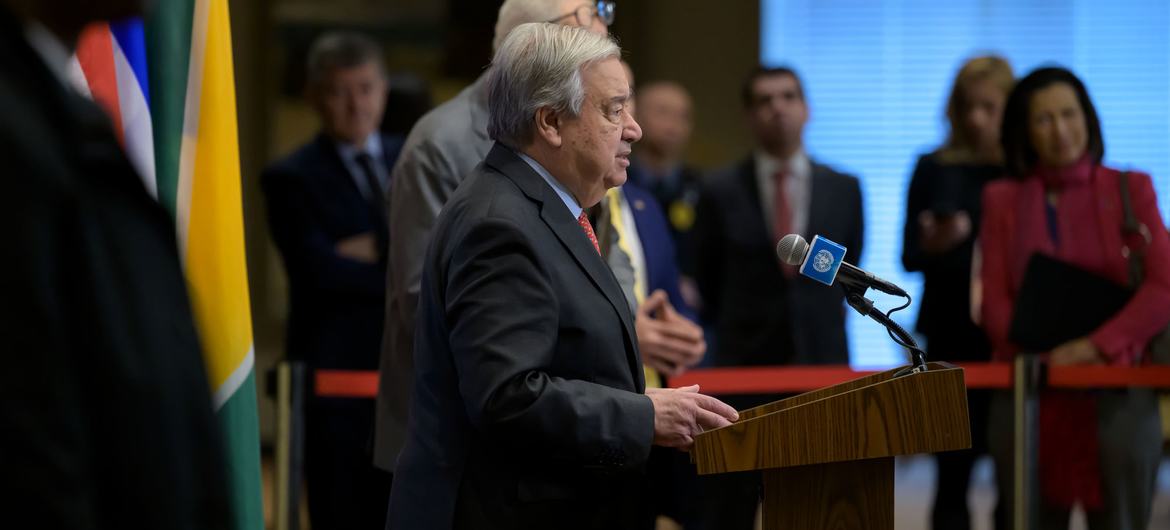
- 30 Jun 2025
In News:
In a significant move towards institutional transformation, UN Secretary-General António Guterres has launched the UN80 Initiative, aimed at overhauling the United Nations system in the run-up to the 80th anniversary of the UN Charter.
What is the UN80 Initiative?
The UN80 Initiative is a system-wide reform agenda designed to align the UN's structures, mandates, and operations with contemporary global challenges, including peacebuilding, sustainable development, and human rights.
Objectives:
- Modernize the UN architecture to improve responsiveness.
- Enhance accountability and reduce inefficiencies.
- Ensure effective delivery of core mandates in peace, development, and human rights.
Key Features of the UN80 Initiative:
1. Three Core Workstreams:
- Efficiency & Cost Reduction: Streamlining operations, eliminating overlaps, cutting administrative costs, and automating services.
- Mandate Implementation Review: Assessing the execution (not content) of over 3,600 UN mandates for effectiveness.
- Structural Reforms: Reorganizing departments and programs, especially in high-cost duty stations.
2. Formation of Thematic UN80 Clusters:
Seven thematic clusters focus on:
- Peace & Security
- Development (UN Secretariat and UN System)
- Humanitarian Affairs
- Human Rights
- Training & Research
- Specialized Agencies
3. Relocation and Rationalization:
- Proposes shifting operations from expensive cities like New York and Geneva.
- Seeks to abolish underperforming and redundant functions.
4. Budget Integration Timeline:
- Initial reforms to be reflected in the 2026 Revised Budget.
- Major structural reforms to be integrated into the 2027 Programme Budget.
Significance of the UN80 Initiative:
- Revitalizes Multilateralism: Supports the broader goals of the Pact for the Future and ensures the UN remains relevant.
- Boosts Operational Efficiency: Reduces waste, overlap, and underutilization of resources.
- Focuses on Results: Transitions from output-heavy reporting to impact-driven outcomes.
India’s Burden of Zero-Dose Children in 2023
- 30 Jun 2025
In News:
According to a recent Lancet study based on Global Burden of Disease data, India ranked second globally in terms of the number of unvaccinated or “zero-dose” children in 2023, trailing only Nigeria.
What Are Zero-Dose Children?
- The term “zero-dose children” refers to those who have not received even a single dose of any routine childhood vaccine.
- In 2023, 1.44 million children in India were identified as zero-dose, highlighting significant immunisation gaps.
Global and National Trends:
- Nigeria topped the list with approximately 2.5 million zero-dose children.
- Eight countries, including India and Nigeria, together accounted for over 50% of the global zero-dose burden.
- Globally, the number of zero-dose children dropped from 58.8 million in 1980 to 14.7 million in 2019, reflecting long-term progress.
Challenges in India:
- Despite the Universal ImmunisationProgramme (UIP) covering 12 vaccine-preventable diseases, several challenges persist:
- COVID-19 pandemic led to significant disruptions in routine immunisation.
- Vaccine hesitancy continues to undermine public health efforts.
- Geographical and socio-economic inequalities limit access to health services in certain regions.
- Between 2010 and 2019, measles vaccine coverage declined in over 100 countries, including India, further exacerbating public health risks.
Sree Narayana Guru

- 29 Jun 2025
In News:
The Prime Minister recently attended the centenary celebrations of the historic 1925 conversation between Mahatma Gandhi and Sree Narayana Guru, held at Vigyan Bhawan, New Delhi. The event marked the enduring relevance of Guru's message of social equality, spiritual unity, and reform.
Who was Sree Narayana Guru?
- Born: 20 August 1856, in a backward Ezhava community in Kerala
- Died: 20 September 1928
- Role: Spiritual leader, philosopher, poet, yogi, and one of India’s foremost social reformers from Kerala
Historical Context:
- During the 19th century, Kerala society was deeply caste-ridden, and the Ezhava community was subjected to systemic social exclusion.
- Guru revolted against caste oppression, advocating for spiritual liberation without ritual orthodoxy.
Core Philosophy:
- Message of Universal Unity:“OruJathi, OruMatham, OruDaivam, Manushyanu”
(One Caste, One Religion, One God for Mankind) — a powerful call for social harmony, inclusivity, and humanism. - Non-violent transformation:Unlike many radical reform movements, Guru’s approach was inclusive and reformative, rejecting social division without inciting confrontation.
Key Contributions:
- Religious and Spiritual Reforms:
- Aruvippuram Movement (1888):
- Consecrated a Shiva idol at Aruvippuram — a direct challenge to Brahmanical dominance and the exclusion of lower castes from temple worship.
- Established over 40 temples in Kerala, allowing unrestricted worship by the marginalized.
- Promoted yoga and meditation, and spent years in hermitage to attain spiritual depth.
- Aruvippuram Movement (1888):
- Social Reforms:
- Founded the Sivagiri Mutt (1904) near Varkala — a centre for spiritual and social awakening.
- SNDP Yogam (1903):
-
- Full form: Sri Narayana Guru Dharma ParipalanaYogam
- Aimed at securing education, government access, and political rights for the Ezhavas.
- Guru was the permanent chairman; Kumaran Asan, his disciple, became general secretary.
-
- Vaikom Satyagraha:Played a pivotal role in the anti-untouchability movement, alongside leaders like Mahatma Gandhi and Periyar.
- Promoted free education, ashrams, and vocational training for underprivileged children and communities.
- Sivagiri Foundation and Pilgrimage:
- Founded in 1924 to promote values like:Cleanliness, education, devotion, agriculture, handicrafts, and trade
- SivagiriTheerthadanam (pilgrimage):Initiated by his followers to reinforce values of purity, education, and organization
Literary Contributions:
- Guru was a Vedantic scholar and philosopher-poet. His notable works include:
- Advaitha Deepika
- Atmavilasam
- DaivaDasakam
- BrahmavidyaPanchakam
These texts reflected Advaita (non-dualist) philosophy, spiritual self-realization, and social ethics.
Legacy and Recognition:
- Revered as “Gurudevan”by his followers
- His birth and death anniversaries are observed as public holidays in Kerala and some other states
- Celebrated as Sri Narayana Jayanthi
Candida tropicalis
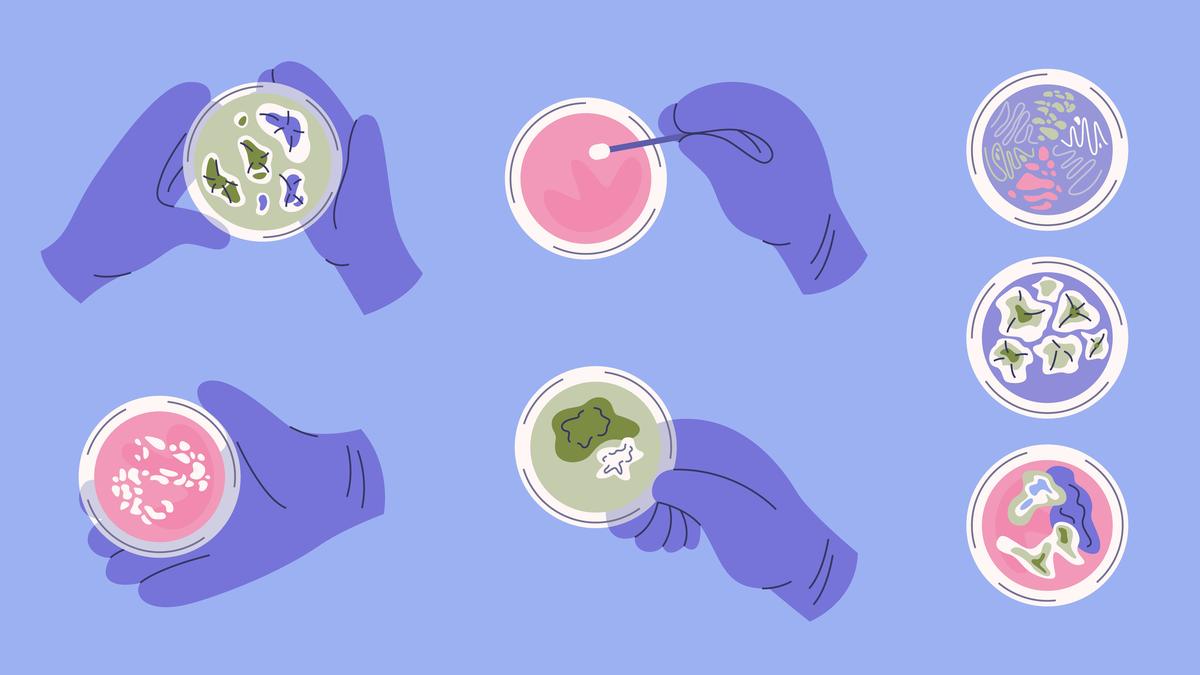
- 29 Jun 2025
In News:
A recent study published in PLoS Biology by researchers from Fudan University, China, has uncovered a disturbing link between the agricultural use of a common fungicide and the emergence of azole-resistant Candida tropicalis, a fungal pathogen responsible for high-mortality infections, especially in India and other tropical regions.
Candida tropicalis and Public Health Risk
- Candida tropicalis is a major fungal pathogen, particularly prevalent in India, associated with mortality rates of 55–60%.
- Azole-class antifungal drugs, such as fluconazole and voriconazole, are frontline treatments.
- Growing drug resistance is being reported in clinics globally, raising serious concerns for treatment efficacy and public health.
Fungicide Link to Drug Resistance
- Tebuconazole, a triazole-based fungicide, widely used in agriculture and gardening, has been found to be the primary driver of cross-resistance to clinical azoles in C. tropicalis.
- Tebuconazole accumulates and persists in the environment, exerting selective pressure on fungal strains.
- Clinical strains exposed to tebuconazole showed cross-resistance to both fluconazole and voriconazole.
Mechanism of Resistance: Ploidy Plasticity and Aneuploidy
- Resistant strains exhibit aneuploidy – a deviation in chromosome number, often with duplications or deletions of chromosome segments.
- This phenomenon, termed ploidy plasticity, is rare in most organisms due to its detrimental effects, but in C. tropicalis, it enables adaptive resistance.
Genetic Changes Observed:
- Duplication of TAC1 gene segment led to overexpression of ABC-transporters, proteins that pump out azoles and reduce their effectiveness.
- Deletion of HMG1 gene segment increased the synthesis of ergosterol, a compound crucial to fungal membranes, thus enhancing azole resistance.
- These adaptations allowed the resistant strains to trade growth rate for survival under antifungal pressure.
Emergence of Stable Haploid Strains
- The study unexpectedly identified haploid strains of C. tropicalis among resistant isolates.
- These haploids were found to be mating-competent, raising concerns over the genetic transfer of resistance traits.
- Further genomic analysis confirmed that naturally occurring haploid strains also exist, such as two clinical isolates from Spain.
Virulence and Resistance in Animal Models
- In mouse models, strains with altered ploidy exhibited greater virulence than their progenitor strains when treated with fluconazole.
- This finding suggests a dual threat: enhanced resistance and increased disease severity.
Implications and Concerns
- The unregulated and widespread use of triazole fungicides like tebuconazole in agriculture is unintentionally selecting for clinically significant drug resistance.
- These resistant fungal strains pose a direct threat to human health, particularly in immunocompromised patients and in settings with limited alternative antifungal therapies.
- Resistant strains can potentially spread and recombine through mating, complicating containment efforts.
State of the Climate in Asia 2024 Report
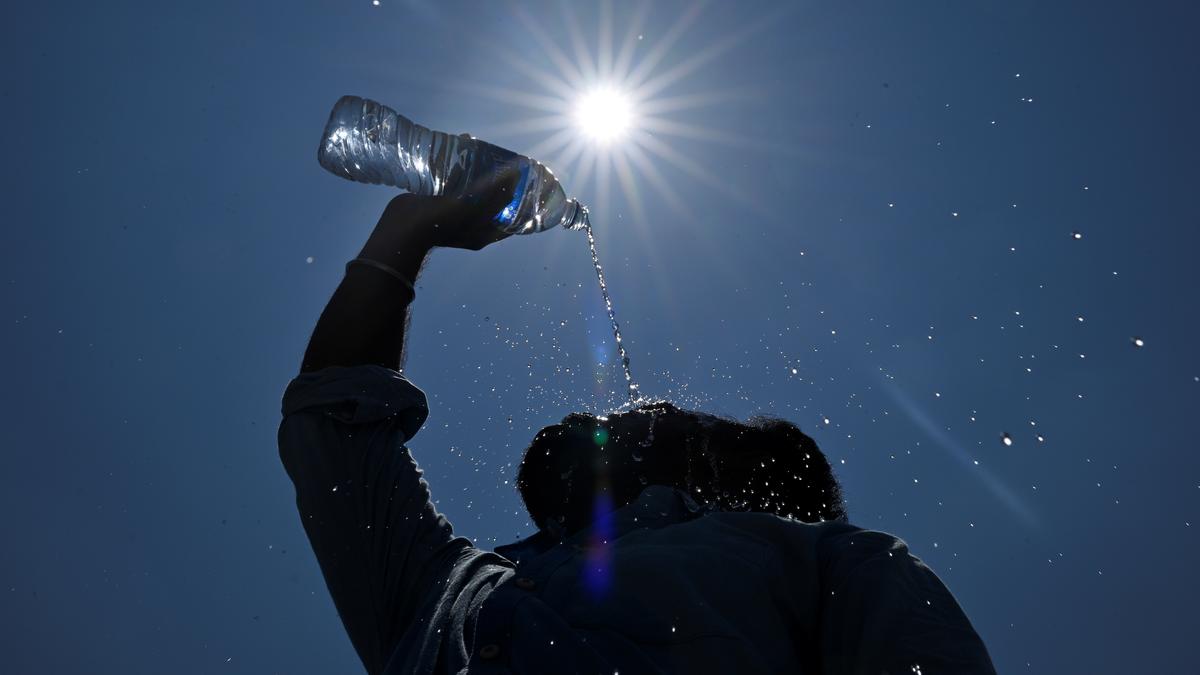
- 29 Jun 2025
In News:
The World Meteorological Organization (WMO) has released its annual State of the Climate in Asia 2024report, highlighting alarming trends in climate change impacts across the Asian continent. The report confirms that Asia is warming at nearly twice the global average, causing severe socio-economic and environmental consequences.
Key Climate Trends and Indicators in Asia (2024)
- Record Heat:The year 2024 was the warmest year in Asia’s history, marked by prolonged and widespread heatwaves across land and oceanic areas.
- Global Comparison:The global mean temperature in 2024 was the highest on record (1850–2024), surpassing the previous record of 1.45°C set in 2023. Each year between 2015 and 2024 ranks among the 10 warmest globally.
- Sea Surface Temperatures & Marine Heatwaves:Sea surface temperatures reached record highs,with Asian waters warming nearly twice as fast as the global average. Most Asian ocean areas experienced strong to extreme marine heatwaves, especially in the northern Indian Ocean, East China Sea, Yellow Sea, and waters near Japan.
- Sea Level Rise:Sea levels rose faster than the global average on both Pacific and Indian Ocean coasts of Asia, exacerbating risks for low-lying coastal areas.
Cryospheric Changes and Glacier Loss
- In Central Himalayas and Tian Shan ranges, 23 out of 24 monitored glaciers experienced mass loss in 2024.
- Consequences included increased risk of glacial lake outburst floods (GLOFs), landslides, and long-term threats to water security.
Scientific Warnings and Observations
The report highlights that the warming trend from 1991 to 2024 in Asia is nearly twice as fast as that between 1961 and 1990, underlining the acceleration of climate risks.
Implications for Asia
- Environmental:Rapid glacier melt, rising sea levels, and extreme weather are disrupting ecosystems, causing habitat loss and biodiversity decline.
- Economic:Agriculture, fisheries, and coastal infrastructure are suffering massive losses due to droughts, floods, and storms.
- Social:Heatwaves, displacements, and disaster-related fatalities are disproportionately affecting vulnerable populations, including the poor and elderly.
Digital Public Infrastructure for Fraud Risk Management
- 29 Jun 2025
In News:
The Reserve Bank of India (RBI) is set to develop a Digital Public Infrastructure for Fraud Risk Management (DPIP) under its supervision to curb rising instances of banking frauds in India. This aligns with broader efforts to enhance security and transparency in India’s financial ecosystem.
What is Digital Public Infrastructure (DPI)?
- Definition: DPI refers to foundational digital systems that are accessible, secure, interoperable, and designed to deliver essential public services.
- Examples in India:
- Aadhaar (Digital ID)
- Unified Payments Interface (UPI)
- DigiLocker, CoWIN, etc.
About DPIP
- Objective:To enhance fraud risk management through real-time intelligence sharing, data gathering, and interbank coordination using advanced technologies.
- Key Features:
- Will strengthen existing fraud detection systems in the banking ecosystem.
- Enables interoperable intelligence sharing between banks and financial institutions.
- Leverages AI/ML tools and data analytics for better predictive fraud detection.
- Institutional Mechanism:
- A committee under Shri A.P. Hota has been constituted to examine various aspects of DPIP’s implementation.
- RBI Innovation Hub (RBIH) is tasked with developing a prototype, in consultation with 5–10 public and private sector banks.
Need for DPIP
- Rise in Bank Frauds:
- As per RBI’s Annual Report:
- FY 2024: ?12,230 crore in frauds
- FY 2025: ?36,014 crore — almost 3x increase
- Increasing sophistication of cyber threats and fraud techniques necessitates robust preventive digital infrastructure.
- As per RBI’s Annual Report:
Other RBI Initiatives to Combat Bank Frauds
Initiative Description
Multi-Factor Authentication (MFA) Mandatory for all digital/electronic payments to ensure
secure transactions.
Zero Liability Framework Customers are not liable for losses arising from bank’s
negligence or third-party breaches.
bank.in and fin.in domains Reserved for verified bank websites to help customers
avoid phishing and fake sites.
Enhanced Rock Weathering (ERW)

- 29 Jun 2025
In News:
Enhanced Rock Weathering (ERW) is emerging as a novel nature-based carbon removal strategy, gaining global traction from Brazil’s sugar plantations to tea estates in India. It is being explored as a scalable solution to climate change through natural carbon capture mechanisms.
What is Enhanced Rock Weathering (ERW)?
- Definition: ERW is a geoengineering technique that accelerates the natural chemical process of rock weathering to capture and store atmospheric carbon dioxide (CO?).
- Scientific Basis:
- Natural weathering involves the breakdown of silicate rocks through carbonic acid, formed when CO? dissolves in water, eventually locking the carbon in stable forms like bicarbonate or limestone.
- ERW accelerates this process using fast-weathering rocks like basalt, ground into fine particles to maximize surface area and reactivity.
Effectiveness and Challenges
- Potential Carbon Removal:
- A US-based study found that 50 tonnes of basalt/hectare/year could potentially remove up to 10.5 tonnes of CO?/hectare over four years.
- However, field trials in Malaysia (oil palm) and Australia (sugarcane) have shown lower than expected carbon capture rates.
- Key Variables Affecting Effectiveness:
- Rock type and mineralogy
- Soil characteristics
- Temperature and rainfall patterns
- Land management practices
- Measurement Difficulties:
- Current techniques often overestimate CO? capture due to detection of cations that form even in the absence of carbonic acid reactions.
- Risk: This can lead to inaccurate carbon credit claims, undermining offset integrity.
Co-Benefits of ERW
- Soil Health Improvement:
- Increases soil alkalinity → Improves nutrient availability and crop productivity.
- Contributes to soil formation and resilience.
- Resource Efficiency:Basalt is abundant and often a quarrying by-product, lowering costs and emissions associated with mining.
- Ocean Acidification Mitigation:Even if CO? isn't sequestered directly, rock in the soil can neutralize acidic runoff, preventing CO? release from aquatic systems downstream.
Risks and Concerns
- Health & Safety:
- Finely crushed rock may contain toxic heavy metals (depending on composition).
- Protective equipment is necessary during application.
- Carbon Credit Integrity:Overestimated CO? removal may allow companies to offset emissions inaccurately, leading to net increase in atmospheric carbon.
Global Adoption and Projects
- Countries Involved:Brazil, India, USA, Europe, and Latin America are trialing or implementing ERW.
- India Focus:Trials underway in Darjeeling tea plantations and other agricultural regions through startups like Mati Carbon.
- Global Milestones:
- First verified ERW carbon removal credits issued from a Brazilian project.
- Google signed the largest ERW deal for 200,000 tonnes of CO? removal credits (to be delivered by early 2030s).
- Terradot, an ERW company, sold 90,000 tonnes of carbon credits for $27 million, backed by firms like H&M.
Investor Interest and Innovation Push
- Private Sector Engagement:ERW has attracted big tech, fast fashion, and aviation sectors seeking nature-based offset solutions.
- Prize Recognition:Mati Carbon won the $50 million X Prize for carbon removal, recognizing the potential scalability and innovation of ERW.
India’s Coffee Exports

- 28 Jun 2025
In News:
India has emerged as a significant player in the global coffee trade, with its exports witnessing a sharp rise of 125% in the past 11 years, increasing from $800 million in 2014–15 to $1.8 billion in 2023–24, and continuing the momentum with over 25% growth in FY2025–26. This export surge highlights India's expanding footprint in the global premium coffee market, driven by a blend of policy support, sustainable cultivation practices, and global demand for specialty coffee.
Key Drivers of Export Growth
The Coffee Board of India, under the Ministry of Commerce, has played a pivotal role in this transformation through:
- Digitalisation of export permits, RCMC, and certificates of origin.
- Export incentives like freight and transit assistance—?3/kg for value-added exports and ?2/kg for green coffee to distant markets (e.g., US, Canada, Japan, Nordic countries).
- Subsidy support of 40% (up to ?15 lakh) for processing units (roasting, grinding, packaging).
- Global market intelligence and regular industry engagement to remove bottlenecks.
- Promotion via GI tags and digital branding campaigns.
These efforts have enhanced India’s readiness to meet stringent import regulations (e.g., EU deforestation norms) while enabling access to new and emerging markets.
Production and Cultivation
India is the 7th largest producer of coffee globally, accounting for about 3.5% of world production and ranks 5th in global coffee exports with a 5% share. The country produces 3.5–4 lakh tonnes of coffee annually, with Karnataka (70%), Kerala, and Tamil Nadu being major contributors.
- Arabica varieties: Kents, S.795, Cauvery, Selection 9.
- Robusta: High-yielding selections suited to Indian climate.
Climatic Features:
- Grown under two-tier shade canopies with over 50 native tree species.
- Arabica thrives at 1000–1500m, Robusta at 500–1000m altitudes.
- Requires 1600–2500 mm rainfall and 15°C–25°C temperature.
India is unique as the only country that cultivates 100% shade-grown coffee, which promotes biodiversity, soil and water conservation, and ensures a sustainable income for 2 million people, including small and marginal farmers.
Specialty and GI-Tagged Coffee
India’s coffee is known for its mild acidity, full-bodied flavour, and fine aroma. Intercropping with spices like pepper, cardamom, and vanilla further enhances its appeal. The country also boasts five regional and two specialty coffees with Geographical Indication (GI) tags, strengthening brand value in global markets.
The historic legacy of Indian coffee dates back over 400 years to the planting of coffee beans by Baba Budan in Karnataka, making it one of the oldest coffee traditions in Asia.
The Emergency in India (1975–1977)
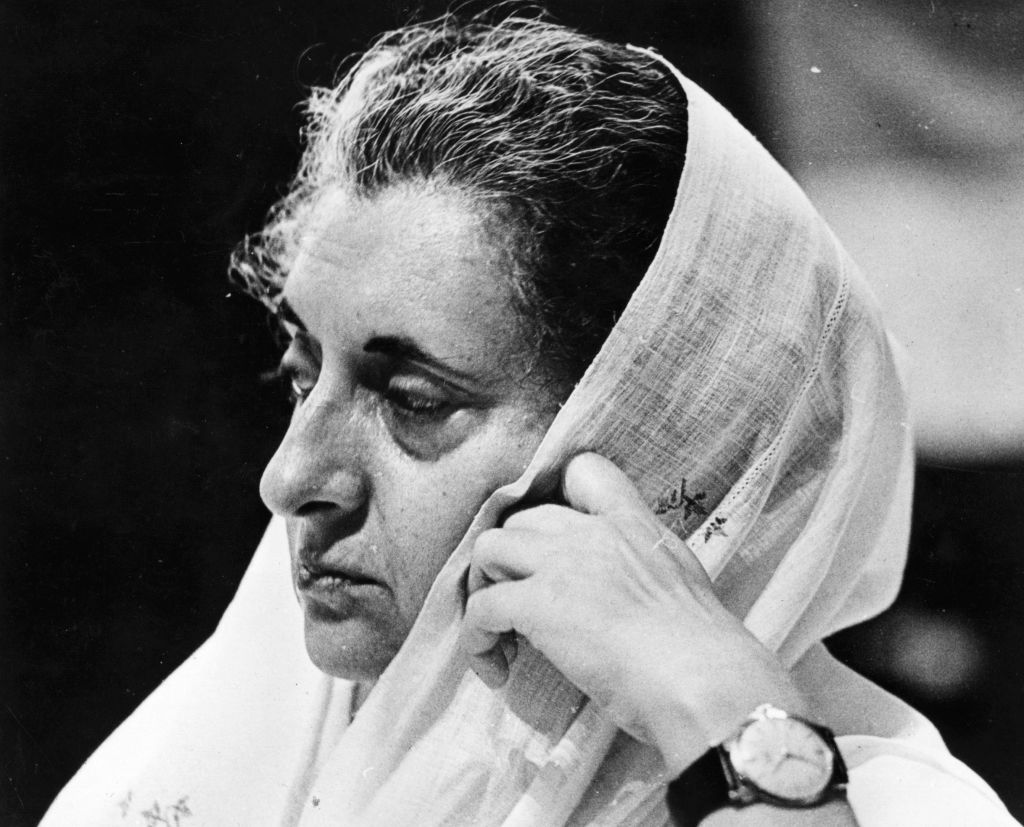
- 28 Jun 2025
In News:
The declaration of Emergency in India from 25 June 1975 to 21 March 1977 marks one of the most debated and transformative chapters in the country’s post-independence history. Proclaimed under Article 352 of the Constitution citing “internal disturbance”, this period had far-reaching legal, political, and social consequences. It served as a stress test for India’s democratic institutions and led to significant constitutional reforms.
Background:
- The early 1970s were marked by growing political discontent. Nationwide protests, especially in Bihar and Gujarat, were spearheaded by Jayaprakash Narayan against issues such as rising unemployment, inflation, corruption, and misuse of political power.
- The immediate provocation came from the Allahabad High Court’s judgment on 12 June 1975, which found Prime Minister Indira Gandhi guilty of electoral malpractice in her 1971 Lok Sabha campaign. The Court disqualified her from contesting elections for six years under the Representation of the People Act, 1951.
- Though the Supreme Court granted a conditional stay, political pressure intensified, with mass movements demanding her resignation.
Proclamation of Emergency
On 25 June 1975, President Fakhruddin Ali Ahmed, on the advice of the Prime Minister, declared a national Emergency under Article 352, citing internal disturbance. This was the third Emergency in India — the first two being during external wars (1962 with China and 1971 with Pakistan). However, this was the first peacetime Emergency.
Constitutional Basis
At that time, Article 352 allowed Emergency on three grounds:
- War
- External Aggression
- Internal Disturbance (later amended to “armed rebellion” by the 44th Amendment, 1978)
Suspension of Fundamental Rights
Two days later, on 27 June 1975, the government invoked:
- Article 358: Automatically suspended the freedoms under Article 19 (freedom of speech, assembly, movement, etc.)
- Article 359: Allowed suspension of Articles 14, 21, and 22, stripping protections related to equality before law, life and personal liberty, and protection against preventive detention.
Citizens lost access to courts for constitutional remedies. Prominent opposition leaders, including Jayaprakash Narayan, Morarji Desai, Atal Bihari Vajpayee, and L.K. Advani, were arrested under the Maintenance of Internal Security Act (MISA). According to the Shah Commission, around 35,000 individuals were detained without trial.
Censorship and Media Suppression
From 26 June 1975, press censorship was imposed. Newspapers were mandated to get clearance from government-appointed censors before publication. International news coverage was also tightly controlled, with telex messages of foreign correspondents placed under surveillance.
Key developments:
- On 20 July 1975, the Board of Film Censors was restructured to impose stricter control over cinema.
- On 1 February 1976, the four national news agencies — PTI, UNI, Samachar Bharati, and Hindustan Samachar — were merged into ‘Samachar’.
- The Press Council of India was dissolved.
Constitutional Amendments and Legislative Overreach
Several constitutional amendments were enacted to consolidate power:
- 38th Amendment (1975): Made the President’s Emergency declaration non-justiciable.
- 39th Amendment (1975): Excluded Prime Minister’s election from judicial review.
- 42nd Amendment (1976) (termed “Mini-Constitution”):
- Gave primacy to Directive Principles over Fundamental Rights
- Extended Lok Sabha and State Assembly terms from 5 to 6 years
- Limited judicial review, centralised authority
- Empowered Parliament to amend the Constitution without court scrutiny
Sterilisation Campaign
One of the most controversial aspects was the forced sterilisationprogramme led by Sanjay Gandhi. While aimed at population control, it resulted in widespread coercion and human rights violations.
- 1975–76: 26.42 lakh sterilisation procedures
- 1976–77: 81.32 lakh
- Total over two years: 1.07 crore
- Many were linked to access to ration cards, housing, loans, and employment
End of Emergency and Democratic Reversal
The Emergency was revoked on 21 March 1977. In the subsequent general elections (March 1977), the Congress party was defeated, and the Janata Party under Morarji Desai assumed power. This marked the first non-Congress government at the Centre
Post-Emergency Reforms: The Shah Commission and 44th Amendment
The Shah Commission (1977–79)
Set up in May 1977, chaired by Justice J.C. Shah, it investigated:
- Illegal arrests and detentions
- Press censorship
- Forced sterilisation
- Bureaucratic misuse and political excesses
44th Constitutional Amendment (1978)
To prevent future misuse:
- Replaced “internal disturbance” with “armed rebellion” as a ground for Emergency
- Restored judicial review of Emergency proclamations
- Safeguarded Fundamental Rights, particularly Articles 20 and 21
- Ensured Cabinet approval was mandatory before Emergency declaration
Dharti AabaJanbhagidari Abhiyan (DAJA)
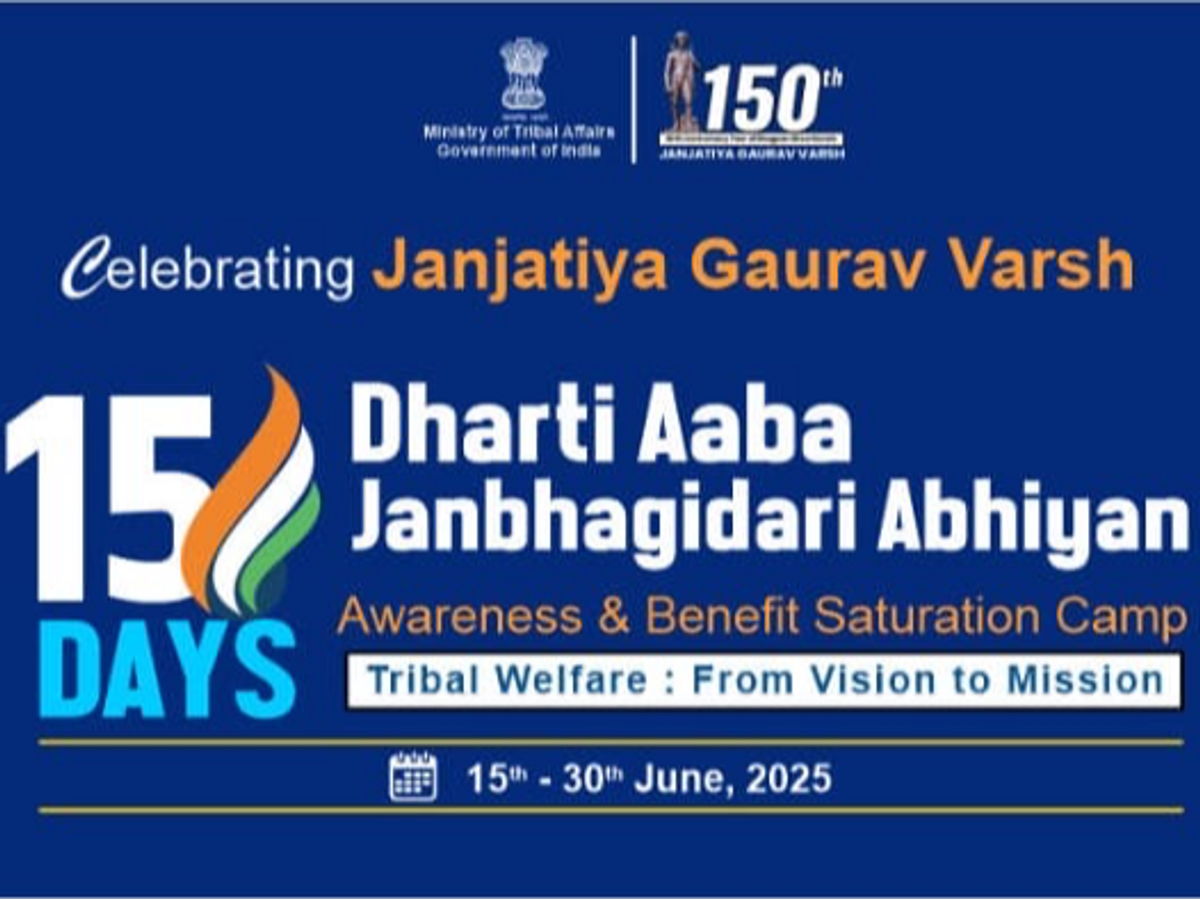
- 28 Jun 2025
In News:
In a landmark initiative for tribal inclusion, the Government of India has launched the Dharti AabaJanbhagidari Abhiyan (DAJA)—India’s largest-ever tribal outreach and empowerment campaign. The programme aims to ensure saturation of welfare schemes and promote tribal pride and participation, covering over 1 lakh tribal villages and PVTG habitations across 31 States and Union Territories.
What is DAJA?
- Full Name: Dharti AabaJanbhagidari Abhiyan — named in honour of Bhagwan Birsa Munda, a revered tribal freedom fighter.
- Launched by: Ministry of Tribal Affairs, Government of India.
- Nature: A people-centric campaign focused on participatory governance and last-mile delivery of services among Scheduled Tribes (STs) and Particularly Vulnerable Tribal Groups (PVTGs).
Objectives of DAJA
- Saturate government welfare schemes across all tribal settlements.
- Empower over 5.5 crore tribal citizens through Janbhagidari (people’s participation).
- Preserve and promote tribal identity and cultural heritage, invoking the legacy of Birsa Munda.
- Strengthen last-mile governance through technological and administrative convergence.
Key Features:
Feature Description
Geographic Coverage - 1 lakh+ tribal villages, including remote PVTG habitations, across 31 States/UTs.
Scheme Integration - Converges services such as Aadhaar, Ayushman Bharat, PM Kisan, PM
Ujjwala, Jan Dhan, pension schemes, and Forest Rights Act (FRA) claims.
Five Foundational Pillars -
- Janbhagidari (people’s participation)
- Saturation of welfare benefits
- Cultural inclusion
- Convergence of schemes
- Last-mile delivery
Technology-Driven Monitoring - Use of real-time dashboards and data analytics for
transparent tracking and reporting.
Cultural Revival - Celebrates tribal cuisines, folk arts, handicrafts, and oral traditions
during outreach camps to reaffirm cultural identity.
Significance:
- Governance: Represents a shift toward targeted and integrated tribal welfare, reducing administrative fragmentation.
- Inclusion: PrioritisesPVTGs, often the most marginalised and underserved groups.
- Empowerment: Embeds a participatory model, aligning with the spirit of democratic decentralisation.
- Cultural Reaffirmation: Bridges the gap between development and cultural identity, crucial for tribal dignity and preservation.
India’s Data Imperative – The Pivot Towards Quality
- 28 Jun 2025
In News:
In a significant policy intervention, NITI Aayog has released the report titled “India’s Data Imperative: The Pivot Towards Quality”, calling for urgent reforms to enhance the integrity, interoperability, and usability of India’s public data systems. The report underscores the critical role of data in governance, welfare delivery, and digital innovation.
Understanding India’s Public Data Ecosystem
India's data ecosystem constitutes a vast digital public infrastructure that powers governance and service delivery across sectors. It integrates identity, finance, health, and welfare through data-centric platforms:
- Aadhaar: Over 27 billion authentications in FY 2024–25; foundational for identity-linked services.
- UPI: Handles transactions worth ?23.9 trillion monthly — the world’s largest real-time digital payment system.
- Ayushman Bharat Digital Mission: 369 million health IDs issued; enhancing interoperability in healthcare.
- Direct Benefit Transfer (DBT): ?5.47 lakh crore transferred in FY 2024–25 across 330+ schemes.
- Aadhaar e-KYC: 1.8 billion transactions, significantly reducing onboarding costs and time.
- Digital Inclusion: Over 1.2 billion mobile subscribers and 800 million internet users reflect the scale of India’s digital penetration.
Why India Needs a Quality-Driven Data Ecosystem
- Curb Fiscal Leakage:Inaccurate or duplicate data inflates welfare expenditure by 4–7% annually.
- Enable Evidence-Based Governance:Data-driven insights power AI-led service delivery, improve beneficiary targeting, and strengthen accountability.
- Foster Public Trust:The legitimacy of digital governance depends on accurate, timely, and reliable data systems.
- Strengthen India’s AI & Innovation Ecosystem:Clean, validated data is essential for building AI applications in healthcare, agriculture, and citizen services.
- Enhance Cross-Ministerial Coordination:Interoperable data frameworks help break silos and improve policy coherence across ministries.
Key Challenges in India’s Data Governance Landscape
Challenge Description
Fragmentation Departmental silos with non-standardised data formats hinder seamless integration.
Lack of Ownership Absence of clear data custodians leads to accountability gaps.
Legacy Systems Outdated IT systems impede real-time updates and data sharing.
Incentive Mismatch Existing frameworks reward speed over accuracy, eroding data quality.
Poor Quality Culture A prevailing acceptance of “80% accuracy is good enough” weakens long-term integrity.
NITI Aayog’s Recommendations for Reform
- Institutionalise Data Ownership:Designate dedicated data custodians at national, state, and district levels to oversee quality.
- Incentivise Accuracy:Incorporate data quality metrics into performance appraisals and financial allocations.
- Promote Interoperability:Adopt standards like IndEA (India Enterprise Architecture) and NDGFP (National Data Governance Framework Policy) to ensure consistency.
- Use Practical Tools:Implement tools like the Data Quality Scorecard and Maturity Framework for ongoing assessment.
- Build Capacity:Train field-level personnel and managers to prioritise data fidelity as a core administrative function.
Significance of the Report
This report arrives at a critical juncture when India is rapidly expanding its digital public infrastructure but faces risks from data inaccuracy, siloed systems, and erosion of trust. By shifting focus from quantity to quality, NITI Aayog envisions a resilient, inclusive, and innovation-friendly data regime—essential for achieving Digital India goals and Sustainable Development Objectives.
Total Revolution
- 28 Jun 2025
In News:
India commemorates the 51st anniversary of Jayaprakash Narayan’s (JP) historic call for “Sampoorna Kranti” or Total Revolution, first proclaimed on June 5, 1974, at Gandhi Maidan, Patna. The movement remains a landmark in India's democratic evolution, reflecting enduring concerns over governance, democracy, and civic empowerment.
What is Total Revolution?
- Concept: A holistic, non-violent movement rooted in Gandhian ideals, aimed at comprehensive transformation—political, economic, social, cultural, and spiritual.
- Vision: Building a just and equitable society through decentralised democracy, moral rejuvenation, and participatory governance.
- Leadership: Spearheaded by Jayaprakash Narayan (JP), advocating a “party-less democracy” blending Gandhian ethics, Sarvodaya ideals, and Marxist critique.
Underlying Causes of the Movement
- Electoral Legitimacy Crisis:The 1975 Allahabad High Court judgment disqualified Prime Minister Indira Gandhi for electoral malpractices, eroding her authority and galvanising mass opposition.
- Youth Unrest:Movements like Navnirman Andolan (Gujarat) and Bihar student protests reflected mounting youth dissatisfaction over unemployment and poor governance.
- Economic Distress:The early 1970s saw inflation exceeding 20%, acute unemployment, and food shortages, leading to widespread discontent.
- Democratic Backsliding:Use of draconian laws like MISA, increased centralisation, and suppression of dissent led to civil society mobilisation.
- Charismatic Mobilisation:JP’s appeal for non-violent civic awakening and his ability to unify diverse ideological streams helped launch a broad-based national movement.
Core Components of the Total Revolution
Domain Focus
Political Advocated bottom-up governance, decentralisation, and accountability
to counter bureaucratic authoritarianism.
Economic Promoted land reforms and people-centric development to address inequality.
Social Called for eradication of casteism, gender bias, and dowry to foster egalitarianism.
Educational Suggested reforms emphasisingethics, rural upliftment, and vocational training.
Cultural-Spiritual Encouraged self-discipline, national unity, and moral regeneration.
Impact of Total Revolution
On Society and Citizenry
- Youth Mobilisation: Inspired a generation of political leaders—Lalu Prasad Yadav, Nitish Kumar, Sushil Modi—who reshaped regional politics.
- Civic Engagement: Fostered a deeper culture of public accountability and democratic participation.
- Non-Violent Resistance: Reinforced the efficacy of peaceful protest, a legacy echoed in later movements like Anna Hazare’s anti-corruption crusade.
On Governance and Policy
- Collapse of Congress Monopoly: Led to the formation of the Janata Party, marking a historic electoral defeat for the Congress in 1977.
- Constitutional Safeguards: Triggered the 44th Constitutional Amendment, curbing emergency powers and restoring judicial oversight.
- Democratic Deepening: Inspired Panchayati Raj reforms through the 73rd and 74th Amendments, enhancing grassroots democracy.
Significance and Contemporary Relevance
- Democratic Dissent: Reinvigorated the right to protest as a fundamental democratic tool.
- Leadership Incubation: Nurtured mass-based political leadership, altering India’s political landscape.
- Institutional Vigilance: Exposed systemic vulnerabilities, prompting long-term institutional reforms.
- Civic Awakening: Broadened the role of civil society in governance beyond electoral cycles.
- Modern-Day Lessons: Offers vital insights for addressing centralisation of power, youth alienation, and democratic backsliding in contemporary India.
Haemophilia A
- 27 Jun 2025
In News:
The National Institute of Immunohaematology (NIIH) has indigenously developed a simple, affordable, and rapid point-of-care test kit for the early diagnosis of Haemophilia A and Von Willebrand Disease (VWD). This development marks a significant step in improving accessible healthcare diagnostics for genetic bleeding disorders in India.
Significance of the Innovation:
- Affordable and accessible: Enables early diagnosis at primary health centres and in low-resource settings.
- Supports Universal Health Coverage: Improves detection and timely treatment, reducing morbidity.
- Make in India in Health Sector: A boost to indigenous biomedical research and diagnostics.
About Haemophilia A
What is it?
- A hereditary bleeding disorder caused by insufficient levels of Factor VIII, a protein essential for blood clotting.
- Part of the broader group of genetic conditions known as inherited coagulopathies.
Causes:
- Deficiency or dysfunction of coagulation Factor VIII in the coagulation cascade.
- Usually inherited through an altered gene passed from parents.
Genetic Transmission:
- X-linked recessive inheritance:
- Males with the defective gene express the disease.
- Females are typically carriers, though they may show mild symptoms.
Symptoms:
- Prolonged bleeding, often seen after circumcision or minor injuries.
- Internal bleeding, particularly into joints, causing pain and swelling.
- Other signs include:
- Nosebleeds
- Blood in stool/urine
- Bruising
- Bleeding after surgery or dental procedures
Treatment:
- Factor VIII replacement therapy: Intravenous infusion of the missing clotting factor.
- Preventive therapy (prophylaxis) to reduce the frequency of bleeding episodes.
About Von Willebrand Disease (VWD)
What is it?
- A genetic bleeding disorder caused by a deficiency or dysfunction of von Willebrand factor (VWF), which helps platelets stick together to form blood clots.
Causes:
- Inherited from one or both parents.
- People with VWD have:
- Low levels of VWF, or
- VWF that does not function properly.
Symptoms:
- Often asymptomatic unless triggered by injury or surgery.
- Common symptoms include:
- Easy bruising
- Frequent nosebleeds
- Bleeding gums
- Heavy or prolonged menstruation (menorrhagia)
- Post-operative bleeding
- Severe cases may show:
- Internal joint bleeding
- Blood in urine (hematuria)
- Blood in stool (melena)
Treatment:
- No cure, but manageable with:
- Desmopressin (DDAVP) to release stored VWF.
- VWF and Factor VIII concentrates.
- Self-care measures to reduce bleeding risks.
Household Income Survey in 2026
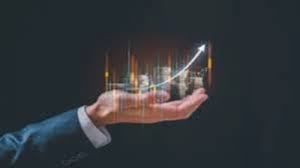
- 27 Jun 2025
In News:
The Ministry of Statistics and Programme Implementation (MoSPI) has announced that India will conduct its first nationwide Household Income Survey in 2026, marking a major milestone in the country’s data-driven policymaking framework.
What is the Household Income Survey?
- A comprehensive, nationwide survey aimed at collecting reliable and robust data on household income distribution across India.
- It is the first standalone survey focused specifically on income estimation, unlike earlier efforts that focused primarily on consumption and employment.
Key Implementing Bodies:
- Ministry of Statistics and Programme Implementation (MoSPI)
- National Sample Survey (NSS)
- Technical Expert Group (TEG)
Historical Background:
- 1950: National Sample Survey (NSS) established to conduct large-scale household surveys.
- 1955–1970: Income data attempted in the 9th, 14th, 19th, and 24th NSS rounds but faced challenges such as underreporting.
- 1983–84: A pilot income study failed to produce scalable data due to low income estimates relative to consumption and savings.
- Past difficulties deterred the launch of a dedicated income survey—until now.
Key Features of the 2026 Survey:
- First of its kind: India’s first survey exclusively focused on household income distribution.
- Methodologically robust: Designed by the TEG, incorporating international best practices in conceptual design, sampling, and estimation.
- Use of digital tools: Integration of technology-driven data collection methods to improve precision, timeliness, and reflect the role of digital economy in income generation.
- Built on recent statistical reforms by MoSPI in areas like:
- Unincorporated enterprise surveys
- Services sector data
- Private capital expenditure
- Tourism satellite accounts
Significance of the Survey:
- Addresses a critical data gap in understanding income inequality, disparities, and growth trends.
- Supports evidence-based welfare policies, including targeted subsidies, social protection, and fiscal redistribution.
- Enhances India’s capacity for inclusive growth assessment and SDG tracking.
- Strengthens the country's statistical infrastructure, aligning it with global standards.
Training of Trainers (ToT)Programme
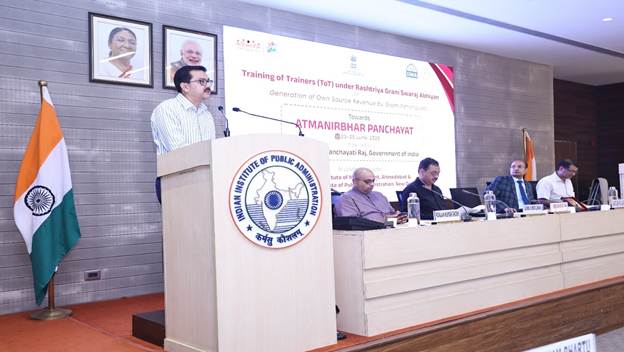
- 27 Jun 2025
In News:
In a significant move to strengthen grassroots governance and fiscal autonomy, the Ministry of Panchayati Raj (MoPR) has launched a Training of Trainers (ToT)programme in collaboration with the Indian Institute of Management (IIM) Ahmedabad and the Indian Institute of Public Administration (IIPA). The initiative aims to enhance the capacity of Panchayats to generate Own Source Revenue (OSR) under the Rashtriya Gram Swaraj Abhiyan (RGSA).
Key Objectives:
- Enhance financial self-reliance of Panchayati Raj Institutions (PRIs).
- Build a cadre of Master Trainers equipped to train Panchayat-level functionaries.
- Shift local governance from a compliance-based model to proactive planning, innovation, and community engagement.
- Promote a culture of fiscal accountability, transparency, and efficient public service delivery at the grassroots level.
Core Focus Areas of Training
- Fundamentals of Own Source Revenue (OSR)
- Revenue enhancement strategiestailored to rural contexts
- Behavioural insights in tax collectionand compliance
- Revenue utilization for development and service delivery
- Village-level financial planningand Gram Panchayat Development Plans (GPDPs)
- Innovative financing mechanisms
- Project management and accountability tools
The training emphasized field orientation, peer learning, and evidence-based practices to ensure real-world applicability and long-term impact.
Institutional Reforms and Digital Integration
As part of the broader reform agenda:
- Model OSR Rules Framework is under development based on state-level legislative reviews.
- A Digital Tax Collection Portal is being created to facilitate:
- Simplified and accountable revenue collection,
- Digital integration with Panchayat-level financial systems.
Case Studies & Best Practices
The training showcased successful Panchayat-level revenue generation models from:Odisha, Gujarat, Goa, Uttar Pradesh, Maharashtra, and the Andaman & Nicobar Islands, highlighting scalable models of local innovation.
Rashtriya Gram Swaraj Abhiyan (RGSA): Background
A Centrally Sponsored Scheme (CSS) launched in 2018 and revamped for 2022–2026, aimed at developing and strengthening the Panchayati Raj System across rural India.
Key Objectives:
- Build governance capacity of PRIs to achieve Sustainable Development Goals (SDGs).
- Empower Panchayat representatives for effective leadership and participatory governance.
- Enhance OSR generation and financial planning at the Panchayat level.
- Promote inclusive development and convergence of schemes.
- Strengthen Gram Sabhas as platforms for citizen engagement.
Salient Features:
- Emphasis on capacity-building and leadership training.
- Promotes decentralisation and compliance with the PESA Act, 1996.
- Encourages use of technology-driven solutions for governance.
- Recognises and incentiviseshigh-performing Panchayats.
- Facilitates collaboration with international and national institutions.
Ambubachi Mela 2025
- 27 Jun 2025
In News:
Thousands of devotees have congregated at the Kamakhya Temple in Guwahati, Assam, to participate in the annual Ambubachi Mela—one of the largest and most significant religious gatherings in Northeast India.
About Ambubachi Mela
- Timing: Celebrated annually during the monsoon season, typically in June.
- Location: Held at the Kamakhya Temple, situated atop Nilachal Hill in Guwahati, Assam.
- Religious Significance:
- Marks the menstrual cycle of Goddess Kamakhya, symbolising the fertility of Mother Earth.
- During this period, the sanctum sanctorum is closed for three days, after which it is ceremonially reopened for darshan.
- Cultural Symbolism:
- Reflects ancient beliefs that associate the Earth with feminine fertility.
- The word ‘Ambubachi’ translates to ‘water flowing’, indicative of both the monsoon rains and the goddess’s fertility.
Kamakhya Temple: Key Facts
- Spiritual Importance:
- Dedicated to Goddess Kamakhya, an incarnation of Shakti.
- Considered one of the most revered sites of Tantric Shaktism in India.
- Recognised as one of the 51 Shakti Peethas, where the yoni (womb) of Sati is believed to have fallen.
- Geographical Location:Located on Nilachal Hill, overlooking the southern bank of the Brahmaputra River.
Architectural Features of Kamakhya Temple
- Architectural Style:
- Combines traditional Nagara style with Saracenic (Mughal) architectural elements, known as the Nilachala Style of Architecture.
- Temple Layout:
- Only temple in Assam with a fully developed ground plan.
- Comprises five main sections:
- Garbhagriha (sanctum sanctorum)
- Antarala (vestibule)
- Jaganmohan (assembly hall)
- Bhogmandir (offering hall)
- Natmandir (performance hall)
- Distinctive Structural Elements:
- Main dome: Modified Saracenic style.
- Antarala: Features a two-roofed structure.
- Bhogmandir: Crowned with five domes, echoing the central shrine.
- Natmandir: Designed with a shell-shaped roof and apsidal end, similar to the namghars (prayer halls) of Assam.
SDG Index 2025
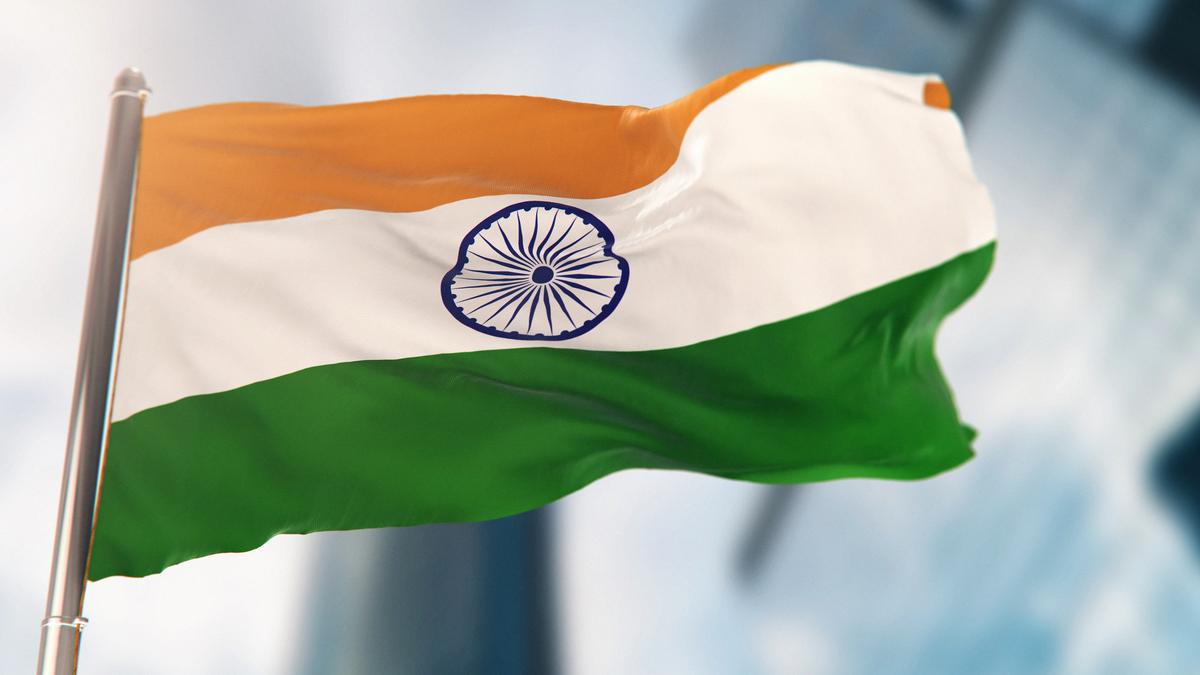
- 27 Jun 2025
In News:
India has ranked 99th out of 193 countries in the Sustainable Development Goals (SDG) Index 2025, marking the first time it has entered the top 100. India scored 67 in the index, as per the Sustainable Development Report 2025 released by the U.N. Sustainable Development Solutions Network.
About the Sustainable Development Report 2025
- Publisher: U.N. Sustainable Development Solutions Network.
- Objective: Tracks annual progress on the 17 Sustainable Development Goals (SDGs) adopted by all UN member states in 2015.
- Coverage: 193 countries.
- Relevance: Assesses national performance across economic, social, and environmental dimensions of sustainability.
Key Highlights of the 2025 Report
Global Trends
- SDG Progress Stalled Globally: Only 17% of the SDG targets are projected to be met by 2030.
- Barriers to Progress: Conflicts, structural vulnerabilities, and constrained fiscal space are key impediments.
- Top Performers:
- Finland ranks 1st, followed by Sweden (2nd) and Denmark (3rd).
- However, many European nations face serious challenges related to climate change and biodiversity loss, due to unsustainable consumption patterns.
Regional Insights
- East and South Asia have shown the fastest progress since 2015, attributed to rapid socioeconomic development.
- India’s Achievement: Ranked 99th, entering the top 100 for the first time.
Sectoral Progress and Setbacks
- Areas of Strong Progress Globally:
- Access to electricity (SDG 7)
- Use of mobile broadband and internet (SDG 9)
- Reduction in child and neonatal mortality (SDG 3)
- Areas of Reversal Since 2015:
- Rising obesity rates (SDG 2)
- Decline in press freedom (SDG 16)
- Poor sustainable nitrogen management (SDG 2)
- Worsening Red List Index (biodiversity loss – SDG 15)
- Weakening Corruption Perceptions Index (SDG 16)
Commitment to Multilateralism
- Top 3 Countries Committed to UN Multilateralism:
- Barbados
- Jamaica
- Trinidad and Tobago
Notable National Rankings
- Brazil (25): Highest among G20 nations.
- Chile (7): Highest among OECD countries.
NAVYA Initiative
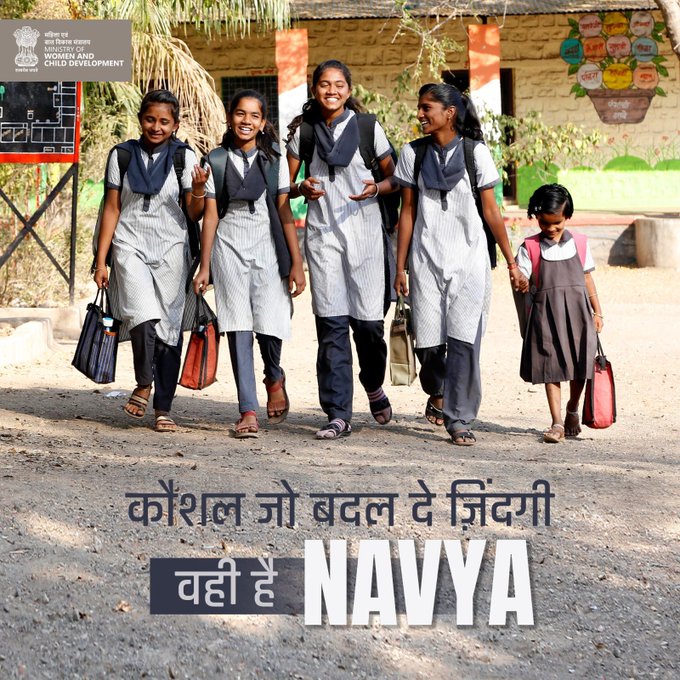
- 26 Jun 2025
In News:
In line with the vision of Viksit Bharat@2047 and the government’s focus on women-led development, the Government of India has launched NAVYA—a pilot initiative aimed at vocationally skilling adolescent girls to empower them with future-ready skills and opportunities.
The programme was officially launched in Sonbhadra, Uttar Pradesh, by the Ministry of Women and Child Development (MWCD) in collaboration with the Ministry of Skill Development and Entrepreneurship (MSDE).
About Nurturing Aspirations through Vocational Training for Young Adolescent Girls (NAVYA):
- Objective:To provide vocational training to adolescent girls aged 16–18 years (with a minimum qualification of Class 10) in non-traditional job roles.
- Target Areas:Implemented as a pilot project in 27 districts across 19 States, including:
- Aspirational districts
- Districts in the North-Eastern States
This reflects the government's commitment to inclusive development and reaching underserved and vulnerable populations.
- Institutional Collaboration:
- Both ministries will formalize convergence to streamline and institutionalize skilling efforts for adolescent girls.
- NAVYA draws upon existing frameworks like the Pradhan Mantri Kaushal Vikas Yojana (PMKVY) and other flagship skill development schemes.
Significance of NAVYA:
Aspect Importance
Empowerment - Enhances skills, confidence, and self-reliance among young girls
Gender Inclusion - Supports women-led development and economic participation
Employment Readiness - Equips girls with job-oriented skills in non-traditional sectors
Regional Equity - Targets backward and underserved regions to reduce disparities
Demographic Dividend - Harnesses the potential of India’s adolescent population in national development
“NAVYA represents a transformative step in ensuring that every adolescent girl becomes a catalyst for change in India’s journey towards an inclusive, skilled, and developed future.”
Rising Evaporative Demand and Thirstwaves
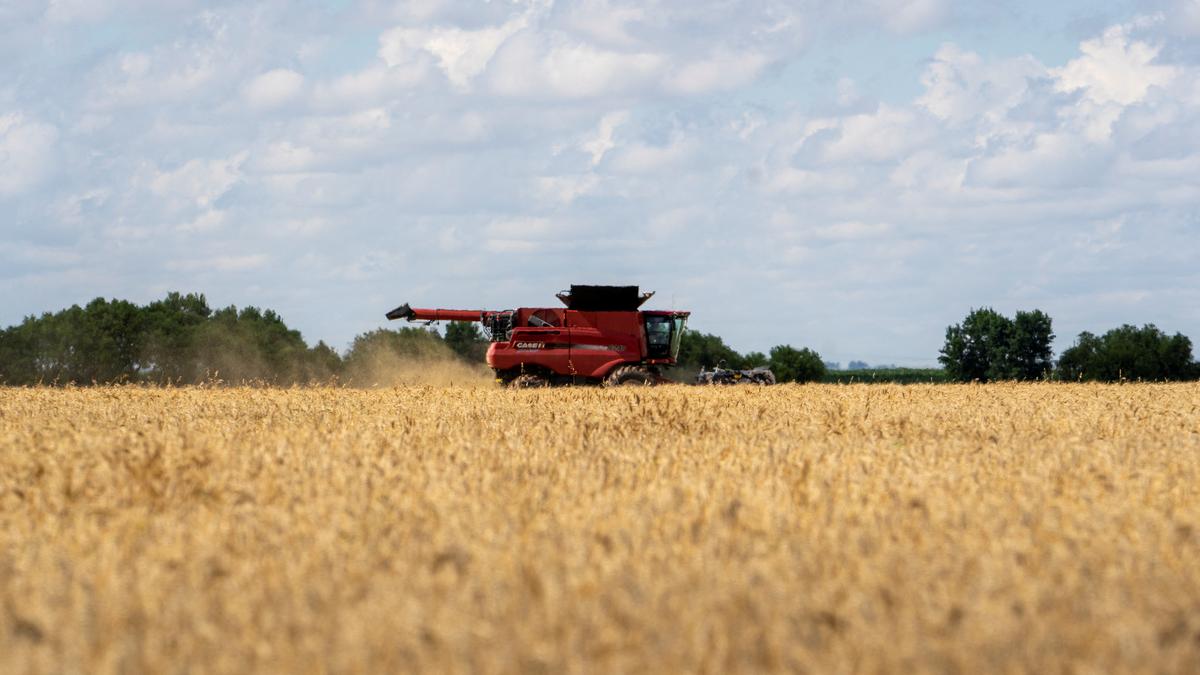
- 26 Jun 2025
In News:
The rising evaporative demand—a measure of how thirsty the atmosphere is—is spotlighting India’s significant data and research gaps related to climate extremes, water stress, and agricultural vulnerability. While global studies are increasingly focusing on "thirstwaves", India lacks adequate research and monitoring frameworks on this critical issue.
What is Evaporative Demand?
- Evaporative demand indicates the near-maximum amount of water that would evaporate from land or vegetation if enough water is available.
- It is not equivalent to actual evaporation, which also depends on water availability.
- Driven by atmospheric factors:
- Temperature
- Wind speed
- Solar radiation
- Humidity
- Cloud cover
High evaporative demand leads to quicker drying of soil and vegetation, increasing drought risk, crop stress, and wildfire susceptibility.
What is a Thirstwave?
- Coined by MeetpalKukal (University of Idaho) and Mike Hobbins (NOAA/University of Colorado).
- Definition: Three or more consecutive days of abnormally high evaporative demand.
- Drivers: Combination of high temperature, low humidity, high solar radiation, and wind speed.
- Impacts:
- Reduces water availability for crops.
- Stresses vegetation.
- Increases fire danger.
- Accelerates drought onset and intensification.
Unlike heatwaves driven by temperature alone, thirstwaves are multi-dimensional and can be more damaging to crops and ecosystems.
Scientific Findings & India-Specific Observations
Global Evidence:
- Kukal& Hobbins’ study (published in Earth’s Future) noted:
- Increased frequency, intensity, and duration of thirstwaves in the U.S.
- Reduced likelihood of zero-thirstwave periods during growing seasons.
India’s Research Gap:
- Chronic shortage of real-time data on evaporative demand and extreme events.
- 1997 Study (Chattopadhyay &Hulme):
- Analyzed 30 years of IMD data.
- Found declining evaporation and potential evapotranspiration, likely due to increased humidity, despite warming.
- Projected future temperature rise would eventually override humidity effects, increasing evaporative demand.
Recent Developments in India:
- IIT Roorkee, NIH & European collaborators (2022):
- Studied 100 river sub-basins.
- Found highest rise in actual evapotranspiration in Northern India, Western Himalayas, and Eastern Himalayan regions.
- Interpreted as signs of increased vegetation or agricultural expansion.
Measurement Techniques:
- Standardised Short-Crop Evapotranspiration:
- A simplified metric to measure water demand of a 12 cm tall, healthy grass under ideal moisture conditions.
- Recommended for crop irrigation planning.
- Rising values signal increasing atmospheric demand and need for adaptive water management.
Implications for India:
- Agriculture and Food Security:
- India’s irrigated crops, especially rice and wheat, are vulnerable to atmospheric water demand.
- Rising thirstwaves threaten to decrease productivity even in well-irrigated regions.
- Water Resource Management:
- Increases soil moisture stress and reduces groundwater recharge.
- Calls for real-time tracking systems for evaporative stress.
- Disaster Preparedness:
- Thirstwaves may precede or exacerbate droughts and wildfires.
- Regions not traditionally drought-prone may still suffer from evaporative shocks.
- Research and Monitoring Needs:
- Lack of indigenous data on thirstwaves.
- Current efforts:Ongoing Indo-U.S. collaboration (University of Idaho & NIT Jalandhar) aims to map South Asian thirstwaves under the Water Advanced Research and Innovation Program.
Way Forward:
- Integrate evaporative demand and thirstwave parameters into IMD's early warning systems.
- Promote region-specific studies on crop sensitivity to evaporative demand.
- Develop adaptive irrigation protocols based on short-crop evapotranspiration trends.
- Sensitise farmers, water managers, and policymakers on atmospheric water demand risks.
- Invest in climate-resilient agriculture and data-driven water governance.
UK’s Terminally Ill Adults (End of Life) Bill
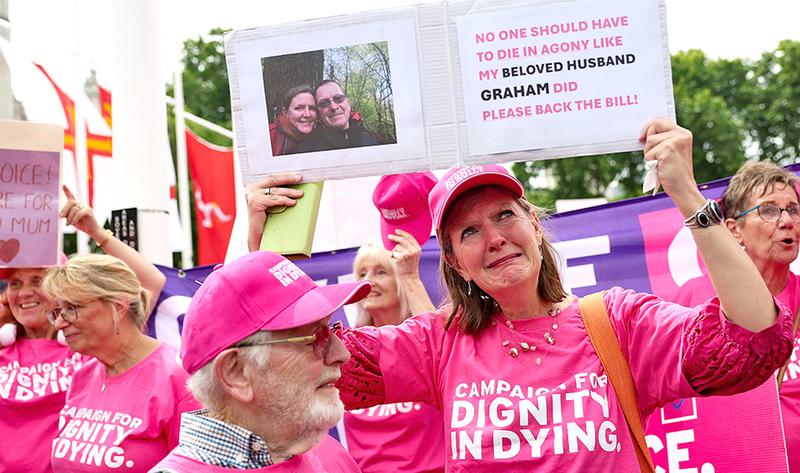
- 26 Jun 2025
In News:
In a landmark decision, the UK House of Commons has passed the Terminally Ill Adults (End of Life) Bill, which seeks to legaliseassisted dying for terminally ill individuals in England and Wales. The Bill passed with a narrow margin of 314 to 291 votes, and will now proceed to the House of Lords for further deliberation.
Key Provisions of the Bill:
- Applicability: England and Wales.
- Eligibility: Only for patients diagnosed with less than six months to live.
- Safeguards:
- The patient must be mentally competent.
- Approval is required from two doctors, a psychiatrist, a senior lawyer, and a social worker.
- The process ensures the patient’s choice is informed and voluntary.
Understanding Euthanasia:
- Etymology: From Greek “eu” (good) + “thanatos” (death) = “good death”.
- Definition: Intentional act of ending a person’s life to relieve suffering from terminal illness or unbearable pain.
Types of Euthanasia:
Type Description Example
Active Deliberate action to end life Lethal injection
Passive Withdrawal of treatment Removing life support
Voluntary With patient’s consent Terminally ill requesting euthanasia
Involuntary Without consent Considered illegal
Ethical Dimensions:
Arguments in favour
- Right to Autonomy: Upholds personal freedom in deciding life and death.
- Compassionate Exit: Eases intractable suffering.
- Dignity in Death: Ensures control over one’s final moments.
- Relief for Families: Reduces emotional and financial strain.
- Medical Resource Optimization: Redirects care to patients with curable conditions.
Arguments Against
- Sanctity of Life: Human life is sacred and must not be intentionally ended.
- Risk of Coercion: Vulnerable groups may be pressured into opting for death.
- Existence of Palliative Alternatives: Modern hospice care offers non-lethal relief.
- Slippery Slope: May lead to misuse or extension to non-terminal cases.
- Erosion of Medical Ethics: Challenges the healer role of doctors.
Indian Legal Perspective:
India has grappled with the euthanasia debate in various judicial pronouncements:
- Gian Kaur v. State of Punjab (1996): Right to die not included under Article 21.
- Aruna Shanbaug Case (2011): Allowed passive euthanasia under strict conditions.
- Common Cause v. Union of India (2018):Recognised the right to die with dignity and permitted Advance Medical Directives.
UNEP’s NDC Cooling Guidelines 2025

- 26 Jun 2025
In News:
The United Nations Environment Programme (UNEP) has released the NDC Cooling Guidelines 2025, aimed at supporting countries in integrating sustainable cooling strategies into their Nationally Determined Contributions (NDCs) under the Paris Agreement. The initiative addresses both climate mitigation and adaptation challenges posed by rising global temperatures and energy demand.
About the NDC Cooling Guidelines 2025
- Purpose:Provides a structured global framework for countries to incorporate sustainable cooling into national climate action plans, balancing mitigation, adaptation, and developmental needs.
- Developed by:UNEP’s Cool Coalition NDC Working Group, in collaboration with partners like UNDP.
- Primary Objectives:
- Mainstream sustainable cooling in national NDCs.
- Reduce sectoral emissions by 60% by 2050.
- Improve access to cooling for 1.1 billion vulnerable people.
- Establish robust Monitoring, Reporting, and Verification (MRV) mechanisms.
- Align with the Kigali Amendment to the Montreal Protocol and the Global Cooling Pledge.
Global Cooling Landscape: Key Data Points
- Current Impact:
- Cooling accounts for nearly 7% of global GHG emissions, projected to exceed 10% by 2050.
- Cooling consumes 20% of global building electricity, and up to 50% in countries like UAE.
- Access Challenges:1.1 billion people worldwide lack access to efficient and affordable cooling, threatening lives, food security, and healthcare.
- Efficiency Potential:By doubling appliance efficiency, access can expand sixfold without proportionate emission growth.
Challenges in the Cooling Sector
- Rising Emissions:Without immediate policy interventions, emissions from cooling are expected to double by mid-century, increasing climate and energy pressures.
- Access Inequality:Many low-income and rural populations remain exposed to extreme heat due to lack of sustainable cooling.
- Policy Gaps:Only 27% of updated NDCs currently include specific energy efficiency targets related to cooling.
- Gendered Impacts:Women, especially in vulnerable communities, face greater health risks from inadequate cooling and heat stress.
- Reinforcing Heat-Cooling Loop:Increasing temperatures escalate cooling demand, which if met with inefficient systems, leads to more emissions, exacerbating global warming—a vicious cycle.
Six-Step Framework in the Guidelines
- Baseline Assessment:Measure current energy use and refrigerant emissions in the cooling sector.
- Target Setting:Define clear, time-bound targets aligned with national climate priorities.
- Monitoring, Reporting, Verification (MRV):Develop transparent systems to track and report progress.
- Policy Tools:
- Introduce Minimum Energy Performance Standards (MEPS)
- Phase down high-GWP refrigerants
- Promote urban greening and passive cooling techniques
- Governance & Institutional Support:Establish cross-sectoral coordination, incorporating gender-sensitive planning.
- Financing & Equity:Mobilize investments and develop policies to enable equitable access to sustainable cooling technologies.
Country-Level Initiatives
- Nigeria:Integrated National Cooling Action Plan (NCAP) into its NDC, with a focus on heat-resilient rural infrastructure.
- United Arab Emirates (UAE):Adopted district cooling systems and high-efficiency air conditioning in its updated climate roadmap (NDC 3.0).
- Grenada:Committed to becoming the first HFC-free nation, aiming for complete refrigerant phase-down.
INS Nilgiri
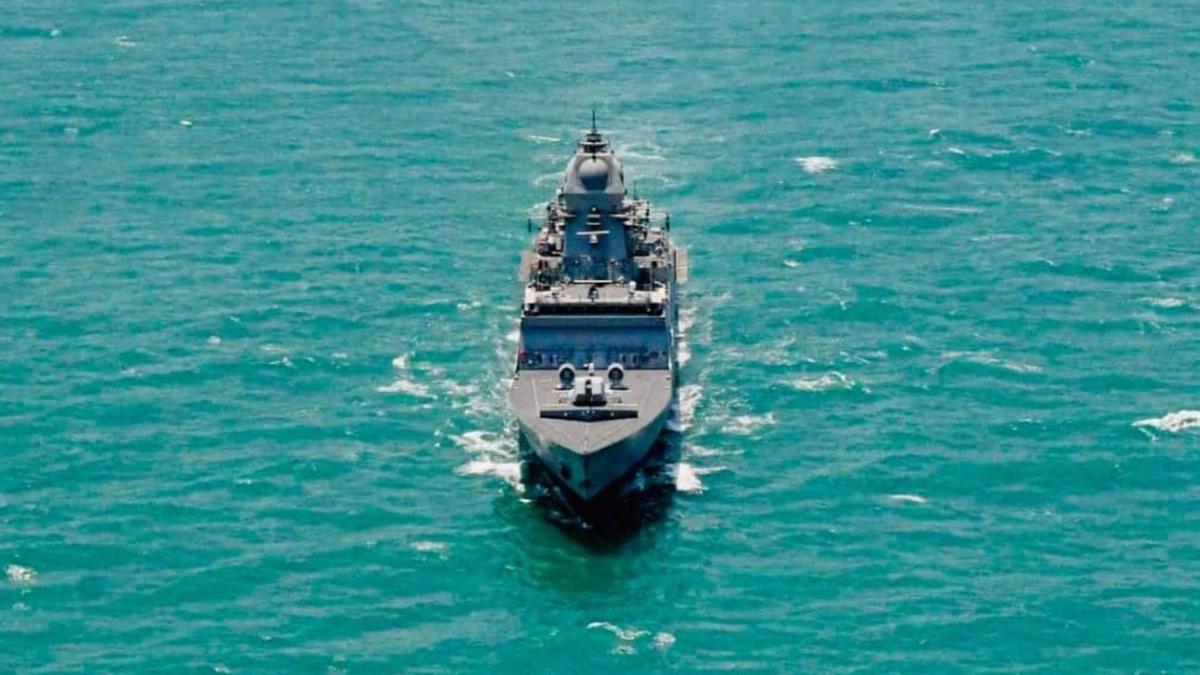
- 26 Jun 2025
In News:
INS Nilgiri, the first stealth frigate of the indigenously developed Project 17A series, has recently been inducted into the Eastern Naval Command. It will play a crucial role in the Eastern Sword-Sunrise Fleet.
Key Facts:
- Class and Design:INS Nilgiri belongs to the Nilgiri-class frigates under Project 17A, an advanced stealth warship initiative. It is an improved version of the earlier Shivalik-class (Project 17) frigates.
- Design and Construction:The vessel has been designed by the Indian Navy’s Warship Design Bureau and constructed by Mazagon Dock Shipbuilders Limited (MDL) in Mumbai.
- Sister Ships Under Construction:Six other frigates of the same class—Himgiri, Taragiri, Udaygiri, Dunagiri, Vindhyagiri, and Mahendragiri—are currently being built at MDL, Mumbai and Garden Reach Shipbuilders and Engineers (GRSE), Kolkata.
Technical Specifications & Capabilities:
- Dimensions & Displacement:
- Length: 149 meters
- Displacement: Approximately 6,670 tonnes
- Propulsion:
- Equipped with a CODAG (Combined Diesel and Gas) propulsion system
- Maximum speed: Up to 28 knots
- Combat Capability:
- Anti-Air Warfare: Armed with 16 Barak-8 surface-to-air missiles
- Surface Warfare: Equipped with 8 BrahMos supersonic cruise missiles for anti-ship and land-attack roles
- Surveillance & Targeting Systems:
- MF-STAR Radar: Offers 360-degree situational awareness
- 3D AESA Radar: Enables tracking of multiple targets simultaneously
- Nishant Radar: Enhances fire control and targeting precision
- Network-Centric Warfare:The onboard Combat Management System (CMS) seamlessly integrates various sensors and weapons, allowing for coordinated operations with other naval platforms.
Significance:
The induction of INS Nilgiri marks a major milestone in India’s pursuit of a modern, self-reliant naval fleet. It enhances the Indian Navy’s blue-water capabilities, contributing to maritime dominance and regional security in the Indo-Pacific.
Tomahawk Missiles
- 25 Jun 2025
In News:
In a major escalation of the Iran-Israel conflict, the United States has reportedly launched precision strikes on Iran’s nuclear infrastructure, targeting key sites at Fordow, Natanz, and Esfahan. These attacks were carried out using Tomahawk cruise missiles and GBU-57 bunker busters, marking a critical intervention by the US in the unfolding regional crisis. President Donald Trump termed the strikes a “clear warning” to Iran, signalling the potential for intensified military action if diplomatic overtures are rejected.
What Are Tomahawk Missiles?
The Tomahawk missile is a long-range, subsonic, all-weather cruise missile primarily operated by the United States Navy and Royal Navy. It is designed for precision strikes on high-value or heavily defended targets, including hardened or buried infrastructure such as nuclear sites.
- Launch platforms: Ships and submarines
- Flight path: Low-altitude terrain-following flight to evade radar
- Use case: Strategic, surgical strikes in contested or defended environments
Design and Capabilities
- Length: ~5.6 meters (without booster)
- Weight: Up to 1,600 kg
- Speed: ~880 km/h (subsonic)
- Range: Over 1,600 km (varies by variant)
- Flight altitude: As low as 30–50 meters
- Warheads:
- Unitary high-explosive
- Cluster munitions
- Nuclear warheads (retired from use)
Navigation and Guidance Systems
Tomahawk missiles are known for pinpoint accuracy, achieved through a multi-layered guidance system:
- GPS (Global Positioning System) and INS (Inertial Navigation System) for real-time course tracking
- TERCOM (Terrain Contour Matching): Compares terrain under flight path with stored maps
- DSMAC (Digital Scene Matching Area Correlation): Matches live terrain imagery with onboard target data
- Data-link capability: Allows for in-flight re-targeting, mission abort, or loitering over areas
Variants and Modern Upgrades
- Tomahawk Block IV (TLAM-E): Most modern variant, featuring:
- In-flight reprogramming
- Target loitering
- Real-time battle damage assessment
- Two-way satellite communication
Historical Combat Usage
Tomahawk missiles have been extensively used in US military operations:
- Gulf War (1991): ~280 missiles used in the opening strikes
- Operation Infinite Reach (1998): Targeted terrorist camps in Sudan and Afghanistan
- Iraq War (2003): Hundreds used during the initial “shock and awe” campaign
- Libya Intervention (2011): Destroyed air defence infrastructure
- Syria (2017): 59 Tomahawks used against Shayrat Airbase in retaliation for chemical attacks
INS Tamal

- 25 Jun 2025
In News:
In a landmark development for India's maritime defence, the Indian Navy is set to commission its latest stealth multi-role frigate, INS Tamal, on 1st July 2025 at Yantar Shipyard, Kaliningrad, Russia
Overview:
- Class & Series: INS Tamal is the second ship of the Tushil-class, an upgraded variant of the Talwar and Teg class frigates, forming part of the Krivak class series built under Indo-Russian cooperation.
- Total Induction: With Tamal’s addition, India will operate ten ships with common capabilities across four related classes.
- Construction: Built at Yantar Shipyard with oversight from Indian specialists under the Warship Overseeing Team (WOT), Kaliningrad, under the Embassy of India, Moscow.
Symbolism and Identity
- The name ‘Tamal’ represents the mythical sword of Indra, the King of Gods.
- The ship’s mascot blends India’s Jambavant, the immortal bear king of mythology, with Russia’s Eurasian Brown Bear, symbolising Indo-Russian defence cooperation.
- The ship’s motto: ‘Sarvada Sarvatra Vijaya’ (Victorious Always Everywhere).
Make in India & Indigenous Content
- INS Tamal is the last warship to be inducted from a foreign source, aligning with Aatmanirbhar Bharat and Make in India initiatives.
- 26% indigenous content, including:
- BrahMos supersonic cruise missiles (anti-ship & land attack roles)
- HUMSA NG Mk II sonar, Indian radars, and communication systems
- Indian OEMs involved: BrahMos Aerospace, BEL, Keltron, Nova Integrated Systems (Tata), Elcome Marine, Johnson Controls India, among others.
- Indigenous components have more than doubled to 33 systems compared to previous imports.
Key Features & Capabilities
- Displacement: 3,900 tonnes | Length: 125 metres
- Top speed: Over 30 knots
- Armament & Combat Systems:
- Vertically Launched Surface-to-Air Missiles (VL-SAM)
- Improved 100 mm main gun, 30 mm CIWS
- Heavyweight torpedoes, anti-submarine rockets
- EO/IR system, fire control radars
- Aviation Support: Flight deck for Air Early Warning & Multi-Role helicopters
- Sensors & Network:
- Surface Surveillance Radar
- Advanced Electronic Warfare suite
- Network Centric Warfare capabilities
- Trials: Successfully completed 3-month sea trials, validating systems and weapons in challenging winter conditions (St. Petersburg & Kaliningrad).
Strategic Importance
- Upon commissioning, INS Tamal will join the Indian Navy’s Western Fleet—the 'Sword Arm' of the Navy under Western Naval Command.
- Reinforces India’s blue water naval ambitions, enhancing operational readiness in multi-threat maritime environments.
- Embodies two decades of Indo-Russian naval cooperation and represents a transition towards domestic warship production.
Gwada Negative

- 25 Jun 2025
In News:
In a landmark discovery for transfusion science, France’s national blood agency (Établissement Français du Sang – EFS), in June 2025, identified a completely new blood group system. Officially recognized by the International Society of Blood Transfusion (ISBT) as the 48th blood group system, it is termed EMM-negative and is informally called “Gwada Negative”, after Guadeloupe, the origin of the only known individual with this blood type.
What is Gwada Negative (EMM-negative)?
- EMM-negative is defined by the absence of the EMM antigen, a high-incidence antigen normally present on red blood cells in nearly all humans.
- High-incidence antigens are so common that individuals lacking them are considered extremely rare and face critical challenges in blood transfusion compatibility.
- The ISBT registered this as ISBT042, making it the latest addition to global blood group systems.
Discovery Timeline
- 2011: A 54-year-old woman from Guadeloupe, living in Paris, underwent pre-surgical blood testing. Her blood showed unidentified antibodies that did not match any known blood group systems.
- 2019: With advancements in Next-Generation Sequencing (NGS), researchers led by Dr. Thierry Peyrard (EFS) identified the unique genetic mutation responsible for the absence of the EMM antigen.
- 2025: After peer-reviewed validation, the ISBT officially recognised the EMM-negative system during its Milan meeting.
Why is it So Rare?
- This woman is the only known person in the world with the EMM-negative blood type.
- She inherited the rare gene mutation from both parents, leading to a complete absence of the EMM antigen in her red blood cells.
- Since the EMM antigen is nearly universal, her blood is compatible only with itself, making transfusions extremely high-risk unless a genetically identical donor is found.
Clinical Significance
- Individuals lacking high-incidence antigens like EMM may develop alloantibodies — immune responses against transfused red cells containing those antigens.
- Transfusion of EMM-positive blood into such individuals can cause hemolytic reactions, including life-threatening hemolysis (premature red blood cell breakdown).
- In this case, no donor blood currently available is safe for transfusion into the patient.
Implications for Transfusion Medicine
- Highlights the need for rare blood donor registries, international cooperation, and advanced genetic screening technologies to identify such rare phenotypes.
- Encourages development of precision-matching protocols in complex clinical and emergency situations.
- Expands the understanding of human immunohematological diversity and redefines transfusion compatibility standards.
Kounis Syndrome
- 25 Jun 2025
In News:
The recent sudden death of Indian industrialist Sanjay Kapur during a polo match in London has drawn national attention to Kounis Syndrome, a rare but serious medical condition. Reports suggest he may have inhaled a bee, which stung him inside the throat—leading to a cardiac arrest, potentially triggered by an acute allergic reaction. This tragic incident has raised awareness about the interaction between allergic reactions and cardiac emergencies, especially in seemingly healthy individuals.
What is Kounis Syndrome?
Kounis Syndrome is a rare medical condition in which a severe allergic or hypersensitivity reaction triggers a coronary event, such as a heart attack. It is often termed “allergic angina” or “allergic myocardial infarction.”
Mechanism
- Triggered by allergens such as insect stings, drugs, or foods.
- Leads to the activation of mast cells, which release histamine and cytokines.
- These chemicals cause spasms, plaque rupture, or clot formation in coronary arteries.
- Result: Reduced blood flow to the heart, causing ischemia or infarction.
Types of Kounis Syndrome
- Type I: In individuals with normal coronary arteries – allergic reaction causes artery spasm and possible heart attack.
- Type II: In those with existing coronary artery disease – allergic reaction destabilizes plaques, causing infarction.
- Type III: In patients with coronary stents – hypersensitivity leads to thrombosis within stents.
Triggers of Kounis Syndrome
- Insect stings (bee, wasp)
- Medications (NSAIDs, antibiotics)
- Foods (nuts, shellfish, kiwi)
- Environmental allergens (latex, contrast dyes)
- Underlying health conditions (e.g., mastocytosis)
Symptoms
- Chest pain
- Shortness of breath or wheezing
- Swelling (angioedema), hives, or rash
- Low blood pressure
- ECG changes: ST-segment elevation or depression
Diagnosis and Treatment
- Diagnosis: Clinical history, ECG, cardiac enzymes, allergy tests.
- Treatment includes:
- For allergy: Antihistamines, corticosteroids, epinephrine
- For cardiac care: Oxygen, nitrates, antiplatelet drugs, beta-blockers
Why Mouth/Throat Bee Stings Are Dangerous
- Immediate airway swelling
- Increased absorption of venom into bloodstream
- Enhanced risk of anaphylaxis and cardiac arrest
Even people without a history of allergy can experience severe reactions if stung inside the mouth or throat.
Warning Signs After a Bee Sting
- Difficulty breathing
- Swollen lips, tongue, or throat
- Rash or itching
- Dizziness or fainting
- Rapid or weak heartbeat
- Nausea or unconsciousness
Immediate emergency care is essential.
Himalayan Brown Bear
- 25 Jun 2025
In News:
In a significant development for Himalayan biodiversity, a rare sighting of a Himalayan Brown Bear with its family has been reported for the first time in the Dumka region between Nelang and Bhairon Ghati, within Gangotri National Park, Uttarakhand. The sighting has enthused wildlife experts and is viewed as a positive indicator of range expansion and ecosystem resilience in this fragile high-altitude region.
Significance of the Sighting
- This marks the first recorded presence of a brown bear in this specific stretch of the park.
- Previously, sightings were limited to Gomukh (6 bears) and Kedartal (3 bears), both located above 3,000 m.
About the Himalayan Brown Bear
- Scientific Name: Ursus arctos isabellinus
- Common Names: Himalayan Red Bear, Isabelline Bear; known as Denmo in Ladakhi.
- It is believed to be one of the most ancient brown bear lineages and may have inspired the Yeti legend due to its upright gait.
Distribution and Habitat
- Found in the northwestern and central Himalayas: India, Pakistan, Nepal, Bhutan, and China (Tibet).
- In India: Exists in fragmented populations in Jammu & Kashmir, Himachal Pradesh, and Uttarakhand.
- Inhabits elevations between 3,000 and 5,500 meters, usually above the timberline in alpine meadows and snow-clad regions.
Ecological Features
- Size: Males average 1.9 m and 135 kg; females 1.6 m and 70 kg.
- Fur: Sandy or reddish-brown; thick to endure high-altitude cold.
- Diet: Omnivorous – consumes roots, berries, nuts, small mammals, fish, and insects.
- Behavior: Solitary, except during mating or a mother with cubs; hibernates during winter in dens.
- Lifespan: 20–30 years in the wild.
Conservation Status
- IUCN Red List: Critically Endangered
- Wildlife (Protection) Act, 1972 (India): Schedule I
- CITES: Appendix I
Subarnarekha River

- 24 Jun 2025
In News:
A flash flood in the Subarnarekha River affected over 50,000 people in Balasore district, Odisha. The flooding was triggered by heavy rainfall and the release of water from Chandil Dam in Jharkhand.
About Subarnarekha River
Origin:
- Arises near Piska/Nagri, close to Ranchi, in Jharkhand.
- The name "Subarnarekha" means “Streak of Gold”, referring to traces of gold once found in the river’s origin area.
Geographical Course:
- States Covered: Jharkhand, West Bengal, Odisha.
- Mouth: Empties into the Bay of Bengal near Talsari, in Odisha.
- Total Length: Approx. 395 km.
- Drainage Basin Area: 18,951 sq. km, making it a relatively small multi-state river basin.
- Course Details: Flows through Paschim Medinipur (WB) and Balasore (Odisha) after originating in Jharkhand.
Key Features:
- Hundru Falls: A well-known waterfall on Subarnarekha, located in Jharkhand, with a drop of 98 metres.
- The river system is independent, not a tributary of any larger river.
- Known for its historical and cultural significance due to gold particles in its sands.
Major Tributaries:
- Kharkai (joins at Jamshedpur)
- Kanchi, Roro, Harmu Nadi, Dulunga, Karru, Karakari, Singaduba, Kodia, Dhamra
About Chandil Dam
Location:
- Situated in Chandil, Seraikela Kharsawan district, Jharkhand.
- Built near the confluence of the Subarnarekha River and Karkori River (originating from Hundru Falls).
Purpose:
- Multi-purpose project serving irrigation, flood control, and tourism.
- Plays a significant role in managing water flow in the Subarnarekha basin.
Estimates Committee
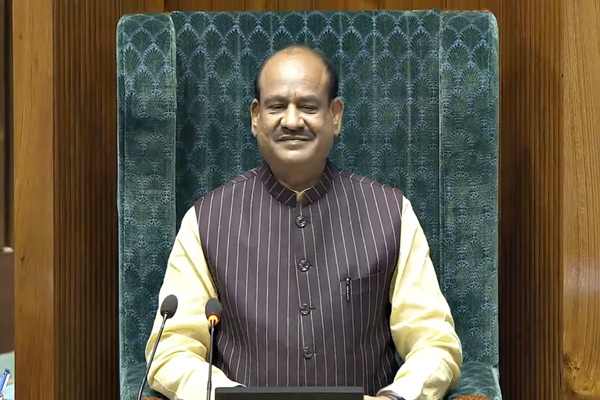
- 24 Jun 2025
In News:
The Lok Sabha Speaker inaugurated the National Conference of Estimates Committees in Mumbai to mark 75 years of the Parliamentary Estimates Committee.
About the Estimates Committee:
- Type: Parliamentary Financial Standing Committee (Lok Sabha).
- Established in: 1950, under the Rules of Procedure of Lok Sabha, after the adoption of the Constitution.
- Purpose: To examine how public funds are allocated and utilized, and recommend improvements in economy, efficiency, and accountability.
Composition:
- Total Members: 30 Lok Sabha MPs.
- Exclusion: Ministers are not eligible to be members.
- Chairperson: Appointed by the Speaker of Lok Sabha.
- Term: One year, renewable annually.
Selection Process:
- Members are elected annually by the Lok Sabha through proportional representation using the single transferable vote system.
Key Functions:
- Examine budget estimates of various ministries and departments.
- Suggest reforms for better economy and efficiency in public expenditure.
- Recommend alternative policies for improved governance and financial management.
- Evaluate effectiveness of spending aligned with policy objectives.
- Suggest improvements in the presentation of budget estimates to Parliament.
Exclusions: Does not examine Public Sector Undertakings — these are dealt with by the Committee on Public Undertakings.
Working Mechanism:
- Selects specific departments or statutory bodies for scrutiny.
- Seeks inputs from government officials and external experts.
- Undertakes study visits and on-ground assessments (with prior approval).
- Holds formal evidence sessions in Parliament.
- Submits findings and recommendations through reports to the Lok Sabha.
- The Government must submit Action Taken Reports (ATR) within six months.
Achievements (as of 2025):
- Total Reports Presented: 1,184
- 656 Original Reports
- 528 Action Taken Reports
- Covered nearly all major ministries and departments.
- Contributed to strengthening Parliamentary financial oversight and ensuring fiscal discipline.
Operation Midnight Hammer

- 24 Jun 2025
In News:
The United States launched a classified military operation named Operation Midnight Hammer, targeting Iran’s major nuclear sites at Fordow, Natanz, and Isfahan, claiming significant damage to its nuclear infrastructure.
About Operation Midnight Hammer:
- A covert US airstrike intended to degrade Iran’s nuclear weapons program.
- Launched by: US Department of Defense.
- Objective: Destruction of fortified nuclear facilities and demonstration of US strategic air power.
Key Assets Deployed:
- B-2 Spirit Stealth Bombers equipped with GBU-57A/B Massive Ordnance Penetrators (MOPs) – “bunker-buster” bombs designed to penetrate over 200 feet of reinforced concrete.
- Tomahawk Land Attack Cruise Missiles launched from US submarines.
- Support aircraft and decoys for air defence suppression.
B-2 Spirit Stealth Bomber:
- Type: Long-range strategic stealth bomber of the US Air Force.
- Developed by: Northrop Grumman (1980s).
- Cost: Approx. $2.1 billion per unit – one of the most expensive aircraft in the world.
- Range: Over 6,000 nautical miles without refuelling.
- Crew: Operated by two pilots.
Weapons and Capabilities:
- Payload Capacity: Over 40,000 pounds.
- Armament Options:
- 2 × GBU-57A/B MOPs
- 16 × B83 nuclear bombs (part of US nuclear triad)
- Precision-guided weapons: JDAM, JSOW, JASSM-ER.
- Stealth Features: Radar cross-section as small as a bird – allows evasion of sophisticated air defences.
Strategic Significance:
- Enhances the US’s global precision strike capabilities.
- Reinforces the deterrence role of the B-2 in both conventional and nuclear domains.
- Capable of targeting heavily fortified underground facilities.
- Proven operational effectiveness in Afghanistan, Libya, and now Iran.
SSLV Technology Transfer
- 24 Jun 2025
In News:
In a historic development for India's space sector, the Indian Space Research Organisation (ISRO) will, for the first time, completely transfer rocket technology to a domestic firm. Hindustan Aeronautics Limited (HAL) has secured the Transfer of Technology (ToT) for the Small Satellite Launch Vehicle (SSLV) through a competitive process facilitated by IN-SPACe, marking a new era of private-sector participation in space.
What is the SSLV Technology Transfer?
- Nature of ToT: Complete technology handover of ISRO’s SSLV to HAL.
- Awarded By: Indian National Space Promotion and Authorisation Centre (IN-SPACe) after a two-stage national selection.
- Winning Bid: HAL won the bid with a ?511 crore offer — the highest among the contenders.
- Other Bidders: Consortia led by Alpha Design (Bengaluru) and Bharat Dynamics Limited (Hyderabad).
- Objective: To empower the private sector to build, market, and launch rockets independently, thus reducing reliance on ISRO for small satellite missions.
Key Features of the SSLV ToT
Parameter Details
Ownership - HAL will own and operate the SSLV, with rights to modify its design and choose commercial partners.
Production Capability - HAL aims to produce 6–10 SSLVs annually, based on demand.
ToT Duration - 2 years of technology handholding by ISRO, during which HAL will manufacture at least two SSLV prototypes.
Post-ToT - HAL will operate independently post-ToT and may enter contracts for commercial launch services.
Contractual Roles - ISRO (technical), IN-SPACe (regulatory + ToT coordination), NSIL (commercial interface), HAL (execution).
About Hindustan Aeronautics Limited (HAL)
- Established: 23 December 1940 (as Hindustan Aircraft Limited).
- HQ: Bengaluru, Karnataka.
- Ministry: Ministry of Defence, Government of India.
- Core Role: India’s largest defence and aerospace PSU involved in aircraft, helicopters, engines, and now space systems.
- Key Contributions:
- Manufactured MiG-21, SU-30MKI, LCA Tejas.
- Supplied components for GSLV Mk-III, Mars Orbiter Mission, and Gaganyaan.
- Collaborated with ISRO on cryogenic engines and launch vehicle structures.
- Publicly Listed: On BSE and NSE since 2018.
Significance:
- First Full Rocket ToT in India: Unlike earlier manufacturing contracts (e.g., PSLV), SSLV is entirely owned and operated by HAL.
- Boosts Private Sector Role: Aligns with India’s space sector reforms to commercialize launch services.
- Fosters Innovation & Autonomy: HAL can redesign the SSLV and partner globally, making India more competitive in the small satellite launch market.
- Strategic Diversification: HAL adds space systems to its portfolio, without affecting defence operations.
Green Hydrogen Production
- 24 Jun 2025
In News:
In a significant scientific milestone, Indian researchers have developed a next-generation, scalable solar-driven device for producing green hydrogen—offering a major boost to clean energy innovation and India’s energy transition goals.
Key Highlights:
- Developed By: Centre for Nano and Soft Matter Sciences (CeNS), Bengaluru — an autonomous institute under the Department of Science and Technology (DST).
- Publication: The findings were published in the Journal of Materials Chemistry A (Royal Society of Chemistry).
What Is Green Hydrogen?
Green hydrogen is produced by splitting water molecules using renewable energy sources, especially solar and wind, without any greenhouse gas emissions. It is a clean energy carrier with the potential to decarbonize heavy industries, power vehicles, and store energy.
The Innovation: Solar-Driven Water Splitting Device
- The device uses only solar energy to split water and produce hydrogen.
- It employs a silicon-based photoanode with an n-i-p heterojunction structure:
- n-type TiO?, intrinsic (undoped) Si, and p-type NiO layers.
- This structure enhances charge separation and transport efficiency.
- Fabrication via magnetron sputtering, a scalable, industry-compatible process.
Key Performance Metrics
- Surface photovoltage: 600 millivolts (mV)
- Low onset potential: ~0.11 VRHE
- Stability: Operated continuously for over 10 hours in alkaline medium with only ~4% performance degradation.
- Successfully scaled to a 25 cm² photoanode, showing strong solar-to-hydrogen conversion.
Advantages of the Device
Feature Benefit
Pure solar operation No external power or fossil fuel input
High energy efficiency Better light absorption, reduced recombination loss
Material use Low-cost, earth-abundant materials
Durability Stable under alkaline conditions
Scalability Demonstrated potential for industrial-scale production
Strategic Significance
- Accelerates India’s National Green Hydrogen Mission and hydrogen-based economy.
- Supports India’s net-zero emission commitments and climate action.
- Offers a cost-effective, clean energy alternative to fossil fuels in:
- Hard-to-abate sectors like steel and cement
- Clean transport solutions
- Renewable energy storage systems
B-2 Spirit Bomber
- 23 Jun 2025
In News:
In a major escalation of the ongoing US–Iran tensions, the United States deployed the B-2 Spirit stealth bomber to strike Iran’s fortified nuclear infrastructure, including the heavily guarded Fordow enrichment facility, which was described by President Donald Trump as the “crown jewel” of Iran’s nuclear programme. The strikes signal a new phase in the geopolitical standoff, showcasing advanced US airpower and precision capabilities.
What is the B-2 Spirit Bomber?
The B-2 Spirit, developed by Northrop Grumman during the Cold War, is one of the most advanced strategic bombers in the world. Originally built for penetrating heavily defended Soviet airspace, it remains a key asset in the US Air Force due to its stealth capabilities, long range, and precision payload delivery.
Only 21 B-2 bombers were built, each costing an estimated $2.1 billion, making it one of the most expensive aircraft ever developed. Its bat-wing design and radar-absorbent coating significantly reduce its radar cross-section, making it almost invisible to radar and ideal for deep penetration missions in hostile territory. It is operated by a two-person crew and extensively automated to reduce pilot workload.
Why was it used in the Iran strikes?
The B-2 Spirit was chosen for the Iran mission because of its unique combination of stealth, range, and payload capacity. The Fordow facility, built deep within a mountain and protected by sophisticated air defences, required a bomber that could both evade detection and deliver a bunker-busting payload with high precision.
During the mission, the B-2s were reportedly equipped with the GBU-57A/B Massive Ordnance Penetrator (MOP) — a 30,000-pound bomb specifically designed to destroy deeply buried and fortified targets like Fordow. Due to the weapon’s size and weight, a B-2 can carry only one or two MOPs per sortie. Reports indicate that six MOPs were dropped on Fordow, demonstrating the operational effectiveness of the B-2 for such critical missions.
Capabilities and Strategic Role
The B-2 has an unrefueled range of over 6,000 nautical miles (approximately 11,000 km), enabling it to undertake intercontinental missions directly from the United States. Past missions have seen the B-2 operate from Missouri to targets in Afghanistan, Libya, and now Iran, demonstrating its global strike capability.
With a total payload capacity exceeding 40,000 pounds (18,000 kg), the B-2 can carry both conventional and nuclear weapons. It forms a crucial part of the US nuclear triad, capable of delivering up to 16 B83 nuclear bombs. Its ability to carry nuclear and precision-guided munitions gives it unmatched strategic versatility.
Weapon Systems Compatible with the B-2
Beyond the MOP, the B-2 can be armed with a variety of precision and standoff weapons, including:
- JDAMs (Joint Direct Attack Munitions): GPS-guided bombs used for high-accuracy strikes on fixed targets.
- JSOW (Joint Standoff Weapons): Glide bombs launched from a distance, allowing engagement of targets outside enemy air defence range.
- JASSM and JASSM-ER (Joint Air-to-Surface Standoff Missiles): Long-range cruise missiles, with the extended-range variant capable of striking targets up to 500 miles (805 km) away.
This versatility allows the B-2 to adapt to multiple mission profiles, from conventional warfare to nuclear deterrence.
Strategic and Geopolitical Implications
The deployment of the B-2 in this mission has both tactical and symbolic implications. Tactically, it underscores the US military’s ability to deliver precision strikes on highly protected strategic infrastructure. Strategically, it sends a strong signal to adversaries about the technological edge and operational reach of American military power.
From a geopolitical perspective, the strikes could exacerbate tensions in the already volatile West Asian region, heighten concerns about nuclear proliferation, and potentially provoke retaliatory actions by Iran and its regional allies. It also raises questions about the future of US-Iran relations and the fragility of nuclear diplomacy in the region.
Lenacapavir

- 23 Jun 2025
In News:
The United States Food and Drug Administration (FDA) on Wednesday approved Lenacapavir (LEN), the most promising HIV prevention medicine to be made so far.
What is Lenacapavir (LEN)?
- Type: Antiretroviral drug used as Pre-Exposure Prophylaxis (PrEP) for HIV prevention.
- Mechanism: Prevents HIV infection in HIV-negative individuals at high risk.
- Efficacy: Clinical trials show it prevents 99.9% of HIV transmissions.
- Dosage: Injectable form, administered twice a year.
Recent Development
- Approved by: United States Food and Drug Administration (US FDA) – June 2025.
- Brand name: To be marketed as Yeztugo by Gilead Sciences.
- Described as the most promising HIV prevention drug to date.
Global and Indian Context
Global Need
- LEN could be a game-changer in ending the global HIV/AIDS epidemic.
- However, cost remains a barrier—initially priced at over $40,000 per person/year, now reduced to $28,218.
Indian Reality
- Despite India's 92% contribution to global ART supply, PrEP is yet to be rolled out under India’s National AIDS Control Programme (NACP).
- The National AIDS Control Organisation (NACO) has not yet integrated PrEP or LEN into national policy.
India’s Role in Equitable Access
Expert View:
- India must take the lead in making LEN accessible, affordable, and timely.
- Equitable distribution is critical to preventing new infections and achieving AIDS elimination targets.
- Urges Indian regulators and generic companies to fast-track licensing and manufacturing.
Why this matter?
Public Health Impact
- LEN could stop HIV transmission at scale if made widely available in low- and middle-income countries (LMICs).
- Its twice-a-year injectable nature increases adherence, especially in vulnerable populations.
Cost Savings
- Prevention through PrEP like LEN is more cost-effective than providing lifelong ART after infection.
India’s Strategic Position
- India already serves as the global hub for HIV treatment through its generic pharmaceutical capacity.
- India’s leadership is central to global HIV prevention strategies including:
- Treatment as Prevention (TasP)
- Test and Treat
- Post-Exposure Prophylaxis (PEP)
- Pre-Exposure Prophylaxis (PrEP)
Policy Recommendations
- Fast-track regulatory approvals for generic LEN in India.
- Integrate PrEP and injectable LEN into NACO guidelines.
- Ensure price transparency and accessibility through public-private collaboration.
- Collaborate with global health bodies (WHO, UNAIDS, Global Fund) to position India as the equitable access leader.
Samson Option
- 23 Jun 2025
In News:
The Samson Option, Israel’s controversial and undeclared nuclear deterrence doctrine, has returned to global focus amid escalating military strikes on Iran’s nuclear infrastructure under Operation Rising Lion (June 2025). The rising risk of a multi-front conflict involving Iran, Hezbollah, and Houthi actors has revived global concerns over nuclear escalation in the volatile Middle East.
What is the Samson Option?
- Definition: Israel’s nuclear annihilation doctrine of last resort, based on the principle of massive retaliation in case of an existential threat to the state.
- Doctrine Type: Deterrence-by-retaliation, not first use.
- Strategic Intent: Not to deter routine threats, but to ensure mutual destruction if Israel faces annihilation.
- Named After: Samson, a biblical warrior who destroyed himself and his enemies in a final act of vengeance (Judges 13–16).
Key Features
Feature Details
Ambiguity (Amimut) Israel neither confirms nor denies its nuclear arsenal.
Nuclear Capability Estimated 80–400 nuclear warheads, with delivery via land (Jericho missiles), air, and sea.
Indigenous Development Secret nuclear program began in the 1950s under Ben-Gurion with aid from France & Norway.
Delivery Platforms Multi-platform: land-based missiles (Jericho series), aircraft, and submarines.
Psychological Warfare Operates as a psychological deterrent, not an openly declared policy.
Policy Origin Popularized by Seymour Hersh’s 1991 book, built upon disclosures by whistleblower Mordechai Vanunu (1986).
Historical Evolution
- 1950s–60s: Nuclear ambitions began under PM David Ben-Gurion.
- 1967: Believed to have assembled first nuclear weapon by Six-Day War.
- Public Position: “We will not be the first to introduce nuclear weapons in the Middle East” – Shimon Peres to JFK.
- Doctrinal Continuity: Israel remains outside the NPT (Non-Proliferation Treaty) and follows the policy of opacity to this day.
Why It’s in Focus Now: Operation Rising Lion & 2025 Escalations
- Operation Rising Lion (June 2025): Israel’s largest campaign against Iran’s nuclear sites since the 1981 Osirak raid.
- Iran’s Response: Ballistic missile and drone counterstrikes tested Israel’s air defences (Iron Dome, Arrow-3).
- Multi-Front Threats: Escalations from Hezbollah in Lebanon, Houthi threats in the Red Sea, and tension in Gaza heighten risks of a regional conflagration.
- Red Lines: Any mass-casualty attack involving WMDs (chemical/radiological) may activate Israel’s last-resort nuclear doctrine.
Implications for the Region and the World
- Security and Strategic Balance
- Israel’s nuclear ambiguity complicates strategic planning for adversaries.
- Shapes arms acquisition strategies of regional players like Iran, Saudi Arabia, and UAE.
- Geoeconomic and Business Fallout
- Oil Market Volatility: Brent crude hit $102/barrel after Israeli strike on Natanz.
- Defence Sector Boom: Surge in defence procurement by Gulf States; U.S. firms like Raytheon and Lockheed Martin benefit.
- Investor Uncertainty: Rising nuclear rhetoric rattles financial markets and international investors.
- Nuclear Non-Proliferation Challenges
- Israel’s position outside the NPT undermines the credibility of global arms control.
- Inspires double standards debate and pressures nations like Iran to pursue deterrent paths.
- Cyber Deterrence and Intelligence Warfare
- Past cyber ops like Stuxnet (U.S.–Israel malware attack on Iran’s nuclear centrifuges) re-emerging.
- Cyber warfare now considered part of the extended nuclear deterrent architecture.
BSNL Soft Launches Quantum 5G FWA
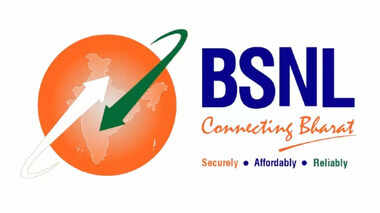
- 23 Jun 2025
In News:
Bharat Sanchar Nigam Limited (BSNL) announced in Hyderabad, the soft launch of BSNL Quantum 5G FWA. This indigenous, SIM-less fixed-wireless-access solution delivers fibre-like speeds over 5G radio.
What is Quantum 5G FWA?
Quantum 5G FWA (Fixed Wireless Access) is an indigenous, SIM-less, 5G broadband solution that offers fibre-like speeds using wireless 5G radio—eliminating the need for traditional fibre connections.
Key Technical Features:
- SIM-less Connectivity: Uses BSNL’s Direct-to-Device (D2D) platform; Customer Premises Equipment (CPE) auto-authenticates without a SIM card.
- Fully Indigenous Tech Stack: Core network, RAN (Radio Access Network), and CPE developed under the Atmanirbhar Bharat initiative.
- High-Speed Performance:
- Download: Up to 980 Mbps
- Upload: 140 Mbps
- Latency: Under 10 milliseconds
- Plug-and-Play Installation:
- No trenching or fibre required.
- Covers over 85% of Hyderabad households via existing BSNL tower grid.
Significance of the Launch
- India’s First SIM-less 5G FWA solution.
- Marks BSNL as a 5G pioneer in offering 100% made-in-India wireless broadband.
- Showcases Indian R&D strength and self-reliance in advanced telecom under Digital India and Atmanirbhar Bharat.
- Ideal for UHD streaming, cloud gaming, remote work, and smart home services.
- Bridges the digital divide by enabling affordable gigabit-speed internet, even in rural and underserved regions.
Roadmap and Future Expansion
- Pilot Rollouts (By September 2025): Target Cities: Bengaluru, Pondicherry, Visakhapatnam, Pune, Gwalior, Chandigarh
- Tariff Plans:
- ?999/month for 100 Mbps
- ?1499/month for 300 Mbps
- Enterprise Applications: Will support network-sliced, SLA-backed links for MSMEs and smart manufacturing through edge-cloud architecture.
World Investment Report 2025
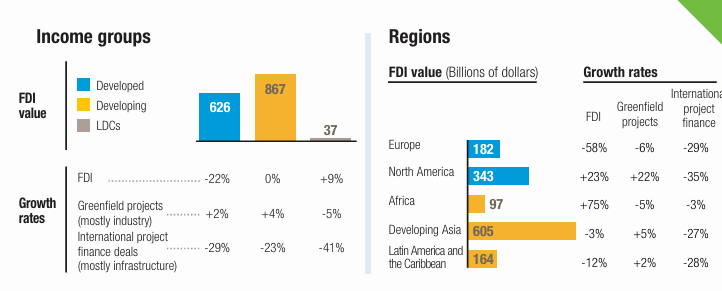
- 23 Jun 2025
In News:
The World Investment Report 2025, released recently by the United Nations Conference on Trade and Development (UNCTAD), highlights critical trends in global foreign direct investment (FDI).
Key Details:
Purpose of the Report:
- To track global trends in Foreign Direct Investment (FDI) and international production.
- To guide policymakers and investors on aligning investment flows with sustainable development objectives.
- To monitor progress on the Sustainable Development Goals (SDGs) and Global Digital Compact through investment trends.
Major Global Trends Identified (2024 Data)
- Overall Decline in Global FDI: FDI declined by 11%, reaching $1.5 trillion, marking the second consecutive year of contraction.
- Digital Economy as a Growth Engine
- Value of digital-sector projects doubled, becoming the primary driver of FDI growth.
- Key growth areas: AI, data centres, cloud computing, semiconductors.
- SDG Investment Crisis: Investment in critical SDG sectors such as renewable energy, water, sanitation, and agrifood fell by 25–33%.
- Regional Divergence
- Africa: FDI surged by 75%, led by Egypt’s $35 billion megaproject.
- ASEAN: Moderate growth of 10% driven by realigned supply chains.
- China: FDI inflows fell by 29%, affected by geopolitical tensions.
- South America: Registered an 18% drop in FDI.
- Collapse in Infrastructure Finance: International Project Finance (IPF) declined by 26%, deepening the infrastructure gap in least developed countries (LDCs).
- Geopolitical Fragmentation
- Rising trade tensions, tariff barriers, and political risks are reshaping FDI flows.
- Emergence of near-shoring and regionalisation as firms relocate to reduce dependence on global supply chains.
Country-Specific Focus: India
- India received $28 billion in FDI inflows in 2024, retaining its rank among top global destinations.
- Key sectors: semiconductors, EV components, digital infrastructure.
- India ranked among top 5 global hubs for greenfield projects.
- Outbound FDI by Indian firms increased by 20%, showing strong outward investment intent.
Assessment of Positive and Negative Trends
Positive Trends:
- Digital FDI Boom: Reflects a global pivot towards a knowledge and tech-driven economy.
- Africa’s Rise: Significant confidence in Africa despite global slowdown.
- Resilient ASEAN & India: Benefitting from global supply chain realignment.
Negative Trends:
- Fall in SDG-Aligned Investments: Threatens progress towards global sustainability targets.
- Infrastructure Finance Crisis: Severely affects LDCs dependent on project finance.
- China’s FDI Decline: Raises concerns about the future of global investment flows amid US-China tensions.
- Geopolitical Fragmentation: Reduces investor appetite for long-term cross-border projects.
Strategic Recommendations
- Strengthen Digital Infrastructure: Scale up investments in broadband, cloud infrastructure, and data hubs through public-private partnerships.
- Bridge SDG Investment Gap: Mobilize development banks, sovereign wealth funds, and climate finance to support SDG sectors.
- Policy Coherence: Align digital, industrial, and sustainability policies at national and international levels.
- De-risking Private Investment: Promote blended finance models to attract global capital to emerging markets.
- Enhance Innovation Governance: Improve IPR frameworks and cross-border data regulations to boost investor confidence in innovation sectors.
- Boost Regional Integration: Strengthen regional trade agreements and infrastructure connectivity to counter global fragmentation.
e-Rakt Kosh
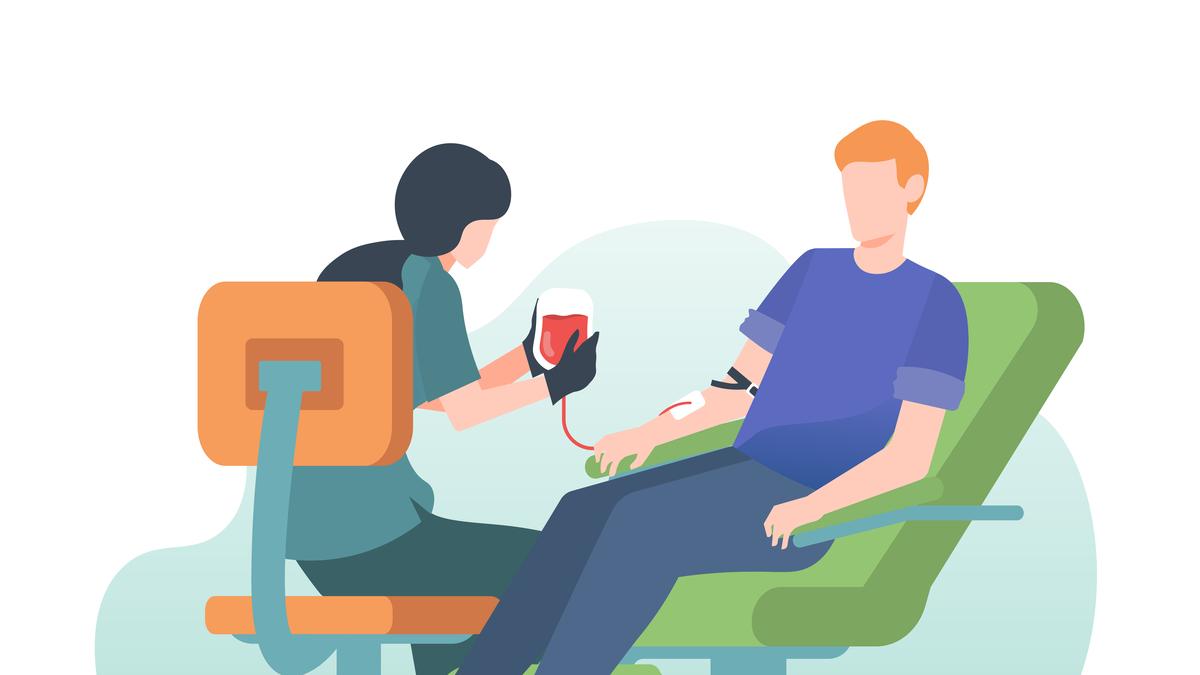
- 22 Jun 2025
In News:
The Ministry of Health and Family Welfare is set to integrate India’s Rare Donor Registry with e-Rakt Kosh, a centralized national blood bank management platform under the National Health Mission (NHM). This move aims to improve access to rare blood types, enhance donor coordination, and save lives by ensuring timely availability of rare blood groups.
About the Integration
- e-Rakt Kosh: A digital platform developed under NHM for real-time information on blood availability, donation camps, and blood bank locations.
- Rare Donor Registry of India (RDRI): Developed by the ICMR–National Institute of Immunohaematology (NIIH) with four partner institutes. Maintains a database of 4,000 carefully screened rare blood donors, tested for over 300 rare blood markers.
- Objective: To provide a centralized, accessible system for patients needing rare blood and to assist blood banks in managing inventory and donors efficiently.
Key Features and Benefits
- Life-saving Access: Enables patients and hospitals to locate rare blood types like Bombay blood group, Rh-null, and P-null efficiently.
- Safe Transfusions: Helps match blood for patients with multiple antigen deficiencies, common in disorders like thalassemia and sickle cell disease, thus reducing transfusion complications.
- Technological Advancements:
- Use of Multiplex PCR-based DNA testing for rapid identification of rare blood groups.
- Development of a customized blood screening kit tailored for Indian patients.
- Donor Engagement: Aims to ensure a steady, motivated pool of rare blood donors who remain connected to blood banks.
ICMR’s Parallel Work on Hemoglobinopathies and Rare Diseases
- Point-of-Care (POC) Tests Developed For:
- Sickle Cell Disease
- Hemophilia A
- Von Willebrand Disease
- Impact of Innovation:
- Sickle Cell Test Kits cost reduced from ?350 to under ?50 per test through Health Technology Assessment (HTA) led by DHR, ICMR–CRMCH, and NIIH.
- Estimated savings: ?1,857 crore for the government.
- New rapid testing device enables diagnosis even at PHC level.
- International Interest: World Federation for Hemophilia has shown interest in procuring India-developed diagnostic kits for global deployment.
- Commercialization: Technology transferred to Bhat Biotech, which launched the product under the brand Bio-Scan in August 2023.
Significance
- Enhances India’s healthcare infrastructure and emergency response for rare blood groups.
- Aligns with the goals of Universal Health Coverage (UHC) and Atmanirbhar Bharat in the field of indigenous diagnostics.
- Showcases India’s growing biotech innovation ecosystem with both national and international relevance.
11th International Day of Yoga (IDY) – 2025
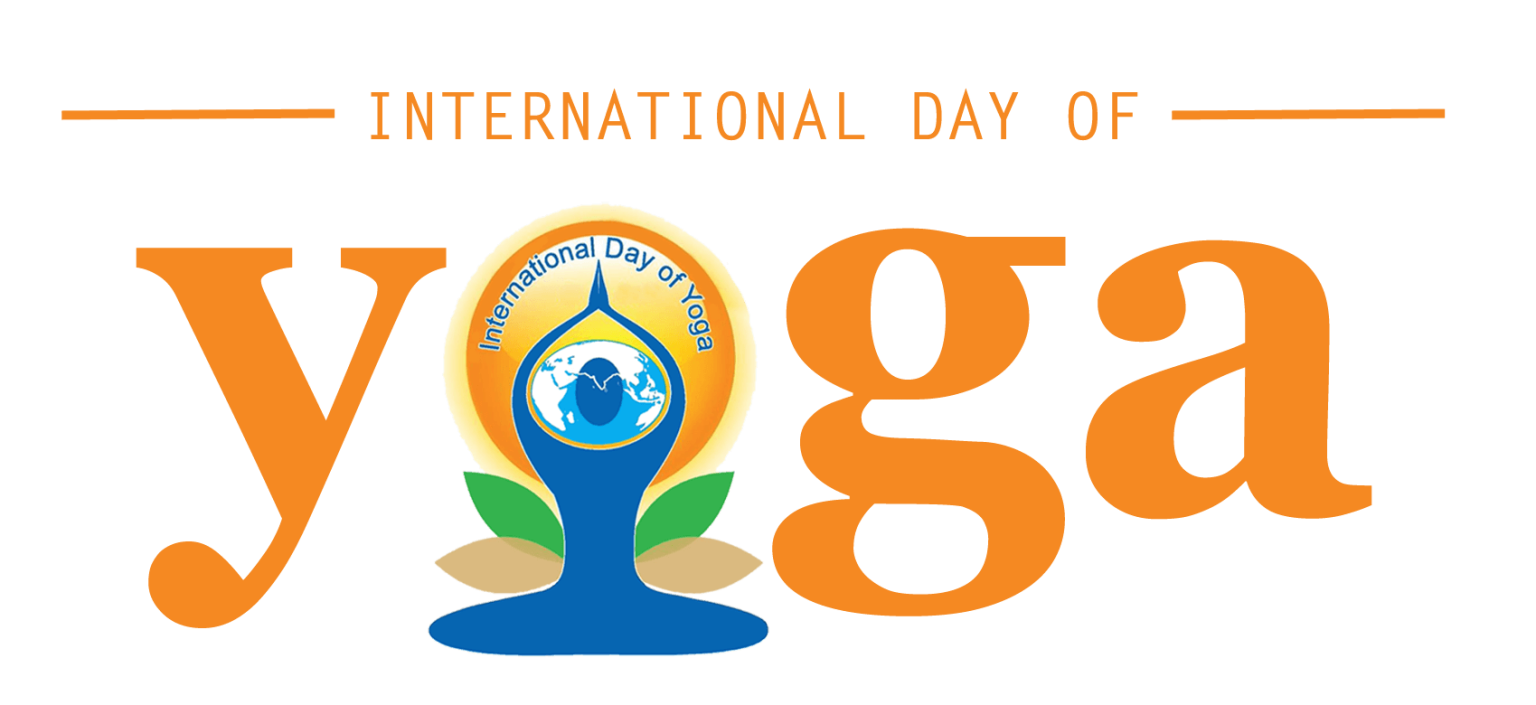
- 22 Jun 2025
In News:
The 11th International Day of Yoga (IDY) will be observed on June 21, 2025, under the theme “Yoga for One Earth, One Health”. The theme emphasizes the connection between individual well-being and planetary health, aligned with India’s G20 vision of “One Earth, One Family, One Future.”
About the International Day of Yoga
- What it is: An annual global observance promoting yoga as a holistic health practice for physical, mental, and emotional well-being in harmony with nature.
- Adoption: Declared by the United Nations General Assembly (UNGA) through Resolution 69/131 on December 11, 2014, following India's proposal.
- First Observed: June 21, 2015
- Nodal Ministry: Ministry of AYUSH, Government of India
Theme for 2025: “Yoga for One Earth, One Health”
- Focuses on the interdependence between human health and environmental sustainability.
- Reinforces yoga’s role in achieving sustainable lifestyles and climate consciousness.
Key Objectives
- Promote mind-body balance, emotional stability, and overall well-being through yoga.
- Raise global awareness on yoga’s health and ecological benefits.
- Encourage adoption of yoga as part of daily life for sustainable living.
- Strengthen India’s soft power and global leadership in wellness traditions.
Highlights and Participation
- Global Reach: Adopted by 175 UN Member States. Global participation has grown from 9 crore in 2018 to 24.53 crore in 2024.
- Mass Events: Celebrated across countries with support from state governments, Indian embassies, UN bodies, and civil society.
- Inclusive Message: Yoga Day’s logo and themes emphasize unity, well-being, and coexistence with nature.
Significance
- Public Health Tool: Promotes a low-cost, accessible, preventive healthcare practice.
- Sustainability Alignment: Advocates for climate-sensitive living and ecological harmony.
- Cultural Diplomacy: Enhances India’s global stature as the birthplace of yoga and a leader in wellness diplomacy.
- Soft Power Projection: Reflects India’s cultural values and promotes its influence through global well-being initiatives.
QS World University Rankings 2026
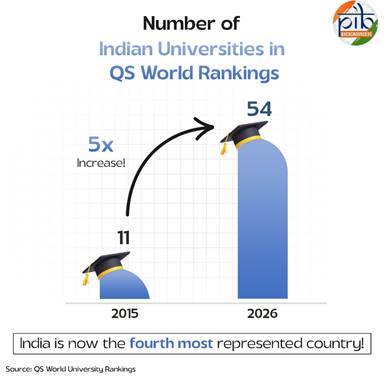
- 22 Jun 2025
In News:
India has recorded its highest representation to date in the QS World University Rankings 2026, with 54 institutions featured—up from 11 in 2015. This marks a five-fold increase in a decade, making India the fourth most represented country, after the US, UK, and China.
Key Highlights
- Total Indian Institutions Ranked (2026): 54
- New Entrants from India: 8
- Top-performing Indian Institution: IIT Delhi (Rank 123)
- Fastest Rising Indian Institution: IIT Madras, up 47 places (from 227 in 2025 to 180 in 2026)
- Indian Institutes of Technology (IITs) Featured: 12
- Debut Institutions in 2026:
- IIT Gandhinagar
- Lovely Professional University (LPU)
- Kalinga Institute of Industrial Technology (KIIT)
- Ashoka University
- Galgotias University
- Shiv Nadar University
- CHRIST (Deemed to be University), Bengaluru
- Manav Rachna International Institute of Research and Studies (MRIIRS)
Significant Trends and Insights
- Global Standing:
- India now ranks 4th globally in terms of number of institutions in the QS Rankings.
- Only the US (192), UK (90), and China (72) rank higher.
- Improvements and Recognition:
- 48% of India’s ranked institutions have improved their positions over last year.
- 6 institutions are in the global top 250.
- 5 Indian universities are among the top 100 globally for Employer Reputation, showing high industry trust.
- 8 institutions rank in the top 100 for Citations per Faculty, with an average score of 43.7—higher than the UK, US, and Germany.
- Diverse Representation:
- Includes central universities, deemed-to-be universities, technical institutions, and private universities, reflecting a balanced and diversified higher education landscape.
QS Ranking Methodology: Key Indicators
Performance Lens Weightage Indicators Weightage
Research & Discovery 50% Academic Reputation 30%
Citations per Faculty 20%
Employability & Outcomes 20% Employer Reputation 15%
Employment Outcomes 5%
Global Engagement 15% International Faculty Ratio 5%
International Research Network 5%
International Student Ratio 5%
Learning Experience 10% Faculty-Student Ratio 10%
Sustainability 5% Sustainability 5%
- New Indicator in 2026: International Student Diversity (tracks number and diversity of international students; non-weighted this cycle)
Significance for India
- The consistent rise highlights the impact of reforms under the National Education Policy (NEP) 2020, with greater emphasis on research, global collaboration, academic excellence, and employer integration.
- India’s progress makes it the fastest-rising G20 nation in QS rankings.
- Reflects increasing global trust and recognition of India’s higher education system.
Revised Green India Mission (GIM)
- 22 Jun 2025
In News:
Recently, the Ministry of Environment, Forest and Climate Change released the revised roadmap for the National Mission for a Green India (GIM). The updated strategy focuses on restoring degraded ecosystems, enhancing forest cover, and addressing climate impacts, especially in vulnerable landscapes like the Aravallis, Western Ghats, Himalayas, and mangroves.
About Green India Mission (GIM)
- Launched in: 2014
- Under: National Action Plan on Climate Change (NAPCC)
- Nodal Ministry: Ministry of Environment, Forest and Climate Change (MoEFCC)
- Core Objectives:
- Increase forest/tree cover by 5 million hectares.
- Improve the quality of forest cover on another 5 million hectares.
- Restore degraded ecosystems and enhance biodiversity.
- Improve the livelihoods of forest-dependent communities.
Achievements So Far
- Afforestation Activities: 11.22 million hectares covered (2015–16 to 2020–21) through central and state schemes.
- Funding: ?624.71 crore released (2019–24) to 18 states; ?575.55 crore utilized.
- Target Areas: Selected based on ecological vulnerability, sequestration potential, and restoration needs.
Key Features of the Revised Roadmap
- Landscape-Specific Restoration:
- Prioritizes Aravalli ranges, Western Ghats, Himalayas, and mangrove ecosystems.
- Emphasizes regionally adapted best practices for ecosystem restoration.
- Integration with Aravalli Green Wall Project:
- Aims to combat desertification and sandstorm risks in northern India.
- Initial restoration planned across 8 lakh hectares in 29 districts of 4 states.
- Estimated cost: ?16,053 crore.
- Aims to develop a 5 km buffer zone covering 6.45 million hectares around the Aravallis.
- Western Ghats Focus:
- Tackling deforestation, illegal mining, and degradation.
- Measures include afforestation, groundwater recharge, and mining site restoration.
Combating Land Degradation and Climate Change
- Land Degradation (2018–19): Affected 97.85 million hectares (~1/3rd of India’s land), per ISRO data.
- India’s Climate Targets (2030):
- Create an additional carbon sink of 2.5–3 billion tonnes of CO? equivalent via forest/tree cover.
- Restore 26 million hectares of degraded land.
- Carbon Sequestration Potential (FSI Estimates):
- Restoration of open forests can sequester 1.89 billion tonnes of CO? over 15 million hectares.
- With intensified afforestation and aligned schemes, forest cover could reach 24.7 million hectares—achieving a carbon sink of 3.39 billion tonnes CO? equivalent by 2030.
Significance of the Revised Mission
- Aligns with India’s NDCs under the Paris Agreement.
- Supports goals under UNCCD and UNFCCC.
- Helps mitigate climate change impacts by creating natural buffers and carbon sinks.
- Promotes ecological sustainability, biodiversity conservation, and community livelihood enhancement.
Bhashini
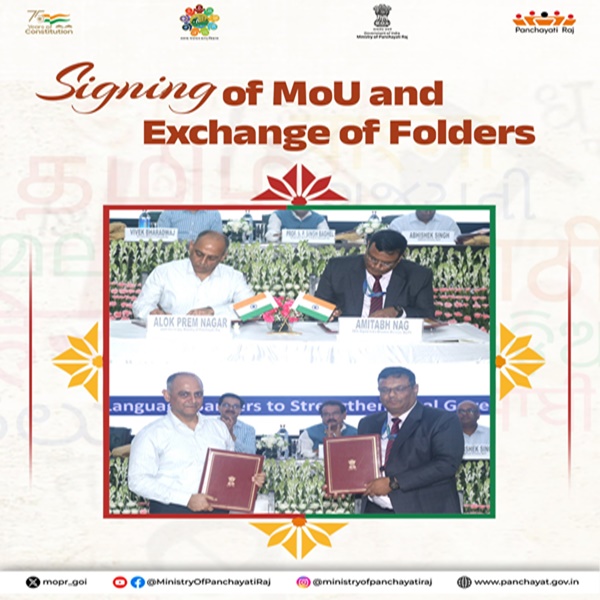
- 22 Jun 2025
In News:
The Ministry of Panchayati Raj (MoPR) has signed a Memorandum of Understanding (MoU) with Bhashini, the National Language Translation Mission (NLTM), to integrate AI-enabled multilingual tools into rural e-governance platforms.
About Bhashini
- Developed by: Ministry of Electronics and Information Technology (MeitY)
- Purpose: Acts as a digital public infrastructure for real-time, AI-powered translation across Indian languages.
Objective of the MoU
- To build an inclusive, multilingual e-governance ecosystem for Panchayati Raj Institutions (PRIs).
- To bridge language barriers in rural governance and foster participatory democracy.
Key Features of the Initiative
- AI-Driven Language Translation: Offers real-time speech-to-text and text-to-text translation in major Indian languages.
- Platform Integration: Bhashini tools to be integrated with MoPR’s digital platforms like eGramSwaraj, ensuring multilingual access to rural governance services.
- Citizen-Centric Approach: Enables rural citizens to interact with digital governance platforms in their native language, enhancing accessibility and inclusion.
- Promotes Digital Inclusion: Supports rural digital literacy by making digital interfaces linguistically accessible.
- Enhances Transparency and Trust: Facilitates better information dissemination, increasing trust and engagement in local self-governance.
Significance
- Aligns with Digital India goals.
- Empowers Gram Panchayats by ensuring language is not a barrier to governance.
- Sets a precedent for AI-driven, citizen-centric governance reforms.
Predatory Pricing and Competition Law Reform
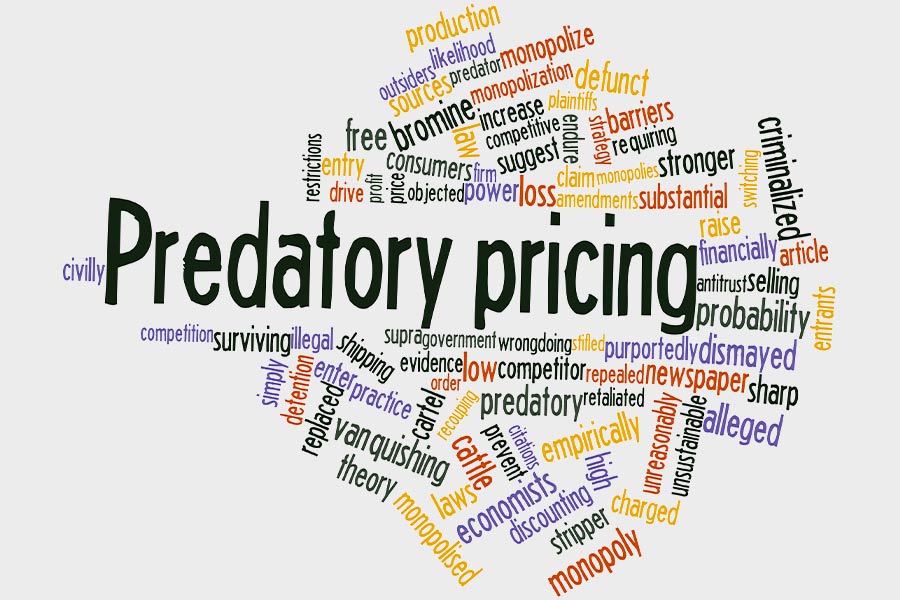
- 21 Jun 2025
In News:
- The Competition Commission of India (CCI) has recently proposed the Determination of Cost of Production (DCOP) Regulations, 2025 to replace the older 2009 norms. A major reform introduced is the use of Average Total Cost (ATC) as a key metric to determine pricing in predatory pricing cases, while excluding ‘market value’ as a cost measure in such assessments.
- This development is significant in the context of India's broader competition law landscape, where concerns around market dominance and fair pricing are central to protecting consumer interest and ensuring a level playing field.
Understanding Predatory Pricing
- Predatory pricing refers to the practice of setting prices below cost to eliminate competitors from the market. Although consumers may benefit from low prices in the short term, the long-term consequence is often the emergence of monopolies, leading to higher prices and fewer choices. Due to its anti-competitive nature, this pricing strategy is banned in most jurisdictions globally.
- In India, predatory pricing is classified under ‘abuse of dominance’ as per the Competition Act, 2002, specifically under the broader category of unfair pricing or exclusionary conduct.
Legal Criteria for Establishing Predatory Pricing in India
For any allegation of predatory pricing to hold, three conditions must be satisfied:
- Dominance in the Market: The firm accused must hold a dominant position in the relevant market.
- Pricing Below Cost: The firm must have engaged in below-cost pricing, though defining “cost” has remained contentious. This raises the question—should cost mean fixed, variable, or total?
- Fixed costs are those independent of output (e.g., rent, IT systems).
- Variable costs change with production (e.g., raw materials, logistics).
- Total cost is the sum of fixed and variable costs.
- Intent to Eliminate Competition: There must be clear evidence that the pricing strategy was intended to exclude competitors from the market.
While dominance is usually straightforward to assess, determining what constitutes “cost” and proving anti-competitive intent remain legally complex.
Regulatory Evolution: From AVC to ATC
- Under existing regulations, the CCI had discretion to choose the cost metric on a case-by-case basis. The norm was to justify the use of any metric other than Average Variable Cost (AVC).
- A notable application was in the MCX vs. NSE case, where the Commission adopted the Long Run Average Incremental Cost (LRAIC) due to the network externalities inherent in stock exchange services, justifying inclusion of fixed costs.
- The new 2025 draft regulations now explicitly include Average Total Cost (ATC) as a valid benchmark for cost evaluation. ATC is widely accepted in industrial economics as a realistic representation of firm cost efficiency. By allowing ATC as a formal benchmark and excluding ‘market value’, the CCI aims to bring clarity and consistency in below-cost pricing investigations.
Why this Reform Matters
This proposed change holds importance for several reasons:
- It allows for a more holistic and realistic cost assessment, especially in industries where fixed costs form a significant part of the cost structure.
- It improves regulatory certainty and empowers the CCI to address anti-competitive practices in both legacy sectors (e.g., oil & gas) and emerging sectors (e.g., artificial intelligence and digital platforms).
- The reform is crucial at a time when the CCI’s budget has been declining year-on-year, limiting its enforcement capability. Simplified legal frameworks can enhance effectiveness without overburdening institutional resources.
Strengthening Inclusive Education for Children with Disabilities in India
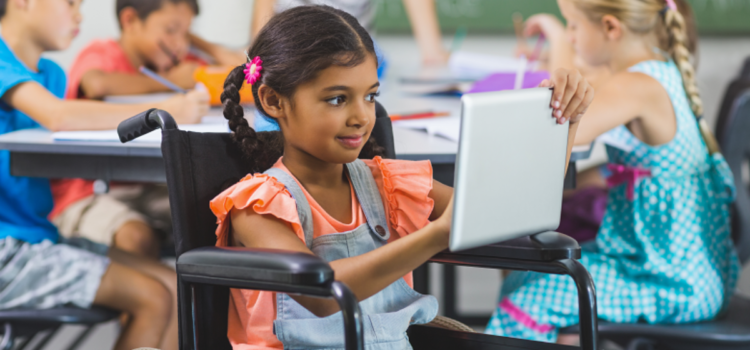
- 21 Jun 2025
In News:
In a major step towards inclusive education, the Government of India signed a tripartite Memorandum of Understanding (MoU) in 2025 between the Department of Empowerment of Persons with Disabilities (DEPwD), National Institute of Open Schooling (NIOS), and National Council of Educational Research and Training (NCERT). The MoU aims to enhance curriculum reform, institutional coordination, and accessibility for children with disabilities across India’s education system.
What is Inclusive Education?
Inclusive education refers to a model where children with and without disabilities learn together in mainstream classrooms. It is supported by adapted curricula, accessible infrastructure, and individualised support mechanisms. The Rights of Persons with Disabilities (RPWD) Act, 2016 legally mandates inclusive education environments in India.
Why Inclusive Education Matters
Inclusive education is not merely a policy choice but a constitutional, social, and developmental imperative:
- Right to Education: Under Article 21A of the Constitution and the RTE Act, 2009, every child aged 6–14 has the right to free and compulsory education. This includes children with special needs (CWSN).
- Equity and Access: Reports by UNESCO highlight that 29 million children are out of school in South Asia, many of them with disabilities. Ensuring their inclusion addresses systemic exclusion.
- Social Transformation: Inclusive classrooms reduce stigma, promote empathy, and facilitate social acceptance of persons with disabilities.
- Human Capital Development: Educating CWSN enhances their ability to participate in the economy, contributing to innovation, productivity, and nation-building.
- Global Commitments: India has ratified the UN Convention on the Rights of Persons with Disabilities (CRPD, 2007) and is committed to SDG 4, which seeks inclusive and equitable quality education for all by 2030. The National Education Policy (NEP) 2020 also stresses disability inclusion at all education levels.
Key Data Points Highlighting the Need for Intervention
- According to the 2011 Census, around 7% of Indian children (0–19 years) have disabilities. However, data from UDISE+ 2019–20 reveals that less than 1% of children enrolled at the primary level are children with disabilities.
- In 2018–19, around 21 lakh CWSN were covered under Samagra Shiksha, supported by only 27,774 special/resource teachers across the country. This highlights the urgent need for both greater coverage and trained human resources.
Government Initiatives Promoting Inclusive Education
- The 2025 MoU between DEPwD, NIOS, and NCERT is aimed at reforming the curriculum to accommodate diverse learners. It also recognises special schools run under the Deendayal Disabled Rehabilitation Scheme (DDRS) as SAIEDs (Schools for Accessible and Inclusive Education for Disabled), expanding academic options for CWSN.
- The National Education Policy 2020 mandates the integration of children with disabilities in regular classrooms and promotes universal access and equity.
- Under Samagra Shiksha, the government provides financial support of ?3,500 per CWSN annually. Additional provisions include stipends for girls (up to Class XII), appointment of special educators, resource rooms, and home-based education for children with severe disabilities.
- NCERT’s Barkha Series, based on the Universal Design for Learning (UDL) framework, offers accessible reading materials in both print and digital formats, tailored to the diverse needs of learners.
- The RPWD Act 2016 mandates the creation of inclusive learning environments, with accessible buildings, assistive devices, and necessary support services.
UN Oceans Conference 2025
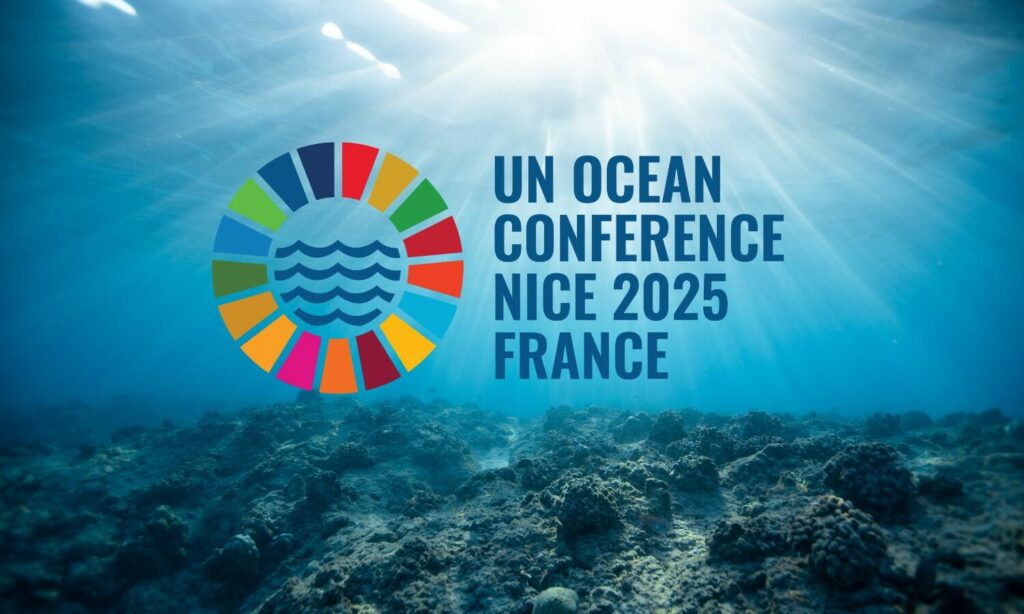
- 21 Jun 2025
In News:
The third United Nations Oceans Conference (UNOC) was recently held in France, witnessing major developments in international marine conservation. One of the most significant outcomes was the near-finalisation of the Biodiversity Beyond National Jurisdiction (BBNJ) agreement, also referred to as the High Seas Treaty.
As of now, 56 countries have ratified the treaty out of the required 60, bringing it close to the threshold for becoming legally binding. Notably, India and the United States have not yet ratified the agreement, although India has officially stated it is in the process of doing so.
About the BBNJ Treaty
- The BBNJ Treaty is a legally binding agreement developed under the framework of the United Nations Convention on the Law of the Sea (UNCLOS).
- Its aim is to regulate the use and protection of biodiversity in areas of the ocean that lie beyond national jurisdictions, also known as the high seas.
- The core objectives of the BBNJ Treaty include the creation of marine protected areas (MPAs) in international waters, regulation of marine genetic resources, enforcement of environmental impact assessments (EIAs) for activities in these regions, and capacity-building and technology transfer to support developing countries.
- The treaty is crucial because the high seas cover about 64% of the ocean’s surface and are largely unregulated.
- The BBNJ aligns with the Convention on Biological Diversity (CBD) target of conserving 30% of marine and coastal areas by 2030. Once the treaty secures the required number of 60 ratifications, it will enter into force after a 120-day waiting period. This will pave the way for the first Conference of Parties (COP) under the BBNJ to be held by late 2026.
Challenges to Implementation
- A major hurdle to the implementation of the BBNJ is the equitable sharing of benefits from marine genetic resources found in the high seas. These resources include unique life forms from deep-sea ecosystems that could have commercial applications in fields like pharmaceuticals and biotechnology.
- Since the high seas are global commons and not owned by any single nation, there is no clear consensus on how benefits should be shared.
- Environmental groups have also raised concerns that without a strong ban on resource extraction, the treaty may fall short of its conservation goals and could lead to unchecked exploitation of oceanic biodiversity.
Key Outcomes and Commitments from UNOC 2025
While the treaty itself is still awaiting full ratification, the conference saw a number of voluntary national and institutional commitments toward marine protection and sustainable ocean governance:
- The European Commission pledged €1 billion to support ocean conservation, marine science, and sustainable fisheries.
- French Polynesia committed to creating the world’s largest marine protected area, covering approximately five million square kilometres, equivalent to its entire exclusive economic zone (EEZ).
- New Zealand announced a contribution of $52 million to enhance ocean governance, science, and management in the Pacific Islands region.
- Germany launched an immediate action programme worth €100 million for the recovery and clearance of legacy munitions in the Baltic and North Seas.
- A coalition of 37 countries, led by Panama and Canada, initiated the High Ambition Coalition for a Quiet Ocean, the first global initiative to address ocean noise pollution.
- Italy committed €6.5 million to strengthen surveillance by the Coast Guard in marine protected areas and around oil platforms.
- Canada contributed $9 million to the Ocean Risk and Resilience Action Alliance, aiming to help Small Island Developing States (SIDS) and coastal countries build resilience against climate change using nature-based solutions.
- Spain pledged to establish five new marine protected areas, increasing its protected marine territory to 25%.
- A group of UN agencies introduced the One Ocean Finance initiative, which aims to mobilize investment from blue economy sectors to fund ocean sustainability.
Operation Sindhu
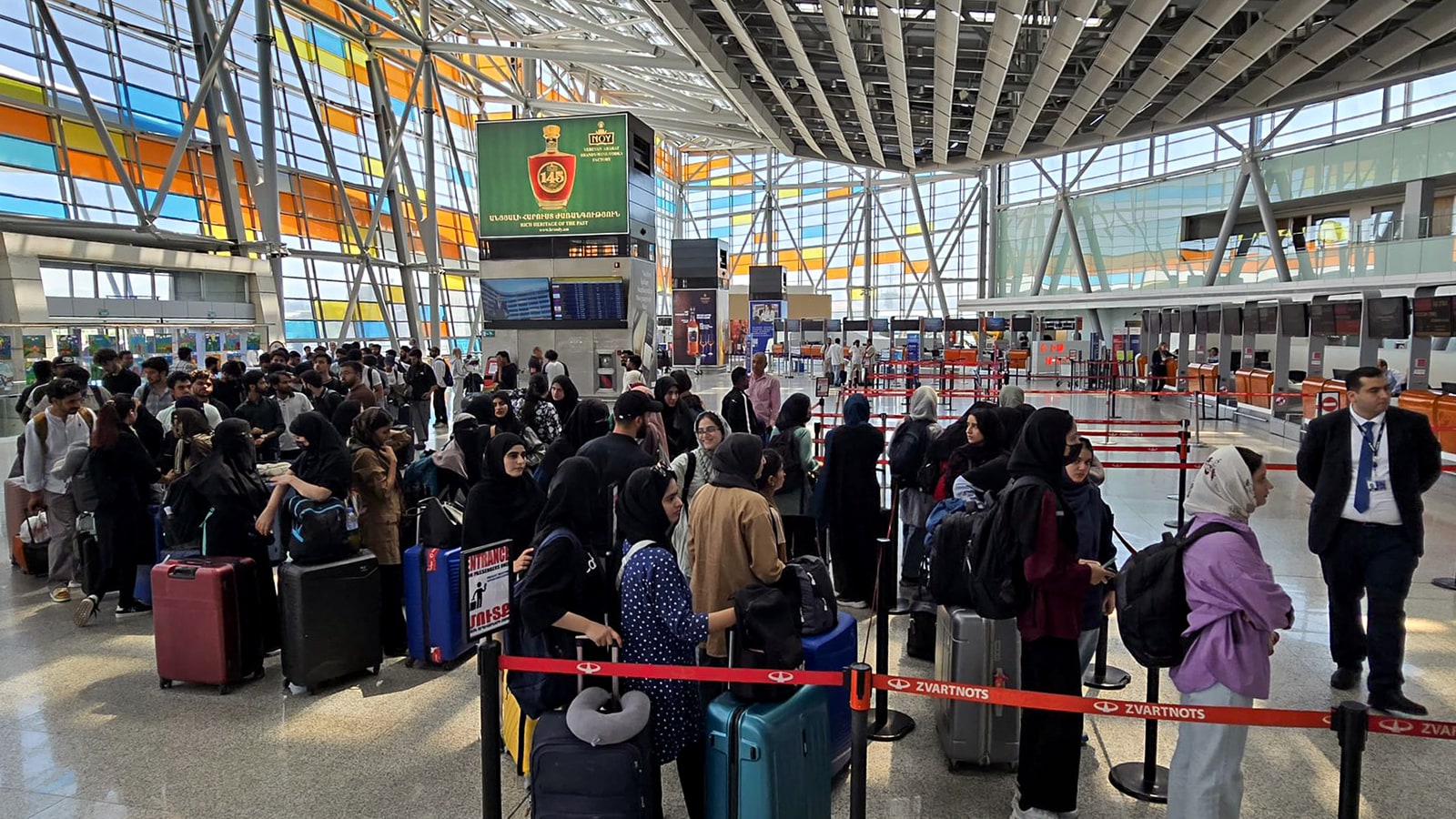
- 21 Jun 2025
In News:
As tensions escalate in West Asia due to the ongoing Iran-Israel conflict, the Government of India has launched Operation Sindhu to evacuate Indian nationals, particularly students, stranded in conflict-affected regions of Iran.
- The first flight under Operation Sindhu, carrying 110 Indian students, successfully landed in New Delhi, marking the beginning of the evacuation process.
What is Operation Sindhu?
Operation Sindhu is a government-led evacuation mission launched in 2025 to ensure the safe repatriation of Indian citizens from war-hit Iran.
- Launched by: Ministry of External Affairs (MEA), Government of India
- Assisted by: Indian Embassies in Iran and Armenia
Objectives:
- To safely evacuate Indian citizens, particularly students, from volatile zones in Iran.
- To coordinate safe land-based exit routes through Armenia, due to restricted or dangerous air routes over Iran.
Key Features of the Operation:
Feature Details
Evacuation Route Northern Iran → Yerevan (Armenia) → New Delhi
Monitoring Real-time updates and continuous monitoring by Indian missions
Coordination Close coordination with governments of Iran and Armenia
Control Room 24/7 MEA Control Room operational in New Delhi
India’s Major Air Evacuation Missions (Chronological Overview):
Mission Name Year Objective
Vande Bharat Mission 2020 Evacuation of Indians stranded abroad during the COVID-19 pandemic
Operation Devi Shakti 2021 Evacuation from Afghanistan after the Taliban takeover
Operation Ganga 2022 Evacuation from Ukraine amid Russia-Ukraine war
Operation Kaveri 2023 Rescue of Indian nationals from conflict-hit Sudan
Operation Ajay 2023 Repatriation of Indians from Israel amid regional conflict
Operation Sindhu 2025 Ongoing evacuation from Iran amid Iran–Israel escalation
Significance for India
- Diaspora Safety: Reinforces India’s commitment to protecting its citizens abroad.
- Diplomatic Efficiency: Reflects India’s growing capabilities in executing rapid and complex evacuation logistics in volatile geopolitical environments.
- Soft Power and Foreign Policy: Enhances India’s global image as a responsible nation ensuring citizen welfare, even beyond borders.
Fattah Hypersonic Missile
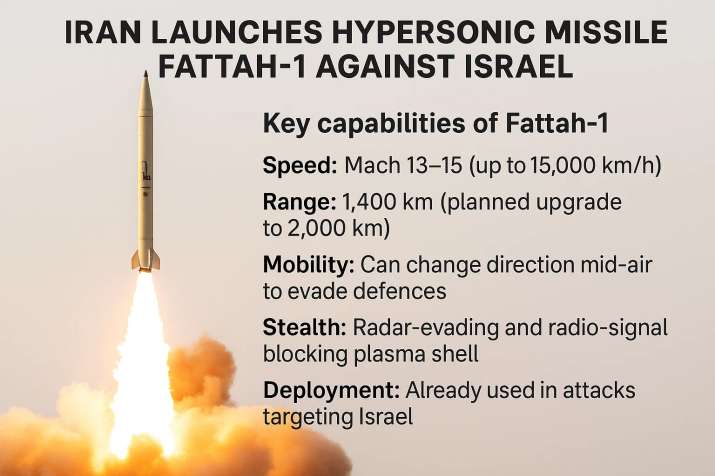
- 21 Jun 2025
In News:
In light of intensifying hostilities between Iran and Israel, Iran has deployed its advanced Fattah hypersonic ballistic missile, marking a significant shift in regional military capabilities and raising concerns over existing air defence systems such as Israel’s Iron Dome.
About Fattah Hypersonic Missile
- Developed by: Aerospace Force of the Islamic Revolutionary Guard Corps (IRGC), Iran
- Unveiled: November 2022 (on the 11th death anniversary of missile scientist Hassan Tehrani Moghaddam)
- Inducted: 2023
- Name Meaning: “Fattah” translates to “victor” or “conqueror”
Key Capabilities:
Feature Specification
Speed Mach 13–15 (approx. 15,000 km/h)
Range 1,400 km (planned upgrade to 2,000 km)
Mobility Capable of mid-air directional changes
Stealth Forms a plasma shield that blinds radar & blocks radio signals
Deployment Used in attacks against Israeli territory
- A more advanced version, Fattah-2, with a range of 1,500 km, is reportedly under development.
Strategic Significance
- The missile’s ability to evade modern air defence systems—such as Iron Dome and David’s Sling—makes it a potential game-changer.
- Iran claims Fattah is capable of operating within the upper atmosphere with unpredictable trajectory, making interception extremely difficult.
- This hypersonic manoeuvrability marks a leap over traditional ballistic missiles that follow a predictable parabolic trajectory.
Comparative Global Context
Iran claims to be the fourth country globally to possess operational hypersonic missiles, after:
- Russia
- China
- India
Other nations like the USA and North Korea are developing or testing hypersonic systems but have not fielded them in combat as Iran reportedly has.
Operational History
- October 2024: Fattah missiles were reportedly used by Iran in a prior attack on Israeli targets.
- 2025 Escalation: The missile was deployed during “Operation Honest Promise 3,” marking the 11th wave of retaliatory attacks by Iran on Israeli territory.
Iran’s Broader Ballistic Missile Arsenal
In addition to Fattah, Iran possesses a wide range of short-to-long range missiles, including:
- Fateh Series: Short-range solid-fuel missiles (Fateh-110, Fateh-313)
- Zolfaghar and Qasem: Extended versions of Fateh series
- Emad: Long-range liquid-fuel missile with 1,700 km range
- Sejjil: Solid-fuel missile with 2,500 km range, speeds up to 17,000 km/h
- Others: Kheibar, Ghadr-110, Fajr-3, Shahab-3, Ashoura, Haj Qasem, Basir
Implications for India and the Region
- Regional Arms Race: Iran’s hypersonic capability may trigger further military build-up in the Middle East.
- India’s Position: As one of the few nations with hypersonic R&D, India must monitor evolving doctrines and maintain strategic balance.
- Global Security: The usage of such missiles in conflict zones raises concerns over escalation, proliferation, and undermining of existing missile defence systems.
FASTag Annual Pass
- 20 Jun 2025
In News:
Recently, Union Transport Minister Nitin Gadkari announced the launch of a FASTag-based Annual Pass, offering a simplified and cost-effective tolling solution for private vehicle users on National Highways. The initiative is set to be rolled out from August 15, 2025, and aims to improve traffic flow, reduce toll disputes, and enhance ease of travel.
What is the FASTag Annual Pass?
- Cost: ?3,000
- Validity: 1 year from activation or 200 highway trips (whichever comes earlier)
- Eligibility: Only for non-commercial private vehicles (cars, jeeps, vans)
- Coverage: Valid across all National Highways in India
Key Objectives
- Hassle-free highway travel by eliminating repeated toll payments
- Reduce congestion and waiting time at toll plazas
- Simplify toll management with a one-time, prepaid model
- Address concerns regarding toll plazas located in close proximity (within 60 km)
How It Works
- Integrated with the existing FASTag system (uses RFID technology)
- Annual pass will be linked to the user's FASTag account
- Activation and renewal through:
- Rajmarg Yatra App
- NHAI website
- Ministry of Road Transport & Highways (MoRTH) website
Part of a Broader Reform in Tolling
The Annual Pass complements ongoing toll reforms:
- Introduction of ANPR-FASTag hybrid tolling system:
- Automatic Number Plate Recognition (ANPR) cameras
- RFID-based FASTag readers
- Enables barrier-less tolling, where vehicles are charged without stopping
- Non-compliance may result in:
- e-notices
- Penalties, including FASTag suspension or VAHAN database sanctions
Gharial Conservation

- 20 Jun 2025
In News:
On World Crocodile Day (June 17, 2025), Etawah district in Uttar Pradesh marked the 50th anniversary of India’s pioneering Gharial Conservation Programme, commemorating five decades of sustained efforts to protect the endangered gharial (Gavialis gangeticus) along the Chambal River.
About the Gharial Conservation Programme
- Launched in: 1975
- Initiated by: Forest Department of Uttar Pradesh and Society for Conservation of Nature (SCON)
- Supported by: UNDP, FAO, and Government of India
- Location: Primarily focused on Chambal River in Etawah district, Uttar Pradesh
- Breeding Facility: Kukrail Gharial Rehabilitation Centre, Lucknow
Why Gharial Conservation Matters
- Species: Gharial (Gavialis gangeticus) — endemic, freshwater crocodilian
- Status: Critically Endangered (IUCN Red List)
- Habitat: Prefers deep, fast-flowing rivers with sandy banks and minimal human interference
- Threats: Habitat destruction, sand mining, illegal fishing, entanglement in nets, and declining fish stocks
Programme Objectives
- Protect wild gharial populations in natural river habitats.
- Enhance population through captive breeding and release.
- Study habitat biology and gharial behaviour to inform scientific conservation.
- Promote coexistence between gharials and local fishing communities.
- Create awareness and engage local populations in conservation.
Key Features of the Programme
- Egg Collection: Gharial eggs are safely collected from natural nests on riverbanks.
- Artificial Incubation: Maintained under controlled temperature and humidity to improve hatching success.
- Captive Rearing: Hatchlings are reared for 3–5 years at Kukrail Centre until they are strong enough for survival in the wild.
- Release Strategy: Tagged juveniles are released in protected stretches of the Chambal River.
- Community Involvement: Local fishermen and villagers are involved in conservation-linked livelihoods to reduce human-wildlife conflict.
Impact and Legacy (1975–2025)
- One of India’s earliest species-specific conservation programmes.
- Created a successful model of “rear-and-release” conservation.
- Helped stabilize the gharial population in Chambal, now one of the last strongholds for the species.
- Promoted community-based conservation and scientific habitat management.
Sakura Science High School Programme 2025

- 20 Jun 2025
In News:
- In June 2025, 20 Indian school students were officially flagged off by Shri Sanjay Kumar, Secretary, Department of School Education & Literacy (DoSEL), to participate in the prestigious Sakura Science High School Programme 2025 in Japan.
- The initiative reflects India's growing focus on international educational exposure, scientific collaboration, and experiential learning, in alignment with the vision of the National Education Policy (NEP) 2020.
About the Sakura Science Programme
- Launched by: Japan Science and Technology Agency (JST) in 2014.
- Objective: To promote science, technology, and innovation through Asia-wide youth exchanges.
- India’s Participation: Since 2016; over 619 students and 91 supervisors have participated till 2025.
- Participants (2025 batch):
- 20 students (7 boys, 13 girls) from Jawahar Navodaya Vidyalayas and government schools in Andaman & Nicobar Islands, Ladakh, Mizoram, Nagaland, and Tripura.
- Accompanied by 2 supervisors.
- Programme duration: 15–21 June 2025.
- Participating countries (2025): India, Malaysia, Taiwan, and Ukraine.
Key Features of the Programme
- Hands-on Learning: Visits to advanced scientific labs, tech demonstration centres, and universities in Japan.
- Cultural Exposure: Insight into Japanese traditions, societal values, and innovation ecosystem.
- International Peer Exchange: Interaction with students from other Asian nations to foster global scientific thinking.
Relevance to NEP 2020
The NEP 2020 advocates experiential, holistic, and integrated learning. It highlights:
- The need for educational excursions to places of scientific, cultural, and technological relevance.
- Promoting international collaborations that broaden the intellectual horizons of learners.
- Encouraging innovation through interdisciplinary exposure and real-world learning.
The Sakura Programme complements NEP 2020’s goals by offering Indian students a unique platform to explore global advancements in STEM (Science, Technology, Engineering, and Mathematics) fields.
Strategic Importance
- Science Diplomacy: Strengthens Indo-Japanese relations in education and technology.
- Youth Empowerment: Builds future-ready, globally aware scientific talent.
- Inclusivity: Focuses on students from remote and underserved regions, aligning with India’s equity-focused educational reforms.
Global Drought Outlook 2025
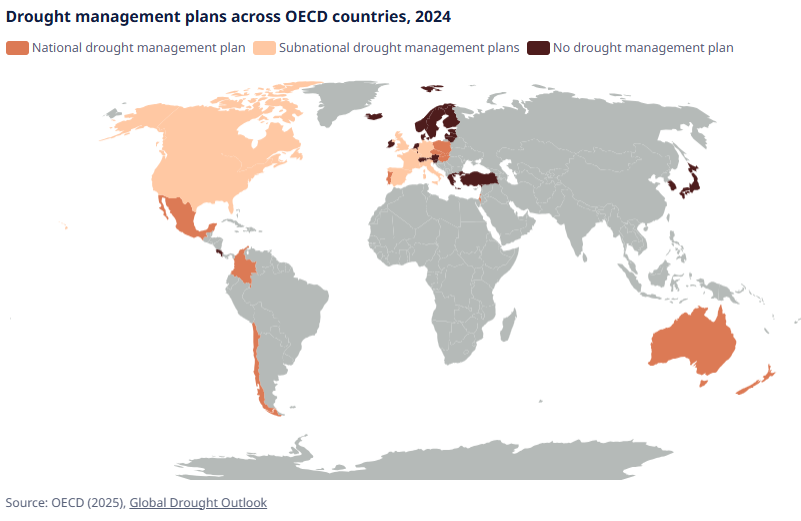
- 20 Jun 2025
In News:
- The Organisation for Economic Co-operation and Development (OECD) has released the “Global Drought Outlook 2025”, presenting a stark warning about the increasing frequency, severity, and impact of droughts worldwide.
- The report, titled “Global Drought Outlook: Trends, Impacts and Policies to Adapt to a Drier World”, offers a comprehensive assessment of drought patterns, consequences, and adaptation strategies, making it crucial for policymakers and global environmental governance.
Understanding Drought:
Drought is defined as a hydrological imbalance, characterised by prolonged periods of “drier-than-normal” conditions that deplete soil moisture, surface water, and groundwater. The report identifies three main types:
- Meteorological Drought: Caused by significantly below-average rainfall over an extended period.
- Agricultural Drought: Occurs when soil moisture becomes insufficient for crops and vegetation.
- Hydrological Drought: Involves declining water levels in rivers, lakes, and aquifers, affecting supply for human and ecological needs.
Global Trends and Projections
- Drought-Affected Land: The share of global land experiencing drought has doubled since 1900, driven by climate change and unsustainable land use.
- Current Impact (2023): Nearly 48% of the world’s land experienced at least one month of extreme drought.
- Regional Hotspots: Western USA, South America, Europe, Africa, and Australia are increasingly vulnerable.
- Groundwater Stress: Around 62% of monitored aquifers show declining trends.
- Future Risk: At +4°C global warming, droughts could become 7 times more frequent and severe by 2100, posing systemic global threats to food, water, and economic security.
Multidimensional Impacts of Drought
Ecological:
- 37% of global soils have dried significantly since 1980.
- River and groundwater depletion are threatening biodiversity and ecosystem services.
Economic:
- Drought-related losses are increasing by 3–7.5% annually.
- Modern droughts are twice as costly as in 2000; costs may rise 35% by 2035.
- Agriculture is most affected: crop yields drop up to 22% in drought years.
- Drought causes a 40% drop in river-based trade and a 25% decline in hydropower output.
Social:
- Droughts account for 34% of disaster-related deaths, though only 6% of disasters are droughts.
- It is a major driver of food insecurity, internal displacement, and climate migration, especially in Sub-Saharan Africa.
- Political instability and conflict often correlate with drought-induced resource scarcity.
Adaptation and Mitigation Strategies
The OECD emphasizes a multi-sectoral approach to manage drought risks:
- Integrated Water Resource Management (IWRM):
- Balancing water use and renewal.
- Promoting efficient and equitable water allocation.
- Nature-based Solutions (NbS):
- Urban de-sealing to enhance groundwater recharge.
- Landscape restoration to improve water retention and ecosystem resilience.
- Sustainable Agriculture:
- Adoption of drought-resistant crops and micro-irrigation systems.
- Can reduce water use by up to 76%.
- Urban Planning: Permeable infrastructure restores aquifers (e.g., US examples show 780 million m³/year recovery).
- Early Warning Systems: Enhanced drought monitoring, forecasting, and risk mapping.
- Policy Integration: Embedding climate resilience into national water and land-use policies.
- Cross-Sector Coordination: Engaging sectors like agriculture, energy, transport, construction, and health.
- Economic Benefits: Every $1 invested in drought resilience yields $2–$10 in benefits.
Performance Grading Index (PGI) 2.0
- 20 Jun 2025
In News:
The Ministry of Education released the Performance Grading Index (PGI) 2.0 for the years 2022–23 and 2023–24, offering a comprehensive assessment of school education across States and Union Territories (UTs). This index, aligned with the National Education Policy (NEP) 2020 and Sustainable Development Goals (SDG 4), serves as a critical evidence-based framework for benchmarking educational performance in India.
About PGI 2.0
- Launched: 2017 (PGI 2.0 is the revised version)
- Published by: Ministry of Education, Government of India
- Purpose: Measures performance in school education using a data-driven approach
- Total Indicators: 73 across 6 domains
- Scoring: Out of 1000 points; graded into 10 performance bands:
- Daksh (951–1000) – Top
- Akanshi-3 (401–460) – Lowest
Domains Assessed
- Learning Outcomes and Quality
- Access to Education
- Infrastructure and Facilities
- Equity
- Governance Processes
- Teacher Education and Training
Key Highlights of PGI 2.0 (2022–24)
- Top Performer: Chandigarh with a score of 703, placed in the fifth band – Prachesta-1.
- Lowest Performer: Meghalaya, with 417 points, in the tenth and lowest band – Akanshi-3.
- No State/UT reached the top four bands (Daksh, Utkarsh, Ati Uttam, Uttam), indicating a national gap in quality education.
State-Wise Band Distribution
- Band 5 (Prachesta-1: 701–760): Chandigarh
- Band 7 (581–640): Punjab, Delhi, Gujarat, Odisha, Kerala, Haryana, Goa, Maharashtra, Rajasthan, and Dadra & Nagar Haveli & Daman & Diu
- Band 8 (521–580): 14 States/UTs
- Band 9 (461–520): 10 States/UTs
- Band 10 (Akanshi-3: 401–460): Meghalaya (only State in this band)
Performance by Domains
- Learning Outcomes: No State achieved the top four bands. Chandigarh, Punjab, and Puducherry performed relatively better (Prachesta-2).
- Access to Education: Odisha alone achieved the highest band (Daksh), while Bihar and Jharkhand showed notable progress.
- Infrastructure: Only Chandigarh featured in the third band (Ati Uttam), with Delhi and Dadra & Nagar Haveli in the next.
- Equity: All States placed in the top three bands, indicating relatively balanced access among social groups.
- Governance & Monitoring: Chandigarh excelled through digital governance and transparent fund utilization.
Significance for Policy and NEP 2020
- PGI 2.0 is pivotal in monitoring NEP 2020 implementation, especially for early-grade learning, infrastructure enhancement, equity, and governance.
- It identifies strengths and challenges, enabling targeted policy interventions.
- Despite infrastructure and access gains, quality of learning remains the most critical challenge.
PM-JANMAN and Dharti Aaba Initiatives
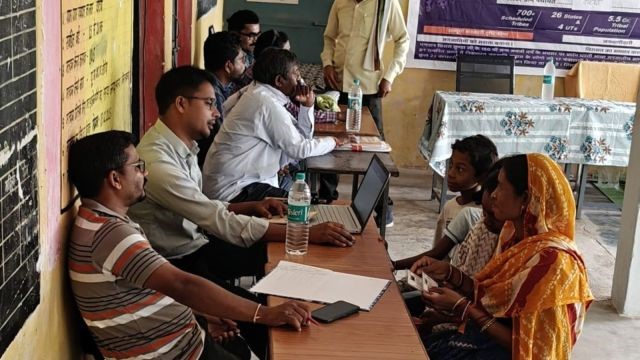
- 19 Jun 2025
In News:
- The Ministry of Tribal Affairs has launched a nationwide outreach campaign targeting over 500 districts and 1 lakh tribal-dominated villages and habitations.
- The campaign aims to ensure benefit saturation and last-mile delivery of welfare schemes under the Pradhan Mantri Janjati Adivasi Nyaya Maha Abhiyan (PM-JANMAN) and the Dharti Aaba Janjatiya Gram Utkarsh Abhiyan.
- This initiative is part of the ongoing Janjatiya Gaurav Varsh (Tribal Pride Year), a year-long celebration started on November 15, 2024 — the birth anniversary of Birsa Munda, a revered anti-colonial tribal icon.
Pradhan Mantri Janjati Adivasi Nyaya Maha Abhiyan (PM-JANMAN)
- Launched: 2023 on Janjatiya Gaurav Diwas
- Focus: Holistic development of Particularly Vulnerable Tribal Groups (PVTGs)
- Type: Includes both Central Sector and Centrally Sponsored Schemes
- Objectives:
- Safe housing (via PMAY)
- Clean drinking water
- Health, nutrition, and education access
- Road and telecom connectivity
- Electrification of unelectrified households
- Sustainable livelihood opportunities
- Time Frame: 3-year targeted implementation
- Vision: Supports Viksit Gaon, Viksit Bharat, and inclusive development with social justice
Dharti Aaba Janjatiya Gram Utkarsh Abhiyan
- Launched: October 2, 2024, by PM Modi in Jharkhand
- Named After: Birsa Munda, also known as Dharti Aaba (Father of the Earth)
- Aim: Transform tribal villages into centres of opportunity and dignity
- Approach:
- Multi-sectoral convergence with 17 line ministries
- 25 targeted interventions for integrated rural development
- Welfare activities include: hostel construction, rural electrification, livestock and fisheries support, housing under PMAY, etc.
- Budget Allocation (Union Budget 2025–26):
- Total: ?79,156 crore over 5 years
- Central Share: ?56,333 crore
- State Share: ?22,823 crore
Outreach Campaign (June 2025) Highlights
- Duration: Fortnight-long outreach starting June 15, 2025
- Coverage: 1 lakh tribal villages and habitations across 500+ districts
- Services at Doorstep:
- Aadhaar and Ayushman Bharat card enrollment
- Forest Rights Act (FRA) land title distribution
- Opening of pension and Jan Dhan accounts
- Goal: Awareness generation and saturation of benefits at block and hamlet levels
- Strategy: On-ground ‘benefit saturation camps’ to popularize uptake of the schemes
Significance
- Focus on PVTGs, who are the most marginalized among tribal communities
- Promotes digital inclusion, financial inclusion, and documentation access
- Demonstrates convergent governance through coordination across ministries
- Reinforces India’s tribal empowerment narrative and acknowledges historical contributions through Birsa Munda's legacy
‘Samarth’ Incubation Program
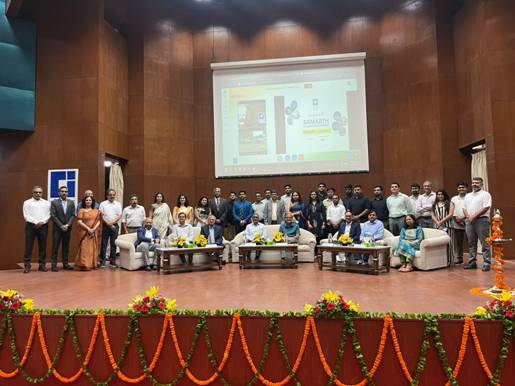
- 19 Jun 2025
In News:
The Centre for Development of Telematics (C-DOT), an autonomous R&D institution under the Department of Telecommunications (DoT), Government of India, has launched ‘Samarth’, a cutting-edge incubation program for startups in the Telecom and ICT sectors. In June 2025, C-DOT formally initiated Cohort-I of the program, selecting 18 startups through a competitive national process.
About the Samarth Program
- Objective: To nurture sustainable and scalable startups from ideation to commercialization in high-tech domains.
- Focus Areas:
- Telecom applications
- Cybersecurity
- 5G/6G technologies
- Artificial Intelligence (AI)
- Internet of Things (IoT)
- Quantum technologies
Key Features
Feature Details
Financial Support Grant of up to ?5 lakh per startup
Infrastructure Fully furnished office space at C-DOT campuses in Delhi and Bengaluru for 6 months
Technical Access Use of C-DOT’s lab facilities
Mentorship Guidance from C-DOT technologists and external domain experts
Format Hybrid (online + physical) delivery
Program Structure Two cohorts per year, each supporting up to 18 startups (max 36 annually)
Further Opportunities Eligible for extended collaboration and funding under C-DOT Collaborative Research Program (CCRP)
Implementation and Partnerships
- Implementation Partners:
- Software Technology Parks of India (STPI)
- TiE (The Indus Entrepreneurs) – Delhi NCR Chapter
- Evaluation Criteria: Startups were selected based on innovation, team strength, execution capability, problem-solution relevance, and commercialization potential.
- A distinguished Selection Committee from academia, industry, and government oversaw the evaluation.
Significance
- Boosts indigenous R&D in critical emerging tech sectors aligned with national priorities.
- Supports Atmanirbhar Bharat by encouraging homegrown innovation.
- Builds a robust startup ecosystem in the strategic telecom and ICT domains.
- Encourages public-private partnerships and collaboration between startups and research institutions.
Grand Cross of the Order of Makarios III
- 19 Jun 2025
In News:
During his official visit to Cyprus, Prime Minister Narendra Modi was conferred the Grand Cross of the Order of Makarios III, the highest civilian honour of Cyprus. This visit marked the first-ever visit by an Indian Prime Minister to the Mediterranean island nation.
About the Order of Makarios III
- Institution: Established in 1991.
- Named After: Archbishop Makarios III, the first President of the Republic of Cyprus.
- Nature: Cyprus’s highest merit-based honour, awarded to heads of state and individuals of significant global stature.
- Awarded By: The President of Cyprus.
- Grades:
- Grand Collar (highest)
- Grand Cross
- Grand Commander
- Commander
- Officer
- Knight
PM Modi received the Grand Cross, making him one of the few global leaders to be honoured at this level. The Prime Minister dedicated the award to the friendship between India and Cyprus, highlighting shared values and diplomatic ties.
Diplomatic and Economic Significance
- A roundtable interaction with top CEOs from both nations was held, focusing on deepening commercial and strategic engagement.
- Key sectors discussed:
- Innovation
- Energy
- Technology
- Trade and Investment
- PM Modi highlighted India's reform trajectory over the last decade, reinforcing India’s position as a growing economic partner.
Cyprus acknowledged this partnership, stating it was entering a "new era of strategic cooperation" with India, rooted in trust, shared values, and innovation.
Geographical Snapshot: Cyprus
- Region: Eastern Mediterranean
- Status: Eurasian island nation
- Capital: Nicosia
- Major Cities: Limassol, Larnaca, Famagusta, Paphos
- Highest Point: Mount Olympus (1,952 m)
- Size: Third-largest Mediterranean island after Sicily and Sardinia
Rinderpest
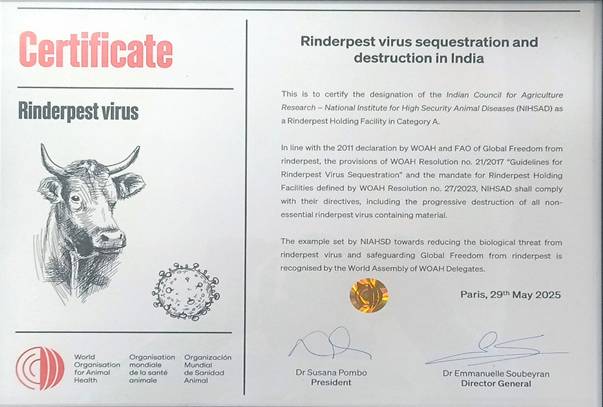
- 19 Jun 2025
In News:
- India has been officially designated as a Category A Rinderpest Holding Facility (RHF) by the World Organisation for Animal Health (WOAH) and the Food and Agriculture Organization (FAO).
- The recognition was conferred to the ICAR-National Institute of High Security Animal Diseases (NIHSAD) in Bhopal during the 92nd General Session of WOAH held in Paris.
- This makes India one of only six countries globally entrusted with this vital responsibility, marking a major milestone in India’s global leadership in animal health and biosecurity.
What is Rinderpest?
- Also Known As: Cattle Plague
- Pathogen: Caused by a virus from the Paramyxoviridae family, genus Morbillivirus.
- Affected Species: Mainly cattle and buffalo, but also zebus, giraffes, eland, wildebeest, warthogs, and some antelope species.
- Symptoms in Cattle:
- High fever, nasal and eye discharge
- Erosive mouth lesions
- Severe diarrhoea and dehydration
- Death typically within 10–15 days in susceptible herds
- Transmission: Through direct contact; virus present in nasal secretions even before clinical symptoms appear.
- Public Health Risk: None – the virus does not affect humans.
- Geographical Spread: Historically affected Europe, Africa, and Asia.
- Eradication: Officially declared eradicated in 2011, making it the second disease in history to be eradicated after smallpox.
Significance of the Category A RHF Designation
- Background:
- Despite eradication, Rinderpest Virus-Containing Material (RVCM) remains in select laboratories.
- FAO and WOAH limit storage of RVCM to ensure global biosecurity and prevent accidental or intentional release.
- India’s Preparedness:
- In 2012, ICAR-NIHSAD was designated as India’s national repository for RVCM.
- It is a Biosafety Level-3 (BSL-3) facility and a WOAH reference laboratory for avian influenza.
- Recent Developments:
- India submitted its RHF application in 2019.
- In March 2025, FAO-WOAH appointed international experts to inspect the facility.
- Based on strong biosafety, inventory control, and emergency preparedness, ICAR-NIHSAD has now received Category A RHF status for one year.
Implications for India
- Global Recognition: Reinforces India’s commitment to the One Health framework and global biosecurity norms.
- Leadership Role: Positions India among a select global group of only six RHFs, enabling it to contribute to future efforts in disease surveillance, vaccine research, and emergency preparedness.
- Future Prospects:
- Encouraged by WOAH-FAO to contribute to vaccine seed material discussions.
- Paves the way for Category B designation, which allows broader collaborative work on RVCM.
Synthetic Aperture Radar (SAR)
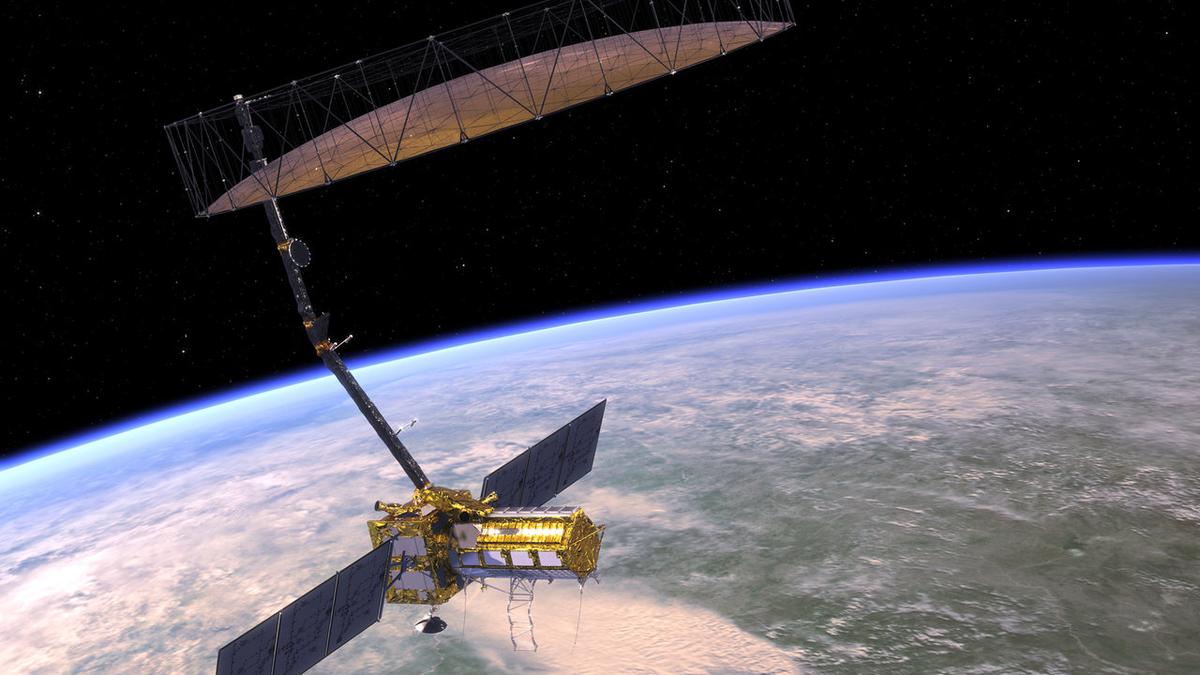
- 19 Jun 2025
In News:
Recently, NASA said the NASA-ISRO SAR mission had arrived at ISRO’s spaceport in Sriharikota
What is Synthetic Aperture Radar (SAR)?
Synthetic Aperture Radar (SAR) is an advanced remote sensing technology used to generate high-resolution images of Earth's surface, irrespective of weather or lighting conditions.
- Unlike optical sensors that rely on visible light, SAR systems emit microwave pulses and measure the reflected signals (echoes) from the ground, ocean, ice, or structures.
- These echoes are then processed to create detailed images using advanced signal processing techniques.
How SAR Works
- Antenna System: Traditionally, larger antennas yield better resolution, but they are impractical for satellites. SAR overcomes this by using a small antenna mounted on a moving platform (like a satellite), capturing echoes from different positions.
- Through precise timing and phase information, the system simulates a much larger "synthetic" antenna, enhancing image resolution without the need for large hardware.
Advantages of SAR
- All-Weather, All-Time Imaging: SAR can operate day and night and penetrate clouds, smoke, and light rain, ensuring uninterrupted data collection.
- Material Differentiation: Various materials (soil, water, vegetation, buildings) reflect microwaves differently, enabling SAR to detect subtle changes not visible through optical imagery.
- Large Area Mapping: Mounted on satellites, SAR can map swaths of land hundreds of kilometres wide in a single pass.
NASA-ISRO SAR (NISAR) Mission
- Joint Collaboration: A flagship Earth-observing mission between NASA and ISRO.
- On June 12, 2025, NASA confirmed that the NISAR satellite had arrived at ISRO’s spaceport in Sriharikota for its scheduled launch.
Mission Objectives
- NISAR will map nearly all of Earth's land and ice surfaces twice every 12 days.
- It aims to provide unprecedented data on Earth’s environment, including:
- Ecosystem disturbances
- Land use changes
- Ice sheet dynamics
- Natural disasters (earthquakes, landslides, floods)
Significance
- Will support climate change monitoring, disaster response, and agricultural planning.
- It represents a major step in India’s and the U.S.'s scientific diplomacy and technological cooperation.
International Big Cat Alliance (IBCA)
- 18 Jun 2025
In News:
The first General Assembly of the International Big Cat Alliance (IBCA) was held in New Delhi, marking a significant moment in global biodiversity governance. Chaired by Union Environment Minister Bhupender Yadav, who was unanimously elected President of the IBCA, the event underscored India’s leadership in international wildlife conservation diplomacy.
What is IBCA?
- The International Big Cat Alliance (IBCA) is a multinational initiative launched by India in March 2024 to conserve the world’s seven major big cat species—Tiger, Lion, Leopard, Snow Leopard, Cheetah, Jaguar, and Puma—through collective action, knowledge exchange, and capacity building.
- It is coordinated by the National Tiger Conservation Authority (NTCA) under the Ministry of Environment, Forest and Climate Change (MoEFCC).
- The Alliance was conceptualized following Prime Minister Narendra Modi’s announcement during the 50th anniversary of Project Tiger in April 2023.
Objectives of IBCA
- Promote global collaboration for the protection and conservation of big cats.
- Replicate successful conservation practices across member nations.
- Create a common pool of financial, technical, and institutional resources.
- Address gaps in capacity building, financing, and data sharing.
- Link conservation efforts with livelihood enhancement and climate resilience in big cat habitats.
- Strengthen efforts against poaching and illegal wildlife trade through joint surveillance and data exchange.
Membership
- 95 Range Countries (where the species naturally occur) are eligible to join.
- By September 2024, 25 countries including Bangladesh, Nigeria, Peru, and Ecuador had joined.
- Membership is open to all UN member states through a Note Verbale.
- The IBCA attained legal status after five countries—Nicaragua, Eswatini, India, Somalia, and Liberia—signed the Framework Agreement.
Key Functions of IBCA
- Shared Repository: Compilation of proven conservation strategies for scalable, science-based solutions.
- Training and Capacity Building: Organizes technical workshops and institutional exchanges.
- Scientific and Policy Support: Funds research, drives policy reforms, and raises awareness.
- Technological Innovation: Introduces advanced tools to tackle habitat degradation and prey base decline.
- Sustainable Livelihoods: Integrates conservation with community-based development models.
- Anti-Poaching Collaboration: Facilitates real-time data sharing and joint actions against wildlife trafficking.
Highlights from the 2025 General Assembly
- Venue: New Delhi, India
- Participating Nations: Ministerial delegations from nine countries including Bhutan, Cambodia, Kazakhstan, Liberia, Suriname, Somalia, Republic of Guinea, Eswatini, and India.
- Institutional Milestones:
- India ratified as the permanent headquarters of IBCA.
- The Headquarters Agreement was formally ratified, enabling the establishment of IBCA offices in India.
- Leadership: Bhupender Yadav, India’s Environment Minister, was elected as the first President of IBCA.
- Funding Commitment: India pledged ?150 crore (2023–28) to support IBCA’s establishment, coordination, and conservation activities.
Significance for India and the Global South
- Reinforces India’s role as a conservation leader and soft power in environmental diplomacy.
- Positions India as the epicentre for global big cat conservation, akin to its leadership in tiger conservation under Project Tiger.
- Encourages South-South cooperation in biodiversity preservation.
- Aligns with global commitments like CBD, CITES, and SDG 15 (Life on Land).
Bonn Climate Change Conference 2025
- 18 Jun 2025
In News:
The Bonn Climate Change Conference 2025 began in Bonn, Germany, with over 5,000 delegates from governments, international organisations, civil society, and scientific bodies. It serves as a crucial platform for setting the technical and political groundwork ahead of COP29.
What is the Bonn Climate Conference?
- A mid-year climate summit held annually under the United Nations Framework Convention on Climate Change (UNFCCC).
- Also referred to as the Sessions of the UNFCCC Subsidiary Bodies (SBs).
- First held in 1995, after the UNFCCC was signed in 1992.
- Hosted in: Bonn, Germany (home of the UNFCCC headquarters).
- Organised by: The UNFCCC Secretariat.
Main Objectives
- Prepare for COP Summits: Provides a platform for technical discussions that shape the COP agenda (COP29 in this case).
- Review of Commitments: Tracks implementation of earlier climate agreements like the Paris Agreement.
- Science–Policy Integration: Connects IPCC research with policymaking processes.
- Support for Developing Nations: Discusses climate finance and technology transfer mechanisms.
- Inclusive Participation: Engages Indigenous communities, NGOs, experts, and private stakeholders.
Subsidiary Bodies of the UNFCCC
- SBI (Subsidiary Body for Implementation):
- Reviews how climate commitments are implemented.
- Facilitates support for developing countries.
- SBSTA (Subsidiary Body for Scientific and Technological Advice):
- Provides scientific guidance.
- Bridges IPCC reports with UNFCCC decision-making.
Key Focus in 2025
Global Goal on Adaptation (GGA)
- Originally mentioned in the Paris Agreement (2015).
- Received major progress only during COP28 (Dubai).
- Aim: Establish a global, measurable, and equitable adaptation framework, similar to the 1.5°C target for mitigation.
- Bonn 2025 focuses on operationalising this goal, especially for climate-vulnerable nations.
Importance of the Bonn Conference
- Pre-COP Platform: Decisions taken here set the tone and agenda for COP summits.
- Technical + Political Dialogue: Encourages cooperation between scientists, policymakers, and climate negotiators.
- Influences Global Climate Action: Outcomes impact the direction of global climate governance.
SIPRI Yearbook 2025
- 18 Jun 2025
In News:
The Stockholm International Peace Research Institute (SIPRI) has released its 2025 Yearbook, detailing global nuclear trends, armament expansions, and security concerns. The report highlights growing nuclear arsenals and modernisation efforts by all nine nuclear-armed states, including India, which increased its nuclear warhead stockpile in 2024.
India’s Nuclear Arsenal: Key Facts
- Warhead Count (Jan 2025): 180 (up from 172 in Jan 2024)
- India is expanding its nuclear delivery systems, including canisterised missiles that may carry mated or multiple warheads.
- India continues to invest in new-generation weapons and submarine-launched ballistic missiles.
Pakistan and China: Regional Dynamics
- Pakistan: Maintains ~170 warheads; developing new delivery systems and accumulating fissile material.
- China:
- Warheads (2025): 600 (24 deployed).
- Adding ~100 warheads annually since 2023.
- Constructing ~350 new ICBM silos.
- Expected to reach 1,000 warheads by 2032–33, possibly 1,500 by 2035.
Global Nuclear Overview (2025)
- Total nuclear warheads: 12,241
- Military stockpiles (available for use): 9,614
- Deployed warheads (with missiles/aircraft): 3,912
- High-alert warheads (on ballistic missiles): ~2,100 (mostly U.S. & Russia)
Country-wise Inventory Snapshot (2025):
- USA: 5,177 (1,770 deployed, 1,930 stored)
- Russia: 5,459 (1,718 deployed, 2,591 stored)
- China: 600
- India: 180
- Pakistan: 170
- Others: UK, France, Israel, North Korea
Emerging Concerns
- Arms Control Breakdown:
- No major nuclear power is showing full commitment to disarmament.
- New START Treaty (USA-Russia) expires in Feb 2026; no successor yet in sight.
- Potential for increase in deployed strategic warheads post-2026.
- Rising Crisis Risks:
- 2025 saw India-Pakistan tensions escalate to limited armed conflict.
- Strikes on nuclear-related military sites and disinformation increased nuclear risk.
- New Technologies & Doctrines:
- Countries are integrating MIRVs, canisterisation, and AI-based command systems.
- China may now keep warheads mounted during peacetime, like U.S. and Russia.
Military Spending and Arms Trade (2024)
- Global defence spending: $2.7 trillion (↑ 9.4%)
- Top military spenders:
- USA: $997 billion
- China: $314 billion
- Top arms importers: Ukraine, India, Qatar, Saudi Arabia, Pakistan
- Top arms exporters:
- USA: 43%
- France: 9.6%
- Russia: 7.8%
About SIPRI
- Founded: 1966, Stockholm, Sweden
- Focus: Independent research on conflict, arms control, nuclear disarmament, and security.
- Funded by: Swedish Parliament (core grant), plus support from global research bodies.
Cyprus & India-EU FTA
- 18 Jun 2025
In News:
Prime Minister Narendra Modi began his five-day, three-nation tour with a historic visit to Cyprus—the first by an Indian PM in over 20 years. His visit focused on strengthening economic ties and pushing forward the India–European Union Free Trade Agreement (FTA).
Key Highlights of the Visit
- India-EU FTA Commitment: PM Modi announced that India and the EU are committed to concluding a Free Trade Agreement by the end of 2025. Negotiations have gained momentum.
- India–Cyprus Economic Engagement:
- Addressed the India-Cyprus CEO Forum in Limassol, pitching India as a hub for digital innovation and infrastructure.
- Highlighted India’s digital growth: Over 50% of global digital transactions via UPI originate from India. Talks are ongoing to onboard Cyprus into UPI.
- Announced a new shipbuilding policy and noted an annual investment of USD 100 billion in infrastructure.
- Supported the launch of the India–Cyprus–Greece Business and Investment Council, promoting trilateral cooperation.
- Welcomed the NSE–Cyprus Stock Exchange partnership in GIFT City, Gujarat.
- Startup and Innovation Focus: Emphasised India's vibrant startup ecosystem with over 1 lakh startups offering innovative, scalable solutions.
About Cyprus – Key Facts for Prelims
- Location: Eurasian island in the northeastern Mediterranean Sea, south of Turkey and southeast of Greece.
- Capital: Nicosia
- Area: 9,251 sq. km (3rd largest island in the Mediterranean after Sicily and Sardinia)
- Climate: Mediterranean – dry summers and wet winters
- Highest Point: Mount Olympus (1,952 m)
Geopolitical Context
- Divided Island:
- Since 1974, Cyprus has been partitioned between a Turkish-controlled north and a Greek-Cypriot-controlled south.
- Only Turkey recognises Northern Cyprus as an independent state.
- A UN-patrolled Green Line separates the two regions.
- Political System: Presidential republic – the President is both head of state and government.
- Official Languages: Greek and Turkish
- EU Membership: Joined the European Union on May 1, 2004
- Major Cities: Limassol, Larnaca, Famagusta, Paphos
UNESCO Creative Cities Network (UCCN)
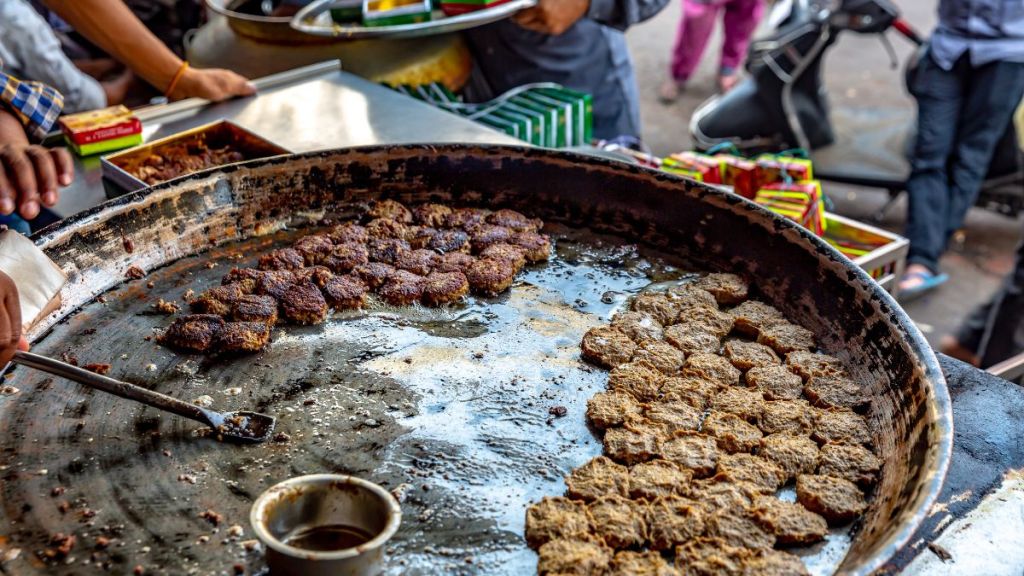
- 18 Jun 2025
In News:
Lucknow has officially submitted its nomination to be recognised as a “City of Gastronomy” under the UNESCO Creative Cities Network (UCCN), aiming to join Hyderabad as the only other Indian city to hold this title in the gastronomy category.
About the UCCN
- Established: 2004
- Purpose: To promote international cooperation among cities that use creativity as a key element for sustainable urban development.
- Focus Areas: Literature, Music, Crafts & Folk Arts, Design, Film, Media Arts, and Gastronomy.
- Key Goals:
- Leverage the creative economy for sustainable development.
- Encourage cultural diversity and resilience against urban challenges like climate change and inequality.
- Promote collaboration across public, private, and civil society sectors.
UCCN and Sustainable Development
- UCCN supports the UN Sustainable Development Goals (SDGs) by positioning culture and creativity at the heart of local development policies and planning.
- Member cities are expected to create innovation hubs, support local artists, and preserve cultural heritage.
India and the UCCN
As of 2023, 10 Indian cities are part of the network:
- Hyderabad – Gastronomy
- Jaipur – Crafts and Folk Arts
- Varanasi – Music
- Chennai – Music
- Mumbai – Film
- Srinagar – Crafts and Folk Arts
- Kozhikode – Literature
- Gwalior – Music (Recent entries include Kozhikode and Gwalior)
Lucknow’s Nomination: Highlights
- Nominated Title: City of Gastronomy
- Coordinated by: Department of Tourism and Culture, Lucknow
- Culinary Heritage: Awadhi cuisine, including dishes like nihari, kebabs, biryani, khasta, kulfi, jalebi, and puri-sabzi.
- Cultural Value: The city’s food is not just a tradition but a living culinary ecosystem, passed down through generations and practiced by diverse communities.
- Dossier Preparation: By renowned heritage conservationist Abha Narain Lambah.
- Verification: A field visit by UNESCO is expected as part of the evaluation process.
Global Cities of Gastronomy (Examples)
- Alba (Italy)
- Arequipa (Peru)
- Bergen (Norway)
- Belem (Brazil)
- Bendigo (Australia)
These cities, like Hyderabad, are recognised for their distinctive and sustainable culinary traditions.
Cyber Suraksha Exercise
- 17 Jun 2025
In News:
A comprehensive national-level cyber security exercise, Cyber Suraksha, was launched by the Defence Cyber Agency (DCyA) under the Headquarters Integrated Defence Staff (HQ IDS).
About Cyber Suraksha
- Type: Multi-phased cybersecurity drill.
- Organised by: Defence Cyber Agency (DCyA) under the aegis of HQ IDS.
- Duration: From 17–27 June 2025.
- Participants: Over 100 experts from national agencies and defence domains.
- Environment: High-paced, gamified simulation of real-world cyber threats.
Objectives
- Enhance national cyber resilience.
- Train personnel in handling advanced cyberattacks.
- Promote a security-first culture across defence institutions.
- Integrate technical proficiency with strategic leadership.
Key Features
- Training capsules: Technical + leadership components.
- CISOs Conclave: Sessions by cybersecurity leaders, culminating in a table-top simulation.
- Hands-on exercises: Real-time attack simulations to test response capabilities.
- Focus on joint operations and decision-making under crisis.
About Defence Cyber Agency (DCyA)
Background
- Established: Announced in 2018, operational from November 2019.
- Origin: Recommended by Naresh Chandra Committee (2012).
- Part of India’s tri-service defence transformation, alongside proposed Aerospace and Special Operations Commands.
Role & Mandate
- Parent Ministry: Ministry of Defence (MoD).
- Reports to: Chief of Defence Staff (CDS) through Integrated Defence Staff (IDS).
- Location: Based in New Delhi.
Functions
- Conducts cyber defence operations for the armed forces.
- Coordinates incident response, cyber intelligence, and audits.
- Develops capabilities in cyber warfare, AI-driven cyber tools, and joint operations.
- Supports capacity building, certification, and training within the military.
Radio Nellikka
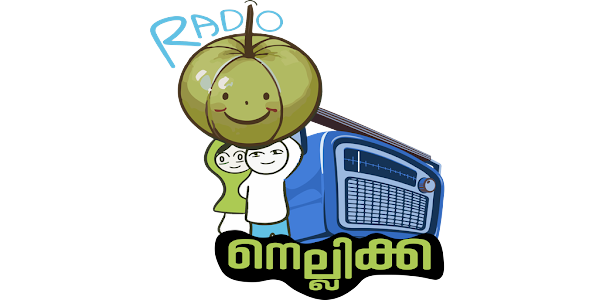
- 17 Jun 2025
In News:
Chief Minister Pinarayi Vijayan inaugurated Radio Nellikka, an internet radio for children launched by the Kerala State Commission for Protection of Child Rights (KeSCPCR) on June 2025.
What is Radio Nellikka?
- A child-centric internet radio platform launched by KeSCPCR.
- Aims to promote child rights, awareness, and safety through audio content.
- Accessible globally, with 4 hours of programming from Monday to Friday (new content), and repeats on weekends.
- Launch included unveiling of the radio's logo and theme song.
Objectives
- Create a child-friendly Kerala through rights-based literacy.
- Spread awareness on child protection laws, mental health, substance abuse, and cyber safety.
- Empower children with knowledge and build resilience against social challenges.
- Promote responsible parenting and community involvement in child welfare.
Significance
- Addresses rising challenges: social media addiction, cyber threats, child suicides, and mental health issues.
- Provides accessible, engaging content to both children and guardians.
- Acts as a preventive and educational tool against misinformation related to child rights.
- Supports emotional and legal literacy in a format suited for young audiences.
AI and Biomanufacturing in India
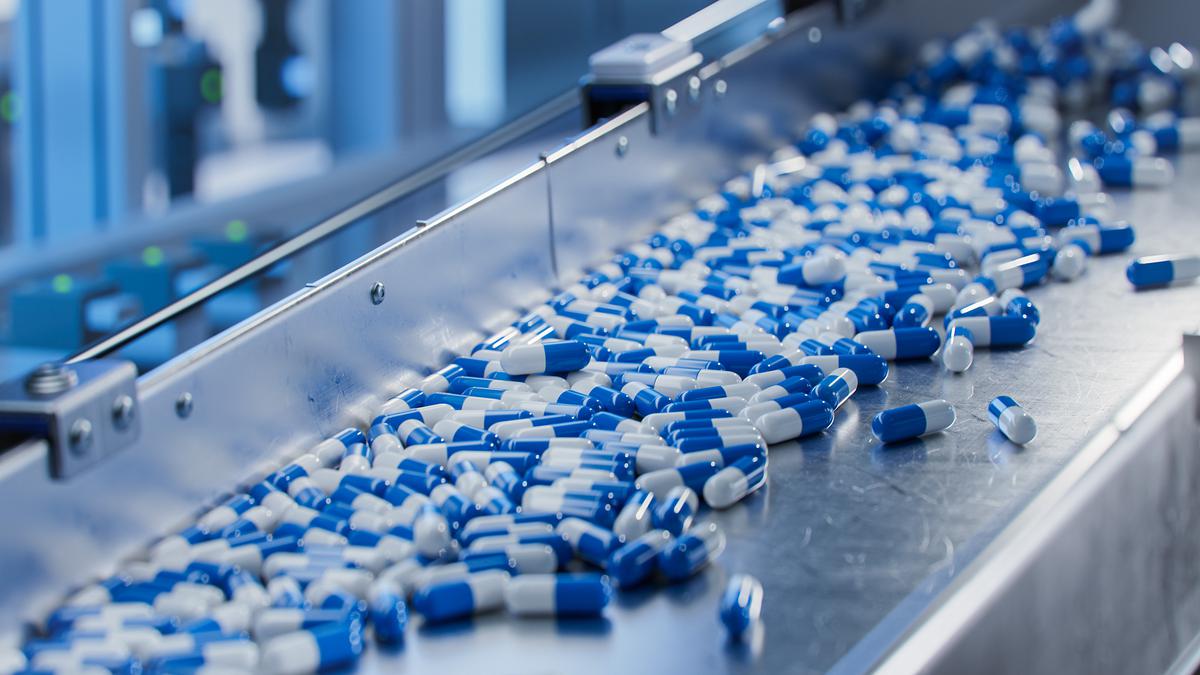
- 17 Jun 2025
In News:
The integration of Artificial Intelligence into India's biomanufacturing sector is gaining momentum with the launch of the BioE3 Policy and the IndiaAI Mission.
What is Biomanufacturing?
- Biomanufacturing involves the use of living cells, enzymes, or biological systems to produce commercial goods such as vaccines, biologics, biofuels, specialty chemicals, biodegradable plastics, and advanced materials.
- The convergence of synthetic biology, industrial biotechnology, and artificial intelligence (AI) has expanded its scope across sectors like healthcare, agriculture, energy, and materials science.
- India, often called the “Pharmacy of the World”, produces over 60% of global vaccines, underlining its industrial strength in biomanufacturing.
Role of Artificial Intelligence in Biomanufacturing
AI is revolutionizing biomanufacturing by making it predictive, efficient, and scalable:
- AI-Powered Process Optimization: Machine learning tools adjust variables like temperature, pH, and nutrient supply in real time to enhance fermentation and reduce batch failure.
- Digital Twins: Virtual replicas of biomanufacturing plants allow engineers to simulate operations, test changes, and foresee potential disruptions without real-world risks.
- Accelerated Drug Discovery: AI expedites molecular modeling and screening of drug candidates, reducing time and cost of development.
- Predictive Maintenance: AI forecasts machinery failures, improving equipment reliability and reducing downtime.
- Smart Supply Chains: AI-driven logistics optimize cold-chain storage and forecast medicine demand, ensuring timely distribution.
Indian Examples and Industrial Applications
- Biocon uses AI to enhance drug screening and fermentation quality.
- Strand Life Sciences applies machine learning in genomics for faster diagnostics.
- Wipro and TCS are developing AI platforms for clinical trials, molecule screening, and treatment prediction.
- AI is also being explored in rural healthcare, using region-specific data for localized diagnostics and advisories.
Key Government Initiatives
- BioE3 Policy (2024):
- Envisions Bio-AI hubs, biofoundries, and next-gen biomanufacturing infrastructure.
- Supports startups with funding and incentives.
- IndiaAI Mission:
- Promotes ethical, explainable AI in sectors like health and biotech.
- Supports bias reduction, machine unlearning, and transparency in AI models.
- Biomanufacturing Mission (2023): Aims to promote R&D and domestic production in bio-based sectors.
- PLI Scheme for Biotech: Incentivizes local production of enzymes, fermentation inputs, and biologics.
- Digital Personal Data Protection Act (2023): Lays down principles for lawful data processing, though not tailored for AI-biotech intersection yet.
Challenges in Policy and Regulation
Regulatory Gaps:
- India’s existing drug and biotech laws were designed before the AI era.
- No clear mechanism exists to audit, certify, or govern AI-operated bioreactors or predictive drug systems.
Data and Model Risks:
- AI systems trained on urban datasets may fail in rural or semi-urban manufacturing due to variable water quality, temperature, or power conditions.
- Lack of norms on dataset diversity and model validation raises risk of system failure and reputational damage.
- Intellectual Property Issues: Traditional IP laws do not clarify ownership of AI-generated inventions, molecules, or production protocols.
Workforce and Infrastructure:
- Biomanufacturing needs a workforce skilled in both computational biology and automation.
- India’s AI-bio talent gap and limited high-tech infrastructure outside metro cities hinders inclusive growth.
Ethical & Safety Concerns:
- Without context-specific oversight, AI errors can threaten public safety and product integrity.
- Trust in AI systems requires clear guidelines on explainability, accountability, and redress mechanisms.
Global Best Practices
- EU’s AI Act (2024): Classifies AI applications based on risk levels. High-risk applications (e.g., genetic editing) are subject to strict audits.
- US FDA Guidance (2025):
- Introduces seven-step credibility frameworks for AI in healthcare.
- Predetermined Change Control Plans (PCCPs) allow iterative AI updates while ensuring safety.
India lacks similar risk-based, adaptive oversight.
Policy Recommendations
- Establish AI-Biomanufacturing Regulatory Framework:
- Introduce tiered regulation based on context and risk.
- Define use-cases, audit mechanisms, and model validation standards.
- Mandate Dataset Diversity & Safety Audits:
- Ensure AI tools are trained on representative, unbiased, clean data.
- Create regulatory sandboxes to test AI systems in controlled environments.
- Strengthen Public–Private Partnerships:
- Boost industry-academia collaborations.
- Incentivize private investment through R&D credits and de-risking instruments.
- Modernize IP and Licensing Laws:
- Establish clarity on ownership of AI-generated discoveries.
- Develop licensing frameworks for bio-AI algorithms and training data.
- Upskill the Workforce: Promote interdisciplinary training across life sciences, data science, and industrial robotics.
AviList
- 17 Jun 2025
In News:
Recently, the global ornithological and conservation community witnessed a landmark development with the launch of AviList, the first-ever unified global checklist of bird species. This effort is the culmination of four years of work by the Working Group on Avian Checklists, representing leading ornithological and conservation institutions.
About AviList:
- What is it? AviList is a comprehensive, standardized, and freely accessible global bird species checklist.
- Total Entries (2025 Edition):
- Species: 11,131
- Subspecies: 19,879
- Genera: 2,376
- Families: 252
- Orders: 46
- Replacing Previous Lists:
- International Ornithological Committee (IOC) List
- Clements Checklist
- Update Mechanism: To be updated annually
- Access and Formats:
- Available freely at www.avilist.org
- Downloadable in full or short versions in .xlsx and .csv formats.
Developed By:
Working Group on Avian Checklists, comprising representatives from:
- BirdLife International
- Cornell Lab of Ornithology
- American Ornithologists' Society
- International Ornithologists’ Union
- Avibase (Global Bird Database)
Significance and Benefits:
- Conservation and Research Clarity:
- A unified taxonomy helps prioritize conservation efforts by eliminating taxonomic inconsistencies.
- Scientists can now communicate uniformly on species classification and distribution.
- Global Standardization: Replaces multiple competing checklists, reducing confusion and ensuring consistency across countries and platforms.
- Interdisciplinary Use: Supports birdwatchers, scientists, policymakers, and conservationists in sharing data, linking platforms, and enhancing global collaborations.
- Improved Policy and Decision-Making: Aids in aligning biodiversity policies across nations by ensuring a standardized species concept.
- Technological Integration: Enables harmonization of databases and online tools like eBird, Avibase, and global biodiversity monitoring platforms.
DNA Identification in Mass Fatality Events
- 17 Jun 2025
In News:
Following the tragic crash of an Air India Boeing 787 Dreamliner from Ahmedabad to London Gatwick (June 2025), authorities have initiated DNA-based identification to match the remains of victims. In mass fatality incidents where bodies are mutilated or decomposed, DNA analysis becomes the gold standard for establishing identity.
What is DNA Identification?
DNA (Deoxyribonucleic Acid) is a unique genetic code present in almost every cell of the human body, with the exception of identical twins. It is widely used in forensic science for accurate identification, particularly in disasters where visual identification is impossible.
Sample Collection and Preservation:
- DNA begins degrading post-mortem, and the rate of degradation is influenced by:
- Type of tissue (soft vs hard)
- Environmental conditions (humidity, temperature)
- Hard tissues such as bones and teeth are preferred due to better preservation against decomposition.
- Soft tissues (like skin and muscle) degrade faster and, if used, must be stored in 95% ethanol or frozen at -20°C.
- In large-scale accidents, sample collection from wreckage can take weeks or even months (e.g., 9/11 took 10 months).
Reference Samples:
To match unidentified remains, reference DNA is taken from biological relatives—preferably parents or children of the victims, who share about 50% of their DNA.
Methods of DNA Analysis:
1. Short Tandem Repeat (STR) Analysis:
- Evaluates short, repeating DNA sequences that vary among individuals.
- Requires nuclear DNA, hence not suitable if the DNA is highly degraded.
- Analysis of 15+ hyper-variable STR regions can confirm family relationships with high accuracy.
2. Mitochondrial DNA (mtDNA) Analysis:
- Used when nuclear DNA is not recoverable.
- mtDNA is inherited exclusively from the mother and is present in multiple copies per cell.
- Effective for matching with maternal relatives (e.g., mother, maternal uncles/aunts, siblings).
3. Y-Chromosome Analysis:
- Targets male-specific genetic material.
- Useful for identifying remains using DNA from paternal male relatives (father, brothers, paternal uncles).
- Helpful when direct relatives are unavailable but male-line relatives exist.
4. Single Nucleotide Polymorphisms (SNPs) Analysis:
- Suitable when DNA is highly degraded.
- Analyzes variations at single base-pair locations in DNA.
- Can also match DNA with personal items like a toothbrush or hairbrush.
- However, less accurate than STR analysis.
Significance for Disaster Management and Forensics:
- DNA-based victim identification ensures scientific accuracy, aiding in closure for families, and upholding legal and humanitarian obligations.
- Modern forensic genetics has become an essential tool in mass disaster response protocols worldwide.
Gyan Post
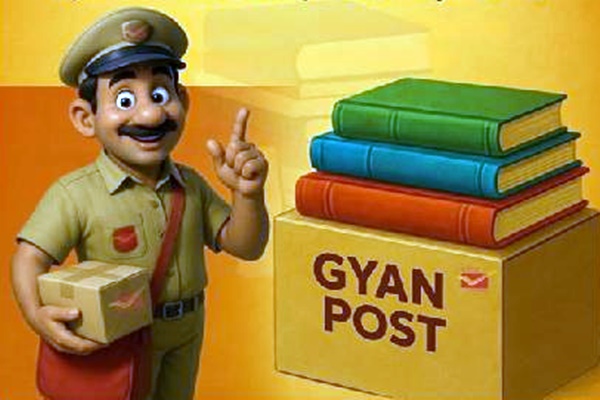
- 15 Jun 2025
In News:
The Department of Posts, under the Ministry of Communications, launched a new service called ‘Gyan Post’ to facilitate affordable delivery of educational and cultural books across India.
Key Highlights:
Objective:
- To bridge the educational divide by improving access to printed educational materials, especially in rural and remote regions.
- Aligned with the goals of the National Education Policy (NEP) to promote inclusive education.
Salient Features:
- Service Availability: All Departmental Post Offices across India.
- Type of Material:
- Only non-commercial printed educational, cultural, social, and religious books.
- Books must not contain advertisements or promotional content.
- Must bear the name of the printer or publisher.
- Delivery Mode: Surface mail (traceable) – enhances transparency and reliability.
- Tariff Structure:
- ?20 for packets up to 300 grams
- ?100 for packets up to 5 kilograms (excluding applicable taxes)
- Tracking: Available to ensure accountability and customer confidence.
Significance:
- Promotes educational equity by supporting learners in under-served areas.
- Complements Digital India and NEP 2020 by reinforcing multi-modal education access (print + digital).
- Encourages the circulation of knowledge, especially in regions with poor digital penetration.
Servants of India Society
- 15 Jun 2025
In News:
Tensions have resurfaced between Gokhale Institute of Politics and Economics (GIPE) and the Servants of India Society (SIS) over control of a joint bank account and allegations of financial misconduct. This has brought attention back to the legacy and functioning of the historic SIS.
About Servants of India Society (SIS)
- Founded: June 12, 1905
- Founder: Gopal Krishna Gokhale, with G.K. Devadhar, A.V. Patwardhan, and N.A. Dravid
- Location: Fergusson Hill, Pune, Maharashtra
- Headquarters: Pune, with branches in Chennai, Mumbai, Nagpur, Allahabad, etc.
Objectives:
- To train a dedicated cadre of national workers for selfless service to the nation.
- Promote political education, social reform, and public service.
- Work towards upliftment of underprivileged communities, including rural and tribal populations.
- Achieve social change through constitutional and moderate means, not violent agitation.
Membership and Structure:
- Members undergo a five-year training period and vow to serve on modest salaries.
- Considered “young missionaries of Indian nationalism.”
- Notable Members:
- V.S. Srinivasa Sastri (later president after Gokhale’s death in 1915)
- Hriday Nath Kunzru
- A.V. Thakkar
Ideological Basis:
- Strong emphasis on constitutionalism, moderation, and liberalism.
- Aimed to create a disciplined, morally upright civil society to complement political struggle.
About Gopal Krishna Gokhale:
- Born: May 9, 1866 | Died: February 19, 1915
- Moderate leader of the Indian National Congress and a liberal reformer.
- Influenced by Justice M.G. Ranade and Western political thought.
- Advocated for gradual self-governance and saw value in British-initiated modernization.
- Played a pivotal role in the Morley-Minto Reforms (1909).
- Mentor to Mahatma Gandhi and known for his economic insight and powerful oratory.
Step-and-Shoot Spot-Scanning Proton Arc Therapy (SPArc)
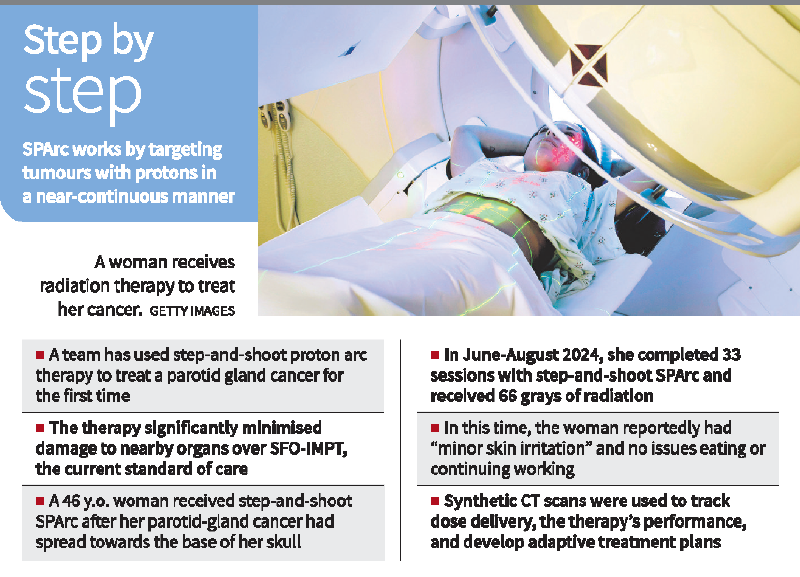
- 15 Jun 2025
In News:
In a significant medical advancement, a team at the Corewell Health William Beaumont University Hospital in the U.S. has successfully administered Step-and-Shoot Spot-Scanning Proton Arc Therapy (SPArc) to treat adenoid cystic carcinoma—a cancer originating in the parotid gland. This marked the first-ever clinical application of this technology. The findings were published in the International Journal of Particle Therapy in June 2025.
What is SPArc Therapy?
SPArc (Spot-Scanning Proton Arc Therapy) is an advanced form of proton beam therapy where proton particles are delivered in a controlled arc across the tumor. It includes two primary modalities:
- Step-and-Shoot SPArc: Follows a pre-programmed dose delivery path.
- Dynamic SPArc: Simulated version where energy levels and targeting points are adjusted in real-time. (Still under regulatory review)
Comparison with Existing Techniques
The study compared three techniques:
- SFO-IMPT (Single-Field Optimized Intensity-Modulated Proton Therapy – current standard)
- Step-and-Shoot SPArc (clinical)
- Dynamic SPArc (simulated)
SPArc showed reduced radiation exposure to key organs when compared with SFO-IMPT:
- Brainstem: ↓ 10%
- Optical chiasm: ↓ 56%
- Oral cavity: ↓ 72%
- Spinal canal: ↓ 90%
Treatment Case Study
The first patient treated was a 46-year-old woman with a tumor extending from her parotid gland to the base of her skull. She underwent 33 sessions of SPArc therapy from June to August 2024, reporting only minor skin irritation and no disruptions to eating or daily functioning.
Process & Technology Used:
- Cone-Beam CT (CBCT) was used for real-time imaging before each session.
- A machine learning model converted CBCT to synthetic CT, allowing accurate dose tracking.
- As the patient lost weight, the dose plan was adjusted after two weeks to maintain precision.
- Nine beam angles spanning a 180º arc were used, delivering radiation at 20º intervals.
Each session lasted about 15–18 minutes, enabling nearly continuous dose delivery.
Working Mechanism
- The therapy operates by 'painting' the tumor in energy layers.
- Each energy level targets a specific tissue depth, ensuring maximum precision.
- The system scans dozens of spots in each layer before moving to the next one with increased penetration.
Advantages
- High precision in delivering radiation to deep and complex anatomical regions like the skull base.
- Limits collateral damage to vital organs.
- Effective in large or invasive tumours.
- Better quality of life during treatment (reduced side effects such as fatigue or swallowing issues).
Limitations & Concerns
- Geographical miss risk: Tiny tumors may be missed due to breathing motion or tumor shrinkage over time.
- Cost: High installation and operational costs, making it suitable for a limited patient base.
- Potential for overuse in non-indicated cases, leading to inequitable healthcare delivery.
- Dynamic SPArc still awaits regulatory clearance and integration into oncology systems.
Significance for India
SPArc therapy can be transformative for cancers in anatomically intricate regions and may serve as a benchmark for future precision cancer therapies. However, adoption in India requires cost-reduction, infrastructure investment, and regulatory frameworks.
Spartaeus karigiri
- 15 Jun 2025
In News:
A team of researchers has identified a new species of jumping spiders of the Spartaeinae subfamily in southern India, known for their intelligent hunting skills and web-invasion tactics.
Source: European Journal of Taxonomy (June 2025)
Key Facts:
- Species Name: Spartaeus karigiri
- Taxonomy:
- Family: Salticidae (Jumping Spiders)
- Subfamily: Spartaeinae
- Genus: Spartaeus
- Named After: Karigiri (Elephant Hill) in Devarayanadurga, Karnataka.
Significance:
- First recorded presence of Spartaeus and Sonoita genera in India.
- These genera were previously known only from Southeast Asia and Africa.
- Discovery expands India’s Spartaeinae spider fauna to 15 species across 10 genera.
Features of Spartaeus karigiri:
- Noted for intelligent hunting and web-invasion tactics.
- Possesses keen eyesight and mimics prey to deceive other spiders.
- Males were found in rocky crevices; females guarding egg clutches.
- Found in Karnataka and Villupuram, Tamil Nadu.
Other Findings:
- Sonoita cf. lightfooti, previously known from Africa, was also found in Karnataka.
- A taxonomic correction: Marpissa gangasagarensis (2005) is the same as Phaeacius fimbriatus (1900).
Conservation and Research Insight:
- India's arachnid diversity remains under-studied.
- New discoveries indicate rich but undocumented biodiversity in Indian terrains.
Rudrastra
- 15 Jun 2025
In News:
India's Rudrastra, a homegrown VTOL drone, has been successfully tested by the Indian Army, marking a significant advancement in battlefield technology. Developed by Solar Aerospace and Defence Limited, this drone can perform precision strikes across borders without endangering soldiers.
Overview:
- Rudrastra is a hybrid Vertical Take-Off and Landing (VTOL) combat drone developed indigenously by Solar Aerospace and Defence Limited (SDAL).
- Successfully tested by the Indian Army in June 2025.
Key Features:
- Hybrid VTOL Capability:
- Takes off like a helicopter and cruises like a fixed-wing aircraft.
- Increases versatility, maneuverability, and stealth.
- Combat Role:
- Equipped with smart anti-personnel warheads.
- Capable of deep-strike missions against targets like artillery guns or terrorist hideouts.
- Deployed as a “stand-off weapon”—engages targets from a safe distance.
- Performance Parameters:
- Range: Full range of 170 km.
- Strike Capability: Targets more than 50 km away.
- Flight Endurance: Nearly 90 minutes.
- Navigation: Autonomous return capability.
- Surveillance: Real-time video feed for reconnaissance.
- Payload: Capable of deploying airburst munitions—detonates low to the ground to cause area damage.
Strategic Importance:
- Reduces risk to soldiers in hostile territory.
- Enhances India's unmanned combat aerial vehicle (UCAV) arsenal.
Useful in anti-terror operations, border surveillance, and precision strikes.
Global Education Monitoring (GEM) Report 2025
- 16 Jun 2025
In News:
The Global Education Monitoring (GEM) Report 2025, published by UNESCO, reveals an alarming surge in the global out-of-school population, now estimated at 272 million—an increase of over 21 million from previous estimates. This setback highlights that by 2025, countries will collectively fall short of their national education targets by 75 million children.
About the GEM Report
- An annual UNESCO publication, originally launched as the Education for All Global Monitoring Report in 2002 and renamed in 2016.
- Provides an evidence-based global assessment of education progress, challenges, and trends.
- Aims to guide policy decisions and strengthen efforts toward achieving SDG 4 (Quality Education).
Key Findings
- The out-of-school population includes:
- 78 million primary school-age children (11%)
- 64 million lower secondary adolescents (15%)
- 130 million upper secondary youth (31%)
- The rise of 21 million in out-of-school children since the last estimate is attributed to:
- New enrolment and attendance data (+8 million): Includes factors like the 2021 ban on girls' education in Afghanistan, which alone accounts for 1.4 million girls.
- Updated UN population projections (+13 million): The 2024 World Population Prospects estimate a 49 million increase in the global school-age population (6–17 years) by 2025.
- The report warns that conflict zones severely hamper data collection, likely underestimating the true number of out-of-school children.
Challenges with Data and Methodology
- The GEM model draws from administrative data, surveys, and census records to estimate schooling trends.
- However, during emergencies and crises, such models may fail to capture sudden drops in attendance, leading to an underreporting of affected populations.
- Conflict-ridden regions face poor data reliability, impacting planning and resource allocation.
Off-Track from Global Targets
- By 2025, countries will be off-track by:
- 4 percentage points for primary and lower secondary levels
- 6 percentage points for upper secondary level
- Even if national targets are met, the world will still have 107 million children out of school by 2030. The GEM report projects a reduction of 165 million if all targets are achieved—but current trajectories suggest this is unlikely.
Kruti and BharatGPT Mini
- 16 Jun 2025
In News:
India is witnessing a significant leap in artificial intelligence innovation with the launch of two indigenous AI models — Kruti by Krutrim and BharatGPT Mini by CoRover. These developments aim to democratize AI access across the country by addressing local needs, multilingual capabilities, and infrastructure limitations.
Kruti: India’s First Agentic AI Assistant
Developed by Krutrim, the AI startup co-founded by Bhavish Aggarwal (of Ola fame), Kruti is positioned as India’s first agentic AI, going beyond conventional chatbots. Launched in 2025, Kruti integrates task execution capabilities such as:
- Cab booking
- Food ordering
- Bill payments
- Image generation
- Research assistance
Kruti is powered by Krutrim V2, a locally trained large language model (LLM), and combines open-source AI systems to deliver scalable, cost-effective, and contextualised solutions.
Key Features of Kruti
- Multilingual Support: Understands voice and text in 13 Indian languages
- Personalised AI: Learns user preferences, adapts tone and content
- Human-Centric Design: Supports read-aloud responses, summarised answers, stories, and tables
- SDK for Developers: Offers embeddable tools for LLM orchestration and task automation
- Integrated Assistant: Eliminates app-switching fatigue through contextual task handling
Aggarwal highlighted that Kruti is built for “how Indians live”—mobile-first, intuitive, and multilingual—offering free access to advanced AI tools.
Strategic Investment and Open AI Ecosystem
Krutrim has committed ?12,000 crore in investment (?2,000 crore already, ?10,000 crore by next year), launched Krutrim AI Lab, and published technical resources, with contributions to the open-source community. The company is positioning itself as a competitive force against global giants like OpenAI, Google, and Anthropic, and local firms like Sarvam AI.
BharatGPT Mini: Small Language Model for Bharat
On the same day, CoRover, a conversational AI firm, unveiled BharatGPT Mini, a small language model (SLM) with 534 million parameters trained on its proprietary conversational dataset.
- Supports 14 Indian languages
- Designed for low-compute, low-infrastructure environments
- Enables offline and edge deployments for fast, privacy-centric performance
- Ideal for underserved and rural regions with limited internet or device capacity
SLMs like BharatGPT Mini are emerging as viable tools for domain-specific, lightweight, and privacy-respecting AI in India, complementing the role of LLMs in more complex tasks.
Ocean Darkening
- 16 Jun 2025
In News:
A recent study titled "Darkening of the Global Ocean", led by researchers from the University of Plymouth, has revealed that over 21% of the global ocean has darkened between 2003 and 2022, marking a significant environmental concern. The phenomenon, known as ocean darkening, is increasingly disrupting marine ecosystems and global climate regulation.
What is Ocean Darkening?
Ocean darkening refers to the reduction in the photic zone — the upper layer of the ocean (up to ~200 meters deep) where sunlight penetrates to support photosynthesis. This zone is foundational to:
- ~90% of marine biodiversity
- Climate regulation
- Ocean productivity
- Global fisheries
The study used satellite data and modeling based on the Diffuse Attenuation Coefficient (Kd 490), which measures how rapidly light fades through seawater. It found:
- 21% of global oceans experienced darkening in two decades.
- 9% saw photic depth decline by over 50 meters.
- 2.6% saw a reduction exceeding 100 meters — an area roughly equal to the size of Africa.
Geographic Distribution
- High darkening: Arctic, Antarctic, Gulf Stream, North Sea, eastern UK coast.
- Lesser darkening or even brightening: Some parts of the English Channel.
- The open ocean and climate-sensitive zones have witnessed the most pronounced declines.
Causes of Ocean Darkening
- Coastal Zones:
- Runoff of agricultural nutrients, organic matter, and sediments.
- Leads to algal blooms that block sunlight.
- Open Ocean:
- Shifts in plankton dynamics
- Rising sea surface temperatures
- Altered ocean circulation patterns
These changes may be linked to climate change, land-use modifications, and increased rainfall-driven erosion.
Impact on Marine Ecosystems
Ocean darkening leads to:
- Shrinking habitats for light-sensitive species like Calanus copepods (key zooplankton and food web base).
- Disrupted feeding, migration, and reproduction cycles due to reduced solar and lunar light cues.
- Increased crowding in shallower waters, intensifying competition and predation.
- Collapse of marine food chains, even in areas with minimal fishing pressure.
Experts warn that this could represent one of the largest habitat losses in recent history, with implications for:
- Biodiversity
- Carbon cycling
- Oxygen production
- Ocean buffering against climate change
SEBI’s Verified UPI ID System
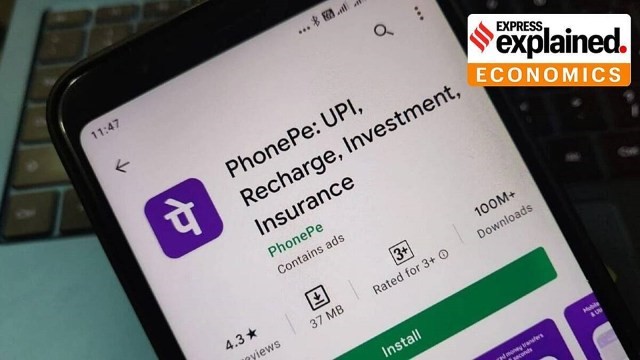
- 16 Jun 2025
In News:
To combat rising cyber frauds and impersonation in the securities market, the Securities and Exchange Board of India (SEBI) has announced a verified Unified Payments Interface (UPI) ID system for all SEBI-registered market intermediaries. This mechanism, developed in coordination with the National Payments Corporation of India (NPCI), will be effective from October 1, 2025, and is part of SEBI’s broader agenda to enhance investor security and transparency.
Key Features:
- Exclusive UPI IDs: Only SEBI-registered intermediaries will be issued validated UPI IDs featuring a structured format: username.category@validBank. For example, a broker ABC Ltd using XYZ Bank would have the UPI ID: abc.brk@validXYZ.
- Category-Specific Suffixes:
- .brk for stock brokers
- .mf for mutual funds
- Authentication Visual Cue: Transactions with verified UPI IDs will display a “thumbs-up inside a green triangle” icon for easy identification by investors.
Role of NPCI
NPCI, which owns and operates the UPI platform, will exclusively allocate the “@valid” handles for payment collection by SEBI-registered intermediaries. This move ensures only authorised entities can use these UPI IDs, significantly reducing risks of fund misdirection.
SEBI Check Tool
To supplement the system, SEBI is also launching ‘SEBI Check’, a verification tool allowing investors to:
- Scan a QR code or enter UPI ID manually to confirm its legitimacy.
- Verify bank details, including account number and IFSC, of registered entities.
Investor and Intermediary Compliance
- Mandatory for Intermediaries: All SEBI-registered intermediaries must adopt the new verified UPI handles and educate investors about them.
- Optional for Investors: While the structured UPI handle is optional, investors must use only the new IDs if opting to pay via UPI.
- Discontinuation of Old IDs: Existing UPI IDs will be discontinued after October 1, 2025, except for ongoing SIPs (Systematic Investment Plans). New and renewed SIPs must use the verified UPI IDs.
Benefits
- Prevents Fraud: Eliminates payments to unauthorised or impersonating entities.
- Enhances Transparency: Clearly distinguishes registered entities from fraudulent ones.
- Boosts Investor Confidence: Assures secure transactions through verified payment channels.
- Supports Cybersecurity: Clamps down on fake UPI handles used for digital scams.
SEBI’s verified UPI ID initiative and the upcoming ‘SEBI Check’ tool are significant steps toward ensuring secure, transparent, and trustworthy digital transactions in India’s securities market. It reflects the regulator’s proactive stance in protecting investor interests in an increasingly digitised financial environment.
Black Boxes in Aviation
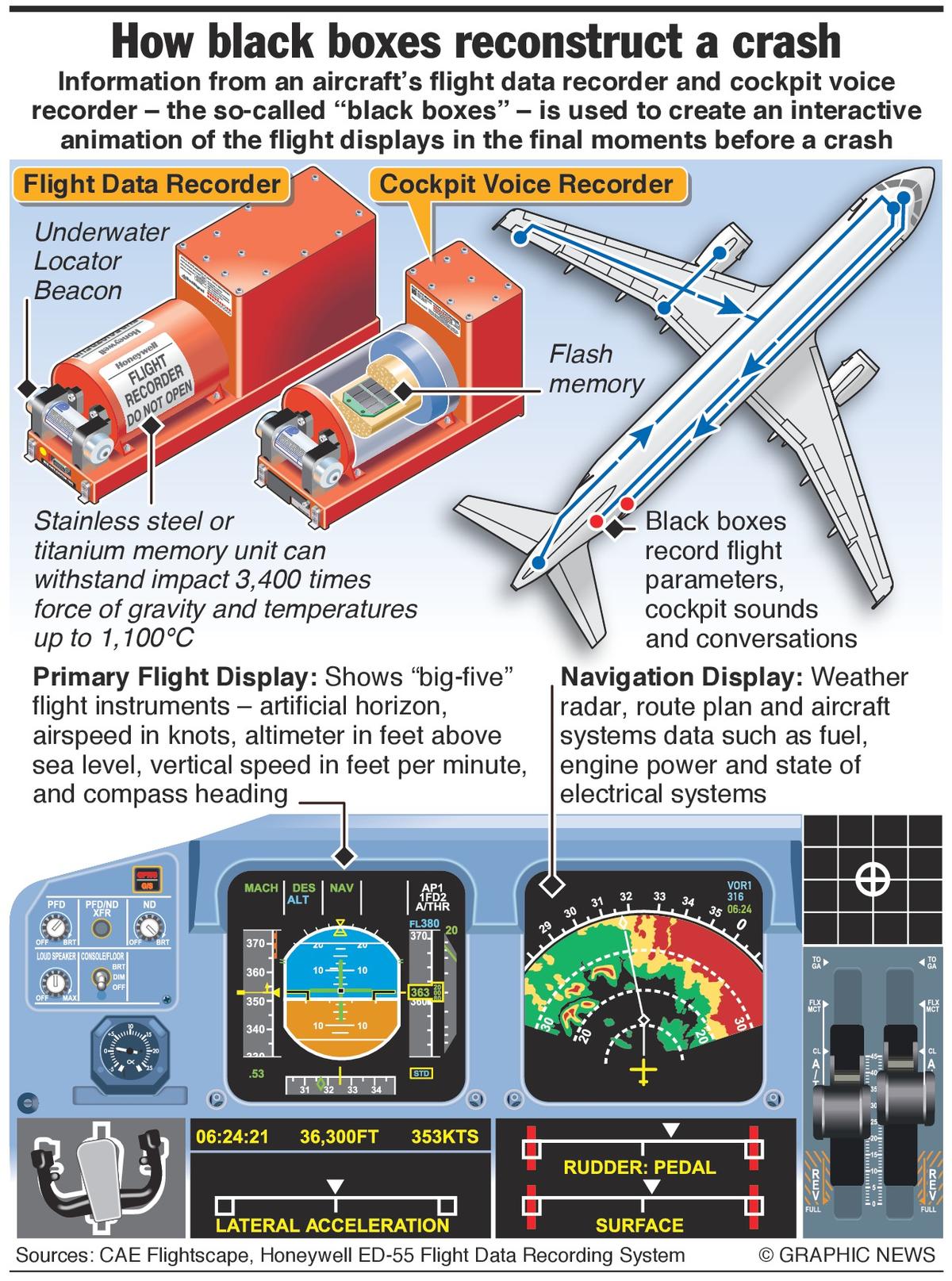
- 16 Jun 2025
In News:
The tragic crash of an Air India Boeing 787-8 Dreamliner from Ahmedabad to London Gatwick on June 12, 2025, has spotlighted the critical role of black boxes—a key component in aviation safety and accident investigations. Despite their name, these devices are painted bright orange for easy visibility at crash sites.
What are Black Boxes?
Modern aircraft are equipped with two essential flight recorders:
- Cockpit Voice Recorder (CVR): Captures pilot and co-pilot conversations, ambient cockpit sounds, alarms, and radio transmissions.
- Flight Data Recorder (FDR): Records up to 25 hours of technical flight data including altitude, speed, engine parameters, flight path, and over 3,500 variables.
These devices operate continuously without interruption, storing vital information that can reconstruct the events leading up to an air crash.
Design and Durability
Black boxes are built to withstand extreme conditions:
- Casing: Made from crash-resistant materials like titanium or steel.
- Survivability: Can endure temperatures up to 1,100°C, high-impact G-forces, and remain underwater for up to 30 days.
- Locator Beacon: Emit signals to help recovery teams locate them, especially in underwater crashes.
Why Are They Called 'Black' Boxes?
The term “black box” originated from early film-based recorders stored in light-tight boxes. However, modern units are painted bright orange with reflective strips to aid visual detection after accidents.
Evolution of Flight Recorders
- 1930s: François Hussenot in France developed early photographic film-based recorders.
- 1953-54: Dr. David Warren in Australia invented the modern FDR while investigating unexplained crashes of the de Havilland Comet.
- 1960: Mandatory installation of CVRs and FDRs in commercial aircraft.
- 1965: Regulators required recorders to be painted in visible colours.
- 1990: Solid-state memory replaced magnetic tapes, increasing durability and storage capacity.
India's Aircraft Accident Investigation Bureau (AAIB), under the Ministry of Civil Aviation, oversees accident probes. In April 2025, it established a dedicated flight recorder laboratory in New Delhi to improve investigation efficiency.
Technological Advancements
- Combined Recorders: Modern systems often integrate CVR and FDR in a single unit to meet ICAO norms for extended recording.
- Deployable Recorders: Automatically ejected during a crash, float on water, and transmit their location using an Emergency Locator Transmitter (ELT).
- Satellite-Based Data Streaming: Future technologies aim to stream flight data in real time, minimizing data loss during oceanic crashes.
Black boxes serve as the backbone of aviation accident investigations by providing critical insight into aircraft performance and crew actions before a crash. Their development reflects ongoing efforts to enhance air travel safety and accountability. The Ahmedabad crash investigation led by the AAIB will heavily rely on these devices to determine the exact sequence of events and prevent future tragedies.
RBI Infuses Rs.23,856 Crore into Banking System via Government Securities Buyback
- 14 Jun 2025
In News:
In a significant move to bolster liquidity in the financial system, the Reserve Bank of India (RBI) has infused ?23,856 crore into the banking system through a buyback of government securities (G-Secs) on June 5, 2025. This marks the second such bond buyback by the central bank in the current financial year (FY 2025–26).
What is a Bond Buyback?
A bond buyback refers to the RBI repurchasing existing government securities before their maturity. Conducted on behalf of the central government, such operations aim to inject durable liquidity into the banking system, improve the liquidity position of banks, and influence interest rates. It is part of the RBI's broader Open Market Operations (OMOs) toolkit.
Broader Liquidity Context
The RBI’s intervention is part of a broader liquidity management strategy, aimed at ensuring stable and surplus liquidity conditions. The central bank has employed various tools in recent months:
- Open Market Operations (OMOs)
- USD/INR Buy/Sell swap auctions
- Variable Rate Repo (VRR) auctions
These tools were especially crucial after the banking system faced a liquidity deficit in late 2024. Since then, the RBI’s operations have restored liquidity, with the system now in surplus mode—estimated at around ?3 lakh crore.
Significance
- Monetary Stability: Enhances the transmission of monetary policy by ensuring banks have sufficient funds to lend.
- Market Functioning: Eases pressure in the bond markets, improves demand for new issuances, and helps manage interest rates.
- Fiscal Management: Supports the government's borrowing program by managing the maturity profile of debt and yields.
India’s First INTERPOL Silver Notice
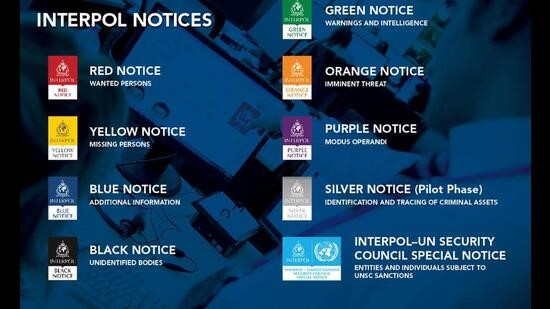
- 14 Jun 2025
In News:
In a significant development, the Central Bureau of Investigation (CBI) has secured India’s first-ever ‘Silver Notice’ from INTERPOL to track the global assets of Shubham Shokeen, a former French Embassy official implicated in a visa fraud case. This move underscores India's enhanced use of international law enforcement mechanisms to combat transnational crimes, particularly financial crimes involving asset concealment abroad.
What is a Silver Notice?
While INTERPOL is globally known for its Red Notice (to arrest or detain fugitives), the Silver Notice is a newer tool designed to help locate, identify, monitor, or seize the criminal assets of individuals or entities under investigation. Issued at the request of India’s National Central Bureau (NCB), the Silver Notice for Shokeen seeks to trace proceeds of crime potentially parked across multiple countries, marking a new phase in India’s international criminal cooperation.
About INTERPOL
INTERPOL (International Criminal Police Organization) is the world’s largest international police organization, comprising 196 member countries, with India being one of the founding members. It facilitates cross-border police cooperation and crime control across jurisdictions. Its genesis lies in the 2nd International Police Congress held in Vienna in 1923, when it was established as the International Criminal Police Commission (ICPC). It adopted the name INTERPOL in 1956 with the adoption of its Constitution during the 25th General Assembly.
- Headquarters: Lyon, France
- National Central Bureau (NCB): Each member state has an NCB that coordinates with INTERPOL. CBI serves as India’s NCB.
- Key Bodies:
- General Assembly: Supreme decision-making body; meets annually.
- Executive Committee: Supervises execution of General Assembly's decisions.
- General Secretariat: Handles operational activities on a daily basis.
INTERPOL Colour-Coded Notices
INTERPOL issues a series of colour-coded notices that serve as international alerts or cooperation requests:
- Red Notice: Request to locate and provisionally arrest a wanted person.
- Blue Notice: To collect additional information about a person’s identity, location or activities.
- Yellow Notice: For locating missing persons.
- Black Notice: To identify unidentified bodies.
- Silver Notice: To trace, monitor, and seize assets related to criminal proceeds.
These notices are issued by INTERPOL’s General Secretariat upon request from NCBs and are accessible to all member countries, enabling swift global action.
India’s Technological Integration: The BHARATPOL Portal
To streamline international cooperation, the CBI has developed the BHARATPOL portal, a digital interface that connects all Indian law enforcement agencies with INTERPOL. It allows seamless communication and data exchange for tracking fugitives, assets, and criminal networks, thereby enhancing India’s capabilities in combating cross-border financial and cyber crimes.
Significance for India
- Asset Recovery: The Silver Notice is a critical step in tracing and recovering illicit assets abroad, aligning with India’s broader efforts under anti-money laundering frameworks.
- Global Cooperation: Reflects India’s increasing reliance on international institutions for law enforcement, including the UN Convention against Corruption and FATF recommendations.
- Strengthening CBI's International Role: As India’s NCB, the CBI’s proactive role showcases its growing competence in global criminal investigations.
Exercise Shakti 2025
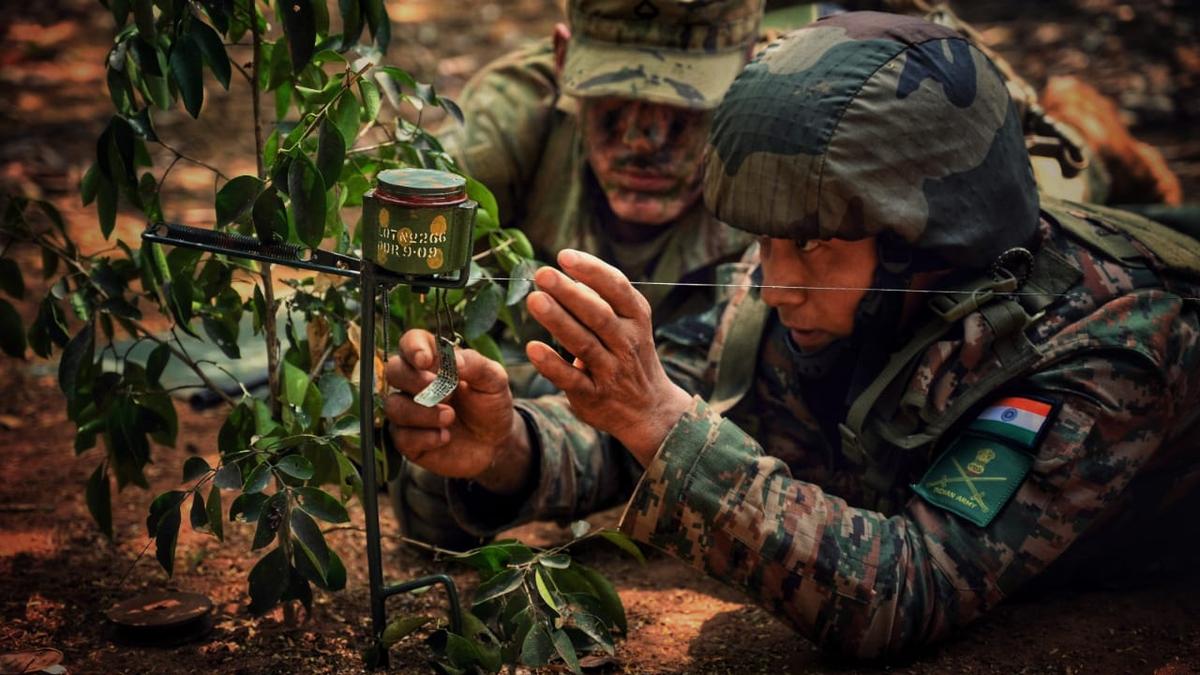
- 14 Jun 2025
In News:
The 8th edition of Exercise Shakti, a bilateral joint military exercise between India and France, is being held from 18 June to 1 July 2025 at La Cavalerie, France.
About Exercise Shakti
- Type: Joint military exercise between the Indian Army and French Army.
- Edition: 8th edition. The previous edition was hosted by India, as the exercise is biennial and conducted alternately in both countries.
- Venue (2025): La Cavalerie, France.
Objective and Significance
- Primary Aim: To enhance the joint military capability of both nations to conduct Multi-Domain Operations in sub-conventional conflict scenarios.
- Focus Areas:
- Developing interoperability in operations.
- Sharing best practices, tactics, techniques, and procedures.
- Strengthening military-to-military cooperation.
- Fostering bonhomie and camaraderie between the two armies.
Strategic Importance
- Exercise Shakti is part of the broader defence partnership between India and France, encompassing counter-terrorism, peacekeeping, and multi-domain coordination.
- It reflects India’s growing strategic engagements with like-minded global partners to address emerging security challenges.
Other India–France Joint Exercises
Name Domain Participants
Garuda Air Indian Air Force – French Air and Space Force
Varuna Naval Indian Navy – French Navy
Desert Knight Air Indo-French air warfare cooperation
Global Gender Gap Report 2025
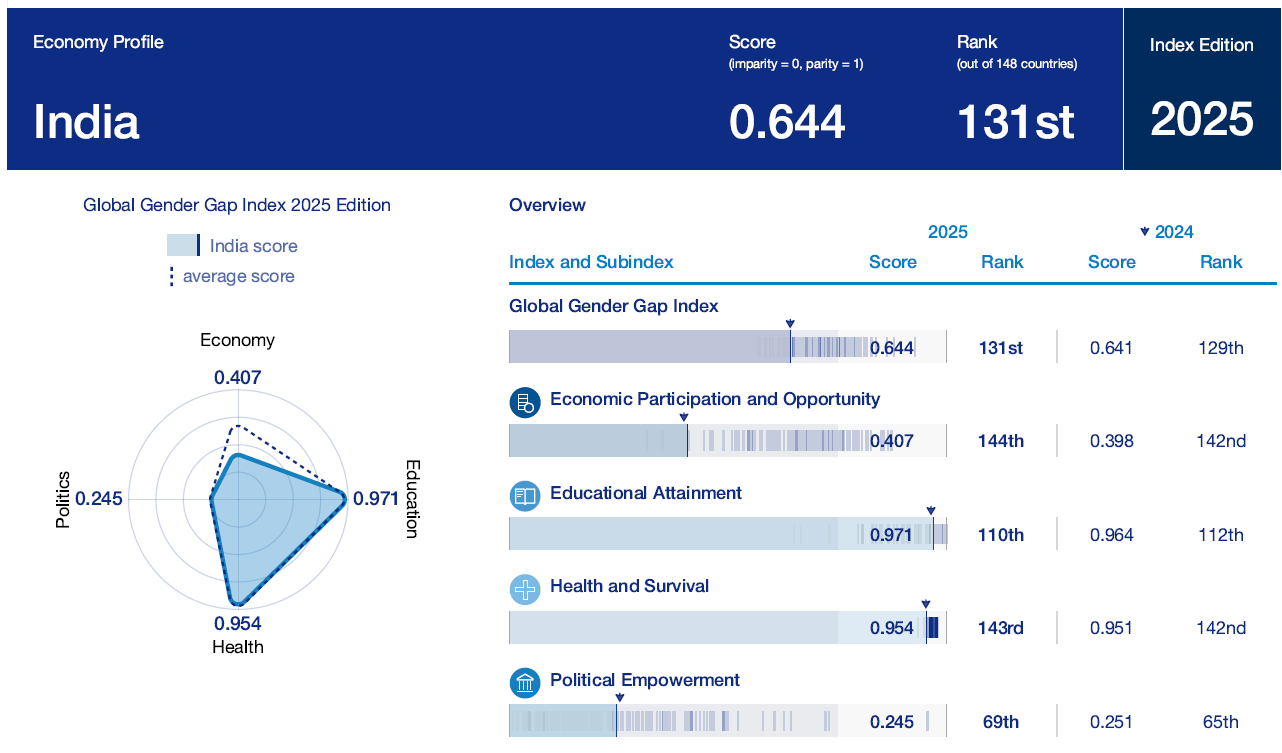
- 14 Jun 2025
In News:
The 19th edition of Global Gender Gap Report 2025 was released by World Economic Forum (WEF).
Key Highlights:
Countries Covered: 148
Global Parity Status:
- Overall Gender Gap Closed: 68.8%
- Estimated Time to Full Parity: 123 years (at current pace)
Assessment Criteria (Four Dimensions):
- Economic Participation and Opportunity
- Educational Attainment
- Health and Survival
- Political Empowerment
The index uses a parity score (0–100%) to quantify gender equality, where 100% indicates full parity.
India’s Performance (Rank: 131/148)
- Parity Score: 64.1%
- South Asia Rank: Among the lowest; only Maldives (138) and Pakistan (148) rank below
- India’s 2024 Rank: 129 (slipped 2 positions in 2025)
Domain-wise Performance:
- Economic Participation and Opportunity
- Improved: Score increased by 0.9 percentage points to 40.7%
- Earned Income Parity: Rose from 28.6% to 29.9%
- Labour Force Participation: Stagnant at 45.9%
- Insight: Despite income parity gains, the gap in actual earnings and participation remains wide.
- Educational Attainment
- Near Parity Achieved: 97.1%
- Driven by rising female literacy and higher tertiary enrolment
- Challenge: Translating education into workforce participation remains limited.
- Health and Survival
- Marginal Gains: Improved parity in sex ratio at birth and healthy life expectancy
- However, overall life expectancy declined for both genders, muting the parity effect.
- Political Empowerment
- Significant Decline:
- Women MPs fell from 14.7% to 13.8%
- Women ministers dropped from 6.5% to 5.6%
- Trend: Continued decline from the 2019 peak of 30% female political representation
- Significant Decline:
South Asia and Global Comparison
- Bangladesh: Best performer in South Asia, ranked 24th globally (up by 75 positions)
- Other Neighbours:
- Bhutan (119),
- Nepal (125),
- Sri Lanka (130),
- Maldives (138),
- Pakistan (148 – last)
- Global Top 5 Countries:
- Iceland (Top for 16th year in a row)
- Finland
- Norway
- United Kingdom
- New Zealand
Key Global Insights
- Women in Workforce: 41.2% of global workforce
- Leadership Representation: Only 28.8% of leadership roles are held by women
- Despite post-pandemic recovery in gender parity, leadership gaps and decision-making roles remain major bottlenecks.
Implications for India
- The report underscores that gender parity is not just a social imperative, but also crucial for inclusive and resilient economic growth.
- India’s sluggish progress in political empowerment and gender wage gap highlight the need for institutional reforms, affirmative actions, and gender-sensitive policies in governance, employment, and leadership.
State of World Marine Fishery Resources 2025
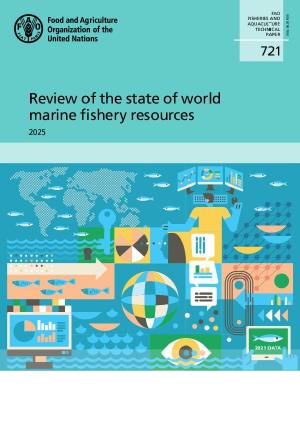
- 14 Jun 2025
In News:
The Food and Agriculture Organization’s (FAO) 2025 Report on the State of World Marine Fishery Resources, released during the UN Ocean Conference (UNOC3) in Nice, France, offers a comprehensive assessment of global fish stock sustainability, regional disparities, and governance challenges.
Key Findings:
- Global Sustainability: 64.5% of marine fishery stocks are fished within biologically sustainable levels, indicating modest improvement. However, 35.5% remain overexploited.
- Deep-Sea Species Vulnerability: Only 29% of deep-sea species are sustainably harvested, largely due to biological traits like slow growth, delayed maturity, and low reproductive rates. These characteristics impair recovery from overfishing.
- Migratory Shark Concerns: Of the 23 shark stocks assessed, 43.5% are overfished, especially in the tropical Indo-Pacific where they frequently become bycatch in tuna fisheries.
- Tuna Success Story: 87% of evaluated tuna and tuna-like species are sustainably fished, a result of effective regulation by Regional Fisheries Management Organizations (RFMOs).
- Regional Disparities: The northeast and southwest Pacific show high sustainability levels, while areas such as the Mediterranean and Black Sea lag, with only 35.1% of stocks sustainably managed.
- Data Gaps: Despite high reported sustainability (72.7%) in the eastern Indian Ocean, concerns remain due to insufficient species-specific stock assessments.
Governance and Policy Challenges:
- Illegal, Unreported and Unregulated (IUU) Fishing: Continues to threaten stock sustainability. IUU encompasses:
- Illegal: Breaches of domestic or international laws.
- Unreported: Failure to report or misreport catches.
- Unregulated: Conducted by vessels operating beyond jurisdictional authority, undermining conservation efforts.
- Subsidy Prohibitions (WTO Agreement):
- Bans financial support to vessels engaging in IUU fishing.
- Restricts subsidies for overfished stocks unless recovery measures are implemented.
- Prohibits aid for fishing in unregulated high seas zones.
Critical Analysis:
Positives:
- The rise in sustainable stocks signifies improved management awareness, particularly in regulated regions like the Pacific.
- Tuna fisheries demonstrate successful use of scientific tools—catch reporting and onboard observers—under RFMOs.
- The global survey included over 600 experts across 90 nations, lending credibility and robustness.
Negatives:
- Deep-sea stocks remain acutely overfished and biologically vulnerable.
- Shark species, integral to marine food webs, continue to suffer from bycatch and poor regulatory coverage.
- Monitoring shortfalls in Southeast Asia and African coasts prevent precise biomass estimation and conservation action.
- Weaker implementation and unregulated artisanal practices challenge sustainability in Mediterranean and Black Sea regions.
Recommendations for Sustainable Fisheries Governance:
- Empower RFMOs with real-time monitoring systems, electronic catch reporting, and observer programs.
- Adopt Ecosystem-Based Approaches that integrate climate resilience and biodiversity objectives.
- Strengthen Data Infrastructure in data-deficient regions with support from international bodies like the FAO and World Bank.
- Curtail Harmful Subsidies as per WTO protocols to reduce economic incentives driving overfishing.
- Promote Community Participation through co-management strategies and the development of Marine Protected Areas (MPAs).
Lokpal of India adopts new motto
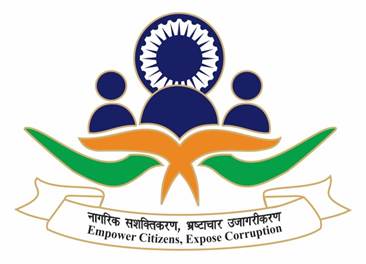
- 13 Jun 2025
In News:
The Full Bench of the Lokpal of India has officially adopted a new motto — “Empower Citizens, Expose Corruption” — replacing the earlier Sanskrit phrase:
Old Motto: Ma Gridhah Kasyasvid Dhanam (Do not be greedy for anyone’s wealth)
The change aims to improve institutional visibility, enhance public engagement, and reaffirm the Lokpal’s mission to fight corruption by empowering the people.
About Lokpal of India
- Established under: Lokpal and Lokayuktas Act, 2013
- Came into force: 16 January 2014
- Headquarters: Vasant Kunj, New Delhi
- Nature: Independent statutory anti-corruption body
Composition
- Chairperson: Former Chief Justice of India or SC Judge
- Members: Up to 8 members
- 4 Judicial
- 4 Non-Judicial
- Appointed by: President of India on recommendation of a high-level Selection Committee
Jurisdiction
Lokpal can investigate allegations of corruption against:
- Prime Minister, Union Ministers, and Members of Parliament
- Central Government employees (Group A to D)
- Officials of organizations receiving govt. funding (full/partial)
- Entities receiving foreign donations over ?1 crore annually
Functions & Powers
- Investigates complaints under the Prevention of Corruption Act, 1988
- Can:
- Sanction prosecution
- Order attachment of properties
- Recommend suspension or transfer of officials
- Possesses powers of a civil court:
- Summon witnesses
- Seize documents
- Can supervise the CBI in referred cases
- Collaborates with other investigative and enforcement agencies
Why the New Motto Matters
The new motto, “Empower Citizens, Expose Corruption”, reflects:
- A citizen-centric approach to governance
- A renewed commitment to transparency, accountability, and institutional trust
- The evolving role of Lokpal in aligning public participation with anti-corruption efforts
Exercise KHAAN QUEST 2025

- 13 Jun 2025
In News:
The Indian Army contingent has arrived in Ulaanbaatar, Mongolia, to take part in the 22nd edition of the Multinational Peacekeeping Exercise KHAAN QUEST, scheduled from 14 to 28 June 2025.
About Exercise KHAAN QUEST
- Origin: Launched in 2003 as a bilateral exercise between the USA and Mongolian Armed Forces.
- Multinational Format: Expanded in 2006 to include multiple countries, now recognized as a major UN peacekeeping readiness exercise.
- 2024 Edition: Held from 27 July to 9 August in Mongolia.
- India’s Participation: Contingent Strength: 40 personnel, primarily from a Battalion of the Kumaon Regiment, supported by members from other arms and services.
Aim and Objectives
- Enhance readiness for UN peacekeeping operations under Chapter VII of the UN Charter.
- Promote interoperability, joint tactical planning, and multinational cooperation.
- Share best practices in peace support operations.
Key Tactical Drills
- Static and Mobile Checkpoint Setup
- Cordon and Search Operations
- Patrolling and Evacuation of Civilians from conflict zones
- Counter-IED procedures
- Combat First Aid and Casualty Evacuation
Significance
Exercise KHAAN QUEST serves as a critical platform for building military-to-military cooperation, strengthening international partnerships, and improving operational cohesion among troops from around the world.
International Organization for Marine Aids to Navigation (IALA)
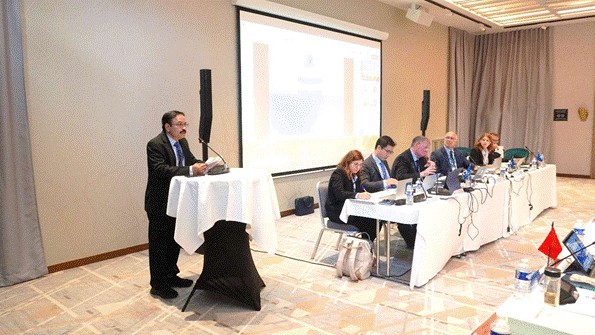
- 13 Jun 2025
In News:
India, as the Vice President of the International Organization for Marine Aids to Navigation (IALA), actively participated in the 2nd Session of the IALA Council, held in Nice, France.
What is IALA?
The International Organization for Marine Aids to Navigation (IALA) is a global intergovernmental technical body responsible for:
- Standardizing marine navigation aids (AtoN)
- Enhancing maritime safety
- Promoting environmental protection in marine navigation
Key Facts:
- Established: 1957 (as an NGO; became an IGO in 2024)
- Headquarters: Saint-Germain-en-Laye, near Paris, France
- Members: 39 countries
- Status: Transitioned to an Intergovernmental Organization in August 2024 after ratification by 30 states
India’s Role in IALA
India has been a Council Member since 1980, and was elected Vice President (2023–2027) during the 1st General Assembly in Singapore in 2023 — a significant recognition of India’s leadership in maritime affairs.
Major Indian Contributions:
- Development of Vessel Traffic Services (VTS) across 12 major ports
- Leadership in digital navigation aids and maritime innovation
- Promoting lighthouse heritage tourism
- Launching global training programs at the Kolkata Marine Navigation Training Institute
Highlights from the 2nd IALA Council Session
- Keynote: Outlined India’s achievements in integrating marine AtoN and future roadmap
- Technical Discussions:
- Standardization of AtoN and VTS systems
- Harmonized IoT protocols for visual AtoN
- Maritime Service Registry development
- Lighthouse heritage conservation
- Planning IALA’s global activity schedule for 2025–2026
India to Host Key IALA Events
- 3rd IALA General Assembly – December 2025, Mumbai
- 21st IALA Conference – 2027, Mumbai
This reflects global confidence in India’s technical capabilities and strategic importance in the maritime domain.
Significance:
- Strategic Leadership: Reinforces India’s influence in international maritime governance.
- Digital Maritime Innovation: India is contributing to cutting-edge technologies like IoT protocols and digital AtoN.
- Global Capacity Building: Hosting and training initiatives bolster the global maritime workforce.
- Cultural Diplomacy: Lighthouse tourism and heritage preservation align technology with history.
India’s Social Security coverage reaches 64.3% in 2025
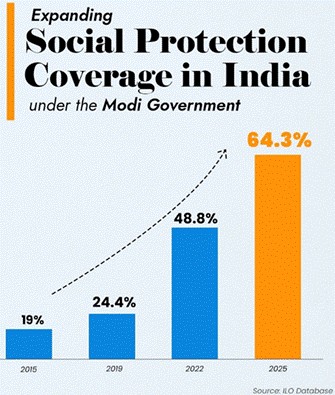
- 13 Jun 2025
In News:
According to the latest data from the International Labour Organization’s (ILO) ILOSTAT database, India’s social security coverage has increased from 19% in 2015 to 64.3% in 2025, an unprecedented 45 percentage point surge over the past decade.
What is Social Security?
Social security (or social protection) refers to systems and policies that protect individuals and households from:
- Income loss (e.g. old age, unemployment, disability)
- High healthcare costs
- Social vulnerability (e.g. poverty, maternity, sickness)
It is built on three pillars:
- Social Assistance – Non-contributory support (e.g. food, housing)
- Social Insurance – Contributory programs (e.g. pensions, health insurance)
- Labour Market Programs – Employment schemes to build self-reliance
Key Highlights from ILOSTAT 2025
- India’s social security coverage jumped to 64.3%, up from 19% in 2015 – a 45 percentage point increase in 10 years.
- This means over 94 crore (940 million) people are now covered under at least one form of social protection.
- India now ranks 2nd globally in terms of population covered by social security.
- It is also the first country to update its 2025 social protection data in the ILOSTAT global database, showcasing its progress in digital governance and transparency.
Major Social Protection Initiatives Driving the Surge
India’s massive expansion in social coverage is due to a wide range of targeted schemes, including:
Pension & Insurance Schemes
- Atal Pension Yojana (APY): Pension of ?1,000–?5,000/month for informal workers aged 18–40.
- PM Shram Yogi Maan-Dhan Yojana (PM-SYM): Contributory pension for unorganized workers with 50% government support.
- PM Jeevan Jyoti Bima Yojana (PMJJBY): ?2 lakh life insurance for people aged 18–50.
- PM Suraksha Bima Yojana (PMSBY): Accident insurance of ?2 lakh for ages 18–70.
Healthcare & Nutrition
- Ayushman Bharat – PMJAY: ?5 lakh health cover for low-income families.
- Janani Suraksha Yojana: Maternity care for pregnant women.
- PM POSHAN (formerly Mid-Day Meal Scheme): Nutritional support to schoolchildren.
Income, Housing & Food Security
- MGNREGA: Guaranteed 100 days of wage employment annually in rural areas.
- PM Kisan Samman Nidhi: ?6,000/year income support to small and marginal farmers.
- Public Distribution System (PDS) under NFSA: Subsidized food grains to eligible households.
- PM Awaas Yojana – Gramin (PMAY-G): Pucca homes with basic amenities for rural poor.
Significance
- Poverty Reduction: Enhanced safety net for vulnerable populations.
- Inclusive Growth: Formal inclusion of informal sector workers.
- Digital Governance: Use of technology for efficient delivery (e.g., Aadhaar, DBT).
- Resilience Building: Helps households withstand economic shocks (e.g., pandemics, job loss).
CROPIC: A New AI-Driven Crop Study Scheme
- 13 Jun 2025
In News:
The Ministry of Agriculture and Farmers Welfare plans to launch CROPIC, a study to gather crop information using field photographs and AI-based models.
What is CROPIC?
CROPIC stands for Collection of Real Time Observations & Photo of Crops. It is a new initiative by the Ministry of Agriculture and Farmers’ Welfare aimed at studying crops through photographs and artificial intelligence (AI). The core objective is to monitor crop health and assess mid-season losses using images captured at multiple stages of the crop cycle.
Why is CROPIC significant?
CROPIC plays a pivotal role in modernizing and digitizing crop monitoring under the Pradhan Mantri Fasal Bima Yojana (PMFBY), India’s flagship crop insurance scheme.
Significance:
- Improved Loss Assessment: Traditional methods of crop loss assessment are time-consuming and subjective. CROPIC introduces AI-based analysis for faster and more objective decision-making.
- Automation of Compensation: It will help automate claim processes, ensuring faster payments to farmers in case of crop failure.
- Rich Crop Signature Database: Repeated field observations will build a valuable dataset of crop images over time, useful for future agricultural planning and risk management.
- Farmer Involvement: By crowdsourcing photographs directly from farmers, CROPIC also encourages their direct participation in data collection.
How will CROPIC work on the ground?
- Data Collection via App:
- A mobile app developed by the ministry will be used.
- Farmers and officials will take photos of crops 4–5 times during a crop’s life cycle.
- AI-Based Analysis:
- Photos will be processed on a cloud-based AI platform.
- The model will identify crop type, growth stage, health condition, damage, and loss extent.
- Visualization and Monitoring:
- A web-based dashboard will visualize crop status and damage patterns for stakeholders.
- Use in Insurance Claims:
- The app will also be used by officials to collect photo evidence for PMFBY claims, helping streamline compensation payouts.
Project Timeline:
- Pilot Phase:
- Begins with Kharif 2025 and Rabi 2025-26.
- Will cover at least 50 districts per season, spanning various agro-climatic zones and major crops.
- Full Roll-Out: After initial R&D, nationwide implementation is planned from 2026 onwards.
Funding and Support:
- Funded through the Fund for Innovation and Technology (FIAT) under PMFBY.
- FIAT has a total allocation of ?825 crore for various tech-driven agricultural initiatives.
Understanding Tourette Syndrome
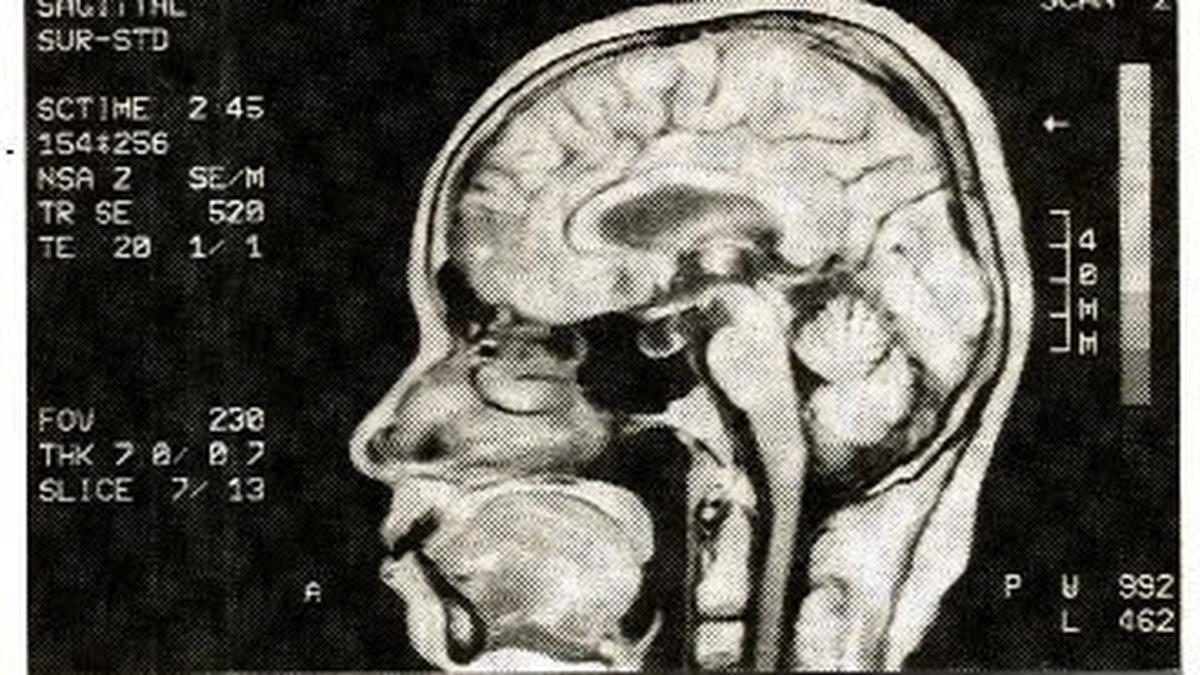
- 12 Jun 2025
In News:
Tourette Syndrome (TS) is a neurodevelopmental disorder that typically begins in early childhood, often between the ages of 2 and 15, with an average onset around six years. Affecting approximately 0.3% to 1% of the global population, TS is more prevalent among boys than girls. Despite its neurological basis, it remains poorly understood and frequently misdiagnosed, particularly in school settings where symptoms are mistaken for behavioural issues.
Nature and Classification of Tics
Tourette Syndrome is characterised by tics—sudden, repetitive, and involuntary movements or vocalisations. These are classified as:
- Simple tics, such as eye blinking, facial grimacing, throat clearing, or sniffing, involve a single muscle group or sound.
- Complex tics are more coordinated, involving actions like hopping, touching objects, or uttering phrases. Rarely, individuals may display coprolalia, the involuntary use of obscene language.
Tics often intensify with stress or excitement, diminish during calm periods, and usually disappear in deep sleep. External stimuli such as excessive screen exposure have also been linked to an increase in tics, particularly in children.
Causes and Co-morbidities
While the exact cause of TS remains unknown, researchers point to a combination of genetic predisposition and neurobiological factors, including abnormalities in brain regions such as the basal ganglia and frontal lobes. Environmental triggers—like low birth weight, perinatal complications, and post-infectious conditions (e.g., streptococcal infections)—may also contribute.
Tourette’s often coexists with other conditions such as Attention Deficit Hyperactivity Disorder (ADHD), Obsessive Compulsive Disorder (OCD), anxiety, depression, and learning disabilities. The presence of these co-morbidities complicates diagnosis and management.
Management and Treatment Approaches
Treatment is individualised and not always pharmacological. Many children with mild, non-disruptive tics do not require medication. Instead, Cognitive Behavioural Therapy (CBT) and behavioural interventions have shown significant efficacy. These therapies help children manage their symptoms while also training families to provide supportive environments that reduce stress and tic frequency.
Medications may be considered in severe cases where tics hinder daily functioning. Importantly, suppression or punishment of tics is counterproductive, often exacerbating symptoms due to built-up tension.
Social Stigma and the Need for Awareness
The primary challenge in managing TS lies not in the disorder itself, but in the societal misunderstanding surrounding it. Children with TS are often labelled as attention-seeking or disruptive, leading to social isolation and emotional distress. As seen in the case of a child from Kochi, delayed diagnosis and stigma worsened his condition until it was recognised as Tourette’s.
Educating teachers, parents, and peers is crucial. Early diagnosis, empathetic engagement, and inclusive school environments are essential to ensuring that children with TS are treated with dignity and compassion.
Rediscovery of the Eurasian Otter in Kashmir
- 12 Jun 2025
In News:
After being presumed extinct in the Kashmir Valley for nearly three decades, the Eurasian otter (Lutra lutra) has been spotted again in the Lidder River in Srigufwara, South Kashmir. This rare sighting rekindles hope for the revival of the Valley’s aquatic biodiversity.
About Eurasian Otter:
- Common Names: Eurasian otter, European otter, Common otter, Old-World otter
- Local Name in Kashmir: Vuder
- Type: Semi-aquatic carnivorous mammal
- Distribution:
- Widely spread across Europe, the Middle East, Northern Africa, and Asia (from Eastern Russia to China).
- In India, found in northern, northeastern, and southern regions.
- In Kashmir, historically abundant in Dal Lake, Dachigam streams, Rambiara stream, and the Lidder River.
Habitat & Features:
- Habitat:
- Occupies diverse freshwater and coastal ecosystems—lakes, rivers, marshes, swamp forests, and mountain streams.
- In the Indian subcontinent, prefers cold hill and mountain waters.
- Physical Traits & Adaptations:
- Sleek brown fur (lighter underneath), long streamlined body, short legs, and thick tail.
- Aquatic adaptations:
- Webbed feet
- Ability to close ears and nostrils underwater
- Dense fur trapping air for insulation
- Excellent vision, hearing, and olfactory senses.
- Behavior: Elusive, solitary, and primarily nocturnal.
Conservation Concerns:
- Primary Threats:
- Water pollution degrading habitats
- Hunting for fur, historically significant in Kashmir
- Conservation Status:
- IUCN Red List: Near Threatened
- Wildlife Protection Act, 1972 (India): Schedule II
- CITES: Appendix I
Sant Kabirdas
- 12 Jun 2025
In News:
11th June 2025 marked the 648th birth anniversary of Sant Kabirdas, one of India’s most revered 15th-century Bhakti saints.
Place of Birth: Varanasi, Uttar Pradesh
Birth Period: Circa 1440 CE, raised in a Muslim weaver family
Philosophy and Teachings
- Nirguna Bhakti: Kabir rejected idol worship and sectarian divisions, instead preaching devotion to a formless, universal God (Nirguna Brahman).
- Social Reform: He denounced casteism, rituals, and blind faith, stressing ethical conduct, humility, and self-realization.
- Inner Divinity: He believed God resides within and taught seekers to seek truth through introspection (Antar-drishti) rather than temple rituals.
- Language and Style:
- Composed in Sant Bhasha, a blend of local dialects understood across religions.
- Created Ulatbansi verses — paradoxical or "upside-down sayings" — challenging conventional wisdom.
Literary Legacy
- Major Works: Bijak, Sakhi Granth, Kabir Granthavali, Anurag Sagar
- Scriptural Inclusion:
- His verses appear prominently in the Adi Granth Sahib compiled by Guru Arjan Dev.
- Adopted by various traditions:
- Kabir Bijak (Kabirpanth, UP)
- Kabir Granthavali (Dadupanth, Rajasthan)
Impact and Influence
- Kabir Panth: A spiritual sect founded on his teachings, still active in North India.
- Sikhism: Deeply influenced Guru Nanak; Kabir’s dohas are integrated into Guru Granth Sahib.
- Cross-Religious Appeal: Respected by both Hindus and Muslims, he is a symbol of India’s syncretic spiritual culture.
- Other Sects: Influenced Dadu Panthis and Nirguna Bhakti traditions across India.
Contemporary Relevance
- Religious Harmony: In a climate of polarization, Kabir’s teachings offer a path of unity and spiritual inclusivity.
- Social Justice: His resistance to caste hierarchy echoes India’s constitutional values of equality and dignity.
- Sustainable Living: His emphasis on simplicity and contentment aligns with ecological and minimalist principles.
- Spiritual Humanism: He stressed conduct over ritual, making his message resonate across belief systems in today’s pluralistic society.
State of the World Population Report 2025
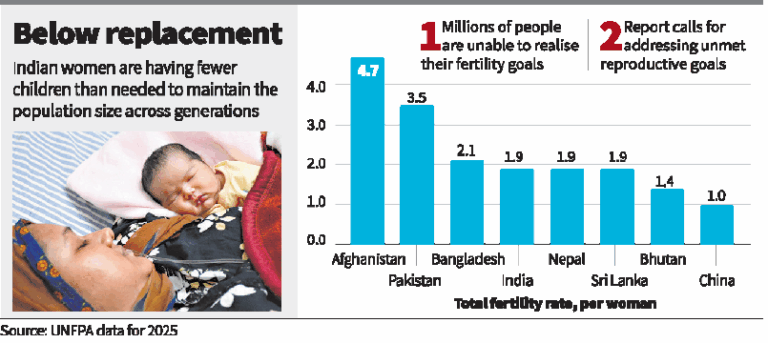
- 12 Jun 2025
In News:
According to the United Nations Population Fund’s (UNFPA) State of the World Population Report 2025, India’s population has reached 146.39 crore as of April 2025, surpassing China (141.61 crore) to remain the world’s most populous country. Importantly, India’s Total Fertility Rate (TFR) has declined to 1.9, falling below the replacement level of 2.1.
Key Highlights:
Population Growth and Future Projections
- Current population (2025): 146.39 crore
- Projected peak: 170 crore in the next 40 years, after which population will begin to decline.
- Working-age population (15–64 years): 68%
- Youth population:
- 0–14 years: 24%
- 10–19 years: 17%
- 10–24 years: 26%
- Elderly population (65+ years): 7% (expected to rise steadily)
Fertility Trends and the Real Crisis
What is TFR?
- Total Fertility Rate measures the average number of children a woman is expected to have in her lifetime.
- Replacement level TFR: 2.1 (to maintain population size across generations)
- India’s TFR in 2025: 1.9, marking a demographic shift toward stabilization.
Fertility Divergence Across States:
- High TFR states: Bihar, Uttar Pradesh, Jharkhand
- Low TFR states: Kerala, Tamil Nadu, Delhi – already below replacement level
The Real Fertility Crisis (UNFPA View):
- The true concern is unmet fertility goals, not overpopulation or underpopulation.
- Barriers to achieving desired family size:
- Financial constraints (40%)
- Job insecurity (21%) and housing issues (22%)
- Lack of childcare (18%)
- Social/family pressures (19%)
- Modern concerns like climate change and shifting gender norms
Structural & Social Challenges
- Persisting inequalities in access to reproductive health across caste, income, and regional lines
- Youth bulge in LMICs (including India) offers demographic dividend but needs skill-building and employment opportunities
- Ageing population calls for future-proof policies on healthcare, pensions, and social security
Life Expectancy & Data Reliability
- Life expectancy (2025):
- Men: 71 years
- Women: 74 years
- Data drawn from: DHS, MICS, World Population Prospects 2024, Family Planning Indicators (2024)
- India’s decennial Census delayed to 2027, limiting official data updates since 2011
UNFPA Recommendations for India:
- Expand SRH (Sexual & Reproductive Health) Services: Universal access to contraception, safe abortion, and infertility care
- Tackle Structural Barriers: Affordable housing, childcare, flexible work policies, and women’s education
- Promote Reproductive Agency: Ensure informed choices on family planning for all, including LGBTQIA+ and unmarried individuals
- Balance Youth & Elderly Policies: Invest in youth employability while preparing for ageing-related challenges
Blue NDC Challenge
- 12 Jun 2025
In News:
At the Third United Nations Ocean Conference (UNOC3) held in Nice, France (June 9–13, 2025), Brazil and France launched the Blue NDC Challenge — a major international initiative to integrate ocean-based climate solutions into Nationally Determined Contributions (NDCs) under the Paris Agreement, in the lead-up to UNFCCC COP30, to be held in Belem, Brazil.
What is the Blue NDC Challenge?
The Blue NDC Challenge is a multilateral climate action initiative urging countries to incorporate ocean-centric measures into their updated NDCs. It aims to enhance climate mitigation and adaptation by recognizing the vital role of oceans and coastal ecosystems in addressing the climate crisis.
- Launched by: Brazil and France
- Platform: UNOC3 (June 2025)
- Target: Updated NDCs due for 2035 (deadline: February 10, 2025)
Participating Countries (as of June 2025):
- Founding: Brazil, France
- Joined: Australia, Fiji, Kenya, Mexico, Palau, Seychelles
Objectives and Key Features:
- Ocean-Integrated NDCs
- Include marine ecosystems, coastal zones, mangroves, coral reefs, and salt marshes in national climate plans.
- Integrate Marine Spatial Planning (MSP) and Integrated Coastal Zone Management (ICZM).
- Sustainable Blue Economy
- Promote climate-resilient fisheries and carbon-smart aquaculture.
- Expand clean ocean energy: offshore wind, wave, and tidal power.
- Decarbonization and Adaptation
- Phase out offshore oil and gas projects.
- Reduce emissions in shipping, seafood value chains, and coastal infrastructure.
- Boost resilience in maritime sectors vulnerable to climate risks.
- Restoration and Conservation
- Focus on the restoration of mangroves, salt marshes, and coral reefs—which are effective carbon sinks and natural buffers against sea-level rise.
- Global Partnerships and Support Mechanisms
- Supported by:
- Global Mangrove Alliance
- UN High-Level Climate Champions
- World Resources Institute (WRI)
- Ocean Breakthroughs (Marrakech Partnership for Global Climate Action)
- Supported by:
Significance and Leadership:
- Brazil’s Climate Leadership
- Brazil’s 2035 NDC (submitted in November 2024) includes, for the first time, a dedicated Ocean and Coastal Zones component.
- Brazil is also investing in marine conservation, supported by a $6.8 million fund from Bloomberg Philanthropies (June 8, 2025).
- Expert Insights:
- Mangroves sequester carbon 10 times faster than terrestrial forests.
- Including oceans in NDCs can unlock greater political and financial support, according to Conservation International and WRI.
- Emission Reduction Potential:
- According to WRI, ocean-based solutions can contribute up to 35% of the global emissions reduction needed to stay within the 1.5°C limit.
Relevance for India and the World:
- With India’s vast coastline and diverse marine ecosystems, incorporating ocean-based climate actions into its NDCs could enhance climate resilience, especially for coastal communities.
- Global focus on oceans marks a shift towards holistic climate policy, integrating land, sea, and people-centric approaches.
Discovery of Spathaspina noohi
- 11 Jun 2025
In News:
A significant addition to India's rich biodiversity has emerged from the forests of Meghalaya with the discovery of a new beetle species, Spathaspina noohi. This unique species not only adds to the biological inventory of the region but also necessitated the creation of an entirely new genus, highlighting the ecological and taxonomic uniqueness of the organism.
Location of Discovery
- The beetle was found in the Umran area of Ri Bhoi district, Meghalaya.
- Elevation: 781 metres above sea level.
- The discovery was made by S. S. Anooj, entomologist from Kerala Agricultural University, and formally described by B. Ramesha in the international journal Zootaxa.
Taxonomic Significance
- Spathaspina noohi belongs to the Curculionidae family, commonly known as weevils, which includes over 60,000 species globally.
- Due to a highly distinctive sword-like spine on its back, it was classified under a new genus—Spathaspina, a name derived from Latin:
- Spatha = sword
- Spina = spine
Subfamily and Tribe Characteristics
- The beetle falls under the Ceutorhynchinae subfamily, which includes about 1,300 species worldwide.
- The subfamily is characterized by:
- Compact, robust body
- Ability to tuck their snout (rostrum) between the front legs when resting
- A visible back structure (mesanepimera)
- Within this subfamily, the beetle is linked to the tribe Mecysmoderini, comprising 8 genera and 107 species. This tribe is noted for its thoracic spines and specialized antenna structures, mostly found in South and Southeast Asia.
Ecological Role of Weevils
While many weevils are considered agricultural pests, others, including Spathaspina noohi, play vital ecological roles such as:
- Controlling invasive plant species
- Maintaining ecosystem balance
Geographical Distribution of Ceutorhynchinae
- These beetles are present across most continents except:
- New Zealand
- Oceania
- Antarctica
- Southern parts of South America
- Their highest diversity is noted in the Palaearctic Region (Europe, North Africa, parts of Asia), followed by the Oriental Region (South and Southeast Asia).
Commemorative Naming
The species is named in honour of P. B. Nooh, IAS, Director of Tourism, Government of Kerala. This acknowledges his contribution to eco-tourism and sustainable development, symbolizing the interconnection between biodiversity conservation and responsible tourism.
SEZ Reforms to Promote Semiconductor & Electronics Manufacturing

- 11 Jun 2025
In News:
Recently, the Department of Commerce notified key amendments to the SEZ Rules, 2006, to boost semiconductor and electronics component manufacturing. These reforms address the high capital intensity and import dependency of the sector and aim to attract pioneering investments.
Key Rule Amendments:
Rule 5: Minimum Land Requirement Relaxed
- What Changed: Minimum land required for SEZs dedicated to semiconductor/electronics manufacturing reduced from 50 hectares to 10 hectares.
- Why it matters
- Eases land acquisition
- Makes SEZs more feasible, especially in smaller industrial clusters
- Encourages pioneering investments in land-scarce regions
Rule 7: Encumbrance-Free Land Norm Relaxed
- What Changed: SEZ land no longer required to be entirely encumbrance-free, if it is mortgaged/leased to the Central or State Government or authorized agencies.
- Why it matters
- Removes a major legal hurdle in land approvals
- Accelerates SEZ project clearance and development timelines
Rule 18: Domestic Supply Allowed from SEZ Units
- What Changed: Semiconductor/electronics SEZ units can now sell products in the Domestic Tariff Area (DTA) after paying applicable duties.
- Why it matters
- Greater market access
- Enhances revenue and profitability
- Breaks away from traditional export-only SEZ model
Rule 53: Clarity on Free-of-Cost Goods in NFE Calculation
- What Changed: Free-of-cost goods received or supplied will now be included in Net Foreign Exchange (NFE) calculations, using customs valuation rules.
- Why it matters
- Encourages R&D and contract manufacturing
- Promotes transparent reporting of value addition
- Aligns with global manufacturing practices
Significance of Reforms:
- Tailored for High-Tech Sectors: Recognises the long gestation and capital-intensive nature of semiconductor and electronic component industries.
- Encourages Domestic and Global Investment: Makes India an attractive destination for global electronics giants.
- Enables Domestic Market Integration: By allowing DTA sales, it expands market access for SEZ-based units.
- Supports India's Semiconductor Mission: Complements existing initiatives like the Semicon India Programme.
National Investment and Infrastructure Fund (NIIF)
- 11 Jun 2025
In News:
Union Finance Minister chaired the 6th Governing Council (GC) meeting of NIIF in New Delhi. The Council urged NIIF to enhance its global presence, diversify funding sources, and attract international investors by leveraging its sovereign-backed model.
About National Investment and Infrastructure Fund
- A government-anchored investment platform to mobilize long-term institutional capital for infrastructure and strategic sectors.
- Operates as a sovereign wealth fund (SWF)-linked asset manager with independent governance.
- Established: 2015 (Union Budget 2015–16)
- Headquarters: Mumbai
- Nodal Ministry: Ministry of Finance (Department of Economic Affairs)
Functions & Objectives:
- Capital Mobilization: Attract domestic & global institutional investors.
- Investment Management: Deploy equity in commercially viable infrastructure.
- Strategic Partnerships: Collaborate with global sovereign wealth & pension funds.
- Policy Alignment: Support national initiatives like Make in India, green energy, and digital infrastructure.
Key Features:
- Public-Private Structure:
- 49% Government of India
- 51% Global and domestic institutional investors (e.g., ADIA, Temasek, CPPIB)
- SEBI-Registered AIF: Category II Alternative Investment Fund (AIF)
- Assets Under Management (AUM): ?30,000+ crore
- Capital Catalysed: ?1.17 lakh crore
- CEO & MD: Sanjiv Aggarwal (since Feb 2024)
Funds under NIIF:
- Master Fund: Core infrastructure (ports, airports, data centres, logistics)
- Private Markets Fund (PMF): Fund of funds model
- India-Japan Fund: Focused on climate action and sustainability
- Strategic Opportunities Fund: Growth equity in strategic sectors
Governing Council (GC) of NIIF:
- Chair: Union Finance Minister (currently Nirmala Sitharaman)
- Members include Finance Secretary, DEA/DFS officials, SBI Chairman, private sector leaders.
- Provides strategic guidance on:
- Fundraising
- Global positioning
- Operationalisation of new funds
- Annual review of performance
Key Outcomes of the 6th GC Meeting (2024–25):
- Proactive Global Outreach: GC urged NIIF to enhance its global presence and professionalise international engagement.
- Diversified Fundraising: Encouraged exploring multiple funding sources beyond traditional sovereign investors.
- Private Markets Fund II (PMF II): Target corpus: $1 billion; first closing imminent.
- Bilateral Fund with the USA: Under discussion to foster cross-border infrastructure investments.
- Greenfield Investment Success: Master Fund investments directed toward ports, logistics, airports, data centres.
- Strong Global Partnerships: Includes ADIA, Temasek, Ontario Teachers', CPPIB, AIIB, ADB, JBIC, and NDB.
- Annual Meetings: GC to convene once every year to review and guide NIIF’s evolving role.
Bhagwan Birsa Munda
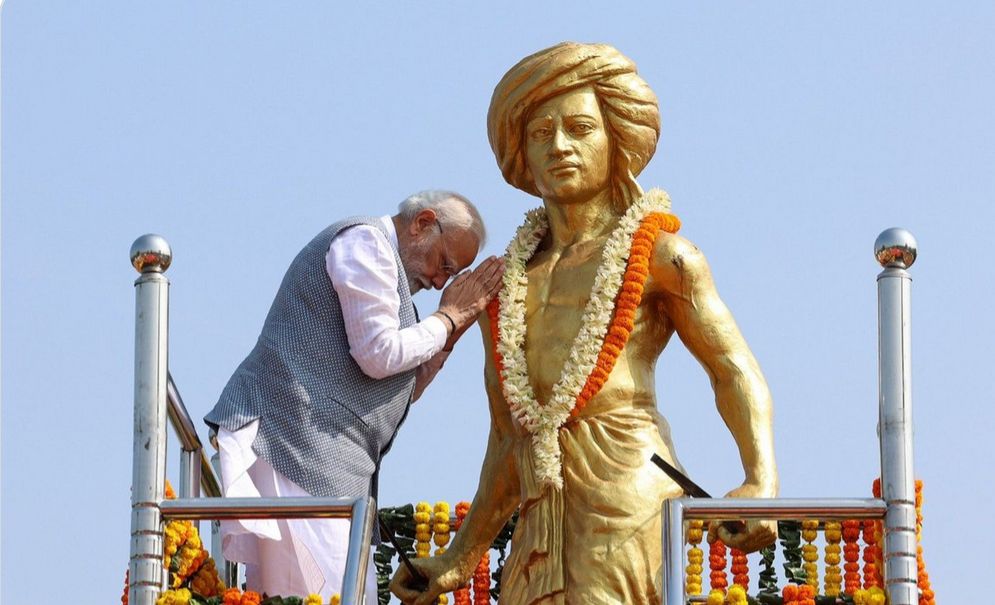
- 11 Jun 2025
In News:
On his 125th death anniversary (Balidan Diwas), the Prime Minister of India paid tribute to Bhagwan Birsa Munda, hailing his pioneering role in tribal empowerment and anti-colonial resistance.
Early Life and Identity
- Born: 15 November 1875, Ulihatu, Chotanagpur Plateau (now in Jharkhand).
- Tribe: Munda.
- Title: Revered as “Dharti Aaba” (Father of the Earth).
- Education: Attended Christian missionary schools in Chaibasa; later rejected colonial influence and converted to Vaishnavism, blending it with tribal spirituality.
- Founder of: The Birsait sect, advocating moral reform and cultural awakening among Adivasis.
Role in Freedom Struggle & Tribal Mobilisation
Resistance Against Exploitation:
- Zamindari System: Opposed British-imposed land systems that dismantled the Khuntkatti tribal land tenure, dispossessing tribals and reducing them to bonded labourers.
- Beth Begari: Led resistance against forced labour and revenue policies.
- Forest Rights: Fought against British encroachment and resource extraction in forests.
Cultural and Spiritual Renaissance:
- Condemned social evils like black magic and alcoholism.
- Mobilised tribals using tribal songs, attire, drums, and community gatherings.
- Advocated tribal self-rule and cultural pride against the oppression by Dikus (outsiders).
Ulgulan Movement (1895–1900): The Great Tumult
- Nature: A widespread anti-colonial rebellion across present-day Jharkhand, Odisha, and Bengal.
- Strategy: Guerrilla warfare, targeting British outposts, churches, and police stations.
- Slogan: “Abua Raj setar jana, Maharani Raj tundu jana” (Let the rule of our people begin, let the Queen’s rule end).
- Emphasized a vision of egalitarian tribal raj rooted in indigenous governance systems.
Arrest, Martyrdom, and Legacy
- Arrested: 1895; Died: 9 June 1900 in Ranchi Jail under mysterious circumstances.
- Though the rebellion was crushed, it led to the Chotanagpur Tenancy Act, 1908, securing tribal land rights.
Recognition and Legacy
- Declared as “Bhagwan” (Lord) by tribal communities for his cultural leadership and resistance.
- Institutions named in his honour: Birsa Agricultural University, Birsa Institute of Technology, etc.
- November 15 (birth anniversary) declared Janjatiya Gaurav Diwas (Tribal Pride Day) in 2021 by the Government of India.
- Symbol of tribal assertion, indigenous identity, and early resistance to colonialism in India.
India’s Breakthrough in Heeng Cultivation
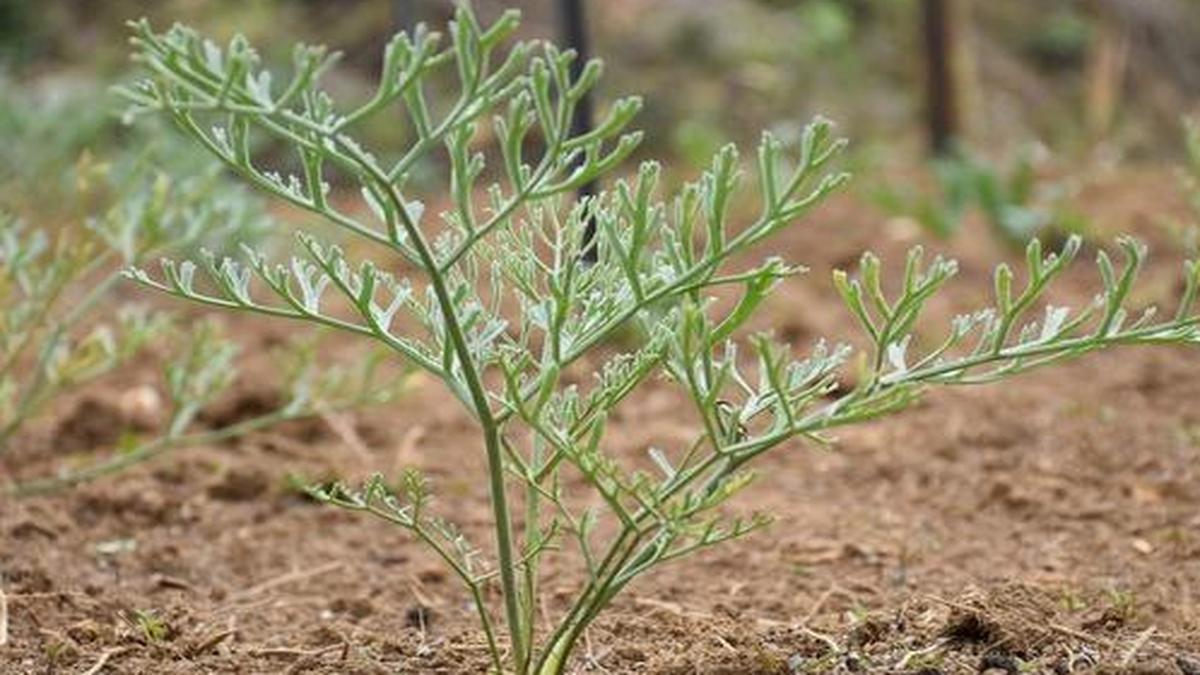
- 11 Jun 2025
In News:
CSIR-IHBT reported the first flowering and seed setting of heeng in Palampur (1,300 m above sea level). This confirmed the successful acclimatisation and domestication of Ferula assa-foetida in Indian agro-climatic conditions.
This milestone is significant because:
- It proves India’s capability to cultivate heeng domestically.
- It completes the reproductive cycle—a prerequisite for long-term commercial production and sustainability.
- It expands the scope of cold-arid agriculture beyond traditional zones.
Background:
- Heeng or asafoetida (Ferula assa-foetida) is a perennial herb, long revered in Indian culinary and medicinal traditions.
- It is widely mentioned in ancient texts such as the Mahabharata, Charaka Samhita, Pippalada Samhita, and the works of Panini, known for its digestive, aromatic, and therapeutic properties.
- Despite being the world’s largest consumer of heeng, India was entirely import-dependent until the early 2010s, sourcing it mainly from Afghanistan, Iran, and Uzbekistan.
- This was because the species Ferula assa-foetida, the true source of asafoetida, was not found in India—only related species like Ferula jaeschkeana (Himachal Pradesh) and Ferula narthex (Kashmir and Ladakh) existed, which do not yield the culinary resin.
Botanical & Climatic Requirements:
- Plant Type: Perennial, takes about 5 years to mature and flower.
- Soil: Prefers sandy, well-drained soil with low moisture.
- Climate: Thrives in cold, arid environments, requires annual rainfall below 200–300 mm.
- Temperature Range: Grows best in 10–20°C, tolerates up to 40°C, and survives winter lows of –4°C.
- Propagation: The oleo-gum resin (asafoetida) is extracted by making incisions in the plant’s fleshy taproot and rhizome, yielding a latex that hardens into a gum, which is dried into powder or crystal form.
The Indigenous Cultivation Effort:
In a major step toward self-reliance, the Council of Scientific and Industrial Research – Institute of Himalayan Bioresource Technology (CSIR-IHBT) in Palampur, Himachal Pradesh, initiated India’s first project for indigenous heeng cultivation.
- Seed Procurement: Between 2018–2020, IHBT coordinated with agencies and suppliers in Iran, Afghanistan, Uzbekistan, Tajikistan, and South Africa. Seeds were finally procured from Iran and Afghanistan with import approvals and quarantine protocols handled by ICAR-National Bureau of Plant Genetic Resources (NBPGR).
- Research and Trials: Researchers developed germination protocols for seeds with low viability and conducted trials at IHBT Palampur and Ribling in Lahaul-Spiti to determine altitude-specific suitability and agronomic practices.
- Milestone Event: On October 15, 2020, the first heeng sapling was planted in a farmer’s field in Kwaring village, Lahaul Valley—marking the start of India’s heeng cultivation journey.
Expansion and Institutional Support:
- New Cultivation Zones: From cold desert areas, cultivation extended to mid-hill regions such as Janjheli in Mandi. Demonstration plots and farmer training programmes were established across Lahaul-Spiti, Kinnaur, Mandi, Kullu, and Chamba.
- Early Adopter Villages:
- Lahaul & Spiti: Madgran, Salgran, Beeling, Keylong
- Mandi: Janjehli, Kataru, Majhakhal, Karsog
- Kinnaur: Kalpa, Hango, Reckong Peo, Maling
- Kullu: Kotla–Banjar, Bagsaid, Dhaugi–Sainj
- Chamba: Pangi, Bharmour, Tooh, Mahala
- Heeng Germplasm Resource Centre: Established at IHBT Palampur in March 2022, this national hub oversees research, conservation, seed production, and propagation of heeng.
- Tissue Culture Innovation: A dedicated lab was developed to scale up propagation using modern techniques, supported by the Government of Himachal Pradesh. Ecological niche modelling using GPS and climate data helped map ideal cultivation areas.
Myotis himalaicus
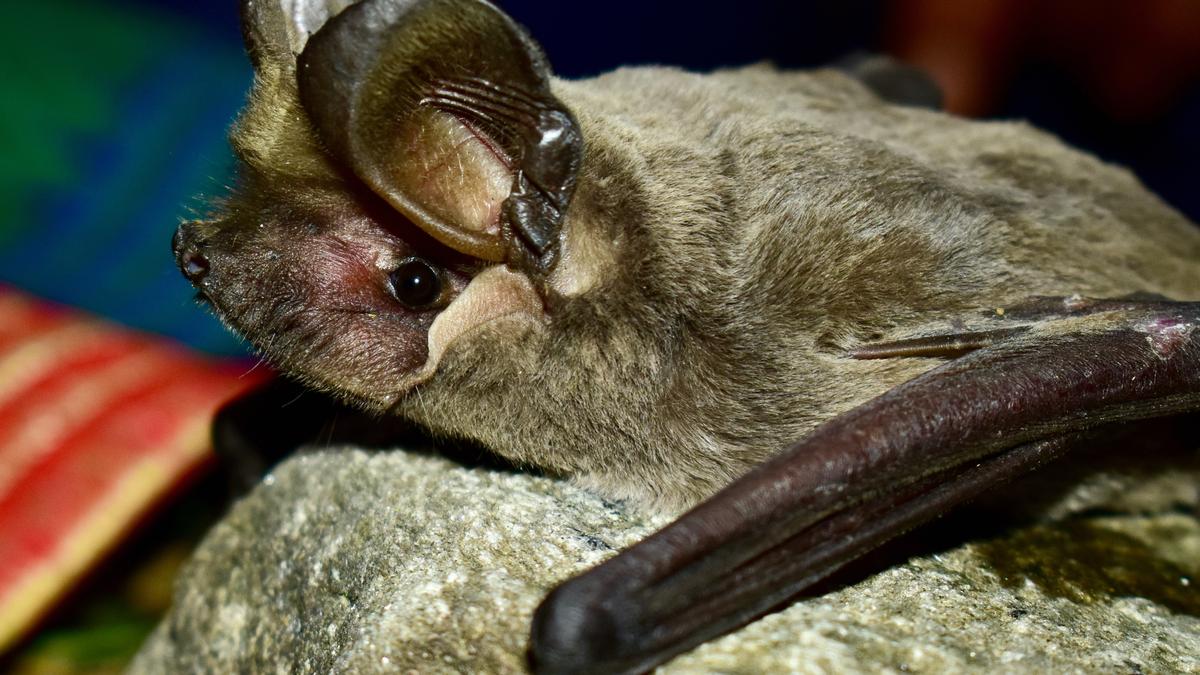
- 10 Jun 2025
In News:
A new bat species, the Himalayan Long-Tailed Myotis (Myotis himalaicus), has been described based on fieldwork in Uttarakhand and historical specimens from Pakistan. Published in Zootaxa journal by a team of Indian and international scientists.
Key Findings of the Study
- Study Area: Western Himalayas – Himachal Pradesh & Uttarakhand (2017–2021).
- Total Bat Species Documented: 29, including new records and confirmations.
- Raises India's bat species count to 135.
About Himalayan Long-Tailed Myotis (Myotis himalaicus)
Feature Description
Family/Genus Belongs to the Myotis frater complex
Habitat Deodar, pine, and cedar forests on southern Himalayan slopes
Distribution Found in Uttarakhand (India) and Khyber Pakhtunkhwa (Pakistan)
Size Medium-sized (~3.5 inches, <1 oz)
Morphology Delicate feet, long thumbs with short claws, short ears, fine teeth
Conservation Status Recently described; appears rare
Other Major Additions/Clarifications
- East Asian Free-Tailed Bat (Tadarida insignis):
- First confirmed record in India.
- Extends known range eastward by 2,500 km.
- Earlier misidentified as Tadarida teniotis.
- Babu’s Pipistrelle (Pipistrellus babu):
- Revalidated as a distinct species, not a synonym of Javan pipistrelle.
- Distribution: Pakistan, India, Nepal.
- First specimen-based confirmations in India for:
- Savi’s pipistrelle (Hypsugo savii)
- Japanese greater horseshoe bat (Rhinolophus nippon)
Ecological Importance of Bats
- Insect Control: Consume pests and mosquitoes.
- Pollination & Seed Dispersal: Important for forest regeneration.
- Fertilizer Contribution: Bat guano rich in Nitrogen & Phosphorous; boosts crop yield.
NASA's Mars Odyssey captures volcano piercing ice cloud belt
- 10 Jun 2025
In News:
- Recently, NASA’s 2001 Mars Odyssey orbiter captured a stunning image of Arsia Mons, a giant Martian volcano, rising through a morning belt of water-ice clouds.
- First such astronaut-like horizon view of Tharsis Montes volcanoes on Mars.
About Arsia Mons
- Part of Tharsis Montes, a trio of volcanoes near Mars' equator.
- Height: ~20 km (12 miles) – twice the height of Mauna Loa, Earth’s tallest volcano.
- Cloudiest of the Tharsis volcanoes.
- Cloud formation due to orographic uplift and cooling during Mars’ aphelion (farthest point from Sun).
- Featured in the aphelion cloud belt — a seasonal band of water-ice clouds.
Mission Evolution
- Mars Odyssey, launched in 2001, is the longest-operating Mars orbiter.
- In 2023, began a new imaging mode: rotating its THEMIS camera to capture horizon views of Mars’ upper atmosphere.
- These angled images help study seasonal changes in dust and water-ice cloud layers.
Scientific Significance
- Helps track Martian atmospheric evolution, especially cloud behavior and dust storms.
- Valuable for future human missions:
- Assists landing site safety planning.
- THEMIS also detects subsurface water ice, key for astronaut resource use.
Instruments and Collaborators
- THEMIS: Thermal Emission Imaging System, captures both visible and infrared light.
- Managed by NASA’s JPL, designed by Arizona State University, built by Lockheed Martin.
Stratospheric Aerosol Injection (SAI)
- 10 Jun 2025
In News:
A study recently published in the journal Earth’s Future offered an innovative approach to SAI technique that could reduce its costs but also bring it closer to fruition despite the opposition to it.
What is Stratospheric Aerosol Injection (SAI)?
- SAI is a proposed solar geoengineering technique to cool the Earth by injecting reflective aerosols (e.g. sulphur dioxide) into the stratosphere to reflect sunlight and reduce surface temperatures.
- Inspired by volcanic eruptions, like Mount Pinatubo (1991), which naturally cooled the Earth by emitting aerosols.
Recent Study Highlights (June 2025)
- Published in Earth’s Future journal.
- Led by Alistair Duffey, University College London.
- Used UK Earth System Model 1 (UKESM1) for climate simulations.
Key Findings
- Injecting 12 million tonnes of sulphur dioxide annually at 13 km altitude (spring/summer in each hemisphere) could cool the Earth by ~0.6°C.
- To cool by 1°C, ~21 million tonnes/year are needed at that altitude.
- Only 7.6 million tonnes/year are needed at higher altitudes (subtropics) for the same cooling.
Innovative Proposal
- Low-altitude SAI using modified existing aircraft (e.g. Boeing 777F) instead of specially designed high-altitude aircraft:
- Stratosphere is lower near poles (12–13 km), so current aircraft can reach it.
- Cost-effective and faster to deploy than high-altitude (~20 km) methods.
- Could begin within years, rather than a decade-long wait for new aircraft.
Risks and Concerns
- Tripling aerosol quantity (in low-altitude strategy) raises:
- Ozone depletion
- Acid rain
- Altered weather patterns
- Uneven global effects (benefits poles more, tropics less)
- Moral hazard: may reduce incentives to cut emissions.
- Governance challenge: One country’s action impacts all nations → risk of geopolitical conflict.
Why it matters
- Global GHG emissions are still rising.
- Climate mitigation through decarbonisation is slow and politically vulnerable.
- Technologies like SAI offer a stopgap, but not a substitute for emission cuts.
Neglected Tropical Diseases (NTDs)

- 10 Jun 2025
In News:
Current Global Progress
- As of May 2025, 56 countries have eliminated at least one NTD, aligned with WHO’s 2030 target (100 countries).
- Between Jan 2023 – May 2025, 17 countries were officially acknowledged by WHO for NTD elimination.
- World NTD Day: Observed annually on 30th January.
What Are NTDs?
- NTDs are a group of infectious diseases affecting over 1 billion people, mainly in tropical and poor regions.
- Caused by parasites, bacteria, viruses, fungi, or toxins.
- Common NTDs include:
- Lymphatic Filariasis (Elephantiasis)
- Onchocerciasis (River Blindness)
- Schistosomiasis
- Soil-transmitted helminths
- Trachoma, Dengue, Kala-azar (Visceral Leishmaniasis)
Impact of Official Development Assistance (ODA) Cuts
- Major donors like the US and UK have withdrawn NTD funding:
- USAID previously provided US$ 1.4 billion, supporting 3.3 billion treatments across 26 countries, helping 14 of them eliminate at least one NTD.
- UK ended its ‘Ascend’ NTD programme in 2021.
WHO Warning:
- On 10 April 2025, WHO cautioned that over 70% of country offices reported health service disruptions due to ODA cuts.
- NTD services have been disrupted at levels similar to peak COVID-19.
Climate Change & Emerging Threats
- Climate change is worsening the NTD burden:
- Dengue declared a Grade 3 Emergency in 2024:
- 14 million cases, 10,000 deaths across 107 countries.
- Geographical expansion of vector-borne NTDs continues.
- Dengue declared a Grade 3 Emergency in 2024:
Public-Private Partnerships
- Pharma companies have donated US$ 12 billion+ worth of drugs (2011–2025), including: GSK, Pfizer, Sanofi, Merck, Bayer, Novartis, Johnson & Johnson, among others.
Recent Global Action
- At the 78th World Health Assembly (May 2025):
- Two NTD-related resolutions adopted:
- Eradication of Dracunculiasis (Guinea Worm)
- Control of Skin-related NTDs
- Two NTD-related resolutions adopted:
Way Forward
- Strengthen nationally owned, sustainable NTD programmes.
- Ensure alternative funding and service delivery mechanisms.
- Prevent reversal of hard-won gains and protect vulnerable communities from deeper health inequities.
Tamhini Wildlife Sanctuary
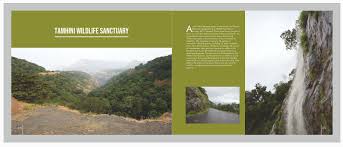
- 10 Jun 2025
In News:
The Maharashtra Forest Department partnered with Microsoft and Pune-based CYDA (Centre for Youth Development and Activities) to address the eco-restoration project in the Tamhini Wildlife Sanctuary.
Location & Geography:
- Situated in the Western Ghats, about 70 km from Pune, Maharashtra.
- Notified as a Wildlife Sanctuary in January 2013.
- Spread over 49.62 sq. km, comprising:
- 12 forest compartments from Paund and Sinhgad ranges (Pune forest division).
- 8 compartments from Mangaon range (Roha division, Thane).
Vegetation Types:
- Dominated by evergreen, semi-evergreen, and moist deciduous forests.
- Rich floral diversity including teak, bamboo, Ain, Shisham, mango, and jamun.
Biodiversity Highlights:
- Mammals (28 species):
- Includes the Indian Giant Squirrel (Shekaru) – state animal of Maharashtra.
- Also hosts Indian pangolin, barking deer, Indian civet, and wild boar.
- Home to the Kondana Soft-furred Rat (Millardia kondana) – an endangered species.
- Birds (150 species):
- Notable species: Malabar whistling thrush, golden oriole, crested serpent eagle, Indian pitta, grey junglefowl.
- Includes 12 species endemic to India.
- Insects & Others:
- 72 species of butterflies, 18 reptile species, and 33 invertebrate species.
Ecological Importance:
- Part of the Western Ghats, a globally recognized biodiversity hotspot.
- Habitat for rare, endemic, and threatened species.
- Supports vital ecosystem services, aiding in climate regulation, water conservation, and pollination.
Recent Conservation Initiative:
- A collaborative eco-restoration project was launched by the Maharashtra Forest Department, Microsoft, and CYDA (Centre for Youth Development and Activities), Pune.
- Aim: Address socio-ecological challenges, promote community engagement, and leverage technology in conservation.
Eco-tourism Potential:
- Features popular trekking and nature spots like Andharban forest, Plus Valley, and Devkund.
- Attracts high tourist footfall, especially during monsoon, including bird watchers and nature enthusiasts.
Raja Bhabhut Singh Honoured
- 09 Jun 2025
In News:
In June 2025, the Madhya Pradesh Government held a special Cabinet meeting at Pachmarhi, renaming the Pachmarhi Wildlife Sanctuary after Raja Bhabhut Singh, a lesser-known but formidable tribal freedom fighter of the 1857 revolt.
About Raja Bhabhut Singh
- Lineage: Belonged to the Jagirdar family of Harrakot Raikheri, descended from Thakur Ajit Singh. His grandfather, Thakur Mohan Singh, had allied with Peshwa Appa Saheb Bhonsle of Nagpur during the 1819–20 resistance against the British.
- Role in 1857 Revolt:
- A key Gond tribal leader with control over Jabalpur and the Satpura hills.
- Employed guerrilla warfare tactics in the Satpura forests, using deep geographical knowledge to harass British forces.
- Maintained close ties with Tatya Tope, a prominent national leader.
- Martyrdom:
- British deployed the Madras Infantry to capture him.
- He was executed in 1860, and is remembered in Korku tribal folklore.
- Known as the "Shivaji of Narmadachal" for his resistance strategies.
Pachmarhi Wildlife Sanctuary (Now Raja Bhabhut Singh Sanctuary)
- Located in the Satpura mountain range, central Madhya Pradesh, within the Deccan Peninsula biogeographic zone.
- Highest point: Dhoopgarh (1,352 m).
- Forms part of the Satpura Tiger Reserve, along with:
- Satpura National Park
- Bori Wildlife Sanctuary
- Key Biodiversity Zone in Central India.
Korku Tribe Overview
- Region: Mainly in Madhya Pradesh, Chhattisgarh, and Melghat (Maharashtra).
- Occupation: Traditionally agriculturalists; introduced potato and coffee cultivation.
- Society: Patrilineal communities led by traditional headmen.
- Culture:
- Practice ancestral worship through memorial stones called Munda.
- Rich in oral traditions, which preserve the memory of tribal icons like Raja Bhabhut Singh.
Starlink receives DoT licence to launch Satellite Internet in India
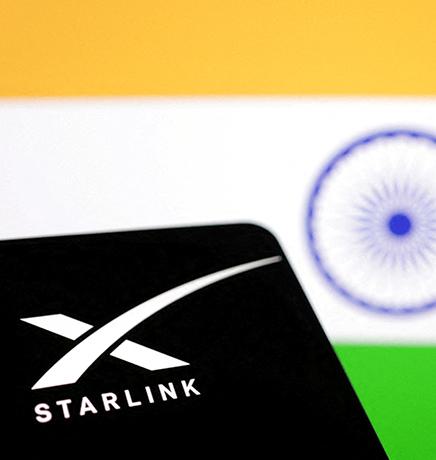
- 09 Jun 2025
In News:
- The Department of Telecommunications (DoT) has granted a licence to Elon Musk’s Starlink to provide satellite-based internet services in India.
- Starlink becomes the third company, after Eutelsat OneWeb and Jio Satellite Communications, to receive such approval. A fourth contender, Amazon’s Kuiper, is still awaiting clearance.
What is Starlink?
- Developer: Starlink is a satellite internet system by SpaceX, founded by Elon Musk in 2002.
- Objective: Deliver high-speed, low-latency broadband globally, especially targeting rural and remote areas with limited connectivity.
- Technology:
- Operates a constellation of Low Earth Orbit (LEO) satellites (~550 km altitude).
- Satellites communicate via laser links for inter-satellite data relay, forming a global mesh.
- Ground stations transmit data to satellites, which then beam it to user terminals.
Key Features of Starlink
- Speed: Up to 150 Mbps, with future plans to increase it.
- Latency: As low as 20–25 milliseconds — ideal for video calls and streaming.
- Tech Stack:
- Flat-panel antennas for easy user access.
- Argon-powered ion thrusters for satellite positioning.
- Space lasers for fast inter-satellite communication.
- Deployment: Satellites launched via Falcon 9 rockets with regular updates.
- Scale: Plans to deploy up to 42,000 satellites globally.
Significance for India
- Bridging the Digital Divide: Ensures internet access in rural, remote, and disaster-prone regions.
- Reduced Infrastructure Dependency: Less reliance on fibre optics and mobile towers in hard-to-reach areas.
- Boost to Digital Economy: Enhances competition in India’s broadband sector, especially in Tier 2 and Tier 3 cities.
- Security Compliance: Starlink must adhere to India’s security norms, including lawful interception requirements, before commercial rollout.
- Next Steps: Will receive trial spectrum within 15–20 days post-application.
Ranthambore Tiger Reserve
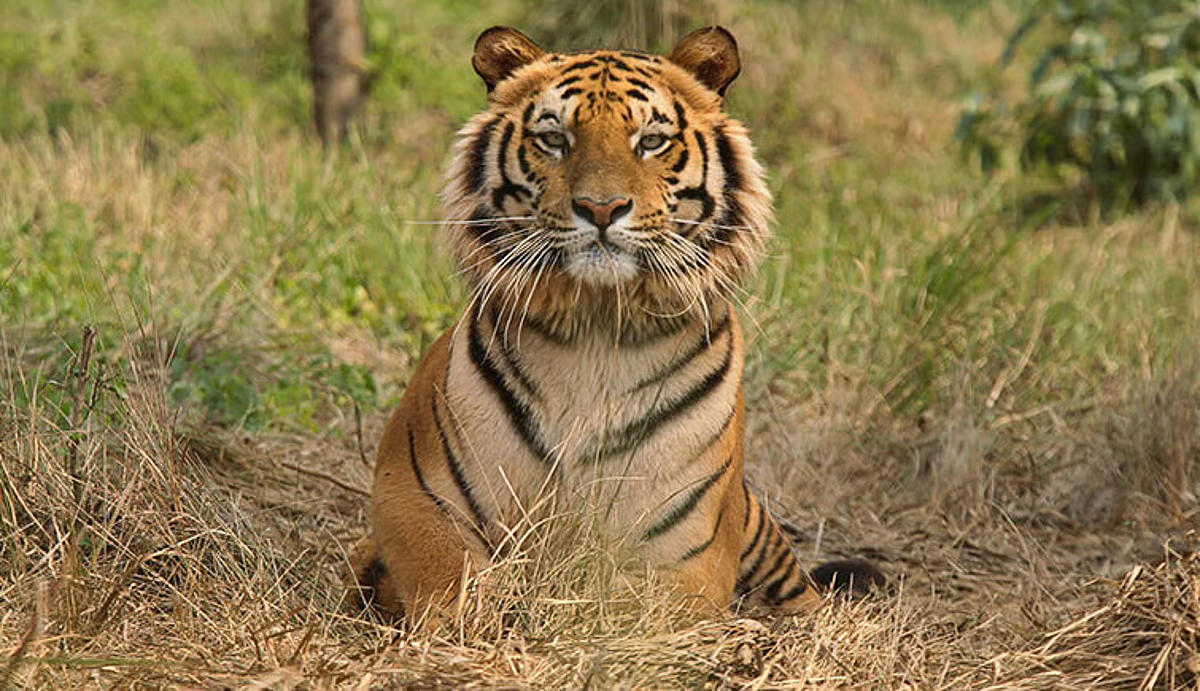
- 09 Jun 2025
In News:
The Supreme Court of India has recently ordered the Rajasthan government to impose an immediate ban on all mining activities within the core area of the Ranthambore Tiger Reserve, citing concerns over wildlife protection and habitat preservation.
About Ranthambore Tiger Reserve
- Location: Sawai Madhopur district, southeastern Rajasthan.
- Named After: Ranthambore Fort, a UNESCO World Heritage Site, located within the reserve.
- Geographical Boundaries:
- North: Bounded by the Banas River
- South: Bounded by the Chambal River
- Terrain: High rocky plateaus, valleys, rivers, lakes, and historic ruins including forts and mosques.
- Total Area: ~1,411 sq.km, making it one of the largest tiger reserves in northern India.
- Surrounding Ranges: Located at the confluence of the Aravalli and Vindhya hill ranges.
Ecology and Biodiversity
Vegetation: Dominated by dry deciduous forests and open grassy meadows.
- Flora:
- Predominantly Dhok tree (Anogeissus pendula).
- Other species: Acacia, Capparis, Zizyphus, Prosopis, etc.
Water Bodies:
- Important lakes include:
- Padam Talab
- Raj Bagh Talab
- Malik Talab
Fauna:
- Apex predator: Royal Bengal Tiger
- Other mammals:
- Leopard, Caracal, Jungle Cat
- Sambar, Chital, Chinkara, Wild Boar
Historical Significance: Previously served as the royal hunting grounds of the Maharajas of Jaipur.
RBI Revises LTV Ratio for Gold-Backed Loans
- 09 Jun 2025
In News:
- The Reserve Bank of India (RBI) has announced revised guidelines to enhance formal sector lending and ease credit access for small-ticket gold loan borrowers, especially in rural and semi-urban areas.
- The new norms focus on raising the Loan-to-Value (LTV) ratio for gold-backed loans up to ?5 lakh and simplifying appraisal norms for such loans.
What is the Loan-to-Value (LTV) Ratio?
- Definition: The LTV ratio is the percentage of a collateral’s value that a lender offers as a loan.
- Formula:
LTV Ratio= (Loan Amount / Appraised Value of Asset) × 100
- A higher LTV indicates greater credit against the same asset but also entails higher risk for the lender.
- Assets like gold, with a stable value and liquid secondary market, are more "desirable" as collateral, often attracting higher LTVs.
Revised RBI Guidelines (June 2025): LTV Ratio for Gold Loans
Loan Amount Revised LTV Ratio Previous LTV (Draft April 2025)
Up to ?2.5 lakh 85% 75%
?2.5 lakh – ?5 lakh 80% 75%
Above ?5 lakh 75% 75%
- The interest component is included in the LTV calculation.
- The move reverses the uniform 75% LTV cap proposed in the April 2025 draft norms.
Additional Key Features
- No credit appraisal required for loans up to ?2.5 lakh.
- End-use monitoring is necessary only if the borrower wishes to qualify the loan under priority sector lending.
- The average ticket size of gold loans (~?1.2 lakh) is expected to increase due to relaxed norms.
- These loans are crucial for middle-class, lower middle-class, self-employed, and small businesses, often lacking formal income proof.
Rationale and Impact
- The revised norms aim to:
- Enhance credit accessibility.
- Prevent migration of borrowers to informal lenders.
- Boost financial inclusion and formalize rural credit ecosystems.
- Industry experts and NBFCs like Muthoot FinCorp and Shriram Finance have welcomed the move, noting it would benefit women, rural borrowers, and small traders.
- Shares of leading gold loan NBFCs like Muthoot Finance, Manappuram Finance, and IIFL Finance witnessed a sharp increase following the announcement.
Index Cards
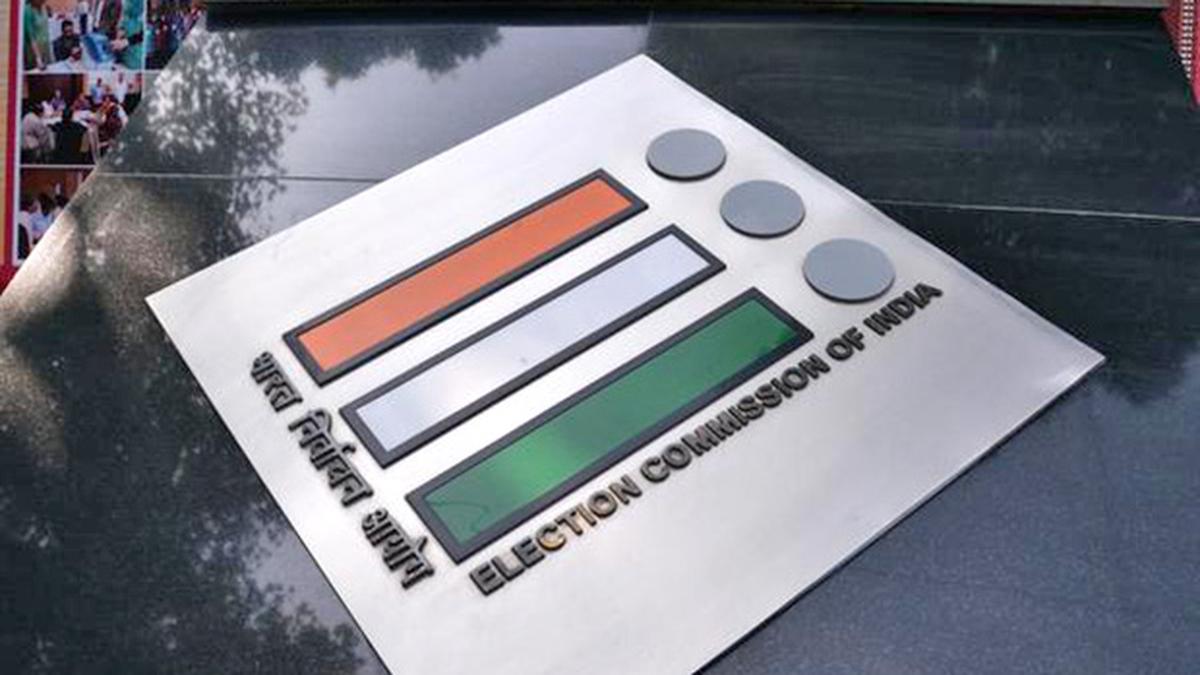
- 09 Jun 2025
In News:
The Election Commission of India (ECI) has recently upgraded the mechanism for generating Index Cards, making it more technology-driven and automated. Index Cards are a non-statutory, post-election statistical reporting format developed suo moto by the ECI to enhance transparency and accessibility of electoral data at the constituency level.
Purpose and Utility
Index Cards are designed to compile and disseminate election-related data for use by:
- Researchers
- Academia
- Journalists
- Policymakers
- The general public
Scope of Information
The Index Cards provide a wide range of data, including:
- Candidate-wise and party-wise vote share
- Electors and votes polled/counted
- Gender-based voting patterns
- Regional variations in voter turnout
- Performance of:
- National and State parties
- Registered Unrecognised Political Parties (RUPPs)
- Participation of women voters
- Winning candidates' analyses
- State/PC/AC-wise elector details and number of polling stations
Technological Upgrade
Earlier, data was manually filled into physical Index Cards at the constituency level using various statutory formats. These were later digitized for statistical reporting, resulting in delays and inefficiencies.
The 2025 upgrade has:
- Replaced the manual system with an automated, data-integrated mechanism
- Ensured faster and more reliable reporting
- Improved the timeliness of data dissemination
Nature of Data
- Index Cards are based on secondary data used exclusively for academic and research purposes.
- Primary and final electoral data is maintained in statutory forms by the respective Returning Officers.
INS Arnala
- 08 Jun 2025
In News:
The Indian Navy is set to commission 'Arnala', the first warship under the Anti-Submarine Warfare Shallow Water Craft (ASW-SWC) series at the Naval Dockyard in Visakhapatnam. The commissioning will be presided over by Chief of Defence Staff, General Anil Chauhan.
About INS Arnala
- Type: First in the series of 16 Anti-Submarine Warfare Shallow Water Crafts (ASW-SWC)
- Builder:
- Primary: Garden Reach Shipbuilders & Engineers (GRSE), Kolkata
- Partner: L&T Shipbuilders
- Delivery Date: May 8, 2025
- Indigenous Content: Over 80%
- Partners Involved:
- BEL, L&T, Mahindra Defence, MEIL
- 55+ MSMEs involved in the supply chain
Capabilities & Features
- Length: 77 meters
- Displacement: 1,490+ tonnes
- Propulsion: Diesel engine-waterjet system (a first for a warship of this size in India)
- Roles:
- Anti-submarine operations in coastal/shallow waters
- Subsurface surveillance
- Search and Rescue (SAR)
- Low-intensity maritime operations
Significance
- Aatmanirbhar Bharat Milestone: Highlights indigenous shipbuilding and defence manufacturing capabilities
- Boost to Coastal Defence: Enhances the Navy’s reach in shallow and strategic coastal zones
- Employment & Industrial Growth: Significant MSME and domestic defence industry involvement
Heritage & Symbolism
- Name Origin: Inspired by Arnala Fort, near Vasai, Maharashtra
- Built by the Marathas in 1737 under Chimaji Appa
- Historically guarded the Vaitarna River mouth and northern Konkan coast
- Design Symbolism:
- Armoured hull reflects the resilient walls of Arnala Fort
- Advanced sensors and weapons echo the fort’s cannons
- Crest:
- Stylised auger shell – precision, strength, vigilance
- Motto: Arnave Shauryam — “Valour in the Ocean”
Rediscovery of Losgna Genus in India
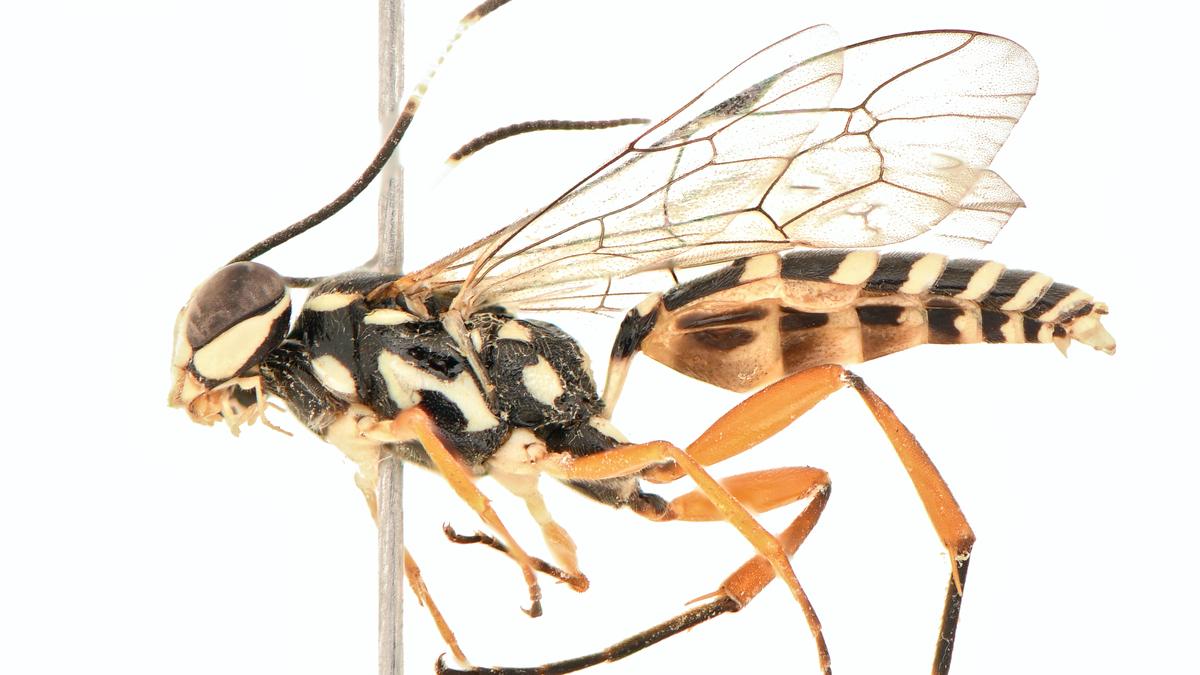
- 08 Jun 2025
In News:
At a time when habitat loss and climate change threaten countless species, the discovery of a new species of parasitic wasp - named ‘Losgna Occidentalis’ from Chandigarh has drawn attention to the unexplored richness of India’s biodiversity.
Location of Discovery
- Place: Chandigarh, Union Territory of India
- Habitat: Urban dry scrub forest
- Time: Winter of 2023–24
- Significance: First formal description of any insect species from Chandigarh
Species Description
- Name: Losgna occidentalis
- Genus: Losgna (Ichneumonidae family – Parasitic wasps)
- Group Role: Parasitic wasps known for laying eggs inside/on arthropod hosts
- Ecological Role: Pollinators and biological control agents (important in ecosystems)
Historical Context
- Losgna genus was last recorded in India in 1965, in Heinrich’s monograph
- No Indian records or specimens existed post-1965 in any institution
- Only known specimens (of other Losgna species) are preserved in:
- Natural History Museum, London
- The Hope Collection, Oxford University
- Zoologische Staatssammlung München, Germany
Naming Rationale
- "Occidentalis" (Latin for "Western")
- Signifies the westernmost known range of the genus
- Earlier Losgna records were only from:
- Northeast India
- Southeast Asia (tropical forests)
- Published in Zootaxa (peer-reviewed journal for animal taxonomy)
Importance & Implications
- Rediscovery highlights India’s hidden and threatened biodiversity
- Emphasizes the critical role of taxonomy in conservation
- Shows potential for citizen-led discoveries and backyard biodiversity
- Demonstrates the need for:
- Responsible specimen collection
- International scientific collaboration
- Support for underfunded taxonomy sectors
Discovery of 800-Year-Old Pandya-Era Shiva Temple
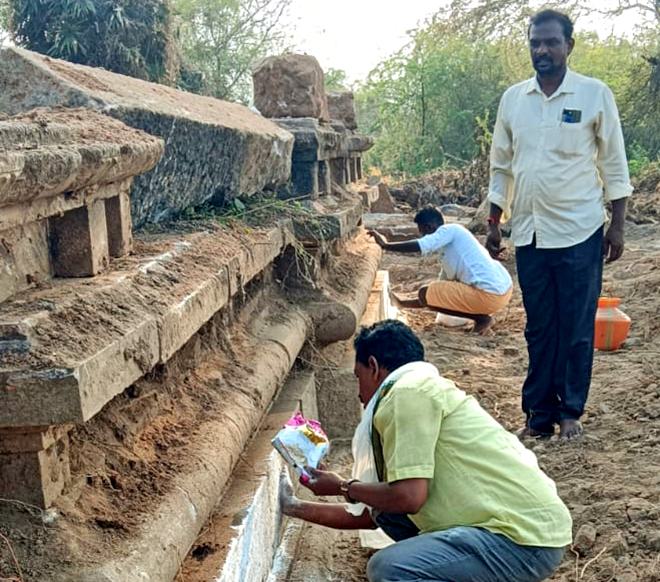
- 08 Jun 2025
In News:
An 800-year-old Shiva temple of the later Pandya period has been unearthed at Udampatti, a village in Melur taluk, Madurai district, Tamil Nadu.
Key Highlights:
- Discovery: Foundation of a later Pandya period Shiva temple (dated to 1217–1218 CE) unearthed accidentally by children.
Architectural Insights:
- Only the stone base of the temple (north and south sides) survives.
- Identified as a Shaivite temple using foundation engravings and reference to Silpa Sastram.
Inscriptions & Historical Significance:
- Inscriptions deciphered by C. Santhalingam (Pandya Nadu Centre for Historical Research).
- Temple identified as Thennavanisvaram, located in ancient Attur (present-day Udampatti).
- “Thennavan” was a Pandya royal title, suggesting direct patronage.
Key Inscriptions (1217–18 CE):
- A sale deed records the transfer of a waterbody named Nagankudi along with wet/dry land.
- Seller: Alagaperumal, chieftain of Kalavalinadu
- Buyer: Nambi Perambala Kuthan alias Kangeyan
- Sale amount: 64 kasu (coins)
- Tax revenue from the land assigned to the temple for daily expenses, indicating its financial independence.
Archaeological Relevance:
- Confirms ancient village name (Attur), showcasing socio-economic practices during the Later Pandya period.
- Highlights temple economy, land-water rights, and administrative structures.
Pandya Dynasty
- One of the Three Crowned Tamil Dynasties (alongside Cholas and Cheras).
- Capital: Initially Korkai, later Madurai.
- Early Pandyas active since 4th century BCE; Later Pandyas (1216–1345 CE) saw a golden age under Maravarman Sundara Pandyan.
- Controlled parts of Sri Lanka, Telugu regions, and had trade links with Rome & Southeast Asia.
- Symbol: Fish
Cultural Contributions:
- Patronage of Sangam literature, Shaivism, Vaishnavism, Jainism.
- Temples: Meenakshi Temple (Madurai), Nellaiappar Temple (Tirunelveli).
- Promoted Tamil arts, Bharatanatyam, and education.
Decline:
- Succumbed to Chola, Hoysala conflicts and Delhi Sultanate invasions.
- Madurai Sultanate (1335) and later Madurai Nayak dynasty (1529) succeeded their rule.
National e-Vidhan Application (NeVA)

- 08 Jun 2025
In News:
Union Minister of State Dr. L. Murugan will inaugurate the National e-Vidhan Application (NeVA) for the Puducherry Legislative Assembly.
What is NeVA?
- Full Form: National e-Vidhan Application
- Launched by: Ministry of Parliamentary Affairs (MoPA)
- Aim: Make legislative functioning paperless across all 37 State/UT legislatures under the idea of “One Nation – One Application.”
Key Features:
- Unified digital platform for legislative work
- Enables real-time document access, online notices, and session management
- Integrates AI/ML-based real-time translation (via partnership with BHASHINI, MeitY)
- Promotes transparency, efficiency, and environmental sustainability
Funding & Implementation:
- Approved by: Public Investment Board (PIB) on 15 January 2020
- Budget: ?673.94 crore
- Model: Centrally Sponsored Scheme (CSS)
Significance:
- Digital transformation of legislative processes
- Creation of a central data repository
- Enhanced inter-legislature connectivity
- Boosts Digital India and Good Governance goals
4th India–Central Asia Dialogue (2024)
- 08 Jun 2025
In News:
India hosted the 4th edition of the India–Central Asia Dialogue in New Delhi, chaired by External Affairs Minister Dr. S. Jaishankar. The event emphasized regional security, connectivity, critical minerals, counter-terrorism, and economic integration.
What is the India–Central Asia Dialogue?
- Type: Multilateral forum for structured engagement between India and Central Asian republics.
- Initiated in: 2019, Samarkand (Uzbekistan).
- Participants: India, Kazakhstan, Kyrgyz Republic, Tajikistan, Turkmenistan, Uzbekistan.
Key Objectives:
- Strengthen cooperation in trade, connectivity, security, energy, health, and technology.
- Promote regional stability, counter-terrorism collaboration, and sustainable development.
- Enhance people-to-people ties and institutional coordination.
Major Outcomes of the 4th Dialogue:
- Security Cooperation:
- Condemned terror attacks (e.g., Pahalgam).
- Called for early adoption of the UN Comprehensive Convention on International Terrorism.
- Critical Minerals & Rare Earths:
- Joint intent for collaboration in exploration and investment.
- Decision to hold the 2nd India–Central Asia Rare Earth Forum soon.
- Connectivity & Trade:
- Focus on using the International North-South Transport Corridor (INSTC) and Chabahar Port.
- Supported Uzbekistan and Turkmenistan's inclusion in INSTC.
- Digital & Financial Integration: Agreement to boost digital payments, interbank ties, and trade in local currencies.
- Health and Traditional Medicine: Shared commitment to Universal Health Coverage, medical tourism, and integration of AYUSH systems.
- Clean Energy & Technology: Cooperation on platforms like India Stack, International Solar Alliance, and biofuels.
- Multilateral Support: Reiterated support for India’s permanent seat in UNSC and active role in SCO and UN.
Indian Giant Flying Squirrel
- 13 Apr 2025
In News:
A rare sighting of the Indian Giant Flying Squirrel (Petauristaphilippensis) has been reported in Ranikhet, a hill station in Uttarakhand, highlighting the ecological richness of the region.
About Indian Giant Flying Squirrel
Feature Description
Scientific Name Petauristaphilippensis
Size Body length: 30–45 cm; Tail length: up to 60 cm
Appearance Rufous coat, grey underparts, large eyes, and a gliding membrane from wrist
to ankle
Locomotion Glides up to 60 meters between trees using patagium (gliding membrane)
Habitat and Distribution
- Found in tropical and subtropical forests across central and southern India
- Inhabits evergreen, semi-evergreen, and deciduous forests, especially near forest edges
- Recent sighting in Uttarakhand indicates possible range expansion or overlooked presence
Ecological Role
- Diet: Fruits, nuts, leaves, and bark
- Acts as a seed disperser, supporting forest regeneration
- Considered a keystone species due to its ecological significance
Behavioural Traits
- Nocturnal and arboreal
- Emits alarm calls upon detecting predators like owls
- Active at night, gliding from tree to tree in search of food
Conservation Status
Category Status
IUCN Red List (Global) Least Concern
IUCN Status (India) Near Threatened (due to habitat loss)
Wildlife Protection Act, 1972 Schedule II
Threats
- Habitat loss and fragmentation
- Deforestation and degradation of forest corridors
- Increasing human encroachment in forested landscapes
IISc Develops Nanozyme to Prevent Excessive Blood Clotting
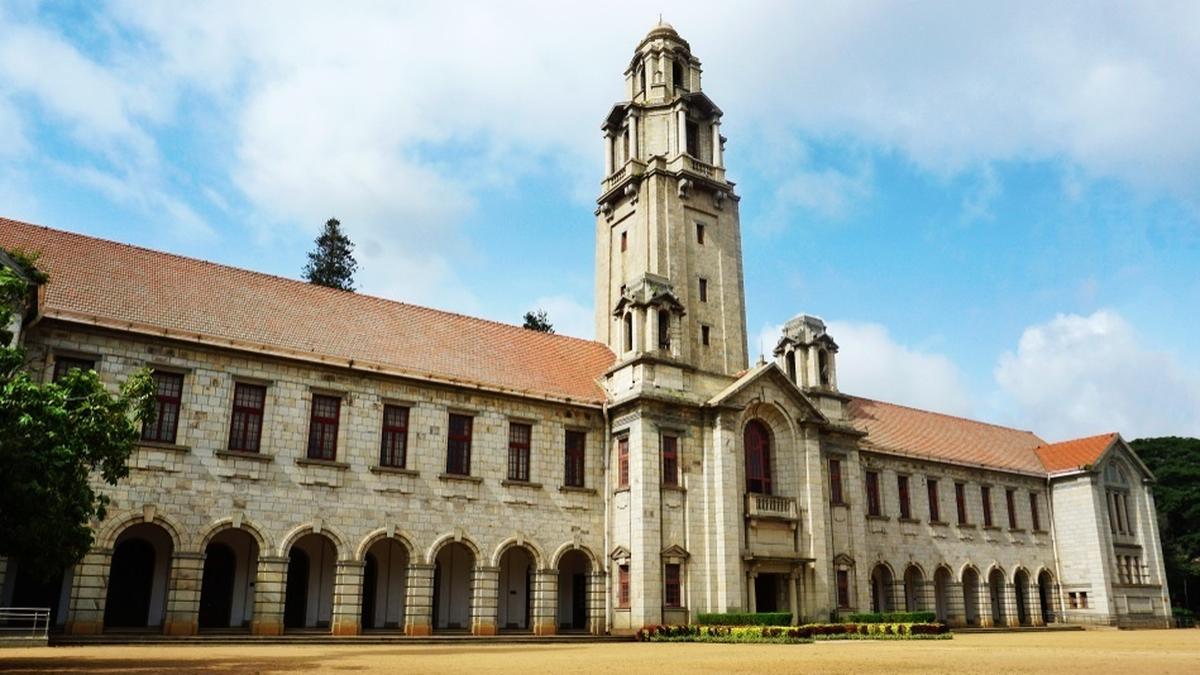
- 07 Jun 2025
In News:
Researchers at the Indian Institute of Science (IISc), Bengaluru have developed a novel vanadium-based nanozyme that effectively controls abnormal blood clotting by reducing reactive oxygen species (ROS). This innovation holds promise for managing life-threatening conditions like pulmonary thromboembolism (PTE) and ischemic stroke.
Scientific Background:
- Normal Blood Clotting: Platelets are specialized blood cells that form clots at injury sites through a process called haemostasis, involving activation by physiological chemicals like collagen and thrombin.
- Problem of Abnormal Clotting: In conditions like COVID-19 and PTE, oxidative stress increases, leading to elevated ROS levels. This causes hyperactivation of platelets, resulting in excessive clot formation (thrombosis) — a leading cause of death globally.
Nanozyme Innovation by IISc:
- What is a Nanozyme?
An engineered nanomaterial that mimics the action of natural enzymes, in this case, glutathione peroxidase, which neutralizes ROS.
- Material Used: Vanadium pentoxide (V?O?) nanozymes, particularly those with spherical morphology, were found to be the most efficient.
- Mechanism: The redox-active surface of vanadium nanozymes catalytically reduces ROS, preventing unwanted platelet aggregation.
Testing and Results:
- In vitro testing: Human blood platelets were activated with physiological agonists. Nanozymes were tested for their ability to curb excessive aggregation.
- In vivo testing (mouse model of PTE):
- Nanozyme injection led to reduced thrombosis.
- Improved survival rates without observable toxicity.
- Animals were monitored for 5 days post-treatment for health parameters.
Future Prospects:
- Researchers aim to test the nanozyme's potential against ischemic strokes, which also result from vascular blockages.
- Encouraging results with human platelets indicate the possibility of clinical trials in the near future.
Kerch Strait and Recent Developments
- 07 Jun 2025
In News:
Ukraine has claimed responsibility for a recent underwater explosion that damaged the Kerch Bridge, a critical transport link connecting mainland Russia to occupied Crimea. The attack underscores the strategic importance of the Kerch Strait in the ongoing Russia-Ukraine conflict.
Kerch Strait: Geographical and Strategic Overview
- Location: The Kerch Strait forms the only maritime passage between the Black Sea and the Sea of Azov.
- Geographical Boundaries:
- West: Kerch Peninsula (Crimea)
- East: Taman Peninsula (Russia)
- Width: Narrows to 3–5 km at its tightest point near the Chushka Spit.
- Nearby City: Kerch, located on the Crimean side, lies near the strait’s midsection.
- Strategic Importance:
- A vital shipping lane for transporting goods and military supplies.
- Gained heightened geopolitical importance after Russia's annexation of Crimea in 2014.
- Frequently features in Russia–Ukraine maritime tensions.
Kerch Strait Bridge (Crimean Bridge)
- Length: 19 km, making it the longest bridge in Europe.
- Completed: In 2018
- Connectivity: Includes dual road and railway tracks, linking the Russian mainland to Crimea.
- Symbolism: Considered a symbol of Russia’s control over Crimea post-2014 annexation.
- Strategic Use: Facilitates military logistics and civilian transit; crucial for sustaining Russian presence in Crimea.
Diphtheria Outbreak in Western Europe – 2022 Onwards
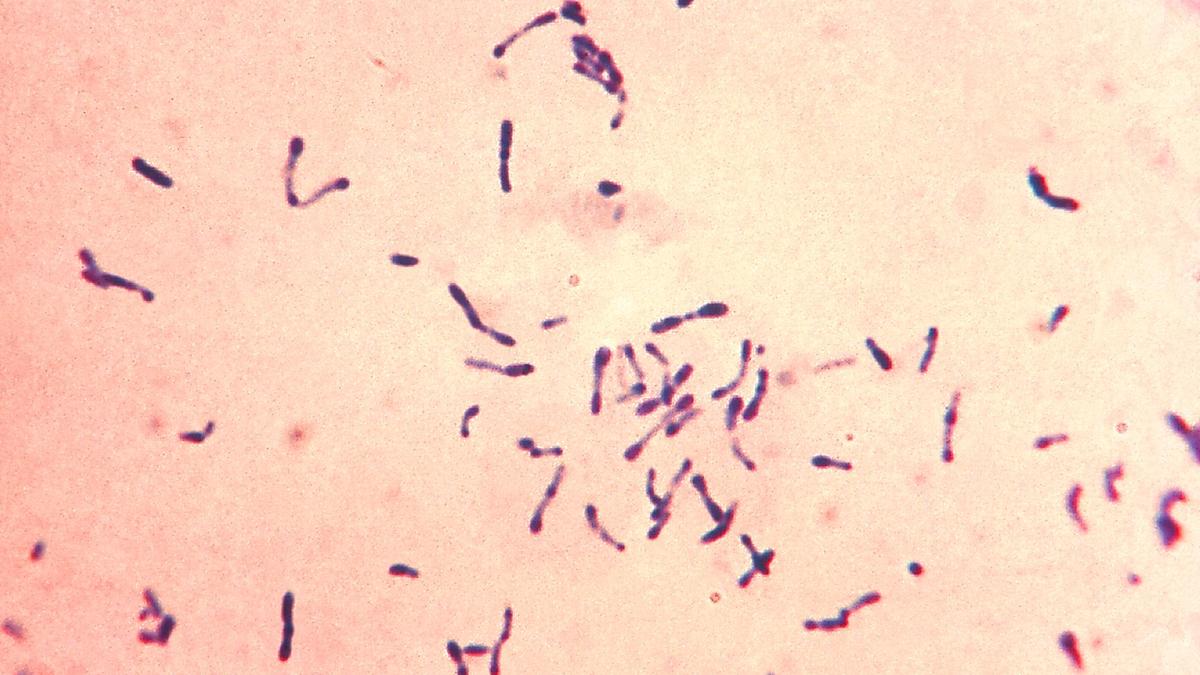
- 07 Jun 2025
In News:
Western Europe is experiencing its largest diphtheria outbreak in 70 years, with cases predominantly among vulnerable groups such as migrants and the homeless. The outbreak, which began in 2022, has raised concerns over disease surveillance, migrant healthcare, and immunisation coverage.
Key Facts from the Outbreak
- As per a study in the New England Journal of Medicine, 536 cases and three deaths have been reported across Europe since 2022.
- Most cases were found among young males (average age: 18) who had recently migrated, particularly from Afghanistan and Syria.
- 98% of strains exhibited close genetic similarities, suggesting a common transmission point during migration journeys or in accommodation facilities, not in the countries of origin.
- A genetic match between the 2022 strains and a recent 2025 case in Germany indicates that the bacteria is still circulating silently in the region.
Recommendations from Health Experts
- Enhance vaccination drives, particularly among high-risk and underserved populations.
- Improve awareness among healthcare providers, especially those working with migrants and the homeless.
- Ensure better access to antibiotics and diphtheria antitoxins.
- Strengthen disease surveillance and contact tracing mechanisms.
About Diphtheria
Feature Details
Cause Corynebacterium diphtheriae (produces a potent toxin)
Mode of Spread Respiratory droplets, contact with infected sores or ulcers
Affected Areas Primarily the respiratory tract, but also the skin in some cases
Symptoms Sore throat, fever, swollen lymph nodes, weakness; grey membrane in throat
Severe Impact Can lead to breathing difficulties, heart and kidney damage, and neurological issues if untreated
Treatment Diphtheria Antitoxin (DAT), antibiotics, and supportive care
Fatality Rate Up to 30% in unvaccinated individuals; higher in children
Prevention Vaccination (DPT/DTP) is the most effective preventive measure
Greater Flamingo Sanctuary
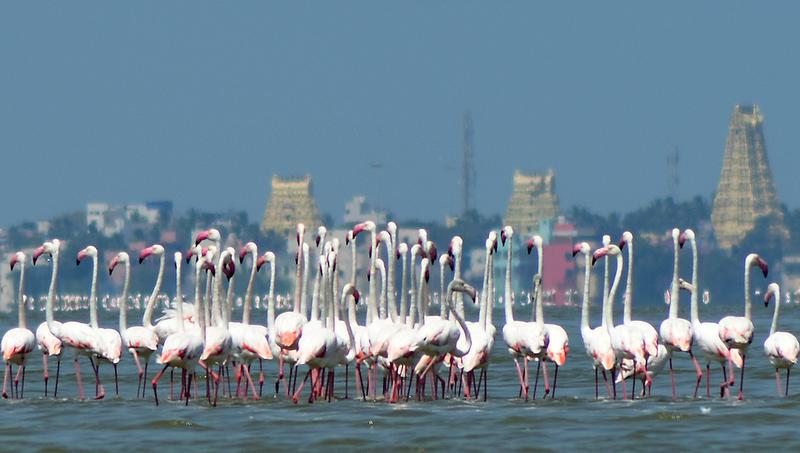
- 07 Jun 2025
In News:
On the occasion of World Environment Day 2025, the Tamil Nadu government officially declared the Greater Flamingo Sanctuary at Dhanushkodi, Ramanathapuram district, aiming to protect a vital stopover site for migratory birds along the Central Asian Flyway.
Key Highlights
What is it?
A newly notified wildlife sanctuary dedicated to safeguarding migratory wetland birds, especially the greater flamingo (Phoenicopterus roseus), in their natural resting and breeding habitat.
Location and Area:
- Located in Rameshwaram taluk, Ramanathapuram district, Tamil Nadu.
- Covers approximately 524.7 hectares of revenue and forest land.
- Lies within the Gulf of Mannar Biosphere Reserve, a globally recognized marine ecosystem.
Ecological Significance
- Functions as a critical site along the Central Asian Flyway, one of the key migratory bird routes.
- As per the 2023–24 Wetland Bird Survey, the region hosts 10,700+ wetland birds representing 128 species, including:
- Flamingos (greater and lesser)
- Herons, egrets, sandpipers, etc.
- The sanctuary harbours diverse ecosystems, such as:
- Mangroves (Avicennia, Rhizophora)
- Mudflats, marshes, sand dunes, and lagoons
- Nesting grounds for sea turtles and marine biodiversity
Conservation and Socioeconomic Benefits
- Strengthens coastal resilience by preventing erosion through natural mangrove buffers.
- Promotes responsible ecotourism, raising awareness of wetland and avian conservation.
- Supports local livelihoods via employment in conservation and tourism activities.
About the Greater Flamingo (Phoenicopterus roseus)
Attribute Details
Size 90–150 cm tall, long necks and legs
Coloration Pink hue from carotenoid-rich diet
Feeding Uses specialized downward-curved bill for filter feeding in shallow waters
Reproduction Builds cone-shaped mud nests, lays 1–2 eggs, both parents incubate
Chick Rearing Chicks are white and fed through regurgitation
Social Traits Highly gregarious, breeds in large colonies and flies in V-formations
Behavioral Note Often seen standing on one leg, possibly to conserve body heat
SEBI’s Operational Framework for ESG Debt Securities
- 07 Jun 2025
In News:
The Securities and Exchange Board of India (SEBI) has introduced a comprehensive operational framework for the issuance of Environmental, Social, and Governance (ESG) debt securities. This includes instruments such as social bonds, sustainability bonds, and sustainability-linked bonds, aiming to boost responsible financing in India.
Understanding ESG Debt Securities
Definition:
ESG debt securities are financial tools designed to raise capital specifically for projects that yield positive environmental, social, or governance (ESG) outcomes. These instruments are a key part of sustainable finance, with categories including:
- Social Bonds: Focused on projects with direct social impact (e.g., affordable housing, education).
- Sustainability Bonds: Target projects with both environmental and social objectives.
- Sustainability-Linked Bonds: Tied to specific ESG performance indicators or targets.
Salient Features:
- Funds raised must be used exclusively for eligible ESG-aligned projects.
- Bonds must be clearly labelled in line with the project's primary focus.
- Compliance with global ESG norms and standards is mandatory.
- Verification or certification by an independent third-party is required.
- The framework applies to both public and private debt offerings.
Highlights of SEBI’s Framework
1. Classification Guidelines: Issuers are required to categorize their bonds—green, social, or sustainability—based on the core objective of the projects being financed. This ensures transparent communication of the bond's intended impact.
2. Disclosure Norms:
- At the Issuance Stage: Offer documents must detail project eligibility, selection methodology, and a tentative allocation between financing new initiatives and refinancing existing ones.
- Post-Issuance: Issuers must provide annual updates on fund deployment and report impact metrics to demonstrate accountability and transparency.
3. Independent Assurance: Issuers must engage accredited third-party entities to validate the alignment of bonds with ESG principles, thereby enhancing investor confidence and market integrity.
4. Monitoring and Evaluation: There is an obligation for ongoing impact assessment. Issuers must ensure the projects funded effectively contribute to reducing environmental degradation or addressing social challenges.
5. Scope and Enforcement: The framework will come into effect from June 5, 2025, and is aligned with international ESG standards to facilitate greater inflow of sustainable and ethical investments.
Significance for India: This move marks a significant step in mainstreaming ESG finance in India. It aims to improve transparency, attract climate-conscious capital, and reinforce India’s commitment to sustainable development.
Waste Picker Enumeration App

- 06 Jun 2025
In News:
On World Environment Day 2025, the Ministry of Social Justice and Empowerment (MoSJE) launched the Waste Picker Enumeration App under the NAMASTE Scheme, reaffirming the government’s commitment to environmental justice and the dignity of sanitation workers.
What is the NAMASTE Scheme?
- Full Form: National Action for Mechanised Sanitation Ecosystem
- Type: Central Sector Scheme (CSS)
- Launched: July 2023
- Nodal Ministry: Ministry of Social Justice and Empowerment (MoSJE)
- Partner Ministry: Ministry of Housing and Urban Affairs (MoHUA)
- Implementing Agency: National Safai Karamcharis Finance & Development Corporation (NSKFDC)
- Objective: To formalize and rehabilitate sanitation workers and integrate them into formal systems through skilling, social security, and mechanization of hazardous cleaning work.
- Inclusion of Waste Pickers (From June 2024): The NAMASTE Scheme expanded its scope in June 2024 to include Waste Pickers, recognizing their critical role in the circular economy and solid waste management.
Waste Picker Enumeration App – Key Highlights
- Purpose: Digital platform for profiling 2.5 lakh waste pickers across India.
- Recognition: Provides occupational photo ID cards and formal identity to waste pickers.
- Social Security:
- Health coverage under Ayushman Bharat–PM-JAY
- Distribution of PPE kits and seasonal safety gear
- Livelihood & Skilling:
- Skill development programs
- Capital subsidies for waste collection vehicles
- Empowerment:
- Strengthening of Waste Picker Collectives
- Management of 750 Dry Waste Collection Centres (DWCCs) in urban areas
Udhampur-Srinagar-Baramulla Rail Link (USBRL)
- 06 Jun 2025
In News:
The Udhampur-Srinagar-Baramulla Rail Link (USBRL) is a transformative 272-km railway project aimed at connecting the Kashmir Valley to the Indian Railways network. With Prime Minister Narendra Modi inaugurating the Chenab Rail Bridge and flagging off Vande Bharat trains in June 2025, the project nears full operationalization.
Key Details:
Chenab Rail Bridge – World’s Highest Railway Arch Bridge
- Height: 359 metres above riverbed (taller than the Eiffel Tower).
- Length: 1,315 metres; Arch span: 467 metres.
- Status: Highest railway arch bridge in the world.
- Engineering feat in Reasi district, Jammu and Kashmir.
Strategic All-Weather Connectivity
- Reduces dependency on the Srinagar-Jammu highway, which is prone to closure due to snow and landslides.
- Ensures year-round transportation and supply lines.
Enhanced Military Mobility
- Enables rapid movement of troops and equipment to border regions.
- Crucial for national security due to the region's proximity to international borders.
- Designed to withstand blasts and harsh weather.
Anji Bridge – India’s First Cable-Stayed Rail Bridge
- Length: 473 metres; Height: 331 metres.
- Located on the Katra-Banihal section.
- Supported by 48 cables, suitable for rugged Himalayan terrain.
Vande Bharat Connectivity
- High-speed trains introduced on Katra–Srinagar route.
- Improves passenger comfort and reduces travel time.
Economic Boost via Trade
- Improves market access for Kashmiri products: apples, saffron, handicrafts, and dry fruits.
- Facilitates faster freight movement, integrating the region into national trade networks.
Tourism Promotion
- Easier access to religious and scenic sites.
- Expected to boost tourism post disruptions (e.g., Pahalgam incident).
- Cheaper and faster rail travel enhances domestic footfall.
Engineering Resilience
- Chenab Bridge:
- Blast-resistant (withstands up to 40 kg TNT).
- Wind resistant (up to 260 kmph).
- Seismic-resilient with a 120-year design life.
- Symbol of India’s capability in building infrastructure in high-risk zones.
Time Efficiency
- Travel time between Jammu and Srinagar will reduce from 6 hours (by road) to 3–3.5 hours (by rail).
- Facilitates emergency services, logistics, and routine travel.
National Integration and Inclusion
- 943 bridges, 36 tunnels covering 119 km — overcoming Himalayan terrain challenges.
- Integrates remote districts of Jammu & Kashmir into India's railway grid.
- Promotes inclusive development and better governance outreach.
Ayush Nivesh Saarthi
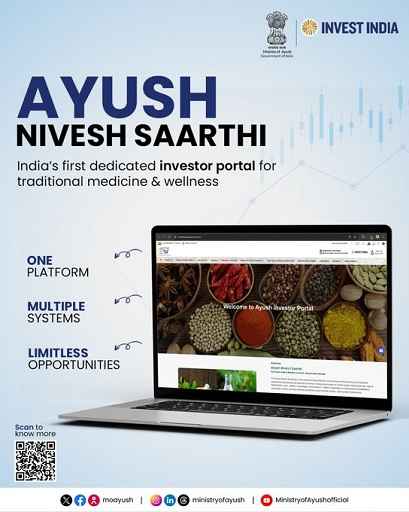
- 06 Jun 2025
In News:
Recently, the Government of India launched the ‘Ayush Nivesh Saarthi’ portal—a digital initiative aimed at positioning India as a global hub for traditional medicine investment. The launch took place during the Ayush Stakeholder/Industry Interaction Meet held at Vanijya Bhawan, New Delhi.
- Developed by: Ministry of Ayush in collaboration with Invest India
Objective of the Portal
- To facilitate investment in India’s Ayush sector through a dedicated digital interface.
- To bring together policy frameworks, incentives, investment-ready projects, and real-time facilitation.
- To strengthen India’s position as a global investment destination for traditional systems of medicine.
Portal Features
- Investor-centric platform integrating:
- Investment promotion schemes
- Real-time data and policy information
- Single-window facilitation
- Supports both domestic and foreign investors
- Offers transparency, ease of access, and sectoral insights
Sectoral Significance
- Growth Rate: The Ayush sector recorded an annual growth rate of 17% (2014–2020).
- Medicinal Wealth: India is home to 8,000+ medicinal plant species.
- Global Recognition: Ayush is among the top five health services in India and contributes significantly to the USD 13 billion Medical Value Travel (MVT) sector.
Investment Facilitation
- 100% Foreign Direct Investment (FDI) is permitted in the Ayush sector through the automatic route.
- The portal aims to attract FDI and empower entrepreneurs through digital governance and investment transparency.
EnviStats India 2025
- 06 Jun 2025
In News:
India's annual mean temperature rise up from 25.05°C in 2001 to 25.74°C in 2024, Electricity generation from renewable sources increased more than three times in 10 years.
- Released by: Ministry of Statistics and Programme Implementation (MoSPI) on June 5, 2025, on the occasion of World Environment Day
- Framework Used: UN's Framework for the Development of Environment Statistics (FDES 2013)
Key Highlights:
Climate Trends
- Annual Mean Temperature rose from 25.05°C (2001) to 25.74°C (2024).
- 2024 recorded as India’s hottest year since 1901; also, globally the hottest year in 175 years.
- Annual Minimum and Maximum Temperatures (2021–24):
- Minimum: 19.32°C → 20.24°C
- Maximum: 30.78°C → 31.25°C
Rainfall Patterns
- Rainfall shows seasonal concentration between June–September, with signs of shifting patterns such as late onset or extended rains into October.
- No clear long-term trend, reflecting erratic monsoonal behaviour.
Energy Generation
Thermal & Renewable Power (2013–14 to 2023–24)
- Thermal: 7.92 lakh GWh → 13.26 lakh GWh
- Renewable: 65,520 GWh → 2.25 lakh GWh, over 3x increase in renewable energy output in a decade.
Biodiversity and Faunal Statistics
Faunal Diversity
- Global Faunal Species: 16,73,627
- India's Share: 1,04,561 species
- Habitat-specific Species in India:
- Soil Ecosystem: 22,404
- Freshwater Ecosystem: 9,436
- Mangrove System: 5,023
- Estuarine Ecosystem: 3,383
- Marine Fauna (India): 20,613 out of global 2,47,605
Fisheries Production
Inland vs. Marine Fish (2013–14 to 2023–24)
- Inland Fish Production: 61 lakh tonnes → 139 lakh tonnes
- Marine Fish Production: 34 lakh tonnes → 45 lakh tonnes
Public Expenditure (2021–22)
- Environment Sustainability Sector: ?2,433 crore (highest among sectors)
- Conservation of Natural Resources: Increasing trend
- Agro-Forestry: Lowest allocation
New Data indicators introduced
- Ramsar sites
- Access to sanitation
- Transport infrastructure
- Electricity access
Bar Council of India permits Foreign Lawyers in India
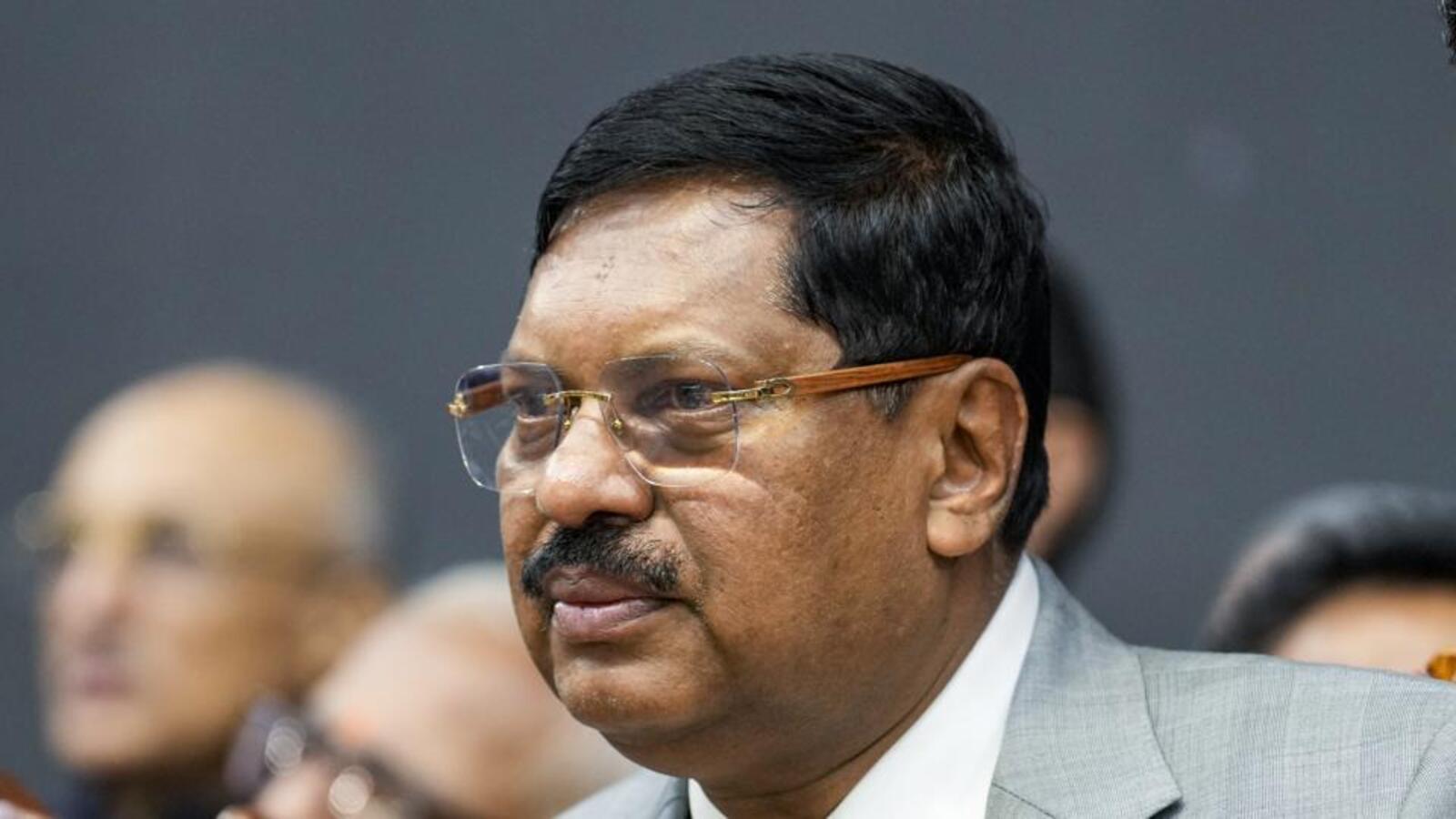
- 06 Jun 2025
In News:
Chief Justice of India (CJI) B.R. Gavai lauded the Bar Council of India (BCI) for amending rules to allow foreign legal professionals and law firms to advise on non-litigious matters in India.
Key Features of BCI’s Reform (2024 Update to 2022 Rules):
- Scope of Practice for Foreign Lawyers:
- Permitted: Advisory roles in foreign law, international law, and arbitration.
- Prohibited: Appearing in Indian courts/tribunals or advising on Indian law.
- Nature of Work Allowed: Only non-litigious activities.
Rationale Behind the Reform:
- Boosting Arbitration Quality:
- India ranks 5th globally in arbitration case volume (ICC 2024 Report).
- Reform aimed at enhancing arbitration standards via foreign expertise.
- Facilitating Legal Reciprocity:
- Enables Indian lawyers to access international legal markets.
- Promotes mutual recognition and cooperation with foreign bar associations.
- Supporting Institutional Arbitration:
- Benefits centres like:
- Mumbai Centre for International Arbitration (MCIA)
- Delhi International Arbitration Centre (DIAC)
- India International Arbitration Centre (IIAC)
- Benefits centres like:
- Filling Talent Gaps:
- Expertise needed in fields such as:
- Climate litigation
- Technology and data law
- Cross-border commercial arbitration
- Expertise needed in fields such as:
Challenges and Concerns:
- Market Displacement Fears: Indian lawyers worry about reduced share in arbitration and consultancy services.
- Reciprocity Barriers: Unequal treatment in countries with restrictive legal entry norms.
- Uneven Playing Field: Foreign firms possess larger capital, advanced tech, and international clientele.
- Regulatory Oversight Needed: BCI must ensure strict compliance to maintain sovereignty of Indian legal framework.
Significance of the Reform:
- Positioning India as an Arbitration Hub: Enhances India's global legal profile, especially in infrastructure and trade.
- Strengthening Indo-UK Legal Cooperation: Reform highlighted during Indo-UK Arbitration Conference, deepening bilateral ties.
- Modernizing Legal Sector: Brings global legal best practices and innovation to India.
- Upholding Indian Legal Integrity: Complies with the Advocates Act, 1961 – no foreign practice in Indian law.
- Opportunities for Indian Lawyers Abroad: Reciprocity clause allows dual practice in India and foreign jurisdictions.
C CARES Version 2.0
- 05 Jun 2025
In News:
The Ministry of Coal recently launched C CARES Version 2.0, a significant upgrade to the Coal Mines Provident Fund Organization’s (CMPFO) digital platform. The new system aims to enhance transparency, efficiency, and accessibility in provident fund (PF) and pension disbursement for coal sector workers.
Key Features of C CARES Version 2.0
- Developed by the Centre for Development of Advanced Computing (C-DAC) in collaboration with the State Bank of India (SBI).
- Provides a unified digital interface for coal workers, coal companies, and CMPFO.
- Enables real-time claim tracking, automated ledger updates, and direct benefit transfers to workers’ bank accounts.
- Includes a mobile application for CMPF members, offering:
- PF balance checks
- Profile viewing
- Grievance redressal
- Claim status tracking
- A chatbot assistant for easy navigation
Benefits to Stakeholders
- For Workers: Faster claim settlement, improved access, and reduced delays in PF/pension disbursement.
- For Coal Companies and CMPFO:
- A prescriptive dashboard to generate custom reports.
- Analytics to track settlement trends.
- Support for data-driven decision-making.
About CMPFO
- Full Form: Coal Mines Provident Fund Organization
- Established: 1948
- Parent Ministry: Ministry of Coal
- Function: Administration of PF and pension schemes for coal sector employees.
- Coverage:
- Serves around 3.3 lakh PF subscribers
- Supports over 6.3 lakh pensioners
Significance
Union Minister for Coal and Mines G. Kishan Reddy launched the portal on June 4, 2025, stating that it aligns with the Government's vision of “Minimum Government, Maximum Governance” under the Digital India initiative. The platform strengthens social security delivery for coal workers and brings administrative reform to a critical sector of the economy.
International Institute of Administrative Sciences (IIAS)
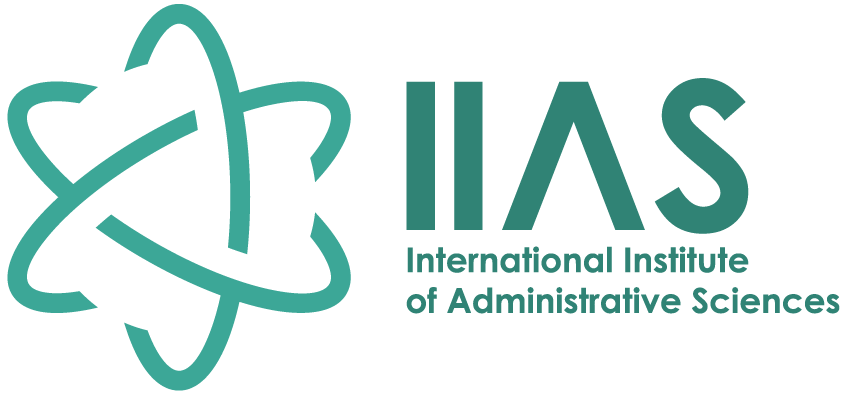
- 05 Jun 2025
In News:
India has secured the Presidency of the International Institute of Administrative Sciences (IIAS) for the term 2025–2028, marking a historic first for the country since becoming a member in 1998. The victory affirms India’s growing influence in the field of global public administration.
About IIAS
- Established: 1930
- Headquarters: Brussels, Belgium
- Nature: A global federation of 31 Member States, 20 National Sections, and 15 Academic Research Centres, dedicated to collaborative scientific research in public administration.
- Core Objectives:
- Promote collaboration on public governance solutions.
- Accredit academic and professional training programs in public management.
- Disseminate research and best practices in administrative sciences.
Although not formally affiliated with the United Nations, IIAS actively participates in UN mechanisms like the Committee of Experts on Public Administration (CEPA) and the UN Public Administration Network (UNPAN).
India’s Role and Election to Presidency
- India has been a Member State of IIAS since 1998, represented by the Department of Administrative Reforms and Public Grievances (DARPG).
- For the 2025–2028 term, Prime Minister Narendra Modi nominated V. Srinivas, Secretary, DARPG, as India's candidate in November 2024.
- Election Process:
- Hearings were held at Bharat Mandapam, New Delhi in February 2025.
- Four countries—India, South Africa, Austria, and Bahrain—submitted nominations.
- The final vote on June 3, 2025, saw India and Austria advance to the final round.
- Out of 141 votes, India secured 87 votes (61.7%), while Austria received 54 votes (38.3%).
Significance for India
- This marks India’s first Presidency of IIAS.
- The victory enhances India's position in global governance and showcases its administrative capabilities on an international platform.
- It also aligns with India’s focus on reforming and modernizing public administration through digital governance and institutional capacity-building.
Kichan and Menar Wetlands
- 05 Jun 2025
In News:
Recently, the Union Ministry of Environment announced that Kichan (Phalodi) and Menar (Udaipur) wetlands in Rajasthan have been recognized as Ramsar Sites, bringing India’s total to 91 Ramsar-designated wetlands—the highest in Asia.
About Menar Wetland:
- A freshwater monsoon wetland complex in Udaipur district, Rajasthan.
- Formed by three primary ponds: Braham Talab, Dhand Talab, and Kheroda Talab; the latter two are connected by flooded agricultural land during the monsoon.
- Habitat for endangered and migratory birds such as:
- Critically Endangered: White-rumped vulture (Gyps bengalensis), Long-billed vulture (Gyps indicus)
- Other species: Himalayan griffon, Egyptian vulture, Dalmatian pelican, Ferruginous pochard, Black-tailed godwit
- Home to over 70 plant species, including mango trees (Mangifera indica) that host colonies of Indian flying foxes (Pteropus giganteus).
- Community-led conservation: Menar village residents prevent poaching and fishing, earning it the title "Bird Village".
About Kichan Wetland:
- Located in Phalodi, Jodhpur, in the northern Thar Desert of Rajasthan.
- Comprises:
- Ratri Nadi (river)
- Vijaysagar Talab (pond)
- Riparian and scrub habitats
- Notable for supporting drought-resistant flora and over 150 bird species.
- Globally known for hosting over 22,000 migratory demoiselle cranes (Anthropoides virgo) each winter.
- A hub for birdwatchers, tourists, scientists, and students.
Ramsar Convention Overview:
- An intergovernmental treaty for the conservation of wetlands, signed in 1971 in Ramsar, Iran.
- Headquartered in Gland, Switzerland.
- Wetlands listed under the convention are known as Ramsar Sites—of international importance.
- Member countries (Contracting Parties) commit to identifying and protecting these wetlands.
World Wealth Report 2025
- 05 Jun 2025
In News:
The World Wealth Report 2025, released by the Capgemini Research Institute, highlights a significant surge in global and Indian high-net-worth individual (HNWI) wealth. The report covers 71 countries, representing over 98% of global Gross National Income (GNI) and 99% of world stock market capitalization.
India’s HNWI Landscape in 2024
- HNWI Wealth Growth: India witnessed an 8.8% increase in HNWI wealth in 2024.
- Total Millionaires: The country had 378,810 HNWIs by the end of 2024, with a cumulative wealth of $1.5 trillion.
- Millionaires Next Door: Among them, 333,340 individuals fell under the "Millionaires Next Door" category (investable assets between $1M–$5M), holding $628.93 billion in wealth.
- Ultra HNWIs: India was home to 4,290 Ultra-HNWIs (assets ≥ $30M), with combined assets worth $534.77 billion.
Global Trends in HNWI Wealth
- Global Growth: HNWI population worldwide rose by 2.6%, driven largely by a 6.2% rise in Ultra-HNWI numbers.
- Investment Trends: Alternative investments (private equity, cryptocurrencies) formed 15% of HNWI portfolios, signaling diversification beyond traditional assets.
- Top Contributors:
- United States added 562,000 millionaires, recording a 7.6% rise, reaching a total of 7.9 million HNWIs.
- The U.S. also holds 36% of centi-millionaires (net worth ≥ $100M) and 33% of the world's billionaires.
- India and Japan saw 5.6% growth, while China recorded a 1.0% decline in HNWI population.
Shifting Dynamics in Wealth Management
- A massive “great wealth transfer” is underway globally.
- 81% of global next-gen HNWIs and 85% of Indian next-gen HNWIs plan to switch wealth management (WM) firms within 1–2 years of inheritance.
- Key reasons include:
- Lack of preferred channel services (51%)
- Ineffective digital transaction tools (41%)
- Digital Transformation Need: The evolving expectations of next-gen clients are pushing firms toward AI-enabled advisory models and advanced digital infrastructure.
Offshore Wealth Allocation
- By 2030, 98% of Indian next-gen HNWIs plan to increase their offshore assets by over 10%.
- Motivations include:
- Superior investment options (55%)
- Better wealth management services (65%)
- Improved market connectivity (54%)
- Tax efficiency and political-economic stability (49%)
- Motivations include:
World Environment Day 2025
- 05 Jun 2025
In News:
Every year on June 5, people across the globe unite to celebrate World Environment Day, an initiative led by the United Nations Environment Programme (UNEP).
Key Highlights:
- Observed on: June 5 annually
- Initiated by: United Nations Environment Programme (UNEP)
- First celebrated: 1973 (following the 1972 Stockholm Conference on the Human Environment)
- Objective: Promote global awareness and action for environmental protection
Theme for 2025: "Beat Plastic Pollution"
- Focuses on the escalating crisis of plastic pollution and its adverse impact on ecosystems, wildlife, and human health.
- Highlights the need to transition away from single-use plastics, promote sustainable consumption, and adopt eco-friendly alternatives.
Key Statistics:
- Plastic production: Increased from 2 million tonnes (1950) to 430 million tonnes (2025)
- Marine pollution:19–23 million tonnes of plastic enter aquatic ecosystems annually
- Microplastics detected in oceans, mountains, and the human body
Host Country for 2025: Republic of Korea
- Chosen for its leadership in green innovation and sustainable practices.
- Initiatives include:
- Advanced waste segregation and recycling systems
- Bans on single-use plastics in major outlets
- Promotion of tech-driven eco-solutions
By hosting, South Korea aims to showcase scalable models for combating plastic pollution globally.
Historical Background
- Stockholm Conference 1972 laid the foundation for modern environmental governance.
- UNEP assigns a theme and host country annually to align global action.
- Over 150 countries now participate through:
- Clean-up drives
- Tree plantation campaigns
- Policy forums
- Environmental education programs
Significance
World Environment Day plays a vital role in:
- Raising awareness on climate change, pollution, deforestation, and sustainability
- Encouraging individual and community-level action
- Facilitating policy dialogue and regulatory reform
- Mobilizing youth leadership in environmental movements
UMEED Portal and Waqf (Amendment) Act, 2025
- 04 Jun 2025
In News:
The Government of India will launch the UMEED Portal to digitize and streamline the registration and management of Waqf properties under the Waqf (Amendment) Act, 2025.
What is the UMEED Portal?
- Full Form: Unified Waqf Management, Empowerment, Efficiency, and Development
- Purpose: A centralized digital platform to register, regulate, and monitor Waqf properties nationwide.
- Nodal Ministry: Ministry of Minority Affairs, in collaboration with State Waqf Boards and judicial authorities.
Objectives:
- Ensure transparent, efficient, and time-bound registration of Waqf assets.
- Digitally empower stakeholders with access to legal rights, obligations, and procedural information.
- Resolve long-pending disputes and enhance accountability in Waqf administration.
- Provide real-time data, including geo-tagged property mapping, to support policymaking.
Key Features:
- Time-Bound Registration:All Waqf properties must be registered within six months of the portal's launch.
- Geo-Tagging and Digital Mapping:Properties must be geo-tagged and include precise dimensions for registration.
- Dispute Resolution Mechanism:Properties not registered by the deadline will be automatically flagged as disputed and referred to Waqf Tribunals for adjudication.
- Legal Support Services:The portal offers awareness tools regarding the amended Act and clarifies legal entitlements.
- Women-Centric Provision:Properties solely in women’s names cannot be declared as Waqf. However, women, children, and the economically weaker sections (EWS) remain eligible beneficiaries.
About Waqf and Recent Legal Reforms:
- What is Waqf?
A Waqf is a permanent charitable endowment under Islamic law, where assets (usually land) are donated for religious or public welfare purposes. Such property is inalienable and cannot be sold, inherited, or transferred.
- Waqf (Amendment) Act, 2025:
- Digital Mandate: Mandatory online registration of all Waqf properties within 6 months.
- Judicial Oversight:Introduced provision for appealing Waqf Tribunal decisions in the High Court within 90 days.
- Tribunal Empowerment:Unregistered properties after the deadline will be treated as disputed and decided by Waqf Tribunals.
- Government Monitoring:Enhanced role of State Waqf Boards in ensuring compliance, registration, and dispute handling.
Significance:
- Aims to reduce litigation, encroachments, and opacity in Waqf land management.
- Bridges the gap between community welfare and digital governance.
- Strengthens institutional mechanisms for protecting religious endowments and improves access to justice.
Seva Se Seekhen Campaign
- 04 Jun 2025
In News:
The Government of India has launched the ‘Seva Se Seekhen’ (Learn by Doing) campaign to empower youth through hands-on experience at Jan AushadhiKendras (JAKs). Starting from June 1, 2025, this initiative aims to blend experiential learning with public health outreach.
About the Campaign:
- Launched in: 2025
- Nodal Ministries:
- Ministry of Youth Affairs and Sports
- Department of Pharmaceuticals, Ministry of Chemicals and Fertilizers
- Framework:Part of the National Youth Development Framework, aligning youth engagement with grassroots service.
Objectives:
- Provide experiential learning opportunities in real-world public service settings.
- Raise awareness about generic medicines and enhance health literacy.
- Equip youth with technical and soft skills in areas such as inventory, logistics, customer service, and communication.
- Foster values such as discipline, empathy, and civic responsibility among the youth.
Key Features:
- Nationwide Implementation:
- Five youth volunteers per district will be placed across five Jan AushadhiKendras.
- Covers all states and Union Territories.
- Volunteer Sources:Participants are selected from:
- MY Bharat
- National Service Scheme (NSS)
- Pharmacy colleges
- Other youth-focused platforms
- Duration:15-day structured engagement, including guided tasks and learning outcomes.
Roles and Responsibilities of Volunteers:
- Support daily functioning and customer services at JAKs.
- Assist in medicine inventory and logistics management.
- Promote generic medicine awareness among the public.
- Participate in community health outreach activities.
- Observe backend processes like supply chains and stock maintenance.
Key Benefits for Youth:
- Practical exposure to pharmacy operations and public health service.
- Skills in record-keeping, inventory handling, and basic operations.
- Development of employability and customer interaction skills.
- Insights into affordable healthcare delivery under schemes like Pradhan Mantri Bhartiya JanaushadhiPariyojana (PMBJP).
Operation Spider’s Web
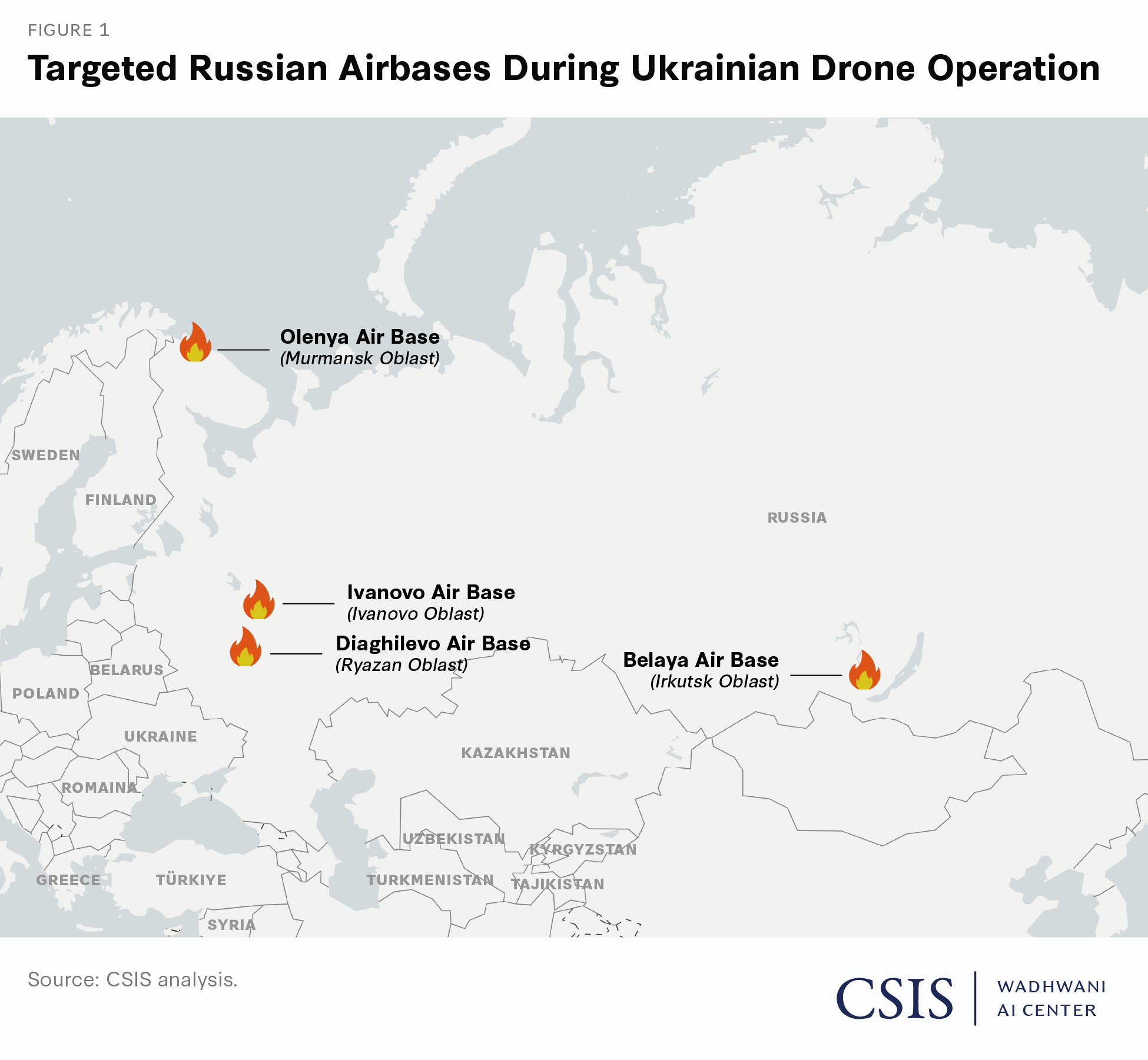
- 04 Jun 2025
In News:
On June 1, 2025, Ukraine executed Operation Spider’s Web, its most extensive drone-based military strike against Russia to date. The attack destroyed an estimated $7 billion worth of Russian aircraft, including approximately 34% of Russia’s strategic bomber fleet. The operation occurred just before the second round of peace talks between the two countries in Istanbul.
Key Highlights:
- Nature of Operation:A high-precision, long-range drone strike aimed at crippling Russia’s strategic air power, especially bombers capable of launching cruise missiles and nuclear warheads.
- Planning and Execution:
- Orchestrated over 18 months by the Security Service of Ukraine (SBU).
- 117 explosive-laden drones were deployed simultaneously.
- Drones were concealed in wooden sheds on civilian trucks, enabling stealth transport across vast distances.
- Once positioned, they were remotely launched, surprising Russian air defences.
- Airbases Targeted:The operation struck five major Russian airbases:
- Belaya (Irkutsk)
- Dyagilevo (Ryazan)
- Ivanovo Severny
- Olenya (Murmansk)
- Ukrainka
- Geographic Reach:Some drone targets were over 4,300 km from the front lines, marking the deepest Ukrainian strike inside Russian territory.
Strategic and Political Context:
- The drone strike came hours after Russia's Iskander-M missile attack on a Ukrainian military training centre in Dnipropetrovsk, which killed 12 soldiers and injured over 60.
- Ukrainian Major General MykhailoDrapatyi resigned, accepting personal responsibility for the missile casualties.
- Ukrainian President Volodymyr Zelenskyy hailed Operation Spider’s Web as a “brilliant success,” showcasing Ukraine’s evolving tactical capabilities.
- The operation served to strengthen Ukraine’s negotiating position ahead of the June 2 Istanbul peace talks.
Peace Negotiation Backdrop:
- The Istanbul talks followed an earlier round that resulted in the largest prisoner exchange since the start of the war but lacked a concrete ceasefire plan.
- Ukraine is expected to propose:
- A 30-day ceasefire
- Mutual prisoner release
- A high-level summit between Presidents Zelenskyy and Putin
- However, Russia has reportedly rejected all ceasefire proposals and has not submitted a formal response.
Wider Conflict Situation:
- As of late May 2025, Ukraine has lost around 18% of its territory to Russian control.
- Meanwhile, Russian forces continue their advance, recently capturing a village in Ukraine’s northern Sumy region.
Caspian Gull (Laruscachinnans)
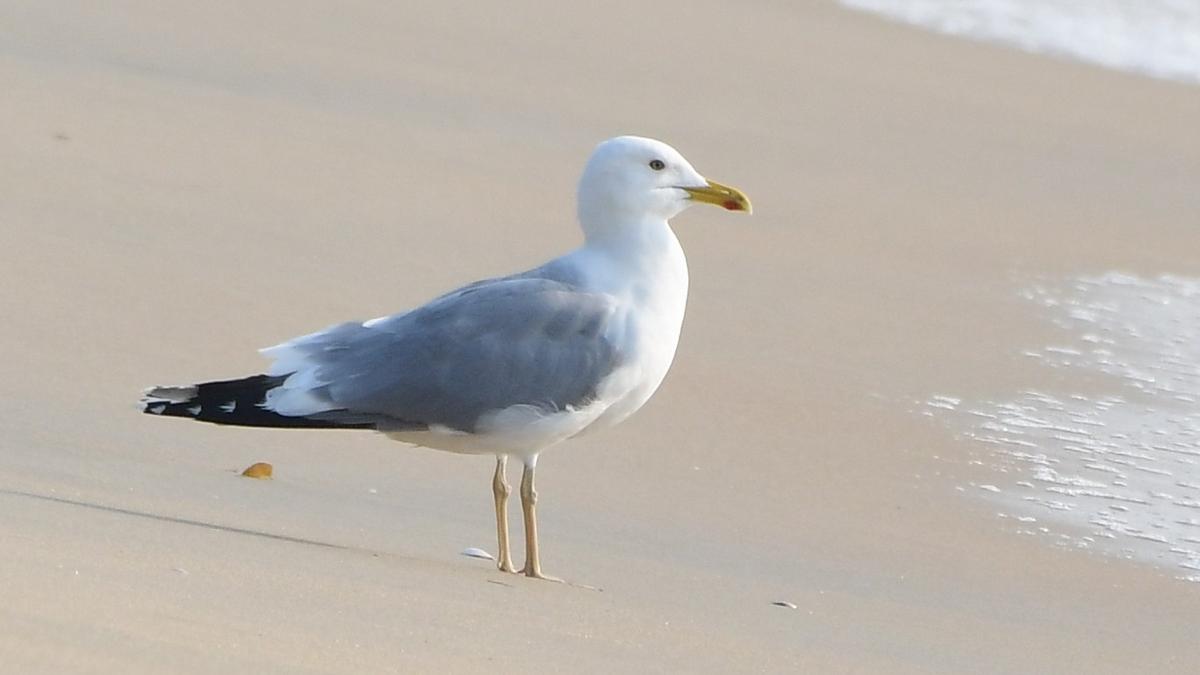
- 04 Jun 2025
In News:
In a significant ornithological development, the Caspian Gull, one of the rarest gull species to be recorded in India, was positively identified five years after being sighted at Kappad Beach, Kozhikode, Kerala. This marks the first confirmed sighting of the species in Kerala, and only the second in southern India.
Discovery and Identification:
- Ornithologist Abdulla Paleri first spotted the bird in February 2020 but took five years to confirm its identity due to its close resemblance to the more commonly seen Steppe Gull.
- The Caspian Gull differs subtly in features such as head and beak shape, posture, wing pattern, and leg morphology.
- Images were shared with international experts and on the eBird platform, where ornithologists Oscar Campbell and Hans Larsson confirmed the identification. The sighting has remained unchallenged since.
About Caspian Gull (Laruscachinnans):
- A monotypic, large, white-headed gull species, considered rare in India.
- Regularly breeds in Central Asia, particularly in steppe and semi-desert habitats with lakes, rivers, and reservoirs.
- Nesting usually occurs on flat, low-lying areas near water bodies, often surrounded by reedbeds.
- The species feeds on fish, insects, molluscs, and other invertebrates.
Migration Pattern:
- It migrates from the Black Sea and Caspian Sea region to southern and eastern Kazakhstan, western China, and parts of South Asia during winter.
- Traditionally winters in the eastern Mediterranean, Persian Gulf, and western India (like Gujarat).
- Increasingly, small populations are dispersing into Europe, including Sweden, Norway, and Denmark.
- The Kozhikode gull is believed to be a straggler—a bird that deviates from its usual migratory route.
Conservation Status:
- IUCN Red List:Least Concern, Despite its rarity in India, the species is not globally threatened.
BharatGen
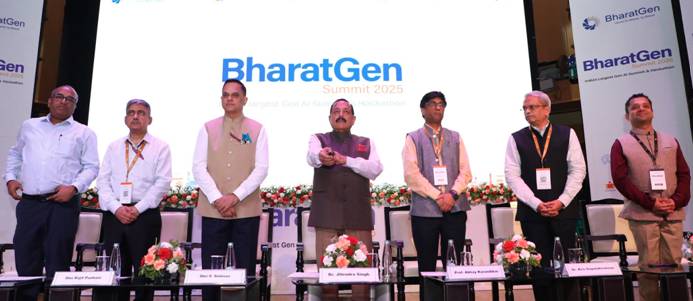
- 04 Jun 2025
In News:
Union Minister Dr. Jitendra Singh launched BharatGen, India’s first indigenously developed, government-funded Multimodal Large Language Model (LLM) at the BharatGen Summit 2025, marking a significant step in India’s AI innovation landscape.
About BharatGen:
- BharatGen is a Multimodal LLM designed to support 22 Indian languages and various content formats—text, speech, and image.
- Developed under the National Mission on Interdisciplinary Cyber-Physical Systems (NM-ICPS) and implemented by the TIH Foundation for IoT and IoE at IIT Bombay.
- Supported by the Department of Science and Technology (DST), it is a collaborative effort involving premier academic institutions, researchers, and innovators.
Key Features:
- Multilingual and multimodal capabilities (text, voice, image inputs).
- Open-source platform to encourage accessible innovation.
- Trained on Indian datasets to reflect Indian linguistic and cultural diversity.
- Integrated applications across critical sectors like healthcare, education, governance, and agriculture.
- Aims to deliver region-specific AI solutions rooted in Indian values and societal contexts.
Implementation Mechanism:
- Executed through 25 Technology Innovation Hubs (TIHs) across India.
- Four of these TIHs have been upgraded to Technology Translational Research Parks (TTRPs) for real-world deployment.
- Guided by four pillars: technology development, entrepreneurship, human resource development, and international collaboration.
First-Person View (FPV) Drones
- 03 Jun 2025
In News:
Recently, Ukraine conducted a major drone strike on Russia, reportedly destroying over 40 aircraft using First-Person View (FPV) drones—marking one of the deepest strikes into Russian territory since the start of the conflict in 2022. This highlights the growing role of FPV drones in modern asymmetric warfare.
What are FPV Drones?
First-Person View (FPV) drones are unmanned aerial vehicles (UAVs) that allow remote pilots to view the drone’s surroundings through a camera mounted on the drone. The live feed can be transmitted to:
- Specialized goggles
- Smartphones
- Other display screens
This immersive view enables highly precise navigation and control.
Key Features and Technologies
- GPS-Independent Navigation: Operates effectively even when GPS signals are jammed or unavailable.
- SmartPilot System: Uses visual-inertial navigation by interpreting camera data to assess the drone's position and orientation.
- LiDAR Integration: Enhances terrain mapping and obstacle detection in complex environments.
- Low Cost: A functional FPV drone can cost as little as $500, making them highly affordable compared to traditional weapon systems.
Operational Use in Combat
- Reconnaissance First: Typically, a long-range reconnaissance drone is used to identify the target area before deploying FPV drones for strikes.
- Deep Strike Capability: Despite having a short range (a few kilometres), FPV drones offer stealth and precision to strike deeply into enemy territory.
- Combat Strategy: Their agility and affordability make FPV drones a key component of attrition warfare, especially for resource-constrained nations.
Advantages in Warfare
- Cost-effectiveness: Offers high-impact capability at a fraction of the cost of conventional weapons.
- Reduced Human Risk: Limits the need for manned missions in hostile territory.
- Stealth: Smaller size and low acoustic footprint make them harder to detect and intercept.
- High Destructiveness: Able to carry payloads such as explosives, effectively targeting tanks, aircraft, and installations.
Challenges and Limitations
- Limited Range: Operates within a few kilometres, requiring deployment close to target zones.
- Reduced Situational Awareness: Pilots rely solely on camera feed, which may not provide full spatial context.
- Need for Visual Observers: In complex environments, an additional observer may be needed to guide the operator safely.
Ukraine’s Use of FPV Drones
Ukraine has effectively integrated FPV drones into its military strategy:
- In November 2023, FPVs were credited as a low-cost, high-impact method of resisting Russian advances.
- NATO sources indicated that over two-thirds of Russian tanks destroyed recently were hit by FPV drones.
- Ukrainian drone manufacturer Vyriy Drone delivered 1,000 indigenous FPVs in March 2025.
- Ukraine is projected to produce over 4 million drones in 2025, reflecting a significant scaling of domestic capabilities.
Geopolitical and Strategic Implications
- Technological Self-Reliance: Domestic production protects nations from geopolitical supply chain disruptions (e.g., China’s chip exports).
- Global Proliferation: Countries like Israel and Iran have also developed drone systems, including HAROP and Shahed drones respectively.
Jharkhand’s First Tiger Safari
- 03 Jun 2025
In News:
The Jharkhand government has proposed setting up its first-ever tiger safari in the fringe area of the Palamau Tiger Reserve (PTR), located in Latehar district. This initiative aims to promote wildlife education, conservation awareness, and eco-tourism, while also creating employment opportunities.
What is a Tiger Safari?
A tiger safari refers to a tourism model where rescued, conflict-prone, or orphaned tigers are housed in naturalistic enclosures, ensuring sightings for visitors. It differs from traditional wild safaris, where sightings are not guaranteed. The concept was first proposed in the NTCA's 2012 tourism guidelines, refined in 2016, and later aligned with the Supreme Court’s 2024 directive, which mandates that such safaris be located outside core and buffer zones of tiger reserves.
Legal and Regulatory Framework
- Governed by:
- Wildlife (Protection) Act, 1972
- National Tiger Conservation Authority (NTCA) Guidelines (2012, 2016)
- Central Zoo Authority (CZA) for animal welfare, enclosure design, and project compliance
- Supreme Court Ruling (March 2024):
- Tiger safaris must not be located inside core or buffer zones.
- Intended to protect natural habitats and uphold conservation goals.
About Palamau Tiger Reserve (PTR)
- Established: 1974 under Project Tiger
- Location: Chhotanagpur Plateau, Jharkhand
- Rivers: North Koel, Burha (perennial), Auranga
- Vegetation: Northern Tropical Dry Deciduous forest (Sal-dominated)
- Key Fauna: Bengal Tiger, Asiatic Elephant, Sloth Bear, Leopard, Indian Pangolin, Otter
- Historical Note: Site of the world’s first pugmark-based tiger census (1932)
Project Details
- Location: Barwadih Western Forest Range (fringe of PTR, outside core/buffer zones)
- Size: Approx. 150 hectares
- Animals Housed: Only rescued, conflict-prone, or orphaned tigers from reserves/zoos (not wild or zoo-bred tigers unless approved)
- Objectives:
- Promote tourism and conservation education
- Create an experiential learning space for visitors
- Generate employment (~200 local jobs)
The Central Zoo Authority (CZA) will assess the site and species selection. Post Forest Department clearance, the Detailed Project Report (DPR) will be submitted to NTCA and CZA. Approvals may take 5–6 months, followed by a construction period of ~18 months.
Concerns and Challenges
- Tribal and Community Rights:Activists caution that such projects may marginalize forest-dwelling communities and restrict access to traditional forest-based livelihoods (grazing, NTFP collection).
- Consent of Local Communities:As per the Forest Rights Act, projects on forest land must involve Gram Sabha consultation. Activists argue this has yet to be fully addressed.
- State's Clarification:Officials maintain that the site lies on forest land under state management, with no expected displacement.
RBI’s Draft Guidelines on Gold Loans
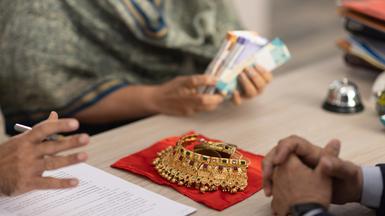
- 03 Jun 2025
Why is the RBI proposing changes to gold loan regulations?
In April 2024, the Reserve Bank of India (RBI) released draft guidelines on loans against gold to harmonise regulations across banks and NBFCs and to address irregularities. The move follows an extraordinary surge in gold-backed loans during FY24:
- Gold loan portfolios grew over 50% across banks and NBFCs.
- For banks, the portfolio more than doubled (104% growth).
This rapid growth, amid rising gold prices and lax lending standards, raised regulatory concerns.
What are the key proposals in the draft guidelines?
- LTV Norms:
- The Loan-to-Value (LTV) ratio remains capped at 75%.
- For bullet repayment loans for consumption, accrued interest must be included in the LTV calculation, effectively lowering the loan amount disbursed.
- Ownership Proof:Borrowers must furnish proof of ownership for the gold pledged.
- Valuation Standards:
- Gold should be valued based on 22-carat price.
- Uniform procedures must be followed to assess the purity and weight.
- Loan Renewal & Fresh Sanctions:
- Renewals or top-ups are permitted only if:
- The existing loan is standard, and
- It complies with the LTV limit.
- Concurrent loans for both consumption and income-generation are disallowed.
- A fresh loan can only be granted after full repayment (principal + interest) of the previous loan.
- Renewals or top-ups are permitted only if:
- Collateral Return Timeline:If the gold is not returned within 7 working days after repayment, the lender must compensate the borrower at ?5,000/day for each day of delay.
Likely Impact on Borrowers and Lenders
Borrowers:
- May face reduced loan amounts and higher documentation requirements.
- Small and rural borrowers, dependent on gold loans for agriculture and allied sectors, may experience reduced accessibility.
NBFCs and Banks:
- NBFCs that frequently renew or top-up gold loans could lose flexibility.
- Compliance costs will rise due to stringent documentation, valuation, and reporting norms.
- Smaller NBFCs relying on re-pledging of gold may face liquidity issues.
- Interest rates may rise to offset higher operational expenses.
Is a uniform policy suitable?
A one-size-fits-all policy may not be practical. Gold loans are a lifeline for rural households with limited access to formal credit. Experts suggest:
- Differentiated norms for micro gold loans (small-ticket loans) and high-value loans.
- Consideration for the informal nature of ownership in many rural households.
Krishi Nivesh Portal
- 03 Jun 2025
In News:
In an effort to streamline and accelerate investments in India’s agriculture and allied sectors, the Government of India has launched the Krishi Nivesh Portal, developed by the Ministry of Agriculture & Farmers Welfare.
The initiative aligns with the government’s broader goal of promoting the ease of doing business in agriculture by integrating schemes from multiple Central ministries and State governments into a single digital platform.
Key Features of the Portal
- One-Stop Solution: The portal acts as a centralized hub providing real-time access to information on agricultural schemes from various government departments and ministries.
- Multi-Stakeholder Access: It is designed to cater to farmers, entrepreneurs, Farmer Producer Organizations (FPOs), industries, and agri-startups.
- Scheme Integration: As of now, the portal integrates 17 flagship schemes spanning seven Union Ministries, including:
- Agriculture Infrastructure Fund
- Animal Husbandry Infrastructure Development Fund
- PM KisanSampada Yojana
- PM-KUSUM
- Technological Features: It offers a user-friendly interface, chatbot support, and interactive dashboards for data-driven insights and monitoring.
- Investment Tracking: Users can track application status, explore investment opportunities based on geographical spread, and gain assistance with loan disbursal.
Institutional Integration
- Currently, 14 Union ministries/departments and 9 state government departments are involved in implementing schemes related to agriculture and allied sectors.
- Ministries already integrated include:
- Ministry of Agriculture
- Ministry of Food Processing Industries
- Ministry of Rural Development
- Ministry of Jal Shakti
- Ministry of New and Renewable Energy
- Ministry of Fertilisers
Efforts are underway to onboard over 300 schemes from various ministries and states, including those related to credit-linked initiatives, PPP models, venture capital projects, and startups.
Significance for Agricultural Sector
- The portal addresses key challenges such as fragmented scheme information, siloed departmental operations, and delays in loan processing.
- It aims to unlock the investment potential of India’s agri-sector, especially for private investors, by offering a consolidated, transparent, and accessible interface.
- According to official estimates:
- The revised budget allocation for FY 2024–25 for agricultural investment schemes stands at ?1.31 lakh crore.
- In FY 2021–22, private sector investment in agriculture amounted to ?2.79 lakh crore.
Sabine’s Gull Spotted at Nalsarovar
- 03 Jun 2025
In News:
In a remarkable ornithological event, the Sabine’s Gull — a rare Arctic seabird — has been observed at Nalsarovar Bird Sanctuary in Gujarat. This marks the species’ first recorded appearance in India since 2013, when it was last sighted in Kerala, underlining the dynamic migratory patterns affecting India’s wetland ecosystems.
About Nalsarovar Bird Sanctuary
- Located nearly 64 km west of Ahmedabad, Nalsarovar Bird Sanctuary is one of Gujarat’s most prominent wetland ecosystems. Encompassing an area of 120.82 sq km, it comprises a shallow, seasonal lake interspersed with around 360 islets, creating a rich mosaic of aquatic habitats.
- This natural lake traces its origin to the 15th century, following the construction of a check dam on the Sabarmati River. Initially designed to serve irrigation and drinking water needs of nearby villages, the lake gradually evolved into a crucial habitat for avifauna. Recognition of its ecological significance grew over time, prompting colonial authorities in the early 20th century to take protective measures.
- Eventually, in 1969, the Government of Gujarat declared Nalsarovar a bird sanctuary, and it was further accorded the status of a Ramsar wetland site in 2012, signifying its global importance under the Ramsar Convention.
- Flora: The sanctuary supports a wide variety of aquatic and wetland plant life, with 48 algae species and 72 flowering plant species recorded. Common plant species include Cyperus, Scirpus, Typha ungustata, Eleocharis palustris, Ruppia, Potamogeton, Vallisneria, Naias, and Chara.
- Fauna:Nalsarovar is home to nearly 250 bird species, making it a haven for bird watchers. Regular sightings include both greater and lesser flamingos, pelicans, ducks, geese, coots, rails, cranes, and a variety of wading and aquatic birds like herons, egrets, storks, spoonbills, and sarus cranes.
- Beyond birds, the sanctuary also supports mammalian fauna. On its southern and southwestern peripheries, species such as the Indian wild ass, mongoose, jungle cat, Indian fox, jackal, wolf, and striped hyena are found.
Sabine’s Gull: Profile
- The Sabine’s Gull (Xemasabini), also known as the fork-tailed gull or xeme, is a small gull species notable for its elegant flight and distinctive wing markings. Adults can be recognized by their pale grey backs, black wingtips, white secondary feathers, and forked white tails.
- This gull breeds in high Arctic and subarctic zones across North America, Russia, Greenland, and Svalbard, and is a rare migrant in South Asia.
- According to the IUCN Red List, it is currently categorized as a species of Least Concern, although sightings in India are extremely uncommon.
ULLAS – Nav Bharat SaakshartaKaryakram and Goa’s Milestone in Literacy
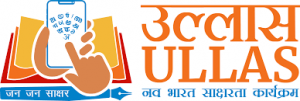
- 02 Jun 2025
In News:
Recently, Goa became the second state in India to achieve full functional literacy under the ULLAS – Nav Bharat SaakshartaKaryakram (New India Literacy Programme), marking a key achievement in India’s goal of attaining full literacy by 2030, as envisioned in the National Education Policy (NEP) 2020.
About ULLAS
- ULLAS stands for Understanding Lifelong Learning for All in Society.
- It is a centrally sponsored scheme implemented by the Ministry of Education from 2022 to 2027.
- Target Group: Adults aged 15 years and above who missed formal schooling.
- Alignment: The scheme is aligned with NEP 2020, emphasizing inclusive and equitable education.
- Implementation Basis: The programme is built on the spirit of volunteerism and Kartavya Bodh (sense of duty).
Five Components of the ULLAS Scheme:
- Foundational Literacy and Numeracy
- Critical Life Skills
- Basic Education
- Vocational Skills Development
- Continuing Education
Digital Outreach
- The ULLAS mobile app facilitates registration of learners and volunteers.
- It also provides access to learning resources through the DIKSHA portal of NCERT.
- So far, over 2.40 crore learners and 41 lakh volunteer teachers have been registered on the app.
- Over 1.77 crore learners have taken the Foundational Literacy and Numeracy Assessment Test (FLNAT).
Goa Achieves Full Literacy
- Declared Fully Literate: On May 30, 2025, during the 39th Goa Statehood Day celebrations at Panaji, Goa was declared fully literate.
- Reported Literacy Rate: As per PLFS 2023–24, Goa had a literacy rate of 93.60%, among the highest in India.
- State Survey Update: A state-led survey confirmed that Goa had crossed the 95% benchmark, qualifying it as fully literate under ULLAS.
Key Factors Behind Goa’s Success
- Adopted a Whole-of-Government approach, involving departments such as:
- Directorate of Panchayats
- Municipal Administration
- Social Welfare
- Planning & Statistics
- Women & Child Development
- Engaged SwayampurnaMitras for grassroots awareness and learning support.
- Played an active role in certification and inclusion of learners into the literacy programme.
- Strong collaboration between SCERT, local administration, school heads, volunteers, and field workers ensured last-mile delivery.
Significance for India
- Goa's achievement underscores the effectiveness of decentralized, people-driven literacy campaigns.
- Demonstrates the potential of tech-enabled platforms, volunteerism, and inter-departmental coordination.
- Sets a model for other states in achieving India’s literacy goal by 2030.
- Reinforces the broader national vision of “Jan-Jan Saakshar” and a Viksit Bharat.
Kawal Tiger Reserve and KumramBheem Conservation Reserve

- 02 Jun 2025
In News:
In a recent development, the Telangana government has designated the tiger corridor connecting the Kawal Tiger Reserve (Telangana) with the Tadoba-Andhari Tiger Reserve (Maharashtra) as the KumramBheem Conservation Reserve, under Section 36(A) of the Wildlife Protection Act, 1972. This move is aimed at preserving critical wildlife corridors in the Central Indian Landscape.
Kawal Tiger Reserve:
- Location: Situated in Telangana, along the Godavari River, forming part of the Deccan Peninsula – Central Highlands.
- Biogeographic Zone: Lies at the southern tip of the Central Indian Tiger Landscape.
- Connectivity: Links with Tadoba-Andhari (Maharashtra), Indravati (Chhattisgarh), and other reserves like Tipeshwar, Chaprala, and Kanhargaon.
- Vegetation Type: Southern Tropical Dry Deciduous Forests.
- Flora: Dominated by teak, bamboo, and species like Anogeissuslatifolia, Terminalia arjuna, Boswellia serrata, etc.
- Fauna: Hosts tiger, leopard, nilgai, chinkara, sambar, blackbuck, wild dog, wolf, and jungle cat.
KumramBheem Conservation Reserve: Newly Notified Area
- Legal Basis: Declared under Section 36(A), Wildlife Protection Act, 1972, which allows states to notify government-owned land adjacent to or connecting protected areas as conservation reserves.
- Total Area: 1,492.88 sq km (149,288.48 hectares)
- District &Mandals Covered: Spread across KumramBheemAsifabad district, covering parts of Kerameri, Wankidi, Asifabad, Sirpur, Koutala, Bejjur, Kagaznagar, Rebbana, Dahegaon, and Tiryanimandals.
- Forest Blocks Included: 78 blocks including Garlapet, Ada, Manikgarh East & West, Danora, Gudem, Bejjur, Kadamba, and Girali.
Ecological Significance
- Tiger Movement: Over the last decade, more than 45 unique tigers (mostly transient) have been documented in this corridor through camera trapping and surveys.
- Breeding Evidence: Since 2015, 17 tiger cubs born from 3 tigresses have been recorded. The 2022 Tiger Census confirmed 4 adult tigers and 3 cubs in the area.
- Leopard Presence: 8 leopards were recorded during the All India Leopard Estimation, 2022.
- Other Carnivores: Includes sloth bear, hyena, wild dog, wolf, honey badger, and jungle cat.
- Herbivore Diversity: Rich prey base such as gaur, sambar, nilgai, chital, muntjac, four-horned antelope, and Indian gazelle.
- Avifauna: Home to 240+ bird species, including rare species like the Malabar Pied Hornbill and Long-billed Vulture, the latter using the reserve as a nesting site.
- Elephant Movement: Occasional elephant presence has also been reported.
Governance
A Conservation Reserve Management Committee has been established. Members include:
- District Forest Officer (DFO) of KumramBheemAsifabad (Convenor)
- Sarpanches of local panchayats (e.g., Karji, Motlaguda, Murliguda)
- Representatives from NGOs like Hyderabad Tiger Conservation Society, WWF-India, and Wildlife Conservation Trust
- Officials from Veterinary, Agriculture, and Forest Divisions
Ghatampur Thermal Power Project
- 02 Jun 2025
In News:
Prime Minister Narendra Modi recently dedicated Unit-1 (660 MW) of the Ghatampur Thermal Power Project, located in Kanpur Nagar, Uttar Pradesh, marking a major step forward in India’s thermal power capacity and energy security goals.
Project Overview
- Location: Ghatampur, Kanpur Nagar District, Uttar Pradesh
- Implementing Agency: Neyveli Uttar Pradesh Power Ltd (NUPPL) — a joint venture between
- NLC India Ltd (51% share)
- Uttar Pradesh Rajya Vidyut Utpadan Nigam Ltd (UPRVUNL) (49% share)
- Total Capacity: 3 units × 660 MW = 1,980 MW
- Project Cost: ?21,780.94 crore
Commissioning Timeline
- Unit-1 (660 MW): Commissioned in December 2024, dedicated in May 2025
- Remaining Units: Expected to be operational by December 2025
Power Distribution Agreement
- Uttar Pradesh: Receives 75.12% (1,487.28 MW) of the total power
- Assam: Allocated 24.88% (492.72 MW), subject to transfer of 20% equity from UPRVUNL to Assam Government
Technological and Environmental Features
- Efficient Supercritical Technology:Utilizes supercritical boilers with 88.81% efficiency, reducing fuel usage and emissions.
- Zero Liquid Discharge (ZLD):Ensures no industrial wastewater release, protecting surrounding land and water bodies.
- Air Pollution Control:Equipped with modern pollution mitigation systems:
- Selective Catalytic Reduction (SCR) – Controls NOx emissions
- Flue Gas Desulphurization (FGD) – Reduces SOx emissions
- Continuous Emission Monitoring System (CEMS) and Ambient Air Quality Monitoring Stations (AAQMS) – Ensure real-time pollution tracking
- Water Conservation Measures:
- 288 km of canal lining saves approx. 195 million litres/day
- Raw water storage capacity of 46 lakh cubic meters
Fuel Security
- The plant sources coal from its own captive mine, producing 9 million tonnes annually.
- It maintains a 30-day coal stockpile, equivalent to 10.165 lakh tonnes, ensuring uninterrupted operation.
IndiaAI Mission

- 02 Jun 2025
In News:
India has taken a major step toward self-reliance in Artificial Intelligence with the expansion of its national AI compute infrastructure and the selection of three new startups to build indigenous foundation models under the IndiaAI Mission.
Key Highlights
- Compute Infrastructure Boost:India’s total GPU capacity has now surpassed 34,000 units, up from the initial 10,000-target. A fresh addition of 15,916 GPUs to the existing 18,417 empanelled GPUs brings the total to 34,333 GPUs, now available through the IndiaAI Compute Portal (operational since March 2025).
- Subsidised Access:These GPUs are made available at a subsidised rate of ?67/hour, well below the global average of ?115/hour. This has been made possible through private sector empanelment instead of government-built data centres. Service providers receive up to 40% capital subsidy, enabling rapid infrastructure rollout.
- Empanelled Providers:Seven private companies were empanelled for compute provisioning:
- Cyfuture India Pvt. Ltd.
- Ishan Infotech Ltd.
- Locuz Enterprise Solutions Ltd.
- Netmagic IT Services Pvt. Ltd.
- Sify Digital Services Ltd.
- Vensysco Technologies Ltd.
- Yotta Data Services Pvt. Ltd.
Foundation Model Development
Under the IndiaAI Foundation Model initiative, three new startups have joined Sarvam AI (selected earlier in April 2025) to build India-specific Large Language Models (LLMs):
- Soket AI: Will develop a 120-billion parameter open-source model focused on Indian languages and use cases in defence, healthcare, and education.
- Gnani AI: Building a 14-billion parameter Voice AI model for real-time, multilingual speech recognition and reasoning.
- Gan AI: Developing a 70-billion parameter multilingual TTS (text-to-speech) model aiming for "superhuman" capabilities surpassing global benchmarks.
- Sarvam AI: Previously selected to create a 120-billion parameter Sovereign AI model, following the release of Sarvam-1 (2B parameters) and Sarvam-M (24B parameters).
These foundation models will be trained on Indian datasets and tailored for governance, public service delivery, and regional language support.
AI Kosh& Innovation Initiatives
- AI Kosh: A public dataset platform with 367 datasets uploaded, enabling research and model training using India-relevant data.
- IndiaAI I4C CyberGuard Hackathon: In collaboration with the Ministry of Home Affairs, AI models were developed for identifying cybercrime patterns from complex inputs like handwritten FIRs and audio calls on the National Cyber Crime Reporting Portal.
- Startup Innovation & Skill Development: Funding support, AI labs in Tier-II cities, and talent development programs are part of a broader push to promote innovation and reverse brain drain.
About IndiaAI Mission
- Launched by: Ministry of Electronics & Information Technology (MeitY)
- Cabinet Approval: March 2024 with a budget of over ?10,000 crore
- Objectives:
- Develop indigenous AI capabilities and infrastructure
- Democratize AI access for governance, startups, and citizens
- Promote ethical and safe AI use
- Position India among the global AI leaders
India Develops its first indigenous Mechanical Thrombectomy Device for Stroke Treatment
- 02 Jun 2025
In News:
In a significant milestone for India’s medical technology sector, the Technology Development Board (TDB) under the Department of Science and Technology (DST) has extended support for the development of the country’s first indigenously manufactured mechanical thrombectomy device for the treatment of acute ischemic stroke.
What is a Mechanical Thrombectomy Device?
The device is a minimally invasive medical tool designed to treat acute ischemic stroke, which occurs due to a blockage in a large blood vessel in the brain. Unlike conventional thrombolytic drugs that dissolve clots chemically, this device physically extracts the clot, thereby restoring blood flow swiftly and reducing the risk of severe brain damage or paralysis.
Development and Manufacturing
This pathbreaking innovation was developed by S3V Vascular Technologies Ltd, based in Mysuru, with financial backing from the TDB. The manufacturing takes place at an advanced, high-precision production facility within the Medical Devices Park in Oragadam, Tamil Nadu.
Key Features and Technological Highlights
- Indigenous Design: S3V is the first Indian company to conceptualize and produce stroke-intervention tools such as microcatheters, aspiration catheters, guidewires, and stent retrievers.
- R&D and Patents: The company has filed multiple patents, particularly for innovations in clot retriever head design and advanced catheter structures.
- Training and Capacity Building: A simulator-based training program has been initiated to train young medical professionals, with a focus on outreach in Tier-II cities.
- Global Compliance: The device aims to meet CE and USFDA standards, paving the way for international exports and aligning with global quality benchmarks.
Significance for India
- Reduces Import Dependency: The device addresses India’s reliance on expensive, imported stroke-care equipment.
- Cost-Effective Healthcare: By making stroke treatment more affordable, it enhances access to quality care for economically weaker sections.
- Supports Public Health Initiatives: It is expected to be integrated into government schemes like Ayushman Bharat, strengthening the country’s universal healthcare mission.
- Boosts MedTech Ecosystem: This innovation is a major stride in positioning India as a global player in the high-end medical devices sector.
DHRUVA(Digital Hub for Reference and Unique Virtual Address)
- 01 Jun 2025
In News:
In May 2025, the Department of Posts, under the Ministry of Communications, released the policy framework for DHRUVA (Digital Hub for Reference and Unique Virtual Address) — a key initiative aimed at creating a standardized, geo-coded digital address infrastructure across India.
What is DHRUVA?
DHRUVA is a Digital Public Infrastructure (DPI) initiative that conceptualizes Address-as-a-Service (AaaS) — a secure, consent-based, and interoperable system for managing and sharing address data. It builds upon the earlier DIGIPIN (Digital Postal Index Number) system, which created a national-level, geo-tagged addressing grid for improved governance and service delivery.
Objectives of DHRUVA
- Transform address information into a digital public good.
- Enable secure, standardized, and interoperable access to address data across sectors.
- Empower users with control and consent over how their address data is shared.
- Promote public-private collaboration in areas like logistics, e-governance, and financial inclusion.
Key Features
- DIGIPIN Backbone: Utilizes the Digital Postal Index Number system, allowing logical and directional naming of addresses with precise geolocation.
- Address-as-a-Service (AaaS): Facilitates seamless address validation, authentication, and sharing across government and private platforms.
- User Autonomy: Individuals can manage and consent to how their address data is used, ensuring privacy and user-centric governance.
- Open & Inclusive Access: The infrastructure is freely accessible, promoting innovation and broad-based adoption.
- Consent Framework: Address data sharing will be user-approved, ensuring a secure and trusted digital ecosystem.
Significance of DHRUVA
- Geospatial Governance: Enhances planning, disaster management, and delivery of public services through precise address mapping.
- Improved Logistics & E-Commerce: Enables more efficient last-mile delivery, reducing ambiguity in address identification.
- Financial Inclusion: Facilitates smoother KYC, subsidy disbursement, and service access in rural and underserved areas.
- Ease of Living & Digital India: Aligns with broader national goals by supporting smart governance and digital transformation.
- Public-Private Synergy: Encourages co-creation of solutions by government bodies and private enterprises based on shared, trusted digital address data.
India’s Provisional GDP Estimates for FY 2024–25
- 01 Jun 2025
In News:
The Ministry of Statistics and Programme Implementation (MoSPI) released the Provisional Estimates (PEs) of India’s Gross Domestic Product (GDP) and Gross Value Added (GVA) for the financial year 2024–25 (FY25), providing a comprehensive picture of the country's economic performance.
Understanding GDP and GVA
- GDP (Gross Domestic Product) measures the total expenditure in the economy, including consumption, investment, government spending, and net exports — representing the demand side.
- GVA (Gross Value Added) evaluates the income generated from the production of goods and services in different sectors — representing the supply side.
- The two are related by the formula:GDP = GVA + Taxes – Subsidies
- Both are reported in nominal terms (current prices) and real terms (adjusted for inflation).
Nature of Provisional Estimates
- The estimates are termed provisional because they include data from all four quarters but are subject to revision:
- First Advance Estimates (FAE): January
- Second Advance Estimates (SAE): February
- Provisional Estimates (PE): May
- Revised Estimates: Finalized over the next two years (in 2026 and 2027 for FY25)
Key Economic Indicators for FY 2024–25
- Nominal GDP
- Estimated at ?330.68 lakh crore, showing a 9.8% growth over FY24.
- In dollar terms (?85.559/USD), India’s economy reached $3.87 trillion.
- However, this 9.8% nominal growth marks the third-slowest since 2014.
- Real GDP
- Rose by 6.5%, reaching ?187.97 lakh crore.
- The real GDP growth slowed from 9.2% in FY24, indicating reduced economic momentum.
- Sectoral GVA Performance
- Overall GVA grew by 6.4%, down from 8.6% in FY24.
- Sector-wise real GVA growth:
- Agriculture & Allied Activities: 4.4% (up from 2.7% last year)
- Industry (including Manufacturing & Construction): 6.1%
- Services: 7.5% (notable growth in public admin, trade, and finance)
- Q4 FY25 Trends
- Real GDP growth: 7.4%
- Nominal GDP growth: 10.8%
- Indicates a strong end-of-year performance.
Structural Insights and Concerns
- Manufacturing Weakness:Since FY20, manufacturing GVA CAGR (4.04%) lags behind agriculture (4.72%), signaling industrial stagnation.
- Employment Implications:Manufacturing’s sluggishness contributes to high urban unemployment and labour migration to rural/agricultural sectors.
- Consumption and Investment Revival:
- Private Final Consumption Expenditure (PFCE) grew by 7.2%.
- Gross Fixed Capital Formation (GFCF) increased by 7.1%, indicating investment momentum.
Significance for Policymaking
- The GDP data serves as a basis for fiscal planning, monetary policy decisions, and public investment.
- It highlights India’s position as one of the fastest-growing major economies, while also revealing structural vulnerabilities — particularly in manufacturing.
- For international comparison, real GDP is crucial as it neutralizes inflationary differences across countries.
Zangezur Corridor
- 01 Jun 2025
In News:
The Zangezur Corridor gained renewed attention following the visit of Armenia’s Security Council Secretary to New Delhi, where he held discussions with India’s National Security Advisor, AjitDoval.
What is the Zangezur Corridor?
The Zangezur Corridor is a proposed transport and transit route that aims to connect mainland Azerbaijan with its exclave, the Nakhchivan Autonomous Republic, by bypassing Armenia’s Syunik Province. The corridor passes through the Zangezur region, which is currently part of southern Armenia and has been a historically disputed territory since World War I.
Geographical and Strategic Linkages
- On the Azerbaijani side, the corridor integrates with the Horadiz-Agbend highway and railway infrastructure.
- On the Turkish side, it connects with the Nakhchivan-Igdir-Kars railway and highway, creating a direct land route from Azerbaijan to Turkey, and further west to Anatolia and Europe.
- The corridor, therefore, would serve as a critical land bridge across the South Caucasus, improving connectivity between Europe and Asia.
Economic and Strategic Significance
- The corridor is envisioned to:
- Boost regional trade and connectivity across Turkey, Azerbaijan, Iran, Russia, and Central Asia.
- Reduce transportation time and costs between Azerbaijan and Nakhchivan.
- Improve logistics infrastructure and increase supply chain efficiency across the region.
- It has implications for wider Eurasian integration, especially as global trade seeks alternatives to vulnerable chokepoints like the Suez Canal.
India’s Strategic Interest
India's engagement with the Zangezur Corridor gained attention after a meeting between India’s National Security Advisor and Armenia’s Security Council Secretary in New Delhi.
India’s interests in the region include:
- Chabahar Port in Iran: India’s investment here aims to create a secure route to Central Asia and Europe.
- Engagement with Armenia: India has been increasing strategic and defence cooperation with Armenia.
- Alternative Connectivity: The Zangezur Corridor challenges India’s north-south connectivity vision, as it could marginalize the Chabahar route if dominated by Turkish-Azerbaijani interests.
- Geopolitical Balance: India's presence helps counterbalance Turkish-Pakistani influence in the South Caucasus.
Boothapandi Rock Grooves
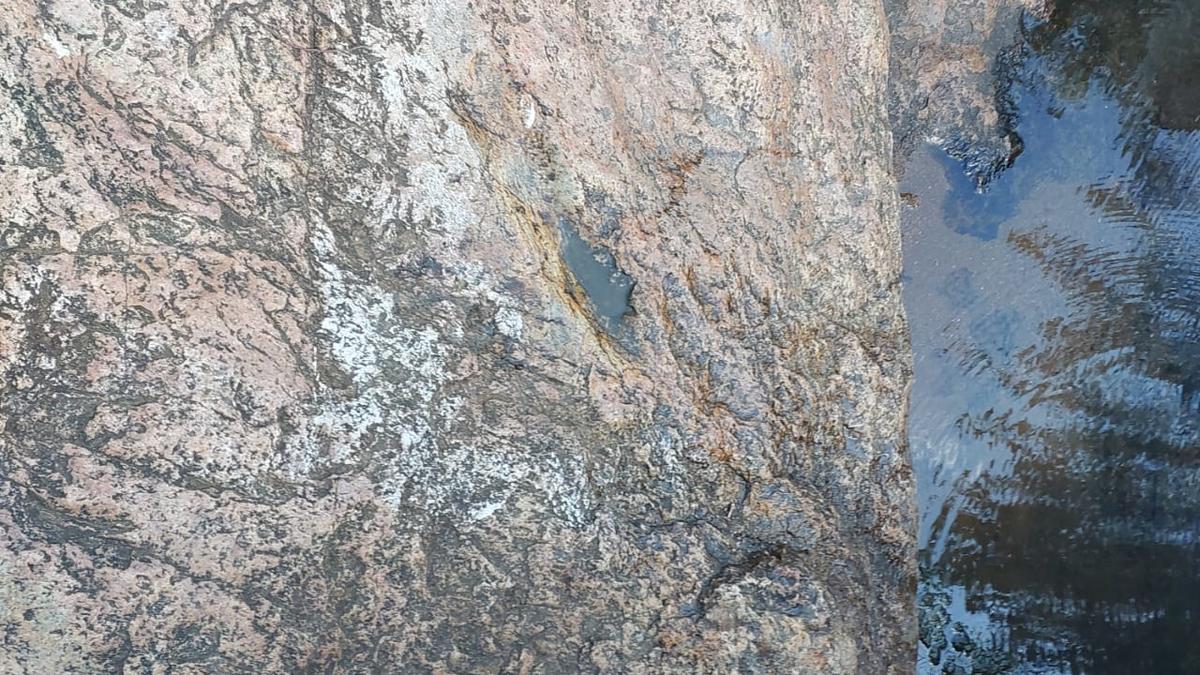
- 01 Jun 2025
In News:
The Archaeological Survey of India (ASI) has recently unearthed one of the first known Neolithic rock grooves in Kanniyakumari district, Tamil Nadu, specifically near Boothapandi village. These grooves—estimated to be around 4,000 years old—were likely created by Neolithic people to sharpen tools and weapons used for hunting, agriculture, and digging.
The discovery was made during a field study conducted by K. Hari Gopalakrishnan, ASI Officer (Tirunelveli &Kanniyakumari), and M. Faisal of the Sembavalam Research Centre. The grooves vary in size:
- Length: 8 cm to 15 cm
- Width: 3 cm to 4 cm
Such grooves have also been previously documented in Krishnagiri, Tiruvannamalai, and Villupuram districts of Tamil Nadu. The find strongly suggests the presence of Neolithic human activity in southernmost India and adds a significant layer to our understanding of prehistoric settlements in the region.
Neolithic Age
The Neolithic Age (New Stone Age) marks the final stage of prehistoric human evolution before the emergence of metal tools. Beginning around 10,000 BCE, it coincides with the Holocene Epoch and follows the Paleolithic Age (chipped-stone tools) and precedes the Bronze Age.
Key Features of the Neolithic Age
- Lifestyle Shift: Transition from hunting-gathering to agriculture and animal domestication.
- Permanent Settlements: Emergence of village communities with mud-and-reed houses, both rectangular and circular in design.
- Toolmaking: Development of polished and ground stone tools.
- Crafts and Culture: Rise of pottery, weaving, alcohol production, and early architecture.
- Burial Practices: Use of status objects (e.g., jade, pottery) in burials indicates belief in afterlife and emerging social hierarchies.
- By the end of the Neolithic era, copper metallurgy began, marking the Chalcolithic (Copper-Stone) Age. Eventually, bronze tools replaced stone ones, signaling the end of the Stone Age and the dawn of early civilizations.
Major Neolithic Sites in India
- Burzahom – Kashmir
- Chirand (Chiron) – Bihar
- Uttarapalli – Andhra Pradesh
- Edakkal Caves – Kerala
- Boothapandi (newly identified) – Tamil Nadu
Perito Moreno Glacier
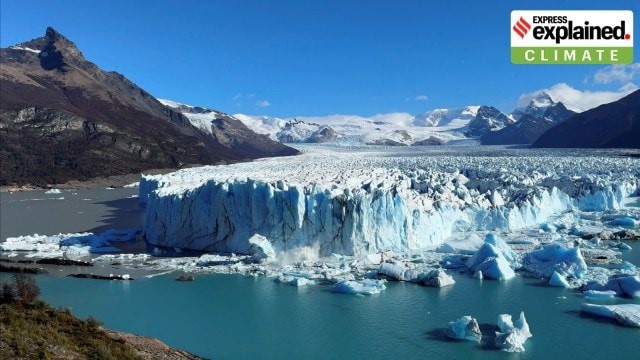
- 01 Jun 2025
In News:
- The Perito Moreno Glacier, often referred to as the ‘White Giant’, is Argentina’s most iconic glacier, located in the Los Glaciares National Park, a UNESCO World Heritage Site.
- Situated in the Andes Mountains, near El Calafate in Santa Cruz province, this glacier spans approximately 250 sq km—about the size of Patna, Bihar—and stretches 30 km in length, with ice walls rising 60 meters above water.
- Formed during the last Ice Age (~18,000 years ago), Perito Moreno has historically remained unusually stable, defying the global trend of rapid glacier retreat. However, this stability changed around 2020, raising alarms among scientists.
Recent Developments and Ice Calving Events
- Perito Moreno is globally renowned for its ice calving events, where massive blocks of ice break off into the lake with thunderous crashes. These events, though natural due to the glacier’s forward motion, have recently become more intense.
- On April 21, 2025, a colossal ice chunk the size of a 20-story building plunged 70 meters into the water—an increasingly frequent occurrence in the past 4–6 years.
- According to local experts and a 2024 government-backed report, the glacier has been retreating steadily since 2015, with an average mass loss of 0.85 meters annually—the fastest in nearly five decades.
- Between 2020 and 2023, the glacier lost over 700 meters of mass, equivalent to around seven large ice blocks.
Causes: Global Warming & Climate Impact
- The primary cause behind this dramatic retreat is climate change. Scientists from IANIGLA (Argentine Institute of Glaciology and Environmental Sciences) and CONICET state that the region has experienced an air temperature rise of 0.06°C per decade and reduced precipitation, leading to less snow accumulation and thinning of the glacier.
Global Perspective on Glacier Retreat
Perito Moreno is now part of a larger, alarming global trend.
- A 2024 study in Nature estimates that glaciers worldwide are losing 273 billion tonnes of ice annually, contributing to a 2 cm rise in global sea levels this century alone.
- A UNESCO report (March 2025) highlighted that glaciers (excluding Greenland and Antarctica) have shed over 9,000 billion tonnes of ice since 1975—comparable to an ice block the size of Germany with 25 meters thickness.
Environmental Significance
- Freshwater Source: Perito Moreno is a major reservoir of freshwater in Argentina.
- Tourism: The glacier attracts global tourists, boosting the local economy.
- Climate Indicator: Its recent retreat reflects the delayed but accelerating impact of global warming, making it a critical environmental bellwether.
World’s First 3D-Printed Train Station unveiled in Japan
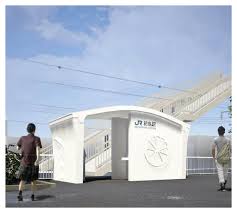
- 10 Apr 2025
In News:
Japan’s West Japan Railway Company has unveiled the world’s first 3D-printed train station — Hatsushima Station in Arida city. Notably, the station was constructed in less than six hours, highlighting a major advancement in construction technology.
Understanding 3D Printing (Additive Manufacturing)
What is 3D Printing?
3D Printing, or Additive Manufacturing, is a process of creating three-dimensional objects by layering material based on a digital design. Unlike traditional (subtractive) manufacturing, which removes material, this method adds material layer by layer, ensuring reduced waste and the ability to produce complex geometries.
How 3D Printing Works:
- Design Phase: A 3D digital model is created using CAD (Computer-Aided Design) software and saved in formats like .STL or .OBJ.
- Slicing: The model is sliced into horizontal layers using specialized software.
- Printing: The printer deposits material layer-by-layer according to the sliced file. Each layer solidifies to form the final shape.
- Post-Processing: The object is finished through processes such as curing, sanding, or painting.
Major 3D Printing Technologies:
- Fused Deposition Modelling (FDM): Uses melted thermoplastic filaments to build objects layer-by-layer.
- Selective Laser Sintering (SLS): Uses lasers to fuse powdered plastics or metals into solid forms.
- Direct Metal Laser Sintering (DMLS): Employs a laser to fuse metal powders — widely used in aerospace and medical sectors.
- Material Jetting: Deposits photopolymer droplets, cured with UV light — ideal for high-precision and colorful prototypes.
Limitations of 3D Printing:
- Material Restrictions: Only specific plastics, metals, and composites are compatible with given printers.
- Size Constraints: Limited build volume necessitates assembling larger items from smaller parts.
- Structural Weakness: Objects may have weak joints due to the layered structure, reducing suitability for high-stress uses.
- IP Challenges: Digital design files can be easily shared, posing risks of counterfeiting and intellectual property theft.
Electronics Components Manufacturing Scheme (ECMS)
- 10 Apr 2025
In News:
The Ministry of Electronics and Information Technology (MeitY) has notified the Electronics Components Manufacturing Scheme (ECMS) in April 2025. It marks a strategic step in India’s ambition to become a global electronics manufacturing hub.
Key Highlights of ECMS
- Objective: To incentivize domestic production of passive electronic components and capital equipment, thus deepening India's electronics manufacturing value chain.
- Scheme Tenure: Valid for 6 years, with a 1-year gestation period.
- Focus Components: Includes resistors, capacitors, relays, switches, speakers, connectors, inductors, special ceramics, and other passive components.
- Active components are supported separately under the India Semiconductor Mission (ISM).
- Incentive Structure:
- Turnover-linked incentive (based on incremental revenue).
- Capex-linked incentive (for investments in plant and machinery).
- Hybrid model (combining turnover and capex benefits).
Incentive rates range between 1–10%, varying by year and component type.
- Employment Mandate: All applicants—whether component manufacturers or capital equipment makers—must commit to job creation, ensuring broader socio-economic benefits.
Strategic Importance
- Horizontal Sectoral Impact: The scheme is designed to support multiple sectors including automotive, consumer electronics, medical devices, power electronics, and electrical grids, promoting cross-industry multiplier effects.
- Support for Tooling & Capital Equipment Industry: Encourages design and manufacture of capital tools and machinery required for electronics production, in line with models seen under the India Semiconductor Mission.
- Global firms like Linde have begun operations, with more in pipeline.
India’s Electronics Growth Trajectory
- Export Milestone (FY 2024–25):
- Total smartphone exports: ?2 lakh crore
- iPhone exports alone: ?1.5 lakh crore
- Sectoral Growth (Last Decade):
- 5x growth in production.
- 6x growth in exports.
- Export CAGR: >20%
- Production CAGR: >17%
- Manufacturing Base Expansion: Over 400 production units (large and small) now manufacture a wide range of electronic components domestically.
- Value Chain Evolution: India has transitioned from assembling finished goods → sub-assemblies → deep component manufacturing, now entering a value-added, self-reliant phase in electronics
One State, One RRB Policy
- 10 Apr 2025
In News:
The Government of India, through the Ministry of Finance, has implemented the "One State, One RRB" policy effective from May 1, 2025, aimed at consolidating 26 Regional Rural Banks (RRBs) across 10 states and 1 Union Territory, thereby reducing the total number of RRBs to 28. This move follows the recommendation of the Dr. Vyas Committee and is intended to enhance the performance and outreach of RRBs.
Objectives of the Policy
- Improve operational efficiency and governance.
- Rationalize costs and optimize resources (human and technological).
- Eliminate intra-state competition among sponsor banks.
- Promote uniform service delivery through technological integration.
About Regional Rural Banks (RRBs)
- Established: 1975 under the Regional Rural Banks Act, 1976.
- Recommended by: Narasimham Committee (1975).
- Ownership Pattern:
- Government of India – 50%
- State Government – 15%
- Sponsor Bank – 35%
Regulatory Structure
- Regulated by: Reserve Bank of India (RBI)
- Supervised by: NABARD (National Bank for Agriculture and Rural Development)
Role and Objectives
- Provide institutional credit to rural India.
- Support priority sectors like agriculture, MSMEs, and rural artisans.
- Ensure financial inclusion among farmers, labourers, and small entrepreneurs.
Impact of the Reform
- Operational Scale: Enhanced credit delivery across wider geographies.
- Technological Standardization: Easier integration of IT infrastructure.
- Unified Governance: One sponsor bank per state improves accountability.
- Performance: RRBs recorded an all-time high net profit of ?7,571 crore in FY 2023–24.
- Asset Quality: GNPA (Gross Non-Performing Assets) stood at 6.1%, the lowest in a decade.
Poshan Pakhwada 2025 and Palna Scheme
- 10 Apr 2025
In News:
The Ministry of Women and Child Development (MoWCD) is spearheading a dual approach to address malnutrition and childcare challenges in India through two flagship initiatives—Poshan Pakhwada 2025 and the Palna Scheme under Mission Shakti.
Poshan Pakhwada 2025
- 7th edition observed from April 8–22, 2025, under Poshan Abhiyaan.
- Focuses on four key themes:
- Nutrition in the first 1,000 days (conception to age two).
- Promotion of the Poshan Tracker digital platform.
- Community-based Management of Acute Malnutrition (CMAM).
- Encouraging a healthy lifestyle to reduce childhood obesity.
- Poshan Tracker App (AI-enabled; launched in 2021):
- Registers all Anganwadi Centres (AWCs).
- Enables real-time monitoring of beneficiaries, meal distribution, and health data.
- Allows family self-registration via web.
- CMAM protocol (introduced in 2023): Empowers Anganwadi workers to detect and manage malnutrition at the grassroots.
- Special focus on tribal and remote areas, promoting awareness on breastfeeding, balanced diets, and early stimulation.
- Campaign supported by 18 partner ministries, with outreach via village camps, home visits, and awareness drives.
Palna Scheme under Mission Shakti
- Centrally sponsored scheme launched in 2022, succeeding the National Crèche Scheme.
- Operates under the Samarthya sub-scheme of Mission Shakti.
- Aims to provide quality crèche services for children aged 6 months to 6 years, especially for working mothers.
Key Features:
- Implemented by: Ministry of Women and Child Development (MoWCD).
- Funding Ratio:
- 60:40 (Centre: State),
- 90:10 for NE and special category states.
- Two crèche models:
- Standalone Crèches near homes/workplaces.
- Anganwadi-cum-Crèches (AWCCs) integrated within Anganwadi Centres.
- Facilities Provided:
- Nutritional meals, growth monitoring, immunization.
- Early stimulation and pre-school education.
- Support for continued breastfeeding.
- Crèche Capacity: Each unit supports up to 25 children.
- As of March 2025:
- 11,395 AWCCs approved across 34 States/UTs; 1,761 operational, catering to ~28,783 children.
- 1,284 Standalone Crèches operational with ~23,368 children enrolled.
- 17,000 new AWCCs planned for 2024–25.
- Legal Backing: Mandated in workplaces with 50+ employees under the Maternity Benefit Act (amended).
Significance for India
Together, Poshan Pakhwada and Palna contribute to achieving SDG 2 (Zero Hunger) and SDG 3 (Good Health and Well-being) by ensuring a lifecycle approach to nutrition and holistic early childhood care. They reflect the government's commitment to digital governance, gender empowerment, and inclusive development.
Niveshak Didi
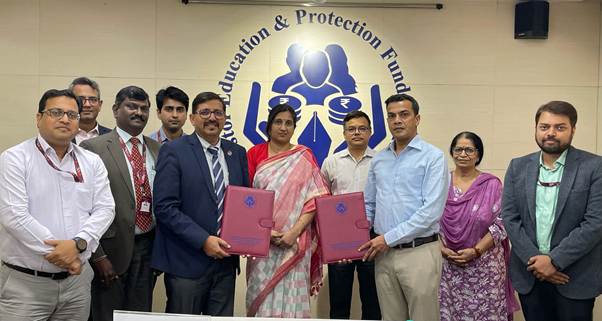
- 10 Apr 2025
In News:
In a significant push toward inclusive financial literacy, the Investor Education and Protection Fund Authority (IEPFA), under the Ministry of Corporate Affairs, and the India Post Payments Bank (IPPB), under the Department of Posts, Ministry of Communications, have signed a Memorandum of Agreement (MoA) to launch Phase 2 of the “Niveshak Didi” initiative in April 2025.
Objective:
The Niveshak Didi initiative, launched in 2023, is a women-led, community-driven financial literacy program designed to empower rural and underserved populations by fostering responsible financial behavior, promoting digital banking, and spreading fraud awareness.
Key Highlights:
- Target Group: Rural women and semi-urban communities.
- Approach: Local women, especially postal workers, are trained as financial educators (Niveshak Didis).
- Impact of Phase 1:
- Over 55,000 beneficiaries reached, with 60% women, predominantly from deep rural areas.
- Most beneficiaries belonged to the youth and economically active age groups.
Phase 2 (2025 Onward):
- Deployment of 4,000+ financial literacy camps across rural, tribal, and semi-urban areas.
- Training of 40,000 women postal workers to serve as grassroots financial educators.
- Curriculum Focus:
- Savings and budgeting.
- Responsible investing and fraud prevention.
- Digital tools and services provided by IPPB.
- Digital Inclusion: Leveraging India Stack for paperless and presence-less banking; training delivered in 13 regional languages.
About Investor Education and Protection Fund Authority (IEPFA)
- Statutory Body: Functions under the Ministry of Corporate Affairs, Government of India.
- Objective: Ensures informed and protected investors across India.
- Key Role:
- Promotes financial literacy to aid budgeting, saving, and investment decisions.
- Empowers citizens to make sound financial choices.
- Focus Areas:
- Educates citizens on investor rights and responsibilities.
- Special outreach to rural and underserved areas to bridge financial knowledge gaps.
- Vision: To build a financially aware and confident India, where every citizen has the tools to secure their financial future.
About India Post Payments Bank (IPPB)
- Established: On September 1, 2018 under the Department of Posts, Ministry of Communications.
- Ownership: 100% equity owned by the Government of India.
- Mission: To be the most accessible, affordable, and trusted bank for the common man.
- Mandate:
- Bridge financial inclusion gaps for the unbanked and underbanked.
- Leverage the vast postal network of approx. 1.65 lakh post offices (1.4 lakh in rural areas) and 3 lakh postal employees.
- Technology Backbone:
- Based on India Stack: Paperless, Cashless, and Presence-less banking.
- Uses CBS-integrated smartphones and biometric devices.
- Commitment:
- Promotes a less-cash economy.
- Supports the vision of Digital India.
- Motto: Every customer is important, every transaction is significant, every deposit is valuable.
India Skills Accelerator Initiative (2025)

- 09 Apr 2025
In News:
The Ministry of Skill Development and Entrepreneurship (MSDE) has partnered with the World Economic Forum (WEF) to launch the India Skills Accelerator—a national-level public-private collaboration platform aimed at fostering a future-ready and inclusive workforce.
Key Features:
- Purpose: To act as a systemic change enabler in India's skilling ecosystem through a multi-stakeholder, cross-sectoral approach.
- Core Objectives:
- Enhance awareness and shift mindsets about the need for future skills.
- Promote collaboration and knowledge sharing between government, industry, and academia.
- Reform policies and institutional structures for an agile and responsive skilling framework.
- Sectoral Priorities:
- Focus on high-growth areas: AI, robotics, cloud computing, cybersecurity, advanced manufacturing, energy, and Global Capability Centres (GCCs).
- Emphasis on formalizing the informal workforce.
- Lifelong Learning: Mobilize investments in upskilling and reskilling across various life stages to support agile career transitions.
- Data-Driven Governance: Use surveys, mapping tools, and the WEF’s Global Learning Network for peer benchmarking and progress tracking.
- Implementation Strategy:
- Identify 10–12 high-impact priorities with measurable outcomes.
- Establish thematic working groups to ensure coordinated execution.
- Align initiative with the WEF’s Future of Jobs Report 2025.
Significance
- Addresses the fact that 65% of organizations cite skill gaps as a major barrier to growth.
- Positions India to leverage its demographic dividend and become the "Skill Capital of the World".
- Supports India's goal of skilling not just for domestic needs but also for global workforce demand.
- Reinforces federal cooperation, involving institutions like NSDC, NCVET, DGT, UGC, AICTE, NCERT, and CBSE.
Quantum Supremacy Demonstrated via Simple Game
- 09 Apr 2025
In News:
Researchers from the University of Oxford and Universidad de Sevilla have demonstrated quantum supremacy using a simple mathematical game based on the odd-cycle graph colouring problem. The study, published in Physical Review Letters, marks a significant milestone in quantum computing.
What is Quantum Supremacy?
Quantum supremacy refers to the ability of a quantum computer to perform a task that is practically impossible for classical computers to solve efficiently. This advancement showcases the unique capabilities of qubits, which leverage two core principles:
- Superposition: Qubits can represent both 0 and 1 simultaneously.
- Entanglement: Measurement of one qubit instantly affects another, even over a distance.
These principles enable exponential scaling of computational power. For instance, a 50-qubit quantum computer could potentially outperform the most powerful classical supercomputers.
The Odd-Cycle Game: A Novel Approach
The team implemented a game inspired by graph theory:
- Players (Alice and Bob) are tasked with colouring an odd-numbered cycle (e.g., triangle) using only two colours such that adjacent points differ in colour.
- Mathematically, this is impossible in classical terms for odd cycles due to inevitable repetition of colours.
In the experiment:
- Two strontium atoms placed 2 meters apart were entangled using lasers.
- A referee sent each atom a "question" (mapped to a point on the cycle).
- Players performed quantum operations based on the questions and returned either 0 or 1 (representing colours).
The experiment was repeated 101,000 times, covering circles from 3 to 27 points.
Results and Significance
- Classical win rate: 83.3% for 3-point cycles.
- Quantum win rate: 97.8%, clearly surpassing classical limits.
- Quantum supremacy was evident up to 19-point circles.
- The entanglement correlation was the strongest ever recorded between two separated quantum systems.
Comparison with Previous Demonstrations
- Google’s Sycamore (2019): Used 53 superconducting qubits for a complex problem called random circuit sampling.
- China’s Jiuzhang: Used Gaussian boson sampling.
- In contrast, this new approach used just two entangled qubits, making it simpler, efficient, and easier to verify.
Practical Implications
This simplified game-based model of quantum advantage could have real-world applications in problems where coordination is needed without communication—such as the "rendezvous problem". Quantum systems can dramatically reduce search steps compared to classical ones (e.g., Grover’s algorithm can reduce 1 million steps to 1,000).
ESA Biomass Satellite Mission

- 09 Apr 2025
In News:
The Biomass Mission is a new Earth observation mission by the European Space Agency (ESA) aimed at enhancing our understanding of the global carbon cycle through accurate forest biomass measurements.
Launch Details:
- Rocket: Vega-C
- Launch Site: Europe’s Spaceport, French Guiana
- Orbit: Sun-Synchronous Orbit (SSO) at an altitude of ~666 km
- Scheduled Launch Date: 29 April 2025 (subject to final checks)
Key Features:
- First satellite to use P-band radar (long-wavelength synthetic aperture radar).
- Capable of penetrating dense forest canopies to scan tree trunks, branches, and stems — where most of a tree’s carbon is stored.
- Will generate 3D maps of the world’s tropical forests.
Mission Objectives:
- Measure above-ground forest biomass and forest height.
- Create five global biomass maps over its five-year mission.
- Monitor changes in forests to assess their role in carbon sequestration and climate regulation.
Scientific Importance:
- Forests absorb ~8 billion tonnes of CO? annually and are often referred to as "Earth’s green lungs."
- By analyzing forest carbon storage and changes, the mission will contribute significantly to:
- Monitoring climate change
- Supporting carbon accounting
- Improving air quality assessments
Phases of the Mission:
- Initial Phase: Produces detailed 3D forest maps globally.
- Second Phase: Generates global estimates of forest height and biomass.
Relevance to Climate Action:
- Helps in quantifying carbon uptake and release.
- Supports global climate models and carbon budgeting.
- Aids in policy-making for sustainable forest management.
Theobaldius konkanensis
- 09 Apr 2025
In News:
A new species of land snail, Theobaldius konkanensis, has been discovered by a collaborative team of Indian and UK researchers from the Konkan region of Maharashtra. This species adds to the growing biodiversity records of the northern Western Ghats, a globally recognized but under-explored biodiversity hotspot.
Key Facts at a Glance
- Scientific Name: Theobaldius konkanensis
- Discovered in: Ratnagiri and Raigad districts, Maharashtra (Dev Gireshwar Temple, Uttamrao Patil Biodiversity Garden, Kesharnath Vishnu Temple, and Phansad Sanctuary)
- Elevation: 80–240 metres above sea level
- Habitat: Tropical evergreen and semi-evergreen forests
- Active Months: June to September (monsoon); only shells visible in other months
- Habits: Active both day and night, often under forest canopy in shaded, moist leaf litter
Morphological Features
- Shell Characteristics:
- Slightly flattened with a raised centre and deep triangular notch near the aperture
- Operculum (protective cover) has raised whorl edges and short spines
- Corneous yellow with brown striations
- Thick, conoidally depressed, and widely umbilicated
- Body: Stout and rounded
Taxonomic Context
- Family: Cyclophoridae (Caenogastropoda)
- Genus: Theobaldius
- Now includes 20 species: 9 in India, 11 in Sri Lanka, and 1 in Sumatra (Indonesia)
- In India, 6 species are endemic to the Western Ghats
- Only T. annulatus is found in both Sri Lanka and the Western Ghats
Ecological and Conservation Significance
- Bioindicators: Land snails are sensitive to climatic changes and environmental disturbances
- Endemism: T. konkanensis is restricted to specific forest patches in the Konkan, highlighting the ecological uniqueness of the region
- Threats: Increasing anthropogenic pressures and habitat degradation threaten snail species with restricted distribution
Reproductive Biology (General Traits of Land Snails)
- Breeding mainly in monsoon
- Reproduce through both cross- and self-fertilisation
- Courtship includes dart-shooting behavior; mating may last hours
- Eggs laid in moist soil or leaf litter; hatch in 2–4 weeks
- Lifespan: 2 to 7 years
De-Extinction
- 09 Apr 2025
In News:
A US biotech company, Colossal Biosciences, claims to have genetically engineered three grey wolf pups to carry traits of the extinct dire wolf, calling it a de-extinction.
What is De-Extinction?
De-extinction is the process of reviving extinct species using advanced biotechnological methods such as:
- Gene editing (e.g., CRISPR-Cas9),
- Cloning (e.g., somatic cell nuclear transfer),
- Ancient DNA sequencing and genome reconstruction,
- Synthetic biology to reintroduce key traits of extinct organisms.
Colossal Biosciences and the Dire Wolf Project
In late 2024, a U.S.-based biotechnology firm, Colossal Biosciences, announced the birth of three genetically engineered wolf pups—Romulus, Remus, and Khaleesi—claimed to be the world’s first successful case of "functional de-extinction."
About the Dire Wolf
- Scientific name: Aenocyon dirus
- Habitat: Grasslands and forests of North America during the Pleistocene Epoch
- Extinction: ~12,500–13,000 years ago
- Characteristics: 25% larger than modern grey wolves; strong jaws to hunt megafauna like bison and horses; light-colored dense fur; social, pack-hunting predators.
Scientific Process Involved
- DNA Extraction: Ancient DNA was recovered from dire wolf fossils (13,000 to 72,000 years old).
- Genome Reconstruction: Sequencing and comparative analysis showed ~99.5% similarity between dire wolves and modern grey wolves.
- Gene Editing: Scientists edited 20 genes in grey wolves to replicate dire wolf traits like:
- White, thick fur
- Increased body mass
- Enhanced musculature and coat pattern
- Cloning: Modified DNA was used to create embryos via somatic cell nuclear transfer.
- Surrogacy: Embryos were implanted in large domestic dogs. Of several attempts, three pups survived.
Scientific and Ethical Concerns
- Experts argue these are not true dire wolves but genetically edited grey wolves with some dire wolf-like traits.
- Critics highlight the absence of peer-reviewed publication, limited understanding of epigenetic and behavioral factors, and the artificial environment in which the pups are raised.
- Colossal terms the process "functional de-extinction", meaning re-creating genetically and ecologically similar organisms, not exact replicas.
Ecological and Conservation Relevance
- Colossal claims the technology could help endangered species like the red wolf (native to the southeastern U.S.), threatened by habitat loss and hybridization with coyotes.
- Four clones of red wolf–coyote hybrids have been produced with potential use in restoring genetic diversity.
- The company aims to democratize conservation biotechnology, pledging to share tools with global conservationists and working with Native American communities.
Contemporary Debates
- Over 60 environmental groups have protested proposed U.S. legislation to delist grey wolves from the Endangered Species Act, warning of ecological consequences.
- Scientists urge caution, stressing that true resurrection of extinct species requires more than gene editing, as behavior, evolutionary context, and environmental adaptation cannot be synthetically replicated.
Food and Agriculture Organization (FAO)
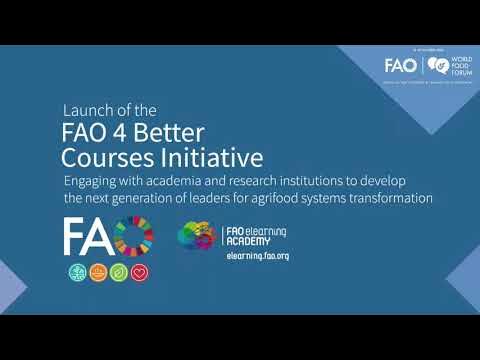
- 08 Apr 2025
In News:
The Food and Agriculture Organization (FAO) has launched two major global initiatives to advance inclusive and sustainable agrifood systems:
- “Four Betters Courses” Initiative – To revolutionize agrifood systems education
- “Commit to Grow Equality” Initiative – To bridge the gender gap in agrifood sectors
1. Four Betters Courses Initiative
- Launched: October 2024 during the World Food Forum
- Objective: To integrate FAO’s expertise into global agrifood systems education through partnerships with universities and academic networks.
- Alignment: Anchored in the FAO Strategic Framework 2022–2031
Core Philosophy – The “Four Betters” Approach:
- Better Production – Promote efficient, inclusive, and resilient food systems
- Better Nutrition – Ensure access to safe, nutritious, and affordable diets
- Better Environment – Address climate change and protect ecosystems
- Better Life – Improve rural livelihoods and reduce inequalities
- Delivery Platform: Implemented through the FAO eLearning Academy, which provides over 600 multilingual, certified courses.
2. Commit to Grow Equality (CGE) Initiative
- Launched: 2024 on the platform of the United Nations General Assembly (UNGA)
- Objective: To narrow the gender gap in agrifood systems and enhance women’s empowerment, especially in rural areas.
Key Highlights:
- Aims to benefit over 54 million women worldwide
- Mobilizes $1 billion in investments toward gender-responsive agrifood initiatives
- Provides strategic tools for tracking gender equality outcomes in public and private sectors
- Promotes gender-aligned national agricultural policies
- Facilitates evidence-based policymaking and fosters collaboration across governments, NGOs, and the private sector
Pradhan Mantri MUDRA Yojana (PMMY)

- 08 Apr 2025
In News:
The Pradhan Mantri MUDRA Yojana (PMMY), a flagship initiative aimed at providing financial support to unfunded micro and small enterprises, has completed 10 years since its launch in 2015.
Overview of PMMY
- Objective: To offer collateral-free institutional credit to non-corporate, non-farm micro and small enterprises.
- Loan Limit: Up to ?20 lakh without any collateral.
- Implementing Institutions (MLIs):
- Scheduled Commercial Banks
- Regional Rural Banks (RRBs)
- Non-Banking Financial Companies (NBFCs)
- Micro Finance Institutions (MFIs)
Categories of MUDRA Loans
Loan Category Loan Amount Range
Shishu Up to ?50,000
Kishor ?50,000 to ?5 lakh
Tarun ?5 lakh to ?10 lakh
Tarun Plus ?10 lakh to ?20 lakh
Key Achievements (2015–2025)
- Boost to Entrepreneurship: PMMY has sanctioned over 52 crore loans amounting to ?32.61 lakh crore, catalyzing a grassroots entrepreneurship revolution.
- MSME Sector Financing: Lending to MSMEs increased significantly:
- From ?8.51 lakh crore in FY14
- To ?27.25 lakh crore in FY24
- Projected to exceed ?30 lakh crore in FY25
- Women Empowerment: 68% of Mudra beneficiaries are women, highlighting the scheme’s impact in fostering women-led enterprises.
- Social Inclusion:
- 50% of loan accounts are held by SC, ST, and OBC entrepreneurs.
- 11% of beneficiaries belong to minority communities, showcasing PMMY’s contribution to inclusive growth.
Woolly Flying Squirrel
- 08 Apr 2025
In News:
The Wildlife Wing of the Himachal Pradesh Forest Department (HPFD) has recently documented the first-ever photographic evidence of the Woolly Flying Squirrel in Miyar Valley, located in the Lahaul and Spiti district. This marks a significant discovery, as the species is extremely elusive and rarely sighted.
About Woolly Flying Squirrel
- Common Name: Woolly Flying Squirrel / Western Woolly Flying Squirrel
- Scientific Name: Eupetaurus cinereus
- Taxonomy: The only known species under the genus Eupetaurus
- Conservation Status: Listed as Endangered on the IUCN Red List
Habitat and Distribution
- Endemism: Confined to the northwestern Himalayas
- Countries Found: Northern Pakistan and northwestern India
- Habitat Type: Inhabits a narrow elevational range within dry coniferous forests, typically in fragmented habitats
- Historical Records:
- Rediscovered in 1994, nearly 70 years after it was presumed extinct
- Since then, reported from Sai Valley, Gorabad, and Balti Gali in northern Pakistan
Key Characteristics
- Equipped with patagium (elastic skin membrane) that connects the forelimbs and hind limbs, enabling gliding—typical of flying squirrels
- Fur: Dense, straight, and silky
- Dorsal side: Blue-gray
- Ventral side: Pale gray
- Throat and ears: Covered in creamy white hairs
- Feet soles: Dense black fur, except for bare pinkish-brown toe pads
World Health Day 2025
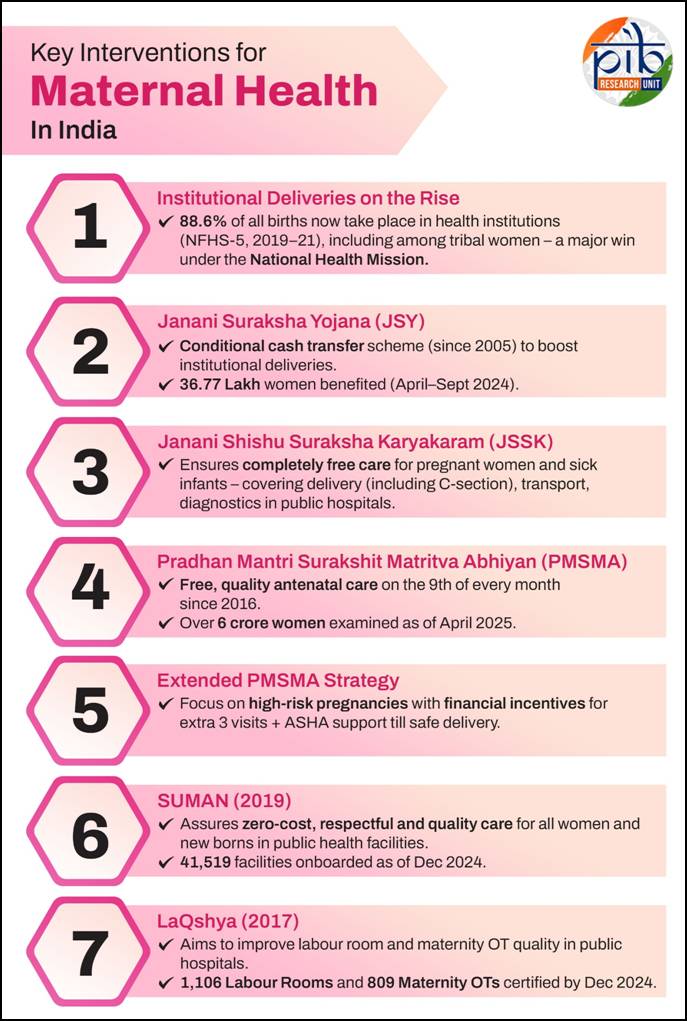
- 08 Apr 2025
In News:
World Health Day, observed annually on 7 April, highlights pressing global health issues and mobilises action to improve public health outcomes.
- Established by: World Health Organization (WHO)
- First celebrated: 1950
Overview and Significance
World Health Day is commemorated to mark the founding of the WHO in 1948. It serves to raise awareness about global health issues and mobilize efforts to improve public health outcomes.
The 2025 theme, Healthy Beginnings, Hopeful Futures, emphasizes maternal and newborn health, calling for coordinated efforts to eliminate preventable deaths and support long-term well-being of women and children.
This year’s observance launches a year-long global campaign aimed at:
- Promoting safe pregnancies and institutional deliveries
- Supporting maternal nutrition and postnatal care
- Encouraging healthcare equity for women and newborns
India’s Progress in Maternal and Child Health
India has made significant strides through initiatives under the Ministry of Health and Family Welfare, particularly via Ayushman Bharat and the National Health Mission (NHM).
Key Health Indicators (India vs Global, 1990–2020)
Indicator India Reduction (%) Global Reduction (%)
Maternal Mortality Ratio 83% 42%
Neonatal Mortality Rate 65% 51%
Infant Mortality Rate 69% 55%
Under-5 Mortality Rate 75% 58%
Recent National Data:
- MMR reduced from 130 (2014–16) to 97 (2018–20) per 1,00,000 live births
- IMR dropped from 39 (2014) to 28 (2020)
- NMR reduced from 26 (2014) to 20 (2020)
- U5MR declined from 45 (2014) to 32 (2020)
Major Initiatives for Maternal and Child Health
- Maternal Death Surveillance and Response (MDSR): Tracks maternal deaths and implements corrective measures.
- Mother and Child Protection (MCP) Card: Educates women on nutrition, rest, and health entitlements.
- Reproductive and Child Health (RCH) Portal: Tracks maternal and child health services.
- Anaemia Mukt Bharat: Focuses on anaemia reduction under POSHAN Abhiyan.
- Birth Waiting Homes: Ensures institutional deliveries in remote areas.
- VHSNDs and Outreach Camps: Deliver maternal and child services in rural and tribal areas.
Healthcare Access and Infrastructure
- Ayushman Arogya Mandirs (HWCs): 1.76 lakh active centers
- 107.10 crore screenings for hypertension
- 94.56 crore screenings for diabetes
- 5.06 crore wellness sessions (e.g., yoga) conducted
- 17,000+ health facilities certified under National Quality Assurance Standards (NQAS)
Digital Health Ecosystem
- Ayushman Bharat Digital Mission (ABDM):
- 76+ crore ABHA IDs
- 5.95 lakh verified healthcare professionals
- 52+ crore linked health records
- U-WIN Platform:
- 7.90 crore beneficiaries
- 1.32 crore vaccination sessions
- 29.22 crore vaccine doses administered
- eSanjeevani Telemedicine:
- Over 36 crore consultations
- World's largest primary telehealth platform
- 130+ specialities, 131,793 spokes, and 17,051 hubs
Disease Elimination Success
- The WHO World Malaria Report 2024 highlights India’s major strides in malaria elimination, with a 69% drop in cases and 68% reduction in deaths between 2017 and 2023.
- Contributing just 0.8% of global cases in 2023, India’s exit from WHO's High Burden to High Impact (HBHI) group in 2024 marks a significant public health achievement.
- The Government of India has eliminated Trachoma as a public health problem in 2024, a feat recognised by the WHO.
- The Government of India’s proactive Measles-Rubella vaccination drive, strong surveillance, and public awareness efforts have greatly improved public health.
- According to WHO’s Global TB Report, India has made strong progress in tuberculosis control.
- Under the National Tuberculosis Elimination Programme (NTEP), TB incidence fell by 17.7%, from 237 to 195 cases per lakh population between 2015 and 2023.
- TB-related deaths also declined from 28 to 22 per lakh.
- Notably, missing TB cases dropped by 83%, from 15 lakh in 2015 to 2.5 lakh in 2023.
- As of 6th April, 2025, the Pradhan Mantri TB Mukt Bharat Abhiyaan, launched in September 2022, has registered over 2.5 lakh Ni-kshay Mitra volunteers supporting over 15 lakh TB patients. This initiative has further been expanded to include family members of TB patients.
- Kala-azar Elimination: India has successfully achieved Kala-azar elimination as of October 2024, with 100% of endemic blocks reaching the target of less than one case per 10,000 population by the end of 2023.
INS Varsha
- 08 Apr 2025
In News:
India is set to operationalise INS Varsha, its first dedicated base for nuclear-powered submarines, by 2026. Located near Rambilli, about 50 km south of Visakhapatnam, Andhra Pradesh, this high-security facility is part of the classified Project Varsha, aimed at strengthening India’s maritime and nuclear deterrence capabilities in the Bay of Bengal and Indian Ocean Region (IOR).
Key Features:
- Strategic Location: Near deep waters of the Bay of Bengal, facilitating stealthy submarine movement and minimizing detection.
- Infrastructure:
- Underground pens and tunnel systems to conceal and protect nuclear submarines.
- Inner and outer harbour facilities; inner harbour completed, work ongoing on breakwaters and jetties.
- 20 sq. km area, capacity to house at least 10–12 nuclear submarines.
- Stealth Capabilities: Similar to China’s Hainan base, it offers satellite-evasion advantages, crucial for the survivability of SSBNs (nuclear-powered ballistic missile submarines).
- Support Facilities: Proximity to BARC Atchutapuram for nuclear infrastructure, enabling swift integration and maintenance of strategic assets.
- Geopolitical Role: Counters Chinese dual-use naval infrastructure at Hambantota (Sri Lanka) and BNS Sheikh Hasina (Bangladesh).
Strategic Significance:
- Enhances second-strike capability, vital for nuclear deterrence under India's nuclear triad.
- Enables undetected deterrent patrols by SSBNs, ensuring survivability in case of counterforce attacks.
- Facilitates rapid access to key chokepoints, especially the Strait of Malacca.
India’s Expanding Nuclear Submarine Fleet
INS Aridhaman – Third SSBN:
- Scheduled for commissioning in 2025.
- 7,000-tonne displacement, more capable than predecessors INS Arihant and INS Arighat.
- Equipped with K-4 Submarine-Launched Ballistic Missiles (SLBMs) with a range of 3,500 km.
- Built under the Advanced Technology Vessel (ATV) project by Shipbuilding Centre, Visakhapatnam, with BARC and DRDO support.
- Designed for long-duration deterrent patrols in deep sea.
Future Developments:
- India launched its fourth SSBN in November 2024, with ~75% indigenous content.
- Plans underway for even larger SSBNs and the construction of six nuclear-powered attack submarines (SSNs), starting with two approved 9,800-tonne SSNs for conventional strike and escort roles.
Related Naval Expansion – Project Seabird (Karwar Base):
- Located on the western coast, expanding to accommodate 50 warships and submarines, plus 40 auxiliary vessels.
- Will include a dual-use air station, new dockyard, and multiple dry berths.
Ayush Suraksha Portal

- 31 May 2025
In News:
The Ayush Suraksha Portal was launched in May 2025 by the Union Minister of State (Independent Charge) for Ayush, in compliance with the Supreme Court's directive. The portal marks a major step in enhancing regulatory oversight, public safety, and pharmacovigilance within the Ayush sector.
Objective
The portal aims to:
- Monitor and act on misleading advertisements.
- Track and respond to adverse drug reactions (ADRs).
- Promote transparency, accountability, and public participation in the regulation of traditional medicine systems.
Key Features
- Centralised digital platform for real-time reporting and analysis of misleading advertisements and ADRs.
- Accessible to the general public, healthcare professionals, and regulatory authorities.
- Ensures direct citizen participation by allowing users to report issues and track action taken.
- Developed with technical support from the Central Council for Research in Siddha (CCRS).
- Integrated with the National Pharmacovigilance Program for Ayush.
Institutional Integration
The portal coordinates with multiple regulatory and enforcement bodies:
- Ayush vertical under CDSCO
- Ministry of Information & Broadcasting (MoI&B)
- Central Consumer Protection Authority (CCPA)
- National Commission for Indian System of Medicine (NCISM)
- National Commission for Homoeopathy (NCH)
- Pharmacy Council of India (PCI)
- Food Safety and Standards Authority of India (FSSAI)
- State Licensing Authorities (SLAs)
Significance
- Meets the Supreme Court’s deadline ahead of time, reinforcing legal compliance.
- Enables real-time regulatory action, inter-state coordination, and data-driven governance.
- Enhances public trust and safety in the use of traditional medicines.
- Reflects the Ministry of Ayush’s commitment to evidence-based practices and responsible governance.
National Florence Nightingale Award 2025

- 31 May 2025
In News:
The President of India recently conferred the National Florence Nightingale Awards 2025 to exemplary nursing professionals in a formal ceremony held at Rashtrapati Bhavan.
About the National Florence Nightingale Awards
- Established: 1973
- Administered by: Ministry of Health and Family Welfare, Government of India
- Purpose: To honour exceptional contributions of nursing personnel across India in recognition of their meritorious service to society.
The award is open to nurses working in government, private, and voluntary healthcare settings, including hospitals, community health centres, educational institutions, and administrative roles.
Award Components
- Certificate of Merit
- Cash Prize: ?1,00,000
- Medal of Honour
About Florence Nightingale
- Florence Nightingale (1820–1910) was a pioneering English nurse, social reformer, and statistician, widely considered the founder of modern nursing.
- She gained recognition during the Crimean War for organizing the care of wounded soldiers in Constantinople (now Istanbul).
She also revolutionized nursing education by establishing the Nightingale School of Nursing at St. Thomas’ Hospital, London, the first institution based on scientific nursing principles.
Ahilyabai Holkar
- 31 May 2025
In News:
On the 300th birth anniversary of Maharani Ahilyabai Holkar, the Prime Minister will participate in the Mahila Sashaktikaran Maha Sammelan in Bhopal to honour her enduring legacy.
Historical Background
- Born: 31 May 1725
- Ruled: Malwa region (1767–1795) as part of the Maratha Confederacy
- Dynasty: Holkar
- Capital: Maheshwar (now in Madhya Pradesh)
Initially serving as a regent, Ahilyabai Holkar became the sovereign ruler after her husband and father-in-law’s deaths. Her rule is widely regarded as the golden age of the Holkar dynasty.
Governance and Administrative Reforms
- Ahilyabai was known for her equitable justice system, exemplified by the sentencing of her own son for a capital crime.
- She abolished discriminatory practices, such as the law confiscating property from childless widows.
- Courts for dispute resolution were established, and she remained accessible to the public, holding daily audiences.
- She broke gender norms by not observing purdah, a rare move for female rulers of the time.
Military Leadership
- Trained under Malhar Rao Holkar, she led her forces in battle.
- Appointed Tukoji Rao Holkar (Malhar Rao’s adopted son) as army commander.
- In 1792, she engaged a French officer, Chevalier Dudrenec, to modernize her army by establishing four battalions.
Cultural and Architectural Contributions
- A patron of literature and arts, she invited scholars like Moropant, Ananta Gandhi, and Khushali Ram to her court.
- Promoted craft and industry, notably founding the Maheshwar textile industry—famous today for Maheshwari sarees.
- Commissioned the construction and restoration of hundreds of Hindu temples and dharamshalas across India.
- Her most iconic act was the renovation of the Kashi Vishwanath Temple in Varanasi in 1780.
- Also contributed to infrastructure development, including roads, wells, forts, and rest houses.
Titles and Recognition
- Referred to as ‘Punyashlok’, meaning one as pure as sacred chants.
- British historian John Keay called her the ‘Philosopher Queen’.
Demise and Succession
Ahilyabai passed away on 13 August 1795 at the age of 70. She was succeeded by Tukoji Rao Holkar, who later abdicated in favour of Jaswant Rao Holkar. Jaswant Rao remained the last Holkar to rule independently until 1804.
Swachh Survekshan Grameen (SSG) 2025
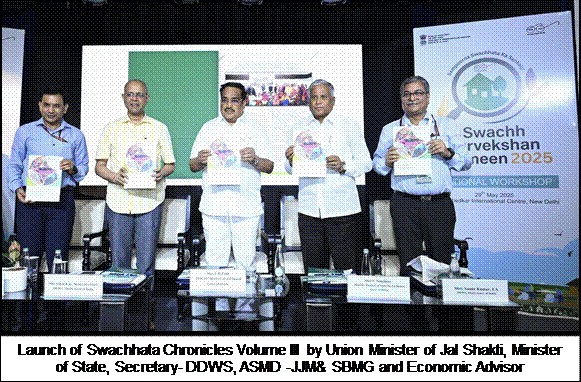
- 31 May 2025
In News:
The Union Minister of Jal Shakti recently launched Swachh Survekshan Grameen (SSG) 2025, India’s largest rural sanitation survey, conducted by the Department of Drinking Water and Sanitation (DDWS) under the Ministry of Jal Shakti.
Objective and Scope:
SSG 2025 is designed to evaluate the impact and sustainability of rural sanitation outcomes achieved under the Swachh Bharat Mission – Gramin (SBM-G) Phase II, particularly focusing on the Open Defecation Free (ODF) Plus Model.
- The survey aims to rank all States, Union Territories, and Districts based on both quantitative and qualitative sanitation indicators.
- 21,000 villages across 761 districts in 34 States/UTs will be covered.
Key Assessment Components:
The evaluation follows a structured framework with four major components:
- Service-Level Progress (SLP): Based on data from district self-assessments and verification of ODF Plus Model villages.
- Direct Observation of Sanitation Status: Field-based observations in sampled villages, households, and public places such as schools and Common Service Centers (CSCs).
- Infrastructure Functionality Check: Includes assessment of:
- Plastic Waste Management Units (PWMUs)
- Faecal Sludge Management (FSM) plants
- GOBARdhan plants
- Swachhata Green Leaf Rating (SGLR) sites
- Citizen Feedback: Collected through a dedicated mobile application and direct interviews, ensuring community participation and transparency.
Key Innovations in SSG 2025:
- Geo-fencing for data authenticity and integrity.
- Emphasis on Jan Bhagidari (public participation) to sustain and validate sanitation achievements.
- Engagement of an independent agency for unbiased survey implementation.
- Launch of Swachhata Chronicles Volume III and a compendium of best practices from States to promote knowledge sharing.
Significance:
- Reinforces India’s commitment to sustainable sanitation and rural development.
- Encourages evidence-based policy interventions and fosters competitive federalism.
- Highlights sanitation as a continuous developmental journey, not a one-time target.
Calotes zolaiking
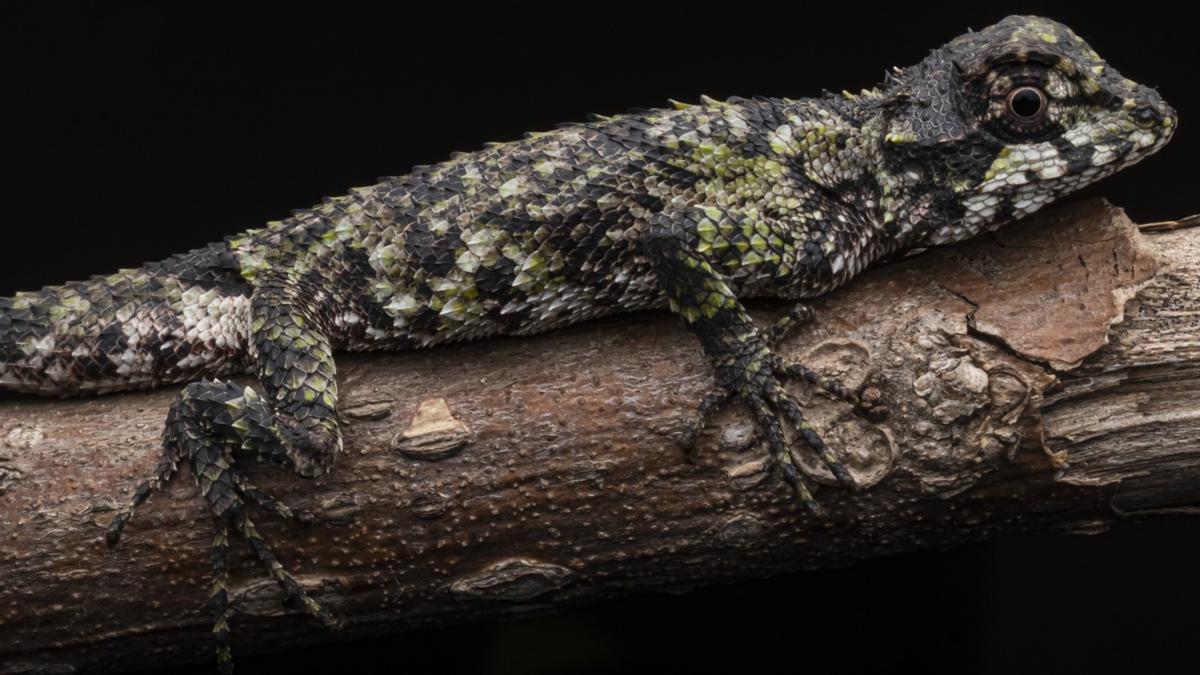
- 31 May 2025
In News:
The rare lizard species Calotes zolaiking has been recorded for the first time in Meghalaya, marking a significant extension of its known habitat and triggering grassroots conservation efforts.
About Calotes zolaiking
- Scientific Classification: Belongs to the Calotes genus under the Agamidae family.
- First Described: In 2019 from Aizawl district, Mizoram.
- Appearance: About 5 inches in length; green body with dark patches and strongly keeled scales (scales with a raised ridge).
- Behaviour: Arboreal (tree-dwelling), diurnal, fast runners, and capable swimmers.
- Diet: Insectivorous—feeds on insects and small invertebrates.
Distribution and Habitat
- New Sighting: Mawmluh village, East Khasi Hills, Meghalaya, April 2024.
- Range Extension: Approx. 172 km aerially from the original Mizoram locality.
- Genus Distribution: Found across India, Sri Lanka, Southeast Asia, and parts of Oceania.
- India's Richness: 14 known Calotes species in India; 9 recorded in the Northeast region.
Conservation Significance
- Community Role: Local residents Goldenstar Thongni and Banyllashisha Wankhar played a key role in identifying and collecting specimens.
- Catalyst for Conservation: The species' discovery has motivated the local community in Mawmluh and Sohra (Cherrapunji) to strengthen forest protection amidst threats from limestone mining and industrial activities.
- Sacred Groves: Traditional conservation spaces like sacred groves are being revitalized in light of the new biodiversity significance.
- Scientific Impact: The find was featured in Zootaxa, a peer-reviewed taxonomy journal, adding global recognition.
Broader Ecological Relevance
- Biodiversity Surveys: The discovery underscores the need for continuous herpetofaunal surveys in the Khasi Hills due to forest degradation.
- Historical Context: Cited alongside Stoliczkia khasiensis, a snake species last seen in 1870, highlighting the risk of species being lost without systematic documentation.
India and the United Nations Peacekeeping
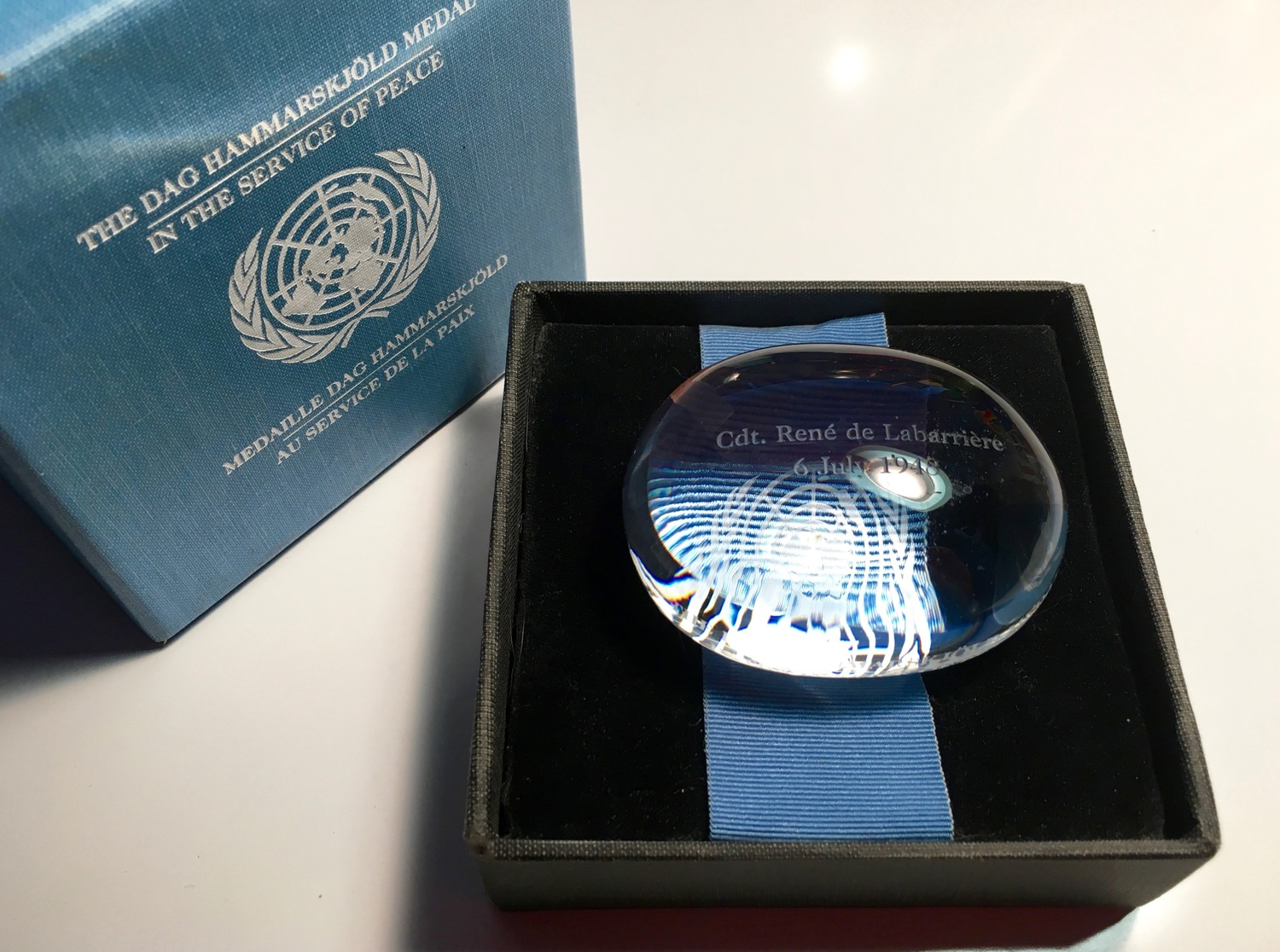
- 30 May 2025
In News:
Two Indian peacekeepers—Brigadier General Amitabh Jha (UNDOF) and Havildar Sanjay Singh (MONUSCO)—are being posthumously awarded the Dag Hammarskjöld Medal by the United Nations. Their sacrifice will be honoured at the U.N. Headquarters during the International Day of U.N. Peacekeepers on May 29, 2025.
Overview:
- Instituted: 1997
- Purpose: Posthumous honour to U.N. peacekeepers who die in service under U.N. authority.
- Awarded on: Peacekeepers' Day (May 29) annually.
- Named after: Dag Hammarskjöld, the 2nd U.N. Secretary-General, who died in a 1961 plane crash during a peace mission in Congo.
- First award (1998): Dag Hammarskjöld and Commandant René de Labarrière (first peacekeeper to die in a U.N. mission, 1948).
Other UN Peacekeeping Awards
- Captain Mbaye Diagne Medal for Exceptional Courage: Recognizes U.N. personnel displaying exceptional bravery.
- UN Military Gender Advocate of the Year Award: Recognizes peacekeepers promoting gender equality under UNSC Resolution 1325.
- 2023 recipient: Major Radhika Sen (India, MONUSCO).
- 2024 recipients: Sqn. Ldr. Sharon Syme (Ghana) and Superintendent Zainab Gbla (Sierra Leone), both serving in UNISFA.
India’s Contribution to UN Peacekeeping
- Total personnel deployed (2025): Over 5,300 Indian troops in missions in: Abyei, Central African Republic, DR Congo, Lebanon, Somalia, South Sudan, and Western Sahara.
- Historical role:
- Since 1950s, India has contributed over 290,000 personnel to 50+ peacekeeping missions.
- India is among the top four contributors of uniformed personnel.
- Engagement includes training, capacity building, and technology support for U.N. missions.
UN Peacekeeping: Global Overview
- Established: 1948 (First mission: United Nations Truce Supervision Organization in the Middle East).
- Cumulative personnel served: Over 2 million in 71 operations.
- Current strength (2025): Around 68,000 personnel from 119 countries in 11 missions across Africa, Asia, Europe, and the Middle East.
- Peacekeepers who have died since 1948: Over 4,400.
Theme 2025: ‘The Future of Peacekeeping’
- Linked to: Pact for the Future adopted in 2024 by global leaders.
- Aim: To reform peacekeeping for modern challenges.
- UN Secretary-General António Guterres emphasized the need for a peacekeeping force ready to face "increasingly complex" global situations.
Stromatolites in India
- 30 May 2025
In News:
600-million-year-old stromatolites in the Himalayas tell the story of an ocean lost and Earth’s first breath.
What are Stromatolites?
Stromatolites are organo-sedimentary structures formed by the entrapment of calcium carbonate precipitates by cyanobacteria (blue-green algae) in shallow marine environments. These layered, dome-shaped mounds represent some of the earliest evidence of life on Earth, with their formation driven by photosynthetic microbial mats.
- Composition: Typically found in limestone, shale, and sandstone.
- Structure: Characterized by laminated layers that may appear flat, dome-shaped, or columnar.
- Habitat (Ancient & Modern): Mostly marine; some ancient forms inhabited freshwater and intertidal zones. Today, living stromatolites survive in limited saline lagoons and bays.
Latest Discovery: Chambaghat, Himachal Pradesh
A major stromatolite outcrop, dating back 600 million years, was recently found in Chambaghat, Solan district, Himachal Pradesh. These structures lie within the Krol Group of sedimentary rocks — a part of the ancient Tethys Sea that existed before the Indian plate collided with Eurasia.
- Elevation: Found at 5,000–6,000 ft above sea level, showcasing tectonic uplift.
- Age Significance: Though not the oldest globally or in India, these are among the younger but well-preserved stromatolites, possibly from the Precambrian-Cambrian boundary (~543–548 million years ago).
Scientific Importance
- Geological Record: Stromatolites document Earth's atmospheric shift from a greenhouse gas-rich to an oxygen-rich environment — a transformation driven by photosynthetic cyanobacteria.
- The Great Oxidation Event (GOE): Occurred ~2.4 billion years ago, when oxygen produced by cyanobacteria began accumulating in the atmosphere, enabling the evolution of multicellular life.
- Tectonic History: Their presence in the Himalayas illustrates the story of the Gondwana supercontinent, India’s northward drift, and the closure of the Tethys Sea.
Global and Indian Context
- Oldest Stromatolites (Global): ~3.6 billion years old from Western Australia.
- Oldest in India: ~2.5 billion years old in the Dharwar Supergroup, Karnataka.
Prominent Stromatolite Sites in India:
Region Geological Feature
Chitrakoot, Uttar Pradesh Columnar stromatolites in Vindhyan limestones
Morni Hills, Haryana Preserved stromatolites in dolomite
Mussoorie & Nainital, Uttarakhand Precambrian marine stromatolites in Krol Belt
Jaisalmer Fossil Park, Rajasthan Protected Mesozoic marine fossil site
Dharwar Supergroup, Karnataka Neoarchean stromatolites (~2.6 billion years old)
Bhima Basin, Karnataka Precambrian stromatolites in shallow marine limestones
Preservation and Geoheritage
Geologists and experts advocate for declaring Chambaghat as a Geoheritage Park, involving local communities and schools to foster awareness. The goal is to integrate science with tourism, conservation, and education.
- Challenge: Many stromatolitic sites across India face neglect or risk from mining and construction, despite their scientific and educational potential.
- Appeal: Proposal for UNESCO Geoheritage status to protect and promote this prehistoric legacy.
Pedicularis rajeshiana

- 30 May 2025
In News:
Researchers from the Botanical Survey of India (BSI), under the Ministry of Environment, Forest and Climate Change (MoEF&CC), have discovered a new plant species — Pedicularis rajeshiana — in the high-altitude regions of Rohtang Pass, Himachal Pradesh.
Key Facts:
Taxonomy and Classification
- Scientific Name: Pedicularis rajeshiana
- Family: Orobanchaceae
- Common Group: Louseworts (Hemiparasitic plants – partially dependent on host plants for nutrients, but also photosynthetic)
- Named by: Botanist Dr. Arti Garg, formerly of BSI Prayagraj, now with BSI Dehradun
- Publication: Officially recorded in the international journal Phytotaxa (Mongolia)
Habitat and Discovery
- Location: Rohtang Pass, Pir Panjal range, Western Himalayas
- Altitude: ~4,390 metres (14,400 feet)
- Habitat: Shaded rocky slopes in scattered patches
- Discovery Project: "Flora of India" initiative by MoEF&CC and BSI
Unique Botanical Characteristics
- Size: Smaller than related species like P. porrecta and P. heydei
- Floral Features:
- Deeply cut lower labium (lip)
- Stamens positioned at three distinct levels inside the flower
- Rare pollen morphology with croton-like surface texture
- Two flowers observed with twin galea (hood-like structures) — a first in the genus, possibly an evolutionary trait to enhance pollination
Ecological Significance
- Endemicity: Many Pedicularis species are habitat-specific and endemic to certain Himalayan regions
- India's Diversity: Home to 83 known species of Pedicularis, with 36 in the western Himalayas
- Conservation Value: The specificity of habitat and rarity suggest potential threat status; conservation is crucial.
India’s First Gene-Edited Sheep

- 30 May 2025
In News:
Sher-e-Kashmir University of Agricultural Sciences and Technology (SKUAST-Kashmir) has successfully developed India’s first gene-edited sheep, marking a significant breakthrough in the field of animal biotechnology.
Key Highlights:
- Institution Involved: Sher-e-Kashmir University of Agricultural Sciences and Technology (SKUAST), Srinagar.
- Technology Used:
- CRISPR-Cas9 gene editing — a precision genome editing tool that won the 2020 Nobel Prize in Chemistry.
- Gene editing was conducted without insertion of foreign DNA, thus the sheep is non-transgenic and differs from traditional GMOs.
- Gene Targeted: The myostatin gene, which regulates muscle growth, was edited to enhance muscle mass.
- Result: Muscle mass increased by 30%, a trait absent in Indian sheep breeds but seen in select European breeds like the Texel.
- Significance:
- Improved meat yield and quality in sheep.
- Potential for disease-resistant and higher-reproduction-rate livestock in the future.
- Supports India’s evolving biotech policy by promoting non-transgenic, gene-edited organisms that are more likely to receive regulatory acceptance.
- Aligns with goals of sustainability and food security by enhancing productivity per animal.
- Regulatory & Safety Aspects:
- Research adhered to international biosafety protocols.
- Sponsored by the Indian Council of Agricultural Research (ICAR).
- Legacy & Research Background:
- Developed after 4 years of dedicated research.
- Led by Prof. Riaz Ahmad Shah, also known for creating India’s first cloned Pashmina goat, Noori, in 2012, and contributing to the world’s first cloned buffalo at NDRI, Karnal.
Implications for the Future:
- Opens doors for precision breeding in livestock to boost India’s animal husbandry sector.
- Strengthens India’s position in advanced genomic research and supports the vision of Atmanirbhar Bharat in biotechnology.
- Awaits comprehensive regulatory framework for gene-edited animals, currently under government consideration.
WMO Climate Forecast 2025–2029
- 30 May 2025
In News:
The World Meteorological Organization (WMO) has released its latest decadal climate forecast (2025–2029), warning of a continued trend of record-breaking global temperatures. This projection raises serious concerns about climate risks, sustainable development, and international climate commitments under the Paris Agreement.
Key Projections:
- Annual Global Temperature Rise: Each year from 2025–2029 is projected to be 1.2°C to 1.9°C above pre-industrial levels (1850–1900).
- Record Heat Likelihood:
- 80% chance that at least one year will surpass 2024, currently the warmest year on record.
- 86% probability that one year will exceed the 1.5°C threshold.
- Five-Year Mean Warming: 70% chance that the 2025–2029 average will be above 1.5°C, a sharp rise from 47% (2024–2028) and 32% (2023–2027).
Note: The Paris Agreement’s 1.5°C limit refers to long-term (20-year) averages, but short-term overshoots are now increasingly probable.
Regional and Thematic Insights:
1. Arctic Amplification: Arctic winters (Nov–Mar) are projected to be 2.4°C warmer than the 1991–2020 average—3.5× faster than the global rate.
2. Sea Ice Decline: Continued sea ice reduction is expected in the Barents Sea, Bering Sea, and Sea of Okhotsk, impacting marine biodiversity and indigenous livelihoods.
3. Precipitation Variability:
- Wetter-than-average conditions likely in:
- Sahel region
- Northern Europe
- Alaska and Northern Siberia
- Drier conditions expected over:
- Amazon Basin
- Parts of South Asia
South Asia may witness generally wet years, though seasonal variability will persist.
Impact and Implications:
- Extreme Weather Events: Increased warming will fuel more intense heatwaves, extreme rainfall, droughts, and floods, stressing both urban systems and agriculture.
- Cryosphere and Ocean Changes:
- Accelerated glacier and sea ice melt will raise sea levels.
- Ocean heating contributes to acidification and marine biodiversity loss.
- Threat to Sustainable Development: Progress on SDGs, particularly food security, water availability, and health, is at risk in vulnerable regions.
Way Forward:
- Revise NDCs at COP30: Strengthen and align Nationally Determined Contributions (NDCs) with the 1.5°C goal.
- Accelerate Clean Energy Transition: Promote renewables, energy efficiency, and net-zero strategies to reduce GHG emissions.
- Adaptation and Resilience: Invest in climate-resilient infrastructure and early warning systems.
- Climate Monitoring & Forecasting: Enhance WMO-led regional forecasts and risk assessment tools.
- Preserve Natural Carbon Sinks: Protect forests, wetlands, and oceans to mitigate atmospheric CO?.
India’s Sharp Decline in Poverty
- 29 May 2025
In News:
Recent Household Consumption Expenditure Surveys (2022–23 and 2023–24) by the National Statistical Office (NSO), alongside a World Bank Poverty & Equity Brief, highlight a historic decline in poverty in India. This achievement is largely attributed to sustained GDP growth and declining inequality.
Key Findings:
Poverty Reduction Trends (2011–12 to 2023–24)
- All-India Poverty Ratio: Fell from 29.5% (2011–12) → 9.5% (2022–23) → 4.9% (2023–24).
- Extreme Poverty (<$2.15/day, PPP): Declined from 16.2% → 2.3% (2011–12 to 2022–23).
- Lower-Middle Income Poverty (<$3.65/day): Declined from 61.8% → 28.1%.
Updated Poverty Lines (Rangarajan Committee Methodology):
Area 2011–12 2022–23 2023–24
Rural ?972 ?1,837 ?1,940
Urban ?1,407 ?2,603 ?2,736
- For a 5-member urban household, the 2023–24 poverty threshold is ?13,680/month.
Factors Driving Poverty Reduction:
- High GDP Growth: Rose from 7.6% (2022–23) to 9.2% (2023–24).
- Moderating Inflation: Consumer Price Index (CPI) inflation dropped from 6.7% to 5.4%, enhancing real incomes. However, food inflation rose to 7.5%, affecting poor households disproportionately.
- Inequality Decline:
- Gini Coefficient fell from 0.310 (2011–12) → 0.282 (2022–23) → 0.253 (2023–24).
- Urban areas saw faster decline in consumption inequality.
Nature and Depth of Poverty:
- Poverty Near the Threshold:
- Over 50% of the poor lie between 75–100% of the poverty line.
- Large share of non-poor lie just above the line (115–125%), making them vulnerable.
- Depth Analysis (Raised Cut-Offs): Even at 125% of the poverty line, poverty fell by 34.2 percentage points (2011–24), showing broad-based gains.
Regional & Structural Challenges:
- Persisting Regional Disparities: States like Bihar, Jharkhand, Odisha still report higher poverty levels.
- Urban Informality & Data Gaps: Recent surveys underrepresent informal workers and migrants, skewing urban poverty estimates.
- Vulnerability to Shocks: Health crises, climate events, or inflation could push the near-poor back into poverty.
- Gaps in Welfare Coverage: Urban poor and migrant populations face limited access to PDS and safety nets.
Policy Imperatives:
- Targeted Cash Transfers: Scale up schemes like PM-GKAY, DBT for LPG, and tailor transfers to those just above the poverty line.
- Strengthen Rural Employment: Enhance MGNREGA funding and integrate climate-resilient jobs.
- Build Urban Safety Nets: Develop a comprehensive urban social protection framework for gig and informal sector workers.
- Education & Nutrition Investments: Bridge human capital gaps via PM POSHAN, Saksham Anganwadi.
- Continuous Poverty Monitoring: Institutionalize annual poverty tracking using real-time and multidimensional indicators.
Menstrual Hygiene in India: Insights from the 2025 Survey
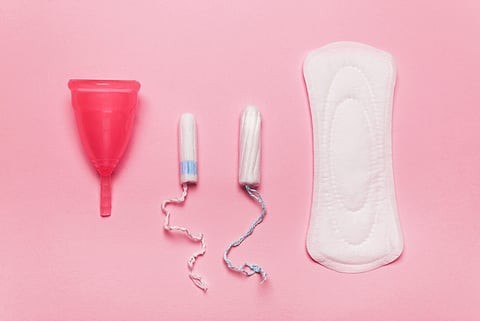
- 29 May 2025
In News:
Menstrual Hygiene Day, observed annually on May 28, raises awareness about safe menstrual practices and their role in ensuring health, dignity, and equality for women and girls. Ahead of the day, the everteen Menstrual Hygiene Survey 2025 has highlighted growing concerns around misinformation, stigma, and access to menstrual products in India.
Key Findings from the Survey:
- Social Media & Misinformation:
- 71.6% of women find social media informative on menstruation.
- However, only 11.5% trust it during emergencies.
- 1 in 4 women reported that misinformation online negatively affected their menstrual health.
- Examples of Misinformation:
- Harmful remedies such as applying menstrual blood for skincare, or drinking coffee/lemonade for cramps.
- Myths like avoiding exercise, temple visits, or not washing hair during periods.
- Misleading claims linking light flow to infertility or tampon use to anatomical changes.
- Menstrual Pain & Remedies:
- 82.7% of respondents experience menstrual pain.
- Only 14.2% use painkillers; 41.5% use no remedy at all.
- Cramps roll-ons used by just 5.5%.
- Menstrual Products Usage:
- 87.8% use sanitary pads (most common).
- Disposable period panties (5.7%) are more popular than menstrual cups (4.7%) or tampons (1.6%).
- 35.4% purchase menstrual products online citing convenience and discounts.
- A significant number of offline buyers report discomfort at physical stores.
- Online Discourse:
- 34% of women shared personal menstrual experiences online.
- Yet, 37.6% feared privacy breaches and 11.4% feared social judgment.
Menstrual Hygiene: Broader Context
- Definition: Safe and hygienic management of menstruation, including the use of clean products, proper disposal, access to sanitation, and health education.
- Global Concern: According to UNICEF, 500 million women globally lack access to adequate menstrual hygiene facilities.
Challenges in India:
- Digital Myths & Stigma: Despite digital access, online spaces are rife with misinformation and taboo-laden content.
- Access Inequality: Significant urban-rural divide in menstrual health services, infrastructure, and product availability.
- Awareness Gaps: Cultural silence and lack of comprehensive health education still persist.
Policy Interventions & Governance:
- Relevant Government Initiatives:
- SUVIDHA Scheme: Affordable biodegradable sanitary napkins at Jan Aushadhi Kendras.
- Swachh Bharat Mission: Incorporates Menstrual Hygiene Management (MHM) into sanitation programs.
- Global Frameworks: Sustainable Development Goal (SDG) 6 – Right to clean water and sanitation, encompassing menstrual hygiene.
Modified Interest Subvention Scheme (MISS) – FY 2025–26
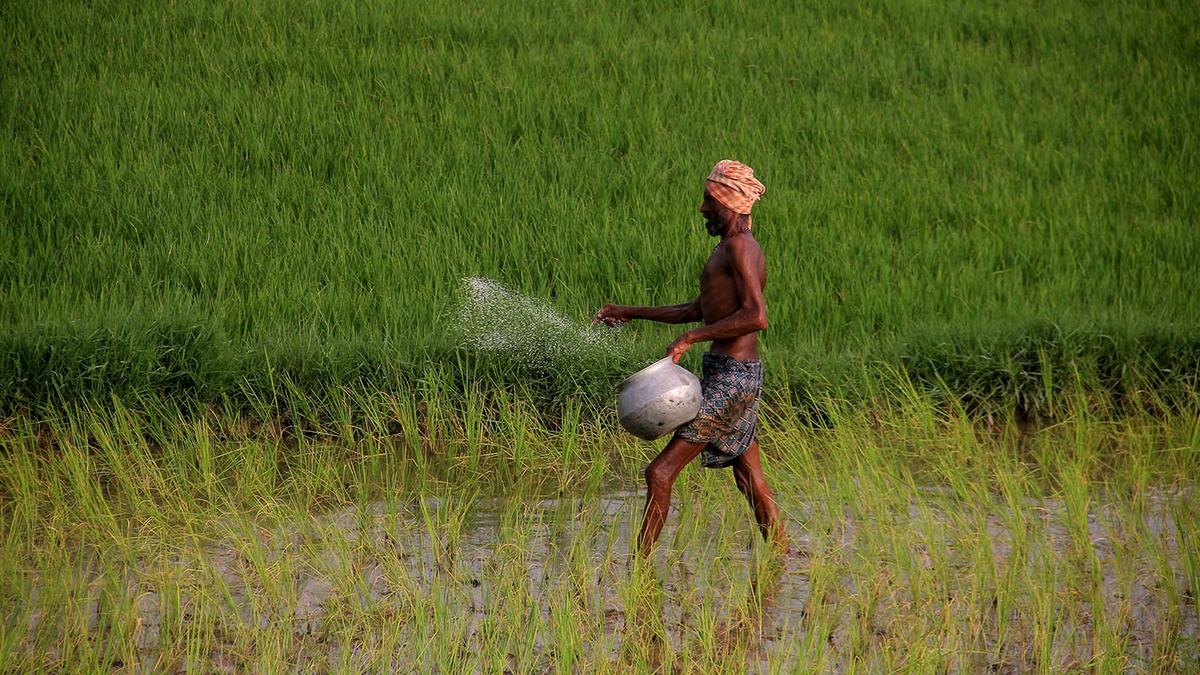
- 29 May 2025
In News:
The Union Cabinet has approved the continuation of the Interest Subvention (IS) component under the Modified Interest Subvention Scheme (MISS) for the financial year 2025–26, retaining the existing structure and interest rates.
About the Scheme:
- Type: Central Sector Scheme
- Objective: To provide short-term agricultural credit to farmers at affordable interest rates through Kisan Credit Cards (KCC).
Key Features:
- Loan Coverage:
- Short-term crop loans up to ?3 lakh per farmer through KCC.
- For loans exclusively for animal husbandry or fisheries, the benefit applies up to ?2 lakh.
- Interest Rates:
- Base interest rate: 7%
- 1.5% interest subvention to lending institutions
- 3% Prompt Repayment Incentive (PRI) for timely repayment
- Effective interest rate for prompt payers: 4%
- Implementing & Monitoring Agencies:
- Reserve Bank of India (RBI)
- National Bank for Agriculture and Rural Development (NABARD)
- Operated via Public Sector Banks, Regional Rural Banks, Cooperative Banks, and Private Banks in rural/semi-urban areas.
Recent Updates and Rationale:
- No structural changes have been introduced in the scheme for FY 2025–26.
- The scheme continues amidst rising lending costs, with stable repo rates and MCLR trends.
- It ensures credit access for small and marginal farmers, critical for financial inclusion and agricultural productivity.
Impact on Agricultural Credit:
- KCC Accounts: Over 7.75 crore active accounts across India.
- Institutional Credit Growth:
- Disbursement via KCC increased from ?4.26 lakh crore (2014) to ?10.05 lakh crore (Dec 2024).
- Total agricultural credit rose from ?7.3 lakh crore (FY 2013–14) to ?25.49 lakh crore (FY 2023–24).
- Digital Reform: Kisan Rin Portal (KRP) launched in August 2023 has improved transparency and efficiency in claim processing.
Significance:
- Helps ensure timely and affordable institutional credit to the farming sector.
- Supports the government's goal of doubling farmers’ income.
- Strengthens the rural credit delivery system and promotes inclusive growth in agriculture.
Madden-Julian Oscillation (MJO)
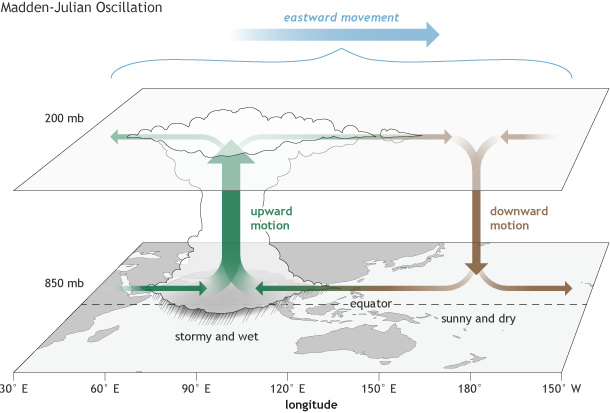
- 29 May 2025
In News:
In 2025, the early onset of the southwest monsoon in Kerala (May 24) and Mumbai (May 26—the earliest on record) was significantly influenced by the Madden-Julian Oscillation (MJO), as reported by the India Meteorological Department (IMD).
What is the MJO?
- The Madden-Julian Oscillation (MJO) is a large-scale atmospheric phenomenon observed in the tropical belt (30°N to 30°S).
- It is an eastward-moving disturbance involving winds, clouds, pressure, and rainfall that circles the globe every 30 to 60 days (occasionally up to 90 days).
- Identified in 1971 by Roland Madden and Paul Julian, it differs from ENSO (El Niño–Southern Oscillation) in being intra-seasonal and transient.
Phases of MJO:
- Enhanced Convective Phase:
- Associated with increased cloudiness, low pressure, and above-normal rainfall.
- Characterized by rising air and moisture convergence.
- Suppressed Convective Phase:
- Brings clearer skies and reduced rainfall due to subsiding dry air.
- These phases shift eastward and influence weather globally, including India.
Formation and Movement:
- Triggered by surface wind convergence that causes upward motion, cloud formation, and upper-level wind divergence.
- Travels at 4–8 m/s, completing a global circuit roughly every 30–60 days.
MJO’s Impact on Indian Monsoon:
- MJO in active phase over the Indian Ocean can:
- Trigger early monsoon onset, as seen in 2024 and 2025.
- Enhance cyclogenesis and monsoon depressions.
- Improve intra-seasonal rainfall variability.
- May 2025 Event:
- The MJO was in Phase 4 with amplitude >1, indicating strong activity conducive to rainfall.
- This condition, along with favorable local and oceanic factors, supported early monsoon advancement in India.
Global Influence of MJO:
- Cyclone Modulation: Alters frequency and intensity of tropical cyclones.
- Weather Extremes: Affects jet streams, triggering cold surges, heatwaves, or floods in mid-latitudes (e.g., U.S., Europe, Australia).
- Interaction with ENSO: While not always directly linked, MJO can amplify or be influenced by El Niño conditions.
Dark Patterns and India’s Regulatory Response
- 29 May 2025
In News:
The Ministry of Consumer Affairs, Food, and Public Distribution has initiated a robust crackdown on Dark Patterns—deceptive design practices used on digital platforms to manipulate consumer behavior. A recent high-level stakeholder meeting in Delhi, chaired by Union Minister Prahlad Joshi, brought together representatives from major e-commerce platforms like Amazon, Flipkart, Zomato, and Ola, along with consumer organizations and law institutions, to address the growing concern.
What are Dark Patterns?
Dark Patterns are user interface designs that intentionally mislead or coerce consumers into making decisions they would not have otherwise made. These manipulative tactics exploit psychological principles and cognitive biases to serve the commercial interests of platforms—often at the cost of consumer autonomy.
Types of Dark Patterns Identified by the Government:
The Department of Consumer Affairs has officially recognized 13 types of dark patterns in its November 2023 guidelines. Prominent among them are:
- False Urgency: Creating artificial time pressure (e.g., “Only 1 seat left!”).
- Basket Sneaking: Adding items to the cart without user consent.
- Confirm Shaming: Using guilt-driven language to influence decisions.
- Subscription Trap: Making subscription easy but cancellation difficult.
- Interface Interference: Hiding crucial information or options.
- Bait and Switch: Advertising one offer and switching to another.
- Hidden Costs: Revealing extra charges only at checkout.
- Forced Action: Making users complete unrelated tasks to proceed.
- Disguised Ads, Trick Questions, Nagging, SAAS Billing Abuse, and Rogue Malware Links are other examples.
These practices have been found across multiple digital sectors including e-commerce, travel, OTT platforms, edtech, online banking, and quick commerce.
Consumer Impact and Rising Complaints:
The National Consumer Helpline has witnessed a significant increase in grievances related to dark patterns. Platforms are accused of eroding consumer trust, causing financial harm, breaching privacy, and distorting fair market practices.
According to LocalCircles, based on a survey conducted across 392 districts with feedback from 2.30 lakh consumers, the worst offenders include edtech, airline, and taxi app services. Notably, companies like Uber and Rapido were recently issued notices by the Central Consumer Protection Authority (CCPA) for coercing users into paying tips in advance.
Regulatory Measures in India:
- Consumer Protection Act, 2019: While it prohibits unfair trade practices, it lacks explicit provisions targeting dark patterns, making enforcement challenging.
- 2023 Guidelines on Dark Patterns: Released by the Department of Consumer Affairs, these guidelines define deceptive interfaces as violations of consumer rights and misleading advertisements.
- Self-Audit Mandate: E-commerce companies have been instructed to conduct internal audits and eliminate dark patterns from their platforms.
- Proposed Joint Working Group: A mechanism is being considered to increase industry awareness and enforce compliance.
- Voluntary and Legal Enforcement: The government has urged digital firms to integrate the guidelines into internal policies and consumer grievance redressal systems.
Panchayat Advancement Index (PAI) 2.0

- 28 May 2025
In News:
The Ministry of Panchayati Raj recently held a two-day national write-shop in New Delhi to roll out the Panchayat Advancement Index (PAI) Version 2.0 for the financial year 2023–24. This updated version marks a significant stride toward enabling evidence-based, participatory local governance in India.
What is Panchayat Advancement Index (PAI)?
The PAI is a multi-domain, multi-sectoral index designed to assess the developmental progress, performance, and governance efficiency of Gram Panchayats. It aligns with the Localization of Sustainable Development Goals (LSDGs) and India's broader commitment to the 2030 SDG Agenda.
Key Features of PAI 2.0
- Framework: Based on 435 unique local indicators (331 mandatory, 104 optional), drawn from 566 data points across 9 LSDG themes, aligned with the National Indicator Framework (NIF) of the Ministry of Statistics and Programme Implementation (MoSPI).
- Purpose:
- Measures holistic development and well-being at the grassroots level.
- Helps identify developmental gaps and supports data-driven planning for Panchayats.
- Encourages bottom-up planning and governance.
- Performance Classification:
- Achiever: 90 and above
- Front Runner: 75 to <90
- Performer: 60 to <75
- Aspirant: 40 to <60
- Beginner: Below 40
Evolution from PAI 1.0 to 2.0
- PAI 1.0 established the baseline, covering 2.16 lakh Gram Panchayats across 29 States/UTs.
- PAI 2.0 offers enhanced functionality, efficiency, and user-friendliness, with refined indicators and improved data usability, while maintaining thematic comprehensiveness.
Recent Developments
- Launch of the PAI 2.0 Portal and a comprehensive PAI 2.0 Booklet for FY 2023–24 to guide implementation.
- According to the Ministry, PAI 2.0 now contains over 100 indicators that collectively offer a robust picture of social and economic development at the Panchayat level.
Jinchuanloong niedu
- 28 May 2025
In News:
A newly discovered genus and species of sauropod dinosaur, Jinchuanloong niedu, has been identified from fossil remains found in the Xinhe Formation near Jinchang city in Gansu Province, northwestern China. This discovery adds to the growing diversity of early-diverging sauropods from the Middle Jurassic period, dating back approximately 165 million years.
About Jinchuanloong niedu
- Jinchuanloong niedu belongs to the group Eusauropoda, which comprises early-diverging, strictly herbivorous, long-necked, quadrupedal dinosaurs.
- The fossil specimen includes a nearly complete skull with mandible, five cervical vertebrae, and 29 articulated caudal vertebrae.
- The skull measures approximately 31 cm in length and 12.5 cm in height. Notably, complete skulls are rare in non-neosauropod eusauropods due to their fragile nature.
- The skull is well-preserved, although slightly deformed due to compression. Most cranial sutures remain distinctly visible, aiding paleontological study.
Paleontological Significance
- This species is the earliest sauropod identified from Gansu Province, enriching the diversity of known early-diverging sauropods in East Asia.
- The discovery contributes valuable insights into sauropod evolution in northwest China, particularly during the Middle Jurassic.
- The presence of Jinchuanloong niedu helps trace lineage continuity in the aftermath of a global warming event during the late Early Jurassic, which led to the extinction of other sauropod groups, leaving only eusauropods.
Eusauropoda and Sauropod Evolution
- Sauropods, which existed from the Early Jurassic to the Late Cretaceous, were the largest land animals to have ever lived and were found on all continents.
- Characterized by massive size, long necks and tails, and a herbivorous diet, sauropods include both neosauropods and non-neosauropods.
- During the Middle and Late Jurassic, non-neosauropod eusauropods like Shunosaurus, Omeisaurus, and Mamenchisaurus-like taxa became dominant.
Kumbakonam Vetrilai (Betel Leaf)
- 28 May 2025
In News:
Kumbakonam Vetrilai, a traditional betel (paan) leaf variety cultivated in Tamil Nadu, was recently granted the Geographical Indication (GI) tag by the Government of India. This recognition was published in the Government Gazette in November 2024 and officially announced in April 2025, taking Tamil Nadu’s total GI products to 62.
Geographical and Agricultural Context
Kumbakonam Vetrilai is predominantly grown in the Cauvery river basin in Thanjavur district, covering areas like Kumbakonam, Ayyampettai, Swamimalai, Rajagiri, Thiruvaiyaru, and Papanasam. The region's fertile soil gives the leaves a distinct taste and aroma.
The oblong, heart-shaped leaves, ranging from dark to light green, are known for their pungent flavour and are a staple in South Asian households, used primarily in preparing paan—a post-meal chew with cultural and ceremonial value.
Cultivation and Harvest
The cultivation cycle begins with planting during March–May and August–October. Banana suckers are commonly used to provide shade for the vines. The first leaves, called kolundhu vetrilai, appear 20–25 days after planting.
- Maaruvethalai (1st year harvest): Yields larger leaves with a shelf life of 6–7 days and fetches premium market prices.
- Kelavethalai and Kattavethalai (2nd and 3rd year harvests): Smaller leaves with reduced yield.
The cultivation is labour- and capital-intensive, with most farmers operating on less than one acre. Adverse weather, soil issues, and labour shortages frequently impact profitability.
Cultural and Medicinal Value
Apart from its ritual and culinary use, betel leaf is valued for medicinal properties. Rich in antioxidants and chavicol (an anti-inflammatory compound), it aids digestion and is believed to help manage oxidative stress and diabetes-related conditions.
Economic and Export Potential
The leaves are sold at Rs. 80–180 per 100 leaves and are also exported. However, only about 10 out of 100 days are considered profitable due to market and climatic fluctuations.
GI Tag Benefits and Challenges
The GI tag:
- Confirms the authenticity and regional uniqueness of Kumbakonam Vetrilai.
- Helps curb misuse of the name and ensures only genuine, high-quality products are marketed.
- Boosts export potential and preserves agro-cultural heritage.
Despite this recognition, many farmers and sellers remain unaware of the GI tag. As per Sanjai Gandhi, the IP attorney behind the GI application, there's a pressing need for awareness, capacity-building, and marketing support to help stakeholders leverage the tag effectively.
Efforts are underway through outreach programs and school and college awareness initiatives. This GI tag is also notable as Thanjavur’s first agricultural GI recognition, adding to the region’s rich cultural profile.
National Apprenticeship Promotion and Training Schemes
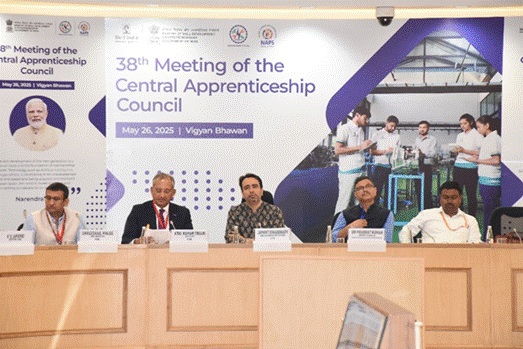
- 28 May 2025
In News:
Recently, the 38th Meeting of the Central Apprenticeship Council (CAC), chaired by the Minister of State (Independent Charge) for the Ministry of Skill Development and Entrepreneurship (MSDE), recommended a 36% increase in stipends under two key skilling initiatives—National Apprenticeship Promotion Scheme (NAPS) and National Apprenticeship Training Scheme (NATS). This move aims to enhance apprenticeship attractiveness, reduce dropout rates, and improve youth employability across India.
About NAPS (Launched: 19 August 2016)
- Objective: To build industry-relevant skilled manpower by promoting on-the-job training and bridging the gap between education and employment.
- Administered by: Ministry of Skill Development and Entrepreneurship (MSDE).
- Key Features:
- Provides financial support to establishments for engaging apprentices.
- Encourages MSME participation and focuses on aspirational districts and the North-East.
- Offers partial stipend reimbursement under the Apprentices Act, 1961.
- Apprentices receive a certificate from NAPS, enhancing employability.
- Over 43.47 lakh apprentices engaged across 36 States/UTs till May 2025.
- Female participation reached 20%, with efforts to boost inclusion.
About NATS
- Target Group: Graduates, Diploma holders, and Vocational certificate holders.
- Provisions:
- Offers 6–12 months of practical, hands-on training.
- Employers receive 50% stipend reimbursement.
- Apprentices are issued a Government of India Certificate of Proficiency, valid across employment exchanges.
- FY 2024–25 Stats: Over 5.23 lakh apprentices enrolled.
Key Reforms Recommended by CAC (2025)
- Stipend Enhancement:
- Proposed increase from ?5,000–?9,000 to ?6,800–?12,300.
- To be adjusted biennially based on Consumer Price Index (CPI).
- Inclusive Skilling Framework:
- Definition of “Person with Benchmark Disability” to be added under the Apprenticeship Rules.
- Trades must indicate suitability for PwBDs with reserved training slots.
- Curricular Integration:
- Push for Degree Apprenticeships and Apprenticeship Embedded Degree Programmes (AEDP).
- Definitions added for "Institution", "UGC", and "Contractual Staff".
- Flexible Training Modes: Employers may provide Basic and Practical Training through online, virtual, or blended modes, adhering to standard curricula.
- Decentralized Administration: Proposal to establish Regional Boards to improve scheme outreach and governance.
- Sectoral Expansion:
- Adoption of NIC Code 2008 to replace outdated 1987 list.
- Brings emerging sectors like IT, software, telecom, biotech, and renewable energy under apprenticeship coverage.
- Operational Improvements:
- Align CTS (Craftsmen Training Scheme) courses with apprenticeship notification timelines.
- Consideration of location-based stipend rationalization based on cost of living.
- Proposal for insurance coverage for apprentices during contract periods.
Governance and Stakeholder Involvement
The Central Apprenticeship Council includes representatives from:
- Ministries: Education, Labour, MSME, Railways, Textiles.
- Industry: BHEL, Indian Oil, Tata, Maruti, Reliance.
- Institutions: NSDC, UGC, AICTE.
- State advisors and domain experts from labour and education fields.
Semi-Transparent Perovskite Solar Cell Technology
- 28 May 2025
In News:
Researchers at IIT Bombay have developed an advanced semi-transparent perovskite solar cell (PSC) layered over a traditional silicon solar cell. This results in a 4-terminal (4T) tandem solar cell that significantly boosts power conversion efficiency (PCE) to ~30%, compared to the current average of ~20% in conventional solar panels.
Key Features and Technology
- Structure: Tandem architecture using a bottom silicon sub-cell and a top layer of indigenously developed halide perovskite semiconductor.
- Material Efficiency: Halide perovskite is one of the most efficient light-absorbing materials and can be locally produced using available chemical resources.
- Cost & Efficiency Gains:
- Potential to reduce solar power cost to ?1/kWh, down from ?2.5–4/kWh.
- Offers 25–30% more efficiency compared to standard solar panels.
- Stability Improvements: Previously, PSCs degraded quickly. The new configuration extends lifespan up to 10 years, enhancing durability under heat and low-light conditions.
Strategic Significance for India
- Indigenous Manufacturing: Reduces dependence on imported raw materials, especially those dominated by China.
- Commercialization Plan:
- Maharashtra government and MAHAGENCO exploring large-scale implementation.
- ART-PV India Pvt. Ltd., a start-up from IIT Bombay's SINE, aims to deliver a commercial wafer-size solution by December 2027 using indigenous equipment.
- Applications:
- Rooftop solar installations
- Building-integrated photovoltaics (BIPV)
- Vehicle-integrated photovoltaics (VIPV)
Clean Energy Linkage: IIT Bombay is also working with the Maharashtra government to develop green hydrogen solutions. The PSC’s high open-circuit voltage makes it suitable for solar-to-hydrogen (STH) applications, offering performance comparable to costly compound semiconductors but at lower cost and with locally accessible materials.
Alicella gigantea
- 27 May 2025
In News:
Rare giant shrimp is more widespread than previously believed; new findings reveal.
About the Species:
- Alicella gigantea is a giant deep-sea amphipod crustacean, growing up to 34 cm in length, making it one of the largest known amphipods.
- Amphipods are shrimp-like organisms; over 10,000 species are known globally, inhabiting a wide range of aquatic environments.
Habitat and Depth Range:
- Inhabits the abyssal (3,000–6,000 m) and hadal zones (>6,000 m) of the ocean.
- Notable sightings include:
- A 28 cm specimen observed at 5,304 m in the North Pacific.
- Captures from 6,746 m depth in the Murray Fracture Zone (North Pacific).
Global Distribution:
- Contrary to earlier beliefs, A. gigantea is not rare but is among the most widely distributed deep-sea species.
- Recent analysis compiled 195 records from 75 locations across the Pacific, Atlantic, and Indian Oceans, covering 15 different seafloor features.
- Found in 59% of the world’s oceans.
- The Pacific Ocean is its most significant habitat, with 75% of the seafloor in its suitable depth range.
Genetic Insights:
- Genetic analyses (16S, COI, 28S genes) show low genetic divergence across populations.
- This suggests A. gigantea represents a single, globally distributed species with strong genetic conservation.
- A shared haplotype network across regions indicates minimal genetic differentiation, supporting global connectivity among populations.
Conservation and Research Significance:
- Despite its wide range, A. gigantea remains poorly understood, particularly in terms of population size, ecology, and evolutionary history.
- Only seven studies have sequenced its DNA to date.
- The findings are a significant step toward understanding deep-sea biodiversity, biogeography, and conservation priorities in abyssal ecosystems.
RBI Dividend Transfer to Government (FY 2024–25)
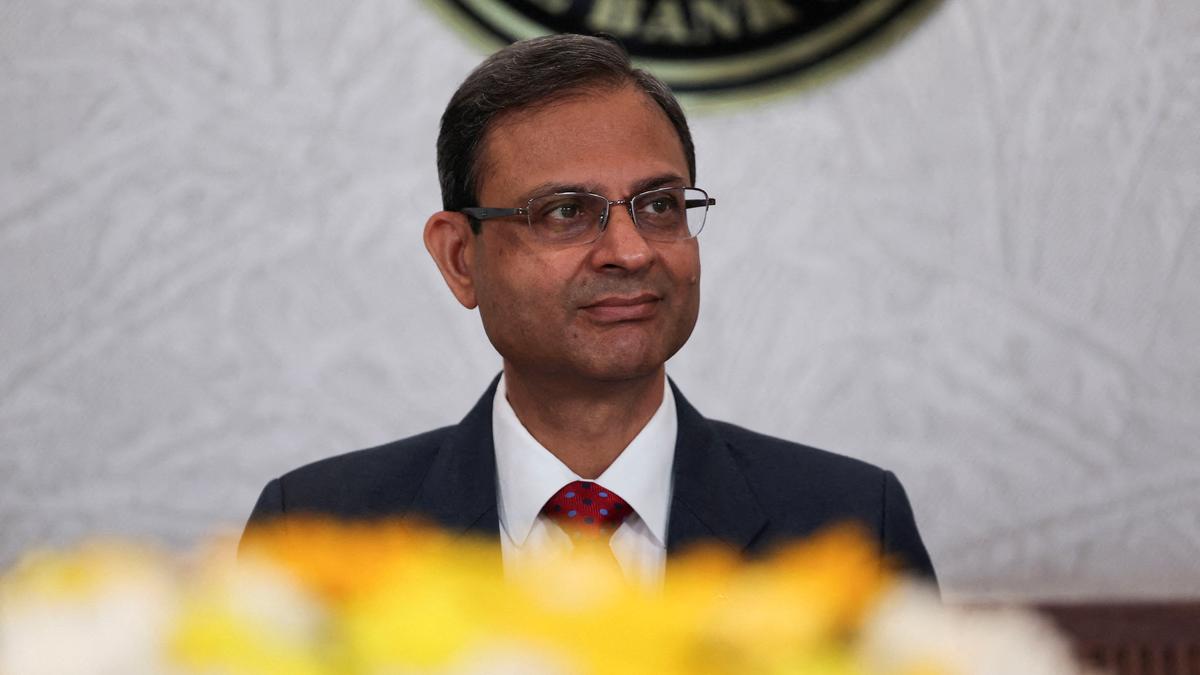
- 27 May 2025
In News:
- The Reserve Bank of India (RBI) has approved a record dividend transfer of ?2.69 lakh crore to the Government of India for FY 2024–25.
- This amount is 27% higher than the ?2.10 lakh crore transferred in the previous year (2023–24).
- The transfer follows the Revised Economic Capital Framework (ECF), approved on May 15, 2025.
What is a Dividend in Public Finance?
- A dividend is the non-tax revenue received by the government as the sole shareholder of the RBI.
- It helps bridge the fiscal deficit.
- RBI dividend distribution is governed by the Reserve Bank of India Act, 1934.
- Unlike corporate dividends that require shareholder approval, RBI transfers are governed by policy mechanisms set by the Central Board.
Economic Capital Framework (ECF) and Risk Buffer
- The Contingent Risk Buffer (CRB) has been raised to 7.5% of the RBI’s balance sheet for FY 2024–25.
- Earlier CRB levels:
- 5.5% (2018–22)
- 6% (2022–23)
- 6.5% (2023–24)
- The CRB helps ensure the RBI maintains sufficient capital to absorb financial shocks.
Reasons for Higher Surplus in 2024–25
- Robust foreign exchange (forex) sales, especially in January 2025, with RBI being the top seller among Asian central banks.
- Increased interest income from government securities and foreign investments.
- Gains from forex transactions during high market volatility.
- Forex reserves had peaked at $704 billion in September 2024, from which large volumes of dollars were sold to stabilise the rupee.
Implications for the Union Budget 2025–26
- The Budget had projected ?2.56 lakh crore as dividend income from RBI and PSUs; the actual RBI dividend itself exceeds this estimate.
- Experts expect the fiscal deficit to reduce by 20 basis points (bps) from the budgeted 4.4% to ~4.2% of GDP.
- The surplus provides a non-tax revenue cushion, helping offset shortfalls in tax or disinvestment receipts and manage additional spending.
Expert Views
- Surplus driven by prudent RBI policy, forex gains, and high interest income. CRB increase reduced the possible surplus, otherwise it could have exceeded ?3.5 lakh crore.
- The surplus equals 0.4–0.5 trillion (?40,000–?50,000 crore) or 11–14 bps of GDP, offering fiscal flexibility.
- Market expected ?3 lakh crore; disappointment due to higher risk buffer provisioning.
Massive Solar Eruption: The ‘Bird-Wing’ Event
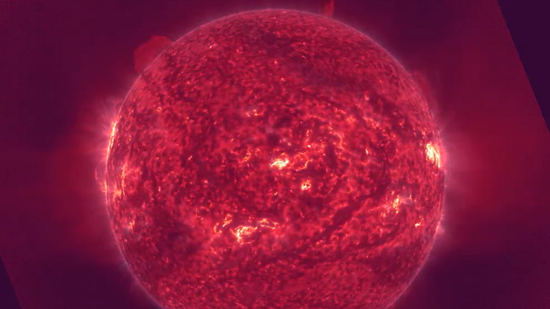
- 27 May 2025
In News:
In May 2025, astronomers observed a dramatic solar eruption, dubbed the “Bird-Wing” event, due to its unique wing-like plasma structure. Originating from the Sun’s northern hemisphere, the eruption stretched over 1 million kilometers—more than twice the Earth-Moon distance.
Key Components of the Event
- Solar Flare:
- A sudden, intense burst of electromagnetic radiation caused by magnetic field realignment on the Sun.
- Classified from A to X (increasing order of X-ray brightness).
- Travels at light speed, reaching Earth in about 8 minutes.
- Can disrupt radio communication and GPS systems by affecting the ionosphere.
- Coronal Mass Ejection (CME):
- A massive release of charged solar plasma and magnetic fields into space.
- Travels at 250–3000 km/s, reaching Earth in 18 hours to 3 days.
- Can cause geomagnetic storms, impacting power grids, satellites, navigation, and inducing auroras.
The “Bird-Wing” event involved both phenomena, but Earth narrowly avoided a direct hit, experiencing only a glancing blow. The impact was minimal and did not cause significant technological disruptions.
Associated Geomagnetic Effects
- A filament eruption, distinct from solar flares, was responsible for the minor geomagnetic activity observed. These are cooler plasma structures held by magnetic fields and appear as dark strands on solar imagery. When destabilized, they erupt and emit charged particles.
- Northern Lights (Aurora Borealis) were expected to be visible over parts of the UK, particularly Scotland, as the trailing edge of the CME brushed past Earth.
Space Weather Risks from Solar Storms
According to the European Space Agency (ESA) and NASA:
- Solar flares can disrupt radio signals and satellite communication.
- Solar particles, including high-energy protons, may arrive hours later, posing risks to astronauts and electronics.
- Geomagnetic storms can:
- Disturb Earth's magnetic field.
- Affect power lines, pipelines, and satellites.
- Expand the upper atmosphere, increasing drag on low-orbit satellites, potentially altering their trajectory.
- Temporarily reduce the number of cosmic rays reaching Earth by deflecting them.
Sagarmatha Sambaad 2025
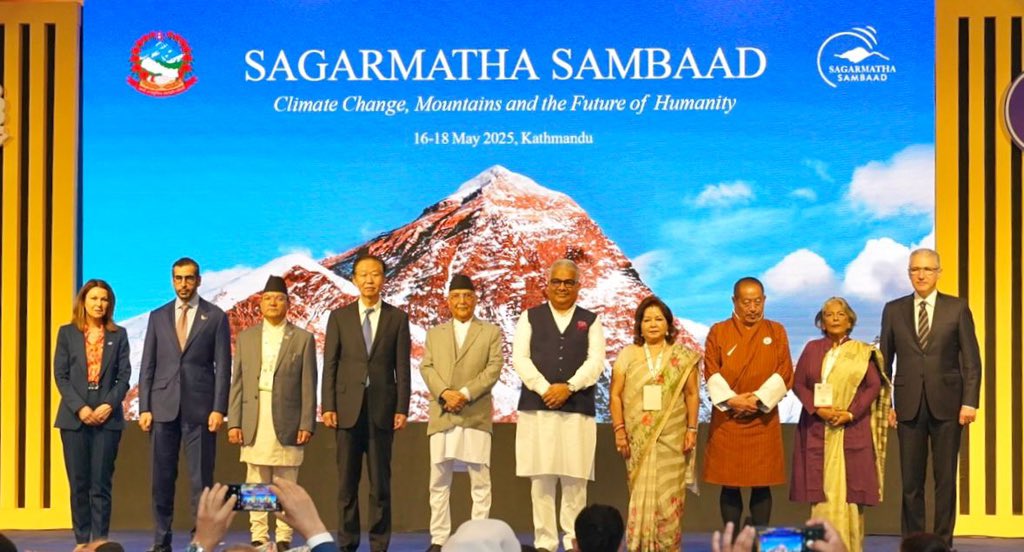
- 27 May 2025
In News:
Union Environment Minister Shri Bhupender Yadav represented India at the 1st Sagarmatha Sambaad in Kathmandu, Nepal, a high-level biennial global dialogue convened under the theme “Climate Change, Mountains, and the Future of Humanity.”
The forum, held during the International Year of Glaciers’ Preservation 2025, focused on mountain ecosystems, climate resilience, and transboundary conservation.
India’s Key Proposals and Commitments
Reaffirmed India’s climate leadership and proposed a five-point call for global action to protect mountain ecosystems:
- Enhanced Scientific Cooperation: Promote joint research on cryospheric changes, biodiversity, and hydrological cycles.
- Building Climate Resilience: Develop early warning systems for Glacial Lake Outburst Floods (GLOFs) and invest in climate-resilient infrastructure in mountainous areas.
- Empowering Mountain Communities: Center policies on local welfare, integrate traditional ecological knowledge, and promote green livelihoods such as eco-tourism.
- Providing Green Finance: Ensure adequate and predictable climate finance for adaptation and mitigation in mountain nations, in line with the Paris Agreement.
- Recognizing Mountain Perspectives: Integrate mountain-specific issues into global climate negotiations and sustainable development agendas.
India’s Initiatives and Regional Cooperation
India highlighted the ecological value of the Himalayas and called for enhanced transboundary conservation among Himalayan nations under the International Big Cats Alliance. This alliance promotes joint protection of species like snow leopards, tigers, and leopards.
- Under Project Snow Leopard, India conducted its first comprehensive snow leopard assessment (2019–2023), recording 718 snow leopards, comprising 10–15% of the global population.
Significance of the Himalayan Ecosystem
- Hydrological Role: The Himalayas are the "Water Towers of Asia", feeding rivers like the Ganga, Brahmaputra, and Indus, and supplying around 1.2 trillion cubic meters of freshwater annually.
- Ecological Richness: A biodiversity hotspot, home to over 10,000 vascular plant species, 979 bird species, and 300 mammals such as the red panda and Himalayan tahr.
- Cultural Importance: Sacred in Hinduism and Buddhism, the Himalayas house pilgrimage sites like Kedarnath, Badrinath, and Mount Kailash.
- Economic Value: Support tourism, agriculture, forestry, and renewable energy. States like Uttarakhand, Assam, and West Bengal derive over 10% of state GDP from tourism.
The Lohit Basin project in Arunachal Pradesh (13,000 MW) exemplifies hydropower potential. - Climate Regulation: The range blocks cold Central Asian winds and influences monsoon patterns, ensuring rainfall for agriculture. Himalayan forests are major carbon sinks, mitigating global warming.
Key Challenges in the Himalayan Region
- Climate Disasters: Rising temperatures and glacier melt cause avalanches, landslides, and cloudbursts. E.g., 2025 Uttarakhand avalanche; 2023 Sikkim GLOF.
- Unsustainable Development: Slope cutting, deforestation, and seismic vulnerability threaten settlements (e.g., Joshimath subsidence linked to infrastructure projects).
- Glacier Retreat:
- Gangotri glacier has retreated over 850 meters in 25 years.
- Hindu Kush glaciers may lose 75% of volume by 2100.
- Biodiversity Loss: Invasive species and habitat loss displace native flora and fauna; 90% of endemic species in Sikkim Himalayas displaced.
- Unregulated Tourism: Littering and plastic waste—92.7% of Himalayan waste is plastic, 72% non-recyclable (2022 audit).
Recommendations for Sustainable Development
- Eco-sensitive Infrastructure: Mandatory Environmental Impact Assessments (EIAs), bioengineering, and electric mobility in high-altitude towns.
- Regulated Tourism: Introduce carrying capacity limits, permit-based entry, and promote low-impact tourism models.
- Glacier Monitoring & Water Management: Use remote sensing and GIS for glacier health; adopt ice stupas, rainwater harvesting, and efficient irrigation.
- Afforestation & Forest Conservation: Launch community-driven forestry projects (e.g., Van Andolan in Uttarakhand) to restore degraded ecosystems.
- Climate Adaptation Strategies: Expand early warning systems for GLOFs; promote climate-resilient crops and agricultural practices.
- Sustainable Livelihoods: Encourage organic farming, herbal industries, and eco-handicrafts to diversify mountain economies.
Bharat Seva Kendra (BSK)
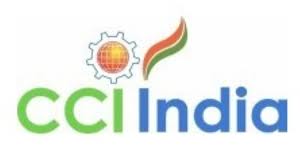
- 27 May 2025
In News:
The Chamber of Commerce and Industry of India (CCI India) has highlighted the role of Bharat Seva Kendra (BSK) in enhancing last-mile service delivery and addressing the urban-rural service gap.
About Bharat Seva Kendra (BSK):
- Launched by: Chamber of Commerce and Industry of India (CCI India).
- Objective: To provide essential government services and welfare benefits directly to rural citizens.
- Nature: A grassroots, nationwide service delivery initiative focused on creating self-reliant rural communities.
Key Features:
- Single-window access to schemes in sectors like healthcare, education, employment, agriculture, financial inclusion, and digital empowerment.
- Digital Inclusion: Modern infrastructure and digital literacy programs to help villagers use e-governance tools effectively.
- Human Network: Backed by a large cadre of 2.5 lakh sarpanches and 6.5 lakh BSK Sarthis, who act as facilitators between government schemes and rural beneficiaries.
- Goal: Reduce bureaucratic delays, enhance transparency, and ensure timely access to welfare schemes.
CCI India’s Role:
- Type: A national-level autonomous business body.
- Functions: Policy advocacy, business facilitation, and supporting domestic and foreign investment.
- Engagement: Represents diverse industries and collaborates with stakeholders including policymakers, industry, and civil society.
Significance for Governance:
- Promotes last-mile delivery of public services.
- Acts as a catalyst for rural digital transformation and inclusive development.
- Enhances administrative efficiency and citizen empowerment in rural India.
Turtle Conservation in Assam’s Temple Ponds
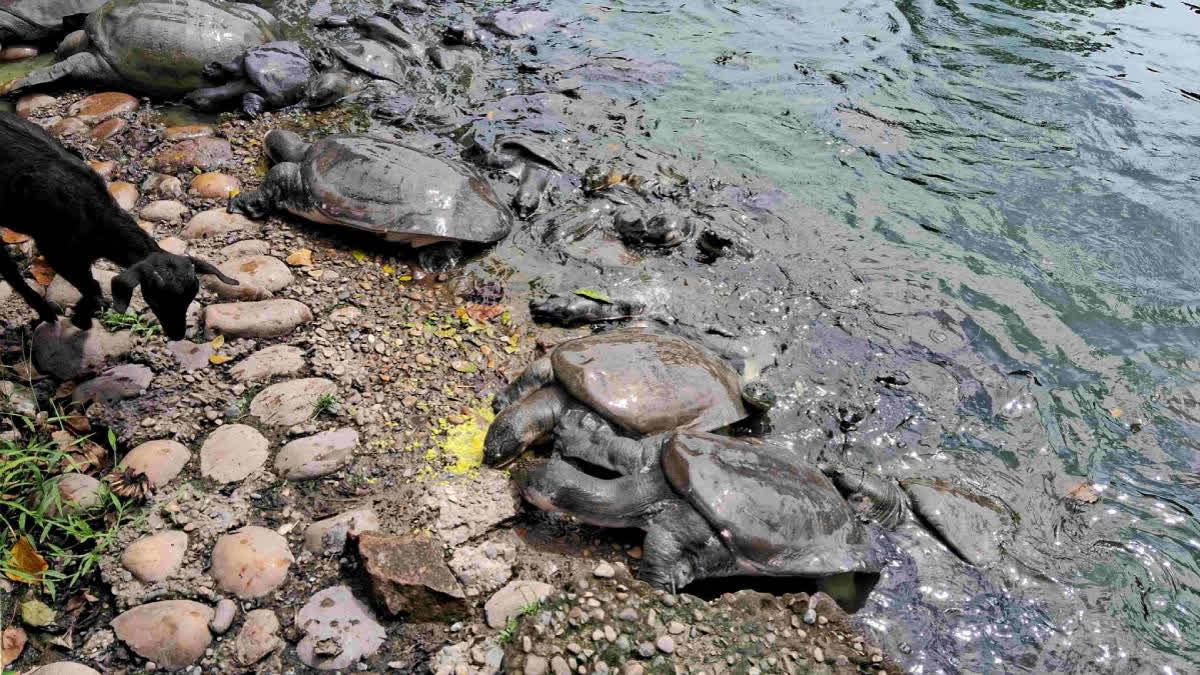
- 26 May 2025
In News:
On World Turtle Day (May 23, 2025), Assam’s Nagshankar Temple was officially declared a model temple for turtle conservation, highlighting the ecological role of temple ponds in preserving India’s turtle biodiversity.
Key Highlights
Nagshankar Temple – A Model for Turtle Conservation
- Location: Sootea town, Biswanath district, ~70 km from Tezpur, Assam.
- Established: Believed to be built in the 4th century AD by King Nagashankar of the Nagakha dynasty.
- Religious Importance: Dedicated to Lord Shiva, but turtles are revered as incarnations of Lord Vishnu.
- Ecological Value: Functions as a micro-wildlife sanctuary — home to 250–300 turtles, along with peacocks, pythons, and deer.
Turtle Conservation Initiatives
Species Conserved:
- Black Softshell Turtle (Nilssonia nigricans) – Critically Endangered
- Indian Softshell Turtle (Nilssonia gangetica)
- Malayan Softshell Turtle
These species thrive in the temple pond, which is fed by the Brahmaputra River basin, offering a suitable natural habitat.
Community & Scientific Collaboration:
- Key Stakeholders:
- Nagshankar Temple Committee
- Turtle Survival Alliance (TSA) India
- Help Earth (NGO)
- Kaziranga National Park & Tiger Reserve
- Assam Forest Department
- Conservation Methods:
- Artificial egg incubation and wild release of hatchlings.
- Dried-fish diet introduced for temple turtles, replacing harmful offerings (e.g., biscuits, puffed rice).
- Capacity-building workshops for forest staff and students to aid in turtle surveys.
Result: 486 hatchlings of the black softshell turtle have been released into the wild from the Nagshankar Temple pond.
Statewide Turtle Conservation Model
- Assam houses ~25 temple ponds actively involved in turtle conservation.
- Notable site: Hayagriva Madhav Temple in Hajo (Kamrup district).
- State Zoo in Guwahati has a dedicated breeding facility (established 2010) for the Assam Roofed Turtle (Pangshura sylhetensis, "Asomi Dura").
Google’s AI Matryoshka Strategy
- 26 May 2025
In News:
At its 2025 I/O Developer Conference, Google unveiled AI Matryoshka, a multi-layered artificial intelligence (AI) ecosystem powered by its latest Gemini 2.5 models. This marks a fundamental restructuring of Google’s platforms around AI, affecting users, developers, and enterprises.
What is AI Matryoshka?
- Concept: Named after the Russian nesting dolls, AI Matryoshka is a layered AI architecture where each outer application or interface draws intelligence from a core AI “brain.”
- Objective: To embed AI deeply and uniformly across Google’s services, enabling agentic, intelligent, and autonomous interactions.
Core AI Models: Gemini 2.5
- Gemini 2.5 Pro:
- Advanced reasoning and mathematics capabilities.
- Achieved high scores on USAMO 2025 (a premier U.S. math olympiad).
- Features a mode called Deep Think for complex problem-solving.
- Gemini 2.5 Flash:
- A more efficient, lightweight model using 20–30% fewer tokens.
- Supports natural audio output and multi-speaker TTS in 24 languages.
- Set to become the default model in Gemini applications.
Foundational Hardware: Ironwood TPUs
- Ironwood (7th Gen TPUs):
- Delivers 42.5 exaFLOPS of compute power per pod.
- Offers 10x performance boost over previous TPUs.
- Supports large-scale training and deployment of generative AI models.
Generative Media Models
- Imagen 4: Advanced image generation.
- Veo 3: High-quality video generation.
- Lyria 2: Music creation using AI.
- Copyright Tools:
- SynthID (watermarking) and SynthID Detector (verification) aim to address copyright concerns over the training data.
Developer Ecosystem
- Gemini API & Vertex AI:
- Model Context Protocol (MCP): Enables agent-to-agent communication.
- Thinking Budgets: Let developers allocate compute resources wisely.
- Project Mariner: Tool for automating complex tasks.
- Thought Summaries: Improves transparency of AI decisions.
- Coding Agent – Jules:
- Beta launched globally.
- Integrates with code repositories to write tests, build features, and fix bugs using Gemini 2.5 Pro.
User-Centric Features
- Search Integration (AI Mode):
- Rolls out first in the U.S. with Deep Search generating cited, multimodal answers.
- Offers virtual shopping try-ons and agentic checkout, raising privacy and data security concerns.
- Gemini App:
- Available on Android and iOS with Live and image generation features.
- Deep Research allows analysis of private documents and images, necessitating strong data protection protocols.
- Integrated into Chrome (for Pro and Ultra users) for webpage summarization.
- Canvas Feature: A creative workspace for interactive infographics, quizzes, and audio content in 45 languages.
Subscription Tiers and Privacy Concerns
- Google AI Ultra Tier:
- Offers premium access to advanced capabilities, including video generation with native audio.
- Raises questions about "privacy premium" – whether better AI safety features will be available only to paying users.
India’s Coastline Redefined
- 26 May 2025
In News:
The Ministry of Home Affairs, in its 2023–24 annual report (Dec 2024), announced a significant update to India’s coastline length — revised from 7,516.6 km to 11,098.8 km. This change was not due to any new territorial acquisition or geological activity but resulted from improved measurement techniques, reflecting the "coastline paradox" in geography.
What Is the Coastline Paradox?
The coastline paradox, first explained by British mathematician Lewis Fry Richardson and later expanded by Benoît Mandelbrot, shows that the length of a coastline increases with finer measurement scales. This is because coastlines, like fractals, reveal more detail (creeks, estuaries, inlets) the more closely they are examined.
- Using large-scale maps (e.g., 1:4,500,000), previous estimates missed finer details.
- Modern tools allow capturing every tidal creek, sandbar, and estuarine curve, dramatically increasing measured length.
Measurement Methodology (2024 Update)
Aspect Details
Agencies Involved National Hydrographic Office (NHO), Survey of India
Previous Map Scale 1:4,500,000 (1970s)
New Map Scale 1:250,000 (electronic navigation charts)
Key Technologies GIS, LIDAR-GPS, satellite altimetry, drone imaging
Reference Line Used Highwater Line (based on 2011 data)
Mapped Features Included Tidal creeks, sandbars, estuaries, low-tide islands
Review Frequency Every 10 years from 2024–25
Geographical and Strategic Overview
- India’s New Coastline Length: 11,098.8 km
- No New Land Added: No change in land boundaries or annexation.
- Coastal States & UTs: 11 coastal States + 2 UTs (Andaman & Nicobar Islands, Lakshadweep)
- State with Longest Coastline: Gujarat (~1,600 km)
Why This Matters
1. Maritime Security
- Longer coast = More area to monitor and protect.
- Post-26/11, India enhanced coastal surveillance (radar grid, coastal police).
- Navy and Coast Guard deployment strategies need updates.
2. Disaster Management
- Accurate coastline data helps in cyclone, tsunami early warning systems (e.g., Odisha).
- Supports better Coastal Regulation Zone (CRZ) mapping.
3. Economic and Strategic Planning
- Affects Exclusive Economic Zone (EEZ) and fishing rights.
- Informs infrastructure development: ports, shipping, Sagarmala, tourism.
- Boosts India’s aspirations in the Blue Economy.
Schistura densiclava
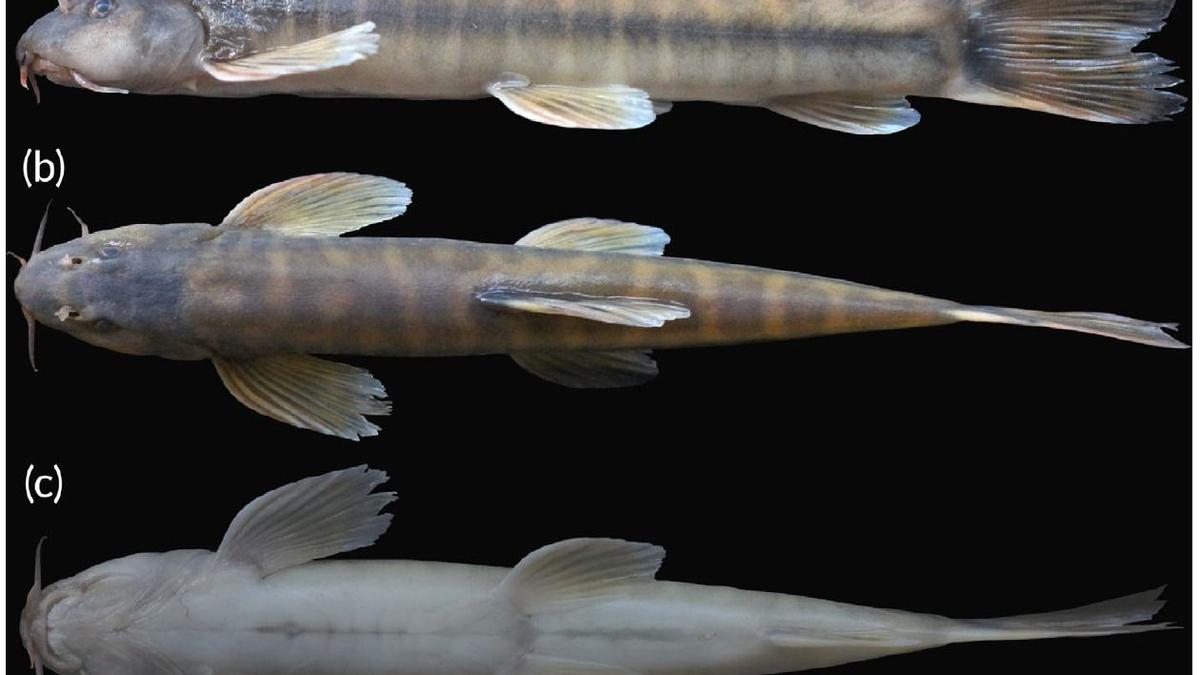
- 26 May 2025
In News:
A newly discovered species of cave-dwelling loach, Schistura densiclava, has been recorded from the Krem Mawjymbuin cave in the East Khasi Hills district of Meghalaya, India. This species becomes the sixth known cave-dwelling fish from the state, emphasizing Meghalaya’s rich subterranean biodiversity.
Taxonomy and Classification
- Family: Nemacheilidae (bottom-dwelling freshwater fishes)
- Type: Troglophile — adapted to live in caves but can survive and reproduce in surface (epigean) waters.
- Distinct Feature: Unlike typical cave fishes, S. densiclava retains pigmentation and functional eyes, indicating adaptability to both subterranean and overground aquatic environments.
Habitat and Environment
- Found 60 meters inside the Krem Mawjymbuin, a limestone cave with a surveyed length of 1.6 km and an altitude of 206 meters.
- The species inhabits a cool, fast-flowing stream with a temperature of 18°C and low oxygen levels.
- The cave is ecologically sensitive and was previously in the news due to a local ban on worship at a Shivalinga-like formation within it.
Morphological Characteristics
- Coloration: Pale yellow-green body with 14–20 greyish to faint black vertical bars.
- Named densiclava due to the thick dark stripe near the dorsal fin ("densiclava" = Latin for "thick stripe").
- Sexual Dimorphism:
- Males: Slimmer with irregular patterns and puffier cheeks.
- Females: Sturdier with more consistent markings.
Scientific Significance
- Genetic testing confirmed Schistura densiclava as a distinct and previously unrecorded species.
- Its endemic distribution, limited to a single cave system, marks it as a species of high conservation concern.
- The discovery was published in the Journal of Fish Biology by a team led by Kangkan Sarma from Gauhati University, along with other Indian ichthyologists.
Tamil Nadu’s Space Industrial Policy and IN-SPACe
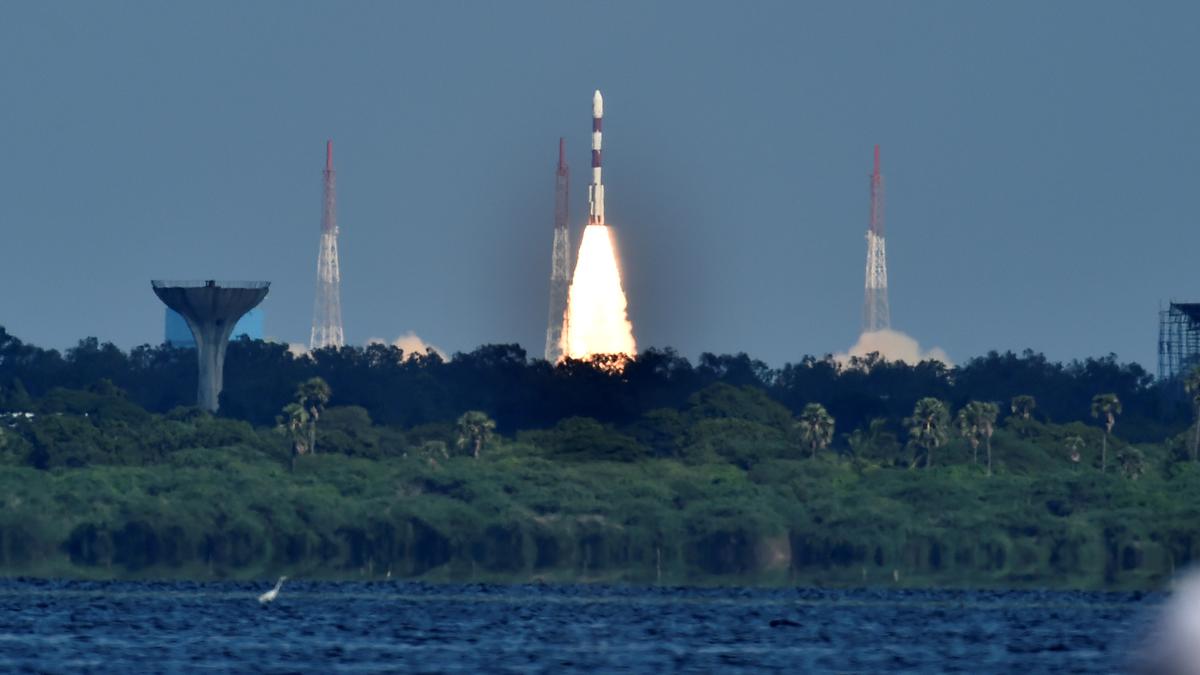
- 26 May 2025
In News:
Recently, the Tamil Nadu Cabinet approved its Space Industrial Policy, becoming the third state after Karnataka and Gujarat to adopt a dedicated strategy to stimulate investments and innovation in the space sector. This move aligns with the national framework set by the Indian Space Policy 2023 and supports India's growing space economy.
IN-SPACe and its Role:
- IN-SPACe (Indian National Space Promotion and Authorisation Centre) is an autonomous, single-window agency under the Department of Space (DoS).
- Created as part of India’s space sector reforms, it promotes and authorises the participation of Non-Governmental Entities (NGEs) in space activities.
- Functions include:
- Supporting private entities in the development of launch vehicles, satellites, and space-based services.
- Facilitating access to ISRO infrastructure and co-development initiatives.
- Providing support for research, innovation, and educational collaboration.
- Headquartered at Bopal, Ahmedabad, it serves as the bridge between ISRO and private sector stakeholders.
- IN-SPACe encouraged Tamil Nadu to formulate the Space Industrial Policy to promote the state’s role in India’s space mission.
Tamil Nadu’s Strategic Space Assets:
- ISRO Propulsion Complex (IPRC), Mahendragiri (Tirunelveli): Engaged in testing cryogenic engines, liquid propulsion systems, and R&D activities.
- Second Spaceport at Kulasekarapattinam (Thoothukudi): Enhances satellite launch capacity, especially for small satellites and polar launches.
- Presence of space-tech startups in areas like:
- Reusable launch vehicles
- In-space manufacturing
- In-orbit refuelling
- Satellite data analytics
- Space Technology Incubation Centre (STIC) at NIT Trichy supports southern-region ISRO projects and academia-industry collaboration.
- Over 250 ISRO vendors operate in the state, creating a robust supply chain ecosystem.
Objectives of Tamil Nadu's Space Industrial Policy:
- Target investment: ?10,000 crore over the next 5 years.
- Employment generation: Estimated 10,000 direct and indirect jobs.
- Strengthens Tamil Nadu’s capabilities in:
- Electronics and precision manufacturing
- Strategic electronics and space-grade components
- Promotes integration of space technologies in governance (e.g., disaster management, fisheries, agriculture, health, transport).
Policy Incentives:
- Payroll subsidy for companies engaged in R&D or setting up Global Capability Centres.
- Space Bays: Select regions will be designated to offer structured incentive packages for investments below ?300 crore.
- Industrial housing incentive: 10% subsidy (capped at ?10 crore) for building residential facilities in space industrial parks.
- Green initiatives: 25% capital subsidy (capped at ?5 crore) for environmentally sustainable developments.
Institutional Support:
- TIDCO (Tamil Nadu Industrial Development Corporation) signed an MoU with IN-SPACe to facilitate:
- Manufacturing activities
- Strategic collaborations with private companies
- R&D and design-based projects in the space domain
Technology and Innovation Report 2025
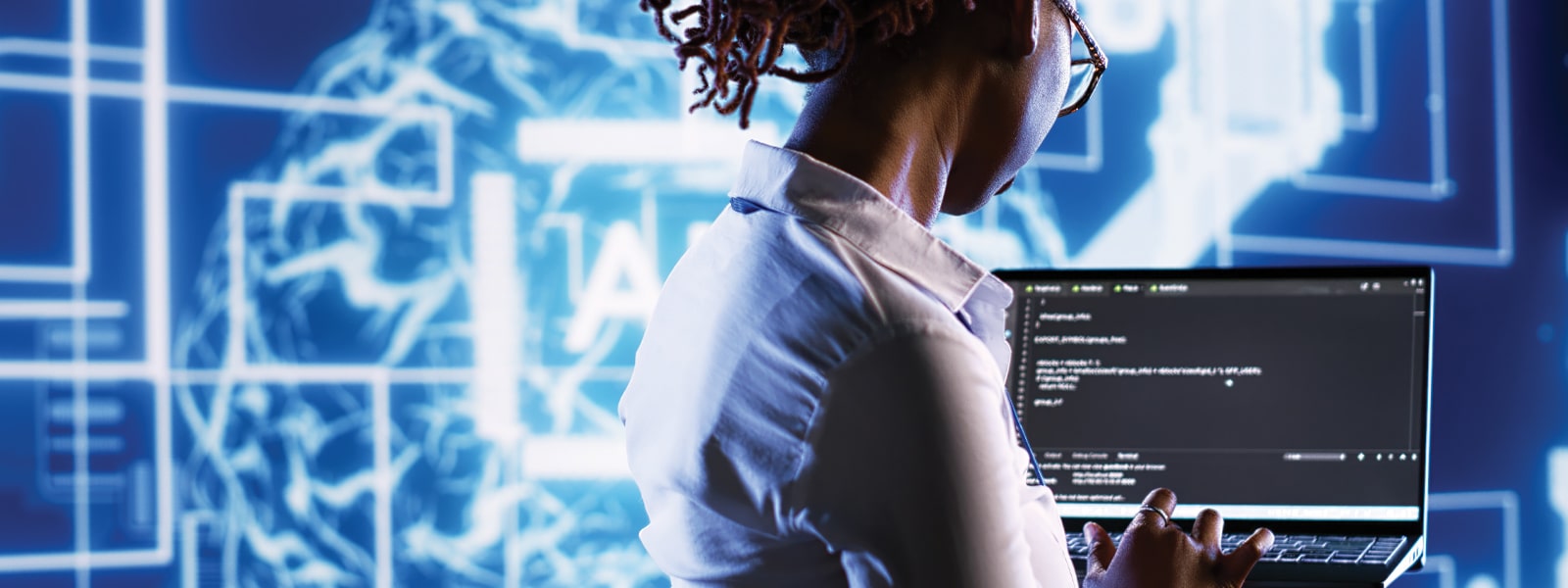
- 07 Apr 2025
In News:
India has been ranked 10th globally in terms of private sector investments in Artificial Intelligence (AI) in 2023, according to the Technology and Innovation Report 2025, released by the United Nations Conference on Trade and Development (UNCTAD). The report highlights the evolving global AI landscape and underscores India's growing role in frontier technologies.
About the Technology and Innovation Report
- Published by: UNCTAD (United Nations Conference on Trade and Development).
- Objective: To provide policy-relevant insights on emerging issues in science, technology, and innovation (STI), especially from the perspective of developing countries.
- Theme of the 2025 Edition: “Inclusive Artificial Intelligence for Development”.
- Purpose: Aims to assist policymakers in formulating inclusive and equitable STI policies amid the rapid expansion of AI technologies.
Key Highlights of the 2025 Report
- India’s Position:
- Ranked 10th globally for private AI investments, amounting to $1.4 billion in 2023.
- Among developing countries, only India and China feature prominently in global AI investments.
- India’s growing prominence reflects its rising technological capacity and startup ecosystem.
- Global Investment Trends:
- The United States led global AI investment with $67 billion (70% of global private investment).
- China ranked second with $7.8 billion.
- The report reveals that just 100 companies, mainly from the US and China, account for 40% of global private R&D investment in AI, signifying a concentration of technological power.
- AI and Global Employment:
- The report warns that up to 40% of global jobs could be influenced by AI-driven automation, necessitating adaptive policies, especially in the Global South.
- Governance Gaps:
- 118 countries, mostly from the Global South, are not participating meaningfully in global AI governance dialogues, highlighting a digital divide in international policy spaces.
- Recommendations for Developing Countries:
UNCTAD urges developing nations to strengthen three critical areas, termed “key leverage points”:- Infrastructure: Improve digital and physical infrastructure.
- Data Ecosystems: Ensure data accessibility, quality, and sovereignty.
- Human Capital and Skills: Invest in AI-related education and skilling.
- India’s Broader Performance:
- Ranked 36th out of 170 countries on the Readiness for Frontier Technologies Index 2024, an improvement from 48th in 2022.
Domestically Manufactured Iron & Steel Products (DMISP) Policy – 2025
- 06 Apr 2025
In News:
To address the rising steel imports and strengthen domestic industry under the Atmanirbhar Bharat initiative, the Government of India has notified the DMISP Policy – 2025, mandating the exclusive use of Indian steel in government procurement and incorporating a reciprocity clause against non-cooperative foreign countries.
About the DMISP Policy – 2025
- Nodal Ministry: Ministry of Steel
- Aim:To promote the use of domestically produced iron and steel in government-funded projects, thereby reducing import dependence, enhancing self-reliance, and safeguarding the interests of the Indian steel industry.
- Key Objectives
- Promote Self-Reliance: Advance the vision of Atmanirbhar Bharat by boosting domestic steel production and consumption.
- Curb Imports: Mitigate the adverse impact of rising steel imports on Indian steelmakers.
- Support Domestic Industry: Provide a level playing field to Indian steel manufacturers in public procurement.
- Encourage Value Addition: Increase domestic sourcing and manufacturing of capital goods used in steel production.
Salient Features of the Policy
- Mandatory Use of Indian Steel:
- Applicable across all Union Ministries, PSUs, statutory bodies, and trusts.
- Covers products such as flat-rolled steel, rods, bars, and rails.
- Steel must meet the “Melt and Pour” condition — i.e., must be melted and solidified in India.
- Reciprocity Clause:
- Nations that restrict Indian firms from participating in their public procurement (e.g., China) are barred from Indian government tenders.
- Exceptions can be made only with the approval of the Ministry of Steel.
- Ban on Global Tenders (GTE):
- GTEs for steel products are prohibited.
- GTEs for capital goods (e.g., furnaces, rolling mills) are permitted only for contracts above ?200 crore, with prior clearance.
- Domestic Value Addition Requirement:
- Capital goods used in steel production must have at least 50% local value addition.
- Certification by statutory or cost auditors is mandatory.
- Procurement Applicability:
- Mandatory for all government procurement above ?5 lakh.
- Also extends to centrally funded but state-executed projects.
- Monitoring and Enforcement:
- A Standing Committee chaired by the Secretary (Steel) will:
- Oversee compliance and redress grievances.
- Grant exemptions in case of non-availability of Indian products.
- A Standing Committee chaired by the Secretary (Steel) will:
- Penalties for Non-Compliance:False declarations may result in blacklisting of suppliers and forfeiture of earnest money deposits.
Protection of Interests in Aircraft Objects Bill, 2025
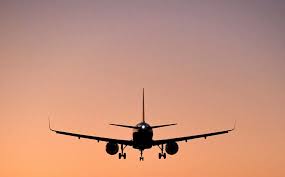
- 04 Apr 2025
In News:
The Protection of Interests in Aircraft Objects Bill, 2025, recently passed by the Rajya Sabha, aims to implement two key international agreements in India’s legal framework:
- Cape Town Convention on International Interests in Mobile Equipment (2001)
- Protocol to the Convention on Matters Specific to Aircraft Equipment
Objective:
To provide legal clarity and security to stakeholders in the aviation leasing industry by integrating global standards into Indian law.
Background:
- India became a signatory in 2008 after Cabinet ratification in 2007.
- The Cape Town Convention addresses complex issues of cross-border leasing and financing of high-value mobile assets like aircraft, helicopters, and engines.
- With over 86.4% of India's 840 commercial aircraft under leasing arrangements, there was an urgent need for a dedicated legal framework.
Key Provisions:
- Directorate General of Civil Aviation (DGCA) is designated as the registry authority.
- Responsible for registration and deregistration of aircraft.
- Creditors must notify the DGCA prior to initiating recovery actions in case of defaults.
- In case of default by airlines:
- Creditors can reclaim aircraft or related equipment within two months, or as per a mutually agreed period.
- Lessors and airlines are required to regularly inform the DGCA about dues and lease activities.
- The central government is empowered to make rules for the implementation of the convention and protocol.
Expected Benefits:
- Enhances legal protection for creditors and lessors.
- Reduces leasing costs by an estimated 8–10%, potentially lowering airfares for consumers.
- Encourages the growth of a domestic aircraft leasing industry, reducing dependence on foreign jurisdictions like Ireland, Singapore, and Dubai.
Civil Aviation Minister’s Remarks:
- The Bill addresses a long-standing legislative vacuum.
- It will bolster investor confidence and attract leasing businesses to India.
- Airfare regulation remains complex and is influenced by multiple factors including fuel prices, leasing charges, and maintenance costs.
Exercise Tiger Triumph 2025
- 03 Apr 2025
In News:
- India and the United States have commenced the fourth edition of their major tri-service military exercise ‘Tiger Triumph’ in the Bay of Bengal, beginning April 1, 2025.
- The two-week-long drill focuses on Humanitarian Assistance and Disaster Relief (HADR) and crisis response, marking a significant step in the growing strategic defence partnership between the two nations.
Key Objectives:
- Enhance interoperability between the Indian and U.S. armed forces for joint HADR operations.
- Formulate Standard Operating Procedures (SOPs) for establishing a Combined Coordination Centre (CCC) for joint response during natural disasters and contingency operations.
- Conduct massive maritime and amphibious operations off the coast of Kakinada, following a harbour phase at Visakhapatnam.
Participating Forces and Assets:
India:
- Indian Navy:
- Ships: INS Jalashwa, INS Gharial, INS Mumbai, and INS Shakti
- Aircraft: P-8I long-range maritime patrol aircraft
- Support: Integral helicopters and landing crafts
- Indian Army:
- Troops from 91 Infantry Brigade
- 12 Mechanised Infantry Battalion
- Indian Air Force (IAF):
- Aircraft: C-130J ‘Super Hercules’
- Helicopters: Mi-17
- Rapid Action Medical Team (RAMT)
United States:
- U.S. Navy:
- USS Comstock (amphibious warship)
- USS Ralph Johnson (guided-missile destroyer)
- U.S. Marine Corps:
- Marine division troops onboard naval vessels
- Medical personnel to collaborate with Indian RAMT
Additional Activities:
- Establishment of a Joint Command and Control Centre at the Kakinada naval enclave by the Indian Army and U.S. Marines.
- Setting up of a Joint Medical Camp for humanitarian aid by IAF, Indian RAMT, and U.S. Navy medical teams.
- Training exchanges, sports events, and social interactions between personnel to foster mutual understanding and cooperation.
Strategic Significance:
Exercise Tiger Triumph is part of the broader India-U.S. defence cooperation, which includes:
- Army exercises:YudhAbhyas, Vajra Prahar
- Naval drills:Malabar Exercise (with Australia and Japan)
The growing frequency and complexity of such joint drills underline the strategic convergence between India and the U.S. in the Indo-Pacific region, particularly in strengthening maritime security and disaster response mechanisms.
State of the World’s Animal Health Report 2025
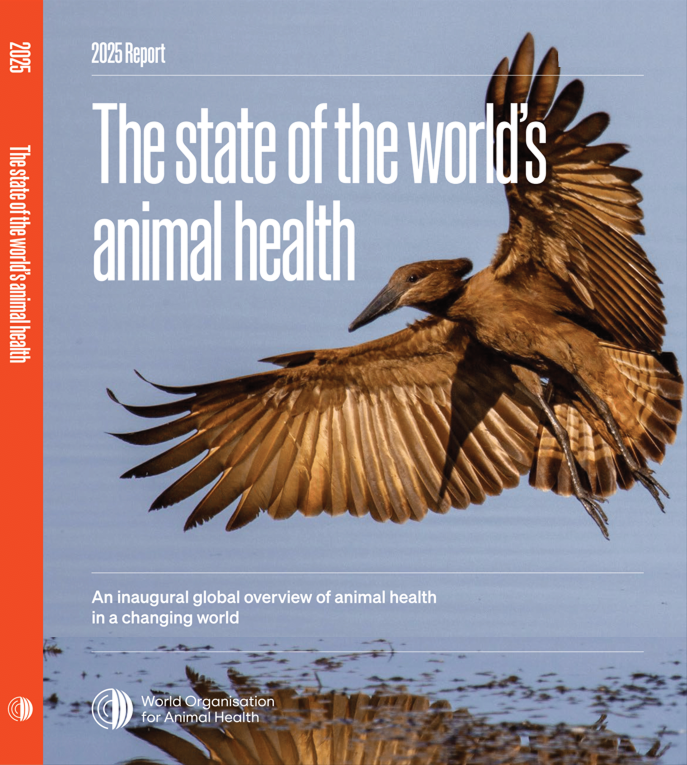
- 25 May 2025
In News:
Infectious animal diseases are spreading to previously unaffected regions and species, with nearly half (47 per cent) capable of zoonotic transmission or spreading between animals, according to the inaugural State of the World’s Animal Health report released by the World Organisation for Animal Health (WOAH).
Key Details:
Published by:
- World Organisation for Animal Health (WOAH), formerly OIE (Office International des Epizooties), founded in 1924, headquartered in Paris.
- Recognized by the WTO for setting global standards on animal health and zoonotic disease control.
Objective of the Report:
- To provide a comprehensive global assessment of animal health trends, risks, and disease outbreaks.
- To promote a One Health approach, linking animal health with human health and environmental sustainability.
Major Findings:
1. Rising Zoonotic Threats:
- 47% of animal diseases reported between 2005–2023 have zoonotic potential (can spread from animals to humans).
- These include avian influenza, African swine fever (ASF), foot-and-mouth disease (FMD), and Peste des Petits Ruminants (PPR).
2. Geographic Expansion of Diseases:
- Diseases are emerging in new regions and species due to climate change, global trade, and ecosystem disruptions.
- Example: ASF jumped over 1,800 km to reach Sri Lanka in 2024, marking the year's most significant disease leap.
- PPR re-emerged in Europe, traditionally limited to developing regions.
3. Avian Influenza Evolution:
- Over 630 million birds culled or lost in 20 years.
- In 2024, more outbreaks were reported in non-poultry species (55 countries) than poultry (42 countries).
- Mammal infections doubled, raising concerns of cross-species transmission.
4. Other Notable Disease Events:
- Germany faced its first FMD outbreak since 1988.
- New World Screwworm, a parasitic fly, re-emerged in Mexico and Nicaragua.
- Bluetongue virus reported in 23 countries with over 3,500 cases in 2024.
Antimicrobial Resistance (AMR): A Global Threat
Key Data:
- By 2050, AMR may cause:
- Loss of livestock threatening food security for 2 billion people.
- $100 trillion global economic loss.
Drivers:
- Indiscriminate use of antibiotics in livestock, aquaculture, and agriculture.
- Around 20% of countries still use antimicrobials as growth promoters, including high-priority drugs like colistin and enrofloxacin.
Trends:
- Global antibiotic use in animals fell by 5% (2020–2022).
- Europe: 23% decline.
- Africa: 20% decline.
Recommendations by WOAH:
- Enhance vaccine access and distribution, especially in low-income countries.
- Strengthen Veterinary Services, surveillance, and biosecurity.
- Improve hygiene and disease prevention to reduce antibiotic dependence.
- Promote international cooperation under the One Health framework.
- Ban or regulate the use of antibiotics as growth promoters.
About WOAH:
- Intergovernmental organization with 183 member countries, including India.
- Monitors, controls, and reports on animal diseases to ensure safe trade, public health, and food security.
- Partner in Global Action Plan on AMR with WHO and FAO.
Indian Initiatives on AMR & Animal Health:
- National Action Plan on AMR (2017–2021) – Focus on awareness, surveillance, infection control, and R&D.
- FSSAI guidelines to regulate antibiotic residues in food of animal origin.
- National Animal Disease Control Programme (NADCP) – Focus on vaccination against FMD and Brucellosis.
International Booker Prize 2025
- 23 May 2025
In News:
In a historic win, Banu Mushtaq, a prominent Kannada writer, advocate, and activist, became the first Indian author writing in Kannada to win the International Booker Prize 2025 for her short story collection Heart Lamp. The book was translated into English by Deepa Bhasthi, who also became the first Indian translator to win this prestigious award.
About the International Booker Prize
- Established: 2005 by the Booker Prize Foundation, UK.
- Awarded: Annually.
- Purpose: To honour the best work of fiction translated into English, regardless of the original language or nationality of the author.
- Prize Amount: £50,000, shared equally between the author and the translator.
- Shortlisted nominees (authors and translators) receive £2,500 each.
- Focus: Unlike the Booker Prize, which honours original English-language works, the International Booker Prize exclusively celebrates translated fiction, highlighting the importance of translators in global literature.
Key Features
- Celebrates literary excellence, cultural richness, and the art of translation.
- Initially biennial (2005–2015), it became an annual award in 2016.
- Books must be translated into English and published in the UK or Ireland.
India and the International Booker Prize
Year Author Work Language Translator
2022 Geetanjali Shree Tomb of Sand Hindi Daisy Rockwell
2025 Banu Mushtaq Heart Lamp Kannada Deepa Bhasthi
About Banu Mushtaq
- Born: April 3, 1948, in Hassan, Karnataka.
- Professions: Advocate, journalist, feminist writer, women’s rights activist, and former municipal councillor.
- Affiliation: Prominent figure in the Bandaya movement, known for protest literature in Kannada addressing social injustices.
- Journalistic Background: Reported for LankeshPatrike (1981–1990) under the mentorship of P. Lankesh.
Literary Contributions
- Started writing: In 1974; first story published in Prajamatha.
- Themes: Focuses on gender justice, religious identity, caste oppression, and female autonomy.
Heart Lamp: The 2025 Winning Work
- Genre: Short story collection comprising 12 stories written between 1990 and 2023.
- Content: Explores the lives of ordinary South Indian Muslim women, addressing themes like patriarchy, faith, family roles, and self-determination.
- Significance:
- First short story collection to win the International Booker Prize.
- First Kannada-language work to win.
- First win for Indian translator Deepa Bhasthi.
Other Notable Works by Banu Mushtaq
- Benki Male (1999): Awarded the Karnataka Sahitya Academy Award.
- HaseenaMattuItaraKathegalu (2015): Translated into English as Haseena and Other Stories.
- Black Cobra (Short Story): Adapted into the award-winning film Hasina by Girish Kasaravalli.
Asiatic Lion Census 2025
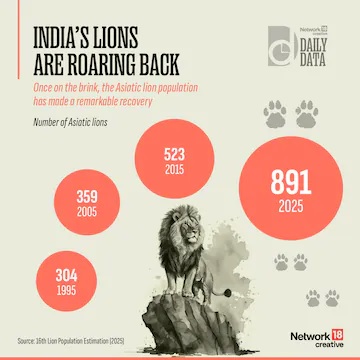
- 22 May 2025
In News:
According to the 16th Asiatic Lion Census (2025) conducted by the Gujarat Forest Department, the Asiatic lion (Panthera leopersica) population has grown from 674 in 2020 to 891 in 2025, marking a 32.2% increase in five years.
Key Highlights:
- Core Areas (Protected Forests & Sanctuaries): 384 lions
- Non-Forest Areas: 507 lions (up from 340 in 2020)
- 44.22% of the total population now lives outside traditional protected zones.
- Gir National Park, along with Gir Wildlife Sanctuary and Pania Wildlife Sanctuary, holds 394 lions—the core population.
- Amreli district leads with 257 lions, while Mitiyala Wildlife Sanctuary has seen its count double to 32.
- Barda Wildlife Sanctuary near Porbandar recorded 17 lions, marking a population return since 1879.
- New satellite populations identified near Jetpur and Babra-Jasdan.
- Adult Females: 330 recorded—a 27% increase since 2020, indicating strong reproductive potential.
Census Methodology
The 2025 census employed direct beat verification, a statistically rigorous method:
- The landscape was divided into zones and sub-zones.
- Personnel included officials, enumerators, supervisors, and volunteers.
- Unlike the tiger census (which spans 2 years), the lion census was completed in just 3 days.
Project Lion (Launched in 2020)
Aimed at ensuring the long-term conservation of Asiatic lions, Project Lion focuses on:
- Habitat restoration
- Strengthening the prey base
- Human-wildlife conflict mitigation
- Monitoring via advanced technology, including:
- Radio-collars
- Camera traps
- Global Positioning System (GPS) tracking
- GIS-based real-time surveillance
- AI-driven tools likeSIMBA, e-GujForest, andAlert Generation System
- Automated sensor grids (magnetic, motion, infrared)
Habitat and Legal Status
- Natural Habitat: Grasslands, open woodlands, savannas, and scrublands.
- Main Range: Gir Forests in Gujarat; Barda Wildlife Sanctuary emerging as a second habitat.
- Legal Protection:
- Schedule I and IV of the Wildlife (Protection) Act, 1972
- Appendix I of CITES
- IUCN Status: Vulnerable
Distinctive Traits
- Smaller in size compared to African lions.
- Males have a moderate mane allowing visible ears.
- A distinct belly fold—rare in African lions.
- No fixed breeding season.
Global Conservation Context
India is a founding member of the International Big Cats Alliance (IBCA), launched in 2023 to enhance global cooperation on big cat conservation, including lions.
Additionally, the IUCN’s Green Status of Species (2025) introduced a recovery-based conservation framework. Lions are currently classified as "Largely Depleted", highlighting the need for sustained and collaborative conservation actions.
World Food Prize 2025
- 19 May 2025
Latest Winner
- Recipient: Mariangela Hungria, a microbiologist from Brazil.
- Achievement: Recognized for her groundbreaking research in biological seed and soil treatments that improve crop nutrition and yields.
- Her innovations reduce the dependency on chemical fertilizers by helping crops derive nutrients through soil microbes, enhancing sustainable agricultural practices.
About the World Food Prize
- Nature of the Award: A prestigious international honour for outstanding contributions to the global food system.
- Often referred to as the “Nobel Prize for Food and Agriculture.”
Objectives
- Recognizes exceptional efforts in improving the quality, quantity, and accessibility of food worldwide.
- Contributions can come from fields such as:
- Agricultural science & technology
- Food production and nutrition
- Economics, policy, marketing
- Poverty reduction & social science
- Leadership in food security initiatives
Establishment
- Founded in: 1986 by Dr. Norman E. Borlaug, Nobel Peace Prize laureate (1970) and father of the Green Revolution.
- Administered by: The World Food Prize Foundation, with support from public and private sector partners.
Award Details
- Prize Amount: $500,000
- Award Ceremony: Held annually in Des Moines, Iowa, USA, during the Borlaug Dialogue and around World Food Day (October 16).
Historical Note
- India’s Contribution: Renowned agricultural scientist M.S. Swaminathan was the first recipient of the World Food Prize in 1987.
- Honoured for introducing high-yielding wheat and rice varieties in India during the 1960s, contributing to food self-sufficiency.
Golden Dragon 2025
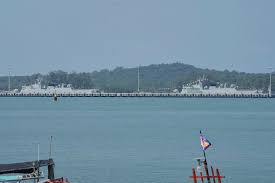
- 16 May 2025
In News:
In May 2025, Cambodia and China launched their largest-ever edition of the annual Golden Dragon military exercise, featuring coordinated land, sea, and air operations. This drill underscores deepening military and strategic cooperation between the two countries amidst shifting geopolitical alignments in Southeast Asia.
About Golden Dragon Exercise:
- Inception: Initiated in 2016, Golden Dragon is a bilateral military exercise between China and Cambodia.
- Objective: Strengthens defence ties, capacity building, and joint operational readiness.
- 2025 Theme: Focuses on joint counter-terrorism operations and humanitarian relief efforts, projecting it as a peace-oriented and technologically advanced drill.
Key Highlights
- Venue: Conducted at Ream Naval Base, located on Cambodia’s southern coast near Sihanoukville.
- Military Domains: Involves exercises across land, sea, and air.
- Technological Showcase:
- Reconnaissance and attack drones
- Surgical robots
- Robot dogs
- These technologies highlight an evolution toward AI-driven and robotic warfare capabilities.
Strategic and Geopolitical Significance:
- Ream Naval Base Expansion:
- China has funded upgrades to this naval base, raising concerns about possible dual-use military capabilities and Beijing's expanding naval footprint in the Gulf of Thailand.
- Cambodia denies hosting any exclusive foreign military presence but allows docking of ships from friendly nations, including recent arrivals from Japan, Vietnam, and China.
- China-Cambodia Relations:
- Cambodia is considered China’s closest ally in Southeast Asia.
- China is a major economic and military benefactor, with growing influence in Cambodian infrastructure and defence.
- Counterbalance to U.S. Influence:
- The drill coincides with the U.S.-led Balikatan exercise, which includes forces from the U.S., Philippines, Australia, and Japan.
- Reflects the strategic competition between China and the U.S. in the Indo-Pacific region.
- “String of Pearls” Strategy:
- China’s involvement in ports like Ream (Cambodia), Hambantota (Sri Lanka), and Gwadar (Pakistan) reflects its strategy to establish logistical and strategic outposts across the Indian Ocean Region (IOR).
State of the World’s Nursing 2025
- 14 May 2025
In News:
The World Health Organization’s upcoming “State of the World’s Nursing 2025” report raises an urgent alarm over the deepening global nursing shortage. It projects that by 2030, 70% of the global shortfall will be concentrated in Africa and the Eastern Mediterranean regions, underscoring the need for immediate and strategic workforce interventions.
Nursing in India: Current Status and Challenges
India is grappling with a critical shortage of nursing professionals, falling short of global standards in several key areas:
- Nurse-to-Population Ratio:India currently has approximately 30 nurses per 10,000 people, which is below the WHO-recommended threshold of 44.5 health workers per 10,000.
- Nursing Education:While the country has significantly increased the number of nursing graduates, quality concerns, infrastructure limitations, and faculty shortages persist across institutions.
- Migration Trends:India remains one of the leading exporters of trained nurses, especially to countries like the UK, Gulf nations, and Australia, contributing to a domestic workforce drain.
- Workforce Retention:Persistent issues such as low wages, limited opportunities for career advancement, and unsafe or stressful working environments contribute to high attrition rates.
Key Issues in India's Nursing Sector
- Inadequate Workforce Availability:India does not meet the WHO’s benchmark for health worker density, with rural areas facing the most severe shortages.
- Urban-Rural Imbalance:A large concentration of nurses in urban private hospitals severely restricts healthcare access in Primary and Community Health Centres (PHCs and CHCs) in rural regions.
- Poor Working Conditions:Nurses frequently endure long working hours, delayed salaries, insufficient mental health support, and unsafe work environments, which discourage long-term retention.
- Lack of Leadership Representation:The absence of Chief Nursing Officers (CNOs) at both state and national levels weakens the profession’s influence in health policy and governance.
- Limited Public Investment:Constraints in fiscal capacity and inadequate infrastructure hinder both the training and employment of nursing professionals.
- International Migration Without Compensation:The high rate of nurse outmigration is not matched by equitable bilateral agreements, leaving India's healthcare system vulnerable and under-resourced.
Strategic Recommendations:
- Expand Training Infrastructure:Increase the number of nursing colleges with a focus on faculty recruitment and clinical infrastructure, in line with the National Education Policy’s emphasis on vocational education.
- Strengthen Leadership and Governance:Establish Chief Nursing Officers at state and national levels, and bolster the role of nursing councils to advocate for reforms and oversee standards.
- Enhance Retention Strategies:Improve remuneration, ensure workplace safety, offer mental health support, and create clear career progression pathways to retain talent.
- Promote Rural Deployment:Introduce bonded scholarships, financial incentives, and housing support to encourage nursing professionals to serve in underserved rural regions.
- Leverage Technology and AI:Incorporate blended learning models, train nurses in electronic health record systems, and integrate AI-driven modules into nursing curricula for future-ready skills.
- Foster Fair International Cooperation:Develop bilateral agreements (e.g., India–UK healthcare MoUs) that ensure reciprocal benefits and support domestic capacity-building when nurses migrate abroad.
International Maritime Defence Exhibition (IMDEX) Asia 2025
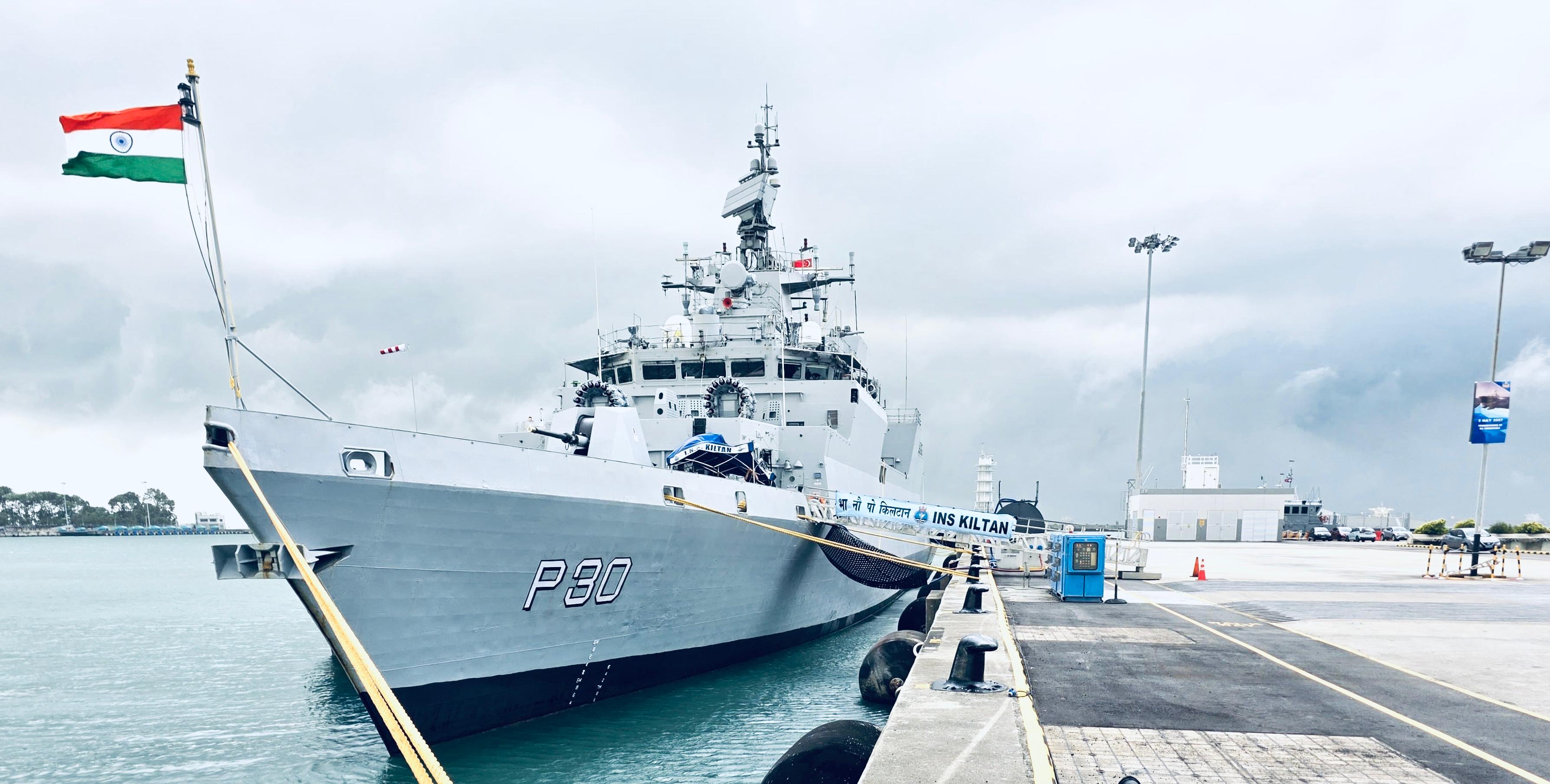
- 10 May 2025
In News:
The International Maritime Defence Exhibition (IMDEX) Asia is a leading biennial maritime and defence event in the Asia-Pacific region, held since 1997 in Singapore at the Changi Exhibition Centre. It serves as a key global platform for navies, coast guards, and maritime defence industries to showcase advanced naval platforms, cutting-edge technologies, and engage in strategic dialogue.
Indian Navy’s Participation
- In May 2025, the Indian Naval Ship INS Kiltan arrived in Singapore to participate in IMDEX Asia 2025.
- This deployment forms part of the Indian Navy’s operational commitments and highlights the strong maritime partnership between India and Singapore.
- During the exhibition, the Indian Navy crew engaged in multiple bilateral and multilateral activities, including professional exchanges with the Republic of Singapore Navy (RSN) and other participating navies.
- Activities included guided tours for schoolchildren, cross-deck visits with other navies, and curated visits for defence industry representatives to promote awareness of maritime security and India’s naval heritage.
Key Features of IMDEX Asia
- Platform for Defence Collaboration: IMDEX Asia facilitates showcasing of naval systems and debut of advanced maritime technologies.
- Strategic Dialogue: The event hosts high-level policy discussions and strategic dialogues on maritime security.
- International Maritime Security Conference (IMSC):
- Established in 2009, IMSC is a crucial component of IMDEX.
- Jointly organised by the Republic of Singapore Navy and the S. Rajaratnam School of International Studies (RSIS).
- It convenes navy chiefs, coast guard leaders, policymakers, and strategic analysts.
- The conference aims to enhance mutual maritime security, improve maritime domain awareness, and foster cooperative responses to challenges in the global maritime commons.
Significance
- The Indian Navy’s participation in IMDEX Asia underlines its commitment to regional maritime security and stability.
- It also reinforces the longstanding friendly ties between India and Singapore and highlights the importance of naval interoperability and defence cooperation in the Indo-Pacific region.
Cashless Treatment of Road Accident Victims Scheme, 2025
- 09 May 2025
In News:
The Government of India has recently introduced the Cashless Treatment of Road Accident Victims Scheme, 2025, aimed at providing immediate, hassle-free medical care to individuals injured in road accidents. This initiative reflects the government's commitment to strengthening the emergency healthcare response system and reducing fatalities due to delays in treatment.
Key Features of the Scheme:
- Universal Eligibility: Any person injured in a road accident involving a motor vehicle on a public road anywhere in India is eligible for cashless treatment.
- Financial Coverage: The scheme offers a maximum coverage of ?1.5 lakh per accident victim, valid for up to seven days from the date of the accident.
- Designated Hospital Network: Victims can avail full cashless treatment only at empanelled hospitals under the scheme. In non-designated hospitals, treatment will be restricted to initial stabilisation, as per official guidelines.
Implementation Mechanism:
- National Health Authority (NHA): The NHA is the central coordinating body for scheme implementation. It will work closely with state health agencies, police, and hospital networks.
- State-Level Execution: In each state and Union Territory, the State Road Safety Council serves as the nodal agency, responsible for:
- Coordinating the onboarding of designated hospitals.
- Managing treatment procedures and claim settlements.
- Facilitating real-time communication through a dedicated online portal.
- Monitoring Framework: A 17-member Steering Committee, chaired by the Secretary, Ministry of Road Transport and Highways, has been constituted to oversee and monitor implementation and address policy-level concerns.
Significance and Impact:
- Addresses Financial Barriers: By offering cashless access to emergency care, the scheme reduces the out-of-pocket burden on accident victims and their families.
- Improves Emergency Response: Ensures timely medical intervention, a critical factor in saving lives during the "golden hour" after a road accident.
- Promotes Inter-Agency Coordination: Brings together multiple stakeholders—healthcare, law enforcement, and road safety agencies—on a unified digital platform for better service delivery.
- Nationwide Coverage: Marks a paradigm shift in accident response policy, aiming to make quality trauma care accessible across both urban and rural India.
Global Space Exploration Conference (GLEX) 2025
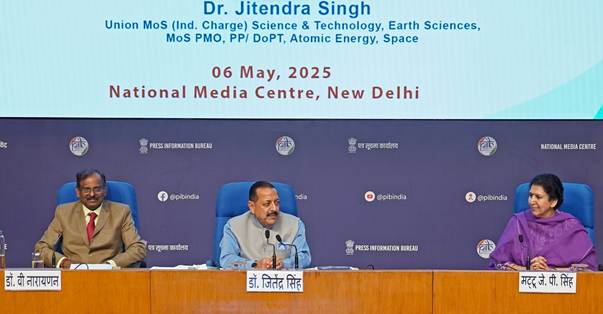
- 09 May 2025
In News:
India is set to host the 12th edition of the Global Space Exploration Conference (GLEX) 2025 from 7th to 9th May 2025 in New Delhi, marking a significant milestone in the nation's emergence as a key global player in space exploration.
Key Highlights of GLEX 2025:
- Theme: “Reaching New Worlds: A Space Exploration Renaissance”
- The conference theme underscores a renewed global commitment to innovation, inclusivity, and international collaboration in space science and technology.
- Organisers:
- International Astronautical Federation (IAF) – The world’s foremost space advocacy organisation.
- Indian Space Research Organisation (ISRO) – Serving as the primary host, reflecting India’s growing stature in the global space ecosystem.
- Astronautical Society of India (ASI) – Acting as the co-host and supporting India's role in global space diplomacy.
GLEX 2025 is expected to bring together global experts, policymakers, scientists, and industry leaders to discuss cutting-edge advancements, collaborative missions, and the future of space exploration. It will also highlight India's evolution from a regional space power to a central figure in the international space community.
About the International Astronautical Federation (IAF):
- Established: 1951
- Membership: Over 500 organisations from 78 countries, including major space agencies, private companies, academic institutions, and research bodies.
- Vision: “A space-faring world cooperating for the benefit of humanity”
- Motto: “Connecting @ll Space People”
- The IAF promotes global space cooperation and knowledge exchange. Through platforms like GLEX, it fosters dialogue on programmatic, technical, and policy aspects of space missions.
Significance for India:
GLEX 2025 reflects India’s growing prominence in the global space domain, reaffirming its commitment to peaceful space exploration and international collaboration. The event offers a valuable opportunity for India to showcase its achievements, build new partnerships, and contribute to shaping the future of global space policy and science.
Khelo India Youth Games 2025

- 06 May 2025
In News:
- Prime Minister Narendra Modi virtually inaugurated the 7th edition of the Khelo India Youth Games (KIYG) on May 4, 2025, marking Bihar’s first time hosting a national-level multi-sport event.
- The event will be held across five cities in Bihar: Patna, Rajgir, Gaya, Bhagalpur, and Begusarai from May 4–15, 2025.
About Khelo India Youth Games (KIYG)
Feature Details
Launch Year 2018
Nodal Ministry Ministry of Youth Affairs and Sports
Target Group Youth athletes under 17 and 21 years of age
Objective Promote grassroots sports, mass participation, and talent
development for global competition
Host Cities in 2025 Patna, Rajgir, Gaya, Bhagalpur, Begusarai
Total Athletes (2025) Over 6,000 participants
Special Highlights of KIYG 2025
- Medal Events: Competitions held in 27 sporting disciplines.
- New Inclusions:
- Sepaktakraw included as a medal sport for the first time.
- Esports introduced as a demonstration event, reflecting the rise of digital-age sports.
- Support for Athletes: Winners eligible for scholarships under the Khelo India Scheme to pursue professional training.
Significance
- PM Modi emphasized the role of regular tournaments like KIYG in shaping India’s sports ecosystem.
- Cited Vaibhav Suryavanshi, a 14-year-old cricketer who scored a 38-ball century in IPL 2025, as a symbol of emerging youth talent.
- Highlighted that platforms like Khelo India events (youth, para, winter, and senior levels) help identify, nurture and promote talent, building confidence among young athletes.
Previous Editions of KIYG
Edition Host City
1st (2018) New Delhi
2nd (2019) Pune
3rd (2020) Guwahati
4th (2021) Panchkula
5th (2022) Bhopal
6th (2023) Chennai
7th (2025) Bihar (multiple cities)
Global Wind Energy Report 2025
- 05 May 2025
In News:
The Global Wind Energy Council (GWEC), in its Global Wind Report 2025, has warned that current global wind energy growth is insufficient to meet the targets aligned with the Paris Agreement and net-zero emissions by 2050. As per the report, at current trends, only 77% of the wind capacity required by 2030 will be achieved — putting the 1.5°C global warming limit at serious risk.
Global Wind Energy Landscape (as of 2024)
- New Capacity Added: 117 GW (up from 116.6 GW in 2023)
- Total Global Capacity: 1,136 GW
- Leading Countries:
- China: 70% of new installations
- USA, Brazil, India, and Germany followed.
- Emerging Markets: Uzbekistan, Egypt, and Saudi Arabia showed significant growth.
- Regional Progress:
- Africa and Middle East: Onshore wind capacity doubled compared to previous years.
- Offshore Wind: Only 8 GW added (down 26% from 2023), the lowest since 2021.
Key Challenges Identified by GWEC
- Policy Uncertainty: Regulatory delays and instability in key markets.
- Grid Infrastructure Deficits: Underinvestment in transmission and distribution systems.
- Financial Constraints: Inflation, high interest rates, trade protectionism.
- Market Inefficiencies: Weak renewable energy auction systems.
Global Commitments & Urgency
- At COP28 (Dubai), countries pledged to triple renewable energy capacity by 2030.
- To align with this goal, annual wind installations must rise to 320 GW by 2030.
- Failure to scale up urgently risks missing a vital climate mitigation window.
Wind Energy in India – Status and Prospects (as of March 2025)
- Total Installed Capacity: 50.04 GW
- Capacity Added (FY 2024–25): 4.15 GW
- (Up from 3.25 GW in FY 2023–24)
- Global Rank: 4th largest wind power producer (after China, USA, Germany)
- Top States:
- Gujarat
- Tamil Nadu
- Karnataka
- Manufacturing Strength: Domestic wind turbine manufacturing capacity is ~18,000 MW/year.
- Offshore Wind Potential:
- Gujarat: 36 GW
- Tamil Nadu: 35 GW
Operation Hawk 2025
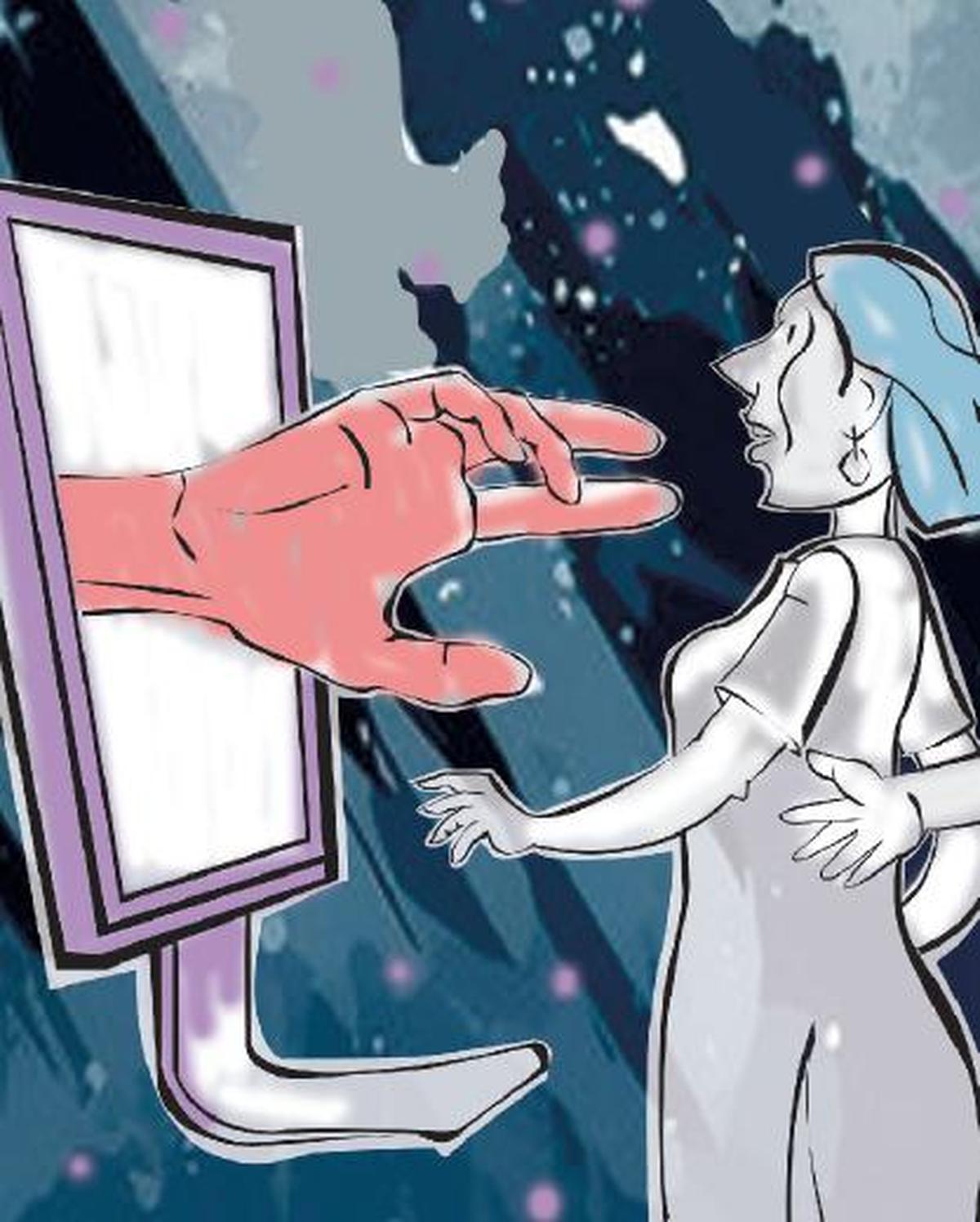
- 04 May 2025
In News:
The Central Bureau of Investigation (CBI) has launched Operation Hawk in 2025 to combat international cybercrime networks involved in online child sexual exploitation (OCSE). The operation led to arrests in Delhi and Mumbai, following inputs from foreign agencies including the United States.
About Operation Hawk
Feature Details
Launched By CBI’s International Operations Division
Year of Launch 2025
Main Objective Target and dismantle cybercriminal networks engaged in OCSE
Scope International cooperation, digital forensics, and prosecution
Key Objectives
- Disrupt organized cyber-pedophile networks.
- Enhance coordination with agencies like Interpol, FBI, and foreign governments.
- Strengthen legal action under IPC, IT Act, and POCSO Act.
- Address complaints involving Indian nationals from foreign jurisdictions.
- Boost cross-border digital evidence collection and swift response systems.
Previous Related Operations
- Operation CARBON (2021):Targeted dark web CSAM (Child Sexual Abuse Material) users globally.
- Operation MEGH CHAKRA (2022):Pan-India action based on Interpol alerts; resulted in large-scale arrests and digital data seizures.
WAVES 2025 & WAM!
- 01 May 2025
In News:
In line with the vision of “Create in India, Create for the World,” the Ministry of Information & Broadcasting, in partnership with the Media & Entertainment Association of India (MEAI), is hosting WAVES 2025—India’s largest summit for the Media & Entertainment (M&E) sector. A major highlight of this summit is the WAM! (WAVES Anime & Manga Contest)—India’s first national initiative to promote original Indian IPs in anime, manga, webtoons, and cosplay.
What is WAM!?
- Full Form: WAVES Anime & Manga Contest.
- Nature: India’s first national initiative focused on discovering and nurturing original Indian creative intellectual properties (IPs) in:Anime, Manga, Webtoons&Cosplay
- Organisers: Ministry of Information & Broadcasting, in collaboration with MEAI.
- Finale: To be held at WAVES 2025, from May 1–4, 2025, at the Jio World Convention Centre, Mumbai.
- Participants: Finalists from 11 cities selected through regional contests.
Global Support & Incentives
- Crunchyroll, a global anime platform (a joint venture of Sony Pictures Entertainment and Aniplex, Japan), is the Title Sponsor of WAM! 2025.
- It has introduced a Creator Development Grant to support Indian talent and foster global-ready original content.
Grant Details
Category Student (INR) Professional (INR)
Manga 25,000 25,000
Webtoon 25,000 25,000
Anime 50,000 50,000
- Winners of WAM! 2025 will represent India at Anime Japan 2026 in Tokyo—one of the world's leading anime conventions—marking India’s presence on the global animation stage.
About WAVES 2025
- Full Form: World Audio-Visual & Entertainment Summit.
- Objective: Showcase India's capabilities in content creation, technological innovation, and media & entertainment IP development.
- Hosted by: Government of India.
- Venue: Jio World Convention Centre, Mumbai
Key Pillars of WAVES 2025
- AVGC-XR Sector Focus:Animation, Visual Effects, Gaming, Comics&Extended Reality (XR) including AR, VR, and Mixed Reality.
- "Create in India" Challenges (CIC):
- Season 1 witnessed over 1 lakh registrations, including 1,100 international participants.
- 750+ finalists selected through 32 unique creative challenges.
- Thematic Focus Areas:
- Broadcasting, Films, Television, Radio
- Print & Digital Media, Advertising, Social Media Platforms
- Sound & Music
- Generative AI, Augmented Reality (AR), Virtual Reality (VR), Extended Reality (XR)
- Target Audience: Content creators, industry professionals, investors, technology innovators, and global studios.
USCIRF’s 2025 Report
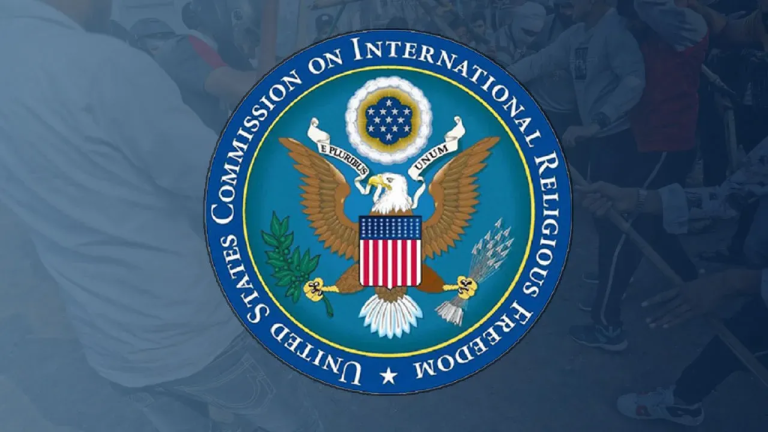
- 30 Mar 2025
In News:
In its 2025 Annual Report, the United States Commission on International Religious Freedom (USCIRF) recommended designating India as a "Country of Particular Concern" (CPC), citing alleged systemic violations of religious freedom.
Key USCIRF Recommendations:
- Label India as a CPC under the International Religious Freedom Act (IRFA), 1998.
- Impose targeted sanctions on Indian institutions, including the Research and Analysis Wing (RAW), and individuals such as Vikash Yadav.
- Review bilateral defence agreements, including drone deals.
- Prioritise religious freedom in diplomatic dialogues with India.
- Reintroduce the Transnational Repression Reporting Act, 2024 to monitor global religious freedom violations.
About USCIRF:
- Established by: U.S. Congress (1998) under IRFA.
- Nature: Independent, bipartisan federal agency.
- Not affiliated with: U.S. State Department (but works in coordination).
- Structure: 9 Commissioners appointed by the U.S. President and Congressional leaders.
- Mandate: Monitor global religious freedom (FoRB), advise U.S. leadership, recommend sanctions, and publish annual reports.
Core Functions:
- Track global trends in freedom of religion or belief.
- Recommend policy actions including CPC designation.
- Advocate for religious prisoners of conscience.
- Maintain a FoRB Victims List and issue thematic reports.
India’s Official Response:
The Ministry of External Affairs (MEA) firmly rejected USCIRF’s report, calling it “biased and politically motivated.”
- MEA Spokesperson Randhir Jaiswal criticized the report for misrepresenting isolated incidents and ignoring India’s multicultural and pluralistic society.
- Highlighted India’s 1.4 billion diverse population, representing all major religions.
- Emphasized that USCIRF’s assessments reflect a deliberate narrative rather than genuine concern for religious rights.
- Asserted that such reports would not affect India’s image as a democratic and tolerant nation.
- Called for USCIRF itself to be recognized as an “entity of concern.”
IEA Global Energy Review 2025
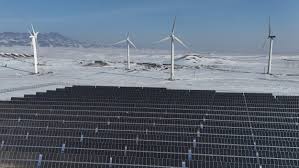
- 28 Mar 2025
In News:
The world's energy demand grew at 2.2% in 2024, a pace described as "faster than average" by the International Energy Agency (IEA) in its Global Energy Review.
Key Highlights:
Global Energy Demand
- Global energy demand grew by 2.2% in 2024, faster than the average of the past decade.
- Emerging and developing economies accounted for over 80% of the increase, with Asia leading the growth.
- Electricity demand rose 4.3%, nearly double the past decade's average.
Rise of Renewables
- Renewables were the fastest-growing energy source, contributing 38% of global energy growth.
- A record 700 GW of renewable power capacity was added globally in 2024 (22nd consecutive annual record).
- Low-emission sources (renewables + nuclear) accounted for 80% of the increase in electricity generation.
Key Country Contributions:
- China added:340 GW solar and 80 GW wind (≈ two-thirds of global additions).
- India added:30 GW solar, triple the previous year's addition.
Global Renewable Generation (2024):
- Solar: +480 TWh
- Wind: +180 TWh
- Hydropower: +190 TWh (mainly due to favorable weather, not capacity increase)
Coal Trends:
- Coal demand rose 1%, reaching a record high in 2024.
- China derives 60% of its electricity from coal; India, about 75%.
- Coal’s global electricity share dropped to 35% – the lowest since the IEA's inception in 1974.
- The seaborne coal market is shrinking as top consumers are also top producers with domestic-use policies.
Natural Gas Outlook
- Natural gas demand rose 2.7%, hitting a record 115 billion cubic metres in 2024.
- Driven by:
- China's adoption of LNG trucks
- Heatwaves increasing power demand
- However, demand fell in late 2024 due to rising LNG spot prices, indicating price sensitivity in Asia.
Crude Oil Demand Slows
- Oil demand grew just 0.8%, mainly from the petrochemical sector.
- Transport-related oil use declined due to:
- Growth in electric vehicles (EVs) (especially in China)
- Expansion of LNG trucks and high-speed rail networks
About the International Energy Agency (IEA)
- Founded: 1974 (post-1973 oil crisis) by OECD nations.
- HQ: Paris, France.
- Members: 31 countries (only OECD nations can be full members); India is an association country.
- Mandate: Energy security, sustainability, and global cooperation.
- Key Reports: World Energy Outlook, India Energy Outlook, World Energy Investment Report, Global Energy Review.
India to Host FATF Private Sector Collaborative Forum 2025 in Mumbai
- 25 Mar 2025
In News:
- India will host the FATF Private Sector Collaborative Forum (PSCF) 2025 in Mumbai from March 25-27, 2025. This event will focus on global priorities such as payment transparency, financial inclusion, and the digital transformation of financial systems.
- The forum will be a critical platform for addressing the evolving challenges of money laundering and terrorist financing through the use of digital tools and enhanced transparency.
Key Agenda
The discussions at PSCF 2025 will revolve around tackling contemporary financial crimes, including those linked to cryptocurrency-related laundering. Key topics will include:
- Strengthening Anti-Money Laundering (AML) and Counter-Terrorist Financing (CFT) compliance mechanisms.
- Promoting financial inclusion through risk-based supervision of regulated entities.
- Enhancing transparency in beneficial ownership and using digital tools to bolster AML/CFT measures.
- Addressing emerging risks, including terrorist financing and proliferation financing.
The forum will also assess how the private sector can enhance information-sharing practices to address these threats more effectively.
About FATF
The Financial Action Task Force (FATF), established in 1989 during the G7 Summit in Paris, is an intergovernmental body that sets international standards to combat money laundering and terrorist financing. The FATF’s mission is to develop policies, establish guidelines, and promote global cooperation to mitigate the financial risks associated with these crimes.
- Headquarters: Paris, France.
- Membership: FATF has 39 member countries, including major economies such as the United States, India, China, Saudi Arabia, Germany, and theEuropean Union.
- Regional Bodies: In addition to its direct members, FATF affiliates over 180 countries through FATF-Style Regional Bodies (FSRBs) like the Asia Pacific Group (APG) and the Eurasian Group.
- FATF Recommendations are recognized as the global standard for AML/CFT measures.
FATF evaluates countries' efforts to comply with these standards, providing assessments and promoting policy changes to counteract financial crimes. Countries that fail to comply may be placed on the grey list or blacklist.
FATF Grey and Black Lists
Countries that fail to meet FATF standards are placed on one of two lists:
- Black List: Countries known as Non-Cooperative Countries or Territories (NCCTs), which directly support terrorist financing and money laundering. North Korea, Iran, and Myanmar are currently on this list.
- Grey List: Countries considered at risk of supporting financial crimes but not yet fully engaging in those activities. Being on the grey list serves as a warning, with the risk of moving to the blacklist if improvements are not made.
Countries on the blacklist face severe international sanctions, including restrictions on financial aid and economic interactions from organizations like the IMF, World Bank, and Asian Development Bank.
India's Role in FATF
India became a member of FATF in 2010 and has made significant strides in improving its AML/CFT frameworks. In 2024, FATF acknowledged India’s efforts towards anti-money laundering and countering terrorist financing, placing it in the "regular follow-up" category for continued compliance.
The upcoming PSCF 2025 will be a milestone in India’s ongoing commitment to global financial security, as it seeks to enhance international collaboration and discuss innovative ways to address evolving threats in financial crimes.
World Water Day 2025
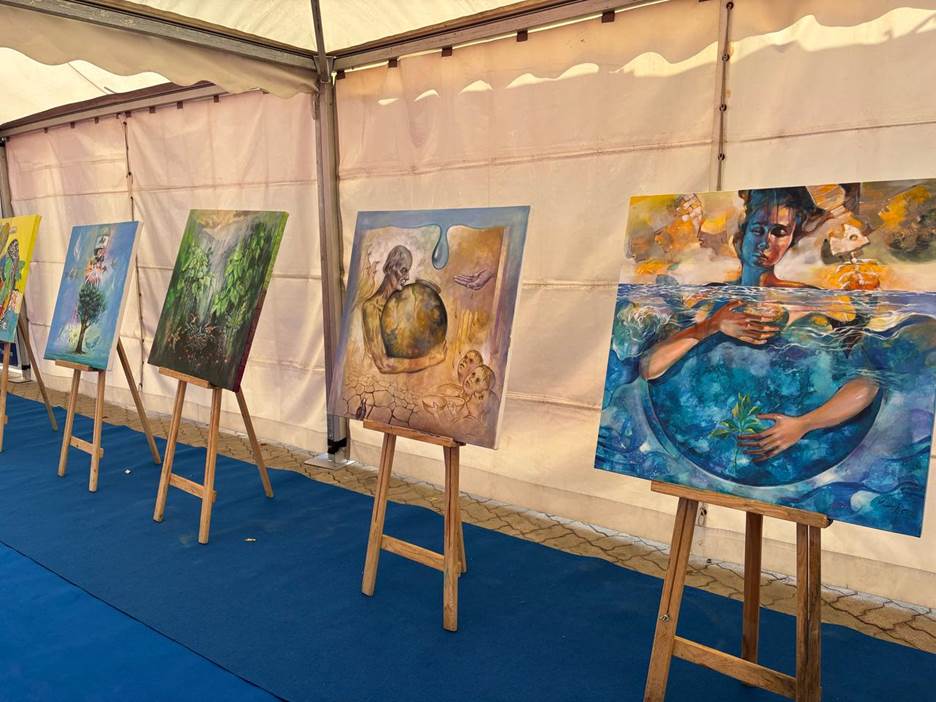
- 25 Mar 2025
In News:
Marking World Water Day, the Ministry of Jal Shakti, in collaboration with the Ministry of Environment, Forest & Climate Change and the Government of Haryana, launched the much-anticipated sixth edition of Jal Shakti Abhiyan: Catch the Rain - 2025 in Panchkula, Haryana.
World Water Day 2025
- Observed On: 22nd March 2025
- 2025 Theme: ‘Glacier Preservation’
- Global Context: Declared by the United Nations General Assembly in 1993, conceptualized at the 1992 Rio Earth Summit.
- Linked SDG: Sustainable Development Goal 6 (SDG-6) – Clean Water and Sanitation for All by 2030.
- Purpose: To raise global awareness on water conservation and promote sustainable water use.
India's Observance: Launch of Jal Shakti Abhiyan – Catch the Rain 2025
- Launched by: Ministry of Jal Shakti, in collaboration with Ministry of Environment, Forest and Climate Change (MoEFCC) and Government of Haryana.
- Launch Venue: Panchkula, Haryana (first time outside Delhi).
- Theme: “????????????????: ??????????????” (People’s Action for Water Conservation – Towards Intensified Community Connect).
- Focus Areas:
- Rainwater harvesting
- Groundwater recharge
- Community-led water conservation
- Ecological restoration (forests, rivers, springs)
Key Campaigns & Initiatives
Jal Shakti Abhiyan: Catch the Rain 2025 (JSA:CTR)
- Targeted Districts: 148 water-stressed districts across India.
- Tagline: “Catch the Rain where it falls, when it falls.”
- Objective: Promote localized water conservation through people’s participation and decentralized planning.
“Jal-Jangal-Jan” Abhiyan
- Aim: Restore ecological connectivity between water, forests, and communities.
- Collaborators: MoEFCC and Jal Shakti Ministry.
- Tools Used: Awareness videos, AV content, best practice compilations.
State-Level Innovations: Haryana Model
- Launched:
- Mukhyamantri Jal Sanchay Yojana – Enhancing water harvesting through community participation.
- Water Resources Atlas – Scientific mapping of water availability.
- Online Canal Water Management System – Real-time irrigation data for efficiency.
- E-booklet on Integrated Water Resources Management.
- Infrastructure Projects under SBM-G & JSA:
- Community Sanitary Complexes
- Solid & Liquid Waste Management
- Gobardhan (Biogas) Projects
- Borewell Recharge Systems
- Micro-irrigation and Rainwater Harvesting Projects
Key Government Schemes Related to Water
- Jal Shakti Abhiyan (JSA) – Time-bound, mission-mode campaign for water conservation.
- Atal Bhujal Yojana – Participatory groundwater management in critical areas.
- AMRUT 2.0 – Urban water supply and sewerage services improvement.
World Happiness Report 2025
- 23 Mar 2025
In News:
The World Happiness Report (WHR) 2025 was released on 20th March (World Happiness Day) by the Wellbeing Research Centre at the University of Oxford, in collaboration with Gallup and the UN Sustainable Development Solutions Network (UNSDSN).
India’s Performance:
- India’s Rank (2025):118th out of 147 countries (Improved from 126th in 2024).
- Sub-Indicator Performance:
- Donations: 57th
- Volunteering: 10th
- Helping a Stranger: 74th
- Wallet Return Probability:
- 115th (by neighbor)
- 86th (by stranger)
- 93rd (by police)
- Sub-Indicator Performance:
- Happiness Score: Increased from 4.054 (2021–23) to 4.389 (2022–24).
- Rank among Neighbors:
- Nepal: 92nd
- Pakistan: 109th
- Myanmar: 126th
- Sri Lanka: 133rd
- Bangladesh: 134th
Top 10 Happiest Countries (2025):
- Finland (8th consecutive year)
- Denmark
- Iceland
- Sweden
- Israel
- Costa Rica (new entrant)
- Netherlands
- Norway
- Luxembourg
- Mexico(new entrant)
Least Happy Countries (Bottom 5):
- 147th: Afghanistan (4th consecutive year as lowest)
- 146th: Sierra Leone
- 145th: Lebanon
- 144th: Malawi
- 143rd: Zimbabwe
About the Report:
- Purpose: Measures global well-being through life evaluations and promotes policy focus on happiness, mental health, and quality of life over mere economic growth.
- Methodology:
- Based on Gallup World Poll (2022–2024 data).
- Uses Cantril Ladder Scale (0–10) for life evaluation.
- Six Key Indicators:
- GDP per capita
- Healthy life expectancy
- Social support
- Freedom to make life choices
- Generosity
- Perception of corruption
Global Trends in Happiness (2025):
- Nordic Dominance: Finland, Denmark, Iceland, and Sweden occupy top ranks.
- Decline in Western Countries:
- USA: 24th (down from 11th in 2012)
- UK: 23rd (lowest since 2017)
- Rising loneliness and social isolation major causes.
- Israel (5th): Maintained high rank despite ongoing conflict.
- Social Support Decline: 19% of young adults globally report having no one to rely on.
Special Focus: India vs Pakistan – The Paradox
Despite India’s:
- Higher GDP per capita ($2,480.8 vs Pakistan’s $1,365.3),
- Better health indicators (life expectancy: 58.1 vs 56.9),
- Better corruption perception rank (India: 96th, Pakistan: 135th),
India still ranks lower in happiness.
Reason: Low scores in perceived freedom and individual life satisfaction.
World Happiness Day:
- Observed on: 20th March
- Initiated by: Bhutan, which pioneered the concept of Gross National Happiness (GNH).
- Adopted by UNGA: July 2012
- Theme 2025:"Caring and Sharing"
Exercise Sea Dragon 2025
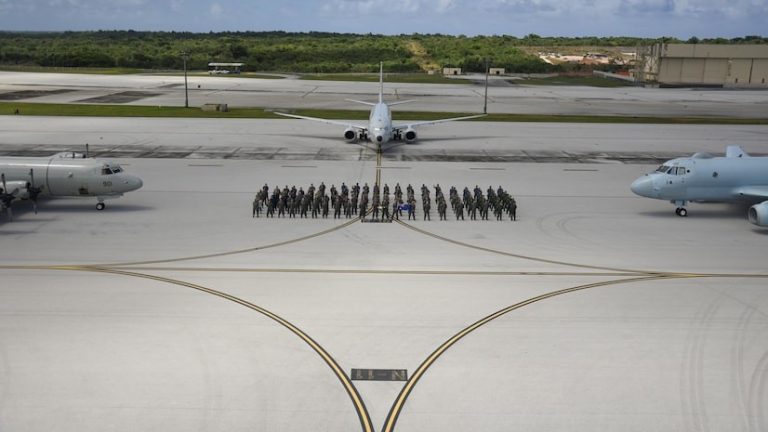
- 22 Mar 2025
In News:
India successfully concluded its participation in Exercise Sea Dragon 2025, a two-week multinational anti-submarine warfare (ASW) drill conducted in the Indo-Pacific region, hosted by the United States Navy’s 7th Fleet.
About Exercise Sea Dragon 2025
- Type: Annual Multinational Anti-Submarine Warfare (ASW) Exercise
- Duration: Two weeks
- Location:Andersen Air Force Base, Guam, Western Pacific
- Host: U.S. Navy’s 7th Fleet
- Inception: Started as a bilateral US-Australia exercise in 2019; expanded to include more Indo-Pacific allies.
- India’s Participation: Since 2021; SD25 marks India’s 4th consecutive participation.
Objectives of Sea Dragon 2025
- Enhance Maritime Security and regional naval cooperation
- Strengthen anti-submarine warfare capabilities
- Improve interoperability and coordination among Indo-Pacific allies
- Promote a free, open, and rules-based Indo-Pacific
- Address undersea threats, particularly in light of China’s growing maritime presence
Key Features of Sea Dragon 2025
- Live ASWEX: Tracking of real U.S. Navy submarines
- Mobile Drills: Use of MK-30 ‘SLED’ (Submarine Launch Expendable Device) as training targets
- Competitive Phase: Crews evaluated and graded based on ASW tactics and effectiveness
- Theoretical + Practical Training: Included tactical discussions, submarine detection, and neutralization scenarios
- Deployment of Advanced MPRA (Maritime Patrol and Reconnaissance Aircraft): Equipped with sonobuoys and sensors for submarine tracking
Significance for India
- Improves ASW Readiness and operational capabilities of the Indian Navy
- Strengthens ties with Quad members (U.S., Australia, Japan) and other Indo-Pacific partners
- Supports India’s broader strategy of naval modernization
- Aligns with India’s efforts to safeguard its interests in the Indian Ocean Region (IOR) and maintain regional stability.
Outcome
- RAAF (Australia) emerged as the top-performing team in the competitive phase.
- India successfully demonstrated its capabilities and reaffirmed commitment to Indo-Pacific security cooperation.
WEF UpLink Annual Impact Report 2025
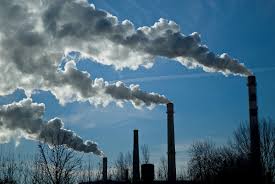
- 21 Mar 2025
In News:
The World Economic Forum’s (WEF) UpLink Annual Impact Report 2025 underscores the significant contributions of early-stage start-ups in tackling climate and sustainability challenges globally.
About UpLink:
- Launched: 2020 at Davos by WEF in collaboration with Deloitte and Salesforce.
- Objective: Open innovation platform to support the UN Sustainable Development Goals (SDGs) by connecting entrepreneurs with experts, investors, and stakeholders.
Key Environmental and Social Impacts (2023–2024):
Category Impact
Carbon Emissions 142,400 tonnes of CO? prevented (equal to emissions
of ~30,000 cars)
Ecosystem Protection 140 million hectares of land and water safeguarded
Water Management 2.5 billion litres of hazardous wastewater treated
Waste Management 28 million tonnes of waste tracked
Water, Sanitation & Hygiene (WASH) 2.7 million people gained improved access
Job Creation 30,000+ new jobs generated
Livelihood Support ~500,000 smallholder farmers and fishers experienced
income growth
Waste Collector Empowerment 18,000 collectors integrated into formal markets
Notable Indian Contributions:
- Indra Water: Processed 1.2 billion litres of wastewater in 2024 (243% rise from 2022).
- S4S Technologies: Reduced 60,000 tonnes of food waste — enough to feed 2.7 million people for a month.
Global Innovations Highlighted:
- EnviCore (Canada): Uses mining waste in construction to cut emissions.
- Umgrauemeio (Brazil): AI-based wildfire monitoring across 6.7 million hectares of forests.
- SHAYP: Saved 7 billion litres of water in 2024 using leakage detection; aims for 100 billion litres by 2027.
- GreenPlat (Brazil): Tracked 12.3 million tonnes more waste in 2024 than the previous year.
Investment and Innovation Trends:
- Total Funds Raised by UpLink Ventures in 2024: $633 million (up by $196 million from 2023).
- Customer Base Growth: Nearly 50% of ventures reported over 40% increase in customers.
- Circular Economy Focus: 13 ventures supported under the Traceability for Circularity Challenge to promote ethical and waste-reducing value chains.
Future Focus Areas (Planned by UpLink):
- Sustainable mining
- Carbon capture technologies
- AI-driven environmental monitoring
Maritime Security Belt 2025

- 16 Mar 2025
In News:
Amid rising tensions over Iran’s expanding nuclear program and threats from Yemen's Houthi rebels, China, Iran, and Russia conducted the Maritime Security Belt 2025 naval exercise in the Gulf of Oman, strategically located near the Strait of Hormuz. This region is of global significance as it serves as a major maritime route, through which a fifth of the world’s crude oil is transported daily.
Key Highlights of the Exercise
- Location: Gulf of Oman, near the Strait of Hormuz, connecting the Persian Gulf to the open seas. This waterway is crucial for global energy supplies and trade.
- Participating Navies:
- Iran: State-run media highlighted the drills as a show of strength, particularly after Israeli strikes targeted Iran’s defense and missile programs.
- Russia: Participated with corvettes Rezky and Aldar Tsydenzhapov as well as the tanker Pechenega. Russia continues to rely on Iran for drone supplies, particularly in the ongoing war in Ukraine.
- China: Sent guided-missile destroyer Baotou and supply ship Gaoyouhu. China maintains deep ties with Iran, especially in the oil sector, despite facing Western sanctions.
- Operational Objectives:
- The exercise aimed to enhance coordination and operational synergy between the three nations, with a focus on maritime security, countering threats to shipping lanes, and addressing global security challenges.
- It featured live-fire drills, night operations, and complex naval maneuvers, ensuring the readiness of all three navies to respond to maritime threats.
- Regional Significance: The Gulf of Oman serves as the only maritime access for Iran to the open seas, making it critical for global trade. The Strait of Hormuz is particularly significant as it handles a significant portion of the world’s oil trade.
Strategic Context and Implications
- Nuclear Tensions: Iran's nuclear program, which has drawn concerns from both Israel and the U.S., remains a central issue in the region. The exercises coincide with the growing concerns over Iran’s stockpiling of uranium enriched to near weapons-grade levels, despite Tehran's assertions that its nuclear ambitions are peaceful.
- Impact of Drills: These joint naval exercises highlight the growing influence of China and Russia in the Middle East, both of which have strategic ties with Iran. While these countries do not patrol the wider Middle East region, their naval presence in the Gulf signals their deepening involvement in the region’s security dynamics, particularly in opposition to the U.S.-led presence.
- Yemen's Role: The Houthi rebels in Yemen have previously targeted international shipping in the Red Sea and Bab el-Mandeb Strait, and have threatened to resume attacks unless humanitarian aid is allowed into Gaza. The instability in the region further complicates security, as seen in the potential for maritime disruptions.
Geopolitical Dimensions
- China’s Interests: China, as a major consumer of Iranian crude oil, continues to engage with Iran despite facing Western sanctions. These drills serve as a symbol of China’s increasing military presence and its growing role in the Middle East, particularly in energy security.
- Russia’s Involvement: Russia's reliance on Iran for bomb-carrying drones in the Ukraine conflict further deepens the military relationship between the two nations. The maritime drills highlight Russia’s interest in securing its position in the Middle East amidst growing tensions with the West.
- U.S. Interests: The U.S., which monitors the region through its 5th Fleet based in Bahrain, remains cautious of the growing military cooperation between China, Russia, and Iran. The drills, especially the interference with GPS systems, have raised concerns about regional stability and the ability to ensure free navigation through critical maritime chokepoints.
Bongosagar 2025 Naval Exercise
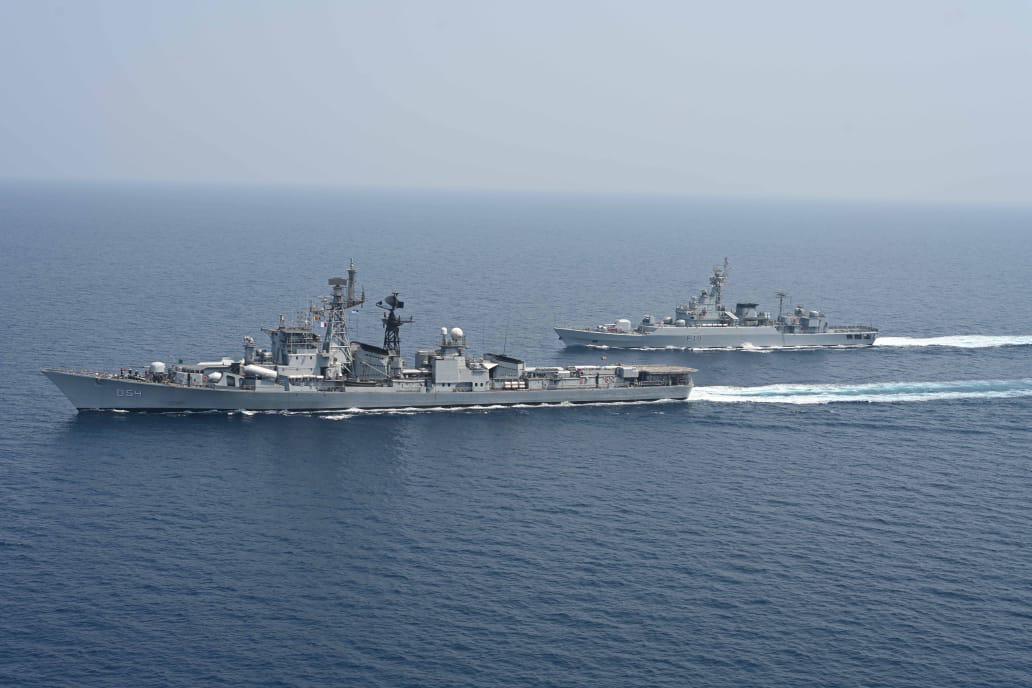
- 16 Mar 2025
In News:
India and Bangladesh conducted the Bongosagar 2025 naval exercise in the Bay of Bengal, aimed at enhancing maritime cooperation, operational interoperability, and regional security. This joint exercise aligns with India's maritime foreign policy doctrine — SAGAR (Security and Growth for All in the Region).
Key Highlights
- Participants:
- Indian Navy: INS Ranvir, a Rajput-class guided missile destroyer, commissioned in 1986.
- Bangladesh Navy: BNS Abu Ubaidah.
- Objectives:
- Strengthen tactical planning, information sharing, and coordinated response capabilities.
- Enhance interoperability for seamless maritime operations.
- Reinforce regional trust and cooperation under the SAGAR framework.
- Exercise Components:
- Surface firing drills
- Tactical manoeuvres
- Underway replenishment
- VBSS (Visit, Board, Search and Seizure) operations
- Cross-deck boarding exercises
- Communication drills
- Professional knowledge quizzes and steam past ceremonies
Strategic Significance
- Supports India’s SAGAR initiative (2015), promoting security and growth in the Indian Ocean region.
- Aligns with the broader MAHASAGAR (2025) vision — Mutual and Holistic Advancement for Security and Growth Across Regions — targeting deeper engagement with the Global South.
- Enhances the ability of both navies to counter maritime threats, uphold freedom of navigation, and ensure regional maritime stability.
India-Bangladesh Defence Cooperation
- Army-level: Exercise Sampriti
- Navy-level: Exercises Bongosagar and Coordinated Patrol (CORPAT)
Raisina Dialogue 2025
- 15 Mar 2025
In News:
The 10th edition of the Raisina Dialogue, India’s premier conference on geopolitics and geo-economics, is scheduled to be held in New Delhi from March 17–19, 2025.
About Raisina Dialogue:
- Launched: 2016
- Organisers: Observer Research Foundation (ORF) in collaboration with the Ministry of External Affairs, Government of India
- Format: Multi-stakeholder, cross-sectoral conference bringing together global leaders in politics, business, media, academia, and civil society
- Modelled On: Munich Security Conference (Germany) and Shangri-La Dialogue (Singapore)
- Annual Venue: New Delhi
- 2025 Theme: Kalachakra: People. Peace. Planet.
Significance for India and the World:
- Provides a platform for dialogue on global strategic and security issues
- Enhances India’s image as a thought leader in international diplomacy
- Fosters multilateral cooperation on contemporary global challenges such as conflict resolution, climate change, technological disruption, and global governance
- Reflects India’s growing role as a bridge between the Global North and Global South
World Wildlife Day 2025

- 05 Mar 2025
In News:
World Wildlife Day is observed on March 3 every year, and in 2025, it will be observed under the theme of “Wildlife Conservation Finance: Investing in People and Planet.”
Key Details:
- Declared by: United Nations General Assembly (UNGA)
- First Observed: 2014
- Occasion: Commemorates the signing of CITES (Convention on International Trade in Endangered Species of Wild Fauna and Flora) in 1973.
- Theme 2025:“Wildlife Conservation Finance: Investing in People and Planet”
Purpose and Significance
World Wildlife Day is an annual UN-recognized global event aimed at:
- Raising awareness about wild fauna and flora.
- Highlighting threats such as climate change, poaching, habitat destruction, and illegal wildlife trade.
- Encouraging global cooperation for wildlife protection.
- Promoting innovative financing models to bridge the estimated $824 billion global biodiversity funding gap.
2025 Theme Focus: Conservation Finance
The 2025 theme calls for sustainable financial strategies, emphasizing:
- Wildlife Conservation Bonds
- Debt-for-Nature Swaps
- Green Bonds and Carbon Credits
- Payments for Ecosystem Services (PES)
- Public-Private Partnerships
These mechanisms aim to support conservation while fostering economic opportunities for local communities.
Timeline of Key Events
- 1973: CITES adopted.
- 2013: UNGA designates March 3 as World Wildlife Day.
- 2014: First official celebration.
- 2021: Theme – Forests and Livelihoods.
- 2025: Theme – Finance for Conservation.
Wildlife Status in India
- Protected Areas: 1,014 total (as of 2024), including:
- 106 National Parks
- 573 Wildlife Sanctuaries
- 115 Conservation Reserves
- 220 Community Reserves
(Covers ~5.32% of India’s total area)
- Tiger Population (2022): 3,682 – ~75% of global wild tigers
- Asiatic Lion Population (2020): ~674 (only in Gujarat's Gir Forest)
- India's Biodiversity Share:
- 7.6% of global mammal species
- 14.7% of amphibians
- 6% of birds and reptiles
- 6% of flowering plants
Major Causes of Wildlife Decline
- Habitat loss & fragmentation
- Illegal wildlife trade and poaching
- Climate change and pollution
- Invasive species
- Industrialization & urban expansion
Conservation Measures in India
- Project Tiger (1973): Boosted tiger numbers significantly.
- Project Elephant (1992): Focuses on elephant corridors and human-wildlife conflict mitigation.
- Wildlife Protection Act (1972): Key legal framework to safeguard endangered species.
- Eco-Sensitive Zones (ESZs): Buffer areas around protected habitats.
- Community Initiatives: Ecotourism, local participation in conservation.
Exercise Desert Hunt 2025
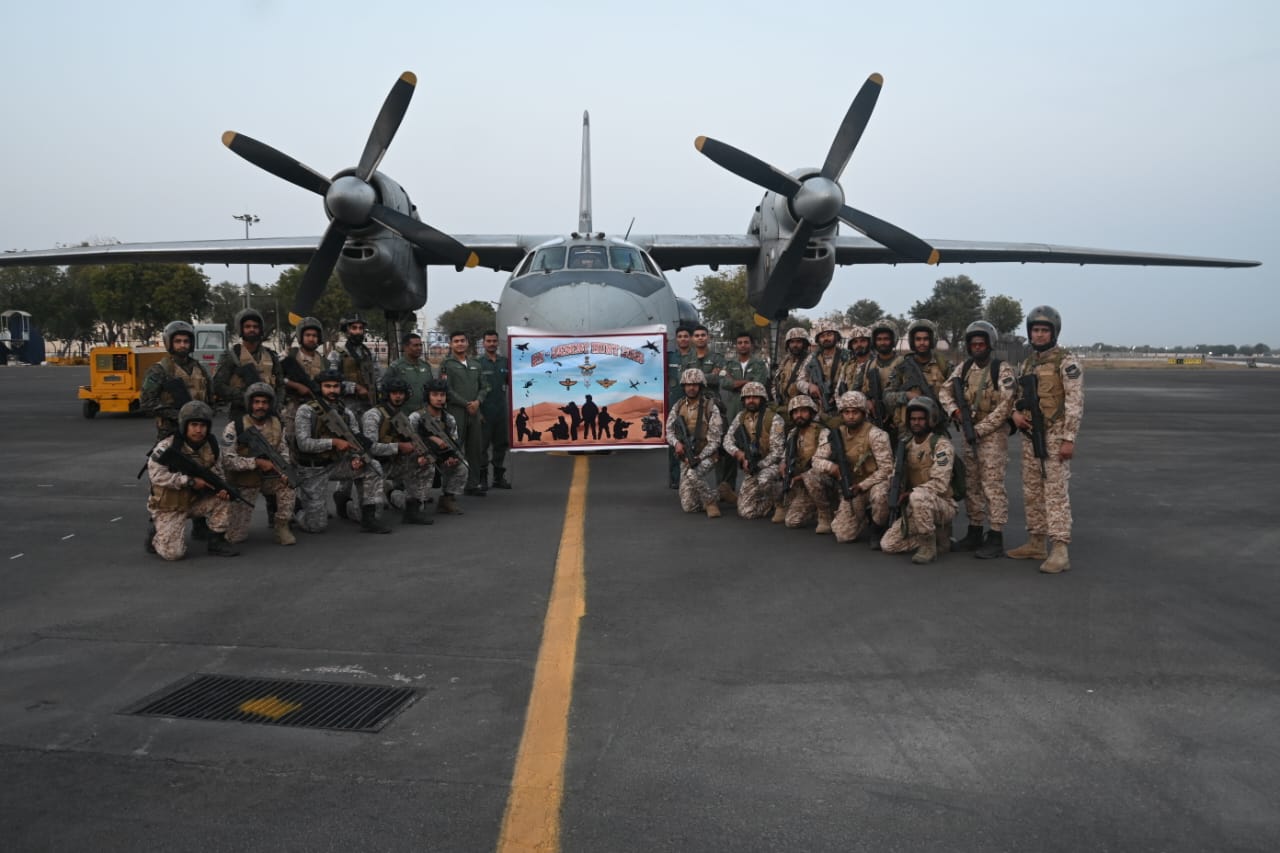
- 04 Mar 2025
In News:
Exercise Desert Hunt 2025 was a high-intensity Tri-Service Special Forces military drill conducted by the Indian Air Force at Air Force Station Jodhpur, Rajasthan, from 24 to 28 February 2025.
Participating Forces
- Indian Army: Para (Special Forces)
- Indian Navy: Marine Commandos (MARCOS)
- Indian Air Force: Garud Special Forces
Objective
- To enhance interoperability, coordination, and operational synergy among the Special Forces of the three services.
- To ensure swift and effective responses to emerging security threats through joint operations.
Key Activities
- Airborne insertion and combat free-fall
- Precision strikes and counter-terrorism drills
- Hostage rescue operations
- Urban warfare simulations
- Validation of joint operational doctrines under realistic combat conditions
Significance
- Strengthens tri-service integration and fosters inter-service cooperation.
- Reinforces the commitment of the Indian Armed Forces to national security.
- Provides a platform for doctrinal validation and operational readiness.
State of India’s Digital Economy Report 2025
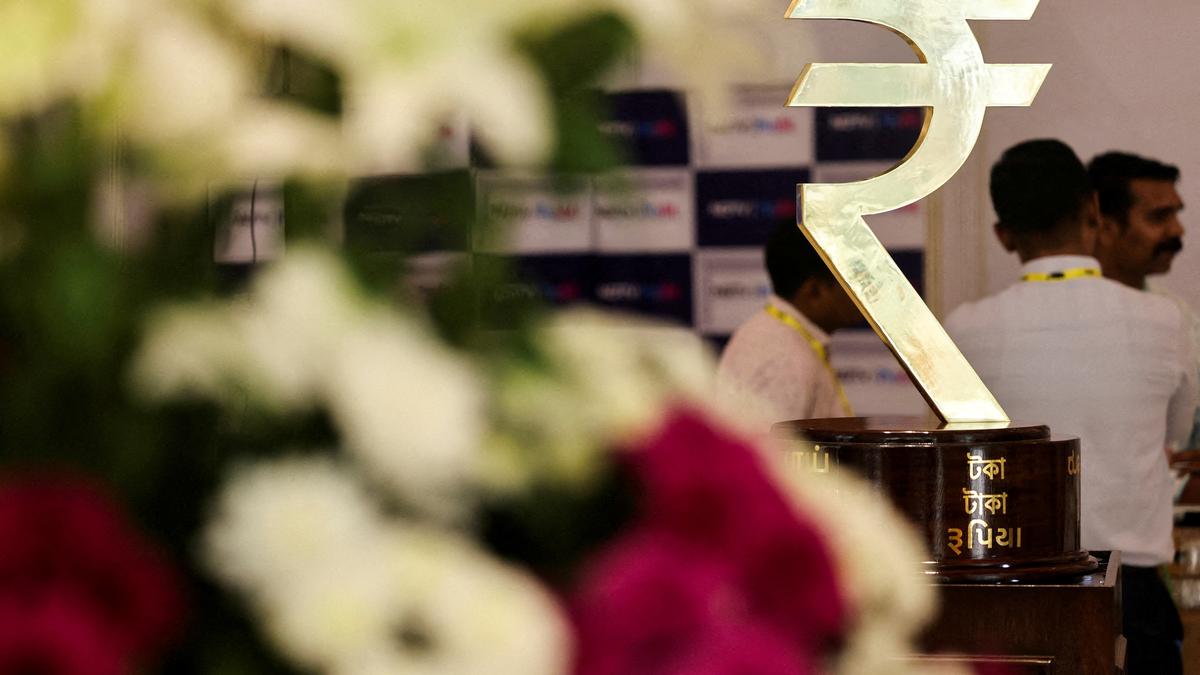
- 04 Mar 2025
In News:
The Indian digital economy is growing twice as fast as the overall economy and is projected to contribute 20% of India’s GDP by 2029, according to the State of India’s Digital Economy (SIDE) 2025 Report released by the Indian Council for Research on International Economic Relations (ICRIER) and its Prosus Centre for Internet and Digital Economy (CIDE).
Key Highlights:
- Global Standing:
- India is the 3rd largest economy globally.
- However, it ranks only 28th in digital user spending, reflecting a significant per capita digital adoption gap.
- In terms of a combined ranking of economic size and digital user economy, India stands 8th globally.
- CHIPS Framework for Digitalisation:The report uses the CHIPS framework to assess digital development:
- Connect: Internet access, affordability, and quality.
- Harness: Usage intensity, fintech adoption.
- Innovate: Start-up ecosystem, AI readiness.
- Protect: Cybersecurity and digital rights.
- Sustain: Green energy investments in the digital sector.
Strengths:
- Harnessing Digital Potential:
- India performs strongly in ICT service exports.
- The Indian IT sector has the third-highest global market capitalisation, after the U.S. and China.
- High levels of fintech usage and a robust start-up ecosystem contribute to digital growth.
- Digital Growth Rate:
- The digital economy is expanding at twice the pace of the broader economy.
Challenges:
- Low Per Capita Spending:Despite high internet penetration, digital service usage and spending are low, particularly among the average user.
- Regional Digital Divide:Southern and Western states are significantly ahead in digital adoption compared to Northern and Eastern states, pointing to the need for region-specific policy support.
- Weakness in Emerging Technologies:
- India ranks 11th in AI research and 16th in AI infrastructure.
- It lags behind countries like the U.S., China, Singapore, South Korea, and the Netherlands in AI and advanced tech innovation.
- Adoption of Consumer IoT and the metaverse remains well below global medians.
Way Forward:
To bridge the digital usage gap and fully harness the potential of the digital economy:
- Policies must focus on increasing affordability, especially in under-served regions.
- There is a need to strengthen AI infrastructure and research.
- Investment in emerging technologies, decentralised finance, and digital skilling is vital.
- A targeted approach to address regional disparities will ensure inclusive digital growth.
National Science Day 2025
- 01 Mar 2025
In News:
National Science Day to be celebrated with theme ‘Empowering Indian Youth for Global Leadership in Science & Innovation for Viksit Bharat’.
Key Details:
- Observed On: February 28 annually
- Purpose: To commemorate the discovery of the Raman Effect by Sir C.V. Raman in 1928. The day highlights the importance of science and promotes scientific temper among the public.
- Theme 2025:“Empowering Indian Youth for Global Leadership in Science & Innovation for Viksit Bharat”
- This theme reflects the vision of building a developed India (Viksit Bharat) by nurturing youth-led scientific innovation and aligning with India’s S&T ambitions for 2047.
About Sir C.V. Raman and Raman Effect:
- Born: 7 November 1888, Tiruchirappalli, Tamil Nadu
- Major Contributions:
- Discovered the Raman Effect (1928), for which he received the Nobel Prize in Physics in 1930, becoming the first Asian Nobel Laureate in science.
- Founded: Indian Journal of Physics (1926), Indian Academy of Sciences (1934), Raman Research Institute (1948).
- First Indian Director of IISc, Bangalore (1933).
- Awarded Bharat Ratna in 1954.
Raman Effect:A phenomenon where light passing through a substance changes in wavelength due to interaction with molecular vibrations. This principle is used in Raman Spectroscopy, widely applied in material science, chemistry, forensics, and even nuclear waste analysis.
National Science Day – History & Celebrations:
- Established: 1986 by the Government of India
- First Observed: 1987
- Organisedby:National Council for Science & Technology Communication (NCSTC) under the Department of Science & Technology (DST).
- Celebrations include lectures, open labs, science fairs, and awareness drives across the country, especially for students.
Key Developments in Science & Technology (2024-25):
- Innovation & IP Rankings:
- 39th in Global Innovation Index 2024 (WIPO)
- 6th in Global IP Filings
- Major Initiatives:
- Anusandhan National Research Foundation (ANRF): Boosts R&D and supports innovation in EVs, materials, and emerging technologies.
- National Quantum Mission (NQM): ?6003.65 crore mission to advance quantum computing, communication, and sensing.
- National Supercomputing Mission (NSM):
- Deployed 33 supercomputers, capacity: 32 PetaFlops.
- Target: 77 PetaFlops using indigenous technology.
- Artificial Intelligence:
- BharatGen: India’s first multilingual, multimodal Large Language Model (LLM) for Generative AI.
- STEM Inclusivity:
- Programs like WISE-KIRAN support women in science.
- PM Early Career Research Grant nurtures young researchers.
- INSPIRE continues to attract school and college students to science careers.
- Geospatial & Climate Research:
- Expansion of spatial thinking programs in schools (116 schools across 7 states).
- Establishment of 4 Centres of Excellence for climate risk mapping to enhance disaster preparedness.
PRAKRITI 2025

- 28 Feb 2025
In News:
- The International Conference on Carbon Markets – PRAKRITI 2025 was inaugurated by the Minister of Power and Housing and Urban Affairs.
- Organized by the Bureau of Energy Efficiency (BEE) under the Ministry of Power, the event served as a major platform for global dialogue on carbon markets, climate finance, and sustainability strategies.
Key Highlights:
PRAKRITI 2025 (Promoting Resilience, Awareness, Knowledge, and Resources for Integrating Transformational Initiatives) aimed to:
- Understand the functioning of Indian and global carbon markets.
- Discuss challenges, dynamics, and opportunities in carbon trading.
- Strengthen carbon credits, offset mechanisms, and compliance systems.
- Promote renewable energy, green innovations, and ecosystem-based interventions.
- Foster collaboration between governments, industries, and citizens.
Insights from PRAKRITI 2025
- Global Linkages:India’s carbon market will increasingly be influenced by global policies such as the European Union’s Carbon Border Adjustment Mechanism (CBAM), which imposes carbon pricing on imports like steel and aluminium. Indian industries must prepare to maintain competitiveness.
- Carbon Market Mechanisms:
- Under Article 6 of the Paris Agreement, carbon trading allows entities to buy carbon credits to offset emissions.
- Carbon credit = reduction of 1 metric ton of CO? or equivalent GHGs.
- India’s Progress:
- India ranks second globally in Clean Development Mechanism (CDM) project registrations.
- The Perform, Achieve and Trade (PAT) scheme, regulated by BEE, has saved over 106 million tonnes of CO? since 2015.
- Development of a domestic carbon market is a priority to align with global standards and leverage international finance.
- Challenges Highlighted:
- Need for robust Monitoring, Reporting, and Verification (MRV) frameworks.
- Ensuring fair benefit distribution among stakeholders.
- Developing policies tailored to India’s economic and social realities.
- Increasing private sector engagement and incentivizing renewable energy developers.
Bureau of Energy Efficiency (BEE)
- Established: 1 March 2002 under the Energy Conservation Act, 2001.
- Mandate: Develop policies and programmes to promote energy efficiency, coordinate with stakeholders, and promote self-regulation within market principles to reduce India's energy intensity.
- Role in Carbon Market: BEE is the nodal agency regulating India’s carbon trading schemes and energy conservation initiatives.
Remission and the Supreme Court’s 2025 Ruling
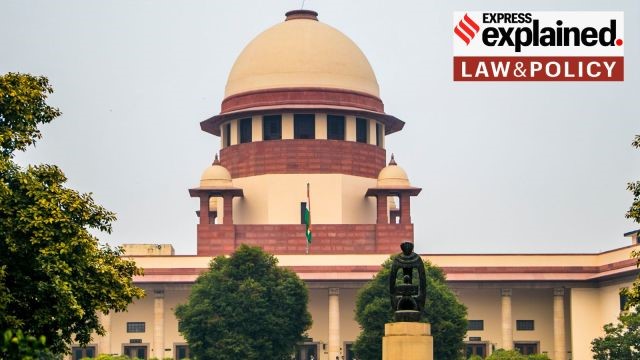
- 24 Feb 2025
In News:
Recently, the Supreme Court directed states with remission policies to consider the premature release of prisoners even if they don’t apply for remission beforehand.
What is Remission?
- Remission refers to the reduction of a convict's sentence by the government before the term is completed. It does not nullify the conviction, but shortens imprisonment.
- It is governed by:
- Section 473 of BNSS, 2023 (earlier Section 432 of CrPC, 1973) – empowers state governments to grant remission.
- Articles 72 and 161 of the Constitution – empower the President and Governors respectively to remit sentences.
- Section 475 of BNSS (earlier Section 433A CrPC) – restricts remission for life convicts found guilty of offences punishable by death until 14 years of imprisonment are completed.
Background: SC’s Suo Motu Intervention
- The Supreme Court in 2025, in the suomotu case In Re: Policy Strategy for Grant of Bail, altered the interpretation of remission rules to address prison overcrowding.
- The Court held that states must consider remission for eligible convicts even without a formal application, if a remission policy exists.
Shift in Judicial Interpretation
- Earlier rulings (Sangeet v. Haryana and Mohinder Singh v. Punjab, 2013) required a convict's application for remission.
- The 2025 judgment acknowledges that many state prison manuals already mandate prison authorities to initiate remission review.
- It recognized that failing to consider remission proactively could lead to arbitrary discrimination, violating Article 14 (Right to Equality).
Key Guidelines Issued by the Supreme Court
- Suo motu Remission:States must automatically assess eligibility under remission policies—no application needed.
- Mandatory Remission Policy:States without existing remission policies must formulate a comprehensive one within two months.
- Conditions for Remission Must Be:
- Reasonable, non-oppressive, and clearly defined.
- Based on factors like motive, criminal background, and public safety.
- Aimed at rehabilitation and prevention of recurrence.
- Safeguards Against Arbitrary Cancellation:
- Minor breaches shouldn’t lead to automatic cancellation.
- Notice and hearing must be given before cancellation.
- Transparency:
- Legal aid bodies must monitor remission cases.
- States to maintain real-time digital data on remission.
Significance and Implications
- The ruling helps streamline remission processes and could contribute to decongesting Indian prisons, which are heavily overcrowded.
- It ensures uniformity and fairness in the exercise of executive powers related to sentencing.
- Reinforces constitutional values of equality and procedural fairness for prisoners.
Note:
- Remission ≠ Pardon: Remission reduces sentence, doesn’t erase conviction.
- Articles 72 & 161: Concern constitutional remission powers (President & Governor).
- BNSS Sections 473 & 475: Replace CrPC Sections 432 & 433A, relevant for state remission powers.
- Suo motu action by SC: Taken to address systemic prison overcrowding.
- Article 14 invoked: To ensure equitable treatment of eligible prisoners.
SWARBICA Executive Body Meeting 2025

- 23 Feb 2025
In News:
- The Executive Body Meeting of the South and West Asian Regional Branch of the International Council on Archives (SWARBICA) was held on 20–21 February 2025 at the India International Centre, New Delhi.
- It was inaugurated by Union Minister for Culture and Tourism, Gajendra Singh Shekhawat, and hosted by the National Archives of India.
- This is the second time India has hosted the SWARBICA meeting, the last being in Colombo, Sri Lanka, in 2017.
Key Highlights
- The event marked the first SWARBICA Executive Meeting in eight years.
- Participating nations included Nepal, Bhutan, Bangladesh, and Sri Lanka.
- Pakistan joined the meeting virtually, while Iran could not attend due to visa-related issues.
- The meeting provided a platform for regional cooperation in archival development, emphasizing shared cultural and religious heritage.
Agenda and Focus Areas
- Digital Preservation & Archives Digitization:
- Arun Singhal, Director General of the National Archives of India (NAI) and Treasurer of SWARBICA, presented NAI’s ongoing efforts in the digitization of archival records.
- Emphasis was placed on training programs, technical exchange, and conservation practices.
- AI in Digital Archiving:
- Aseminar titled "Using AI for Digital Preservation in Archives" was organized.
- Experts from India, Bangladesh, Nepal, Sri Lanka, and SAMHiTA (India International Centre) discussed the potential of artificial intelligence in archival science.
About SWARBICA
- It functions as a regional arm of the International Council on Archives (ICA), fostering collaboration among archival institutions in South and West Asia.
- Established: The idea was proposed in 1973 at an ICA meeting in Brussels and officially launched on 11th December 1976 at Vigyan Bhawan, New Delhi.
- SWARBICA promotes professional networking, training, resource sharing, and advancement in archival practices among member countries.
Significance for India
- Reflects India’s leadership in regional cultural cooperation.
- Aligns with national goals of digital governance, knowledge preservation, and heritage conservation.
- Strengthens India's cultural diplomacy in South and West Asia.
Prime Minister’s Yoga Awards 2025
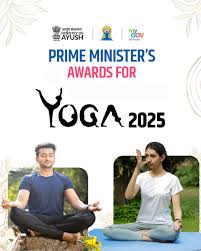
- 20 Feb 2025
In News:
The Ministry of Ayush has officially opened nominations for the Prime Minister’s Yoga Awards 2025, which will be conferred on the occasion of the International Day of Yoga (IDY) 2025. These prestigious awards aim to honour individuals and organizations that have made exceptional and sustained contributions to the promotion and development of Yoga at both national and international levels.
Background and Objective
Instituted by the Government of India and endorsed by the Hon’ble Prime Minister, the awards recognize Yoga’s vital role in:
- Health promotion
- Disease prevention
- Management of lifestyle-related disorders
The initiative reflects the government’s broader vision to acknowledge and encourage meaningful contributions in advancing Yoga as a holistic system of well-being and preventive healthcare.
Award Categories and Benefits
The awards will be presented in the following four categories:
- National Individual
- National Organization
- International Individual
- International Organization
Each awardee will receive:
- A Trophy
- A Certificate of Recognition
- A Cash Prize of ?25 lakh
Eligibility Criteria
- Individual applicants must be 40 years or older.
- They should possess a minimum of 20 years of committed work in promoting Yoga.
- Organizations must have a proven track record in the field of Yoga development and outreach.
Applicants or nominees can apply for only one category (either National or International) in a given year. Applications can be submitted directly by individuals/entities or through nominations made by recognized Yoga institutions.
Application and Submission Process
- Nominations and applications are to be submitted through the MyGov platform:
https://innovateindia.mygov.in/pm-yoga-awards-2025/ - The link is also accessible on the Ministry of Ayush website and those of its autonomous bodies.
- The deadline for submission is March 31, 2025.
Selection Procedure
The award process involves two key stages:
- A Screening Committee formed by the Ministry of Ayush will evaluate all entries and recommend a maximum of 50 nominations per category.
- These shortlisted names will be reviewed by a high-level Evaluation Jury comprising eminent personalities from diverse fields, which will serve as the final decision-making body.
Significance of the Initiative
The Prime Minister’s Yoga Awards not only celebrate excellence in Yoga but also further the objectives of initiatives like Fit India Movement, Ayushman Bharat, and the mainstreaming of traditional Indian wellness systems.
The awards are a key element of the Ministry of Ayush’s broader mandate to integrate traditional systems such as Ayurveda, Yoga & Naturopathy, Unani, Siddha, Sowa-Rigpa, and Homeopathy into the healthcare ecosystem of India.
Exercise Dharma Guardian 2025
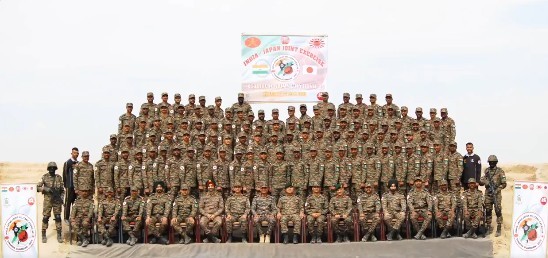
- 20 Feb 2025
In News:
The 6th edition of Exercise Dharma Guardian, a joint annual military exercisealternately hosted in India and Japan since 2018is scheduled from February 25 to March 9, 2025, at Mount Fuji, Japan.
Key Highlights:
Objectives:
- Strengthen Bilateral Defence Relations: Enhances military diplomacy under the India–Japan Special Strategic and Global Partnership.
- Promote Interoperability: Develops joint operational capabilities and tactical synergy in line with UN peacekeeping mandates (Chapter VII).
- Urban and Semi-Desert Warfare: Trains troops in counter-terrorism operations and urban combat scenarios.
- Regional Stability: Supports the Indo-Pacific security architecture and complements Quad defence objectives (India, Japan, US, Australia).
Key Features of Dharma Guardian 2025
- Advanced Tactical Training: Close-quarter battle drills, live-fire exercises, battlefield medical evacuation.
- Joint Counter-Terror Operations: Conducted under UN charter guidelines for multinational cooperation.
- 48-hour Validation Exercise: Simulated real-time combat for assessing operational readiness and coordination.
- ISR and Tactical Mobility Drills: Involves establishing temporary operating bases, ISR (Intelligence, Surveillance, Reconnaissance) grids, mobile vehicle checkpoints, and heliborne insertions.
- House Intervention & Search Operations: Practical training for securing urban areas against militant threats.
- Weapons & Equipment Display: Demonstrates India’s growing defence manufacturing under the Atmanirbhar Bharat initiative.
Mount Fuji – Host Site
- Geographical Significance: Japan’s highest peak at 3,776.24 meters, located 100 km southwest of Tokyo.
- Cultural Importance: Recognized as a UNESCO World Heritage Site (2013) and revered as one of Japan’s “Three Holy Mountains.”
- Training Terrain: Its stratovolcanic landscape provides a realistic backdrop for high-altitude and rugged terrain operations.
Related India-Japan Military Exercises
India and Japan conduct a wide spectrum of bilateral and multilateral defense exercises across all services:
Exercise Name Service Branch Focus Area
Dharma Guardian Army Land-based counter-terror and urban warfare
JIMEX Navy Naval interoperability and maritime security
Malabar (Quad) Navy (Multilateral) Naval drills with US and Australia
Veer Guardian Air Force Air combat tactics and coordination
ShinyuuMaitri Air Force Air mobility and humanitarian operations
Aero India 2025
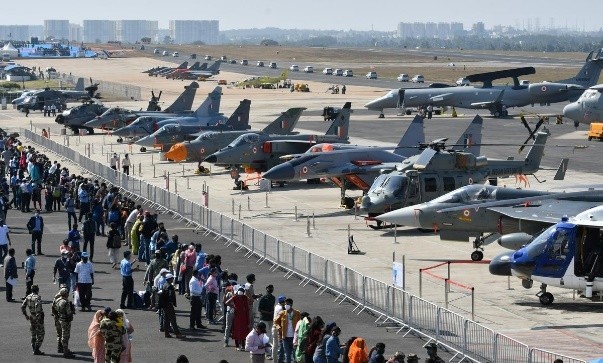
- 20 Feb 2025
In News:
Aero India 2025, the 15th edition of Asia's largest biennial airshow, is scheduled to take place from February 10 to 14, 2025, at the Air Force Station, Yelahanka, in Bengaluru, Karnataka.
Organized by the Defence Exhibition Organisation under the Ministry of Defence, with support from HAL, DRDO, and the Indian Air Force, the event showcases India's growing prowess in aerospace, aviation, and defense technologies.
Key Highlights:
Edition: 15th (First held in 1996; originally Avia India in 1993)
Theme: “The Runway to a Billion Opportunities”
Conclave Theme: “BRIDGE – Building Resilience through International Defence and Global Engagement”
Objectives and Significance
- Promote Indigenous Manufacturing: In alignment with ‘Make in India’ and ‘Atmanirbhar Bharat’, the show promotes domestic aerospace and defense production.
- Showcase Technological Advancements: Cutting-edge systems including fighter jets, helicopters, UAVs, and AI-integrated defense solutions will be exhibited.
- Encourage Global Partnerships: Facilitates joint ventures, MoUs, and technology transfers between Indian and foreign defense firms.
- Boost Strategic Diplomacy: A platform for global defense ministers, CEOs, and military leaders to foster bilateral and multilateral defense ties.
- Stimulate Investment: Attracts FDI and international contracts in India’s defense sector.
Key Events
- Live Aerial Displays: Aerobatic performances by combat aircraft, helicopters, and elite teams like Surya Kiran.
- Defense Ministers’ Conclave: Deliberations on enhancing international defense cooperation.
- CEO Roundtable: Industry leaders discuss emerging trends and investment prospects.
- Manthan/iDEX Pavilion: Showcasing start-up innovations in defense and aerospace.
- India Pavilion: A dedicated zone for indigenous defense production and capabilities.
- International Seminar (Feb 8–9): Focused on Futuristic Aerospace Technologies and related R&D challenges.
Strategic Role of Aero India
Aero India plays a pivotal role in:
- Supporting Medium Multi-Role Combat Aircraft (MMRCA) procurements.
- Demonstrating India's readiness as a global defense manufacturing hub.
- Enhancing India’s geopolitical standing by fostering defense diplomacy through multilateral engagement.
Climate Risk Index 2025
- 19 Feb 2025
In News:
- The Climate Risk Index (CRI) 2025, published by the international environmental think tank Germanwatch, ranks countries based on their vulnerability to extreme weather events, assessing both human and economic losses due to climate-induced disasters.
- The index, which has been released annually since 2006, covers a 30-year period, evaluating the impact of extreme weather events in terms of economic losses, fatalities, and the number of affected people.
Key Findings:
- Global Impact: From 1993 to 2022, more than 9,400 extreme weather events occurred globally, resulting in 765,000 fatalities and USD 4.2 trillion in economic losses. Heatwaves, droughts, and floods were the leading causes of fatalities and displacement, with heatwaves alone claiming 61,778 lives (83% of fatalities) in 2022. Droughts affected the largest number of people, with 59% of the global population impacted during the past three decades.
- India's Position: India ranks as the 6th most affected country in the world by climate change between 1993 and 2022, suffering significant losses. During this period, the country experienced over 400 extreme weather events, including floods, heatwaves, cyclones, and droughts, causing a loss of USD 180 billion in economic damages and leading to at least 80,000 fatalities (10% of global deaths).
Some notable extreme weather events include:
-
- Cyclones: Gujarat (1998), Odisha (1999), Hudhud (2014), and Amphan (2020).
- Floods: Uttarakhand (2013), Jammu and Kashmir (2014), and Kerala (2018).
- Heatwaves: Intense temperatures exceeding 50°C in 1998, 2002, 2003, and 2015.
Methodology of the Climate Risk Index
The CRI assesses the impact of extreme weather events across three hazard categories:
- Hydrological (floods, landslides),
- Meteorological (storms, cyclones),
- Climatological (heatwaves, droughts).
The six key indicators used for the ranking are:
- Economic loss
- Fatalities
- Affecting population, assessed in both absolute and relative terms.
Climate Risk and Its Implications for India
India’s vulnerability to climate change is highlighted by frequent and intense extreme weather events. The country faces risks from:
- Floods: Regular heavy monsoons lead to significant displacement and damage to infrastructure and agriculture.
- Cyclones: Rising sea levels and warming oceans increase the frequency and intensity of cyclones.
- Heatwaves: India experiences rising temperatures, with heatwaves becoming more intense, contributing to health crises.
- Droughts: A growing concern, affecting agriculture and water resources.
Additionally, the Asia-Pacific Climate Report 2024 projects that India may face a 24.7% GDP loss by 2070 due to climate change impacts, driven by rising sea levels and decreasing labor productivity.
Global Challenges in Climate Change Mitigation
- Historical Responsibility vs. Future Emissions: Developed nations, despite having contributed more to global emissions historically, are pressuring emerging economies like India to take greater responsibility for climate action. This has led to tensions over burden-sharing and the need for climate finance.
- Global Temperature Breach: In 2024, the world breached the 1.5°C threshold for a full year, highlighting the inadequacy of current mitigation efforts. Projections indicate a global temperature increase of 2.6-3.1°C by 2100 if current trends continue.
- Weak Commitments and Insufficient Finance: Many countries have not updated their Nationally Determined Contributions (NDCs), and the USD 300 billion annual funding promised for developing nations is insufficient to meet climate adaptation and mitigation needs.
India's Climate Adaptation Challenges and Suggestions
India faces several climate adaptation challenges, including inadequate infrastructure, insufficient funding, and a lack of robust policy frameworks for disaster risk management. To enhance adaptation efforts, the following measures are suggested:
- Enhanced Climate Finance: Developing countries need greater financial and technical support to manage and adapt to climate-induced losses.
- Strengthening Mitigation Efforts: Nations, including India, must scale up their NDCs to restrict global warming to 1.5°C or lower.
- Accountability of High-Income Countries: Developed nations must expedite mitigation actions and increase financial contributions to support climate-vulnerable countries like India.
Mount Etna Eruption 2025

- 18 Feb 2025
In News:
On February 12, 2025, Mount Etna, Europe's tallest and most active volcano, erupted once again, spewing lava flows and dense ash clouds into the atmosphere. The event drew attention not just due to its visual spectacle, but also because of the geological, environmental, and socio-economic implications it carries.
About Mount Etna
- Location: Eastern coast of Sicily, Italy — the largest island in the Mediterranean Sea.
- Type:Active stratovolcano, known for frequent eruptions.
- Height & Size: Highest peak south of the Alps and tallest active volcano in Europe; rises over 3,300 meters and covers 1,190 sq. km with a basal circumference of 140 km.
- Tectonic Setting: Lies above the convergent boundary of the African and Eurasian tectonic plates, making it a hotspot for seismic and volcanic activity.
- Eruption History: Recorded to have erupted over 200 times since 1500 BCE, with persistent volcanic activity.
- UNESCO Recognition: Declared a UNESCO World Heritage Site in 2013 for its exceptional geological features, cultural relevance, and continuous scientific monitoring.
- Decade Volcano Status: Designated a Decade Volcano by the United Nations due to its proximity to densely populated areas, including the city of Catania, and the potential risk it poses, warranting special scientific attention.
Income-tax Bill, 2025

- 16 Feb 2025
In News:
The Income-tax Bill, 2025, tabled in Parliament on February 13, 2025, seeks to repeal and replace the Income-tax Act, 1961, marking a landmark step in tax law simplification.
It reflects the government's commitment to ease of doing business, legal clarity, and tax compliance, without altering the core tax policy or rate structure.
Guiding Principles
- Textual and structural simplification for better clarity.
- Policy continuity—no major tax policy changes.
- Preservation of existing tax rates for predictability.
Approach and Methodology
- Three-pronged strategy:
- Simplify language and eliminate legalese.
- Remove obsolete, redundant, and repetitive provisions.
- Reorganize the Act for logical and easier navigation.
- Consultative process:
- 20,976 online suggestions received.
- Stakeholder consultations with taxpayers, professionals, and industry bodies.
- International best practices reviewed, notably from Australia and the UK.
Quantitative Simplification
Parameter Income-tax Act, 1961 Income-tax Bill, 2025 Change
Words 5,12,535 2,59,676 ↓ 2,52,859
Chapters 47 23 ↓ 24
Sections 819 536 ↓ 283
Tables 18 57 ↑ 39
Formulae 6 46 ↑ 40
Key Features and Improvements
- Qualitative Enhancements:
- Use of simplified and accessible language.
- Consolidation of amendments to reduce fragmentation.
- Enhanced readability via structured use of tables and formulae.
- Elimination of outdated provisions.
- Introduction of "Tax Year":Defined as the 12-month period beginning April 1, providing better uniformity.
- Crypto as Capital Asset:Virtual Digital Assets (VDAs) such as cryptocurrencies included in the definition of "property", now taxable as capital assets.
- Dispute Resolution Clarity:Improved transparency in Dispute Resolution Panel (DRP) procedures by including points of determination and reasoning—addressing a key criticism of ambiguity in the earlier framework.
- Removal of Obsolete Exemptions:Section 54E, providing capital gain exemptions for transfers before April 1992, has been scrapped.
- Expected Timeline:Once enacted, the Income-tax Act, 2025 is proposed to come into effect from April 1, 2026.
Exercise Cyclone 2025
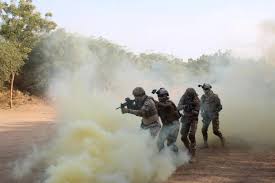
- 13 Feb 2025
In News:
- The third edition of the India-Egypt Joint Special Forces Exercise CYCLONE is being conducted from February 10–23, 2025 at the Mahajan Field Firing Range, Rajasthan.
- The previous edition (2nd) was held in Egypt in January 2024, and the first edition was conducted in India in 2023.
About Exercise CYCLONE
- It is a bilateral joint special forces military exercise between India and Egypt.
- Annual exercise, held alternatively in India and Egypt.
- The 2025 edition is focused on:
- Counter-terrorism operations
- High-intensity combat training
- Survival techniques in desert/semi-desert terrain
- Tactical drills and real-world combat scenarios
- Motto of the exercise: “Together we train, together we excel.”
Objectives
- Enhance military-to-military cooperation.
- Strengthen interoperability and joint operational capabilities.
- Exchange of special warfare tactics and combat strategies.
- Operate under frameworks aligned with Chapter VII of the UN Charter (pertaining to threats to peace, breaches of peace, and acts of aggression).
Strategic Importance
- The exercise reflects deepening India-Egypt defence cooperation.
- Aimed at enhancing readiness for evolving security challenges in the region.
- Enables both forces to operate together in simulated combat situations, improving coordination and adaptability.
India-Egypt Relations: Defence and Beyond
- Strategic Partnership established in 2023, covering:
- Political, defence, security, energy, and economic cooperation.
- Bilateral Trade Agreement (1978): Based on Most Favored Nation (MFN) clause.
- India is one of Egypt’s key trading partners in Africa.
Tribal Welfare in Union Budget 2025–26
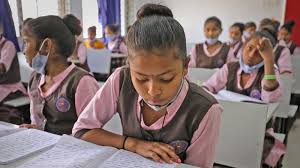
- 09 Feb 2025
In News:
India is home to over 10.45 crore Scheduled Tribe (ST) individuals, comprising 8.6% of the population. Concentrated largely in remote and underdeveloped regions, ST communities face persistent challenges such as land alienation, limited access to quality education, healthcare deficits, and socio-economic exclusion. The Union Budget 2025–26 signals a paradigm shift in tribal welfare, in line with the vision of Viksit Bharat.
Budgetary Commitment
The total allocation for tribal welfare has risen to ?14,925.81 crore in 2025–26—a 45.79% jump from the previous year and a staggering 231.83% increase from 2014–15 levels. The Ministry of Tribal Affairs has witnessed a consistent rise in budget: from ?7,511.64 crore (2023–24) to ?10,237.33 crore (2024–25), and now ?14,925.81 crore.
Flagship Schemes and Initiatives
- Eklavya Model Residential Schools (EMRS) received ?7,088.60 crore, up from ?4,748 crore, to provide quality residential education to ST students. EMDBS, a pilot initiative in high-density tribal areas, enhances outreach.
- Pradhan Mantri Janjatiya Vikas Mission (PMJVM) saw a sharp rise to ?380.40 crore. It promotes tribal entrepreneurship, sustainable Minor Forest Produce (MFP) use, and value chain development.
- Pradhan Mantri Adi Adarsh Gram Yojana (PMAAGY) was allocated ?335.97 crore (163% increase). It aims to convert tribal-majority villages into model habitations by ensuring convergence of development schemes.
- PM-JANMAN Multi-Purpose Centers (MPCs) received ?300 crore, targeting Particularly Vulnerable Tribal Groups (PVTGs) with essential services and institutional support.
- Dharti Aaba Janjatiya Gram Utkarsh Abhiyan (DAJGUA), launched in 2024, envisions the holistic development of 63,843 tribal villages. With an outlay of ?79,156 crore over five years, it integrates 17 ministries and 25 interventions. The Ministry of Tribal Affairs has allocated ?2,000 crore for 2025–26 alone.
Persistent Challenges
Despite constitutional safeguards (Articles 15(4), 46, 244, 275(1), etc.), tribal communities face significant hurdles:
- Land and Resource Rights: Only 50% of 42.76 lakh Forest Rights Act (FRA) claims have been approved (MoTA, 2022). Displacement from mining and infrastructure projects persists.
- Education: ST literacy stands at 59% (Census 2011) with high dropout rates due to poverty and language gaps.
- Health: Malnutrition, maternal mortality, and diseases like Sickle Cell remain endemic.
- Marginalization: Tribals face economic deprivation, exploitation (bonded labor, trafficking), and erosion of cultural identity.
- Underrepresentation: Despite reserved seats, policy influence remains limited.
The Way Forward
- Land Rights: Effective implementation of FRA and safeguards against forced displacement.
- Education: Expand EMRS/EMDBS and promote bilingual, culturally relevant curricula.
- Health: Improve rural health infrastructure and target tribal-specific diseases.
- Women’s Empowerment: Support SHGs and skill-based livelihood through schemes like Adivasi Mahila Sashaktikaran Yojana.
- Cultural Continuity: Support tribal art, festivals, and language preservation through digital and educational platforms.
- Inclusive Governance: Strengthen Gram Sabhas and tribal representation in policymaking.
Dunki Routes

- 09 Feb 2025
In News:
Recently, a US military aircraft carrying 104 deported Indian nationals landed at Amritsar Airport. These deportees had entered the United States through the illegal “Dunki” route, paying between ?30 lakh and ?1 crore to agents and human traffickers.
Since 2009, over 15,000 Indians have been deported from the US for illegal entry, with India now figuring among the top non-Latin American countries in deportation rankings.
What is the ‘Dunki Route’?
- The “Dunki” or “Donkey” route refers to an unauthorised, arduous journey that migrants undertake through multiple countries to reach destinations like the United States, bypassing legal immigration processes.
- Routes often begin in countries with visa-on-arrival access or easy tourist visa policies for Indians:
- Latin America: Ecuador, Bolivia, Guyana, Brazil, Venezuela
- Europe/Central Asia: Azerbaijan, Turkey, Kazakhstan
- Southeast Asia: Malaysia (via Bangkok)
- Migrants often transit through Mexico, Guatemala, or Costa Rica before crossing into the US through illegal land borders.
How the Network Operates:
- Human trafficking syndicates use fake or manipulated visas (e.g., Schengen visas) to move migrants across Europe, Central Asia, and Latin America.
- Indian passport holders are sent to countries with lenient visa regimes, followed by overland or sea routes to US borders.
- Delhi Police (IGI unit) revealed that many migrants travel to Turkey or Kazakhstan and then cross to Russia or Latin America before attempting US entry.
Reasons Behind Illegal Migration:
- Economic Opportunities: Low wages in India drive migration to higher-paying economies.
- Limited Legal Avenues: Long, uncertain visa approval processes discourage legal pathways.
- Cultural Pressures: In communities like the Patels of Gujarat, migration to the US is tied to social prestige, often compelling families to sell land or take loans.
- Success Stories: Stories of successful illegal migrants inspire others to follow suit.
- Thriving Smuggling Rackets: Demand for migration has led to lucrative smuggling networks.
Consequences and Risks:
- Human Cost: Migrants risk robbery, assault, rape, and death, with bodies often unrecovered.
- Economic Loss: Families face financial ruin due to heavy agent fees.
- Legal Repercussions: Deportation, detention, and blacklisting from future visas.
- Geopolitical Sensitivity: Damages bilateral ties with countries like the US and strains consular systems.
Government Response and Policy Measures:
Proposed Legislation:
- India is considering the Overseas Mobility (Facilitation and Welfare) Bill, 2024 to:
- Promote safe, orderly, and regular migration
- Replace the outdated Emigration Act, 1983
- Establish comprehensive mechanisms for migrant protection and regulation
Awareness Campaigns:
- Indian embassies and consulates regularly issue:
- Advisories on fraudulent agents
- Guidance on safe migration
- Lists of registered recruiting agencies
Migration Trends and Global Standing:
- World Migration Report 2024 (IOM):
- India received $111 billion in remittances in 2022 – highest globally
- India is the largest country of origin for international migrants, with large diasporas in the UAE, US, and Saudi Arabia
H-1B Visa: The Legal Face of Indian Migration to the US
- H-1B Program: Allows US employers to hire foreign workers in high-skill occupations requiring at least a bachelor’s degree.
- Duration: Maximum of six years, renewable under certain conditions, or convertible into a Green Card.
- Indian Dominance:
- Indians have accounted for over 70% of all H-1B visa approvals since 2015
- Chinese applicants make up the second-largest group (~12–13%)
Political Challenges:
- Immigration, including H-1B, is a polarising issue in US politics.
- Rising anti-immigration sentiment, especially under administrations like Trump 2.0, affects policy and visa quotas.
Hotspot States and Migration Routes in India:
- Major source states of illegal migrants: Gujarat, Punjab, Haryana
- These regions are hubs for agents who facilitate illegal migration using Dunki routes and exploit aspirational youth.
Ranikhet Disease in India
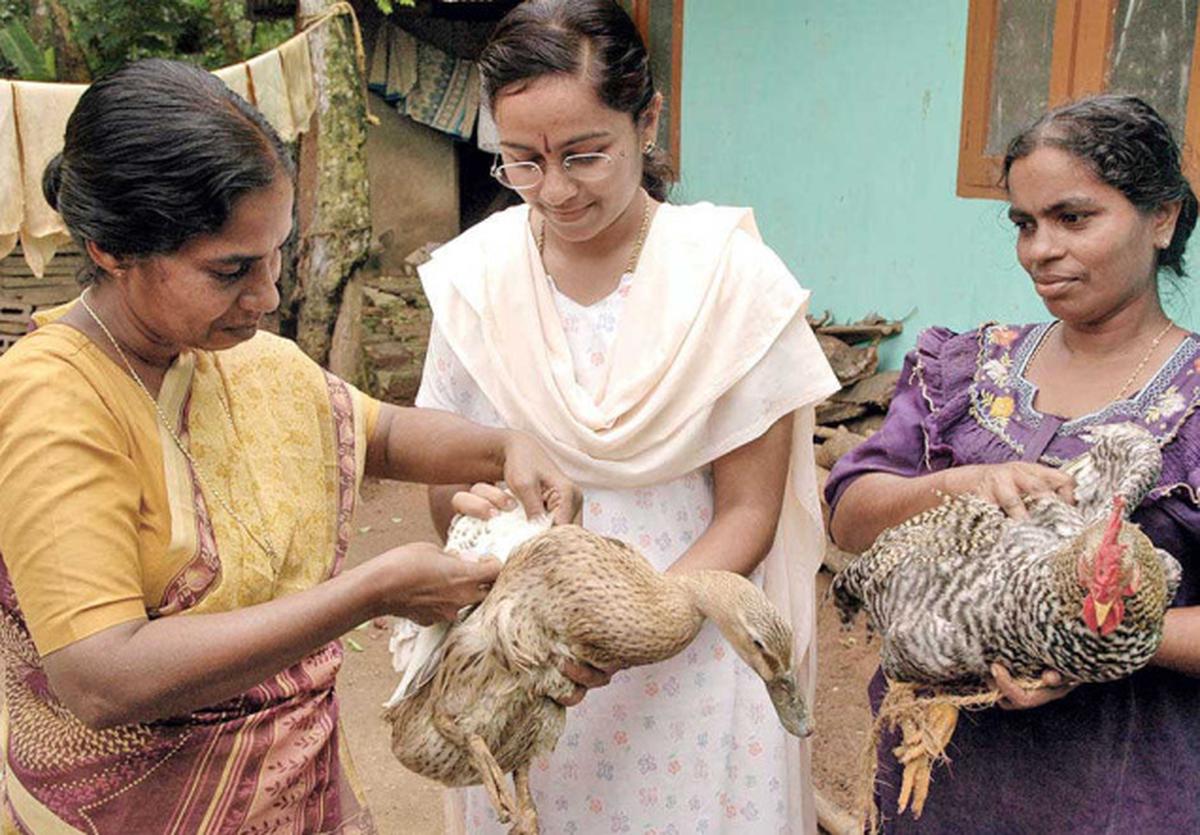
- 09 Feb 2025
In News:
Recent outbreaks of suspected Ranikhet disease (Newcastle Disease) have caused the death of approximately 1.5 lakh chickens in poultry farms across Andhra Pradesh (Eluru, Guntur, Prakasam, and the Godavari districts) and Haryana (Barwala and Raipur Rani in Panchkula). These outbreaks have raised alarms about biosecurity measures, especially in regions that are major poultry producers.
About Ranikhet Disease:
- Also known as: Newcastle Disease (ND)
- Causative Agent: Avian avulavirus 1 (also called Avian Paramyxovirus-1 or APMV-1)
- Affected Species: Primarily chickens, but also turkeys, ducks, pigeons, crows, geese, guinea fowls, partridges, doves, and even hedgehogs (suspected reservoirs).
- Nature of Disease: Highly contagious and fatal viral disease.
- Transmission:
- Direct contact with infected bird secretions (especially feces)
- Contaminated feed, water, equipment, clothing, and environment
- ND virus can survive for weeks in cool environments, increasing risk in winter.
Symptoms and Impact:
- In Birds:
- Respiratory issues: Sneezing, gasping
- Nervous symptoms: Droopiness, loss of coordination
- Digestive symptoms: Diarrhea
- Mortality rate: Ranges from 50% to 100%
- Production impact: Drop in egg production and fertility
- In Humans:
- Mild zoonotic effect, primarily conjunctivitis in people handling infected birds or lab samples.
- Usually self-limiting and non-fatal.
Recent Outbreaks and Investigations:
Andhra Pradesh:
- Approximately 1.5 lakh birds have died across multiple districts.
- Suspected cause: Highly virulent strain of Ranikhet Disease.
Haryana (Barwala–Raipur Rani belt):
- This belt houses around 115 poultry farms and is the second-largest poultry producer in Asia.
- Previously affected by bird flu outbreaks in 2006 and 2014.
- Northern Regional Disease Diagnostic Laboratory (NRDDL), Jalandhar collected 40 new samples from affected farms after being unsatisfied with earlier ones.
- Preliminary suspicion points toward Ranikhet Disease; however, cold wave conditions and the presence of older birds (not replaced due to COVID-19 restrictions) may have also contributed.
- The region falls in the path of migratory birds, whose droppings can spread avian flu viruses, complicating disease identification.
Current Challenges:
- Lack of effective treatment: No curative treatment exists. Management relies on preventive vaccination, biosecurity measures, and good poultry housing practices.
- Diagnostic delays: Require reliable sampling and laboratory testing to confirm the cause.
- Climate sensitivity: Poultry are vulnerable to extreme cold, especially if housing and care are inadequate.
- Pandemic aftershocks: COVID-19 disruptions prevented the routine replacement of older birds, increasing vulnerability.
PRASHAD Scheme

- 09 Feb 2025
In News:
The Parliamentary Standing Committee on Transport, Tourism and Culture has raised concerns over delays in the completion of projects under the Spiritual Tourism Circuits and the PRASHAD Scheme.
It has recommended the establishment of a Standard Operating Procedure (SOP) and emphasized obtaining prior clearances to ensure timely execution of future projects.
About PRASHAD Scheme
- Full Form: Pilgrimage Rejuvenation and Spirituality Augmentation Drive.
- Launched: 2014–15 by the Ministry of Tourism, Government of India.
- Objective: To promote, develop, and enhance spiritual tourism infrastructure at important pilgrimage sites across India.
Aims and Objectives:
- Improve infrastructure (roads, water supply, sanitation, waste management).
- Enhance connectivity (road, rail, and air) to pilgrimage destinations.
- Preserve and conserve religious and cultural heritage sites.
- Promote eco-friendly and sustainable tourism practices.
- Increase domestic and international tourist footfall through spiritual tourism.
- Generate local employment through skill development and livelihood programmes.
Funding Model:
- 100% centrally funded for eligible components.
- Also includes voluntary contributions through Corporate Social Responsibility (CSR) and Public-Private Partnership (PPP) initiatives.
Implementation Challenges and Parliamentary Findings
Spiritual Tourism Circuits under Swadesh Darshan Scheme:
- Launched to promote thematic tourism circuits, including 23 Spiritual Circuits across India.
- Of these, five circuits remain incomplete, with two key circuits in Kerala—
- Sabarimala–Erumeli–Pampa–Sannidhanam Circuit
- Sivagiri Sree Narayana Guru Ashram Circuit
- Progress Status (as of September 2023):
- Sabarimala Circuit: 76% complete
- Sivagiri Circuit: 51% complete
- Original target completion dates: June 2023 and October 2023, respectively.
Reasons for Delay:
- Lack of timely clearances from Temple Authorities.
- Administrative and coordination issues across agencies.
Committee Recommendations:
- Formulate a clear-cut SOP for the execution of spiritual tourism projects.
- Ensure pre-approval and coordination with all concerned stakeholders before initiating construction.
- Strengthen planning at the Detailed Project Report (DPR) stage to anticipate implementation challenges and avoid delays and cost overruns.
PRASHAD Scheme Performance:
- Out of 45 sanctioned projects, only 21 have been completed as of the latest report.
- The committee noted this performance as unsatisfactory, even accounting for disruptions due to the COVID-19 pandemic.
Stryker Infantry Combat Vehicle
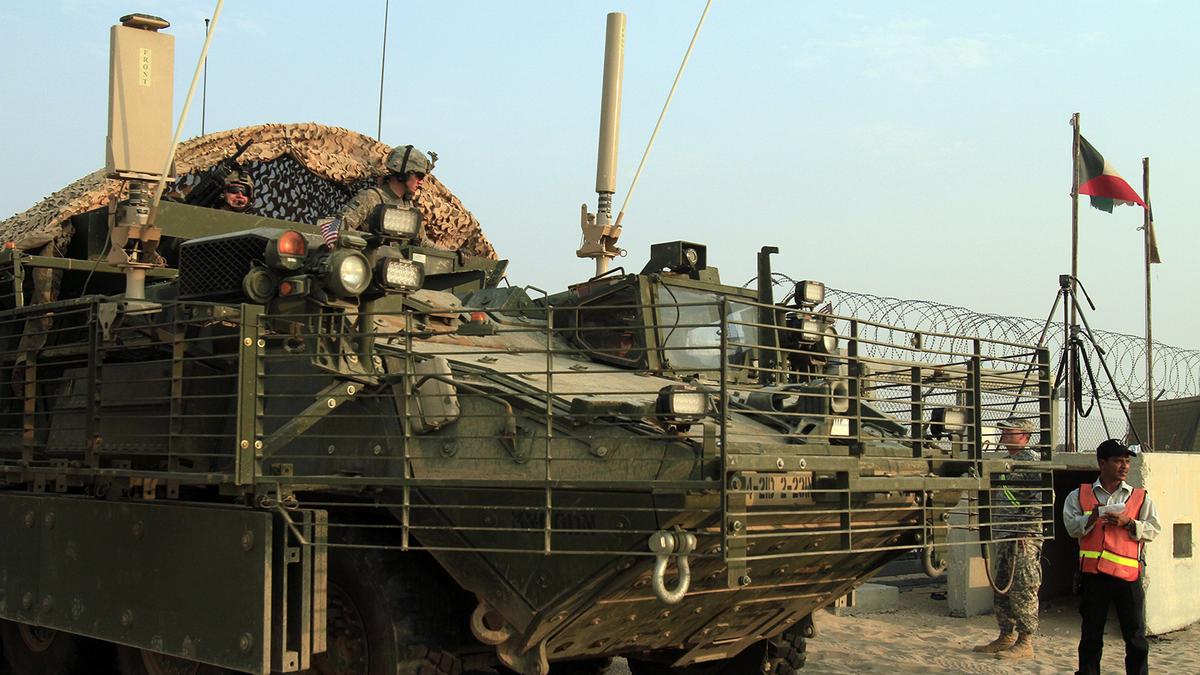
- 09 Feb 2025
In News:
India-U.S. defence cooperation is advancing with the proposed co-production of the Stryker Infantry Combat Vehicle (ICV). This deal represents a significant leap in bilateral defence industrial collaboration and aligns with India's strategic goal of military modernization and indigenisation under the ‘Make in India’ initiative.
About Stryker Infantry Combat Vehicle (ICV):
- Origin: Jointly developed by General Dynamics Land Systems (GDLS) Canada and U.S., it is the first new military vehicle inducted into U.S. Army service since the 1980s.
- Type: Eight-wheeled armoured infantry combat vehicle designed for rapid deployment and battlefield mobility.
- Variants: Includes Infantry Carrier Vehicle (ICV), Mobile Gun System (MGS), reconnaissance vehicle, medical evacuation vehicle, fire support vehicle, and Anti-Tank Guided Missile (ATGM) carrier.
Key Features:
- Mobility: Top speed of ~100 km/h and an operational range of 483 km. Can be airlifted using C-17 and C-130 aircraft (both in IAF’s fleet) or Chinook helicopters, enhancing deployment in remote terrains.
- Firepower: Equipped with a 30 mm cannon and a 105 mm mobile gun.
- Protection: V-hull structure for blast protection; composite armour reinforced with ceramic tiles offers increased survivability against IEDs and small arms.
- Capacity: Operated by a 2-member crew and can transport a 9-member infantry squad.
Operational Evaluation in India:
- High-Altitude Trials: Conducted in Ladakh (13,000–18,000 feet) during September–October 2024. Evaluation reports were shared with Army Headquarters for further review.
- Javelin ATGM Demonstration: Conducted alongside Stryker trials; however, the performance was sub-optimal due to the vintage system used. Repeat trials have been requested by India.
Strategic Importance for India:
- Tactical Advantage: Enhanced mobility and survivability in high-altitude warfare make it suitable for regions like Ladakh and Arunachal Pradesh.
- Border Security: Bolsters India's defence posture along sensitive frontiers with China and Pakistan.
- Force Modernization: Meets the Indian Army’s requirement for ICVs with integrated ATGM capabilities.
- Aatmanirbhar Bharat Push: The proposed model includes initial direct imports followed by large-scale license production in India, potentially by Bharat Earth Movers Limited (BEML).
Defence Diplomacy and Industrial Cooperation:
- The deal is being advanced under the India-U.S. Defence Industrial Cooperation Roadmap, focusing on co-development and co-production.
- In November 2023, Indian Defence Secretary confirmed discussions under this framework.
- The U.S. has reiterated the importance of India enhancing procurement of U.S.-made defence equipment, aiming at a balanced trade partnership.
- The Stryker deal is expected to feature in high-level bilateral dialogues, including the visit of Prime Minister Narendra Modi to Washington DC and during engagements at Aero India.
Challenges and Reservations:
- Some Indian defence officials have flagged concerns, noting that similar ICVs have been developed by Indian private companies.
- Delays in previous U.S. defence exports (e.g., F-404 jet engines for LCA-Mk1A) have also raised caution regarding timelines and reliability.
Fort William Renamed Vijay Durg
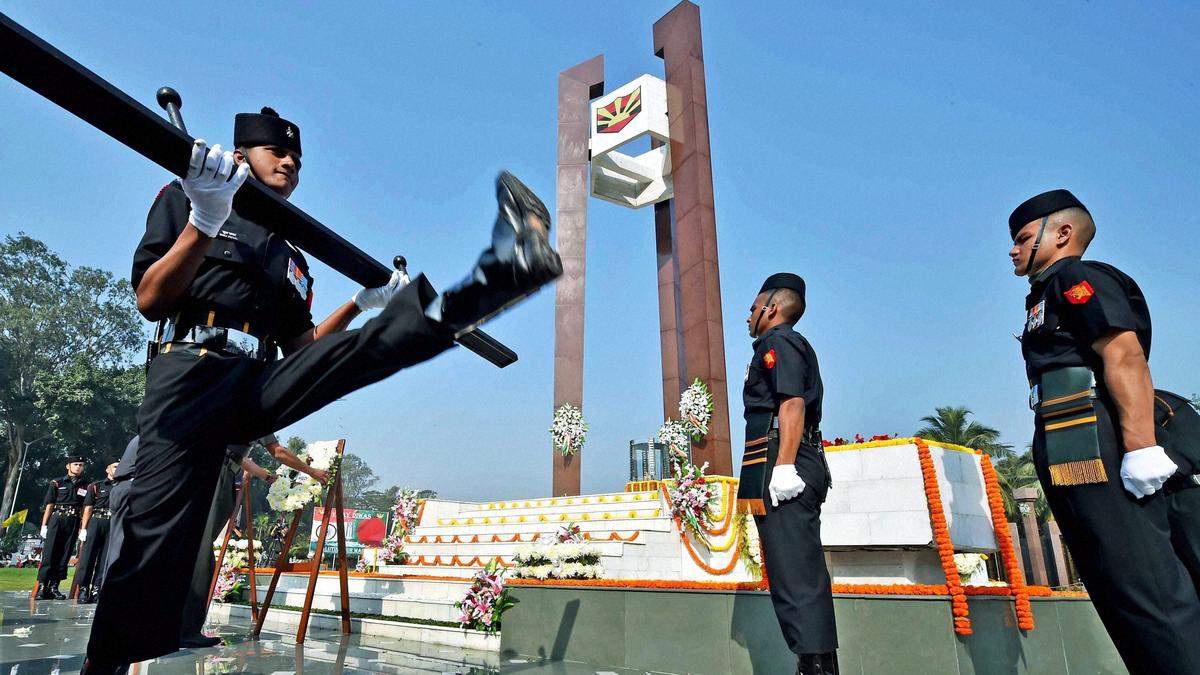
- 08 Feb 2025
In News:
In a significant step towards decolonising the Indian Armed Forces and aligning with indigenous historical consciousness, Fort William, the headquarters of the Eastern Command of the Indian Army in Kolkata, has been renamed Vijay Durg. This renaming is part of a broader initiative to remove colonial-era symbols and practices and restore Indian military heritage.
Historical Background of Fort William
- Construction: The original Fort William was constructed in 1696 by the English East India Company. It was later attacked and captured by Siraj-ud-Daulah, the Nawab of Bengal, in 1756.
- The Black Hole Incident: The original fort had an inner bastion used for imprisoning captives, leading to the infamous “Black Hole of Calcutta” narrative.
- Reconstruction: After the Battle of Plassey (1757) and the defeat of Siraj-ud-Daulah, Robert Clive initiated the construction of a new fort, which was completed in 1773 or 1781 (sources differ).
- Naming: It was named Fort William in honour of King William III of England.
Architectural Features
- Design: The fort is octagonal in shape with a massive structure made of brick and mortar.
- Area: Spread across 70.9 acres on the eastern bank of the Hooghly River, it features hundreds of arched windows and lush green surroundings.
- Aesthetics: Its walls are adorned with intricate stonework, reflecting colonial military architecture.
Recent Changes and Renaming
- New Name: Vijay Durg – Inspired by Vijaydurg Fort in Maharashtra, a prominent naval base of the Marathas under Chhatrapati Shivaji Maharaj.
- Other Changes:
- Kitchener House has been renamed Manekshaw House, after Field Marshal Sam Manekshaw.
- St. George’s Gate has been renamed Shivaji Gate.
- Implementation: According to the Defence Public Relations Office in Kolkata, the name change was decided in mid-December 2024, and internal communications have already adopted the new nomenclature, though an official notification is awaited.
Broader De-Colonisation Drive in Indian Defence
The renaming of Fort William is part of a larger movement initiated by the Government of India to eliminate colonial vestiges in the armed forces. Prime Minister Narendra Modi, in a 2022 speech at Kevadia, Gujarat, urged the forces to discard “legacy systems” and move towards “freedom from the mentality of slavery (gulami ki mansikta se mukti)”.
Key Initiatives:
- Indianisation of military music during the Beating Retreat ceremony.
- Adoption of a new naval ensign (2022) inspired by the seal of Chhatrapati Shivaji Maharaj, moving away from British colonial symbols.
- Renaming of military establishments and symbols rooted in colonial heritage.
- Review publication (2024) titled “Colonial Practices and the Armed Forces – A Review”, released at the Joint Commanders’ Conference in Lucknow by Defence Minister Rajnath Singh.
Mount Taranaki
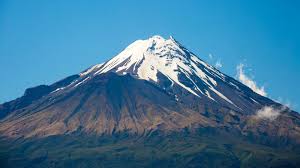
- 08 Feb 2025
In News:
In a significant legal and environmental development, Mount Taranaki—officially now known by its M?ori name Taranaki Maunga—has been granted legal personhood by the government of New Zealand.
This move marks it as the third natural feature in the country to receive such status, following the Te Urewera National Park (2014) and the Whanganui River (2017).
This recognition reflects an increasing global trend toward acknowledging the intrinsic rights of natural entities and respecting the spiritual beliefs of indigenous communities.
About Taranaki Maunga
- Location: Situated in Egmont National Park, North Island, New Zealand.
- Dual Naming: Historically known as Mount Egmont, it is now officially referred to by its indigenous name, Taranaki Maunga, as part of decolonization and cultural revival efforts.
- Elevation: Stands at 8,261 feet, making it the second-highest peak in the North Island of New Zealand.
- Geological Type: It is a stratovolcano (composite cone) with a nearly perfect symmetrical shape—one of the most symmetrical volcanic cones in the world.
- Formation: Formed due to the subduction of the Pacific Plate beneath the Australian Plate. The magma source lies deeper than that of the Taupo Volcanic Zone volcanoes.
- Topography: Surrounded by a circular ring plain formed from lahars (volcanic mudflows) and landslides.
- Status: A snow-capped dormant volcano and culturally revered natural landmark.
- Cultural Significance: The M?ori, indigenous people of New Zealand, regard Taranaki Maunga as a sacred ancestor, embedding it deeply in their oral traditions and spirituality.
Legal Personhood and Its Significance
Granting legal personhood to Taranaki Maunga means it now holds rights, duties, and liabilities akin to a legal human being, and its interests will be represented by appointed guardians—often including indigenous representatives.
This legal framework recognizes:
- The spiritual and cultural relationship that the M?ori have with the mountain.
- The need to protect natural ecosystems not merely for utility but as living entities deserving of rights and dignity.
Comparative Insights: India’s Legal Approach to Natural Entities
India has witnessed similar developments:
- Uttarakhand High Court (2017–18): Granted legal personhood to the Ganga and Yamuna rivers, along with the Gangotri and Yamunotri glaciers. However, the Supreme Court later stayed this ruling.
- Punjab and Haryana High Court (2020): Recognized Sukhna Lake (Chandigarh) as a living entity for environmental protection.
- These decisions stem from the Doctrine of Parens Patriae, which allows the state to act as a guardian for those who cannot protect themselves—extending this protection to natural entities such as rivers, forests, and wildlife.
Iskander-M

- 08 Feb 2025
In News:
In a significant defense development with wide-ranging geopolitical implications, the Russian Federation is preparing to mass-produce the Iskander-M tactical ballistic missile, a new-generation weapon system with enhanced range and destructive capabilities. This move is part of Russia’s broader strategy to upgrade its missile arsenal amid ongoing tensions with NATO, especially in the context of the Ukraine conflict.
Key Features and Strategic Purpose
The 9K720 Iskander-M, developed by the Machine-Building Design Bureau (Kolomna), is a medium-range tactical ballistic missile with an effective range of up to 1,000 kilometers. It is capable of delivering both conventional and nuclear warheads, making it a versatile and high-impact weapon in regional conflict scenarios.
- The missile is precision-targeted and designed to neutralize high-value enemy assets, including NATO’s military infrastructure in Eastern Europe, especially in Ukraine.
- The production of the upgraded missile, unofficially referred to as the Iskander-1000, is expected to begin in full swing by 2025.
- The missile is reported to be highly destructive, with the ability to conduct deep strikes with minimal detection, offering Russia a tactical advantage in asymmetric warfare.
Deployment of Oreshnik Missile Systems in Belarus
In a parallel development, Russia has confirmed the deployment of Oreshnik medium-range ballistic missile systems in Belarus, a strategic ally. This decision follows agreements between the Russian and Belarusian leadership, reinforcing the military integration under their collective defense pact.
- The Oreshnik system, though less publicly detailed than the Iskander, is designed for tactical use and contributes to enhancing Russia’s regional defense shield.
- According to Russian foreign ministry officials, Belarus already hosts a joint Regional Forces Group, non-strategic nuclear weapons, and modern Russian defense systems.
- The positioning of these systems near NATO’s eastern borders heightens tensions with Western powers, particularly the United States, Poland, the Baltic States, and the European Union.
Geopolitical Ramifications
The Iskander-M and Oreshnik missile programs are part of Russia’s strategic doctrine to deter NATO's influence and reassert its military dominance in Eastern Europe. These deployments are:
- Likely to escalate NATO-Russia tensions, increasing the risk of a regional arms race.
- Expected to complicate European security dynamics, especially in Poland, Ukraine, and the Baltic states, which are seen as potential frontlines.
- Raising the prospect of further military escalation in the ongoing Russia-Ukraine conflict.
- Prompting NATO countermeasures, including deployment of missile defense systems and increased troop presence near Eastern borders.
Brucellosis Outbreak in Kerala
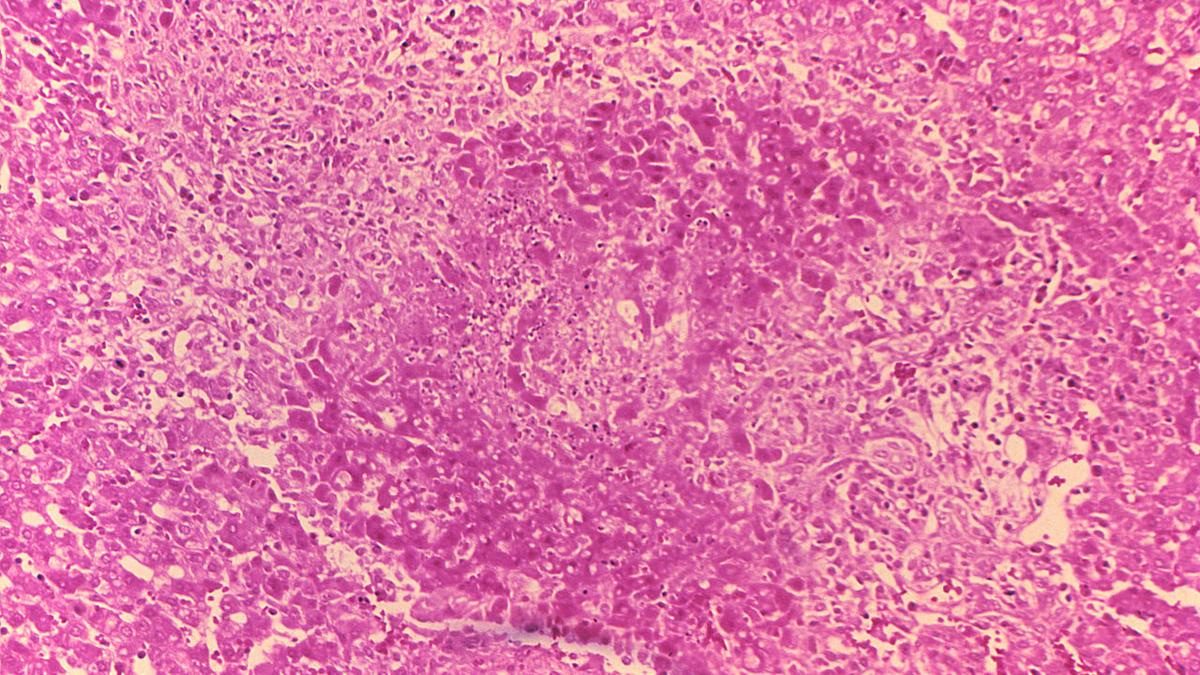
- 08 Feb 2025
In News:
An eight-year-old girl, Shasa Fathima, from Kottakkal in Malappuram district, Kerala, recently died after undergoing nearly two months of treatment for brucellosis at the Government Medical College Hospital, Kozhikode. This tragic incident has renewed public health concerns regarding zoonotic infections in India.
What is Brucellosis?
According to the World Health Organization (WHO), brucellosis is a bacterial disease caused by various species of the genus Brucella. The bacteria primarily infect: cattle, swine, goats, sheep & dogs.
Humans typically contract the infection through:
- Direct contact with infected animals or their secretions (blood, placenta, fetus, uterine fluids)
- Ingestion of contaminated animal products, especially unpasteurised milk and cheese
- Inhalation of airborne bacteria (e.g., in lab or farm environments)
Human-to-human transmission is extremely rare, as per WHO guidelines.
Symptoms and Incubation Period
- The disease presents a wide spectrum of symptoms: fever, weakness, weight loss, general discomfort or malaise.
- In many cases, symptoms may be mild or go undiagnosed. The incubation period ranges from one week to two months, most commonly between two to four weeks.
At-Risk Populations
- Brucellosis can affect individuals of all age groups. However, certain occupational groups are at higher risk, including: farmers and dairy workers, butchers, hunters, veterinarians, laboratory personnel. These individuals are often exposed to animal blood and reproductive fluids, which are primary modes of transmission.
Status in Kerala
Kerala has reported sporadic cases of brucellosis in recent years. In 2023, cases emerged from Kollam (July) and Thiruvananthapuram (October). While the disease is not new to the state, fatalities remain rare.
In response, the Department of Animal Husbandry has initiated awareness campaigns for dairy farmers and conducted milk sample testing across cooperative societies to monitor possible sources of infection.
Treatment and Prevention
Treatment typically involves a combination of antibiotics:
- Doxycycline (100 mg, twice daily for 45 days)
- Streptomycin (1 g daily for 15 days)
Effective preventive measures include:
- Vaccination of livestock (cattle, goats, sheep)
- Pasteurisation of milk and dairy products before human consumption
- Public awareness campaigns on the dangers of consuming unpasteurised animal products
- Regulatory policies on the sale of raw milk
Bryospilus Bharaticus
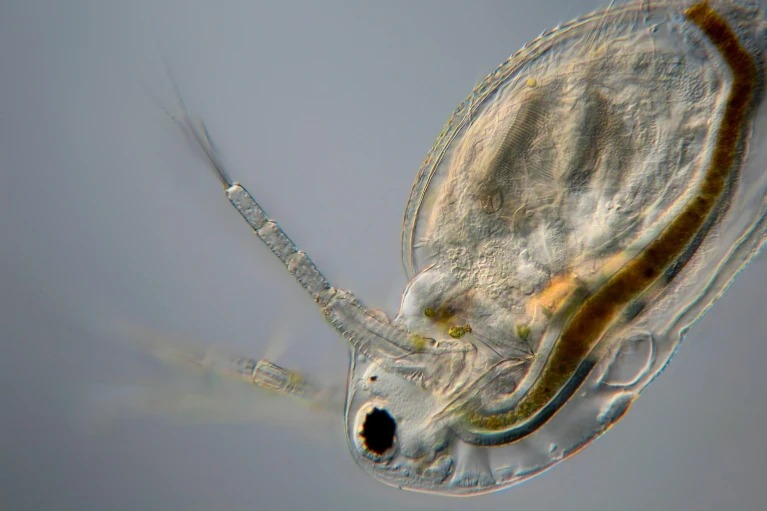
- 08 Feb 2025
In News:
A new species of water flea, Bryospilus (Indobryospilus) bharaticus n. sp., was recently discovered from moss growth on the walls of the Korigad Fort near Pune, Maharashtra.
This marks the first recorded discovery of the genus Bryospilus in Tropical Asia, underscoring the ecological uniqueness of the Western Ghats, a UNESCO World Heritage biodiversity hotspot.
Taxonomic and Morphological Highlights
- It belongs to the genus Bryospilus, a group of tiny crustaceans known as water fleas, which typically inhabit rivers, ponds, and pools.
- The species displays adaptations for semi-terrestrial life, notably using its antennae with large spines for crawling through thick, debris-laden water films on moss surfaces.
- It lacks a main eye—an evolutionary adaptation to low-light habitats where color vision is unnecessary for foraging.
Ecological and Evolutionary Significance
- The genus Bryospilus includes species found in semi-terrestrial habitats in rainforests of West Africa, South and Central America, and New Zealand, making this Indian discovery a significant biogeographical addition.
- The organism’s relatives are typically found in littoral (vegetated) zones of water bodies, whereas some occur in open waters.
- The researchers suggest that ancestors of this species existed on the Indian subcontinent prior to the breakup of Gondwanaland, around 200 million years ago, hinting at Bryospilus bharaticus as a potential Gondwanan relict species.
- Each known Bryospilus species has been isolated to a specific former Gondwanan continent, reinforcing the evolutionary legacy of this find.
Research and Conservation Implications
- The discovery was part of an ongoing survey of underexplored crustacean taxa in the Western Ghats, led by Sameer Padhye and Kan Van Damme, and published in the Journal of Crustacean Biology (Oxford Academic, Sept 2024).
- The species was found in pristine, undisturbed moss habitats on Deccan Plateau hill forts, highlighting the importance of conserving such microhabitats.
- Zooplankton like water fleas are highly sensitive to environmental changes and serve as bioindicators of ecological health. The presence of B. bharaticus indicates low human disturbance in its habitat.
- The authors warn that air pollution and habitat disturbance could threaten these fragile ecosystems and stress the urgency of habitat protection, especially for organisms invisible to the naked eye.
Shatavari

- 07 Feb 2025
In News:
The Ministry of Ayush has launched a nationwide campaign titled “Shatavari – For Better Health” to raise public awareness on the health benefits of Asparagus racemosus (commonly known as Shatavari), especially in the context of women’s health and the broader objective of holistic well-being.
About Shatavari (Asparagus racemosus)
- Family: Asparagaceae (formerly Liliaceae)
- Common Names: Satawar, Satamuli
- Ayurvedic Significance: Known as the “Queen of Herbs”, Shatavari is praised in classical Ayurvedic texts like Charak Samhita and Ashtang Hridayam for treating women’s reproductive health disorders.
- Name Meaning: ‘Shatavari’ translates to “acceptable to many”, signifying its diverse benefits.
- Botanical Description: It is a woody climber (1–2 meters tall), with pine-needle-like leaves and small white flowers.
- Habitat and Distribution: Found in tropical climates at low altitudes across Asia, Africa, and Australia.
Medicinal Uses
- The dried roots of Shatavari are used medicinally.
- Acts as a tonic, diuretic, galactagogue (promotes lactation), and has ulcer-healing properties.
- Strengthens mucosal resistance and provides cytoprotection.
- Widely used for addressing female reproductive health issues, immunity enhancement, and promoting overall vitality.
The Campaign: “Shatavari – For Better Health”
- Launched by: Shri Prataprao Jadhav, MoS (Independent Charge), Ministry of Ayush.
- Organized by: National Medicinal Plants Board (NMPB).
- This campaign follows successful species-specific initiatives on Amla, Moringa, Giloe, and Ashwagandha.
- Shatavari is being positioned as a crucial resource in advancing women’s health, supporting the Panch Pran Goals set by the Prime Minister for a Developed India by 2047.
- Focus on achieving holistic well-being and integrating traditional medicine with public health awareness.
Policy and Financial Support
- Under the Central Sector Scheme for Conservation, Development, and Sustainable Management of Medicinal Plants, the Ministry promotes the cultivation and sustainable use of Shatavari.
- Financial assistance of ?18.9 lakhs will be provided to eligible organizations to support awareness and adoption.
National Youth Parliament Scheme (NYPS) 2.0
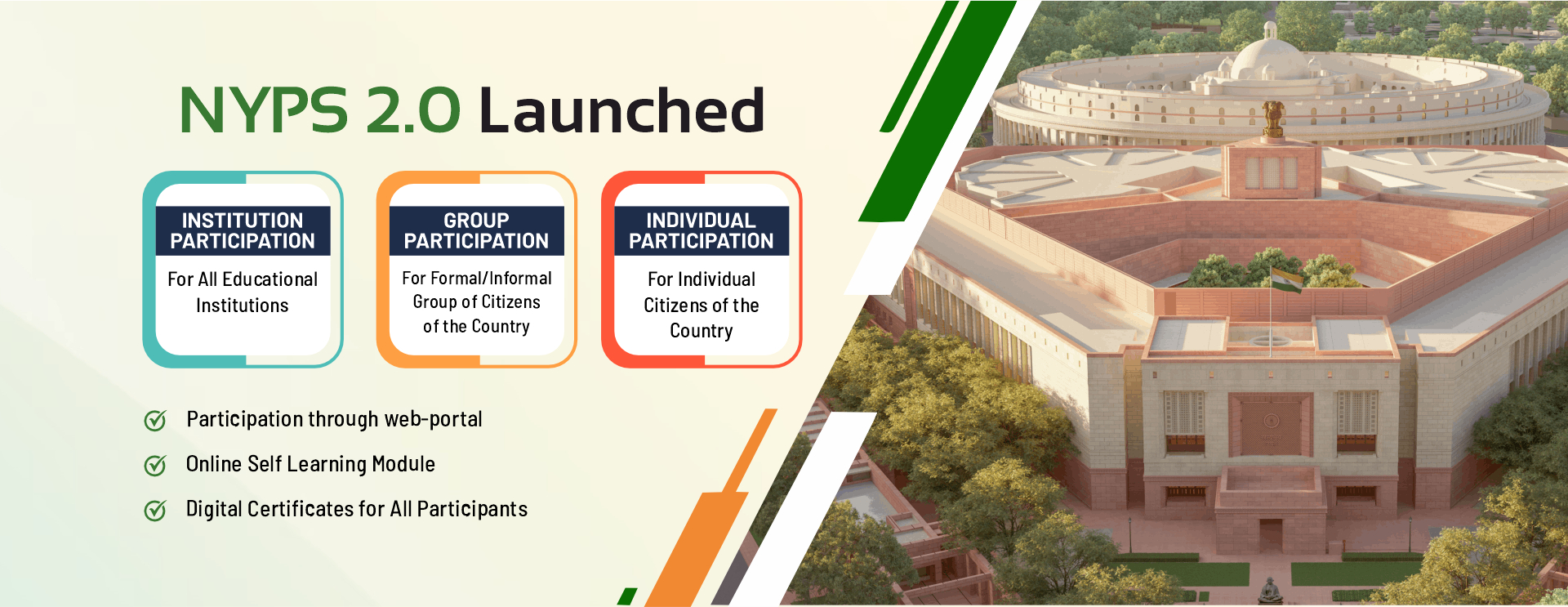
- 07 Feb 2025
In News:
The Ministry of Parliamentary Affairs has recently provided updates in the Rajya Sabha on the National Youth Parliament Scheme (NYPS) 2.0, emphasizing its role in fostering democratic values, constitutional awareness, and active citizenship among Indian youth.
About NYPS 2.0
Launched by the Ministry of Parliamentary Affairs, NYPS 2.0 aims to strengthen the roots of democracy and enhance understanding of parliamentary practices and government functioning among citizens, especially students.
Objectives
- Instill discipline, tolerance for diverse views, and democratic ethos among youth.
- Educate students about the procedures of Parliament, constitutional values, and functioning of the government.
- Encourage a democratic way of life through civic engagement.
Participation Modes via NYPS 2.0 Web Portal
The dedicated web-portal enables inclusive citizen participation in three formats:
- Institutional Participation:
- Open to all educational institutions.
- Institutions can organize Youth Parliament sittings as per portal guidelines.
- Two sub-categories:
- Kishore Sabha: For students of Class VI to XII.
- Tarun Sabha: For undergraduate and postgraduate students.
- Group Participation: Open to any group of citizens willing to conduct Youth Parliament sittings under defined norms.
- Individual Participation: Citizens can individually engage by taking a quiz on the theme ‘Bhartiya Democracy in Action’.
Training and Educational Resources
To support participants, the portal offers comprehensive e-training material, including:
- Literature on Youth Parliament
- Model Debates, Questions, and List of Business
- Model Scripts
- Video tutorials and other interactive resources
National Policy for Rare Diseases (NPRD) 2021
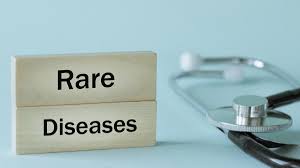
- 07 Feb 2025
In News:
Patient advocacy groups across India have raised serious concerns over delays in implementing the National Policy for Rare Diseases (NPRD) 2021, which has left many rare disease patients — especially children — in life-threatening situations. They have urged the government for immediate intervention to resume life-saving treatments and release stalled funds under the policy.
Rare Diseases:
- Rare diseases are severe, often genetic, life-threatening disorders that impact a small percentage of the population.
- They disproportionately affect children, with 30% of diagnosed patients not surviving beyond age five without timely treatment.
- Examples include Lysosomal Storage Disorders (LSDs) such as Gaucher, Pompe, Fabry, and MPS I & II.
About NPRD 2021
The Ministry of Health & Family Welfare launched the National Policy for Rare Diseases in March 2021 to streamline the diagnosis, research, and treatment of rare diseases in India.
Key Features of NPRD 2021:
- 63 rare diseases currently included under the policy (as recommended by the Central Technical Committee for Rare Diseases (CTCRD)).
- Categorization of diseases into three groups:
- Group 1: Diseases amenable to one-time curative treatment.
- Group 2: Diseases requiring long-term/lifelong treatment with relatively lower cost.
- Group 3: Diseases requiring very high-cost lifelong therapy where patient selection is critical.
Institutional Support:
- 12 Centres of Excellence (CoEs) identified at premier government hospitals to provide diagnosis and treatment.
- Nidan Kendras established to provide genetic testing and counselling services.
- National Consortium for Research and Development on Therapeutics for Rare Diseases (NCRDTRD) set up to coordinate R&D and promote indigenous drug manufacturing.
- Tax exemptions (on GST and Customs Duty) granted for imported drugs for individual and institutional use.
Financial Provisions:
- Financial assistance of up to ?50 lakh per patient for treatment at CoEs.
- Patients must register at CoEs to receive diagnosis and initiate treatment.
Challenges and Crisis
Despite policy provisions, implementation has been stalled, leading to a healthcare emergency for rare disease patients.
Key Issues Raised:
- Insufficient funding: The ?50 lakh cap is inadequate for chronic and ultra-rare diseases that need lifelong therapy.
- Administrative delays: Fund disbursement to CoEs has been slow, disrupting continuity of treatment.
- Impact on Patients:
- Patients like Alishba Khan, Ashok Kumar, Imran Ghoshi, and Adrija Mudy with Gaucher or MPS I have exhausted their funding.
- Patients who had previously stabilized are now regressing due to interrupted therapy at leading hospitals like AIIMS Delhi, IGICH Bangalore, and IPGMER Kolkata.
Legal Developments:
- On October 4, 2024, the Delhi High Court directed the Ministry of Health and Family Welfare to:
- Release additional funds beyond the ?50 lakh limit.
- Create a ?974 crore National Fund for FY 2024–25 and 2025–26.
- Months later, no concrete action has been taken, further eroding trust in the policy's effectiveness.
Demands by Advocacy Groups
- Sustainable, long-term funding model for lifelong treatment of rare and ultra-rare diseases.
- Immediate fund release to CoEs and simplification of administrative processes.
- Ensure uninterrupted access to essential therapies and expand the scope of financial support.
Rheumatoid Arthritis (RA)
- 07 Feb 2025
In News:
Researchers from the Institute of Nano Science and Technology (INST), Mohali, an autonomous institute under the Department of Science and Technology (DST), have developed an innovative “self-actuating” drug delivery system that targets rheumatoid arthritis (RA) by delivering therapeutic agents only when needed. This approach offers a revolutionary alternative to conventional systemic treatments.
About Rheumatoid Arthritis (RA)
- Definition: RA is a chronic autoimmune and inflammatory disease where the body’s immune system mistakenly attacks healthy cells, particularly the joints, causing inflammation and tissue damage.
- Commonly Affected Areas: Hands, wrists, and knees — often multiple joints simultaneously.
- Symptoms:
- Inflammation of joint lining
- Chronic pain and joint deformity
- Unsteadiness or balance issues
- May affect lungs, heart, and eyes
- Cause: The exact cause remains unknown, but it involves an immune response attacking the body’s own tissues.
- Traditional Treatment:
- Involves Disease-Modifying Antirheumatic Drugs (DMARDs) such as methotrexate
- Requires frequent dosing
- May lead to systemic side effects and inefficient drug retention
Breakthrough: Self-Actuating Drug Delivery System
Key Features:
- Targeted Drug Release: Releases medication only in response to biochemical signals in the inflamed synovial environment of RA-affected joints.
- Precision and Safety: Reduces side effects by limiting drug release to flare-ups, minimizing exposure to unaffected areas.
- Main Drug Used: Methotrexate, a widely used anti-rheumatic drug.
Mechanism:
- Microspheres are engineered using polymer-lipid hybrid micro-composites:
- Lipid Component (Soya Lecithin): Ensures high drug encapsulation efficiency.
- Polymer Component (Gelatin): Reacts to Matrix Metalloproteinases (MMPs) — enzymes present during RA inflammation.
- Action:
- Enzymes like MMP-2 and MMP-9 increase during RA flare-ups.
- These enzymes cleave the gelatin, triggering controlled, pulsatile release of methotrexate.
- Outcome in Animal Studies:
- Reduced joint swelling and cartilage damage
- Promoted joint repair
- Improved drug bioavailability and retention in joints
Significance
- Improved Patient Outcomes:
- Long-lasting relief with fewer doses
- Reduced systemic toxicity
- Personalized therapy based on inflammation levels
- Enhanced joint function and slower disease progression
- Research Publication: The findings were published in the journal Biomaterial Advances.
Wider Applications
- Potential Use in:
- Other inflammatory conditions like synovitis and inflammatory bowel disease (IBD)
- Veterinary medicine for arthritis in animals
- Regenerative medicine and personalized drug delivery
Extremely Large Telescope (ELT)
- 07 Feb 2025
In News:
As of early 2025, 60% of the construction of the Extremely Large Telescope (ELT) is complete. The telescope is expected to begin its first scientific observations by the end of 2028.
About ELT
The Extremely Large Telescope (ELT) is poised to become the world’s most powerful ground-based optical and infrared telescope, with revolutionary capabilities to explore the universe.
- Location: Cerro Armazones, Atacama Desert, northern Chile
- Altitude: 3,046 meters above sea level
- Managing Body: European Southern Observatory (ESO)
- Project Cost: Approximately $1.51 billion (around 1.3 billion euros)
- Completion Target: Late 2020s
- Primary Mirror: Diameter of 39 meters (128 feet) — the largest of its kind
- Constructed from 798 hexagonal segments, each 1.5 m across and 5 cm thick
Key Scientific Objectives
- Exoplanet Exploration
- Direct imaging of Earth-like exoplanets in habitable zones of nearby stars
- Analysis of atmospheric biosignatures such as oxygen, water vapor, and methane, aiding the search for extraterrestrial life
- Understanding the Early Universe
- Observation of the first stars and galaxies formed post-Big Bang
- Investigation of dark matter and dark energy, crucial for understanding cosmic expansion and the universe’s fate
- Detailed Study of Stars and Galaxies
- Identification and characterization of individual stars in distant galaxies
- Analysis of the formation, evolution, and structure of galaxies over cosmic time
- Black Holes and Cosmic Structures
- Study of supermassive black holes at galactic centers
- Understanding their role in galaxy dynamics and structure
Why Chile’s Atacama Desert?
- Dry Climate: Very low humidity and cloud cover, ensuring clearer skies
- High Altitude: Thin atmosphere reduces atmospheric interference with incoming light
- Minimal Light Pollution: Remote location offers dark skies critical for deep-space observation
- Dome Structure: Protects sensitive instruments from harsh desert conditions
About the European Southern Observatory (ESO)
- Nature: Leading intergovernmental science and technology organization in the field of astronomy
- Headquarters: Garching, Germany
- Members: 16 countries including Austria, Belgium, Brazil, France, Germany, Italy, Spain, and the United Kingdom
- Facilities in Chile:
- La Silla
- Paranal
- Chajnantor
- Mandate: Design, construction, and operation of advanced ground-based telescopes to promote international collaboration and facilitate path-breaking astronomical research
Dhimsa Dance
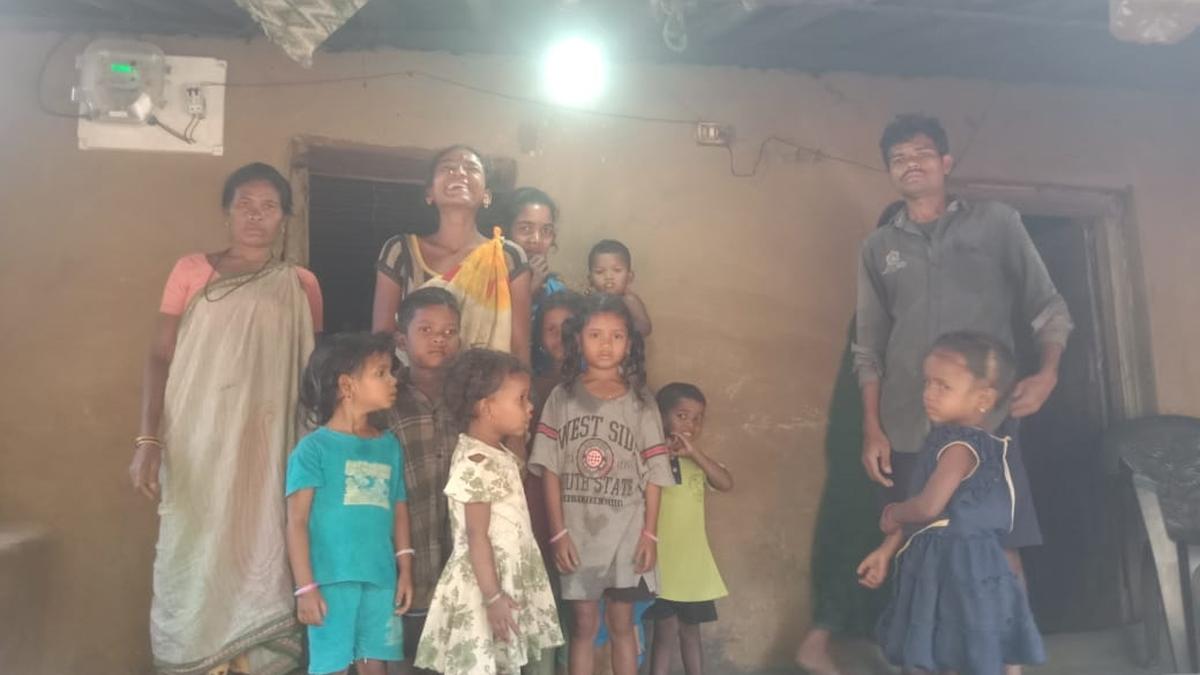
- 06 Feb 2025
In News:
In a significant development, tribal families from Neelabandha, a remote hilltop hamlet in Anakapalli district, Andhra Pradesh, received electricity for the first time since Independence. In celebration, they performed the Dhimsa dance, a vibrant expression of tribal culture.
About Dhimsa Dance:
- Origin & Region:
- Dhimsa is a traditional tribal dance predominantly performed in Andhra Pradesh, especially in the tribal belts of the Eastern Ghats.
- Its origin can be traced to the Koraput region (present-day Odisha and bordering Andhra Pradesh), primarily home to the Gond tribe.
- Communities Performing Dhimsa:
- Tribes such as Bagata, Valmiki, Poraja, Khond, Gadaba, Kondadora, Mukadora, and Kotia actively perform this dance.
- Occasions:
- Commonly performed during festivals, weddings, and the hunting festival in April.
- Celebratory, spiritual, and social in nature, symbolizing unity and joy.
- Dance Formation and Movements:
- Performed in circular formations with dancers holding each other's arms.
- Emphasis on synchronized hand and leg movements.
- Troupes usually consist of 20 or more dancers.
- Themes:
- Dhimsa is a narrative dance that expresses tribal mythologies, folktales, cultural mores, economic activities, kinship, and marital life.
- Musical Instruments Used:
- Dappu, Tudumu, Mori, Kidgi, Gilka, and Jodukommulu.
- A combination of percussion and wind instruments drives the rhythm and variation in the dance.
- Varieties:
- There are 12 known types of Dhimsa dances, each varying in pace, rhythm, and purpose.
Rural Electrification of Neelabandha Village:
- Background:
- Neelabandha is located in Arla Panchayat of Rolugunta Mandal in Anakapalli district.
- Consists of four households (approximately 20 individuals) who had been living without electricity since Independence.
- Implementation:
- The electrification was part of the Andhra Pradesh government’s rural development drive to provide basic infrastructure to underdeveloped tribal villages.
- Under the directions of District Collector Vijaya Krishnan, and CMD of APEPDCL, Prithvi Tej, the Eastern Power Distribution Company of Andhra Pradesh (EPDCL) carried out the electrification.
- Challenges Overcome:
- The hamlet lacked motorable roads, making it difficult to transport materials.
- Electricity poles had to be carried manually for over 6 km to reach the village.
- Outcome:
- Free electricity was provided to the villagers, marking a major milestone in tribal welfare.
- In a heartfelt celebration, the villagers performed Dhimsa under electric lights for the first time.
Issues Still Persisting:
- Infrastructure Deficits:
- The village still lacks road connectivity, educational access, and healthcare facilities.
- These gaps hinder children's ability to attend school and access essential services.
- Community Response:
- Local leaders, including CPI(M) district committee member K. Govind, welcomed the electrification but urged the government to address remaining developmental needs.
Makhana Board

- 06 Feb 2025
In News:
In the Union Budget 2025–26, Finance Minister announced the establishment of a Makhana Board in Bihar with a dedicated budget of ?100 crore to boost the production, processing, and export of Makhana (Fox Nuts).
About Makhana (Fox Nuts):
- Botanical Name: Euryale ferox
- Family: Nymphaeaceae (Water lily family)
- Description:
- Makhana is the dried edible seed of the prickly water lily.
- Grown in freshwater bodies across South and East Asia.
- The plant is known for its violet and white flowers and large, round, prickly leaves.
- Due to its black outer covering, Makhana is nicknamed the "Black Diamond."
Nutritional and Medicinal Value:
- Low in fat, rich in carbohydrates, and a good source of protein and minerals.
- Widely used in:
- Traditional medicine
- Health and wellness products
- Culinary preparations such as popped Makhana (‘Lava’)
Major Producing Regions:
- India:
- Bihar produces 90% of India’s total Makhana, especially in the Mithilanchal region.
- Key districts: Darbhanga, Madhubani, Purnea, Katihar, Saharsa, Supaul, Araria, Kishanganj, Sitamarhi.
- The first four districts contribute 80% of Bihar’s Makhana output.
- Bihar produces 90% of India’s total Makhana, especially in the Mithilanchal region.
- Other Indian states: Assam, Manipur, West Bengal, Tripura, Odisha.
- Other countries: Nepal, Bangladesh, China, Japan, Korea.
- GI Tag: Mithila Makhana received the Geographical Indication (GI) tag in 2022.
Climatic Conditions for Cultivation:
- Type: Aquatic crop; grows in stagnant water bodies (ponds, lakes, wetlands).
- Ideal Conditions:
- Water Depth: 4–6 feet
- Temperature: 20°C – 35°C
- Relative Humidity: 50% – 90%
- Annual Rainfall: 100 – 250 cm
About the Makhana Board:
- Allocated Budget: ?100 crore
- Objectives:
- Train farmers in advanced cultivation techniques.
- Support processing and value addition in the Makhana supply chain.
- Facilitate financial aid and access to government schemes.
- Develop export infrastructure and promote branding and marketing.
Makhana under ODOP Scheme:
- Recognized as a One District One Product (ODOP) commodity for Bihar.
- Under ODOP, the Union Government provides subsidies to processors for:
- Infrastructure development
- Branding and marketing
About ODOP Scheme:
- Launched by: Ministry of Food Processing Industries (MoFPI)
- Objective: Promote district-level economic specialization and turn each district into an export hub.
- Origin: First launched in Uttar Pradesh (2018); adopted as a national initiative under the Atmanirbhar Bharat vision.
- Implementation:
- In coordination with the ‘Districts as Export Hubs’ (DEH) initiative.
- Managed by DGFT, Department of Commerce, and DPIIT.
- Significance:
- Encourages rural entrepreneurship, local employment, and global trade linkages.
- Strengthens district economies by scaling up traditional and unique products.
Gyan Bharatam Mission
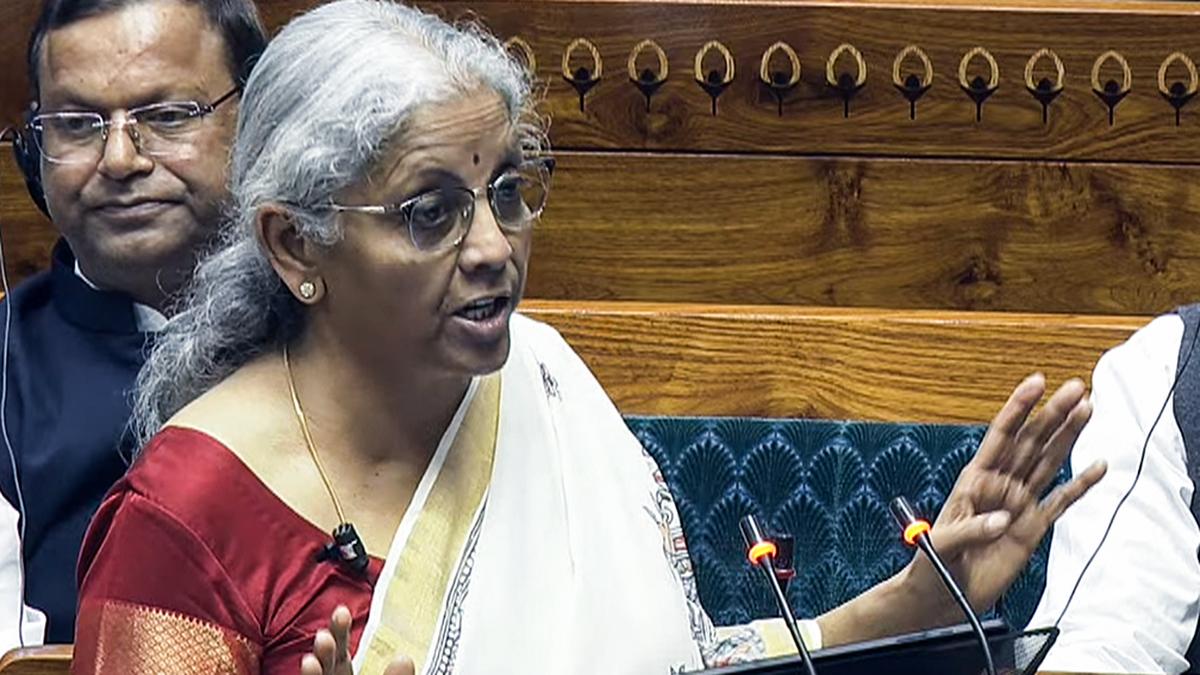
- 06 Feb 2025
In News:
The Union Budget 2025–26 announced the launch of the Gyan Bharatam Mission, a significant cultural initiative aimed at the survey, documentation, digitization, and conservation of over one crore manuscripts across India.
Key Details:
- A special national mission focusing on India’s manuscript heritage preserved in:
- Academic institutions
- Libraries
- Museums
- Private collections
- Objective:
To document and conserve more than one crore manuscripts, centralize them into a national digital repository, and make them accessible to researchers, students, and institutions globally. - Significance:
- Facilitates knowledge-sharing through digitization.
- Promotes India's traditional knowledge systems.
- Enhances academic and historical research in the Indian knowledge domain.
What is a Manuscript?
- A manuscript is a handwritten composition on materials such as:
- Palm leaf, paper, cloth, bark, or metal.
- Must be at least 75 years old and possess scientific, historical, or aesthetic value.
- Printed texts and lithographs are not considered manuscripts.
- Manuscripts may exist in hundreds of languages and scripts, e.g.:
- Sanskrit manuscripts written in Devanagari, Grantha, Oriya, and other scripts.
- Unlike epigraphs or official records (firmans, revenue documents), manuscripts hold knowledge content, not just historical data.
National Manuscripts Mission (NMM)
- Launched in 2003 under the Ministry of Culture, operated through the Indira Gandhi National Centre for the Arts (IGNCA).
- Mandate: Identify, preserve, and make accessible India's manuscript wealth.
- Revival: The 2025–26 Budget seeks to rejuvenate NMM to implement the Gyan Bharatam Mission effectively.
Budgetary Provisions
- NMM allocation increased from ?3.5 crore to ?60 crore for FY 2025–26.
- Culture Ministry overall allocation:
- ?3,360.96 crore, up from a revised estimate of ?3,260.93 crore.
- Other Key Allocations:
- Archaeological Survey of India (ASI): ?1,278.49 crore
- National Libraries and Archives: ?156.55 crore
- Museums (National Museum, NGMA): ?126.63 crore
- Note: Allocations for centenary events, cultural collaborations have been reduced.
Extra-Long Staple (ELS) Cotton
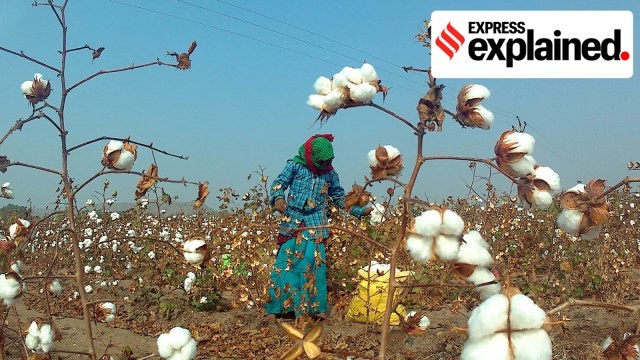
- 06 Feb 2025
In News:
In the Union Budget 2025–26, the Union Finance Minister announced a five-year Cotton Mission to boost productivity, sustainability, and promotion of Extra-Long Staple (ELS) cotton in India, aiming to reduce import dependency and strengthen the high-end textile sector.
What is Extra-Long Staple (ELS) Cotton?
- Definition: ELS cotton refers to cotton varieties with fibre lengths of 30 mm or more, renowned for their superior softness, strength, durability, and premium quality.
- Botanical Origin: Derived primarily from the species Gossypium barbadense, commonly known as Egyptian or Pima cotton.
Distinguishing Cotton Types by Fibre Length
Type Fibre Length Species Quality Uses Yield per Acre
Short Staple < 25 mm Gossypium hirsutum Coarser Low-cost textiles High
Medium Staple 25–28.6 mm Gossypium hirsutum Moderate Everyday fabrics 10–12 quintals
Extra-Long 30 mm & above Gossypium barbadense Superior Luxury textiles 7–8 quintals
Staple (ELS)
Special Characteristics of ELS Cotton
- Softer & Smoother: Ideal for premium, luxury clothing.
- Stronger & More Durable: Resistant to wear and tear.
- Resistant to Pilling: Maintains smoothness over time.
- Luxurious Finish: Produces fine yarns with a natural sheen.
- Minimal Finishing Required: Retains natural texture and quality.
Global and Indian Production Landscape
- Origin: Native to South America.
- Globally Grown In:
- Egypt, China, Australia, Peru – leading producers.
- In India:
- Cultivated in Atpadi Taluka (Sangli, Maharashtra), around Coimbatore (Tamil Nadu), and in parts of Karnataka and Madhya Pradesh.
- Grown mostly in rain-fed areas with warm climates and fertile soil, aiding fibre quality.
Challenges in ELS Cotton Cultivation in India
- Low Yield: ELS cotton yields 7–8 quintals/acre, significantly lower than medium staple varieties (10–12 quintals/acre).
- Market Linkage Deficit: Farmers struggle to fetch premium prices for ELS cotton due to weak market access and lack of dedicated procurement infrastructure.
- Technological Gaps: Limited access to improved seed varieties, agronomic practices, and technologies like HtBT (Herbicide-tolerant Bt) cotton.
- Import Dependency: India imports 20–25 lakh bales annually, accounting for ~90% of its ELS cotton requirements, to meet demand from the premium textile industry.
Significance of the Five-Year Cotton Mission
- Aimed at:
- Enhancing productivity and sustainability of ELS cotton.
- Reducing import dependence through indigenous development.
- Strengthening high-value textile exports by ensuring reliable ELS supply.
- Supports:
- Farmer income enhancement through value-added cultivation.
- Research and development in ELS cotton seed technology.
- Improved extension services, supply chain development, and market support mechanisms.
Kolleru Lake

- 06 Feb 2025
In News:
The Southern Zonal Bench of the National Green Tribunal (NGT) has recently restrained the Andhra Pradesh government from proceeding with six proposed infrastructure projects in the Kolleru wetland area, citing violations of environmental protocols and lack of statutory clearances.
About Kolleru Lake
- Location: Northeastern Andhra Pradesh, between the Krishna and Godavari river deltas, near Eluru city.
- Type: One of Asia’s largest shallow freshwater lakes, covering an area of 308 sq. km.
- Hydrology:
- Fed by Budameru and Tammileru rivers.
- Drains into the Bay of Bengal via Upputeru river (a tidal water channel).
- Acts as a natural flood-balancing reservoir for the Krishna and Godavari river systems.
- Ecological Importance:
- Declared a Wildlife Sanctuary in 1999 and a Ramsar Site in 2002.
- Designated as an Important Bird Area (IBA) due to the presence of over 50,000 waterfowl annually.
- Lies on the Central Asian Flyway (CAF), a major migratory bird route.
- Key Avian Species:
- Grey Pelican (indicator species), Siberian Cranes, Glossy Ibis, Open-billed Stork, Purple Moorhen, Painted Storks.
Kolleru Bird Sanctuary
- A protected wetland marsh habitat within the Kolleru Lake region.
- Supports diverse aquatic flora and fauna, serving as a crucial ecosystem for migratory and resident bird species.
Infrastructure Projects and Legal Challenges
- The projects were proposed under the entity "A.P. Krishna – Kolleru Salinity Mitigation Projects Corporation Limited" with a total capital outlay of approximately ?2,952 crore.
- The plans included construction of three regulators-cum-roads across the Upputeru river and other barrages, regulators, and sluices, falling within the Coastal Regulation Zone (CRZ).
- The Andhra Pradesh Water Resources Department (WRD) issued G.O. Ms. No. 63 (dated 2nd December 2020) authorizing the project.
Grounds for NGT Intervention
- Key objections included:
- Absence of scientific or ecological studies.
- Lack of consultations with wetland experts, wildlife conservationists, and hydrologists.
- No clearances obtained from:
- Ministry of Environment, Forest and Climate Change (MoEF&CC)
- A.P. Coastal Zone Management Authority (CZMA)
- A.P. Pollution Control Board (PCB)
- National Board for Wildlife (NBWL)
NGT Observations and Ruling
- The tribunal emphasized the need for comprehensive evaluation of ecological and hydrological impacts before proceeding.
- It cited potential threats to the lake’s ecosystem, including:
- Disruption to natural hydrology.
- Loss of biodiversity and eco-sensitive habitats.
- The NGT ruled that the projects should not proceed unless fully compliant with environmental laws and backed by appropriate expert assessments.
- The ruling reinforced India's obligations under the Ramsar Convention and domestic environmental legislation, stressing the urgent need to protect the integrity of the Kolleru ecosystem.
Henipavirus
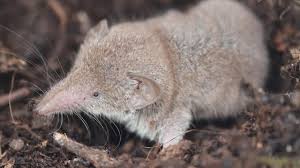
- 05 Feb 2025
In News:
A henipavirus, specifically the Camp Hill virus, has been detected in North America for the first time. This discovery in northern short-tailed shrews—a small mammal species found commonly in Canada and the U.S.—raises concerns over a potential zoonotic disease outbreak.
About Henipavirus
- Virus Type: Henipaviruses are zoonotic, negative-sense RNA viruses.
- Family: Paramyxoviridae.
- Natural Hosts: Pteropid fruit bats (commonly known as flying foxes).
- Other Hosts: Capable of infecting various mammals, including humans, horses, pigs, and shrews.
Notable Henipaviruses:
- Hendra virus (HeV):
- First identified in Australia.
- Mortality rate: Up to 70%.
- Nipah virus (NiV):
- Found in Southeast Asia, including Malaysia and Bangladesh.
- Case fatality rate ranges from 40% to 75%, depending on surveillance and clinical care.
Symptoms and Disease Progression
- Initial symptoms: Fever, dizziness, headache, and muscle pain (myalgias).
- Advanced symptoms: Respiratory issues, encephalitis (brain inflammation), confusion, abnormal reflexes, seizures, and coma.
- Relapsing encephalitis may occur months or years after apparent recovery.
- Fatality Risk: High, primarily due to encephalitis and multi-organ failure caused by damage to small blood vessels (microinfarction) in organs like the brain, liver, and kidney.
Why are Henipaviruses so dangerous?
- Henipaviruses produce proteins that:
- Suppress the innate immune system.
- Block interferon-stimulated antiviral responses, aiding viral replication.
- Act as virulence factors, allowing widespread infection and severe outcomes.
Modes of Transmission
- Animal-to-human:
- Direct contact with infected animals (e.g., fruit bats, pigs, horses, shrews).
- Consumption of contaminated food or water (e.g., raw date palm sap in Nipah outbreaks).
- Human-to-human: Via bodily fluids, close contact, or respiratory droplets during caregiving.
Treatment and Prevention
- Treatment:
- No specific vaccine or antiviral currently exists.
- Management is symptomatic and supportive (respiratory support, ICU care).
- Prevention:
- Vaccination of horses (in HeV-risk regions like Australia).
- Avoiding contact with fruit bats and sick animals.
- Isolating infected individuals and animals to prevent spread.
India-Maldives Joint Military Exercise ‘Ekuverin’
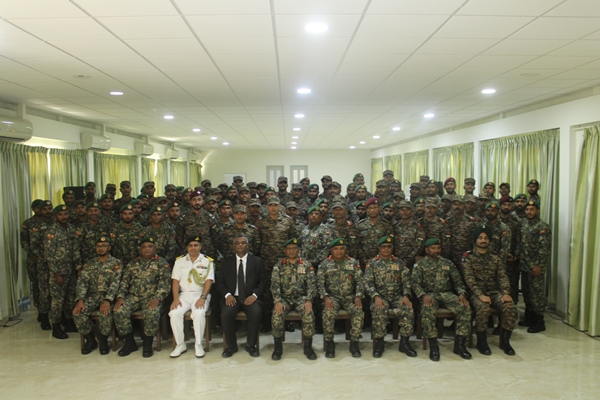
- 05 Feb 2025
In News:
The 13th edition of Exercise Ekuverin, a bilateral joint military exercise between the Indian Army and the Maldives National Defence Force (MNDF), commenced in the Maldives on February 4, 2025. The exercise continues to reinforce defence and strategic ties between the two nations.
About Exercise Ekuverin
- Name Meaning: “Ekuverin” means ‘Friends’ in Dhivehi, the official language of the Maldives—symbolizing the deep and friendly defence partnership between India and the Maldives.
- First Conducted: The exercise was initiated in 2009 as part of annual bilateral defence cooperation.
- Venue Alternation: It is held alternatively in India and the Maldives every year.
- 2023 Edition: Conducted at Chaubatia, Uttarakhand from June 11 to 24.
- 2025 Edition: Being hosted in the Maldives.
Key Objectives and Features
- Military Interoperability: Enhances coordination and operational synergy between Indian and Maldivian armed forces.
- Counter-Insurgency and Counter-Terrorism (CI/CT): Focuses on joint tactical drills to counter modern asymmetric threats.
- Humanitarian Assistance and Disaster Relief (HADR): Equips forces to respond effectively to natural disasters and humanitarian crises.
- Strengthening IOR Security: Reinforces regional maritime and strategic stability in the Indian Ocean Region (IOR), a key area of India’s strategic interest.
Significance for India-Maldives Relations
- Strategic Partnership: Builds mutual trust and defence preparedness, aligning with India’s “Neighbourhood First” policy.
- Capacity Building: Helps enhance the capability of the MNDF through joint training with a larger and more experienced Indian Army.
- Regional Security Cooperation: Plays a crucial role in maintaining peace, security, and freedom of navigation in the IOR.
India’s Defence Engagement with Southeast Asia
India actively conducts multiple bilateral and multilateral defence exercises with Southeast Asian countries to enhance defence diplomacy and promote a free, open, and secure Indo-Pacific.
Key Defence Exercises with Southeast Asian Nations:
- Garuda Shakti: Special Forces exercise with Indonesia (Nov 2022, Sangga Buana Training Area).
- Mitra Shakti: Annual exercise with Sri Lanka, last held in 2022.
- VINBAX: India-Vietnam bilateral exercise; 3rd edition held in 2022.
- IMBEX: India-Myanmar bilateral exercise (last noted in 2017–18).
- Maitree: Joint annual military exercise with Thailand, conducted since 2006.
- CORPAT: Coordinated Patrols with Indonesia, Thailand, and Malaysia for maritime domain awareness and security.
- AIME 2023: The first ASEAN-India Maritime Exercise, conducted in May 2023, involving navies from India and ASEAN nations (Brunei, Indonesia, Malaysia, Philippines, Singapore, Thailand, Vietnam).
Golden-headed Cisticola
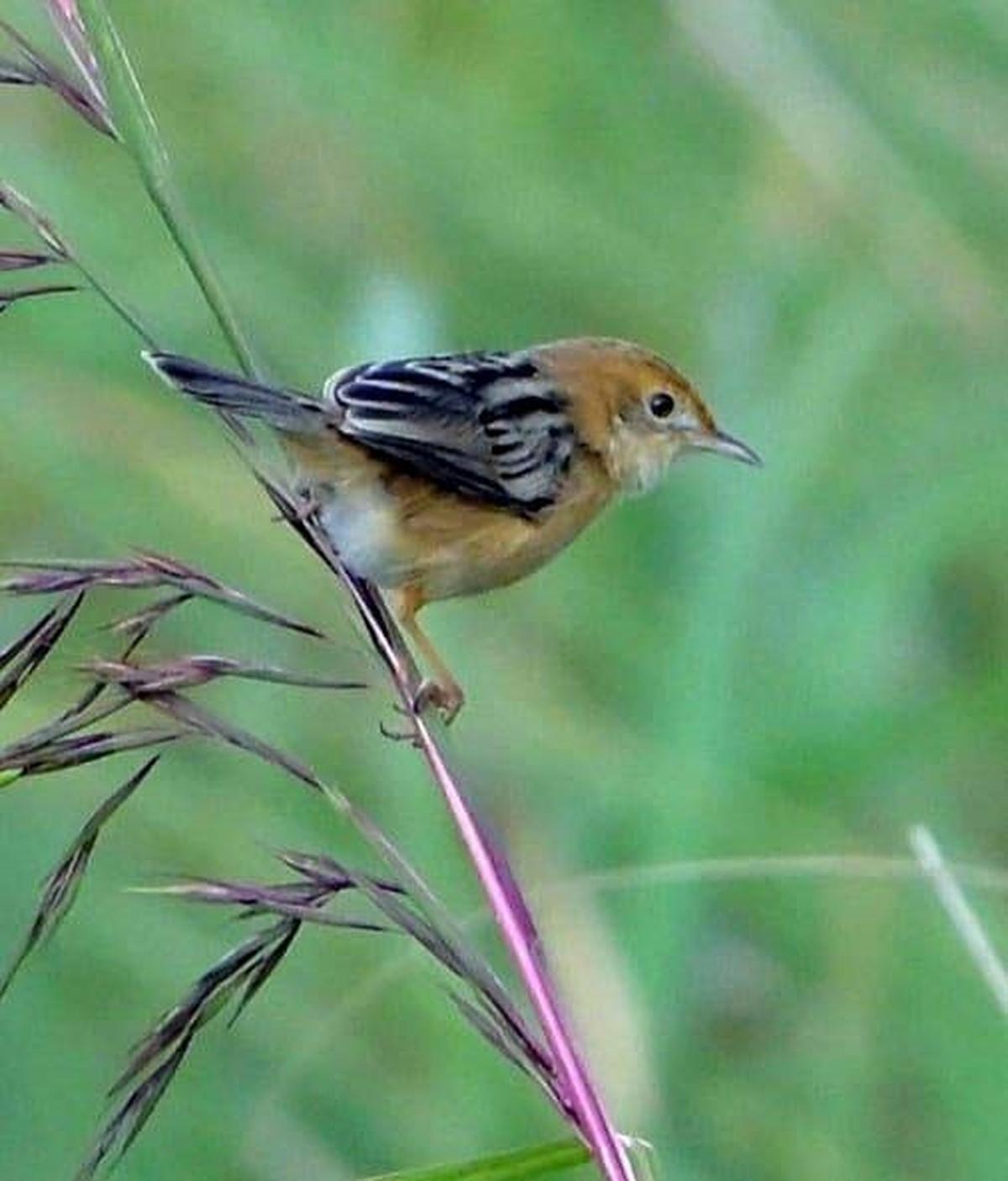
- 05 Feb 2025
In News:
In a remarkable ornithological development, the Golden-headed Cisticola (Cisticola exilis) has been sighted in the Mathikettan Shola National Park, Idukki district, Kerala, marking its first recorded presence in the southern Western Ghats after a significant gap.
The finding underscores the ecological richness of the region and highlights the need for intensified avian research in the Western Ghats.
About Golden-headed Cisticola (Cisticola exilis)
- Also known as the bright-capped cisticola, it is a small warbler belonging to the family Cisticolidae.
- It is an omnivorous bird, feeding primarily on invertebrates such as insects and small slugs, along with grass seeds.
- The species is typically found in grassland habitats within mountain ranges, and has been previously recorded in parts of Karnataka, Tamil Nadu, and northern Kerala, notably in Banasura Hills, Wayanad. However, this is the first confirmed sighting in the southern part of the Palakkad Gap.
Physical features of breeding males include:
- Golden-orange plumage on the head, neck, and chest
- Pinkish beaks
- Black streaks on the back
- A distinctive call that aids identification
Habitat and Distribution
- It is widely distributed across Australia and several Asian countries.
- In India, its presence had been limited to select regions of the Western Ghats, making its recent sighting in Mathikettan Shola both rare and ecologically significant.
Conservation Status
- According to the IUCN Red List, the Golden-headed Cisticola is classified as Least Concern. Despite this, the new finding calls for further research into its habitat preferences and conservation needs within India.
About Mathikettan Shola National Park
Located in the southern part of the Palakkad Gap in the Western Ghats of Kerala, Mathikettan Shola is a vital biodiversity hotspot.
- It comprises evergreen forests, moist deciduous forests, shola grasslands, and semi-evergreen vegetation.
- The park hosts three major streams: Uchillkuthi Puzha, Mathikettan Puzha, and Njandar, which are tributaries of the Panniyar River.
- Its highest point is Kattumala, located at the eastern border adjoining Tamil Nadu.
- The Muthavan tribal community resides near the park’s northeastern boundary, reflecting the intricate human-nature interface in the region.
Scientific and Conservation Importance
The rediscovery has been documented in the journal Malabar Trogon by the Malabar Natural History Society, bringing attention to the importance of long-term monitoring and baseline studies in underexplored ecosystems.
It emphasizes:
- The ecological richness of the Western Ghats, a UNESCO World Heritage site.
- The importance of citizen science, as local birdwatchers played a key role in the finding.
- The need for enhanced habitat protection and ornithological research in grassland ecosystems of high-altitude regions.
RBI Digital Payments Index (DPI)
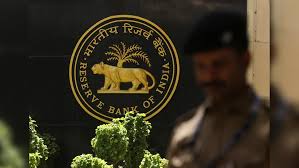
- 05 Feb 2025
In News:
The Reserve Bank of India’s (RBI) Digital Payments Index (DPI) rose to 465.33 as of September 2024, up from 445.5 in March 2024, indicating a sustained increase in the adoption and penetration of digital payments across India.
About the RBI-DPI
- Launched: January 2021
- Constructed by: Reserve Bank of India
- Purpose: To measure the extent and progress of digitisation of payments in India.
- Base Period: March 2018 (DPI Score = 100)
- Frequency of Publication: Semi-annually (March and September)
Significance of the Index
- Acts as a quantitative tool to monitor India’s progress in achieving a less-cash economy.
- Provides stakeholders, policymakers, and researchers a composite view of digital payment trends.
- Helps identify policy focus areas and gaps in digital infrastructure and adoption.
- Supports the goals of financial inclusion, innovation, and digital public infrastructure.
Recent Trends
- September 2024 DPI Score: 465.33
- March 2024 DPI Score: 445.5
- Implication: Demonstrates continued momentum in digital payment adoption, driven by improved payment infrastructure and payment performance nationwide.
Structure of the RBI-DPI
The index is composed of five broad parameters, each with defined weightages and sub-indicators:
Parameter Weightage Description
1. Payment Enablers 25% Internet/mobile penetration, bank account ownership, Aadhaar usage.
2. Payment Infrastructure – Demand Side 10% Number of debit/credit cards, user demand for digital options.
3. Payment Infrastructure – Supply Side 15% Availability of POS machines, ATMs, bank branches, QR codes.
4. Payment Performance 45% Actual volume and value of digital transactions, currency usage trends.
5. Consumer Centricity 5% Digital payment awareness, fraud prevention, grievance redressal.
Each parameter is further broken down into measurable sub-indicators, offering a comprehensive framework for assessment.
Why RBI-DPI Matters for India
- Digital Transformation: Encourages the shift from cash to digital payments, aligning with the goals of Digital India.
- Policy Impact Assessment: Evaluates the effectiveness of regulatory and policy interventions in the payment ecosystem.
- Infrastructure Development: Reflects the outreach of digital payment infrastructure, aiding targeted investments.
- Financial Inclusion: Helps assess how digital modes are reaching the underserved and unbanked populations.
- Data-Driven Governance: Facilitates evidence-based decision-making in financial sector reforms.
SwaRail SuperApp
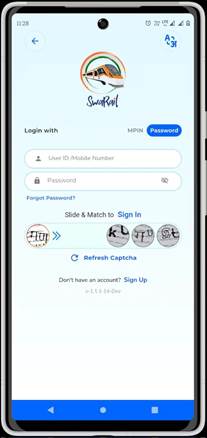
- 05 Feb 2025
In News:
The Ministry of Railways has launched a unified mobile application, SwaRail, currently in beta testing as of January 31, 2025.
This initiative aims to streamline access to Indian Railways services and enhance user experience by consolidating various apps into a single digital platform.
Key Highlights
What is SwaRail?
- SwaRail is a SuperApp developed by the Centre for Railway Information Systems (CRIS).
- It serves as a comprehensive, one-stop solution for a wide range of Indian Railways services.
- The app is currently in beta testing and is available on the Google Play Store and Apple App Store.
Objective
- To integrate multiple railway-related services under a unified platform.
- To reduce app clutter and device storage consumption.
- To improve user experience through a seamless and intuitive interface.
Developed By: Centre for Railway Information Systems (CRIS)
- CRIS is an organization under the Ministry of Railways.
- It combines IT expertise with railway operational experience.
- CRIS is responsible for developing and maintaining software for core railway functions.
Services Offered via SwaRail
The SuperApp merges functionalities of multiple existing apps, offering:
- Ticketing Services
- Reserved ticket booking
- Unreserved and platform ticket booking
- Freight & Parcel Enquiries
- Parcel booking status
- Freight services information
- Passenger Enquiries
- Real-time train status
- PNR enquiry (along with associated train details)
- Train schedules
- Onboard Services
- Food ordering while traveling
- Complaint redressal via Rail Madad
Notable Features of the SuperApp
Feature Description
Single Sign-On Access all services using a single set of credentials
Unified App Combines multiple previously separate apps (e.g., IRCTC RailConnect, UTS)
Integrated Interface Displays consolidated data like PNR + train info on the same screen
Easy Onboarding Existing users can log in with RailConnect/UTS credentials
Multiple Login Modes Supports m-PIN, biometric authentication, and OTP-based guest login
Smart Wallet Integration Auto-linking of R-Wallets from UTS App for ticket booking transactions
User-Centric Approach
- The app is being actively tested, and users are encouraged to provide feedback during the beta phase.
- CRIS is monitoring performance and issues for improvement before the final public release.
- The government envisions technological integration to ensure efficient, smarter, and citizen-friendly rail services.
GARBH-INi-DRISHTI
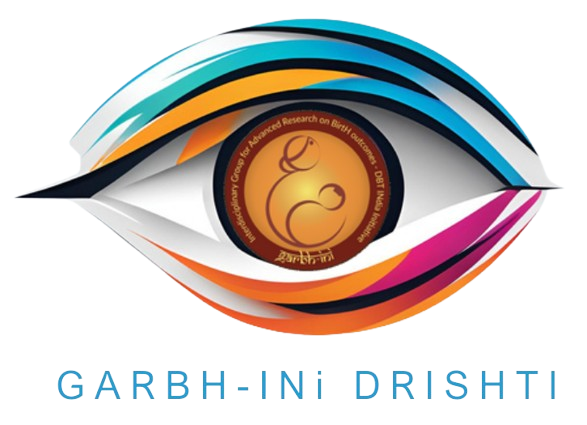
- 04 Feb 2025
In News:
India has made a significant stride in biomedical research and public health with three major developments led by the Translational Health Science and Technology Institute (THSTI) in Faridabad, Haryana.
Key Highlights:
India’s First Ferret Research Facility
- Inaugurated by: Department of Biotechnology (DBT), Ministry of Science & Technology.
- Location: NCR Biotech Science Cluster, Faridabad.
- Purpose: To bolster India's capacity in:
- Vaccine development
- Therapeutic testing
- Research on emerging infectious diseases like influenza, COVID-19, and tuberculosis.
- Significance:
- Strengthens India’s pandemic preparedness.
- Positions India among the select nations with advanced biosafety labs using ferrets—ideal models due to respiratory systems similar to humans.
Launch of GARBH-INi-DRISHTI Data Repository
- Platform: DBT Data Repository and Information Sharing Hub under the GARBH-INi program.
- Dataset Size: Over 12,000 pregnant women, newborns, and postpartum mothers.
- Developed by: THSTI with collaboration from top Indian research institutions and hospitals.
- Features:
- Comprehensive clinical data, medical images, and biospecimens.
- Secure, controlled access promoting ethical research.
- Facilitates predictive tools for preterm birth and maternal health complications.
- Utility:
- Empowers both national and global researchers.
- Informs maternal and neonatal health interventions.
- Supports evidence-based policymaking in public health.
- Program Genesis:
- GARBH-INi (2014): Interdisciplinary initiative to understand preterm birth risks—biological and non-biological.
- Part of: Atal Jai Anusandhan Biotech Mission under the UNaTI initiative.
Technology Transfer Agreement with Industry
- Agreement Between: THSTI and Sundyota Numandis Probioceuticals Pvt. Ltd.
- Technology Transferred:
- Lactobacillus crispatus, a genetically defined synthetic microbial consortium.
- Isolated from reproductive tracts of Indian women enrolled in GARBH-INi.
- Applications:
- Nutraceuticals and probiotics for reproductive health.
- Potential treatments for vaginal infections and urinary tract infections (UTIs).
- Significance:
- Promotes microbiome-based interventions.
- Bridges lab-to-market gap, boosting the biomanufacturing ecosystem.
Strategic Implications for India
- Scientific Diplomacy & Global Standing: With cutting-edge facilities and open data-sharing platforms, India emerges as a key player in global biomedical research.
- Public Health Impact: Supports targeted, data-driven maternal health policies and pandemic response frameworks.
- Innovation Ecosystem: Reflects the convergence of academic research, industry collaboration, and translational science.
World Wetlands Day 2025
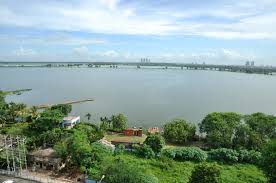
- 04 Feb 2025
In News:
World Wetlands Day is observed every year on 2nd February to commemorate the adoption of the Ramsar Convention on Wetlands in 1971 in Ramsar, Iran.
India has been a signatory to the Convention since 1982 and has actively worked towards the conservation and sustainable management of wetlands—critical ecosystems that serve as biodiversity hotspots, natural flood buffers, and carbon sinks.
Theme 2025: "Protecting Wetlands for Our Common Future"
The 2025 theme emphasizes collaborative efforts to protect wetlands to ensure ecological sustainability, biodiversity preservation, and long-term human well-being. It highlights the need for integrated management and foresight in conservation strategies.
Key Event: Parvati Arga Ramsar Site, Gonda, Uttar Pradesh
The Union Ministry of Environment, Forest and Climate Change (MoEFCC) organized the national-level celebrations of World Wetlands Day 2025 at the Parvati Arga Ramsar Site in Gonda district, Uttar Pradesh.
Significance of the Site
- Comprises two rain-fed oxbow lakes—Parvati and Arga—located in the terai region of the Gangetic plains.
- Supports endangered and critically endangered species like the white-rumped vulture, Indian vulture, and Egyptian vulture.
- Attracts migratory birds such as Eurasian coots, greylag geese, northern pintails, and red-crested pochards.
- Threatened by invasive species, notably the common water hyacinth.
- The nearby Tikri Forest is being developed as an eco-tourism site, and a nature-culture tourism corridor is planned between Ayodhya and Devi Patan.
Cultural and Economic Value
- The area includes heritage sites such as the birthplaces of Maharishi Patanjali and Goswami Tulsidas, enhancing its potential as a religious and cultural tourism hub.
- A MoU between Amazon and ARGA (UP Government initiative) aims to empower women entrepreneurs through digital training and market access under Amazon’s Saheli programme.
India's Wetland Landscape and New Ramsar Sites (2025 Update)
India’s tally of Ramsar Sites has risen to 89, with four new additions:
- Udhwa Lake – Jharkhand (first Ramsar site for the state)
- Theerthangal – Tamil Nadu
- Sakkarakottai – Tamil Nadu
- Khecheopalri – Sikkim (first Ramsar site for the state)
- Tamil Nadu leads with 20 Ramsar Sites, followed by Uttar Pradesh with 10 sites.
- Total area under Ramsar protection in India is now approximately 1.358 million hectares.
Amrit Dharohar Initiative
Launched in June 2023, the Amrit Dharohar initiative promotes conservation and sustainable use of Ramsar Sites over three years. It aligns with Budget 2023–24 announcements and focuses on:
- Species and Habitat Conservation
- Nature Tourism
- Wetlands-based Livelihoods
- Wetlands and Carbon Mitigation
The initiative encourages convergence among central ministries, state authorities, and community stakeholders.
Workshops and Public Engagement
A regional workshop for Northern States was organized on 1st February 2025, with participants from nine states and UTs, highlighting collaborative models in wetland management. The main event also included:
- Exhibitions on eco-friendly products, wetland conservation, and green skills.
- Launch of publications like the Integrated Management Plan for Parvati Arga, Factbook of India’s 85 Ramsar Sites, and Development of Van Taungya Villages.
- Felicitation of painting, quiz, and Nukkad Natak competition winners, promoting grassroots awareness.
Significance of Wetlands in India
Wetlands are water-covered ecosystems, either permanently or seasonally flooded. They:
- Support rich biodiversity, including migratory birds and aquatic species.
- Recharge groundwater and regulate floods.
- Provide livelihoods through fisheries and tourism.
- Act as natural carbon sinks, aiding in climate change mitigation.
Major Threats
- Pollution from industrial and domestic effluents
- Encroachment and urbanization
- Invasive species
PM Shram Yogi Maandhan Yojana (PM-SYM)
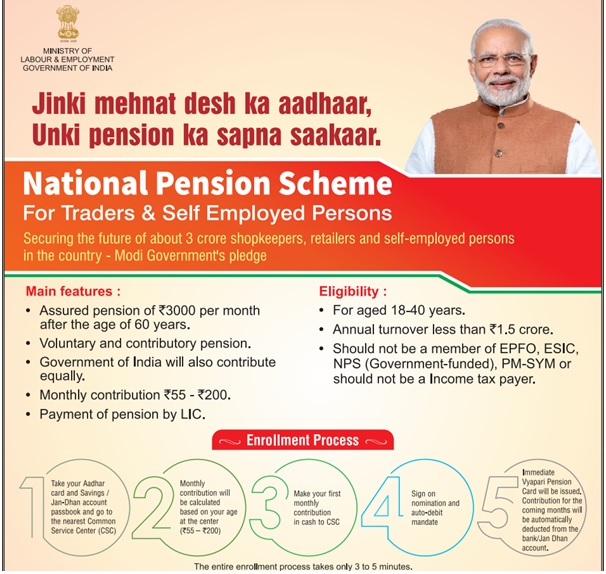
- 04 Feb 2025
In News:
The Union Budget 2025–26 has accorded the highest-ever allocation of ?32,646 crore to the Ministry of Labour and Employment, representing an 80% increase over the previous year's Revised Estimates.
The enhanced funding reflects the government's strategic focus on employment generation and strengthening social security mechanisms for unorganised workers and gig economy participants.
Key Budgetary Highlights:
1. Employment Generation Scheme:
- ?20,000 crore has been allocated to the new Employment Generation Scheme, double the previous year’s allocation.
- The scheme is aimed at fostering large-scale employment opportunities and skilling across various sectors.
2. Employees’ Pension Scheme:
- Allocation increased by ?300 crore, strengthening retirement security for formal sector workers.
3. PM Shram Yogi Maandhan Yojana (PM-SYM):
- Allocation increased by 37% compared to last year.
- The scheme provides old-age social security to unorganised workers through a voluntary, contributory pension model.
About Pradhan Mantri Shram Yogi Maandhan Yojana (PM-SYM)
Objective:
To provide minimum assured pension and social security to unorganised sector workers, including street vendors, construction workers, agriculture laborers, domestic workers, etc.
Eligibility:
- Indian citizen aged 18–40 years
- Monthly income below ?15,000
- Not a member of EPFO, ESIC, or NPS
Key Features:
- Minimum Assured Pension: ?3,000 per month after 60 years of age.
- Voluntary and Contributory Scheme:
- Contributions made via auto-debit from bank accounts.
- 50:50 matching contribution by the Central Government.
- Pension Fund Management:
- Administered by the Ministry of Labour and Employment.
- Implemented by LIC and CSC e-Governance Services India Ltd.
- LIC acts as the Pension Fund Manager.
Family Pension Provision:
- In case of subscriber's death:
- Spouse receives 50% of the pension amount as family pension.
- If death occurs before 60 years, the spouse may continue contributions or exit the scheme as per norms.
Exit Provisions:
- Exit before 10 years: Subscriber's share with accrued interest is returned.
- Exit after 10 years but before 60 years: Entire contribution with interest returned to the subscriber.
Social Security for Gig Workers
Recognising the gig economy as a critical pillar of India’s modern workforce, the government has taken key steps to enhance their social security:
- e-Shram registration
- Provision of unique identity cards
- Access to healthcare benefits under PM Jan Arogya Yojana
- Expected to benefit around 1 crore gig workers
Iran’s Missile Advancements
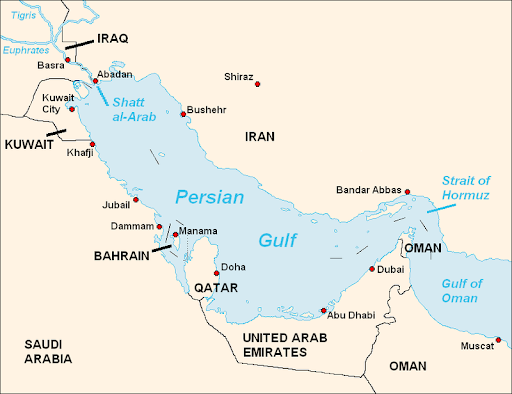
- 04 Feb 2025
In News:
In a significant military development, Iran has successfully test-fired the Ghadr-380, an advanced anti-warship cruise missile with a range of 1,000 kilometers (600 miles).
This capability allows it to target U.S. Navy warships deployed in critical maritime regions like the Persian Gulf and the Sea of Oman. The missile test was launched from an underground missile facility and was broadcast on Iranian state television, underscoring its strategic messaging.
Key Missiles Unveiled by Iran:
1. Ghadr-380 Cruise Missile:
- Type: Anti-warship cruise missile
- Range: Over 1,000 km
- Features:
- Anti-jamming capability
- Quick-launch readiness (operable by one person in less than 5 minutes)
- Launch Details:
- Fired from an underground missile base in central Iran
- Targeted the Sea of Oman
- Specific test timing and warhead specifications were not disclosed
2. Etemad Ballistic Missile:
- Name Meaning: Etemad means "trust" in Persian
- Type: Precision-guided ballistic missile
- Range: 1,700 km (1,056 miles)
- Specifications:
- Length: 16 meters
- Diameter: 1.25 meters
- Equipped with precision-guided warhead
- Built by: Iranian Ministry of Defence
Ballistic vs. Cruise Missiles: Understanding the Distinction
Feature Ballistic Missile Cruise Missile
Propulsion Rocket-propelled at launch; unpowered descent Jet engine-powered throughout flight
Flight Path Arched trajectory (leaves and re-enters atmosphere) Straight, low-altitude flight within atmosphere
Detection Easier to track via radar once launched Difficult to detect due to low-altitude flight
Launch Platforms Ground-based, silo, mobile launchers Ground, air, or sea platforms
Warhead Capability Can carry conventional or nuclear warheads Usually conventional, but may carry nuclear in advanced forms
Iran’s Strategic Missile Doctrine
Underground Missile Facilities:
- Iran maintains extensive underground missile bases, especially in southern Iran near the Strait of Hormuz—a chokepoint for global oil trade.
- Such facilities enhance survivability and rapid response capabilities.
Missile Development Drivers:
- Iran's missile program evolved as a strategic deterrent post the Iran-Iraq War (1980–1988), where both countries used missiles to target civilian areas.
- UN arms embargoes led Iran to focus on domestic development of missile systems, including both cruise and ballistic types.
Capabilities:
- Iran now claims to possess missiles with ranges up to 2,000 kilometers, capable of reaching parts of the Middle East, including Israel.
- The Ghadr-380 and Etemad missiles are examples of technological diversification—from ballistic to precision cruise systems.
Implications for Regional and Global Security
- Deterrence Posture: Iran’s missile advancements strengthen its deterrence, especially amid strained relations with the U.S. and its allies.
- Threat to Maritime Security: The Ghadr-380, with its anti-warship focus, poses a direct threat to U.S. naval assets in the Persian Gulf and adjacent waters.
- Escalation Risks: Enhanced missile capabilities could escalate regional tensions, particularly in flashpoints like the Strait of Hormuz.
- Western Concerns: The U.S. and European nations remain wary of Iran’s dual-track approach involving missile and nuclear program developments.
Shubhanshu Shukla
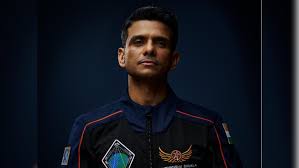
- 04 Feb 2025
In News:
Group Captain Shubhanshu Shukla of the Indian Air Force (IAF) is set to become the first Indian astronaut to travel to the International Space Station (ISS) on a private mission, marking a significant milestone in India’s space diplomacy and international collaboration in human spaceflight.
Mission Details:
- Mission Name: Axiom Mission 4 (Ax-4)
- Launch Vehicle: SpaceX’s Dragon spacecraft
- Launch Site: Kennedy Space Center, Florida, USA
- Tentative Timeline: Spring 2025
- Duration on ISS: Up to 14 days
- Mission Objectives: Conduct scientific experiments, educational outreach, and commercial activities, in collaboration with NASA and ISRO.
International Collaboration:
- The mission includes astronauts from India, Poland, and Hungary—the first such trilateral collaboration in over four decades.
- Marks the return of human spaceflight for Poland and Hungary after a hiatus of more than 40 years.
- Demonstrates Axiom Space’s emerging role in redefining access to low-Earth orbit and supporting national space programs through private missions.
About Shubhanshu Shukla:
- Born: October 10, 1985, in Lucknow, Uttar Pradesh
- Commissioned into IAF: June 2006, Fighter Wing
- Promoted to Group Captain: March 2024
- Current Role: Astronaut-designate for India’s Gaganyaan human spaceflight mission
- Flight Experience: Over 2,000 hours across multiple aircraft including Su-30 MKI, MiG-21, MiG-29, Jaguar, Hawk, Dornier, and An-32
- Astronaut Training: Trained at Yuri Gagarin Cosmonaut Training Center, Star City, Moscow (1-year program)
Historical Context:
- Rakesh Sharma remains the first Indian to travel to space (1984) aboard Soviet Soyuz T-11, under the Interkosmos program.
- Shukla’s upcoming mission marks a new era of Indian participation in international human space missions, particularly through private partnerships.
National Geospatial Mission
- 03 Feb 2025
In News:
Finance Minister Nirmala Sitharaman announced the launch of a National Geospatial Mission in the Budget 2025-26.
Key Highlights:
Objective: To modernize land records, enhance urban planning, and create a robust geospatial infrastructure to support India’s broader development goals, including sustainable growth, efficient governance, and improved public service delivery.
Key Features of the Mission:
- Modernization of Land Records:
- Digitization and updation of land records using geospatial technology.
- Aim to reduce land disputes and promote efficient and transparent land use.
- Urban and Infrastructure Planning:
- Provides high-resolution geospatial data for informed urban planning.
- Supports better design and execution of infrastructure through integration with the PM Gati Shakti framework.
- Development of National Geospatial Data Infrastructure (NGDI):
- Integrates geospatial data from multiple departments and ministries.
- Enables seamless access and interoperability for users across sectors.
- Open Geospatial Data Policy:
- Encourages private sector participation by allowing access to non-sensitive, high-resolution data.
- Reduces reliance on foreign geospatial data providers.
- Sectoral Impact:
- Agriculture: Precision farming, resource mapping, and yield optimization.
- Disaster Management: Enhances early warning systems and response planning.
- Environmental Monitoring: Facilitates conservation, deforestation tracking, and ecosystem health analysis.
- Transportation: Improves logistics, routing, and infrastructure placement.
- Climate Monitoring: Aids in data-driven climate action and adaptation planning.
- Technological Integration:
- Utilizes emerging technologies such as AI, drones, and quantum computing for spatial data collection and analysis.
- Promotes research and development in geospatial science to drive innovation.
- Support to Private Sector:
- Anticipated growth in demand for services from geospatial startups, drone companies, and mapping enterprises.
- Strengthens India’s indigenous geospatial capability aligned with the booming global geospatial market (projected to reach $1,064 million by 2030).
Significance and Alignment with National Goals:
- Enhances transparency and efficiency in land governance.
- Contributes to sustainable urban development.
- Aligns with Digital India and Atmanirbhar Bharat by reducing data dependency on foreign sources.
- Acts as a foundational enabler for India’s development agenda, particularly in areas of resource management, climate resilience, and national security.
PM Dhan Dhanya Krishi Yojana
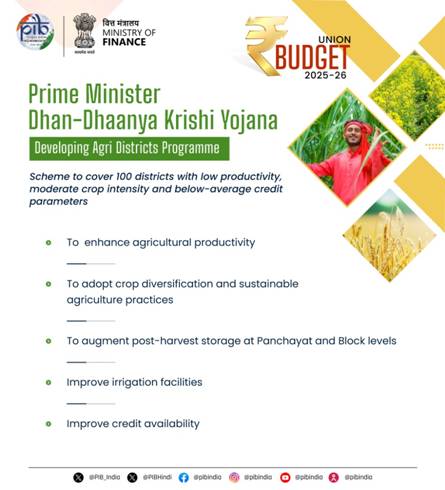
- 03 Feb 2025
In News:
- Recently, the Union Government has introduced the PM Dhan Dhanya Krishi Yojana which aims at enhancing agricultural productivity.
- Objective: To boost agricultural productivity, modernize farming practices, and enhance rural prosperity by addressing region-specific challenges in backward agricultural districts.
Key Features:
- Integrated Approach:
- Consolidates multiple existing agricultural schemes under one umbrella for greater synergy and implementation efficiency.
- Draws inspiration from the Aspirational Districts Programme, which has improved socio-economic outcomes in backward regions.
- District-Specific Interventions:
- Focuses on districts with:
- Low crop productivity
- Moderate crop intensity
- Limited institutional credit access
- Implements customized strategies based on the unique challenges of each region.
- Focuses on districts with:
- Core Focus Areas:
- Enhancing farm productivity through modern technology.
- Improving irrigation infrastructure.
- Increasing formal credit availability to reduce dependence on informal moneylenders.
- Promoting crop diversification and sustainable agriculture.
- Strengthening post-harvest infrastructure like storage at Panchayat and block levels.
- Technology-Driven Solutions:
- Encourages adoption of climate-resilient and precision farming.
- Supports digital access to credit and advisory services.
- Financial Inclusion:
- Strengthens linkages with government financial programs, microfinance institutions, and banks.
- Aims to reduce rural indebtedness and promote formal financial participation.
- State and Centre Collaboration: Implementation will involve both central and state governments, ensuring localized solutions with national support.
- Reducing Distress Migration: By improving rural livelihoods and opportunities, the scheme aims to make migration a choice rather than a compulsion.
Onchocerciasis
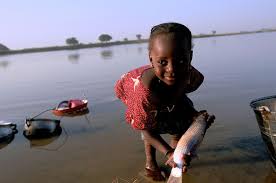
- 03 Feb 2025
In News:
The World Health Organization (WHO) officially verified Niger as the first country in the African Region and the fifth globally to eliminate onchocerciasis (river blindness) by interrupting the transmission of the parasite Onchocerca volvulus.
What is Onchocerciasis (River Blindness)?
- A parasitic disease caused by the worm Onchocerca volvulus.
- Transmitted by infective blackflies, primarily found in riverine areas.
- Causes severe itching, disfiguring skin conditions, and irreversible blindness.
- It is the second leading infectious cause of blindness globally (after trachoma).
- Predominantly affects rural populations in sub-Saharan Africa, Yemen, and parts of Latin America.
Niger’s Elimination Strategy and Achievements:
Historical Background:
- 1976–1989: Under the WHO Onchocerciasis Control Programme (OCP), Niger used vector control via insecticide spraying, reducing disease transmission.
- 2008–2019: Mass Drug Administration (MDA) with ivermectin and albendazole was carried out, primarily for lymphatic filariasis (LF), but also effectively interrupted onchocerciasis transmission in co-endemic areas.
Assessment and Surveillance:
- 2014: Niger began preliminary assessments following the end of LF MDA.
- Entomological and epidemiological surveys confirmed disease elimination:
- Prevalence dropped from 60% to 0.02%.
- No ongoing transmission of O. volvulus.
Key Contributors to Success:
- Partnerships: Collaborative efforts between the Government of Niger, WHO, Merck Sharpe & Dohme (MSD), and various NGOs.
- Medicine Donation: MSD’s donation of ivermectin.
- Surveillance & Flexibility: Continuous monitoring allowed strategic adaptation.
- Previous Success: Niger was certified free of Guinea-worm disease in 2013.
Global and Regional Significance:
- Niger becomes the fifth country globally to eliminate onchocerciasis:
- Other four countries:
- Colombia (2013)
- Ecuador (2014)
- Mexico (2015)
- Guatemala (2016) (All from the WHO Region of the Americas)
- Other four countries:
- WHO African Region:
- 21 countries have eliminated at least one Neglected Tropical Disease (NTD).
- Onchocerciasis is the second NTD eliminated in Niger after Guinea-worm.
Guneri Inland Mangrove
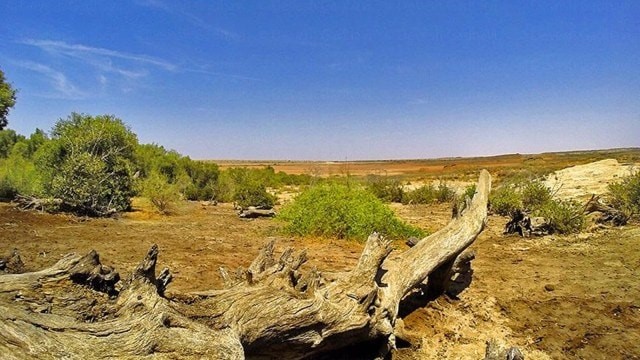
- 03 Feb 2025
In News:
In 2024, the Gujarat government declared the Inland Mangrove of Guneri, located in Kutch district, as the first Biodiversity Heritage Site (BHS) of the state under the Biological Diversity Act, 2002. The declaration followed a recommendation by the Gujarat Biodiversity Board.
Key Features of Guneri Inland Mangroves:
- Location: Guneri village, Lakhtar tehsil, Kutch district, Gujarat.
- Area: 32.78 hectares.
- Distance from Sea: ~45 km from the Arabian Sea; ~4 km from Kori Creek.
- Nature: Inland (non-coastal) mangrove ecosystem — one of only eight such sites globally and the last remaining in India.
- Terrain: Flat land resembling a forest; no tidal influence or sludge typically seen in coastal mangroves.
- Water Source: Sustained by groundwater retained in limestone deposits; no direct contact with seawater.
Ecological and Geological Significance:
- Possibly originated from:
- Miocene marine transgression, or
- Along the ancient Saraswati River, believed to have flowed in the Great Rann of Kutch around 3000–4000 BCE.
- Limestone formations in western Kutch provide continuous subsurface water flow, enabling survival of this unique mangrove system.
Biodiversity:
- Habitat to:
- 20 migratory bird species
- 25 resident migratory avifaunal species
- Acts as a vital ecosystem for local and seasonal wildlife.
Mangroves in India – 2024 Snapshot:
- As per the “Red List of Mangrove Ecosystems” (May 22, 2024):
- India has 3% of South Asia’s mangrove cover.
- Total mangrove area: 4,975 sq km (0.15% of India's land area).
- Increase: 54 sq km (1.10%) since last assessment.
- State-wise share:
- West Bengal: 42.45% (notably South 24 Parganas & Sundarbans)
- Gujarat: 23.66% (with highest increase: 37 sq km)
- Andaman & Nicobar Islands: 12.39%
Legal Framework:
- Declared under the Biological Diversity Act, 2002, which empowers state governments to notify BHS after consulting local self-government bodies.
- A local Biodiversity Management Committee (BMC), including representatives from self-governance institutions, will oversee protection and conservation.
- This provides a formal structure for site management, previously absent.
Conservation Measures:
- Training programs for local and tribal communities along with forest officials.
- A management plan will be implemented to preserve the unique flora and fauna.
National Bank for Financing Infrastructure and Development (NaBFID)
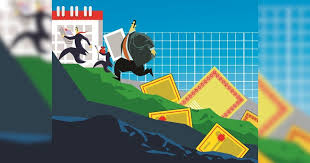
- 03 Feb 2025
In News:
In the Union Budget 2025, Finance Minister Nirmala Sitharaman announced that the National Bank for Financing Infrastructure and Development (NaBFID) will set up a partial credit enhancement facility to promote corporate bond issuance in the infrastructure sector.
Need for Credit Enhancement:
- Pension and insurance funds in India, as per regulatory norms, can invest only in AA-rated or higher securities.
- Most infrastructure firms issue bonds rated below this threshold (often "A" rated).
- Partial credit enhancement will elevate such bonds to AA ratings, enabling large-scale participation from long-term institutional investors.
Significance:
- Currently, pension and insurance funds prefer government bonds. However, with the government's ongoing fiscal consolidation, sovereign bond issuance is expected to decline.
- This measure provides alternative, long-term investment avenues for these funds.
- Enhances liquidity in the corporate bond market, especially for infrastructure players.
- Helps in reducing infrastructure companies' dependence on banks for funding.
About NaBFID:
- Established: 2021 under The National Bank for Financing Infrastructure and Development Act, 2021.
- Type: Development Finance Institution (DFI).
- Regulator: Reserve Bank of India (RBI) as an All-India Financial Institution (AIFI).
- Purpose: Bridge gaps in long-term, non-recourse infrastructure financing and promote bond and derivatives markets in India.
Development Finance Institutions (DFIs):
- Government-owned or public sector-backed institutions that finance large-scale, long-gestation projects.
- Provide medium (1–5 years) and long-term (>5 years) financing.
- Raise funds via sovereign borrowings, insurance companies, pension funds, and sovereign wealth funds.
- Offer both financial support (loans, guarantees) and technical support (project viability, consultancy).
- Do not accept public deposits.
Benefits of Partial Credit Enhancement:
- Democratizes access to the corporate bond market for sub-AA-rated firms.
- Attracts long-term capital into infrastructure through safer, credit-enhanced instruments.
- Promotes diversification and deepening of India's debt markets.
- Makes infrastructure financing more cost-efficient and sustainable over the long term.
Challenges Ahead:
- Regulatory streamlining is essential.
- Guarantee fees need optimization to ensure cost competitiveness against traditional bank lending.
National Manufacturing Mission

- 02 Feb 2025
In News:
- The National Manufacturing Mission (NMM) has been launched to accelerate India’s transition into a global manufacturing hub.
- This mission is a key component of the Make in India initiative and aims to raise the manufacturing sector’s contribution to GDP from 17% to 25% by 2025.
Scope & Coverage
- Targets small, medium, and large industries across sectors.
- Provides a comprehensive support framework involving policy guidance, execution roadmaps, and governance structures for central ministries and state governments.
Five Core Focus Areas:
- Ease and cost of doing business
- Skilling for future-ready jobs
- Support for a dynamic MSME sector
- Technology availability and innovation
- Enhancement of product quality
Clean Tech Manufacturing Focus
In line with India's sustainable development goals, the mission will promote domestic value addition and build robust manufacturing ecosystems for:
- Solar PV cells
- Electric vehicle (EV) batteries
- Motors and controllers
- Electrolyzers
- Wind turbines
- Very high-voltage transmission equipment
- Grid-scale batteries
Strategic Objective: Reduce reliance on Chinese imports and integrate India into global clean tech supply chains.
MSME Sector Support
- Credit Guarantee Cover for MSMEs increased from ?5 crore to ?10 crore.
- Revised Classification Criteria: Investment and turnover limits enhanced by 2.5x and 2x, respectively.
- Aims to empower MSMEs with greater access to credit and growth incentives.
Sector-Specific Measures
1. Footwear & Leather Sector
- A new Focus Product Scheme will support:
- Design capacity
- Component manufacturing
- Machinery for non-leather and leather footwear
- Expected Impact:
- Employment for 22 lakh persons
- Turnover of ?4 lakh crore
- Exports over ?1.1 lakh crore
2. Toy Manufacturing – National Action Plan for Toys
- Objective: Make India a global hub for innovative and sustainable toys.
- Strategy:
- Develop manufacturing clusters
- Promote skilling and innovation
- Strengthen the ‘Made in India’ brand in the global toy market
3. Food Processing – ‘Purvodaya’ Focus
- Establishment of a National Institute of Food Technology, Entrepreneurship and Management in Bihar.
- Purpose:
- Boost food processing in Eastern India
- Enhance value addition for farmers
- Create employment and entrepreneurial opportunities
Bharatiya Bhasha Pustak Scheme
- 02 Feb 2025
In News:
Announced in the Union Budget 2025–26, the Bharatiya Bhasha Pustak Scheme is a major initiative to provide digital textbooks and learning materials in multiple Indian languages for school and university students.
Key Features:
- Digital Access: Study resources will be made available in digital formats via platforms such as DIKSHA, e-PG Pathshala, and the National Digital Library of India.
- Target Groups: Students in schools, colleges, and universities affiliated with UGC, AICTE, and other regulatory bodies.
- Focus Areas: STEM, social sciences, humanities, and commerce; with a special emphasis on technical education in Indian languages.
- Use of Technology: AI-based tools will support automated translation, voice-assisted learning, and customized content.
- Alignment with NEP 2020: Promotes multilingualism and regional language education, as envisioned in the National Education Policy.
Complementary Initiative – ASMITA (Augmenting Study Materials in Indian Languages)
- Aims to develop 22,000 textbooks in Indian languages over the next five years.
- Jointly led by UGC and the Bharatiya Bhasha Samiti under the Ministry of Education.
- Thirteen nodal universities will coordinate content development, supported by regional institutions.
- SOPs (Standard Operating Procedures) have been developed for translation, writing, editing, review, plagiarism checks, and publication.
Budgetary Allocations and Educational Infrastructure
Highest-Ever Allocation for School Education: ?78,572 crore
- 16.28% rise over revised estimates of 2024–25.
- ?9,503 crore allocated to Kendriya Vidyalaya Sangathan (?776 crore hike).
- Plan to set up 50,000 Atal Tinkering Labs in government schools to foster innovation and scientific thinking.
- BharatNet Project to ensure broadband access in all government secondary schools within three years.
Higher Education Allocation: ?50,077.95 crore
- Covers central universities, IITs, and centrally sponsored schemes.
- Budget for centrally sponsored schemes like PM-USHA and RUSA increased to ?1,815 crore.
- Student financial aid raised to ?2,160 crore.
Boost to IIT Infrastructure:
- Additional infrastructure for five IITs established after 2014, accommodating 6,500 more students.
- Expansion of hostel and academic facilities at IIT Patna.
Artificial Intelligence in Education
- Announcement of a Centre of Excellence in AI for Education with an outlay of ?500 crore.
- Objective: Reduce disparities, improve efficiency, and ensure equitable access to high-quality education using AI technologies.
Microplastics detected in Delhi’s Groundwater
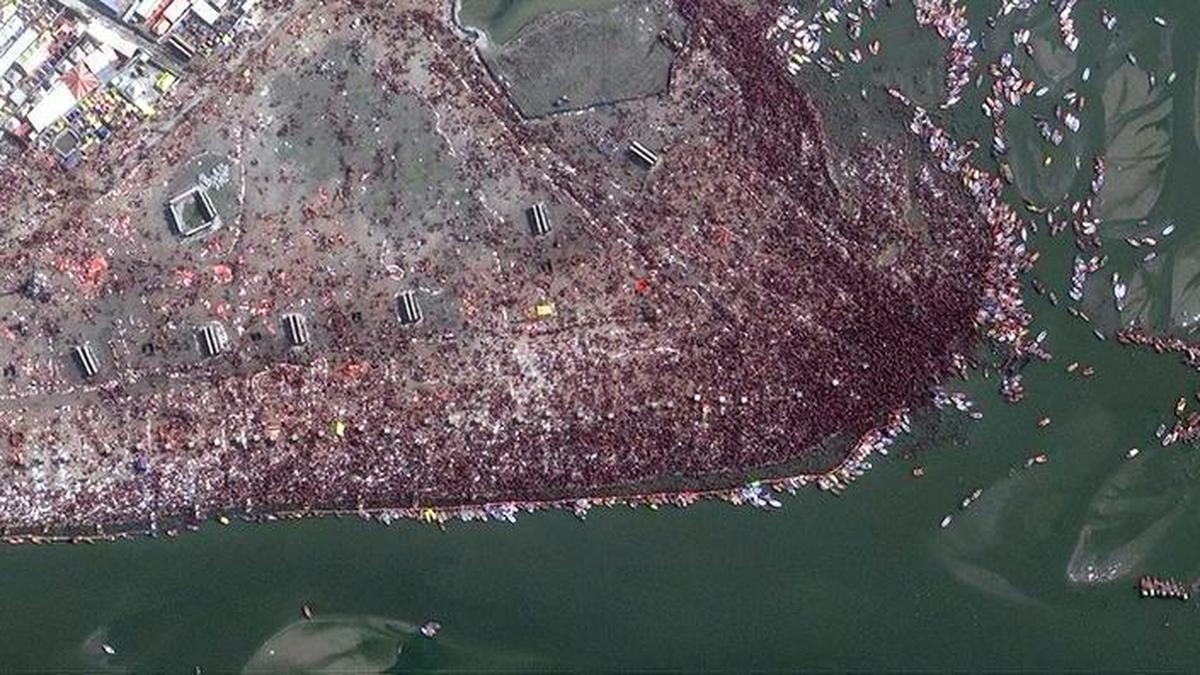
- 02 Feb 2025
In News:
A first-of-its-kind study, commissioned by the Delhi government and conducted by The Energy and Resources Institute (TERI), has revealed the presence of microplastics in groundwater across all 11 districts of Delhi. The interim findings, submitted in November 2024, also reported microplastics in Yamuna River water and soil samples along its banks.
Key Findings:
- Widespread Contamination: Microplastics were found in groundwater samples across Delhi, indicating potential contamination due to leaching from the Yamuna River.
- Additional Contamination: Microplastics were also detected in the Yamuna's water and riverbank soil, suggesting environmental pervasiveness.
- Water Usage Impact: Since Delhi relies on borewells and treated groundwater for drinking and domestic purposes, this contamination raises serious public health concerns.
- No Objection by Authorities: The Delhi government has not disputed the study’s interim findings; further post-monsoon analysis is underway, and a final report is expected later in 2025.
What Are Microplastics?
According to the UN Environment Programme (UNEP):
- Definition: Plastic particles less than 5 mm in size
- Types:
- Primary Microplastics: Manufactured for use in cosmetics (e.g., microbeads) and textiles (e.g., microfibers from clothing, nets)
- Secondary Microplastics: Result from breakdown of larger plastics (e.g., bottles) due to sunlight, abrasion, and ocean waves
Environmental & Health Impacts:
- Persistence: Microplastics are non-biodegradable, mobile, and difficult to eliminate from natural ecosystems.
- Toxicity:
- Can adsorb harmful chemicals, making them more toxic
- Known to bioaccumulate in aquatic food chains
- Human Exposure: Microplastics can enter the human body via:
- Inhalation (air)
- Ingestion (water and seafood)
- Dermal absorption (through skin)
- Health Risks (UNEP Report – From Pollution to Solution, 2021):
- Potential effects on genetics, brain development, respiration, and placental health in newborns
- No global standard exists for safe microplastic limits in drinking water
Ocean Coordination Mechanism (OCM)
- 02 Feb 2025
In News:
Recently, the Intergovernmental Oceanographic Commission of UNESCO (UNESCO-IOC) announced the signature of a Memorandum of Understanding (MoU) enabling the creation of the Ocean Coordination Mechanism (OCM).
What is the Ocean Coordination Mechanism (OCM)?
- It is a collaborative governance initiative aimed at the sustainable management of marine resources in the Caribbean and North Brazil Shelf region.
- Conceived under the 10-year CLME+ Strategic Action Programme (SAP)—endorsed in 2014—it represents a transformative step toward integrated ocean governance.
Key Objectives of OCM:
- Promote sustainable fisheries
- Advance ecosystem restoration and marine spatial planning
- Establish marine protected areas (MPAs)
- Encourage pollution control and blue carbon development
- Foster cross-country and cross-institutional cooperation
It builds on lessons from earlier efforts like the Pacific Islands Regional Ocean Policy (PIROP), aiming to avoid past pitfalls such as vague targets, lack of integration, and funding shortfalls.
Significance of the Caribbean and North Brazil Shelf Region:
- Coral reefs and fisheries contribute ~$610 million annually to local economies
- The North Brazil Shelf is home to over 500 fish species
- Acts as a natural barrier against storms, crucial for climate resilience
Blue Carbon and Climate Action:
The OCM promotes blue carbon projects that utilize coastal ecosystems (like mangroves and seagrasses) for carbon storage, enhancing climate resilience and providing livelihoods to local communities.
Funding Details:
- $15 million from Global Environment Facility (GEF) via the UNDP/GEF PROCARIBE+ Project (2024–2028)
- Additional $126.02 million in co-financing mobilized
- However, the funding is modest compared to initiatives like the Global Fund for Coral Reefs (targeting $3 billion by 2030), raising concerns about OCM's long-term financial sustainability.
Role of IOC-UNESCO:
Established in 1961, the IOC of UNESCO promotes international cooperation in ocean science and policy. Key functions include:
- Marine scientific research (climate, biodiversity, sustainability)
- Tsunami warning systems
- Oceanographic data collection and dissemination
- Leading the UN Ocean Decade (2021–2030) for global marine conservation
Why OCM Matters:
- Addresses the Ocean–Climate–Biodiversity nexus
- Aims to ensure equitable access to marine resources
- Prioritizes local and vulnerable communities
- Integrates traditional knowledge with scientific research for culturally inclusive conservation
Saffron Reedtail Damselfly
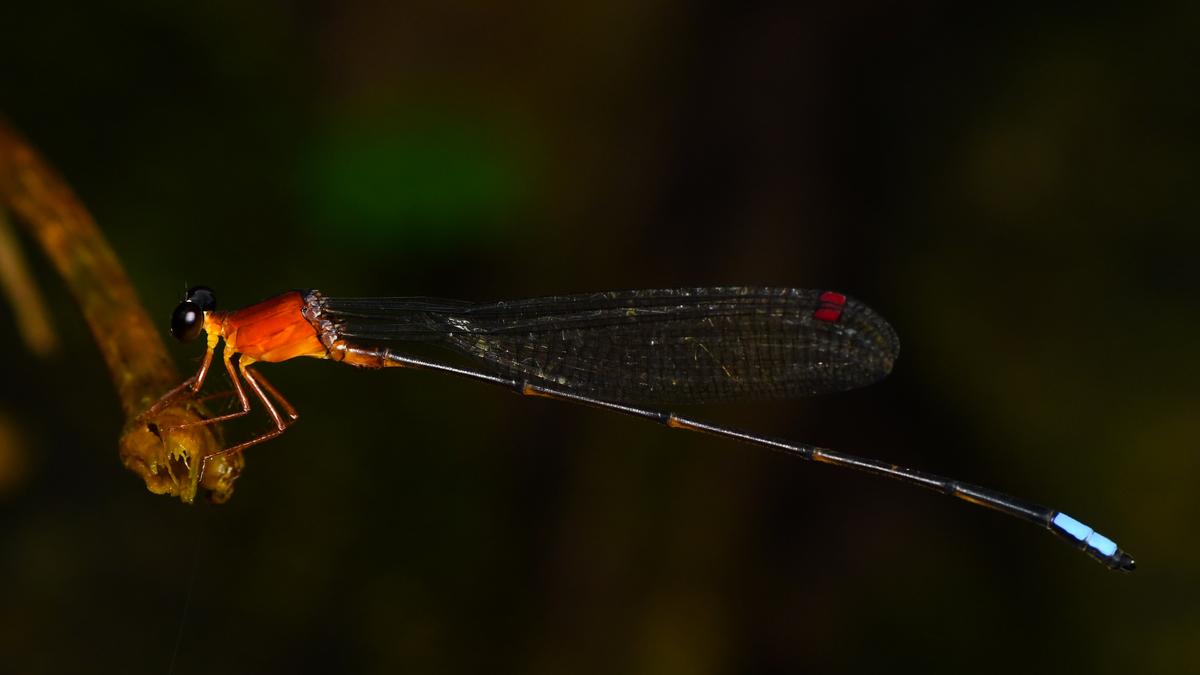
- 02 Feb 2025
In News:
For the first time, the Saffron Reedtail Damselfly, a rare and endemic species of the Western Ghats, has been recorded in Karnataka.
This significant discovery was made in Madhugundi village, Chikkamagaluru district, along the Nethravati River. The findings were published in the journal Entomon.
Key Facts:
- Scientific Name: Indosticta deccanensis
- Common Name: Saffron Reedtail
- Family: Platystictidae (commonly known as shadow damselflies)
- Appearance: Slender, delicate body with a characteristic saffron coloration
- Habitat: Prefers slow-moving forest streams surrounded by thick vegetation; requires pristine water quality
Ecological Significance:
- Indicator Species: Highly sensitive to environmental changes and pollution, indicating a healthy, undisturbed ecosystem.
- Biodiversity Implication:
- Previously recorded only in Tamil Nadu and Kerala.
- The first sighting in Karnataka (northern Western Ghats) extends the known range of the species, suggesting it may be more widely distributed than earlier believed.
Conservation Relevance:
- The discovery underscores the ecological richness of the Madhugundi forests, which were severely affected by floods and landslides in 2019.
- Highlights the urgency to protect fragile ecosystems from deforestation, water pollution, and climate change, especially in biodiversity hotspots like the Western Ghats.
About Damselflies (Order: Odonata):
- General Features:
- Predatory, aerial insects
- Slender bodies with net-veined wings
- Fly weakly compared to dragonflies
- Mostly inhabit freshwater habitats
Rusty-Spotted Cat

- 01 Feb 2025
In News:
For the first time, the Rusty-Spotted Cat (Prionailurus rubiginosus) has been spotted in the forests of Purulia district, West Bengal, captured on a camera trap set up by the NGO HEAL during pangolin poaching surveillance. This marks a significant range extension and has excited conservationists and forest officials.
Key Features
- World’s smallest and lightest wild cat: Weighs between 900 grams to 1.5 kg
- Length: Approx. 1.5 feet, with a 1-foot-long tail
- Appearance:
- Fawn-grey coat with rusty red spots on back and flanks
- Short, rounded head with two white facial streaks
- Large eyes with greyish-brown to amber irises – an adaptation to nocturnal behavior
- Short legs, black-soled feet, and an unmarked rusty tail
- Behavior:
- Nocturnal and elusive
- Uses scent marking to establish territory
- Gestation period: 66–70 days
Habitat and Distribution
- Found in dry deciduous and semi-deciduous forests, including:
- Northern & Central India, Western Ghats, Rajasthan, Kachchh, and Peninsular India
- Also present in Sri Lanka and Nepal
- India hosts 80% of the global population
Conservation Status
- IUCN Red List: Near Threatened, due to habitat loss, fragmentation, and human-wildlife conflict
- Wildlife Protection Act, 1972: Schedule I species (highest protection)
Significance of Purulia Sighting
- Located on the eastern edge of the Chota Nagpur Plateau
- Forests are interconnected with neighboring regions like Jharkhand and Odisha
- Notified as reserved forests, not protected forests
- Threats: Hunting by local communities, habitat degradation
Impact of Conservation Efforts
- Post-COVID, the forest ecosystem in Purulia has improved due to reduced human disturbance
- Past sightings of leopards, bears, jackals, and foxes indicate a thriving ecosystem
- HEAL and the Forest Department have launched livestock compensation programs to reduce retaliatory killings of carnivores
Kurdistan Region
- 01 Feb 2025
In News:
India recently dispatched a humanitarian shipment of medical supplies to the Kurdistan Region in Iraq, reflecting its commitment to global cooperation and humanitarian diplomacy.
About the Kurdistan Region
- Geographical Spread: The Kurdistan Region is a culturally and geographically distinct area predominantly inhabited by ethnic Kurds, spread across:
- Northern Iraq (Erbil, Sulaymaniyah, Dohuk, Halabja)
- Eastern Turkey
- Western Iran
- Northern Syria and parts of Armenia
- Capital: Erbil (Iraq)
- Terrain: Dominated by the Zagros and Taurus mountain systems
- Major Rivers: Tigris River and Greater Zab River, crucial for agriculture and settlement
Ethnic and Political Context
- Kurds: An ethnic group of 25–30 million people, mostly Sunni Muslims, with no official nation-state. They seek autonomy or independence through the Kurdish nationalist movement.
- Kurdistan Regional Government (KRG): An autonomous administration in northern Iraq, managing the Kurd-majority areas with limited sovereignty under Iraq’s federal system.
- Geopolitical Significance:
- Rich in oil and natural gas, especially in Iraqi Kurdistan
- Strategically located, controlling key border regions and trade routes
- Kurdish militia (Peshmerga) played a critical role in the fight against ISIS
Ongoing Political Disputes
- Kurdish Independence Movement:
- The 2017 independence referendum in Iraqi Kurdistan was rejected by Baghdad, followed by economic and military backlash.
- Kurds face resistance from Iraq, Turkey, Iran, and Syria, which fear territorial fragmentation.
- Turkey regularly conducts military operations against Kurdish groups, labeling them as threats to national security.
India-Kurdistan Relations
- Diplomatic Presence: India established a Consulate in Erbil in August 2016 to deepen ties with the Kurdistan Region and Iraq.
- Economic and Workforce Engagement:
- Indian companies have participated in trade fairs in Erbil and Sulaymaniyah.
- A growing number of Indian workers are employed in sectors like:
- Steel mills
- Oil companies
- Construction projects
- Indian workers are valued for their skills and reliability in these industries.
Financialisation

- 01 Feb 2025
In News:
The Economic Survey 2024–25 cautions against the risks of excessive financialisation in India, emphasizing that while finance is a crucial enabler of economic growth, unchecked expansion of the financial sector can pose systemic risks, increase inequality, and divert resources from the real economy.
What is Financialisation?
Financialisation refers to the growing dominance of financial markets, institutions, and motives in shaping economic policies, business decisions, and resource allocation. It involves:
- A shift from productive (real sector) activities like manufacturing to financial activities, including trading, speculation, and asset management.
- Increasing reliance on asset price growth (e.g., stocks, real estate) to stimulate the economy.
- Deep influence of financial motives in corporate governance, economic policies, and household behavior.
Key Drivers of Financialisation in India
- Increased household savings funneled into stock markets.
- Growing retail investor participation in equities and mutual funds.
- Policy and regulation increasingly influenced by financial market considerations.
- Rising public and private sector debt to leverage economic growth.
Risks Highlighted by the Economic Survey
- Real Sector Crowding Out: Over-expansion of the financial sector may compete with the real economy for scarce resources like skilled labour and capital, potentially depriving productive sectors.
- Unsustainable Booms: Rapid financial growth often favours high-collateral, low-productivity investments (e.g., construction) over innovation and manufacturing, creating unsustainable financial booms.
- Complex Financial Products: Proliferation of opaque and complex financial instruments can increase consumer risk exposure and the probability of a financial crisis, as seen during the 2008 global financial meltdown.
- Increased Inequality: Financialisation tends to transfer income from the real sector to the financial sector, worsening income inequality and contributing to wage stagnation.
- Debt Dependency: Over-reliance on financial leverage (debt) increases macro-financial vulnerabilities, especially if credit growth outpaces productive investment.
Global Lessons and Historical Context
- 2008 Global Financial Crisis: Reckless lending and financial engineering, including mortgage-backed securities, led to a global economic collapse. India was impacted indirectly, prompting RBI intervention to stabilise the economy.
- Examples from Ireland & Thailand: Rapid growth of private credit in these countries led to reduced productivity and economic distortions, serving as cautionary tales.
Balanced View on Finance
The Survey recognizes that a well-regulated financial system plays a vital role in:
- Channeling capital to innovative and high-risk ventures.
- Reducing transaction costs and improving price discovery.
- Alleviating poverty and inequality by enabling shock absorption for households and firms.
- Smoothing consumption across economic cycles.
However, the Survey emphasizes that there is a tipping point beyond which financial development becomes counterproductive.
Ultra-Processed Foods (UPFs)
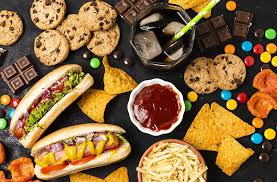
- 01 Feb 2025
In News:
The Economic Survey 2024–25 underscores the adverse impact of Ultra-Processed Foods (UPFs) on public health, particularly among children and youth, and calls for urgent regulatory intervention.
Key Recommendations
- Stringent Front-of-the-Pack Labelling (FOPL): The Survey advocates for clear, enforceable FOPL rules to inform consumers, curb misleading nutrition claims, and restrict aggressive marketing, especially those targeted at children and adolescents.
- Stronger Role for FSSAI: The Food Safety and Standards Authority of India (FSSAI) is advised to:
- Define UPFs clearly in regulation.
- Establish labelling standards.
- Monitor compliance of branded products.
- ‘Health Tax’ Proposal: The Survey proposes higher taxes on UPFs, especially brands engaging in excessive advertising, to act as a deterrent and promote healthier food choices.
- Awareness and Education: It recommends targeted awareness campaigns in schools and colleges, integrated with broader health and lifestyle campaigns, to reduce the rising consumption of UPFs.
Why this matter
- Rising Consumption: According to a 2023 WHO report, India’s UPF consumption grew from $900 million (2006) to over $37.9 billion (2019).
- Long-term National Impact: India's ?2,50,000 crore UPF industry is built on hyper-palatability and is a threat to India’s demographic dividend, productivity, and future economic growth.
Health Risks of UPFs
- Directly linked to:
- Obesity
- Cardiovascular diseases
- Colorectal cancer
- Respiratory and gastrointestinal disorders
- Mental health issues, especially among youth
- Poor dietary intake due to UPFs contributes to micronutrient deficiencies, while synthetic additives may have long-term biological impacts.
What are Ultra-Processed Foods?
UPFs are industrial formulations that undergo extensive processing and typically include:
- Artificial flavours, colours, preservatives, emulsifiers, sweeteners, and other cosmetic additives.
- High sugar, salt, and fat content for taste enhancement.
- Low in essential nutrients such as vitamins, minerals, and fibre.
- Designed for convenience and high palatability, often leading to overconsumption.
Examples of Ultra-Processed Foods
(As per Indian Council of Medical Research - ICMR):
- Commercial bakery items: bread, cakes, biscuits, breakfast cereals
- Snack foods: chips, fries
- Condiments: sauces, jams, mayonnaise
- Dairy & protein products: processed cheese, butter, protein powders, soy chunks, tofu
- Frozen and ready-to-eat foods with additives
- Beverages: energy drinks, health drinks, sweetened fruit juices
- Refined flours of cereals, millets, legumes
- Culinary ingredients containing cosmetic additives like artificial colours or emulsifiers
India adds 4 new Ramsar Sites
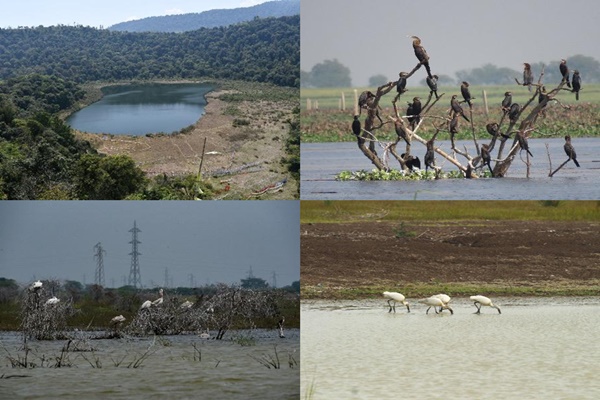
- 01 Feb 2025
In News:
The Government of India has added four new Ramsar sites, increasing the total to 89, the highest in Asia and third globally. The newly designated wetlands include:
- Sakkarakottai Bird Sanctuary (Tamil Nadu)
- Therthangal Bird Sanctuary (Tamil Nadu)
- Khecheopalri Wetland (Sikkim)
- Udhwa Lake (Jharkhand)
This marks a significant milestone as Sikkim and Jharkhand have received their first Ramsar recognitions, while Tamil Nadu strengthens its lead with 20 Ramsar sites, the most among Indian states.
About the Ramsar Convention
- Adopted: 1971 in Ramsar, Iran
- Objective: Conservation and wise use of wetlands through local, national, and international cooperation.
- World Wetlands Day: Celebrated on 2nd February to promote awareness.
Key Highlights:
Therthangal Bird Sanctuary – Tamil Nadu
- Notified in 2010; covers 29.29 ha.
- Crucial breeding and foraging site for waterbirds like Spot-billed Pelican, Black-headed Ibis, and Oriental Darter.
- Aids groundwater recharge and climate regulation.
- Part of the Central Asian Flyway.
Sakkarakottai Bird Sanctuary – Tamil Nadu
- Notified in 2012; spans 230.49 ha.
- Located near Gulf of Mannar; significant stopover for migratory birds.
- Hosts endemic species and near-threatened fauna like Lion-tailed Macaque and Giant Squirrel.
Khecheopalri Wetland – Sikkim
- Sacred lake revered by Buddhists and Hindus; called Sho Dzo Sho locally.
- Known as a wish-fulfilling lake.
- Birds prevent leaves from settling on the surface.
- Rich in avifauna: fishing eagles, Brahminy kites.
- Integral to ecotourism and biodiversity conservation.
Udhwa Lake – Jharkhand
- Comprises Pataura Jheel (155 ha) and Brahma Jamalpur Jheel (410 ha).
- First Ramsar site of Jharkhand; near Ganga River.
- Declared a bird sanctuary in 1991; attracts migratory birds from September onwards.
Falls under the Gangetic Plains biogeographic zone.
MSME Trade Enablement and Marketing (TEAM) Initiative
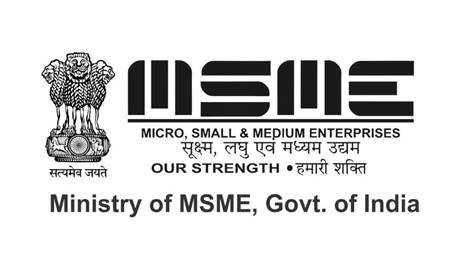
- 31 Jan 2025
In News:
The Ministry of Micro, Small, and Medium Enterprises (MoMSME), in collaboration with the Open Network for Digital Commerce (ONDC), has launched the Trade Enablement and Marketing (TEAM) Initiative. It aims to promote digital commerce among micro and small enterprises (MSEs) in India.
Key Features of TEAM Initiative
- Scheme Under: Raising and Accelerating MSME Productivity (RAMP) Programme
- RAMP is a World Bank-supported Central Sector Scheme implemented from 2022–2027 to enhance market access, technology upgradation, and financial inclusion for MSMEs.
- Objective:
- To empower MSEs through digital commerce integration using ONDC.
- To formalize operations, reduce the cost of doing business, and expand market access.
- To ensure inclusivity with 50% of beneficiaries being women-led enterprises.
- Budget & Duration:
- ?277.35 crore over three years (FY 2024–25 to FY 2026–27).
- Target Beneficiaries:
- 5 lakh MSEs (50% women-led).
- Eligibility: Registered MSEs in manufacturing or service sectors with valid Udyam Registration. Medium enterprises are excluded from most benefits.
- Implementing Agency:
- National Small Industries Corporation (NSIC)
Operational Strategy
- ONDC Integration: MSMEs will be onboarded onto the ONDC network, enabling them to operate digital storefronts with access to interoperable platforms, seamless payment solutions, and logistics services.
- Workshops & Outreach:
- Over 150 workshops will be organized across Tier 2 and Tier 3 cities, especially targeting SC/ST-led and women-led enterprises.
- Workshops will provide training on creating digital catalogues, understanding digital platforms, and maximizing ONDC's benefits.
- Supportive Infrastructure: A dedicated digital portal will offer services including workshop registration, access to finance, grievance redressal, catalogue tools, and account management assistance.
- Financial Assistance: Support to Seller Network Participants for onboarding MSEs and assisting in operational and digital transition needs.
About ONDC:
An initiative of the DPIIT, Ministry of Commerce, ONDC is an open, interoperable network that allows buyers and sellers to transact across multiple digital platforms, aiming to democratize digital commerce and reduce platform monopolies.
National Critical Mineral Mission
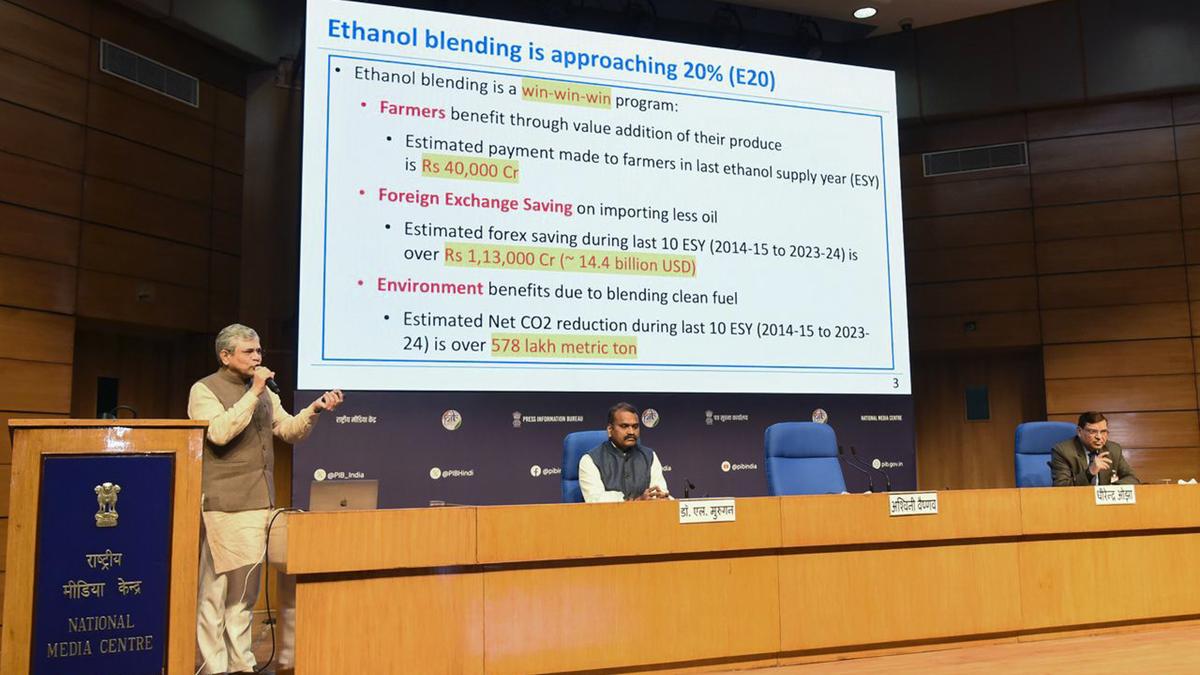
- 31 Jan 2025
In News:
The Union Cabinet has launched the National Critical Mineral Mission (NCMM) with a total outlay of ?34,300 crore over seven years, including ?16,300 crore government expenditure and ?18,000 crore investment from PSUs and private players.
Key Highlights:
Objectives of NCMM
- Reduce import dependence on critical minerals vital for clean energy, electronics, defence, and high-tech industries.
- Promote domestic exploration, mining, processing, and recycling of critical minerals.
- Facilitate overseas acquisition of mineral assets.
- Strengthen India’s mineral security and ensure self-reliance (Atmanirbhar Bharat).
Key Features
- Value Chain Coverage: Exploration → Mining → Beneficiation → Processing → Recycling of end-of-life products.
- Fast-track regulatory approvals for mining projects.
- Creation of mineral processing parks and promotion of sustainable extraction technologies.
- Establishing a strategic stockpile of critical minerals.
- Development of a Centre of Excellence on Critical Minerals to support R&D.
- Expansion of PRISM initiative to fund startups and MSMEs in the sector.
- Whole-of-government approach: Collaboration among ministries, PSUs, private sector, and research institutions.
Why Critical Minerals Matter
Critical minerals are essential inputs for:
- Green energy: EV batteries, solar panels, wind turbines.
- Electronics: Semiconductors, fiber optics.
- Defence: Aircraft, missile guidance systems.
- Medical technologies: MRI machines, pacemakers.
India’s clean energy transition and manufacturing competitiveness hinge on a steady and secure supply of these minerals.
India’s Import Dependence
India is dependent on imports, especially from China, for several critical minerals like lithium, cobalt, titanium, graphite, and tellurium. This exposes India to supply chain vulnerabilities amid shifting global geopolitics.
List of 30 Critical Minerals for India
Includes: Lithium, Cobalt, Nickel, Graphite, Rare Earth Elements (REEs), Beryllium, Titanium, Tungsten, Gallium, Indium, Selenium, Cadmium, etc.
Strategic and Legislative Initiatives
- Amendment to MMDR Act (1957) in 2023: Enabled auction of 24 critical mineral blocks.
- OAMDR Act (2002) amendment: Introduced transparent offshore mineral exploration.
- Duty waivers in Union Budget 2024–25: Customs duties removed on key critical minerals to promote domestic processing.
- Exploration by GSI: 368 projects in last 3 years; 227 more planned for FY 2025–26.
- KABIL: Acquired 15,703 ha in Argentina for lithium mining.
Global Context
- Global powers (US, EU, Japan) are pursuing strategies for critical mineral security.
- China dominates refining of lithium, cobalt, and REEs.
- India is part of the Minerals Security Partnership (MSP) to diversify global mineral supply chains.
Significance for India
- Ensures long-term resource security for clean technologies.
- Supports EV and renewable energy manufacturing goals.
- Enhances strategic autonomy in defence and electronics.
- Makes India an attractive hub for foreign investment in green technologies.
Challenges and the Way Forward
- Geopolitical risks in overseas asset acquisition.
- Environmental impacts of large-scale mining.
- Need for strong R&D ecosystem, financial incentives, and public-private partnerships.
- Sustainable mining practices and global collaboration are essential for long-term success.
Contract Farming in India
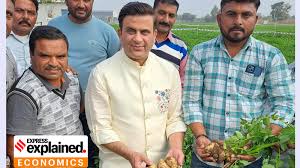
- 31 Jan 2025
In News:
Contract farming has emerged as a significant model in India's agricultural landscape, especially with its success in processed potato cultivation and the recent rise in French fry exports. As the country transitions from being an importer to a major exporter in sectors like frozen French fries, the contract farming model underpins the structural transformation of Indian agriculture.
Understanding Contract Farming
Contract farming is an agricultural production system where farmers and buyers (agribusinesses, processors, exporters, or retailers) enter into a pre-harvest agreement. This contract outlines key parameters including price, quality, quantity, delivery schedules, and in many cases, input provision and technical assistance.
Types of Contract Farming Arrangements
- Direct Input Provision by the Company: Firms supply seeds, fertilizers, and support services, deducting costs from the final payment to farmers.
- Partnership with Local Input Dealers: A hybrid model balancing company control with third-party services, chosen based on crop complexity, local support availability, and firm capabilities.
Advantages of Contract Farming
- Stable and Enhanced Income: Contracts assure farmers of a fixed price and market access, shielding them from volatile markets. RBI data shows farmers typically receive only 31%–43% of consumer prices; contract farming can significantly improve this share.
- Access to Inputs and Technology: Companies provide high-quality seeds, fertilizers, training, and modern farming practices, leading to improved yields and quality.
- Post-Harvest Efficiency: Streamlined procurement reduces wastage of perishables and post-harvest losses, ensuring efficient supply chain management.
- Credit and Financial Support: Assured incomes help farmers access institutional credit, reducing dependency on informal lenders.
- Food Safety and Export Standards: Training on pesticide use and residue limits ensures compliance with international standards like Maximum Residue Limits (MRLs), boosting export potential.
- Consumer Benefits: Direct procurement reduces intermediaries, enabling competitive pricing and higher quality products.
- Technology Transfer: Farmers benefit from the introduction of new, high-efficiency production techniques.
Concerns and Challenges
- Power Imbalance: Small and marginal farmers often lack bargaining power. This dependency may lead to exploitative contracts or one-sided terms, especially where firms demand investments in crop-specific infrastructure.
- Market Risk and Default: Price volatility can lead to side-selling by farmers or contract breaches by firms when market prices crash.
- Delayed Payments and Inputs: Contractual delays in payment or input delivery can severely affect crop cycles and farmer finances.
- Exclusion of Marginal Farmers: For economies of scale, firms often prefer large landholders, sidelining smallholders.
- Environmental Impact: Monocropping, overuse of water and agrochemicals, and soil degradation threaten long-term sustainability.
- Food Security Trade-offs: A shift to high-value crops under contracts may reduce acreage for food crops, impacting local food security.
- Loss of Autonomy: Farmers may lose control over farming decisions, with firms determining most aspects of cultivation, leading to indirect control over land use.
Case Study: Contract Farming in Potato Sector
India is the second-largest potato producer globally, with Uttar Pradesh, West Bengal, and Bihar as leading states. The Central Potato Research Institute (CPRI), Shimla developed several high-yielding Kufri varieties to support commercial cultivation.
The success of processed potato farming is best illustrated by India’s emergence as an exporter of frozen French fries, driven by contract-based procurement from farmers. However, issues such as the PepsiCo vs. Indian farmers legal dispute over unauthorized cultivation of the FL 2027 variety underline ongoing concerns around intellectual property rights and farmers’ autonomy.
Policy and Legal Framework
- Model APMC Act, 2003: Introduced contract registration, dispute resolution, and exempted market fees while protecting land ownership.
- Model Agricultural Produce and Livestock Contract Farming Act, 2018: Proposed institutional frameworks, insurance provisions, and promotion of Farmer Producer Organizations (FPOs).
- e-NAM Integration: Supports transparent pricing and contract enforcement.
- National Agriculture Policy: Endorses contract farming as a tool for enhancing productivity and rural incomes.
Bharat Sovereign Wealth Fund (BSWF)

- 31 Jan 2025
In News:
India is actively exploring the creation of a Bharat Sovereign Wealth Fund (BSWF) or The Bharat Fund (TBF) to harness the untapped wealth embedded within its public sector ecosystem. This fund aims to unlock and strategically manage dormant capital, estimated at ?40 lakh crore ($450–500 billion), primarily held in equity stakes of around 80 listed public sector enterprises (PSEs) and banks.
What is a Sovereign Wealth Fund (SWF)?
A Sovereign Wealth Fund is a state-owned investment vehicle that manages national savings or surplus revenues—often derived from foreign exchange reserves, natural resource exports, or trade surpluses.
According to the Santiago Principles (2008), SWFs:
- Are owned by the general government (central or sub-national),
- Invest primarily in foreign financial assets, and
- Aim to achieve financial objectives rather than monetary policy.
Types of SWFs include:
- Stabilization Funds: Cushion fiscal shocks from revenue volatility.
- Future Generation Funds: Preserve wealth for long-term national benefit.
- Strategic Development Funds: Support priority sectors and national growth.
- Reserve Investment Funds: Enhance returns on foreign currency reserves.
Examples include:
- Norway’s Government Pension Fund Global ($1.7 trillion),
- China Investment Corporation ($1.35 trillion),
- Abu Dhabi Investment Authority ($993 billion).
India’s SWF Landscape and the BSWF Proposal
India previously explored SWF models in 2007–08 and again in 2010–11. While the National Investment and Infrastructure Fund (NIIF) was launched in 2015, it remains sector-specific and limited in scale. The proposed BSWF envisions a comprehensive and transformational fund akin to global best practices.
Key features of the BSWF proposal:
- Consolidation of government equity in PSEs and PSU banks under a professionally managed umbrella.
- Strategic divestment—e.g., reducing government stake from 51% to 40%—without losing operational control.
- Leveraging this pooled equity to attract global co-investors, potentially unlocking tens or hundreds of billions in foreign capital.
Why India Needs the Bharat SWF
- Wealth Unlocking: Potential monetization of over ?40 lakh crore in dormant government equity assets.
- Fiscal Prudence: Even a modest 2% annual divestment could yield $10+ billion, narrowing the fiscal deficit from 4.9% to ~4.6% of GDP.
- Strategic Sector Investment: Deployment into high-potential sectors—AI, semiconductors, electric vehicles, hydrogen energy, biotechnology—to drive innovation and economic leadership.
- Attracting Global Capital: Enhanced investor confidence, especially from established SWFs like those of Singapore, Norway, and Abu Dhabi, which are already increasing exposure in Indian equities and infrastructure.
- Social Sector Funding: Generate non-debt financial resources for welfare programs and national development missions.
- Soft Power Projection: Fund ventures, disaster relief, and advocacy efforts, strengthening India’s international standing.
Governance and Reform Imperatives
For the BSWF to succeed, it must:
- Be governed by a clear legal and regulatory framework aligned with Santiago Principles.
- Operate independently, with professional asset managers, market-based remuneration, and arm’s length oversight.
- Transition PSEs to function with autonomy and efficiency, reducing bureaucratic delays and enabling innovation.
- Foster joint ventures to turn around non-performing PSEs—among the 1,830 PSEs, around 400 remain non-functional, demanding nearly ?9 lakh crore annually in budgetary support.
Challenges and Concerns
- Macroeconomic Constraints: India faces a current account deficit and substantial fiscal pressures—conditions unlike traditional SWF-rich nations.
- Geopolitical and Market Risks: Global uncertainty and decoupling trends could impact cross-border investment strategies.
- Environmental and Technological Vulnerabilities: Investment risks in carbon-heavy sectors and exposure to data fraud or tech disruptions.
- Institutional Resistance: Political and bureaucratic inertia may delay implementation unless national interest is prioritized.
SWF Investments in India: A Growing Trend
Foreign SWFs are already deepening their footprint in India:
- $6.7 billion in direct investments in 2022 (up from $4.3 billion in 2021).
- Preferred sectors: healthcare, entertainment, renewables, infrastructure.
- Beneficiaries of tax exemptions on direct infrastructure investments via InVITS (Infrastructure Investment Trusts) and AIFs (Alternative Investment Funds), valid for investments made before March 31, 2024.
These incentives have encouraged foreign SWFs to explore establishing physical presence in India’s financial hubs, especially GIFT City, Gandhinagar.
Environment Protection (End-of-Life Vehicles) Rules, 2025
- 31 Jan 2025
In News:
MoEFCC Notifies Rules for End-of-Life Vehicles to Minimize Waste and Pollution.
Key Highlights:
Notified by: Ministry of Environment, Forest and Climate Change (MoEF&CC)
Effective from: April 1, 2025
Legal Basis: Environment Protection Act, 1986
Objective: To promote environmentally sound management of end-of-life vehicles (ELVs), enable recycling and reuse of vehicle components, and reduce resource extraction, pollution, and waste generation.
Key Features of the ELV Rules, 2025
1. Scope and Coverage
- Applicable to all vehicle categories including electric vehicles (EVs), e-rickshaws, and e-carts.
- Exempted vehicles: Agricultural tractors, trailers, combine harvesters, and power tillers.
- Exempted waste types: Batteries, plastics, tyres, used oil, and e-waste (governed under separate waste management rules).
2. Extended Producer Responsibility (EPR)
- Vehicle producers are mandated to meet annual scrapping targets based on the age of vehicles:
- Transport vehicles: 15 years
- Non-transport vehicles: 20 years
- Producers must fulfill their EPR obligations for all vehicles introduced into the domestic market, including those used internally.
- Annual EPR declarations must be submitted to the Central Pollution Control Board (CPCB) by April 30 each year.
- Producers must promote ELV deposition at designated collection centres or Registered Vehicle Scrapping Facilities (RVSFs).
3. Responsibilities of Stakeholders
- Registered Owners & Bulk Consumers: Required to deposit ELVs at designated centres or RVSFs within 180 days of becoming unfit.
- Collection Centres:
- Handle ELVs in an environmentally responsible manner.
- Maintain records and ensure safe storage and transfer to RVSFs.
- Registered Vehicle Scrapping Facilities (RVSFs):
- Undertake depollution, dismantling, segregation, and recycling.
- Ensure environmentally sound disposal of non-recyclables via authorized TSDFs.
- Issue EPR certificates based on the volume of steel processed; valid for 5 years.
4. Monitoring, Compliance, and Penalties
- CPCB and State Pollution Control Boards (SPCBs) are responsible for:
- Registration, inspection, and audit of producers, RVSFs, and bulk consumers.
- Taking action against non-compliance, including suspension or cancellation of registration.
- Levying environmental compensation for violations that cause harm to public health or the environment.
5. Registration & Certification
- Producers register with CPCB; RVSFs and bulk consumers with respective SPCBs.
- Registration certificates are issued within 15 days of application via a centralized online portal.
- EPR certificates are non-transferable and allow adjustment of both current and backlog obligations.
Related Policy and Incentives by MoRTH
The Ministry of Road Transport and Highways (MoRTH) supports the ELV Rules through:
- Vehicle Scrapping Policy: Targets voluntary phasing out of unfit and polluting vehicles.
- Motor Vehicles (Registration and Functions of Vehicle Scrapping Facility) Rules, 2021: Provides operational criteria for RVSFs.
- Central Motor Vehicles (Amendment) Rules, 2021:
- Waiver of registration fee for buyers submitting ELV Certificates of Deposit.
- Concession in motor vehicle tax: 25% for non-transport, 15% for transport vehicles.
Electric Mobility Push
- MoRTH has issued several notifications promoting EVs, including:
- Permit exemptions for battery-operated and ethanol/methanol-fueled vehicles.
- Fee exemptions for registration and renewals.
- Tourist permit benefits for EVs and distinct registration marks for visibility.
PM E-DRIVE Scheme
- Launched by Ministry of Heavy Industries on 29th September 2024 with a ?10,900 crore outlay.
- Aims to support electric 2-wheelers, 3-wheelers, ambulances, trucks, and buses with ?3,679 crore in demand incentives.
- Targets subsidization of over 28 lakh EVs.
F11 Bacteria
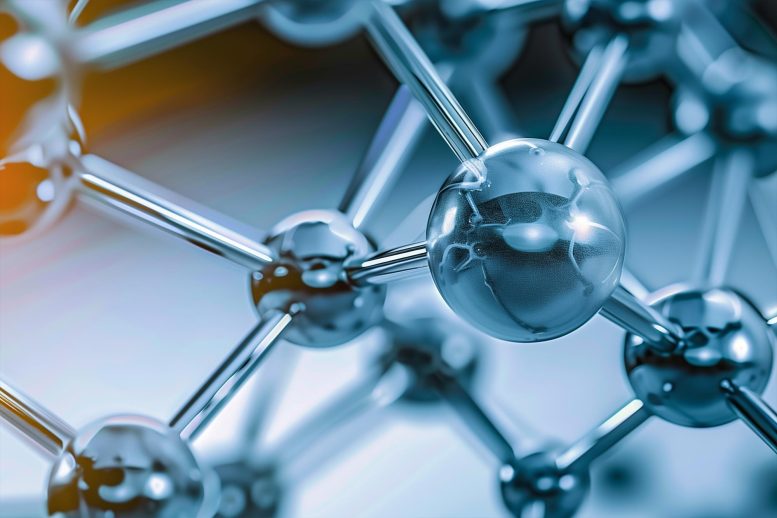
- 30 Jan 2025
In News:
A recent scientific study has identified a bacterial strain, Labrys portucalensis F11 (commonly referred to as F11), capable of degrading per- and polyfluoroalkyl substances (PFAS) — popularly known as “forever chemicals” — by breaking their strong carbon-fluorine (C-F) bonds.
About F11 Bacteria:
- Scientific Name: Labrys portucalensis F11
- Family: Xanthobacteraceae
- Nature: Aerobic and pollutant-resistant bacterium
- Origin: Isolated from industrially contaminated soil in Portugal
- Significance:
- Adapted to thrive in toxic environments
- Uses environmental contaminants as an energy source
- Capable of degrading at least three types of PFAS and certain toxic byproducts
What Are Forever Chemicals (PFAS)?
- Definition: A group of synthetic, man-made chemicals known for their extremely strong C-F bonds, making them persistent and non-biodegradable.
- Why Called 'Forever':
- Resistant to natural breakdown
- Found in air, rainwater, and soil for decades or longer
- Health & Environmental Hazards:
- Linked to cancer, hormonal disorders, immune dysfunction, and environmental toxicity
- Migrate into soil, water, and air during production and use
- Regulation: Certain PFAS are listed under the Stockholm Convention on Persistent Organic Pollutants
Relevance for India and the World:
- Global Impact:
- PFAS are used in a wide range of consumer products such as non-stick cookware, firefighting foams, and food packaging.
- Their persistence poses long-term risks to public health, groundwater contamination, and biodiversity.
- India's Concern:
- Increasing industrialization and waste mismanagement heighten PFAS exposure risks.
- No comprehensive PFAS regulation in place yet; calls for adopting stringent environmental safety norms.
WHO Guidelines on Lower-Sodium Salt Substitutes (LSSS)
- 30 Jan 2025
In News:
Recently, the World Health Organization (WHO) issued new guidelines promoting the use of Lower-Sodium Salt Substitutes (LSSS) to tackle the global burden of hypertension, cardiovascular diseases (CVDs), and stroke, which are largely driven by excessive sodium consumption. This is especially relevant for countries like India, with a high prevalence of high blood pressure and salt consumption.
What Are Lower-Sodium Salt Substitutes (LSSS)?
- LSSS are alternatives to regular table salt, where sodium chloride (NaCl) is partially replaced by potassium chloride (KCl), magnesium sulphate, or calcium chloride.
- They are designed to retain the taste of regular salt while significantly reducing sodium intake and improving heart health.
- LSSS can help lower blood pressure, thanks to the potassium content, which helps balance fluid levels and offset sodium’s harmful effects.
Key WHO Recommendations:
- Daily sodium intake should be restricted to less than 2 grams per day, equivalent to about 5 grams of salt.
- Avoid regular table salt, and replace it, wherever safe, with LSSS for household use.
- LSSS use is not recommended for:
- Pregnant women
- Children
- Individuals with kidney impairments or those requiring low-potassium diets
- The guidelines do not apply to packaged or restaurant foods, which are major contributors to overall sodium intake.
Why Is This Important or India?
- Salt Intake in India: Average salt consumption is 10.4 grams/day, over double the WHO recommendation.
- Hypertension Prevalence: Over 35.5% of India’s population (approx. 315 million people) suffers from hypertension (INDIAB Study).
- CVD Burden: Cardiovascular diseases accounted for 28.1% of all deaths in India (2016) – Global Burden of Disease Study.
- Dietary Impact: Globally, 8 million deaths annually are diet-related, with 1.9 million directly linked to high sodium intake.
Implementation and Policy Measures:
- India’s Response:
- The Food Safety and Standards Authority of India (FSSAI) has initiated sodium reduction policies.
- Edible salt must contain 97% sodium chloride, with anticaking agents limited to 2.2%.
- New labelling norms enforce accurate “low sodium” and “sodium-free” claims.
Public Health and Safety Considerations:
- While LSSS are safe and beneficial for most adults, excess potassium can cause hyperkalemia, especially dangerous for those with kidney disease.
- WHO guidelines aim to maximize benefits and minimize risks by promoting regulated, evidence-based usage.
- Governments, policymakers, and health professionals are urged to integrate LSSS into public health strategies, especially in high-risk populations.
About WHO:
- Established in 1948, the World Health Organization is the UN agency dedicated to promoting global health, preventing disease, and coordinating international health responses.
- It leads efforts for universal health coverage and responds to global health emergencies.
Aroma Mission
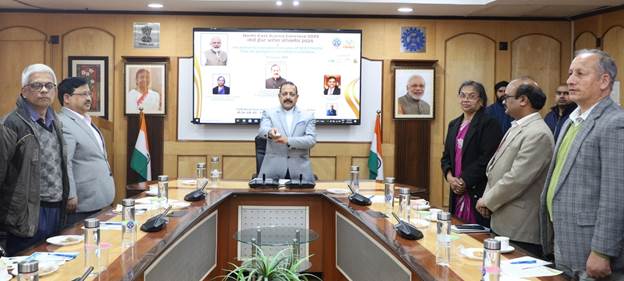
- 30 Jan 2025
In News:
The Aroma Mission, also known as the Lavender Revolution, is emerging as a transformative initiative for regions like Jammu & Kashmir and the North East, prioritised under Prime Minister Narendra Modi’s vision for inclusive development.
It aims to harness the untapped potential of India’s biodiverse regions through the scientific cultivation of aromatic crops and production of essential oils, with the dual goals of economic upliftment and sustainable innovation.
Key Objectives and Features:
- Launched By: Ministry of Science & Technology
- Nodal Agency: CSIR-Central Institute of Medicinal and Aromatic Plants (CIMAP), Lucknow
- Started In: Jammu & Kashmir, now extended to the North East
- Known As: Lavender Revolution
- Purpose: Boost India’s aroma industry by promoting the cultivation of high-value aromatic crops and increasing the production of essential oils.
Major Focus Areas:
- Crops Cultivated: Lavender, lemongrass, citronella, palmarosa, vetiver, patchouli, rose, peppermint, and chamomile
- Target Sectors: Cosmetics, aromatherapy, pharmaceuticals, and food flavouring industries
Impact and Achievements:
- Over 5,000 hectares brought under aromatic crop cultivation in the North East.
- Establishment of 39 essential oil distillation units.
- Distribution of 1 lakh agarwood saplings planned to boost the region's share in global aromatic plant trade.
- Expected annual essential oil production: 2,000 tonnes, valued at over ?300 crores.
- Estimated to generate 60 lakh man-days of rural employment.
- Projected increase in farmers’ income by ?60,000–?70,000 per hectare annually.
Institutional Support: IICON – Incubation and Innovation Complex
- Location: CSIR-North East Institute of Science and Technology (CSIR-NEIST), Jorhat, Assam
- Launched By: Dr. Jitendra Singh (Minister of Science & Technology)
- Purpose: Provide technical assistance, advanced facilities, and business incubation support for startups, MSMEs, and SHGs.
- Facilities: Access to 27 cutting-edge technologies for up to two years to help refine production and marketing strategies.
Integrated Development Approach:
The Aroma Mission exemplifies the “whole-of-government” approach, aligning with various flagship programmes such as:
- Start-Up India
- MSME Development
- Doubling Farmers’ Income
- Women Empowerment (e.g., through Rural Women Technology Parks)
- Act East Policy (enhancing North East's connectivity and trade potential)
Over 25 startups and self-help groups have already been empowered through access to facilities and entrepreneurial training at IICON, contributing to local innovation ecosystems.
Strategic Significance:
- Regional Empowerment: Converts underutilised natural resources into economic assets, especially in remote regions like J&K and the North East.
- Environmental Sustainability: Encourages eco-friendly cultivation and reduces pressure on traditional farming.
- Economic Diversification: Supports India’s transition to a bio-economy, with aromatic plant industries offering export potential and rural employment.
- Vision India@2047: Positions the North East as a hub for biotechnology, essential oils, innovation, and trade, aligning with long-term national growth goals.
Olive Ridley Turtles
- 30 Jan 2025
In News:
The Rushikulya river mouth in Odisha is witnessing the anticipated mass nesting of Olive Ridley turtles — a critical event for the survival of this vulnerable marine species. This phenomenon, known as arribada, highlights the ecological significance of India’s coastal biodiversity and the urgent need for marine conservation.
About Olive Ridley Turtles (Lepidochelys olivacea)
- Taxonomy:
- Scientific Name: Lepidochelys olivacea
- Class: Reptilia
- Family: Cheloniidae
- Physical Features: These turtles are the smallest and most abundant of all sea turtle species. They are recognized by their olive or grayish-green heart-shaped carapace. Males and females are similar in size, though females have slightly rounder shells.
- Habitat and Distribution: Olive Ridleys are found in warm, tropical waters of the Pacific, Atlantic, and Indian Oceans, inhabiting both open ocean (pelagic) and coastal waters.
Mass Nesting: The Arribada Phenomenon
- Arribada (Spanish for "arrival") refers to the synchronized mass nesting behavior where thousands of females gather on a single beach to lay eggs.
- Nesting occurs annually between December and March, after long migrations of up to 9,000 km. Each female may lay 90–120 eggs, 1 to 3 times per season.
- Temperature-dependent sex determination influences hatchling sex ratios.
- After nesting, females return to the sea, leaving eggs buried in sand.
Major Nesting Sites in India
- Odisha Coast is the most significant nesting ground in India and globally:
- Gahirmatha Marine Sanctuary: World’s largest mass nesting site.
- Rushikulya River Mouth: Second-largest nesting beach in India.
- Devi River Mouth: Another key nesting site in Odisha.
- Andaman and Nicobar Islands have recently emerged as a new mass nesting area, with over 5,000 nests reported in one season.
Ecological Role and Behavior
- Diet: Omnivorous — they feed on jellyfish, crabs, snails, prawns, molluscs, algae, and small fish.
- Behavior: These turtles undertake long migrations annually between feeding and breeding grounds, spending most of their lives at sea.
Protection Status
- IUCN Red List: Vulnerable
- CITES: Appendix I
- Wildlife (Protection) Act, 1972 (India): Schedule I (highest protection)
Threats to Survival
- Bycatch in Fishing Gear: Accidental entanglement in trawls, gillnets, and longlines.
- Habitat Loss: Coastal development for ports, tourism, and industry disrupts nesting beaches.
- Poaching: Turtles and their eggs are harvested for meat, shell, and leather.
- Pollution: Plastic ingestion and marine debris pose severe health risks.
- Climate Change: Rising sea levels and increased sand temperatures impact nesting and hatchling sex ratios.
Conservation Initiatives
- Operation Olivia: Initiated by the Indian Coast Guard in the 1980s to protect turtles during nesting and prevent illegal fishing.
- Turtle Excluder Devices (TEDs): Mandated by the Odisha government in trawl nets; allow turtles to escape while retaining fish catch.
- Tagging Programs: Use of non-corrosive metal tags to study migration patterns and inform conservation strategies.
Global Investment Trends and India’s FDI Outlook
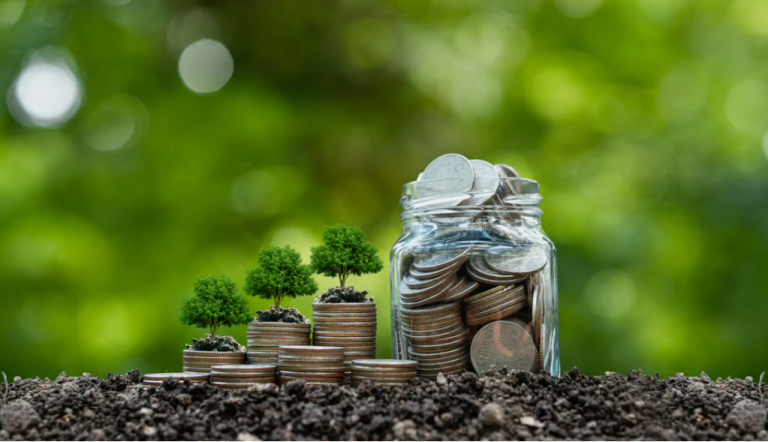
- 30 Jan 2025
In News:
The Global Investment Trends Monitor Report 2024, released by the United Nations Conference on Trade and Development (UNCTAD), highlights a concerning decline in international project finance and Foreign Direct Investment (FDI), particularly in developing economies. This has significant implications for sustainable development, especially in emerging economies like India.
Key Findings from the UNCTAD Report (2024)
Global FDI Trends:
- Global FDI flows, after adjusting for conduit economies, fell by 8% in 2024, despite a nominal increase to USD 1.4 trillion.
- Developed economies witnessed a 15% drop in FDI (excluding conduit economies like Ireland and Luxembourg), while developing economies saw a 2% decline.
- The decline threatens long-term investment in infrastructure, renewable energy, and other SDG-aligned sectors.
Project Finance and Greenfield Investment:
- International project finance declined by 29% in developed and 23% in developing economies.
- In terms of value, developing economies faced a sharper fall of 33%.
- Key countries like India, China, Brazil, Indonesia, and Mexico reported steeper declines than the global average.
- Greenfield investments fell 6% in developing regions, with Africa and Asia being worst affected.
Sectoral Impacts:
- Investments in SDG-related sectors (e.g., water, sanitation, agrifood systems, and infrastructure) declined by 11%.
- International renewable energy finance fell 16%, with North America (-22%) and developing Asia (-18%) seeing notable contractions.
- Africa was the only region to witness an 8% increase in renewable energy project finance.
India’s FDI Landscape: Trends, Opportunities, and Challenges
Recent Performance:
- Between April 2000 and September 2024, India received over USD 1 trillion in cumulative FDI.
- From 2014 to 2024, India attracted USD 667.4 billion, a 119% increase over the previous decade.
- In 2024, India’s greenfield projects grew, but international project finance fell 23% in number and 33% in value.
Regulatory Framework:
- FDI is regulated under the Foreign Exchange Management Act (FEMA), 1999, administered by DPIIT, Ministry of Commerce and Industry.
- Prohibited sectors: Atomic energy, betting, lotteries, chit funds, tobacco, and real estate (excluding construction development).
Outlook for 2025 and Strategic Opportunities
Global FDI Projections:
- UNCTAD anticipates moderate global FDI growth in 2025.
- Regions like ASEAN, Eastern Europe, and Central America may benefit from supply chain realignments.
- India is projected to see a moderate rise in FDI, aided by:
- Improved financing conditions,
- Mergers and acquisitions,
- Ongoing policy reforms.
Key Growth Sectors:
- High potential in AI, cloud computing, cybersecurity, electric vehicles, and green hydrogen.
- FDI will be influenced by geopolitical dynamics, interest rates, GDP growth, and technological transitions.
FDI in India: Opportunities and Challenges
Opportunities:
- Large consumer base (1.4 billion population) and young workforce (65% under 35).
- Government schemes like Make in India and Atmanirbhar Bharat incentivize foreign investment.
- Strategic location positions India as a gateway to South Asia, the Middle East, and Southeast Asia.
Challenges:
- Regulatory complexity, including retrospective taxation and bureaucratic delays.
- Infrastructure deficits, particularly outside urban hubs.
- Rigid labour laws and inconsistent policy enforcement.
Investor Expectations:
- Technology transfer in priority sectors.
- Employment generation to absorb India’s growing labor force.
- Sustainable investments in line with India’s climate commitments under the National Action Plan on Climate Change.
Asian Waterbird Census 2025
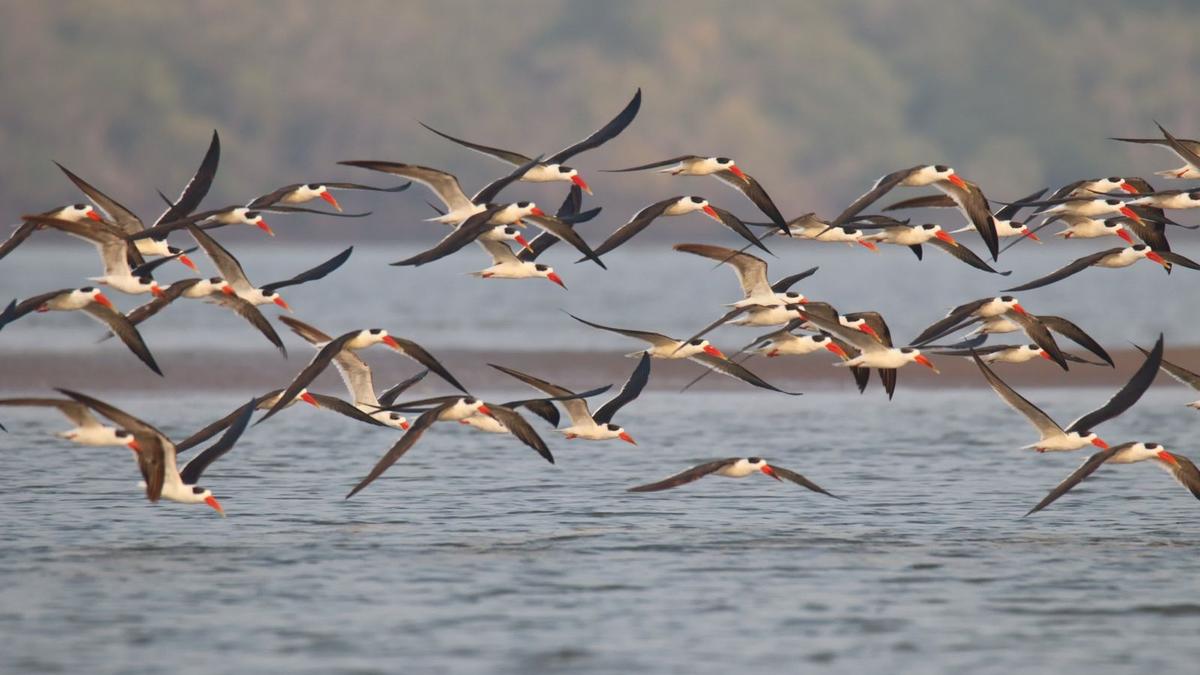
- 29 Jan 2025
In News:
As per the Asian Waterbird Census-2025, a record number of 39,725 birds belonging to 106 species have been sighted in the Coringa Wildlife Sanctuary and adjoining wetlands.
Asian Waterbird Census (AWC): An Overview
- AWC is an annual citizen-science programme that supports the conservation of wetlands and waterbirds across Asia.
- Initiated in 1987 in the Indian subcontinent, it now covers extensive regions of East and Southeast Asia, Japan, Australasia, and parts of the Central Asian and East Asian–Australasian Flyways.
- AWC is the Asian chapter of the global International Waterbird Census (IWC).
- In India, it is coordinated by the Bombay Natural History Society (BNHS) and the Wildlife Institute of India (WII) every January.
About BNHS (Bombay Natural History Society)
- An Indian NGO engaged in biodiversity research and conservation.
- Recognized as a Scientific and Industrial Research Organisation (SIRO) by the Department of Science and Technology.
- Official partner of BirdLife International in India.
Coringa Wildlife Sanctuary (Andhra Pradesh): Census Findings 2025
- The Asian Waterbird Census 2025 recorded a record 39,725 birds representing 106 species in the Coringa Wildlife Sanctuary (CWS) and adjoining Godavari estuary wetlands.
- Of these, nearly 70 species are migratory, using the site as a key winter feeding ground.
Species of Conservation Concern
- Endangered species sighted:
- Indian Skimmer (Rynchops albicollis) – ~450 individuals sighted
- Black-bellied Tern (Sterna acuticauda)
- Great Knot (Calidris tenuirostris)
- Vulnerable species: Common Pochard (Aythya ferina)
- Near Threatened species: 11 species identified
Migratory Pathways and Monitoring
- Migrants such as the Great Knot travel from Russia, Siberia, China, and Mongolia to the Godavari estuary.
- A tagged Great Knot, tracked from Russia, was recorded after a 7,500 km journey, seen in Bhairavapalem mudflat and Etimoga wetland in successive winters (2024 and 2025).
- Data sharing with global avian research groups aids in tracking migratory patterns and supports conservation of endangered species.
Ecological and Ramsar Significance
- The Godavari estuary supports feeding grounds for nearly 90,000 birds, as observed by CWS authorities.
- Avian diversity is a key criterion for Ramsar Site designation, and experts advocate for Coringa Wildlife Sanctuary and its surroundings to be recognized as a wetland of international importance under the Ramsar Convention.
Resumption of Kailash Mansarovar Yatra
- 29 Jan 2025
In News:
After a four-year hiatus due to the COVID-19 pandemic and the 2020 Galwan Valley clash, India and China have agreed to resume the Kailash Mansarovar Yatra in June 2025, along with other confidence-building measures.
This decision aligns with the 75th anniversary of India-China diplomatic relations, symbolizing an attempt to stabilize and recalibrate bilateral ties through people-centric initiatives.
Key Highlights:
Key announcements include:
- Resumption of the Kailash Mansarovar Yatra
- Restoration of direct air services
- Visa issuance for journalists and think tanks
- Hydrological data sharing and cooperation on trans-border rivers
- Enhanced people-to-people exchanges and academic/media dialogues
About the Yatra
- The Yatra involves a pilgrimage to Mount Kailash and Lake Mansarovar in the Tibetan Autonomous Region (Xizang).
- Organised by India’s Ministry of External Affairs between June–September, via two routes:
- Lipulekh Pass (Uttarakhand)
- Nathu La Pass (Sikkim)
- Supported by the state governments of Uttarakhand, Sikkim, and Delhi, and coordinated with the Indo-Tibetan Border Police.
- Open only to Indian citizens with valid passports; no financial subsidy is provided by the Government of India.
Geographical and Religious Significance:
- Mount Kailash, located in the Kailash Range (Transhimalaya), is the source of four major rivers: Sutlej, Brahmaputra, Indus, and Karnali.
- Revered across religions:
- Hindus consider it the abode of Lord Shiva; Mansarovar is one of the 51 Shaktipeeths.
- Buddhists and Tibetans regard it as the ‘Stairway to Heaven’.
- Jains believe Rishabhanatha attained enlightenment here—referred to as Ashtapada.
Diplomatic Interpretations and Differences
- India’s Position: Emphasized a step-by-step, cautious approach focusing on rebuilding trust and resolving contentious issues, particularly the border situation. India sought policy predictability and transparency in trade, and reaffirmed the importance of mutual respect and interests.
- China’s Position: Took a more optimistic and strategic stance, stressing the need to avoid "mutual suspicion" and to advance cooperation based on long-term national interests. It emphasized early action, including the swift resumption of the Yatra and flights.
Ongoing Concerns in Bilateral Relations
- Unresolved Border Disputes:
- Tensions persist along the Line of Actual Control (LAC)—notably in Galwan (2020) and Tawang (2022).
- India and China have made limited progress in resolving issues in Depsang and Demchok.
- Trade Imbalance:
- Bilateral trade in 2023–24 stood at USD 118.4 billion, with India facing a trade deficit of USD 85 billion.
- India raised concerns on market access and non-tariff barriers.
- China-Pakistan Axis:
- The China-Pakistan Economic Corridor (CPEC) runs through Pakistan-occupied Kashmir, violating India’s territorial sovereignty.
- China’s support for Pakistan in multilateral forums remains a thorn in bilateral ties.
- China’s Regional Assertiveness:
- Expanding influence in South Asia and the Indian Ocean through the String of Pearls, strategic presence in Maldives, Sri Lanka, and strong claims in the South China Sea, contribute to regional unease.
Significance of the Current Diplomatic Thaw
- The resumption of the Kailash Mansarovar Yatra reflects a symbolic softening in ties, emphasizing religious diplomacy and people-to-people connection.
- Restoration of direct flights and journalistic presence can aid in reducing mistrust.
- Hydrological cooperation, particularly over the Brahmaputra River, is essential for India’s water security, especially with China constructing mega-dams upstream.
Way Forward
- Rebuild Trust Through Engagement: Maintain diplomatic dialogues via platforms like BRICS, SCO, and G20, while holding to core national interests.
- Resolve Border Disputes: Pursue early finalization of the LAC through confidence-building agreements and military disengagement.
- Diversify Economic Strategy: Reduce dependency on Chinese imports by strengthening domestic manufacturing and regional trade alternatives.
- Enhance Cultural Diplomacy: Use platforms like the Kailash Yatra to foster mutual understanding rooted in shared civilizational values.
- Promote Transparency and Reciprocity: Especially in media, trade, and information sharing, to ensure balanced bilateral engagement.
DeepSeek AI
- 29 Jan 2025
In News:
DeepSeek, a Chinese artificial intelligence (AI) startup based in Hangzhou, has emerged as a major player in the global AI race with the release of its models DeepSeek-V3 and DeepSeek-R1.
These models are designed to rival top-tier Western counterparts such as OpenAI’s GPT-4, Google’s Bard, and Meta’s LLaMA, but at a fraction of the cost.
Key Developments and Technological Edge
- Cost Efficiency: DeepSeek-V3 was trained at a cost of under $6 million, using older Nvidia H800 chips, compared to the estimated $100 million cost of GPT-4. Its subscription fee is significantly lower—$0.50/month versus $20/month for ChatGPT.
- Model Performance:
- DeepSeek-R1, a “reasoning model,” reportedly matches OpenAI’s o1 model in mathematics, coding, and contextual processing, while using fewer resources through incremental reasoning.
- Models use Mixture-of-Experts (MoE) architecture, reinforcement learning, and self-improvement loops, making them more memory-efficient and scalable.
- Advanced Models Released:
- DeepSeek Coder / Coder-V2 (for coding tasks).
- DeepSeek LLM (67B parameters), V2, V3 (671B parameters), and R1-Distill (fine-tuned using synthetic data).
Global Impact and Market Disruption
- App Success & Outages: The DeepSeek AI app topped the U.S. App Store, surpassing ChatGPT. This success triggered large-scale cyberattacks and caused temporary service disruptions.
- Market Reaction: The launch reportedly led to a historic $600 billion drop in Nvidia's market value, highlighting the disruptive potential of cost-efficient AI innovation.
- Geopolitical Ramifications: The rise of DeepSeek is seen as a technological parallel to the 1957 Sputnik moment, which shocked the U.S. and triggered the space race.
DeepSeek has reignited US-China AI rivalry, intensifying great-power competition in frontier technologies.
Strategic Lessons for India
- Bipolar AI Landscape: The U.S. and China dominate AI due to massive investment and infrastructure. Middle powers like India and France face the challenge of staying relevant without matching this scale.
- Doing More with Less: DeepSeek’s success underscores how innovation with limited resources can be effective—providing a model for India to emulate via Small Language Models (SLMs) and cost-efficient AI strategies.
- Sovereign AI & Global Governance:
- India advocates for “Sovereign AI”, balancing independence and strategic alliances, especially with France and the U.S.
- Future cooperation between U.S. and China on AI governance, similar to Cold War-era nuclear agreements, is a possibility.
- India must learn from past exclusions (e.g., nuclear governance) and proactively shape global AI governance frameworks.
- Policy Implications:
- DeepSeek's rise may lead to stricter U.S. chip export restrictions to China.
- It presents both security risks (censorship, pro-China bias) and opportunities (cost-effective models, domestic self-reliance).
Ethical Concerns and Limitations
- Censorship: DeepSeek complies with Chinese state censorship, refusing responses on politically sensitive topics (e.g., Tiananmen Square), raising concerns about bias and lack of transparency.
Security & Privacy: Experts have flagged potential data privacy and AI ethics issues, emphasizing the need for robust global standards and accountability mechanisms.
Indian Squid

- 29 Jan 2025
In News:
Researchers at the Central Marine Fisheries Research Institute (CMFRI), Kochi, have successfully decoded the gene expression pattern of the Indian squid (Uroteuthis duvaucelii), marking a major scientific advancement with wide-ranging implications for neuroscience, environmental studies, and sustainable marine resource management.
About Indian Squid
- Common Name: Indian Calamari
- Scientific Classification: Cephalopod
- Size: Typically 20–30 cm; can grow up to 50 cm
- Appearance: Light pinkish-grey body with two large fins, eight arms, and two longer tentacles used for capturing prey
- Key Abilities:
- Camouflage
- Jet propulsion for rapid movement
- Advanced nervous system
- Problem-solving skills and behavioral intelligence
Habitat & Distribution
- Preferred Habitat: Coastal and open sea regions of the Indian Ocean
- Found at depths ranging from 100 to 500 meters, some even up to 1,500 meters
- Requires high dissolved oxygen levels for respiration
- Geographic Distribution:
- Widely distributed in the Indo-West Pacific
- Found in Indian Ocean, Red Sea, Arabian Sea, from Mozambique to the South China Sea, Philippine Sea, and northward to Taiwan
- Conservation Status: IUCN Red List: Least Concern
Scientific Significance of Genetic Research
- Key Findings:
- Revealed genetic similarities with higher vertebrates like fish and humans, suggesting deep evolutionary links
- Indicates that Indian squid could serve as a model organism to study brain evolution, intelligence, and neurobiological functions
- Potential to inform research in neural circuits, memory, learning, and even neurological diseases
- Findings may also explain squid's adaptive success, such as evading predators and fishing pressures due to high cognitive ability
Institutional Background: CMFRI
- Established: 1947
- Affiliation: Part of the Indian Council of Agricultural Research (ICAR) since 1967
- Headquarters: Kochi, Kerala
- Mandate: Research on sustainable marine fisheries and ecosystem conservation
CMFRI’s Broader Recommendations for Sustainable Marine Management
- Enactment of Sea Fishing Act to regulate fishing beyond territorial waters
- Institutionalization of ecological stock assessments for sustainable exploitation
- Simplification and promotion of open mariculture with focus on environmental sustainability
- Use of AI-based systems to estimate landings and monitor fishing vessels
- Deep-sea resource exploration and alternative fishing methods
- Institutional mechanism for supervising deep-sea fishing
- Strengthening insurance coverage for marine fishers
RBI Payment System Report 2024

- 29 Jan 2025
In News:
The Payment System Report – December 2024 is a bi-annual publication by the Reserve Bank of India (RBI).
It analyses trends in digital and retail payment systems over the last five calendar years (up to CY-2024) and highlights India's transformation into a global leader in payment innovation and inclusion.
Growth in Digital Transactions
- Exponential Growth: Digital payment transactions rose 94 times in volume (from 222 crore in 2013 to 20,787 crore in 2024) and 3.5 times in value (from ?772 lakh crore to ?2,758 lakh crore).
- Recent CAGR (2019–2024):
- Volume: 45.9% CAGR
- Value: 10.2% CAGR
- Retail Digital Payments: From 162 crore transactions in FY13 to 16,416 crore in FY24 — a 100-fold increase in 12 years.
- Digital Payments Index (DPI): Surged from a base of 100 in March 2018 to 445.50 in March 2024, indicating massive digital adoption.
UPI: A Game-Changer
- Launched in 2016 by NPCI, UPI has revolutionized mobile-based payments.
- CAGR (Last 5 Years):
- Volume: 74.03%
- Value: 68.14%
- Monthly Transactions: UPI processes over 16 billion transactions monthly, ranking among the largest globally.
- Inclusive Innovations:
- UPI Lite & UPI Lite X: For offline/small-value payments.
- UPI123Pay: For feature phone users.
- UPI 2.0: Includes auto-debit and recurring payment functionalities.
Credit and Debit Card Trends
- Credit Cards:
- Growth: More than doubled from 5.53 crore (Dec 2019) to 10.80 crore (Dec 2024).
- Debit Cards:
- Stable Usage: Marginal increase from 80.53 crore to 99.09 crore in the same period.
Cross-Border Payment Integration
- RBI is actively enhancing cross-border payments by integrating India's UPI with international Fast Payment Systems (FPSs), addressing high costs, delays, and limited access.
- Key Developments:
- UPI-PayNow Linkage (Feb 2023): India-Singapore real-time cross-border payments.
- UPI-enabled QR Payments: Available in Bhutan, France, Mauritius, Nepal, Singapore, Sri Lanka, UAE.
- Project Nexus:
- A BIS-conceptualized multilateral project.
- Aims to interlink FPSs of India, Malaysia, Philippines, Singapore, and Thailand for seamless retail payments.
Institutional and Legal Framework
- Legal Backbone: Payments and Settlement Systems Act, 2007 (PSS Act) empowers RBI to:
- Regulate, supervise, and license payment system operators.
- Authorize systems like NPCI, card networks, ATM operators, etc.
- Governing Body:
- Board for Regulation and Supervision of Payment and Settlement Systems (BPSS) under RBI.
- Chairperson: RBI Governor; Vice-Chairperson: Deputy Governor (in charge of DPSS).
- Payment Ecosystem Entities:
- RBI-regulated: RTGS, NEFT, Cheques (CTS).
- NPCI-managed: UPI, IMPS, AePS, BBPS, NETC, NACH, Cards.
- Other PSOs: TReDS, PPIs.
Strategic Significance
- Financial Inclusion: Payment systems are critical tools for promoting inclusive growth by ensuring last-mile delivery of services and direct benefit transfers.
- Global Competitiveness: RBI’s regulatory foresight and innovation have placed India among the global frontrunners in digital payments.
Libia Lobo Sardesai
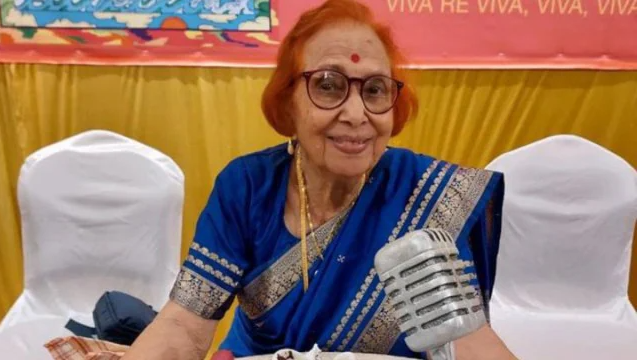
- 28 Jan 2025
In News:
In 2024, at the age of 100, Libia Lobo Sardesai was awarded the Padma Shri for her pivotal role in Goa’s liberation struggle from Portuguese colonial rule.
About Libia Lobo Sardesai
- Born: 25 May 1924, in Portuguese-ruled Goa; raised in Mumbai.
- Profession: Freedom fighter, broadcaster, and Goa’s first Director of Tourism post-liberation.
- Legacy: Symbol of courage and resistance, known as the “voice of Goa’s liberation.”
Role in Goa’s Liberation Movement
- Involvement: Joined the Goan nationalist movement during her college years.
- Underground Radio:
- From 1955 to 1961, Libia, along with her husband Vaman Sardesai and Nicolau Menezes, ran an underground radio station – initially called ‘Q’, later named:
- Goenche Sodvonecho Awaz (Voice of Freedom of Goa) – Konkani
- Voz de Liberdade – Portuguese
- Operated from Amboli (Maharashtra) and Castle Rock (Karnataka) in the Western Ghats.
- Purpose: Counter Portuguese censorship and propaganda; broadcast news, updates, and morale-boosting messages to Goans.
- From 1955 to 1961, Libia, along with her husband Vaman Sardesai and Nicolau Menezes, ran an underground radio station – initially called ‘Q’, later named:
- Final Broadcast:
- On 19 December 1961, Libia flew over Panaji in an IAF plane, announcing Goa’s liberation with the message:
“Rejoice brothers and sisters, Rejoice! Today, after 451 years of alien rule, Goa is free and united with the Motherland.”
Goa Liberation Movement: Background
- Colonial Rule: Goa was under Portuguese rule for over 451 years (from 1510 to 1961).
- Key Phases:
- 1954: India imposed an economic blockade after Portuguese crackdown on satyagrahis.
- August 1955: Mass satyagraha met with violent repression by Portuguese forces.
- Censorship: Portuguese regime enforced total censorship; only official Portuguese narratives were allowed.
- 1961 – Operation Vijay:
- Initiated on 17 December 1961 by the Indian Army under Lt. Gen. J.N. Chaudhuri.
- Portuguese forces surrendered by 19 December 1961, marking Goa’s official liberation.
Notable Leaders of the Movement
- Dr. Ram Manohar Lohia: Sparked initial resistance against Portuguese rule.
- Libia Lobo Sardesai: Voice of the resistance via underground broadcasting.
- Lt. Gen. J.N. Chaudhuri: Led military operations during Operation Vijay.
Significance
- Libia Lobo Sardesai represents the unsung contributions of civil resistance and communication warfare in India’s decolonization.
- Her work sustained nationalist morale, informed citizens under censorship, and shaped the narrative of a liberated Goa.
Aero India 2025
- 28 Jan 2025
In News:
Aero India 2025, the 15th edition of India’s premier aerospace and defence exhibition, is scheduled from February 10–14, 2025, at the Yelahanka Air Force Station, Bengaluru.
Organised by the Ministry of Defence and the Defence Exhibition Organisation (DEO), the event continues to be a vital forum for promoting India's indigenous defence capabilities and fostering international collaboration.
Evolution of Aero India: From Showcase to Strategic Asset
- Inception (1996): Launched as a modest exhibition to attract foreign investments and highlight India’s aerospace potential.
- Growth Phase (2005–2015): Marked by the entry of global giants like Boeing, Airbus, Lockheed Martin, and Dassault Aviation. Indigenous platforms like LCA Tejas began gaining prominence.
- Current Phase (2015–Present): Aligned with ‘Make in India’ and ‘Aatmanirbhar Bharat’, Aero India has become a symbol of India's defence self-reliance and a magnet for global partnerships.
Aero India 2025 Highlights
1. International Participation and Strategic Displays
- Participation from 15+ countries and major OEMs.
- Russia’s Su-57 and USA’s F-35—two of the world’s most advanced 5th-generation fighters—will be showcased together, reflecting India’s growing strategic importance.
- Other prominent platforms: KC-135 Stratotanker, Embraer C-390, and Light Combat Helicopter Prachand.
2. Indigenous Innovation
- Advanced Medium Combat Aircraft (AMCA): India’s 5th-generation stealth fighter, developed by HAL and ADA, will be unveiled.
- Indigenous platforms like LCA Mk2, LUH, HTT-40, ALH, and Naval Twin-Engine Deck-Based Fighter will also be featured.
3. Start-Up Integration via 'Manthan'
- Through the iDEX initiative, Aero India is promoting start-ups working in AI, unmanned systems, cybersecurity, and electronic warfare.
- Start-ups will showcase innovations including jetpack suits, robotics, and defence software tools.
4. Business & Public Engagement
- Business Days: February 10–12, 2025
- Public Days: February 13–14, 2025
- Over 7 lakh visitors expected; the event offers aerial displays, seminars, tech expos, and networking forums.
5. Defence Diplomacy and Deals
- Aero India 2023 had seen over ?80,000 crore worth of MoUs. A similar or higher scale of defence agreements is expected in 2025.
- High-level participation from defence ministers, air chiefs, and CEOs of OEMs, signalling deepening international defence cooperation.
Strategic Significance for India
- Geopolitical Leverage: Participation of both US and Russian defence firms signals India’s strategic autonomy and balanced defence diplomacy.
- Self-Reliance Boost: The event enhances domestic manufacturing by integrating MSMEs, promoting co-development and co-production with foreign partners.
- Global Recognition: Positions India as an emerging aerospace hub in the Indo-Pacific.
- Technological Edge: Demonstrates advancements in stealth technology, avionics, and unmanned systems.
Theme of Aero India 2025: “The Runway to a Billion Opportunities” — highlighting India’s expanding defence manufacturing capabilities and its aim to integrate with the global supply chain.
Uniform Civil Code (UCC) in Uttarakhand
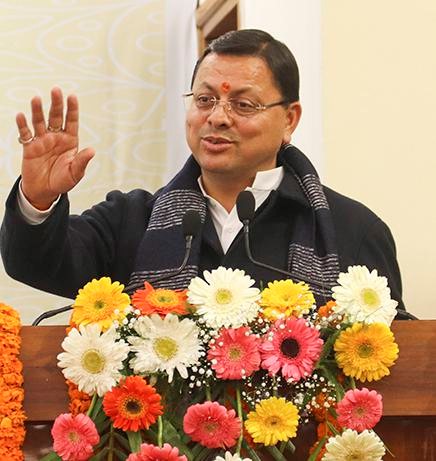
- 28 Jan 2025
In News:
On January 27, 2025, Uttarakhand became the first Indian state to formally implement the Uniform Civil Code (UCC) after Independence. The legislation was passed by the State Assembly on February 7, 2024, and received Presidential assent on March 12, 2024.
Historical Background:
- A five-member expert committee chaired by Justice (Retd.) Ranjana Prakash Desai was constituted to draft the UCC report.
- The committee submitted its report on October 18, 2023.
- Though initially scheduled for implementation by November 9, 2024 (Uttarakhand's Foundation Day), the rollout was delayed due to administrative preparedness and staff training.
Scope and Applicability:
- Applicable to all residents of Uttarakhand, including those in live-in relationships outside the state.
- Scheduled Tribes (as per Article 342) and migrated natives have been exempted to safeguard cultural rights.
Key Provisions of the UCC:
1. Marriage, Divorce & Live-in Relationships
- Legal marriage age: 21 years (men), 18 years (women).
- Mandatory registration of marriages, divorces, and live-in relationships.
- Prohibited practices: Triple talaq, halala, iddat, polygamy, and child marriage.
- Live-in Relationships:
- Mandatory registration for couples aged 21 and above.
- Parental consent required if under 21.
- Termination of live-in relationships requires mutual consent.
- Mandatory reporting of pregnancy within 30 days of childbirth.
- Landlords cannot deny housing to registered live-in couples.
2. Inheritance & Property Rights
- Equal inheritance rights for sons and daughters.
- Children born to live-in couples recognized as legitimate, eligible for inheritance.
3. Wills and Succession
- Wills can be:
- Submitted online.
- Uploaded as handwritten/typed documents.
- Recorded as a 3-minute video.
Digital Infrastructure – UCC Portal (ucc.uk.gov.in):
- Aadhaar-based verification for authenticity.
- AI-based multilingual translation in 22 Indian languages.
- Tatkal service for expedited registrations with a nominal fee.
- Integrated with 13+ departments, including police, civic bodies, and courts.
- Disaster recovery systems and cloud-based architecture ensure secure data management.
- Access to:
- Online registration of marriages, divorces, live-in relationships.
- Upload and registration of wills.
- Grievance redressal and appeal mechanisms.
Administrative Framework:
- Village Panchayat Development Officers appointed as sub-registrars in rural areas.
- Common Service Centres (CSCs) enabled to facilitate registration, especially in remote and mountainous areas.
- Registration applications processed within 15 days, or 3 days in emergencies.
- Appeals must be filed within 30 days of rejection, resolved within 60 days.
Penalties:
- Initial warnings for non-compliance.
- Fines imposed for repeated violations.
Significance:
- The UCC aims to promote gender equality, legal uniformity, and women's empowerment.
- Represents a constitutional vision under Article 44, reinforcing the idea of a common civil law for all citizens.
- Seen as a potential model for other states in India.
Himachal Pradesh: Statehood Day
- 28 Jan 2025
In News:
The Prime Minister greeted the people of Himachal Pradesh (HP) on the occasion of Statehood Day (25th January).
Key Highlights:
Statehood Day: Celebrated annually on 25th January, marking the day Himachal Pradesh attained full statehood in 1971.
Historical Timeline:
- 15 April 1948: Formation of Chief Commissioner’s Province of Himachal Pradesh through the merger of 30 princely hill states.
- 26 January 1950: Became a Part C State with the commencement of the Indian Constitution. (Part C states comprised former Chief Commissioner’s provinces and some princely states.)
- 1 November 1956: Reconstituted as a Union Territory based on the recommendations of the States Reorganisation Commission.
- 1 November 1966: Kangra district and other hilly areas of Punjab merged into Himachal Pradesh, yet it remained a Union Territory.
- 18 December 1970: The State of Himachal Pradesh Act was passed by Parliament.
- 25 January 1971: Himachal Pradesh became the 18th state of the Indian Union.
Jawaharlal Nehru Port Authority
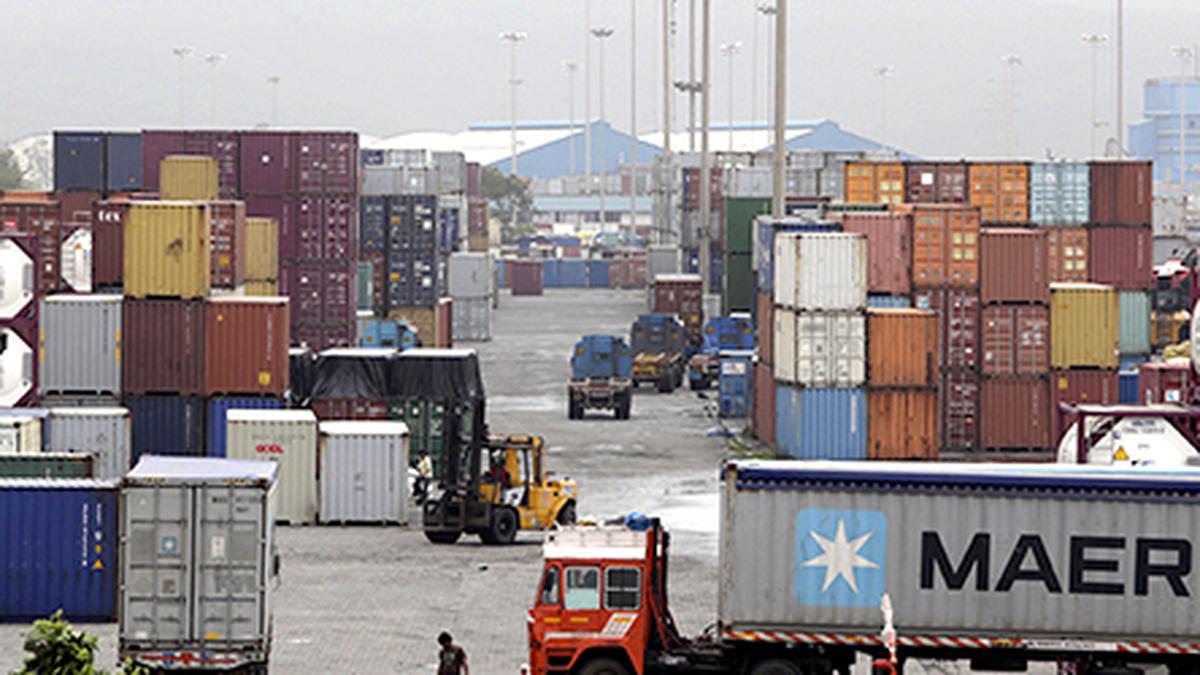
- 28 Jan 2025
In News:
The Jawaharlal Nehru Port Authority (JNPA) in Mumbai is set to become India’s first port to enter top global ports with 10 million TEUs (twenty-foot equivalent units) by 2027.
Overview:
- Location: Navi Mumbai, Maharashtra
- Commissioned: 1989
- Significance: India’s first Landlord Major Port, fully adopting the landlord port model.
Performance & Capacity Expansion:
- In 2024, JNPA handled a record 7.05 million TEUs, operating at over 90% capacity, with an 11% year-on-year growth.
- By 2027, JNPA is projected to become India’s first port to handle 10 million TEUs annually, marking its entry into the global top ports list.
- Current container handling capacity: 7.6 million TEUs
- Projected capacity by 2027: 10.4 million TEUs
Infrastructure Developments:
- Commissioning of Phase II of Bharat Mumbai Container Terminal (BMCT) to add 2.4 million TEUs.
- Upgradation of Nhava Sheva Freeport Terminal expected in 2025.
- Five operational container terminals, including:
- BMCT
- Nhava Sheva International Container Terminal (NSICT)
- Gateway Terminals India Pvt Ltd (GTIPL)
Key Projects & Investments (2024):
- ?2,000 crore worth of capacity enhancement projects launched.
- Solar-powered boat, two indigenously developed 70T tugs, and three fire tenders commissioned for safety and efficiency.
- Agro-processing facility (?284 crore) on 27 acres within port complex to handle 1.2 million tonnes annually – includes processing, sorting, packing, and food safety labs.
- Warehousing and CFS infrastructure (?300 crore investment) to generate 1,20,000 TEUs/year through ambient and temperature-controlled facilities.
Vadhavan Port Project:
- Proposed as India’s 13th major port (under construction).
- MoU with Reliance Industries Ltd: Development of liquid jetty and 50 acres of land under PPP model (investment: ?645 crore; operational by 2030).
- MoU with DBKKVD Dapoli: For integrated agri-horticultural development in Dahanu and Palghar.
- MoU with HUDCO: Funding commitment of ?25,000 crore for port infrastructure under PPP mode.
Strategic Importance:
- JNPA is central to India’s maritime trade, which accounts for 95% of trade by volume and 70% by value.
- Satellite and dry ports at Vadhavan, Jalna, and Wardha to improve hinterland connectivity and trade logistics.
Paraquat Poisoning
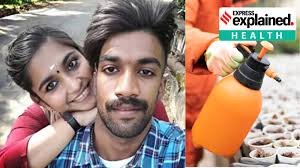
- 27 Jan 2025
In News:
- In a landmark ruling, a Thiruvananthapuram court sentenced a 24-year-old woman to death for the murder of her boyfriend by poisoning him with paraquat, a highly toxic herbicide.
- The incident, which occurred in 2022, has brought the spotlight back on paraquat's widespread availability, extreme toxicity, and the lack of regulatory enforcement in India.
What is Paraquat?
- Paraquat, chemically known as paraquat dichloride or methyl viologen, is one of the most widely used herbicides globally.
- It is primarily used for:
- Weed control
- Crop desiccation, especially in crops like cotton before harvest
- Despite its toxicity, India and the United States continue to permit its usage, unlike over 70 countries, including China, Brazil, and the European Union, which have banned it.
WHO Classification
- The World Health Organization (WHO) classifies paraquat as a Category 2 chemical, meaning it is moderately hazardous and irritating to the skin and eyes.
- It has a narrow margin between a safe and lethal dose, making accidental or intentional poisoning common and often fatal.
Routes and Effects of Exposure
- Ingestion is the most common method of poisoning.
- It may also occur through inhalation or skin contact, especially if the exposure is prolonged or the skin is broken.
Symptoms Vary by Dosage and Exposure Time:
Exposure Level Symptoms and Organ Damage
Small Quantity Gradual damage to lungs, liver, kidneys, and heart over days/weeks
Large Quantity Immediate symptoms such as:
- Acute kidney failure
- Liver and heart failure
- Seizures
- Respiratory failure
- Severe abdominal pain
- Bloody diarrhea
- Nausea
- Mouth and throat swelling |
Treatment and Challenges
- No known antidote exists for paraquat poisoning.
- Treatment options include:
- Immunosuppressive therapy
- Charcoal hemoperfusion (a blood-purification technique)
- However, these treatments offer limited efficacy, especially in cases of large-dose ingestion.
Regulatory and Public Health Implications in India
- Despite paraquat’s well-documented toxicity, it remains:
- Legally available in India
- Easily accessible in rural markets
- The lack of regulation increases the risks of:
- Occupational exposure
- Accidental poisoning
- Use in crimes or suicides
Whip System in Indian Parliament
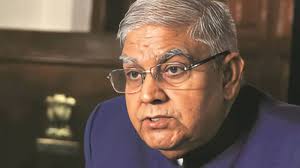
- 27 Jan 2025
In News:
Vice President Jagdeep Dhankhar recently criticized the party whip system, arguing that it curtails the freedom of expression of Members of Parliament (MPs) and enforces servility by mandating strict adherence to the party line. His remarks have sparked a renewed debate on the balance between party discipline and individual autonomy in a parliamentary democracy.
What is a Party Whip?
A whip in parliamentary parlance is both a directive and a designated official of a political party. The directive instructs legislators on voting behavior on specific issues such as bills, motions, or resolutions. The designated whip ensures attendance, adherence, and discipline within the party ranks.
- The term “whip” originated from England’s hunting tradition, where a “whipper-in” kept hounds within the pack.
- The political usage dates back to Edmund Burke in the British Parliament.
- In India, the whip system has been in place since the start of parliamentary governance.
Constitutional and Legal Framework
- The whip system is not mentioned in the Constitution, Rules of Procedure, or any statute, but functions through parliamentary conventions.
- The Anti-Defection Law (52nd Amendment, 1985) enforces the whip by allowing disqualification of MPs/MLAs for defying it, thus preserving political stability and party integrity.
Quorum Requirement: As per Article 100 of the Constitution, quorum in Parliament is one-tenth of the total membership:
- Lok Sabha: 55 members
- Rajya Sabha: 25 members
Types of Whips
- One-Line Whip: Informational—members may abstain.
- Two-Line Whip: Requires presence but does not dictate voting.
- Three-Line Whip: Strictest—mandates attendance and voting as directed.
- Violation can lead to disqualification under the Anti-Defection Law, unless two-thirds of the party members dissent together.
Functions and Significance
- Ensures Attendance: Maintains quorum during critical votes.
- Secures Support: Helps pass or oppose legislation.
- Maintains Discipline: Prevents cross-voting or defection.
- Internal Monitoring: Identifies discontent among MPs and informs party leadership.
- Party Cohesion: Acts as a channel between MPs and party high command.
- Democratic Functioning: Ensures government stability, especially during division voting, where numbers decide the fate of motions like the No-Confidence Motion.
For ruling coalitions, a united stance during such votes is crucial to showcase majority strength.
Chief Whip and Institutional Structure
- The Chief Whip is the most critical functionary in enforcing the whip.
- In the Lok Sabha, the Minister of Parliamentary Affairs usually acts as the government’s chief whip.
- In the Rajya Sabha, it is the Minister of State for Parliamentary Affairs.
- Whips also coordinate which MPs speak, when, and on what issues.
The All-India Whips Conference, held since 1952, allows whips from all parties to discuss coordination strategies and share parliamentary practices.
Criticism and Contemporary Debate
- Critics, including the Vice President, argue that whips limit deliberative democracy, reduce MPs to mere rubber stamps, and suppress individual judgment.
- However, supporters claim that whips are essential to prevent chaos, ensure smooth functioning, and uphold mandated party ideologies, especially in a system where governments often hinge on narrow majorities.
Former Lok Sabha Speaker Sumitra Mahajan defended the whip, stating that MPs elected on a party ticket must uphold the party’s collective ideology and decisions, even if personal disagreement exists.
India’s Journey of Fiscal Consolidation

- 27 Jan 2025
In News:
Fiscal Consolidation refers to the strategic management of government finances aimed at reducing fiscal deficits, controlling public debt, and ensuring macroeconomic stability. India’s recent journey in this regard has been marked by a significant transformation, particularly in the post-2014 era.
Background:
In 2013-14, India was labelled as one of the "Fragile Five", largely due to its ballooning fiscal deficit (touching 5% of GDP in a quarter), high inflation, and weakening currency. This tag underscored the urgency of restoring fiscal health.
Post-2014 Measures:
- FRBM Act Revamp: The government recommitted to the Fiscal Responsibility and Budget Management (FRBM) Act, 2003, revising fiscal targets and focusing on fiscal discipline.
- Deficit Reduction: Fiscal deficit was reduced from 4.5% of GDP in FY 2013-14 to 3.4% in FY 2018-19.
- Revenue Boost: Digitization and broader tax reforms helped increase tax receipts from 10% of GDP (FY 2014-15) to 11.8% (FY 2023-24).
- Capex Focus: Capital expenditure nearly doubled from 1.6% of GDP in FY 2014-15 to 3.2% in FY 2023-24, emphasizing infrastructure over consumption.
Pandemic Impact and Recovery:
- During COVID-19, India’s fiscal deficit soared to 9.2% of GDP (FY 2020-21) due to emergency spending.
- Unlike blanket stimulus in some countries, India opted for targeted support (MSMEs, displaced populations, healthcare) while continuing infrastructure investment.
- This strategy avoided long-term inflationary pressure and built long-term productive capacity.
Structural Reforms:
- Production Linked Incentive (PLI) schemes aimed at reducing import dependence and boosting domestic manufacturing.
- Enhanced export competitiveness due to fiscal prudence and macroeconomic stability.
Current Scenario:
- Fiscal deficit reduced to 5.6% of GDP in FY 2023-24, with a target of 4.9% in FY 2024-25, and further narrowing to 4.5% by FY 2025-26.
- States remain a concern: their deficits exceed the 3% of GSDP limit, averaging 3.2% in FY 2023-24, with rising debt levels and declining capex.
FRBM Act & N.K. Singh Committee:
- FRBM Act (2003) aims to cap the fiscal deficit at 3% of GDP.
- The N.K. Singh Committee (2016) recommended:
- Shift from rigid deficit targets to debt as the primary anchor.
- Set up an autonomous Fiscal Council.
- Flexibility via an “escape clause” (up to 0.5% extra deficit during crises).
- Limit borrowings from RBI to specific emergency conditions.
Significance of Fiscal Consolidation:
- Macroeconomic Stability: Controls inflation and keeps currency stable.
- Investment Magnet: Low deficits improve investor confidence.
- Reduced Debt Burden: Less borrowing means less stress on future generations.
- Efficient Governance: Ensures better resource allocation and economic resilience.
Chronic Pulmonary Aspergillosis (CPA)
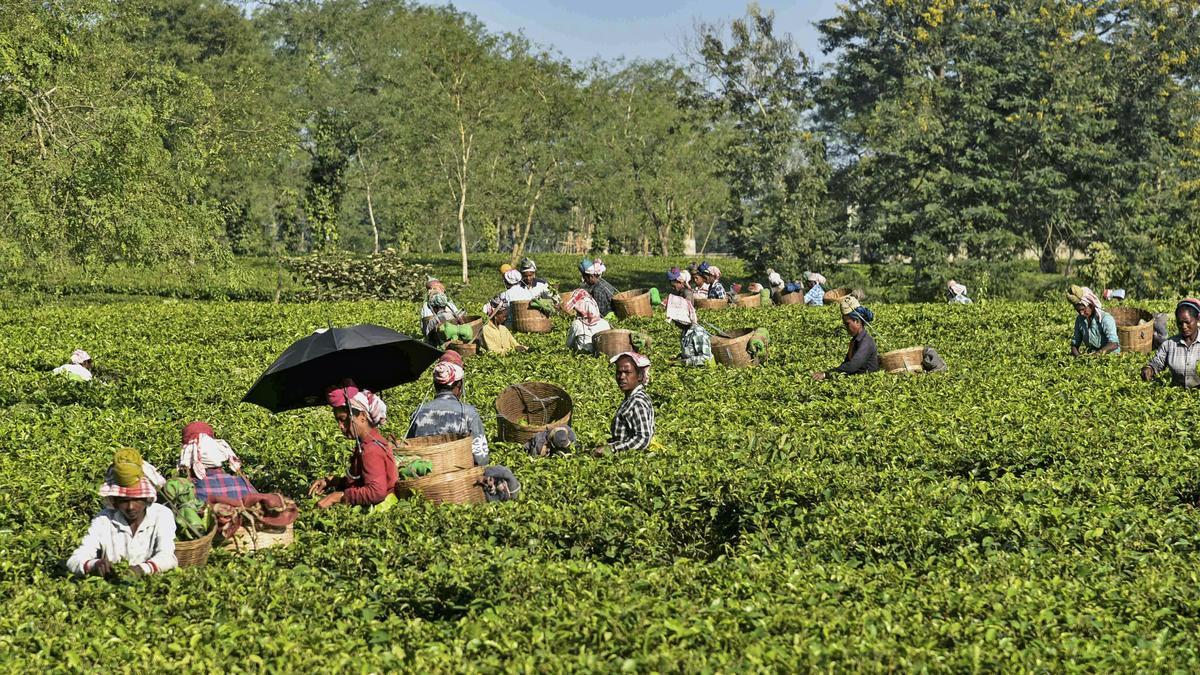
- 27 Jan 2025
In News:
A recent study conducted by Assam Medical College and Hospital has revealed a high prevalence of Chronic Pulmonary Aspergillosis (CPA) among tuberculosis (TB) survivors in Assam’s tea garden communities. Published in the PLOS Neglected Tropical Diseases journal, the research underscores a significant public health concern in a region already burdened by TB.
What is Chronic Pulmonary Aspergillosis (CPA)?
- CPA is a severe, life-threatening fungal infection caused by Aspergillus fumigatus, a filamentous fungus commonly found in soil, decaying vegetation, and humid organic matter.
- It predominantly affects individuals with weakened immune systems or pre-existing lung conditions, especially those who have recovered from or are currently battling TB.
- CPA is not contagious and cannot be transmitted from person to person.
Symptoms and Clinical Presentation:
CPA shares many clinical features with TB, making diagnosis challenging:
- Chronic cough
- Haemoptysis (coughing up blood)
- Persistent respiratory symptoms
- Weight loss
- Fatigue
- Shortness of breath
- Wheezing
Key Findings from Assam:
- Study Area: Conducted in Dibrugarh district, covering tea workers and their dependents from four major tea estates.
- Sample Size: 128 patients with prolonged respiratory symptoms (>3 months).
- Prevalence:
- CPA prevalence: 17.18% overall
- Seropositivity in active TB patients: 18.5%
- Seropositivity in post-TB patients: Spiked to 48.9%, indicating a strong link between CPA and previous TB infections.
- Demographic Insights:
- Mean age: 41.9 years
- Higher incidence among middle-aged male workers
- Comparison with Global Trends:
- Assam’s CPA prevalence (60 per 1,00,000) exceeds the global average (42 per 1,00,000)
- Worse than several African nations including Nigeria and the Democratic Republic of Congo (20–50 per 1,00,000)
Contributing Risk Factors in Assam’s Tea Belt:
- High TB burden: 217 per 1,00,000 (National TB Prevalence Survey 2019–2021)
- Poverty and malnutrition
- Kitchen smoke exposure
- Congested living conditions
- Delayed or inadequate TB treatment
Diagnosis and Treatment:
- Diagnosis:
- Serological testing for Aspergillus antibodies
- Radiological imaging to identify fungal growth in lung cavities
- Treatment:
- Antifungal therapy (e.g., itraconazole or voriconazole)
- Surgical removal in severe cases with fungal mass
Public Health Recommendations:
- Routine screening of post-TB patients for CPA in high-risk zones like tea estates
- Awareness campaigns targeting healthcare providers and workers to improve recognition and response
- Education on nutrition, respiratory hygiene, and early symptom detection
- Inclusion of fungal diseases like CPA in broader national TB and occupational health programs
Additional Context: Epidemic Dropsy in Assam’s Tea Belt
- A 2019 study had previously flagged the prevalence of epidemic dropsy, a condition caused by contaminated edible oils with Argemone mexicana oil, adding to the health risks in tea-growing regions.
Unified Pension Scheme (UPS)
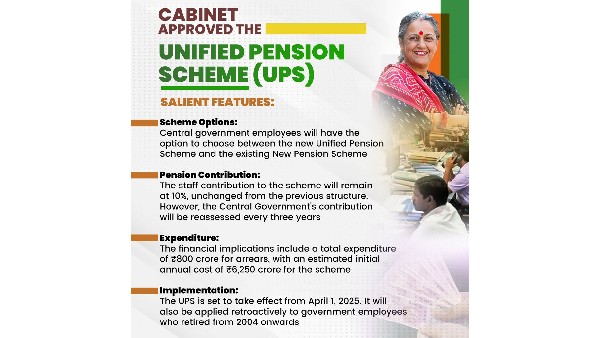
- 27 Jan 2025
In News:
The Ministry of Finance has notified the Unified Pension Scheme (UPS) as an option under the National Pension System (NPS) for Central Government employees, effective April 1, 2025. This reform addresses long-standing concerns about the unpredictability of pension returns under the NPS.
Key Highlights:
- Applicability: Applies to Central Government employees currently under the NPS, including those recruited on or after January 1, 2004, who opt for the UPS.
- Objective: To provide guaranteed post-retirement financial security, addressing grievances regarding the market-linked returns of the NPS.
- Regulatory Framework: The scheme will be regulated by the Pension Fund Regulatory and Development Authority (PFRDA), which will issue detailed operational guidelines.
Pension and Benefit Structure
- Guaranteed Monthly Pension:
- 50% of the average basic pay drawn in the last 12 months prior to retirement.
- Requires completion of 25 years of service.
- Those with 10–25 years of service will receive a proportionate pension.
- Dearness Relief (DR): Periodic adjustments based on inflation trends to maintain pension value.
- Family Pension: In case of death, 60% of the employee's pension will be paid to eligible family members.
- Minimum Pension: Assured ?10,000 per month for those completing at least 10 years of service.
- Superannuation Benefits: Includes a lump sum payout and gratuity at retirement.
Contribution Mechanism
- Employee Contribution: 10% of basic pay.
- Government Contribution: 5% of basic pay (subject to revision based on actuarial evaluations).
Background and Policy Evolution
- The Union Cabinet approved the UPS on August 24, 2024, benefiting nearly 2.3 million Central Government employees.
- The move followed demands from staff unions for guaranteed pensions, and political pressure after several states reverted to the Old Pension Scheme (OPS).
- A high-level committee, led by T.V. Somanathan (then Finance Secretary), was formed in April 2023 to review the NPS framework and design an equitable alternative.
ISRO’s NVS-02 Satellite Launch
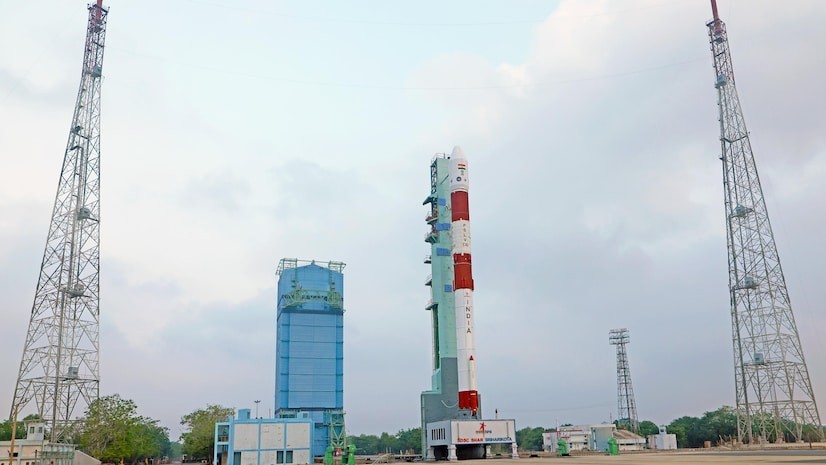
- 25 Jan 2025
In News:
ISRO successfully launched the NVS-02 satellite aboard GSLV-F15, placing it into a Geosynchronous Transfer Orbit (GTO). This marks ISRO’s 100th mission, reinforcing India’s space and navigation capabilities under the NavIC (Navigation with Indian Constellation) program.
What is NavIC?
- NavIC is India’s indigenous regional satellite navigation system, developed for both civilian and strategic use.
- Offers accurate positioning over India and up to 1,500 km beyond its borders.
- Comparable to GPS (USA), GLONASS (Russia), Galileo (EU), and BeiDou (China).
About NVS-02 Satellite:
Feature Description
Series Second satellite in the next-gen NVS series (after NVS-01 in 2023)
Mission Role Replaces aging IRNSS-1E satellite
Mass 2,250 kg
Power Capacity ~3 kW
Orbit Final orbital slot at 111.75°E in geosynchronous orbit (~36,000 km)
Life Span 12 years
Developed by URSC (U R Rao Satellite Centre), Bengaluru
Technological Advancements:
- Equipped with navigation payloads across L1, L5, and S-bands for enhanced accuracy and broader coverage.
- Features the Rubidium Atomic Frequency Standard (RAFS) – an indigenously developed atomic clock for precision timekeeping.
- Includes C-band ranging payload, similar to NVS-01.
Significance of NVS-02:
- Enhances NavIC’s positioning accuracy for civilian, commercial, and strategic applications:
- Disaster management
- Fleet tracking
- Precision agriculture
- Emergency response
- Mobile navigation
- L1 signal inclusion makes NavIC-compatible with international GNSS systems, improving global device integration.
- Demonstrates India’s technological self-reliance, particularly in atomic clock development.
ISRO’s Launch Vehicles
Vehicle First Flight Notable Use
SLV 1980 Launched Rohini satellite
ASLV 1987 Five-stage solid rocket, retired in 1990s
PSLV 1994 Reliable, used for Mars Orbiter, LEO missions
GSLV 2001 Used for heavier payloads, INSAT/GSAT
GSLV 2014 Heavy-lift, Chandrayaan-2/3, Gaganyaan crew module
Mk III (LVM3)
SSLV 2022 Affordable launches for nano/micro satellites
PKC-ERCP: Rajasthan’s River-Linking Project
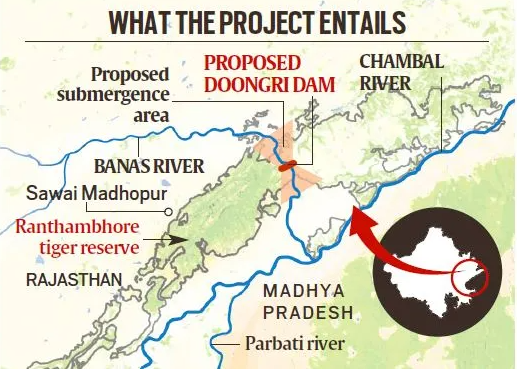
- 25 Jan 2025
In News:
The Parbati-Kalisindh-Chambal-Eastern Rajasthan Canal Project (PKC-ERCP), part of the National Interlinking of Rivers (ILR) programme, aims to address water scarcity in 23 districts of Rajasthan, potentially benefiting 3.45 crore people. However, it has raised serious concerns over its ecological impact, particularly on the Ranthambore Tiger Reserve.
About the PKC-ERCP Project:
Aspect Details
Objective To channel surplus water from the Chambal basin for irrigation, drinking, and industrial use in Rajasthan and Madhya Pradesh
Estimated Cost ?72,000 crore (90% funded by the Central Government)
Water Allocation 4,100 MCM to Rajasthan and 3,000 MCM to Madhya Pradesh
Rivers Involved Chambal, Parbati, Kalisindh, Banas, and tributaries
Major Structure 39 m high, 1.6 km long dam across the Banas River, a Chambal tributary, near Doongri village, ~30 km from Sawai Madhopur
Submergence and Environmental Concerns:
- Total Submergence: ~408.86 sq km in Rajasthan.
- Reservoir Impact: 227 sq km to be submerged under the proposed dam across Banas River.
- Impact on Tiger Reserve:
- 37.03 sq km of the Ranthambore Tiger Reserve (total area: 1,133 sq km) to be submerged.
- This includes parts of Ranthambore National Park (392 sq km) and Keladevi Wildlife Sanctuary (674 sq km).
- May fragment the reserve, disrupting wildlife corridors and tiger movement.
- Ranthambore’s Significance:
- Home to ~57 tigers, it is one of India’s most prominent conservation areas.
- Situated at the Aravalli-Vindhya junction, with rich biodiversity, including leopards, hyenas, sloth bears, and iconic flora like Dhok trees.
- Encompasses the UNESCO-listed Ranthambore Fort and the Great Boundary Fault.
Arguments For the Project:
- Addresses chronic water scarcity in eastern Rajasthan.
- Promotes agricultural productivity, drinking water security, and industrial development.
- Aims to optimize water use by diverting surplus flows.
Arguments Against the Project:
- Biodiversity loss due to habitat submergence and reserve fragmentation.
- Risks to tiger conservation efforts.
- Potential violation of environmental safeguards under the Wildlife Protection Act and Forest Conservation norms.
Long-term ecological costs may outweigh short-term developmental gains.
SEBI’s Sachetisation of Mutual Funds
- 25 Jan 2025
In News:
In January 2025, the Securities and Exchange Board of India (SEBI) proposed the “sachetisation” of mutual fund investments to promote financial inclusion, especially among low-income and first-time investors.
What is Sachetisation?
- Originating from the FMCG sector (e.g., shampoo sachets), sachetisation refers to offering financial products in small, affordable units, enhancing accessibility and affordability.
- In capital markets, it implies micro-level investment options, particularly through low-ticket SIPs (Systematic Investment Plans).
Objectives:
- Promote financial inclusion and empower economically underserved sections.
- Expand mutual fund penetration to semi-urban and rural areas.
- Encourage long-term savings and wealth creation among new investors.
- Reduce dependency on large institutional or foreign investors by broadening the domestic retail base.
Key Features of SEBI’s Sachet SIP Proposal:
Feature Details
Minimum SIP Amount ?250 per month
Eligibility Only for new mutual fund investors
Investment Limit Up to 3 sachet SIPs across different AMCs
Excluded Schemes Debt funds, sectoral/thematic, small-cap, mid-cap equity funds (due to higher risk)
Commitment Period Encouraged to commit for 5 years (60 SIPs), but premature withdrawal allowed
Payment Modes Only via auto-pay mechanisms such as UPI Autopay and NACH
Cost Incentives AMCs to receive subsidies from SEBI’s Investor Education and Awareness Fund
Distributor Incentive ?500 per investor after completion of 24 monthly SIPs
Significance:
- Democratizes investment access by lowering the entry barrier for mutual funds.
- Encourages behavioral shift towards long-term financial planning and discipline.
- Stabilizes domestic markets by broadening and diversifying the retail investor base.
Supports SEBI’s vision of making capital markets inclusive, tech-enabled, and accessible.
Fiscal Health Index (FHI) 2025
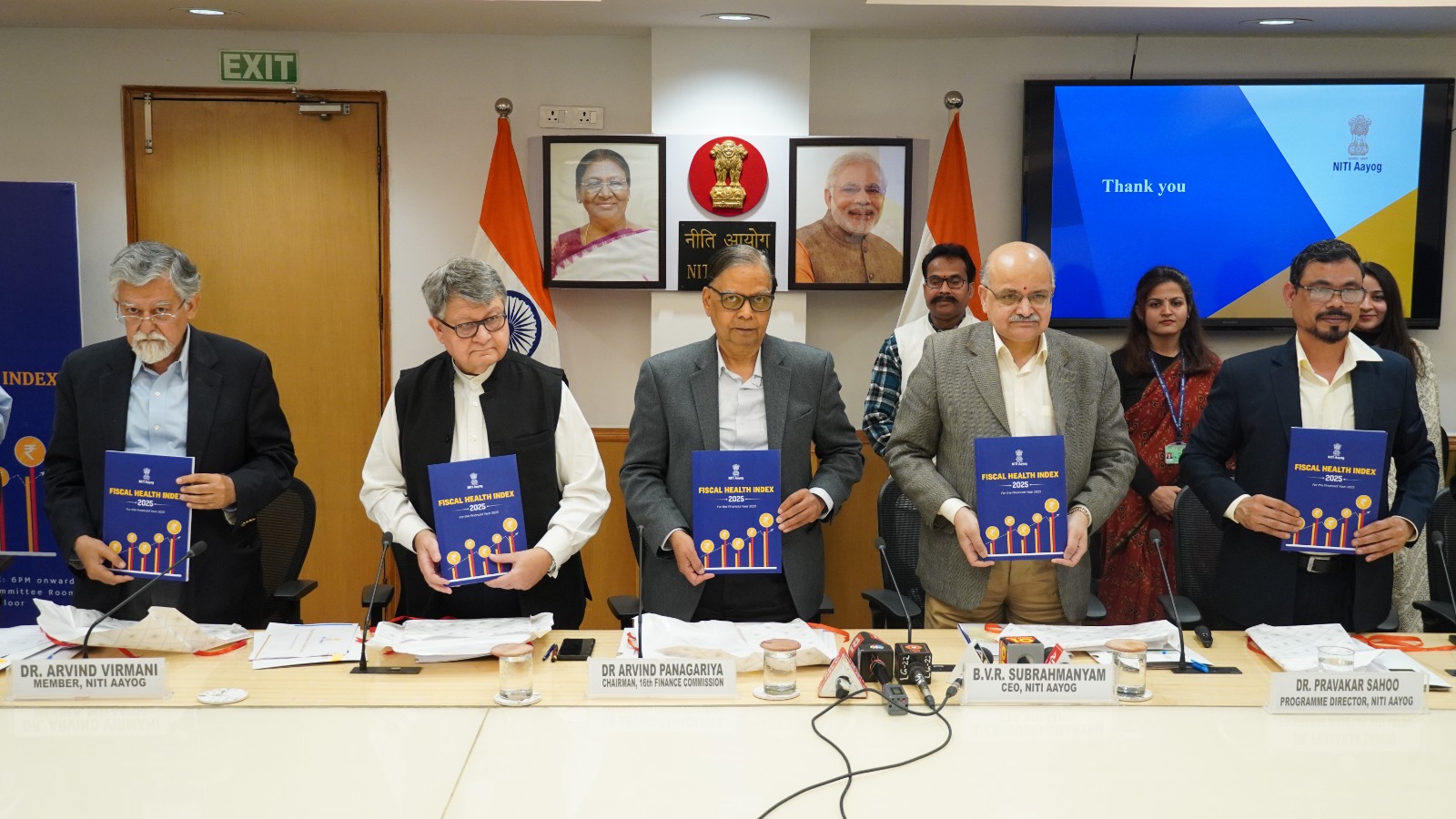
- 25 Jan 2025
In News:
NITI Aayog launched the inaugural Fiscal Health Index (FHI) 2025 on 24 January 2025 in the presence of the 16th Finance Commission Chairman, Dr. Arvind Panagariya. The index evaluates the fiscal performance of 18 major Indian states using FY 2022–23 as the base year.
Key Highlights:
- Objective: To assess, monitor, and improve the fiscal health of Indian states and foster balanced regional development, economic resilience, and fiscal transparency. It aims to support the national goal of Viksit Bharat @2047.
- Developed by:
- NITI Aayog, with data sourced from the Comptroller and Auditor General (CAG).
- Designed as an annual publication to promote informed and targeted state-level policy reforms.
- Evaluation Parameters:
The index comprises five sub-indices that collectively offer a holistic picture of fiscal health:
- Quality of Expenditure – Efficiency in developmental and social sector spending (e.g., health, education).
- Revenue Mobilization – Tax and non-tax revenue generation capacity.
- Fiscal Prudence – Adherence to fiscal deficit targets and sound financial management.
- Debt Index – Absolute level of public debt.
- Debt Sustainability – Debt-to-GSDP ratio and interest burden on revenues.
Key Highlights from FHI 2025:
Top Performing States (Achievers):
Rank State FHI Score Strengths
1. Odisha 67.8 Low fiscal deficit, strong debt management, effective capital expenditure
2. Chhattisgarh 55.2 Revenue growth from mining, fiscal prudence
3. Goa 53.6 High tax efficiency and non-tax revenue
Aspirational States (Facing Challenges):
- Punjab, West Bengal, Kerala, Andhra Pradesh
- Issues: High debt-to-GSDP ratios, revenue deficits, poor revenue mobilization
Sub-Index Insights:
- Revenue Mobilization: Odisha, Goa, and Chhattisgarh excelled; Bihar and West Bengal lagged due to low own-tax revenues.
- Quality of Expenditure: Madhya Pradesh and Chhattisgarh prioritized social sectors; Punjab and Rajasthan underperformed in capital investment.
- Debt Management: Maharashtra and Gujarat maintained robust practices; Punjab and Haryana faced rising interest burdens.
- Debt Sustainability: Odisha and Chhattisgarh displayed strong sustainability; West Bengal and Punjab showed fiscal stress.
- Fiscal Prudence: Odisha and Jharkhand maintained low deficits, enabling better public investment.
Significance for Policy & Governance:
- Encourages healthy interstate competition and promotes cooperative federalism.
- Provides data-driven insights for targeted fiscal reforms.
- Reinforces the need for decentralized and transparent financial governance.
- Offers a benchmark for fiscal performance aligned with national transformation goals.
Recommendations:
- Enhance revenue base via tax reforms and tapping into non-tax sources.
- Boost capital expenditure in infrastructure, health, and education.
- Strengthen debt sustainability frameworks and reporting mechanisms.
- Institutionalize fiscal responsibility through better compliance and accountability.
Sanjay Battlefield Surveillance System

- 25 Jan 2025
In News:
Defence Minister Rajnath Singh recently flagged off Sanjay, an indigenously developed Battlefield Surveillance System (BSS), to be inducted into the Indian Army in phased manner from March to October 2025, designated as the ‘Year of Reforms’ by the Ministry of Defence.
Overview:
- Nature: Automated surveillance system
- Purpose: To integrate real-time data from ground and aerial sensors, enabling swift, informed decision-making in conventional and sub-conventional warfare scenarios.
Key Features:
- Common Surveillance Picture (CSP): Fuses verified sensor data to generate a real-time surveillance image of the battlefield.
- Real-time Integration & Analytics: Processes inputs using advanced analytics to eliminate duplication and enhance situational awareness.
- Secure Networks: Operates over the Indian Army’s Data Network and Satellite Communication Network, ensuring reliable and secure data flow.
- Centralized Web Application: Provides integrated inputs to Command Headquarters and Army HQ through a unified platform, supporting the Indian Army's Decision Support System.
- Indigenous Development: Jointly developed by the Indian Army and Bharat Electronics Limited (BEL) under the Buy (Indian) category, promoting Aatmanirbharta in defense.
Operational Significance:
- Enhances battlefield transparency, situational awareness, and surveillance capabilities along vast and sensitive land borders.
- Functions as a force multiplier in Intelligence, Surveillance & Reconnaissance (ISR) operations.
- Enables network-centric warfare, marking a shift towards data-driven military operations.
Deployment:
- To be inducted into all Brigades, Divisions, and Corps of the Army in three phases (March–October 2025).
Guillain-Barré Syndrome (GBS)
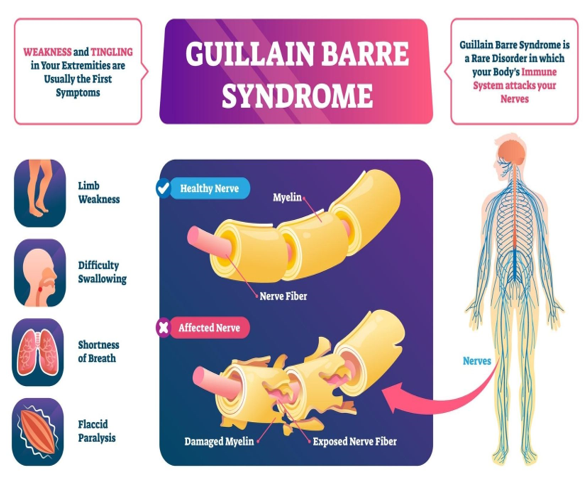
- 24 Jan 2025
In News:
The Pune Health Department has reported a surge in Guillain-Barré Syndrome (GBS) cases, prompting concern due to its severe neurological impact and association with prior infections or immune responses.
What is Guillain-Barré Syndrome?
- Nature of Disorder: A rare autoimmune condition where the body’s immune system attacks the peripheral nervous system, affecting voluntary muscle control and sensory signals (e.g., pain, temperature, and touch).
- Medical Term: Also known as Acute Inflammatory Demyelinating Polyradiculoneuropathy (AIDP).
- System Affected: Peripheral nerves, i.e., nerves outside the brain and spinal cord.
Epidemiology:
- Prevalence: Rare but potentially life-threatening.
- Age Group Affected: Can occur at any age but is most common between 30 to 50 years.
- Non-contagious: GBS is not transmitted from person to person.
Causes and Triggers:
- Exact Cause: Unknown, but usually follows an immune response to:
- Infections: Campylobacter jejuni (foodborne bacteria), Epstein-Barr Virus (EBV), Cytomegalovirus (CMV), respiratory or urinary tract infections.
- Vaccinations: Rarely observed post-immunisation.
- Surgery or trauma: Can act as physical stressors that trigger the syndrome.
Symptoms:
- Initial Signs: Tingling and weakness starting in the legs, progressing upwards.
- Progression:
- Weakness in arms, facial muscles.
- Difficulty walking or balancing.
- In severe cases, respiratory paralysis, requiring ventilator support.
- Onset: Can escalate within hours, days, or weeks.
- Range: Varies from mild muscle weakness to complete paralysis.
Impact:
- Neurological Disruption: Affects communication between the brain and muscles.
- Temporary but Debilitating: Most patients recover over weeks to months, though rehabilitation may be prolonged.
- Critical Care: May require intensive medical and respiratory support in acute stages.
Diagnosis & Treatment:
- No definitive cure, but early intervention improves outcomes.
- Main Treatments:
- Intravenous Immunoglobulin (IVIG):
- Contains healthy antibodies from donated blood.
- Helps suppress the immune attack on nerves.
- Plasmapheresis (Plasma Exchange): Filters harmful antibodies from the blood.
- Supportive Therapy:
- Mechanical ventilation in case of respiratory failure.
- Physiotherapy for muscle recovery and mobility.
Ad Hoc High Court Judges
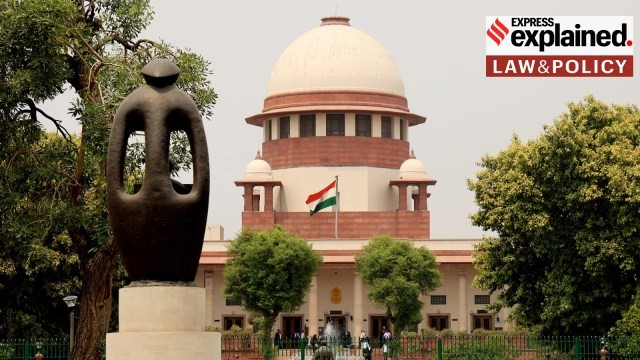
- 24 Jan 2025
In News:
To address the mounting pendency of criminal cases in several High Courts, the Supreme Court of India has suggested invoking Article 224A of the Constitution, which allows the appointment of retired High Court judges on an ad hoc basis.
Constitutional Provision: Article 224A
- Title: Appointment of Retired Judges at Sittings of High Courts.
- Key Provision: The Chief Justice of a High Court, with the consent of the President, may invite retired judges of the same or other High Courts to act as judges temporarily.
- Status: These judges enjoy the powers, jurisdiction, and privileges of regular High Court judges, but are not deemed permanent judges.
Why the Provision is Being Invoked Now:
- Backlog of Cases: Over 40% vacancy rate in High Courts; huge pendency, especially of criminal cases.
- Delays in Regular Appointments: Slow process of regular judicial appointments prompted the Supreme Court to consider alternative mechanisms.
- Underuse of Article 224A: Only three recorded instances of ad hoc appointments since Independence:
- Justice Suraj Bhan – MP High Court (1972)
- Justice P. Venugopal – Madras High Court (1982–83)
- Justice O.P. Srivastava – Allahabad High Court (2007, Ayodhya case)
Judicial Interpretation – Lok Prahari v. Union of India (2021):
- The Supreme Court laid down guidelines for invoking Article 224A.
- The process must be routed through the SC collegium (CJI + 2 senior-most judges).
- Trigger Point for Appointment:
- High Court vacancies exceed 20% of sanctioned strength (excluding pending proposals).
- More than 10% of pending cases are over 5 years old.
Procedure for Appointment:
- Consent: Retired judge must agree to serve again.
- Initiation: Chief Justice of the High Court forwards the name.
- State and Centre: Proposal routed through State CM → Union Law Ministry.
- SC Collegium: Must review and approve the name.
- Executive Clearance: Law Ministry → PM → President for final approval.
Term & Allowances:
- Duration: Typically 2–3 years, renewable if required.
- Number of Judges: Suggested 2–5 ad hoc judges per High Court.
- Remuneration: Entitled to allowances as per Presidential order.
- Status: Have full judicial powers during tenure.
Concerns & Safeguards:
- Fear of using ad hoc appointments as a substitute for regular appointments.
- Therefore, SC mandates that regular appointment process must be underway before invoking Article 224A.
- Periodic review and panel creation of eligible retired judges recommended.
M23 Armed Group
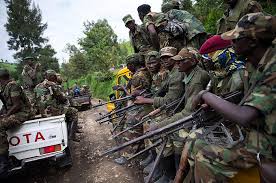
- 24 Jan 2025
In News:
The March 23 Movement (M23), a rebel group active in eastern Democratic Republic of Congo (DRC), has intensified its insurgency in North Kivu province, capturing key areas like Minova and threatening the provincial capital, Goma.
About M23 Armed Group:
- Full Form: March 23 Movement
- Formation: 2012, by mutineers from the Congolese army protesting a failed 2009 peace deal.
- Base of Operations: Eastern DRC, primarily in North Kivu province.
- Activities: Armed rebellion, territorial control, ethnic conflict, disruption of state authority.
External Support:
- Rwandan Involvement:
- UN Reports (2023): Estimated 3,000–4,000 Rwandan troops operating alongside M23.
- Rwanda alleged to have “de facto control” over M23 operations.
- Kigali denies direct territorial aggression claims.
- International Concerns: The group’s resurgence reflects broader regional instability and transnational military dynamics.
Recent Developments (2024):
- Territorial Gains: Capture of Minova; encroachment on Goma, a strategic and densely populated city.
- Humanitarian Crisis:
- Over 2,30,000 displaced since January 2024.
- Influx of injured civilians in hospitals; risk of further displacement and violence.
- Congolese Military Weakness:
- Internal instability and operational setbacks have contributed to M23’s advances.
- The Congolese army acknowledged a “breakthrough” by M23 with external backing.
Geographical Significance of the Region:
- DRC Capital: Kinshasa
- Strategic Location: Borders 9 countries—Angola, Zambia, Tanzania, Burundi, Rwanda, Uganda, South Sudan, Central African Republic, Republic of Congo.
- Topography:
- Rwenzori & Virunga Mountains: Includes active volcanoes (e.g., Mount Nyiragongo).
- Congo River: Vital for transport, hydroelectric power, and biodiversity.
- Natural Resources:
- Rich in cobalt, coltan, gold, and other rare minerals—critical to the global tech industry.
- The mineral wealth of North Kivu is a major driver of prolonged conflict.
India’s Deep Ocean Mission
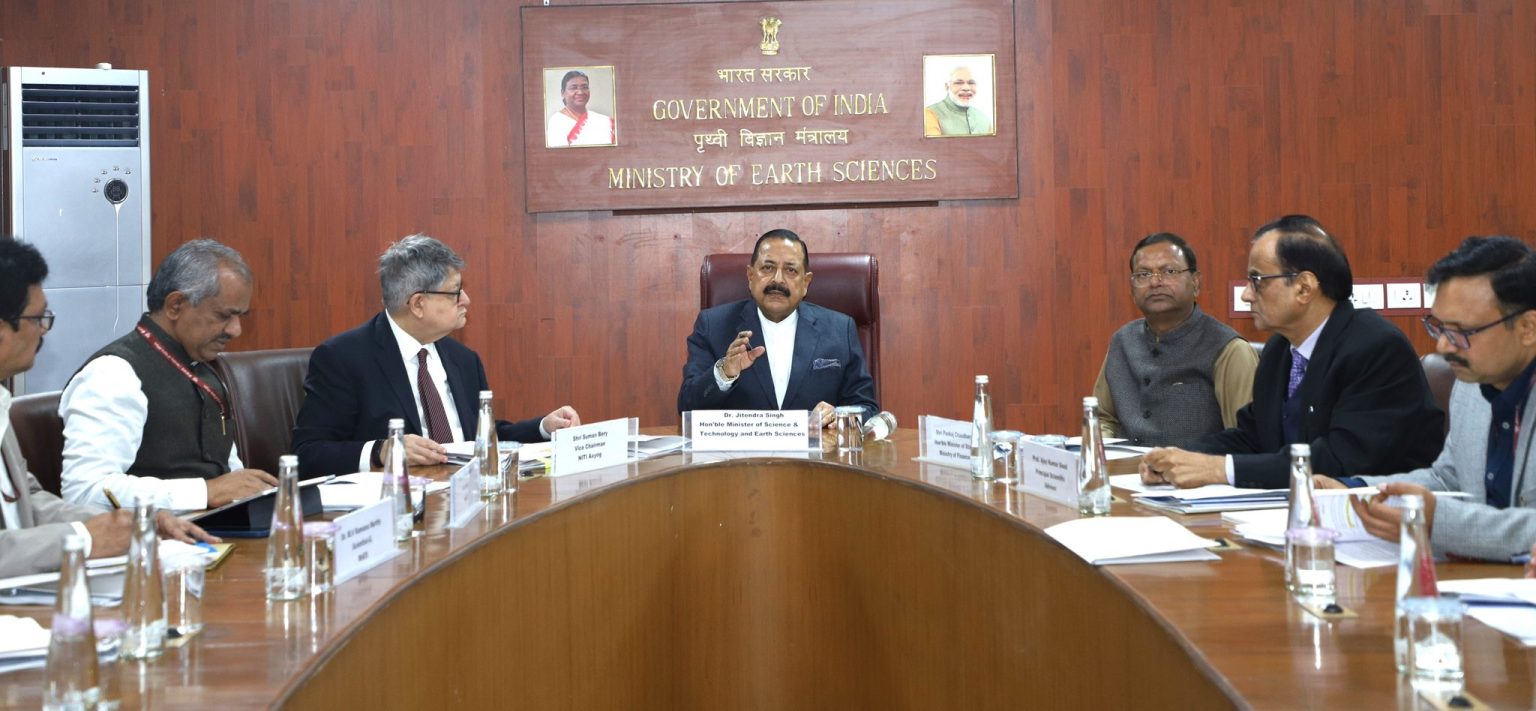
- 24 Jan 2025
In News:
India is set to deploy its first human-operated deep-sea submersible as part of the Deep Ocean Mission (DOM), marking a significant leap in the country’s marine research and technological capability.
Key Highlights:
- Submersible Deployment (2024):
- India will operate its first human submersible at a depth of 500 meters this year.
- The goal is to reach a depth of 6,000 meters by 2025.
- The project aligns with the timelines of Gaganyaan, India’s first human space mission—showcasing parallel progress in marine and space technology.
- Indigenous Technology:
- The mission is powered by 100% indigenous technology, underlining India’s growing self-reliance in high-end scientific infrastructure.
About Deep Ocean Mission (DOM):
- Launched: 2021
- Nodal Ministry: Ministry of Earth Sciences (MoES)
- Budget: ?4,077 crore over five years
- Framework: One of nine key missions under PM-STIAC (Prime Minister’s Science, Technology, and Innovation Advisory Council)
Core Objectives:
- Develop deep-sea technologies, including a manned submersible for ocean exploration.
- Explore and harness ocean resources such as: Polymetallic nodules, Hydrothermal sulphides & Rare earth metals
- Study marine biodiversity for sustainable fisheries and conservation.
- Support India’s blue economy through innovation and research.
- Monitor ocean climate change and develop advisory services.
- Promote marine biology and biotechnology via dedicated marine research stations.
- Harvest renewable energy and freshwater from ocean sources.
Key Components and Technologies:
Matsya6000 Submersible:
- India’s first manned deep-sea vehicle.
- Designed to reach 6,000 meters depth.
- Crew Capacity: Three members
- Developed by: National Institute of Ocean Technology (NIOT), Chennai
- Structure: Made of titanium alloy, withstanding 6,000 bar pressure
- Equipped with: Scientific sensors, tools for sampling, viewports, propellers, and acoustic communication systems.
- Combines capabilities of ROVs (Remotely Operated Vehicles) and AUVs (Autonomous Underwater Vehicles).
Varaha Deep-Ocean Mining System:
- Developed by NIOT
- Successfully conducted trials at 5,270 meters
- Key to India’s future in deep-sea mining of critical minerals
Strategic Importance:
- Scientific Advancement: DOM places India among a select group of nations (USA, Russia, China, France, Japan) with human-crewed deep-ocean exploration capacity.
- Economic Potential: Unlocks access to underwater mineral wealth, critical for electronics, defense, and energy sectors.
- Environmental Sustainability: Supports marine biodiversity conservation and promotes sustainable use of oceanic resources.
- Geopolitical Significance: Enhances India’s presence and influence in the Indian Ocean Region (IOR).
- Technological Leap: Strengthens India’s capabilities in underwater robotics, materials engineering, and ocean sciences.
Is Poverty Being Underestimated in India?

- 24 Jan 2025
In News:
The recent 2023-24 Household Consumption Expenditure Survey (HCES) showed a decline in poverty across rural and urban India. However, questions have emerged about whether poverty is being underestimated, due to changes in methodologies, definitions, and data availability.
Evolution of Poverty Measurement in India
- 1970s to 2005: Poverty was defined based on minimum calorie intake; updated every 5 years using NSSO data.
- Tendulkar Committee introduced in response to divergence between NSSO and National Accounts data.
- Post-2011-12: No official poverty estimates or surveys; alternative indices like Multidimensional Poverty Index (MPI) were used.
Current Data Issues
- Different recall periods in surveys (7-day, 30-day, 365-day) create non-comparability.
- Modified Mixed Recall Period (MMRP) introduced in 2017-18 and improved upon in recent years with three household visits, enhancing recall and thus raising reported expenditures.
- Result: Using older poverty lines on newer, higher expenditure data underestimates poverty.
Diverging Poverty Estimates
- Dr. C. Rangarajan (2022-23): Estimated poverty at around 10%.
- Recent factsheet (2023-24) suggests poverty may have declined to single digits.
- A paper using Rangarajan’s methodology on 2022-23 HCES data estimated 25% poverty, but this is debated.
Reasons for Poverty Reduction
- High GDP growth, increased public expenditure, and improved public delivery systems.
- National Food Security Act covers nearly 80 crore people.
- Broadened definition of poverty now includes non-food items and essential services.
- Decline in poverty estimated around 17-18% between 2011-12 and 2023-24.
Rural-Urban Trends
- Consumption gap between rural and urban areas is narrowing.
- Rural consumption patterns becoming more urban-like.
- 2011 Census definitions outdated — many rural areas are peri-urban in character.
Need for Poverty Line Revision
- Lack of consensus and official backing on methodology hinders creation of a new poverty line suited to current data.
- UNDP’s global poverty line is $2.15/day; India’s poverty was 12.9% in 2019 by that metric.
- NITI Aayog’s estimates do not support 25% poverty claim.
Debate on Multidimensional Poverty Index
- India’s MPI (12 indicators) differs from UNDP’s 10-indicator framework.
- Additions like bank accounts and maternal health are India-specific.
- Criticism: Once indicators (e.g., electricity, bank accounts) are met, they remain met — poverty appears to decline permanently, while income vulnerability is not captured.
Estimation and Measurement of India’s Digital Economy – MeitY Report (2025)
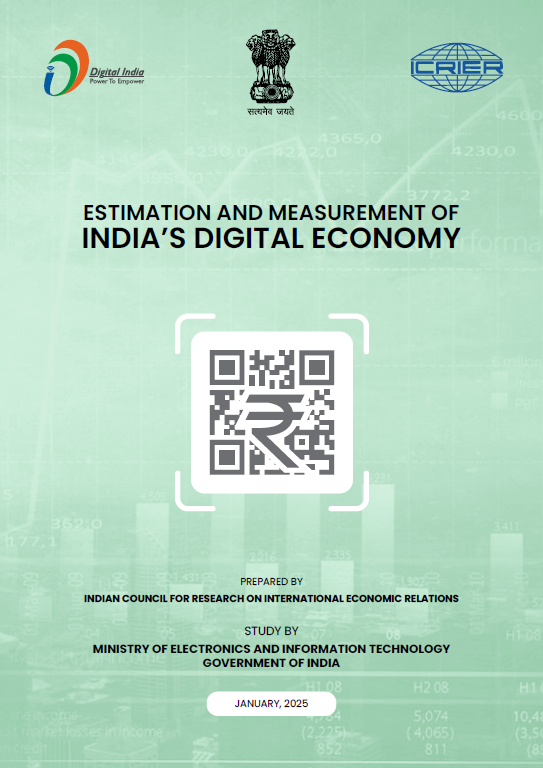
- 23 Jan 2025
In News:
Release of Report ‘Estimation and Measurement of India’s Digital Economy’ by Ministry of Electronics & Information Technology.
Key Highlights:
- Released by: Ministry of Electronics & Information Technology (MeitY)
- Prepared by: Indian Council for Research on International Economic Relations (ICRIER)
- Significance: First credible and current estimate of the digital economy using international frameworks (OECD & ADB).
- India is the first developing country to adopt the OECD framework for measuring the digital economy.
Key Findings (2022–23)
Indicator Details
Size ?31.64 lakh crore (~USD 402 billion), 11.74% of national income (GVA)
Employment 14.67 million workers (2.55% of the workforce)
Projected Share by 2029–30 Nearly 20% of GDP (surpassing agriculture & manufacturing)
Structure of India’s Digital Economy
- Digitally Enabling Industries (7.83% of GVA): ICT services, telecom, manufacturing of digital hardware
- New Digital Industries (2%): Big Tech, digital platforms, intermediaries (e.g., e-commerce, ride-sharing)
- Digitalization of Traditional Sectors (2%): BFSI (Banking, Financial Services, Insurance), trade, education
- Insight: Digital transformation is spreading beyond ICT into traditional sectors.
Frameworks Used
Framework Purpose
OECD Estimating core digital and enabling sectors
ADB Input-Output Broader economic impact via inter-industry linkages
India’s Expansion Includes digital share in BFSI, trade, education – not covered under OECD
Key Drivers of India’s Digital Economy
- Widespread mobile use: 1.14 billion subscribers in India
- High internet traffic: 3rd globally, with avg. 16.9 GB/month
- 5G leadership: 2nd largest 5G smartphone market in 2024
- Aadhaar success: 1.3+ billion biometric IDs issued
- Digital payments boom: 1,644 billion transactions in FY24
- ICT service exports: USD 162 billion (2nd highest globally)
- AI leadership: India leads GitHub AI contributions (23%)
- Startup ecosystem: 3rd highest number of unicorns globally
Future Projections (By 2030)
- Digital economy to reach ~20% of national income
- Growth drivers:
- Expansion of digital platforms & intermediaries
- Deepening digitalization in all sectors
- Greater internet & broadband access
Challenges in Measuring Digital Economy
- Difficulty in defining digital sectors due to their integrated nature
- Conventional national accounting systems are inadequate
- Lack of data from:
- Informal sector digitalization
- Smaller platforms and startups
- Digital shifts in healthcare, logistics, etc.
Importance of This Report
- Policy Formulation: Enables targeted strategies for digital growth
- Business Strategy: Helps identify trends, plan investments
- Global Standing: Puts India among early adopters of robust measurement frameworks
Mission SCOT
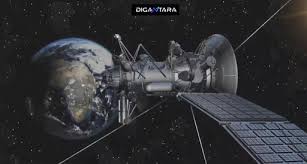
- 23 Jan 2025
In News:
The Prime Minister of India praised Indian space startup Digantara for the successful launch of Mission SCOT (Space Camera for Object Tracking) — the world’s first commercial SSA satellite, launched via SpaceX’s Transporter-12 rideshare mission.
What is Mission SCOT?
Feature Description
Developer Digantara (Indian space startup), supported by Aditya Birla Ventures & SIDBI
Launched on SpaceX Transporter-12 mission (rideshare platform)
Type First commercial Space Situational Awareness (SSA) satellite
Orbit Sun-Synchronous Orbit – ideal for consistent Earth observation
Function Tracks Resident Space Objects (RSOs) as small as 5 cm in Low Earth Orbit (LEO)
What is Space Situational Awareness (SSA)?
- SSA involves the detection, tracking, cataloging, and prediction of natural and man-made objects in Earth's orbit (like satellites, debris, etc.).
- Ensures safe and sustainable operations by minimizing collision risks.
- Critical due to increasing congestion in LEO, especially with rising numbers of small satellites and mega-constellations.
Key Features of Mission SCOT
Feature Advantage
High Revisit Rate More frequent observations of objects in orbit
Precision Tracking Can track debris ≥ 5 cm in size
All-Weather Monitoring Overcomes limitations of ground-based systems like cloud cover, FoV
Space-based System Unhindered by geography, providing continuous global surveillance
Supports SSA Infrastructure Aids in collision avoidance, space traffic management, and defence preparedness
???????? India’s SSA Ecosystem
Initiative Role
ISRO’s IS4OM Provides Indian Space Situational Assessment Report (ISSAR); enables safe & sustainable space operations
NETRA Project Network for Space Objects Tracking & Analysis – aims to build a dedicated SST (Space Surveillance & Tracking) network using radars & optical telescopes
Multi-Object Tracking Radar Operated at Sriharikota – limited range, being augmented
Collision Avoidance Manoeuvres (CAMs) Regularly performed by ISRO to protect its satellites from debris threats
Global Context: Transporter-12 Rideshare
- A SpaceX program providing low-cost access to space by allowing multiple customers to launch small payloads on a single rocket.
- Enhances global commercial space activity, democratizes space access.
Significance for India
Strategic:
- Strengthens national space defence by enabling indigenous tracking of space threats.
- Reduces reliance on foreign SSA data (e.g., NORAD/US Space Command).
Technological:
- Demonstrates India’s capability in space-based surveillance tech.
- Positions India as a global contributor in the emerging SSA domain.
Economic:
- Boosts private sector space innovation aligned with India’s NewSpace Policy.
- Attracts venture capital and international collaboration.
LID-568
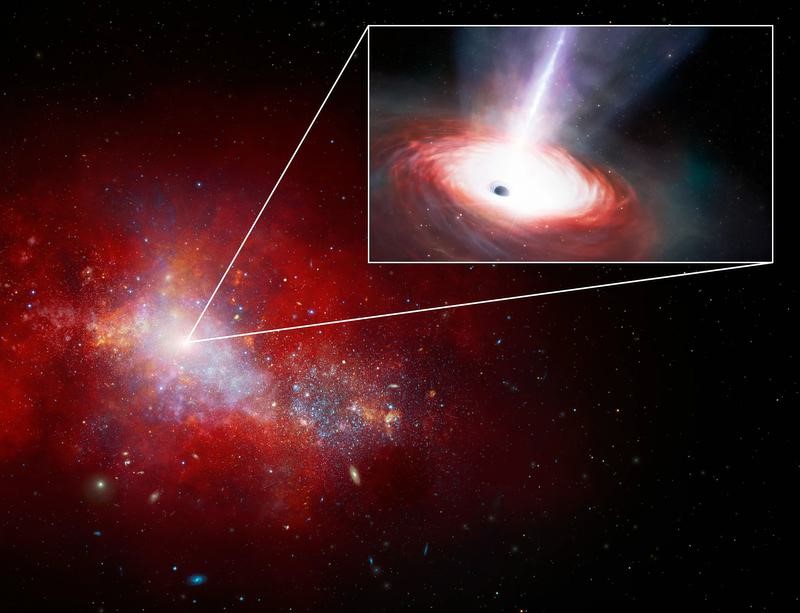
- 23 Jan 2025
In News:
In 2024, an international team of astronomers using NASA’s James Webb Space Telescope (JWST) and the Chandra X-ray Observatory discovered a low-mass supermassive black hole, LID-568, showing super-Eddington accretion—a rare and extreme feeding process—just 1.5 billion years after the Big Bang.
About LID-568
Feature Description
Type Low-mass supermassive black hole
Age Formed ~1.5 billion years after Big Bang (Universe’s “youth”)
Discovery Observed via Chandra (X-ray) & JWST (infrared)
Location In a distant galaxy with very low star formation
Feeding Rate Accreting at ~40× the Eddington limit (super-Eddington accretion)
Key Concepts
Eddington Limit
- Theoretical upper limit on how fast matter can fall into a black hole before radiation pressure balances gravitational pull.
- Exceeding this limit (super-Eddington) is thought to be unstable and short-lived.
Super-Eddington Accretion
- Observed in LID-568, feeding at 40× Eddington rate.
- Suggests rapid, short bursts of black hole growth, not the slow, steady model previously assumed.
Why is LID-568 Important?
Challenges Current Theories
- Traditional black hole growth models require:
- Long periods (hundreds of millions of years).
- Seed black holes formed from:
- Death of first stars (light seeds: 10–100 solar masses).
- Collapse of primordial gas clouds (heavy seeds: 1,000–100,000 solar masses).
- LID-568 suggests brief, intense growth spurts could create supermassive black holes faster than previously thought.
Impact on Host Galaxy
- Powerful outflows prevent gas accumulation → suppresses star formation.
- Indicates black holes can regulate galaxy evolution, even when young.
Scramjet & Hypersonic Technology

- 23 Jan 2025
In News:
On 21 January 2025, DRDO’s Defence Research & Development Laboratory (DRDL) successfully conducted a 120-second ground test of an indigenously developed Scramjet (Supersonic Combustion Ramjet) engine, marking a major milestone in India’s journey towards hypersonic missile technology.
What is Scramjet Technology?
Definition
A Scramjet is an air-breathing engine that sustains combustion at supersonic speeds—optimized for speeds above Mach 5 (hypersonic range).
Working Principle
- Utilizes vehicle’s forward motion to compress incoming air—no onboard oxidizer needed.
- Injects fuel into the compressed supersonic airflow → ignition → high-speed thrust.
- Operates without moving parts, making it lightweight, efficient, and reliable.
Key Indigenous Innovations
Feature Description
Active-Cooled Combustor Stable combustion achieved at 1.5 km/s airflow, comparable to "keeping a candle lit in a hurricane."
Endothermic Scramjet Fuel First-time development in India; offers cooling + ignition efficiency.
Thermal Barrier Coating (TBC) Jointly developed with DST; withstands temperatures beyond melting point of steel using advanced ceramic coating.
CFD Simulations Used for design optimization and performance validation of flame-holding techniques.
Significance of Scramjet Test
- Stable Combustion: A major challenge in hypersonic propulsion, now successfully demonstrated.
- Hypersonic Missiles:
- Speeds >Mach 5 (~5400 km/h).
- Bypass air defence systems due to speed and maneuverability.
- Enable rapid, high-impact delivery.
- Reusable Launch Vehicles:
- Cuts satellite launch costs via air-breathing propulsion.
- Strategic Edge:
- India joins elite group: USA, Russia, China.
- Strengthens defence deterrence & technological sovereignty.
- Technology Spillover: Advancements in CFD, materials science, flame stabilization, and fuel chemistry.
Global Hypersonic Race
- China (2021): Tested nuclear-capable hypersonic glide vehicle (HGV) that orbited Earth before hitting target.
- USA & Russia: Advanced programs with operational hypersonic systems (e.g., Avangard, Zircon, ARRW).
- India: Now developing indigenous hypersonic missile platform.
Scramjet & Hypersonic Technology

- 23 Jan 2025
In News:
On 21 January 2025, DRDO’s Defence Research & Development Laboratory (DRDL) successfully conducted a 120-second ground test of an indigenously developed Scramjet (Supersonic Combustion Ramjet) engine, marking a major milestone in India’s journey towards hypersonic missile technology.
What is Scramjet Technology?
Definition
A Scramjet is an air-breathing engine that sustains combustion at supersonic speeds—optimized for speeds above Mach 5 (hypersonic range).
Working Principle
- Utilizes vehicle’s forward motion to compress incoming air—no onboard oxidizer needed.
- Injects fuel into the compressed supersonic airflow → ignition → high-speed thrust.
- Operates without moving parts, making it lightweight, efficient, and reliable.
Key Indigenous Innovations
Feature Description
Active-Cooled Combustor Stable combustion achieved at 1.5 km/s airflow, comparable to "keeping a candle lit in a hurricane."
Endothermic Scramjet Fuel First-time development in India; offers cooling + ignition efficiency.
Thermal Barrier Coating (TBC) Jointly developed with DST; withstands temperatures beyond melting point of steel using advanced ceramic coating.
CFD Simulations Used for design optimization and performance validation of flame-holding techniques.
Significance of Scramjet Test
- Stable Combustion: A major challenge in hypersonic propulsion, now successfully demonstrated.
- Hypersonic Missiles:
- Speeds >Mach 5 (~5400 km/h).
- Bypass air defence systems due to speed and maneuverability.
- Enable rapid, high-impact delivery.
- Reusable Launch Vehicles:
- Cuts satellite launch costs via air-breathing propulsion.
- Strategic Edge:
- India joins elite group: USA, Russia, China.
- Strengthens defence deterrence & technological sovereignty.
- Technology Spillover: Advancements in CFD, materials science, flame stabilization, and fuel chemistry.
Global Hypersonic Race
- China (2021): Tested nuclear-capable hypersonic glide vehicle (HGV) that orbited Earth before hitting target.
- USA & Russia: Advanced programs with operational hypersonic systems (e.g., Avangard, Zircon, ARRW).
- India: Now developing indigenous hypersonic missile platform.
10 years of Beti Bachao Beti Padhao (BBBP)
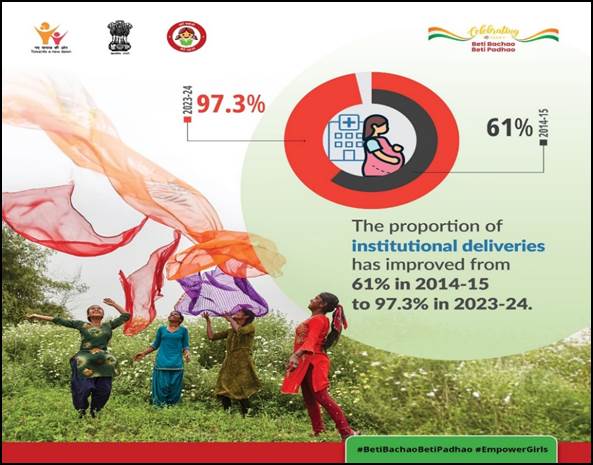
- 23 Jan 2025
In News:
Launched on 22nd January 2015 in Panipat, Haryana, BBBP was initiated in response to the declining Child Sex Ratio (CSR), which stood at 918 girls per 1000 boys (Census 2011). It marked a key step towards gender equality, aiming to curb gender-biased sex-selective elimination and improve the status of the girl child.
Key Highlights:
Core Objectives
- Improve Sex Ratio at Birth (SRB) by two points annually.
- Sustain institutional delivery rate at ≥95%.
- Increase 1st trimester ANC registration and girls' enrollment in secondary education by 1% annually.
- Reduce dropout rates among girls.
- Promote safe menstrual hygiene management (MHM).
Target Groups
- Primary: Young couples, expecting parents, adolescents, households, communities.
- Secondary: Schools, AWCs, health professionals, PRIs, ULBs, NGOs, SHGs, media, and religious leaders.
Implementation Structure
- Type: Centrally Sponsored Scheme (CSS) with 100% Central funding.
- Ministries Involved:
- Women and Child Development
- Health and Family Welfare
- Education
- Financial Assistance (Per District/Year):
- Rs. 40 lakh (SRB ≤918)
- Rs. 30 lakh (SRB 919–952)
- Rs. 20 lakh (SRB >952)
Integration with Mission Shakti (2021–2026)
BBBP now functions under Mission Shakti, which comprises two verticals:
- Sambal (Safety & Security):
- One Stop Centres (OSCs)
- Women Helpline (181)
- Nari Adalat: Alternative dispute resolution
- Samarthya (Empowerment):
- Sakhi Niwas, Palna Creches
- Shakti Sadans (rehabilitation)
- PM Matru Vandana Yojana: Extended support for a second girl child
- SANKALP-HEW: District-level single-window system for all women-centric schemes
Achievements in 10 Years (2015–2025)
- SRB: Improved from 918 (2014-15) to 930 (2023-24)
- Girls’ GER: Rose from 75.5% (2014-15) to 78% (2023-24) in secondary education
- Institutional Deliveries: Increased from 61% to 97.3%
- Kanya Shiksha Pravesh Utsav: Re-enrolled over 1 lakh out-of-school girls
- Economic Empowerment: Integration with skilling initiatives and 70% of PM Mudra loans disbursed to women
- Awareness Campaigns:
- Selfie with Daughter
- Beti Janmotsav
- Yashaswini Bike Expedition
- "Betiyan Bane Kushal" Skill Conference
Sukanya Samriddhi Yojana (SSY) – A Financial Tool for Empowerment
Launched under BBBP, SSY is a small savings scheme to ensure the financial security of girl children.
Key Features
- Eligibility: Indian girl child below 10 years.
- Account: Max 2 per family (exceptions for twins/triplets).
- Deposit Limit: ?250 to ?1.5 lakh/year (15 years).
- Tenure: Account matures 21 years after opening.
- Withdrawals: Up to 50% for higher education after 18 years.
- Tax Benefits: Exempt under Section 80C (EEE status).
Impact
- Over 4.1 crore accounts opened by Nov 2024.
- Promotes long-term savings and financial inclusion.
- Complements BBBP by addressing economic empowerment of girls.
Mission Vatsalya
- Formerly ICPS (2009), then Child Protection Services (2017).
- Merged into Mission Vatsalya in 2021.
- Focuses on:
- Juvenile justice
- Child protection
- Advocacy and rehabilitation
- Ensures “no child is left behind” principle aligned with SDGs.
Pradhan Mantri Matru Vandana Yojana (PMMVY)
- Supports pregnant and lactating mothers:
- ?5,000 in 3 installments + ?1,000 (JSY)
- Now extended to second girl child to promote gender equity.
Targets wage compensation, safe delivery, maternal nutrition, and reduced MMR/IMR.
Mount McKinley

- 22 Jan 2025
In News:
In a controversial move, President Donald Trump (2025) signed an executive order to rename Denali (North America’s highest peak) back to Mount McKinley, and also proposed renaming the Gulf of Mexico to the Gulf of America, citing the need to "honor American greatness."
About Denali / Mount McKinley:
Feature Description
Location Alaska Range, South-Central Alaska, USA
Height 20,310 feet (6,190 meters) – Highest in North America
Geology Giant granite block uplifted by tectonic activity ~60 million years ago
Glaciers Feeds major glaciers: Kahiltna, Muldrow, Peters, Ruth, Traleika
Tectonics Lies along the Denali Fault, a major right-lateral strike-slip fault
National Park Forms the core of Denali National Park and Preserve
Historical Background of the Name:
- Original Name: Denali, meaning “The High One” in the Athabascan language of the Koyukon people.
- 1897: Renamed Mount McKinley by a gold prospector in honor of President William McKinley (1897–1901).
- 1917: Official federal recognition with the creation of Mount McKinley National Park.
- 1980: Park renamed Denali National Park and Preserve; mountain's name remained McKinley federally.
- 2015: Obama administration officially renamed the peak Denali through the U.S. Department of the Interior.
- 2025: Trump issued executive order to revert the name to Mount McKinley, stating McKinley “deserves” the honor.
Rationale Behind Trump’s Renaming Order:
- Claims it honors McKinley’s legacy: economic growth, leadership in Spanish-American War, and tariff reforms.
- Declares Obama’s 2015 decision an “affront” to American heritage.
- Connects the move to his broader theme of “Restoring Names that Honor American Greatness.”
Opposition & Cultural Sensitivity:
- Alaska’s bipartisan leadership, including Senators Lisa Murkowski (R) and Scott Kawasaki (D), oppose the move.
- Indigenous groups maintain that Denali is the rightful and culturally authentic name.
- Critics argue it undermines native heritage and local identity.
Renaming the Gulf of Mexico to “Gulf of America”:
- Also part of Trump’s 2025 executive order.
- Geographic Facts:
- Borders the US, Mexico, and Cuba.
- Crucial to the US energy sector:
- 14% of US crude oil
- 5% of US natural gas
- 48% of refining capacity
- International Validity: The International Hydrographic Organization (IHO) allows local name usage but retains “Gulf of Mexico” in global records.
- Not binding on Mexico or Cuba.
International & Historical Parallels in Naming Disputes:
- Persian Gulf vs. Arabian Gulf (Iran vs. Arab states)
- Sea of Japan vs. East Sea (Japan vs. South Korea)
- South China Sea: Multiple nations claim different names and areas.
About the Denali Fault:
- Major strike-slip fault running through Alaska.
- Responsible for extensive tectonic movement and uplift of Denali.
- Evidence of horizontal displacement (~483 km) over millions of years.
- Marked the final suturing of tectonic plates in North American geological history.
Diamond Imprest Authorization (DIA) Scheme
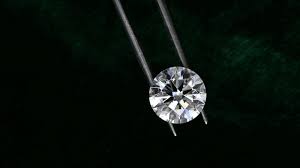
- 22 Jan 2025
In News:
The Union Government, under the Foreign Trade Policy 2023, has introduced the Diamond Imprest Authorization (DIA) Scheme to enhance India’s competitiveness in the global diamond trade, promote exports, and protect employment, especially in the MSME sector.
Key Highlights:
Objectives:
- Boost value addition and export growth in the diamond sector.
- Support MSME exporters to compete globally.
- Retain India’s position as a global hub for diamond processing and exports.
- Mitigate recent challenges like export decline, job losses, and global demand shifts.
Key Features of the Scheme:
Feature Details
Type of Diamonds Allowed Natural cut and polished diamonds less than ¼ carat (25 cents)
Eligibility Exporters with Two Star Export House status and minimum $15 million annual exports
Export Obligation 10% value addition on imported diamonds
Duty Exemptions Exempts Basic Customs Duty, Anti-dumping Duty, Countervailing Duty, etc.
Effective Date April 1, 2025
Exclusion Lab-Grown Diamonds (LGDs) not covered
Monitoring Agency Gems and Jewellery Export Promotion Council (GJEPC)
Why the Scheme Was Introduced:
Challenges in the Diamond Sector:
- Global: Falling demand in US, Europe, China; rise in lab-grown diamonds.
- Domestic: High unsold inventory, rising operational costs, reduced credit flow, and high corporate tax.
- Employment Impact: Job losses in the diamond cutting and polishing segment.
International Context:
- Inspired by beneficiation policies in diamond-producing countries like Botswana and Namibia, which mandate local value addition.
Significance:
- Enhances India’s role in the global diamond value chain.
- Provides ease of doing business through duty relief.
- Promotes employment generation, especially for diamond assorters and processors.
- Facilitates inclusive growth by supporting MSMEs in a traditionally export-driven industry.
Way Forward:
- Regulate Lab-Grown Diamonds to prevent market distortion.
- Extend export credit period and consider tax exemptions for foreign diamond sellers.
- Ensure technology upgradation and skill training to sustain global leadership.
Closing the Women’s Health Gap
- 22 Jan 2025
In News:
The World Economic Forum (WEF), in collaboration with the McKinsey Health Institute, released the report titled “Blueprint to Close the Women’s Health Gap”, highlighting the economic and social benefits of addressing gender-based health disparities.
Key Insights from the Report:
Economic Potential:
- Closing the women’s health gap could contribute $400 billion to global GDP by 2040.
- Focusing on just three conditions—menopause, PMS, and migraine—could unlock $315 billion in productivity.
Health Disparity:
- Women experience 25% more years of poor health than men.
- Root causes include underrepresentation in research and sex-neutral clinical guidelines.
- Only 10% of trials on major conditions like ischemic heart disease and migraine include sex-disaggregated data.
Key Health Conditions Identified:
Lifespan Conditions:
- Maternal hypertensive disorders
- Postpartum hemorrhage
- Ischemic heart disease
- Cervical cancer
- Breast cancer
Health Span Conditions:
- Endometriosis
- Menopause
- Migraine
- Premenstrual syndrome (PMS)
Addressing these can add 2.5 healthy days per woman per year globally.
Women’s Health Impact Tracking (WHIT):
- A public digital platform by WEF and McKinsey.
- Tracks global health disparities.
- Offers data-driven insights to guide investment and policy decisions, especially for low- and middle-income countries which face 54% of the global women's health burden, yet host only 23% of related clinical trials.
Five Strategic Actions for Stakeholders:
- Count Women – Improve data collection specific to women’s health.
- Study Women – Boost research funding on women-centric health conditions.
- Care for Women – Create tailored clinical guidelines and protocols.
- Include All Women – Ensure equity for marginalized groups.
- Invest in Women – Finance innovative healthcare solutions and service delivery models.
One Nation, One Legislative Platform
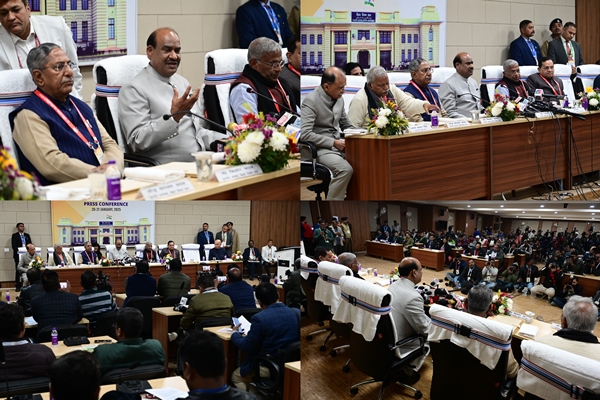
- 22 Jan 2025
In News:
- The 85th AIPOC, held in Patna, Bihar, emphasized enhancing the effectiveness of legislative institutions through reforms in decorum, digitization, and public participation.
- A major outcome was the announcement of the One Nation, One Legislative Platform to digitally integrate legislative bodies across India.
All India Presiding Officers’ Conference (AIPOC):
- Established: 1921; first session held in Shimla.
- Role: Apex platform bringing together Presiding Officers of Parliament and State Legislatures.
- Objective: Strengthen democratic institutions by fostering cooperative federalism, legislative accountability, and improved law-making processes.
2025 Conference Highlights:
- Venue: Historic Bihar Legislature Premises, Patna.
- Key Themes:
- Reducing disruptions and maintaining decorum in legislative houses.
- Promoting qualitative debate and discussion.
- Observing the 75th year of the Constitution with participatory democratic celebrations.
- Resolutions Adopted:
- Formulation of internal code of conduct by political parties.
- Nationwide campaigns involving PRIs, urban bodies, students, NGOs, media, and more to celebrate democratic values.
One Nation, One Legislative Platform (ONOLP):
What It Is:
A national mission to create a unified digital ecosystem integrating the Parliament, state legislatures, and local bodies for better legislative coordination and public access.
Key Objectives:
- Real-Time Data Sharing: Seamless, up-to-date legislative information across institutions—proceedings, bills, debates, etc.
- Transparency & Accountability: Open access to deliberations enables citizen oversight and institutional accountability.
- Public Participation: User-friendly access encourages civic engagement in law-making and governance.
- AI & Tech Integration: Use of Artificial Intelligence for data analysis, decision support, and enhanced efficiency.
- Paperless Legislatures: Digitization of records to promote sustainability and reduce bureaucratic delays.
Implementation Support:
- Spearheaded by the Lok Sabha, with Speaker Om Birla announcing its completion by 2025.
- Includes the creation of a central portal for public and institutional use.
Chinar Trees
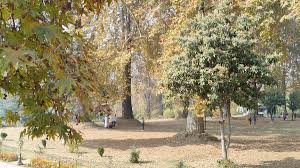
- 22 Jan 2025
In News:
The J&K Forest Department, in collaboration with the J&K Forest Research Institute (JKFRI), has launched a pioneering conservation initiative to digitally preserve the iconic Chinar trees (Platanus orientalis)—a vital part of Kashmir’s ecological and cultural heritage.
Significance of Chinar Trees:
- Locally known as Boonyi or Boueen, Chinar trees are deeply embedded in Kashmir’s cultural identity.
- These deciduous trees can grow up to 30 meters tall with a girth of 10–15 meters, and can live for over 600 years.
- They are known for their seasonal leaf color transformation—from green in summer to red, amber, and yellow in autumn.
- Notable specimens include Asia’s largest Chinar in Ganderbal and the oldest known Chinar (647 years) in Chattergam, Budgam.
Challenges to Chinar Survival:
- Urban expansion and habitat encroachment.
- Climate change, altering precipitation and temperature patterns.
- Illegal felling and timber exploitation.
- Increased susceptibility to pests and diseases.
Tree Aadhaar & Geo-Tagging Initiative:
- Over 28,500 Chinar trees have been geo-tagged and assigned unique Tree Aadhaar numbers from 2021 to 2023.
- Each tree is fitted with a QR-coded digital plate, enabling real-time access to:
- Tree location, height, girth, canopy dimensions
- Health status, ecological threats, and pest presence
- These plates are spring-mounted metal tags to prevent damage to the trees.
Conservation Goals & Future Plans:
- Digital Protection: Enables proactive monitoring and protection through a centralized database.
- Chinar Atlas: A comprehensive mapping of all Chinar trees in the region.
- Public Access Website: A dedicated digital portal is planned for broader access to Chinar data.
- Risk Assessment: Use of USG-based, non-invasive surveys to identify trees at risk without human interference.
- Emphasis on covering remote and restricted areas in future phases to ensure inclusivity in conservation.
Takers, Not Makers

- 21 Jan 2025
In News:
Report “Takers not makers: The unjust poverty and unearned wealth of colonialism” published by Oxfam.
Key Highlights:
- Released by: Oxfam International at the World Economic Forum 2025
- Core Focus: The report explores historical colonial wealth extraction, especially from India, and connects it to contemporary global inequalities.
Colonial Wealth Drain – India:
- $64.82 trillion extracted from India by Britain (1765–1900), adjusted to today’s value.
- $33.8 trillion (52%) enriched the UK’s richest 10%
- 32% benefited the British middle class
- India's industrial output dropped from 25% in 1750 to 2% in 1900 due to:
- British protectionist policies (especially targeting Asian textiles)
- High taxation, home charges, currency manipulation, and profit repatriation
Conceptual Framework:
- "Drain of Wealth" Theory by Dadabhai Naoroji forms the report’s foundation.
- Colonialism framed as both:
- Historical phenomenon: Loot, repression, forced de-industrialization
- Modern structure (Neo-colonialism): Corporate dominance, digital colonization, and unjust global governance
Neo-Colonial Parallels Today:
- Wages in Global South: 87–95% lower than for same work in Global North
- Multinational corporations:
- Descendants of colonial entities like the East India Company
- Extract resources & exploit labor under unequal terms of trade
- Global institutions like WTO and World Bank perpetuate inequity through imbalanced power dynamics
Ongoing Consequences in Global South:
- Poor public services, education, and healthcare
- Caste, religion, and language divisions institutionalized during colonial rule
- E.g., Only 0.14% of Indian languages used as medium of instruction
- Bengal Famine (1943): Caused by wartime policies & racist attitudes, ~3 million deaths
- Biopiracy cases (e.g., neem) reflect continued exploitation
Wealth Disparity & Inequality:
- Billionaire wealth tripled in growth rate in 2024 (vs. 2023)
- Top 1% own more than 95% of global wealth
- Over 3.5 billion people survive on less than $6.85/day
ILO Global Estimates on International Migrant Workers – 2022
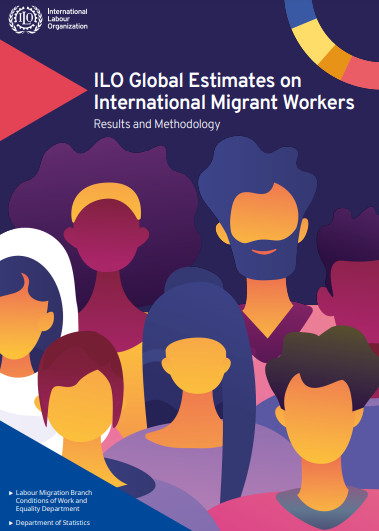
- 21 Jan 2025
In New:
By addressing labour market shortages in host nations and contributing remittances to home countries, International Migrants (IM) continue to make contributions to world economic growth, the fourth edition of ‘Global Estimates on International Migrant Workers’, released by the International Labour Organization (ILO), stated.
Key Findings:
Global Representation:
- International Migrants (IMs) = 4.7% of global labour force - 167.7 million total:
- Employed: 155.6 million
- Unemployed (but seeking work): 12.1 million
- Increase of 30+ million migrant workers since 2013
- Growth rate dropped below 1% annually (2019–2022) due to COVID-19
Gender Composition:
- Male IMs: 61.3% (102.7 million)
- Female IMs: 38.7% (64.9 million)
- Lower female participation attributed to:
- Lower female migration rates globally
- Gender-based barriers in labour markets
- Over-representation in informal and unpaid sectors
Age Distribution:
- Prime working age (25–54 yrs): 74.9%
- Youth (15–24 yrs): 9.3%
- Older adults (55–64 yrs): 12.5%
- Seniors (65+ yrs): 3.4%
Sector-wise Employment:
Sector Share of IMs Notes
Services 68.4% Highest; women dominate (80.7%)
Industry 24.3% On par with non-migrants
Agriculture 7.4% Far lower than non-migrants (24.3%)
Care economy in high-income countries is a major pull for female migrants.
Host Country Distribution:
Region/Income Group % of IMs Notes
High-income countries 68.4% (114 million) Majorly Europe & North America
Upper-middle-income 17.4% (29.2 million)
Arab States 13.3% Declined since 2013
Europe (23.3%) and North America (22.6%) are top destinations. Arab states saw a 3% decline over the decade.
Definition: International Migrants (IMs)
As per the UN: Persons residing in a country different from their place of usual residence for at least one year, regardless of reason or legal status. Includes refugees, asylum seekers, etc.
Role & Contributions of IMs:
- Economic Drivers: Fill labour shortages (healthcare, construction, care work).
- Remittances: Boost home country economies.
- Demographic Support: Help address aging populations in developed nations.
Cultural Exchange: Promote diversity and global connectivity.
Mount Ibu Eruption

- 21 Jan 2025
In News:
Indonesia’s Mount Ibu erupted 1,000 times this month.
Overview:
- Location: Mount Ibu, Halmahera Island, North Maluku province, Indonesia.
- Volcano Type: Stratovolcano (composite volcano) – steep-sided, conical structure formed by successive layers of lava, ash, and pyroclastic material.
- Tectonic Setting: Located on the Pacific Ring of Fire, a major area of subduction zones with high volcanic and seismic activity.
Volcanic Context – Indonesia:
- Pacific Ring of Fire: Indonesia's location makes it one of the most volcanically active regions globally.
- Other Recent Eruptions:
- Mount Lewotobi Laki-Laki (twin-peaked volcano)
- Mount Ruang
- Both have shown heightened activity, triggering mass evacuations.
Indian Coffee Sector
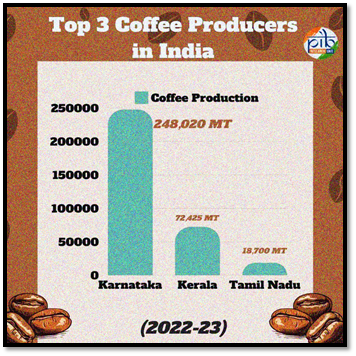
- 21 Jan 2025
In News:
India is now the seventh-largest coffee producer globally with exports reaching $1.29 billion in FY 2023-24, almost double the $719.42 million in 2020-21.
Historical Background
- Origin: Coffee was introduced to India in the 17th century by Baba Budan, a Sufi saint, who brought seven Mocha beans from Yemen and planted them in Baba Budan Giri hills, Karnataka.
- This act laid the foundation for India’s coffee cultivation, which has since evolved into a robust agro-industry.
India’s Global Coffee Status
- 7th largest coffee producer globally (FY 2023–24).
- Exports: Reached $1.29 billion in FY 2023–24, nearly double the $719.42 million in FY 2020–21.
- Major export destinations: Italy, Belgium, Russia.
- Export Share: Over 70% of India's coffee is exported, mostly in unroasted (green bean) form.
Types of Coffee Cultivated
- Arabica: Mild flavor, higher market value.
- Robusta: Strong flavor, more robust; often used in instant coffee.
- India's production: Around 75% is a mix of Arabica and Robusta.
Geographical Distribution
- Major Coffee-Growing Regions:
- Karnataka: Leads with over 70% of national production (~248,020 MT in 2022–23).
- Kerala and Tamil Nadu follow.
- Other contributors: Andhra Pradesh, Odisha, and parts of Northeast India
- Agro-climatic Conditions:
- Altitude: 600–1600 meters
- Temperature: 15°C–28°C
- Rainfall: 150–250 cm annually
- Soil: Well-drained, loamy, rich in humus and minerals
Economic & Environmental Significance
- Coffee is largely grown in the Western and Eastern Ghats, biodiversity-rich zones with shade-grown plantations.
- These plantations:
- Conserve ecology and biodiversity
- Support sustainable agriculture
- Contribute to rural livelihoods
Domestic Trends
- Rising café culture, urbanization, and higher disposable incomes have led to increased coffee consumption.
- Domestic consumption rose from 84,000 tonnes (2012) to 91,000 tonnes (2023).
- Preference for coffee over tea is growing, especially in urban and semi-urban India.
Government Initiatives
- Coffee Board of India initiatives under the Integrated Coffee Development Project (ICDP) aim to:
- Enhance yields
- Expand to non-traditional areas
- Promote sustainable practices
- Araku Valley Model:
- Involves 150,000 tribal families
- 20% increase in production
- Backed by Girijan Co-operative Corporation (GCC) and Integrated Tribal Development Agency (ITDA)
- Aligned with Aatmanirbhar Bharat and rural empowerment
Current Challenges and Future Outlook
- Challenges: Climate change impacts, pest attacks, price volatility in global markets.
- Opportunities:
- Rising global demand for value-added products (roasted & instant coffee)
- Export incentives and improved logistics
- Potential for agri-tourism and organic branding
Entity Locker
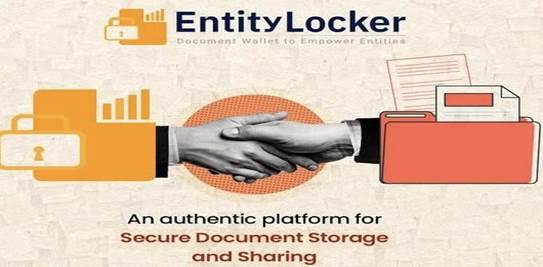
- 21 Jan 2025
In News:
The National eGovernance Division (NeGD), under the Ministry of Electronics and Information Technology (MeitY) has developed Entity Locker, a cutting-edge digital platform designed to transform the management and verification of business/organisation documents.
Key Highlights:
What is Entity Locker?
A secure, cloud-based platform that allows real-time access, encrypted storage, and authenticated sharing of business-related documents.
Who can use it?
Large corporations, MSMEs, startups, trusts, societies, and other organizational entities.
- Key Features:
- 10 GB Encrypted Cloud Storage: Ensures secure document management.
- Real-Time Document Access & Verification: Integrated with government databases.
- Consent-Based Sharing: Ensures data privacy during information exchange.
- Digital Signature Authentication: Enables legally valid and secure transactions.
- Aadhaar-Authenticated Role-Based Access: Promotes accountability in document handling.
- Integration with Government Systems: Linked with entities like:
- Ministry of Corporate Affairs (MCA)
- Goods and Services Tax Network (GSTN)
- Directorate General of Foreign Trade (DGFT)
Benefits:
- Reduces administrative burden and document processing time.
- Enhances compliance with statutory and regulatory requirements.
- Enables faster processes like vendor verification, loan applications, and FSSAI compliance.
- Promotes transparency and secure collaboration among stakeholders.
Significance:
Entity Locker is a pivotal component of India’s Digital Public Infrastructure, reflecting the Union Budget 2024–25 vision of promoting digital governance. It supports the broader goals of the Digital India Programme, aiming for a digitally empowered and efficient economy.
ILO World Employment and Social Outlook 2025
- 20 Jan 2025
In News:
The global economy is slowing down, making it harder for labour markets to recover fully since the outbreak of the COVID 19 pandemic, according to the International Labour Organization’s (ILO) report, World Employment and Social Outlook: Trends 2025, released in Geneva
Global Employment Trends
- Unemployment Rate (2024): Remained steady at 5%.
- Youth Unemployment: High at 12.6%, particularly severe in upper-middle-income countries (16%).
- Global Jobs Gap:
- 402 million people want work but are jobless (2024):
- 186 million unemployed
- 137 million temporarily unavailable
- 79 million discouraged workers
- 402 million people want work but are jobless (2024):
- NEET Population (2024):
- 259.1 million globally:
- 173.3 million young women (28.2%)
- 85.8 million young men (13.1%)
- 259.1 million globally:
Economic Growth and Labour Recovery
- Global Growth (2024): 3.2% (↓ from 3.3% in 2023 and 3.6% in 2022)
- Forecast (2025): Similar growth expected, with gradual deceleration ahead.
- Recovery Remains Uneven:
- High-income countries see rise in labour force participation.
- Low-income countries (LICs) face challenges creating decent jobs, with informal work returning to pre-pandemic levels.
- India’s GDP Growth:
- 6.9% in 2024, forecast at 6.4% in 2025
- Driven by monetary easing, domestic demand, and public investment
- Southern Asia: Growth pegged at 6.2% in 2024, 5.8% in 2025, mainly due to India.
- Labour Participation:
- Significant increase in female labour force participation, especially in India.
Key Labour Market Challenges
- Geopolitical Tensions
- Climate Change Costs
- Unresolved Debt Issues
- ~70 countries at risk of debt distress
- Many LICs spend more on debt servicing than on education/health
- Stagnant Real Wages
- Post-pandemic wage recovery mostly in advanced economies
- Vulnerable Jobs in Developing Regions
- Sub-Saharan Africa: 62.6% households live on <USD 3.65/day
- Employment is mainly informal, lacking security
Green and Digital Transitions
- Green Jobs Growth:
- Employment in renewables rose from 13.7 million (2022) to 16.2 million (2023)
- 46% of green energy jobs are in China
- Digital Economy:
- Offers promise, but infrastructure and skills gap limit benefits in many countries.
ILO Recommendations for Social Justice & SDG 2030 Goals
- Boost Productivity & Job Creation: Invest in skills training, education, and infrastructure
- Expand Social Protection: Better access to social security and safe work conditions
- Leverage Private Capital: LICs should channel remittances and diaspora funds into development
- Structural Transformation: Focus on modern services and manufacturing for quality jobs
- Youth Skill Development: Promote education for emerging sectors like green tech and digital economy
- Global Collaboration: Foster inclusive fiscal and monetary policies for equitable recovery
About ILO
- Established: 1919 | UN Agency
- Members: 187 countries
- Headquarters: Geneva, Switzerland
- Unique Tripartite Structure: Brings together governments, employers, and workers to set labour standards and promote decent work for all.
Dark Oxygen
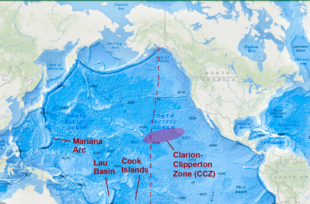
- 20 Jan 2025
In News:
Scientists who recently discovered that metal lumps on the dark seabed make oxygen, have announced plans to study the deepest parts of Earth's oceans in order to understand the strange phenomenon.
What is Dark Oxygen?
Dark Oxygen refers to oxygen produced deep under the ocean without sunlight or photosynthesis.
Discovered in July 2024, this challenges the long-standing belief that photosynthesis is the sole natural source of oxygen.
Where was it discovered?
- Location: Clarion-Clipperton Zone (CCZ), 13,100 feet deep in the North Pacific Ocean, between Hawaii and Mexico.
- Zone Significance: Rich in polymetallic nodules containing manganese, iron, cobalt, nickel, copper, and lithium — crucial for green technologies.
Mechanism of Oxygen Production
- Polymetallic nodules on the seafloor generate oxygen via electrochemical reactions.
- These nodules split seawater (H?O) molecules into hydrogen and oxygen, without any light.
- This process is non-biological and independent of photosynthesis.
Why is this Discovery Important?
- Scientific Paradigm Shift: Challenges the idea that photosynthesis is the only natural pathway for oxygen generation.
- Origins of Life: Suggests that oxygen production may have existed before photosynthetic organisms, reshaping theories of early Earth’s evolution.
- Astrobiological Implications: Indicates the possibility of oxygen-rich environments on other planets, even without sunlight — enhancing the search for extraterrestrial life.
- Environmental Tech Potential: Could lead to innovations in renewable energy and carbon-neutral technologies, using metal-based catalysis.
About the Clarion-Clipperton Zone (CCZ)
- Geographic span: Between Hawaii and Mexico in the North Pacific Ocean.
- Resources: Contains vast reserves of critical minerals like manganese, nickel, cobalt — essential for electric vehicles and solar technology.
- A focus area for deep-sea mining and sustainability studies.
National Panchayat Awards 2024
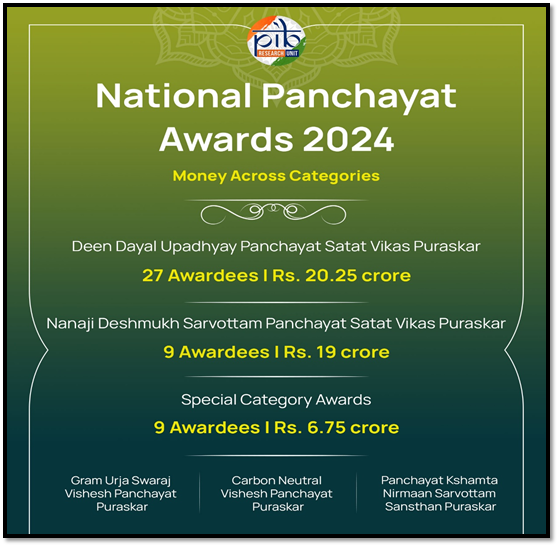
- 20 Jan 2025
In News:
The President of India conferred the National Panchayat Awards 2024 on 45 outstanding Panchayats for their contributions to inclusive growth, environmental sustainability, and rural development. The event was held on 11th December 2024 (postponed from 24th April due to General Elections).
About the Awards
- Launched to commemorate: 73rd Constitutional Amendment Act, 1992, which gave constitutional status to Panchayats as institutions of local self-governance.
- Usual celebration date: 24th April — observed as National Panchayati Raj Day.
- Revamped in 2022 to align with Sustainable Development Goals (SDGs) via Localization of SDGs (LSDGs).
Objectives
- Recognize best practices in rural governance.
- Encourage healthy competition among Panchayats.
- Promote effective implementation of LSDGs and quality service delivery.
Evaluation Structure
- Multi-level assessment: Block → District → State/UT → National level.
- Evaluation based on 9 LSDG themes, including:
- Poverty-Free & Enhanced Livelihoods
- Healthy Panchayat
- Child-Friendly Panchayat
- Water-Sufficient Panchayat
- Clean & Green Panchayat
- Self-Sufficient Infrastructure
- Socially Just & Secured Panchayat
- Panchayat with Good Governance
- Women-Friendly Panchayat
Award Categories
Award Category Focus Area
Deen Dayal Upadhyay Panchayat Satat Vikas Puraskar (DDUPSVP) Top 3 GPs under each LSDG theme
Nanaji Deshmukh Sarvottam Panchayat Satat Vikas Puraskar Top 3 GPs, Block Panchayats & District Panchayats with highest scores across all themes
Gram Urja Swaraj Vishesh Panchayat Puraskar GPs promoting renewable energy adoption
Carbon Neutral Vishesh Panchayat Puraskar GPs achieving net-zero carbon emissions
Panchayat Kshamta Nirmaan Sarvottam Sansthan Puraskar Institutions providing exemplary support to PRIs in implementing LSDGs
Key Highlights of 2024:
- Total Awards: 45 Panchayats
- Women Leadership: 42% of award-winning Panchayats led by women.
- Participation: 1.94 lakh Gram Panchayats competed.
- Prize Money: ?46 crore transferred digitally to awardees.
- Booklet Released: Best Practices of Awardee Panchayats.
- Film Showcased: Highlighting success stories and capacity-building.
State-wise Recognition
- Notable awardees from: Odisha, Tripura, Maharashtra, Uttar Pradesh, Andhra Pradesh, Kerala, Telangana, Assam, etc.
- Tripura & Odisha stood out in total recognitions.
- GPs from Maharashtra, Odisha, and Tripura received special awards for energy and carbon neutrality.
Other Key Initiatives for PRIs
Initiative Purpose
SVAMITVA Scheme (2020) Mapping rural property to provide Record of Rights.
e-Gram Swaraj (e-FMS) Work-based accounting to promote transparency.
mActionSoft Geo-tagging Panchayat assets via GPS-enabled photos.
Citizen Charter Portal “Meri Panchayat Mera Adhikaar” – Service delivery assurance to citizens.
India–Singapore Semiconductor Cooperation
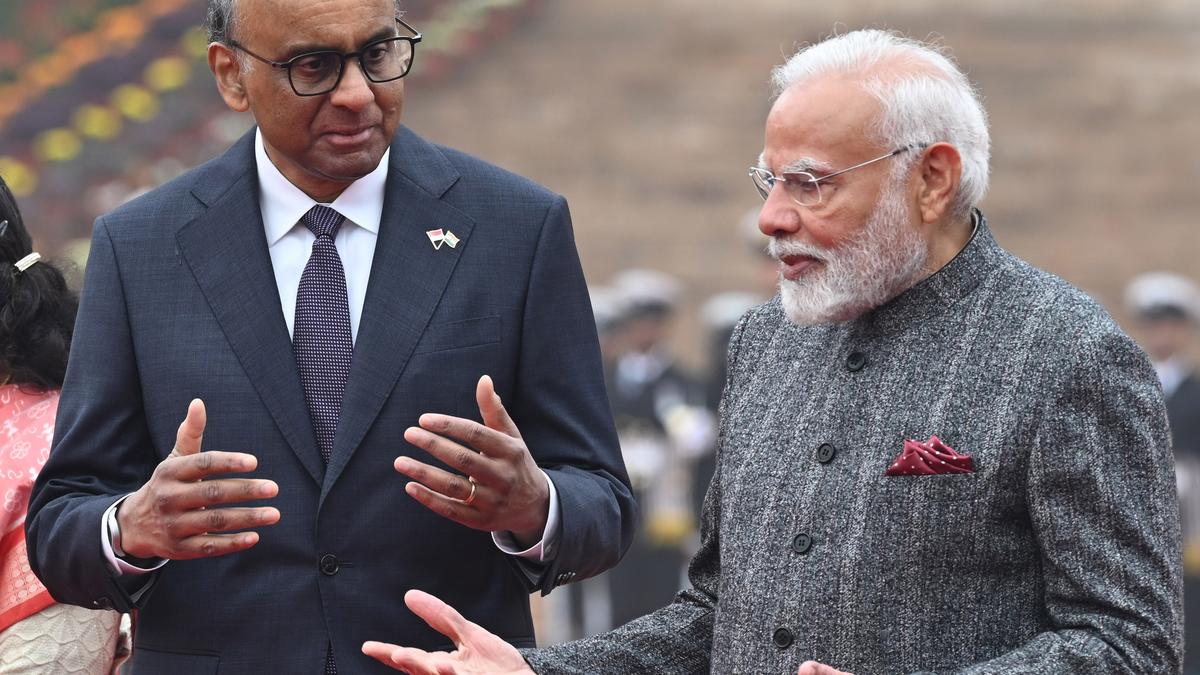
- 20 Jan 2025
In News:
During his 2025 visit to India, Singapore President Tharman Shanmugaratnam announced plans to collaborate with India on semiconductor manufacturing and the creation of a semiconductor ecosystem, marking the 60th anniversary of diplomatic ties between the two nations.
Singapore’s Semiconductor Landscape
- Contribution to Economy: Accounts for ~8% of Singapore’s GDP.
- Global Standing:
- Produces 10% of global semiconductor output.
- 5% of global wafer fabrication capacity.
- 20% of global semiconductor equipment production.
- Comprehensive Ecosystem: End-to-end capabilities from IC design to packaging and testing.
- Infrastructure: Four wafer fabrication parks with advanced facilities.
- Current Limitation: Focused on mature-node chips (28 nm+); lacks high-end logic chip manufacturing (7 nm or below).
India’s Semiconductor Sector
- Market Size (2024): Valued at USD 52 billion; projected to reach USD 103.4 billion by 2030.
- Import Dependency: ~85% of semiconductor needs met through imports.
- Export-Import Gap (2022): USD 5.36 billion (imports) vs. USD 0.52 billion (exports).
India's Advantages:
- Skilled Talent Pool: Large number of STEM graduates.
- Cost Efficiency: Lower manufacturing and operational costs.
- Geopolitical Opportunity: Global supply chain diversification away from China.
Government Initiatives:
- India Semiconductor Mission (ISM)
- Semicon India Programme
- Display & Semiconductor Fab Schemes
- SPECS (Scheme for Promotion of Manufacturing of Electronic Components and Semiconductors)
Foreign Collaborations:
- MoUs with US, Japan, and European Commission.
- Tata–Powerchip (Taiwan) collaboration for a fab in Dholera, Gujarat.
How Singapore Can Support India’s Semiconductor Vision
- Manufacturing Partnerships:
- Collaborations with Singaporean firms for assembly and testing services.
- Access to Singapore's advanced manufacturing technologies.
- Talent Development:
- Academic exchanges in microelectronics and semiconductor engineering.
- Joint research and PhD programs.
- Infrastructure Development:
- Replication of Singapore-style wafer fab parks in India.
- Joint ventures to build specialized semiconductor industrial zones.
- Technology Access & Innovation:
- Transfer of advanced technologies and critical semiconductor materials.
- Collaboration on new-generation tech solutions (e.g., AI chips, advanced computing).
Additional Areas of Bilateral Cooperation
- Digital Economy: Exploring data corridor between GIFT City (India) and Singapore.
- Sustainability: Cooperation on green hydrogen, sustainable aviation fuel, and renewable energy.
Strategic Partnership: Upgraded to Comprehensive Strategic Partnership in 2024.
Internet Governance Internship and Capacity Building (IGICB) Scheme
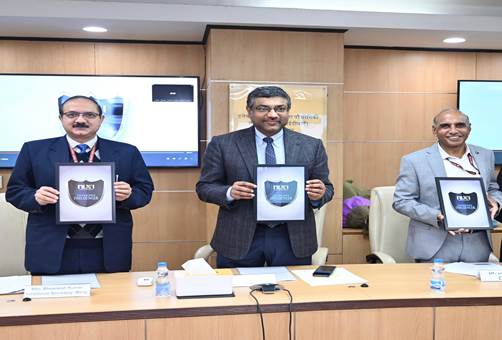
- 20 Jan 2025
In News:
The National Internet Exchange of India (NIXI) announced the launch of its Internet Governance Internship and Capacity Building Scheme. This program aims to build awareness and develop expertise in internet governance (IG) among Indian citizens.
Key Highlights:
Objective:
To develop awareness and build a skilled pool of professionals in Internet Governance (IG) in India, enabling active Indian participation in global digital policy platforms.
Key Features:
- Internship Format:
- Bi-annual internship with two tracks: 3-month and 6-month durations
- Mentorship by experts from:
- International bodies (e.g., ICANN, APNIC, APTLD)
- Academic institutions and retired officials
- Stipend: ?20,000/month
- Outreach Component: Mandatory awareness programs to be conducted by interns
Focus Areas:
- Engagement with I-Star organizations, such as:
- ICANN (Internet Corporation for Assigned Names and Numbers)
- ISOC (Internet Society)
- IEEE (Institute of Electrical and Electronics Engineers)
- IETF (Internet Engineering Task Force)
- Exposure to global best practices and policy mechanisms in digital governance
- Capacity building for inclusive participation in emerging internet issues
Significance:
- Promotes digital policy leadership among Indian youth
- Enhances India’s representation in global internet governance dialogues
- Fosters a tech-savvy and policy-aware workforce for digital India initiatives
About NIXI (National Internet Exchange of India):
- Established: 19 June 2003
- Type: Not-for-profit (Section 8 company)
- Parent Ministry: MeitY
- Mandate:
- Enhance internet adoption and digital infrastructure in India
- Key Services:
- Internet Exchange Points (IXPs): Facilitate domestic internet traffic exchange
- .IN Registry: Manage India’s country code top-level domain (.in)
- IRINN: Allocate IPv4 and IPv6 resources within India
Capacity Building & Training: Promote internet-related knowledge and skills
Ratnagiri Buddhist Site
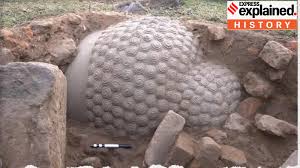
- 19 Jan 2025
In News:
The Archaeological Survey of India (ASI) has resumed excavations at the ancient Buddhist site of Ratnagiri in Odisha’s Jajpur district, unveiling monumental discoveries that underline its rich religious, cultural, and maritime legacy. This renewed effort comes more than 60 years after the site was first excavated between 1958 and 1961.
About Ratnagiri
- Meaning: Ratnagiri translates to “Hill of Jewels.”
- Location: Situated on a hill between the Brahmani and Birupa rivers, northeast of Bhubaneswar.
- Part of the Diamond Triangle: Along with Lalitgiri and Udaygiri, Ratnagiri forms Odisha’s famed “Diamond Triangle” of Buddhist heritage sites.
- Historical Period: Flourished between the 5th and 13th centuries CE, peaking under the Bhauma-Kara dynasty (8th–10th century CE).
- Buddhist School: An important centre for Mahayana and especially Vajrayana (Tantrayana) Buddhism.
- It possibly rivalled Nalanda in prominence as a Buddhist learning centre.
- The monastery complex at Ratnagiri is the only one in India with a curvilinear roof, once housing about 500 monks.
Recent Discoveries by ASI
- Three colossal Buddha heads, each measuring 3–4 feet.
- A massive palm sculpture, 5 feet in size.
- Hundreds of votive stupas, sculptures of Buddhist deities.
- A monolithic elephant statue, 5 feet long and 3.5 feet tall.
- Pottery, inscribed stones, beads, stone pillars, and a brick wall believed to be part of a larger structure.
- Rich ceramic assemblages, which may shed light on the region’s cultural and technological evolution.
These artefacts are estimated to date back to the 8th and 9th centuries CE and are believed to enhance understanding of Buddhism’s evolution in Odisha and its linkages with other cultures.
Buddhism in Odisha & Southeast Asian Links
- Buddhism gained a strong foothold in Odisha after Emperor Ashoka’s conquest of Kalinga (modern-day Odisha) in 261 BCE, a turning point that led him to embrace Buddhism.
- Though Buddha never visited Odisha, the region became instrumental in spreading Buddhism to Southeast Asia, especially during the Bhauma-Kara period.
- The state maintained robust maritime trade and cultural links with regions like Java, Bali, Sumatra, Borneo, Myanmar, and Sri Lanka.
- Baliyatra Festival: A vibrant annual event held in Cuttack, commemorating Odisha’s ancient seafaring ties with Bali and other Southeast Asian regions.
- According to some studies, Chinese monk Hiuen Tsang may have visited Ratnagiri during his travels in India (638–639 CE).
Significance of the Renewed Excavations
- The ASI aims to uncover partially visible structures, complete the site’s mapping, and contextualize the findings within the broader Buddhist history of India and Southeast Asia.
- Researchers hope to discover signs of foreign architectural or cultural influences, further confirming ancient Odisha’s global Buddhist and trade connections.
- The discoveries reaffirm Ratnagiri’s importance as a cornerstone of Buddhist learning and art, potentially on par with other renowned ancient centres like Nalanda and Vikramashila.
Interest Equalisation Scheme (IES)
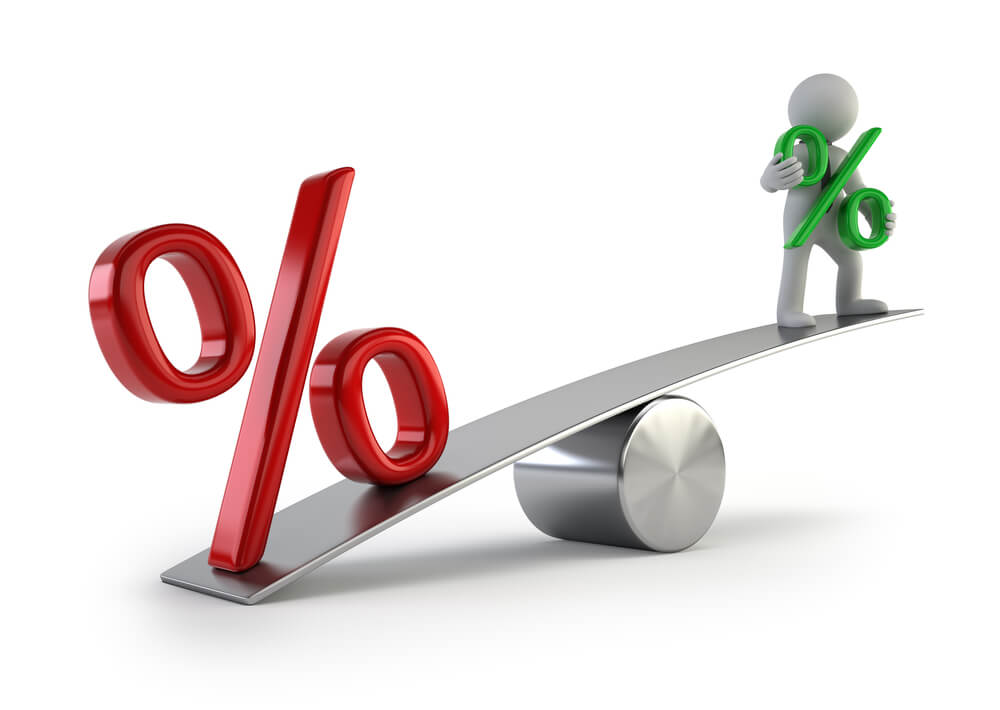
- 19 Jan 2025
In News:
- Launched in April 2015, the Interest Equalisation Scheme (IES) offers subsidised interest rates on pre- and post-shipment export credit to Indian exporters, particularly MSMEs.
- The Commerce Ministry has sought a Rs 3,000 crore extension of the scheme beyond December 2024, with emphasis on supporting MSME exporters amidst global economic challenges.
Objectives of IES:
- Reduce Cost of Credit: Offers 3% to 5% interest subvention to make export credit affordable.
- Boost Export Competitiveness: Enables Indian exporters, especially MSMEs, to match international pricing.
- Encourage Export Diversification: Supports MSMEs in exploring new markets and products.
- Enhance Financial Inclusion: Promotes access to formal credit systems for small exporters.
Key Features:
- Interest Subsidy:
- 3% for MSME manufacturer exporters.
- 2% for merchant and manufacturer exporters of 410 specified tariff lines.
- Coverage: Initially limited to select products, later extended to all MSME exporters.
- Implementation:
- Managed by the RBI, in coordination with DGFT and authorized banks.
- Subsidy reimbursed to banks offering export credit at reduced rates.
- Banks exceeding Repo Rate + 4% are excluded.
Need for Extension:
- The scheme expired in December 2024, but exporters are demanding continuation due to:
- Rising global inflation and logistics disruptions (e.g., Red Sea crisis).
- Increase in credit duration demands from foreign buyers (120–150 days).
- Decline in export credit availability despite higher demand.
- FIEO reports a drop in outstanding export credit from ?2.27 lakh crore (2023) to ?2.17 lakh crore (2024).
- MSMEs operate on thin margins, and the subvention can make or break deals.
Significance for MSMEs:
- MSMEs contribute ~45% to India’s total exports and often struggle with high borrowing costs and limited financial access.
- Affordable credit via IES allows MSMEs to:
- Remain price competitive.
- Take larger and longer-term orders.
- Invest in product innovation and value addition.
- Improve market diversification and resilience.
Challenges in Accessing Credit:
- Stringent eligibility norms and collateral requirements.
- Complex administrative procedures for availing benefits.
- Limited awareness among small enterprises about the scheme.
- Slow disbursal and inconsistent application by banks.
Policy Implications and the Way Forward:
- A revamped, MSME-focused IES can ensure inclusive growth and boost India’s export-led development.
- Calls for:
- Simplification of procedural norms.
- Higher interest subvention limits or removal of caps (e.g., ?50 lakh per IEC holder).
- Longer validity (multi-year horizon) for predictability and planning.
- Aligns with the broader goals of Atmanirbhar Bharat, Make in India, and achieving $1 trillion in exports by 2030.
Exercise La Perouse 2025
- 19 Jan 2025
In News:
India is participating in the fourth edition of the multinational naval exercise La Perouse, hosted by France in key maritime straits—Malacca, Sunda, and Lombok. The Indian Navy's INS Mumbai, an indigenously built guided-missile destroyer, represents India.
Key Highlights:
- Participating Countries: Navies from India, France, Australia, USA, UK, Indonesia, Malaysia, Singapore, and Canada.
- Objectives:
- Enhance maritime situational awareness.
- Promote tactical interoperability through joint training.
- Conduct surface warfare, anti-air warfare, air defence, and VBSS (Visit, Board, Search and Seizure) operations.
- Strengthen cooperation on maritime surveillance, air operations, and information sharing.
- Significance:
- Demonstrates commitment to a rules-based international order in the Indo-Pacific.
- Reflects India’s vision of SAGAR (Security and Growth for All in the Region).
- Counters increasing presence of Chinese naval forces in the Indo-Pacific.
Strategic Location: Key Straits in Focus
- Strait of Malacca
- Connects: Andaman Sea (Indian Ocean) to South China Sea (Pacific Ocean).
- Geography: Lies between Peninsular Malaysia and Sumatra, near Singapore.
- Significance: One of the world’s busiest trade routes.
- Choke Point: Narrowest part (Philips Channel) is only 2.8 km wide.
- Sunda Strait
- Connects: Java Sea (Pacific) to the Indian Ocean.
- Between: Java and Sumatra (Indonesia).
- Challenges: Volcanic islands (e.g., Krakatoa), shallow depths (20–100 m).
- Importance: Secondary maritime route, strategic in times of congestion in Malacca.
- Lombok Strait
- Connects: Java Sea to the Indian Ocean.
- Between: Bali and Lombok islands.
- Depth: 250–1,300 meters – suitable for large vessels.
- Unique Feature: Part of the Wallace Line, a major ecological boundary.
Sanchar Saathi App
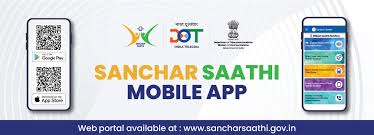
- 19 Jan 2025
In News:
In a landmark move to enhance telecom accessibility, security, and empowerment across India, the Union Minister of Communications launched a suite of citizen-focused initiatives. Key highlights of the event included the launch of the Sanchar Saathi Mobile App, National Broadband Mission (NBM) 2.0 and the inauguration of the Intra Circle Roaming facility at DBN Funded 4G Mobile Sites.
Sanchar Saathi Mobile App
- Launched by: Department of Telecommunications (DoT), Ministry of Communications.
- Platforms: Available on Android and iOS.
- Objective: Strengthen telecom security, empower citizens, and combat telecom fraud.
- Key Features:
- Chakshu (SFC): Report suspected fraud communications (calls/SMS).
- Know Your Mobile Connections: Identify and manage all mobile numbers issued in one’s name.
- Block Lost/Stolen Devices: Swiftly block, trace, and recover lost/stolen mobile phones.
- Verify Handset Genuineness: Confirm the authenticity of mobile handsets before purchase.
Impact so far (via Sanchar Saathi Portal, launched May 2023):
- 2.75 crore fraudulent connections disconnected.
- 25+ lakh lost/stolen devices blocked.
- 12.38 lakh WhatsApp accounts linked to cybercrimes disengaged.
- 11.6 lakh mule bank accounts frozen.
- 90% spoofed international calls blocked within 2 months of new prevention system.
National Broadband Mission (NBM) 2.0
- Launched by: Union Minister of Communications, builds upon NBM 1.0 (2019–2024).
- Part of: National Digital Communications Policy, 2018.
- Aim: Digitally empower citizens and bridge the digital divide to realize the vision of Viksit Bharat by 2047.
Key Targets (by 2030):
- 2.70 lakh villages to be connected with OFC (from ~50,000 now).
- 90% broadband connectivity to anchor institutions (schools, PHCs, Panchayats, Anganwadis).
- Fixed broadband speed: Increase national average from 63.55 Mbps (2024) to 100 Mbps.
- Right of Way (RoW) disposal time: Reduce from 60 days to 30 days.
- Rural internet subscribers: Increase from 45 to 60 per 100 population.
- 30% of mobile towers to be powered by sustainable energy.
- 100% mapping of PSU fiber networks on PM GatiShakti National Master Plan by 2026.
- Enhanced use of “Call Before u Dig (CBuD)” app to protect underground telecom infrastructure.
- Facilitate 5G rollout, and prepare infrastructure for 6G and common telecom ducts in all linear projects.
- Leverage power sector (e.g. Optical Ground Wire - OPGW) for broadband in remote/hilly areas.
Intra Circle Roaming (ICR) at DBN-Funded 4G Sites
- Launched by: Ministry of Communications.
- Implemented under: Digital Bharat Nidhi (DBN), formerly USOF.
- Objective: Allow subscribers of multiple telecom service providers (TSPs) (e.g., BSNL, Airtel, Reliance) to access 4G services from a single DBN-funded tower.
- Impact:
- Eliminates need for duplicate towers.
- Covers 27,000+ towers across 35,400 remote villages.
- Enhances user choice, reduces cost, and ensures efficient infrastructure use.
Nigeria admitted as BRICS Partner Country

- 19 Jan 2025
In News:
- Nigeria has been admitted as the 9th "Partner Country" of the BRICS grouping under Brazil’s presidency in 2025.
- Other BRICS partner countries include Belarus, Bolivia, Cuba, Kazakhstan, Malaysia, Thailand, Uganda, and Uzbekistan.
- A "partner country" in BRICS is allowed to attend summits, ministerial meetings, and participate in joint initiatives, but does not have formal membership or decision-making power.
About Nigeria’s Role
- Nigeria has the 6th largest population globally and the largest in Africa.
- It is the 4th largest economy in Africa, often termed the "Giant of Africa".
- Nigeria plays a significant role in South-South cooperation and reform of global governance structures, aligning with BRICS' strategic objectives.
About BRICS
- Founded: 2009 by Brazil, Russia, India, and China; South Africa joined in 2010.
- New Full Members (as of 2023): Iran, Egypt, Ethiopia, UAE, and Indonesia (effective Jan 2025).
- Membership Invitations: Saudi Arabia has been invited but not yet accepted.
- Applicants: Turkey, Azerbaijan, Malaysia have formally applied.
- Three Pillars of Cooperation:
- Political and Security
- Economic and Financial
- Cultural and People-to-People Exchanges
- Represents ~40% of global population and ~37.3% of global GDP.
India has hosted BRICS Summits in 2012 (4th), 2016 (8th), and 2021 (13th).
Binding DDT-Infused Soil with Biochar
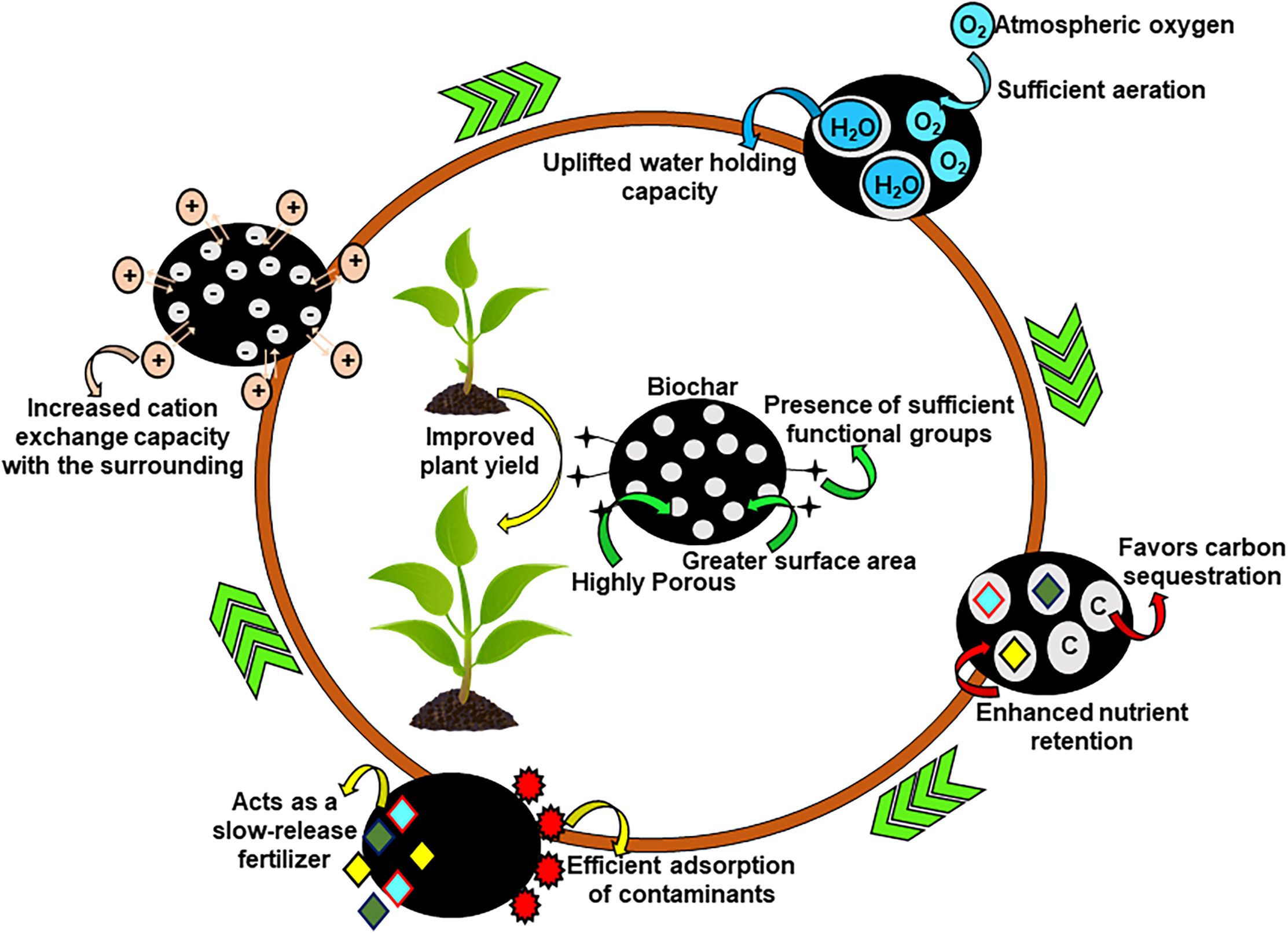
- 18 Jan 2025
In News:
A three-year study was conducted on a 23-hectare DDT-contaminated former tree nursery in southern Sweden. Researchers mixed biochar into sections of the contaminated soil and planted different crops, including pumpkins, legumes, grasses, and willows.
Key findings:
- Reduction of DDT Uptake: The presence of biochar reduced DDT absorption by soil organisms, cutting the toxin uptake by earthworms in half.
- Enhanced Soil Health: Biochar improved soil structure, fertility, and microbial activity.
- Cost-Effective Alternative: Unlike traditional soil removal methods, which are expensive and labor-intensive, biochar treatment offers a sustainable and economical approach.
- Support for Renewable Energy: The method allows for the growth of bioenergy crops such as willow trees, further contributing to environmental benefits.
Implications for Future Agricultural Practices
This breakthrough provides a viable approach to rehabilitate contaminated lands worldwide. Many regions, including India, still grapple with DDT contamination. While India banned agricultural use of DDT in 1972, it continues to be used for disease control under strict regulations. The application of biochar could significantly aid in soil restoration and sustainable land management
About DDT
- Dichlorodiphenyltrichloroethane (DDT) is a synthetic insecticide first introduced in 1939. It was widely used in agriculture and public health initiatives to control vector-borne diseases like malaria.
- However, despite its effectiveness against pests, DDT’s persistence in the environment led to severe ecological and health concerns.
- It degrades slowly, accumulates in fatty tissues, and disrupts ecosystems by affecting soil fertility, harming wildlife, and posing potential human health risks, including endocrine disruption and carcinogenic effects.
Challenges Posed by DDT-Contaminated Soils
The prolonged use of DDT has resulted in extensive soil contamination, making land infertile and unsuitable for cultivation. Conventional methods of decontamination, such as soil excavation and disposal, are expensive and environmentally unsustainable.
Biochar as a Solution
Researchers at Sweden’s Chalmers University of Technology have developed an innovative method to restore DDT-contaminated soils by integrating biochar.
What is Biochar?
Biochar is a charcoal-like material produced by burning organic waste in a controlled oxygen-limited environment (pyrolysis). It is known for its ability to enhance soil quality, bind contaminants, and store carbon for extended periods.
Kuka Rebellion and Namdhari Sect
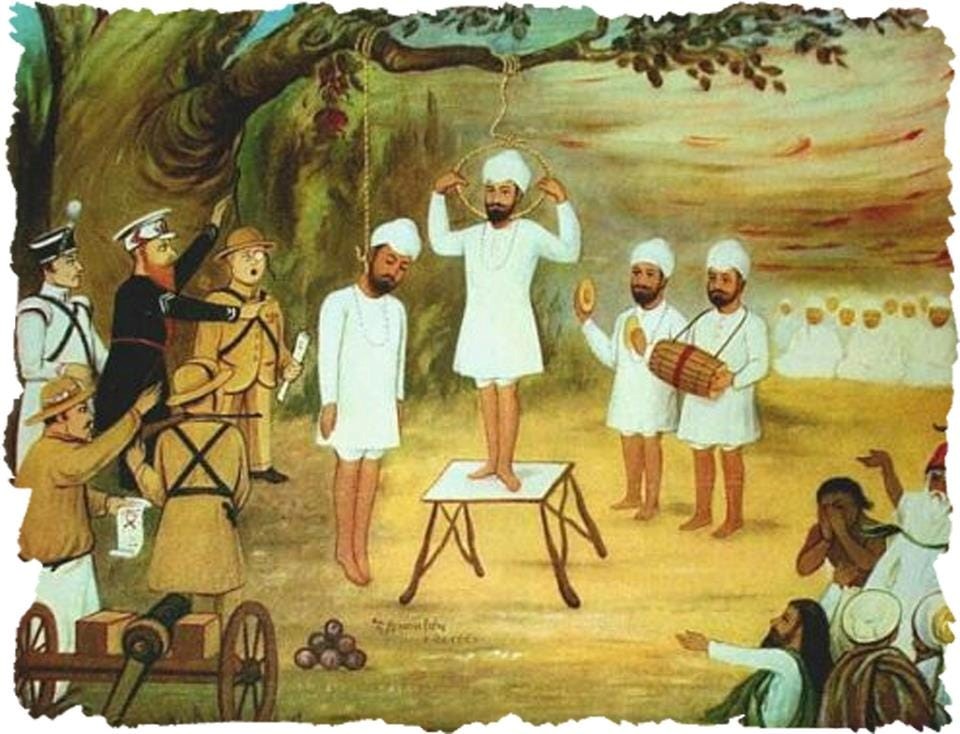
- 18 Jan 2025
In News:
On January 17, Punjab Chief Minister Bhagwant Mann paid tribute at the Namdhari Shaheed Smarak in Malerkotla to commemorate Kuka Martyrs’ Day. The event marks the execution of 66 Namdhari Sikhs by the British in January 1872.
Kuka Rebellion: An Overview
The Kuka Rebellion was an anti-British movement led by the Namdhari sect in Punjab. It combined religious reform with resistance to colonial rule, reaching its peak in January 1872.
Key Events:
- January 13, 1872: Kukas, led by Hira Singh and Lehna Singh, protested against cow slaughter in Malerkotla.
- January 15, 1872: Clashes occurred between Kukas and government officials. A contingent attacked Malaudh Fort but was repulsed.
- January 17-18, 1872: 66 Kukas were executed by being blown up with cannons under orders of British official John Lambert Cowan.
Reasons Behind the Movement:
- Religious Reform: Opposed meat consumption, alcohol, and social vices.
- Colonial Oppression: Protested against British rule and native collaborators.
- Cow Protection: Strongly opposed cow slaughter, leading to confrontations with British authorities.
Impact and Aftermath:
- Suppression: The British crushed the movement with extreme brutality.
- Exile of Leaders: Satguru Ram Singh and other key leaders were exiled to Rangoon, Burma.
- Legacy of Martyrdom: The sacrifice of young Namdharis like 12-year-old Bishan Singh and Waryam Singh inspired future resistance movements in India.
Who are the Namdharis?
The Namdharis, also called Kukas, are a Sikh sect founded by Satguru Ram Singh in 1857 in Ludhiana. Their distinctive practices include:
- High-pitched recitation of Gurbani (hence the name ‘Kuka’ meaning ‘crying’ or ‘screaming’ in Punjabi).
- Wearing white attire as a sign of mourning for their exiled leader.
- Early adoption of Swadeshi principles, boycotting British goods and services.
Current Status of Namdhari Sect:
- The Namdharis, numbering around 2 lakh in Punjab today, have faced internal divisions since the death of Satguru Jagjit Singh in 2012.
- Two major factions exist:
- One led by Thakur Dilip Singh, headquartered in Sirsa, Haryana.
- Another led by Sangrur Uday Singh, headquartered at Bhaini Sahib, Ludhiana.
- A core belief remains that Satguru Ram Singh is still alive and will return one day.
Significance:
The Kuka Rebellion, though localized, was an important precursor to later national movements against British rule. It showcased the early spirit of resistance, long before organized freedom movements gained momentum in the 20th century.
Global Risks Report 2025
- 18 Jan 2025
In News:
- The World Economic Forum (WEF) has released the 20th edition of the Global Risks Report 2025, outlining the most pressing global risks over short-term (1-2 years) and long-term (10 years) horizons.
- The report, based on the Global Risks Perception Survey (GRPS) 2024-2025, categorizes risks across economic, environmental, geopolitical, societal, and technological domains.
Key Findings of the Report
Short-Term Risks (1-2 Years)
- Misinformation and Disinformation – Undermines trust in governance and institutions, complicating global cooperation.
- Extreme Weather Events – Rising costs and frequency due to climate change.
- State-Based Armed Conflict – Geopolitical tensions, including conflicts such as the Russia-Ukraine war.
Long-Term Risks (10 Years)
- Extreme Weather Events – Ranked as the most significant long-term risk.
- Biodiversity Loss & Ecosystem Collapse – Drastic impact on food security and natural systems.
- Critical Changes to Earth Systems – Irreversible environmental shifts.
Evolving Global Risk Landscape
The risk landscape is shaped by four structural forces:
- Technological Acceleration – Rapid advancements in AI and digital platforms.
- Geostrategic Shifts – Increasing global polarization and armed conflicts.
- Climate Change – Rising environmental hazards.
- Demographic Bifurcation – Aging populations and labor shortages.
Specific Risks and Trends
Environmental Risks
- Pollution: Increasing air, water, and land contamination due to unsustainable production.
- Natural Disasters: Wildfires in the U.S. projected to cause over $200 billion in damages.
- Water Supply Shortages: A major concern for countries like India.
Economic and Trade Risks
- Escalating Trade Protectionism: Increase in tariffs and restrictions (e.g., Make in India, U.S. Inflation Reduction Act).
- Economic Uncertainty: Global inflation projected to decrease to 3.5% by 2025, but trade tensions may reignite financial instability.
- Foreign Direct Investment (FDI) Decline: A 10% drop in 2023 due to trade fragmentation.
Technological Risks
- Misinformation & Disinformation: AI-generated content fuels societal polarization.
- Cybersecurity Threats: AI-driven cyberattacks and algorithmic biases in governance.
- Surveillance & Censorship: Increased digital monitoring with inadequate legal safeguards.
Geopolitical and Societal Risks
- Erosion of Human Rights: Increasing authoritarian surveillance and control.
- Migration & Resource Shortages: Climate-induced migration is a rising global concern.
- Pension Crisis: Aging populations in countries like Japan and Germany threaten economic stability.
India-Specific Risks
- Water Shortages – Critical impact on agriculture and urban development.
- Misinformation & Disinformation – Threatens democratic institutions and governance.
- Pollution (Air, Water, Soil) – Major environmental and health hazard.
- Labor & Talent Shortages – Workforce challenges due to demographic shifts.
- Erosion of Civic Freedoms – Concerns over digital surveillance and censorship.
Policy Recommendations
Global and Domestic Strategies
- Strengthen Multilateral Cooperation: WTO reforms and global trade dispute resolutions.
- Boost Domestic Resilience: Investment in infrastructure, healthcare, and education.
- Combat Pollution: Stricter regulations on air and water pollutants.
- Address Algorithmic Bias: Global standards for AI governance and accountability.
- Ethical Oversight for Biotech: WHO-led regulations for human genome editing.
Long-Term Sustainability Measures
- Flexible Work Policies: Encouraging non-linear career paths.
- Pre-Retirement Health Programs: Improving lifestyle choices to reduce healthcare costs.
- Pension System Reforms: Raising retirement ages and ensuring financial security for retirees.
Global Cybersecurity Outlook 2025
- 18 Jan 2025
In News:
The World Economic Forum (WEF) recently released the Global Cybersecurity Outlook 2025 report. The report examines cybersecurity trends, key challenges, and necessary strategies to enhance global cyber resilience.
About Global Cybersecurity Outlook 2025
Produced in collaboration with Accenture, the report highlights major cybersecurity issues influenced by geopolitical tensions, emerging technologies, supply chain complexities, and cybercrime advancements.
Key Issues Highlighted
- Geopolitical Conflicts:
- Ongoing conflicts, such as the Russia-Ukraine war, have increased cyber vulnerabilities in critical sectors like energy, telecommunications, and nuclear power.
- Nearly 60% of organizations state that geopolitical tensions have impacted their cybersecurity strategies.
- Cybersecurity Readiness:
- Two-thirds of organizations foresee AI impacting cybersecurity, yet only one-third have the tools to assess AI-related risks.
- Smaller organizations face significant challenges in adopting AI-driven security measures.
- Cyber Skills Gap:
- As of 2024, there is a shortage of 4.8 million cybersecurity professionals globally.
- Only 14% of organizations have a skilled workforce to manage current cybersecurity threats.
- Public-sector organizations are notably impacted, with 49% reporting a shortage in cybersecurity talent.
- Supply Chain Interdependencies:
- Over 50% of large organizations identify supply chain complexity as a barrier to cyber resilience.
- Vulnerabilities in third-party software, cyberattacks, and enforcement issues in security standards are key concerns.
- Cybercrime Sophistication:
- Cybercriminals are increasingly leveraging generative AI tools for automated and personalized attacks, including phishing and social engineering.
- In 2024, 42% of organizations experienced phishing and deepfake attacks.
- Regulatory Challenges: 70% of organizations reported that complex cybersecurity regulations cause compliance issues.
Impacts
- Critical Infrastructure:
- Cyberattacks on essential infrastructure, such as water utilities, satellites, and power grids, pose severe risks to public safety.
- Example: A 2024 cyberattack on a U.S. water utility disrupted operations, highlighting vulnerabilities in critical infrastructure systems.
- Biosecurity Risks:
- Advancements in AI, cyberattacks, and genetic engineering create risks for bio-laboratories and research institutions.
- Incidents in South Africa and the UK underscore these threats.
- Economic Disparities: Developed regions like Europe and North America demonstrate stronger cyber resilience compared to emerging economies such as Africa and Latin America.
- Transition Issues to Renewable Energy (RE): The shift to renewable energy introduces new cybersecurity risks, making power grids attractive targets for cybercriminals.
Factors Increasing Cybersecurity Complexity
- Supply Chain Vulnerabilities: Increasingly complex supply chains create risks with limited oversight, enabling cyberattacks to spread across interconnected systems.
- Geopolitical Tensions: Conflicts have driven advanced cyber strategies targeting critical infrastructure.
- AI-Driven Threats: Generative AI enables scalable malware deployment and sophisticated multilingual social engineering attacks.
- Cyber Skills Gap: A growing 8% skills gap leaves two-thirds of organizations unable to meet cybersecurity demands.
- Convergence of Cybercrime and Organized Crime: Rising cyber-enabled fraud has attracted organized crime groups, amplifying social impact.
- Climate-Linked Cyber Risks: Energy grids are increasingly targeted due to their reliance on evolving energy systems.
- Quantum Vulnerabilities: Quantum computing poses risks to public-key encryption, which is essential for securing digital systems.
Way Forward
Strategic Investment:
- Cybersecurity must be viewed as a strategic investment rather than a technical expense.
- Governments are encouraged to modernize legacy systems and upgrade operational technologies to protect critical sectors.
Public-Private Collaboration:
- Collaboration between business and cybersecurity leaders is essential for sharing threat intelligence and enhancing resilience.
- Small and medium enterprises (SMEs) may require government incentives to enhance cybersecurity.
Skills Development: Expanding specialized training programs, certifications, and incentives is crucial to addressing the cybersecurity skills gap.
Focus on Resilience Over Prevention: Nations must prioritize resilience by enhancing response mechanisms, crisis management frameworks, and ensuring continuity of services.
International Cooperation:
- Collaborative efforts through forums like the United Nations (UN) and G20 can strengthen global cybersecurity frameworks.
- Developed nations should assist emerging economies in improving cyber resilience.
Current Framework for Cybersecurity in India
- Legislative Measures:
- Information Technology Act, 2000 (IT Act)
- Digital Personal Data Protection Act, 2023
- Institutional Framework:
- Indian Computer Emergency Response Team (CERT-In)
- National Critical Information Infrastructure Protection Centre (NCIIPC)
- Indian Cyber Crime Coordination Centre (I4C)
- Cyber Swachhta Kendra
- Strategic Initiatives:
- Bharat National Cybersecurity Exercise 2024
- National Cyber Security Policy, 2013
- Sector-Specific Regulations:
- Cybersecurity Framework for SEBI Regulated Entities
- Telecommunications (Critical Telecommunication Infrastructure) Rules, 2024
Rupee Depreciation

- 18 Jan 2025
In News:
The Indian rupee has recently experienced sharp devaluation against the US dollar after a period of relative stability. This shift is attributed to several factors, including capital outflows, rising import costs, and RBI’s evolving policy stance.
Understanding Exchange Rate Regimes
Exchange rates are classified into:
- Fixed Exchange Rate: The central bank maintains a constant exchange rate by actively managing reserves.
- Floating Exchange Rate: Market-driven rates with minimal intervention.
- Managed-Floating Exchange Rate: A blend of market forces and central bank intervention.
India has largely pursued a managed-floating exchange rate regime. The RBI has historically responded to excess demand by depreciating the rupee while selling forex reserves and, under excess supply conditions, resisted rupee appreciation to maintain export competitiveness.
Post-COVID Exchange Rate Shift
Between 2022 and November 2024, the RBI temporarily adopted a strategy resembling a fixed exchange rate regime to stabilize the rupee. However, amid rising capital outflows and increased import costs, the RBI recently reverted to its managed-float approach, allowing the rupee to depreciate.
Causes of Rupee Depreciation
- Internal Factors:
- Rising inflation reduced the rupee's real value and increased production costs.
- A widening trade deficit due to higher crude oil imports heightened demand for foreign currency.
- Persistent fiscal imbalances further pressured the rupee.
- Policy ambiguity in the RBI’s stance added market uncertainty.
- External Factors:
- Capital outflows driven by global uncertainties and rising US interest rates.
- Geopolitical tensions (e.g., Russia-Ukraine war) increased India’s import bill.
- The US dollar's strength amid aggressive Federal Reserve rate hikes further weakened the rupee.
Implications of Rupee Devaluation
- Positive Effects:
- Boost to Exports: A weaker rupee makes Indian goods cheaper, enhancing export competitiveness if supported by real exchange rate depreciation.
- Adverse Effects:
- Inflationary Pressures: Higher import costs increase consumer prices.
- Reduced Purchasing Power: Increased costs are often passed on to consumers.
- Foreign Debt Servicing: A depreciated rupee raises debt repayment costs for Indian firms and the government.
- Investor Sentiment: Currency instability diminishes foreign investor confidence, triggering further capital outflows.
Structural Constraints in the Indian Economy
- Divergence between NEER and REER:
- Since the mid-2010s, India's Nominal Effective Exchange Rate (NEER) depreciated while the Real Effective Exchange Rate (REER) appreciated. This divergence undermines export competitiveness, as rising domestic prices offset nominal depreciation benefits.
- Rising Markups:
- Non-financial firms increased their markups on variable costs, contributing to inflation and nullifying the advantages of currency depreciation for exports.
Policy Responses and Recommendations
- RBI Interventions:
- Forex market interventions to manage demand-supply imbalances.
- Interest rate adjustments to attract capital inflows and stabilize the rupee.
- Enhanced forex reserve management to mitigate excessive volatility.
- Fiscal Strategies:
- Reducing Import Dependency: Boost domestic production of high-demand goods like crude oil substitutes.
- Export Incentives: Strengthen export sectors through subsidies, incentives, and improved infrastructure.
- Encouraging Long-Term FDI: Promoting stable investment environments for sustained capital inflows.
- Structural Reforms:
- Policies that enhance domestic production, reduce reliance on volatile foreign portfolio investments (FPIs), and maximize remittances can stabilize the rupee in the long term.
Bharat Ranbhoomi Darshan

- 17 Jan 2025
In News:
The Bharat Ranbhoomi Darshan initiative, launched by Defence Minister coinciding with the 77th Army Day celebrations, is a collaborative effort between the Ministry of Defence and the Ministry of Tourism.
Key Highlights:
- This initiative is designed to promote battlefield and border tourism by providing citizens with access to historically significant battlefields and military sites.
Objectives
- Promote Battlefield and Border Tourism: Encourage citizens and tourists to explore India's military history.
- Enhance Awareness: Educate visitors about India’s historic battles and military valor.
- Socio-Economic Development: Boost infrastructure, connectivity, and local economies in border regions.
Features of Bharat Ranbhoomi Darshan
- Virtual Tours and Interactive Content: The platform offers historical narratives, virtual tours, and interactive multimedia to provide a detailed account of each battlefield.
- Travel Planning Assistance: Visitors can access information regarding permits, travel routes, and accommodations.
- Integration with the Incredible India Campaign: The initiative is part of the government’s broader tourism strategy, ensuring widespread promotion.
- Collaborative Infrastructure Development: The Indian Army is working with local civil authorities to facilitate safe tourism without compromising operational preparedness.
Key Locations Covered
- Galwan Valley (Ladakh): Site of the 2020 India-China clash.
- Doklam: A tri-junction between India, Bhutan, and China.
- Line of Control (LoC) and Line of Actual Control (LAC) Sites:
- Nathu La Pass (Sikkim): Significant in the 1967 Indo-China clashes.
- Longewala (Rajasthan): Site of a key battle during the 1971 Indo-Pak war.
- Other Sites: Locations of the 1962 war with China and various Indo-Pak conflicts.
Significance
- Historical and Patriotic Engagement: Provides citizens firsthand insights into the challenges faced by soldiers in remote, strategic locations.
- Tourism Development in Border Areas: Previously restricted areas now open for visitors, leading to economic benefits for local communities.
- National Security Awareness: Encourages greater appreciation of India's defense forces and their contributions.
Implementation
The first phase of the Bharat Ranbhoomi Darshan project includes key battlefields and border sites across seven major regions. Future phases will expand coverage to additional historical military locations.
Fast Track Immigration FTI-TTP
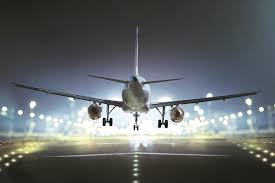
- 17 Jan 2025
In News:
The Government of India is launching the Fast Track Immigration Trusted Traveller Program (FTI-TTP) to streamline immigration at seven major airports.
Key Highlights:
- The initiative, inaugurated by Union Home Minister Amit Shah, aims to enhance the travel experience for Indian nationals and Overseas Citizen of India (OCI) cardholders.
- This comes seven months after the programme was first introduced at Indira Gandhi International (IGI) Airport, New Delhi. The airports included in this initial phase are: Mumbai, Chennai, Kolkata, Bengaluru, Hyderabad, Cochin and Ahmedabad
Objectives of FTI-TTP
- Provide seamless and secure immigration services.
- Reduce human intervention using automated e-gates.
- Align with the Viksit Bharat@2047 vision for modern infrastructure.
How the Programme Works
The FTI-TTP simplifies immigration with automated e-gates. Travellers must complete a one-time online registration to enroll. The process involves:
- Online Registration: Submit personal details and upload necessary documents via the official portal (https://ftittp.mha.gov.in).
- Biometric Submission: Fingerprints and facial images must be submitted at an airport or Foreigners Regional Registration Office (FRRO).
- Immigration Clearance via E-Gates:
- Passengers scan their boarding passes and passports at e-gates.
- Biometrics are automatically verified.
- Upon authentication, the e-gate opens, granting clearance.
Validity: Registration is valid for five years or until the registered passport expires, whichever comes first.
Who is Eligible?
The first phase of the FTI-TTP is open to:
- Indian nationals.
- OCI cardholders aged between 12 and 70 years.
- Children aged 12-18 can register using their parents’ email/phone number.
- ECR (Emigration Check Required) passport holders are not eligible.
Documents Required for Registration
- Passport-sized photograph (as per Indian passport specifications).
- Scanned copy of passport (front and back pages).
- Proof of current address.
- OCI card details (if applicable).
Key Points to Note
- Registration may take up to a month due to verification by field agencies.
- Applications with incorrect or outdated information may be rejected.
- In case of passport loss or expiry, travellers must reapply and submit fresh biometrics.
- Passports must have at least six months’ validity at the time of applying.
- For support, travellers can reach out via email at india.ftittp-boi@mha.gov.in.
Implementation Phases
The FTI-TTP will be implemented in two phases:
- Phase 1: Covers Indian citizens and OCI cardholders.
- Phase 2: Will extend to foreign travellers.
- The programme will be expanded to 21 major airports across the country.
Comparison with Similar Global Programmes
Several countries have implemented similar fast-track immigration systems:
United States: Global Entry
- Introduced in 2008.
- Offers self-service kiosks for pre-approved travellers.
- Requires background checks and in-person interviews.
United Kingdom: Registered Traveller Service
- Launched in 2015.
- Allows frequent visitors from select countries, including India, to use e-gates.
- Requires visa eligibility or multiple prior visits.
European Union: Smart Borders Initiative
- Implemented in 2016, with full deployment expected by 2024.
- Pre-registers biometric data for faster processing at Schengen Area borders.
Australia: SmartGate
- Started in 2007 for Australian and New Zealand passport holders.
- Uses automated kiosks for identity verification via passport scans and photos.
Saudi Arabia: Smart Travel System
- Launched in 2019.
- Uses automated e-gates for faster immigration clearance.
- Expanding as part of Vision 2030 to improve travel experience, particularly for Hajj pilgrims.
QS World Future Skills Index 2025
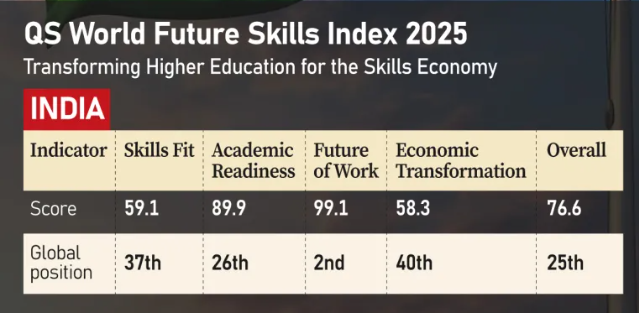
- 17 Jan 2025
In News:
The QS World Future Skills Index 2025, released by Quacquarelli Symonds (QS), evaluates countries' readiness to meet the evolving demands of the global job market. It assesses nations based on skill development, education, and economic transformation, highlighting their preparedness for emerging technologies, artificial intelligence (AI), and sustainability.
India’s Performance in the Index:
- Overall Ranking: India is ranked 25th globally, categorizing it as a “Future Skills Contender.”
- Future of Work Category: India ranked 2nd, only behind the United States, reflecting its preparedness for AI, digital, and green jobs.
- Economic Transformation: India scored 58.3, the lowest among the top 30 countries, reflecting challenges in innovation and sustainability.
- Skills Fit: India received a score of 59.1, the weakest among the top 30 nations, indicating a gap between workforce skills and industry requirements.
- Academic Readiness: India’s education system is struggling to keep pace with employer demands, necessitating curriculum reforms and stronger academia-industry collaboration.
Key Findings from the Report:
Strengths:
- Digital Readiness: India has demonstrated strong capabilities in integrating digital talent into the workforce.
- Youth Advantage: A large, young population provides a demographic dividend for sustained economic growth.
- Startup Ecosystem: India’s startup culture and government initiatives support technological advancement and innovation.
Weaknesses:
- Higher Education-Industry Gap: Mismatch between education and employer requirements, particularly in AI, green skills, and entrepreneurship.
- Limited R&D Investment: India’s research and development spending is 0.6% of GDP, far below the global average of 2.7%.
- Low Innovation in Sustainability: India scored 15.6 out of 100, ranking poorly in future-oriented innovation for sustainability.
Challenges and Concerns:
- Skilled Workforce Shortage: The National Skill Development Corporation (NSDC) estimates a 29 million skilled workforce gap in critical sectors such as healthcare, semiconductor manufacturing, and AI.
- Low Employability Rates: Only 25% of management professionals, 20% of engineers, and 10% of graduates meet global employability standards.
- Higher Education Accessibility: Many students face difficulties in accessing quality tertiary education, particularly in skill-intensive fields.
Opportunities for Growth:
- Leverage Demographic Dividend: India can capitalize on its young workforce to dominate skill-based industries while other nations struggle with aging populations.
- Policy Support:
- National Education Policy (NEP) 2020: Focuses on modular education and reskilling initiatives.
- ULLAS Program: Aims to expand lifelong learning and skill development.
- Technological Integration: Advancements in AI and digital learning can help modernize academic curricula and improve job readiness.
Recommendations for Improvement:
- Enhancing Academia-Industry Collaboration: Universities should prioritize problem-solving, entrepreneurship, and creativity to align education with employer needs.
- Increasing R&D Investment: Raising spending on research and development to promote innovation and sustainability.
- Expanding Access to Education: Bridging regional disparities in tertiary education through flexible and modular learning.
- Strengthening Policy Implementation: Ensuring effective execution of skilling programs to reduce the workforce-employability gap.
Eighth Pay Commission
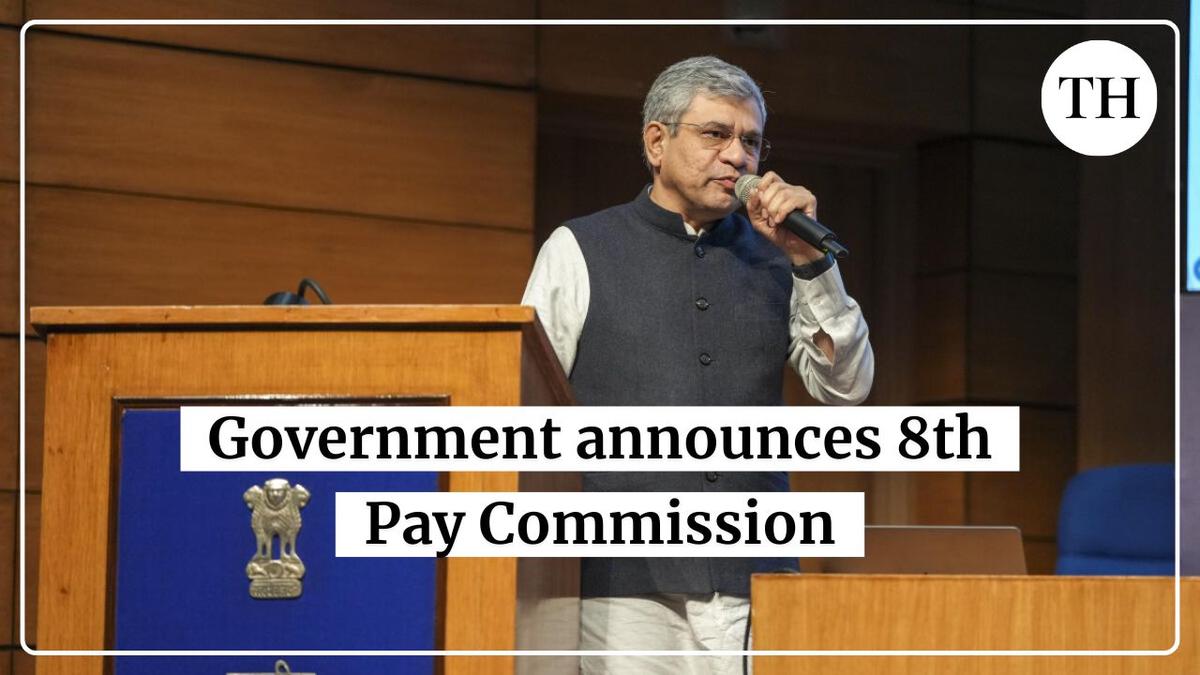
- 17 Jan 2025
In News:
The Union government has approved the constitution of the Eighth Pay Commission, benefiting 50 lakh central government employees and 65 lakh pensioners, including serving and retired defence personnel. The decision, taken ahead of the Delhi Assembly elections, aims to address long-standing demands from trade unions and employee organizations.
Key Features of the 8th Pay Commission
- Early Constitution: Although the Seventh Pay Commission's term ends in 2026, the early establishment of the Eighth Pay Commission ensures timely recommendations and implementation.
- Composition: The commission will have a Chairperson and two members, typically led by a retired Supreme Court judge.
- Terms of Reference (ToR):
- Revision of Pay: Recommend updates to salary structures and allowances.
- Addressing Pay Disparities: Resolve wage differences across various cadres.
- Market Parity: Align pay structures with industry standards.
- Pension and Retirement Benefits: Improve pension schemes and adjust them for inflation.
- Economic Impact Analysis: Assess how salary hikes contribute to economic growth.
- Stakeholder Consultations: Engage with governments and other stakeholders before finalizing recommendations.
Economic Implications of the 8th Pay Commission
- Employee Well-being: Higher wages will enhance the quality of life for government employees.
- Boost to Consumption: Increased salaries are expected to stimulate demand and support economic expansion.
- Ripple Effect on PSUs & States: Many public sector undertakings and state governments follow the central pay commission’s recommendations, potentially leading to wider economic benefits.
- Fiscal Considerations: The implementation of the Seventh Pay Commission in 2016-17 led to an expenditure increase of ?1 lakh crore. A similar rise in 2026-27 could impact fiscal space for capital expenditures.
Challenges and Concerns
- Implementation Delays: Past commissions have taken two years to submit recommendations, which could push implementation beyond 2027.
- Living Wage & Pension Issues: Existing formulas for minimum wage and pension calculations may need revision to reflect rising healthcare, education, and digital access costs.
- Financial Burden on the Exchequer: A significant increase in revenue expenditure could limit the government’s ability to invest in infrastructure and development projects.
Global Economic Prospects (GEP) Report 2025
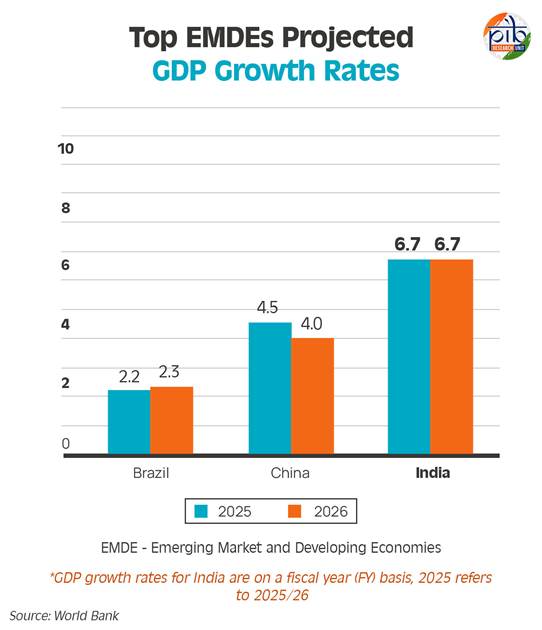
- 17 Jan 2025
In News:
The World Bank has released its Global Economic Prospects (GEP) report for 2025, a flagship biannual publication analyzing trends and projections in the global economy, with a focus on emerging markets and developing economies (EMDEs). The report highlights economic growth forecasts, trade dynamics, and the challenges and opportunities shaping the global economic landscape.
Global Economic Outlook
- The world economy is projected to expand at a steady yet subdued rate of 2.7% in both 2025 and 2026, maintaining the pace of 2024.
- Inflation, which peaked above 8% in recent years, is expected to stabilize at an average rate of 2.7% in 2025 and 2026, aligning with central bank targets.
- Despite growth, the global economy remains 0.4 percentage points below the 2010-2019 average, raising concerns about its ability to tackle poverty effectively.
Challenges and Risks
- Trade Restrictions: New trade restrictions imposed in 2024 were five times higher than the 2010-19 average, contributing to a slowdown in global trade and economic growth.
- Rising Protectionism: Increased fragmentation in global trade policies is limiting exports and hampering economic integration.
- Policy Uncertainty: Adverse policy shifts, sluggish progress in reducing inflation, and weaker performance in major economies pose downside risks to global recovery.
- Debt and Investment Concerns: Developing economies are experiencing sluggish investment growth and high debt levels, exacerbated by climate change-related costs.
Emerging Markets and Developing Economies (EMDEs)
- EMDEs have significantly evolved since 2000, now contributing about 45% of global GDP, compared to 25% at the start of the century.
- The three largest EMDEs—India, China, and Brazil—have accounted for approximately 60% of annual global growth over the past two decades.
- Growth in low- and middle-income developing countries is expected at 4.1% in 2025 and 4% in 2026, with a notable slowdown compared to the early 2000s.
- Low-income countries are projected to rebound to 5.7% in 2025 and 5.9% in 2026, aided by easing conflicts in some regions.
- The world's poorest nations, with annual per capita incomes below USD 1,145, recorded growth of 3.6% in 2024, impacted by conflicts in regions like Gaza and Sudan, alongside lingering effects of COVID-19 and geopolitical tensions.
India-Specific Highlights
- Fastest-Growing Major Economy: India is expected to maintain its position as the world’s fastest-growing major economy, with a projected growth rate of 6.7% in both 2025 and 2026.
- Sectoral Growth: The services sector will remain robust, while manufacturing activity is expected to strengthen.
- Investment Growth: Supported by rising private investment, improved corporate balance sheets, and favorable financing conditions, investment growth in India is expected to remain steady.
- Key Growth Drivers:
- Infrastructure development under the PM GatiShakti National Master Plan.
- Innovation-driven initiatives like Startup India and the Production Linked Incentive (PLI) Scheme.
- Expansion of the digital economy and financial inclusion efforts.
- Rural Demand and Consumption: Growth in rural demand and a recovery in farm production have bolstered consumer spending, although urban consumption remains affected by inflation and slow credit growth.
Human Papillomavirus (HPV)

- 16 Jan 2025
In News:
January is Cervical Cancer Awareness Month, and the focus on this month underscores the critical importance of preventing cervical cancer, a disease responsible for significant mortality among women in India. At the heart of this prevention is the Human Papillomavirus (HPV) vaccine, which is recognized as the most effective measure to prevent cervical cancer and other HPV-related cancers. Despite its potential, the HPV vaccine remains out of reach for many due to its high cost and the need for greater awareness.
HPV and its Impact in India
HPV is responsible for 99.7% of cervical cancers worldwide, making it one of the primary causes of cancer in women. In India, cervical cancer is the third most common cancer among women, accounting for about 6-29% of all cancers in women. As of GLOBOCAN 2020, India alone has 20% of the global burden of cervical cancer, with over 123,000 cases and a 9.1% mortality rate.
Additionally, HPV can lead to several other cancers, including anal, vulvar, vaginal, penile, and throat cancers, making its vaccination vital for overall cancer prevention.
The HPV Vaccine: A Game-Changer
The HPV vaccine is the most effective tool to prevent infections caused by the virus and reduce the incidence of associated cancers. The vaccine works by stimulating the immune system to produce antibodies that neutralize the virus before it can cause damage. There are different types of vaccines authorized in India, including:
- Gardasil (protects against HPV types 6, 11, 16, and 18)
- Cervarix (a bivalent vaccine targeting HPV 16 and 18)
- Cervavac (India's first HPV vaccine, developed by the Serum Institute of India)
The vaccine is recommended for both males and females between 9 and 26 years, with a special focus on children aged 12 to 13 years, as the vaccine is most effective when administered before exposure to the virus. It’s also suitable for people who are immunocompromised or HIV-infected.
Challenges to HPV Vaccination in India
Despite the obvious benefits, the uptake of the HPV vaccine in India faces several barriers:
- High Costs: The price of the vaccine remains prohibitively high. For example:
- Gardasil 9 costs ?10,850 per dose.
- Gardasil 4 is priced between ?2,000 to ?4,000 per dose.
- Cervavac, the Indian-made vaccine, costs around ?2,000 per dose, which is more affordable but still out of reach for many.
- Awareness and Cultural Perceptions: There is a lack of awareness about HPV and its link to cervical cancer. Cultural factors, particularly around reproductive health, can also create reluctance to vaccinate, especially in rural or conservative areas.
- Limited Access: Currently, the vaccine is available through private practitioners and is not part of the National Immunisation Programme (NIP), limiting access to the broader population.
The Way Forward: National Immunisation and Awareness Campaigns
The National Technical Advisory Group on Immunisation (NTAGI) has recommended that the HPV vaccine be included in India’s National Immunisation Programme (NIP). This would enable broader access and affordability, especially for girls aged 9–14 years and ensure that a routine vaccination schedule is implemented at the age of 9 years. Some states like Punjab and Sikkim have already taken steps to introduce the vaccine in their state-level immunization programs.
Additionally, a nationwide HPV vaccination campaign could raise awareness about the vaccine and its benefits, helping to overcome the challenges of cost, safety concerns, and cultural perceptions. Regular cervical cancer screenings (such as Pap smears and HPV tests) should also be encouraged to identify precancerous changes early.
Cabinet Approves Establishment of ‘Third Launch Pad’ at ISRO's Sriharikota Facility
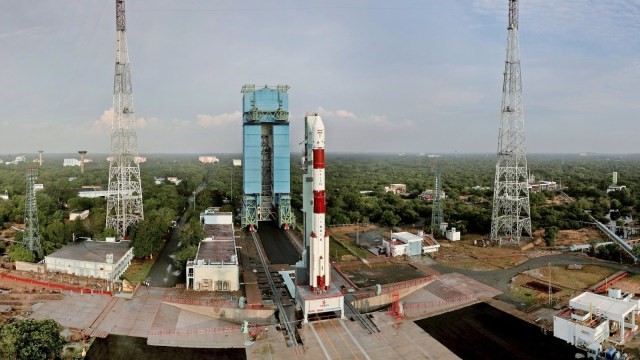
- 16 Jan 2025
In News:
The Union Cabinet, has approved the establishment of a Third Launch Pad (TLP) at the Satish Dhawan Space Centre (SDSC), located at Sriharikota, Andhra Pradesh. This project marks a significant step in enhancing India’s space capabilities and will support the Next Generation Launch Vehicles (NGLV) for ISRO’s evolving space exploration programs.
Key Features of the Third Launch Pad
The TLP will be built with an adaptable design, capable of supporting NGLV and LVM3 vehicles with semi-cryogenic propulsion. The launch pad will also serve as a standby for the Second Launch Pad (SLP) at Sriharikota. This addition will help ISRO meet its growing launch capacity needs, particularly for future human spaceflight missions and space exploration projects. It will facilitate higher launch frequencies, thus boosting the Indian space ecosystem.
Implementation Strategy and Timeline
The Third Launch Pad is planned to be developed within 48 months (4 years), with the total cost pegged at ?3984.86 Crore. The development will involve maximized industry participation and will utilize existing infrastructure at the launch complex. The project will also leverage ISRO’s experience gained from establishing the earlier launch pads.
The Importance of the Third Launch Pad
The TLP is designed to support the Next Generation Launch Vehicles (NGLV), a key part of ISRO’s vision for space exploration. The facility will not only accommodate heavier vehicles but will also ensure standby capacity for the Second Launch Pad (SLP). Its strategic location at Sriharikota ensures several advantages:
- Proximity to the Equator: This offers a substantial increase in payload capacity due to the additional push provided by the Earth's rotation.
- Safety and Accessibility: The site is free from major international maritime or airline routes, ensuring a safe flight path.
- Geographical Advantage: The launch pad is situated on the eastern coast, enabling launches in an easterly direction, maximizing the benefits of Earth’s rotational speed.
Future Plans for Indian Space Exploration
The establishment of the Third Launch Pad is crucial for the expanded vision of India’s space program, particularly in line with the Amrit Kaal period. ISRO aims to achieve ambitious milestones, such as the Bharatiya Antariksh Station (BAS) by 2035 and an Indian Crewed Lunar Landing by 2040. The NGLV will play a pivotal role in these plans, with features like:
- A three-stage vehicle and reusable first stage.
- Semi-cryogenic propulsion, using refined kerosene and liquid oxygen, which will increase payload capacity by three times at 1.5 times the cost of current vehicles.
The Role of Sriharikota in India’s Space Program
Sriharikota, the hub of ISRO’s launch operations, has been integral to India’s space exploration. Currently, the Indian Space Transportation Systems rely on two operational launch pads:
- First Launch Pad (FLP): Established over 30 years ago for PSLV and SSLV missions, FLP continues to support Polar Satellite Launch Vehicle (PSLV) and Small Satellite Launch Vehicle (SSLV) launches.
- Second Launch Pad (SLP): Built primarily for GSLV and LVM3 vehicles, SLP also serves as a standby for PSLV. Over its 20 years of operation, SLP has supported several national missions, including Chandrayaan-3, and is preparing for the Gaganyaan missions.
Does ‘Blood Money’ Have a Legal Standing?
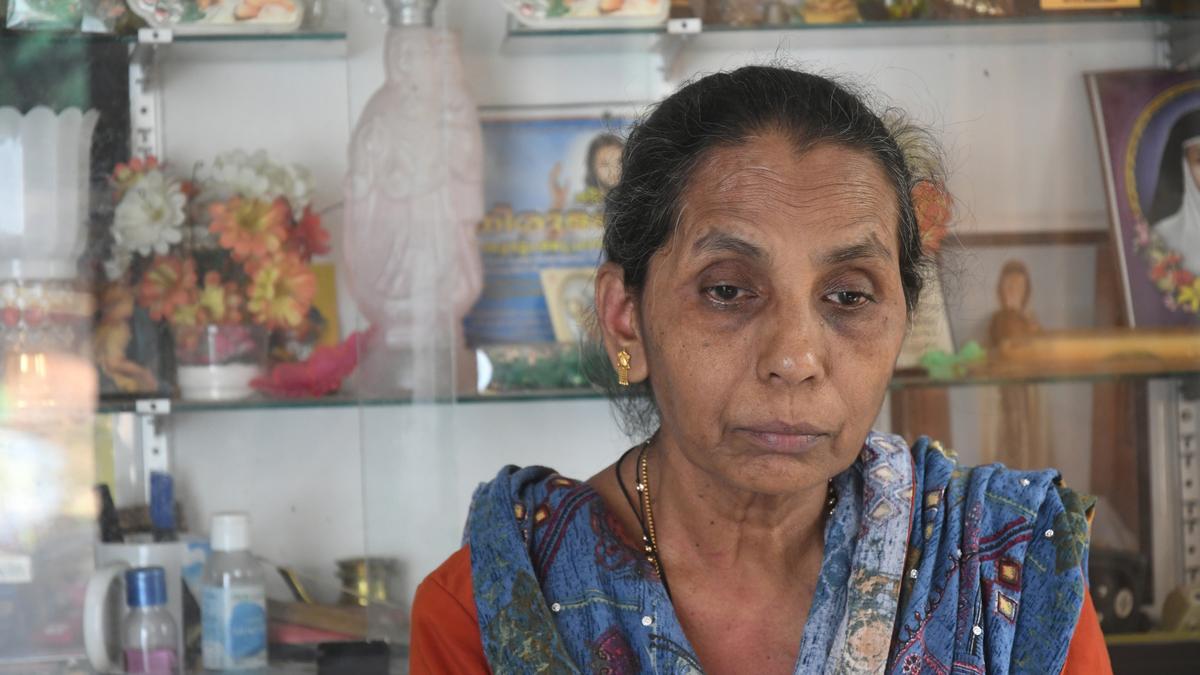
- 16 Jan 2025
In News:
The concept of ‘blood money’ has come under scrutiny recently, especially in the context of the death sentence awarded to Indian nurse Nimisha Priya from Kerala in Yemen. This case, where the focus is on monetary compensation paid to the victim’s family, has sparked renewed discussions on the practice of blood money.
What is ‘Blood Money’?
‘Blood money’ or diya is a term used in Islamic Sharia law and refers to a sum of money that the perpetrator of a crime must pay to the victim or the victim’s family, typically in cases of unintentional murder or homicide. The custom is designed to offer compensation to the family for the loss of income and alleviate their suffering, rather than placing a price on human life. This practice allows the victim’s family to forgive the accused and avoid retribution, called qisas, under the Sharia.
However, even when blood money is paid, the community or state retains the authority to impose a penalty or punishment, which could include imprisonment or other penalties, based on the seriousness of the crime.
How Does Blood Money Figure in Islamic Sharia Law?
In Islamic law, the amount of blood money varies based on several factors such as the victim’s gender, religion, and nationality. The following examples demonstrate the application of blood money in different Islamic countries:
- Saudi Arabia: In Saudi Arabia, blood money is part of traffic regulations, where the perpetrator must pay compensation to the heirs of victims who die in road accidents. While a Sharia court determines the amount of compensation, the police handle the determination of the guilty party. In workplace accidents, a special committee sets the amount. Saudi Arabia has considered reforming its laws to ensure equal compensation for men and women, Muslims and non-Muslims. However, efforts to amend the laws have not yet been fully implemented.
- Iran: In Iran, blood money differs based on the gender and religion of the victim. A woman’s compensation is typically set at half of that of a man’s. While the Supreme Court of Iran upheld a law to equalize compensation for all individuals in 2019, full implementation of the law has yet to be realized.
- Pakistan: Pakistan has incorporated provisions for diya and qisas in its legal system through the Criminal Laws (Amendment) Ordinance, 1991, aligning its practices with those of Islamic law.
- Yemen: In Yemen, parties involved can negotiate compensation, with judicial oversight ensuring fairness.
India’s Stand on ‘Diya’ and Blood Money
India does not include the provision for blood money in its formal legal framework. However, a similar concept exists in the form of plea bargaining, which allows the accused to negotiate with the prosecution in exchange for a reduced sentence or charge. Plea bargaining involves the defendant pleading guilty to a lesser offense in return for a concession, either in terms of the charges or the sentence.
Plea Bargaining in India:
Introduced under the Criminal Law (Amendment) Act, 2005, plea bargaining was added to the Code of Criminal Procedure, 1973. While it bears some resemblance to blood money in that it allows for compensation to the victim, it has significant limitations:
- It can only be applied to crimes punishable by imprisonment of less than seven years.
- It is not applicable to heinous crimes such as murder or rape, or offenses involving women or children under 14.
- The accused must voluntarily agree to plead guilty, with no coercion involved.
While plea bargaining may include compensation under Section 265E of the Code, discussions continue to refine this provision to make it more inclusive, similar to the reforms seen in Islamic countries regarding blood money.
Historical Practices Similar to Blood Money
Throughout history, various cultures have had practices similar to blood money. These include:
- Brehon Law (Ireland): In the 7th century, Brehon law established the concept of Éraic (body price) and Log nEnech (honor price). These were compensation systems that allowed for the amicable resolution of crimes, avoiding capital punishment.
- Galanas (Wales): Galanas in Welsh law determined compensation based on the victim's social status, where a blood fine was required in cases of murder, unless the killing was justified.
- Wergeld (Germany): The Wergeld system in early medieval Germany required compensation for homicide or grave offenses, often in monetary terms.
- Other Medieval States: Several medieval states established a standard payment for the victims’ families in the event of homicide or serious crimes, much like blood money.
Cases of Indians Pardoned with Blood Money
India has witnessed instances where blood money has been invoked for Indian nationals facing death sentences abroad:
- Arjunan Athimuthu (Kuwait, 2019): Arjunan’s death sentence was commuted to life imprisonment after his family paid ?30 lakh in blood money.
- Abdul Rahim (Saudi Arabia): Abdul Rahim, convicted for the murder of a Saudi boy in 2006, was pardoned after ?34 crore in blood money was paid. However, he has not been released from prison yet.
- UAE Cases:
- In 2017, 10 Indians were pardoned after paying 200,000 dirhams as blood money.
In 2009, 17 Indians on death row for the murder of a Pakistani national were pardoned after a blood money amount of nearly ?4 crore was paid.
US AI Hardware Export Restrictions and Impact on India
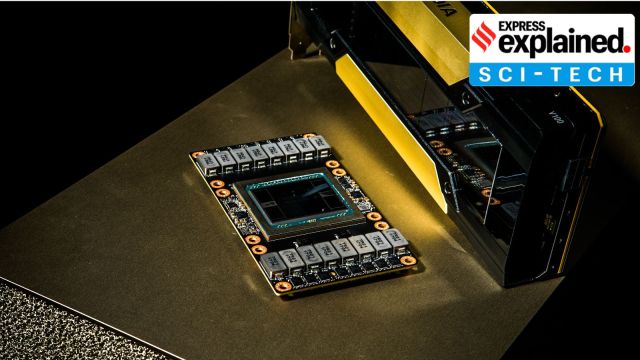
- 16 Jan 2025
In News:
Days before demitting office, the Joe Biden administration has released an expansive regulatory framework on the export of artificial intelligence (AI) hardware such as graphics processing units (GPUs), which could have far-reaching consequences for India’s AI ambitions.
Three-Tier Framework for AI Hardware Export Restrictions
- Tier 1: Closest US Allies
- Countries: Australia, Belgium, Canada, South Korea, UK, etc.
- No restrictions on computing power deployment.
- Minimal security requirements.
- Impact: Free access to AI technology for these nations.
- Tier 2: Majority of Countries (Including India)
- Countries: India, Brazil, South Africa, etc.
- Restrictions: Limited to importing approximately 50,000 advanced AI chips (around $1 billion) through 2027.
- Potential to Double Cap: If countries sign agreements to uphold strict security standards.
- Impact on India:
- Short-Term: Likely to fulfill current demand for 10,000 GPUs for the IndiaAI Mission.
- Long-Term: Challenges in scaling AI infrastructure, with possible delays in large AI data centers and difficulty acquiring large-scale GPUs.
- Tier 3: Countries of Concern (Restricted Nations)
- Countries: Russia, China, North Korea, Iran, etc.
- No Access to US AI Technology: Nearly total prohibition of AI tech exports.
Special Provisions for India and China
- General Validated End User (GVEU) status for India and China:
- India: Authorisation for civilian and military use, excluding nuclear applications.
- China: Only civilian use permitted under similar conditions.
Why the US Imposed These Restrictions?
- National Security: Prevent adversaries (China, Iran, Russia) from acquiring advanced AI technologies.
- US Technological Leadership: To protect US AI leadership and prevent loss of competitive edge.
- Trusted Ecosystem: Build secure and trusted AI environments for allied nations.
Impact on India
- Short-Term:
- IndiaAI Mission: Current procurement of 10,000 GPUs unlikely to be affected.
- Subsidized GPUs: Available for startups, academia, and researchers.
- Long-Term Concerns:
- Licensing Uncertainties: Possible delays in large-scale AI deployments and AI data centers.
- Impact on Large Firms: Companies like Reliance and Yotta may face challenges scaling up AI compute infrastructure.
- National AI Mission Challenges: Difficulty in acquiring enough GPUs for large-scale AI projects beyond 2027.
- Strategic Leverage: US could use AI export restrictions to negotiate trade deals or tariff adjustments.
Nvidia’s Criticism of the AI Diffusion Rules
- Overreach and Bureaucratic: Nvidia criticized the 200+ page regulatory framework as excessive, secretive, and bureaucratic.
- Harming US Competitiveness: Claims that the rules would hinder US innovation and global leadership, weakening the competitiveness of the US semiconductor and software industries.
- Contrast with Trump’s Approach: Praises the earlier Trump administration for fostering AI growth through industry competition without compromising national security.
Enforcement of the Rules
- Regulatory Control: Managed by the US Bureau of Industry and Security (BIS) under the Department of Commerce.
- Technology Access: Ensures AI chips and models do not reach adversaries or nations posing security risks.
Potential Impact on India’s AI Strategy
- AI Hardware Infrastructure: Challenges in large-scale AI hardware deployment.
- Competitive Disadvantage: Potential delays or downsizing of AI data centers could affect India’s competitiveness in AI technology.
- Strategic Partnerships: India may need to secure General National Validated End User authorizations to ensure uninterrupted access to advanced chips.
- AI Market Growth: India’s AI market projected to grow to $17 billion by 2027, with an annual growth rate of 25%-35%.
Nine Years of Startup India

- 16 Jan 2025
In News:
On January 16, 2025, India marks nine years of Startup India, a transformative journey that began in 2016. Designated as National Startup Day, this occasion celebrates the nation’s strides in fostering a robust and inclusive entrepreneurial ecosystem.
Current Status (as of Jan 2025)
Over 1.59 lakh startups recognized by DPIIT, making India the 3rd largest startup ecosystem globally.
- More than 100 unicorns (startups valued over $1 billion).
- Key hubs: Bengaluru, Hyderabad, Mumbai, Delhi-NCR; growing contribution from smaller cities.
Key Sectors
- Major sectors: Fintech, Edtech, Health-tech, E-commerce.
- Notable companies: Zomato, Nykaa, Ola exemplify India's shift from job seekers to job creators.
Key Milestones (2016–2025)
- Startups grew from around 500 in 2016 to 1.59 lakh in 2025.
- 73,151 startups with at least one-woman director as of 2024, showcasing rise in women entrepreneurship.
- Over 16.6 lakh jobs created by DPIIT-recognized startups by 2024.
Core Features of Startup India
- Ease of Doing Business: Simplified compliance, self-certification, and single-window clearances.
- Tax Benefits: Three-year tax exemptions for eligible startups.
- Funding Support: ?10,000 crore Fund of Funds for Startups (FFS) supports early-stage funding.
- Sector-Specific Policies: Policies focusing on sectors like biotechnology, agriculture, and renewable energy.
Industry-wise Jobs Created
- IT Services: 2.04 lakh jobs.
- Healthcare & Lifesciences: 1.47 lakh jobs.
- Professional & Commercial Services: 94,000 jobs.
- Total direct jobs created: 16.6 lakh (as of Oct 2024).
Flagship Schemes
- Startup India Seed Fund Scheme (SISFS).
- Credit Guarantee Scheme for Startups (CGSS).
- Fund of Funds for Startups (FFS) Scheme.
Other Key Initiatives
- Capacity Building & Handholding: Workshops for regional ecosystems, especially in non-metro cities.
- Outreach & Awareness: Initiatives to facilitate funding, incubation, and mentorship opportunities.
- Ecosystem Development: National-level events like Startup Mahakumbh to bring together key stakeholders.
- International Linkages: India’s G20 Presidency institutionalized Startup20 to enhance global collaborations.
BHASKAR Platform (Launched in Sept 2024)
- Objective: Centralize and streamline interactions within the entrepreneurial ecosystem.
- Key Features:
- Networking: Connects startups, investors, mentors, and government bodies.
- Resources: Provides quick access to essential tools and knowledge for scaling startups.
- Global Outreach: Promotes India as a global innovation hub.
Startup Mahakumbh
- 2024 Edition: Hosted 1,300 exhibitors, 48,000 visitors, and 392 speakers, including unicorn founders and policymakers.
- 2025 Edition (3-5 April, New Delhi): Theme - “Startup India @ 2047 – Unfolding the Bharat Story.”
Ayushman Bharat Pradhan Mantri Jan Arogya Yojana (AB PM-JAY)
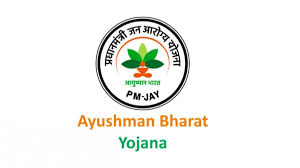
- 15 Jan 2025
In News:
Odisha has become the 34th state to implement the Ayushman Bharat Pradhan Mantri Jan Arogya Yojana (AB PM-JAY). The National Health Authority (NHA) of the Union Ministry of Health signed a Memorandum of Understanding (MoU) with the Department of Health and Family Welfare, Government of Odisha to onboard the state under the scheme.
Key Highlights:
- The scheme will be implemented alongside the existing Gopabandhu Jan Arogya Yojana in Odisha.
- It provides health coverage of Rs. 5 lakh per family per annum, with an additional Rs. 5 lakh for women members.
- Approximately 1.03 crore families will be covered under the scheme.
- Shri JP Nadda, Union Health Minister, emphasized that the scheme is the world’s largest and fastest-growing health coverage initiative.
- Shri Mohan Charan Majhi, Chief Minister of Odisha, highlighted that people will now have access to cashless treatment in over 29,000 empaneled hospitals.
About Ayushman Bharat PM-JAY:
- Launched in 2018 under the Ministry of Health & Family Welfare (MoH&FW).
- Targets 12 crore families (~55 crore beneficiaries).
- Provides cashless hospital coverage for secondary and tertiary care.
- Fully funded by the government, with cost-sharing between the Centre and states.
- Covers nearly 2,000 medical procedures, including major surgeries.
Since its inception, over 8.19 crore hospital admissions have been recorded, with ?1.13 lakh crore spent on healthcare for marginalized sections.
Cyclone Dikeledi
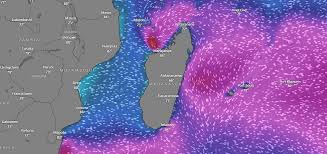
- 15 Jan 2025
Cyclone Dikeledi struck Mayotte, a French overseas territory in the Indian Ocean, located in the Mozambique Channel. The cyclone caused severe flooding and damage, following closely after Cyclone Chido, which had hit the region in December 2024.
About Mayotte:
- Comprises two islands from the Comoros archipelago: Mayotte (Grande Terre) and Pamandzi (Petite Terre).
- It is the poorest region in both France and the European Union.
- Colonized by France in 1843 and annexed along with the Comoros in 1904.
- In a 1974 referendum, while 95% of Comoros opted for independence, 63% of Mayotte voted to remain French.
- While Comoros declared independence in 1975, Mayotte continues to be governed by France.
Cyclone Chido, which struck in December 2024, was recorded as the most severe storm to hit Mayotte in 90 years.
Commissioning of Three Indian Naval Combatants

- 15 Jan 2025
In News:
In a major boost to India’s maritime defense capabilities, three frontline warships—INS Nilgiri, INS Surat, and INS Vaghsheer—were commissioned into the Indian Navy at the Naval Dockyard in Mumbai. This marks a significant step in India's self-reliance in defense manufacturing and strengthens its presence in the Indian Ocean Region (IOR).
INS Nilgiri: Project 17A Stealth Frigate
INS Nilgiri is the lead ship of the Project 17A class, an advanced version of the Shivalik-class frigates, designed for multi-mission capabilities in blue-water operations.
Key Features:
- Advanced stealth technology reducing radar and infrared signatures.
- Equipped with supersonic surface-to-surface missiles, Medium Range Surface-to-Air Missiles (MRSAM), upgraded 76 mm guns, and rapid-fire close-in weapon systems.
- Versatile roles in anti-surface, anti-air, and anti-submarine warfare.
- Constructed using integrated modular design for faster assembly.
- Other ships in this class—Himgiri, Taragiri, Udaygiri, Dunagiri, and Vindhyagiri—are under construction at Mazagon Dock Shipbuilders Limited (MDL) and Garden Reach Shipbuilders and Engineers (GRSE).
INS Surat: Project 15B Stealth Destroyer
INS Surat is the fourth and final guided missile destroyer under Project 15B, following INS Visakhapatnam, INS Mormugao, and INS Imphal. It represents an upgraded version of the Kolkata-class destroyers.
Key Features:
- AI-Enabled Operations: First Indian warship integrated with artificial intelligence solutions for enhanced combat efficiency.
- High-Speed Capability: Can exceed speeds of 30 knots (56 km/h).
- Advanced Armament: Equipped with modern surface-to-air and anti-ship missiles, torpedoes, and sophisticated network-centric warfare sensors.
- Strategic Role: Acts as a high-speed, maneuverable warship with increased strike capability and endurance.
Project 15B was initiated in 2011, with ships named after major Indian cities to symbolize national unity. These destroyers serve as critical assets in naval operations, ensuring dominance in maritime warfare.
INS Vaghsheer: Project 75 Scorpene-Class Submarine
INS Vaghsheer is the sixth and final Kalvari-class submarine built under Project 75, designed for stealth and versatile naval operations.
Key Features:
- Scorpene-Class Design: Developed in collaboration with the French Naval Group.
- Diesel-Electric Propulsion: Silent and highly maneuverable, making it one of the world’s most advanced attack submarines.
- Mission Capabilities: Specializes in anti-surface warfare, anti-submarine warfare, intelligence gathering, and special operations.
- Weapons Systems: Armed with wire-guided torpedoes, anti-ship missiles, and state-of-the-art sonar systems.
The Kalvari-class submarines continue India's legacy of submarine warfare, named after decommissioned Soviet-origin Foxtrot-class submarines post-Independence.
Iran's Capital Relocation
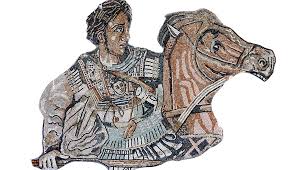
- 15 Jan 2025
In News:
Iran has announced plans to relocate its capital from Tehran to the Makran coastal region due to economic and environmental concerns.
Reasons Behind Relocation
- Overcrowding and Resource Constraints: Tehran, the capital for over 200 years since the Qajar dynasty (1794-1925), faces overpopulation, air pollution, water scarcity, and energy shortages.
- Strategic Importance of Makran: Located in Sistan and Baluchestan Province, Makran’s proximity to the Gulf of Oman enhances its potential for economic development.
- Economic and Maritime Significance: Home to key ports like Chabahar, Makran is vital for Iran’s petroleum reserves and coastal trade.
- Geopolitical Considerations: The development of Makran as an international trade hub could strengthen Iran’s economic ties with Central Asia and the Indian Ocean region.
About Makran
- Geographical Overview: A semi-desert coastal plateau shared by Pakistan and Iran, bordered by the Arabian Sea and the Gulf of Oman.
- Key Ports and Trade Routes: Gwadar (Pakistan) and Chabahar (Iran) serve as critical gateways to the Strait of Hormuz, a global oil supply route.
Alexander’s Invasion and Makran’s Historical Significance
Background of Alexander’s Invasion (327–325 BCE)
- Entry into India: Alexander, King of Macedonia (336-323 BCE), entered India via the Khyber Pass after conquering Kabul.
- Key Battles:
- Battle of Hydaspes (Jhelum): Faced and defeated King Porus, later reinstating him as an ally.
- Retreat at Hyphasis (Beas River): His army, exhausted and wary of the Nanda Empire’s strength, refused to march further east.
The Gedrosian Desert March
- Extreme Hardships: While retreating through the Makran Desert, Alexander lost a third of his army to dehydration, starvation, and exhaustion.
- Comparison with Cyrus the Great: Unlike Cyrus II, who failed to cross the desert, Alexander’s army endured the harsh terrain, albeit with heavy casualties.
Impact of Alexander’s Invasion on India
- Cultural and Trade Exchanges: Facilitated early Indo-Greek interactions and opened key trade routes linking South Asia and Europe.
- Greek Settlements: Established cities like Alexandria (Kabul) and Boukephala (Jhelum), influencing local governance and trade.
- Mauryan Expansion: Weakened regional rulers enabled Chandragupta Maurya to establish the Mauryan Empire.
- Influence on Art and Culture: Indo-Greek fusion led to the Gandhara School of Art, integrating Greek and Indian artistic traditions.
Makaravilakku festival

- 15 Jan 2025
In News:
Kerala police deploy 5,000 personnel at Sabarimala ahead of Makaravilakku festival.
Key Highlights:
- Makaravilakku is a prominent annual Hindu festival held at the Sabarimala Temple in Kerala, dedicated to Lord Ayyappa.
- It marks the celestial event of the Sun entering Capricorn (Makaram Rashi) on Makara Sankranti.
- The festival is a culmination of the 41-day pilgrimage to Sabarimala, celebrated with devotion, discipline, and spiritual purification.
- Sabarimala is one of the largest pilgrimage sites globally, drawing 10-15 million devotees annually.
Location:
- The Sabarimala Temple is located on the Sabarimala hill in Pathanamthitta, Kerala, within the Periyar Tiger Reserve.
- It is surrounded by 18 hills and is located along the banks of the Pamba River.
Key Rituals:
- 41-Day Pilgrimage (Vratham): Devotees observe strict practices like celibacy, fasting, and wearing black or saffron attire to purify the body and soul.
- Makaravilakku (Makara Jyothi): A celestial light appears on Makara Sankranti, believed to be a divine manifestation of Lord Ayyappa.
- Thiruvabharanam Procession: On Makaravilakku day, sacred royal ornaments (Thiruvabharanam) are carried in a procession from the Pandalam Palace to the temple.
- Aarti at Ponnambalamedu: The Makaravilakku light is believed to emanate from camphor lit during the Aarti ritual at Ponnambalamedu, viewed three times from Sabarimala.
Festival Duration:
- The Makaravilakku festival lasts for seven days, starting on Makara Sankranti and concluding with the Guruthi offering, which propitiates the gods of the wilderness.
Significance of Makaravilakku:
- The festival symbolizes the merging of celestial and spiritual energies, highlighting devotion, purity, and self-discipline.
- Devotees chant the mantra "Swamiye Saranam Ayyappa," seeking blessings and protection from Lord Ayyappa.
- The event promotes equality, as all devotees wear simple black or blue attire and carry the sacred bundle, “Irumudi Kettu.”
Cultural and Religious Aspects:
- The festival is an important cultural and religious observance for millions of Hindus.
- Though previously believed to be a supernatural event, Makaravilakku now involves a ritual performed by the Malayaraya tribe, overseen by the Travancore Devaswom Board.
Prohibition on Women:
- The temple traditionally restricts women aged 10-50 from entering. This was challenged in 2018 when the Supreme Court ruled to lift the prohibition, although it remains a contentious issue.
Purulia Observatory
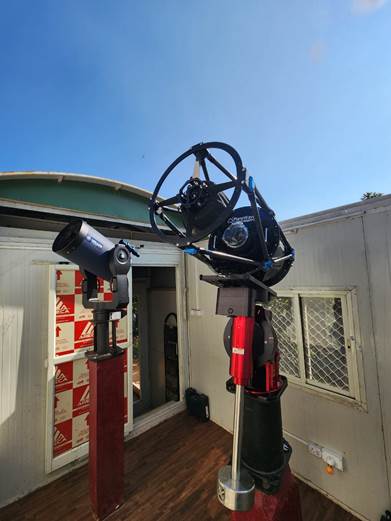
- 14 Jan 2025
In News:
New observatory at remote Purulia district West Bengal is expected to contribute significantly to Astrophysics.
Key Highlights:
Location and Significance:
- Established by: S.N. Bose Centre for Basic Sciences (SNBCBS), an autonomous institute under the Department of Science and Technology (DST), India.
- Location: The observatory is situated at Panchet Hill, in the Garpanchakot area of Purulia district, West Bengal, at an elevation of 600 meters above ground level.
- Longitude Gap: Positioned at a longitude of approximately 86° E, this observatory fills a critical longitudinal gap in global astronomical observation networks. There are very few observatories along this longitude, making it strategically important for observing transient astronomical phenomena that last from minutes to hours.
- Global Impact: This location will allow for unique contributions to global astrophysical research, especially in observing transient events, which require observatories spread across all global longitudes.
Technological and Educational Role:
- The observatory is equipped with a 14-inch telescope for scientific observations.
- It will serve as a training ground for students and researchers, helping them to handle telescopes, record astronomical data, and engage in research.
- The observatory aims to foster national and international collaborations in astronomical research, furthering India’s contributions to the field.
Collaborations and Ecosystem Development:
- MOU with Sidhu Kanu Birsa University: The observatory will be run jointly with Sidhu Kanu Birsa University, sharing resources and responsibilities. The collaboration promises to bring scientific and educational advancements to Purulia, a district traditionally considered backward.
- The establishment of the observatory is expected to boost the local ecosystem, creating a space for scientific engagement and inspiring students in the region.
Research and Contributions:
- The research team, from the Department of Astrophysics at SNBCBS, contributed to the conceptualization, site characterization, and installation of the telescope.
- Their efforts ensure the observatory will be capable of high-quality scientific observations, especially with regard to weather parameters and astronomical seeing conditions.
Future Prospects:
- Scientists emphasized that the observatory will significantly contribute to the global body of knowledge in observational astronomy.
- Also highlighted the potential of the observatory to create a scientific ecosystem in the region.
- The observatory will also serve as a source of inspiration for students in Purulia and provide a much-needed boost to local education in the fields of science and astrophysics.
Konkan Region’s Sada and Biodiversity
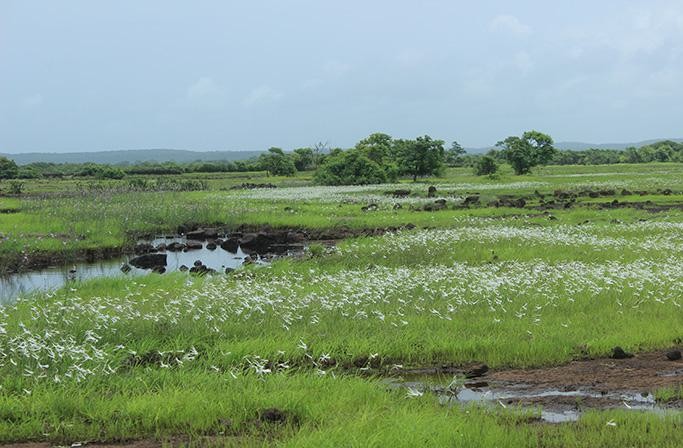
- 14 Jan 2025
In News:
A Konkan secret, the flat-top sada is a freshwater paradise.
Key Highlights:
Geography of Sada:
- The Konkan region lies between the Arabian Sea and the Western Ghats.
- Sada refers to flat-topped hills, formed by centuries of erosion, and is a prominent feature in the Ratnagiri district.
- These areas are typically barren except during the monsoon season when they come alive with flora and fauna.
Biodiversity and Ecosystem Services:
- A biodiversity survey between 2022-2024 recorded 459 plant species, with 105 being endemic to the Konkan region.
- The survey also identified 31 species of reptiles, 13 species of amphibians, 169 species of birds, and 41 species of mammals.
- These ecosystems play a vital role in water conservation. The lateritic soil layer atop the Sada acts as a catchment for rainwater, recharging the groundwater and providing freshwater to local communities year-round.
Traditional Land Use and Agriculture:
- Local Farming: During monsoons, the Sada is used by locals for growing traditional crops like rice and millets (e.g., nanchani), using sustainable farming practices without pesticides or chemical fertilizers.
- Water Management: The locals rely on open wells, springs, and perennial streams for freshwater, which are carefully maintained through cultural rituals and community hygiene practices.
Conservation and Cultural Importance:
- The region is home to geoglyphs, ancient artworks estimated to be 10,000 years old, adding to its cultural and historical significance.
- Waterbodies on the Sada serve as habitats for species like the Indian flapshell turtle (Lissemys punctata) and provide water for other wildlife, including leopards, jackals, hyenas, barking deer, and migratory birds.
Environmental Threats:
- Land-use Change: Increasing conversion of open land and croplands into orchards and residential areas, along with various developmental projects, threatens the region's biodiversity.
- Mining: Extraction of laterite stones for construction purposes is another environmental risk.
- Wasteland Classification: The region is often classified as a ‘wasteland’ in the Wasteland Atlas, further complicating conservation efforts.
Israel-Hamas Ceasefire and Hostage Release Deal
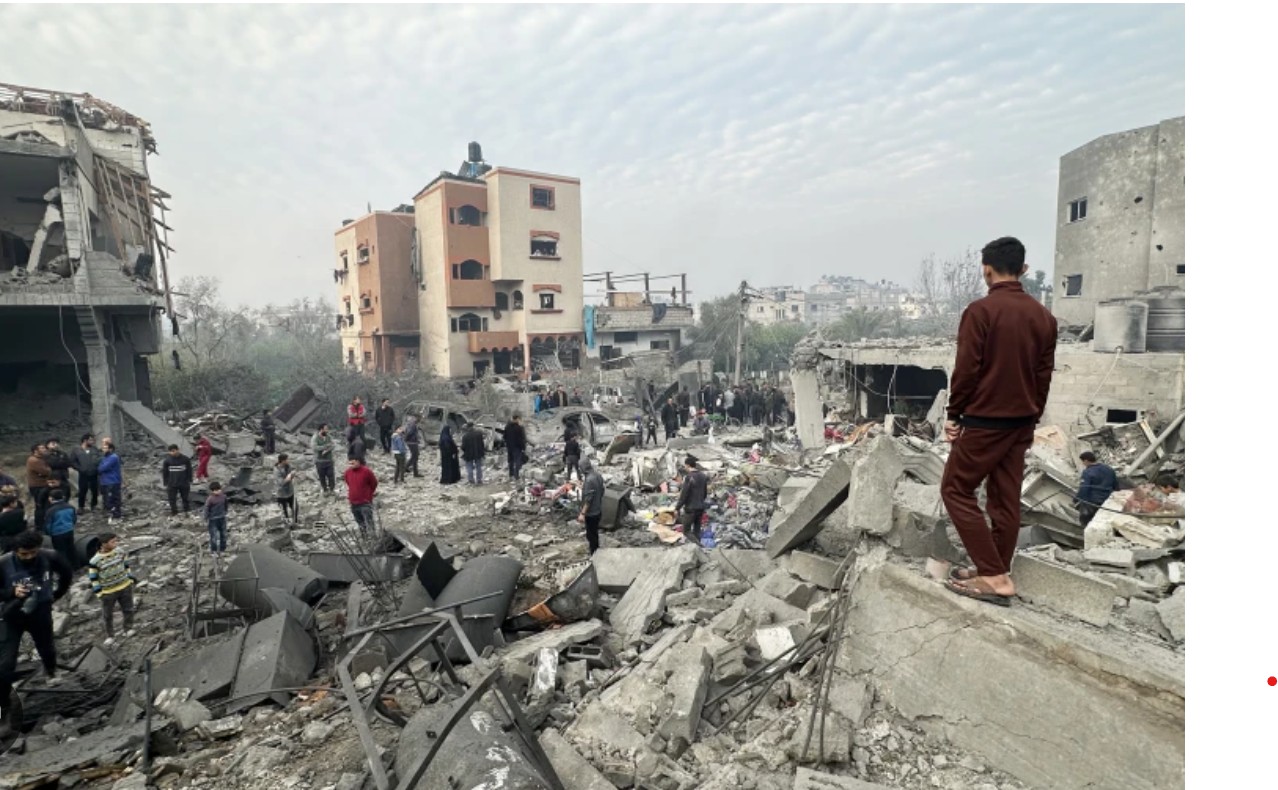
- 14 Jan 2025
In News:
Israel and Hamas have agreed on a Gaza ceasefire and hostage release deal after 15 months of war.
Key Highlights:
Ceasefire Agreement Details:
- Location: The deal was brokered in Doha, Qatar.
- Approval Process: The deal must be approved by Israel’s Cabinet to take effect.
- Mediators: The agreement was negotiated by Qatar, Egypt, and the United States, with their involvement ensuring the implementation of the deal.
Phases of the Deal:
- First Phase (42 Days):
- Release of 33 hostages by Hamas, including women, children, and elderly people.
- Hostage Exchange: Hostages will be exchanged for Palestinian prisoners in Israeli jails.
- Gaza Ceasefire and Withdrawal: Israeli forces will gradually withdraw from Central Gaza and move to the borders.
- Return of Displaced Palestinians: Displaced Palestinians will be allowed to return to Northern Gaza.
- Humanitarian Aid: 600 humanitarian aid trucks will be allowed into Gaza daily.
- Second Phase:
- Hostage Release: Negotiations will begin for the release of remaining hostages.
- Full Israeli Troop Withdrawal: Israel will fully withdraw its forces.
- Third Phase:
- Reconstruction of Gaza: Overseen by Egypt, Qatar, and the United Nations.
- Reopening of Border Crossings: For movement in and out of Gaza.
- Return of Hostage Bodies: Return of any bodies of hostages who died.
Background of the Israel-Hamas Conflict:
- Start: On October 7, 2023, Hamas launched an attack on Israel, called Operation Al-Aqsa Flood, causing significant casualties.
- Israeli Response: Israel launched Operation Iron Sword in retaliation.
- Casualties: The conflict resulted in 46,707 Palestinian deaths, mostly civilians, and 1,210 Israeli deaths.
About Gaza Strip:
- Location: A Palestinian enclave on the Mediterranean Sea, bordered by Israel and Egypt.
- Administration: The Gaza Strip is governed by Hamas since 2006.
- Movement Restrictions: Israel controls air space and shoreline, imposing restrictions. Egypt controls one border and also restricts movement.
Gaza Truce Deal:
- Nature: A proposed ceasefire to end the ongoing conflict.
- Primary Parties: Israel and Hamas.
- Supporting Nations: United States, Qatar, and Egypt.
- Significance:
- Aims to stop fighting and address the humanitarian crisis in Gaza.
- Potential to influence regional stability and Israeli politics.
- Marks an important moment in U.S. diplomacy under the Biden administration.
Nag Mark-2
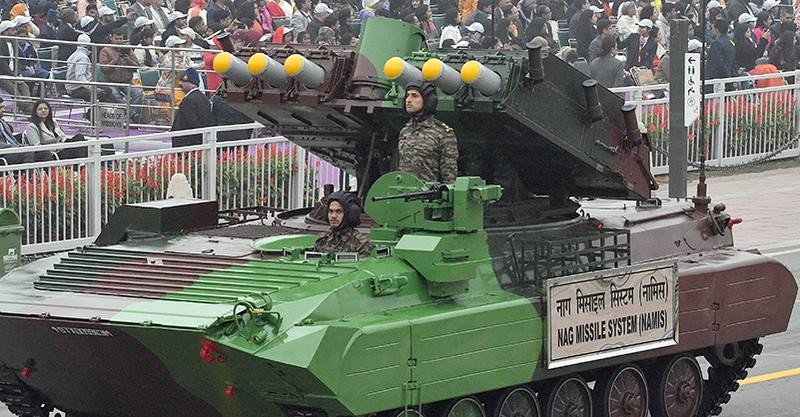
- 14 Jan 2025
In News:
The Defence Research and Development Organisation (DRDO) successfully conducted field evaluation trials of India's indigenous Anti-Tank Missile - Nag Mark 2 at the Pokhran Field Range in Rajasthan.
Overview of Nag Mk-2:
- Type: Third-generation, fire-and-forget anti-tank guided missile (ATGM).
- Development: Indigenous development by Defence Research and Development Organisation (DRDO) under the Integrated Guided Missile Development Programme (IGMDP).
- Functionality: Designed to neutralize modern armored threats, including those with Explosive Reactive Armour (ERA), using advanced fire-and-forget technology.
Technological Features:
- Fire-and-Forget Technology: Operators lock onto targets before launch, allowing the missile to autonomously track and engage targets, ensuring precision strikes.
- Lock-on After Launch: The missile can lock onto the target post-launch, providing flexibility in complex battlefield environments.
- Advanced Guidance System: Equipped with Imaging Infrared (IIR) seekers for enhanced accuracy, both during the day and at night.
Performance and Range:
- Effective Range: The missile has a range of 7 to 10 kilometers, a significant improvement over its predecessor, Nag Mk-1, which had a range of only 4 kilometers.
- Test Trials: Successfully destroyed all targets at both maximum and minimum ranges during the field evaluation trials at Pokhran Field Range, Rajasthan.
- Attack Mode: Includes a top-attack capability to target the vulnerable upper surfaces of armored vehicles, enhancing its effectiveness.
Platform and Integration:
- Launch Platform: The missile is launched from the NAMICA (Nag Missile Carrier) Version 2, a tank destroyer vehicle used by the Indian Army to launch anti-tank missiles.
- Versatility: Designed for integration with multiple platforms, enhancing operational flexibility in different combat scenarios.
Strategic and Operational Significance:
- Indigenous Defence Capability: Reduces India's dependence on foreign weapons systems, strengthening self-reliance in defense technology.
- Enhanced Battlefield Readiness: Provides the Indian Army with a cutting-edge weapon to counter modern armored vehicles, improving tactical advantages.
- Operational Effectiveness: The missile’s precision and ability to neutralize targets with minimal collateral damage make it an essential tool in modern warfare.
- Strategic Deterrence: Demonstrates India’s technological advancements in missile systems, signaling strength and deterrence to adversaries.
Bharat Cleantech Manufacturing Platform
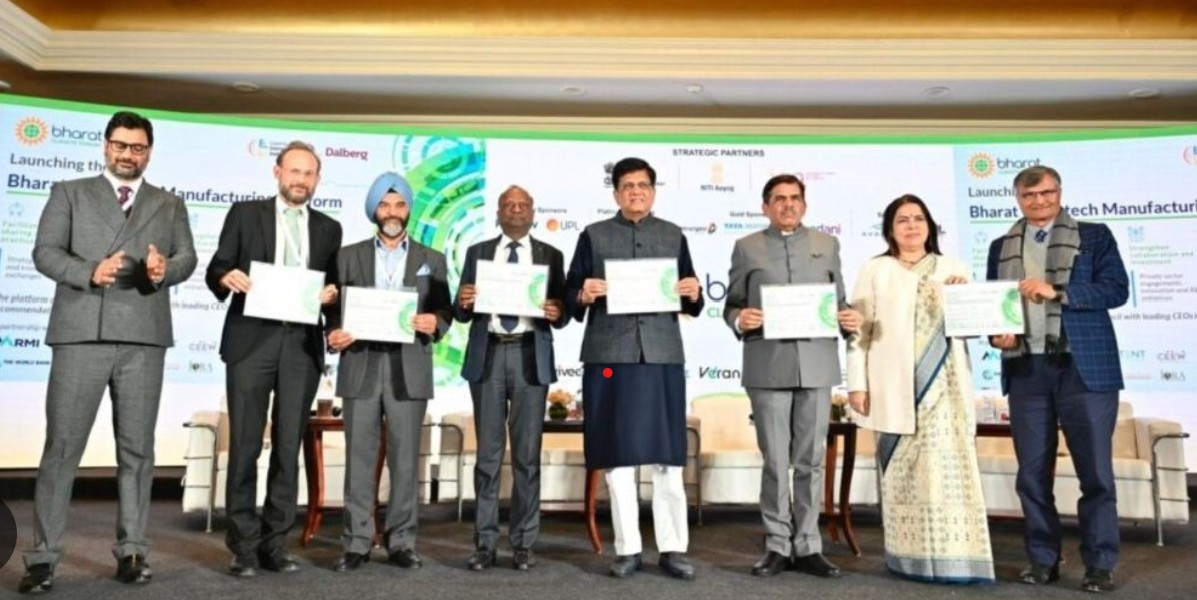
- 14 Jan 2025
In News:
Union Minister of Commerce & Industry Shri Piyush Goyal launches Bharat Cleantech Manufacturing Platform.
Bharat Cleantech Manufacturing Platform:
- Objective: Strengthen India's cleantech value chains, especially in solar, wind, hydrogen, and battery storage sectors.
- Platform Features:
- Aims to promote collaboration, co-innovation, and knowledge-sharing among Indian firms.
- Focus on scaling up manufacturing, sharing ideas, technologies, and resources.
- Acts as a financing platform for the cleantech sector.
- Designed to position India as a global leader in sustainability and cleantech innovation.
India's Clean Energy Commitment:
- Target: 500 GW of clean energy capacity by 2030.
- India has been a front-runner in fulfilling its Nationally Determined Contributions (NDCs) under the Paris Agreement and UNFCCC.
- Early Achievement: India achieved its 2022 renewable energy target of 200 GW, 8 years ahead of schedule.
- Largest Interconnected Grid: India boasts the world’s largest interconnected power grid, enhancing its renewable energy distribution capacity.
- Gujarat is a pioneer in solar power adoption in India.
Union Minister Shri Piyush Goyal's Views:
- On Product-Linked Incentives (PLIs):
- PLIs and subsidies are seen as short-term aids; long-term growth of the clean energy sector depends on it becoming self-sustaining.
- Urged Indian firms to innovate and scale up manufacturing within the country.
- On Clean Energy and Sustainability:
- Stressed the importance of innovation and collaboration to achieve sustainability goals.
- India aims to attract international investors by creating a compelling business case for cleantech investments.
- 3S Approach (Speed, Scale, and Skill): Key to implementing India's renewable energy program, emphasizing rapid deployment, large-scale adoption, and skill development in the sector.
Bharat Climate Forum 2025:
- Event Objective: A platform for policymakers, industry leaders, and stakeholders to discuss climate action, clean energy, and India’s role in global climate goals.
- Key Focus Areas:
- Aligning India’s clean energy initiatives with global climate goals (UNFCCC, Paris Agreement).
- Emphasizing India’s early achievements in clean energy adoption.
- Promoting sustainable development and clean energy solutions.
India's Performance in Renewable Energy:
- India’s progress has been commendable in meeting its climate targets and setting up clean energy capacity ahead of schedule.
- The government’s initiatives, led by Prime Minister Narendra Modi, have made solar power affordable and scalable through transparency in auctions, competitive bidding, and speed in project implementation.
World’s First Cryo-Born Baby Corals

- 13 Jan 2025
In News:
World’s First Cryo-Born Baby Corals Successfully Settled on the Great Barrier Reef.
Introduction to Cryo-Born Corals
- Cryo-born corals are created using cryopreservation techniques, which involve freezing coral cells and tissues at very low temperatures.
- The process preserves coral cells by preventing the formation of ice crystals that would otherwise damage them.
- Cryopreservation involves adding cryoprotectants to remove water from cells, enabling their survival during freezing and thawing.
Significance of the Breakthrough
- Climate Change Resilience: The initiative aims to create heat-tolerant corals, which are crucial in combating the impact of rising ocean temperatures due to climate change.
- Selective Breeding Advantage: Cryopreservation allows for controlled breeding and bypasses the limitations of natural coral spawning, which occurs only once a year. This enables multiple reproduction cycles without disturbing wild populations.
The Process of Cryo-Born Coral Production
- Sperm Collection: During coral spawning events, sperm from various coral species is collected and frozen at -196°C using liquid nitrogen, halting metabolic processes.
- Coral Egg Fertilization: Cryopreserved sperm is used to fertilize fresh coral eggs, which are grown in a specialized research facility called the National Sea Simulator.
- Coral Cradles: After growth, the cryo-born corals are carefully transported and settled into specially designed "coral cradles" placed in the Great Barrier Reef, where their growth is monitored during their critical first year.
Importance of Cryo-Born Corals in Reef Restoration
- The primary aim is to introduce millions of heat-tolerant corals annually to restore reefs affected by climate change.
- The Taronga CryoDiversity Bank houses the world’s largest frozen coral sperm collection from 32 coral species, collected annually since 2011, providing a resource for future restoration efforts.
Coral Reefs: An Overview
- Corals are marine invertebrates from the class Anthozoa, phylum Cnidaria.
- Reefs are built by colonies of coral polyps that secrete limestone skeletons and rely on symbiotic algae (zooxanthellae) for nutrition.
- Coral reefs are typically found in shallow, sunlit waters with a temperature range of 16-32°C and depths less than 50 meters.
Global and Indian Coral Conservation Efforts
- India:
- The National Committee on Wetlands, Mangroves, and Coral Reefs (1986) advises on conservation measures.
- The Environment (Protection) Act (1986) prohibits the use of coral and sand in construction.
- Zoological Survey of India (ZSI) uses Biorock technology for coral restoration.
- Global Efforts:
- CITES lists coral species in Appendix II, regulating coral trade.
- The World Heritage Convention designates coral reefs as protected sites.
Global Impact and Future Directions
- The innovative work by Australian scientists opens the door for large-scale restoration efforts by allowing more controlled breeding and genetic diversity, making corals more resilient to climate change.
- This breakthrough could revolutionize coral restoration, scaling up efforts to introduce millions of resilient corals to reefs worldwide, building long-term resilience against climate change.
Sovereign Artificial Intelligence

- 13 Jan 2025
In News:
- The growth of Artificial Intelligence (AI) has been remarkable in recent years. In 2018, a 340-million-parameter AI model was considered large, whereas models like ChatGPT now have 1.8 trillion parameters.
- As part of its ambition to make the digital economy worth USD 1 trillion by 2028, India is focusing on AI sovereignty and investing in semiconductors and AI technologies to achieve this goal.
What is Sovereign AI?
Definition
- Sovereign AI refers to a nation’s ability to develop, control, and deploy AI using its own resources, including infrastructure, data, workforce, and business networks.
- This involves not just developing AI models but also creating infrastructure and nurturing homegrown talent to lead AI advancements within the country.
Key Aspects of Sovereign AI
- National Control: Ensures AI technologies align with a country's laws, regulations, and ethical standards.
- Data Sovereignty: Emphasizes control of data within the country’s borders, protecting privacy, security, and national interests.
- AI in Governance: Generative AI is transforming industries, markets, and governance, with AI-powered tools assisting professionals and governments.
- Ethical Considerations: Countries define security protocols and ethical frameworks to govern the use of AI technologies.
- Strategic Autonomy: Reduces reliance on foreign technologies, encouraging domestic development in AI to achieve strategic independence.
- Economic Competitiveness: AI is crucial for industrial innovation. Without it, nations risk falling behind in the global economy.
Growth and Importance of AI
Evolution of AI Models
- In 2018, a 340-million-parameter model was considered a significant achievement.
- Today, ChatGPT uses 1.8 trillion parameters, and Google’s Gemini uses 1.5 trillion parameters. In comparison, China’s DeepSeek has a model with 240 billion parameters.
- Parameters are the internal variables of AI models, adjusted during training to improve their performance and accuracy.
Strategic Applications
- Sovereign AI plays a pivotal role in critical sectors such as:
- Defense
- Healthcare
- Transportation
- Governance
- It helps redefine industries, boost innovation, and streamline operations across various sectors.
India’s Position in Sovereign AI
AI Infrastructure Development
- Tata Group and Reliance are building AI infrastructure in India, including the development of Large Language Models (LLMs).
- India has allocated USD 1.2 billion for a sovereign AI project under the IndiaAI Mission, which includes creating an AI supercomputer with thousands of chips.
Government Initiatives
- The IndiaAI Mission is designed to boost India’s AI capabilities by building infrastructure, fostering talent, and supporting innovation within the country.
Global AI Compact
- A Global AI Compact has been proposed to ensure equitable access to AI technologies across nations.
- The compact advocates for sharing AI resources globally while promoting cooperation and addressing challenges associated with AI governance.
Pink Fire Retardant
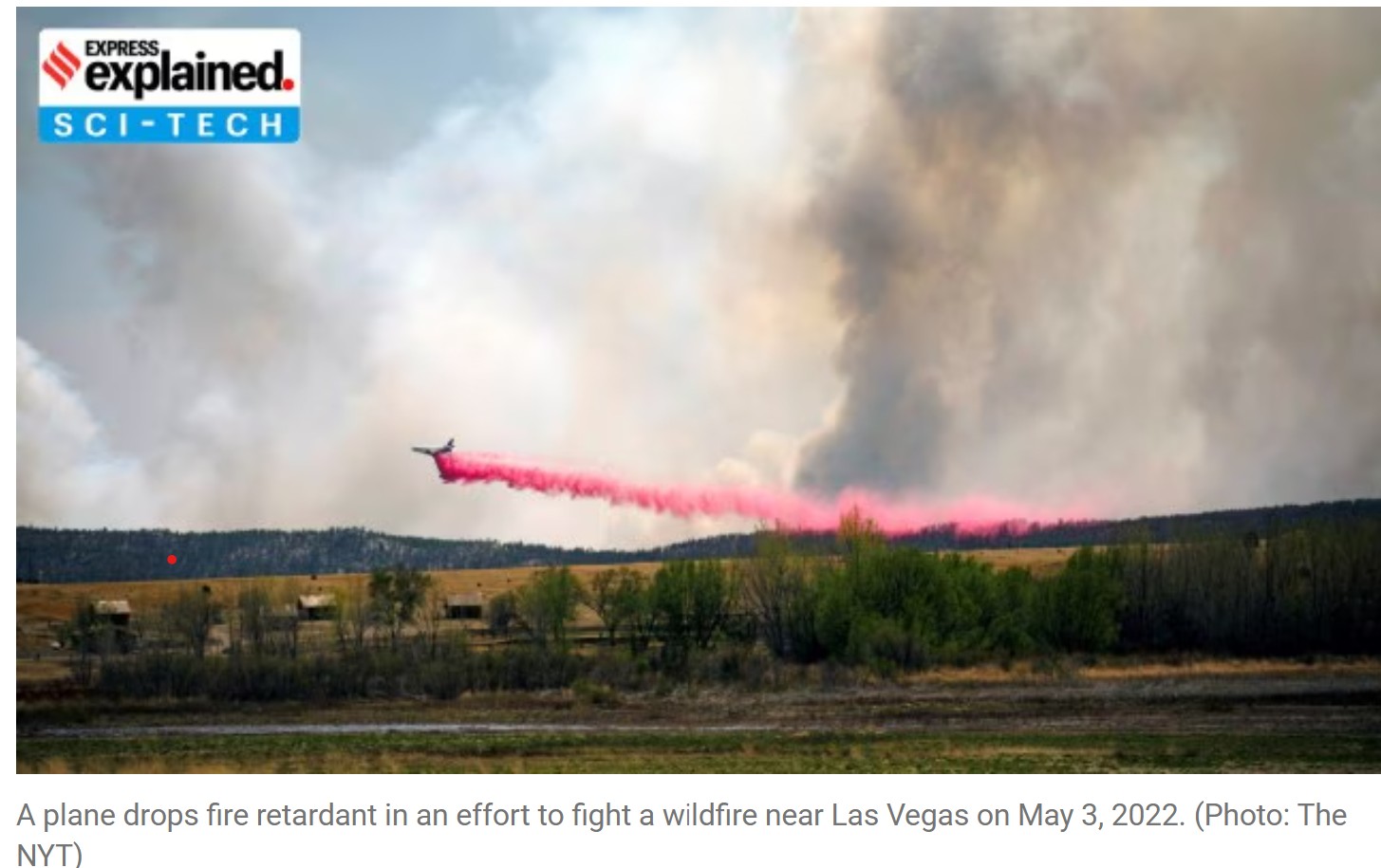
- 13 Jan 2025
In News:
As wildfires continue to rage across Southern California, authorities are deploying pink fire retardant from aircraft to help combat the blazes. Despite its widespread use, concerns over its effectiveness and environmental risks have surfaced in recent years.
What is Pink Fire Retardant?
- Fire retardant is a chemical mixture designed to slow down or extinguish wildfires. The most commonly used product in the U.S. is Phos-Chek, a brand of retardant.
- Phos-Chek primarily contains ammonium phosphate-based slurry (salts like ammonium polyphosphate), which helps the retardant stay longer and resist evaporation, unlike water.
Purpose and Visibility
- Fire retardants are sprayed ahead of fires to coat vegetation, reducing oxygen and preventing flames from spreading.
- Color is added to the fire retardant, often bright pink, to improve visibility. This ensures firefighters can track its spread and create effective fire lines, helping protect lives and property.
Manufacturer
- Perimeter Solutions manufactures Phos-Chek, which is used for aerial fire suppression efforts.
Effectiveness of Pink Fire Retardant
Limited Effectiveness
- The use of fire retardants like Phos-Chek is not always effective across different wildfire conditions.
- Aerial retardants depend on environmental conditions like terrain, slope, and weather for optimal effectiveness.
- Researchers, including Forest Service scientists, suggest that retardant effectiveness is more limited under changing climate conditions.
- Climate change is narrowing the window of opportunity for using aerial retardants, reducing their impact.
Uncertainty in Impact
- The effectiveness of fire retardants is hard to quantify. Multiple firefighting methods are used simultaneously, making it difficult to attribute wildfire suppression success solely to the retardant.
Environmental Concerns of Pink Fire Retardant
Toxicity and Pollution
- Phos-Chek contains toxic metals such as chromium and cadmium, both of which are harmful to humans and the environment.
- Chromium and cadmium are linked to serious health issues, including cancer and liver/kidney diseases.
- Aquatic life is particularly vulnerable to these toxins, as the chemicals can enter waterways, causing extensive damage to ecosystems.
Impact on Rivers and Streams
- The use of pink fire retardant has raised concerns regarding the contamination of rivers and streams.
- A study by the University of Southern California (USC) in 2024 estimated that 850,000 pounds of toxic chemicals have been released into the environment since 2009 due to fire retardant use.
Growing Use and Pollution
- From 2009 to 2021, over 440 million gallons of retardant were applied across U.S. lands.
- During this period, an estimated 400 tons of heavy metals were introduced into the environment, further exacerbating the pollution levels.
Financial and Practical Concerns
High Cost and Inefficiency
- The cost of deploying fire retardant is significant. Aerial firefighting operations require substantial resources, including planes, helicopters, and large quantities of retardant.
- Environmental experts argue that using fire retardant from planes is ineffective and expensive, especially in light of the growing environmental concerns.
India Joins the UN-CEBD
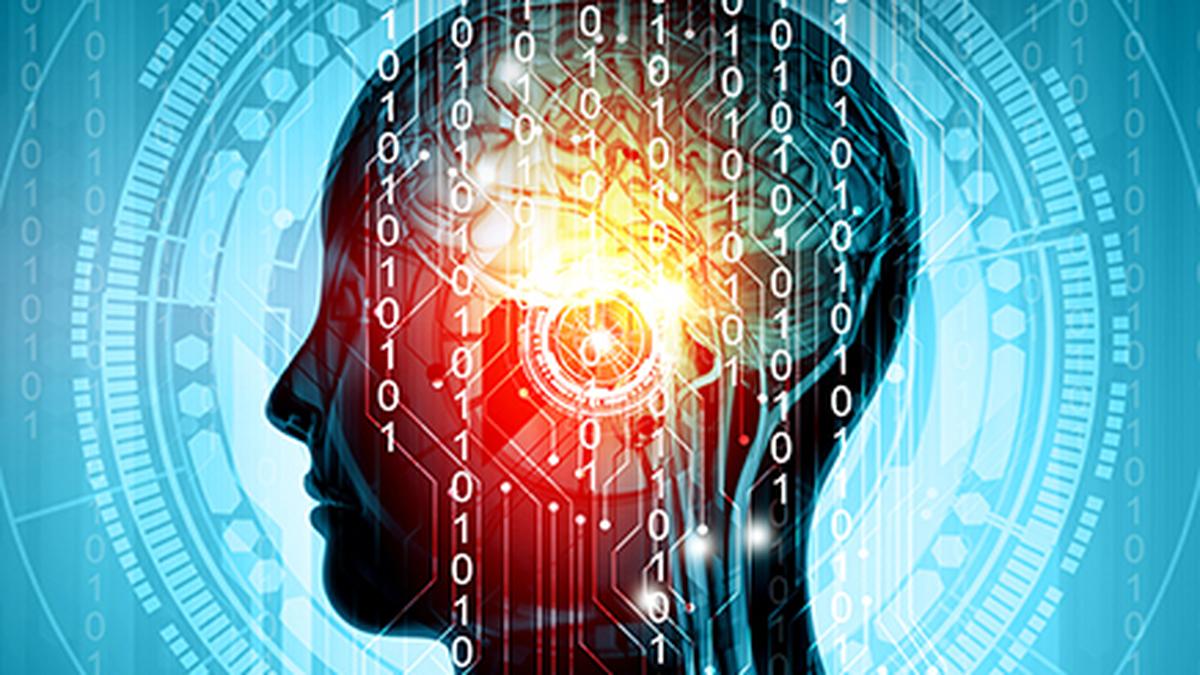
- 13 Jan 2025
In News:
- India has recently joined the United Nations Committee of Experts on Big Data and Data Science for Official Statistics (UN-CEBD), marking a significant step in strengthening its role in global statistical frameworks.
- The inclusion is a result of India's recent membership in the United Nations Statistical Council (UNSC), signaling the nation's growing influence in global data governance.
Key Highlights
- India's Growing Influence: India’s entry into the UN-CEBD highlights its growing stature in the international statistical community, emphasizing its commitment to utilizing big data and data science for informed decision-making.
- Strategic Opportunity: This membership allows India to contribute to shaping global standards in leveraging big data for official statistical purposes, especially in tracking Sustainable Development Goals (SDGs).
What is UN-CEBD?
- UN-CEBD is a specialized body under the United Nations, formed in 2014 to explore the benefits and challenges of using big data and data science to strengthen global statistical systems.
- It was established under the United Nations Statistical Commission (UNSC).
- Members: The committee consists of 31 member states (including India) and 16 international organizations.
Key Objectives
- Monitor SDGs: Use big data to track progress towards achieving the Sustainable Development Goals (SDGs).
- Address Data Challenges: Overcome challenges in utilizing non-traditional data sources, such as satellite imagery, Internet of Things (IoT), and private sector data.
- Promote Big Data Use: Encourage practical applications of big data across borders while addressing associated challenges.
Governance and Functions
- Advisory Board: Provides strategic direction, convening four times a year.
- UN Bureau: Manages day-to-day operations.
- Key Functions:
- Strategic Coordination: Vision and direction for utilizing big data in global official statistics.
- Capacity Building: Enhance capabilities through training, technical assistance, and knowledge sharing.
- Public Trust: Establish confidence in using big data for official statistics.
Big Data: Definition and Importance
What is Big Data?
- Big data refers to vast, complex datasets that cannot be processed by traditional data management systems.
- It enables enhanced decision-making and improved processes for policy formulation, product development, and governance.
India's Big Data Initiatives
- National Data & Analytics Platform (NDAP): Facilitates data-driven decision-making.
- Big Data Management Policy: Defines strategies for managing large datasets within government agencies.
- National Data Warehouse on Official Statistics: Centralizes official data for better access and analysis.
The 6Vs of Big Data
- Volume: Large amounts of data.
- Velocity: Speed of data generation and processing.
- Variety: Different types of data.
- Veracity: Accuracy of data.
- Value: Significance of the data.
- Variability: Fluctuations in data.
India’s Role in the UN-CEBD
Contribution to Global Standards
- India's initiatives such as the Data Innovation Lab and the use of satellite imagery and machine learning will be shared with other members, fostering global collaboration in statistical innovations.
- India will contribute to shaping international standards for the use of big data in monitoring SDGs.
Enhancing Statistical Processes
- Modernization of Data: India aims to modernize its statistical processes by incorporating IoT, satellite data, and private-sector data.
- Real-time Insights: Providing policymakers with timely and accurate data to address key socio-economic issues.
- Improving Estimates: Using big data to enhance the accuracy of official statistics, improving governance and policymaking.
Strategic Goals of India's Engagement
- Streamline Statistical Production: Innovation in data collection, processing, and analysis to reduce delays in data availability.
- Improve Decision-Making: Provide real-time, evidence-based insights to policymakers.
- Foster International Collaboration: Share India’s expertise and learn from global best practices to build future-ready statistical systems.
National Youth Day 2025
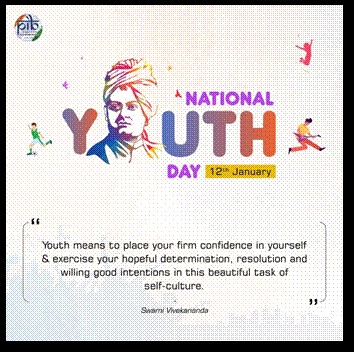
- 13 Jan 2025
In News:
On January 12, 2025, Prime Minister Shri Narendra Modi participated in the Viksit Bharat Young Leaders Dialogue 2025, an event aimed at empowering India's youth and charting a roadmap for the nation's development. This occasion also coincided with the celebration of National Youth Day, marking the 163rd birth anniversary of Swami Vivekananda, a renowned spiritual leader and social reformer who strongly believed in the transformative potential of India's youth.
Significance of National Youth Day
- Purpose:
- National Youth Day is celebrated to honor Swami Vivekananda's contributions, emphasizing the role of youth in nation-building.
- It promotes empowerment, leadership, and innovation among the youth.
- Year of First Celebration: 1985
- Key Theme (2025): "Arise, Awake, and Realize the Power You Hold"
Key Highlights from the Dialogue
- Goal of the Dialogue:
- Engaging youth in the decision-making process for a developed India by 2047.
- Empowering youth through platforms like quizzes, essay competitions, and thematic presentations.
- Ten Key Themes Discussed:
- Technology & Innovation
- Sustainability
- Women Empowerment
- Manufacturing & Agriculture
- Education and Skill Development
India’s Roadmap for 2047 (Viksit Bharat)
- Vision:
- Economic Power: India is moving toward becoming the third-largest economy.
- Strategic and Cultural Strength: India will have a robust economic, strategic, social, and cultural framework.
- Youth's Role: Innovation in technology, digital economy, space, and manufacturing will drive India’s growth.
- Key Projects and Targets:
- Target: Generating 500 GW of renewable energy by 2030.
- Net Zero Emissions for Railways: Set for 2030.
- Olympics: India aims to host the Olympics in the next decade.
- Space Power: Plans for a space station by 2035.
Viksit Bharat Young Leaders Challenge
- Objective:
- Engage youth in shaping ideas for a developed India.
- The Viksit Bharat Young Leaders Dialogue is part of the Viksit Bharat Challenge.
- Stages of the Challenge:
- Viksit Bharat Quiz: Participation by 30 lakh youth.
- Essay Writing: Over 2 lakh essays on key developmental themes.
- State Rounds: Rigorous in-person competition to identify the top young leaders.
- Participant Categories:
- 1,500 from Viksit Bharat Challenge Track.
- 1,000 from Traditional Track (cultural and science innovation).
- 500 Pathbreakers (leaders in diverse sectors).
Achievements Under Government Benefiting Youth
- Educational Reforms:
- Increase in IITs, IIITs, IIMs, and AIIMS.
- Growth in the number of higher education institutions and their global rankings.
- Economic Growth:
- India's economy has grown to nearly $4 trillion.
- Infrastructure Investments: More than ?11 lakh crore allocated for infrastructure development.
- Employment Opportunities for Youth:
- Mudra Loans: ?23 lakh crore distributed to youth entrepreneurs.
- Startup Ecosystem: India is among the top three in global startups.
- PM Gati Shakti Mission: Facilitating logistics and infrastructure development, creating employment opportunities.
Future Outlook
- Youth as the Future Leaders of India:
- India’s Youth Power: Vital to achieving a developed nation by 2047.
- The Viksit Bharat Young Leaders Dialogue is a platform for youth to voice their opinions and engage with policymakers.
- Role of Youth in India’s Transformation:
- Collective Responsibility: Every citizen's effort is essential for national goals.
- The vision of a Viksit Bharat hinges on the innovative contributions and ownership by young minds.
EmpowHER Biz – Sapno Ki Udaan

- 12 Jan 2025
In News:
The Women Entrepreneurship Platform (WEP) of NITI Aayog, in partnership with New Shop (India’s largest 24/7 convenience retail chain), launched the initiative EmpowHER Biz – Sapno Ki Udaan under the Award to Reward (ATR) program. This program aims to empower women entrepreneurs by providing them with the skills, resources, and mentorship needed to succeed in the organized retail sector. The collaboration seeks to create a robust retail ecosystem that supports women in overcoming barriers such as societal biases, limited access to financing, and a lack of mentorship.
Key Features of the Initiative:
- Target Participants: The program will select 50 women aged 18-35 through an online application process. Women from Delhi NCR, Punjab, Rajasthan, Uttar Pradesh, Haryana, Madhya Pradesh, and Gujarat will be considered.
- Top 20 Participants: The 20 best candidates will receive a 100% waiver on New Shop franchise fees, enabling them to operate their own retail businesses with reduced financial barriers.
- Program Objective: Equip women entrepreneurs with skills such as retail management, digital tools, financial literacy, and business development. Participants will also receive valuable mentorship to help them grow and scale their businesses.
- Focus on Retail: The initiative focuses on empowering women within the organized retail sector, creating a sustainable ecosystem that fosters growth and development for female entrepreneurs.
About Women Entrepreneurship Platform (WEP):
- Incubation & Transition: Established in 2018, WEP was incubated within NITI Aayog and transitioned into a Public-Private Partnership (PPP) in 2022.
- Purpose: WEP aims to empower women entrepreneurs by addressing challenges like information asymmetry and providing essential support in key areas such as:
- Access to Finance
- Market Linkages
- Training & Skilling
- Mentoring & Networking
- Compliance & Legal Assistance
- Business Development Services
- Collaboration: WEP partners with over 30 public and private sector organizations to develop scalable and impactful programs. Since 2023, the Award to Reward initiative offers a framework for stakeholders to create impactful programs for women entrepreneurs.
About New Shop:
- Business Model: New Shop operates over 200 round-the-clock convenience retail stores in high-density areas, including highways and gas stations. The company plans to expand into airports, railway stations, and other mass transit hubs.
- Franchising Vision: By 2030, New Shop aims to empower over 10,000 entrepreneurs in India through its franchising model. The partnership with WEP seeks to help women entrepreneurs access this growth opportunity.
Program Outcomes:
- Mentorship & Training: Participants will be mentored and trained on key aspects such as retail management, business development, and digital tools.
- Franchise Opportunity: Top participants will gain access to New Shop’s franchising ecosystem, providing them a ready-made business opportunity with lower entry barriers.
- Financial Assistance: The program will also provide financial resources to the women, helping them build their businesses with greater ease.
Future of Jobs Report 2025
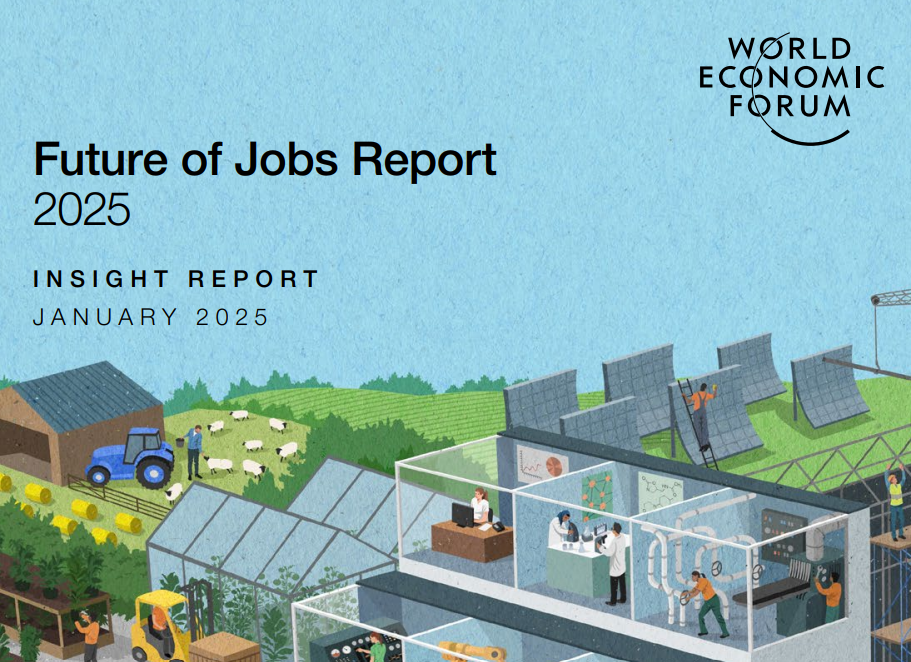
- 12 Jan 2025
In News:
The World Economic Forum's latest "Future of Jobs Report 2025" has highlighted significant trends and predictions for the global labor market by 2030.
Key Highlights:
Fastest Growing Jobs by 2030
The report identified the following jobs as the fastest-growing by 2030:
- Big Data Specialists
- FinTech Engineers
- AI and Machine Learning Specialists
- Software and Applications Developers
- Security Management Specialists
- Data Warehousing Specialists
- Autonomous and Electric Vehicle Specialists
- UI/UX Designers
- Delivery Drivers
- Internet of Things (IoT) Specialists
Job Disruption and Creation
- 22% of jobs globally will be disrupted by 2030 due to automation and technological advancements.
- 170 million new jobs are expected to be created, resulting in a net increase of 78 million jobs.
- Technological shifts, economic uncertainty, and demographic changes are expected to play significant roles in this transformation.
Skills in High Demand
- AI, Big Data, Cybersecurity: Skills related to artificial intelligence and big data are expected to see an 87% rise, while networks and cybersecurity skills are projected to increase by 70%.
- Creative Thinking, Flexibility: Skills like creative thinking, resilience, flexibility, and agility are also expected to see a significant rise, emphasizing the importance of soft skills in a technology-driven world.
Declining Jobs
The report lists the following positions as expected to decline by 2030:
- Postal Service Clerks
- Bank Tellers
- Data Entry Clerks
- Cashiers and Ticket Clerks
- Telemarketers
- Printing Workers
- Accounting and Bookkeeping Clerks
These roles are being replaced or transformed by automation and AI, which are reshaping traditional job functions.
Technological Advancements
- Digital Access: 60% of employers believe that expanding digital access will be the most transformative trend for businesses.
- AI and Robotics: Employers are investing heavily in AI, robotics, and energy technologies, creating a demand for skilled workers in these sectors.
- Energy Technologies: Jobs related to the green transition, including renewable energy and environmental engineering, will see an uptick as countries strive to meet climate goals.
Key Drivers of Change
- Technological Change: AI, machine learning, and automation will continue to reshape industries.
- Geoeconomic Fragmentation: Geopolitical tensions and economic shifts are prompting businesses to transform their models, leading to a greater demand for cybersecurity and security management roles.
- Aging Populations: The growing demand for healthcare services, especially in high-income economies, will result in more jobs in the care economy (e.g., nursing professionals, social workers).
- Green Transition: The global shift toward clean energy and environmental sustainability will create numerous opportunities for jobs in renewable energy and climate change mitigation.
Implications for India
- AI and Robotics Investment: Indian companies are leading the way in investing in AI, robotics, and autonomous systems.
- Growth Sectors: India’s rapidly developing tech sector will see a rising demand for AI, machine learning, and big data specialists.
- Disruptions in Traditional Jobs: Roles like postal clerks, cashiers, and data entry clerks in India are also expected to face significant reductions due to automation.
Challenges for Employment in India
- Skill Mismatch: There is a significant skill gap, with many workers lacking expertise in emerging fields like AI, cybersecurity, and data science.
- Digital Divide: Urban areas are adapting to new technologies faster than rural areas, which may widen employment disparities.
- Informal Sector: India’s large informal workforce faces challenges in transitioning to technology-driven jobs due to limited access to training and education.
Reskilling and Upskilling
- The WEF report emphasizes that 59% of the global workforce will need reskilling or upskilling by 2030 to remain competitive.
- Workers must adapt to new roles, especially in technology and the green transition, to meet the evolving demands of the job market.
GEAPP and ISA Sign $100 Million Agreement for Solar Projects
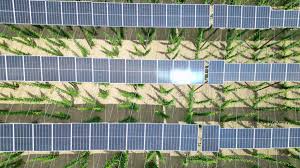
- 12 Jan 2025
In News:
The Global Energy Alliance for People and Planet (GEAPP) signed a Multi-Donor Trust Fund (MDTF) agreement with the International Solar Alliance (ISA) to mobilize $100 million for funding high-impact solar energy projects. This collaboration is part of a wider effort to accelerate India's clean energy transition, bridge financing gaps, and enhance the country's energy systems. Along with this agreement, two other key initiatives were announced:
- DUET (Digitalization of Utilities for Energy Transition)
- ENTICE 2.0 (Energy Transitions Innovation Challenge)
These programs aim to address energy transition challenges by fostering scalable, cost-efficient solutions, digitalizing utilities, and supporting innovations for sustainable energy.
Key Features:
- Multi-Donor Trust Fund (MDTF):
- The MDTF aims to raise and deploy $100 million to finance impactful solar energy projects, with ISA driving the strategic direction.
- GEAPP’s Project Management Unit will provide governance, fundraising, and technical expertise to ensure project success.
- The collaboration emphasizes the importance of solar energy in achieving India's clean energy goals.
- DUET (Digitalization of Utilities for Energy Transition):
- Focuses on transforming grid systems by digitalizing grid assets and integrating them with smart sensors.
- Real-time data will help reduce transmission losses and facilitate Battery Energy Storage Systems (BESS) deployment, assisting in the integration of Distributed Renewable Energy (DRE) into the grid.
- ENTICE 2.0 (Energy Transitions Innovation Challenge):
- A platform for identifying and scaling innovative solutions to accelerate the clean energy transition, especially within India's growing startup ecosystem.
- Focuses on supporting investable opportunities for energy transition solutions, building on the earlier success of ENTICE 1.0.
Global Impact of GEAPP:
GEAPP, launched with an initial commitment of $464 million, has already funded 130 projects across 40 countries. These projects have impacted over 50 million people, helping reduce 43 million tons of CO2 emissions. The collaboration with ISA is expected to deepen GEAPP's efforts in mobilizing capital to foster clean energy access and tackle climate change.
India’s Clean Energy Transition:
India has already extended electricity access to over 800 million people, but about 2.5% of households still remain unelectrified. Distributed renewable energy, especially solar energy, will play a pivotal role in reaching these underserved populations. India aims for 47 GW of battery energy storage systems by 2032, which will support grid stability and energy access.
Additional Initiatives and Impact:
- Battery Energy Storage Systems (BESS):
- GEAPP has also supported India’s first commercial standalone BESS project, which will provide 24/7 power to over 12,000 low-income customers.
- The project is set to lower electricity tariffs by 55%, benefiting economically disadvantaged communities.
- Strategic Alliances:
- The partnership with ISA and the strategic initiatives like DUET and ENTICE 2.0 aim to further India’s climate and energy goals, bringing renewable energy solutions to underserved regions, and supporting the country's energy security.
Role of GEAPP and ISA:
- GEAPP works to mobilize financing, provide technical expertise, and ensure effective implementation of renewable energy projects globally.
- ISA focuses on solar energy solutions, and with this agreement, it seeks to enhance the solar energy capacity in its member countries, aligning with climate targets.
About GEAPP:
GEAPP is a multi-stakeholder alliance comprising governments, philanthropy, technology partners, and financial institutions. Its goal is to transition developing economies to clean energy while enhancing economic growth. It aims to:
- Reduce 4 gigatons of carbon emissions.
- Provide clean energy access to 1 billion people.
- Create 150 million new jobs globally.
Twigstats
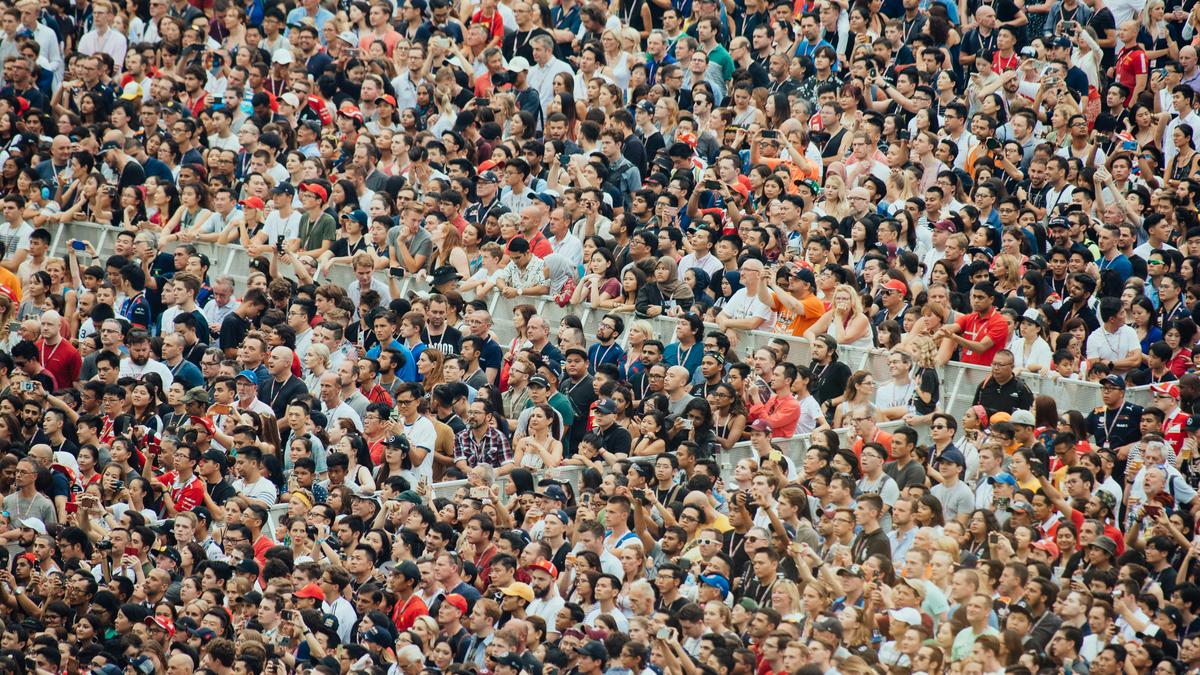
- 12 Jan 2025
In News:
The tracing of genetic ancestry remains a challenging task due to the statistical similarity among populations across geographical regions. However, recent advances in genetic analysis, particularly the development of the Twigstats tool, are significantly enhancing our ability to reconstruct genetic histories at a very high resolution.
Key Insights from Genetic Research:
- Ancient DNA (aDNA): Prehistoric human ceremonial burials, mass grave mounds, and war graves are rich sources of ancient genetic material, offering key insights into population dynamics. These samples help us understand past migrations, cultural transitions, and the genetic legacy of ancient groups.
- Challenges in Ancestry Tracing:
- Populations often share many genetic similarities, complicating the task of tracing ancestry across regions.
- Ancient DNA samples are typically of lower quality compared to modern samples, limiting the precision of past genetic studies.
- The movement of genes across time and space, through processes like gene flow, adds complexity to the understanding of population ancestry.
Traditional Genetic Techniques:
- Single Nucleotide Polymorphisms (SNPs): Used to identify natural genetic variations, SNP analysis has been central to reconstructing genetic histories. However, it is limited by its reliance on high-quality samples and struggles with closely related groups.
- Haplotypes and Genealogical Trees: By analyzing shared DNA segments (haplotypes) and rare variants, researchers gain a more comprehensive understanding of population structure and ancestry, which can reveal shifts in population over time.
The Emergence of Twigstats:
- What is Twigstats?
- Twigstats is an advanced analytical tool that enhances the precision of ancestry analysis through time-stratified ancestry analysis, a method that allows for a more fine-grained look at genetic data.
- It is designed to address the limitations of traditional methods by integrating SNPs, haplotypes, and rare genetic variants, providing a more holistic view of ancestry.
- The tool is powered by statistical languages R and C++, which help researchers better manage and analyze complex genetic data.
- How It Works: Twigstats builds family trees by analyzing shared genetic mutations, identifying recent mutations that offer a clearer understanding of historical periods and events. It helps trace the evolution of populations and offers insights into their migrations, mixing, and cultural shifts.
Key Features and Impact of Twigstats:
- Time-Stratified Ancestry Analysis: Allows researchers to study how populations evolved over time, with a focus on specific historical periods.
- Enhanced Precision: Reduces statistical errors and enhances the precision of individual-level ancestry reconstruction.
- Higher-Resolution Mapping: Provides high-resolution genetic maps of migration patterns and admixture events across centuries.
Applications of Twigstats:
- Historical Case Studies: The tool has been used to study ancient genomes from Europe, particularly the Iron, Roman, and Viking Ages (500 BC to 1000 AD). It revealed the fine-scale genetic history of populations in regions like northern and central Europe, including the movement of Germanic and Scandinavian peoples.
- Viking Age Insights: Researchers were able to trace the early presence of Scandinavian-like ancestry in regions such as Britain and the Baltic before the traditionally believed start of the Viking Age. This suggests earlier interactions and migrations from Scandinavia, which aligns with historical records of Anglo-Saxon and Viking movements.
- Cultural Transitions: The analysis identified shifts in population genetics corresponding to cultural changes, such as the shift from the Corded Ware culture to the Bronze Age and the influence of the Wielbark culture.
Genetic Methods Used in the Study:
- Single Nucleotide Polymorphisms (SNPs): Commonly used to trace ancestry but requires high-quality samples.
- Haplotypes and Rare Variants: Offer more nuanced insights into population movements by considering combinations of genetic markers inherited together.
- Genealogical Tree Inference: Applied to both ancient and modern genomes, it provides detailed demographic and ancestry information, supporting the reconstruction of high-resolution genetic histories.
Case Study: India’s Genetic History (2009 Study)
- Researchers used SNP analysis to trace the genetic history of India, revealing two major ancestral groups:
- Ancestral North Indians (ANI): Genetically closer to Central Asian, European, and Middle Eastern populations.
- Ancestral South Indians (ASI): A distinct genetic group, showcasing India’s diverse population structure.
India’s First Organic Fisheries Cluster

- 12 Jan 2025
In News:
The Union Minister, Department of Fisheries, Ministry of Fisheries, Animal Husbandry and Dairying Shri Rajiv Ranjan Singh inaugurated and laid the foundation for 50 key projects worth Rs. 50 crores under Pradhan Mantri Matsya Sampada Yojana (PMMSY) covering all North East Region States Except Arunachal Pradesh and Mizoram.
Key Highlights:
- Initiative: India’s first Organic Fisheries Cluster, launched under the Pradhan Mantri Matsya Sampada Yojana (PMMSY). The cluster focuses on sustainable aquaculture, promoting the production of antibiotic, chemical, and pesticide-free organic fish.
- Target Markets: Eco-conscious domestic and global markets.
Sikkim's Role as India’s First Organic State:
- Sikkim's Organic Commitment: Sikkim is the first Indian state to embrace 100% organic farming, covering 75,000 hectares of land.
- Vision: The Organic Fisheries Cluster aligns with Sikkim’s broader goal of promoting organic, sustainable agricultural practices.
Objective of Organic Fisheries Cluster:
- To prevent pollution and protect aquatic ecosystems by using ecologically healthy practices.
- Promotes sustainable fish farming methods, reducing environmental damage.
- Focus on species like amur carp and other carp varieties, aligning with the state’s success in organic farming.
Support from NABARD:
- The National Bank for Agriculture and Rural Development (NABARD) will provide financial and technical assistance.
- Key support includes:
- Infrastructure development.
- Formation of Fisheries-based Farmer Producer Organizations (FFPOs).
- Capacity building of local fishers and farmers.
PMMSY: A Comprehensive Fisheries Development Scheme:
- Investment: ?20,050 crore under PMMSY.
- Objective: To revolutionize India’s fisheries sector by promoting sustainable growth, enhancing fish production, and improving infrastructure.
- Implementation Period: FY 2020-21 to FY 2024-25.
- Key Goals:
- Boosting fish production and exports.
- Enhancing welfare of fishers and farmers.
- Promoting cluster-based development for better efficiency and competitiveness.
Cluster-Based Approach in Fisheries:
- Objective: To bring together geographically connected enterprises to enhance economies of scale.
- Impact: This approach improves financial viability, strengthens the fisheries value chain, and creates new business and livelihood opportunities.
- Types of Clusters: Includes Pearl, Seaweed, Ornamental Fisheries, Cold Water Fisheries, Organic Fisheries, and more.
Fisheries Focus in the North Eastern Region (NER):
- Fisheries Potential: The North Eastern Region (NER) has abundant freshwater resources and is a biodiversity hotspot.
- Growth: Inland fish production in the NER surged from 4.03 lakh tonnes (2014-15) to 6.41 lakh tonnes (2023-24), marking an impressive 5% annual growth.
- Investment in NER: Over ?2,114 crore invested through schemes like Blue Revolution and PMMSY.
- Key Projects:
- 50 projects worth ?50 crore to boost the region’s fisheries infrastructure, generating over 4,500 jobs.
- Projects include hatcheries, cold storage units, aquaculture parks, and fish kiosks.
India’s Global Fisheries Standing:
- India is the second-largest fish producer in the world, contributing 8% to global fish production.
- Top Rankings:
- Second in aquaculture production.
- Leading in shrimp production and exports.
- Third in capture fisheries.
Government Commitments and Schemes:
- Total Investment: Since 2015, the government has committed ?38,572 crore to fisheries development through key schemes like:
- Blue Revolution.
- Fisheries and Aquaculture Infrastructure Development Fund (FIDF).
- PMMSY.
- Pradhan Mantri Matsya Kisan Samridhi Sah-Yojana (PM-MKSSY).
- These initiatives aim to promote sustainable growth, create jobs, and enhance infrastructure in the fisheries sector.
Economic, Environmental, and Social Benefits:
- Economic Impact:
- Higher incomes for fishers and farmers through better production and export.
- Employment generation through infrastructure development.
- Environmental Impact: Reduced pollution and protection of aquatic ecosystems.
- Social Impact: Empowerment of local communities, fostering sustainable livelihoods.
UJALA Scheme

- 10 Jan 2025
In News:
UJALA scheme completes 10 years, saves ?19,153 crore annually
UJALA Scheme (Unnat Jyoti by Affordable LEDs for All)
- Launch Date: 5th January 2015 by PM Narendra Modi
- Objective:
- To promote energy-efficient LED lighting across India
- To reduce energy consumption, lower electricity bills, and decrease carbon emissions
- Implementing Body: Energy Efficiency Services Limited (EESL), Ministry of Power
- Scheme Relevance: Aims to provide affordable LED bulbs, tube lights, and fans to every household
- Global Recognition: World’s largest zero-subsidy domestic lighting scheme
Key Features:
- Affordability: Subsidized LED bulbs (?70-80), reducing the cost of electricity for households
- Energy Efficiency: LEDs consume 90% less energy than incandescent bulbs, 50% less than CFLs
- Environmental Impact: Significant reduction in CO? emissions by avoiding millions of tonnes annually
- Market Transformation: Over 36.87 crore LED bulbs distributed, saving approximately ?19,153 crore on electricity bills each year
- Consumer Benefit:
- On-Bill Financing: LED bulbs available for purchase through deferred payment via electricity bills
- Targeted low-income communities through Self-Help Groups (SHGs)
Achievements:
- Energy Savings: 47.9 billion kWh annually
- Cost Savings: ?19,153 crore saved on electricity bills
- Carbon Emission Reduction: 38.7 million tonnes of CO? avoided per year
- Peak Demand Reduction: 9,586 MW reduction in peak electricity demand
- Street Lighting: Over 1.34 crore LED streetlights installed, saving 9,001 million units annually
Key Initiatives:
- GRAM UJALA Scheme (March 2021): Aimed at rural households, providing LED bulbs at ?10 each
- Street Lighting National Programme (SLNP): Aimed at reducing public lighting costs with energy-efficient streetlights
- Encouraging Domestic Manufacturing: Stimulated local LED production, aligning with the "Make in India" mission
- E-Procurement Transparency: Real-time procurement ensuring price reductions and maintaining quality
Impact on Environment:
- Energy Savings & Carbon Footprint: The scheme significantly reduced the carbon footprint by promoting energy-efficient appliances
- Reduction in Household Consumption: Consumers benefit from reduced energy consumption and lower utility bills
New Method to Improve Nitrogen Use Efficiency (NUE)

- 10 Jan 2025
In News:
A recent breakthrough in agricultural research offers a promising solution to improve Nitrogen Use Efficiency (NUE) in crops, particularly in rice and Arabidopsis, by reducing nitric oxide (NO) levels in plants. This innovative approach provides an environmentally sustainable way to enhance crop yields while minimizing the need for synthetic nitrogen fertilizers, which have significant ecological and economic drawbacks.
Key Findings and Research Overview:
- Reducing NO Levels: The study, conducted by researchers at the National Institute of Plant Genome Research (NIPGR), demonstrated that by reducing nitric oxide (NO) levels in plants, nitrogen uptake could be significantly improved. This leads to a better NUE, a crucial factor for enhancing crop yield sustainably.
- NUE and Its Importance: NUE refers to the efficiency with which plants use nitrogen for biomass production. Improving NUE allows for higher crop yields with less fertilizer input, reducing costs and minimizing nitrogen-related environmental pollution.
- Traditional Approaches and Their Limitations: Current techniques to improve NUE primarily rely on the use of inorganic nitrogen fertilizers. These methods, though effective, have several downsides:
- They involve high operational costs for farmers.
- Excessive fertilizer use contributes to the emission of nitrogen oxides (NOx) and other pollutants.
- The production of these fertilizers also contributes to greenhouse gas emissions.
In contrast, the new study proposes a genetic and pharmacological manipulation of NO levels, offering a sustainable alternative to these traditional, resource-heavy methods.
Study Methodology:
The research team employed both genetic and pharmacological approaches to regulate NO levels in plants:
- Phytoglobin Overexpression: By overexpressing phytoglobin (a natural NO scavenger), the researchers increased the expression of high-affinity nitrate transporters (HATs) like NRT2.1 and NRT2.4. These transporters are essential for efficient nitrogen uptake.
- NO Donor and Scavenger Treatments: Plants were treated with NO donor (SNAP) and NO scavenger (cPTIO) to monitor the effects on NUE.
- Results: The treatment led to more efficient nitrogen uptake, especially under low NO conditions, by enhancing the expression of HATs. This method could increase plant growth and nitrogen utilization without relying on excessive fertilizer use.
Significance and Impact:
This research provides a pathway to enhance crop yield sustainably by addressing one of the most critical challenges in modern agriculture—reducing the reliance on nitrogen fertilizers. By modulating NO levels to regulate nitrogen uptake, this approach offers:
- Reduced need for synthetic fertilizers, lowering farmers' operational costs.
- Minimized environmental impact, including lower nitrogen oxide emissions and less nitrogen runoff.
- Improved nitrogen uptake efficiency, ensuring better crop yields, especially under conditions with limited nitrogen availability.
Broader Implications:
- Global Nitrogen Challenges:
- The overuse of nitrogen fertilizers has been a major driver of nitrogen pollution, leading to issues like eutrophication, biodiversity loss, and climate change.
- According to the Food and Agriculture Organization (FAO), excessive nitrogen use has worsened environmental conditions globally, while many regions, particularly in low-income countries, suffer from nitrogen depletion, which reduces crop productivity.
- Health and Environmental Risks:
- Nitrogen pollution contributes to health issues like methemoglobinemia (blue baby syndrome) and various long-term diseases.
- Nitrogen compounds also play a role in greenhouse gas emissions, further exacerbating climate change.
- Future Directions for Sustainable Agriculture:
- This study highlights the need for innovative nitrogen management strategies, integrating both biological and genetic approaches to optimize nitrogen use.
- Research is underway to develop NO scavenging formulations and identify bacteria that could be used in soil to enhance NUE in plants.
- Policy Recommendations:
- Governments should focus on reducing the environmental and health impacts of nitrogen fertilizer production and usage by promoting sustainable farming practices.
- Encouraging biological nitrogen fixation through crops like soybeans and alfalfa, and investing in low-emission fertilizers, can help mitigate nitrogen pollution.
Dr. V. Narayanan Takes Over as ISRO Chairman

- 10 Jan 2025
In News:
Dr. V. Narayanan has been appointed as the new Chairman of ISRO and Secretary of the Department of Space (DoS), effective from January 14, 2025, succeeding Dr. S. Somanath.
Background and Career of Dr. V. Narayanan:
Dr. Narayanan, currently the Director of Liquid Propulsion Systems Centre (LPSC) in Thiruvananthapuram, has been a key figure in ISRO since joining in 1984. With a focus on cryogenic propulsion, he has played an instrumental role in developing critical technologies for ISRO's launch vehicles. Notably, his work has contributed to India becoming the sixth country globally capable of building and operationalizing cryogenic engines.
Dr. Narayanan’s career highlights include:
- Cryogenic Technology: Leading the development of cryogenic engines for LVM3 (India's heaviest launch vehicle) and PSLV, which are central to missions like Chandrayaan and Gaganyaan.
- Chandrayaan-2 & Chandrayaan-3: As part of ISRO’s missions to the moon, his contributions were pivotal in rectifying the propulsion system issues post-Chandrayaan-2's hard landing, leading to the successful soft landing of Chandrayaan-3 in August 2023.
- Gaganyaan Mission: Overseeing the development of the propulsion systems for crew and service modules, critical for India’s ambitious human spaceflight program.
Dr. S. Somanath's Legacy:
Dr. S. Somanath, who served as ISRO Chairman and DoS Secretary spearheaded multiple landmark missions, including:
- Chandrayaan-3, Aditya-L1, and INSAT missions.
- The Small Satellite Launch Vehicle (SSLV), Re-usable Launch Vehicle (RLV-LEX), and Gaganyaan abort missions.
- National Space Policy 2023 and fostering partnerships between ISRO and private ventures.
Dr. Somanath’s tenure significantly elevated India’s space capabilities, with Chandrayaan-3 marking a historic milestone in India’s lunar exploration.
Dr. Narayanan’s Role in Upcoming ISRO Missions:
As ISRO Chairman, Dr. Narayanan will oversee several ambitious space missions, including:
- NVS-02: The launch of India's navigation satellite as part of the IRNSS constellation.
- Unmanned Gaganyaan Mission: Leading the uncrewed G-1 flight, a precursor to India's first human spaceflight.
- Indo-US NISAR Satellite: A significant collaborative launch with NASA for earth observation.
Additionally, high-profile projects such as Chandrayaan-4, India’s own space station, and future missions to Mars and Venus are in the pipeline, although not all may occur during his tenure.
Vision for ISRO Under Dr. Narayanan:
Dr. Narayanan aims to expand India’s presence in space, targeting increased global market share, particularly in the space economy, which currently holds 2% of the global space sector. His leadership will focus on:
- Increasing Satellite Capacity: Expanding India’s satellite fleet, which currently stands at 53, to meet growing demands for communication, navigation, and earth observation.
- Private Sector Involvement: Leveraging space sector reforms and collaborating with private players to drive innovation and meet burgeoning satellite needs.
- Global Collaboration: Strengthening ties with other space agencies, as ISRO continues to build respect on the global stage.
Upcoming Space Missions and ISRO's Agenda for 2025:
Under Dr. Narayanan's leadership, ISRO has a packed agenda for 2025:
- GSLV Mk-II/IRNSS-1K Mission
- Gaganyaan G-1 Mission (uncrewed flight)
- Chandrayaan-4, Bharatiya Antariksha Station, and Venus Orbiter Mission (VOM) preparations.
Dr. Narayanan’s vision aligns with India's broader goals of becoming a dominant player in the global space economy, aspiring to increase its space market share from 2% to 10%.
Indonesia Becomes 10th Member of BRICS

- 10 Jan 2025
In News:
In January 2025, Indonesia officially joined the BRICS group as its 10th member, signaling the expansion of this influential coalition of emerging economies. The addition of Indonesia, a Southeast Asian powerhouse, strengthens BRICS' global position and highlights the group's evolving dynamics.
BRICS Overview:
BRICS (Brazil, Russia, India, China, South Africa) is an informal intergovernmental group that fosters cooperation among major emerging economies. Initially coined as BRIC by economist Jim O'Neill in 2001, the group became BRICS in 2010 with the inclusion of South Africa. The bloc has grown steadily, with Indonesia now joining as its 10th member.
Recent Expansion:
- In 2023, invitations were extended to Saudi Arabia, Iran, UAE, Egypt, Ethiopia, and Argentina.
- By 2024, Iran, Egypt, Ethiopia, and UAE had joined as permanent members.
- Indonesia's membership was finalized in 2025, following its presidential elections and government formation.
Key Objectives of BRICS:
- Economic Growth: Promote trade, investment, and infrastructure development.
- Global Governance Reform: Advocate for equitable representation in global institutions like the UN and IMF.
- Cultural Exchange: Strengthen people-to-people connections and cultural ties.
- South-South Cooperation: Foster collaboration among developing nations.
BRICS Structure and Mechanisms:
- New Development Bank (NDB): Established in 2014, the NDB finances sustainable development projects in BRICS countries.
- Contingent Reserve Arrangement (CRA): A $100 billion safety net for financial crises.
- BRICS Academic Forum: Encourages academic collaboration across member states.
Global Influence and Economic Impact:
- Global Share: BRICS+ represents over 45% of the world’s population and 35% of global GDP (PPP-based).
- Strategic Position: The group acts as a counterbalance to the G7, challenging Western-dominated global financial systems.
- Financial Independence: BRICS aims to reduce dependence on the US dollar by facilitating local currency transactions and exploring a common currency.
- Technology Collaboration: Member countries, such as India and China, collaborate on digital payments and renewable energy technologies.
Indonesia’s Entry into BRICS:
Indonesia, the world’s fourth-most populous nation, strengthens BRICS’ representation in Southeast Asia. The country brings a robust economy and extensive trade networks, boosting the group's negotiating power. Indonesia’s membership was approved during the 2023 BRICS Summit and finalized in January 2025.
- Strategic Importance for Indonesia: The membership aligns with Indonesia's goals to enhance global cooperation, particularly with the Global South. It also reflects Indonesia's growing influence in international trade and geopolitics.
BRICS Challenges:
- Diverse Interests: Differences in economic priorities, such as India's ties with the US and Russia-China’s geopolitical rivalry, complicate consensus-building.
- Geopolitical Tensions: Disputes like the China-India border issue and Russia’s sanctions limit BRICS' ability to present a unified stance.
- Economic Sanctions and Internal Challenges: Countries like Russia face Western sanctions, while domestic issues in Brazil and South Africa divert attention from regional collaboration.
Significance of BRICS’ Expansion:
The expansion of BRICS marks a pivotal shift in global power dynamics, with a focus on South-South cooperation and equitable global governance. Indonesia’s membership further solidifies the group’s influence in Southeast Asia and adds to its efforts to challenge the dominance of Western-led financial institutions.
- Local Currency Use: The group promotes the use of local currencies for trade to reduce reliance on the US dollar.
- Global South Advocacy: BRICS champions the cause of developing nations, ensuring that emerging economies have a voice in global governance.
Recent and Upcoming BRICS Summits:
- 16th BRICS Summit (2024): Held in Kazan, Russia, with a focus on strengthening local currencies and promoting non-dollar transactions.
- 17th BRICS Summit (2025): Scheduled for July 2025 in Rio de Janeiro, Brazil, under the theme "Global South," with an emphasis on payment gateways to facilitate intra-BRICS trade.
Flamingo Festival 2025

- 10 Jan 2025
In News:
The Flamingo Festival 2025 took place at Sullurpeta, in Tirupati district, Andhra Pradesh. It celebrates the arrival of migratory birds, with a focus on flamingos, to the region's key bird habitats, including Pulicat Lake and Nelapattu Bird Sanctuary.
Key Highlights:
- Birdwatching: Over 200 bird species, including flamingos, are expected to flock to the region during this festival.
- Locations: The event spans across five locations:
- Nelapattu Bird Sanctuary
- B.V. Palem (Pulicat Lake)
- Atakanithippa
- Sri City
- Sullurpeta (site for cultural programs and stalls)
- Collaborations: In association with organizations like the Bombay Natural History Society.
- Focus on Local Community: Local residents of the eco-sensitive zone will be prioritized and supported.
Key Facts on Local Wildlife and Significance:
- Pulicat Lake:
- Location: On the Andhra Pradesh-Tamil Nadu border, with 96% of the lake in Andhra Pradesh.
- Significance: The second-largest brackish water lake in India (after Chilika Lake in Odisha).
- Biodiversity: Critical habitat for migratory birds, including flamingos, and home to diverse flora and fauna.
- Economic Importance: Supports local fisheries and provides livelihood to nearby communities.
- Nelapattu Bird Sanctuary:
- Location: 20 km north of Pulicat Lake.
- Ecological Role: Largest breeding site in Southeast Asia for spot-billed pelicans.
- Biodiversity: 189 bird species, including painted storks and glossy ibises.
- Flora and Fauna: Features Barringtonia swamp forests and southern dry evergreen scrub, critical for biodiversity conservation.
- Symbiotic Relationship with Locals: Guano (bird droppings) from pelicans serves as a natural fertilizer for local agriculture, benefiting the farmers.
Flamingo Facts:
- Species: India hosts two flamingo species:
- Greater Flamingo (larger size, pale pink)
- Lesser Flamingo (smaller size, bright pink)
- Behavior: Nomadic and social birds, found in large flocks.
- Coloration: Flamingos' pink color comes from carotenoids in their diet, which are broken down and absorbed into their bodies.
Environmental & Economic Impact: The festival, apart from being a celebration of migratory birds, plays a vital role in:
- Eco-tourism development
- Biodiversity conservation
Local community engagement by highlighting sustainable tourism practices and supporting local livelihoods through eco-friendly initiatives like the Mahatma Gandhi National Rural Employment Guarantee Scheme (MGNREGS).
Bharatpol

- 11 Jan 2025
In News:
Union Home Minister Amit Shah inaugurated the ‘Bharatpol’ portal, which aims to streamline international cooperation for law investigating agencies.
Key Highlights:
Bharatpol is a newly launched portal developed by the Central Bureau of Investigation (CBI) in India to facilitate faster and more efficient international cooperation between Indian law enforcement agencies and Interpol. It was inaugurated by Union Home Minister Amit Shah, to streamline the process of sharing criminal intelligence and coordinating efforts in transnational crimes like cybercrime, human trafficking, drug trafficking, financial fraud, and organized crime.
The portal aims to address the current challenges in international collaboration, which previously relied on slower communication methods such as letters, emails, and faxes, often leading to delays in investigations.
Key Features and Functions of Bharatpol:
- Unified Platform: Bharatpol integrates CBI as the National Central Bureau (NCB-New Delhi) with all Indian law enforcement agencies, from state police forces to higher authorities. This allows better coordination and quicker access to international resources.
- Simplified Request Mechanism: The portal provides a standardized method for frontline police officers to request international assistance from Interpol member countries, using templates for efficiency.
- Rapid Information Dissemination: Bharatpol enables the CBI to quickly share criminal intelligence and other pertinent information with law enforcement agencies across India, helping to tackle international criminal activities in real-time.
- Increase in Utilization of Interpol Notices: The portal makes it easier for Indian law enforcement agencies to issue and manage Red Corner Notices and other Interpol notices, which are essential tools in tracking criminals globally.
- Capacity Building and Training: Bharatpol includes resources for training law enforcement personnel, improving their ability to conduct investigations abroad and seek foreign assistance via Interpol.
How Bharatpol Works:
- Key Modules of Bharatpol:
- Connect: Facilitates the integration of Indian agencies with the Interpol NCB-New Delhi, creating a seamless communication channel.
- INTERPOL Notices: Supports the rapid issuance and processing of Interpol Notices like Red Corner Notices to locate criminals globally.
- References: Enables Indian agencies to seek and offer international assistance for investigations.
- Broadcast: Ensures quick availability of assistance requests from Interpol member countries, facilitating faster responses.
- Resources: Manages document exchanges and training materials to support the capacity-building efforts of law enforcement agencies.
Potential Benefits of Bharatpol:
- Enhanced Coordination: Bharatpol facilitates better collaboration between central, state, and Union Territory agencies, allowing for a more structured and efficient approach to international crime investigations.
- Faster Investigation: Real-time sharing of information and the use of Interpol notices will help in tracking criminals and criminal activities both in India and abroad.
- Simplified Extradition Process: By streamlining international communication, Bharatpol will assist in expediting the extradition of criminals to India for prosecution.
- Support for Transnational Crime Prevention: It will help address growing threats such as cybercrime, human trafficking, and organized crime by improving the ability of Indian law enforcement to collaborate globally.
National Mission on Edible Oils - Oil Palm (NMEO-OP)

- 11 Jan 2025
In News:
- Union Minister Shri Shivraj Singh Chouhan urges states to accelerate efforts under the National Mission on Edible Oils - Oil Palm (NMEO-OP) to enhance domestic production of edible oils and reduce reliance on imports.
Key Facts Regarding the NMEO-OP Scheme:
About the Scheme:
- Objective: Enhance domestic production of crude palm oil (CPO) and reduce India's dependence on edible oil imports.
- Centrally Sponsored Scheme: Focuses on expanding oil palm cultivation in India.
Key Targets:
- Area Expansion: Aim to cover an additional 6.5 lakh hectares by 2025-26, reaching a total of 10 lakh hectares.
- Production Increase: CPO production is targeted to rise from 0.27 lakh tonnes (2019-20) to 11.20 lakh tonnes by 2025-26, and further to 28 lakh tonnes by 2029-30.
- Per-Capita Consumption: Maintain a consumption level of 19 kg/person/annum until 2025-26.
Focus Regions:
- Special Focus: North-Eastern States and Andaman & Nicobar Islands for oil palm cultivation and CPO production.
Key Features:
- Viability Price (VP) Mechanism: Aims to protect farmers from market volatility by providing price assurance. Payments are made through Direct Benefit Transfer (DBT).
- Increased Assistance:
- Assistance for planting material increased from Rs 12,000/ha to Rs 29,000/ha.
- Special assistance of Rs 250 per plant for rejuvenating old gardens.
- Regional Support:
- For North-East and Andaman, an additional 2% of the CPO price is borne by the government to ensure fair payments to farmers.
- Special provisions for half-moon terrace cultivation, bio-fencing, and land clearance for integrated farming.
Oil Palm Cultivation:
- Origin: Native to the tropical rainforests of West Africa, oil palm is a new crop in India with high oil-yielding potential.
- Oil Yield: Oil palm produces five times the yield of traditional oilseeds per hectare.
- Types of Oil Produced:
- Palm Oil: Extracted from the mesocarp (fruit's fleshy part), containing 45-55% oil.
- Palm Kernel Oil: Derived from the kernel, used in lauric oils.
- Major States for Cultivation: Andhra Pradesh, Telangana, Kerala (98% of total production).
- Other Key States: Karnataka, Tamil Nadu, Odisha, Gujarat, Mizoram, Arunachal Pradesh, Assam, Manipur, Nagaland.
India's Oil Palm Potential:
- Cultivated Area: India currently has 3.70 lakh hectares under oil palm cultivation.
- Total Potential Area: Around 28 lakh hectares.
- Imports: India is the world's largest palm oil importer, with imports of 9.2 million tonnes in 2023-24, accounting for 60% of total edible oil imports. The country primarily imports from Indonesia, Malaysia, and Thailand.
Emergency Declared in Trinidad and Tobago

- 11 Jan 2025
In News:
- Trinidad and Tobago declared a state of emergency, in response to a surge in gang violence, which raised the annual death toll to the highest since 2013.
Trinidad and Tobago:
- Location: An island nation in the southern Caribbean, near Venezuela and Guyana.
- Capital: Port of Spain.
- Population: Approximately 1.5 million.
- Ethnic Composition: African (36.3%), Indian (35.4%), Mixed (22.8%), and others.
- Religions: Christianity (64%), Hinduism (18%), Islam (5%), and others.
- Independence: Gained from the UK on August 31, 1962, and became a republic in 1976.
- Member of: Caribbean Community (CARICOM), Commonwealth of Nations, and the United Nations.
- Major Rivers: Ortoire and Caroni.
- Geography:
- Total Land Area: 5,128 sq. km (Trinidad: 4,768 sq. km, Tobago: 300 sq. km).
- Climate: Tropical, with dry and rainy seasons.
- Highest Point: Mount Aripo.
- Natural Resource: Pitch Lake, the world’s largest asphalt reservoir.
- Mountain Range: Northern Range, part of the Andes extension.
Economic and Cultural Significance
- Exports: Major exporter of liquefied natural gas (LNG), methanol, ammonia, and petrochemicals.
- Culture: Known for Carnival, Calypso music, Soca, and the Steelpan (the only musical instrument invented in the 20th century).
- Infrastructure:
- Ports: Port of Spain, Point Lisas, Scarborough.
- Airports: Piarco International Airport (Trinidad) and A.N.R. Robinson International Airport (Tobago).
Engagement with India
- Trinidad and Tobago became the first Caribbean country to adopt India’s UPI platform.
- Both countries granted each other Most Favored Nation (MFN) status in 1997.
- Bilateral trade reached USD 368.96 million in FY 2023-24.
- The Indian diaspora constitutes about 42% of the population.
Past Emergency Declarations:
- 2014: State of emergency declared in response to gang violence.
- 2021: Emergency declared for Covid-19 restrictions.
- 2011: Limited state of emergency for drug-related crimes.
Toda Tribe

- 11 Jan 2025
In News:
- The Toda tribe, one of the oldest Dravidian ethnic groups in the Nilgiris Hills of Tamil Nadu, celebrated their traditional Modhweth festival marking the New Year.
What is the Modhweth Festival?
- About:
- Celebrated annually on the last Sunday of December or the first Sunday of January.
- Held at the Moonpo temple in Muthanadu Mund village, Nilgiri district.
- The Moonpo temple features a unique vertical spire with a thatched roof and a flat stone on top, making it one of the last Toda temples of its kind in the Nilgiris.
- Rituals and Celebrations:
- Prayers are offered to the deity, Thenkish Amman, for good health, rains, and bountiful harvest.
- Participants perform a traditional dance outside the temple.
- Unique Customs:
- Toda youth showcase their strength and masculinity by lifting a greased boulder weighing around 80 kg.
- Women are not part of the celebrations as per traditional customs.
What is the Toda Tribe?
- About:
- A pastoral tribe native to the Nilgiri Hills of Tamil Nadu.
- Classified as a Particularly Vulnerable Tribal Group (PVTG) in Tamil Nadu.
- The Toda language is Dravidian but stands out for its uniqueness among Dravidian languages.
- Significance:
- Toda lands are part of the Nilgiri Biosphere Reserve, a UNESCO International Biosphere Reserve.
- Their territory is also recognized as a UNESCO World Heritage Site.
- Religion and Beliefs:
- Their religious practices are based on a pantheon of gods, with Tökisy (goddess) and Ön (god of the underworld) as central deities.
Nilgiri Biosphere Reserve (NBR)
- About:
- Established in 1986 as India’s first Biosphere Reserve.
- Located across Tamil Nadu, Karnataka, and Kerala.
- India’s first biosphere reserve under UNESCO’s Man and the Biosphere Programme.
- Tribal Groups in NBR:
- Home to several groups such as Adiyan, Aranadan, Kader, Kurichian, Kuruman, and Kurumbas.
- Ecological Significance:
- Represents the confluence of Afro-tropical and Indo-Malayan biotic zones.
- Fauna:
- Home to species like Nilgiri tahr, Nilgiri langur, gaur, Indian elephant, Nilgiri danio (freshwater fish), and Nilgiri barbare.
- Protected Areas in NBR:
- Mudumalai Wildlife Sanctuary, Wayanad Wildlife Sanctuary, Bandipur National Park, Nagarhole National Park, Mukurthi National Park, and Silent Valley.
Z-Morh Tunnel
- 11 Jan 2025
In News:
Recently, Prime Minister Narendra Modi inaugurated the Z-Morh Tunnel at Sonamarg, which has now been renamed the Sonamarg Tunnel.
Key Takeaways:
- A 6.4-km bi-directional tunnel with an approach road of 5.6 km, Z-Morh connects the Sonamarg health resort with Kangan town in the Ganderbal district of central Kashmir.
- The tunnel has acquired its name for the Z-shaped road stretch that was previously at the place where the tunnel is being constructed.
- The Z-Morh project was initiated by the Border Roads Organisation in 2012. Although the BRO awarded the construction contract to Tunnelway Ltd, the project was subsequently taken over by National Highways and Infrastructure Development Corporation Limited (NHIDCL).
Significance
Strategic Importance
- Connectivity: Provides all-weather connectivity from Srinagar to Ladakh, ensuring year-round access.
- Military Significance:
- Critical for rapid deployment of Indian Armed Forces to Ladakh’s border areas, particularly in the context of tensions with Pakistan and China.
- Reduces dependence on air transport, lowering costs and increasing the longevity of the Indian Air Force’s aircraft.
- Adjacent Projects:
- Zojila Tunnel: An even more crucial project connecting Sonamarg to Drass in Ladakh, with an expected completion by December 2026 (extended to 2030). This will bypass the avalanche-prone Zojila Pass.
- Srinagar-Leh Highway: The Z-Morh Tunnel supports the key Srinagar-Leh route, which is important for defence logistics and trade.
Economic Significance
- Tourism:
- Sonamarg, known as the "Meadow of Gold," will benefit from year-round accessibility, boosting tourism.
- Local businesses that rely on seasonal tourist traffic will have consistent revenue flow.
- Trade and Agriculture:
- Reduced travel time and improved road safety will benefit farmers and traders, especially for those transporting goods between Kashmir and Ladakh.
- Facilitates increased investment and economic growth in the region.
Broader Infrastructure Projects in Jammu & Kashmir
Several key infrastructure projects are contributing to regional development:
- Zojila Tunnel
- Cost: ?6,800 crore
- Length: 13 km tunnel, bypassing Zojila Pass.
- Completion: Expected by 2030.
- Strategic Importance: Provides all-weather connectivity to Ladakh.
- Srinagar Semi-Ring Road
- Cost: ?2,919 crore
- Objective: Relieve traffic congestion in five districts, including Srinagar.
- Delay: New completion date is June 2025.
- Hydroelectric Power Projects:
- Ratle HE Project: 850 MW, on Chenab River, Kishtwar district.
- Kwar HE Project: 540 MW, in Kishtwar.
- Pakal Dul HE Project: 1,000 MW, on the Marusudar River, Kishtwar.
- Kiru HE Project: 624 MW, on Chenab River, Kishtwar.
- Strategic Relevance: These projects will enhance energy security and contribute to the region’s power grid.
India’s Recalculated Coastline
- 09 Jan 2025
In News:
India’s coastline has grown significantly over the past five decades, now extending 11,098 km in 2023-24, compared to 7,516 km in 1970. This marks an increase of 47.6% in just over five decades, attributed to a more precise methodology for measuring coastlines.
Key Factors Behind the Growth:
New Methodology for Measuring Coastlines:
- The old methodology used straight-line distances to measure the coastline, a method that didn't capture the complexity of India’s coastlines.
- The updated approach incorporates bays, estuaries, inlets, and other geomorphological features, offering a more accurate and detailed representation of the coastline.
- Advanced technologies like geospatial mapping have been used to ensure greater precision.
State-wise Recalculated Coastline Changes:
- Gujarat:
- Old coastline (1970): 1,214 km
- New coastline (2023-24): 2,340 km
- Growth: The largest absolute increase in coastline, nearly doubling its size.
- West Bengal:
- Old coastline: 157 km
- New coastline: 721 km
- Growth: A dramatic 357% increase, marking the highest percentage rise.
- Tamil Nadu:
- Old coastline: 906 km
- New coastline: 1,068 km
- Growth: Revised length now exceeds Andhra Pradesh’s coastline, which was 1,053 km.
- Puducherry:
- Old coastline: No major shift, but the updated data shows a contraction of 4.9 km (-10.4%), due to erosion and recalculations.
- Kerala:
- Old coastline: Relatively small increase of 30 km (5%), the smallest among the states.
Notable Observations:
- Andhra Pradesh is developing new ports like Ramayapatnam, Krishnapatnam, and Kakinada Gateway, aiming to boost economic growth and employment by leveraging its expanding coastline.
- The recalculated coastline helps in better maritime planning, focusing on port development, tourism, biodiversity conservation, and coastal erosion.
Impact of Coastline Expansion:
- Economic Growth:
- Coastal states, particularly Gujarat and West Bengal, benefit from an expanded coastline that improves maritime trade, port infrastructure, and tourism.
- The expansion supports industrialization, with growing logistics and transportation activities along the coast.
- Environmental Considerations:
- The new data aids biodiversity conservation, helping to track coastal erosion and accretion (land buildup), especially in areas like the West Coast.
- Understanding these changes is essential for disaster preparedness and sustainable coastal management.
- Coastlines of Emergence and Submergence:
- Emerging Coastlines: Land rising due to uplift or falling sea levels, such as along the Tamil Nadu Coast.
- Submerged Coastlines: Land that has sunk or been submerged due to rising sea levels, particularly noticeable along parts of Kerala’s coast.
Geographical Significance of the Expanded Coastline:
- India’s coast touches three major bodies of water: the Bay of Bengal (east), the Indian Ocean (south), and the Arabian Sea (west).
- The expansion reflects more than just geography—accurate coastline data is crucial for policy planning, maritime security, and resource management.
Bhashini Initiative
- 09 Jan 2025
In News:
e-Shram Portal, which aims to provide social security benefits to unorganised workers, has been upgraded with multilingual functionality for all 22 scheduled languages of India. This development, supported by the Bhashini Initiative, ensures that unorganised workers from diverse linguistic backgrounds can access the portal more easily and benefit from government welfare schemes.
About Bhashini Initiative:
- Launched in: July 2022
- Developed by: Ministry of Electronics and Information Technology (MeitY)
- Aim: To eliminate language barriers in accessing digital services by making AI and Natural Language Processing (NLP) tools publicly available.
Key Features:
- Local Language Translation: Bhashini offers AI-powered translation services in 22 scheduled Indian languages to ensure that digital platforms like e-Shram are accessible to everyone in their native languages.
- Open AI and NLP Resources: These tools are made available to Indian MSMEs, startups, and innovators to create a more inclusive digital ecosystem.
- Crowdsourcing Platform (Bhashadaan): A platform for people to contribute to building linguistic datasets through initiatives like Suno India, Likho India, Bolo India, and Dekho India, furthering language diversity in digital services.
- National Digital Public Platform: Aimed at providing universal access to digital content in all Indian languages, facilitating smoother communication across regions.
e-Shram Portal: A One-Stop Solution for Unorganised Workers
- Purpose: The e-Shram portal was created to provide unorganised workers with access to social security benefits and welfare schemes.
Recent Upgrade:
- Multilingual Functionality: The portal has now been upgraded to support 22 scheduled languages, making it more inclusive and user-friendly for workers who speak various regional languages.
- Previous Version: Previously, the portal was only available in English, Hindi, Kannada, and Marathi. The integration of 22 languages is a significant improvement, enabling broader participation.
Importance of the e-Shram Portal for Unorganised Workers:
- Welfare Access: The portal provides access to government schemes designed for the welfare, livelihood, and well-being of unorganised workers, including gig and platform workers and building and construction workers.
- Integration of Social Security Schemes:
- As of now, the portal facilitates access to 12 government schemes, with plans to integrate even more, including state-level programs.
- Future plans include launching a mobile app, a single application form, and the integration of payment gateways for faster disbursement of benefits.
AI-Driven Inclusive Development and Economic Transformation

- 09 Jan 2025
In News:
IndiaAI, under the Digital India Corporation, has partnered with Microsoft to advance AI adoption in India for inclusive development and economic transformation. The collaboration focuses on skilling, innovation, AI safety, and responsible AI development, with a goal of fostering AI innovation across India, particularly in underserved rural and urban areas.
Key Highlights:
- Training 500,000 Individuals by 2026:
- Target Audience: Students, educators, developers, government officials, and women entrepreneurs.
- Goal: Empower these groups with foundational and advanced AI skills for economic opportunities and digital transformation.
- AI Catalysts (Centers of Excellence):
- Establishment of AI hubs in Tier 2 and Tier 3 cities to foster rural AI innovation.
- Objective to equip 100,000 AI innovators and developers through hackathons, community building, and creating an AI marketplace.
- AI Productivity Labs:
- Set up in 20 National Skill Training Institutes (NSTIs) across 10 states.
- Focus on training 20,000 educators and providing AI education to 100,000 students in 200 Industrial Training Institutes (ITIs).
- Support for Startups:
- Microsoft’s Founders Hub program will provide Azure credits, business resources, and mentorship to 1,000 AI startups in India, boosting innovation and growth in the Indian startup ecosystem.
- Development of Indic Language Models:
- Work on creating foundational AI models with support for Indic languages to address India’s linguistic diversity and cultural needs.
- AI Safety Institute:
- Focus on building frameworks, standards, and evaluation metrics for responsible AI development.
- Support for the creation of an AI Safety Institute in India to promote ethical and safe AI practices.
- Infrastructure & Research:
- Microsoft will also focus on enhancing cloud infrastructure and support for AI research through Microsoft Research India.
- AI-driven solutions will be developed for critical sectors like healthcare, education, and agriculture.
Investment and Strategic Goals:
- $3 Billion Investment:
- Microsoft has pledged $3 billion to expand AI and cloud infrastructure in India over the next 2 years. This investment will focus on:
- Building scalable infrastructure for AI applications.
- Enhancing cloud services and AI capabilities.
- Establishing new data centers across India, supporting the AI-first agenda.
- Microsoft has pledged $3 billion to expand AI and cloud infrastructure in India over the next 2 years. This investment will focus on:
- AI Skill Development:
- 10 million people will be trained over the next five years in AI skills, empowering the Indian workforce to adapt to AI technologies, driving job creation and economic growth.
- AI in India’s Economy:
- India aims to become a global leader in AI, with AI-powered solutions contributing to diverse sectors like finance, e-commerce, and manufacturing.
- Focus on economic growth through AI-powered industries and fostering entrepreneurship in underserved communities.
AI Technologies and Applications:
- Artificial Intelligence (AI) involves machines performing tasks that require human intelligence like decision-making, problem-solving, and learning from data.
- Machine Learning (ML): AI systems improve through data without being explicitly programmed.
- Natural Language Processing (NLP): AI systems understand and respond to human language.
- Computer Vision: AI systems analyze and interpret visual information.
- Robotics: AI powers automated tasks through robots in industries like manufacturing and healthcare.
- Cloud Infrastructure enables the scaling of AI systems:
- Cloud Computing provides on-demand access to computing power, essential for AI tasks requiring large amounts of data and processing power.
- Data Centers host AI models and data, and cloud services such as Microsoft Azure will support AI startups and businesses.
Expected Impact and Benefits:
- Inclusive AI Development: Focus on empowering women, students, and rural innovators to bridge the digital divide and promote economic empowerment.
- Startup Ecosystem: The collaboration will foster a robust AI startup ecosystem, promoting innovation and entrepreneurship through AI tools, Azure credits, and mentorship.
- Skill Development & Education: AI-driven skill training initiatives will prepare millions of individuals for the jobs of the future, particularly in the AI-driven economy, and support education reform.
- AI for Critical Sectors: Development of AI-enabled solutions to address challenges in sectors such as healthcare, education, and agriculture, driving social impact and economic growth.
Miyawaki Technique

- 09 Jan 2025
In News:
- Prayagraj Municipal Corporation has successfully transformed over 56,000 square meters of garbage dumps and barren lands into lush green forests using the Miyawaki Technique over the past two years, as part of environmental conservation efforts in preparation for Mahakumbh 2025.
About Miyawaki Technique:
- Origin: Developed by Akira Miyawaki, a Japanese botanist, in the 1970s to create dense and fast-growing forests.
- Key Features:
- Dense Planting: Trees and shrubs are planted close together, often using native species.
- Accelerated Growth: Trees grow 10 times faster than in traditional forests.
- Soil Restoration: Improves soil fertility and promotes natural regeneration.
- Biodiversity Boost: Supports a variety of flora and fauna by mimicking natural ecosystems.
- Significance:
- Urban Reforestation: Converts barren or polluted lands into green spaces.
- Environmental Benefits:
- Reduces air and water pollution.
- Absorbs carbon and helps combat climate change.
- Lowers temperatures by 4-7°C.
- Sustainability: Prevents soil erosion and promotes long-term ecological balance.
Miyawaki Forests in Prayagraj:
- Achievements:
- Over 56,000 square meters of land converted into dense forests using the Miyawaki technique over the last two years.
- The project aims to create oxygen banks in preparation for the Mahakumbh 2025 and enhance air quality for millions of expected visitors.
- Plantations:
- 55,800 square meters of area developed across 10+ locations in Prayagraj.
- Largest plantation: 1.2 lakh trees in Naini industrial area.
- 27,000 trees planted in Baswar after cleaning the city's largest garbage dump.
- Environmental Impact:
- The plantations are helping to reduce dust, dirt, and foul odors, thus improving air quality.
- Temperature regulation: The dense forests can lower temperatures by 4 to 7 degrees Celsius.
- Biodiversity and Soil Fertility: Accelerated growth of trees boosts biodiversity and improves soil fertility.
- Tree Species Planted:
- Mango, Mahua, Neem, Peepal, Tamarind, Arjuna, Teak, Amla.
- Ornamental and medicinal plants like Hibiscus, Kadamba, Gulmohar, etc.
- Other species include Sheesham, Bamboo, Lemon, Drumstick (Sahjan), and Tecoma.
Benefits of Miyawaki Forests:
- Air and Water Pollution Reduction: Trees absorb carbon, purify air, and improve water quality.
- Temperature Control: The forests help in reducing urban heat islands, lowering the temperature during hot months.
- Soil Conservation: The dense forests prevent soil erosion and promote the regeneration of the natural ecosystem.
- Enhanced Biodiversity: The technique supports a rich variety of species, improving ecological balance.
AnemiaPhone

- 09 Jan 2025
In News:
AnemiaPhone, a technology developed by Cornell University researchers to accurately, quickly, and cheaply, assess iron deficiency, has been transferred to the Indian Council of Medical Research (ICMR) for integration into its programmes for anaemia, women’s health, and maternal and child health throughout the country.
Key Highlights:
- Technology Features:
- Portable, Rapid, and Affordable: AnemiaPhone is designed to detect iron deficiency efficiently at low cost.
- Requires a fingerstick (small blood sample).
- Results are available within minutes.
- Wireless: Data uploaded to a clinical database via mobile, tablet, or computer.
- Can be used by healthcare workers to assess iron deficiency on the spot and take action (guidance, triage, referral).
- Working Mechanism:
- A drop of blood is placed on a test strip.
- The reader processes the sample.
- Data is uploaded for immediate diagnosis and action.
- Test results assist in on-the-spot intervention by healthcare workers.
Anaemia and Iron Deficiency:
- Prevalence in India:
- Iron deficiency is a leading cause of anaemia.
- 50%-70% of pregnant women in India suffer from anaemia.
- 59% of women and 47% of children (6-59 months) in India suffer from anaemia (NFHS data).
- Consequences of Anaemia:
- Fatigue, dizziness, organ failure, complications in childbirth, and in severe cases, death.
- Contributes to higher maternal and child mortality rates in India.
- Impact on Health in India:
- India has one of the highest rates of anaemia in the world.
- Iron deficiency is a significant contributor to maternal deaths.
ICMR's Role and Integration into National Programs:
- ICMR and AnemiaPhone:
- The Indian Council of Medical Research (ICMR) has integrated AnemiaPhone into its Anaemia Mukt Bharat (Anaemia-Free India) program.
- The program focuses on eliminating anaemia by 2025 through screening, diagnosis, and treatment in women and children, especially in remote areas.
- Transfer of Technology:
- In November 2024, Cornell University transferred the technology to ICMR for free.
- This collaboration aims to improve health outcomes by sharing innovative health technologies.
Advantages of AnemiaPhone:
- Cost-Effective and Portable:
- Low-cost compared to traditional lab tests.
- Portable and can be used in remote and underserved areas.
- Quick Diagnosis: Results are processed in minutes, allowing healthcare workers to act without delay.
- No Need for Expensive Labs:
- Can be used at primary health centers or in door-to-door health surveys.
- Facilitates healthcare in rural or difficult-to-reach areas.
- Wireless and Easy to Use: The device is user-friendly and does not require extensive training.
Impact on Healthcare System:
- Improvement in Accessibility:
- Helps reduce the need for people to travel long distances for diagnosis, especially in rural areas.
- Ensures early diagnosis and treatment of iron deficiency and anaemia.
- Enhancing Maternal and Child Health: AnemiaPhone will contribute to reducing maternal and child mortality rates linked to anaemia.
Technology Testing and Development:
- Testing in India:
- AnemiaPhone has been tested in India and has shown accurate results in diagnosing iron deficiency.
- Single-use test strips help ensure accuracy and prevent contamination.
Global Health Context:
- Global Prevalence of Anaemia: More than 2 billion people worldwide suffer from anaemia, particularly pregnant women and young children.
- WHO’s Role: The World Health Organization (WHO) identifies anaemia as a major global health issue.
India-Malaysia Cooperation in Critical Minerals and Rare Earth Elements

- 08 Jan 2025
In News:
- On January 7, 2025, during the inaugural India-Malaysia Security Dialogue in New Delhi, both countries agreed to enhance cooperation in critical minerals and rare earth elements (REEs).
- The meeting was co-chaired by India's National Security Adviser, Ajit Doval, and Malaysia’s Director General of the National Security Council, Raja Dato Nushirwan Bin Zainal Abidin.
- The agreement follows the upgrade of bilateral relations to a Comprehensive Strategic Partnership during Malaysian Prime Minister Anwar Ibrahim’s visit to India in August 2024.
- The dialogue also focused on other security aspects such as counter-terrorism, cyber security, and maritime security.
Importance of Critical Minerals and REEs:
-
- Critical Minerals: These are essential for a variety of industries like IT, energy, and defense. They are integral to manufacturing electric vehicle batteries, solar cells, and advanced electronics.
-
- Rare Earth Elements (REEs): Used in high-tech applications such as wind turbines, electric vehicle engines, and high-powered magnets. While their extraction is not rare, it is technically difficult due to their complex nature.
Strategic Relevance:
-
- Global Demand: The global demand for critical minerals is rising, and both countries see it as a strategic necessity to ensure a stable supply of these materials.
- Malaysia's Resources: Malaysia possesses significant deposits of non-rare radioactive earth ores, including essential REEs like Neodymium (Nd), Dysprosium (Dy), and Praseodymium (Pr). These elements are crucial in today’s technological innovations.
- India’s Dependence on Imports: India, which currently imports a substantial portion of its critical minerals, aims to diversify its supply chain by collaborating with Malaysia.
Sustainability and Ecological Accountability:
-
- Both countries recognize the environmental challenges of mining these critical resources. Malaysia aims to adopt responsible mining practices that minimize ecological harm.
- India seeks to ensure a supply chain that aligns with sustainable development goals, balancing economic needs with environmental responsibilities.
Enhancing Supply Chain Resilience:
-
- Diversification of Supply Chain: This partnership aims to reduce India’s dependency on a limited number of countries for critical minerals, enhancing resilience against global supply chain disruptions.
- Collaboration in Extraction and Processing: Both nations are exploring joint ventures in the exploration, extraction, and processing of critical minerals to boost their technological and economic standing globally.
Future Prospects:
-
- The institutionalization of this dialogue through annual meetings is expected to strengthen bilateral cooperation in the critical minerals sector.
- Increased cooperation is likely to enhance economic growth for both countries, aligning them strategically in the global minerals market as demand for these resources continues to soar.
Broader Security Cooperation:
-
- Beyond critical minerals, the India-Malaysia Security Dialogue explored enhanced collaboration in areas like counter-terrorism, cyber security, maritime security, and defense industries.
- This broadening of security cooperation complements the strategic minerals partnership, further solidifying the bilateral ties between the two nations.
Anji Khad Bridge

- 08 Jan 2025
In News:
The Indian Railways has unveiled a monumental engineering achievement with the completion of the Anji Khad Bridge, India’s first cable-stayed rail bridge.
Overview:
- The Anji Khad Bridge is India's first cable-stayed rail bridge, located in Jammu and Kashmir’s Reasi district.
- It is a key part of the Udhampur-Srinagar-Baramulla Rail Link (USBRL) project aimed at enhancing connectivity between Jammu and Kashmir and the rest of India.
- The bridge crosses the Anji River, a tributary of the Chenab River, and is expected to transform regional transport, boost tourism, and promote economic growth.
Key Features:
- Dimensions:
- Total length: 725.5 meters.
- Main Pylon Height: 193 meters from the foundation, standing 331 meters above the riverbed.
- The bridge is designed for train speeds of up to 100 km/h and can withstand wind speeds of up to 213 km/h.
- Structure and Design:
- Asymmetrical cable-stayed design supported by 96 cables with varying lengths (82 to 295 meters).
- The structure includes:
- A 120-meter approach viaduct on the Reasi side.
- A 38-meter approach bridge on the Katra side.
- A 473.25-meter cable-stayed portion crossing the valley.
- A 94.25-meter central embankment linking the main bridge to the approach viaduct.
- Construction Techniques:
- Used advanced construction techniques such as DOKA Jump Form Shuttering, Pump Concreting, and Tower Crane Technique to enhance safety and reduce construction time by 30%.
- A 40-ton tower crane imported from Spain was employed for operations at great heights.
- The project utilized site-specific investigations by IIT Roorkee and IIT Delhi due to the region’s complex geological and seismic conditions.
- Engineering Challenges:
- The bridge had to be constructed in the difficult Himalayan terrain, with fragile geological features such as faults and thrusts.
- Seismic activity in the region required additional precautions in the design and construction process.
- Safety and Monitoring:
- Equipped with an integrated monitoring system that includes multiple sensors to ensure the structural health of the bridge during operation.
Importance and Impact:
- Connectivity: The bridge will significantly improve connectivity between Katra and Reasi, ensuring faster rail travel and linking the Kashmir Valley with the rest of India.
- Tourism and Economic Growth: Expected to boost tourism and economic development by improving access to the region, attracting visitors, and facilitating smoother transportation of goods and services.
- Sustainability: The bridge's design ensures it remains safe under extreme weather conditions, offering long-term reliability for the Indian Railways network.
Collaboration and International Expertise:
- The design and supervision were handled by ITALFERR (Italy), with proof-checking conducted by COWI (UK).
- The project combines Indian engineering codes with Eurocodes, adhering to international standards for structural integrity.
Section 479 of the BNSS 2023

- 08 Jan 2025
In News:
Centre urges states, UTs to ensure undertrial prisoner relief in jails.
Key Highlights:
- Objective: The MHA has urged states and Union Territories (UTs) to implement provisions of Section 479 of the Bharatiya Nagarik Suraksha Sanhita (BNSS) 2023 to provide relief to undertrial prisoners (UTPs) in jails. This initiative aims to address issues such as long detention and overcrowding in prisons.
Key Provisions of Section 479 of BNSS, 2023
- Purpose: To offer relief to undertrial prisoners by mandating their release on bail or bond under specific conditions.
- Key Provisions:
- Subsection (1):
- Release on Bail: UTPs who have served half the maximum sentence for their offense (except offenses punishable by death or life imprisonment) are eligible for release on bail.
- Release on Bond for First-Time Offenders: First-time offenders, who have served one-third of the maximum sentence, are eligible for release on bond by the court.
- Subsection (3):
- Mandatory Application: It is the responsibility of the prison superintendent to apply to the concerned court for the release of eligible prisoners on bail or bond.
- Subsection (1):
- Superintendent’s Role:
- Prison superintendents are mandated to ensure timely applications for bail or bond are filed for eligible UTPs.
Implementation and Reporting
- MHA’s Advisory:
- On January 1, the MHA issued a letter to the Chief Secretaries, Director Generals, and Inspectors General of prisons in all states and UTs to ensure compliance with the provisions of Section 479 of BNSS.
- States and UTs were instructed to report the status of implementation in a prescribed format starting from January 1, 2025.
- Data to be Reported:
- First-Time UTPs: Number of first-time UTPs who have served one-third of their maximum sentence.
- Court Applications: Number of applications for bail filed by jail superintendents.
- Release on Bail: Number of UTPs released on bond or bail after meeting the eligibility criteria.
- Other UTPs: Number of UTPs who have completed half of their sentence, and the number of applications filed for their release.
- MHA’s Campaign:
- Launched on Constitution Day (November 26), this campaign encouraged states and UTs to identify eligible prisoners and file their bail applications, thus helping to reduce overcrowding in prisons and mitigate long-term detention.
Background and Context
- Why Section 479?
- Section 479 aims to reduce the prolonged detention of undertrials, some of whom may have already served significant portions of their maximum sentences. This will not only alleviate overcrowding in prisons but also expedite justice for prisoners who have spent extended periods in jail awaiting trial.
- Earlier MHA Initiatives:
- Prior to this directive, the MHA had issued an advisory on October 16, 2024, encouraging states and UTs to implement Section 479. A special push was also made during Constitution Day to move applications for the release of eligible prisoners.
- Expected Outcome:
- The measures are expected to significantly ease the challenges of overcrowded jails and provide timely relief to undertrials, especially first-time offenders. By enforcing these provisions, the government seeks to improve the judicial process for UTPs and contribute to a more effective and humane criminal justice system.
Sonobuoys

- 08 Jan 2025
In News:
India and the U.S. have announced cooperation on the co-production of U.S. sonobuoys to enhance Undersea Domain Awareness (UDA) for the Indian Navy. This technology is vital for tracking submarines and strengthening defense capabilities, particularly in the Indian Ocean region amidst growing Chinese naval presence.
This partnership is a key step in deepening defense cooperation under the U.S.-India Initiative on Critical and Emerging Technologies (iCET), launched in May 2022, and will contribute to strengthening both countries’ defense industrial bases.
About Sonobuoys
- What They Are:
- Sonobuoys are expendable sonar devices used for anti-submarine warfare and underwater acoustic research.
- Typically, small (13 cm in diameter and 91 cm in length), they are designed for deployment from aircraft or ships to detect submarines in deep waters.
- Working Principles:
- Deployment: Dropped from aircraft or ships, they activate upon water impact.
- Surface Float: Equipped with inflatable floats and radio transmitters to communicate with tracking platforms on the surface.
- Sensors: Hydrophones descend to selected depths, capturing underwater acoustic signals.
- Data Communication: Transmit acoustic data via Very High Frequency (VHF) or Ultra High Frequency (UHF) radios to operators on aircraft or ships.
- Types of Sonobuoys:
- Active Sonobuoys: Emit sound energy and receive echoes, transmitting the data back to operators.
- Passive Sonobuoys: Only listen for underwater sounds from submarines or ships and relay the information back.
- Special Purpose Sonobuoys: Measure environmental data like water temperature and ambient noise.
- Other Applications:
- Beyond anti-submarine warfare, sonobuoys are used for environmental research, including studying marine life such as whales.
Co-production of Sonobuoys: India-U.S. Collaboration
- Manufacturing Agreement:
- Ultra Maritime (U.S.) and Bharat Dynamics Ltd. (BDL) have entered into discussions to co-produce U.S. sonobuoys, in line with India’s "Make in India" initiative.
- The production will follow U.S. Navy standards, with manufacturing split between the U.S. and India.
- The focus will also be on developing bespoke technologies to optimize sonobuoy performance in the unique acoustic environment of the Indian Ocean.
- Interoperability:
- The sonobuoys co-produced in India will be interoperable between U.S. Navy, Indian Navy, and allied aircraft such as P-8, MH-60R, and MQ-9B Sea Guardian.
- This ensures seamless integration and compatibility with naval assets from the U.S., India, Japan, and Australia, especially given the Quad's strategic naval exercises like Malabar.
- Production Location:
- The sonobuoys will be manufactured at BDL's facilities in Visakhapatnam, with a focus on meeting the Indian Navy’s operational demands.
Strategic and Defense Context
- U.S. and Indian Naval Cooperation:
- India has increasingly acquired military platforms from the U.S., such as the P-8I maritime patrol aircraft, MH-60R helicopters, and MQ-9 drones. These assets are also used by other Quad nations like Australia and Japan, highlighting the importance of interoperability and shared defense capabilities in the region.
- Enhanced Maritime Domain Awareness:
- With China’s growing naval presence in the Indian Ocean, the cooperation on sonobuoys aligns with India’s strategic priority of enhancing maritime domain awareness (MDA) and Undersea Domain Awareness (UDA), which are critical for national security.
- Future Plans:
- India has also signed a $3.5 billion contract for 31 MQ-9B drones, enhancing its surveillance capabilities for maritime and other defense applications. Deliveries of these drones will begin in 2029, further boosting India’s defense readiness in the region.
Homo juluensis
- 08 Jan 2025
In News:
A significant discovery in paleoanthropology has unveiled a new species of ancient humans, Homo juluensis. This species, characterized by its unusually large skulls, lived in eastern Asia between 300,000 to 50,000 years ago. The discovery adds to our understanding of human evolution, particularly during the Middle to Late Pleistocene epoch.
Key Characteristics
- Name Origin: Homo juluensis is named after "julu," meaning "big head," reflecting the species' large cranium.
- Geographical Range: This species inhabited regions of eastern Asia, including parts of China, Korea, Japan, and Southeast Asia.
- Fossil Evidence: Fossils have been discovered in Xujiayao and Xuchang (northern and central China), dating from 220,000 to 100,000 years ago.
- Physical Traits:
- Homo juluensis had large braincases, up to 30% larger than modern humans.
- They had thick skulls and facial features reminiscent of both Neanderthals and Denisovans.
- Their dental and jaw features show strong similarities to Neanderthals.
- Cultural Practices:
- They lived in small groups and were hunter-gatherers, hunting wild horses and potentially processing animal hides.
- Their tool-making and survival strategies indicate a complex level of social organization and resource use.
Relationship with Other Ancient Human Species
- Coexistence with Other Species: Homo juluensis coexisted with Neanderthals and Denisovans, potentially interacting and interbreeding with these species.
- Genetic Exchange: Studies suggest hybridization between Neanderthals, Denisovans, and early Homo sapiens played a significant role in shaping the genetic makeup of modern humans, especially in Asia.
- Evolutionary Significance: The species' relationship with other Pleistocene hominins is complex, involving shared ancestry with Homo sapiens, Neanderthals, and Denisovans. The genetic exchange among these populations likely influenced the course of human evolution in eastern Asia.
Neanderthals and Denisovans
- Neanderthals (Homo neanderthalensis):
- Lived between 400,000 to 40,000 years ago, primarily in Europe and parts of Asia.
- Neanderthals contributed significantly to the modern human gene pool, especially among non-African populations.
- Evidence of Neanderthal DNA is present in living humans, indicating past interbreeding with early human species.
- Denisovans:
- Identified through DNA analysis in 2010, based on fossils found in a Siberian cave.
- Closely related to Neanderthals, Denisovans inhabited diverse environments ranging from Siberian mountains to Southeast Asia’s jungles.
- Like Neanderthals, Denisovans interbred with both Homo sapiens and Neanderthals, influencing the genetic structure of modern populations, especially in Asia.
Implications for Human Evolution
- Complex Evolutionary Web:
- The discovery of Homo juluensis highlights the complex web of interrelated ancient human species during the Pleistocene epoch. These species did not live in isolation but likely interacted, competed, and interbred, shaping the evolutionary history of humans in Asia.
- Broader Understanding of Human Development:
- By expanding our knowledge of species like Homo juluensis, we gain a better understanding of the genetic diversity and cultural complexity in ancient human populations. This also provides insights into the environmental and social conditions that shaped early human survival strategies.
- Impact on Modern Genetics:
- The interbreeding between these ancient species has left a lasting imprint on the genetic makeup of modern humans, especially in regions like Asia, where Denisovan genes are still present in the DNA of some populations.
18th Pravasi Bharatiya Divas (PBD)
- 07 Jan 2025
In News:
The 18th Pravasi Bharatiya Divas (PBD) Convention will be held from January 8-10, 2025, in Bhubaneswar, Odisha.
Key Highlights:
- Theme 2025:
- The theme is "Diaspora’s Contribution to a Viksit Bharat", highlighting the vital role of the Indian diaspora in India's development into a prosperous and developed nation.
- Exhibitions:
- The convention will feature four major themed exhibitions:
- Vishwaroop Ram – The Universal Legacy of Ramayana: Showcasing the Ramayana’s influence through traditional and contemporary art forms.
- Diaspora’s Contribution to Technology and Viksit Bharat: Highlighting the global technological impact of the Indian diaspora.
- Spread and Evolution of the Indian Diaspora: Focused on the migration of Indians from Mandvi (Gujarat) to Muscat (Oman).
- Heritage and Culture of Odisha: A look into Odisha’s rich cultural traditions.
- The convention will feature four major themed exhibitions:
- Key Initiatives:
- Pravasi Bharatiya Express: PM Modi will flag off this special tourist train for the diaspora, covering key religious and tourist sites in India under the Pravasi Teertha Darshan Yojana.
- Pravasi Bharatiya Samman Awards (PBSA): Recognizing significant contributions by members of the Indian diaspora in various fields.
About Pravasi Bharatiya Divas (PBD):
- Origins:
- Celebrated on January 9 each year, marking Mahatma Gandhi's return to India from South Africa in 1915, symbolizing the contributions of migrants.
- First held in 2003, the event became biennial in 2015.
- Objectives:
- Recognizes the contributions of the Indian diaspora to India’s growth.
- Fosters engagement between India and its global diaspora.
- Strengthens India’s relations with host countries and promotes understanding of India’s culture and achievements.
Contributions of the Indian Diaspora to a Viksit Bharat:
- Economic Growth:
- The diaspora plays a pivotal role through remittances, investments, and connecting Indian businesses to global markets.
- Example: The development of a thorium-based fuel by a U.S.-based NRI is a significant step toward clean nuclear energy in India.
- Global Trade Linkages:
- Facilitating partnerships, investments, and knowledge exchange to expand India’s trade base and global market presence.
- Supporting Innovation: Diaspora-driven collaborations in emerging markets boost India’s entry into high-growth sectors, enhancing the country's development prospects.
- Cultural Contributions: Indian diaspora members serve as cultural ambassadors, promoting Indian traditions, art, and heritage globally (e.g., Diwali recognized as a public holiday in several U.S. states).
Challenges Faced by the Indian Diaspora:
- Cultural Integration: Struggles with balancing cultural identity and integrating into host societies can lead to alienation.
- Political and Religious Issues: Increasing politicization and religious biases, especially against Hindus and Sikhs, in countries like the USA and Europe.
- Legal and Citizenship Issues: Complicated visa statuses, restrictive immigration laws, and issues like the H-1B visa challenge the diaspora, despite their significant contributions.
- Remittance Challenges: Economic instability, exchange rate fluctuations, and banking hurdles affect the regular flow of remittances to India, impacting families dependent on them.
Government Initiatives for the Diaspora:
- National Pension Scheme for NRIs
- Overseas Citizenship of India (OCI) Card Scheme
- Pravasi Bhartiya Kendra
- Indian Community Welfare Fund (ICWF)
ISRO's Cowpea Seed Germination Experiment in Space
- 07 Jan 2025
In News:
ISRO successfully germinated cowpea seeds (Vigna unguiculata) in microgravity conditions during the PSLV-C60 POEM-4 mission. This experiment, conducted using the Compact Research Module for Orbital Plant Studies (CROPS), marks a significant advancement in space-based agricultural research.
Details of the Experiment:
- Mission Overview:
- The experiment took place aboard the PSLV-C60 POEM-4 mission, which included 24 sophisticated payloads.
- The CROPS payload, developed by the Vikram Sarabhai Space Centre (VSSC), is an automated system designed to study seed germination and plant survival in microgravity environments.
- Methodology:
- Eight cowpea seeds were placed in a controlled, closed-box system, equipped with temperature regulation and advanced monitoring tools.
- The system tracked plant development using high-definition cameras, sensors for oxygen, carbon dioxide, humidity, temperature, and soil moisture levels.
- Significance:
- The cowpea seeds successfully germinated within four days, with leaf development expected soon.
- This breakthrough in space agriculture is vital for the development of sustainable farming techniques in space, especially for long-term space missions and human settlements on other celestial bodies.
Broader Implications:
- Space Agriculture:
- The successful germination of cowpea seeds sets the foundation for growing crops in space, essential for self-sufficient habitats in space.
- This experiment is a significant step towards sustainable space agriculture, reducing the need for Earth-based resources in extraterrestrial environments.
- Future Missions:
- The experiment's success is pivotal for future missions aimed at Moon or Mars exploration, where space-grown crops will be necessary to support human life.
- ISRO’s achievement reinforces its growing expertise in space research and highlights the potential for international collaboration in space exploration and agricultural science.
About Cowpea Seeds:
- Cowpea (also known as lobia in Hindi) is a robust, nutrient-rich legume, ideal for agricultural research due to its adaptability and resilience in varied environments.
- The successful experiment with cowpea seeds holds promise for future extraterrestrial agriculture, ensuring food security for astronauts on long-duration missions.
NCC Republic Day Camp 2025

- 07 Jan 2025
In News:
Vice-President Jagdeep Dhankhar’s Address at NCC Republic Day Camp 2025.
Key Highlights
- PanchPran as the Foundation of India’s Transformation:
- PanchPran (Five Resolutions) were outlined by Vice-President Jagdeep Dhankhar as the guiding principles for India’s future development.
- These principles are fundamental to India’s national progress, ensuring a balanced approach to development and societal transformation.
The Five Principles of PanchPran:
- Social Harmony:
- Aims to strengthen unity by leveraging India’s diverse cultures and traditions as sources of national strength.
- Promotes inclusiveness and national integration.
- Family Enlightenment:
- Emphasizes the importance of families in nurturing patriotic and moral values.
- Acts as a foundation for creating a cohesive, enlightened society that respects traditions.
- Environmental Consciousness:
- Advocates for sustainable development and conservation of nature.
- Focuses on protecting natural resources for future generations.
- Swadeshi (Self-reliance):
- Encourages promoting indigenous products as part of the Atmanirbhar Bharat initiative.
- Strengthens India’s self-reliance by focusing on domestic production and consumption.
- Civic Duties:
- Instills responsibility among citizens to actively contribute to the nation’s growth.
- Encourages participation in community and national development activities.
National Cadet Corps (NCC)
- The National Cadet Corps (NCC) is the youth wing of the Indian Armed Forces, established in 1948.
- It is open to school and college students on a voluntary basis and is a Tri-Services organization, comprising the Army, Navy, and Air Force.
- Purpose and Training:
- Cadets undergo basic military training in small arms and drills.
- Officers and cadets have no obligation for active military service after completing their courses.
- Historical Background:
- Traces its origins back to the ‘University Corps’ formed under the Indian Defence Act of 1917 to address shortages in Army personnel.
- Structure and Leadership:
- The NCC is headed by a Director General (DG), a senior officer with a 3-star rank.
- Its headquarters are located in New Delhi.
Disposal of Toxic Waste from Union Carbide Factory (Bhopal)

- 07 Jan 2025
In News:
The Madhya Pradesh government has begun disposing of the 337 tonnes of toxic waste from the premises of Union Carbide India Limited (UCIL) in Bhopal, 40 years after the gas tragedy.
Key Highlights:
- Packing and Transportation:
- Waste is packed in airtight containers under the supervision of the Central Pollution Control Board (CPCB) and Madhya Pradesh Pollution Control Board (MPPCB).
- 12 specially designed airtight containers are being used for packing, and each container will be loaded onto trucks for transport.
- The waste movement will be escorted with a green corridor of about 250 kilometers.
- Incineration Process:
- The waste will undergo incineration in Pithampur, with residue stored in a two-layer membrane landfill to prevent contamination.
- A trial incineration of 10 tonnes of the waste was done in 2015 with no harmful effects, and results were submitted to the High Court.
Bhopal Gas Tragedy: A Historical Overview
- About the Tragedy:
- In 1984, a chemical leak at the Union Carbide pesticide plant released methyl isocyanate (MIC), leading to one of the worst industrial disasters in history.
- The leak was caused by a failed maintenance attempt and malfunctioning safety systems.
- Immediate effects included respiratory issues, eye problems, and abdominal pain, while long-term effects included chronic lung conditions, genetic abnormalities, and higher infant mortality rates.
- Legal and Government Response:
- In 1985, the Indian government passed the Bhopal Gas Leak Disaster Act to represent victims in legal claims.
- UCIL initially offered USD 5 million, while the Indian government demanded USD 3.3 billion. The case was settled in 1989 for USD 470 million.
- In 2010, seven Indian nationals were convicted for causing death by negligence, but were released on bail.
Hazardous Waste Management in India
- Definition and Types:
- Hazardous waste refers to waste that poses significant risks due to toxicity, reactivity, or corrosiveness.
- Common sources include chemical production, outdated technologies, and wastewater treatment.
- Regulations and Disposal Methods:
- The Environment Protection Act (1986) and the Basel Convention (1992) govern hazardous waste management in India.
- India generates about 7.66 million tonnes of hazardous waste annually, with the majority being landfillable (44.3%) and recyclable (47.2%).
- Disposal methods include incineration, co-processing in cement plants, and material/energy recovery.
- Challenges in Hazardous Waste Management:
- Inadequate treatment technologies, especially in small and medium industries.
- The need for stricter compliance with waste management laws and more efficient remediation of hazardous sites like Bhopal.
Pig-Butchering Scam

- 07 Jan 2025
In News:
In its annual report, the Union Home Ministry has warned the public against getting trapped in organised 'pig-butchering scams'.
Key Highlights:
- What is it?
- The Pig-Butchering Scam is a sophisticated form of cybercrime in which fraudsters deceive victims into investing in fake online trading platforms. The term "pig-butchering" is derived from the analogy of "fattening up" victims before stealing their money, much like preparing a pig for slaughter.
- How it works:
- Initial Contact: Scammers typically reach out to victims through social media platforms, dating apps, or deceptive ads on websites like Google and Facebook.
- Building Trust: Fraudsters create false friendships, using these connections to lure victims into investing in fake online trading apps. Cryptocurrency investments are often involved due to the ambiguity in the crypto market.
- The Scam: Victims are shown fabricated profits to encourage further investment. However, when they try to withdraw their funds, the money is stolen, and they realize the trading platform was fake.
- Features of the Scam:
- Use of fraudulent online trading platforms
- Fabricated blockchain transactions, making fund recovery nearly impossible
- Reliance on victims’ desire for quick financial gains
- Linked to money laundering and cyber slavery in some cases
- Origin of the Scam:
- The scam first appeared in China in 2016, where it was referred to as “sha zhu pan” (translated as "killing pig game").
- It is a form of Ponzi scheme, wherein organized scammers exploit victims by using fake online identities and offering false investment opportunities.
- How Cybercriminals Lure Victims:
- The scammer (host) contacts potential victims via social media, dating apps, or deceptive online advertisements.
- They build trust with the victim, enticing them into exploring online investments and cryptocurrency trading, often capitalizing on the lack of clarity in the crypto space.
- The victim is then persuaded to invest larger amounts in fake trades, believing they are making real profits.
- How the Scam is Executed:
- The scammer uses fake online trading platforms to create the illusion of profit.
- After building the victim’s confidence, the fraudster encourages larger investments.
- When victims try to withdraw their funds, they realize their money is gone, often with blockchain transactions making it nearly impossible to trace or recover the funds.
- Statistics on Cybercrime in India:
- In March 2024, the National Cybercrime Threat Analytical Unit recorded over 37,500 complaints related to cybercrime.
- The highest number of complaints (42%) were associated with WhatsApp (14,746), followed by Telegram (7,651), Instagram (7,152), Facebook (7,051), and YouTube (1,135).
- Union Home Ministry’s Response:
- The MHA has flagged pig-butchering scams as a global phenomenon that could involve large-scale money laundering and cyber slavery.
- The Ministry is collaborating with Google for intelligence sharing to flag suspicious digital lending apps and other forms of fraud.
- The Indian Cyber Crime Coordination Centre is working on capacity building to combat such scams and improve the response to cybercrimes.
Great Nicobar Island Development Project

- 06 Jan 2025
In News:
An international cruise terminal to facilitate a “global” port-led city, “high-end” tourism infrastructure, and a ship-breaking yard are among the new additions to the ?72,000 crore mega-infrastructure project in Great Nicobar Island proposed by the Union Shipping Ministry.
Overview of the Project:
- The Great Nicobar Island Development Project is a ?72,000-crore initiative to transform the southernmost island of India into a hub for defense, logistics, commerce, eco-tourism, and infrastructure development.
- It is being implemented by the Andaman and Nicobar Islands Integrated Development Corporation Ltd (ANIIDCO) over 16,610 hectares of land.
- The project includes multiple components like an International Container Transshipment Terminal (ICTT), an international airport, greenfield cities, a mass rapid transport system, and a free trade zone.
Key Proposed Developments:
- International Container Transshipment Terminal (ICTT): To make Great Nicobar a key player in global maritime trade.
- Greenfield International Airport: To improve connectivity and serve as a strategic airport.
- Greenfield Cities: New urban settlements to support the infrastructure.
- Coastal Mass Rapid Transport System: An advanced transportation network along the coast.
- Free Trade Zone: To facilitate international trade activities.
- International Cruise Terminal (new addition): To attract global tourists and facilitate cruise tourism.
- Ship Breaking Yard (new addition): To establish a facility for ship building and breaking.
Geographical and Ecological Context:
- Great Nicobar Island is the largest island in the Nicobar group, located at the southern tip of India. It is covered in rainforests and hosts diverse species, including endangered ones like the leatherback turtle and the Nicobar megapode.
- The island's ecosystem is rich in biodiversity, with extensive mangroves, coral reefs, and rainforests.
Significance of the Project:
- Geo-strategic Importance: The island’s location near the Malacca Strait offers a strategic maritime advantage, enhancing India’s global maritime presence.
- National Security: With increasing Chinese influence in the region, the project aims to strengthen India's maritime security.
- Economic Growth: The ICTT and other infrastructure will boost economic activities, making the region a vital trade hub.
- Job Creation: The development will lead to numerous job opportunities for locals, especially in sectors like tourism, ports, and transport.
- Tourism Development: With eco-tourism at its core, the project is expected to generate substantial income through tourism, improving the local economy.
- Social Infrastructure: It will lead to improvements in healthcare, education, and digital services through initiatives like telemedicine and tele-education.
Chhattisgarh’s Link between Forest Ecosystem and Green GDP

- 06 Jan 2025
In News:
In a first, the Chhattisgarh state has introduced an innovative plan that connects the ecosystem services of its forests with the Green Gross Domestic Product (Green GDP).
Key Highlights:
Chhattisgarh's Green GDP Initiative:
- First State in India to link forest ecosystem services with Green GDP.
- Forests cover 44% of Chhattisgarh's land area, playing a vital role in climate change mitigation.
- Key forest products (tendu leaves, lac, honey, medicinal plants) contribute significantly to the rural economy.
Green GDP:
- Definition: An adjustment of traditional GDP that accounts for environmental costs like resource depletion and ecosystem degradation.
- Formula:
- Green GDP = Net Domestic Product (NDP) − (Cost of Resource Depletion + Ecosystem Degradation)
- NDP = GDP − Depreciation of Produced Assets.
Importance of Green GDP:
- Traditional GDP overlooks the environmental cost, treating activities like deforestation as economic gains.
- Green GDP adjusts for sustainability, ensuring long-term economic growth aligns with environmental preservation.
Global Context & Initiatives:
- SEEA (System of Environmental-Economic Accounting): Developed by the UN to track economic-environment relationships.
- WAVES: World Bank initiative integrating natural capital into national economic accounts.
- Bhutan’s GNH: Emphasizes ecological sustainability in development.
Benefits of Green GDP for Chhattisgarh:
- Promotes sustainable development by integrating economic and environmental goals.
- Climate Change Mitigation: Forests help absorb CO2, playing a key role in carbon sequestration.
- Biodiversity Conservation: Supports sustainable use of resources, preserving ecosystems.
- Cultural Integration: Acknowledges forests' cultural and spiritual importance to local tribal communities (e.g., sacred groves).
Key Features of the Initiative:
- Valuing Ecosystem Services: Includes clean air (CO? absorption), water conservation, and biodiversity.
- Eco-tourism Promotion: Developing jungle safaris and national parks, boosting local employment.
- Scientific Assessments: Employing experts to quantify forest contributions to the economy.
Challenges of Green GDP Framework:
- Valuation Complexity: Difficult to assign monetary value to non-market environmental benefits like biodiversity.
- Data Gaps: Lack of comprehensive data on environmental degradation and resource usage.
- Implementation: Requires significant changes in accounting systems and policymaking.
- Forest Definition: Plantations like oil palm may be counted as forests, misleading environmental assessments.
- Political Resistance: States may manipulate data to secure funding, prioritizing plantations over natural forests.
- Local Integration: Difficulties in involving local bodies like Panchayats due to literacy and awareness gaps.
Future of Green GDP:
- Sustainable Resource Use: Encourages responsible consumption and production, aligning with SDG 12.
- Climate Action: Contributes to the reduction of fossil fuel reliance and promotes renewable energy, aligning with SDG 13.
- Green Investments: Stimulates green technologies and industries, fostering sustainable economic growth (SDG 8).
LEADS 2024 Report

- 06 Jan 2025
In News:
- Launch of the Logistics Ease Across Different States (LEADS) 2024 report and the Logistics Excellence, Advancement, and Performance Shield (LEAPS) 2024 awards in New Delhi.
Key Highlights:
- Objective of LEADS 2024 Report:
- Evaluate logistics performance across Indian states and union territories.
- Provide actionable insights for logistics reforms to foster competitive federalism.
- Assess logistics infrastructure, services, regulatory environment, and sustainability efforts.
- Performance Evaluation:
Region Achievers Fast Movers Aspirers
Coastal States Gujarat, Karnataka, Maharashtra, Odisha, Tamil Nadu Andhra Pradesh, Goa Kerala, West Bengal
Landlocked States Haryana, Telangana, Uttar Pradesh, Uttarakhand Bihar, Himachal Pradesh, Madhya Pradesh, Punjab, Rajasthan Chhattisgarh, Jharkhand
North-Eastern States Assam, Arunachal Pradesh Meghalaya, Mizoram, Nagaland, Sikkim, Tripura Manipur
Union Territories Chandigarh, Delhi Dadra and Nagar Haveli & Daman and Diu, Jammu and Kashmir, Andaman and Nicobar Islands, Ladakh
Lakshadweep, Puducherry
- Key Remarks:
- Action Plans for Better Logistics: States should develop regional and city-level logistics plans, including for last-mile connectivity, to attract investments.
- Green Logistics: Advocate for sustainable logistics practices to ensure environmentally responsible growth.
- Public-Private Partnerships (PPP): Encourage PPPs to promote multi-modal hubs and streamline logistics infrastructure.
- Technological Integration: Push for the adoption of Artificial Intelligence, Machine Learning, and Data Analytics to enhance efficiency in logistics operations.
- Skill Development & Gender Inclusivity: Focus on workforce inclusivity and skill development to boost sectoral growth. Promote gender diversity in logistics.
- LEAD Framework: Urge logistics sectors to embrace the LEAD framework (Longevity, Efficiency, Accessibility, Digitalisation) for transformation.
- LEAD Framework and Recommendations:
- Longevity, Efficiency, and Effectiveness: Improve long-term logistics strategies.
- Accessibility and Accountability: Ensure better reach and transparent logistics practices.
- Digitalisation: Enhance digital transformation across logistics processes.
- About LEADS:
- Full Form: Logistics Ease Across Different States.
- Launched: 2018 by the Department for Promotion of Industry and Internal Trade (DPIIT), Ministry of Commerce and Industry.
- Purpose: To assess and improve logistics infrastructure and services across Indian states and UTs.
- Methodology: Based on over 7,300 responses from a pan-India survey and inputs from over 750 stakeholder consultations.
- LEAPS 2024 Awards: Recognized excellence in the logistics sector across categories such as air, rail, road, maritime freight service providers, startups, MSMEs, and educational institutions.
- PM GatiShakti Course: Launched a 15-hour online course on “PM GatiShakti Concept for Efficient Infrastructure Planning and National Development”, hosted on iGOT Karmayogi platform and UGC SWAYAM portal.
- Logistics Cost Framework Report: Unveiled a report on the logistics cost framework, aiming to accurately estimate logistics costs in India through a hybrid methodology, incorporating both EXIM and domestic cargo data.
- Significance of LEADS:
- Provides critical insights into logistics performance, helping States and UTs to improve infrastructure, services, and regulatory practices.
- Plays a key role in India's vision of becoming a $32 trillion economy by 2047 by improving logistics efficiency, sustainability, and global competitiveness.
Human Metapneumovirus (HMPV)

- 06 Jan 2025
In News:
Five years after the COVID pandemic, China is experiencing a surge in HMPV cases, particularly in children under 14 years of age
Key Highlights:
- What is HMPV?
- A respiratory virus from the Pneumoviridae family, discovered in 2001.
- Causes both upper and lower respiratory tract infections, similar to the common cold or flu.
- Origin and Discovery:
- Identified in the Netherlands in 2001 through genomic sequencing of respiratory samples.
- Risk Groups:
- Children under 5 years, especially infants.
- Elderly individuals (65+).
- Immunocompromised persons and those with chronic respiratory conditions (e.g., asthma).
- Symptoms:
- Common: Cough, runny nose, fever, sore throat.
- Severe: Wheezing, shortness of breath, potentially leading to bronchitis or pneumonia.
- Incubation Period: 3-6 days.
- Transmission:
- Spread via droplets from coughing or sneezing.
- Close contact (e.g., handshakes, hugs).
- Contaminated surfaces, touching face after contact.
- Treatment:
- No specific antiviral treatment or vaccine available.
- Symptom management: hydration, rest, OTC medications for fever and congestion.
- Severe cases may require hospitalization (oxygen therapy, IV fluids).
- Diagnosis:
- NAATs (Nucleic Acid Amplification Tests): Detect viral genetic material.
- Antigen-based immunoassays: For severe cases or outbreaks.
- Complications:
- Can lead to bronchiolitis, bronchitis, pneumonia, asthma, or COPD flare-ups.
- Risk of ear infections (otitis media) in some cases.
- Prevention:
- Hygiene: Regular handwashing, covering coughs/sneezes, maintaining personal hygiene.
- Physical Distancing: Avoid close contact, wear masks in crowded settings.
- Caution for Vulnerable Groups: Extra care for individuals with chronic respiratory conditions.
Global Situation:
- China: Experiencing a rise in HMPV cases, particularly among children under 14 years.
- India: No reported cases yet, but monitoring the situation closely.
Key Facts:
- HMPV is a winter virus commonly seen in colder months (winter and early spring).
- Estimated 10%-12% of respiratory illnesses in children are caused by HMPV.
- The virus is part of the Pneumoviridae family, alongside respiratory syncytial virus (RSV), measles, and mumps.
No specific antiviral treatment or vaccine for HMPV; antibiotics are ineffective.
National Sports Awards 2024

- 06 Jan 2025
In News:
The National Sports Awards 2024 were recently announced by the Ministry of Youth Affairs & Sports to celebrate excellence in Indian sports.
Key Highlights:
Major Dhyan Chand Khel Ratna Award
- This is India's highest sporting honor, renamed in 2021 after hockey legend Major Dhyan Chand.
- It’s awarded for exceptional performance in sports over a four-year period.
- 2024 Winners:
- Gukesh D (Chess)
- Harmanpreet Singh (Hockey)
- Praveen Kumar (Para-Athletics)
- Manu Bhaker (Shooting)
- The award includes a cash prize of Rs 25 lakh.
Arjuna Award
- Recognizes outstanding performance in sports over the previous four years and attributes like leadership, discipline, and sportsmanship.
- 2024 Winners: Various athletes across multiple disciplines received this honor.
Arjuna Award (Lifetime)
- Given to retired athletes who have not only excelled during their careers but also contributed to the promotion of sports post-retirement.
- 2024 Winners:
- Shri Sucha Singh (Athletics)
- Shri Murlikant Rajaram Petkar (Para-Swimming)
Dronacharya Award
- Given to coaches who have made a consistent and significant contribution by guiding sportspersons to excel at international events.
- The award includes a bronze statue of Dronacharya, a certificate, and a cash prize.
Maulana Abul Kalam Azad (MAKA) Trophy
- Awarded to the top-performing university in the Khelo India University Games.
- 2024 Winner: Chandigarh University.
Rashtriya Khel Protsahan Puruskar
- Recognizes individuals or organizations for their contribution to the promotion and development of sports.
- 2024 Winner: Physical Education Foundation of India.
These awards were selected by a committee led by Justice (Retd.) V. Ramasubramanian and include eminent sportspersons, journalists, and sports administrators. The winners will receive their awards from the President of India, marking a prestigious moment in Indian sports.
Saint Narahari Tirtha

- 05 Jan 2025
In News:
In a remarkable discovery, a member of the Team of Research on Culture and Heritage (TORCH) has hit upon a three-foot idol of the 13th Century saint, Narahari T?rtha recently.
Key Highlights:
Birth and Early Life:
- Born circa 1243 CE in Chikakolu (modern-day Srikakulam, Andhra Pradesh).
- Hailing from an aristocratic family in the Gajapati Empire of Odisha.
Philosophical Influence:
- A prominent disciple of Madhvacharya, the founder of Dvaita philosophy (dualism).
- Narahari Tirtha played a key role in propagating Madhva's Vaishnavism in Eastern India, particularly in the Kalinga region (modern-day Odisha and Andhra Pradesh).
Role in Eastern Ganga Dynasty:
- Served as a minister in the Eastern Ganga Dynasty for over 30 years.
- Guided kings to align their governance with Sanatana Dharma and reformed temple administration.
- His contributions are documented in inscriptions at the Simhachalam and Srikurmam temples.
Religious and Cultural Contributions:
- Played a key role in spreading Vaishnavism and Dvaita philosophy.
- First to compose Devaranamas in Kannada, marking a significant cultural contribution.
- Contributed to the development of Yakshagana Bayalata (a dance-drama) and the classical dance form that evolved into Kuchipudi.
Writings and Intellectual Legacy:
- Authored 15 works, with two surviving texts: Gita Bhasya and Bhavaprakasika.
- His teachings and writings significantly impacted the Madhva tradition and regional literature.
Discovery of the Idol:
- A three-foot idol of Narahari Tirtha was discovered at Simhachalam Temple in Visakhapatnam, Andhra Pradesh.
- The idol depicts Narahari Tirtha holding a script on palm leaves, flanked by devotees.
Contributions to Temple and Education:
- Transformed the Simhachalam Temple into a renowned center for Vaishnavism.
- Played a crucial role in safeguarding sacred idols like Moolarama and Moola Sita for Madhvacharya.
Cultural and Artistic Legacy:
- Promoted regional art forms, helping establish Kuchipudi as a classical dance style in Andhra Pradesh.
- Advocated for Yakshagana Bayalata, a form of dance-drama popular in coastal Karnataka.
Honors and Recognition:
- Bestowed titles such as "Loka Surak?a?a Ati Nipu?a?" and "Yo Avati Kalinga Bhu Sambhav?n" for his contributions to philosophy and governance.
Final Resting Place:
- Narahari Tirtha was consecrated near Chakratirtha at Hampi on the banks of the Tungabhadra River after his death.
- His legacy continues to influence the temple traditions, especially in Puri Jagannath, strengthening the Madhva influence in Odisha.
Year of Artificial Intelligence

- 05 Jan 2025
In News:
The All India Council for Technical Education (AICTE) has declared 2025 as the "Year of Artificial Intelligence" (AI), aiming to empower over 14,000 AICTE-approved colleges and benefit 40 million students. This initiative aligns with the Prime Minister’s vision to make India a global leader in AI and technology.
Key Objectives and Features of the AICTE AI Initiative:
- Positioning India as a Global AI Leader:
- Empowering students with AI skills to drive innovation and lead in the emerging AI-driven economy.
- Preparing India’s workforce for the technological advancements of the future.
- Core Elements of the AICTE AI Initiative:
- AI Affirmation Pledge: Institutions will adopt and display an AI Affirmation Pledge, focusing on innovation, ethics, and education in AI.
- Comprehensive AI Integration:
- Introducing interdisciplinary AI courses and research programs.
- Setting up AI labs in collaboration with industries to meet global standards.
- Promoting ethical AI practices with societal benefits in focus.
- AI Awareness Campaign:
- “AI for All: The Future Begins Here” campaign includes workshops, hackathons, and guest lectures.
- Formation of student-driven AI chapters to foster innovation and research.
- Faculty Development & Industry Partnerships:
- Workshops and certification programs for faculty to improve AI teaching.
- Collaboration with companies like Adobe, CISCO, and IBM for student exposure through internships and mentorships.
- Recognition of Excellence: Institutions excelling in AI integration will be recognized, serving as role models for others.
- Action Plan for Institutions:
- All institutions are required to submit AI Implementation Plans by December 31, 2024. These plans will be evaluated by the AICTE Approval Bureau and exemplary submissions will be highlighted as benchmarks.
- Shaping India as a Global AI Leader:
- AICTE aims to revolutionize India’s education system and enhance its position in the global AI race, focusing on building a self-reliant workforce.
Additional Context on AICTE and its Role:
- AICTE Overview:
- A statutory body and national-level council under the Ministry of Education.
- Established in November 1945 as a national-level apex advisory body for technical education in India.
Government Initiatives to Support AI and Consumer Protection:
- AI and Consumer Protection:
- AI-driven tools launched to enhance consumer protection, such as the National Consumer Helpline, e-MAAP Portal, and Jago Grahak Jago mobile application.
- New guidelines for regulating deceptive marketing in e-commerce to ensure consumer confidence in the digital market.
- Tools like the e-Daakhil Portal for online complaint filing.
Impact:
- This initiative will have a far-reaching impact, involving more than 14,000 institutions and 40 million students nationwide, preparing them for leadership roles in AI and technology, and helping India secure its future in the global AI-driven economy.
Translocation of Tigers from Madhya Pradesh
- 05 Jan 2025
In News:
Madhya Pradesh to translocate 15 Tigers to Rajasthan, Odisha and Chhattisgarh.
Key Highlights of the Translocation:
- Scale of Translocation: Largest relocation of big cats from a single state in India.
- Approval: NTCA has approved the translocation of 15 tigers from Madhya Pradesh to Rajasthan, Chhattisgarh, and Odisha.
- Source Reserves:
- Bandhavgarh, Panna, Kanha, and Pench Tiger Reserves in Madhya Pradesh.
- Distribution Plan:
- Rajasthan: 4 tigresses.
- Chhattisgarh: 2 male tigers and 6 tigresses.
- Odisha: 1 male tiger and 2 tigresses.
- Funding: States receiving tigers will bear all expenses related to translocation.
Objectives of the Translocation:
- Enhance Tiger Conservation: Reintroduce and bolster tiger populations in recipient states.
- Population Management: Relocate tigers to areas with suitable habitats to alleviate territorial disputes in overpopulated reserves.
- Genetic Diversity: Introduce new individuals to isolated tiger groups to prevent inbreeding and support long-term species survival.
About Kanha, Bandhavgarh, and Pench Tiger Reserves:
- Kanha Tiger Reserve:
- Location: Maikal range of the Satpura Mountains.
- Significance: Largest national park in Madhya Pradesh.
- Distinct Feature: First tiger reserve in India with an official mascot, ‘Bhoorsingh the Barasingha’.
- Flora and Fauna: Rich biodiversity with Royal Bengal Tigers, leopards, and the IUCN Vulnerable species, Barasingha.
- Bandhavgarh Tiger Reserve:
- Location: Between Vindhyan and Satpura ranges in Umaria district, Madhya Pradesh.
- Significance: Known for one of the highest densities of Royal Bengal Tigers in India.
- Historical Link: The ancient Bandhavgarh Fort, linked to the legend of Lord Rama and Lakshmana.
- Pench Tiger Reserve:
- Location: Spans Seoni and Chhindwara districts in Madhya Pradesh, extends into Maharashtra.
- Significance: Inspiration for Rudyard Kipling’s The Jungle Book.
- Flora and Fauna: Includes teak, saag, mahua forests; tigers, leopards, wild dogs, and gaur are key species.
Tiger Translocation Project Overview:
- First Project:
- Initiated in 2018, two tigers relocated from Kanha and Bandhavgarh to Satkosia Tiger Reserve in Odisha.
- Main Objectives:
- Reintroduce Tigers: In areas where they have been extirpated or extinct.
- Alleviate Territorial Disputes: Overpopulated reserves need additional tigers to reduce human-animal conflict.
Benefits of Translocation:
- Ecological Balance: Restores predator-prey dynamics in underpopulated reserves.
- Human-Animal Conflict Mitigation: Reduces conflict in overcrowded reserves.
- Rewilding Landscapes: Revives areas where tigers were locally extinct.
Concerns Associated with Translocation:
- Local Community Protests: Villagers fear tigers will pose a threat to their safety.
- Territorial Disputes: New tigers may face conflict with resident tigers.
- Poor Forest Management: Inadequate prey augmentation and habitat management may hinder success.
Madhya Pradesh’s Role in Tiger Conservation:
- Largest Tiger Population: Madhya Pradesh hosts the largest number of tigers in India, with 785 tigers as per NTCA’s 2022 report.
- Tiger Reserves: The state is home to nine tiger reserves, including the newly notified Madhav Tiger Reserve in Shivpuri.
- Translocation Strategy: Madhya Pradesh’s involvement helps reduce local tiger population pressure and contributes to broader conservation efforts across India.
Inter-State Tiger Translocation Goals:
- Reinforcement and Reintroduction: Introduce tigers into areas historically part of their range but from which they have been extirpated or extinct.
- Genetic Diversity: Introduce new tigers to isolated populations to maintain long-term population health.
Thanthai Periyar Memorial

- 05 Jan 2025
In News:
In a significant event for both Kerala and Tamil Nadu, Kerala Chief Minister Pinarayi Vijayan and Tamil Nadu Chief Minister M.K. Stalin are set to reunite at Vaikom, to inaugurate the extensively renovated memorial dedicated to Tamil reformist E.V. Ramasami Naicker, popularly known as Thanthai Periyar. This marks a historic occasion over a year and a half after they jointly inaugurated the centenary celebrations of the Vaikom Satyagraha.
Key Highlights:
Memorial History and Significance:
- Established: January 1994
- Location: 70-cent property near Valiyakavala Junction, Vaikom
- Ownership: Tamil Nadu Government
- Periyar Statue: Installed in 1985 on 84 cents of land provided by Kerala government; remains the centerpiece.
- Historical Neglect: The memorial suffered from years of neglect before the renovation.
Role of Periyar in Vaikom Satyagraha:
- Vaikom Satyagraha (1924–1925):
- First organized movement for the rights of the ‘untouchable’ communities in India.
- Led by prominent leaders like T.K. Madhavan, K.P. Kesava Menon, and K. Kelappan.
- Periyar, alongside his wife Nagamma, joined the movement, seeking access to public roads leading to the Sri Mahadeva Temple in Vaikom.
- Periyar’s Contribution:
- Was imprisoned twice for his participation in the movement.
- Honored with the title Vaikom Veeran for his leadership.
- Impact: The movement played a crucial role in securing social equality for all sections of society.
Periyar’s Legacy:
- Self-Respect Movement: Founded by Periyar to promote social equality and eliminate caste-based discrimination.
- Dravidar Kazhagam: A political and social organization founded by Periyar, advocating for the rights of the Dravidian people.
- Father of the Dravidian Movement: Periyar’s philosophy and activism laid the foundation for the Dravidian political ideology and social reforms in Tamil Nadu.
Rabbit Fever

- 05 Jan 2025
In News:
Tularemia, commonly known as "rabbit fever," is a rare but highly infectious bacterial disease caused by Francisella tularensis. Though uncommon, it can lead to severe health complications if left untreated. Over recent years, cases of tularemia have been on the rise in the United States, drawing attention to the broader environmental and epidemiological factors influencing the disease’s spread.
Rising Incidence of Tularemia
Between 2011 and 2022, the United States saw a 56% increase in the annual average incidence of tularemia infections compared to the previous decade, according to the Centers for Disease Control and Prevention (CDC). Vulnerable populations include children aged 5 to 9, older men, and individuals of American Indian or Alaska Native descent. The increasing number of reported cases highlights the growing concern over this disease, despite its rarity.
Transmission Pathways
Tularemia is primarily transmitted through:
- Direct Contact with Infected Animals: Common carriers include rabbits, hares, and rodents, particularly those infected with Francisella tularensis. This presents a risk for individuals working closely with wildlife, such as hunters.
- Insect Bites: Ticks, especially in regions with high tick populations, and deer flies can spread the disease.
- Contaminated Food or Water: Consuming undercooked meat from infected animals or untreated water can lead to infection.
- Inhalation of Contaminated Dust or Droplets: This is a potential risk in agricultural or laboratory settings and can result in pulmonary tularemia.
Contributing Factors to the Rise in Cases
Several factors contribute to the increasing prevalence of tularemia:
- Climate Change: Rising temperatures are increasing tick activity and extending breeding seasons, allowing the bacteria to spread more easily.
- Habitat Encroachment: Deforestation and increased human interaction with wildlife are amplifying exposure to infected animals.
- Improved Diagnostic Tools: Advances in surveillance and testing methods have made it easier to detect tularemia, leading to more reported cases.
Early Symptoms and Diagnosis
Tularemia symptoms can vary depending on the route of infection. Symptoms typically appear 3 to 5 days post-exposure and may include:
- Sudden high fever (up to 104°F or 40°C)
- Chills, fatigue, and body aches
- Swollen lymph nodes, especially near the site of infection (e.g., under the arms or in the groin)
There are four primary forms of tularemia:
- Ulceroglandular: Characterized by skin ulcers and swollen lymph nodes.
- Glandular: Swollen lymph nodes without ulcers.
- Pneumonic: Lung infection, often resulting from inhalation.
- Typhoidal: A more systemic form, with symptoms like fever and abdominal pain.
Differentiating tularemia from other conditions such as flu, pneumonia, or lymphadenitis is key for diagnosis. A skin ulcer or swollen lymph nodes in individuals with recent exposure to wildlife or ticks is a critical diagnostic clue.
Treatment and Prognosis
Tularemia is treatable with antibiotics. First-line treatment includes streptomycin or gentamicin, while doxycycline or ciprofloxacin may be used for milder cases. Treatment typically lasts 10 to 21 days, and when initiated promptly, the disease has a high recovery rate and minimal complications. However, untreated cases can lead to chronic infections, lung abscesses, pneumonia, or severe sepsis, with mortality rates of 1-2% under treatment. Untreated severe cases can result in mortality rates between 30% and 60%.
Tularemia in India: A Potential Concern?
Tularemia is extremely rare in India, mainly due to the country's differing ecological conditions and limited interaction with the primary reservoirs of Francisella tularensis. However, awareness remains crucial, especially for individuals traveling to endemic regions or working in wildlife settings. Despite its rarity in India, the rising global incidence and changing environmental factors warrant continued vigilance.
Torrijos-Carter Treaties

- 04 Jan 2025
In News:
Recently, Donald Trump threatened to take back the Panama Canal, calling the transfer treaty “foolish”.
Why Trump Called the Panama Canal Transfer 'Foolish'?
- Transit Fees:
- Trump expressed frustration over high transit fees imposed by the Panama Canal Authority (ACP) on U.S. vessels.
- In 2023, due to droughts affecting Lakes Gatun and Alhajuela (which are crucial for canal operations), the ACP reduced crossing slots by 36%, leading to an increase in transit fees for ships.
- Chinese Presence:
- Trump is also concerned about the growing Chinese influence in the Panama Canal region.
- In 2017, Panama became the first Latin American country to sign a Belt and Road Initiative (BRI) agreement with China, increasing Chinese investments.
- Hutchison Ports PPC, a subsidiary of a Hong Kong-based company, operates ports near the canal, raising concerns over China's influence on logistical operations and potential surveillance capabilities.
The Torrijos-Carter Treaties and Canal Transfer:
- Panama Canal Treaty (1977):
- The treaty transferred control of the Panama Canal from the U.S. to Panama by December 31, 1999.
- The U.S. would no longer control the canal, and Panama would assume full responsibility for its operation and defense.
- Permanent Neutrality Treaty (1977):
- Declared the canal to be neutral and open to vessels of all nations.
- U.S. Right to Defense: The U.S. retained the right to defend the neutrality of the canal and had priority passage in case of military emergencies.
Panama’s Response to Trump’s Criticisms:
- Defense of Transit Rates:
- President José Raúl Mulino rejected Trump’s claims, defending the transit fees as being in line with international standards and based on a transparent procedure.
- Sovereignty:
- Mulino emphasized Panama’s sovereignty over the canal, asserting that Panama’s control over the canal was non-negotiable. He categorically denied the presence of Chinese soldiers in the canal, stating that there would never be any.
China’s Response:
- China's Position:
- China's Foreign Ministry responded by emphasizing that the Panama Canal is a neutral passageway, a vital infrastructure for Panama and the global trade system.
- China affirmed its respect for Panama's sovereignty and denied any military presence in the canal area.
Implications and Future:
- Diplomatic Tensions:
- The issue of transit fees and foreign influence, particularly China's presence in the region, is likely to remain a point of diplomatic negotiation.
- Panama is expected to assert its sovereignty and seek international support to prevent any external interference in the canal’s operations.
- U.S. Influence:
- The U.S. might attempt to renegotiate terms related to the Panama Canal's operations, especially concerning transit fees and military rights, although Panama remains firm on maintaining control.
Torrijos-Carter Treaties:
- Significance:
- Panama Canal Treaty and Permanent Neutrality Treaty marked a major shift in U.S.-Latin America relations, ending U.S. control and restoring Panamanian sovereignty.
- The treaties also ensured the neutrality of the canal while maintaining U.S. military access in emergencies.
- Impact:
- The treaties were a symbol of Panama’s regained sovereignty and played a key role in stabilizing relations between the U.S. and Panama, as well as resolving tensions over control of the canal.
Centralized Pension Payments System (CPPS)

- 04 Jan 2025
In News:
- The CPPS aims to enhance pension accessibility and simplify the disbursement process for over 7.85 million pensioners in India.
- Key Benefit: Pensioners can now receive their pension from any bank or branch across India, eliminating the need for physical verifications and providing seamless nationwide pension disbursement.
Key Highlights:
- Key Features:
- No need for physical verification: Pensioners do not have to visit the bank for verification at the time of pension commencement.
- Seamless pension disbursement: Upon release, the pension amount is credited immediately.
- Nationwide access: Pensioners can withdraw their pension from any bank or branch, without needing to transfer Pension Payment Orders (PPO) when relocating or changing banks.
- Significance:
- Eliminates the decentralised pension system, where each regional office maintained separate agreements with a few banks.
- Ensures pension portability, especially for pensioners who move or change banks.
Employees’ Provident Fund Organisation (EPFO):
- Overview:
- EPFO is a statutory body under the Employees' Provident Funds and Miscellaneous Act, 1952, and works under the Ministry of Labour and Employment.
- Structure:
- Administered by a tripartite board called the Central Board of Trustees, consisting of representatives from:
- Government (Central & State)
- Employers
- Employees
- The Central Board of Trustees is chaired by the Union Minister of Labour and Employment.
- Administered by a tripartite board called the Central Board of Trustees, consisting of representatives from:
- Key Schemes Operated by EPFO:
- Employees’ Provident Funds Scheme, 1952 (EPF): A savings scheme for workers.
- Employees’ Pension Scheme, 1995 (EPS): A pension scheme for employees after retirement.
- Employees’ Deposit Linked Insurance Scheme, 1976 (EDLI): Provides life insurance coverage to workers.
- Global Coverage: EPFO is also the nodal agency for implementing Bilateral Social Security Agreements with other countries, offering reciprocal social security benefits to international workers from countries with such agreements.
- Impact: The EPFO schemes cover Indian workers and international workers from countries with which EPFO has signed bilateral agreements.
Key Facts:
- CPPS improves the convenience and accessibility of pension services for millions of pensioners across India by simplifying the pension disbursement process and providing nationwide access without the need for physical verifications.
- EPFO, a statutory body under the Ministry of Labour and Employment, plays a crucial role in managing provident funds, pensions, and insurance schemes for both domestic and international workers, fostering social security across India.
Open Data Kit (ODK) Toolkit

- 04 Jan 2025
In News:
- The Comptroller and Auditor General (CAG) of India has deployed the Open Data Kit (ODK) platform to enhance transparency in government spending and improve accountability in the delivery of government schemes.
- The toolkit is being used for designing, collecting, and managing data relevant to audits.
Key Highlights:
Objective:
- Enhance transparency in public spending.
- Improve accountability in government schemes and projects.
- Collect real-time beneficiary feedback to aid audit planning and identify areas needing additional review.
Key Features:
- End-to-end encryption: Ensures secure data management.
- Integration with CAG’s Operating System (OIOS): Facilitates seamless analysis and management of data.
- Multi-language support: Allows for surveys in multiple languages, making it more accessible to diverse beneficiaries.
- User-friendly interface: Simplifies the design and management of data collection processes for auditors.
Usage and Applications:
- Beneficiary surveys are a key tool for gathering data, helping CAG identify problem areas in government schemes.
- The ODK toolkit was recently deployed in audits of AIIMS institutions in Mangalagiri (Guntur) and Bibinagar (Hyderabad) to assess patient satisfaction and gather evidence for performance reviews.
Working Process:
- Surveys are designed on the ODK platform and deployed to beneficiaries.
- Data is collected in real-time and analyzed using the OIOS system to generate actionable insights for audits.
- Beneficiary feedback is used to evaluate scheme delivery and improve efficiency.
Significance:
- Facilitates data-driven decision-making in audits, ensuring that audits are more transparent and evidence-based.
- Improves the citizen-centric evaluation of government schemes by gathering direct feedback from beneficiaries.
- Enhances the performance review of key institutions like AIIMS, contributing to better service delivery.
- The introduction of the ODK toolkit is part of the CAG’s efforts to use digital tools for better governance and accountability in the public sector. This also aligns with the growing trend of using technology for governance and auditing.
Project VISTAAR

- 04 Jan 2025
In News:
IIT Madras has partnered with the Ministry of Agriculture and Farmers’ Welfare on Project VISTAAR (Virtually Integrated System to Access Agricultural Resources). MoU signed between the Ministry and IIT Madras to integrate information about agricultural start-ups into the VISTAAR platform.
Key Highlights:
Project Objectives:
- Digitalisation of Agricultural Extension: To enhance the efficiency and effectiveness of the agricultural extension system through digital platforms.
- Access to Start-Up Innovations: Provide farmers easy access to over 12,000 start-ups in agriculture and allied sectors, connecting them to technological solutions and innovations.
- Support for Sustainable Agriculture: Focus on making farming more sustainable and climate-resilient by promoting adoption of innovative technologies.
Key Features of VISTAAR:
- Integration of start-up data via IIT Madras' startup information platform and its incubatee, YNOS Venture Engine.
- Advisory services covering:
- Crop production
- Marketing
- Value addition
- Supply chain management
- Information on government schemes for agriculture, allied sectors, and rural development.
- Real-time, contextual, and accurate information to enhance decision-making and improve farming practices.
Significance of the Project:
- The platform will expand the outreach of agricultural extension services, providing support to farmers across India.
- It will ensure farmers access high-quality advisory services that are critical for improving productivity and income.
- Integration of start-up-driven innovations will aid in the adoption of climate-resilient farming practices.
- Timely and accurate information will empower farmers to make informed decisions and improve the efficiency of agricultural processes.
Impact on Farmers:
- Digitalisation will provide farmers with easier access to expert advice and resources, enhancing productivity.
- Improved access to government schemes ensures farmers can avail themselves of financial and technical support for development.
- The project aligns with national objectives of enhancing agriculture’s contribution to India’s economy and ensuring food security.
Air India In-Flight Wi-Fi Connectivity

- 04 Jan 2025
In News:
- Tata Group’s Air India launched free Wi-Fi connectivity on select domestic and international flights.
- First Indian airline to offer Internet connectivity on domestic flights.
- The service is free for a limited introductory period on select domestic flights.
- Gradual expansion of Wi-Fi availability to more aircraft in the fleet.
Key Highlights:
Aircraft with Wi-Fi:
- Available on Airbus A350, Boeing 787-9, and select Airbus A321neo aircraft.
- Aircraft equipped with special hardware for Internet connectivity.
- Some aircraft, previously operated by Vistara, now part of Air India after the merger in November.
Technology Partner:
- Vistara’s in-flight Wi-Fi was facilitated by Tata Group’s Nelco, in collaboration with Panasonic Avionics.
- This service is now extended to select Air India domestic flights.
How to Access Wi-Fi:
- Passengers enable Wi-Fi on their devices and connect to the "Air India Wi-Fi" network.
- Redirected to an Air India portal where they enter details (PNR and last name) for access.
Connectivity Technologies:
- Air-to-Ground (ATG) Technology:
- Uses ground-based cellular towers to provide internet.
- Antenna on the aircraft’s belly picks up signals from nearby towers.
- Limited by tower availability, works best over land with dense coverage.
- Satellite-Based Connectivity:
- Uses satellites to provide internet by transmitting signals from ground stations to the aircraft.
- Provides wider coverage, particularly effective over oceans and sparsely populated areas.
In-Flight Wi-Fi Operation:
- Multiple in-cabin antennas collect signals from passengers’ devices.
- Signals are sent to an onboard server.
- For satellite-based systems, signals are transmitted via an antenna to satellites and then relayed to ground stations.
- For ATG systems, signals are sent directly to ground towers.
- In-flight Wi-Fi is slower compared to ground-based internet, though newer technologies are improving speed.
Cost Considerations:
- Airlines incur high initial costs for equipping aircraft with Wi-Fi technology (antennas and hardware).
- Air India is investing in a $400 million retrofit program for its fleet, which could include installing internet connectivity.
- Some airlines install Wi-Fi on new planes, while others retro-fit older models.
Revenue Model:
- Airlines often charge for Wi-Fi after offering a small volume of free internet.
- Some airlines provide free Wi-Fi for loyalty program members or premium passengers (business/first class).
- Air India is offering free Wi-Fi for now, but plans to introduce charges at a later date.
Future Outlook:
- In-flight internet is expected to become a significant source of ancillary revenue.
- Complimentary Wi-Fi for economy class passengers is unlikely in the near-to-medium term due to high costs involved in installation and operation.
Global Context:
- In-flight connectivity is becoming standard on major full-service carriers (FSCs) worldwide.
- Air India's move aligns with global trends, as it aims to be among the world’s leading airlines.
Ramesh Chand Panel

- 03 Jan 2025
In News:
The Government of India has formed an 18-member panel, headed by Ramesh Chand, a member of NITI Aayog, to revise the base year of the Wholesale Price Index (WPI) to 2022-23 from the current base year of 2011-12. The panel will also work on a roadmap for transitioning from WPI to the Producer Price Index (PPI).
Key Highlights:
Role and Mandates of the Panel:
- Revised Commodity Basket: The panel will recommend a new commodity basket for both WPI and PPI, reflecting structural changes in the economy.
- Review of Price Collection System: The panel will evaluate the current system for price collection and propose improvements.
- Computational Methodology: It will determine the computational methodology for both WPI and PPI to ensure accuracy in tracking price changes.
- The panel has been tasked with submitting its final report to the Office of the Economic Adviser at the Department for Promotion of Industry and Internal Trade (DPIT) within 18 months.
Understanding WPI vs. PPI:
- WPI (Wholesale Price Index) tracks the price of goods at the wholesale stage (i.e., goods sold in bulk to businesses), and excludes the service sector.
- Key Characteristics of WPI:
- Does not consider consumer-facing prices.
- Excludes services (about 55% of GDP).
- Can have double-counting bias due to multiple transactions before the final sale.
- Does not account for indirect taxes and may include export/import prices.
- Use: WPI helps in tracking bulk price movements between businesses, but doesn't fully represent consumer price inflation.
- Key Characteristics of WPI:
- PPI (Producer Price Index) tracks prices at various stages of production, considering both goods and services, and measures the average change in prices received by domestic producers.
- Key Characteristics of PPI:
- Excludes indirect taxes (making it more accurate for price movement tracking).
- Includes services, unlike WPI, giving a broader view of price trends across the economy.
- More aligned with international standards (System of National Accounts).
- Reflects prices before consumer consumption, providing a business-oriented perspective of price trends.
- Key Characteristics of PPI:
Why the Transition to PPI?
- The PPI is already used by major economies like the US, China, Germany, and Japan as it provides a more comprehensive measure of inflation from a producer’s perspective.
- It is expected to be a better indicator of inflationary trends in the overall economy, including both goods and services.
Challenges and Roadmap:
- The switch to PPI is complex, and the panel will need to ensure that the transition does not disrupt the current data collection and reporting systems. Both WPI and PPI will run concurrently until PPI stabilizes.
CGWB Report on Groundwater Contamination

- 03 Jan 2025
In News:
The Central Ground Water Board (CGWB) report on groundwater quality reveals alarming levels of contamination in India's groundwater, with a focus on nitrate, fluoride, arsenic, and uranium. The report highlights the impact of agricultural practices, poor waste management, and urbanisation on water quality.
Key Highlights:
Nitrate Contamination:
- 440 districts in India report excessive nitrate levels in groundwater, with 20% of samples exceeding the permissible nitrate limit of 45 mg/L (WHO and BIS standards).
- High-risk regions: Rajasthan (49%), Karnataka (48%), and Tamil Nadu (37%) are the top states with high nitrate levels. Other affected states include Maharashtra, Telangana, Andhra Pradesh, and Madhya Pradesh.
- Causes: Nitrate contamination is mainly due to excessive use of nitrogen-based fertilizers, over-irrigation, and poor management of animal waste. Urbanisation and improper sewage systems exacerbate the problem.
Other Groundwater Contaminants:
- Fluoride contamination: A significant concern in Rajasthan, Haryana, Karnataka, Andhra Pradesh, and Telangana.
- Arsenic contamination: Elevated arsenic levels found in several states, especially in floodplains of the Ganga and Brahmaputra rivers (West Bengal, Jharkhand, Bihar, Uttar Pradesh, Assam, and Manipur).
- Uranium contamination: 42% of uranium-contaminated samples are from Rajasthan, and 30% from Punjab. Chronic exposure to uranium leads to kidney damage.
Groundwater Extraction and Availability:
- 60.4% of groundwater is being extracted across India.
- 73% of groundwater blocks are classified as in the ‘safe’ zone, an improvement from 67.4% in 2022.
Monsoon Impact:
- Nitrate contamination increases post-monsoon, with 32.66% of samples exceeding safe limits during the rainy season.
Health Implications:
- High nitrate levels, particularly dangerous for infants, can cause blue baby syndrome (methemoglobinemia).
- Long-term exposure to contaminants like fluoride and arsenic can lead to fluorosis and increase the risk of cancers and skin lesions.
Sources of Contamination:
- Agricultural practices: Excessive use of fertilizers, pesticides, and improper irrigation.
- Waste disposal: Leaking septic systems, sewage, and hazardous waste sites contribute to contamination.
- Urbanisation: Increased wastewater and sewage, along with poor waste management, worsen the issue.
Measures to Address Contamination:
- Jal Shakti Abhiyan (JSA) and Atal Bhujal Yojana (ABHY) aim to conserve and manage groundwater resources.
- National Aquifer Mapping and Management Program (NAQUIM) to assess and map aquifer systems.
- Pollution control programs: Under the Water (Prevention & Control) Act, 1974, and initiatives like sewage treatment plants and effluent treatment plants to manage wastewater.
- Public awareness: Campaigns like Swachh Bharat Mission and Catch the Rain educate communities on the importance of groundwater conservation.
Key Statistics:
- 56% of districts in India report groundwater nitrate levels exceeding the safe limit of 45 mg/L.
- Monsoon effects: Post-monsoon data shows a significant increase in contamination levels (32.66% vs. 30.77% pre-monsoon).
National e-Governance Awards (NAeG) Scheme 2025

- 03 Jan 2025
In News:
- The Department of Administrative Reforms & Public Grievances (DARPG) has issued the guidelines for the 28th National e-Governance Awards (NAeG) 2025.
- Nominations for the awards can be submitted online via the official portal: www.nceg.gov.in.
Key Highlights:
- Award Categories: Nominations for the awards can be submitted under the following six categories:
- Government Process Re-engineering: Digital transformation through the use of technology to improve government processes.
- Innovation by Use of AI and New Age Technologies: Fostering citizen-centric services via artificial intelligence and other modern technologies.
- Best e-Gov Practices in Cyber Security: Recognizing excellence in e-Governance practices focused on cybersecurity.
- Grassroot Level Initiatives: Initiatives at the Districts, ULBs (Urban Local Bodies), or Gram Panchayats that deepen service delivery.
- Replication and Scaling Up of Successful Projects: Projects awarded in the past (such as NAeG or Prime Minister’s Awards) that have been successfully replicated or scaled.
- Digital Transformation using Data Analytics: Projects that leverage data analytics on digital platforms for enhancing governance.
- Eligibility: The awards are open to Central Ministries/Departments, State Governments, District Collectors, Research Institutions, and other relevant entities.
- Award Details:
- The NAeG 2025 will feature 16 awards:
- 10 Gold Awards.
- 6 Silver Awards.
- The NAeG 2025 will feature 16 awards:
- Incentives:
- Gold Award winners will receive a Trophy, Certificate, and an incentive of Rs 10 lakh.
- Silver Award winners will receive a Trophy, Certificate, and an incentive of Rs 5 lakh.
- The incentive will be used for further implementation of the awarded projects or bridging resource gaps in public welfare.
- Objective: The goal of the National Awards for e-Governance is to recognize and promote excellence in the implementation of e-Governance initiatives and digital transformation efforts across India.
Tinnitus

- 03 Jan 2025
In News:
Researchers at IIT Bombay have created an affordable device to diagnose and manage tinnitus, a condition involving persistent ringing or buzzing in the ears. The device offers personalized treatment solutions and a comprehensive approach to managing tinnitus.
What is Tinnitus?
- Tinnitus is the perception of sound in the absence of external noise, meaning only the affected individual hears it. It is often caused by underlying conditions such as age-related hearing loss, ear injury, or circulatory system problems.
- It affects over 740 million adults globally, with 120 million experiencing severe symptoms (JAMA Neurology, 2022).
- Common symptoms include sleep disturbances, depression, anxiety, irritability, and significant impacts on mental health and social life.
- Treatment may include: Hearing aids, sound-masking devices, medications, and coping techniques to manage the noise.
Device Features:
- Precise Tinnitus Matching: Identifies the exact nature and frequency of sounds experienced by the patient.
- Customizable Treatment: Provides a tailored, multimodal approach to treatment, ensuring each patient gets a unique experience.
- Tracking Progress: Includes tools to monitor disease progression and patient improvement over time.
Affordability and Accessibility:
- The device is cost-effective, addressing the issue of high costs associated with current tinnitus management solutions.
- This breakthrough is especially beneficial for low-income regions, where access to expensive tinnitus treatment is limited.
Impact on Healthcare:
- The device empowers doctors with precise diagnostic tools, improving the accuracy of diagnosis and the efficacy of treatment.
- It aims to enhance patient quality of life by offering an affordable and accessible solution to tinnitus management.
Funding and Development:
- The project has received funding from Tata Centre for Technology and Design (TCTD), IIT Bombay, and Wadhwani Research Centre for Bioengineering (WRCB).
Significance:
- This development represents a technological advancement in tinnitus care, with the potential to greatly reduce the burden of the condition and improve the well-being of affected individuals worldwide.
Quad 20th Anniversary
- 03 Jan 2025
In News:
Quad Foreign Ministers reaffirmed their commitment to a free, open, and peaceful Indo-Pacific. Marked the 20th anniversary of Quad cooperation, originally formed to respond to the 2004 Indian Ocean earthquake and tsunami.
Key Highlights:
- What is the Quad?
- A strategic forum of the US, Japan, India, and Australia aimed at regional security and economic cooperation in the Indo-Pacific region.
- Founded on shared principles of democracy, human rights, rule of law, and countering China's influence.
- Origins:
- Quad traces its origins to the 2004 Tsunami relief efforts.
- Formed formally in 2007, but Australia withdrew in 2008 due to regional tensions. It rejoined in 2017 following strengthened US-Australia ties.
- Commitment to Regional Security:
- Focus on countering China’s assertive behavior in the Indo-Pacific.
- Ensuring maritime security, countering illegal fishing, promoting infrastructure, and advancing economic cooperation.
- Key Initiatives:
- IPMDA: Real-time monitoring of maritime activities.
- MAITRI: Capacity-building for maritime security.
- Quad Fellowship: Funds graduate-level STEM education in member countries.
- Open RAN: Promoting secure 5G infrastructure.
- Cancer Moonshot: Focus on cervical cancer prevention.
- Military and Naval Cooperation:
- Malabar Exercises: Joint naval drills between India, Japan, the US, and Australia.
- ASEAN and Regional Cooperation:
- Emphasis on ASEAN's central role in the Indo-Pacific region.
- Support for the Pacific Islands Forum and the Indian Ocean Rim Association (IORA).
- Future Developments:
- India to host the next Quad Summit in 2025.
- Continued focus on sustainable regional development, scientific collaboration, and disaster relief efforts.
- Significance of the Quad for India:
- Strategic Importance:
- Provides a platform to counter China's assertive policies, especially in the South China Sea and the "String of Pearls" strategy.
- Aligns with India’s Act East Policy, enhancing ties with East and Southeast Asia.
- Maritime Security: Ensures freedom of navigation and counters illegal activities like piracy and illegal fishing in India’s maritime domain.
- Economic Opportunities:
- Strengthens cooperation on infrastructure projects and trade initiatives, such as the Blue Dot Network.
- Post-COVID, Quad may aid India in attracting manufacturing units shifting from China.
- Scientific and People-to-People Collaboration: Supports STEM education and enhances soft power diplomacy through academic and cultural exchanges.
Rapid Chess Championship

- 02 Jan 2025
In News:
In a monumental achievement, Koneru Humpy from Vijayawada, India, claimed the 2024 FIDE Women’s World Rapid Chess Championship in New York. This victory marks her second World Rapid Chess title, five years after her first win in 2019 in Georgia, making her the first Indian and only the second player after China’s Ju Wenjun to win the title multiple times.
Key Highlights of Humpy’s Victory:
- Final Score: Humpy finished with an impressive 8.5 points from 11 rounds, securing the top spot by defeating Irene Sukandar of Indonesia in the final round.
- Strong Finish: Humpy surged ahead of the other joint leaders to clinch the title, with D. Harika, another Indian chess star, securing 5th place with 8 points.
World Rapid Chess Championship
- The World Rapid Chess Championship is a chess tournament that determines the world's top rapid chess player. The tournament is held annually by FIDE, the International Chess Federation.
- How it works
- The tournament uses a Swiss system, where players are paired with opponents of similar scores in each round.
- Players are not eliminated after losses.
- The player with the highest score at the end of the tournament wins.
- Time controls
- Players are given a set amount of time per move, plus an increment for each move.
- In the World Rapid Championship, players have 15 minutes per move, plus a 10-second increment for each move.
A Historic Year for Indian Chess:
- 2024 has been a remarkable year for Indian chess, with D. Gukesh becoming the youngest-ever World Chess Champion after his victory over Ding Liren (China) at the World Chess Championship in Singapore.
- India also made history by winning both the open and women’s sections at the 2024 Chess Olympiad in Budapest.
H-1B Visa

- 02 Jan 2025
In News:
In the weeks leading up to his return as US President, Donald Trump’s supporters are embroiled in a public dispute over skilled immigration and H-1B visas.
What is the H-1B Visa Program?
- Purpose and Overview:
- The H-1B visa is a non-immigrant visa allowing U.S. companies to employ foreign workers in specialized occupations like STEM (Science, Technology, Engineering, Mathematics) and IT, which require at least a bachelor’s degree.
- Introduced in 1990 to help U.S. employers fill positions when there’s a shortage of qualified domestic workers.
- It allows workers to stay in the U.S. for a maximum of six years, with the option to apply for permanent residence (Green Card) or leave for 12 months before reapplying.
- Annual Cap and Exemptions:
- 65,000 new visas are issued annually, with an additional 20,000 for those with a master’s degree or higher from a U.S. university.
- Certain petitions, such as for continuing employment or positions in higher education or nonprofit research, are exempt from the cap.
- Dominance of Indian Beneficiaries:
- Indians are the largest beneficiaries, accounting for over 70% of H-1B visa approvals annually since 2015, with China coming second at around 12-13%.
The Current Controversy
- Trigger for Debate:
- The controversy was sparked by Sriram Krishnan, a Chennai-born tech entrepreneur appointed as Donald Trump’s top AI adviser. His post on X (formerly Twitter) in November 2024, advocating for unlocking skilled immigration, led to backlash within Trump’s anti-immigration base.
- The Political Divide:
- Trump’s supporters, particularly from the MAGA (Make America Great Again) faction, voiced opposition to the H-1B visa program, arguing it undermines American workers and wages.
- This prompted pushback from pro-H-1B advocates like Elon Musk and Vivek Ramaswamy, who argue that the program is crucial for addressing the U.S.'s STEM talent shortages.
- Economic and Political Context:
- Immigration is a polarizing issue in the U.S., with a focus on low-skilled labor migration and its alleged effects on wages and job opportunities for American workers.
- Trump’s stance against low-skilled immigration echoes similar critiques about H-1B workers being employed at lower salaries in tech companies, which some claim depresses wages and reduces job opportunities for U.S. workers.
Criticisms of the H-1B Program
- Abuse of the System:
- Critics argue that companies exploit the H-1B program by hiring foreign workers, especially from India, at lower wages than American employees, particularly in tech industries.
- Elon Musk suggests that the program is “broken” and needs reform, proposing raising the minimum salary for H-1B workers to make it more expensive to hire overseas talent.
- Salary Disparities:
- Data from USCIS (U.S. Citizenship and Immigration Services) shows that 70% of H-1B petitions for Indian professionals in 2023 were for salaries below $100,000, while the median salary for U.S. IT professionals was $104,420.
- Impact on American Jobs:
- Critics argue that companies prefer to hire foreign workers at lower wages to save costs, despite the availability of qualified U.S. talent, thus taking away opportunities for American workers.
Support for the H-1B Program
- Filling the STEM Gap:
- Proponents, including Musk and Ramaswamy, argue that the H-1B visa is essential for filling the STEM skills gap in the U.S., given the global dominance of India and China in STEM fields.
- India and China lead the world in STEM graduates, with 2.55 million and 3.57 million, respectively, compared to the U.S. with 820,000.
- Proponents, including Musk and Ramaswamy, argue that the H-1B visa is essential for filling the STEM skills gap in the U.S., given the global dominance of India and China in STEM fields.
- Economic Benefits:
- The H-1B program helps U.S. companies access top global talent, boosting innovation and economic growth, especially in high-tech industries.
- Tech companies argue that without access to skilled foreign workers, they would struggle to fill critical positions in the technology sector.
Tamil Nadu's First Glass Bridge in Kanyakumari
- 02 Jan 2025
In News:
- The Chief Minister of Tamil Nadu inaugurated India’s first glass bridge over the sea in Kanyakumari, connecting the Thiruvalluvar Statue and the Vivekananda Rock Memorial.
- The bridge provides a safe and scenic walking route between these two iconic landmarks, eliminating the need for ferry trips.
Key Highlights:
- Dimensions and Design
- The bridge is 77 meters long and 10 meters wide, offering uninterrupted views of the sea from a unique vantage point.
- Designed to withstand marine conditions like corrosion and strong winds, ensuring durability and safety for visitors.
- Tourism Investment
- The bridge was built at a cost of ?37 crore, marking a significant investment in tourism infrastructure for Kanyakumari.
- This project aligns with the state’s vision to boost tourism and modernize amenities in the region.
- Significance as a Tourist Attraction
- The bridge is set to become a landmark tourist attraction, enhancing the visitor experience by providing a direct, scenic route between the two monuments.
- It is expected to play a pivotal role in boosting tourist footfall and the local economy.
About Thiruvalluvar Statue
- Location and Design
- The Thiruvalluvar Statue stands on a rock near the Vivekananda Rock Memorial in Kanyakumari.
- It is a symbol of wisdom, officially named the Statue of Wisdom by the Tamil Nadu government.
- Physical Specifications
- The statue stands at a total height of 133 feet (41 meters), with the statue itself measuring 95 feet (29 meters) and the pedestal adding 38 feet (12 meters).
- Weight: The statue weighs approximately 7000 tonnes and is designed in a hollow structure.
About Vivekananda Rock Memorial
- Location and Significance
- Situated on a rock in the Laccadive Sea, around 500 meters from the mainland in Kanyakumari.
- The memorial commemorates Swami Vivekananda, who represented India’s spiritual legacy at the 1893 Parliament of World’s Religions in Chicago.
- Historical and Religious Importance
- The rock is believed to be the site where Swami Vivekananda attained enlightenment.
- It is also associated with goddess Kanyakumari, who is said to have prayed to Lord Shiva on this rock, with an imprint of her feet preserved there.
- Architectural Features
- The memorial incorporates diverse architectural styles, including the Sripada Mandapam and the Vivekananda Mandapam.
- A life-sized bronze statue of Swami Vivekananda is located at the memorial.
- The rock is surrounded by the Bay of Bengal, Indian Ocean, and Arabian Sea, where these three water bodies converge.
Business Ready (B-READY) Report 2024

- 02 Jan 2025
In News:
- The B-READY report, launched by the World Bank in 2024, replaces the Ease of Doing Business (EoDB) index.
- Focus: It evaluates the global business environment to foster inclusive private sector growth, assessing 10 core topics covering a firm's lifecycle, such as business entry, taxation, labor, and international trade.
India’s Potential Challenges
- Business Entry: India faces multiple steps and incomplete digital integration, making it slower compared to benchmarks like Singapore, which achieves one-day registration at minimal cost.
- Labor Regulations: While India has introduced four labor codes, the implementation remains slow and inconsistent, affecting labor flexibility and compliance.
- International Trade: India struggles with customs delays, inconsistent enforcement, and high logistics costs, unlike countries like Germany and Singapore, which promote trade efficiently.
- Business Location: Regulatory delays and inconsistent approvals hinder the establishment of business facilities, affecting investment decisions.
- Public Services Gap: While regulations may be strong, there is often a gap in the provision of public services that support their effective implementation, leading to inefficiencies.
Key Strengths for India
- India is expected to score well in the areas of Quality of Regulations, Effectiveness of Public Services, and Operational Efficiency.
- The country shows promise in promoting digital adoption and aligning with global environmental sustainability practices, though gender-sensitive regulations need more emphasis.
Significance
- The B-READY report serves as an essential benchmark for assessing India's business environment, offering insights into regulatory reforms and operational efficiency.
- Key policy implications for India include the need to:
- Streamline business operations by digitizing registration and regulatory approval processes.
- Improve logistics and trade efficiency by reducing customs delays.
- Address labor market inefficiencies through better implementation of labor codes.
- Invest in public services and promote digital transformation for better compliance and operational ease.
- Focus on sustainability and inclusivity, ensuring gender-sensitive policies and fostering green business practices.
Global Findings from the B-READY Report
- Economies with strong regulatory frameworks and digital tools (e.g., Rwanda, Georgia) show that even countries with varying income levels can achieve high scores.
- High-income countries like Estonia and Singapore still have room for improvement, especially in areas like taxation and dispute resolution.
Comparison of B-READY with Ease of Doing Business (EoDB)
- Scope: B-READY is broader, covering a firm’s lifecycle and social benefits, while EoDB focused mainly on regulatory burdens.
- Indicators: B-READY uses 1,200 indicators from expert consultations and firm-level surveys, offering more comprehensive insights compared to the EoDB's limited metrics.
- Focus on Public Services: Unlike EoDB, which provided limited attention to public services, B-READY explicitly evaluates public service efficiency and operational effectiveness.
Policy Recommendations
- Streamline Business Operations: Inspired by countries like Singapore, India should simplify business registration and reduce delays in customs and regulatory approvals.
- Strengthen Public Services: Focus on improving tax portals, utility access, and dispute resolution systems through digital tools.
- Promote Sustainability: Encourage environmentally sustainable business practices and adopt gender-sensitive regulations to ensure inclusive growth.
- Peer Learning and Global Collaboration: Encourage India to learn from best practices in countries like Singapore and Estonia for effective reforms.
- Tailored Reforms: India must design policies addressing unique local challenges while adhering to global standards.
Stellaria bengalensis

- 02 Jan 2025
In News:
After a plant species of the genus Stellaria (family Caryophyllaceae) was reported from Kerala earlier this year, researchers have identified another member of the same genus at Kalimpong district in West Bengal.
Key Highlights:
Discovery and Identification:
- Published: The discovery was published in Phytotaxa.
- Location: Found in Kalimpong district, West Bengal, at altitudes of 2,245-2,450 metres in the Sangser forest.
- Named: The species is named Stellaria bengalensis after the state of West Bengal.
Taxonomy and Characteristics:
- Family: Caryophyllaceae.
- Type: Annual herb.
- Size: Grows to a height of 8 to 10.5 cm.
- Flowers: White in color, with shorter petals, often included within the sepal, and absence of bracts.
- Seeds: Sharp and pointed.
- Flowering and Fruiting: Occurs from May to September.
Distribution:
- Region: Primarily found in the Himalayan region.
- Similar Species: Stellaria mcclintockiae, identified earlier in Kerala (Nelliyampathy Hills).
- Both species grow in muddy soil slopes and are annuals.
Conservation Status:
- Under IUCN (International Union for Conservation of Nature) criteria, the species is assessed as "data deficient", pending further studies.
- Potential Habitat: There is a possibility of finding more populations in the western Himalayas.
Significance:
- Stellaria bengalensis is the second Stellaria species reported in India in 2025.
- India is home to about 22 Stellaria species, predominantly found in the Himalayan region.
- The discovery adds to biodiversity knowledge in India and underscores the importance of studying plant species in the region.
World Audio Visual & Entertainment Summit (WAVES) 2025

- 30 Dec 2024
In News:
India to Host World Audio Visual & Entertainment Summit (WAVES) 2025.
Key Highlights:
- Purpose: The summit aims to bolster India's media and entertainment (M&E) industry, expand its global influence, and foster innovation and collaboration within the sector.
- Significance: First-ever global summit to cover the entire media and entertainment industry spectrum.
- Objective:
- Foster Dialogue and Trade: WAVES aims to be a premier platform for industry leaders, stakeholders, and innovators to engage in meaningful discussions, explore opportunities, and tackle challenges in the M&E sector.
- Promote India's M&E Industry: Attract trade and investment to India, highlighting its strengths in animation, gaming, entertainment technology, and cinema (both regional and mainstream).
- Focus Areas:
- Industry Advancements: Discussions will revolve around India’s progress in animation, visual effects, gaming, and cinema.
- Global Positioning: Establish India as a global powerhouse in the M&E sector, setting new standards for creativity, innovation, and global influence.
WAVES India - Vision and Mission:
- Vision: Position India as a Global Powerhouse: Enhance India’s standing in the dynamic M&E sector, making it a hub of creativity and innovation worldwide.
- Mission:
- Provide exclusive investment opportunities for global M&E leaders through WAVES.
- Drive India’s Creative Economy through Intellectual Property (IP) Creation for both domestic and international markets.
- Develop M&E Infrastructure: Strengthen industry infrastructure and create a skilled workforce to meet global demands.
- Adapt to New Trends: Embrace emerging technologies and transformations in the M&E landscape.
Expected Outcomes:
- Global Collaboration: Engage global M&E leaders in discussions that provoke ideas and facilitate collaborations.
- Attract Investment: Promote India as a business-friendly investment destination in the M&E sector.
- Skills and Capacity Building: Build capacity in the M&E industry and develop skilled human resources to support international needs.
MahaKumbh Mela 2025

- 03 Dec 2024
In News:
- On December 1, 2024, the Uttar Pradesh government declared the MahaKumbh Mela area as a temporary district for four months.
- The new district will be known as the MahaKumbh Mela District, to streamline management for the 2025 MahaKumbh.
- Over 5,000 hectares of land will be part of this district, including 66 revenue villages from four tehsils: Sadar, Sorav, Phulpur, and Karchana.
Key Administrative Changes:
- Mela Adhikari (Kumbh Mela Officer) will act as the District Magistrate (DM) and will hold powers of Executive Magistrate, District Magistrate, and Additional District Magistrate.
- The Mela Adhikari will have authority under the Indian Civil Defense Code, 2023, and the Uttar Pradesh Revenue Code, 2006.
- The Mela Adhikari can appoint an Additional Collector for the district.
MahaKumbh Mela Overview:
- The Kumbh Mela is recognized by UNESCO as an Intangible Cultural Heritage of Humanity.
- It is the largest peaceful congregation of pilgrims, with participants bathing in sacred rivers at locations including Prayagraj, Haridwar, Ujjain, and Nashik.
- The PrayagrajKumbh takes place at the Sangam, the confluence of the Ganges, Yamuna, and the mythical Saraswati rivers.
- The event spans over a month and includes religious, cultural, and social activities, along with massive infrastructural setup including tented townships, civic facilities, and security measures.
Climate Change Performance (CCPI 2025)
- 22 Nov 2024
In News:
Recently, the Climate Change Performance Index (CCPI 2025) report was released at the annual UN climate conference in Baku.
Key Highlights:
- It is published by think tanks German watch, New Climate Institute, and Climate Action Network International.It was first published in 2005.
- It tracks the progress of the world’s largest emitters in terms of emissions, renewables, and climate policy.
India's Ranking in Climate Change Performance (CCPI 2025)
- India's Rank: 10th (Dropped two places from the previous year).
- Key Factors for India's High Rank:
- Low per capita emissions: 2.9 tons of CO2 equivalent (global average: 6.6 tons).
- Rapid deployment of renewables: India is a leader in solar energy projects, including large-scale solar and rooftop solar schemes.
- Renewable energy targets: Aims for 500 GW of renewable energy capacity by 2030.
- Energy efficiency standards: Introduced, but coverage remains inadequate.
- Electric vehicle (EV) deployment: Significant progress, especially in two-wheelers.
- Challenges for India:
- Heavy reliance on coal: India remains one of the top 10 countries with the largest developed coal reserves.
- Growth-oriented approach: Economic growth and energy demand continue to drive climate action, with limited change in climate policy expected.
- Future Pledges:
- Net-zero emissions by 2070.
- Global leadership in green energy.
CCPI 2025 Rankings Overview
Rank
Country
Key Points
1-3
Empty
No country performed well enough to achieve a "very high" rating.
4
Denmark
Leading climate actions but ranks 4th technically.
5
Netherlands
Strong climate performance, follows Denmark.
6
U.K.
Notable improvement due to coal phase-out and halting new fossil fuel licenses.
10
India
High performer, despite challenges like reliance on coal.
55
China
Largest emitter, heavily reliant on coal, ranks 55th despite promising plans.
57
U.S.
Second-largest emitter, ranks 57th with insufficient climate targets.
59
Argentina
Major climate policy setbacks, including potential exit from Paris Agreement.
64-67
Iran, Saudi Arabia, UAE, Russia
Lowest-ranked, major oil and gas producers with weak climate policies.
General Findings of the Report
- CCPI Methodology: Assesses 63 countries (plus the EU) responsible for 90% of global emissions based on their emissions, renewable energy efforts, and climate policies.
- Global Trends:
- No country has been able to secure a "very high" rating across all categories.
- Denmark and Netherlands are among the top performers.
- The U.K. shows significant progress with its coal phase-out and fossil fuel policies.
Maha Kumbh Mela 2025

- 07 Nov 2024
In News:
- The Maha Kumbh Mela 2025 will be held in Prayagraj from January 13 to February 26.
- The event is a sacred pilgrimage that draws millions of pilgrims to bathe in the holy waters of the Triveni Sangam (the confluence of the Ganges, Yamuna, and Sarasvati rivers) for spiritual purification and liberation.
Significance and Spiritual Importance
- Sacred Rituals:
- The central ritual is the act of bathing in the holy waters of the confluence, believed to cleanse one’s sins and bring spiritual liberation (Moksha).
- Pilgrims also engage in worship, spiritual discourses, and seek blessings from revered sadhus and saints.
- Auspicious Dates:
- The event includes Shahi Snan (Royal Bath), where prominent saints and their followers bathe on specific dates, marking the beginning of the Mela.
- Paush Purnima marks the start of the auspicious bathing period.
- Cultural Ceremonies:
- The Mela features a grand procession (Peshwai) with Akharas (spiritual orders) on elephants, horses, and chariots.
- Cultural performances, traditional music, dance, and art are also part of the festivities, showcasing India’s vibrant cultural diversity.
Mythological and Historical Roots
- Mythology:
- The Kumbh Mela is deeply embedded in Hindu mythology, symbolizing humanity’s quest for spiritual unity and enlightenment.
- The timing of the event is based on astrological positions of celestial bodies, particularly the Sun, Moon, and Jupiter.
- Historical Significance:
- The origins of the Kumbh Mela trace back over 2,000 years, with references found in the Maurya and Gupta periods.
- Royal Patronage: Emperors like Akbar supported the Mela, symbolizing unity among different religions and cultures.
- British Colonial Era: British officials documented the Mela, fascinated by its scale and ritualistic practices.
- Modern Recognition:
- In 2017, the UNESCO recognized the Kumbh Mela as an Intangible Cultural Heritage of Humanity, underscoring its global significance.
Cultural Celebration and Unity
- Cultural Diversity:
- The Maha Kumbh Mela is a celebration of India's rich cultural heritage, where pilgrims experience traditional crafts, art, music, and dance, alongside spiritual practices.
- International Participation:
- Pilgrims from across the globe attend the Mela, drawn by its message of unity, tolerance, and the universal quest for spiritual growth and peace.
- Message of Unity:
- The Mela serves as a reminder of humanity’s shared desire for self-realization and spiritual fulfillment, transcending national, cultural, and religious boundaries.
Melting Glaciers Threaten Gulf Stream Collapse by 2025 (India Today)

- 16 Feb 2024
Why is it in the News?
As the world grapples with the escalating impacts of climate change, a recent study has sounded the alarm on the potential collapse of the Gulf Stream by 2025.
What is the Gulf Stream?
- The Gulf Stream is a strong ocean current that brings warm water from the Gulf of Mexico into the Atlantic Ocean.
- It extends all the way up the eastern coast of the United States and Canada.
What Causes the Gulf Stream?
- The Gulf Stream is caused by a large system of circular currents and powerful winds, called an oceanic gyre.
- There are five oceanic gyres on Earth.
- The Gulf Stream is part of the North Atlantic Subtropical Gyre.
- The ocean is constantly in motion, moving water from place to place via currents.
- The Gulf Stream brings warm water from the Gulf of Mexico all the way up to the Norwegian Sea.
- As the warm water comes in, colder, denser water sinks and begins moving south—eventually flowing along the bottom of the ocean all the way to Antarctica.
How Does the Gulf Stream Impact Weather and Climate?
- This strong current of warm water influences the climate of the east coast of Florida, keeping temperatures there warmer in the winter and cooler in the summer than the other southeastern states.
- Since the Gulf Stream also extends toward Europe, it warms Western European countries as well.
- In fact, England is about the same distance from the equator as the cold regions of Canada, yet England enjoys a much warmer climate.
- If it weren’t for the warm water of the Gulf Stream, England would have a much colder climate.
How Long Have We Known About the Gulf Stream?
- We’ve known about the Gulf Stream for more than 500 years.
- In 1513, Spanish explorer Ponce de Leon noted that there was a strong current in this location.
- A few years later, Ponce de Leon’s ship pilot realized that the Gulf Stream could help speed up the sailing trip from Mexico to Spain.
- In the late 18th century, Benjamin Franklin became the first to chart out the path of the Gulf Stream on a map.
